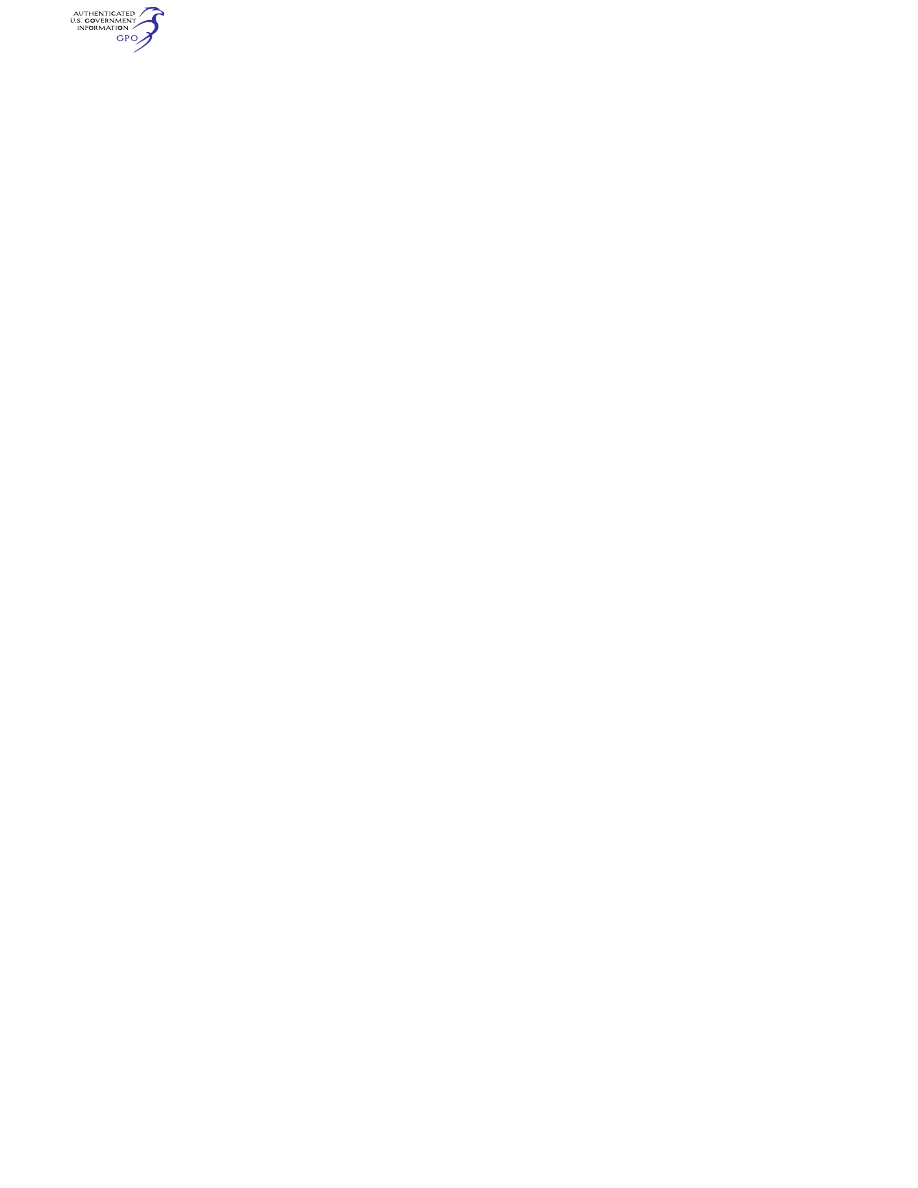
151
Pipeline and Haz. Matls. Safety Admin., DOT
Pt. 172
172 of this subchapter pertaining to
shipping papers and placarding, and
otherwise conforms to the applicable
requirements of part 176 of this sub-
chapter.
(2) The requirement in § 172.201(d) of
this subchapter for an emergency tele-
phone number does not apply to ship-
ments made in accordance with the
IMDG Code if the hazardous material is
not offloaded from the vessel, or is
offloaded between ocean vessels at a
U.S. port facility without being trans-
ported by public highway.
[72 FR 25172, May 3, 2007, as amended at 72
FR 44847, Aug. 9, 2007; 73 FR 57004, Oct. 1,
2008; 74 FR 2233, Jan. 14, 2009; 76 FR 3345, Jan.
19, 2011; 79 FR 46034, Aug. 6, 2014; 80 FR 1116,
Jan. 8, 2015; 87 FR 78010, Dec. 21, 2022]
§ 171.26
Additional requirements for
the use of the IAEA Regulations.
A Class 7 (radioactive) material being
imported into or exported from the
United States or passing through the
United States in the course of being
shipped between places outside the
United States may be offered for trans-
portation or transported in accordance
with the IAEA Regulations (IBR, see
§ 171.7) as authorized in paragraph (a) of
§ 171.22, provided the requirements in
§ 171.22, as applicable, are met.
PART 172—HAZARDOUS MATERIALS
TABLE, SPECIAL PROVISIONS,
HAZARDOUS MATERIALS COM-
MUNICATIONS, EMERGENCY RE-
SPONSE INFORMATION, TRAIN-
ING REQUIREMENTS, AND SECU-
RITY PLANS
Subpart A—General
Sec.
172.1
Purpose and scope.
172.3
Applicability.
Subpart B—Table of Hazardous Materials
and Special Provisions
172.101
Purpose and use of hazardous mate-
rials table.
172.102
Special provisions.
Subpart C—Shipping Papers
172.200
Applicability.
172.201
Preparation and retention of ship-
ping papers.
172.202
Description of hazardous material on
shipping papers.
172.203
Additional description requirements.
172.204
Shipper’s certification.
172.205
Hazardous waste manifest.
Subpart D—Marking
172.300
Applicability.
172.301
General marking requirements for
non-bulk packagings.
172.302
General marking requirements for
bulk packagings.
172.303
Prohibited marking.
172.304
Marking requirements.
172.306
[Reserved]
172.308
Authorized abbreviations.
172.310
Class 7 (radioactive) materials.
172.312
Liquid hazardous materials in non-
bulk packagings.
172.313
Poisonous hazardous materials.
172.315
Limited quantities.
172.316
[Reserved]
172.317
KEEP AWAY FROM HEAT handling
mark.
172.320
Explosive hazardous materials.
172.322
Marine pollutants.
172.323
Infectious substances.
172.324
Hazardous substances in non-bulk
packagings.
172.325
Elevated temperature materials.
172.326
Portable tanks.
172.327
Petroleum sour crude oil in bulk
packaging.
172.328
Cargo tanks.
172.330
Tank cars and multi-unit tank car
tanks.
172.331
Bulk packagings other than portable
tanks, cargo tanks, tank cars and multi-
unit tank car tanks.
172.332
Identification number markings.
172.334
Identification numbers; prohibited
display.
172.336
Identification numbers; special pro-
visions.
172.338
Replacement of identification num-
bers.
Subpart E—Labeling
172.400
General labeling requirements.
172.400a
Exceptions from labeling.
172.401
Prohibited labeling.
172.402
Additional labeling requirements.
172.403
Class 7 (radioactive) material.
172.404
Labels for mixed and consolidated
packaging.
172.405
Authorized label modifications.
172.406
Placement of labels.
172.407
Label specifications.
172.411
EXPLOSIVE 1.1, 1.2, 1.3, 1.4, 1.5 and
1.6 labels, and EXPLOSIVE Subsidiary
label.
172.415
NON-FLAMMABLE GAS label.
172.416
POISON GAS label.
172.417
FLAMMABLE GAS label.
172.419
FLAMMABLE LIQUID label.

152
49 CFR Ch. I (10–1–23 Edition)
§ 172.1
172.420
FLAMMABLE SOLID label.
172.422
SPONTANEOUSLY COMBUSTIBLE
label.
172.423
DANGEROUS WHEN WET label.
172.426
OXIDIZER label.
172.427
ORGANIC PEROXIDE label.
172.429
POISON INHALATION HAZARD
label.
172.430
POISON label.
172.431
[Reserved]
172.432
INFECTIOUS SUBSTANCE label.
172.436
RADIOACTIVE WHITE-I label.
172.438
RADIOACTIVE YELLOW-II label.
172.440
RADIOACTIVE YELLOW-III label.
172.441
FISSILE label.
172.442
CORROSIVE label.
172.444
[Reserved]
172.446
CLASS 9 label.
172.447
LITHIUM BATTERY label.
172.448
CARGO AIRCRAFT ONLY label.
172.450
EMPTY label.
Subpart F—Placarding
172.500
Applicability of placarding require-
ments.
172.502
Prohibited and permissive
placarding.
172.503
Identification number display on
placards.
172.504
General placarding requirements.
172.505
Placarding for subsidiary hazards.
172.506
Providing and affixing placards:
Highway.
172.507
Special placarding provisions: High-
way.
172.508
Placarding and affixing placarding:
Rail.
172.510
Special placarding provisions: Rail.
172.512
Freight containers and aircraft unit
load devices.
172.514
Bulk packagings.
172.516
Visibility and display of placards.
172.519
General specifications for placards.
172.521
DANGEROUS placard.
172.522
EXPLOSIVES 1.1, EXPLOSIVES 1.2
and EXPLOSIVES 1.3 placards.
172.523
EXPLOSIVES 1.4 placard.
172.524
EXPLOSIVES 1.5 placard.
172.525
EXPLOSIVES 1.6 placard.
172.526
[Reserved]
172.527
Background requirements for cer-
tain placards.
172.528
NON-FLAMMABLE GAS placard.
172.530
OXYGEN placard.
172.532
FLAMMABLE GAS placard.
172.536
[Reserved]
172.540
POISON GAS placard.
172.542
FLAMMABLE placard.
172.544
COMBUSTIBLE placard.
172.546
FLAMMABLE SOLID placard.
172.547
SPONTANEOUSLY COMBUSTIBLE
placard.
172.548
DANGEROUS WHEN WET placard.
172.550
OXIDIZER placard.
172.552
ORGANIC PEROXIDE placard.
172.553
[Reserved]
172.554
POISON placard.
172.555
POISON INHALATION HAZARD
placard.
172.556
RADIOACTIVE placard.
172.558
CORROSIVE placard.
172.560
CLASS 9 placard.
Subpart G—Emergency Response
Information
172.600
Applicability and general require-
ments.
172.602
Emergency response information.
172.604
Emergency response telephone num-
ber.
172.606
Carrier information contact.
Subpart H—Training
172.700
Purpose and scope.
172.701
Federal-State relationship.
172.702
Applicability and responsibility for
training and testing.
172.704
Training requirements.
Subpart I—Safety and Security Plans
172.800
Purpose and applicability.
172.802
Components of a security plan.
172.804
Relationship to other Federal re-
quirements.
172.820
Additional planning requirements
for transportation by rail.
172.822
Limitation on actions by states,
local governments, and Indian tribes.
A
PPENDIX
A
TO
P
ART
172—O
FFICE OF
H
AZ
-
ARDOUS
M
ATERIALS
T
RANSPORTATION
C
OLOR
T
OLERANCE
C
HARTS AND
T
ABLES
A
PPENDIX
B
TO
P
ART
172—T
REFOIL
S
YMBOL
A
PPENDIX
C
TO
P
ART
172—D
IMENSIONAL
S
PEC
-
IFICATIONS
FOR
R
ECOMMENDED
P
LACARD
H
OLDER
A
PPENDIX
D
TO
P
ART
172—R
AIL
R
ISK
A
NAL
-
YSIS
F
ACTORS
A
UTHORITY
: 49 U.S.C. 5101–5128, 44701; 49
CFR 1.81, 1.96 and 1.97.
S
OURCE
: Amdt. 172–29, 41 FR 15996, Apr. 15,
1976, unless otherwise noted.
Subpart A—General
§ 172.1
Purpose and scope.
This part lists and classifies those
materials which the Department has
designated as hazardous materials for
purposes of transportation and pre-
scribes the requirements for shipping
papers, package marking, labeling, and
transport vehicle placarding applicable
to the shipment and transportation of
those hazardous materials.
[Amdt. 172–29, 41 FR 15997, Apr. 15, 1976, as
amended by 66 FR 45379, Aug. 28, 2001]

153
Pipeline and Haz. Matls. Safety Admin., DOT
§ 172.101
§ 172.3
Applicability.
(a) This part applies to—
(1) Each person who offers a haz-
ardous material for transportation, and
(2) Each carrier by air, highway, rail,
or water who transports a hazardous
material.
(b) When a person, other than one of
those provided for in paragraph (a) of
this section, performs a packaging la-
beling or marking function required by
this part, that person shall perform the
function in accordance with this part.
[Amdt. 172–29, 41 FR 15996, Apr. 15, 1976, as
amended by Amdt. 172–32, 41 FR 38179, Sept.
9, 1976]
Subpart B—Table of Hazardous
Materials and Special Provisions
§ 172.101
Purpose and use of haz-
ardous materials table.
(a) The Hazardous Materials Table
(Table) in this section designates the
materials listed therein as hazardous
materials for the purpose of transpor-
tation of those materials. For each
listed material, the Table identifies the
hazard class or specifies that the mate-
rial is forbidden in transportation, and
gives the proper shipping name or di-
rects the user to the preferred proper
shipping name. In addition, the Table
specifies or references requirements in
this subchapter pertaining to labeling,
packaging, quantity limits aboard air-
craft and stowage of hazardous mate-
rials aboard vessels.
(b)
Column 1: Symbols.
Column 1 of the
Table contains six symbols (‘‘ + ’’, ‘‘A’’,
‘‘D’’, ‘‘G’’, ‘‘I’’ and ‘‘W’’) as follows:
(1) The plus (+) sign fixes the proper
shipping name, hazard class and pack-
ing group for that entry without regard
to whether the material meets the defi-
nition of that class, packing group or
any other hazard class definition. When
the plus sign is assigned to a proper
shipping name in Column (1) of the
§ 172.101 Table, it means that the mate-
rial is known to pose a risk to humans.
When a plus sign is assigned to mix-
tures or solutions containing a mate-
rial where the hazard to humans is sig-
nificantly different from that of the
pure material or where no hazard to
humans is posed, the material may be
described using an alternative shipping
name that represents the hazards posed
by the material. An appropriate alter-
nate proper shipping name and hazard
class may be authorized by the Asso-
ciate Administrator.
(2) The letter ‘‘A’’ denotes a material
that is subject to the requirements of
this subchapter only when offered or
intended for transportation by aircraft,
unless the material is a hazardous sub-
stance or a hazardous waste. A ship-
ping description entry preceded by an
‘‘A’’ may be used to describe a material
for other modes of transportation pro-
vided all applicable requirements for
the entry are met.
(3) The letter ‘‘D’’ identifies proper
shipping names which are appropriate
for describing materials for domestic
transportation but may be inappro-
priate for international transportation
under the provisions of international
regulations (e.g., IMO, ICAO). An alter-
nate proper shipping name may be se-
lected when either domestic or inter-
national transportation is involved.
(4) The letter ‘‘G’’ identifies proper
shipping names for which one or more
technical names of the hazardous ma-
terial must be entered in parentheses,
in association with the basic descrip-
tion. (See § 172.203(k).)
(5) The letter ‘‘I’’ identifies proper
shipping names which are appropriate
for describing materials in inter-
national transportation. An alternate
proper shipping name may be selected
when only domestic transportation is
involved.
(6) The letter ‘‘W’’ denotes a material
that is subject to the requirements of
this subchapter only when offered or
intended for transportation by vessel,
unless the material is a hazardous sub-
stance or a hazardous waste. A ship-
ping description entry preceded by a
‘‘W’’ may be used to describe a mate-
rial for other modes of transportation
provided all applicable requirements
for the entry are met.
(c)
Column 2: Hazardous materials de-
scriptions and proper shipping names.
Column 2 lists the hazardous materials
descriptions and proper shipping names
of materials designated as hazardous
materials. Modification of a proper
shipping name may otherwise be re-
quired or authorized by this section.
Proper shipping names are limited to

154
49 CFR Ch. I (10–1–23 Edition)
§ 172.101
those shown in Roman type (not
italics).
(1) Proper shipping names may be
used in the singular or plural and in ei-
ther capital or lower case letters.
Words may be alternatively spelled in
the same manner as they appear in the
ICAO Technical Instructions or the
IMDG Code. For example ‘‘aluminum’’
may be spelled ‘‘aluminium’’ and ‘‘sul-
fur’’ may be spelled ‘‘sulphur’’. How-
ever, the word ‘‘inflammable’’ may not
be used in place of the word ‘‘flam-
mable’’.
(2) Punctuation marks and words in
italics are not part of the proper ship-
ping name, but may be used in addition
to the proper shipping name. The word
‘‘or’’ in italics indicates that there is a
choice of terms in the sequence that
may alternately be used as the proper
shipping name or as part of the proper
shipping name, as appropriate. For ex-
ample, for the hazardous materials de-
scription ‘‘Carbon dioxide, solid or Dry
ice’’ either ‘‘Carbon dioxide, solid’’ or
‘‘Dry ice’’ may be used as the proper
shipping name; and for the hazardous
materials description ‘‘Articles, pres-
surized pneumatic or hydraulic,’’ ei-
ther ‘‘Articles, pressurized pneumatic’’
or ‘‘Articles, pressurized hydraulic’’
may be used as the proper shipping
name.
(3) The word ‘‘poison’’ or ‘‘poisonous’’
may be used interchangeably with the
word ‘‘toxic’’ when only domestic
transportation is involved. The abbre-
viation ‘‘n.o.i.’’ or ‘‘n.o.i.b.n.’’ may be
used interchangeably with ‘‘n.o.s.’’.
(4) Except for hazardous wastes, when
qualifying words are used as part of the
proper shipping name, their sequence
in the package markings and shipping
paper description is optional. However,
the entry in the Table reflects the pre-
ferred sequence.
(5) When one entry references an-
other entry by use of the word ‘‘see’’, if
both names are in Roman type, either
name may be used as the proper ship-
ping name (e.g., Ethyl alcohol,
see
Eth-
anol).
(6) When a proper shipping name in-
cludes a concentration range as part of
the shipping description, the actual
concentration, if it is within the range
stated, may be used in place of the con-
centration range. For example, an
aqueous solution of hydrogen peroxide
containing 30 percent peroxide may be
described as ‘‘Hydrogen peroxide, aque-
ous solution
with not less than 20 percent
but not more than 40 percent hydrogen
peroxide’’
or ‘‘Hydrogen peroxide, aque-
ous solution
with 30 percent hydrogen
peroxide.
’’ Also, the percent sign (%)
may be used in place of the word ‘‘per-
cent’’ when words in italics containing
the word ‘‘percent’’ are used in addi-
tion to the proper shipping name.
(7) Use of the prefix ‘‘mono’’ is op-
tional in any shipping name, when ap-
propriate. Thus, Iodine monochloride
may be used interchangeably with Io-
dine chloride. In ‘‘Glycerol alpha-
monochlorohydrin’’ the term ‘‘mono’’
is considered a prefix to the term
‘‘chlorohydrin’’ and may be deleted.
(8) Use of the word ‘‘liquid’’ or
‘‘solid’’. The word ‘‘liquid’’ or ‘‘solid’’
may be added to a proper shipping
name when a hazardous material spe-
cifically listed by name may, due to
differing physical states, be a liquid or
solid. When the packaging specified in
Column 8 is inappropriate for the phys-
ical state of the material, the table
provided in paragraph (i)(4) of this sec-
tion should be used to determine the
appropriate packaging section.
(9)
Hazardous wastes.
If the word
‘‘waste’’ is not included in the haz-
ardous material description in Column
2 of the Table, the proper shipping
name for a hazardous waste (as defined
in § 171.8 of this subchapter), shall in-
clude the word ‘‘Waste’’ preceding the
proper shipping name of the material.
For example: Waste acetone.
(10)
Mixtures and solutions.
(i) A mix-
ture or solution meeting the definition
of one or more hazard class that is not
identified specifically by name, com-
prised of a single predominant haz-
ardous material identified in the Table
by technical name and one or more
hazardous and/or non-hazardous mate-
rial, must be described using the proper
shipping name of the hazardous mate-
rial and the qualifying word ‘‘mixture’’
or ‘‘solution’’, as appropriate, unless—
(A) Except as provided in
§ 172.101(i)(4) the packaging specified in
Column 8 is inappropriate to the phys-
ical state of the material;
(B) The shipping description indi-
cates that the proper shipping name

155
Pipeline and Haz. Matls. Safety Admin., DOT
§ 172.101
applies only to the pure or technically
pure hazardous material;
(C) The hazard class, packing group,
or subsidiary hazard of the mixture or
solution is different from that specified
for the entry;
(D) There is a significant change in
the measures to be taken in emer-
gencies;
(E) The material is identified by spe-
cial provision in Column 7 of the
§ 172.101 Table as a material poisonous
by inhalation; however, it no longer
meets the definition of poisonous by in-
halation or it falls within a different
hazard zone than that specified in the
special provision; or
(F) The material can be appro-
priately described by a shipping name
that describes its intended application,
such as ‘‘Coating solution’’, ‘‘Extracts,
flavoring’’ or ‘‘Compound, cleaning liq-
uid.’’.
(ii) If one or more of the conditions
in paragraphs (c)(10)(i)(A) through (F)
of this section is satisfied then the
proper shipping name selection process
in (c)(12)(ii) must be used.
(iii) A mixture or solution meeting
the definition of one or more hazard
class that is not identified in the Table
specifically by name, comprised of two
or more hazardous materials in the
same hazard class, must be described
using an appropriate shipping descrip-
tion (e.g., ‘‘Flammable liquid, n.o.s.’’).
The name that most appropriately de-
scribes the material shall be used; e.g.,
an alcohol not listed by its technical
name in the Table shall be described as
‘‘Alcohol, n.o.s.’’ rather than ‘‘Flam-
mable liquid, n.o.s.’’. Some mixtures
may be more appropriately described
according to their application, such as
‘‘Coating solution’’ or ‘‘Extracts, fla-
voring liquid’’ rather than by an n.o.s.
entry. Under the provisions of subparts
C and D of this part, the technical
names of at least two components most
predominately contributing to the haz-
ards of the mixture or solution may be
required in association with the proper
shipping name.
(11) Except for a material subject to
or prohibited by § 173.21, § 173.54,
§ 173.56(d), § 173.56(e), § 173.224(c) or
§ 173.225(b) of this subchapter, a mate-
rial that is considered to be a haz-
ardous waste or a sample of a material
for which the hazard class is uncertain
and must be determined by testing
may be assigned a tentative proper
shipping name, hazard class, identifica-
tion number and packing group, if ap-
plicable, based on the shipper’s ten-
tative determination according to:
(i) Defining criteria in this sub-
chapter;
(ii) The hazard precedence prescribed
in § 173.2a of this subchapter;
(iii) The shipper’s knowledge of the
material;
(iv) In addition to paragraphs
(c)(11)(i) through (iii) of this section,
for a sample of a material other than a
waste, the following must be met:
(A) Except when the word ‘‘Sample’’
already appears in the proper shipping
name, the word ‘‘Sample’’ must appear
as part of the proper shipping name or
in association with the basic descrip-
tion on the shipping paper.
(B) When the proper shipping descrip-
tion for a sample is assigned a ‘‘G’’ in
Column (1) of the § 172.101 Table, and
the primary constituent(s) for which
the tentative classification is based are
not known, the provisions requiring a
technical name for the constituent(s)
do not apply; and
(C) A sample must be transported in
a combination packaging that con-
forms to the requirements of this sub-
chapter that are applicable to the ten-
tative packing group assigned, and
may not exceed a net mass of 2.5 kg (5.5
pounds) per package.
N
OTE TO PARAGRAPH
(c)(11): For the trans-
portation of samples of self-reactive mate-
rials, organic peroxides, explosives or light-
ers,
see
§ 173.224(c)(3), § 173.225(c)(2), § 173.56(d)
or § 173.308(b)(2) of this subchapter, respec-
tively.
(12) Except when the proper shipping
name in the Table is preceded by a plus
(+)—
(i) If it is specifically determined
that a material meets the definition of
a hazard class, packing group or hazard
zone, other than the class, packing
group or hazard zone shown in associa-
tion with the proper shipping name, or
does not meet the defining criteria for
a subsidiary hazard shown in Column 6
of the Table, the material shall be de-
scribed by an appropriate proper ship-
ping name listed in association with
the correct hazard class, packing

156
49 CFR Ch. I (10–1–23 Edition)
§ 172.101
group, hazard zone, or subsidiary haz-
ard for the material.
(ii)
Generic or n.o.s. descriptions.
If an
appropriate technical name is not
shown in the Table, selection of a prop-
er shipping name shall be made from
the generic or n.o.s. descriptions cor-
responding to the specific hazard class,
packing group, hazard zone, or sub-
sidiary hazard, if any, for the material.
The name that most appropriately de-
scribes the material shall be used; e.g.,
an alcohol not listed by its technical
name in the Table shall be described as
‘‘Alcohol, n.o.s.’’ rather than ‘‘Flam-
mable liquid, n.o.s.’’. Some mixtures
may be more appropriately described
according to their application, such as
‘‘Coating solution’’ or ‘‘Extracts, fla-
voring, liquid’’, rather than by an n.o.s.
entry, such as ‘‘Flammable liquid,
n.o.s.’’ It should be noted, however,
that an n.o.s. description as a proper
shipping name may not provide suffi-
cient information for shipping papers
and package markings. Under the pro-
visions of subparts C and D of this part,
the technical name of one or more con-
stituents which makes the product a
hazardous material may be required in
association with the proper shipping
name.
(iii)
Multiple hazard materials.
If a ma-
terial meets the definition of more
than one hazard class, and is not iden-
tified in the Table specifically by name
(e.g., acetyl chloride), the hazard class
of the material shall be determined by
using the precedence specified in
§ 173.2a of this subchapter, and an ap-
propriate shipping description (e.g.,
‘‘Flammable liquid, corrosive n.o.s.’’)
shall be selected as described in para-
graph (c)(12)(ii) of this section.
(iv) If it is specifically determined
that a material is not a forbidden ma-
terial and does not meet the definition
of any hazard class, the material is not
a hazardous material.
(13)
Self-reactive materials and organic
peroxides.
A generic proper shipping
name for a self-reactive material or an
organic peroxide, as listed in Column 2
of the Table, must be selected based on
the material’s technical name and con-
centration, in accordance with the pro-
visions of § 173.224 or § 173.225 of this
subchapter, respectively.
(14) A proper shipping name that de-
scribes all isomers of a material may
be used to identify any isomer of that
material if the isomer meets criteria
for the same hazard class or division,
subsidiary risk(s) and packing group,
unless the isomer is specifically identi-
fied in the Table.
(15) Unless a hydrate is specifically
listed in the Table, a proper shipping
name for the equivalent anhydrous
substance may be used, if the hydrate
meets the same hazard class or divi-
sion, subsidiary risk(s) and packing
group.
(16) Unless it is already included in
the proper shipping name in the
§ 172.101 Table, the qualifying words
‘‘liquid’’ or ‘‘solid’’ may be added in as-
sociation with the proper shipping
name when a hazardous material spe-
cifically listed by name in the § 172.101
Table may, due to the differing phys-
ical states of the various isomers of the
material, be either a liquid or a solid
(for example ‘‘Dinitrotoluenes, liquid’’
and ‘‘Dinitrotoluenes, solid’’). Use of
the words ‘‘liquid’’ or ‘‘solid’’ is subject
to the limitations specified for the use
of the words ‘‘mixture’’ or ‘‘solution’’
in paragraph (c)(10) of this section. The
qualifying word ‘‘molten’’ may be
added in association with the proper
shipping name when a hazardous mate-
rial, which is a solid in accordance
with the definition in § 171.8 of this sub-
chapter, is offered for transportation in
the molten state (for example,
‘‘Alkylphenols, solid, n.o.s., molten’’).
(17) Unless it is already included in
the proper shipping name in the
§ 172.101 Table, the qualifying word
‘‘stabilized’’ may be added in associa-
tion with the proper shipping name, as
appropriate, where without stabiliza-
tion the substance would be forbidden
for transportation according to
§ 173.21(f) of this subchapter.
(d)
Column 3: Hazard class or Division.
Column 3 contains a designation of the
hazard class or division corresponding
to each proper shipping name, or the
word ‘‘Forbidden’’.
(1) A material for which the entry in
this column is ‘‘Forbidden’’ may not be
offered for transportation or trans-
ported. This prohibition does not apply
if the material is diluted, stabilized or
incorporated in a device and it is

157
Pipeline and Haz. Matls. Safety Admin., DOT
§ 172.101
classed in accordance with the defini-
tions of hazardous materials contained
in part 173 of this subchapter.
(2) When a reevaluation of test data
or new data indicates a need to modify
the ‘‘Forbidden’’ designation or the
hazard class or packing group specified
for a material specifically identified in
the Table, this data should be sub-
mitted to the Associate Administrator.
(3) A basic description of each hazard
class and the section reference for class
definitions appear in § 173.2 of this sub-
chapter.
(4) Each reference to a Class 3 mate-
rial is modified to read ‘‘Combustible
liquid’’ when that material is reclassi-
fied in accordance with § 173.150(e) or (f)
of this subchapter or has a flash point
above 60
°
C (140
°
F) but below 93
°
C (200
°
F).
(e)
Column 4: Identification number.
Column 4 lists the identification num-
ber assigned to each proper shipping
name. Those preceded by the letters
‘‘UN’’ are associated with proper ship-
ping names considered appropriate for
international transportation as well as
domestic transportation. Those pre-
ceded by the letters ‘‘NA’’ are associ-
ated with proper shipping names not
recognized for transportation outside
of the United States. Identification
numbers in the ‘‘NA9000’’ series are as-
sociated with proper shipping names
not appropriately covered by inter-
national hazardous materials (dan-
gerous goods) transportation stand-
ards, or not appropriately addressed by
international transportation standards
for emergency response information
purposes, except for transportation in
the United States. Those preceded by
the letters ‘‘ID’’ are associated with
proper shipping names recognized by
the ICAO Technical Instructions (see
§ 171.7 of this subchapter for avail-
ability).
(f)
Column 5: Packing group.
Column 5
specifies one or more packing groups
assigned to a material corresponding to
the proper shipping name and hazard
class for that material. Class 2, Class 7,
and Division 6.2 do not have packing
groups. Articles in classes other than
Class 1 are not assigned to packing
groups. For packing purposes, any re-
quirement for a specific packaging per-
formance level is set out in the appli-
cable packing authorizations of part
173. Packing Groups I, II, and III indi-
cate the degree of danger presented by
the material is great, medium, or
minor, respectively. If more than one
packing group is indicated for an
entry, the packing group for the haz-
ardous material is determined using
the criteria for assignment of packing
groups specified in subpart D of part
173. When a reevaluation of test data or
new data indicates a need to modify
the specified packing group(s), the data
should be submitted to the Associate
Administrator. Each reference in this
column to a material that is a haz-
ardous waste or a hazardous substance,
and whose proper shipping name pre-
ceded in Column 1 of the Table by the
letter ‘‘A’’ or ‘‘W,’’ is modified to read
‘‘III’’ on those occasions when the ma-
terial is offered for transportation or
transported by a mode in which its
transportation is not otherwise subject
to requirements of this subchapter.
(g)
Column 6: Labels.
Column 6 speci-
fies codes which represent the hazard
warning labels required for a package
filled with a material conforming to
the associated hazard class and proper
shipping name, unless the package is
otherwise excepted from labeling by a
provision in subpart E of this part, or
part 173 of this subchapter. The first
code is indicative of the primary haz-
ard of the material. Additional label
codes are indicative of subsidiary haz-
ards. Provisions in § 172.402 may require
that a label other than that specified
in Column 6 be affixed to the package
in addition to that specified in Column
6. No label is required for a material
classed as a combustible liquid or for a
Class 3 material that is reclassed as a
combustible liquid. For ‘‘Empty’’ label
requirements, see § 173.428 of this sub-
chapter. The codes contained in Col-
umn 6 are defined according to the fol-
lowing table:
L
ABEL
S
UBSTITUTION
T
ABLE
Label code
Label name
1 ................................................
Explosive
1.1
1
...........................................
Explosive 1.1
1
1.2
1
...........................................
Explosive 1.2
1
1.3
1
...........................................
Explosive 1.3
1
1.4
1
...........................................
Explosive 1.4
1
1.5
1
...........................................
Explosive 1.5
1
1.6
1
...........................................
Explosive 1.6
1
2.1 .............................................
Flammable Gas
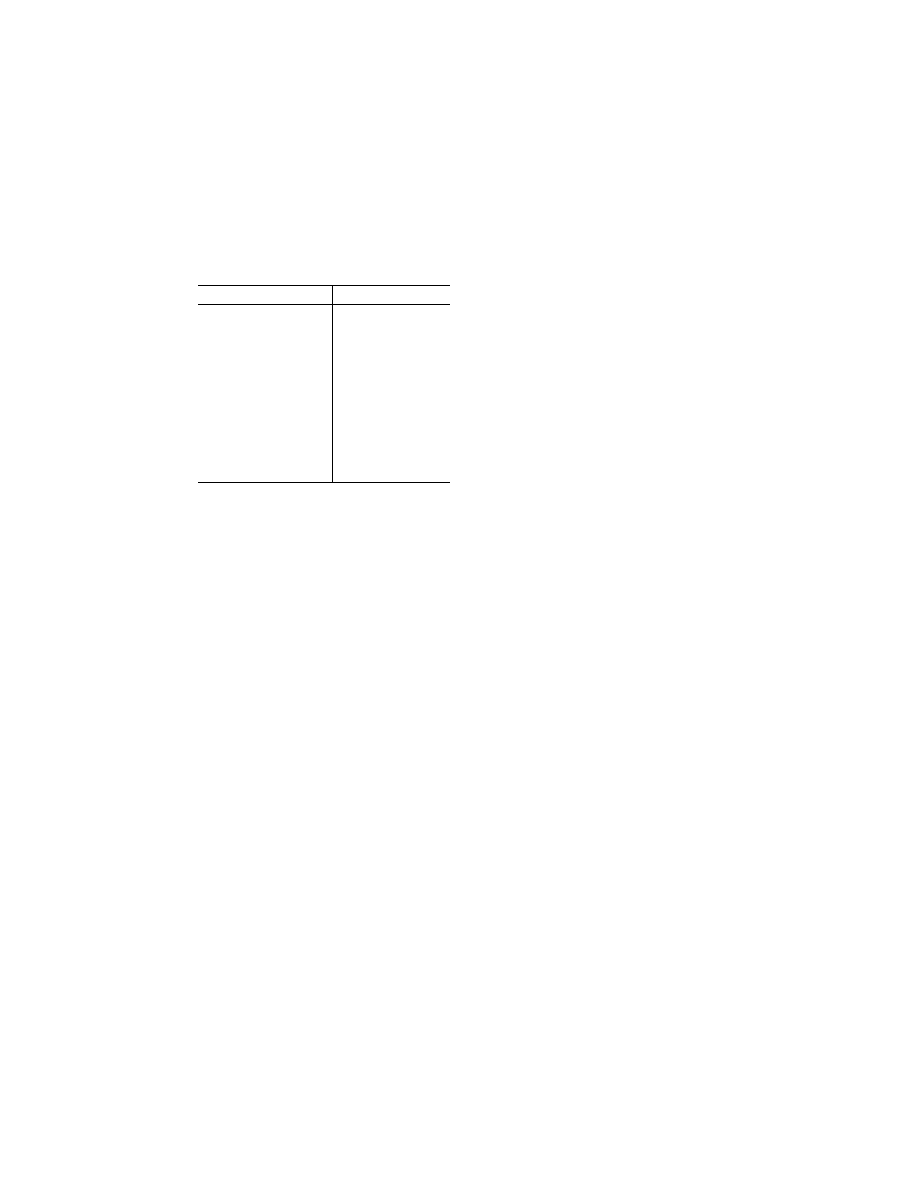
158
49 CFR Ch. I (10–1–23 Edition)
§ 172.101
L
ABEL
S
UBSTITUTION
T
ABLE
—Continued
Label code
Label name
2.2 .............................................
Non-Flammable Gas
2.3 .............................................
Poison Gas
3 ................................................
Flammable Liquid
4.1 .............................................
Flammable Solid
4.2 .............................................
Spontaneously Combustible
4.3 .............................................
Dangerous When Wet
5.1 .............................................
Oxidizer
5.2 .............................................
Organic Peroxide
6.1 (inhalation hazard, Zone A
or B).
Poison Inhalation Hazard
6.1 (other than inhalation haz-
ard, Zone A or B)
2
.
Poison
6.2 .............................................
Infectious substance
7 ................................................
Radioactive
8 ................................................
Corrosive
9 ................................................
Class 9
1
Refers to the appropriate compatibility group letter.
2
The packing group for a material is indicated in column 5
of the table.
(h)
Column 7: Special provisions.
Col-
umn 7 specifies codes for special provi-
sions applicable to hazardous mate-
rials. When Column 7 refers to a special
provision for a hazardous material, the
meaning and requirements of that spe-
cial provision are as set forth in
§ 172.102 of this subpart.
(i)
Column 8: Packaging authorizations.
Columns 8A, 8B and 8C specify the ap-
plicable sections for exceptions, non-
bulk packaging requirements and bulk
packaging requirements, respectively,
in part 173 of this subchapter. Columns
8A, 8B and 8C are completed in a man-
ner which indicates that ‘‘§ 173.’’ pre-
cedes the designated numerical entry.
For example, the entry ‘‘202’’ in Col-
umn 8B associated with the proper
shipping name ‘‘Gasoline’’ indicates
that for this material conformance to
non-bulk packaging requirements pre-
scribed in § 173.202 of this subchapter is
required. When packaging require-
ments are specified, they are in addi-
tion to the standard requirements for
all packagings prescribed in § 173.24 of
this subchapter and any other applica-
ble requirements in subparts A and B
of part 173 of this subchapter.
(1) Exceptions. Column 8A contains
exceptions from some of the require-
ments of this subchapter. The ref-
erenced exceptions are in addition to
those specified in subpart A of part 173
and elsewhere in this subchapter. A
‘‘None’’ in this column means no pack-
aging exceptions are authorized, except
as may be provided by special provi-
sions in Column 7.
(2) Non-bulk packaging. Column 8B
references the section in part 173 of
this subchapter which prescribes pack-
aging requirements for non-bulk pack-
agings. A ‘‘None’’ in this column means
non-bulk packagings are not author-
ized, except as may be provided by spe-
cial provisions in Column 7. Each ref-
erence in this column to a material
which is a hazardous waste or a haz-
ardous substance, and whose proper
shipping name is preceded in Column 1
of the Table by the letter ‘‘A’’ or ‘‘W’’,
is modified to include ‘‘§ 173.203’’ or
‘‘§ 173.213’’, as appropriate for liquids
and solids, respectively, on those occa-
sions when the material is offered for
transportation or transported by a
mode in which its transportation is not
otherwise subject to the requirements
of this subchapter.
(3)
Bulk packaging.
Column (8C) speci-
fies the section in part 173 of this sub-
chapter that prescribes packaging re-
quirements for bulk packagings, sub-
ject to the limitations, requirements,
and additional authorizations of Col-
umns (7) and (8B). A ‘‘None’’ in Column
(8C) means bulk packagings are not au-
thorized, except as may be provided by
special provisions in Column (7) and in
packaging authorizations Column (8B).
Additional authorizations and limita-
tions for use of UN portable tanks are
set forth in Column 7. For each ref-
erence in this column to a material
that is a hazardous waste or a haz-
ardous substance, and whose proper
shipping name is preceded in Column 1
of the Table by the letter ‘‘A’’ or ‘‘W’’
and that is offered for transportation
or transported by a mode in which its
transportation is not otherwise subject
to the requirements of this subchapter:
(i) The column reference is § 173.240 or
§ 173.241, as appropriate.
(ii) For a solid material, the excep-
tion provided in special provision B54 is
applicable.
(iii) For a Class 9 material, which
meets the definition of an elevated
temperature material, the column ref-
erence is § 173.247.
(4) For a hazardous material which is
specifically named in the Table and
whose packaging sections specify pack-
agings not applicable to the form of the
material (e.g., packaging specified is
for solid material and the material is
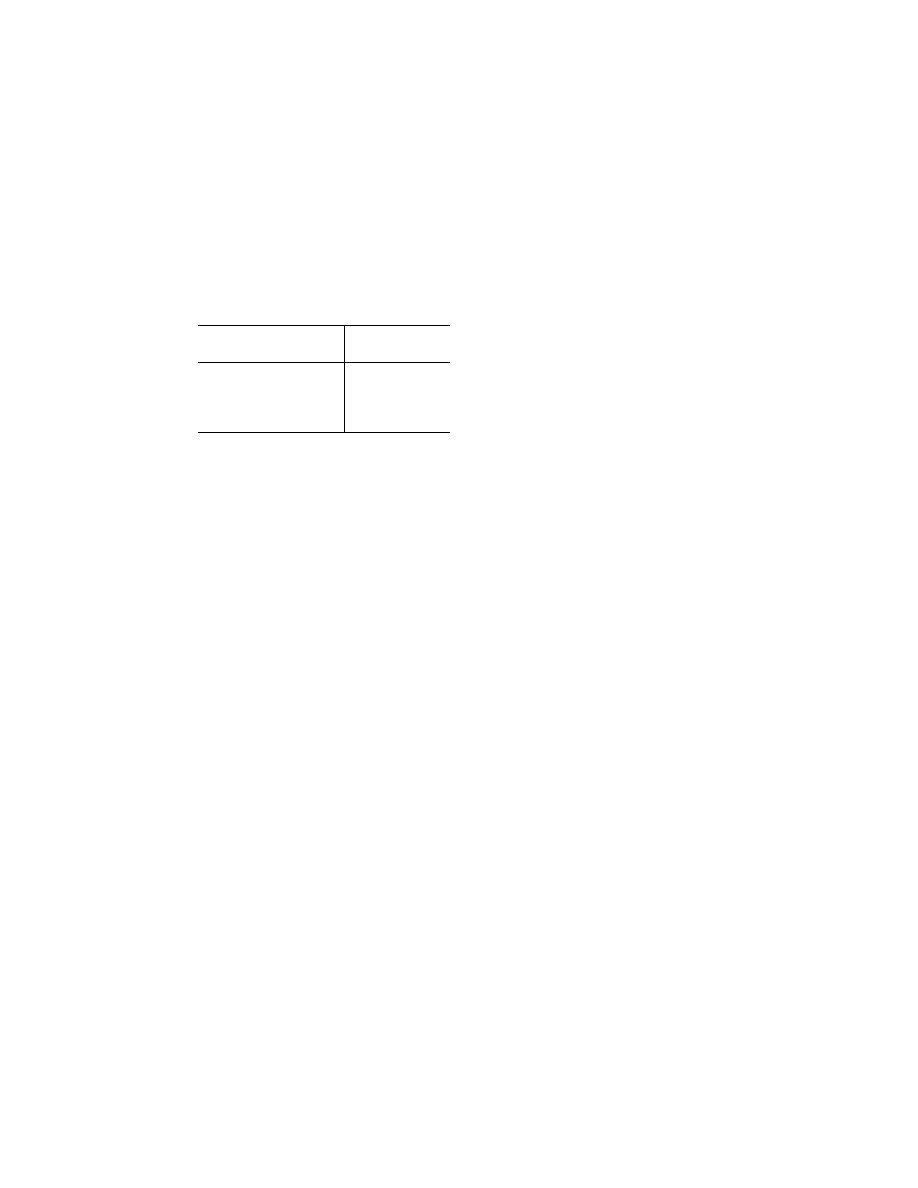
159
Pipeline and Haz. Matls. Safety Admin., DOT
§ 172.101
being offered for transportation in a
liquid form) the following table should
be used to determine the appropriate
packaging section:
Packaging section reference for
solid materials
Corresponding pack-
aging section for liquid
materials
§ 173.187 .......................................
§ 173.181
§ 173.211 .......................................
§ 173.201
§ 173.212 .......................................
§ 173.202
§ 173.213 .......................................
§ 173.203
§ 173.240 .......................................
§ 173.241
§ 173.242 .......................................
§ 173.243
(5)
Cylinders.
For cylinders, both non-
bulk and bulk packaging authoriza-
tions are set forth in Column (8B). Not-
withstanding a designation of ‘‘None’’
in Column (8C), a bulk cylinder may be
used when specified through the sec-
tion reference in Column (8B).
(j)
Column 9: Quantity limitations.
Col-
umns 9A and 9B specify the maximum
quantities that may be offered for
transportation in one package by pas-
senger-carrying aircraft or passenger-
carrying rail car (Column 9A) or by
cargo aircraft only (Column 9B), sub-
ject to the following:
(1) ‘‘Forbidden’’ means the material
may not be offered for transportation
or transported in the applicable mode
of transport.
(2) The quantity limitation is ‘‘net’’
except where otherwise specified, such
as for ‘‘Consumer commodity’’ which
specifies ‘‘30 kg gross.’’
(3) When articles or devices are spe-
cifically listed by name, the net quan-
tity limitation applies to the entire ar-
ticle or device (less packaging and
packaging materials) rather than only
to its hazardous components.
(4) A package offered or intended for
transportation by aircraft and which is
filled with a material forbidden on pas-
senger-carrying aircraft but permitted
on cargo aircraft only, or which ex-
ceeds the maximum net quantity au-
thorized on passenger-carrying air-
craft, shall be labelled with the CARGO
AIRCRAFT ONLY label specified in
§ 172.448 of this part.
(5) The total net quantity of haz-
ardous material for an outer non-bulk
packaging that contains more than one
hazardous material may not exceed the
lowest permitted maximum net quan-
tity per package as shown in Column
9A or 9B, as appropriate. If one mate-
rial is a liquid and one is a solid, the
maximum net quantity must be cal-
culated in kilograms.
See
§ 173.24a(c)(1)(iv).
(k)
Column 10: Vessel stowage require-
ments.
Column 10A [Vessel stowage]
specifies the authorized stowage loca-
tions on board cargo and passenger ves-
sels. Column 10B [Other provisions]
specifies codes for stowage and han-
dling requirements for specific haz-
ardous materials. Hazardous materials
offered for transportation as limited
quantities are allocated stowage cat-
egory A and are not subject to the
stowage codes assigned by column 10B.
The meaning of each code in Column
10B is set forth in § 176.84 of this sub-
chapter. Section 176.63 of this sub-
chapter sets forth the physical require-
ments for each of the authorized loca-
tions listed in Column 10A. (For bulk
transportation by vessel, see 46 CFR
parts 30 to 40, 70, 98, 148, 151, 153 and
154.) The authorized stowage locations
specified in Column 10A are defined as
follows:
(1) Stowage category ‘‘A’’ means the
material may be stowed ‘‘on deck’’ or
‘‘under deck’’ on a cargo vessel or on a
passenger vessel.
(2) Stowage category ‘‘B’’ means—
(i) The material may be stowed ‘‘on
deck’’ or ‘‘under deck’’ on a cargo ves-
sel and on a passenger vessel carrying
a number of passengers limited to not
more than the larger of 25 passengers,
or one passenger per each 3 m of over-
all vessel length; and
(ii) ‘‘On deck only’’ on passenger ves-
sels in which the number of passengers
specified in paragraph (k)(2)(i) of this
section is exceeded.
(3) Stowage category ‘‘C’’ means the
material must be stowed ‘‘on deck
only’’ on a cargo vessel or on a pas-
senger vessel.
(4) Stowage category ‘‘D’’ means the
material must be stowed ‘‘on deck
only’’ on a cargo vessel or on a pas-
senger vessel carrying a number of pas-
sengers limited to not more than the
larger of 25 passengers or one passenger
per each 3 m of overall vessel length,
but the material is prohibited on a pas-
senger vessel in which the limiting
number of passengers is exceeded.
(5) Stowage category ‘‘E’’ means the
material may be stowed ‘‘on deck’’ or

160
49 CFR Ch. I (10–1–23 Edition)
§ 172.101
‘‘under deck’’ on a cargo vessel or on a
passenger vessel carrying a number of
passengers limited to not more than
the larger of 25 passengers, or one pas-
senger per each 3 m of overall vessel
length, but is prohibited from carriage
on a passenger vessel in which the lim-
iting number of passengers is exceeded.
(6) Stowage category ‘‘01’’ means the
material may be stowed ‘‘on deck’’ in
closed cargo transport units or ‘‘under
deck’’ on a cargo vessel (up to 12 pas-
sengers) or on a passenger vessel.
(7) Stowage category ‘‘02’’ means the
material may be stowed ‘‘on deck’’ in
closed cargo transport units or ‘‘under
deck’’ on a cargo vessel (up to 12 pas-
sengers) or ‘‘on deck’’ in closed cargo
transport units or ‘‘under deck’’ in
closed cargo transport units on a pas-
senger vessel.
(8) Stowage category ‘‘03’’ means the
material may be stowed ‘‘on deck’’ in
closed cargo transport units or ‘‘under
deck’’ on a cargo vessel (up to 12 pas-
sengers) but the material is prohibited
on a passenger vessel.
(9) Stowage category ‘‘04’’ means the
material may be stowed ‘‘on deck’’ in
closed cargo transport units or ‘‘under
deck’’ in closed cargo transports on a
cargo vessel (up to 12 passengers) but
the material is prohibited on a pas-
senger vessel.
(10) Stowage category ‘‘05’’ means the
material may be stowed ‘‘on deck’’ in
closed cargo transport units on a cargo
vessel (up to 12 passengers) but the ma-
terial is prohibited on a passenger ves-
sel.
(l)
Changes to the Table.
(1) Unless
specifically stated otherwise in a rule
document published in the F
EDERAL
R
EGISTER
amending the Table—
(i) Such a change does not apply to
the shipment of any package filled
prior to the effective date of the
amendment; and
(ii) Stocks of preprinted shipping pa-
pers and package markings may be
continued in use, in the manner pre-
viously authorized, until depleted or
for a one-year period, subsequent to
the effective date of the amendment,
whichever is less.
(2) Except as otherwise provided in
this section, any alteration of a ship-
ping description or associated entry
which is listed in the § 172.101 Table
must receive prior written approval
from the Associate Administrator.
(3) The proper shipping name of a
hazardous material changed in the May
6, 1997 final rule, in effect on October 1,
1997, only by the addition or omission
of the word ‘‘compressed,’’ ‘‘inhibited,’’
‘‘liquefied’’ or ‘‘solution’’ may continue
to be used to comply with package
marking requirements, until January
1, 2003.

161
Pipeline and Haz. Matls. Safety Admin., DOT
§
172.101
§ 172.101 H
AZARDOUS
M
ATERIALS
T
ABLE
Sym-
bols
Hazardous materials descriptions
and proper shipping names
Hazard
class or
Division
Identi-
fication
Numbers
PG
Label
Codes
Special provisions
(§ 172.102)
(8)
(9)
(10)
Vessel
stowage
Packaging
(§ 173.***)
Quantity limitations
(see §§ 173.27 and
175.75)
Loca-
tion
Other
Excep-
tions
Non-bulk
Bulk
Passenger
aircraft/rail
Cargo air-
craft only
(1)
(2)
(3)
(4)
(5)
(6)
(7)
(8A)
(8B)
(8C)
(9A)
(9B)
(10A)
(10B)
Accellerene, see p-
Nitrosodimethylaniline
Accumulators, electric, see Bat-
teries, wet etc
Accumulators, pressurized, pneu-
matic or hydraulic (containing
non-flamable gas), see Articles
pressurized, pneumatic or hy-
draulic (containing non-flamable
gas)
Acetal
3 UN1088
II
3
IB2, T4, TP1 150
202
242
5 L
60 L
E
Acetaldehyde
3 UN1089
I
3
B16, T11, TP2, TP7 None
201
243
Forbidden
30 L
E
A
Acetaldehyde ammonia
9 UN1841
III
9
IB8, IP3, IP7, T1, TP33 155
204
240
200 kg
200 kg
A
34
Acetaldehyde oxime
3 UN2332
III
3
B1, IB3, T4, TP1 150
203
242
60 L
220 L
A
Acetic acid, glacial or Acetic acid
solution, with more than 80 per-
cent acid, by mass
8 UN2789
II
8, 3
A3, A7, A10, B2, IB2,
T7, TP2
154
202
243
1 L
30 L
A
53, 58
Acetic acid solution, not less than
50 percent but not more than 80
percent acid, by mass
8 UN2790
II
8
148, A3, A7, A10, B2,
IB2, T7, TP2
154
202
242
1 L
30 L
A
53, 58
Acetic acid solution, with more than
10 percent and less than 50 per-
cent acid, by mass
8 UN2790
III
8
148, IB3, T4, TP1 154
203
242
5 L
60 L
A
53, 58
Acetic anhydride
8 UN1715
II
8, 3
A3, A7, A10, B2, IB2,
T7, TP2
154
202
243
1 L
30 L
A
40, 53,
58
Acetone
3 UN1090
II
3
IB2, T4, TP1 150
202
242
5 L
60 L
B
Acetone cyanohydrin, stabilized
6.1 UN1541
I
6.1
2, B9, B14, B32, B76,
B77, N34, T20, TP2,
TP13, TP38, TP45
None
227
244
Forbidden
Forbidden
D
25, 40,
52, 53
Acetone oils
3 UN1091
II
3
IB2, T4, TP1, TP8 150
202
242
5 L
60 L
B
Acetonitrile
3 UN1648
II
3
IB2, T7, TP2 150
202
242
5 L
60 L
B
40
Acetyl acetone peroxide with more
than 9 percent by mass active
oxygen
Forbidden
Acetyl benzoyl peroxide, solid, or
with more than 40 percent in so-
lution
Forbidden
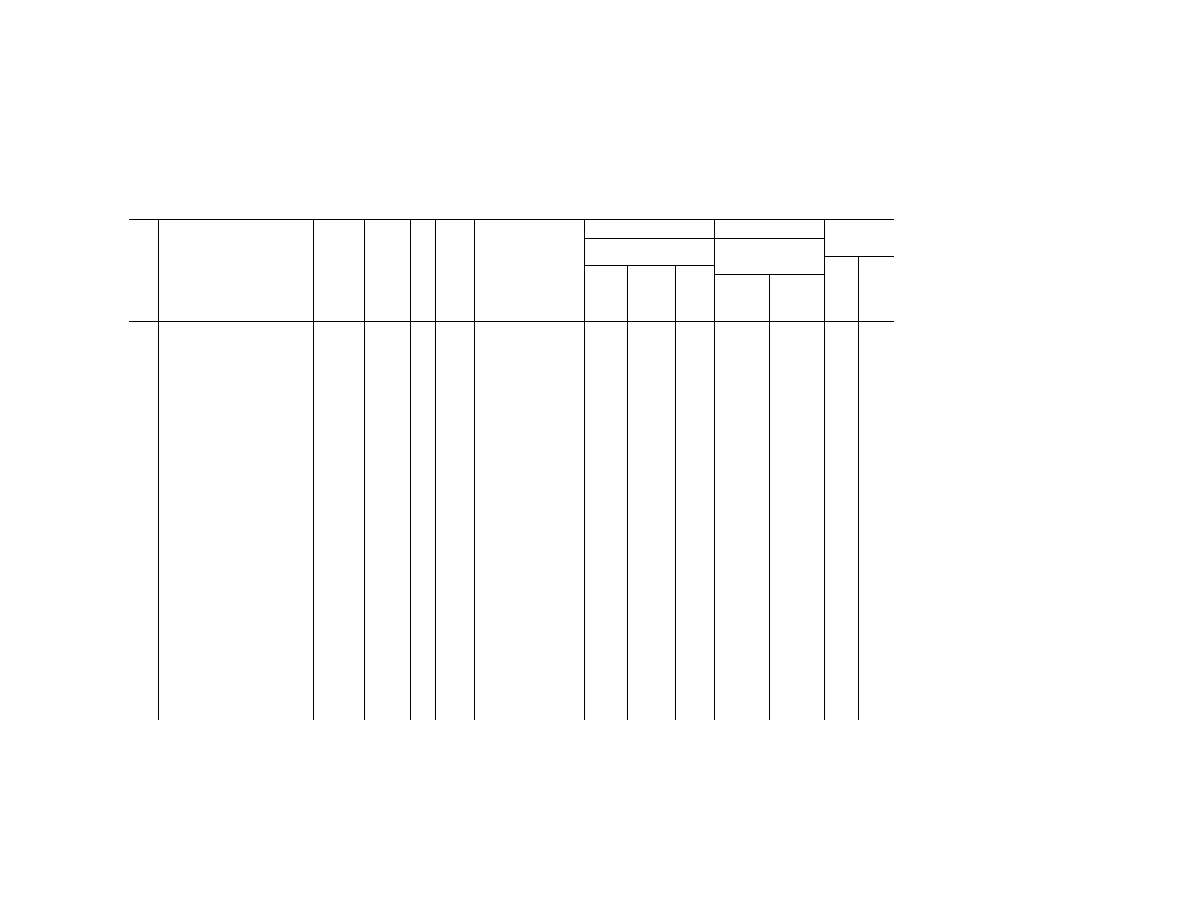
162
49 CFR Ch. I (10–1–23 Edition)
§
172.101
§ 172.101 H
AZARDOUS
M
ATERIALS
T
ABLE
—Continued
Sym-
bols
Hazardous materials descriptions
and proper shipping names
Hazard
class or
Division
Identi-
fication
Numbers
PG
Label
Codes
Special provisions
(§ 172.102)
(8)
(9)
(10)
Vessel
stowage
Packaging
(§ 173.***)
Quantity limitations
(see §§ 173.27 and
175.75)
Loca-
tion
Other
Excep-
tions
Non-bulk
Bulk
Passenger
aircraft/rail
Cargo air-
craft only
(1)
(2)
(3)
(4)
(5)
(6)
(7)
(8A)
(8B)
(8C)
(9A)
(9B)
(10A)
(10B)
Acetyl bromide
8 UN1716
II
8
B2, IB2, T8, TP2 154
202
242
1 L
30 L
C
40, 53,
58
Acetyl chloride
3 UN1717
II
3, 8
A3, A7, IB1, N34, T8,
TP2
150
202
243
1 L
5 L
B
40, 53,
58
Acetyl cyclohexanesulfonyl per-
oxide, with more than 82 percent
wetted with less than 12 percent
water
Forbidden
Acetyl iodide
8 UN1898
II
8
B2, IB2, T7, TP2, TP13 154
202
242
1 L
30 L
C
40, 53,
58
Acetyl methyl carbinol
3 UN2621
III
3
B1, IB3, T2, TP1 150
203
242
60 L
220 L
A
Acetyl peroxide, solid, or with more
than 25 percent in solution
Forbidden
Acetylene, dissolved
2.1 UN1001
2.1
N86, N88 None
303
None
Forbidden
15 kg
D
25, 40,
57
Acetylene (liquefied)
Forbidden
Acetylene silver nitrate
Forbidden
Acetylene, solvent free
Forbidden
Acetylene tetrabromide, see
Tetrabromoethane
Acid butyl phosphate, see Butyl
acid phosphate
Acid, sludge, see Sludge acid
Acridine
6.1 UN2713
III
6.1
IB8, IP3, T1, TP33 153
213
240
100 kg
200 kg
A
Acrolein dimer, stabilized
3 UN2607
III
3
387, B1, IB3, T2, TP1 150
203
242
60 L
220 L
C
25, 40
Acrolein, stabilized
6.1 UN1092
I
6.1, 3
1, 380, 387, B9, B14,
B30, B42, B77, T22,
TP2, TP7, TP13, TP38,
TP44
None
226
244
Forbidden
Forbidden
D
25, 40
Acrylamide, solid
6.1 UN2074
III
6.1
IB8, IP3, T1, TP33 153
213
240
100 kg
200 kg
A
12, 25
Acrylamide solution
6.1 UN3426
III
6.1
IB3, T4, TP1 153
203
241
60 L
220 L
A
12, 25
Acrylic acid, stabilized
8 UN2218
II
8, 3
387, B2, IB2, T7, TP2 154
202
243
1 L
30 L
C
25, 40,
53, 58
Acrylonitrile, stabilized
3 UN1093
I
3, 6.1
387, B9, T14, TP2,
TP13
None
201
243
Forbidden
30 L
D
25, 40
Actuating cartridge, explosive, see
Cartridges, power device
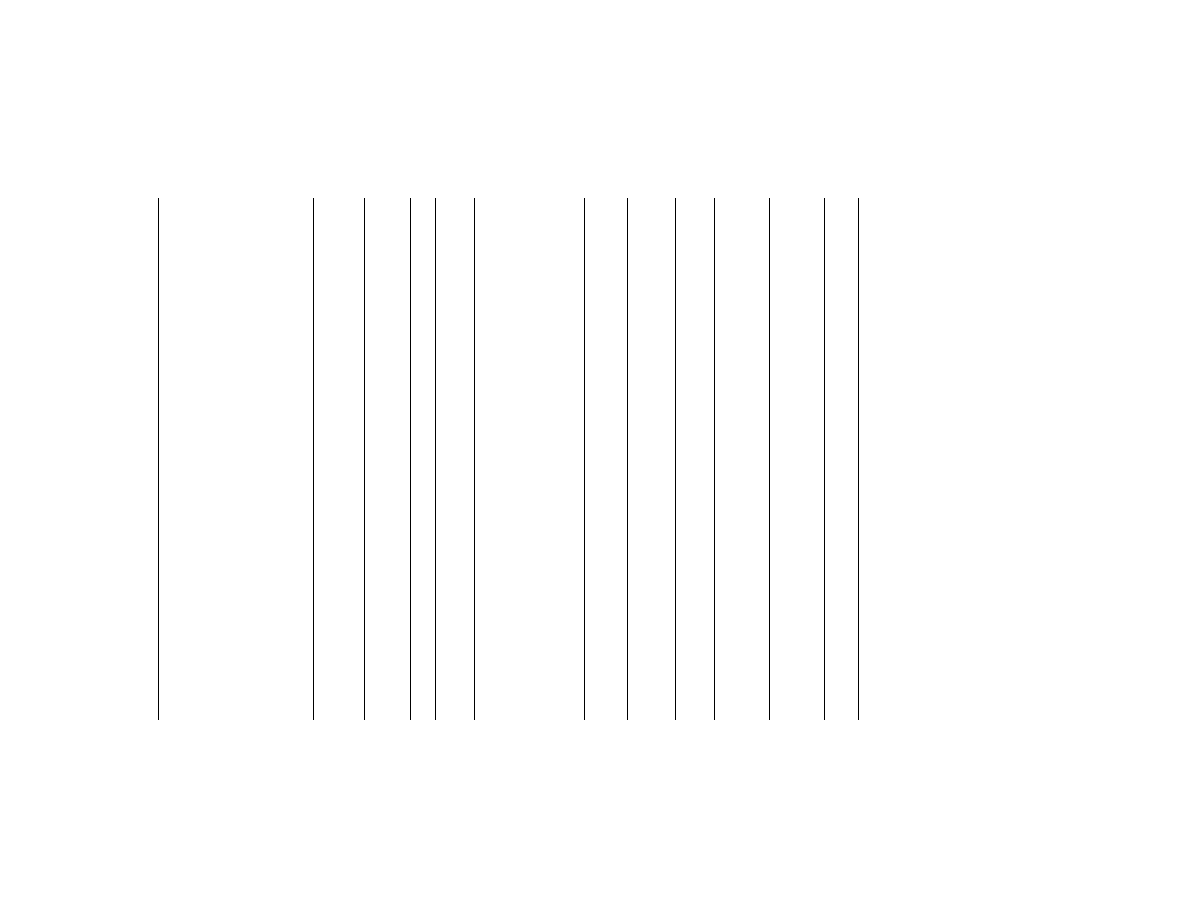
163
Pipeline and Haz. Matls. Safety Admin., DOT
§
172.101
Adhesives, containing a flammable
liquid
3 UN1133
I
3
T11, TP1, TP8, TP27 150
201
243
1 L
30 L
B
II
3
149, B52, IB2, T4, TP1,
TP8
150
173
242
5 L
60 L
B
III
3
B1, B52, IB3, T2, TP1 150
173
242
60 L
220 L
A
Adiponitrile
6.1 UN2205
III
6.1
IB3, T3, TP1 153
203
241
60 L
220 L
A
G
Adsorbed gas, n.o.s
2.2 UN3511
......
2.2
........................................
None
302c
None
75 kg
150 kg
A
G
Adsorbed gas, flammable, n.o.s
2.1 UN3510
......
2.1
........................................
None
302c
None
Forbidden
150 kg
D
40
G
Adsorbed gas, oxidizing, n.o.s
2.2 UN3513
......
2.2,
5.1
........................................
None
302c
None
75 kg
150 kg
D
G
Adsorbed gas, toxic, n.o.s. Inhala-
tion hazard zone A
2.3 UN3512
......
2.3
1 None
302c
None
Forbidden
Forbidden
D
40
G
Adsorbed gas, toxic, n.o.s. Inhala-
tion hazard zone B
2.3 UN3512
......
2.3
2, B9, B14 None
302c
None
Forbidden
Forbidden
D
40
G
Adsorbed gas, toxic, n.o.s. Inhala-
tion hazard zone C
2.3 UN3512
......
2.3
3, B14 None
302c
None
Forbidden
Forbidden
D
40
G
Adsorbed gas, toxic, n.o.s. Inhala-
tion hazard zone D
2.3 UN3512
......
2.3
4 None
302c
None
Forbidden
Forbidden
D
40
G
Adsorbed gas, toxic, corrosive,
n.o.s. Inhalation hazard zone A
2.3 UN3516
......
2.3, 8
1, 379 None
302c
None
Forbidden
Forbidden
D
40
G
Adsorbed gas, toxic, corrosive,
n.o.s. Inhalation hazard zone B
2.3 UN3516
......
2.3, 8
2, 379, B9, B14 None
302c
None
Forbidden
Forbidden
D
40
G
Adsorbed gas, toxic, corrosive,
n.o.s. Inhalation hazard zone C
2.3 UN3516
......
2.3, 8
3, 379, B14 None
302c
None
Forbidden
Forbidden
D
40
G
Adsorbed gas, toxic, corrosive,
n.o.s. Inhalation hazard zone D
2.3 UN3516
......
2.3, 8
4, 379 None
302c
None
Forbidden
Forbidden
D
40
G
Adsorbed gas, toxic, flammable,
n.o.s. Inhalation hazard zone A
2.3 UN3514
......
2.3,
2.1
1 None
302c
None
Forbidden
Forbidden
D
40
G
Adsorbed gas, toxic, flammable,
n.o.s. Inhalation hazard zone B
2.3 UN3514
......
2.3,
2.1
2, B9, B14 None
302c
None
Forbidden
Forbidden
D
40
G
Adsorbed gas, toxic, flammable,
n.o.s. Inhalation hazard zone C
2.3 UN3514
......
2.3,
2.1
3, B14 None
302c
None
Forbidden
Forbidden
D
40
G
Adsorbed gas, toxic, flammable,
n.o.s. Inhalation hazard zone D
2.3 UN3514
......
2.3,
2.1
4 None
302c
None
Forbidden
Forbidden
D
40
G
Adsorbed gas, toxic, flammable,
corrosive, n.o.s. Inhalation hazard
zone A
2.3 UN3517
......
2.3,
2.1,
8
1 None
302c
None
Forbidden
Forbidden
D
17, 40
G
Adsorbed gas, toxic, flammable,
corrosive, n.o.s. Inhalation hazard
zone B
2.3 UN3517
......
2.3,
2.1,
8
2, B9, B14 None
302c
None
Forbidden
Forbidden
D
17, 40
G
Adsorbed gas, toxic, flammable,
corrosive, n.o.s. Inhalation hazard
zone C
2.3 UN3517
......
2.3,
2.1,
8
3, B14 None
302c
None
Forbidden
Forbidden
D
17, 40
G
Adsorbed gas, toxic, flammable,
corrosive, n.o.s. Inhalation hazard
zone D
2.3 UN3517
......
2.3,
2.1,
8
4 None
302c
None
Forbidden
Forbidden
D
17, 40
G
Adsorbed gas, toxic, oxidizing,
n.o.s. Inhalation hazard zone A
2.3 UN3515
......
2.3,
5.1
1 None
302c
None
Forbidden
Forbidden
D
40
G
Adsorbed gas, toxic, oxidizing,
n.o.s. Inhalation hazard zone B
2.3 UN3515
......
2.3,
5.1
2, B9, B14 None
302c
None
Forbidden
Forbidden
D
40
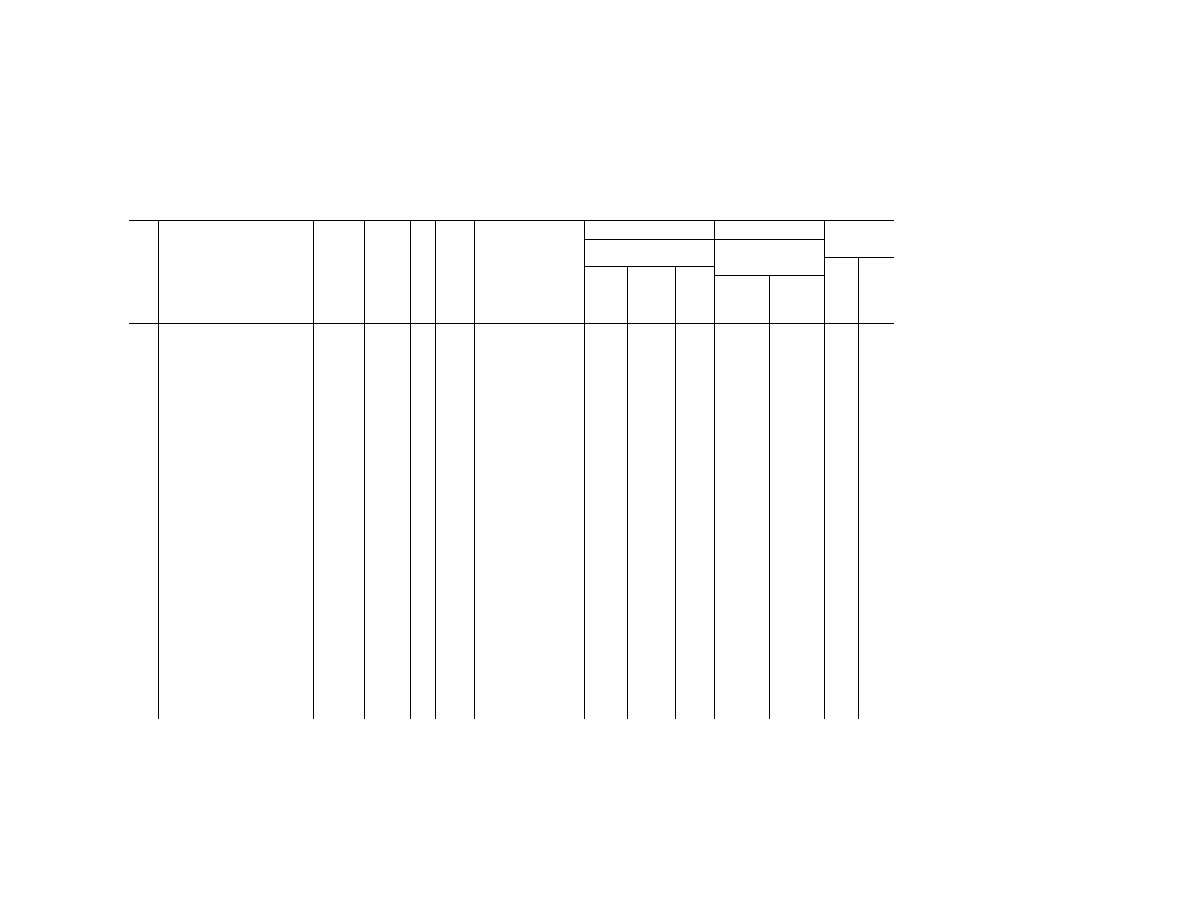
164
49 CFR Ch. I (10–1–23 Edition)
§
172.101
§ 172.101 H
AZARDOUS
M
ATERIALS
T
ABLE
—Continued
Sym-
bols
Hazardous materials descriptions
and proper shipping names
Hazard
class or
Division
Identi-
fication
Numbers
PG
Label
Codes
Special provisions
(§ 172.102)
(8)
(9)
(10)
Vessel
stowage
Packaging
(§ 173.***)
Quantity limitations
(see §§ 173.27 and
175.75)
Loca-
tion
Other
Excep-
tions
Non-bulk
Bulk
Passenger
aircraft/rail
Cargo air-
craft only
(1)
(2)
(3)
(4)
(5)
(6)
(7)
(8A)
(8B)
(8C)
(9A)
(9B)
(10A)
(10B)
G
Adsorbed gas, toxic, oxidizing,
n.o.s. Inhalation hazard zone C
2.3 UN3515
......
2.3,
5.1
3, B14 None
302c
None
Forbidden
Forbidden
D
40
G
Adsorbed gas, toxic, oxidizing,
n.o.s. Inhalation hazard zone D
2.3 UN3515
......
2.3,
5.1
4 None
302c
None
Forbidden
Forbidden
D
40
G
Adsorbed gas, toxic, oxidizing, cor-
rosive, n.o.s. Inhalation hazard
zone A
2.3 UN3518
......
2.3,
5.1,
8
1 None
302c
None
Forbidden
Forbidden
D
40, 89,
90
G
Adsorbed gas, toxic, oxidizing, cor-
rosive, n.o.s. Inhalation hazard
zone B
2.3 UN3518
......
2.3,
5.1,
8
2, B9, B14 None
302c
None
Forbidden
Forbidden
D
40, 89,
90
G
Adsorbed gas, toxic, oxidizing, cor-
rosive, n.o.s. Inhalation hazard
zone C
2.3 UN3518
......
2.3,
5.1,
8
3, B14 None
302c
None
Forbidden
Forbidden
D
40, 89,
90
G
Adsorbed gas, toxic, oxidizing, cor-
rosive, n.o.s. Inhalation hazard
zone D
2.3 UN3518
......
2.3,
5.1,
8
4 None
302c
None
Forbidden
Forbidden
D
40, 89,
90
Aerosols, corrosive, Packing Group
II or III, (each not exceeding 1 L
capacity)
2.2 UN1950
......
2.2, 8
A34 306
None
None
75 kg
150 kg
A
25, 87,
126,
157
Aerosols, flammable, (each not ex-
ceeding 1 L capacity)
2.1 UN1950
......
2.1
N82 306
None
None
75 kg
150 kg
A
25, 87,
126,
157
Aerosols, flammable, n.o.s. (engine
starting fluid) (each not exceeding
1 L capacity)
2.1 UN1950
......
2.1
N82 306
304
None
Forbidden
150 kg
A
25, 87,
126,
157
Aerosols, non-flammable, (each not
exceeding 1 L capacity)
2.2 UN1950
......
2.2
........................................
306
None
None
75 kg
150 kg
A
25, 87,
126,
157
Aerosols, poison, Packing Group III
(each not exceeding 1 L capacity)
2.2 UN1950
......
2.2,
6.1
........................................
306
None
None
Forbidden
Forbidden
A
25, 87,
126,
157
Air bag inflators, or Air bag mod-
ules, or Seat-belt pretensioners,
see Safety devices, electrically
initiated or Safety devices, pyro-
technic
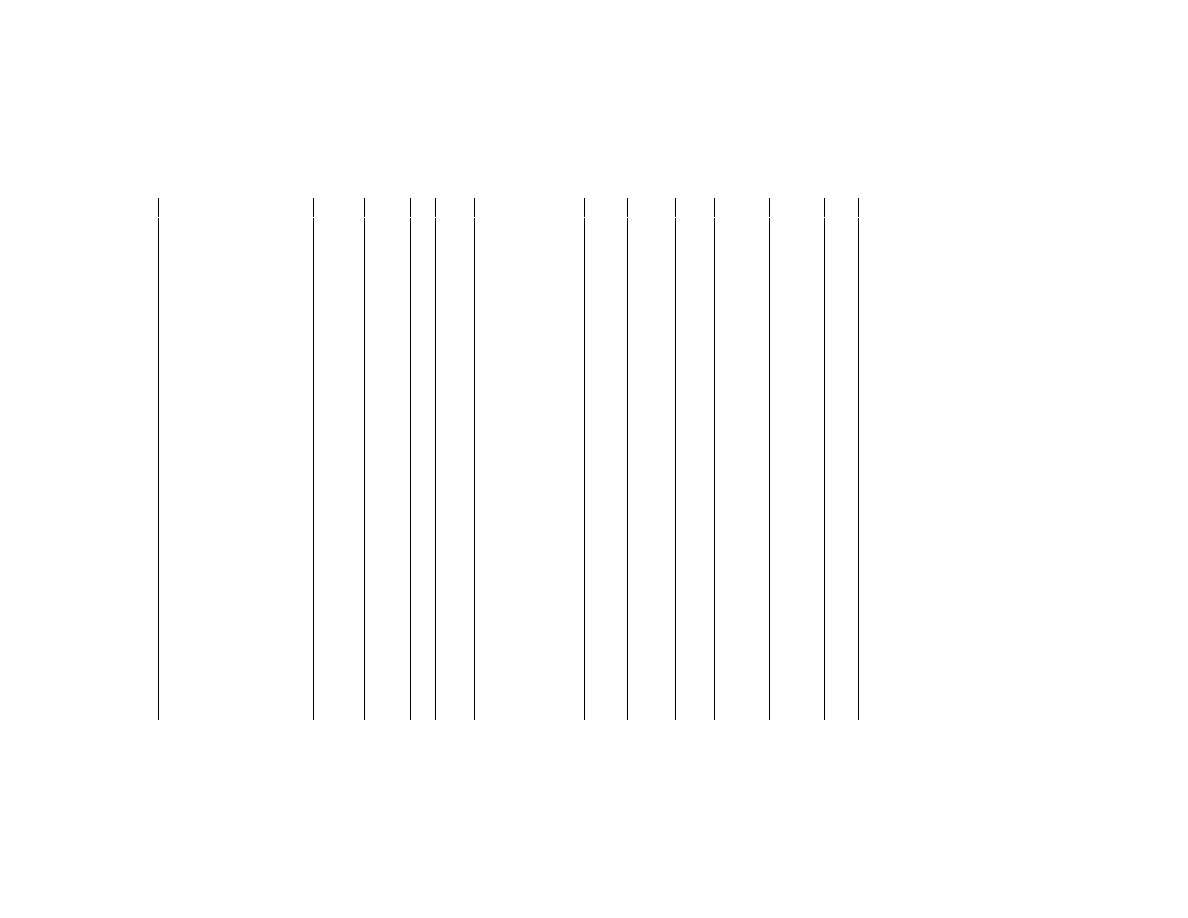
165
Pipeline and Haz. Matls. Safety Admin., DOT
§
172.101
Air, compressed
2.2 UN1002
2.2
78 306,
307
302
302
75 kg
150 kg
A
Air, refrigerated liquid, (cryogenic
liquid)
2.2 UN1003
2.2,
5.1
T75, TP5, TP22 320
316
318,
319
Forbidden
Forbidden
D
51
Air, refrigerated liquid, (cryogenic
liquid) non-pressurized
2.2 UN1003
2.2,
5.1
T75, TP5, TP22 320
316
318,
319
Forbidden
Forbidden
D
51
Aircraft engines (including turbines),
see Engines, internal combustion
Aircraft evacuation slides, see Life
saving appliances etc
Aircraft hydraulic power unit fuel
tank (containing a mixture of an-
hydrous hydrazine and
monomethyl hydrazine) (M86
fuel)
3 UN3165
I
3, 6.1,
8
........................................
None
172
None
Forbidden
42 L
E
21, 40,
49, 100
Aircraft survival kits, see Life saving
appliances etc
G
Alcoholates solution, n.o.s., in alco-
hol
3 UN3274
II
3, 8
IB2 150
202
243
1 L
5 L
B
52
Alcoholic beverages
3 UN3065
II
3
24, 149, B1, IB2, T4,
TP1
150
202
242
5 L
60 L
A
III
3
24, B1, IB3, N11, T2,
TP1
150
203
242
60 L
220 L
A
Alcohols, n.o.s.
3 UN1987
I
3
172, T11, TP1, TP8,
TP27
4b
201
243
1 L
30 L
E
II
3
172, IB2, T7, TP1, TP8,
TP28
4b, 150
202
242
5 L
60 L
B
III
3
172, B1, IB3, T4, TP1,
TP29
4b, 150
203
242
60 L
220 L
A
G
Alcohols, flammable, toxic n.o.s
3 UN1986
I
3, 6.1
T14, TP2, TP13, TP27 None
201
243
Forbidden
30 L
E
40
II
3, 6.1
IB2, T11, TP2, TP27 150
202
243
1 L
60 L
B
40
III
3, 6.1
B1, IB3, T7, TP1, TP28 150
203
242
60 L
220 L
A
Aldehydes, n.o.s.
3 UN1989
I
3
T11, TP1, TP27 None
201
243
1 L
30 L
E
II
3
IB2, T7, TP1, TP8, TP28 150
202
242
5 L
60 L
B
III
3
B1, IB3, T4, TP1, TP29 150
203
242
60 L
220 L
A
G
Aldehydes, flammable, toxic, n.o.s.
3 UN1988
I
3, 6.1
T14, TP2, TP13, TP27 None
201
243
Forbidden
30 L
E
40
II
3, 6.1
IB2, T11, TP2, TP27 150
202
243
1 L
60 L
B
40
III
3, 6.1
B1, IB3, T7, TP1, TP28 150
203
242
60 L
220 L
A
Aldol
6.1 UN2839
II
6.1
IB2, T7, TP2 153
202
243
5 L
60 L
A
12, 25
G
Alkali metal alcoholates, self-heat-
ing, corrosive, n.o.s.
4.2 UN3206
II
4.2, 8
64, A7, IB5, IP2, T3,
TP33, W31
None
212
242
15 kg
50 kg
B
52
................
III
4.2, 8
64, A7, IB8, IP3, T1,
TP33, W31
None
213
242
25 kg
100 kg
B
52
Alkali metal alloys, liquid, n.o.s
4.3 UN1421
I
4.3
A2, A7, B48, N34, W31 None
201
244
Forbidden
1 L
D
13, 52,
148
Alkali metal amalgam, liquid
4.3 UN1389
I
4.3
A2, A7, N34, W31 None
201
244
Forbidden
1 L
D
13, 40,
52, 148
Alkali metal amalgam, solid
4.3 UN3401
I
4.3
IB4, IP1, N40, T9, TP7,
TP33, W31
None
211
242
Forbidden
15 kg
D
13, 52,
148
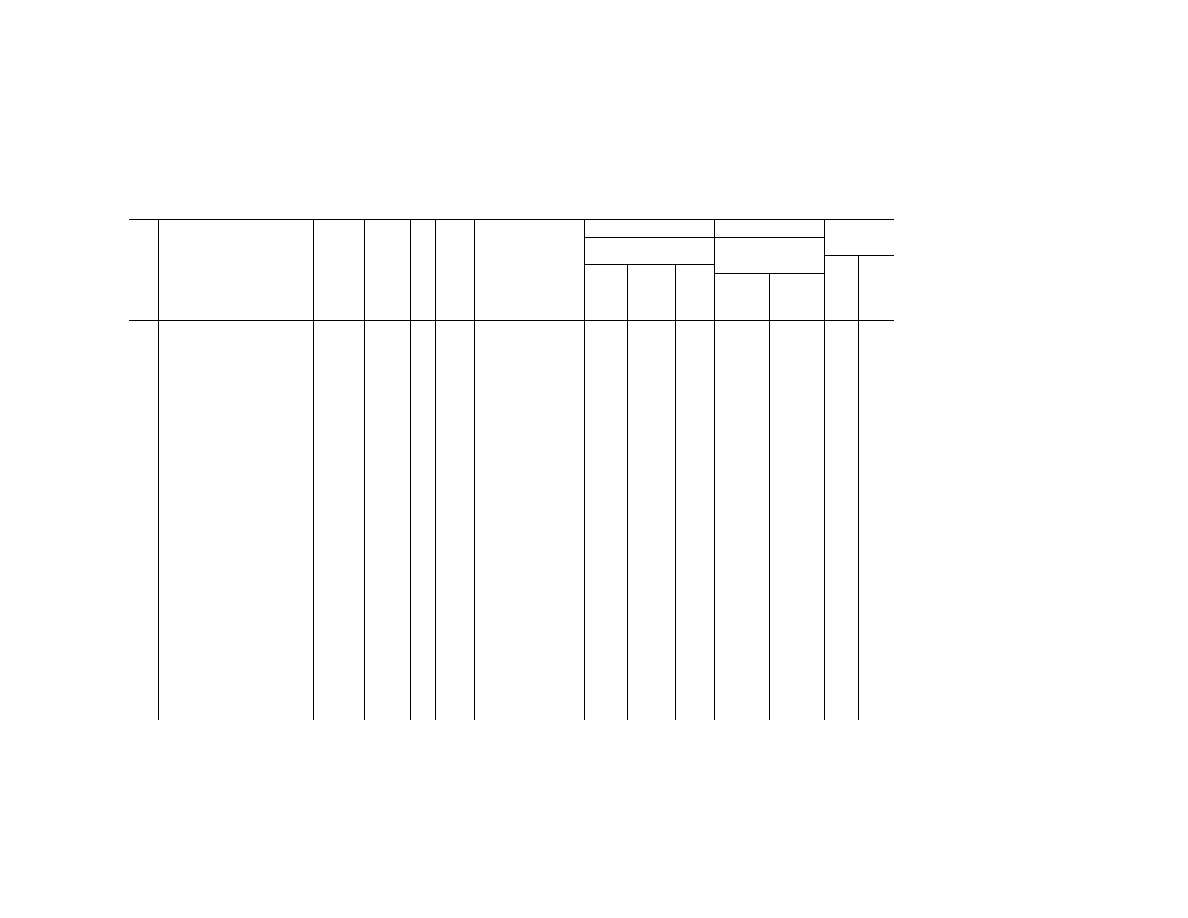
166
49 CFR Ch. I (10–1–23 Edition)
§
172.101
§ 172.101 H
AZARDOUS
M
ATERIALS
T
ABLE
—Continued
Sym-
bols
Hazardous materials descriptions
and proper shipping names
Hazard
class or
Division
Identi-
fication
Numbers
PG
Label
Codes
Special provisions
(§ 172.102)
(8)
(9)
(10)
Vessel
stowage
Packaging
(§ 173.***)
Quantity limitations
(see §§ 173.27 and
175.75)
Loca-
tion
Other
Excep-
tions
Non-bulk
Bulk
Passenger
aircraft/rail
Cargo air-
craft only
(1)
(2)
(3)
(4)
(5)
(6)
(7)
(8A)
(8B)
(8C)
(9A)
(9B)
(10A)
(10B)
Alkali metal amides
4.3 UN1390
II
4.3
A6, A7, A8, A19, A20,
IB7, IP2, IP21, T3,
TP33, W31, W40
151
212
241
15 kg
50 kg
E
13, 40,
52, 148
Alkali metal dispersions, flammable
or Alkaline earth metal disper-
sions, flammable
4.3 UN3482
I
4.3, 3
A2, A7, W31 None
201
244
Forbidden
1 L
D
13, 52,
148
Alkali metal dispersions, or Alkaline
earth metal dispersions
4.3 UN1391
I
4.3
A2, A7, W31 None
201
244
Forbidden
1 L
D
13, 52,
148
Alkaline corrosive liquids, n.o.s.,
see Caustic alkali liquids, n.o.s.
G
Alkaline earth metal alcoholates,
n.o.s
4.2 UN3205
II
4.2
65, A7, IB6, IP2, T3,
TP33, W31
None
212
241
15 kg
50 kg
B
III
4.2
65, A7, IB8, IP3, T1,
TP33, W31
None
213
241
25 kg
100 kg
B
Alkaline earth metal alloys, n.o.s
4.3 UN1393
II
4.3
A19, IB7, IP2, IP4, T3,
TP33, W31, W40
151
212
241
15 kg
50 kg
E
13, 52,
148
Alkaline earth metal amalgams, liq-
uid
4.3 UN1392
I
4.3
A19, N34, N40, W31 None
201
244
Forbidden
1 L
E
13, 40,
52, 148
Alkaline earth metal amalgams,
solid
4.3 UN3402
I
4.3
A19, N34, N40, T9, TP7,
TP33, W31
None
211
242
Forbidden
15 kg
D
13, 52,
148
G
Alkaloids, liquid, n.o.s., or Alkaloid
salts, liquid, n.o.s.
6.1 UN3140
I
6.1
A4, T14, TP2, TP27 None
201
243
1 L
30 L
A
II
6.1
IB2, T11, TP2, TP27 153
202
243
5 L
60 L
A
III
6.1
IB3, T7, TP1, TP28 153
203
241
60 L
220 L
A
G
Alkaloids, solid, n.o.s. or Alkaloid
salts, solid, n.o.s. poisonous
6.1 UN1544
I
6.1
IB7, IP1, T6, TP33 None
211
242
5 kg
50 kg
A
II
6.1
IB8, IP2, IP4, T3, TP33 153
212
242
25 kg
100 kg
A
III
6.1
IB8, IP3, T1, TP33 153
213
240
100 kg
200 kg
A
Alkyl sulfonic acids, liquid or Aryl
sulfonic acids, liquid with more
than 5 percent free sulfuric acid
8 UN2584
II
8
B2, IB2, T8, TP2, TP13 154
202
242
1 L
30 L
B
53, 58
Alkyl sulfonic acids, liquid or Aryl
sulfonic acids, liquid with not
more than 5 percent free sulfuric
acid
8 UN2586
III
8
IB3, T4, TP1 154
203
241
5 L
60 L
B
53, 58
Alkyl sulfonic acids, solid or Aryl
sulfonic acids, solid, with more
than 5 percent free sulfuric acid
8 UN2583
II
8
IB8, IP2, IP4, T3, TP33 154
212
240
15 kg
50 kg
A
53, 58
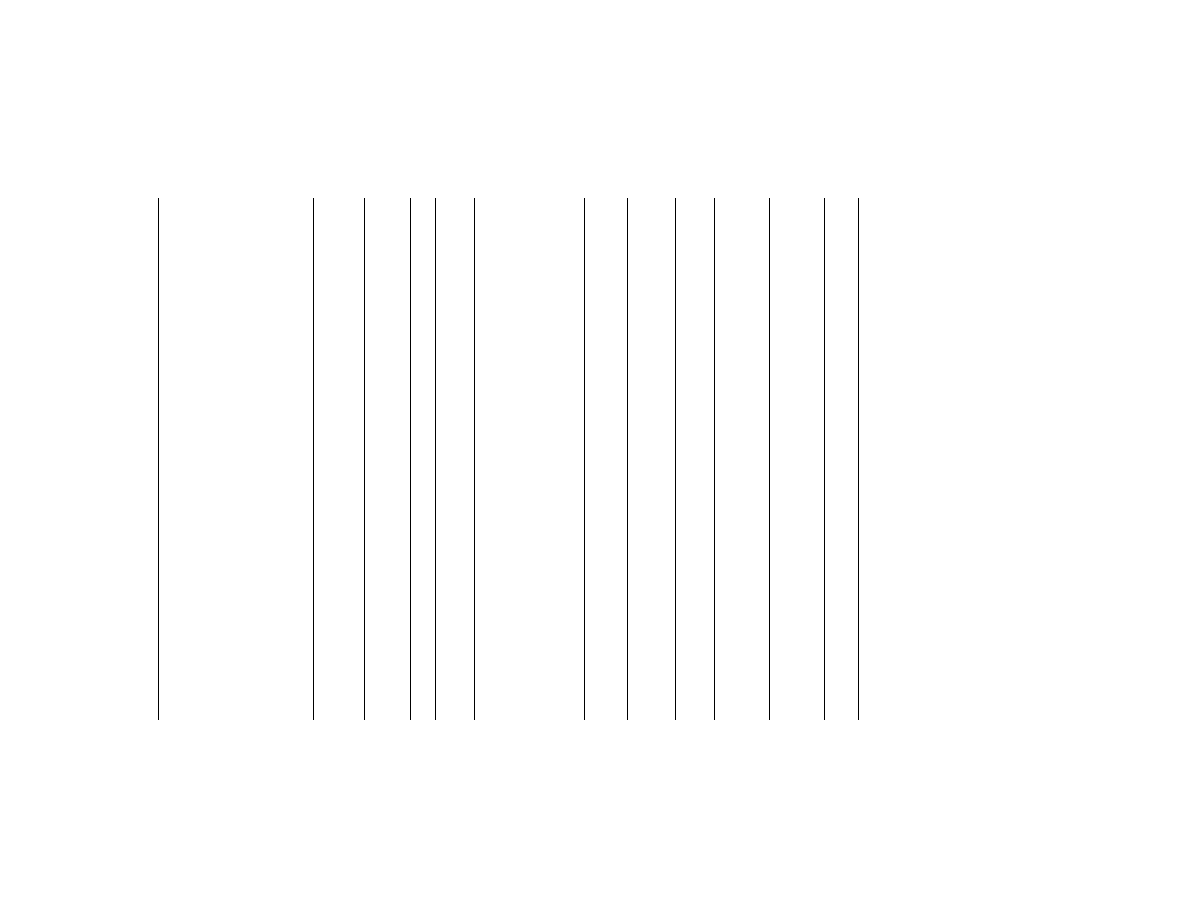
167
Pipeline and Haz. Matls. Safety Admin., DOT
§
172.101
Alkyl sulfonic acids, solid or Aryl
sulfonic acids, solid with not more
than 5 percent free sulfuric acid
8 UN2585
III
8
IB8, IP3, T1, TP33 154
213
240
25 kg
100 kg
A
53, 58
Alkylphenols, liquid, n.o.s. (including
C2–C12 homologues)
8 UN3145
I
8
T14, TP2 None
201
243
0.5 L
2.5 L
B
II
8
IB2, T11, TP2, TP27 154
202
242
1 L
30 L
B
III
8
IB3, T7, TP1, TP28 154
203
241
5 L
60 L
A
Alkylphenols, solid, n.o.s. (including
C2-C12 homologues)
8 UN2430
I
8
IB7, IP1, T6, TP33 None
211
242
1 kg
25 kg
B
II
8
IB8, IP2, IP4, T3, TP33 154
212
240
15 kg
50 kg
B
III
8
IB8, IP3, T1, TP33 154
213
240
25 kg
100 kg
A
Alkylsulfuric acids
8 UN2571
II
8
B2, IB2, T8, TP2, TP13,
TP28
154
202
242
1 L
30 L
C
14, 53,
58
Allethrin, see Pesticides, liquid,
toxic, n.o.s.
Allyl acetate
3 UN2333
II
3, 6.1
IB2, T7, TP1, TP13 150
202
243
1 L
60 L
E
40
Allyl alcohol
6.1 UN1098
I
6.1, 3
2, B9, B14, B32, B77,
T20, TP2, TP13, TP38,
TP45
None
227
244
Forbidden
Forbidden
D
40
Allyl bromide
3 UN1099
I
3, 6.1
T14, TP2, TP13 None
201
243
Forbidden
30 L
B
40
Allyl chloride
3 UN1100
I
3, 6.1
T14, TP2, TP13 None
201
243
Forbidden
30 L
E
40
Allyl chlorocarbonate, see Allyl
chloroformate
Allyl chloroformate
6.1 UN1722
I
6.1, 3,
8
2, B9, B14, B32, N41,
T20, TP2, TP13, TP38,
TP45
None
227
244
Forbidden
Forbidden
D
21, 40,
53, 58,
100
Allyl ethyl ether
3 UN2335
II
3, 6.1
IB2, T7, TP1, TP13 150
202
243
1 L
60 L
E
40
Allyl formate
3 UN2336
I
3, 6.1
T14, TP2, TP13 None
201
243
Forbidden
30 L
E
40
Allyl glycidyl ether
3 UN2219
III
3
B1, IB3, T2, TP1 150
203
242
60 L
220 L
A
Allyl iodide
3 UN1723
II
3, 8
A3, IB1, N34, T7, TP2,
TP13
150
202
243
1 L
5 L
B
40, 53,
58
Allyl isothiocyanate, stabilized
6.1 UN1545
II
6.1, 3
387, A3, A7, IB2, T7,
TP2
153
202
243
Forbidden
60 L
D
25, 40
Allylamine
6.1 UN2334
I
6.1, 3
2, B9, B14, B32, T20,
TP2, TP13, TP38, TP45
None
227
244
Forbidden
Forbidden
D
40, 52
Allyltrichlorosilane, stabilized
8 UN1724
II
8, 3
387, A7, B2, B6, N34,
T10, TP2, TP7, TP13
None
206
243
Forbidden
30 L
C
25, 40,
53, 58
Aluminum borohydride or Aluminum
borohydride in devices
4.2 UN2870
I
4.2,
4.3
B11, T21, TP7, TP33 None
181
244
Forbidden
Forbidden
D
13, 148
Aluminum bromide, anhydrous
8 UN1725
II
8
IB8, IP2, IP4, T3, TP33 154
212
240
15 kg
50 kg
A
40, 53,
58
Aluminum bromide, solution
8 UN2580
III
8
IB3, T4, TP1 154
203
241
5 L
60 L
A
53, 58
Aluminum carbide
4.3 UN1394
II
4.3
A20, IB7, IP2, IP21,
N41, T3, TP33, W31,
W40
151
212
242
15 kg
50 kg
A
13, 52,
148
Aluminum chloride, anhydrous
8 UN1726
II
8
IB8, IP2, IP4, T3, TP33 154
212
240
15 kg
50 kg
A
40, 53,
58
Aluminum chloride, solution
8 UN2581
III
8
IB3, T4, TP1 154
203
241
5 L
60 L
A
53, 58
Aluminum dross, wet or hot
Forbidden
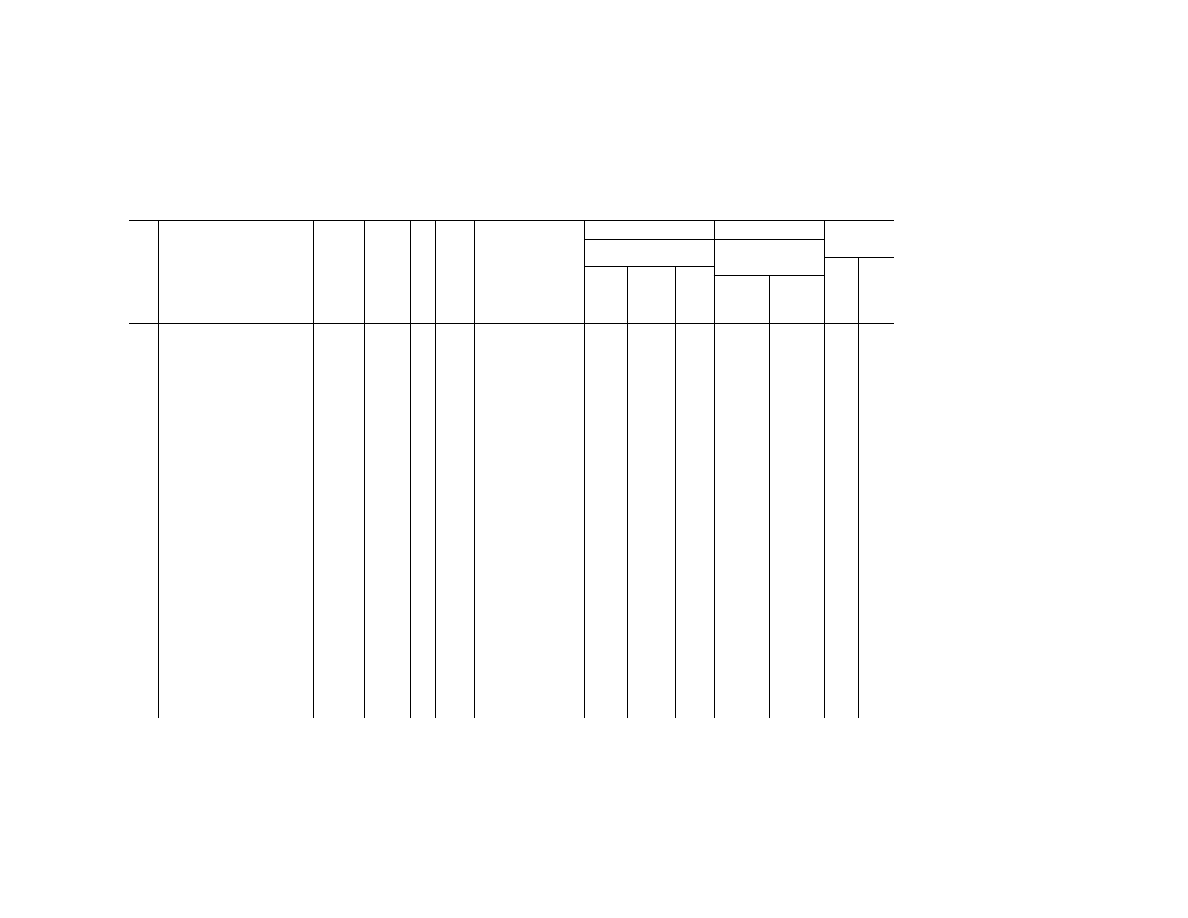
168
49 CFR Ch. I (10–1–23 Edition)
§
172.101
§ 172.101 H
AZARDOUS
M
ATERIALS
T
ABLE
—Continued
Sym-
bols
Hazardous materials descriptions
and proper shipping names
Hazard
class or
Division
Identi-
fication
Numbers
PG
Label
Codes
Special provisions
(§ 172.102)
(8)
(9)
(10)
Vessel
stowage
Packaging
(§ 173.***)
Quantity limitations
(see §§ 173.27 and
175.75)
Loca-
tion
Other
Excep-
tions
Non-bulk
Bulk
Passenger
aircraft/rail
Cargo air-
craft only
(1)
(2)
(3)
(4)
(5)
(6)
(7)
(8A)
(8B)
(8C)
(9A)
(9B)
(10A)
(10B)
Aluminum ferrosilicon powder
4.3 UN1395
II
4.3,
6.1
A19, IB5, IP2, T3, TP33,
W31, W40
151
212
242
15 kg
50 kg
A
13, 39,
40, 52,
53, 85,
103,
148
III
4.3,
6.1
A19, A20, IB4 151
213
241
25 kg
100 kg
A
13, 39,
40, 52,
53, 85,
103,
148
Aluminum hydride
4.3 UN2463
I
4.3
A19, N40, W31 None
211
242
Forbidden
15 kg
E
13, 148
D
Aluminum, molten
9 NA9260
III
9
IB3, T1, TP3 None
None
247
Forbidden
Forbidden
D
Aluminum nitrate
5.1 UN1438
III
5.1
A1, A29, IB8, IP3, T1,
TP33
152
213
240
25 kg
100 kg
A
Aluminum phosphate solution, see
Corrosive liquids, etc
Aluminum phosphide
4.3 UN1397
I
4.3,
6.1
A8, A19, N40, W31 None
211
242
Forbidden
15 kg
E
13, 40,
52, 85,
148
Aluminum phosphide pesticides
6.1 UN3048
I
6.1
A8, IB7, IP1, T6, TP33,
W31
None
211
242
Forbidden
15 kg
E
40, 85
Aluminum powder, coated
4.1 UN1309
II
4.1
IB8, IP2, IP21, T3,
TP33, W100
151
212
240
15 kg
50 kg
A
13, 39,
52, 53,
74,
101,
147,
148
III
4.1
B134, IB8, IP21, T1,
TP33, W100
151
213
240
25 kg
100 kg
A
13, 39,
52, 53,
74,
101,
147,
148
Aluminum powder, uncoated
4.3 UN1396
II
4.3
A19, A20, IB7, IP2,
IP21, T3, TP33, W31,
W40
151
212
242
15 kg
50 kg
A
13, 39,
52, 53,
148
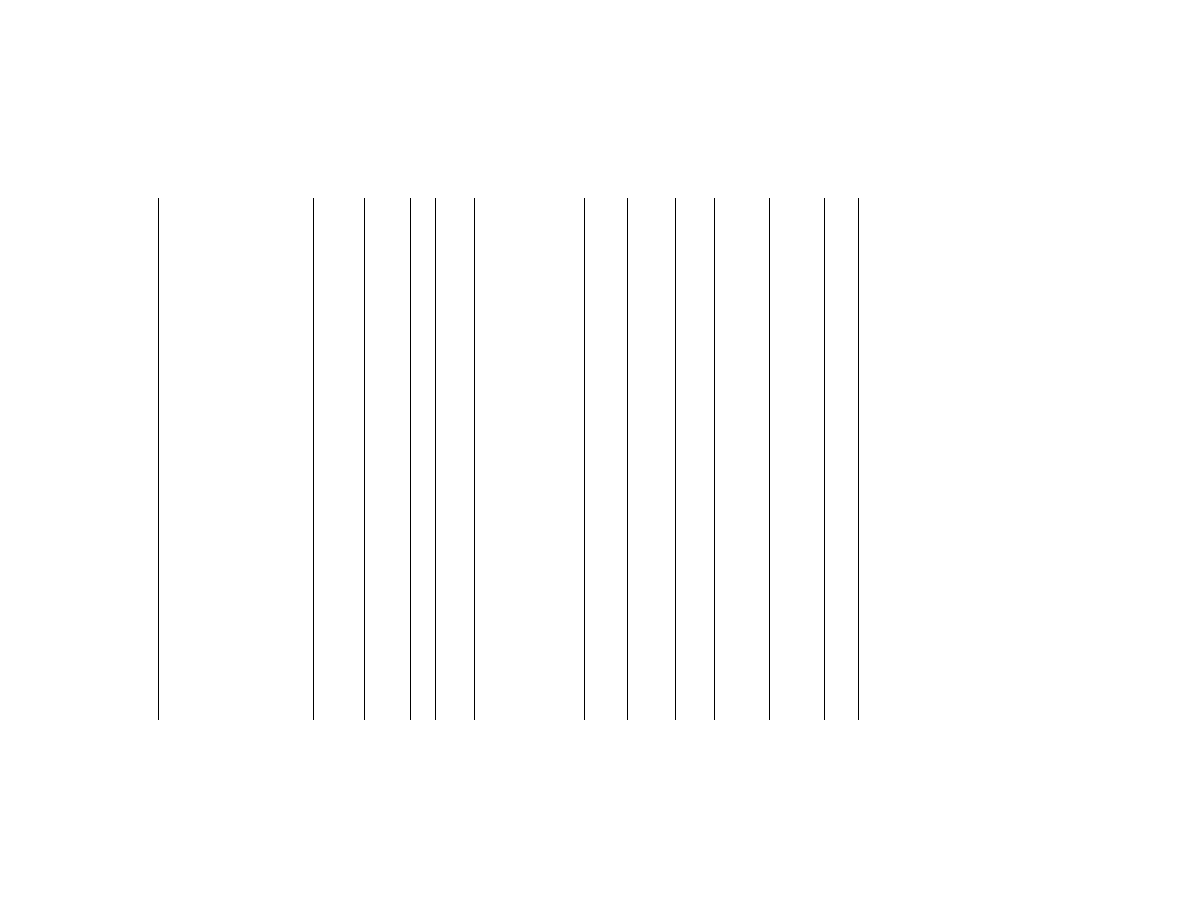
169
Pipeline and Haz. Matls. Safety Admin., DOT
§
172.101
III
4.3
A19, A20, IB8, IP21, T1,
TP33, W31
151
213
241
25 kg
100 kg
A
13, 39,
52, 53,
148
Aluminum resinate
4.1 UN2715
III
4.1
IB6, T1, TP33 151
213
240
25 kg
100 kg
A
Aluminum silicon powder, uncoated
4.3 UN1398
III
4.3
A1, A19, B136, IB8, IP4,
T1, TP33, W31
151
213
241
25 kg
100 kg
A
13, 39,
40, 52,
53, 85,
103,
148
Aluminum smelting by-products or
Aluminum remelting by-products
4.3 UN3170
II
4.3
128, B115, IB7, IP2,
IP21, T3, TP33, W31,
W40
151
212
242
15 kg
50 kg
B
13, 85,
103,
148
III
4.3
128, B115, IB8, IP21,
T1, TP33, W31
151
213
241
25 kg
100 kg
B
13, 85,
103,
148
Amatols, see Explosives, blasting,
type B
G
Amine, flammable, corrosive, n.o.s.
or Polyamines, flammable, corro-
sive, n.o.s
3 UN2733
I
3, 8
T14, TP1, TP27 None
201
243
0.5 L
2.5 L
D
40, 52
II
3, 8
IB2, T11, TP1, TP27 150
202
243
1 L
5 L
B
40, 52
III
3, 8
B1, IB3, T7, TP1, TP28 150
203
242
5 L
60 L
A
40, 52
G
Amine, liquid, corrosive, flammable,
n.o.s. or Polyamines, liquid, cor-
rosive, flammable, n.o.s.
8 UN2734
I
8, 3
A3, N34, T14, TP2,
TP27
None
201
243
0.5 L
2.5 L
A
52
II
8, 3
IB2, T11, TP2, TP27 154
202
243
1 L
30 L
A
52
G
Amines, liquid, corrosive, n.o.s. or
Polyamines, liquid, corrosive,
n.o.s
8 UN2735
I
8
B10, N34, T14, TP2,
TP27
None
201
243
0.5 L
2.5 L
A
52
II
8
B2, IB2, T11, TP1, TP27 154
202
242
1 L
30 L
A
52
III
8
IB3, T7, TP1, TP28 154
203
241
5 L
60 L
A
52
G
Amines, solid, corrosive, n.o.s., or
Polyamines, solid, corrosive
n.o.s.
8 UN3259
I
8
IB7, IP1, T6, TP33 None
211
242
1 kg
25 kg
A
52
II
8
IB8, IP2, IP4, T3, TP33 154
212
240
15 kg
50 kg
A
52
III
8
IB8, IP3, T1, TP33 154
213
240
25 kg
100 kg
A
52
2-Amino-4-chlorophenol
6.1 UN2673
II
6.1
IB8, IP2, IP4, T3, TP33 153
212
242
25 kg
100 kg
A
2-Amino-5-diethylaminopentane
6.1 UN2946
III
6.1
IB3, T4, TP1 153
203
241
60 L
220 L
A
2-Amino-4,6-Dinitrophenol, wetted
with not less than 20 percent
water by mass
4.1 UN3317
I
4.1
23, A8, A19, A20, N41,
W31
None
211
None
1 kg
15 kg
E
28, 36
2-(2-Aminoethoxy) ethanol
8 UN3055
III
8
IB3, T4, TP1 154
203
241
5 L
60 L
A
52
N-Aminoethylpiperazine
8 UN2815
III
8, 6.1
IB3, T4, TP1 154
203
241
5 L
60 L
B
12, 25,
40, 52
+
Aminophenols (o-; m-; p-)
6.1 UN2512
III
6.1
IB8, IP3, T1, TP33 153
213
240
100 kg
200 kg
A
Aminopropyldiethanolamine, see
Amines, etc
n-Aminopropylmorpholine, see
Amines, etc
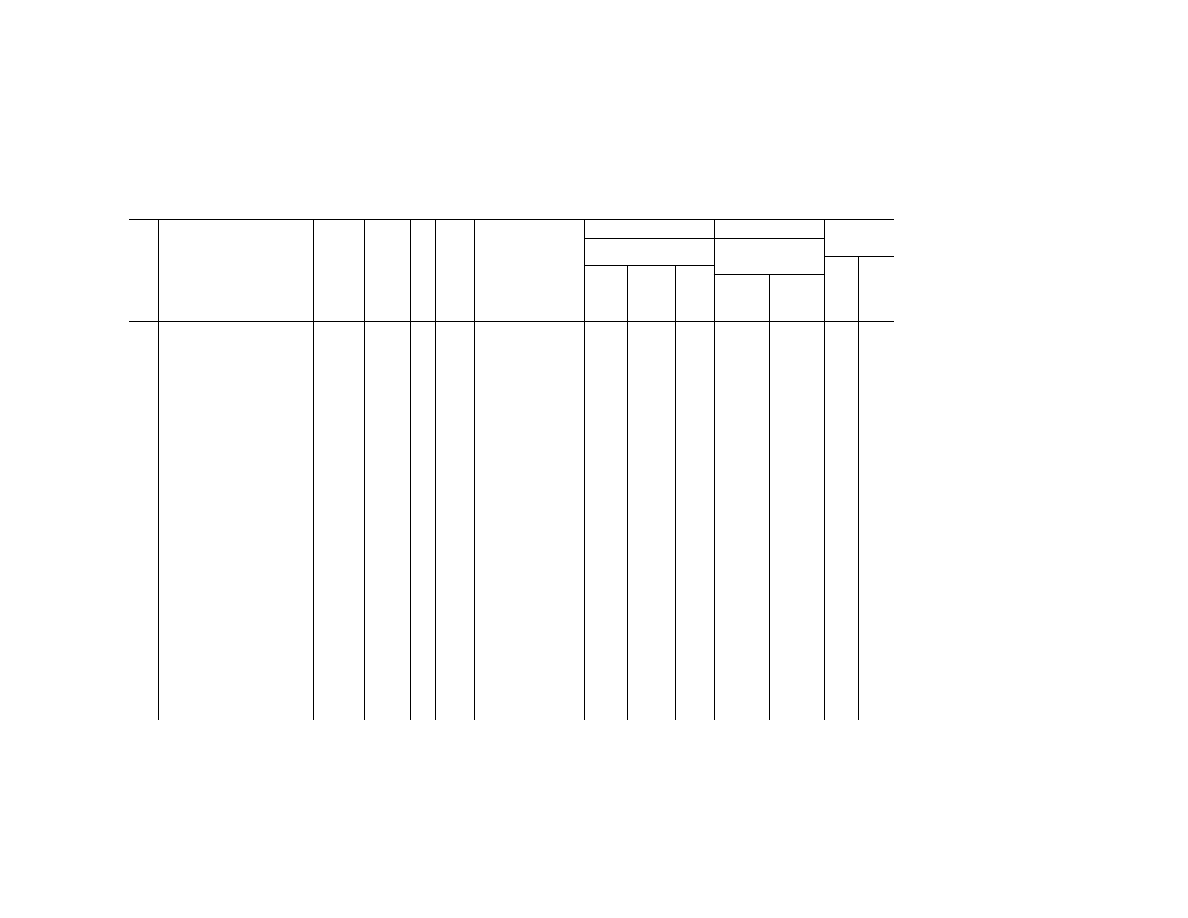
170
49 CFR Ch. I (10–1–23 Edition)
§
172.101
§ 172.101 H
AZARDOUS
M
ATERIALS
T
ABLE
—Continued
Sym-
bols
Hazardous materials descriptions
and proper shipping names
Hazard
class or
Division
Identi-
fication
Numbers
PG
Label
Codes
Special provisions
(§ 172.102)
(8)
(9)
(10)
Vessel
stowage
Packaging
(§ 173.***)
Quantity limitations
(see §§ 173.27 and
175.75)
Loca-
tion
Other
Excep-
tions
Non-bulk
Bulk
Passenger
aircraft/rail
Cargo air-
craft only
(1)
(2)
(3)
(4)
(5)
(6)
(7)
(8A)
(8B)
(8C)
(9A)
(9B)
(10A)
(10B)
Aminopyridines (o-; m-; p-)
6.1 UN2671
II
6.1
IB8, IP2, IP4, T3, TP33 153
212
242
25 kg
100 kg
B
12, 25,
40, 52
I
Ammonia, anhydrous
2.3 UN1005
......
2.3, 8
4, 379, N87, T50 None
304
314,
315
Forbidden
Forbidden
D
40, 52,
57
D
Ammonia, anhydrous
2.2 UN1005
......
2.2
13, 379, T50 None
304
314,
315
Forbidden
Forbidden
D
40, 52,
57
Ammonia solution, relative density
less than 0.880 at 15 degrees C
in water, with more than 35 per-
cent but not more than 50 per-
cent ammonia
2.2 UN2073
2.2
N87 306
304
314,
315
Forbidden
150 kg
E
40, 52,
57
Ammonia solution, relative density
between 0.880 and 0.957 at 15
degrees C in water, with more
than 10 percent but not more
than 35 percent ammonia
8 UN2672
III
8
336, IB3, IP8, T7, TP2 154
203
241
5 L
60 L
A
40, 52,
85
I
Ammonia solution, relative density
less than 0.880 at 15 degrees C
in water, with more than 50 per-
cent ammonia
2.3 UN3318
2.3, 8
4, N87, T50 None
304
314,
315
Forbidden
Forbidden
D
40, 52,
57
D
Ammonia solution, relative density
less than 0.880 at 15 degrees C
in water, with more than 50 per-
cent ammonia
2.2 UN3318
2.2
13, T50 None
304
314,
315
Forbidden
Forbidden
D
40, 52,
57
Ammonium arsenate
6.1 UN1546
II
6.1
IB8, IP2, IP4, T3, TP33 153
212
242
25 kg
100 kg
A
53
Ammonium azide
Forbidden
Ammonium bifluoride, solid, see
Ammonium hydrogen difluoride,
solid
Ammonium bifluoride solution, see
Ammonium hydrogen difluoride,
solution
Ammonium bromate
Forbidden
Ammonium chlorate
Forbidden
Ammonium dichromate
5.1 UN1439
II
5.1
IB8, IP2, IP4, T3, TP33 152
212
242
5 kg
25 kg
A
52
Ammonium dinitro-o-cresolate, solid
6.1 UN1843
II
6.1
IB8, IP2, IP4, T3, TP33 153
212
242
25 kg
100 kg
B
36, 65,
66, 77
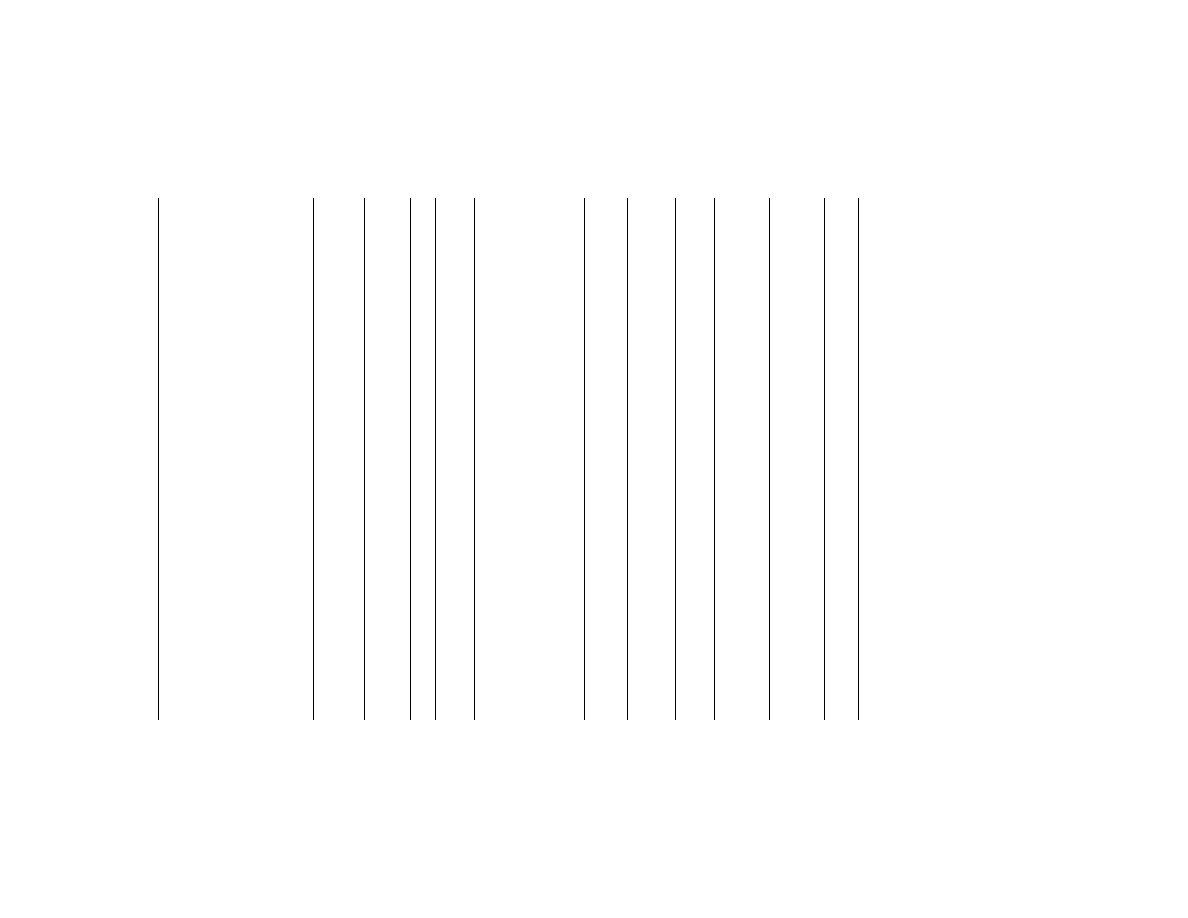
171
Pipeline and Haz. Matls. Safety Admin., DOT
§
172.101
Ammonium dinitro-o-cresolate solu-
tion
6.1 UN3424
II
6.1
IB2, T7, TP2 153
202
243
5 L
60 L
B
36, 66,
78, 91
III
6.1
IB2, T7, TP2 153
203
241
60 L
220 L
A
36, 66,
78, 91
Ammonium fluoride
6.1 UN2505
III
6.1
IB8, IP3, T1, TP33 153
213
240
100 kg
200 kg
A
52
Ammonium fluorosilicate
6.1 UN2854
III
6.1
IB8, IP3, T1, TP33 153
213
240
100 kg
200 kg
A
52
Ammonium fulminate
Forbidden
Ammonium hydrogen sulfate
8 UN2506
II
8
IB8, IP2, IP4, T3, TP33 154
212
240
15 kg
50 kg
A
40, 53,
58
Ammonium hydrogendifluoride,
solid
8 UN1727
II
8
IB8, IP2, IP4, N34, T3,
TP33
154
212
240
15 kg
50 kg
A
25, 40,
52, 53,
58
Ammonium hydrogendifluoride, so-
lution
8 UN2817
II
8, 6.1
IB2, N34, T8, TP2, TP13 154
202
243
1 L
30 L
B
40, 53,
58
III
8, 6.1
IB3, N3, T4, TP1, TP13 154
203
241
5 L
60 L
B
40, 53,
58, 95
Ammonium hydrosulfide, solution,
see Ammonium sulfide solution
D
Ammonium hydroxide, see Ammo-
nia solutions, etc
Ammonium metavanadate
6.1 UN2859
II
6.1
IB8, IP2, IP4, T3, TP33 153
212
242
25 kg
100 kg
A
44, 89,
100,
141
Ammonium nitrate based fertilizer
5.1 UN2067
III
5.1
52, 148, 150, B120, IB8,
IP3, T1, TP33
152
213
240
25 kg
100 kg
B
25, 59,
60, 66,
117,
124*
A W
Ammonium nitrate based fertilizer
9 UN2071
III
9
132, B136, IB8, IP3 155
213
240
200 kg
200 kg
A
Ammonium nitrate emulsion or Am-
monium nitrate suspension or
Ammonium nitrate gel, inter-
mediate for blasting explosives
5.1 UN3375
II
5.1
147, 148, 163, IB2, IP16 None
231
251
Forbidden
Forbidden
D
25, 59,
60, 66,
124
D
Ammonium nitrate-fuel oil mixture
containing only prilled ammonium
nitrate and fuel oil
1.5D NA0331
......
1.5D
148 None
62
None
Forbidden
Forbidden
03
25,
19E
Ammonium nitrate, liquid (hot con-
centrated solution)
5.1 UN2426
......
5.1
148, B5, T7 None
None
243
Forbidden
Forbidden
D
59, 60,
124
Ammonium nitrate, with more than
0.2 percent combustible sub-
stances, including any organic
substance calculated as carbon,
to the exclusion of any other
added substance
1.1D UN0222
......
1.1D
370 None
62
None
Forbidden
Forbidden
04
25,
19E
Ammonium nitrate, with not more
than 0.2% combustible sub-
stances, including any organic
substance calculated as carbon,
to the exclusion of any other
added substance
5.1 UN1942
III
5.1
148, A1, A29, B120,
IB8, IP3, T1, TP33
152
213
240
25 kg
100 kg
A
25, 59,
60, 66,
116,
124
Ammonium nitrite
Forbidden
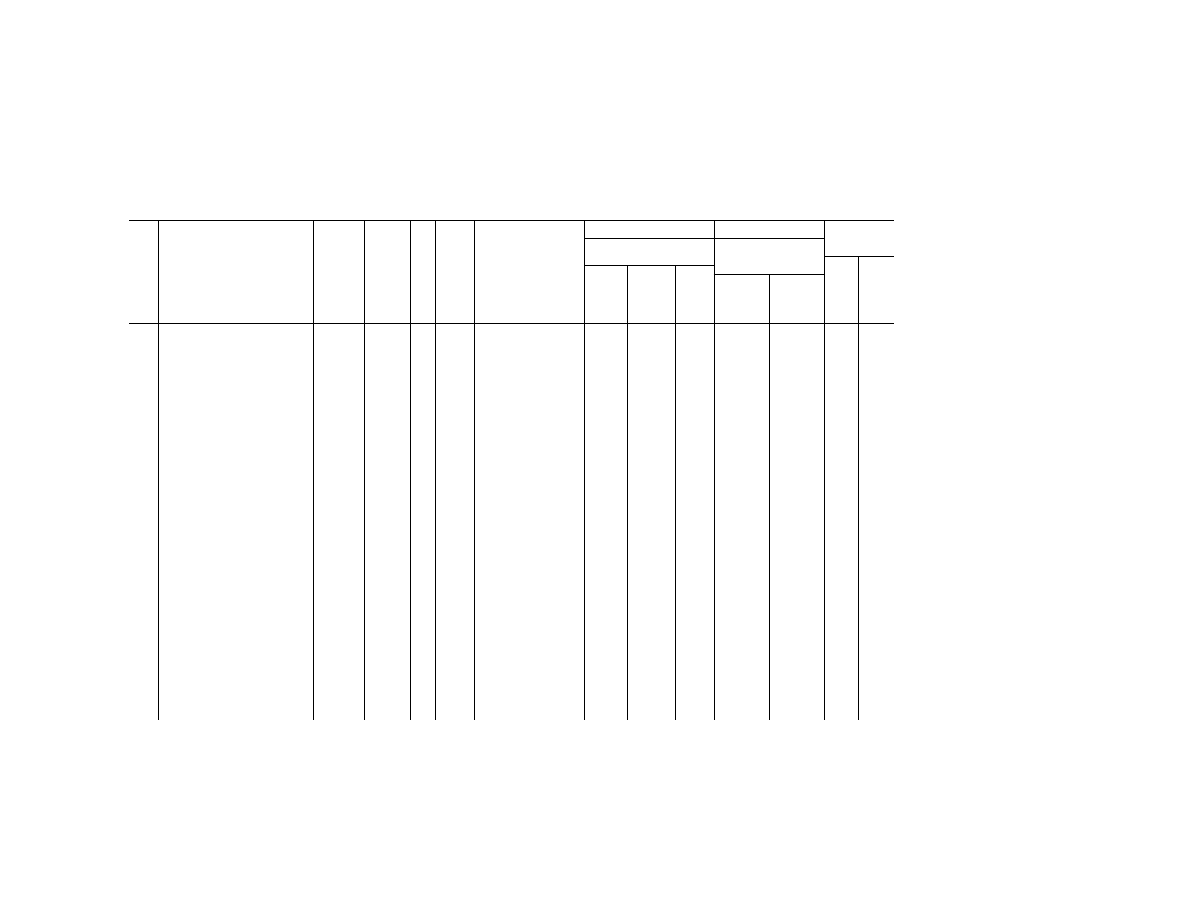
172
49 CFR Ch. I (10–1–23 Edition)
§
172.101
§ 172.101 H
AZARDOUS
M
ATERIALS
T
ABLE
—Continued
Sym-
bols
Hazardous materials descriptions
and proper shipping names
Hazard
class or
Division
Identi-
fication
Numbers
PG
Label
Codes
Special provisions
(§ 172.102)
(8)
(9)
(10)
Vessel
stowage
Packaging
(§ 173.***)
Quantity limitations
(see §§ 173.27 and
175.75)
Loca-
tion
Other
Excep-
tions
Non-bulk
Bulk
Passenger
aircraft/rail
Cargo air-
craft only
(1)
(2)
(3)
(4)
(5)
(6)
(7)
(8A)
(8B)
(8C)
(9A)
(9B)
(10A)
(10B)
Ammonium perchlorate
1.1D UN0402
......
1.1D
107 None
62
None
Forbidden
Forbidden
04
25,
19E
Ammonium perchlorate
5.1 UN1442
II
5.1
107, A9, IB6, IP2, T3,
TP33
152
212
242
5 kg
25 kg
E
58, 69
Ammonium permanganate
Forbidden
Ammonium persulfate
5.1 UN1444
III
5.1
A1, A29, IB8, IP3, T1,
TP33
152
213
240
25 kg
100 kg
A
Ammonium picrate, dry or wetted
with less than 10 percent water,
by mass
1.1D UN0004
......
1.1D
........................................
None
62
None
Forbidden
Forbidden
04
25, 5E,
19E
Ammonium picrate, wetted with not
less than 10 percent water, by
mass
4.1 UN1310
I
4.1
23, A2, N41, W31 None
211
None
0.5 kg
0.5 kg
D
28, 36
Ammonium polysulfide, solution
8 UN2818
II
8, 6.1
IB2, T7, TP2, TP13 154
202
243
1 L
30 L
B
12, 25,
40, 52
III
8, 6.1
IB3, T4, TP1, TP13 154
203
241
5 L
60 L
B
12, 25,
40, 52
Ammonium polyvanadate
6.1 UN2861
II
6.1
IB8, IP2, IP4, T3, TP33 153
212
242
25 kg
100 kg
A
44, 89,
100,
141
Ammonium silicofluoride, see Am-
monium fluorosilicate
Ammonium sulfide solution
8 UN2683
II
8, 6.1,
3
IB1, T7, TP2, TP13 154
202
243
1 L
30 L
B
12, 22,
25, 52,
100
Ammunition, blank, see Cartridges
for weapons, blank
Ammunition, illuminating with or
without burster, expelling charge
or propelling charge
1.2G UN0171
......
1.2G
........................................
62
62
Forbidden
Forbidden
03
25
Ammunition, illuminating with or
without burster, expelling charge
or propelling charge
1.3G UN0254
......
1.3G
........................................
62
62
Forbidden
Forbidden
03
25
Ammunition, illuminating with or
without burster, expelling charge
or propelling charge
1.4G UN0297
......
1.4G
........................................
62
62
Forbidden
75 kg
02
25
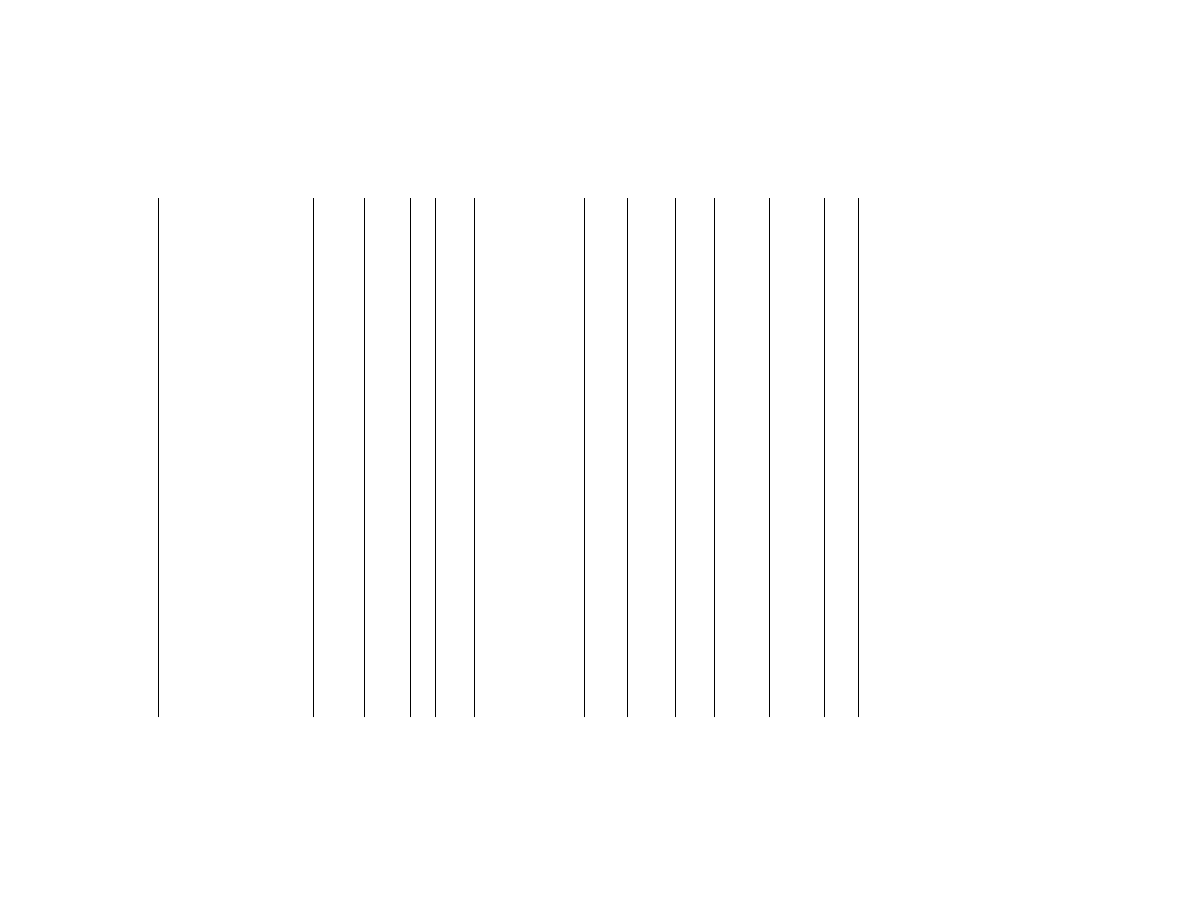
173
Pipeline and Haz. Matls. Safety Admin., DOT
§
172.101
Ammunition, incendiary liquid or
gel, with burster, expelling charge
or propelling charge
1.3J UN0247
......
1.3J
........................................
62
None
Forbidden
Forbidden
05
25,
23E
Ammunition, incendiary (water-acti-
vated contrivances) with burster,
expelling charge or propelling
charge, see Contrivances, water-
activated, etc.
Ammunition, incendiary, white phos-
phorus, with burster, expelling
charge or propelling charge
1.2H UN0243
......
1.2H
........................................
62
62
Forbidden
Forbidden
05
25,
14E,
15E,
17E
Ammunition, incendiary, white phos-
phorus, with burster, expelling
charge or propelling charge
1.3H UN0244
......
1.3H
........................................
62
62
Forbidden
Forbidden
05
25,
14E,
15E,
17E
Ammunition, incendiary with or with-
out burster, expelling charge, or
propelling charge
1.2G UN0009
......
1.2G
........................................
62
62
Forbidden
Forbidden
03
25
Ammunition, incendiary with or with-
out burster, expelling charge, or
propelling charge
1.3G UN0010
......
1.3G
........................................
62
62
Forbidden
Forbidden
03
25
Ammunition, incendiary with or with-
out burster, expelling charge or
propelling charge
1.4G UN0300
......
1.4G
........................................
62
62
Forbidden
75 kg
02
25
Ammunition, practice
1.4G UN0362
......
1.4G
........................................
62
62
Forbidden
75 kg
02
25
Ammunition, practice
1.3G UN0488
......
1.3G
........................................
62
62
Forbidden
Forbidden
03
25
Ammunition, proof
1.4G UN0363
......
1.4G
........................................
62
62
Forbidden
75 kg
02
25
Ammunition, rocket, see Warheads,
rocket etc
Ammunition, SA (small arms), see
Cartridges for weapons, etc
Ammunition, smoke (water-acti-
vated contrivances), white phos-
phorus, with burster, expelling
charge or propelling charge, see
Contrivances, water-activated,
etc. (UN 0248)
Ammunition, smoke (water-acti-
vated contrivances), without white
phosphorus or phosphides, with
burster, expelling charge or pro-
pelling charge, see Contrivances,
water-activated, etc. (UN 0249)
Ammunition smoke, white phos-
phorus with burster, expelling
charge, or propelling charge
1.2H UN0245
......
1.2H
........................................
62
62
Forbidden
Forbidden
05
25,
14E,
15E,
17E
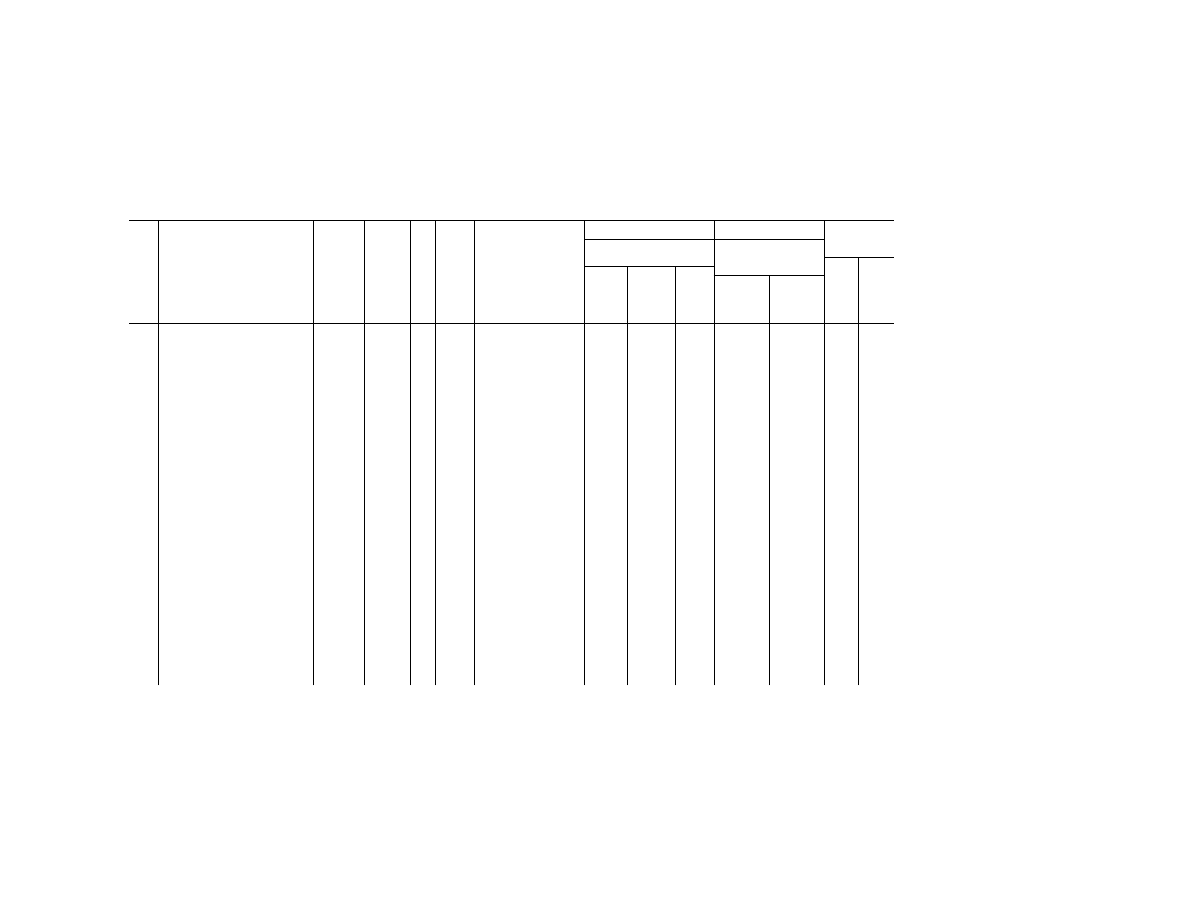
174
49 CFR Ch. I (10–1–23 Edition)
§
172.101
§ 172.101 H
AZARDOUS
M
ATERIALS
T
ABLE
—Continued
Sym-
bols
Hazardous materials descriptions
and proper shipping names
Hazard
class or
Division
Identi-
fication
Numbers
PG
Label
Codes
Special provisions
(§ 172.102)
(8)
(9)
(10)
Vessel
stowage
Packaging
(§ 173.***)
Quantity limitations
(see §§ 173.27 and
175.75)
Loca-
tion
Other
Excep-
tions
Non-bulk
Bulk
Passenger
aircraft/rail
Cargo air-
craft only
(1)
(2)
(3)
(4)
(5)
(6)
(7)
(8A)
(8B)
(8C)
(9A)
(9B)
(10A)
(10B)
Ammunition, smoke, white phos-
phorus with burster, expelling
charge, or propelling charge
1.3H UN0246
......
1.3H
........................................
62
62
Forbidden
Forbidden
05
25,
14E,
15E,
17E
Ammunition, smoke with or without
burster, expelling charge or pro-
pelling charge
1.2G UN0015
......
1.2G
........................................
62
62
Forbidden
Forbidden
03
25,
17E
Ammunition, smoke with or without
burster, expelling charge or pro-
pelling charge
1.3G UN0016
......
1.3G
........................................
62
62
Forbidden
Forbidden
03
25,
17E
Ammunition, smoke with or without
burster, expelling charge or pro-
pelling charge
1.4G UN0303
......
1.4G
........................................
62
62
Forbidden
75 kg
02
25,
14E,
15E,
17E
Ammunition, sporting, see Car-
tridges for weapons, etc. (UN
0012; UN 0328; UN 0339)
Ammunition, tear-producing, non-
explosive, without burster or ex-
pelling charge, non-fuzed
6.1 UN2017
......
6.1, 8
........................................
None
212
None
Forbidden
50 kg
E
13, 40
Ammunition, tear-producing with
burster, expelling charge or pro-
pelling charge
1.2G UN0018
......
1.2G,
8,
6.1
........................................
62
62
Forbidden
Forbidden
03
25,
17E
Ammunition, tear-producing with
burster, expelling charge or pro-
pelling charge
1.3G UN0019
......
1.3G,
8,
6.1
........................................
62
62
Forbidden
Forbidden
03
25,
17E
Ammunition, tear-producing with
burster, expelling charge or pro-
pelling charge
1.4G UN0301
......
1.4G,
8,
6.1
........................................
62
62
Forbidden
75 kg
02
25,
14E,
15E,
17E
Ammunition, toxic, non-explosive,
without burster or expelling
charge, non-fuzed
6.1 UN2016
......
6.1
........................................
None
212
None
Forbidden
100 kg
E
13, 40
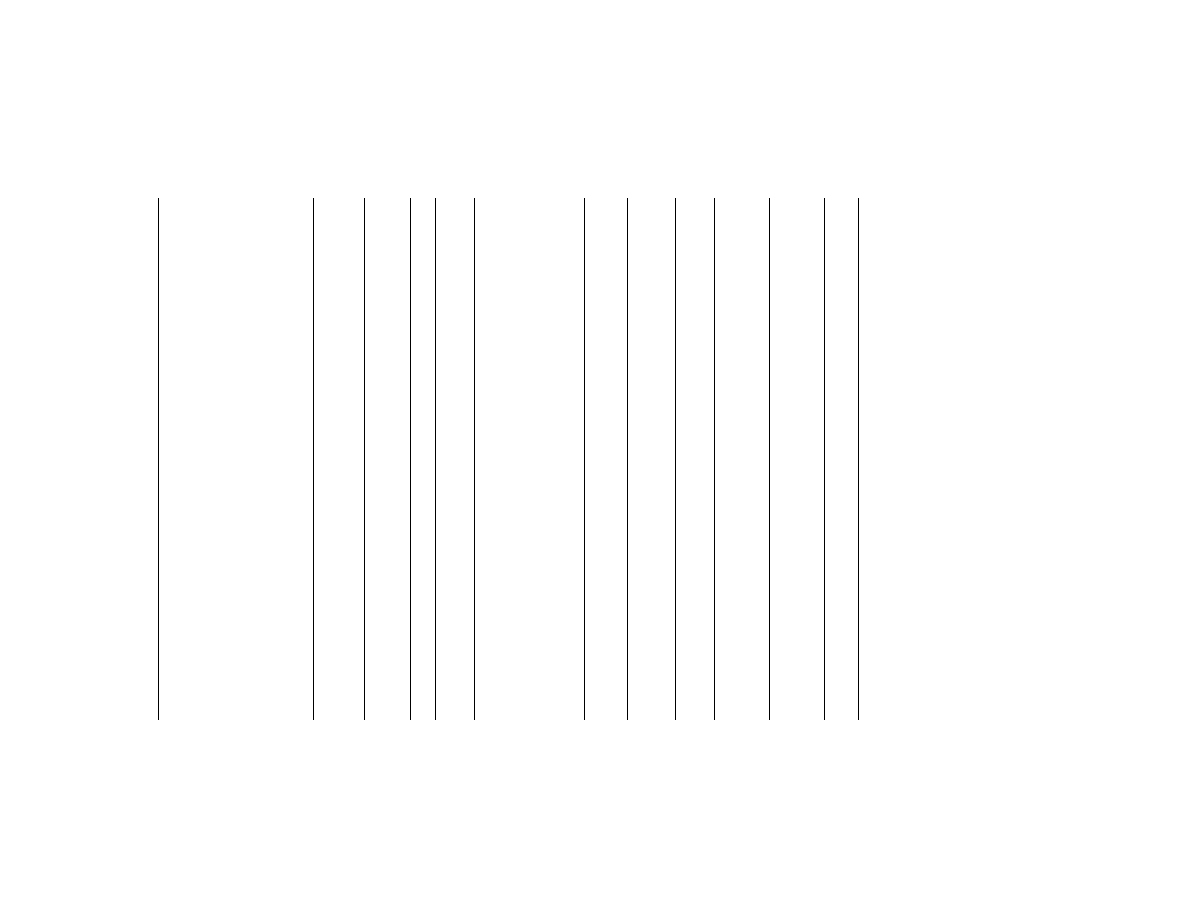
175
Pipeline and Haz. Matls. Safety Admin., DOT
§
172.101
Ammunition, toxic (water-activated
contrivances), with burster, expel-
ling charge or propelling charge,
see Contrivances, water-acti-
vated, etc
G
Ammunition, toxic with burster, ex-
pelling charge, or propelling
charge
1.2K UN0020
......
1.2K,
6.1
........................................
62
None
Forbidden
Forbidden
05
25,
14E,
15E,
17E
G
Ammunition, toxic with burster, ex-
pelling charge, or propelling
charge
1.3K UN0021
......
1.3K,
6.1
........................................
62
None
Forbidden
Forbidden
05
25,
14E,
15E,
17E
Amyl acetates
3 UN1104
III
3
B1, IB3, T2, TP1 150
203
242
60 L
220 L
A
Amyl acid phosphate
8 UN2819
III
8
IB3, T4, TP1 154
203
241
5 L
60 L
A
53, 58
Amyl butyrates
3 UN2620
III
3
B1, IB3, T2, TP1 150
203
242
60 L
220 L
A
Amyl chloride
3 UN1107
II
3
IB2, T4, TP1 150
202
242
5 L
60 L
B
Amyl formates
3 UN1109
III
3
B1, IB3, T2, TP1 150
203
242
60 L
220 L
A
Amyl mercaptan
3 UN1111
II
3
A3, IB2, T4, TP1 150
202
242
5 L
60 L
B
95, 102
n-Amyl methyl ketone
3 UN1110
III
3
B1, IB3, T2, TP1 150
203
242
60 L
220 L
A
Amyl nitrate
3 UN1112
III
3
B1, IB3, T2, TP1 150
203
242
60 L
220 L
A
40
Amyl nitrite
3 UN1113
II
3
IB2, T4, TP1 150
202
242
5 L
60 L
E
40
Amylamines
3 UN1106
II
3, 8
IB2, T7, TP1 150
202
243
1 L
5 L
B
52
III
3, 8
B1, IB3, T4, TP1 150
203
242
5 L
60 L
A
52
Amyltrichlorosilane
8 UN1728
II
8
A7, B2, B6, N34, T10,
TP2, TP7, TP13
None
206
242
Forbidden
30 L
C
40, 53,
58
Anhydrous ammonia, see Ammo-
nia, anhydrous
Anhydrous hydrofluoric acid, see
Hydrogen fluoride, anhydrous
+
Aniline
6.1 UN1547
II
6.1
IB2, T7, TP2 153
202
243
5 L
60 L
A
40, 52
Aniline hydrochloride
6.1 UN1548
III
6.1
IB8, IP3, T1, TP33 153
213
240
100 kg
200 kg
A
Aniline oil, see Aniline
Anisidines
6.1 UN2431
III
6.1
IB3, T4, TP1 153
203
241
60 L
220 L
A
Anisole
3 UN2222
III
3
B1, IB3, T2, TP1 150
203
242
60 L
220 L
A
Anisoyl chloride
8 UN1729
II
8
B2, B4, IB8, IP2, IP4,
T3, TP33
154
212
240
15 kg
50 kg
A
40, 53,
58
Anti-freeze, liquid, see Flammable
liquids, n.o.s.
Antimonous chloride, see Antimony
trichloride
G
Antimony compounds, inorganic,
liquid, n.o.s
6.1 UN3141
III
6.1
35, IB3, T7, TP1, TP28 153
203
241
60 L
220 L
A
G
Antimony compounds, inorganic,
solid, n.o.s
6.1 UN1549
III
6.1
35, IB8, IP3, T1, TP33 153
213
240
100 kg
200 kg
A
Antimony lactate
6.1 UN1550
III
6.1
IB8, IP3, T1, TP33 153
213
240
100 kg
200 kg
A
Antimony pentachloride, liquid
8 UN1730
II
8
B2, IB2, T7, TP2 154
202
242
1 L
30 L
C
40, 53,
58
Antimony pentachloride, solutions
8 UN1731
II
8
B2, IB2, T7, TP2 154
202
242
1 L
30 L
C
40, 53,
58
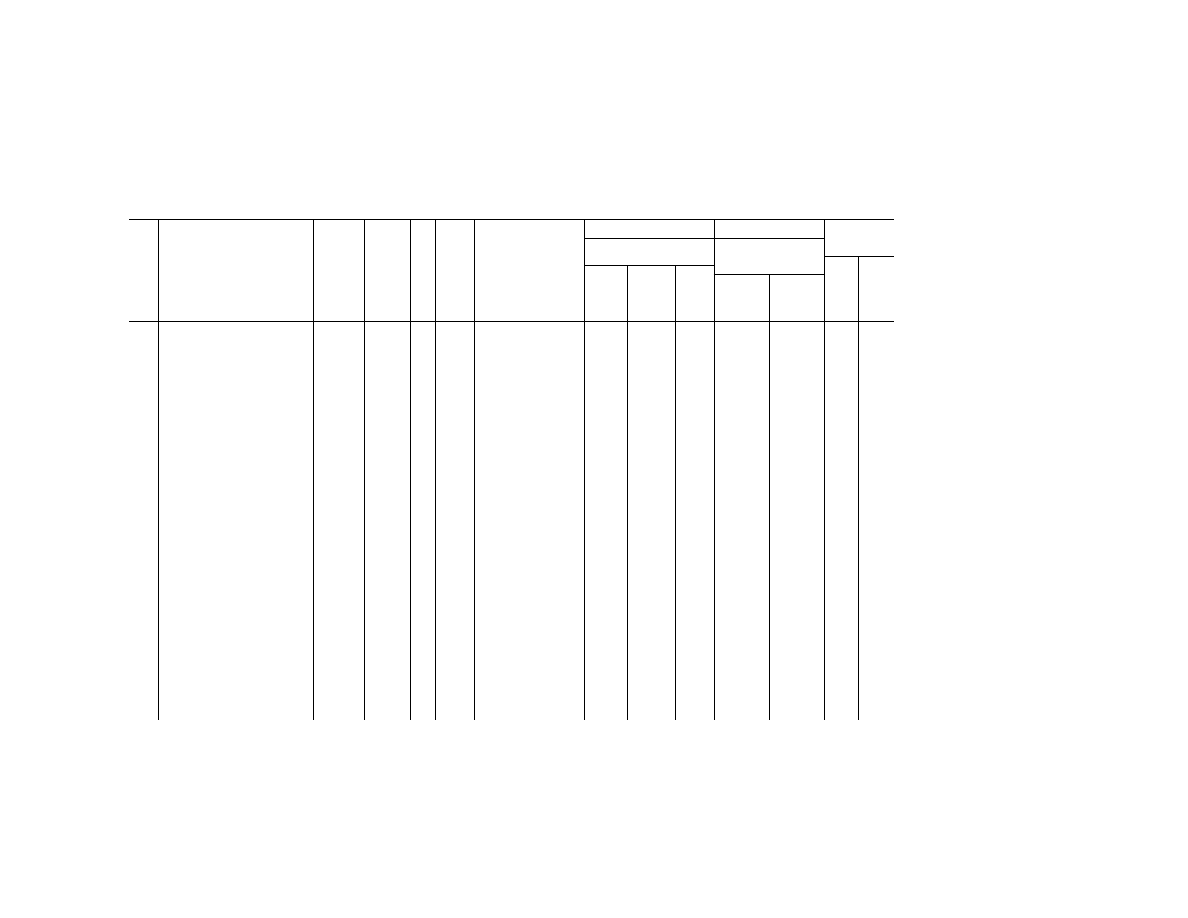
176
49 CFR Ch. I (10–1–23 Edition)
§
172.101
§ 172.101 H
AZARDOUS
M
ATERIALS
T
ABLE
—Continued
Sym-
bols
Hazardous materials descriptions
and proper shipping names
Hazard
class or
Division
Identi-
fication
Numbers
PG
Label
Codes
Special provisions
(§ 172.102)
(8)
(9)
(10)
Vessel
stowage
Packaging
(§ 173.***)
Quantity limitations
(see §§ 173.27 and
175.75)
Loca-
tion
Other
Excep-
tions
Non-bulk
Bulk
Passenger
aircraft/rail
Cargo air-
craft only
(1)
(2)
(3)
(4)
(5)
(6)
(7)
(8A)
(8B)
(8C)
(9A)
(9B)
(10A)
(10B)
III
8
IB3, T4, TP1 154
203
241
5 L
60 L
C
40, 53,
58
Antimony pentafluoride
8 UN1732
II
8, 6.1
A3, A7, A10, IB2, N3,
N36, T7, TP2
154
202
243
Forbidden
30 L
D
40, 44,
53, 58,
89,
100,
141
Antimony potassium tartrate
6.1 UN1551
III
6.1
IB8, IP3, T1, TP33 153
213
240
100 kg
200 kg
A
Antimony powder
6.1 UN2871
III
6.1
IB8, IP3, T1, TP33 153
213
240
100 kg
200 kg
A
Antimony sulfide and a chlorate,
mixtures of
Forbidden
Antimony sulfide, solid, see Anti-
mony compounds, inorganic,
n.o.s.
Antimony trichloride, liquid
8 UN1733
II
8
B2, IB2 154
202
242
1 L
30 L
C
40, 53,
58
Antimony trichloride, solid
8 UN1733
II
8
IB8, IP2, IP4, T3, TP33 154
212
240
15 kg
50 kg
A
40, 53,
58
Aqua ammonia, see Ammonia solu-
tion, etc
Argon, compressed
2.2 UN1006
2.2
306,
307
302
314,
315
75 kg
150 kg
A
Argon, refrigerated liquid (cryogenic
liquid)
2.2 UN1951
2.2
T75, TP5 320
316
318
50 kg
500 kg
D
Arsenic
6.1 UN1558
II
6.1
IB8, IP2, IP4, T3, TP33 153
212
242
25 kg
100 kg
A
Arsenic acid, liquid
6.1 UN1553
I
6.1
T20, TP2, TP7, TP13,
W31
None
201
243
1 L
30 L
B
46
Arsenic acid, solid
6.1 UN1554
II
6.1
IB8, IP2, IP4, T3, TP33 153
212
242
25 kg
100 kg
A
Arsenic bromide
6.1 UN1555
II
6.1
IB8, IP2, IP4, T3, TP33 153
212
242
25 kg
100 kg
A
12, 25,
40
Arsenic chloride, see Arsenic tri-
chloride
G
Arsenic compounds, liquid, n.o.s.
inorganic, including arsenates,
n.o.s.; arsenites, n.o.s.; arsenic
sulfides, n.o.s.; and organic com-
pounds of arsenic, n.o.s
6.1 UN1556
I
6.1
T14, TP2, TP13, TP27 None
201
243
1 L
30 L
B
40, 137
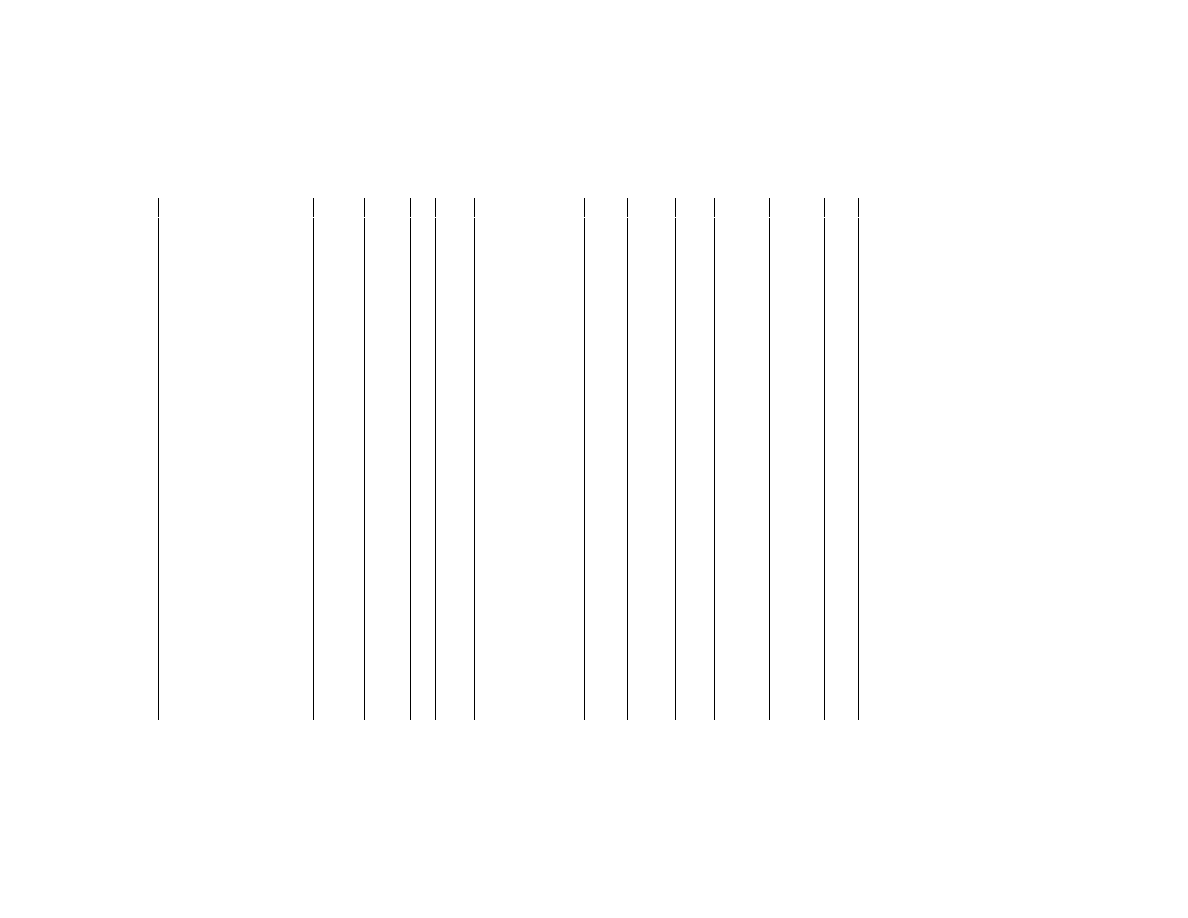
177
Pipeline and Haz. Matls. Safety Admin., DOT
§
172.101
II
6.1
IB2, T11, TP2, TP13,
TP27
153
202
243
5 L
60 L
B
40, 137
III
6.1
IB3, T7, TP2, TP28 153
203
241
60 L
220 L
B
40, 137
G
Arsenic compounds, solid, n.o.s. in-
organic, including arsenates,
n.o.s.; arsenites, n.o.s.; arsenic
sulfides, n.o.s.; and organic com-
pounds of arsenic, n.o.s
6.1 UN1557
I
6.1
IB7, IP1, T6, TP33 None
211
242
5 kg
50 kg
A
137
II
6.1
IB8, IP2, IP4, T3, TP33 153
212
242
25 kg
100 kg
A
137
III
6.1
IB8, IP3, T1, TP33 153
213
240
100 kg
200 kg
A
137
Arsenic pentoxide
6.1 UN1559
II
6.1
IB8, IP2, IP4, T3, TP33 153
212
242
25 kg
100 kg
A
Arsenic sulfide and a chlorate, mix-
tures of
Forbidden
Arsenic trichloride
6.1 UN1560
I
6.1
2, B9, B14, B32, T20,
TP2, TP13, TP38, TP45
None
227
244
Forbidden
Forbidden
B
40
Arsenic trioxide
6.1 UN1561
II
6.1
IB8, IP2, IP4, T3, TP33 153
212
242
25 kg
100 kg
A
Arsenic, white, solid, see Arsenic
trioxide
Arsenical dust
6.1 UN1562
II
6.1
IB8, IP2, IP4, T3, TP33 153
212
242
25 kg
100 kg
A
Arsenical pesticides, liquid, flam-
mable, toxic, flash point less than
23 degrees C
3 UN2760
I
3, 6.1
T14, TP2, TP13, TP27 None
201
243
Forbidden
30 L
B
40
II
3, 6.1
IB2, T11, TP2, TP13,
TP27
150
202
243
1 L
60 L
B
40
Arsenical pesticides, liquid, toxic
6.1 UN2994
I
6.1
T14, TP2, TP13, TP27 None
201
243
1 L
30 L
B
40
II
6.1
IB2, T11, TP2, TP13,
TP27
153
202
243
5 L
60 L
B
40
III
6.1
IB3, T7, TP2, TP28 153
203
241
60 L
220 L
A
40
Arsenical pesticides, liquid, toxic,
flammable, flash point not less
than 23 degrees C
6.1 UN2993
I
6.1, 3
T14, TP2, TP13, TP27 None
201
243
1 L
30 L
B
40
II
6.1, 3
IB2, T11, TP2, TP13,
TP27
153
202
243
5 L
60 L
B
40
III
6.1, 3
B1, IB3, T7, TP2, TP28 153
203
242
60 L
220 L
A
40
Arsenical pesticides, solid, toxic
6.1 UN2759
I
6.1
IB7, IP1, T6, TP33 None
211
242
5 kg
50 kg
A
40
II
6.1
IB8, IP2, IP4, T3, TP33 153
212
242
25 kg
100 kg
A
40
III
6.1
IB8, IP3, T1, TP33 153
213
240
100 kg
200 kg
A
40
Arsenious acid, solid, see Arsenic
trioxide
Arsenious and mercuric iodide solu-
tion, see Arsenic compounds, liq-
uid, n.o.s.
Arsine
2.3 UN2188
2.3,
2.1
1 None
192
245
Forbidden
Forbidden
D
40
Arsine, adsorbed
2.3 UN3522
......
2.3,
2.1
1 None
302c
None
Forbidden
Forbidden
D
G
Articles containing a substance lia-
ble to spontaneous combustion,
n.o.s.
4.2 UN3542
......
4.2
131, 391 None
214
214
Forbidden
Forbidden
............
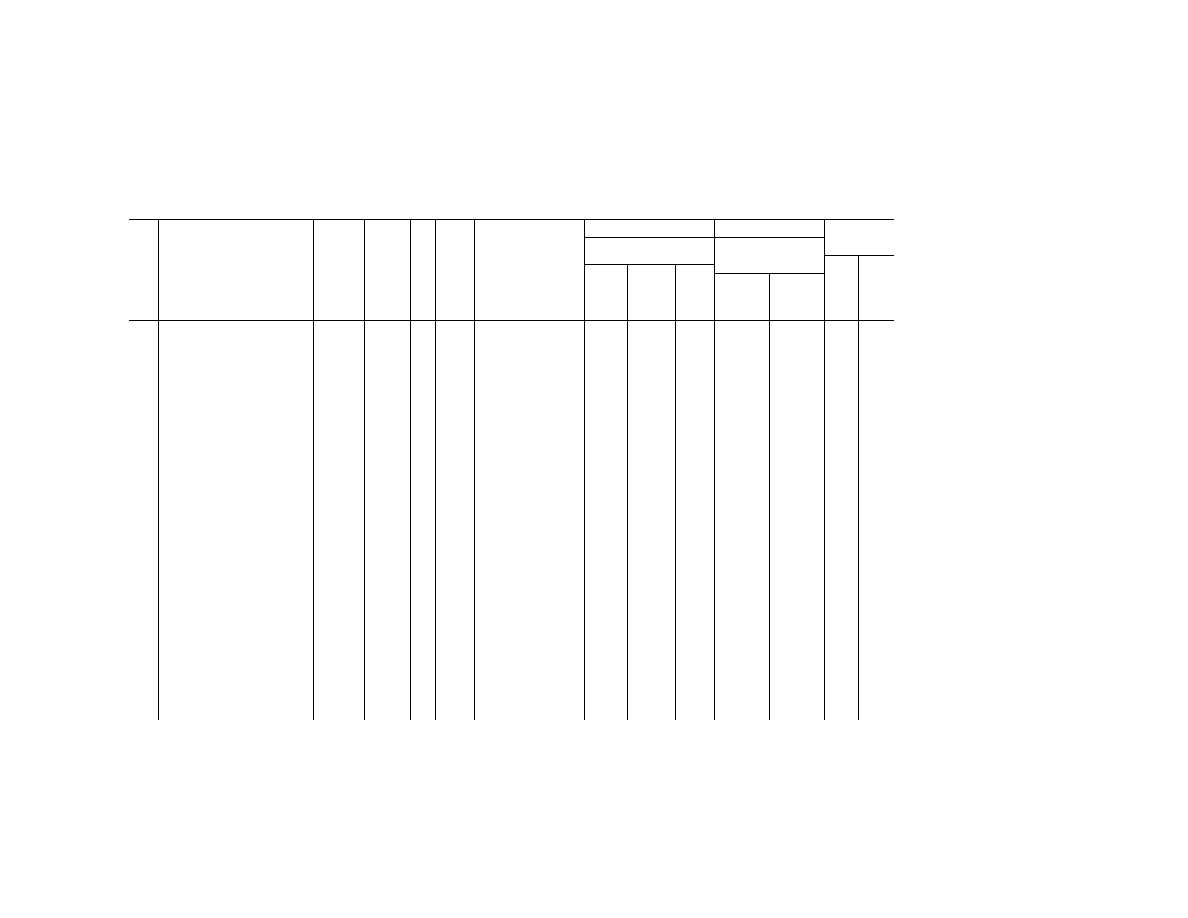
178
49 CFR Ch. I (10–1–23 Edition)
§
172.101
§ 172.101 H
AZARDOUS
M
ATERIALS
T
ABLE
—Continued
Sym-
bols
Hazardous materials descriptions
and proper shipping names
Hazard
class or
Division
Identi-
fication
Numbers
PG
Label
Codes
Special provisions
(§ 172.102)
(8)
(9)
(10)
Vessel
stowage
Packaging
(§ 173.***)
Quantity limitations
(see §§ 173.27 and
175.75)
Loca-
tion
Other
Excep-
tions
Non-bulk
Bulk
Passenger
aircraft/rail
Cargo air-
craft only
(1)
(2)
(3)
(4)
(5)
(6)
(7)
(8A)
(8B)
(8C)
(9A)
(9B)
(10A)
(10B)
G
Articles containing a substance
which in contact with water emits
flammable gases, n.o.s.
4.3 UN3543
......
4.3
131, 391 None
214
214
Forbidden
Forbidden
............
G
Articles containing corrosive sub-
stance, n.o.s.
8 UN3547
......
8
391 None
232
232
Forbidden
Forbidden
B
............
G
Articles containing flammable gas,
n.o.s.
2.1 UN3537
......
2.1
391 None
232
232
Forbidden
Forbidden
D
............
G
Articles containing flammable liquid,
n.o.s.
3 UN3540
......
3
391 None
232
232
Forbidden
Forbidden
B
............
G
Articles containing flammable solid,
n.o.s.
4.1 UN3541
......
4.1
391 None
232
232
Forbidden
Forbidden
B
............
G
Articles containing miscellaneous
dangerous goods, n.o.s.
9 UN3548
......
9
391 None
232
232
Forbidden
Forbidden
A
............
G
Articles containing non-flammable,
non-toxic gas, n.o.s.
2.2 UN3538
......
2.2
391 None
232
232
Forbidden
Forbidden
A
............
G
Articles containing organic peroxide,
n.o.s.
5.2 UN3545
......
5.2
131, 391 None
214
214
Forbidden
Forbidden
............
G
Articles containing oxidizing sub-
stance, n.o.s.
5.1 UN3544
......
5.1
131, 391 None
214
214
Forbidden
Forbidden
............
G
Articles containing toxic gas, n.o.s.
2.3 UN3539
......
2.3
131, 391 None
214
214
Forbidden
Forbidden
............
G
Articles containing toxic substance,
n.o.s.
6.1 UN3546
......
6.1
391 None
232
232
Forbidden
Forbidden
B
............
Articles, explosive, extremely insen-
sitive or Articles, EEI
1.6N UN0486
......
1.6N
........................................
None
62
None
Forbidden
Forbidden
03
25
G
Articles, explosive, n.o.s
1.4S UN0349
......
1.4S
101, 148, 347, 382 None
62
None
25 kg
100 kg
01
25
G
Articles, explosive, n.o.s.
1.4B UN0350
......
1.4B
101 None
62
None
Forbidden
Forbidden
05
25
G
Articles, explosive, n.o.s.
1.4C UN0351
......
1.4C
101 None
62
None
Forbidden
75 kg
02
25
G
Articles, explosive, n.o.s.
1.4D UN0352
......
1.4D
101 None
62
None
Forbidden
75 kg
02
25
G
Articles, explosive, n.o.s.
1.4G UN0353
......
1.4G
101 None
62
None
Forbidden
75 kg
02
25
G
Articles, explosive, n.o.s.
1.1L UN0354
......
1.1L
101 None
62
None
Forbidden
Forbidden
02
25,
14E,
15E
G
Articles, explosive, n.o.s.
1.2L UN0355
......
1.2L
101 None
62
None
Forbidden
Forbidden
05
25,
14E,
15E
G
Articles, explosive, n.o.s.
1.3L UN0356
......
1.3L
101 None
62
None
Forbidden
Forbidden
05
25,
14E,
15E
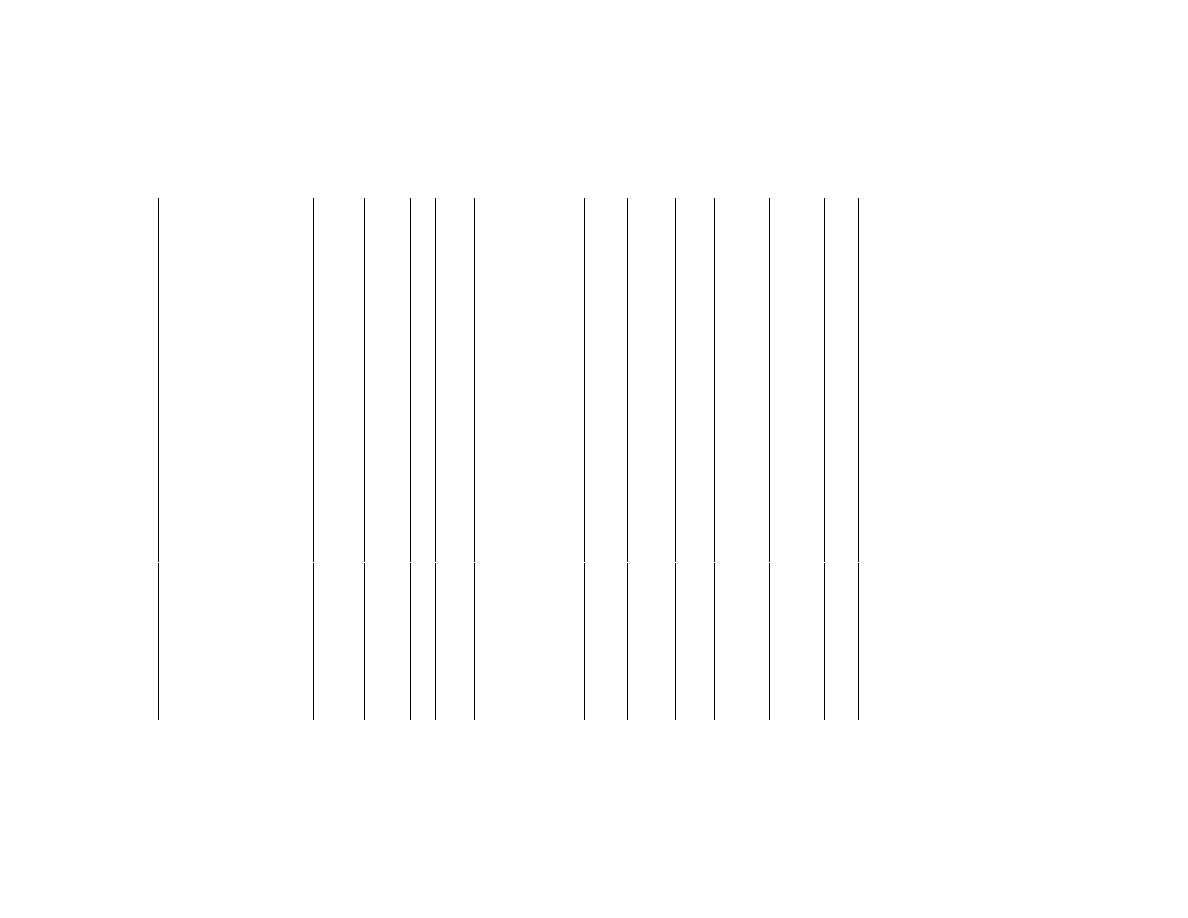
179
Pipeline and Haz. Matls. Safety Admin., DOT
§
172.101
G
Articles, explosive, n.o.s
1.1C UN0462
......
1.1C
101 None
62
None
Forbidden
Forbidden
03
25
G
Articles, explosive, n.o.s
1.1D UN0463
......
1.1D
101 None
62
None
Forbidden
Forbidden
03
25
G
Articles, explosive, n.o.s
1.1E UN0464
......
1.1E
101 None
62
None
Forbidden
Forbidden
03
25
G
Articles, explosive, n.o.s
1.1F UN0465
......
1.1F
101 None
62
None
Forbidden
Forbidden
03
25
G
Articles, explosive, n.o.s
1.2C UN0466
......
1.2C
101 None
62
None
Forbidden
Forbidden
03
25
G
Articles, explosive, n.o.s
1.2D UN0467
......
1.2D
101 None
62
None
Forbidden
Forbidden
03
25
G
Articles, explosive, n.o.s
1.2E UN0468
......
1.2E
101 None
62
None
Forbidden
Forbidden
03
25
G
Articles, explosive, n.o.s
1.2F UN0469
......
1.2F
101 None
62
None
Forbidden
Forbidden
03
25
G
Articles, explosive, n.o.s
1.3C UN0470
......
1.3C
101 None
62
None
Forbidden
Forbidden
03
25
G
Articles, explosive, n.o.s.
1.4E UN0471
......
1.4E
101 None
62
None
Forbidden
75 kg
03
25
G
Articles, explosive, n.o.s
1.4F UN0472
......
1.4F
101 None
62
None
Forbidden
Forbidden
03
25
Articles, pressurized pneumatic or
hydraulic containing non-flam-
mable gas
2.2 UN3164
......
2.2
371 306
302, 304
None
No limit
No limit
A
Articles, pyrophoric
1.2L UN0380
......
1.2L
........................................
None
62
None
Forbidden
Forbidden
05
25,
14E,
15E,
17E
Articles, pyrotechnic for technical
purposes
1.1G UN0428
......
1.1G
........................................
None
62
None
Forbidden
Forbidden
03
25
Articles, pyrotechnic for technical
purposes
1.2G UN0429
......
1.2G
........................................
None
62
None
Forbidden
Forbidden
03
25
Articles, pyrotechnic for technical
purposes
1.3G UN0430
......
1.3G
........................................
None
62
None
Forbidden
Forbidden
03
25
Articles, pyrotechnic for technical
purposes
1.4G UN0431
......
1.4G
381 None
62
None
Forbidden
75 kg
02
25
Articles, pyrotechnic for technical
purposes
1.4S UN0432
......
1.4S
........................................
None
62
None
25 kg
100 kg
01
25
D
Asbestos
9 NA2212
III
9
156, IB8, IP2, IP4 155
216
216,
240
200 kg
200 kg
A
34, 40
G I
Asbestos, amphibole amosite,
tremolite, actinolite, anthophyllite,
or crocidolite
9 UN2212
II
9
156, IB8, IP2, IP4, T3,
TP33
155
216
216,
240
Forbidden
Forbidden
A
34, 40
I
Asbestos, chrysotile
9 UN2590
III
9
156, IB8, IP2, IP3, T1,
TP33
155
216
216,
240
200 kg
200 kg
A
34, 40
Ascaridole (organic peroxide)
Forbidden
D
Asphalt, at or above its flash point
3 NA1999
III
3
IB3, T1, TP3 150
203
247
Forbidden
Forbidden
D
D
Asphalt, cut back, see Tars, liquid,
etc
Automobile, motorcycle, tractor,
other self-propelled vehicle, en-
gine, or other mechanical appa-
ratus, see Vehicles or Battery etc
A,
G
Aviation regulated liquid, n.o.s
9 UN3334
......
9
A35, A189 155
204
450 L
450 L
A
A,
G
Aviation regulated solid, n.o.s
9 UN3335
......
9
A35 155
204
400 kg
400 kg
A
Azaurolic acid (salt of) (dry)
Forbidden
Azido guanidine picrate (dry)
Forbidden
5-Azido-1-hydroxy tetrazole
Forbidden
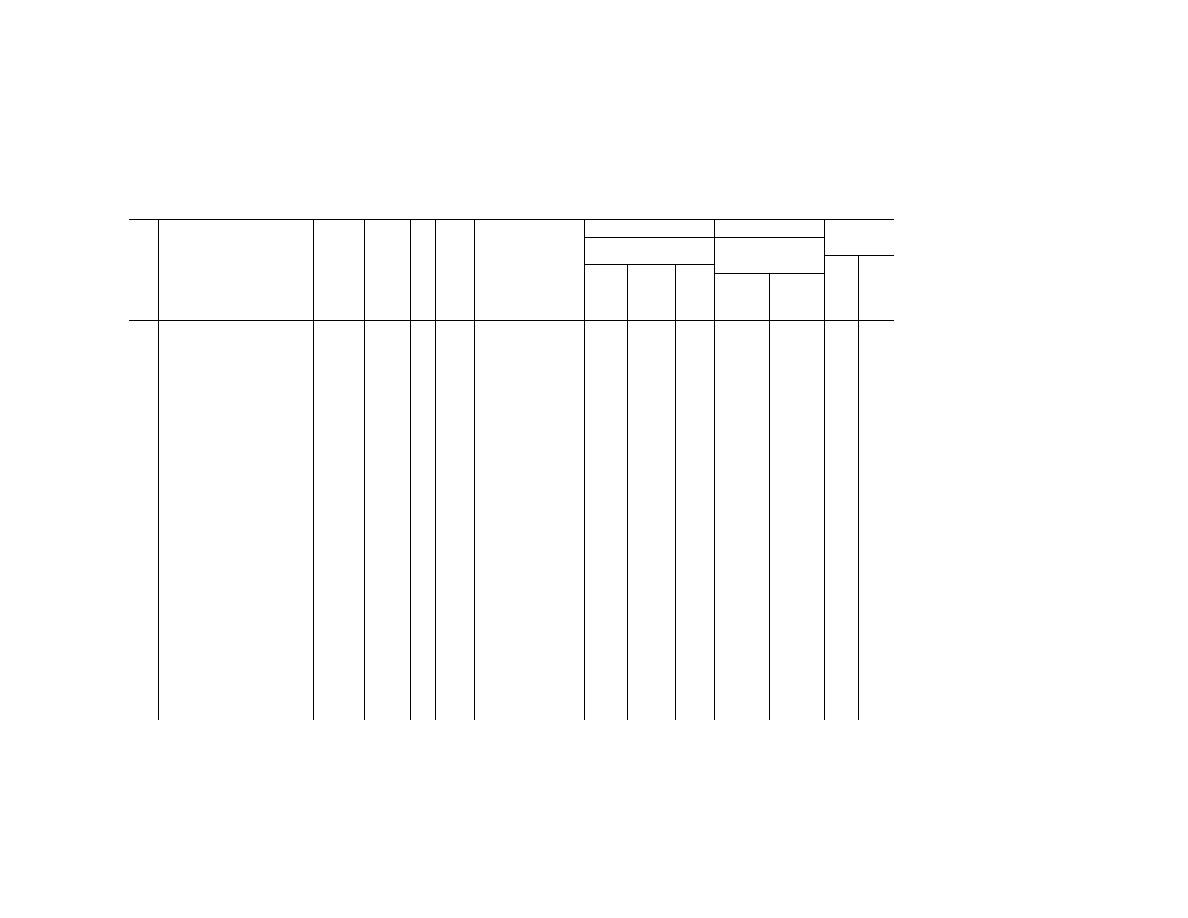
180
49 CFR Ch. I (10–1–23 Edition)
§
172.101
§ 172.101 H
AZARDOUS
M
ATERIALS
T
ABLE
—Continued
Sym-
bols
Hazardous materials descriptions
and proper shipping names
Hazard
class or
Division
Identi-
fication
Numbers
PG
Label
Codes
Special provisions
(§ 172.102)
(8)
(9)
(10)
Vessel
stowage
Packaging
(§ 173.***)
Quantity limitations
(see §§ 173.27 and
175.75)
Loca-
tion
Other
Excep-
tions
Non-bulk
Bulk
Passenger
aircraft/rail
Cargo air-
craft only
(1)
(2)
(3)
(4)
(5)
(6)
(7)
(8A)
(8B)
(8C)
(9A)
(9B)
(10A)
(10B)
Azido hydroxy tetrazole (mercury
and silver salts)
Forbidden
3-Azido-1,2-Propylene glycol
dinitrate
Forbidden
Azidodithiocarbonic acid
Forbidden
Azidoethyl nitrate
Forbidden
1-Aziridinylphosphine oxide-(tris),
see Tris-(1-aziridinyl) phosphine
oxide, solution
Azodicarbonamide
4.1 UN3242
II
4.1
38, IB8, T3, TP33 151
223
240
Forbidden
Forbidden
D
2, 52,
53, 74
Azotetrazole (dry)
Forbidden
Barium
4.3 UN1400
II
4.3
A19, IB7, IP2, IP21, T3,
TP33, W31, W40
151
212
241
15 kg
50 kg
E
13, 52,
148
Barium alloys, pyrophoric
4.2 UN1854
I
4.2
T21, TP7, TP33, W31 None
181
None
Forbidden
Forbidden
D
13, 148
Barium azide, dry or wetted with
less than 50 percent water, by
mass
1.1A UN0224
......
1.1A,
6.1
111, 117 None
62
None
Forbidden
Forbidden
05
25
Barium azide, wetted with not less
than 50 percent water, by mass
4.1 UN1571
I
4.1,
6.1
162, A2, W31 None
182
None
Forbidden
0.5 kg
D
28, 36
Barium bromate
5.1 UN2719
II
5.1,
6.1
IB8, IP2, IP4, T3, TP33 152
212
242
5 kg
25 kg
A
56, 58
Barium chlorate, solid
5.1 UN1445
II
5.1,
6.1
A9, IB6, IP2, N34, T3,
TP33
152
212
242
5 kg
25 kg
A
56, 58
Barium chlorate, solution
5.1 UN3405
II
5.1,
6.1
A9, IB2, N34, T4, TP1 152
202
243
1 L
5 L
A
56, 58,
133
III
5.1,
6.1
A9, IB2, N34, T4, TP1 152
203
242
2.5 L
30 L
A
56, 58,
133
G
Barium compounds, n.o.s
6.1 UN1564
II
6.1
IB8, IP2, IP4, T3, TP33 153
212
242
25 kg
100 kg
A
III
6.1
IB8, IP3, T1, TP33 153
213
240
100 kg
200 kg
A
Barium cyanide
6.1 UN1565
I
6.1
IB7, IP1, N74, N75, T6,
TP33, W31
None
211
242
5 kg
50 kg
A
40, 52
Barium hypochlorite with more than
22 percent available chlorine
5.1 UN2741
II
5.1,
6.1
A7, A9, IB8, IP2, IP4,
N34, T3, TP33
152
212
None
5 kg
25 kg
B
4, 52,
56, 58,
106
Barium nitrate
5.1 UN1446
II
5.1,
6.1
IB8, IP2, IP4, T3, TP33 152
212
242
5 kg
25 kg
A
Barium oxide
6.1 UN1884
III
6.1
IB8, IP3, T1, TP33 153
213
240
100 kg
200 kg
A
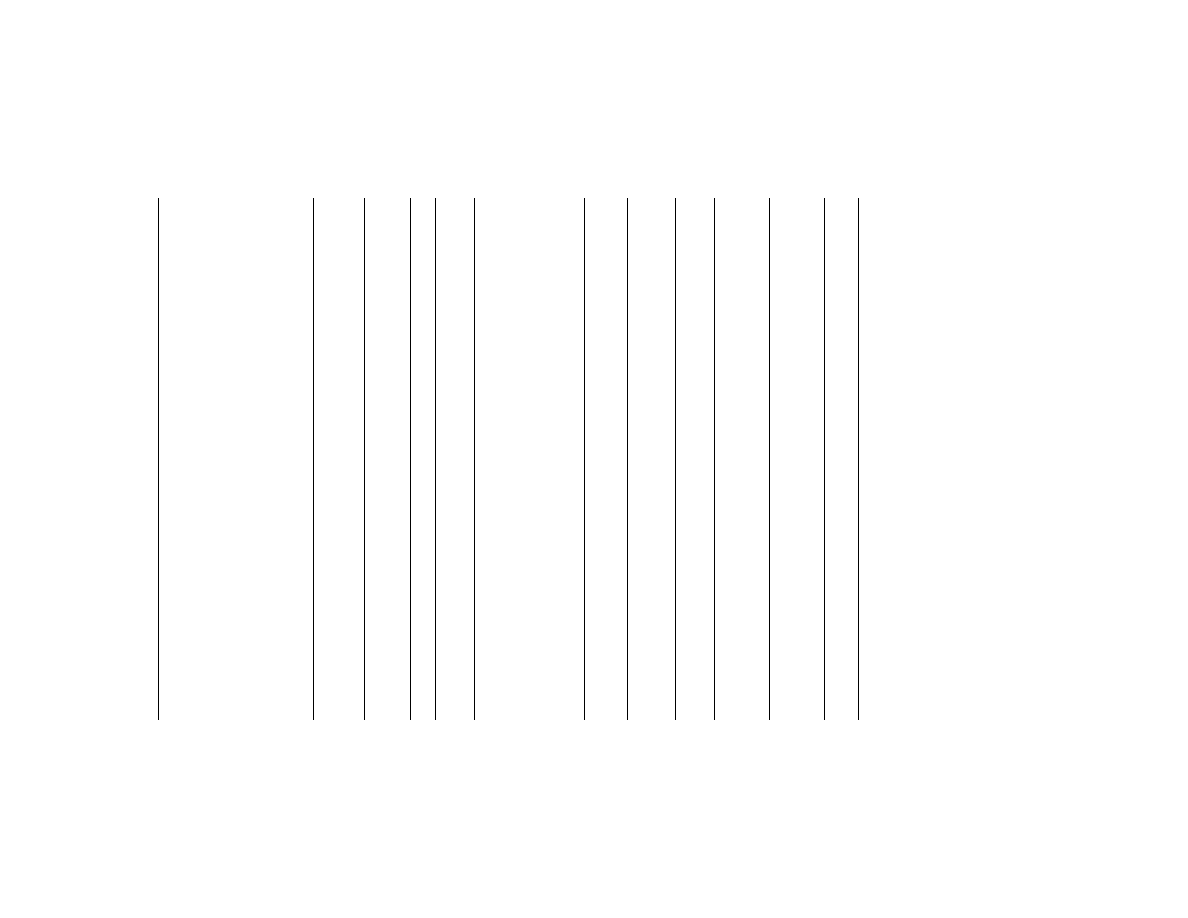
181
Pipeline and Haz. Matls. Safety Admin., DOT
§
172.101
Barium perchlorate, solid
5.1 UN1447
II
5.1,
6.1
IB6, IP2, T3, TP33 152
212
242
5 kg
25 kg
A
56, 58
Barium perchlorate, solution
5.1 UN3406
II
5.1,
6.1
IB2, T4, TP1 152
202
243
1 L
5 L
A
56, 58,
133
III
5.1,
6.1
IB2, T4, TP1 152
203
242
2.5 L
30 L
A
56, 58,
133
Barium permanganate
5.1 UN1448
II
5.1,
6.1
IB6, IP2, T3, TP33 152
212
242
5 kg
25 kg
D
56, 58,
138
Barium peroxide
5.1 UN1449
II
5.1,
6.1
A9, IB6, IP2, T3, TP33,
W100
152
212
242
5 kg
25 kg
C
13, 52,
66, 75,
148
Barium selenate, see Selenates or
Selenites
Barium selenite, see Selenates or
Selenites
Batteries, containing sodium
4.3 UN3292
......
4.3
........................................
189
189
189
Forbidden
No limit
A
13, 148
Batteries, dry, containing potassium
hydroxide solid, electric storage
8 UN3028
......
8
237 154
213
None
25 kg
230 kg
A
52
Batteries, dry, sealed, n.o.s.
130
W
Batteries, nickel-metal hydride see
Batteries, dry, sealed, n.o.s. for
nickel-metal hydride batteries
transported by modes other than
vessel
9 UN3496
......
9
340
..................
..................
A
25
Batteries, wet, filled with acid, elec-
tric storage
8 UN2794
......
8
A51 159
159
159
30 kg
No limit
A
53, 58,
146
Batteries, wet, filled with alkali,
electric storage
8 UN2795
......
8
A51 159
159
159
30 kg
No limit
A
52, 146
Batteries, wet, non-spillable, electric
storage
8 UN2800
......
8
........................................
159a
159
159
No limit
No limit
A
Battery fluid, acid
8 UN2796
II
8
A3, A7, B2, B15, IB2,
N6, N34, T8, TP2
154
202
242
1 L
30 L
B
Battery fluid, alkali
8 UN2797
II
8
B2, IB2, N6, T7, TP2,
TP28
154
202
242
1 L
30 L
A
29
Battery lithium type, see Lithium
batteries etc
Battery-powered vehicle or Battery-
powered equipment
9 UN3171
......
9
134, 360 220
220
None
No limit
No limit
A
............
Battery, wet, filled with acid or alkali
with vehicle or mechanical equip-
ment containing an internal com-
bustion engine, see Vehicle, etc.
or Engines, internal combustion,
etc
+
Benzaldehyde
9 UN1990
III
9
IB3, T2, TP1 155
203
241
100 L
220 L
A
Benzene
3 UN1114
II
3
IB2, T4, TP1 150
202
242
5 L
60 L
B
40
Benzene diazonium chloride (dry)
Forbidden
Benzene diazonium nitrate (dry)
Forbidden
Benzene phosphorus dichloride,
see Phenyl phosphorus dichloride
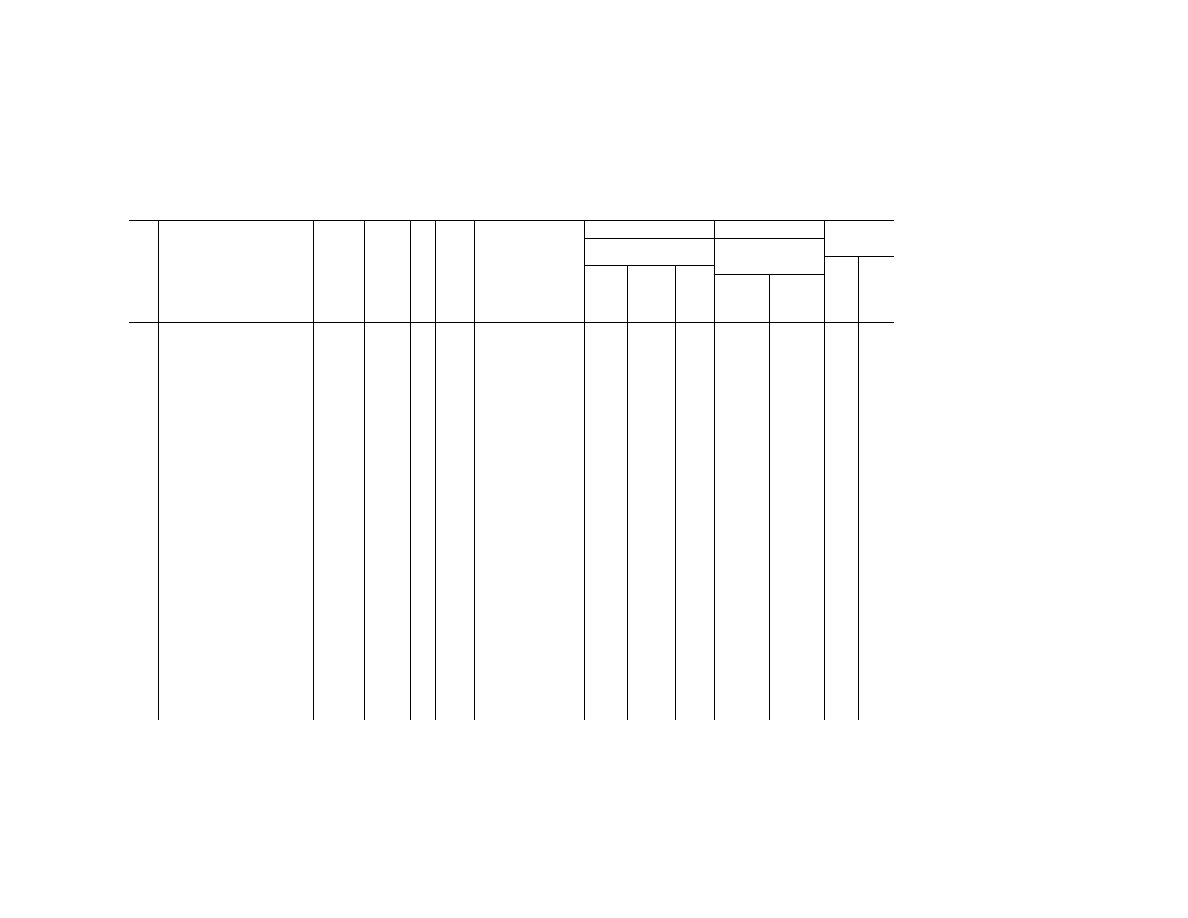
182
49 CFR Ch. I (10–1–23 Edition)
§
172.101
§ 172.101 H
AZARDOUS
M
ATERIALS
T
ABLE
—Continued
Sym-
bols
Hazardous materials descriptions
and proper shipping names
Hazard
class or
Division
Identi-
fication
Numbers
PG
Label
Codes
Special provisions
(§ 172.102)
(8)
(9)
(10)
Vessel
stowage
Packaging
(§ 173.***)
Quantity limitations
(see §§ 173.27 and
175.75)
Loca-
tion
Other
Excep-
tions
Non-bulk
Bulk
Passenger
aircraft/rail
Cargo air-
craft only
(1)
(2)
(3)
(4)
(5)
(6)
(7)
(8A)
(8B)
(8C)
(9A)
(9B)
(10A)
(10B)
Benzene phosphorus thiodichloride,
see Phenyl phosphorus
thiodichloride
Benzene sulfonyl chloride
8 UN2225
III
8
IB3, T4, TP1 154
203
241
5 L
60 L
A
40
Benzene triozonide
Forbidden
Benzenethiol, see Phenyl
mercaptan
Benzidine
6.1 UN1885
II
6.1
IB8, IP2, IP4, T3, TP33 153
212
242
25 kg
100 kg
A
1, 3, 2-Benzodioxaborole
................
......
A210
Benzol, see Benzene
Benzonitrile
6.1 UN2224
II
6.1
IB2, T7, TP2 153
202
243
5 L
60 L
A
40, 52
Benzoquinone
6.1 UN2587
II
6.1
IB8, IP2, IP4, T3, TP33 153
212
242
25 kg
100 kg
A
Benzotrichloride
8 UN2226
II
8
B2, IB2, T7, TP2 154
202
242
1 L
30 L
A
40, 53,
58
Benzotrifluoride
3 UN2338
II
3
IB2, T4, TP1 150
202
242
5 L
60 L
B
40
Benzoxidiazoles (dry)
Forbidden
Benzoyl azide
Forbidden
Benzoyl chloride
8 UN1736
II
8
B2, IB2, T8, TP2, TP13 154
202
242
1 L
30 L
C
40, 53,
58
Benzyl bromide
6.1 UN1737
II
6.1, 8
A3, A7, IB2, N33, N34,
T8, TP2, TP13
None
202
243
1 L
30 L
D
13, 40,
53, 58
Benzyl chloride
6.1 UN1738
II
6.1, 8
A3, A7, B70, IB2, N33,
N42, T8, TP2, TP13
None
202
243
1 L
30 L
D
13, 40,
53, 58
Benzyl chloride unstabilized
6.1 UN1738
II
6.1, 8
A3, A7, B8, B11, IB2,
N33, N34, N43, T8,
TP2, TP13
153
202
243
1 L
30 L
D
13, 40,
53, 58
Benzyl chloroformate
8 UN1739
I
8
B4, N41, T10, TP2,
TP13
None
201
243
Forbidden
2.5 L
D
40, 53,
58
Benzyl iodide
6.1 UN2653
II
6.1
IB2, T7, TP2 153
202
243
5 L
60 L
B
12, 40
Benzyldimethylamine
8 UN2619
II
8, 3
B2, IB2, T7, TP2 154
202
243
1 L
30 L
A
25, 40,
52
Benzylidene chloride
6.1 UN1886
II
6.1
IB2, T7, TP2 153
202
243
5 L
60 L
D
40
G
Beryllium compounds, n.o.s
6.1 UN1566
II
6.1
IB8, IP2, IP4, T3, TP33 153
212
242
25 kg
100 kg
A
III
6.1
IB8, IP3, T1, TP33 153
213
240
100 kg
200 kg
A
Beryllium nitrate
5.1 UN2464
II
5.1,
6.1
IB8, IP2, IP4, T3, TP33 152
212
242
5 kg
25 kg
A
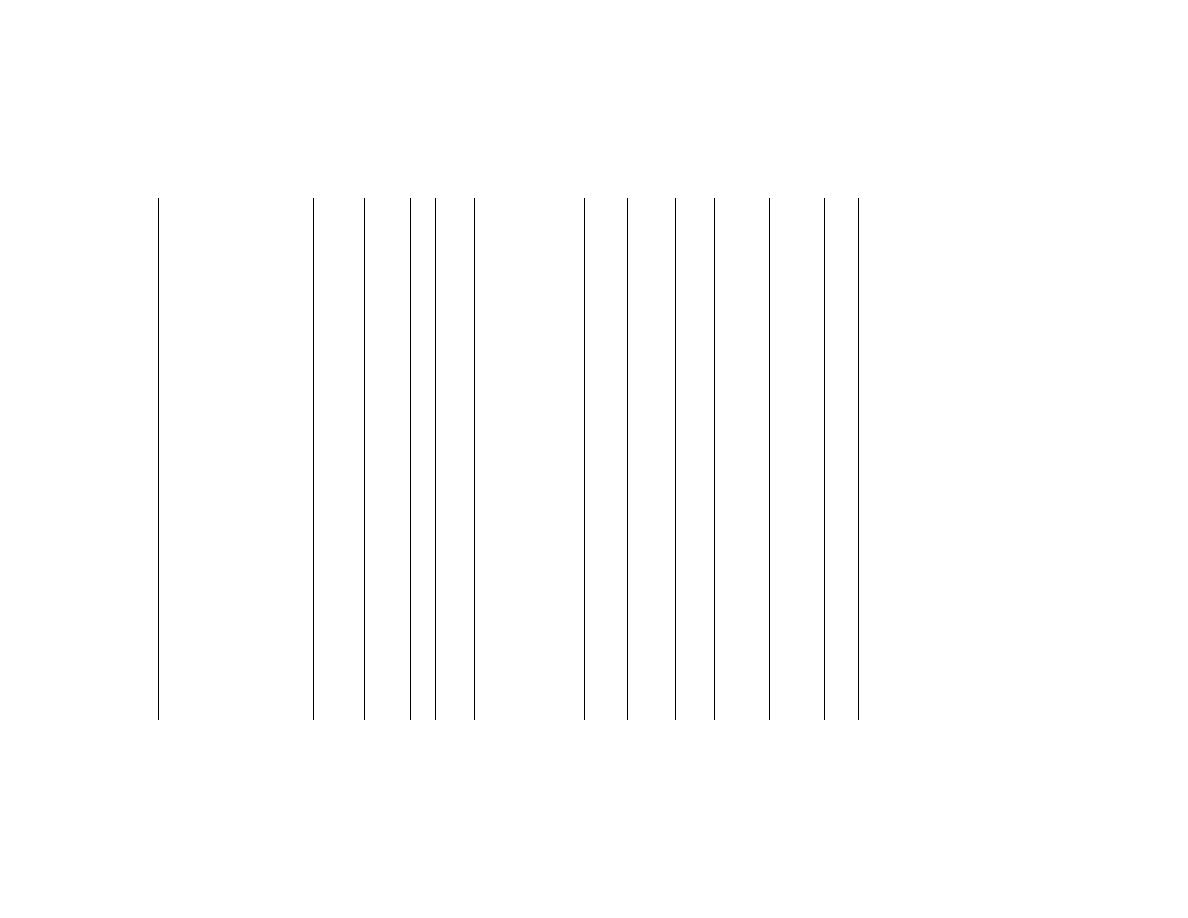
183
Pipeline and Haz. Matls. Safety Admin., DOT
§
172.101
Beryllium, powder
6.1 UN1567
II
6.1,
4.1
IB8, IP2, IP4, T3, TP33,
W100
153
212
242
15 kg
50 kg
A
13,
147,
148
Bicyclo [2,2,1] hepta-2,5-diene, sta-
bilized or 2,5-Norbornadiene, sta-
bilized
3 UN2251
II
3
387, IB2, T7, TP2 150
202
242
5 L
60 L
D
25
Biological substance, Category B
6.2 UN3373
A82 134
199
None
4 L or 4 kg 4 L or 4 kg
A
40
Biphenyl triozonide
Forbidden
Bipyridilium pesticides, liquid, flam-
mable, toxic, flash point less than
23 degrees C
3 UN2782
I
3, 6.1
T14, TP2, TP13, TP27 None
201
243
Forbidden
30 L
E
II
3, 6.1
IB2, T11, TP2, TP13,
TP27
150
202
243
1 L
60 L
B
40
Bipyridilium pesticides, liquid, toxic
6.1 UN3016
I
6.1
T14, TP2, TP13, TP27 None
201
243
1 L
30 L
B
40
II
6.1
IB2, T11, TP2, TP13,
TP27
153
202
243
5 L
60 L
B
40
III
6.1
IB3, T7, TP2, TP28 153
203
241
60 L
220 L
A
40
Bipyridilium pesticides, liquid, toxic,
flammable, flash point not less
than 23 degrees C
6.1 UN3015
I
6.1, 3
T14, TP2, TP13, TP27 None
201
243
1 L
30 L
B
21, 40
II
6.1, 3
IB2, T11, TP2, TP13,
TP27
153
202
243
5 L
60 L
B
21, 40
III
6.1, 3
B1, IB3, T7, TP2, TP28 153
203
242
60 L
220 L
A
21, 40
Bipyridilium pesticides, solid, toxic
6.1 UN2781
I
6.1
IB7, IP1, T6, TP33 None
211
242
5 kg
50 kg
A
40
II
6.1
IB8, IP2, IP4, T3, TP33 153
212
242
25 kg
100 kg
A
40
III
6.1
IB8, IP3, T1, TP33 153
213
240
100 kg
200 kg
A
40
Bis (Aminopropyl) piperazine, see
Corrosive liquid, n.o.s.
Bisulfate, aqueous solution
8 UN2837
II
8
A7, B2, IB2, N34, T7,
TP2
154
202
242
1 L
30 L
A
III
8
A7, IB3, N34, T4, TP1 154
203
241
5 L
60 L
A
Bisulfites, aqueous solutions, n.o.s.
8 UN2693
III
8
IB3, T7, TP1, TP28 154
203
241
5 L
60 L
A
40, 52
Black powder, compressed or Gun-
powder, compressed or Black
powder, in pellets or Gunpowder,
in pellets
1.1D UN0028
......
1.1D
........................................
None
62
None
Forbidden
Forbidden
04
25
Black powder or Gunpowder,
granular or as a meal
1.1D UN0027
......
1.1D
........................................
None
62
None
Forbidden
Forbidden
04
25
D
Black powder for small arms
4.1 NA0027
I
4.1
70 None
170
None
Forbidden
Forbidden
E
Blasting agent, n.o.s., see Explo-
sives, blasting etc
Blasting cap assemblies, see Deto-
nator assemblies, non-electric, for
blasting
Blasting caps, electric, see Deto-
nators, electric for blasting
Blasting caps, non-electric, see Det-
onators, non-electric, for blasting
Bleaching powder, see Calcium hy-
pochlorite mixtures, etc
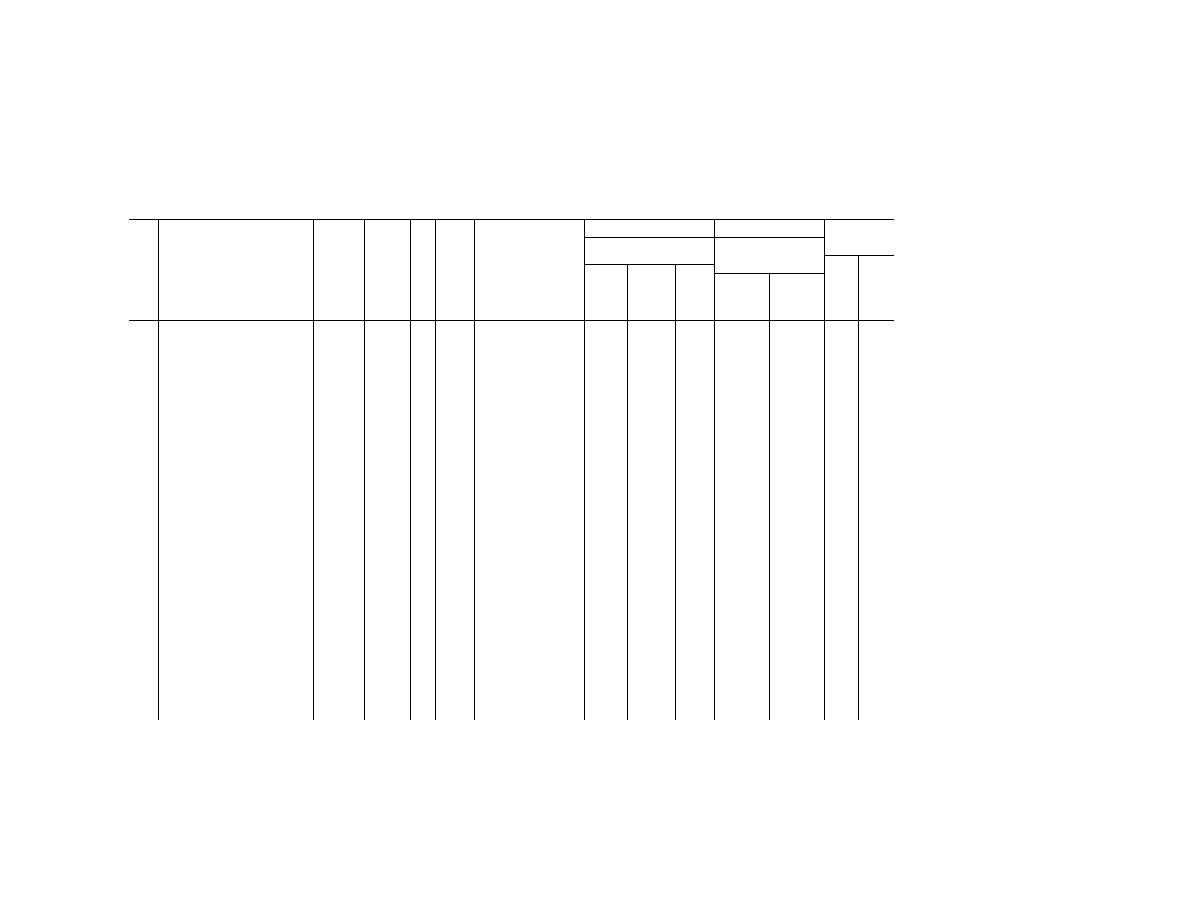
184
49 CFR Ch. I (10–1–23 Edition)
§
172.101
§ 172.101 H
AZARDOUS
M
ATERIALS
T
ABLE
—Continued
Sym-
bols
Hazardous materials descriptions
and proper shipping names
Hazard
class or
Division
Identi-
fication
Numbers
PG
Label
Codes
Special provisions
(§ 172.102)
(8)
(9)
(10)
Vessel
stowage
Packaging
(§ 173.***)
Quantity limitations
(see §§ 173.27 and
175.75)
Loca-
tion
Other
Excep-
tions
Non-bulk
Bulk
Passenger
aircraft/rail
Cargo air-
craft only
(1)
(2)
(3)
(4)
(5)
(6)
(7)
(8A)
(8B)
(8C)
(9A)
(9B)
(10A)
(10B)
Bombs, photo-flash
1.1F UN0037
......
1.1F
........................................
62
None
Forbidden
Forbidden
03
25
Bombs, photo-flash
1.1D UN0038
......
1.1D
........................................
62
62
Forbidden
Forbidden
03
25
Bombs, photo-flash
1.2G UN0039
......
1.2G
........................................
62
62
Forbidden
Forbidden
03
25
Bombs, photo-flash
1.3G UN0299
......
1.3G
........................................
62
62
Forbidden
Forbidden
03
25
Bombs, smoke, non-explosive, with
corrosive liquid, without initiating
device
8 UN2028
II
8
None
160
None
Forbidden
50 kg
E
40
Bombs, with bursting charge
1.1F UN0033
......
1.1F
........................................
62
None
Forbidden
Forbidden
03
25
Bombs, with bursting charge
1.1D UN0034
......
1.1D
........................................
62
62
Forbidden
Forbidden
03
25
Bombs, with bursting charge
1.2D UN0035
......
1.2D
........................................
62
62
Forbidden
Forbidden
03
25
Bombs, with bursting charge
1.2F UN0291
......
1.2F
........................................
62
None
Forbidden
Forbidden
03
25
Bombs with flammable liquid, with
bursting charge
1.1J UN0399
......
1.1J
........................................
62
None
Forbidden
Forbidden
05
25,
23E
Bombs with flammable liquid, with
bursting charge
1.2J UN0400
......
1.2J
........................................
62
None
Forbidden
Forbidden
05
25,
23E
Boosters with detonator
1.1B UN0225
......
1.1B
........................................
None
62
None
Forbidden
Forbidden
05
25
Boosters with detonator
1.2B UN0268
......
1.2B
........................................
None
62
None
Forbidden
Forbidden
05
25
Boosters, without detonator
1.1D UN0042
......
1.1D
148 None
62
None
Forbidden
Forbidden
03
25
Boosters, without detonator
1.2D UN0283
......
1.2D
........................................
None
62
None
Forbidden
Forbidden
03
25
Borate and chlorate mixtures, see
Chlorate and borate mixtures
Borneol
4.1 UN1312
III
4.1
A1, IB8, IP3, T1, TP33 151
213
240
25 kg
100 kg
A
+
Boron tribromide
8 UN2692
I
8, 6.1
2, B9, B14, B32, N34,
T20, TP2, TP13, TP38,
TP45
None
227
244
Forbidden
Forbidden
C
12, 25,
53, 58
Boron trichloride
2.3 UN1741
2.3, 8
3, B9, B14 None
304
314
Forbidden
Forbidden
D
25, 40
Boron trifluoride
2.3 UN1008
......
2.3, 8
2, 238, B9, B14 None
302
314,
315
Forbidden
Forbidden
D
40
Boron trifluoride acetic acid com-
plex, liquid
8 UN1742
II
8
B2, B6, IB2, T8, TP2 154
202
242
1 L
30 L
A
53, 58
Boron trifluoride acetic acid com-
plex, solid
8 UN3419
II
8
B2, B6, IB8, IP2, IP4,
T3, TP33
154
212
240
15 kg
50 kg
A
53, 58
Boron trifluoride, adsorbed
2.3 UN3519
......
2.3, 8
2, B9, B14 None
302c
None
Forbidden
Forbidden
D
40
Boron trifluoride diethyl etherate
8 UN2604
I
8, 3
A19, T10, TP2, W31 None
201
243
0.5 L
2.5 L
D
40, 53,
58
Boron trifluoride dihydrate
8 UN2851
II
8
IB2, T7, TP2 154
212
240
15 kg
50 kg
B
12, 25,
40, 53,
58

185
Pipeline and Haz. Matls. Safety Admin., DOT
§
172.101
Boron trifluoride dimethyl etherate
4.3 UN2965
I
4.3, 8,
3
A19, T10, TP2, TP7,
TP13, W31
None
201
243
Forbidden
1 L
D
21, 25,
40, 49,
100
Boron trifluoride propionic acid com-
plex, liquid
8 UN1743
II
8
B2, IB2, T8, TP2 154
202
242
1 L
30 L
A
53, 58
Boron trifluoride propionic acid com-
plex, solid
8 UN3420
II
8
B2, IB8, IP2, IP4, T3,
TP33
154
212
240
15 kg
50 kg
A
53, 58
Box toe gum, see Nitrocellulose etc
G
Bromates, inorganic, aqueous solu-
tion, n.o.s
5.1 UN3213
II
5.1
350, IB2, T4, TP1 152
202
242
1 L
5 L
B
56, 58,
133
III
5.1
350, IB2, T4, TP1 152
203
241
2.5 L
30 L
B
56, 58,
133
G
Bromates, inorganic, n.o.s
5.1 UN1450
II
5.1
350, IB8, IP2, IP4, T3,
TP33
152
212
242
5 kg
25 kg
A
56, 58
+
Bromine
8 UN1744
I
8, 6.1
1, B9, B85, N34, N43,
T22, TP2, TP10, TP13
None
226
249
Forbidden
Forbidden
D
12, 25,
40, 53,
58, 66,
74, 89,
90
Bromine azide
Forbidden
Bromine chloride
2.3 UN2901
2.3, 8,
5.1
2, B9, B14, N86 None
304
314,
315
Forbidden
Forbidden
D
40, 89,
90
+
Bromine pentafluoride
5.1 UN1745
I
5.1,
6.1,
8
1, B9, B14, B30, T22,
TP2, TP13, TP38, TP44
None
228
244
Forbidden
Forbidden
D
25, 40,
53, 58,
66, 90
+
Bromine solutions
8 UN1744
I
8, 6.1
1, B9, B85, N34, N43,
T22, TP2, TP10, TP13
None
226
249
Forbidden
Forbidden
D
12, 25,
40, 53,
58, 66,
74, 89,
90
+
Bromine solutions
8 UN1744
I
8, 6.1
2, B9, B85, N34, N43,
T22, TP2, TP10, TP13
None
227
249
Forbidden
Forbidden
D
12, 25,
40, 53,
58, 66,
74, 89,
90
+
Bromine trifluoride
5.1 UN1746
I
5.1,
6.1,
8
2, B9, B14, B32, T22,
TP2, TP13, TP38, TP45
None
228
244
Forbidden
Forbidden
D
25, 40,
53, 58,
66, 90
4-Bromo-1,2-dinitrobenzene
Forbidden
4-Bromo-1,2-dinitrobenzene (unsta-
ble at 59 degrees C)
Forbidden
1-Bromo-3-chloropropane
6.1 UN2688
III
6.1
IB3, T4, TP1 153
203
241
60 L
220 L
A
1-Bromo-3-methylbutane
3 UN2341
III
3
B1, IB3, T2, TP1 150
203
242
60 L
220 L
A
1-Bromo-3-nitrobenzene (unstable
at 56 degrees C)
Forbidden
2-Bromo-2-nitropropane-1,3-diol
4.1 UN3241
III
4.1
46, IB8, IP3 151
213
None
25 kg
50 kg
C
12, 25,
40
Bromoacetic acid, solid
8 UN3425
II
8
A7, IB8, IP2, IP4, N34,
T3, TP33
154
212
240
15 kg
50 kg
A
53, 58

186
49 CFR Ch. I (10–1–23 Edition)
§
172.101
§ 172.101 H
AZARDOUS
M
ATERIALS
T
ABLE
—Continued
Sym-
bols
Hazardous materials descriptions
and proper shipping names
Hazard
class or
Division
Identi-
fication
Numbers
PG
Label
Codes
Special provisions
(§ 172.102)
(8)
(9)
(10)
Vessel
stowage
Packaging
(§ 173.***)
Quantity limitations
(see §§ 173.27 and
175.75)
Loca-
tion
Other
Excep-
tions
Non-bulk
Bulk
Passenger
aircraft/rail
Cargo air-
craft only
(1)
(2)
(3)
(4)
(5)
(6)
(7)
(8A)
(8B)
(8C)
(9A)
(9B)
(10A)
(10B)
Bromoacetic acid solution
8 UN1938
II
8
A7, B2, IB2, T7, TP2 154
202
242
1 L
30 L
A
40, 53,
58
III
8
B2, IB3, T7, TP2 154
203
241
5 L
60 L
A
40, 53,
58
+
Bromoacetone
6.1 UN1569
II
6.1, 3
2, T20, TP2, TP13 None
193
245
Forbidden
Forbidden
D
40
Bromoacetyl bromide
8 UN2513
II
8
B2, IB2, T8, TP2 154
202
242
1 L
30 L
C
40, 53,
58
Bromobenzene
3 UN2514
III
3
B1, IB3, T2, TP1 150
203
242
60 L
220 L
A
Bromobenzyl cyanides, liquid
6.1 UN1694
I
6.1
T14, TP2, TP13, W31 None
201
243
Forbidden
30 L
D
12, 25,
40, 52
Bromobenzyl cyanides, solid
6.1 UN3449
I
6.1
T6, TP33, W31 None
211
242
5 kg
50 kg
D
12, 25,
40, 52
1-Bromobutane
3 UN1126
II
3
IB2, T4, TP1 150
202
242
5 L
60 L
B
40
2-Bromobutane
3 UN2339
II
3
B1, IB2, T4, TP1 150
202
242
5 L
60 L
B
40
Bromochloromethane
6.1 UN1887
III
6.1
IB3, T4, TP1 153
203
241
60 L
220 L
A
2-Bromoethyl ethyl ether
3 UN2340
II
3
IB2, T4, TP1 150
202
242
5 L
60 L
B
40
Bromoform
6.1 UN2515
III
6.1
IB3, T4, TP1 153
203
241
60 L
220 L
A
12, 25,
40
Bromomethylpropanes
3 UN2342
II
3
IB2, T4, TP1 150
202
242
5 L
60 L
B
2-Bromopentane
3 UN2343
II
3
IB2, T4, TP1 150
202
242
5 L
60 L
B
Bromopropanes
3 UN2344
II
3
IB2, T4, TP1 150
202
242
5 L
60 L
B
40
III
3
IB3, T2, TP1 150
203
242
60 L
220 L
A
3-Bromopropyne
3 UN2345
II
3
IB2, T4, TP1 150
202
242
5 L
60 L
D
40
Bromosilane
Forbidden
Bromotoluene-alpha, see Benzyl
bromide
Bromotrifluoroethylene
2.1 UN2419
2.1
None
304
314,
315
Forbidden
150 kg
B
40
Bromotrifluoromethane or Refrig-
erant gas, R 13B1.
2.2 UN1009
2.2
T50 306
304
314,
315
75 kg
150 kg
A
Brucine
6.1 UN1570
I
6.1
IB7, IP1, T6, TP33 None
211
242
5 kg
50 kg
A
Bursters, explosive
1.1D UN0043
......
1.1D
........................................
None
62
None
Forbidden
Forbidden
03
25
Butadienes, stabilized or
Butadienes and Hydrocarbon
mixture, stabilized containing
more than 40% butadienes
2.1 UN1010
......
2.1
387, T50 306
304
314,
315
Forbidden
150 kg
B
25, 40
Butane see also Petroleum gases,
liquefied
2.1 UN1011
2.1
19, T50 306
304
314,
315
Forbidden
150 kg
E
40
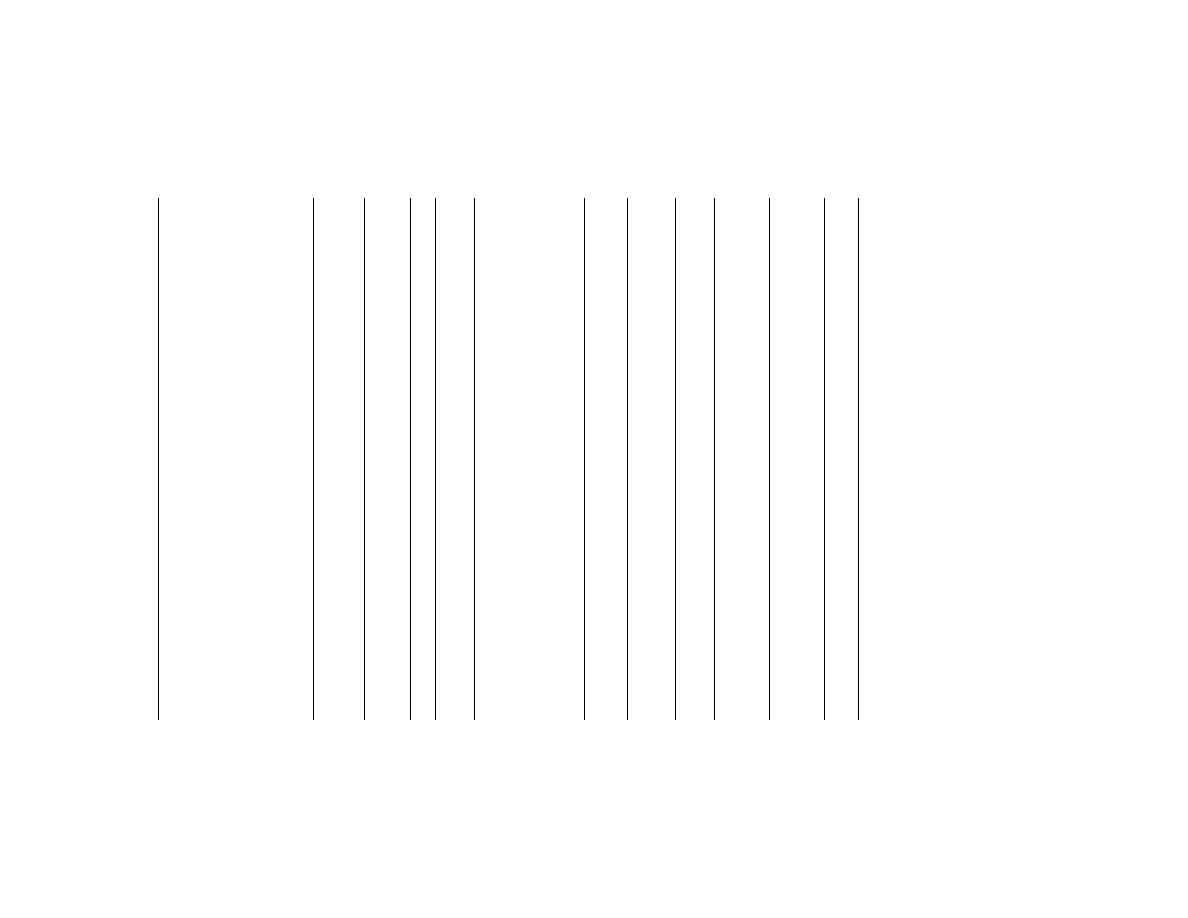
187
Pipeline and Haz. Matls. Safety Admin., DOT
§
172.101
Butane, butane mixtures and mix-
tures having similar properties in
cartridges each not exceeding
500 grams, see Receptacles, etc
Butanedione
3 UN2346
II
3
IB2, T4, TP1 150
202
242
5 L
60 L
B
1,2,4-Butanetriol trinitrate
Forbidden
Butanols
3 UN1120
II
3
IB2, T4, TP1, TP29 150
202
242
5 L
60 L
B
III
3
B1, IB3, T2, TP1 150
203
242
60 L
220 L
A
tert-Butoxycarbonyl azide
Forbidden
Butyl acetates
3 UN1123
II
3
IB2, T4, TP1 150
202
242
5 L
60 L
B
III
3
B1, IB3, T2, TP1 150
203
242
60 L
220 L
A
Butyl acid phosphate
8 UN1718
III
8
IB3, T4, TP1 154
203
241
5 L
60 L
A
53, 58
Butyl acrylates, stabilized
3 UN2348
III
3
387, B1, IB3, T2, TP1 150
203
242
60 L
220 L
C
25
Butyl alcohols, see Butanols
Butyl benzenes
3 UN2709
III
3
B1, IB3, T2, TP2 150
203
242
60 L
220 L
A
n-Butyl bromide, see 1-
Bromobutane
n-Butyl chloride, see Chlorobutanes
n-Butyl chloroformate
6.1 UN2743
I
6.1, 8,
3
2, B9, B14, B32, T20,
TP2, TP13, TP38, TP45
None
227
244
Forbidden
Forbidden
A
12, 13,
21, 25,
40, 53,
58, 100
Butyl ethers, see Dibutyl ethers
Butyl ethyl ether, see Ethyl butyl
ether
n-Butyl formate
3 UN1128
II
3
IB2, T4, TP1 150
202
242
5 L
60 L
B
tert-Butyl hydroperoxide, with more
than 90 percent with water
Forbidden
tert-Butyl hypochlorite
4.2 UN3255
I
4.2, 8
........................................
None
211
243
Forbidden
Forbidden
D
40
N-n-Butyl imidazole
6.1 UN2690
II
6.1
IB2, T7, TP2 153
202
243
5 L
60 L
A
tert-Butyl isocyanate
6.1 UN2484
I
6.1, 3
1, B9, B14, B30, T20,
TP2, TP13, TP38, TP44
None
226
244
Forbidden
Forbidden
D
40
n-Butyl isocyanate
6.1 UN2485
I
6.1, 3
2, B9, B14, B32, B77,
T20, TP2, TP13, TP38,
TP45
None
227
244
Forbidden
Forbidden
D
40
Butyl mercaptan
3 UN2347
II
3
A3, IB2, T4, TP1 150
202
242
5 L
60 L
D
52, 95,
102
n-Butyl methacrylate, stabilized
3 UN2227
III
3
387, B1, IB3, T2, TP1 150
203
242
60 L
220 L
C
25
Butyl methyl ether
3 UN2350
II
3
IB2, T4, TP1 150
202
242
5 L
60 L
B
Butyl nitrites
3 UN2351
I
3
T11, TP1, TP8, TP27 150
201
243
1 L
30 L
E
40
II
3
IB2, T4, TP1 150
202
242
5 L
60 L
B
40
III
3
B1, IB3, T2, TP1 150
203
242
60 L
220 L
A
40
tert-Butyl peroxyacetate, with more
than 76 percent in solution
Forbidden
n-Butyl peroxydicarbonate, with
more than 52 percent in solution
Forbidden
tert-Butyl peroxyisobutyrate, with
more than 77 percent in solution
Forbidden
Butyl phosphoric acid, see Butyl
acid phosphate
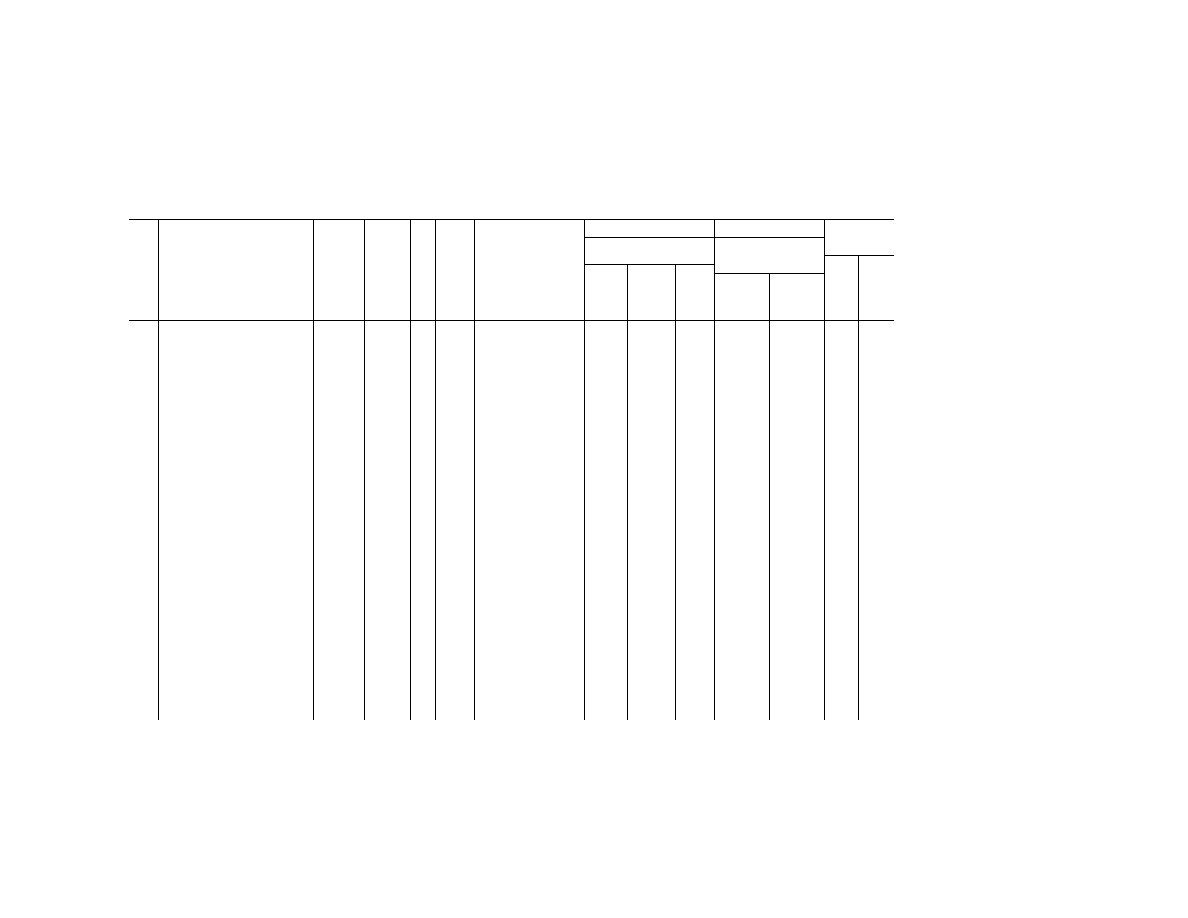
188
49 CFR Ch. I (10–1–23 Edition)
§
172.101
§ 172.101 H
AZARDOUS
M
ATERIALS
T
ABLE
—Continued
Sym-
bols
Hazardous materials descriptions
and proper shipping names
Hazard
class or
Division
Identi-
fication
Numbers
PG
Label
Codes
Special provisions
(§ 172.102)
(8)
(9)
(10)
Vessel
stowage
Packaging
(§ 173.***)
Quantity limitations
(see §§ 173.27 and
175.75)
Loca-
tion
Other
Excep-
tions
Non-bulk
Bulk
Passenger
aircraft/rail
Cargo air-
craft only
(1)
(2)
(3)
(4)
(5)
(6)
(7)
(8A)
(8B)
(8C)
(9A)
(9B)
(10A)
(10B)
Butyl propionates
3 UN1914
III
3
B1, IB3, T2, TP1 150
203
242
60 L
220 L
A
5-tert-Butyl-2,4,6-trinitro-m-xylene or
Musk xylene
4.1 UN2956
III
4.1
159 151
223
None
Forbidden
Forbidden
D
12, 25,
40, 127
Butyl vinyl ether, stabilized
3 UN2352
II
3
387, IB2, T4, TP1 150
202
242
5 L
60 L
C
25, 40
n-Butylamine
3 UN1125
II
3, 8
IB2, T7, TP1 150
202
242
1 L
5 L
B
40, 52
N-Butylaniline
6.1 UN2738
II
6.1
IB2, T7, TP2 153
202
243
5 L
60 L
A
74
tert-Butylcyclohexylchloroformate
6.1 UN2747
III
6.1
IB3, T4, TP1 153
203
241
60 L
220 L
A
12, 13,
25
Butylene see also Petroleum gases,
liquefied
2.1 UN1012
2.1
19, T50 306
304
314,
315
Forbidden
150 kg
E
40
1,2-Butylene oxide, stabilized
3 UN3022
II
3
387, IB2, T4, TP1 150
202
242
5 L
60 L
C
25, 27,
49
Butyltoluenes
6.1 UN2667
III
6.1
IB3, T4, TP1 153
203
241
60 L
220 L
A
Butyltrichlorosilane
8 UN1747
II
8, 3
A7, B2, B6, N34, T10,
TP2, TP7, TP13
None
206
243
Forbidden
30 L
C
40, 53,
58
1,4-Butynediol
6.1 UN2716
III
6.1
A1, IB8, IP3, T1, TP33 153
213
240
100 kg
200 kg
C
52, 53,
70
Butyraldehyde
3 UN1129
II
3
IB2, T4, TP1 150
202
242
5 L
60 L
B
Butyraldoxime
3 UN2840
III
3
B1, IB3, T2, TP1 150
203
242
60 L
220 L
A
Butyric acid
8 UN2820
III
8
IB3, T4, TP1 154
203
241
5 L
60 L
A
12, 25,
53, 58
Butyric anhydride
8 UN2739
III
8
IB3, T4, TP1 154
203
241
5 L
60 L
A
53, 58
Butyronitrile
3 UN2411
II
3, 6.1
IB2, T7, TP1, TP13 150
202
243
1 L
60 L
E
40
Butyryl chloride
3 UN2353
II
3, 8
IB2, T8, TP2, TP13 150
202
243
1 L
5 L
C
40, 53,
58
Cacodylic acid
6.1 UN1572
II
6.1
IB8, IP2, IP4, T3, TP33 153
212
242
25 kg
100 kg
E
52, 53,
58
G
Cadmium compounds
6.1 UN2570
I
6.1
IB7, IP1, T6, TP33 None
211
242
5 kg
50 kg
A
II
6.1
IB8, IP2, IP4, T3, TP33 153
212
242
25 kg
100 kg
A
III
6.1
IB8, IP3, T1, TP33 153
213
240
100 kg
200 kg
A
Caesium hydroxide
8 UN2682
II
8
IB8, IP2, IP4, T3, TP33 154
212
240
15 kg
50 kg
A
29, 52.
Caesium hydroxide solution
8 UN2681
II
8
B2, IB2, T7, TP2 154
202
242
1 L
30 L
A
29, 52
III
8
IB3, T4, TP1 154
203
241
5 L
60 L
A
29, 52
Calcium
4.3 UN1401
II
4.3
IB7, IP2, IP21, T3,
TP33, W31, W40
151
212
241
15 kg
50 kg
E
13, 52,
148
Calcium arsenate
6.1 UN1573
II
6.1
IB8, IP2, IP4, T3, TP33 153
212
242
25 kg
100 kg
A
Calcium arsenate and calcium
arsenite, mixtures, solid
6.1 UN1574
II
6.1
IB8, IP2, IP4, T3, TP33 153
212
242
25 kg
100 kg
A
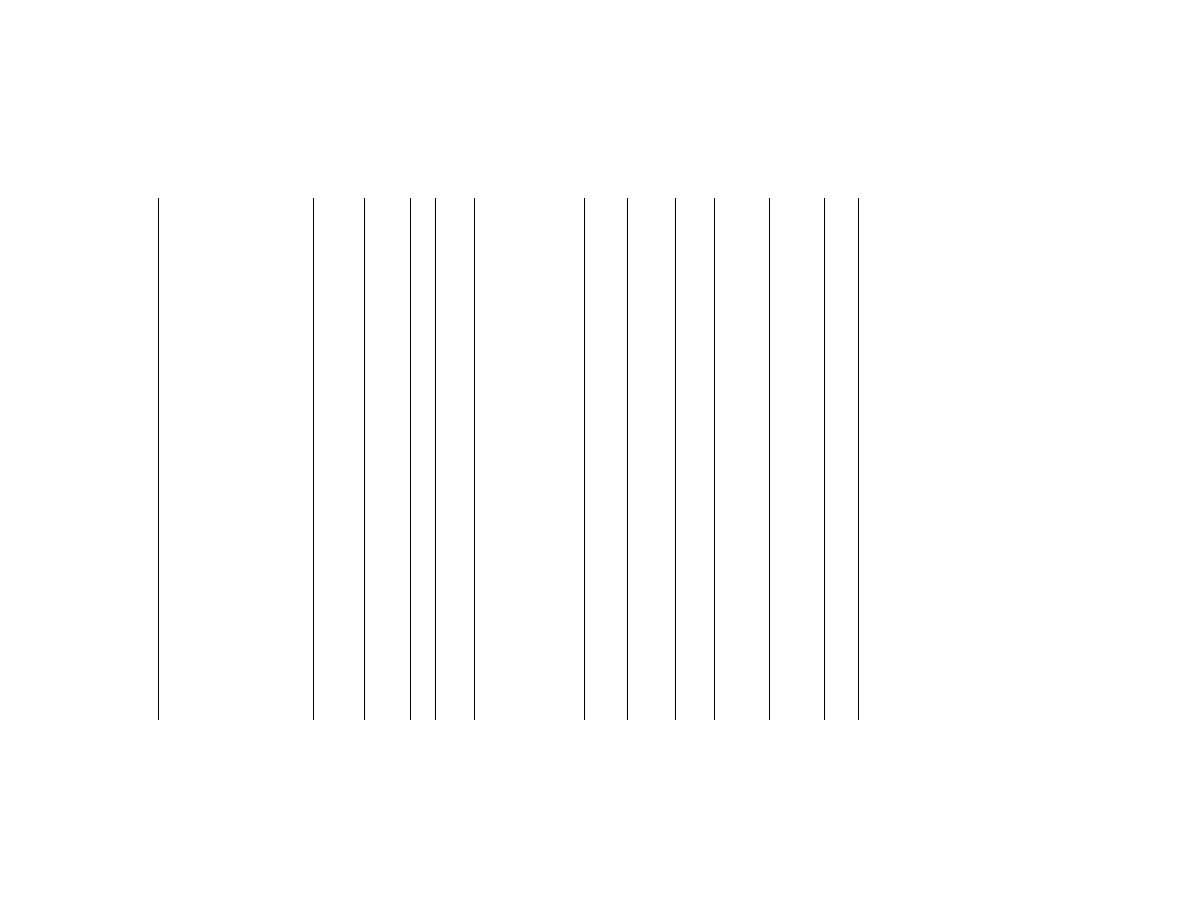
189
Pipeline and Haz. Matls. Safety Admin., DOT
§
172.101
Calcium bisulfite solution, see
Bisulfites, aqueous solutions,
n.o.s.
Calcium carbide
4.3 UN1402
I
4.3
A1, A8, B55, B59, IB4,
IP1, N34, T9, TP7,
TP33, W31
None
211
242
Forbidden
15 kg
B
13, 52,
148
II
4.3
A1, A8, B55, B59, IB7,
IP2, IP21, N34, T3,
TP33, W31, W40
151
212
241
15 kg
50 kg
B
13, 52,
148
Calcium chlorate
5.1 UN1452
II
5.1
A9, IB8, IP2, IP4, N34,
T3, TP33
152
212
242
5 kg
25 kg
A
56, 58
Calcium chlorate aqueous solution
5.1 UN2429
II
5.1
A2, IB2, N41, T4, TP1 152
202
242
1 L
5 L
B
56, 58,
133
III
5.1
A2, IB2, N41, T4, TP1 152
203
241
2.5 L
30 L
B
56, 68,
133
Calcium chlorite
5.1 UN1453
II
5.1
A9, IB8, IP2, IP4, N34,
T3, TP33
152
212
242
5 kg
25 kg
A
56, 58
Calcium cyanamide with more than
0.1 percent of calcium carbide
4.3 UN1403
III
4.3
A1, A19, IB8, IP4, T1,
TP33, W31
151
213
241
25 kg
100 kg
A
13, 52,
148
Calcium cyanide
6.1 UN1575
I
6.1
IB7, IP1, N79, N80, T6,
TP33, W31
None
211
242
5 kg
50 kg
A
40, 52
Calcium dithionite or Calcium hy-
drosulfite
4.2 UN1923
II
4.2
A19, A20, IB6, IP2, T3,
TP33, W31
None
212
241
15 kg
50 kg
E
13
Calcium hydride
4.3 UN1404
I
4.3
A19, N40, W31 None
211
242
Forbidden
15 kg
E
13, 52,
148
Calcium hydrosulfite, see Calcium
dithionite
Calcium hypochlorite, dry, corrosive
or Calcium hypochlorite mixture,
dry, corrosive with more than
39% available chlorine (8.8%
available oxygen)
5.1 UN3485
II
5.1, 8
165, 166, A7, A9, IB8,
IP2, IP4, IP13, N34, W9
152
212
None
5 kg
25 kg
D
4, 25,
52, 56,
58, 69,
142
Calcium hypochlorite, dry or Cal-
cium hypochlorite mixture dry
with more than 39% available
chlorine (8.8% available oxygen)
5.1 UN1748
II
5.1
165, 166, A7, A9, IB8,
IP2, IP4, IP13, N34, W9
152
212
None
5 kg
25 kg
D
4, 25,
52, 56,
58, 69,
142
III
5.1
165, 171, A7, A9, IB8,
IP4, IP13, N34, W9
152
213
240
25 kg
100 kg
D
4, 25,
52, 56,
58, 69,
142
Calcium hypochlorite, hydrated, cor-
rosive or Calcium hypochlorite,
hydrated mixture, corrosive with
not less than 5.5% but not more
than 16% water
5.1 UN3487
II
5.1, 8
165, IB8, IP2, IP4, IP13,
W9
152
212
240
5 kg
25 kg
D
4, 25,
52, 56,
58, 69,
142
III
5.1, 8
165, IB8, IP4, W9 152
213
240
25 kg
100 kg
D
4, 25,
52, 56,
58, 69,
142
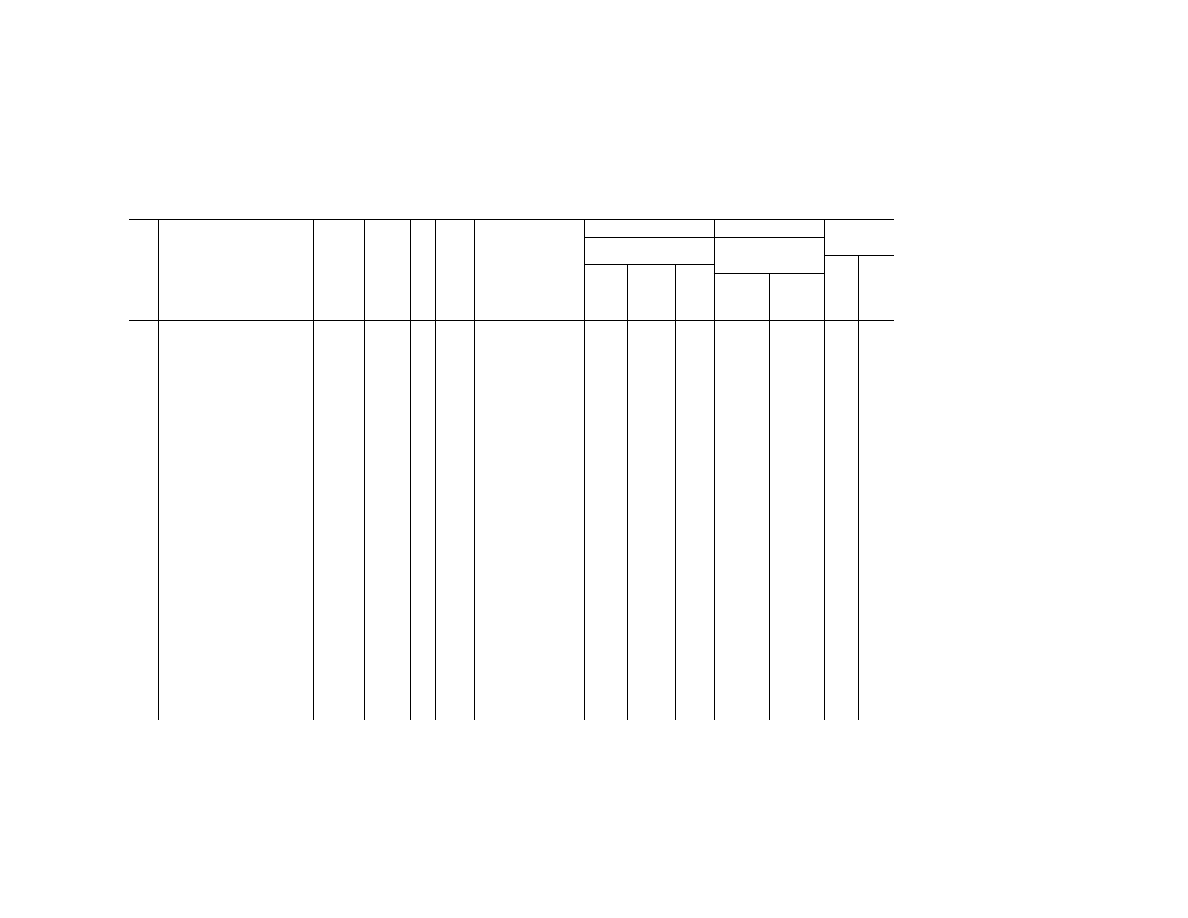
190
49 CFR Ch. I (10–1–23 Edition)
§
172.101
§ 172.101 H
AZARDOUS
M
ATERIALS
T
ABLE
—Continued
Sym-
bols
Hazardous materials descriptions
and proper shipping names
Hazard
class or
Division
Identi-
fication
Numbers
PG
Label
Codes
Special provisions
(§ 172.102)
(8)
(9)
(10)
Vessel
stowage
Packaging
(§ 173.***)
Quantity limitations
(see §§ 173.27 and
175.75)
Loca-
tion
Other
Excep-
tions
Non-bulk
Bulk
Passenger
aircraft/rail
Cargo air-
craft only
(1)
(2)
(3)
(4)
(5)
(6)
(7)
(8A)
(8B)
(8C)
(9A)
(9B)
(10A)
(10B)
Calcium hypochlorite, hydrated or
Calcium hypochlorite, hydrated
mixture, with not less than 5.5%
but not more than 16% water
5.1 UN2880
II
5.1
165, IB8, IP2, IP4, IP13,
W9
152
212
240
5 kg
25 kg
D
4, 25,
52, 56,
58, 69,
142
III
5.1
165, 171, IB8, IP4, IP13,
W9
152
213
240
25 kg
100 kg
D
4, 25,
52, 56,
58, 69,
142
Calcium hypochlorite mixture, dry,
corrosive with more than 10% but
not more than 39% available
chlorine
5.1 UN3486
III
5.1, 8
165, A1, A29, IB8, IP3,
IP13, N34, W9, W10
152
213
240
5 kg
25 kg
D
4, 25,
52, 56,
58, 69,
142
Calcium hypochlorite mixture, dry,
with more than 10% but not more
than 39% available chlorine
5.1 UN2208
III
5.1
165, A1, A29, IB8, IP3,
IP13, N34, W9, W10
152
213
240
25 kg
100 kg
D
4, 25,
52, 56,
58, 69,
142
Calcium manganese silicon
4.3 UN2844
III
4.3
A1, A19, IB8, IP4, T1,
TP33, W31
151
213
241
25 kg
100 kg
A
13, 52,
85,
103,
148
Calcium nitrate
5.1 UN1454
III
5.1
34, B120, IB8, IP3, T1,
TP33
152
213
240
25 kg
100 kg
A
............
A
Calcium oxide
8 UN1910
III
8
IB8, IP3, T1, TP33 154
213
240
25 kg
100 kg
A
Calcium perchlorate
5.1 UN1455
II
5.1
IB6, IP2, T3, TP33 152
212
242
5 kg
25 kg
A
56, 58
Calcium permanganate
5.1 UN1456
II
5.1
IB6, IP2, T3, TP33 152
212
242
5 kg
25 kg
D
56, 58,
138
Calcium peroxide
5.1 UN1457
II
5.1
IB6, IP2, T3, TP33,
W100
152
212
242
5 kg
25 kg
C
13, 52,
66, 75,
148
Calcium phosphide
4.3 UN1360
I
4.3,
6.1
A8, A19, N40, W31 None
211
242
Forbidden
15 kg
E
13, 40,
52, 85,
148
Calcium, pyrophoric or Calcium al-
loys, pyrophoric
4.2 UN1855
I
4.2
W31 None
187
None
Forbidden
Forbidden
D
13, 148
Calcium resinate
4.1 UN1313
III
4.1
A1, A19, IB6, T1, TP33 151
213
240
25 kg
100 kg
A
Calcium resinate, fused
4.1 UN1314
III
4.1
A1, A19, IB4, T1, TP33 151
213
240
25 kg
100 kg
A
Calcium selenate, see Selenates or
Selenites
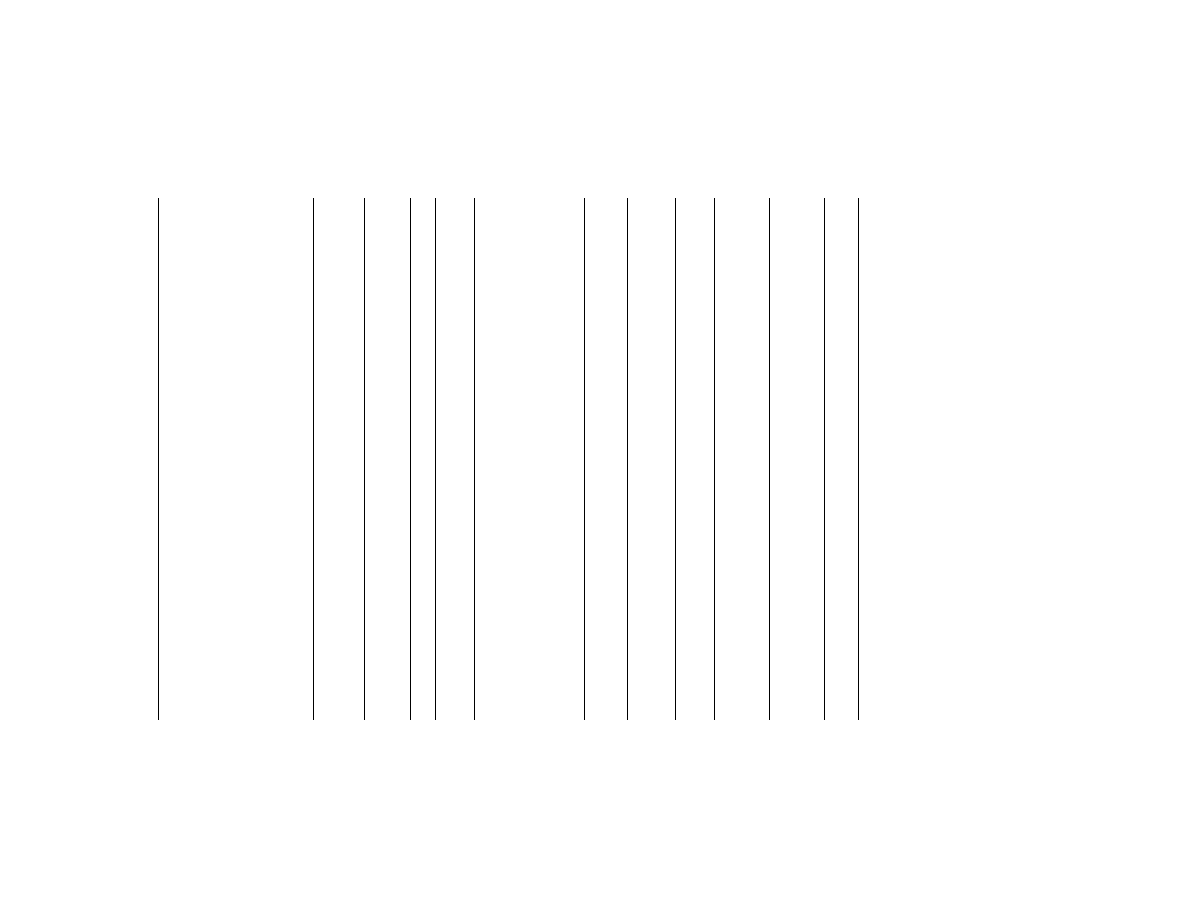
191
Pipeline and Haz. Matls. Safety Admin., DOT
§
172.101
Calcium silicide
4.3 UN1405
II
4.3
A19, IB7, IP2, IP21, T3,
TP33, W31
151
212
241
15 kg
50 kg
B
13, 52,
85,
103,
148
III
4.3
A1, A19, IB8, IP21, T1,
TP33, W31
151
213
241
25 kg
100 kg
B
13, 52,
85,
103,
148
Camphor oil
3 UN1130
III
3
B1, IB3, T2, TP1 150
203
242
60 L
220 L
A
Camphor, synthetic
4.1 UN2717
III
4.1
A1, IB8, IP3, T1, TP33 151
213
240
25 kg
100 kg
A
Cannon primers, see Primers, tubu-
lar
Capacitor, asymmetric with an en-
ergy storage capacity greater
than 0.3 Wh
9 UN3508
......
9
372 176
176
176
No limit
No Limit
A
Capacitor, electric double layer with
an energy storage capacity great-
er than 0.3 Wh
9 UN3499
......
9
361 176
176
176
No limit
No limit
A
Caproic acid
8 UN2829
III
8
IB3, T4, TP1 154
203
241
5 L
60 L
A
53, 58
Caps, blasting, see Detonators, etc
Carbamate pesticides, liquid, flam-
mable, toxic, flash point less than
23 degrees C
3 UN2758
I
3, 6.1
T14, TP2, TP13, TP27 None
201
243
Forbidden
30 L
B
40
II
3, 6.1
IB2, T11, TP2, TP13,
TP27
150
202
243
1 L
60 L
B
40
Carbamate pesticides, liquid, toxic
6.1 UN2992
I
6.1
T14, TP2, TP13, TP27 None
201
243
1 L
30 L
B
40
II
6.1
IB2, T11, TP2, TP13,
TP27
153
202
243
5 L
60 L
B
40
III
6.1
IB3, T7, TP2, TP28 153
203
241
60 L
220 L
A
40
Carbamate pesticides, liquid, toxic,
flammable, flash point not less
than 23 degrees C
6.1 UN2991
I
6.1, 3
T14, TP2, TP13, TP27 None
201
243
1 L
30 L
B
40
II
6.1, 3
IB2, T11, TP2, TP13,
TP27
153
202
243
5 L
60 L
B
40
III
6.1, 3
B1, IB3, T7, TP2, TP28 153
203
242
60 L
220 L
A
40
Carbamate pesticides, solid, toxic
6.1 UN2757
I
6.1
IB7, IP1, T6, TP33 None
211
242
5 kg
50 kg
A
40
II
6.1
IB8, IP2, IP4, T3, TP33 153
212
242
25 kg
100 kg
A
40
III
6.1
IB8, IP3, T1, TP33 153
213
240
100 kg
200 kg
A
40
Carbolic acid, see Phenol, solid or
Phenol, molten
Carbolic acid solutions, see Phenol
solutions
I
Carbon, activated
4.2 UN1362
III
4.2
IB8, IP3, T1, TP33, W31 None
213
241
0.5 kg
0.5 kg
A
12, 25
I
Carbon, animal or vegetable origin
4.2 UN1361
II
4.2
IB6, T3, TP33 None
212
242
Forbidden
Forbidden
A
12, 25
III
4.2
IB8, IP3, T1, TP33 None
213
241
Forbidden
Forbidden
A
12, 25
Carbon bisulfide, see Carbon disul-
fide
Carbon dioxide
2.2 UN1013
2.2
306
302, 304
302,
314,
315
75 kg
150 kg
A
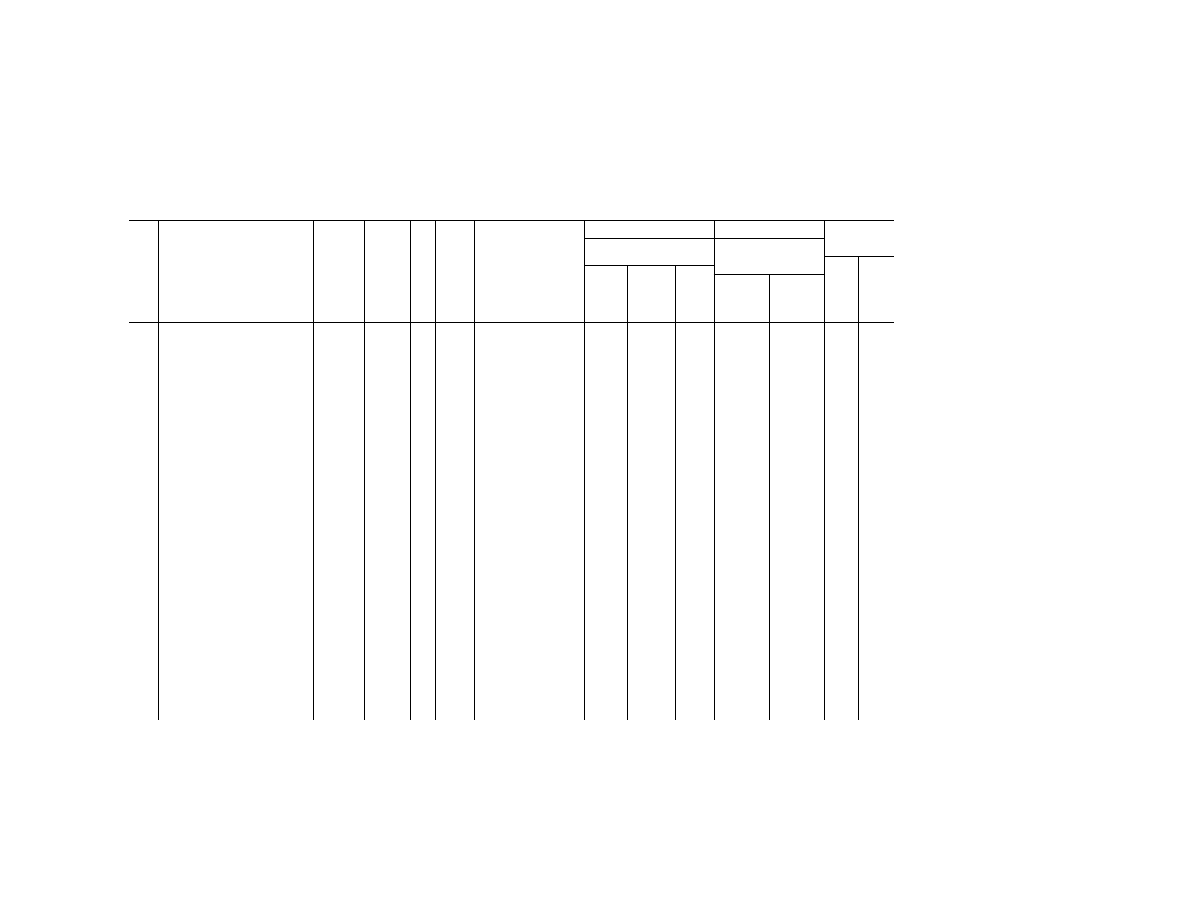
192
49 CFR Ch. I (10–1–23 Edition)
§
172.101
§ 172.101 H
AZARDOUS
M
ATERIALS
T
ABLE
—Continued
Sym-
bols
Hazardous materials descriptions
and proper shipping names
Hazard
class or
Division
Identi-
fication
Numbers
PG
Label
Codes
Special provisions
(§ 172.102)
(8)
(9)
(10)
Vessel
stowage
Packaging
(§ 173.***)
Quantity limitations
(see §§ 173.27 and
175.75)
Loca-
tion
Other
Excep-
tions
Non-bulk
Bulk
Passenger
aircraft/rail
Cargo air-
craft only
(1)
(2)
(3)
(4)
(5)
(6)
(7)
(8A)
(8B)
(8C)
(9A)
(9B)
(10A)
(10B)
Carbon dioxide, refrigerated liquid
2.2 UN2187
2.2
T75, TP5 306
304
314,
315
50 kg
500 kg
D
A W
Carbon dioxide, solid or Dry ice
9 UN1845
None
217
217
240
200 kg
200 kg
C
40
Carbon disulfide
3 UN1131
I
3, 6.1
B16, T14, TP2, TP7,
TP13, W31
None
201
243
Forbidden
Forbidden
D
40, 78,
115
Carbon monoxide, compressed
2.3 UN1016
2.3,
2.1
4 None
302
314,
315
Forbidden
25 kg
D
40
D
Carbon monoxide, refrigerated liq-
uid (cryogenic liquid)
2.3 NA9202
2.3,
2.1
4, T75, TP5 None
316
318
Forbidden
Forbidden
D
Carbon tetrabromide
6.1 UN2516
III
6.1
IB8, IP3, T1, TP33 153
213
240
100 kg
200 kg
A
25
Carbon tetrachloride
6.1 UN1846
II
6.1
IB2, N36, T7, TP2 153
202
243
5 L
60 L
A
40
Carbonyl chloride, see Phosgene
Carbonyl fluoride
2.3 UN2417
2.3, 8
2 None
302
None
Forbidden
Forbidden
D
40
Carbonyl sulfide
2.3 UN2204
2.3,
2.1
3, B14 None
304
314,
315
Forbidden
Forbidden
D
40
Cartridge cases, empty primed, see
Cases, cartridge, empty, with
primer
Cartridges, actuating, for aircraft
ejector seat catapult, fire extin-
guisher, canopy removal or appa-
ratus, see Cartridges, power de-
vice
Cartridges, explosive, see Charges,
demolition
Cartridges, sporting, see Cartridges
for weapons, inert projectile, or
Cartridges, small arms
Cartridges, flash
1.1G UN0049
......
1.1G
........................................
None
62
None
Forbidden
Forbidden
03
25
Cartridges, flash
1.3G UN0050
......
1.3G
........................................
None
62
None
Forbidden
75 kg
03
25
Cartridges for weapons, blank
1.1C UN0326
......
1.1C
........................................
None
62
None
Forbidden
Forbidden
03
25
Cartridges for weapons, blank
1.2C UN0413
......
1.2C
........................................
None
62
None
Forbidden
Forbidden
03
25
Cartridges for weapons, blank or
Cartridges, small arms, blank
1.3C UN0327
......
1.3C
........................................
None
62
None
Forbidden
Forbidden
03
25
Cartridges for weapons, blank or
Cartridges, small arms, blank
1.4C UN0338
......
1.4C
........................................
None
62
None
Forbidden
75 kg
02
25
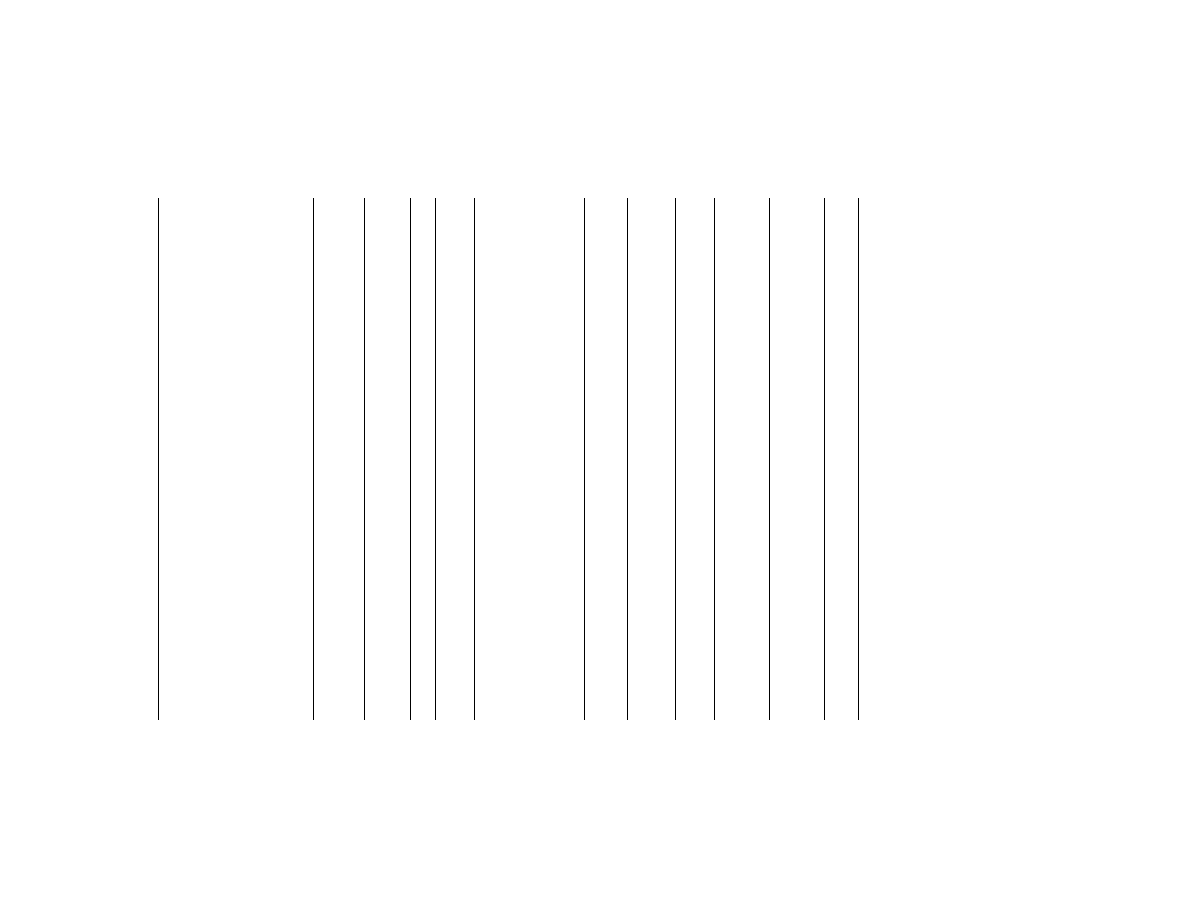
193
Pipeline and Haz. Matls. Safety Admin., DOT
§
172.101
Cartridges for weapons, blank or
Cartridges, small arms, blank or
Cartridges for tools, blank
1.4S UN0014
......
None
........................................
63
62
None
25 kg
100 kg
01
25
Cartridges for weapons, inert pro-
jectile
1.2C UN0328
......
1.2C
........................................
None
62
62
Forbidden
Forbidden
03
25
Cartridges for weapons, inert pro-
jectile or Cartridges, small arms
1.4S UN0012
......
None
........................................
63
62
None
25 kg
100 kg
01
25
Cartridges for weapons, inert pro-
jectile or Cartridges, small arms
1.4C UN0339
......
1.4C
........................................
None
62
None
Forbidden
75 kg
02
25
Cartridges for weapons, inert pro-
jectile or Cartridges, small arms
1.3C UN0417
......
1.3C
........................................
None
62
None
Forbidden
Forbidden
03
25
Cartridges for weapons, with burst-
ing charge
1.1F UN0005
......
1.1F
........................................
None
62
None
Forbidden
Forbidden
03
25
Cartridges for weapons, with burst-
ing charge
1.1E UN0006
......
1.1E
........................................
None
62
62
Forbidden
Forbidden
03
25
Cartridges for weapons, with burst-
ing charge
1.2F UN0007
......
1.2F
........................................
None
62
None
Forbidden
Forbidden
03
25
Cartridges for weapons, with burst-
ing charge
1.2E UN0321
......
1.2E
........................................
None
62
62
Forbidden
Forbidden
03
25
Cartridges for weapons, with burst-
ing charge
1.4F UN0348
......
1.4F
........................................
None
62
None
Forbidden
Forbidden
03
25
Cartridges for weapons, with burst-
ing charge
1.4E UN0412
......
1.4E
........................................
None
62
62
Forbidden
75 kg
03
25
Cartridges, oil well
1.3C UN0277
......
1.3C
........................................
None
62
62
Forbidden
Forbidden
03
25
Cartridges, oil well
1.4C UN0278
......
1.4C
........................................
None
62
62
Forbidden
75 kg
02
25
Cartridges, power device
1.3C UN0275
......
1.3C
........................................
None
62
62
Forbidden
75 kg
03
25
Cartridges, power device
1.4C UN0276
......
1.4C
110 None
62
62
Forbidden
75 kg
02
25
Cartridges, power device
1.4S UN0323
......
1.4S
110, 347 63
62
62
25 kg
100 kg
01
25
Cartridges, power device
1.2C UN0381
......
1.2C
........................................
None
62
62
Forbidden
Forbidden
03
25
Cartridges, safety, blank, see Car-
tridges for weapons, blank (UN
0014)
Cartridges, safety, see Cartriges for
weapons, inert projectile, or Car-
tridges, small arms or Cartridges,
power device (UN 0323)
Cartridges, signal
1.3G UN0054
......
1.3G
........................................
None
62
None
Forbidden
75 kg
03
25
Cartridges, signal
1.4G UN0312
......
1.4G
........................................
None
62
None
Forbidden
75 kg
02
25
Cartridges, signal
1.4S UN0405
......
1.4S
........................................
None
62
None
25 kg
100 kg
01
25
Cartridges, starter, jet engine, see
Cartridges, power device
Cases, cartridge, empty with primer
1.4S UN0055
......
1.4S
50 63
62
None
25 kg
100 kg
01
25
Cases, cartridges, empty with prim-
er
1.4C UN0379
......
1.4C
50 None
62
None
Forbidden
75 kg
02
25
Cases, combustible, empty, without
primer
1.4C UN0446
......
1.4C
........................................
None
62
None
Forbidden
75 kg
02
25
Cases, combustible, empty, without
primer
1.3C UN0447
......
1.3C
........................................
None
62
None
Forbidden
Forbidden
03
25
Casinghead gasoline see Gasoline

194
49 CFR Ch. I (10–1–23 Edition)
§
172.101
§ 172.101 H
AZARDOUS
M
ATERIALS
T
ABLE
—Continued
Sym-
bols
Hazardous materials descriptions
and proper shipping names
Hazard
class or
Division
Identi-
fication
Numbers
PG
Label
Codes
Special provisions
(§ 172.102)
(8)
(9)
(10)
Vessel
stowage
Packaging
(§ 173.***)
Quantity limitations
(see §§ 173.27 and
175.75)
Loca-
tion
Other
Excep-
tions
Non-bulk
Bulk
Passenger
aircraft/rail
Cargo air-
craft only
(1)
(2)
(3)
(4)
(5)
(6)
(7)
(8A)
(8B)
(8C)
(9A)
(9B)
(10A)
(10B)
A W
Castor beans or Castor meal or
Castor pomace or Castor flake
9 UN2969
II
None
IB8, IP2, IP4, T3, TP33 155
204
240
No limit
No limit
E
34, 40,
44, 122
Catecholborane
................
......
A210
G
Caustic alkali liquids, n.o.s.
8 UN1719
II
8
B2, IB2, T11, TP2, TP27 154
202
242
1 L
30 L
A
29, 52
III
8
IB3, T7, TP1, TP28 154
203
241
5 L
60 L
A
29, 52
Caustic potash, see Potassium hy-
droxide etc
Caustic soda, (etc.) see Sodium hy-
droxide etc
Cells, containing sodium
4.3 UN3292
......
4.3
189
189
189
25 kg
No limit
A
Celluloid, in block, rods, rolls,
sheets, tubes, etc., except scrap
4.1 UN2000
III
4.1
420 151
213
240
25 kg
100 kg
A
Celluloid, scrap
4.2 UN2002
III
4.2
IB8, IP3 None
213
241
Forbidden
Forbidden
D
Cement, see Adhesives containing
flammable liquid
Cerium, slabs, ingots, or rods
4.1 UN1333
II
4.1
IB8, IP2, IP4, N34,
W100
151
212
240
15 kg
50 kg
A
13, 74,
91,
147,
148
Cerium, turnings or gritty powder
4.3 UN3078
II
4.3
A1, IB7, IP2, IP21, T3,
TP33, W31, W40
151
212
242
15 kg
50 kg
E
13, 52,
148
Cesium or Caesium
4.3 UN1407
I
4.3
A7, A19, IB4, IP1, N34,
N40, W31
None
211
242
Forbidden
15 kg
D
13, 52,
148
Cesium nitrate or Caesium nitrate
5.1 UN1451
III
5.1
A1, A29, IB8, IP3, T1,
TP33
152
213
240
25 kg
100 kg
A
D
Charcoal briquettes, shell,
screenings, wood, etc.
4.2 NA1361
III
4.2
IB8, T1, TP33 151
213
240
25 kg
100 kg
A
12
Charges, bursting, plastics bonded
1.1D UN0457
......
1.1D
........................................
None
62
None
Forbidden
Forbidden
03
25
Charges, bursting, plastics bonded
1.2D UN0458
......
1.2D
........................................
None
62
None
Forbidden
Forbidden
03
25
Charges, bursting, plastics bonded
1.4D UN0459
......
1.4D
........................................
None
62
None
Forbidden
75 kg
02
25
Charges, bursting, plastics bonded
1.4S UN0460
......
1.4S
347 None
62
None
25 kg
100 kg
01
25
Charges, demolition
1.1D UN0048
......
1.1D
........................................
None
62
62
Forbidden
Forbidden
03
25
Charges, depth
1.1D UN0056
......
1.1D
........................................
None
62
62
Forbidden
Forbidden
03
25
Charges, expelling, explosive, for
fire extinguishers, see Cartridges,
power device
Charges, explosive, commercial
without detonator
1.1D UN0442
......
1.1D
........................................
None
62
None
Forbidden
Forbidden
03
25
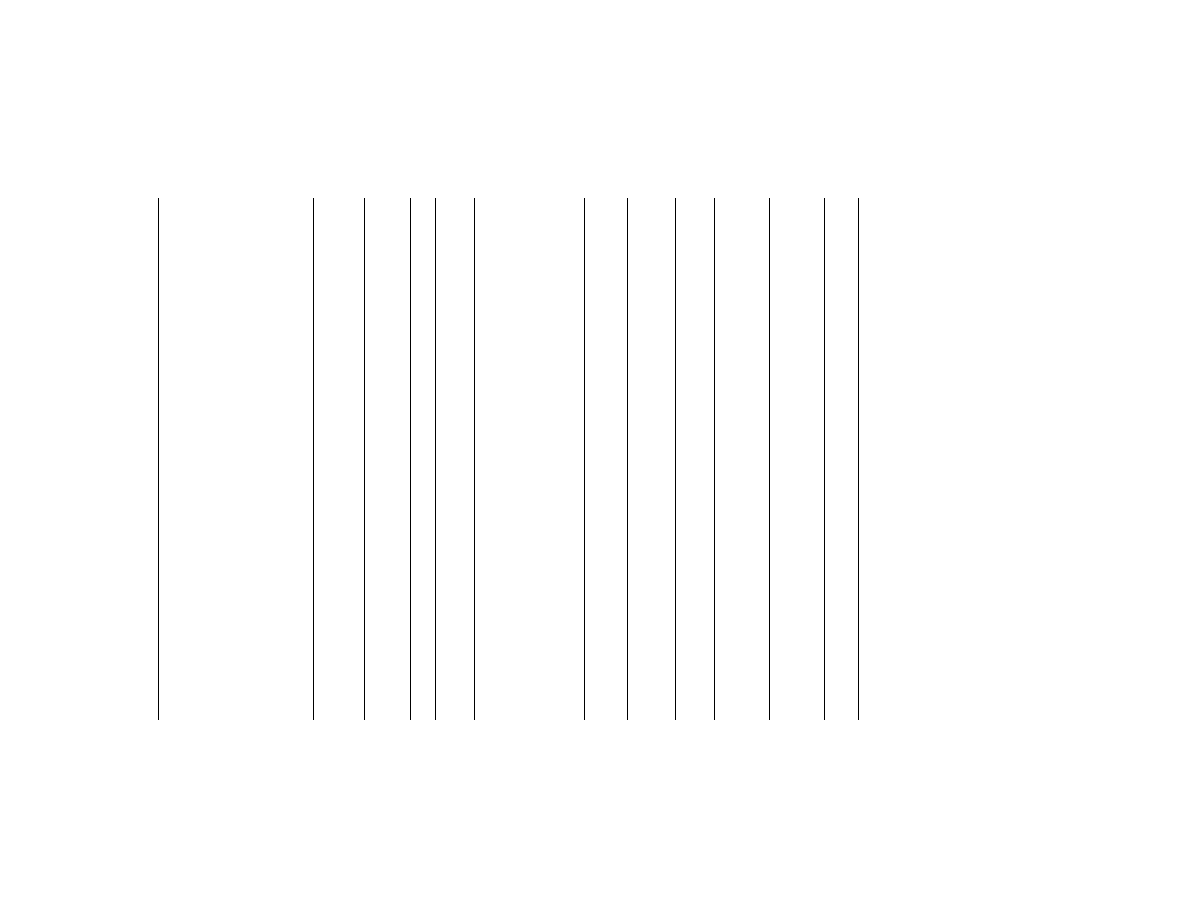
195
Pipeline and Haz. Matls. Safety Admin., DOT
§
172.101
Charges, explosive, commercial
without detonator
1.2D UN0443
......
1.2D
........................................
None
62
None
Forbidden
Forbidden
03
25
Charges, explosive, commercial
without detonator
1.4D UN0444
......
1.4D
........................................
None
62
None
Forbidden
75 kg
02
25
Charges, explosive, commercial
without detonator
1.4S UN0445
......
1.4S
347 None
62
None
25 kg
100 kg
01
25
Charges, propelling
1.1C UN0271
......
1.1C
........................................
None
62
None
Forbidden
Forbidden
03
25
Charges, propelling
1.3C UN0272
......
1.3C
........................................
None
62
None
Forbidden
Forbidden
03
25
Charges, propelling
1.2C UN0415
......
1.2C
........................................
None
62
None
Forbidden
Forbidden
03
25
Charges, propelling
1.4C UN0491
......
1.4C
........................................
None
62
None
Forbidden
75 kg
02
25
Charges, propelling, for cannon
1.3C UN0242
......
1.3C
........................................
None
62
None
Forbidden
Forbidden
03
25
Charges, propelling, for cannon
1.1C UN0279
......
1.1C
........................................
None
62
None
Forbidden
Forbidden
03
25
Charges, propelling, for cannon
1.2C UN0414
......
1.2C
........................................
None
62
None
Forbidden
Forbidden
03
25
Charges, shaped, flexible, linear
1.4D UN0237
......
1.4D
........................................
None
62
None
Forbidden
75 kg
02
25
Charges, shaped, flexible, linear
1.1D UN0288
......
1.1D
........................................
None
62
None
Forbidden
Forbidden
04
25
Charges, shaped, without detonator
1.1D UN0059
......
1.1D
........................................
None
62
None
Forbidden
Forbidden
03
25
Charges, shaped, without detonator
1.2D UN0439
......
1.2D
........................................
None
62
None
Forbidden
Forbidden
03
25
Charges, shaped, without detonator
1.4D UN0440
......
1.4D
........................................
None
62
None
Forbidden
75 kg
02
25
Charges, shaped, without detonator
1.4S UN0441
......
1.4S
347 None
62
None
25 kg
100 kg
01
25
Charges, supplementary explosive
1.1D UN0060
......
1.1D
........................................
None
62
None
Forbidden
Forbidden
03
25
D
Chemical kit
8 NA1760
II
8
154
161
None
1 L
30 L
B
40
Chemical kit
9 UN3316
......
9
15 161
161
None
10 kg
10 kg
A
G
Chemical under pressure, corrosive,
n.o.s
2.2 UN3503
......
2.2, 8
362, T50, TP40 None
335
313,
315
Forbidden
100 kg
D
40
G
Chemical under pressure, flam-
mable, corrosive, n.o.s
2.1 UN3505
......
2.1, 8
362, T50, TP40 None
335
313,
315
Forbidden
75 kg
D
40
G
Chemical under pressure, flam-
mable, n.o.s
2.1 UN3501
......
2.1
362, T50, TP40 None
335
313,
315
Forbidden
75 kg
D
40
G
Chemical under pressure, flam-
mable, toxic, n.o.s
2.1 UN3504
......
2.1,
6.1
362, T50, TP40 None
335
313,
315
Forbidden
75 kg
D
40
G
Chemical under pressure, n.o.s
2.2 UN3500
......
2.2
362, T50, TP40 None
335
313,
315
75 kg
150 kg
B
G
Chemical under pressure, toxic,
n.o.s
2.2 UN3502
......
2.2,
6.1
362, T50, TP40 None
335
313,
315
Forbidden
100 kg
D
40
Chloral, anhydrous, stabilized
6.1 UN2075
II
6.1
IB2, T7, TP2 153
202
243
5 L
60 L
D
40
Chlorate and borate mixtures
5.1 UN1458
II
5.1
A9, IB8, IP2, IP4, N34,
T3, TP33
152
212
240
5 kg
25 kg
A
56, 58
III
5.1
A9, IB8, IP3, N34, T1,
TP33
152
213
240
25 kg
100 kg
A
56, 58
Chlorate and magnesium chloride
mixture solid
5.1 UN1459
II
5.1
A9, IB8, IP2, IP4, N34,
T3, TP33
152
212
240
5 kg
25 kg
A
56, 58
III
5.1
A9, IB8, IP3, N34, T1,
TP33
152
213
240
25 kg
100 kg
A
56, 58
Chlorate and magnesium chloride
mixture solution
5.1 UN3407
II
5.1
A9, IB2, N34, T4, TP1 152
202
242
1 L
5 L
A
56, 58,
133
III
5.1
A9, IB2, N34, T4, TP1 152
203
241
2.5 L
30 L
A
56, 58,
133
Chlorate of potash, see Potassium
chlorate
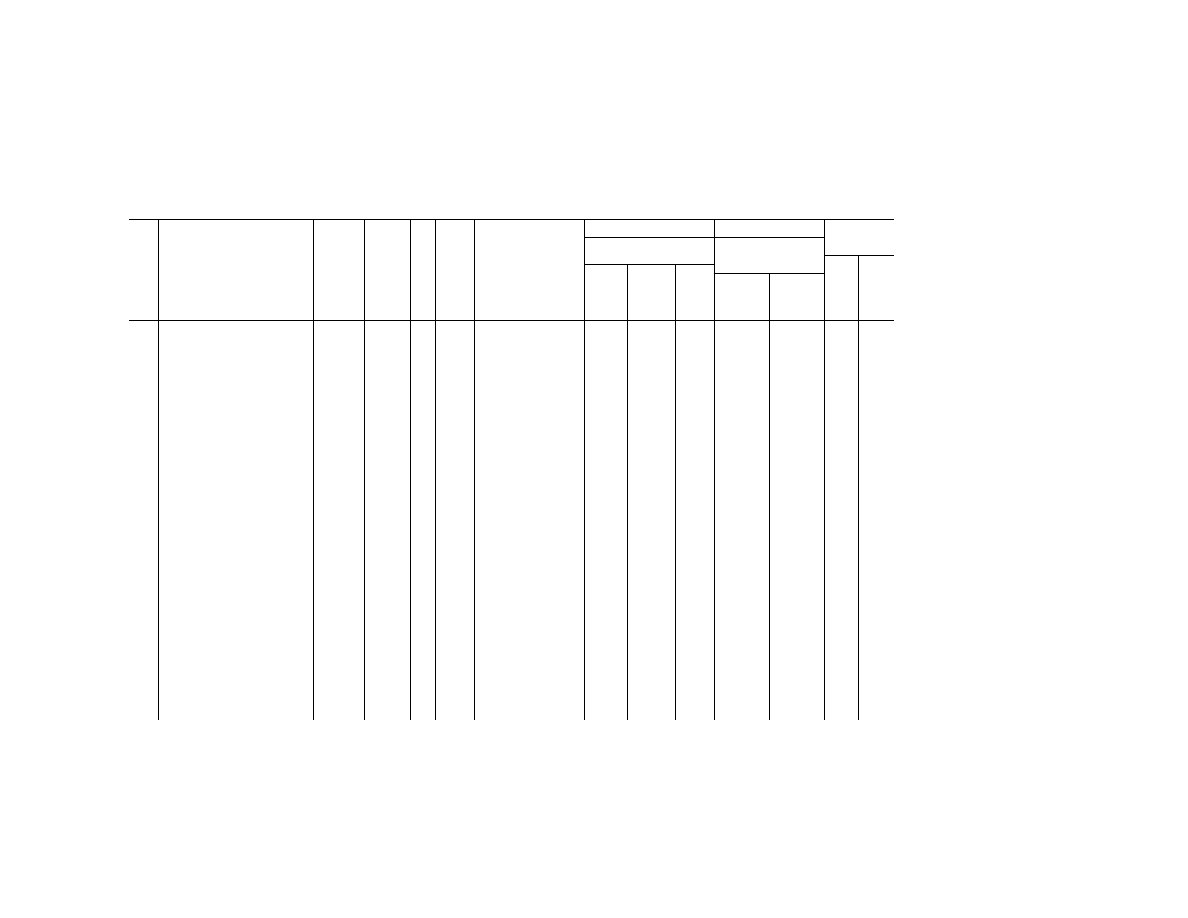
196
49 CFR Ch. I (10–1–23 Edition)
§
172.101
§ 172.101 H
AZARDOUS
M
ATERIALS
T
ABLE
—Continued
Sym-
bols
Hazardous materials descriptions
and proper shipping names
Hazard
class or
Division
Identi-
fication
Numbers
PG
Label
Codes
Special provisions
(§ 172.102)
(8)
(9)
(10)
Vessel
stowage
Packaging
(§ 173.***)
Quantity limitations
(see §§ 173.27 and
175.75)
Loca-
tion
Other
Excep-
tions
Non-bulk
Bulk
Passenger
aircraft/rail
Cargo air-
craft only
(1)
(2)
(3)
(4)
(5)
(6)
(7)
(8A)
(8B)
(8C)
(9A)
(9B)
(10A)
(10B)
Chlorate of soda, see Sodium chlo-
rate
G
Chlorates, inorganic, aqueous solu-
tion, n.o.s
5.1 UN3210
II
5.1
351, IB2, T4, TP1 152
202
242
1 L
5 L
B
56, 58,
133
III
5.1
351, IB2, T4, TP1 152
203
241
2.5 L
30 L
B
56, 58,
133
G
Chlorates, inorganic, n.o.s
5.1 UN1461
II
5.1
351, A9, IB6, IP2, N34,
T3, TP33
152
212
242
5 kg
25 kg
A
56, 58
Chloric acid aqueous solution, with
not more than 10 percent chloric
acid
5.1 UN2626
II
5.1
IB2, T4, TP1, W31 152
229
None
Forbidden
Forbidden
D
53, 56,
58
Chloride of phosphorus, see Phos-
phorus trichloride
Chloride of sulfur, see Sulfur chlo-
ride
Chlorinated lime, see Calcium hy-
pochlorite mixtures, etc
Chlorine
2.3 UN1017
2.3,
5.1,
8
2, B9, B14, N86, T50,
TP19
None
304
314,
315
Forbidden
Forbidden
D
40, 51,
55, 62,
68, 89,
90
Chlorine, adsorbed
2.3 UN3520
......
2.3,
5.1,
8
2, B9, B14, N86 None
302c
None
Forbidden
Forbidden
D
40, 89,
90
Chlorine azide
Forbidden
D
Chlorine dioxide, hydrate, frozen
5.1 NA9191
II
5.1,
6.1
None
229
None
Forbidden
Forbidden
E
Chlorine dioxide (not hydrate)
Forbidden
Chlorine pentafluoride
2.3 UN2548
2.3,
5.1,
8
1, B7, B9, B14, N86 None
304
314
Forbidden
Forbidden
D
40, 89,
90
Chlorine trifluoride
2.3 UN1749
2.3,
5.1,
8
2, B7, B9, B14, N86 None
304
314
Forbidden
Forbidden
D
40, 89,
90
Chlorite solution
8 UN1908
II
8
A3, A7, B2, IB2, N34,
T7, TP2, TP24
154
202
242
1 L
30 L
B
26, 44,
89,
100,
141
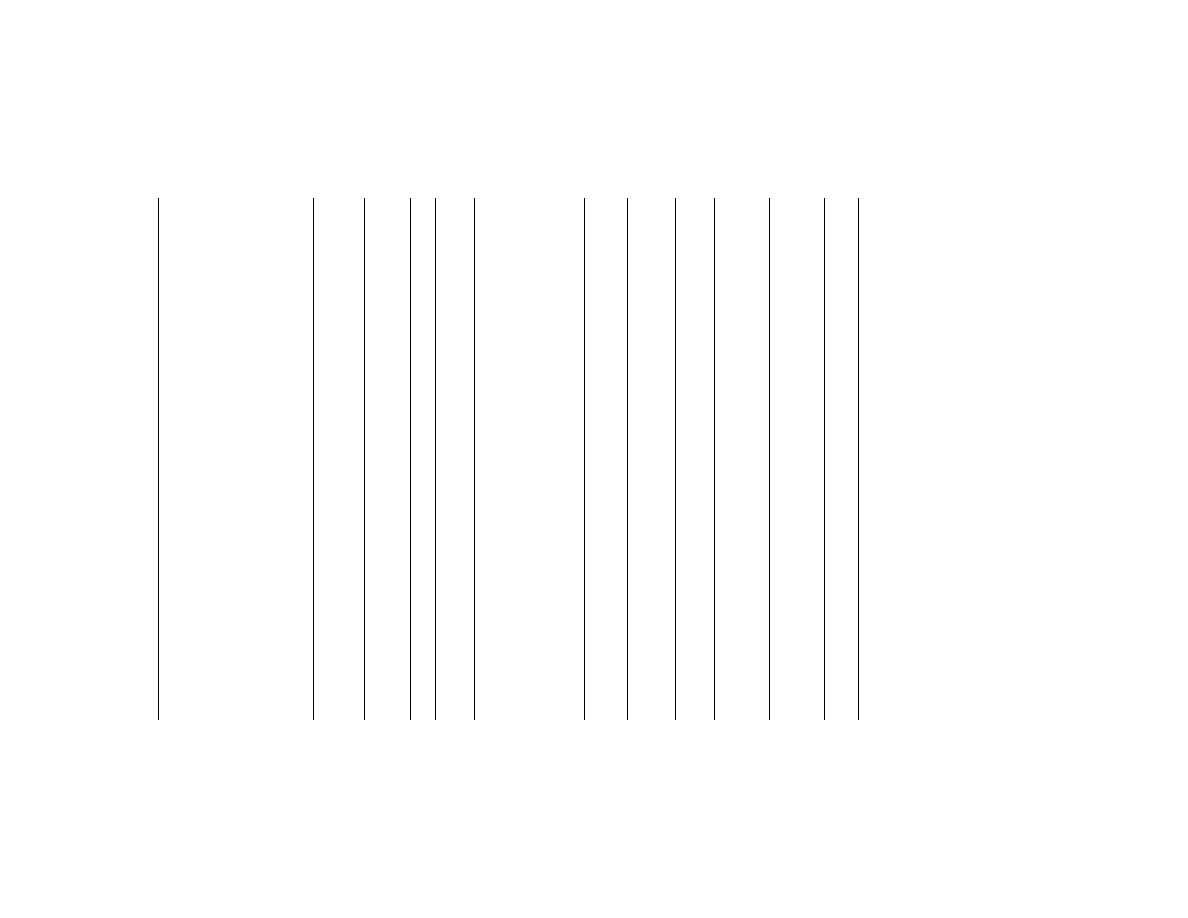
197
Pipeline and Haz. Matls. Safety Admin., DOT
§
172.101
III
8
A3, A7, B2, IB3, N34,
T4, TP2, TP24
154
203
241
5 L
60 L
B
26, 44,
89,
100,
141
G
Chlorites, inorganic, n.o.s
5.1 UN1462
II
5.1
352, A7, IB6, IP2, N34,
T3, TP33
152
212
242
5 kg
25 kg
A
56, 58
1-Chloro-1,1-difluoroethane or Re-
frigerant gas R 142b
2.1 UN2517
2.1
T50 306
304
314,
315
Forbidden
150 kg
B
40
3-Chloro-4-methylphenyl
isocyanate, liquid
6.1 UN2236
II
6.1
IB2 153
202
243
5 L
60 L
B
40
3-Chloro-4-methylphenyl
isocyanate, solid
6.1 UN3428
II
6.1
IB8, IP2, IP4, T3, TP33 153
212
242
25 kg
100 kg
B
40
1-Chloro-1,2,2,2-tetrafluoroethaneor
Refrigerant gas R 124
2.2 UN1021
2.2
T50 306
304
314,
315
75 kg
150 kg
A
4-Chloro-o-toluidine hydrochloride,
solid
6.1 UN1579
III
6.1
IB8, IP3, T1, TP33 153
213
240
100 kg
200 kg
A
4-Chloro-o-toluidine hydrochloride,
solution
6.1 UN3410
III
6.1
IB3, T4, TP1 153
203
241
60 L
220 L
A
1-Chloro-2,2,2-trifluoroethane or
Refrigerant gas R 133a
2.2 UN1983
2.2
T50 306
304
314,
315
75 kg
150 kg
A
Chloroacetic acid, molten
6.1 UN3250
II
6.1, 8
IB1, T7, TP3, TP28 None
202
243
Forbidden
Forbidden
C
40, 53,
58
Chloroacetic acid, solid
6.1 UN1751
II
6.1, 8
A3, A7, IB8, IP2, IP4,
N34, T3, TP33
153
212
242
15 kg
50 kg
C
40, 53,
58
Chloroacetic acid, solution
6.1 UN1750
II
6.1, 8
A7, IB2, N34, T7, TP2 153
202
243
1 L
30 L
C
40, 53,
58
Chloroacetone, stabilized
6.1 UN1695
I
6.1, 3,
8
2, B9, B14, B32, N12,
N32, N34, T20, TP2,
TP13, TP38, TP45
None
227
244
Forbidden
Forbidden
D
21, 40,
100
Chloroacetone (unstabilized)
Forbidden
+
Chloroacetonitrile
6.1 UN2668
I
6.1, 3
2, B9, B14, B32, IB9,
T20, TP2, TP13, TP38,
TP45
None
227
244
Forbidden
Forbidden
A
12, 25,
40, 52
Chloroacetophenone, liquid, (CN)
6.1 UN3416
II
6.1
A3, IB2, N12, N32, N33,
T7, TP2, TP13
None
202
243
Forbidden
60 L
D
12, 25,
40
Chloroacetophenone, solid, (CN)
6.1 UN1697
II
6.1
A3, IB8, IP2, IP4, N12,
N32, N33, N34, T3,
TP2, TP13, TP33
None
212
None
Forbidden
100 kg
D
12, 25,
40
Chloroacetyl chloride
6.1 UN1752
I
6.1, 8
2, B3, B8, B9, B14, B32,
B77, N34, N43, T20,
TP2, TP13, TP38, TP45
None
227
244
Forbidden
Forbidden
D
40, 53,
58
Chloroanilines, liquid
6.1 UN2019
II
6.1
IB2, T7, TP2 153
202
243
5 L
60 L
A
52
Chloroanilines, solid
6.1 UN2018
II
6.1
IB8, IP2, IP4, T3, TP33 153
212
242
25 kg
100 kg
A
Chloroanisidines
6.1 UN2233
III
6.1
IB8, IP3, T1, TP33 153
213
240
100 kg
200 kg
A
Chlorobenzene
3 UN1134
III
3
B1, IB3, T2, TP1 150
203
242
60 L
220 L
A
Chlorobenzol, see Chlorobenzene
Chlorobenzotrifluorides
3 UN2234
III
3
B1, IB3, T2, TP1 150
203
242
60 L
220 L
A
40
Chlorobenzyl chlorides, liquid
6.1 UN2235
III
6.1
IB3, T4, TP1 153
203
241
60 L
220 L
A
Chlorobenzyl chlorides, solid
6.1 UN3427
III
6.1
IB8, IP3, T1, TP33 153
213
240
100 kg
200 kg
A
Chlorobutanes
3 UN1127
II
3
IB2, T4, TP1 150
202
242
5 L
60 L
B
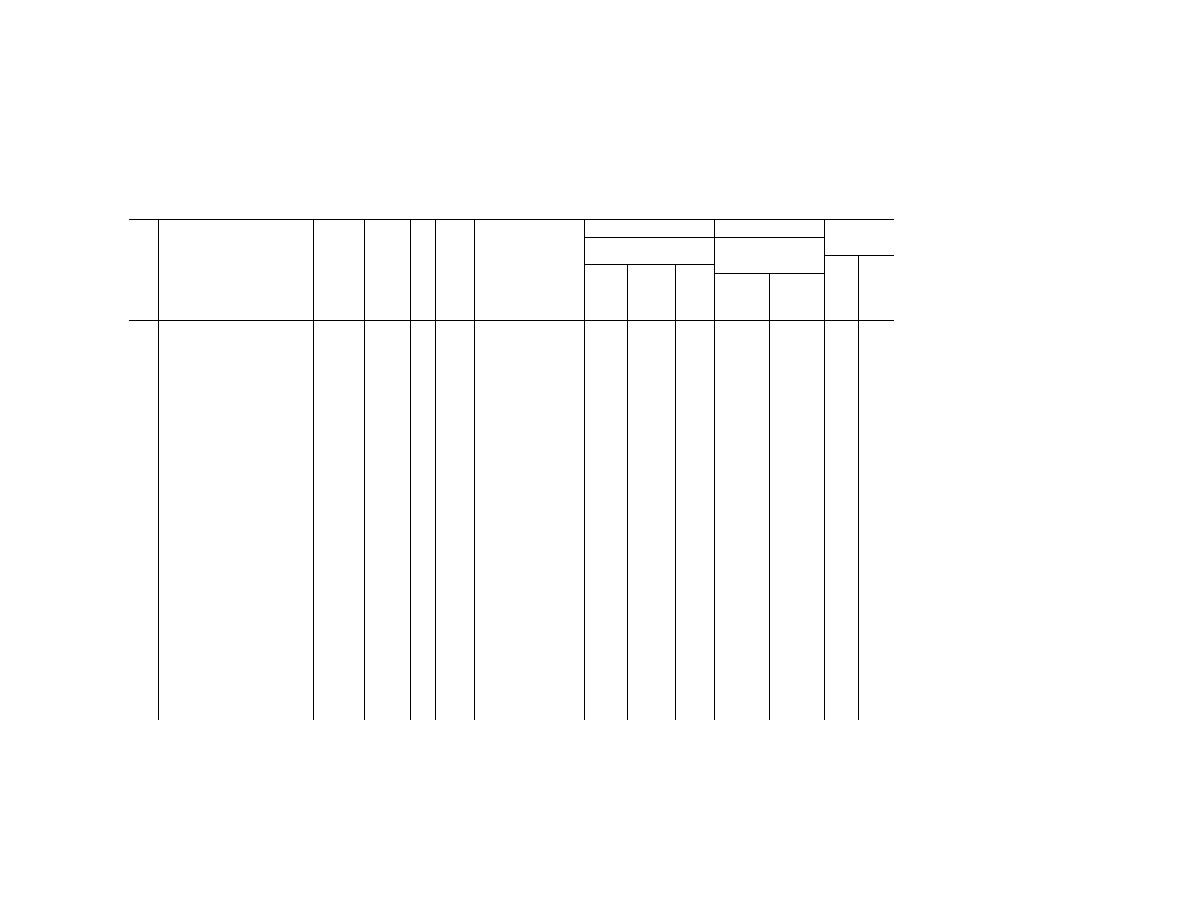
198
49 CFR Ch. I (10–1–23 Edition)
§
172.101
§ 172.101 H
AZARDOUS
M
ATERIALS
T
ABLE
—Continued
Sym-
bols
Hazardous materials descriptions
and proper shipping names
Hazard
class or
Division
Identi-
fication
Numbers
PG
Label
Codes
Special provisions
(§ 172.102)
(8)
(9)
(10)
Vessel
stowage
Packaging
(§ 173.***)
Quantity limitations
(see §§ 173.27 and
175.75)
Loca-
tion
Other
Excep-
tions
Non-bulk
Bulk
Passenger
aircraft/rail
Cargo air-
craft only
(1)
(2)
(3)
(4)
(5)
(6)
(7)
(8A)
(8B)
(8C)
(9A)
(9B)
(10A)
(10B)
Chlorocresols solution
6.1 UN2669
II
6.1
IB2, T7, TP2 153
202
243
5 L
60 L
A
12, 25
III
6.1
IB3, T7, TP2 153
203
241
60 L
220 L
A
12, 25
Chlorocresols, solid
6.1 UN3437
II
6.1
IB8, IP2, IP4, T3, TP33 153
212
242
25 kg
100 kg
A
12, 25
Chlorodifluorobromomethane or Re-
frigerant gas R 12B1
2.2 UN1974
2.2
T50 306
304
314,
315
75 kg
150 kg
A
Chlorodifluoromethane and
chloropentafluoroethane mixture
or Refrigerant gas R 502 with
fixed boiling point, with approxi-
mately 49 percent
chlorodifluoromethane
2.2 UN1973
2.2
T50 306
304
314,
315
75 kg
150 kg
A
Chlorodifluoromethane or Refrig-
erant gas R 22
2.2 UN1018
2.2
T50 306
304
314,
315
75 kg
150 kg
A
+
Chlorodinitrobenzenes, liquid.
6.1 UN1577
II
6.1
IB2, T7, TP2 153
202
243
5 L
60 L
B
91
+
Chlorodinitrobenzenes, solid
6.1 UN3441
II
6.1
IB8, IP2, IP4, T3, TP33 153
212
242
25 kg
100 kg
A
91
2-Chloroethanal
6.1 UN2232
I
6.1
2, B9, B14, B32, T20,
TP2, TP13, TP38, TP45
None
227
244
Forbidden
Forbidden
D
40
Chloroform
6.1 UN1888
III
6.1
IB3, N36, T7, TP2 153
203
241
60 L
220 L
A
40
G
Chloroformates, toxic, corrosive,
flammable, n.o.s
6.1 UN2742
II
6.1, 8,
3
5, IB1, T7, TP2 153
202
243
1 L
30 L
A
12, 13,
21, 25,
40, 53,
58,100
G
Chloroformates, toxic, corrosive,
n.o.s
6.1 UN3277
II
6.1, 8
IB2, T8, TP2, TP13,
TP28
153
202
243
1 L
30 L
A
12, 13,
25, 40,
53, 58
Chloromethyl chloroformate
6.1 UN2745
II
6.1, 8
IB2, T7, TP2, TP13 153
202
243
1 L
30 L
A
12, 13,
25, 40,
53, 58
Chloromethyl ethyl ether
3 UN2354
II
3, 6.1
IB2, T7, TP1, TP13 150
202
243
1 L
60 L
E
40
Chloronitroanilines
6.1 UN2237
III
6.1
IB8, IP3, T1, TP33 153
213
240
100 kg
200 kg
A
+
Chloronitrobenzenes, liquid
6.1 UN3409
II
6.1
IB2, T7, TP2 153
202
243
5 L
60 L
A
44, 89,
100,
141
+
Chloronitrobenzenes, solid
6.1 UN1578
II
6.1
IB8, IP2, IP4, T3, TP33 153
212
242
25 kg
100 kg
A
Chloronitrotoluenes, liquid
6.1 UN2433
III
6.1
IB3, T4, TP1 153
203
241
60 L
220 L
A
44, 89,
100,
141
Chloronitrotoluenes, solid
6.1 UN3457
III
6.1
IB8, IP3,T1, TP33 153
213
240
25 kg
200 kg
A
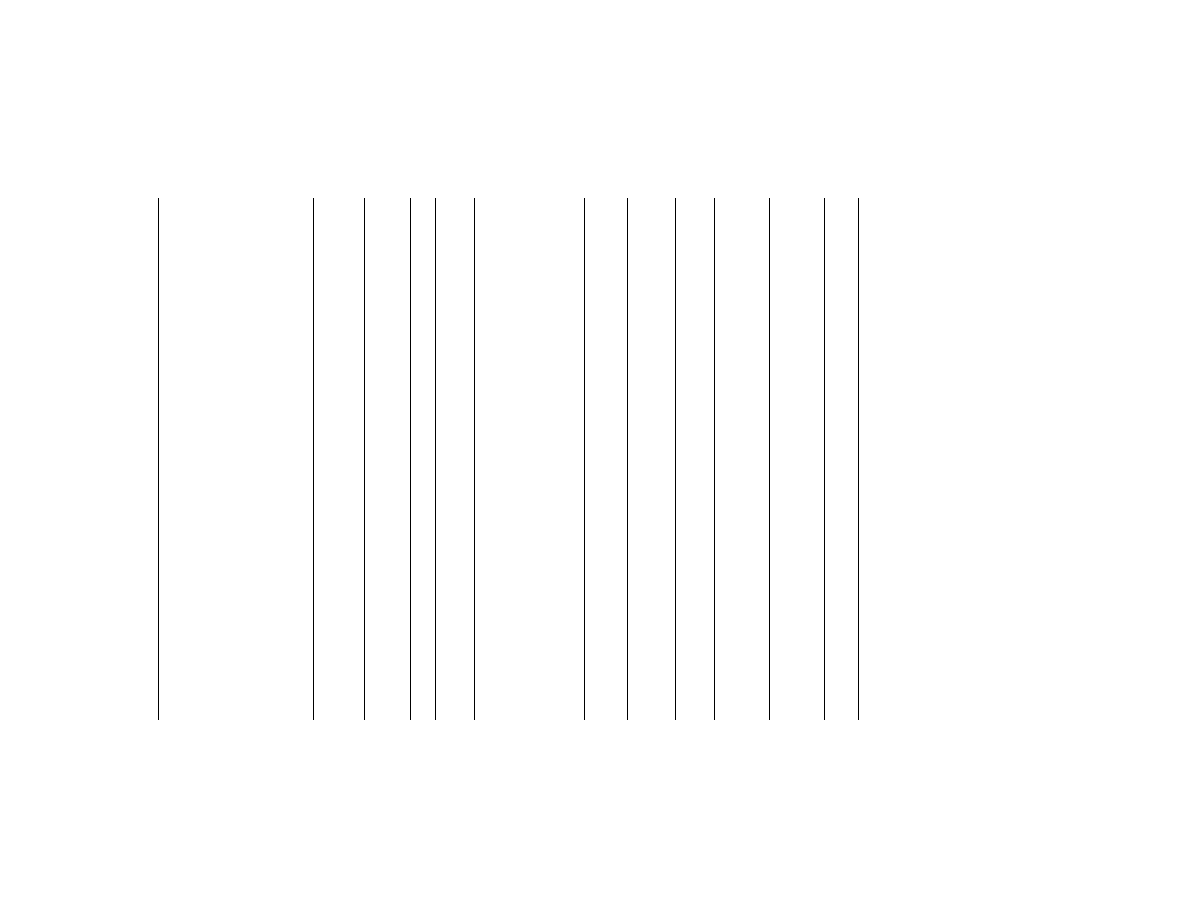
199
Pipeline and Haz. Matls. Safety Admin., DOT
§
172.101
Chloropentafluoroethane or Refrig-
erant gas R 115
2.2 UN1020
2.2
T50 306
304
314,
315
75 kg
150 kg
A
Chlorophenolates, liquid or
Phenolates, liquid
8 UN2904
III
8
IB3 154
203
241
5 L
60 L
A
Chlorophenolates, solid or
Phenolates, solid
8 UN2905
III
8
IB8, IP3, T1, TP33 154
213
240
25 kg
100 kg
A
Chlorophenols, liquid
6.1 UN2021
III
6.1
IB3, T4, TP1 153
203
241
60 L
220 L
A
Chlorophenols, solid
6.1 UN2020
III
6.1
IB8, IP3, T1, TP1, TP33 153
213
240
100 kg
200 kg
A
Chlorophenyltrichlorosilane
8 UN1753
II
8
A7, B2, B6, N34, T10,
TP2, TP7
None
206
242
Forbidden
30 L
C
40, 53,
58
+
Chloropicrin
6.1 UN1580
I
6.1
2, B7, B9, B14, B32,
B46, T22, TP2, TP13,
TP38, TP45
None
227
244
Forbidden
Forbidden
D
40
Chloropicrin and methyl bromide
mixtures
2.3 UN1581
2.3
2, B9, B14, N86, T50 None
193
314,
315
Forbidden
Forbidden
D
25, 40
Chloropicrin and methyl chloride
mixtures
2.3 UN1582
2.3
2, N86, T50 None
193
245
Forbidden
Forbidden
D
25, 40
Chloropicrin mixture, flammable
(pressure not exceeding 14.7
psia at 115 degrees F flash point
below 100 degrees F) see Toxic
liquids, flammable, etc
G
Chloropicrin mixtures, n.o.s
6.1 UN1583
I
6.1
5 None
201
243
Forbidden
Forbidden
C
40
II
6.1
IB2 153
202
243
Forbidden
Forbidden
C
40
III
6.1
IB3 153
203
241
Forbidden
Forbidden
C
40
D
Chloropivaloyl chloride
6.1 NA9263
I
6.1, 8
2, B9, B14, B32, T20,
TP4, TP13, TP38, TP45
None
227
244
Forbidden
Forbidden
B
40
Chloroplatinic acid, solid
8 UN2507
III
8
IB8, IP3, T1, TP33 154
213
240
25 kg
100 kg
A
53, 58
Chloroprene, stabilized
3 UN1991
I
3, 6.1
387, B57, T14, TP2,
TP13
None
201
243
Forbidden
30 L
D
25, 40
Chloroprene, uninhibited
Forbidden
1-Chloropropane
3 UN1278
II
3
IB2, IP8, N34, T7, TP2 150
202
242
Forbidden
60 L
E
2-Chloropropane
3 UN2356
I
3
N36, T11, TP2, TP13 150
201
243
1 L
30 L
E
3-Chloropropanol-1
6.1 UN2849
III
6.1
IB3, T4, TP1 153
203
241
60 L
220 L
A
2-Chloropropene
3 UN2456
I
3
N36, T11, TP2 150
201
243
1 L
30 L
E
2-Chloropropionic acid
8 UN2511
III
8
IB3, T4, TP2 154
203
241
5 L
60 L
A
8, 53,
58
2-Chloropyridine
6.1 UN2822
II
6.1
IB2, T7, TP2 153
202
243
5 L
60 L
A
40
Chlorosilanes, corrosive, flammable,
n.o.s
8 UN2986
II
8, 3
T14, TP2, TP7, TP13,
TP27
None
206
243
Forbidden
30 L
C
40, 53,
58
Chlorosilanes, corrosive, n.o.s
8 UN2987
II
8
B2, T14, TP2, TP7,
TP13, TP27
None
206
242
Forbidden
30 L
C
40, 53,
58
Chlorosilanes, flammable, corrosive,
n.o.s
3 UN2985
II
3, 8
T14, TP2, TP7, TP13,
TP27
None
206
243
Forbidden
5 L
B
40, 53,
58
G
Chlorosilanes, toxic, corrosive, flam-
mable, n.o.s
6.1 UN3362
II
6.1, 8,
3
T14, TP2, TP7, TP13,
TP27
None
206
243
Forbidden
30 L
C
40, 53,
58, 125
G
Chlorosilanes, toxic, corrosive, n.o.s
6.1 UN3361
II
6.1, 8
T14, TP2, TP7, TP13,
TP27
None
206
243
Forbidden
30 L
C
40, 53,
58
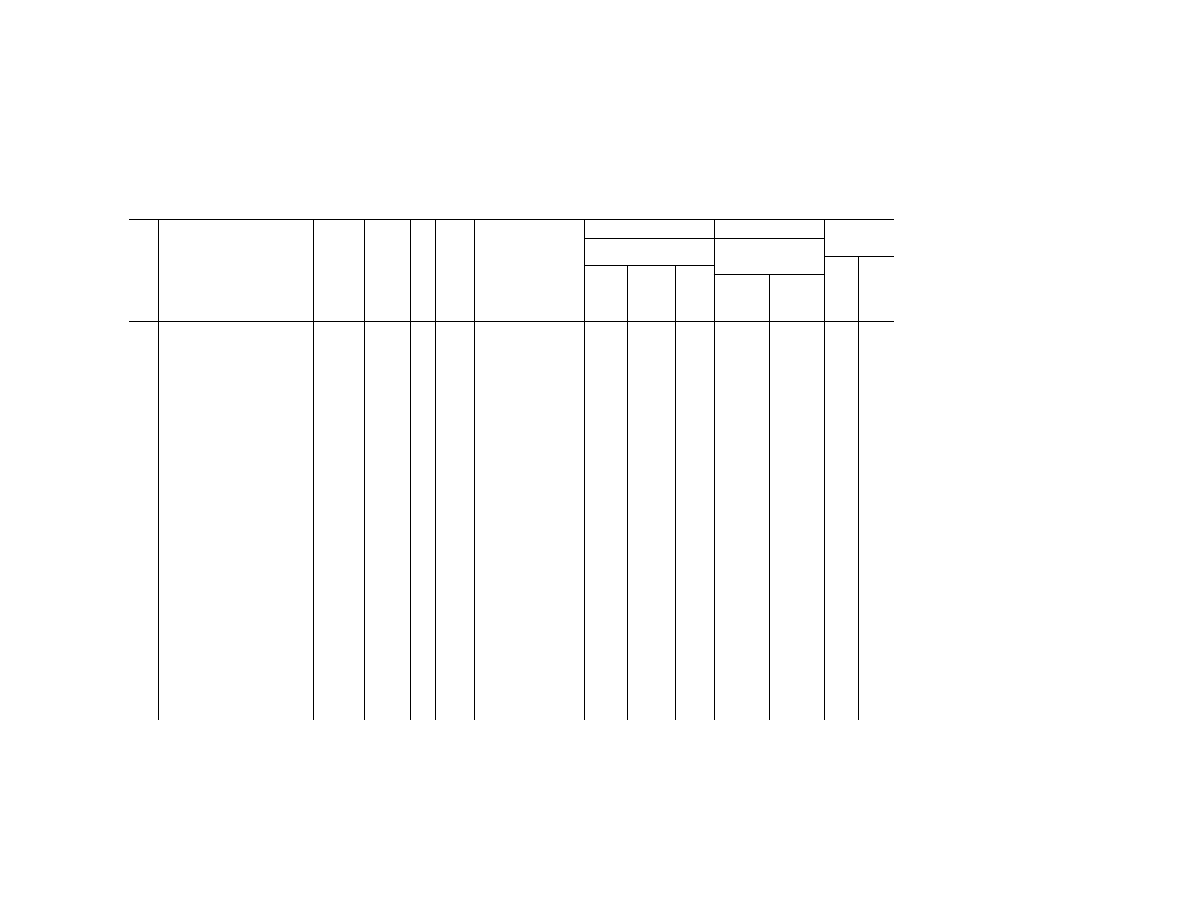
200
49 CFR Ch. I (10–1–23 Edition)
§
172.101
§ 172.101 H
AZARDOUS
M
ATERIALS
T
ABLE
—Continued
Sym-
bols
Hazardous materials descriptions
and proper shipping names
Hazard
class or
Division
Identi-
fication
Numbers
PG
Label
Codes
Special provisions
(§ 172.102)
(8)
(9)
(10)
Vessel
stowage
Packaging
(§ 173.***)
Quantity limitations
(see §§ 173.27 and
175.75)
Loca-
tion
Other
Excep-
tions
Non-bulk
Bulk
Passenger
aircraft/rail
Cargo air-
craft only
(1)
(2)
(3)
(4)
(5)
(6)
(7)
(8A)
(8B)
(8C)
(9A)
(9B)
(10A)
(10B)
Chlorosilanes, water-reactive, flam-
mable, corrosive, n.o.s
4.3 UN2988
I
4.3, 3,
8
A2, T14, TP2, TP7,
TP13, W31
None
201
244
Forbidden
1 L
D
13, 21,
40, 49,
53, 58,
100,
147,
148
+
Chlorosulfonic acid (with or without
sulfur trioxide)
8 UN1754
I
8, 6.1
2, B9, B10, B14, B32,
T20, TP2, TP38, TP45
None
227
244
Forbidden
Forbidden
C
40, 53,
58
Chlorotoluenes
3 UN2238
III
3
B1, IB3, T2, TP1 150
203
242
60 L
220 L
A
Chlorotoluidines, liquid
6.1 UN3429
III
6.1
IB3, T4, TP1 153
203
241
60 L
220 L
A
Chlorotoluidines, solid
6.1 UN2239
III
6.1
IB8, IP3, T1, TP33 153
213
240
100 kg
200 kg
A
Chlorotrifluoromethane and
trifluoromethane azeotropic mix-
ture or Refrigerant gas R 503
with approximately 60 percent
chlorotrifluoromethane
2.2 UN2599
2.2
306
304
314,
315
75 kg
150 kg
A
Chlorotrifluoromethane or Refrig-
erant gas R 13
2.2 UN1022
2.2
306
304
314,
315
75 kg
150 kg
A
Chromic acid solution
8 UN1755
II
8
B2, IB2, T8, TP2 154
202
242
1 L
30 L
C
40, 44,
53, 58,
89,
100,
141
III
8
IB3, T4, TP1 154
203
241
5 L
60 L
C
40, 44,
53, 58,
89,
100,
141
Chromic anhydride, see Chromium
trioxide, anhydrous
Chromic fluoride, solid
8 UN1756
II
8
IB8, IP2, IP4, T3, TP33 154
212
240
15 kg
50 kg
A
52, 53,
58
Chromic fluoride, solution
8 UN1757
II
8
B2, IB2, T7, TP2 154
202
242
1 L
30 L
A
53, 58
III
8
IB3, T4, TP1 154
203
241
5 L
60 L
A
53, 58
III
8
IB3, T4, TP1 154
203
241
5 L
60 L
A
Chromium nitrate
5.1 UN2720
III
5.1
A1, A29, IB8, IP3, T1,
TP33
152
213
240
25 kg
100 kg
A

201
Pipeline and Haz. Matls. Safety Admin., DOT
§
172.101
Chromium oxychloride
8 UN1758
I
8
A7, B10, N34, T10, TP2 None
201
243
0.5 L
2.5 L
C
40, 53,
58, 66,
74, 89,
90
Chromium trioxide, anhydrous
5.1 UN1463
II
5.1,
6.1,
8
IB8, IP2, IP4, T3, TP33,
W31
152
212
242
5 kg
25 kg
A
66, 90
Chromosulfuric acid
8 UN2240
I
8
A7, B4, B6, N34, T10,
TP2, TP13
None
201
243
0.5 L
2.5 L
B
40, 53,
58, 66,
74, 89,
90
Chromyl chloride, see Chromium
oxychloride
Cigar and cigarette lighters,
charged with fuel, see Lighters or
Lighter refills containing flam-
mable gas.
Coal briquettes, hot
Forbidden
Coal gas, compressed
2.3 UN1023
2.3,
2.1
3 None
302
314,
315
Forbidden
Forbidden
D
40
Coal tar distillates, flammable
3 UN1136
II
3
IB2, T4, TP1 150
202
242
5 L
60 L
B
III
3
B1, IB3, T4, TP1, TP29 150
203
242
60 L
220 L
A
Coal tar dye, corrosive, liquid, n.o.s,
see Dyes, liquid or solid, n.o.s. or
Dye intermediates, liquid or solid,
corrosive, n.o.s.
Coating solution (includes surface
treatments or coatings used for
industrial or other purposes such
as vehicle undercoating, drum or
barrel lining)
3 UN1139
I
3
T11, TP1, TP8, TP27 150
201
243
1 L
30 L
E
II
3
149, 383, IB2, T4, TP1,
TP8
150
202
242
5 L
60 L
B
III
3
B1, IB3, T2, TP1 150
203
242
60 L
220 L
A
Cobalt naphthenates, powder
4.1 UN2001
III
4.1
A19, IB8, IP3, T1, TP33 151
213
240
25 kg
100 kg
A
Cobalt resinate, precipitated
4.1 UN1318
III
4.1
A1, A19, IB6, T1, TP33 151
213
240
25 kg
100 kg
A
Coke, hot
Forbidden
Collodion, see Nitrocellulose etc
D G
Combustible liquid, n.o.s.
Comb liq NA1993
III
None
148, IB3, T1, TP1 150
203
241
60 L
220 L
A
............
G
Components, explosive train, n.o.s.
1.2B UN0382
......
1.2B
101 None
62
None
Forbidden
Forbidden
05
25
G
Components, explosive train, n.o.s.
1.4B UN0383
......
1.4B
101 None
62
None
Forbidden
75 kg
05
25
G
Components, explosive train, n.o.s
1.4S UN0384
......
1.4S
101, 347 None
62
None
25 kg
100 kg
01
25
G
Components, explosive train, n.o.s.
1.1B UN0461
......
1.1B
101 None
62
None
Forbidden
Forbidden
05
25
Composition B, see Hexolite, etc
D G
Compounds, cleaning liquid
8 NA1760
I
8
A7, B10, T14, TP2,
TP27
None
201
243
0.5 L
2.5 L
B
40
II
8
386, B2, IB2, N37, T11,
TP2, TP27
154
202
242
1 L
30 L
B
40
III
8
386, IB3, N37, T7, TP1,
TP28
154
203
241
5 L
60 L
A
40
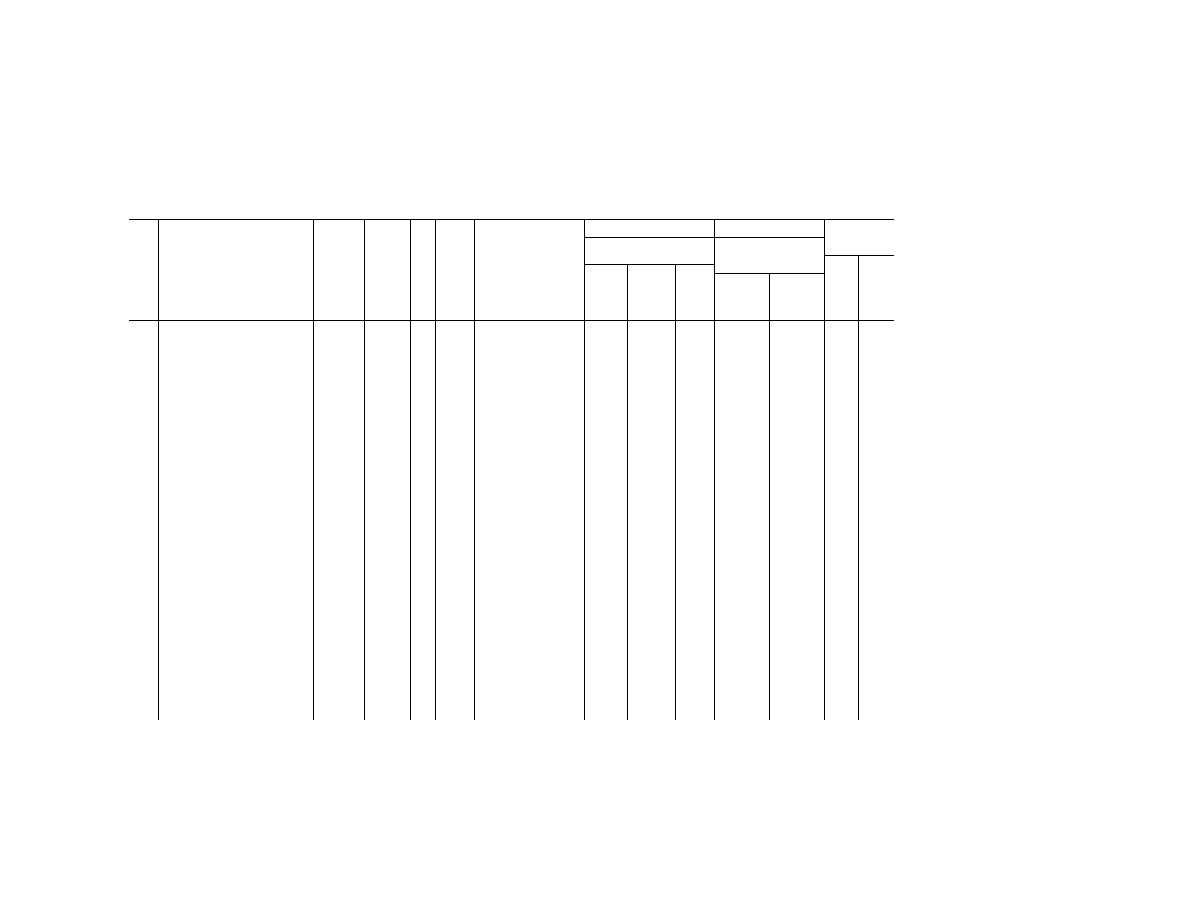
202
49 CFR Ch. I (10–1–23 Edition)
§
172.101
§ 172.101 H
AZARDOUS
M
ATERIALS
T
ABLE
—Continued
Sym-
bols
Hazardous materials descriptions
and proper shipping names
Hazard
class or
Division
Identi-
fication
Numbers
PG
Label
Codes
Special provisions
(§ 172.102)
(8)
(9)
(10)
Vessel
stowage
Packaging
(§ 173.***)
Quantity limitations
(see §§ 173.27 and
175.75)
Loca-
tion
Other
Excep-
tions
Non-bulk
Bulk
Passenger
aircraft/rail
Cargo air-
craft only
(1)
(2)
(3)
(4)
(5)
(6)
(7)
(8A)
(8B)
(8C)
(9A)
(9B)
(10A)
(10B)
D G
Compounds, cleaning liquid
3 NA1993
I
3
T11, TP1 150
201
243
1 L
30 L
E
II
3
IB2, T7, TP1, TP8, TP28 150
202
242
5 L
60 L
B
III
3
B1, B52, IB3, T4, TP1,
TP29
150
203
242
60 L
220 L
A
D G
Compounds, tree killing, liquid or
Compounds, weed killing, liquid
8 NA1760
I
8
A7, B10, T14, TP2,
TP27
None
201
243
0.5 L
2.5 L
B
40
II
8
B2, IB2, N37, T11, TP2,
TP27
154
202
242
1 L
30 L
B
40
III
8
IB3, N37, T7, TP1, TP28 154
203
241
5 L
60 L
A
40
D G
Compounds, tree killing, liquid or
Compounds, weed killing, liquid
3 NA1993
I
3
T11, TP1 150
201
243
1 L
30 L
E
II
3
IB2, T7, TP1, TP8, TP28 150
202
242
5 L
60 L
B
III
3
B1, B52, IB3, T4, TP1,
TP29
150
203
242
60 L
220 L
A
D G
Compounds, tree killing, liquid or
Compounds, weed killing, liquid
6.1 NA2810
I
6.1
T14, TP2, TP13, TP27 None
201
243
1 L
30 L
B
40
II
6.1
IB2, T11, TP2, TP27 153
202
243
5 L
60 L
B
40
III
6.1
IB3, T7, TP1, TP28 153
203
241
60 L
220 L
A
40
G
Compressed gas, flammable, n.o.s.
2.1 UN1954
2.1
306
302, 305
314,
315
Forbidden
150 kg
D
40
G
Compressed gas, n.o.s
2.2 UN1956
2.2
306,
307
302, 305
314,
315
75 kg
150 kg
A
G
Compressed gas, oxidizing, n.o.s.
2.2 UN3156
2.2,
5.1
A14 306
302
314,
315
75 kg
150 kg
D
G I
Compressed gas, toxic, corrosive,
n.o.s. Inhalation Hazard Zone A
2.3 UN3304
2.3, 8
1 None
192
245
Forbidden
Forbidden
D
40
G I
Compressed gas, toxic, corrosive,
n.o.s. Inhalation Hazard Zone B
2.3 UN3304
2.3, 8
2, B9, B14 None
302, 305
314,
315
Forbidden
Forbidden
D
40
G I
Compressed gas, toxic, corrosive,
n.o.s. Inhalation Hazard Zone C
2.3 UN3304
2.3, 8
3, B14 None
302, 305
314,
315
Forbidden
Forbidden
D
40
G I
Compressed gas, toxic, corrosive,
n.o.s. Inhalation Hazard Zone D
2.3 UN3304
2.3, 8
4 None
302, 305
314,
315
Forbidden
Forbidden
D
40
G I
Compressed gas, toxic, flammable,
corrosive, n.o.s. Inhalation Haz-
ard Zone A
2.3 UN3305
2.3,
2.1,
8
1 None
192
245
Forbidden
Forbidden
D
17, 40
G I
Compressed gas, toxic, flammable,
corrosive, n.o.s. Inhalation Haz-
ard Zone B
2.3 UN3305
2.3,
2.1,
8
2, B9, B14 None
302, 305
314,
315
Forbidden
Forbidden
D
17, 40
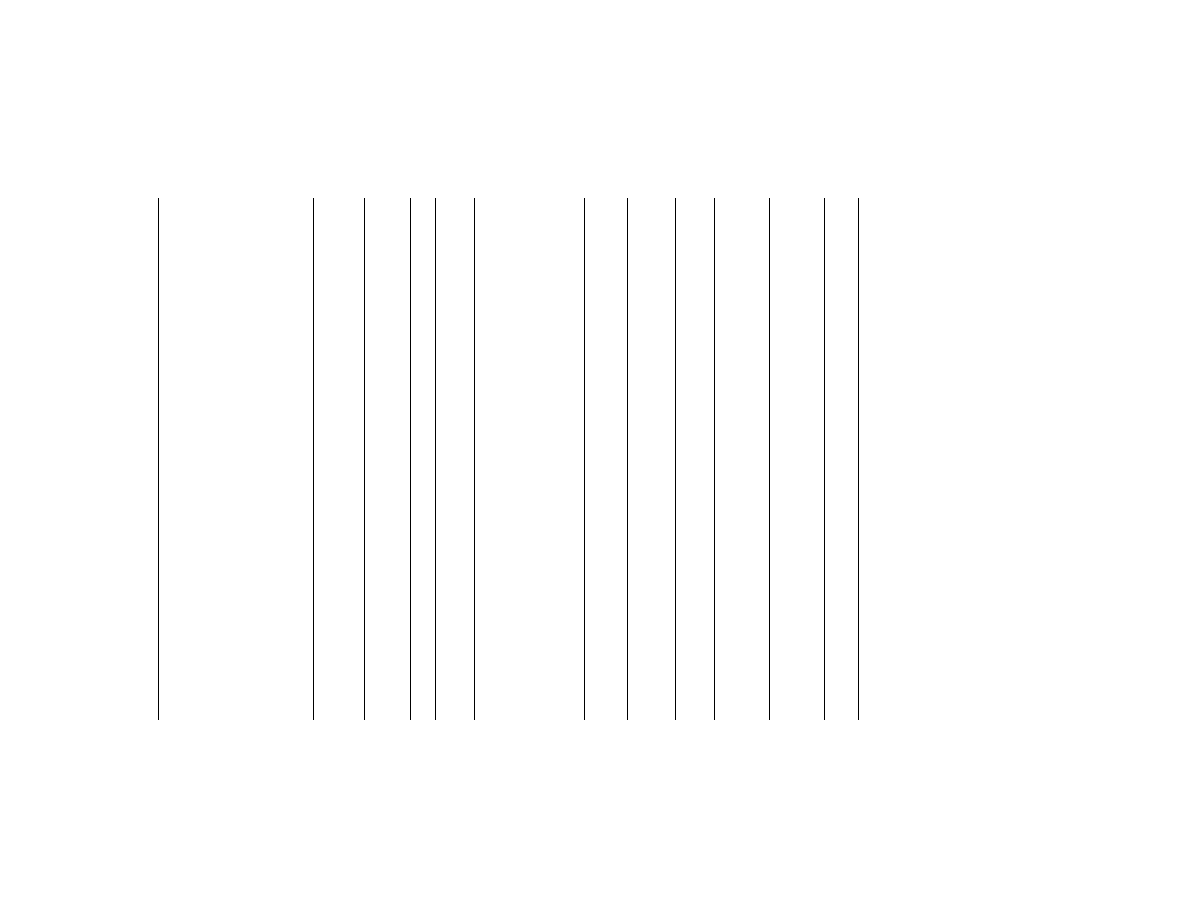
203
Pipeline and Haz. Matls. Safety Admin., DOT
§
172.101
G I
Compressed gas, toxic, flammable,
corrosive, n.o.s. Inhalation Haz-
ard Zone C
2.3 UN3305
2.3,
2.1,
8
3, B14 None
302, 305
314,
315
Forbidden
Forbidden
D
17, 40
G I
Compressed gas, toxic, flammable,
corrosive, n.o.s. Inhalation Haz-
ard Zone D
2.3 UN3305
2.3,
2.1,
8
4 None
302, 305
314,
315
Forbidden
Forbidden
D
17, 40
G
Compressed gas, toxic, flammable,
n.o.s. Inhalation hazard Zone A
2.3 UN1953
2.3,
2.1
1 None
192
245
Forbidden
Forbidden
D
40
G
Compressed gas, toxic, flammable,
n.o.s. Inhalation hazard Zone B
2.3 UN1953
2.3,
2.1
2, B9, B14 None
302, 305
314,
315
Forbidden
Forbidden
D
40
G
Compressed gas, toxic, flammable,
n.o.s. Inhalation Hazard Zone C
2.3 UN1953
2.3,
2.1
3, B14 None
302, 305
314,
315
Forbidden
Forbidden
D
40
G
Compressed gas, toxic, flammable,
n.o.s. Inhalation Hazard Zone D
2.3 UN1953
2.3,
2.1
4 None
302, 305
314,
315
Forbidden
Forbidden
D
40
G
Compressed gas, toxic, n.o.s. Inha-
lation Hazard Zone A
2.3 UN1955
2.3
1 None
192
245
Forbidden
Forbidden
D
40
G
Compressed gas, toxic, n.o.s. Inha-
lation Hazard Zone B
2.3 UN1955
2.3
2, B9, B14 None
302, 305
314,
315
Forbidden
Forbidden
D
40
G
Compressed gas, toxic, n.o.s. Inha-
lation Hazard Zone C
2.3 UN1955
2.3
3, B14 None
302, 305
314,
315
Forbidden
Forbidden
D
40
G
Compressed gas, toxic, n.o.s. Inha-
lation Hazard Zone D
2.3 UN1955
2.3
4 None
302, 305
314,
315
Forbidden
Forbidden
D
40
G I
Compressed gas, toxic, oxdizing,
corrosive, n.o.s. Inhalation Haz-
ard Zone A
2.3 UN3306
2.3,
5.1,
8
1 None
192
244
Forbidden
Forbidden
D
40, 89,
90
G I
Compressed gas, toxic, oxidizing,
corrosive, n.o.s. Inhalation Haz-
ard Zone B
2.3 UN3306
2.3,
5.1,
8
2, B9, B14 None
302, 305
314,
315
Forbidden
Forbidden
D
40, 89,
90
G I
Compressed gas, toxic, oxidizing,
corrosive, n.o.s. Inhalation Haz-
ard Zone C
2.3 UN3306
2.3,
5.1,
8
3, B14 None
302, 305
314,
315
Forbidden
Forbidden
D
40, 89,
90
G I
Compressed gas, toxic, oxidizing,
corrosive, n.o.s. Inhalation Haz-
ard Zone D
2.3 UN3306
2.3,
5.1,
8
4 None
302, 305
314,
315
Forbidden
Forbidden
D
40, 89,
90
G
Compressed gas, toxic, oxidizing,
n.o.s. Inhalation Hazard Zone A
2.3 UN3303
2.3,
5.1
1 None
192
245
Forbidden
Forbidden
D
40
G
Compressed gas, toxic, oxidizing,
n.o.s. Inhalation Hazard Zone B
2.3 UN3303
2.3,
5.1
2, B9, B14 None
302, 305
314,
315
Forbidden
Forbidden
D
40
G
Compressed gas, toxic, oxidizing,
n.o.s. Inhalation Hazard Zone C
2.3 UN3303
2.3,
5.1
3, B14 None
302, 305
314,
315
Forbidden
Forbidden
D
40
G
Compressed gas, toxic, oxidizing,
n.o.s. Inhalation Hazard Zone D
2.3 UN3303
2.3,
5.1
4 None
302, 305
314,
315
Forbidden
Forbidden
D
40
Consumer commodity
9 ID8000
9
167
167
None
30 kg
gross
30 kg
gross
G
Contrivances, water-activated, with
burster, expelling charge or pro-
pelling charge
1.2L UN0248
......
1.2L
........................................
None
62
None
Forbidden
Forbidden
05
25,
14E,
15E,
17E
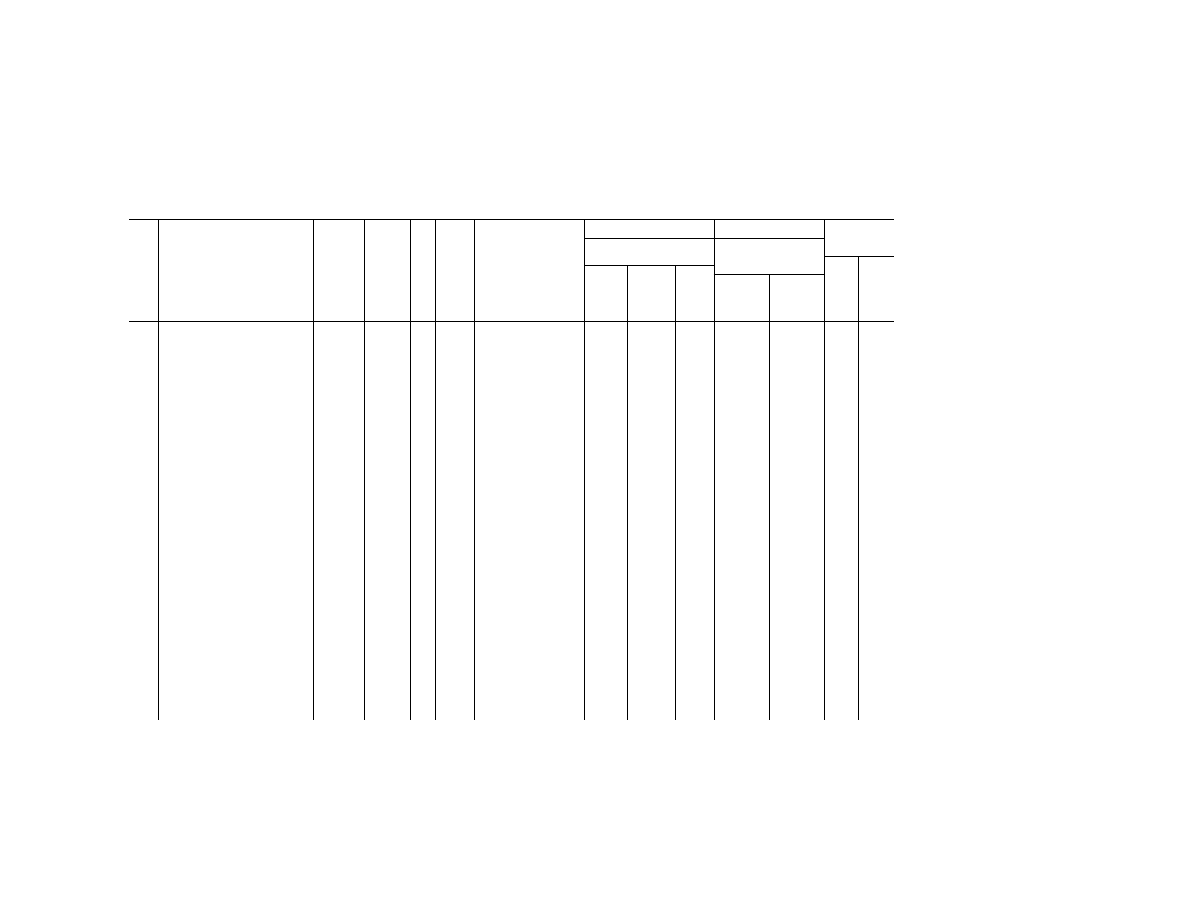
204
49 CFR Ch. I (10–1–23 Edition)
§
172.101
§ 172.101 H
AZARDOUS
M
ATERIALS
T
ABLE
—Continued
Sym-
bols
Hazardous materials descriptions
and proper shipping names
Hazard
class or
Division
Identi-
fication
Numbers
PG
Label
Codes
Special provisions
(§ 172.102)
(8)
(9)
(10)
Vessel
stowage
Packaging
(§ 173.***)
Quantity limitations
(see §§ 173.27 and
175.75)
Loca-
tion
Other
Excep-
tions
Non-bulk
Bulk
Passenger
aircraft/rail
Cargo air-
craft only
(1)
(2)
(3)
(4)
(5)
(6)
(7)
(8A)
(8B)
(8C)
(9A)
(9B)
(10A)
(10B)
G
Contrivances, water-activated, with
burster, expelling charge or pro-
pelling charge
1.3L UN0249
......
1.3L
........................................
None
62
None
Forbidden
Forbidden
05
25,
14E,
15E,
17E
Copper acetoarsenite
6.1 UN1585
II
6.1
IB8, IP2, IP4, T3, TP33 153
212
242
25 kg
100 kg
A
Copper acetylide
Forbidden
Copper amine azide
Forbidden
Copper arsenite
6.1 UN1586
II
6.1
IB8, IP2, IP4, T3, TP33 153
212
242
25 kg
100 kg
A
Copper based pesticides, liquid,
flammable, toxic, flash point less
than 23 degrees C
3 UN2776
I
3, 6.1
T14, TP2, TP13, TP27 None
201
243
Forbidden
30 L
B
40
II
3, 6.1
IB2, T11, TP2, TP13,
TP27
150
202
243
1 L
60 L
B
40
Copper based pesticides, liquid,
toxic
6.1 UN3010
I
6.1
T14, TP2, TP13, TP27 None
201
243
1 L
30 L
B
40
II
6.1
IB2, T11, TP2, TP13,
TP27
153
202
243
5 L
60 L
B
40
III
6.1
IB3, T7, TP2, TP28 153
203
241
60 L
220 L
A
40
Copper based pesticides, liquid,
toxic, flammable, flash point not
less than 23 degrees C
6.1 UN3009
I
6.1, 3
T14, TP2, TP13, TP27 None
201
243
1 L
30 L
B
40
II
6.1, 3
IB2, T11, TP2, TP13,
TP27
153
202
243
5 L
60 L
B
40
III
6.1, 3
B1, IB3, T7, TP2, TP28 153
203
242
60 L
220 L
A
40
Copper based pesticides, solid,
toxic
6.1 UN2775
I
6.1
IB7, IP1, T6, TP33 None
211
242
5 kg
50 kg
A
40
II
6.1
IB8, IP2, IP4, T3, TP33 153
212
242
25 kg
100 kg
A
40
III
6.1
IB8, IP3, T1, TP33 153
213
240
100 kg
200 kg
A
40
Copper chlorate
5.1 UN2721
II
5.1
A1, IB8, IP2, IP4, T3,
TP33
152
212
242
5 kg
25 kg
A
56, 58
Copper chloride
8 UN2802
III
8
IB8, IP3, T1, TP33 154
213
240
25 kg
100 kg
A
53, 58
Copper cyanide
6.1 UN1587
II
6.1
IB8, IP2, IP4, T3, TP33 153
204
242
25 kg
100 kg
A
52
Copper selenate, see Selenates or
Selenites
Copper selenite, see Selenates or
Selenites
Copper tetramine nitrate
Forbidden
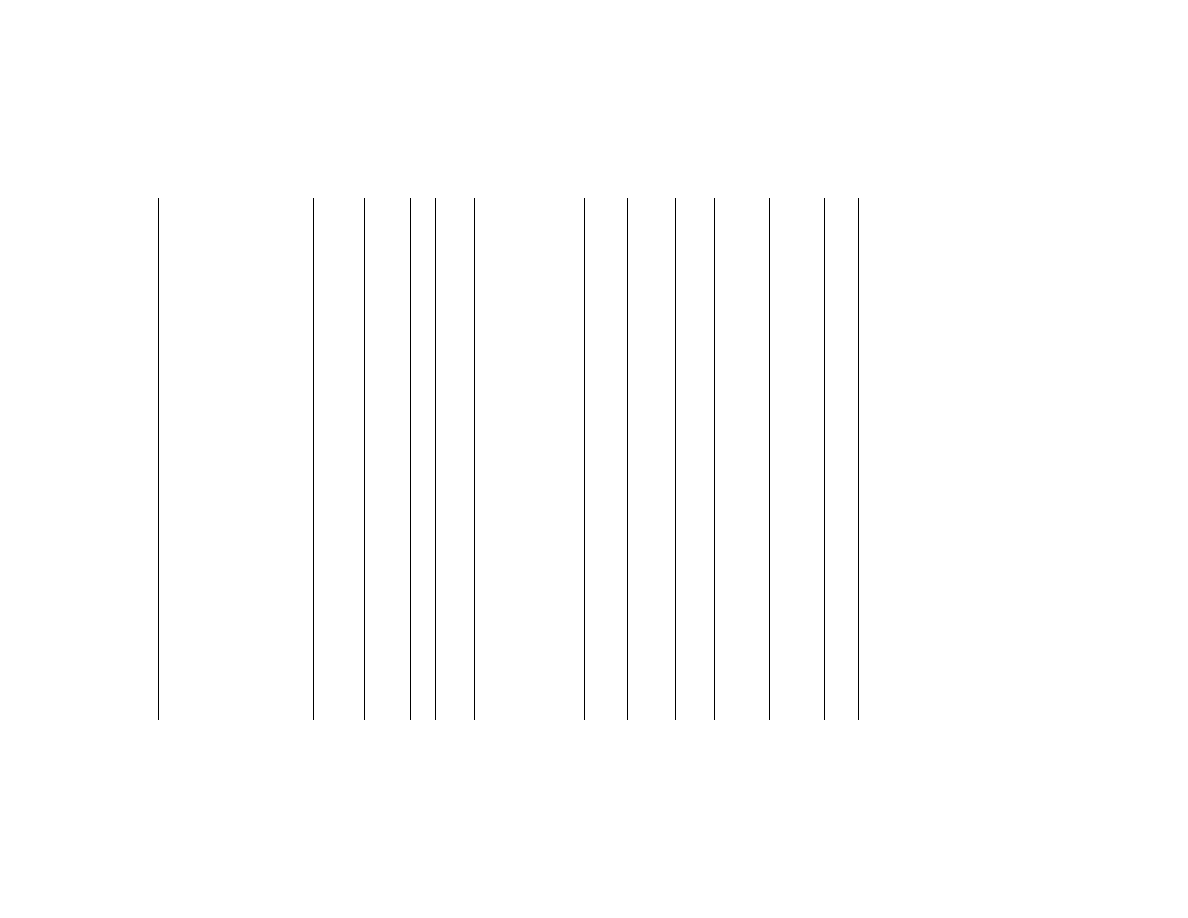
205
Pipeline and Haz. Matls. Safety Admin., DOT
§
172.101
A,W
Copra
4.2 UN1363
III
4.2
B136, IB8, IP3, IP7 None
213
241
Forbidden
Forbidden
A
13, 25,
119
Cord, detonating, flexible
1.1D UN0065
......
1.1D
102, 148 63(a)
62
None
Forbidden
Forbidden
03
25
Cord, detonating, flexible
1.4D UN0289
......
1.4D
148 None
62
None
Forbidden
75 kg
02
25
Cord, detonating or Fuze, deto-
nating metal clad
1.2D UN0102
......
1.2D
........................................
None
62
None
Forbidden
Forbidden
03
25
Cord, detonating or Fuze, deto-
nating metal clad
1.1D UN0290
......
1.1D
........................................
None
62
None
Forbidden
Forbidden
03
25
Cord, detonating, mild effect or
Fuse, detonating, mild effect
metal clad
1.4D UN0104
......
1.4D
........................................
None
62
None
Forbidden
75 kg
02
25
Cord, igniter
1.4G UN0066
......
1.4G
........................................
None
62
None
Forbidden
75 kg
02
25
Cordeau detonant fuse, see Cord,
detonating, etc; Cord, detonating,
flexible
Cordite, see Powder, smokeless
G
Corrosive liquid, acidic, inorganic,
n.o.s
8 UN3264
I
8
B10, T14, TP2, TP27 None
201
243
0.5 L
2.5 L
B
40, 53,
58
II
8
386, B2, IB2, T11, TP2,
TP27
154
202
242
1 L
30 L
B
40, 53,
58
III
8
IB3, T7, TP1, TP28 154
203
241
5 L
60 L
A
40, 53,
58
G
Corrosive liquid, acidic, organic,
n.o.s
8 UN3265
I
8
B10, T14, TP2, TP27 None
201
243
0.5 L
2.5 L
B
40, 53,
58
II
8
148, B2, IB2, T11, TP2,
TP27
154
202
242
1 L
30 L
B
40, 53,
58
III
8
386, IB3, T7, TP1, TP28 154
203
241
5 L
60 L
A
40, 53,
58
G
Corrosive liquid, basic, inorganic,
n.o.s
8 UN3266
I
8
T14, TP2, TP27 None
201
243
0.5 L
2.5 L
B
40, 52
II
8
386, B2, IB2, T11, TP2,
TP27
154
202
242
1 L
30 L
B
40, 52
III
8
IB3, T7, TP1, TP28 154
203
241
5 L
60 L
A
40, 52
G
Corrosive liquid, basic, organic,
n.o.s
8 UN3267
I
8
B10, T14, TP2, TP27 None
201
243
0.5 L
2.5 L
B
40, 52
II
8
B2, IB2, T11, TP2, TP27 154
202
242
1 L
30 L
B
40, 52
III
8
IB3, T7, TP1, TP28 154
203
241
5 L
60 L
A
40, 52
G
Corrosive liquid, self-heating, n.o.s
8 UN3301
I
8, 4.2
B10 None
201
243
0.5 L
2.5 L
D
II
8, 4.2
B2, IB1 154
202
242
1 L
30 L
D
G
Corrosive liquids, flammable, n.o.s.
8 UN2920
I
8, 3
B10, T14, TP2, TP27 None
201
243
0.5 L
2.5 L
C
25, 40
II
8, 3
B2, IB2, T11, TP2, TP27 154
202
243
1 L
30 L
C
25, 40
G
Corrosive liquids, n.o.s
8 UN1760
I
8
A7, B10, T14, TP2,
TP27
None
201
243
0.5 L
2.5 L
B
40
II
8
B2, IB2, T11, TP2, TP27 154
202
242
1 L
30 L
B
40
III
8
IB3, T7, TP1, TP28 154
203
241
5 L
60 L
A
40
G
Corrosive liquids, oxidizing, n.o.s.
8 UN3093
I
8, 5.1
A7 None
201
243
Forbidden
2.5 L
C
89
II
8, 5.1
A7, IB2 154
202
243
1 L
30 L
C
89
G
Corrosive liquids, toxic, n.o.s
8 UN2922
I
8, 6.1
A7, B10, T14, TP2,
TP13, TP27
None
201
243
0.5 L
2.5 L
B
40
II
8, 6.1
B3, IB2, T7, TP2 154
202
243
1 L
30 L
B
40
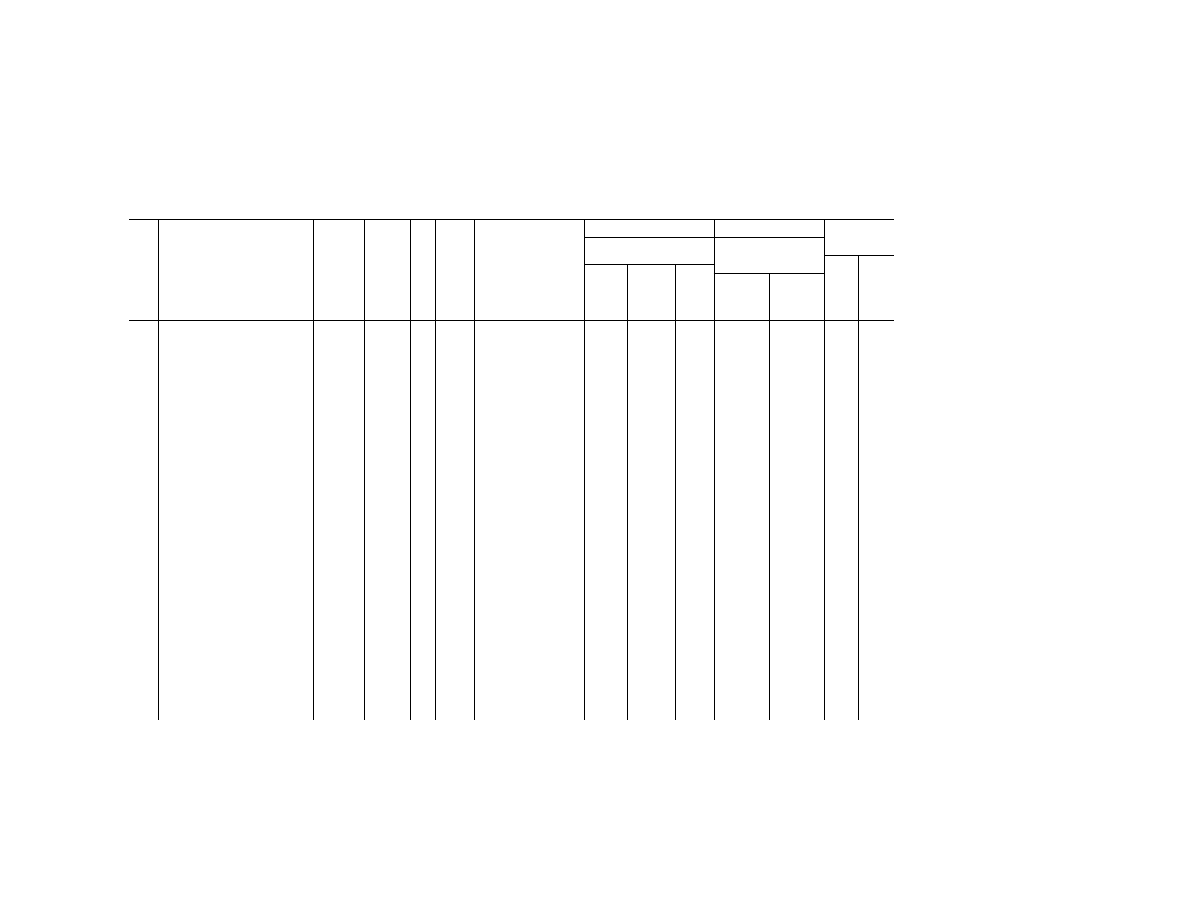
206
49 CFR Ch. I (10–1–23 Edition)
§
172.101
§ 172.101 H
AZARDOUS
M
ATERIALS
T
ABLE
—Continued
Sym-
bols
Hazardous materials descriptions
and proper shipping names
Hazard
class or
Division
Identi-
fication
Numbers
PG
Label
Codes
Special provisions
(§ 172.102)
(8)
(9)
(10)
Vessel
stowage
Packaging
(§ 173.***)
Quantity limitations
(see §§ 173.27 and
175.75)
Loca-
tion
Other
Excep-
tions
Non-bulk
Bulk
Passenger
aircraft/rail
Cargo air-
craft only
(1)
(2)
(3)
(4)
(5)
(6)
(7)
(8A)
(8B)
(8C)
(9A)
(9B)
(10A)
(10B)
III
8, 6.1
IB3, T7, TP1, TP28 154
203
241
5 L
60 L
B
40
G
Corrosive liquids, water-reactive,
n.o.s
8 UN3094
I
8, 4.3
A7 None
201
243
Forbidden
1 L
E
13, 148
II
8, 4.3
A7 None
202
243
1 L
5 L
E
13, 148
G
Corrosive solid, acidic, inorganic,
n.o.s
8 UN3260
I
8
IB7, IP1, T6, TP33 None
211
242
1 kg
25 kg
B
53, 58
II
8
IB8, IP2, IP4, T3, TP33 154
212
240
15 kg
50 kg
B
53, 58
III
8
IB8, IP3, T1, TP33 154
213
240
25 kg
100 kg
A
53, 58
G
Corrosive solid, acidic, organic,
n.o.s
8 UN3261
I
8
IB7, IP1, T6, TP33 None
211
242
1 kg
25 kg
B
53, 58
II
8
IB8, IP2, IP4, T3, TP33 154
212
240
15 kg
50 kg
B
53, 58
III
8
IB8, IP3, T1, TP33 154
213
240
25 kg
100 kg
A
53, 58
G
Corrosive solid, basic, inorganic,
n.o.s.
8 UN3262
I
8
IB7, IP1, T6, TP33 None
211
242
1 kg
25 kg
B
52
II
8
IB8, IP2, IP4, T3, TP33 154
212
240
15 kg
50 kg
B
52
III
8
IB8, IP3, T1, TP33 154
213
240
25 kg
100 kg
A
52
G
Corrosive solid, basic, organic,
n.o.s.
8 UN3263
I
8
IB7, IP1, T6, TP33 None
211
242
1 kg
25 kg
B
52
II
8
IB8, IP2, IP4, T3, TP33 154
212
240
15 kg
50 kg
B
52
III
8
IB8, IP3, T1, TP33 154
213
240
25 kg
100 kg
A
52
G
Corrosive solids, flammable, n.o.s.
8 UN2921
I
8, 4.1
IB6, T6, TP33 None
211
242
1 kg
25 kg
B
12, 25
II
8, 4.1
IB8, IP2, IP4, T3, TP33 154
212
242
15 kg
50 kg
B
12, 25
G
Corrosive solids, n.o.s.
8 UN1759
I
8
IB7, IP1, T6, TP33 None
211
242
1 kg
25 kg
B
II
8
128, IB8, IP2, IP4, T3,
TP33
154
212
240
15 kg
50 kg
A
III
8
128, IB8, IP3, T1, TP33 154
213
240
25 kg
100 kg
A
G
Corrosive solids, oxidizing, n.o.s.
8 UN3084
I
8, 5.1
T6, TP33 None
211
242
1 kg
25 kg
C
II
8, 5.1
IB6, IP2, T3, TP33 154
212
242
15 kg
50 kg
C
G
Corrosive solids, self-heating, n.o.s
8 UN3095
I
8, 4.2
T6, TP33 None
211
243
1 kg
25 kg
C
II
8, 4.2
IB6, IP2, T3, TP33 154
212
242
15 kg
50 kg
C
G
Corrosive solids, toxic, n.o.s
8 UN2923
I
8, 6.1
IB7, T6, TP33 None
211
242
1 kg
25 kg
B
40
II
8, 6.1
IB8, IP2, IP4, T3, TP33 154
212
240
15 kg
50 kg
B
40
III
8, 6.1
IB8, IP3, T1, TP33 154
213
240
25 kg
100 kg
B
40
G
Corrosive solids, water-reactive,
n.o.s
8 UN3096
I
8, 4.3
IB4, IP1, T6, TP33 None
211
243
1 kg
25 kg
D
13, 148
II
8, 4.3
IB6, IP2, T3, TP33,
W100
154
212
242
15 kg
50 kg
D
13, 148
D W
Cotton
9 NA1365
9
137, IB8, IP2, IP4, W41 None
None
None
No limit
No limit
A
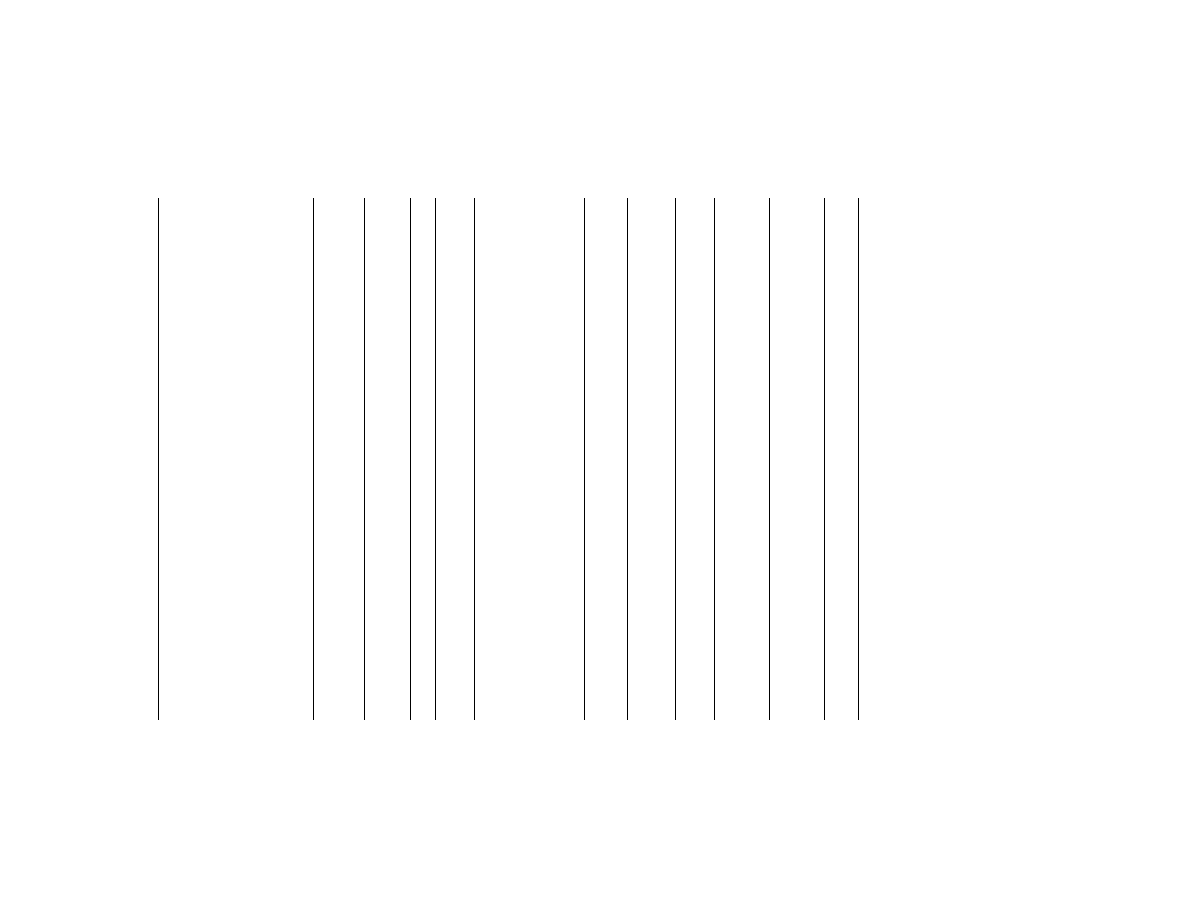
207
Pipeline and Haz. Matls. Safety Admin., DOT
§
172.101
A W
Cotton waste, oily
4.2 UN1364
III
4.2
IB8, IP3, IP7 None
213
None
Forbidden
Forbidden
A
54
A I W Cotton, wet
4.2 UN1365
III
4.2
IB8, IP3, IP7 None
204
241
Forbidden
Forbidden
A
Coumarin derivative pesticides, liq-
uid, flammable, toxic, flash point
less than 23 degrees C
3 UN3024
I
3, 6.1
T14, TP2, TP13, TP27 None
201
243
Forbidden
30 L
B
40
II
3, 6.1
IB2, T11, TP2, TP13,
TP27
150
202
243
1 L
60 L
B
40
Coumarin derivative pesticides, liq-
uid, toxic
6.1 UN3026
I
6.1
T14, TP2, TP13, TP27 None
201
243
1 L
30 L
B
40
II
6.1
IB2, T11, TP2, TP27 153
202
243
5 L
60 L
B
40
III
6.1
IB3, T7, TP1, TP28 153
203
241
60 L
220 L
A
40
Coumarin derivative pesticides, liq-
uid, toxic, flammable, flash point
not less than 23 degrees C
6.1 UN3025
I
6.1, 3
T14, TP2, TP13, TP27 None
201
243
1 L
30 L
B
40
II
6.1, 3
IB2, T11, TP2, TP13,
TP27
153
202
243
5 L
60 L
B
40
III
6.1, 3
B1, IB3, T7, TP1, TP28 153
203
242
60 L
220 L
A
40
Coumarin derivative pesticides,
solid, toxic
6.1 UN3027
I
6.1
IB7, IP1, T6, TP33 None
211
242
5 kg
50 kg
A
40
II
6.1
IB8, IP2, IP4, T3, TP33 153
212
242
25 kg
100 kg
A
40
III
6.1
IB8, IP3, T1, TP33 153
213
240
100 kg
200 kg
A
40
Cresols, liquid
6.1 UN2076
II
6.1, 8
IB2, IP2, IP4, T7, TP2 153
202
243
1 L
30 L
B
Cresols, solid
6.1 UN3455
II
6.1, 8
IB8, IP2, IP4, T3, TP33 153
212
242
15 kg
50 kg
B
Cresylic acid
6.1 UN2022
II
6.1, 8
IB2, T7, TP2, TP13 153
202
243
1 L
30 L
B
Crotonaldehyde or Crotonaldehyde,
stabilized
6.1 UN1143
I
6.1, 3
2, 175, 387, B9, B14,
B32, B77, T20, TP2,
TP13, TP38, TP45
None
227
244
Forbidden
Forbidden
D
25, 40
Crotonic acid, liquid
8 UN3472
III
8
IB8, T1 154
203
241
5 L
60 L
A
12, 25,
53, 58
Crotonic acid, solid
8 UN2823
III
8
IB8, IP3, T1, TP33 154
213
240
25 kg
100 kg
A
12, 25,
53, 58
Crotonylene
3 UN1144
I
3
T11, TP2 150
201
243
1 L
30 L
E
Cupriethylenediamine solution
8 UN1761
II
8, 6.1
IB2, T7, TP2 154
202
243
1 L
30 L
A
52
III
8, 6.1
IB3, T7, TP1, TP28 154
203
242
5 L
60 L
A
52, 95
Cutters, cable, explosive
1.4S UN0070
......
1.4S
........................................
None
62
62
25 kg
100 kg
01
25
Cyanide or cyanide mixtures, dry,
see Cyanides, inorganic, solid,
n.o.s.
G
Cyanide solutions, n.o.s.
6.1 UN1935
I
6.1
T14, TP2, TP13, TP27 None
201
243
1 L
30 L
B
40, 52
II
6.1
IB2, T11, TP2, TP13,
TP27
153
202
243
5 L
60 L
A
40, 52
III
6.1
IB3, T7, TP2, TP13,
TP28
153
203
241
60 L
220 L
A
40, 52
Cyanides, inorganic, solid, n.o.s.
6.1 UN1588
I
6.1
IB7, IP1, N74, N75, T6,
TP33
None
211
242
5 kg
50 kg
A
52
II
6.1
IB8, IP2, IP4, N74, N75,
T3, TP33
153
212
242
25 kg
100 kg
A
52
III
6.1
IB8, IP3, N74, N75, T1,
TP33
153
213
240
100 kg
200 kg
A
52
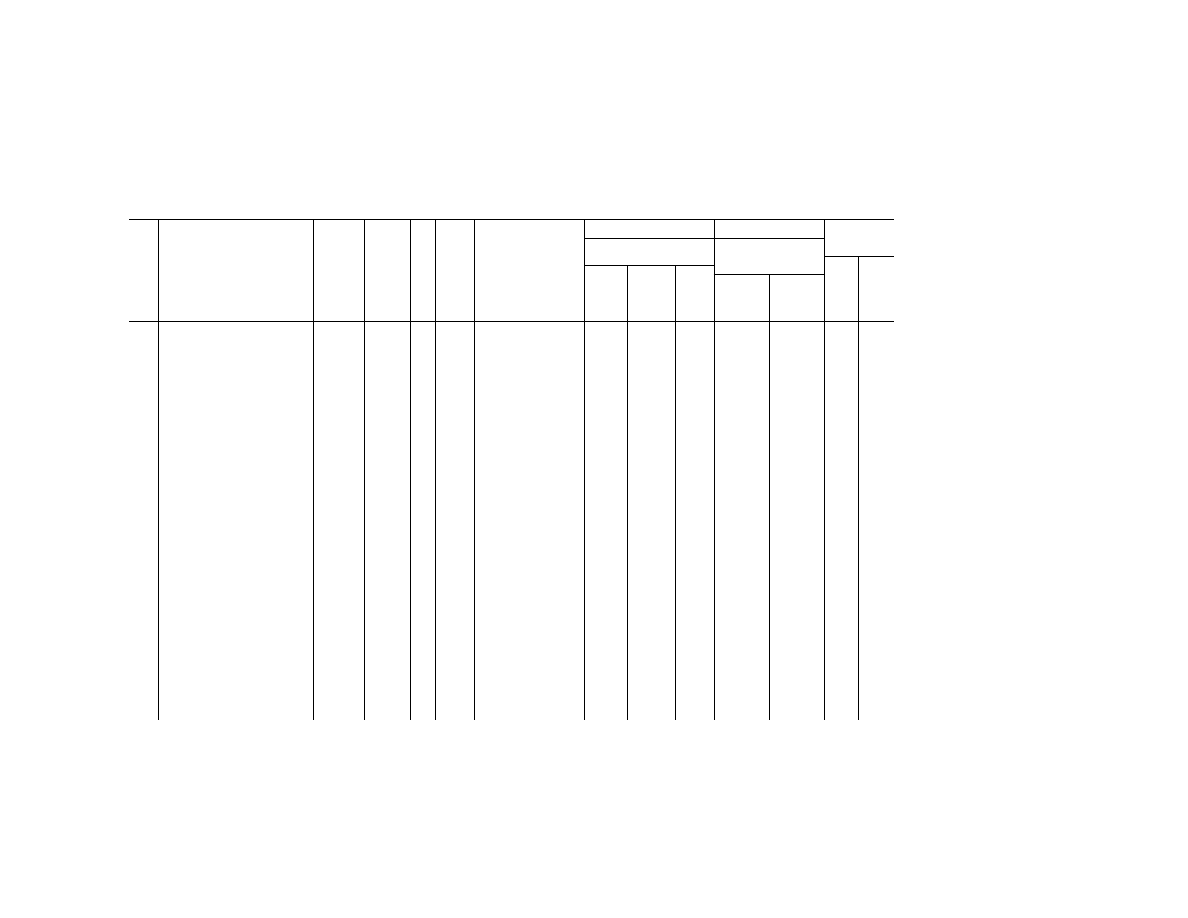
208
49 CFR Ch. I (10–1–23 Edition)
§
172.101
§ 172.101 H
AZARDOUS
M
ATERIALS
T
ABLE
—Continued
Sym-
bols
Hazardous materials descriptions
and proper shipping names
Hazard
class or
Division
Identi-
fication
Numbers
PG
Label
Codes
Special provisions
(§ 172.102)
(8)
(9)
(10)
Vessel
stowage
Packaging
(§ 173.***)
Quantity limitations
(see §§ 173.27 and
175.75)
Loca-
tion
Other
Excep-
tions
Non-bulk
Bulk
Passenger
aircraft/rail
Cargo air-
craft only
(1)
(2)
(3)
(4)
(5)
(6)
(7)
(8A)
(8B)
(8C)
(9A)
(9B)
(10A)
(10B)
Cyanogen
2.3 UN1026
2.3,
2.1
2 None
304
245
Forbidden
Forbidden
D
40
Cyanogen bromide
6.1 UN1889
I
6.1, 8
A6, A8, T6, TP33, W31 None
211
242
1 kg
15 kg
D
40, 52
Cyanogen chloride, stabilized
2.3 UN1589
......
2.3, 8
1, 387 None
192
245
Forbidden
Forbidden
D
25, 40
Cyanuric chloride
8 UN2670
II
8
IB8, IP2, IP4, T3, TP33 None
212
240
15 kg
50 kg
A
12, 25,
40, 53,
58
Cyanuric triazide
Forbidden
Cyclobutane
2.1 UN2601
2.1
306
304
314,
315
Forbidden
150 kg
B
40
Cyclobutyl chloroformate
6.1 UN2744
II
6.1, 8,
3
IB1, T7, TP2, TP13 153
202
243
1 L
30 L
A
12, 13,
21, 25,
40, 53,
58, 100
1,5,9-Cyclododecatriene
6.1 UN2518
III
6.1
IB3, T4, TP1 153
203
241
60 L
220 L
A
40
Cycloheptane
3 UN2241
II
3
IB2, T4, TP2 150
202
242
5 L
60 L
B
40
Cycloheptatriene
3 UN2603
II
3, 6.1
IB2, T7, TP1, TP13 150
202
243
1 L
60 L
E
40
Cycloheptene
3 UN2242
II
3
B1, IB2, T4, TP1 150
202
242
5 L
60 L
B
Cyclohexane
3 UN1145
II
3
IB2, T4, TP1 150
202
242
5 L
60 L
E
Cyclohexanone
3 UN1915
III
3
B1, IB3, T2, TP1 150
203
242
60 L
220 L
A
Cyclohexene
3 UN2256
II
3
IB2, T4, TP1 150
202
242
5 L
60 L
E
Cyclohexenyltrichlorosilane
8 UN1762
II
8
A7, B2, N34, T10, TP2,
TP7, TP13
None
206
242
Forbidden
30 L
C
40, 53,
58
Cyclohexyl acetate
3 UN2243
III
3
B1, IB3, T2, TP1 150
203
242
60 L
220 L
A
Cyclohexyl isocyanate
6.1 UN2488
I
6.1, 3
2, B9, B14, B32, B77,
T20, TP2, TP13, TP38,
TP45
None
227
244
Forbidden
Forbidden
D
40
Cyclohexyl mercaptan
3 UN3054
III
3
B1, IB3, T2, TP1 150
203
242
60 L
220 L
A
40, 95,
102
Cyclohexylamine
8 UN2357
II
8, 3
IB2, T7, TP2 154
202
243
1 L
30 L
A
40, 52
Cyclohexyltrichlorosilane
8 UN1763
II
8
A7, B2, N34, T10, TP2,
TP7, TP13
None
206
242
Forbidden
30 L
C
40, 53,
58
Cyclonite and
cyclotetramethylenetetranitramine
mixtures, wetted or desensitized
see RDX and HMX mixtures,
wetted or desensitized etc
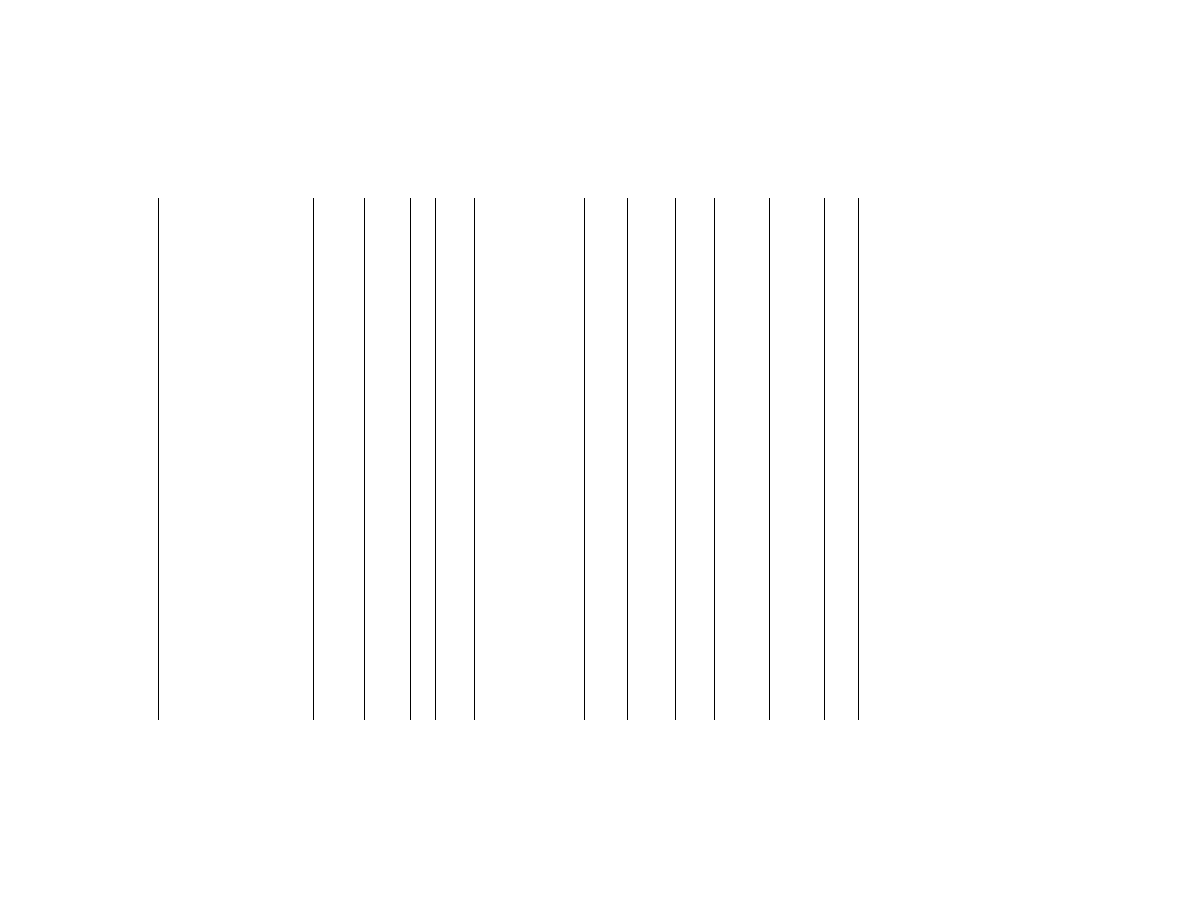
209
Pipeline and Haz. Matls. Safety Admin., DOT
§
172.101
Cyclonite and HMX mixtures,
wetted or desensitized see RDX
and HMX mixtures, wetted or de-
sensitized etc
Cyclonite and octogen mixtures,
wetted or desensitized see RDX
and HMX mixtures, wetted or de-
sensitized etc
Cyclonite, see
Cyclotrimethylenetrinitramine, etc
Cyclooctadiene phosphines, see 9-
Phosphabicyclononanes
Cyclooctadienes
3 UN2520
III
3
B1, IB3, T2, TP1 150
203
242
60 L
220 L
A
Cyclooctatetraene
3 UN2358
II
3
IB2, T4, TP1 150
202
242
5 L
60 L
B
Cyclopentane
3 UN1146
II
3
IB2, T7, TP1 150
202
242
5 L
60 L
E
Cyclopentane, methyl, see
Methylcyclopentane
Cyclopentanol
3 UN2244
III
3
B1, IB3, T2, TP1 150
203
242
60 L
220 L
A
Cyclopentanone
3 UN2245
III
3
B1, IB3, T2, TP1 150
203
242
60 L
220 L
A
Cyclopentene
3 UN2246
II
3
IB2, IP8, T7, TP2 150
202
242
5 L
60 L
E
Cyclopropane
2.1 UN1027
2.1
T50 306
304
314,
315
Forbidden
150 kg
E
40
Cyclotetramethylene tetranitramine
(dry or unphlegmatized) (HMX)
Forbidden
Cyclotetramethylenetetranitramine,
desensitized or Octogen, desen-
sitized or HMX, desensitized
1.1D UN0484
......
1.1D
........................................
None
62
None
Forbidden
Forbidden
04
25
Cyclotetramethylenetetranitramine,
wetted or HMX, wetted or
Octogen, wetted with not less
than 15 percent water, by mass
1.1D UN0226
......
1.1D
........................................
None
62
None
Forbidden
Forbidden
04
25
Cyclotrimethylenenitramine and
octogen, mixtures, wetted or de-
sensitized see RDX and HMX
mixtures, wetted or desensitized,
etc
Cyclotrimethylenetrinitramine and
cyclotetramethylenetetranitramine
mixtures, wetted or desensitized
see RDX and HMX mixtures,
wetted or desensitized etc
Cyclotrimethylenetrinitramine and
HMX mixtures, wetted or desen-
sitized see RDX and HMX mix-
tures, wetted or desensitized etc
Cyclotrimethylenetrinitramine, de-
sensitized or Cyclonite, desen-
sitized or Hexogen, desensitized
or RDX, desensitized
1.1D UN0483
......
1.1D
........................................
None
62
None
Forbidden
Forbidden
04
25
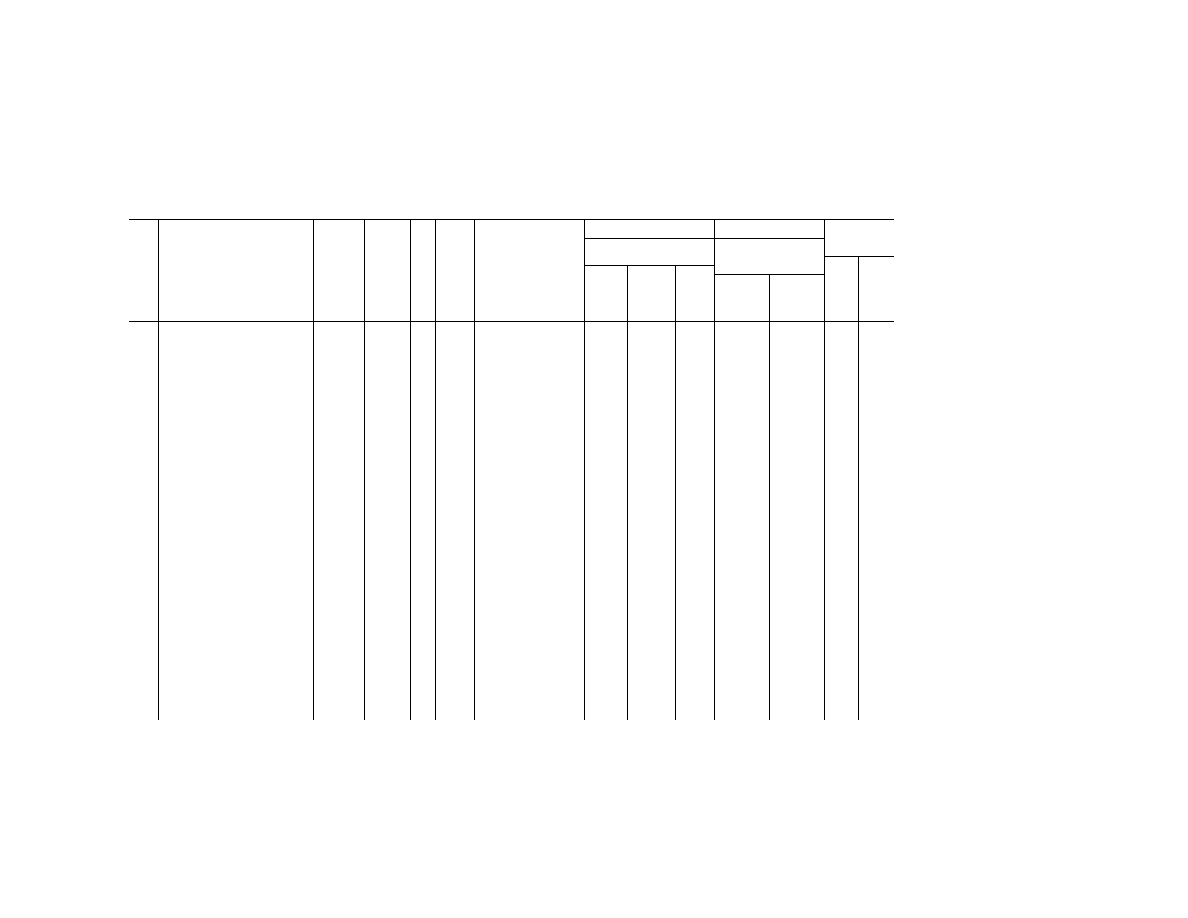
210
49 CFR Ch. I (10–1–23 Edition)
§
172.101
§ 172.101 H
AZARDOUS
M
ATERIALS
T
ABLE
—Continued
Sym-
bols
Hazardous materials descriptions
and proper shipping names
Hazard
class or
Division
Identi-
fication
Numbers
PG
Label
Codes
Special provisions
(§ 172.102)
(8)
(9)
(10)
Vessel
stowage
Packaging
(§ 173.***)
Quantity limitations
(see §§ 173.27 and
175.75)
Loca-
tion
Other
Excep-
tions
Non-bulk
Bulk
Passenger
aircraft/rail
Cargo air-
craft only
(1)
(2)
(3)
(4)
(5)
(6)
(7)
(8A)
(8B)
(8C)
(9A)
(9B)
(10A)
(10B)
Cyclotrimethylenetrinitramine,
wetted or Cyclonite, wetted or
Hexogen, wetted or RDX, wetted
with not less than 15 percent
water by mass
1.1D UN0072
......
1.1D
........................................
None
62
None
Forbidden
Forbidden
04
25
Cymenes
3 UN2046
III
3
B1, IB3, T2, TP1 150
203
242
60 L
220 L
A
Dangerous goods in articles or
Dangerous goods in machinery or
Dangerous goods in apparatus
9 UN3363
......
9
136, A105 None
222
None
See A105
See A105
A
Decaborane
4.1 UN1868
II
4.1,
6.1
A19, A20, IB6, IP2, T3,
TP33, W31
151
212
None
Forbidden
50 kg
A
74
Decahydronaphthalene
3 UN1147
III
3
B1, IB3, T2, TP1 150
203
242
60 L
220 L
A
n-Decane
3 UN2247
III
3
B1, IB3, T2, TP1 150
203
242
60 L
220 L
A
Deflagrating metal salts of aromatic
nitroderivatives, n.o.s.
1.3C UN0132
......
1.3C
........................................
None
62
None
Forbidden
Forbidden
04
25, 5E
Delay electric igniter, see Igniters
D
Denatured alcohol
3 NA1987
II
3
172, T8 150
202
242
5 L
60 L
B
III
3
172, B1, T7 150
203
242
60 L
220 L
A
Depth charges, see Charges, depth
G
Desensitized explosive, liquid, n.o.s.
3 UN3379
I
3
164 None
201
None
Forbidden
Forbidden
D
36
G
Desensitized explosives, solid,
n.o.s.
4.1 UN3380
I
4.1
164, 197 None
211
None
Forbidden
Forbidden
D
28, 36
Detonating relays, see Detonators,
etc
Detonator assemblies, non-electric
for blasting
1.1B UN0360
......
1.1B
........................................
None
62
None
Forbidden
Forbidden
05
25
Detonator assemblies, non-electric,
for blasting
1.4B UN0361
......
1.4B
148 63(f),
63(g)
62
None
Forbidden
75 kg
05
25
Detonator assemblies, non-electric,
for blasting
1.4S UN0500
......
1.4S
148, 347 63(f),
63(g)
62
None
25 kg
100 kg
01
25
Detonators, electric, for blasting
1.1B UN0030
......
1.1B
148 63(f),
63(g)
62
None
Forbidden
Forbidden
05
25
Detonators, electric, for blasting
1.4B UN0255
......
1.4B
148 63(f),
63(g)
62
None
Forbidden
75 kg
05
25
Detonators, electric for blasting
1.4S UN0456
......
1.4S
148, 347 63(f),
63(g)
62
None
25 kg
100 kg
01
25
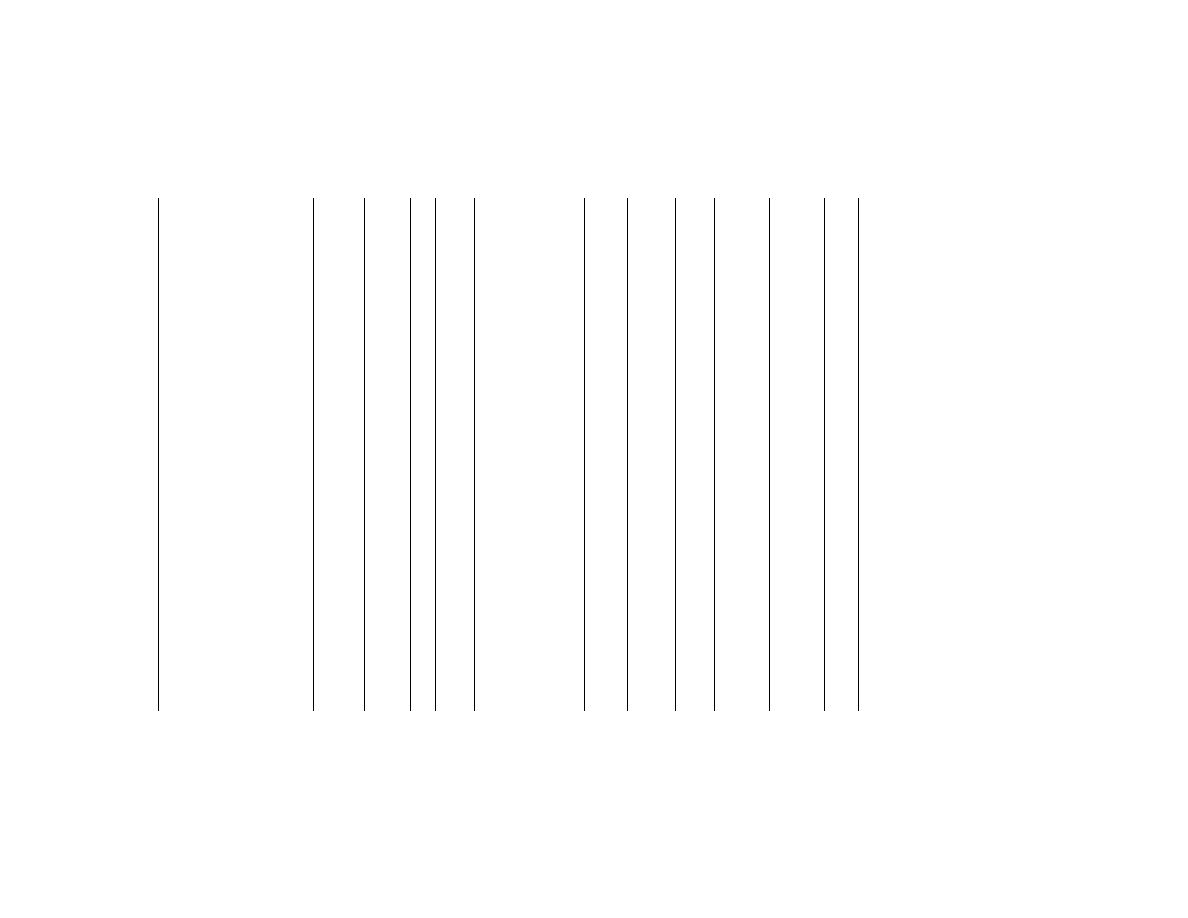
211
Pipeline and Haz. Matls. Safety Admin., DOT
§
172.101
Detonators, electronic program-
mable for blasting
1.1B UN0511
......
1.1B
148 63(f),
63(g)
62
None
Forbidden
Forbidden
05
25
Detonators, electronic program-
mable for blasting
1.4B UN0512
......
1.4B
103 63(f),
63(g)
62
None
Forbidden
75 kg
05
25
Detonators, electronic program-
mable for blasting
1.4S UN0513
......
1.4S
148, 347 63(f),
63(g)
62
None
25 kg
100 kg
01
25
Detonators for ammunition
1.1B UN0073
......
1.1B
........................................
None
62
None
Forbidden
Forbidden
05
25
Detonators for ammunition
1.2B UN0364
......
1.2B
........................................
None
62
None
Forbidden
Forbidden
05
25
Detonators for ammunition
1.4B UN0365
......
1.4B
........................................
None
62
None
Forbidden
75 kg
05
25
Detonators for ammunition
1.4S UN0366
......
1.4S
347 None
62
None
25 kg
100 kg
01
25
Detonators, non-electric, for blasting
1.1B UN0029
......
1.1B
........................................
None
62
None
Forbidden
Forbidden
05
25
Detonators, non-electric, for blasting
1.4B UN0267
......
1.4B
........................................
63(f),
63(g)
62
None
Forbidden
75 kg
05
25
Detonators, non-electric, for blasting
1.4S UN0455
......
1.4S
148, 347 63(f),
63(g)
62
None
25 kg
100 kg
01
25
Deuterium, compressed
2.1 UN1957
2.1
N89 306
302
None
Forbidden
150 kg
E
40
Devices, small, hydrocarbon gas
powered or Hydrocarbon gas re-
fills for small devices with release
device
2.1 UN3150
2.1
306
304
None
1 kg
15 kg
B
40
Di-n-amylamine
3 UN2841
III
3, 6.1
B1, IB3, T4, TP1 150
203
242
60 L
220 L
A
52
Di-n-butyl peroxydicarbonate, with
more than 52 percent in solution
Forbidden
Di-n-butylamine
8 UN2248
II
8, 3
IB2, T7, TP2 154
202
243
1 L
30 L
A
52
2,2-Di-(tert-butylperoxy) butane,
with more than 55 percent in so-
lution
Forbidden
Di-(tert-butylperoxy) phthalate, with
more than 55 percent in solution
Forbidden
2,2-Di-(4,4-di-tert-
butylperoxycyclohexyl) propane,
with more than 42 percent with
inert solid
Forbidden
Di-2,4-dichlorobenzoyl peroxide,
with more than 75 percent with
water
Forbidden
1,2-Di-(dimethylamino)ethane
3 UN2372
II
3
IB2, T4, TP1 150
202
242
5 L
60 L
B
Di-2-ethylhexyl phosphoric acid, see
Diisooctyl acid phosphate
Di-(1-hydroxytetrazole) (dry)
Forbidden
Di-(1-naphthoyl) peroxide
Forbidden
a,a
′
-Di-(nitroxy) methylether
Forbidden
Di-(beta-nitroxyethyl) ammonium ni-
trate
Forbidden
Diacetone alcohol
3 UN1148
II
3
IB2, T4, TP1 150
202
242
5 L
60 L
B
III
3
B1, IB3, T2, TP1 150
203
242
60 L
220 L
A
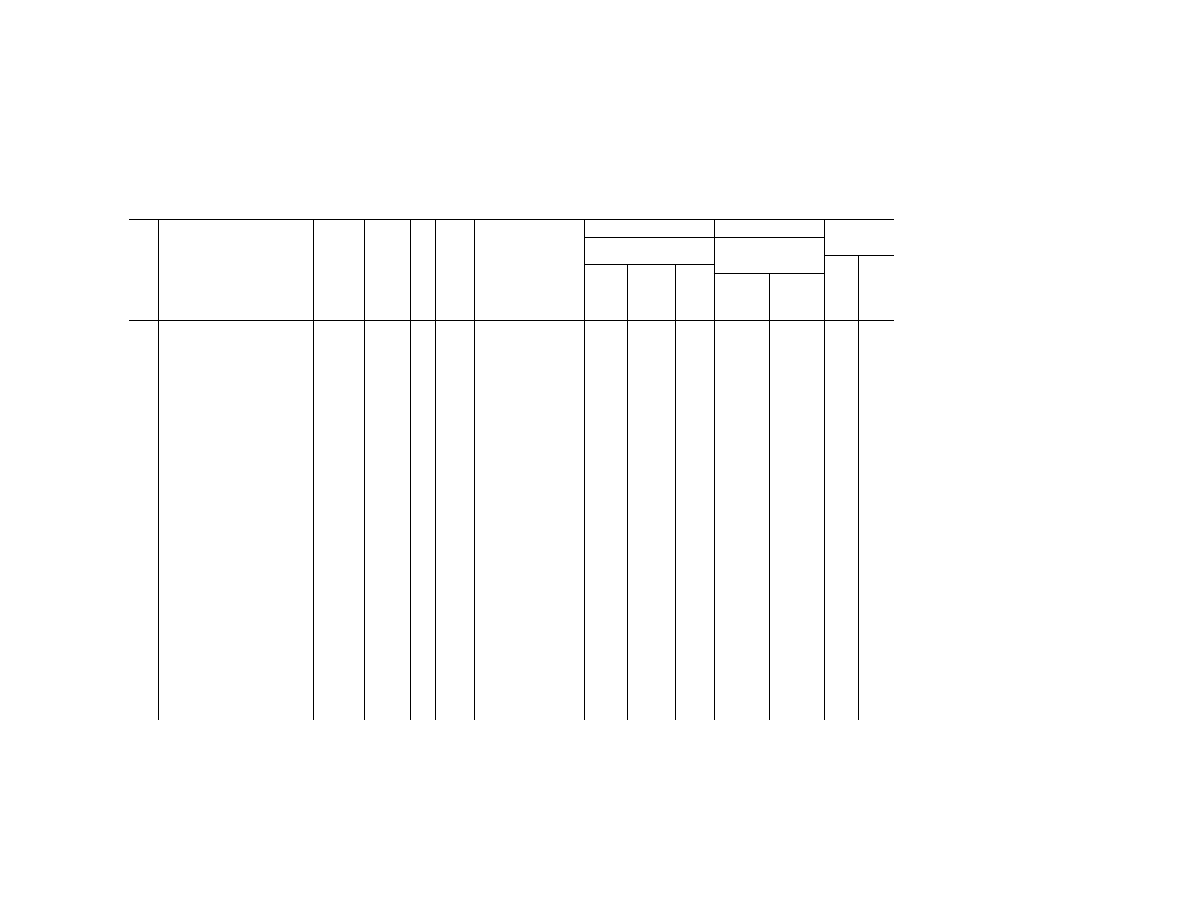
212
49 CFR Ch. I (10–1–23 Edition)
§
172.101
§ 172.101 H
AZARDOUS
M
ATERIALS
T
ABLE
—Continued
Sym-
bols
Hazardous materials descriptions
and proper shipping names
Hazard
class or
Division
Identi-
fication
Numbers
PG
Label
Codes
Special provisions
(§ 172.102)
(8)
(9)
(10)
Vessel
stowage
Packaging
(§ 173.***)
Quantity limitations
(see §§ 173.27 and
175.75)
Loca-
tion
Other
Excep-
tions
Non-bulk
Bulk
Passenger
aircraft/rail
Cargo air-
craft only
(1)
(2)
(3)
(4)
(5)
(6)
(7)
(8A)
(8B)
(8C)
(9A)
(9B)
(10A)
(10B)
Diacetone alcohol peroxides, with
more than 57 percent in solution
with more than 9 percent hydro-
gen peroxide, less than 26 per-
cent diacetone alcohol and less
than 9 percent water; total active
oxygen content more than 9 per-
cent by mass
Forbidden
Diacetyl, see Butanedione
Diacetyl peroxide, solid, or with
more than 25 percent in solution
Forbidden
Diallylamine
3 UN2359
II
3, 6.1,
8
IB2, T7, TP1 150
202
243
1 L
5 L
B
21, 40,
52, 100
Diallylether
3 UN2360
II
3, 6.1
IB2, N12, T7, TP1, TP13 150
202
243
1 L
60 L
E
40
4,4
′
-Diaminodiphenyl methane
6.1 UN2651
III
6.1
IB8, IP3, T1, TP33 153
213
240
100 kg
200 kg
A
p-Diazidobenzene
Forbidden
1,2-Diazidoethane
Forbidden
1,1
′
-Diazoaminonaphthalene
Forbidden
Diazoaminotetrazole (dry)
Forbidden
Diazodinitrophenol (dry)
Forbidden
Diazodinitrophenol, wetted with not
less than 40 percent water or
mixture of alcohol and water, by
mass
1.1A UN0074
......
1.1A
111, 117 None
62
None
Forbidden
Forbidden
05
25
Diazodiphenylmethane
Forbidden
Diazonium nitrates (dry)
Forbidden
Diazonium perchlorates (dry)
Forbidden
1,3-Diazopropane
Forbidden
Dibenzyl peroxydicarbonate, with
more than 87 percent with water
Forbidden
Dibenzyldichlorosilane
8 UN2434
II
8
B2, T10, TP2, TP7,
TP13
154
206
242
Forbidden
30 L
C
40, 53,
58
Diborane
2.3 UN1911
2.3,
2.1
1, N89 None
302
None
Forbidden
Forbidden
D
40, 57
D
Diborane mixtures
2.1 NA1911
2.1
5 None
302
245
Forbidden
Forbidden
D
40, 57
Dibromoacetylene
Forbidden
1,2-Dibromobutan-3-one
6.1 UN2648
II
6.1
IB2 153
202
243
5 L
60 L
B
40
Dibromochloropropane
6.1 UN2872
II
6.1
IB2, T7, TP2 153
202
243
5 L
60 L
A
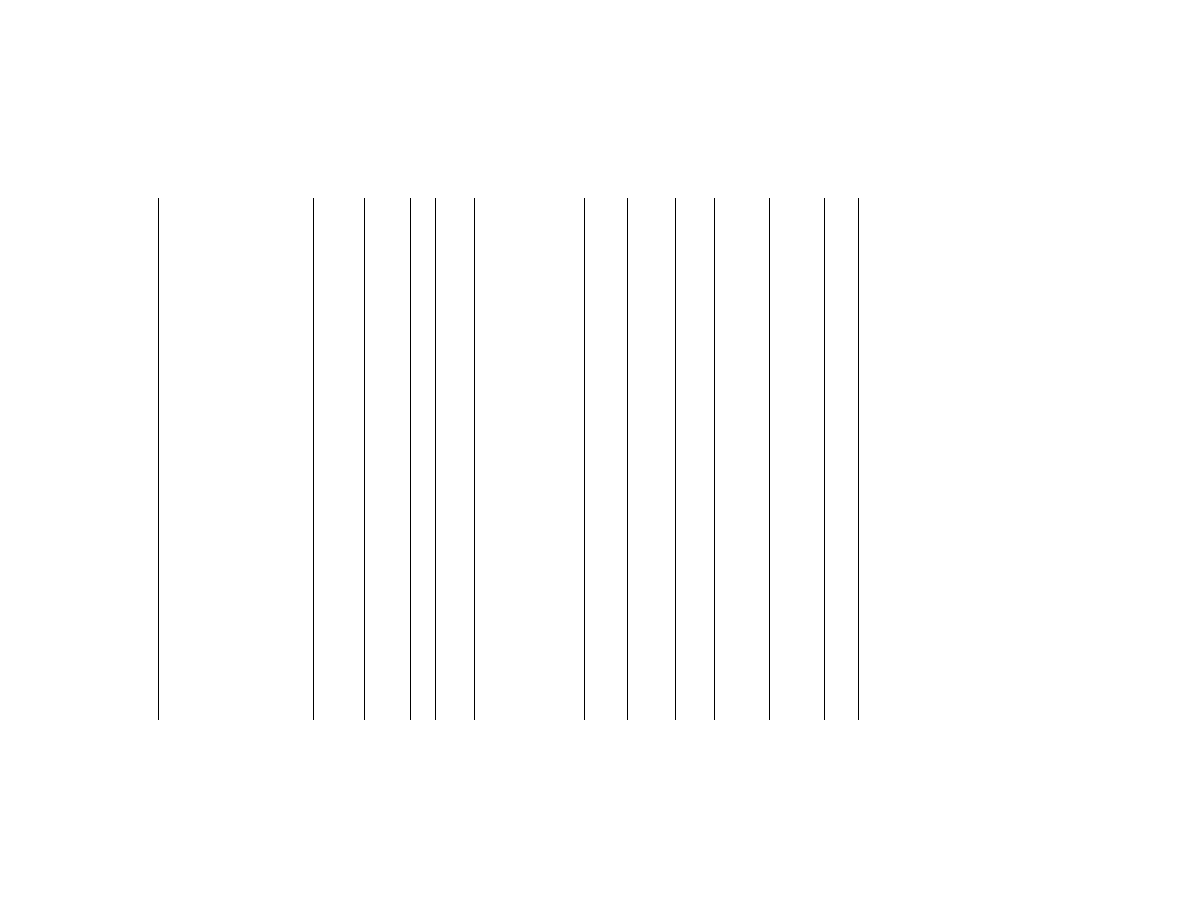
213
Pipeline and Haz. Matls. Safety Admin., DOT
§
172.101
III
6.1
IB3, T4, TP1 153
203
241
60 L
220 L
A
A
Dibromodifluoromethane, R12B2
9 UN1941
III
None
T11, TP2 155
203
241
100 L
220 L
A
25
1,2-Dibromoethane, see Ethylene
dibromide
Dibromomethane
6.1 UN2664
III
6.1
IB3, T4, TP1 153
203
241
60 L
220 L
A
Dibutyl ethers
3 UN1149
III
3
B1, IB3, T2, TP1 150
203
242
60 L
220 L
A
Dibutylaminoethanol
6.1 UN2873
III
6.1
IB3, T4, TP1 153
203
241
60 L
220 L
A
N,N
′
-Dichlorazodicarbonamidine
(salts of) (dry)
Forbidden
1,1-Dichloro-1-nitroethane
6.1 UN2650
II
6.1
IB2, T7, TP2 153
202
243
5 L
60 L
A
12, 25,
40, 74
D
3,5-Dichloro-2,4,6-trifluoropyridine
6.1 NA9264
I
6.1
2, B9, B14, B32, T20,
TP4, TP13, TP38, TP45
None
227
244
Forbidden
Forbidden
A
40
Dichloroacetic acid
8 UN1764
II
8
A3, A7, B2, IB2, N34,
T8, TP2
154
202
242
1 L
30 L
A
53, 58
1,3-Dichloroacetone
6.1 UN2649
II
6.1
IB8, IP2, IP4, T3, TP33 153
212
242
25 kg
100 kg
B
12, 25,
40
Dichloroacetyl chloride
8 UN1765
II
8
A3, A7, B2, B6, IB2,
N34, T7, TP2
154
202
242
1 L
30 L
D
40, 53,
58
Dichloroacetylene
Forbidden
+
Dichloroanilines, liquid
6.1 UN1590
II
6.1
IB2, T7, TP2 153
202
243
5 L
60 L
A
40
Dichloroanilines, solid
6.1 UN3442
II
6.1
IB8, IP2, IP4, T3, TP33 153
212
242
25 kg
100 kg
A
40
+
o-Dichlorobenzene
6.1 UN1591
III
6.1
IB3, T4, TP1 153
203
241
60 L
220 L
A
2,2
′
-Dichlorodiethyl ether
6.1 UN1916
II
6.1, 3
IB2, N33, N34, T7, TP2 153
202
243
5 L
60 L
A
Dichlorodifluoromethane and
difluoroethane azeotropic mixture
or Refrigerant gas R 500 with ap-
proximately 74 percent dichloro-
difluoromethane
2.2 UN2602
2.2
T50 306
304
314,
315
75 kg
150 kg
A
Dichlorodifluoromethane or Refrig-
erant gas R 12
2.2 UN1028
2.2
T50 306
304
314,
315
75 kg
150 kg
A
Dichlorodimethyl ether, symmetrical
6.1 UN2249
I
6.1, 3
None
201
243
Forbidden
Forbidden
40
1,1-Dichloroethane
3 UN2362
II
3
IB2, T4, TP1 150
202
242
5 L
60 L
B
40
1,2-Dichloroethane, see Ethylene
dichloride
Dichloroethyl sulfide
Forbidden
1,2-Dichloroethylene
3 UN1150
II
3
IB2, T7, TP2 150
202
242
5 L
60 L
B
Dichlorofluoromethane or Refrig-
erant gas R21
2.2 UN1029
2.2
T50 306
304
314,
315
75 kg
150 kg
A
Dichloroisocyanuric acid, dry or
Dichloroisocyanuric acid salts
5.1 UN2465
II
5.1
28, IB8, IP2, IP4, T3,
TP33
152
212
240
5 kg
25 kg
A
13
Dichloroisopropyl ether
6.1 UN2490
II
6.1
IB2, T7, TP2 153
202
243
5 L
60 L
B
Dichloromethane
6.1 UN1593
III
6.1
IB3, IP8, N36, T7, TP2 153
203
241
60 L
220 L
A
Dichloropentanes
3 UN1152
III
3
B1, IB3, T2, TP1 150
203
242
60 L
220 L
A
Dichlorophenyl isocyanates
6.1 UN2250
II
6.1
IB8, IP2, IP4, T3, TP33 153
212
242
25 kg
100 kg
B
25, 40
Dichlorophenyltrichlorosilane
8 UN1766
II
8
A7, B2, B6, N34, T10,
TP2, TP7, TP13
None
206
242
Forbidden
30 L
C
40, 53,
58
1,2-Dichloropropane
3 UN1279
II
3
IB2, N36, T4, TP1 150
202
242
5 L
60 L
B
1,3-Dichloropropanol-2
6.1 UN2750
II
6.1
IB2, T7, TP2 153
202
243
5 L
60 L
A
12, 25,
40
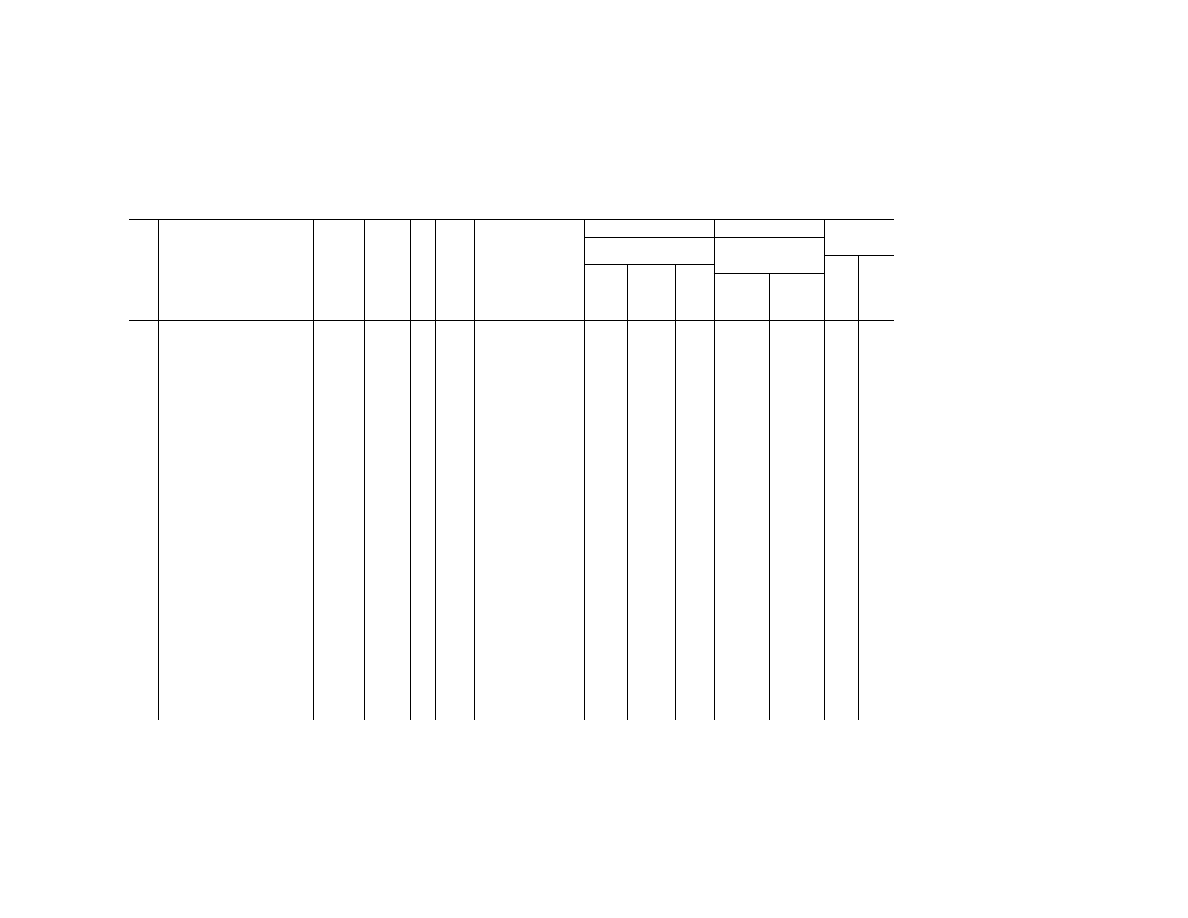
214
49 CFR Ch. I (10–1–23 Edition)
§
172.101
§ 172.101 H
AZARDOUS
M
ATERIALS
T
ABLE
—Continued
Sym-
bols
Hazardous materials descriptions
and proper shipping names
Hazard
class or
Division
Identi-
fication
Numbers
PG
Label
Codes
Special provisions
(§ 172.102)
(8)
(9)
(10)
Vessel
stowage
Packaging
(§ 173.***)
Quantity limitations
(see §§ 173.27 and
175.75)
Loca-
tion
Other
Excep-
tions
Non-bulk
Bulk
Passenger
aircraft/rail
Cargo air-
craft only
(1)
(2)
(3)
(4)
(5)
(6)
(7)
(8A)
(8B)
(8C)
(9A)
(9B)
(10A)
(10B)
Dichloropropene and propylene di-
chloride mixture, see 1,2-
Dichloropropane
Dichloropropenes
3 UN2047
II
3
IB2, T4, TP1 150
202
242
5 L
60 L
B
III
3
B1, IB3, T2, TP1 150
203
242
60 L
220 L
A
Dichlorosilane
2.3 UN2189
2.3,
2.1,
8
2, B9, B14 None
304
314,
315
Forbidden
Forbidden
D
17, 40
1,2-Dichloro-1,1,2,2-
tetrafluoroethane or Refrigerant
gas R 114
2.2 UN1958
2.2
T50 306
304
314,
315
75 kg
150 kg
A
Dichlorovinylchloroarsine
Forbidden
Dicycloheptadiene, see Bicyclo
[2,2,1] hepta-2,5-diene, stabilized
Dicyclohexylamine
8 UN2565
III
8
IB3, T4, TP1 154
203
241
5 L
60 L
A
52
Dicyclohexylammonium nitrite
4.1 UN2687
III
4.1
IB8, IP3, T1, TP33 151
213
240
25 kg
100 kg
A
25
Dicyclopentadiene
3 UN2048
III
3
B1, IB3, T2, TP1 150
203
242
60 L
220 L
A
Didymium nitrate
5.1 UN1465
III
5.1
A1, IB8, IP3, T1, TP33 152
213
240
25 kg
100 kg
A
D
Diesel fuel
3 NA1993
III
None
144, B1, IB3, T4, TP1,
TP29
150
203
242
60 L
220 L
A
I
Diesel fuel
3 UN1202
III
3
144, B1, IB3, T2, TP1 150
203
242
60 L
220 L
A
Diethanol nitrosamine dinitrate (dry)
Forbidden
Diethoxymethane
3 UN2373
II
3
IB2, T4, TP1 150
202
242
5 L
60 L
E
3,3-Diethoxypropene
3 UN2374
II
3
IB2, T4, TP1 150
202
242
5 L
60 L
B
Diethyl carbonate
3 UN2366
III
3
B1, IB3, T2, TP1 150
203
242
60 L
220 L
A
Diethyl cellosolve, see Ethylene gly-
col diethyl ether
Diethyl ether or Ethyl ether
3 UN1155
I
3
T11, TP2 150
201
243
1 L
30 L
E
40
Diethyl ketone
3 UN1156
II
3
IB2, T4, TP1 150
202
242
5 L
60 L
B
Diethyl peroxydicarbonate, with
more than 27 percent in solution
Forbidden
Diethyl sulfate
6.1 UN1594
II
6.1
IB2, T7, TP2 153
202
243
5 L
60 L
C
Diethyl sulfide
3 UN2375
II
3
IB2, T7, TP1, TP13 150
202
243
5 L
60 L
E
Diethylamine
3 UN1154
II
3, 8
A3, IB2, N34, T7, TP1 150
202
243
1 L
5 L
E
40, 52
2-Diethylaminoethanol
8 UN2686
II
8, 3
B2, IB2, T7, TP2 154
202
243
1 L
30 L
A
52
3-Diethyamino-propylamine
3 UN2684
III
3, 8
B1, IB3, T4, TP1 150
203
242
5 L
60 L
A
52
+
N, N-Diethylaniline
6.1 UN2432
III
6.1
IB3, T4, TP1 153
203
241
60 L
220 L
A
Diethylbenzene
3 UN2049
III
3
B1, IB3, T2, TP1 150
203
242
60 L
220 L
A
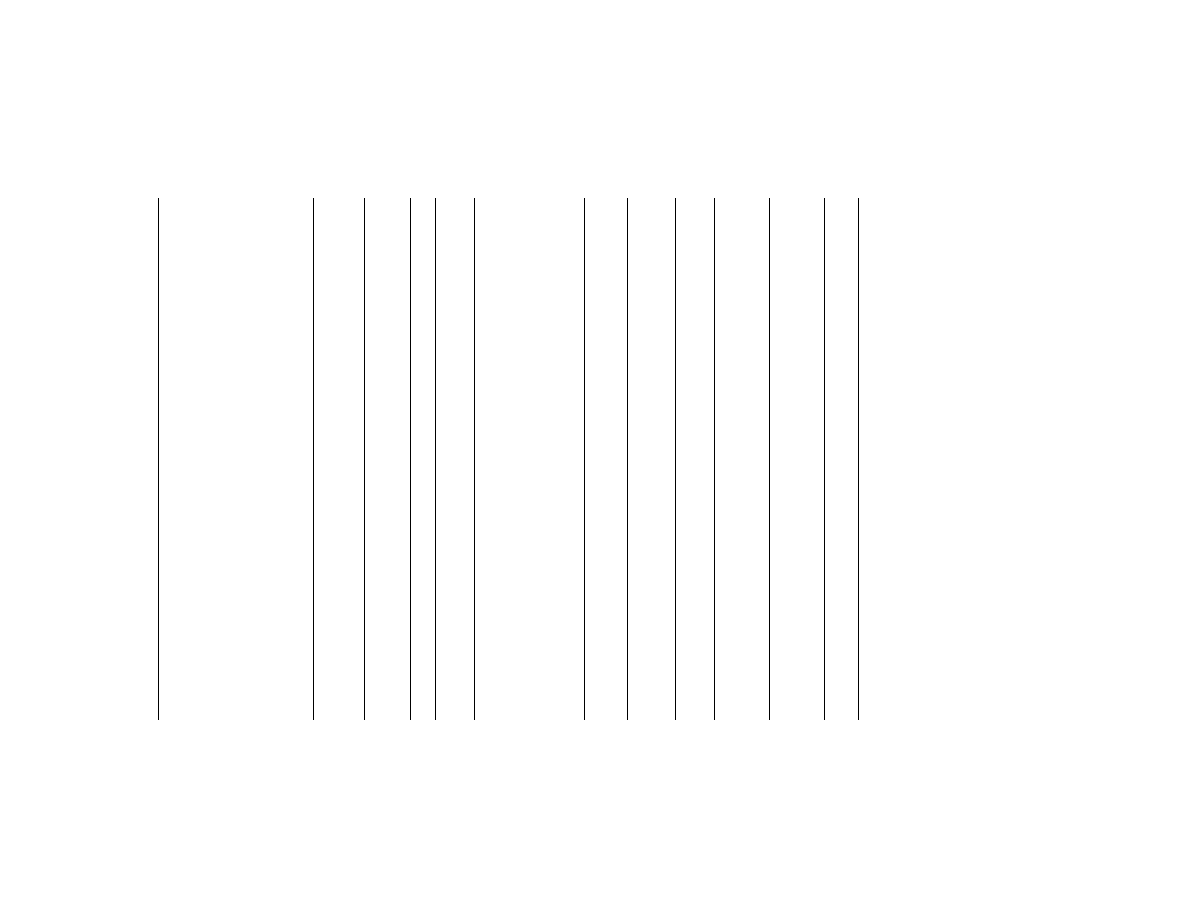
215
Pipeline and Haz. Matls. Safety Admin., DOT
§
172.101
Diethyldichlorosilane
8 UN1767
II
8, 3
A7, B6, N34, T10, TP2,
TP7, TP13
None
206
243
Forbidden
30 L
C
40, 53,
58
Diethylene glycol dinitrate
Forbidden
Diethyleneglycol dinitrate, desen-
sitized with not less than 25 per-
cent non-volatile water-insoluble
phlegmatizer, by mass
1.1D UN0075
......
1.1D
........................................
None
62
None
Forbidden
Forbidden
04
25,
21E
Diethylenetriamine
8 UN2079
II
8
B2, IB2, T7, TP2 154
202
242
1 L
30 L
A
40, 52
N,N-Diethylethylenediamine
8 UN2685
II
8, 3
IB2, T7, TP2 154
202
243
1 L
30 L
A
52
Diethylgold bromide
Forbidden
Diethylthiophosphoryl chloride
8 UN2751
II
8
B2, IB2, T7, TP2 154
212
240
15 kg
50 kg
D
12, 25,
40, 53,
58
Difluorochloroethanes, see 1-
Chloro-1,1-difluoroethanes
1,1-Difluoroethane or Refrigerant
gas R 152a
2.1 UN1030
2.1
T50 306
304
314,
315
Forbidden
150 kg
B
40
1,1-Difluoroethylene or Refrigerant
gas R 1132a
2.1 UN1959
2.1
306
304
None
Forbidden
150 kg
E
40
Difluoromethane or Refrigerant gas
R 32
2.1 UN3252
......
2.1
T50 306
304
314,
315
Forbidden
150 kg
D
40
Difluorophosphoric acid, anhydrous
8 UN1768
II
8
A7, B2, IB2, N5, N34,
T8, TP2
154
202
242
1 L
30 L
A
40, 53,
58
2,3-Dihydropyran
3 UN2376
II
3
IB2, T4, TP1 150
202
242
5 L
60 L
B
1,8-Dihydroxy-2,4,5,7-
tetranitroanthraquinone
(chrysamminic acid)
Forbidden
Diiodoacetylene
Forbidden
Diisobutyl ketone
3 UN1157
III
3
B1, IB3, T2, TP1 150
203
242
60 L
220 L
A
Diisobutylamine
3 UN2361
III
3, 8
B1, IB3, T4, TP1 150
203
242
5 L
60 L
A
52
Diisobutylene, isomeric compounds
3 UN2050
II
3
IB2, T4, TP1 150
202
242
5 L
60 L
B
Diisooctyl acid phosphate
8 UN1902
III
8
IB3, T4, TP1 154
203
241
5 L
60 L
A
53, 58
Diisopropyl ether
3 UN1159
II
3
IB2, T4, TP1 150
202
242
5 L
60 L
E
40
Diisopropylamine
3 UN1158
II
3, 8
IB2, T7, TP1 150
202
243
1 L
5 L
B
52
Diisopropylbenzene hydroperoxide,
with more than 72 percent in so-
lution
Forbidden
Diketene, stabilized
6.1 UN2521
I
6.1, 3
2, 387, B9, B14, B32,
T20, TP2, TP13, TP38,
TP45
None
227
244
Forbidden
Forbidden
D
25, 26,
27, 40
1,2-Dimethoxyethane
3 UN2252
II
3
IB2, T4, TP1 150
202
242
5 L
60 L
B
1,1-Dimethoxyethane
3 UN2377
II
3
IB2, T7, TP1 150
202
242
5 L
60 L
B
Dimethyl carbonate
3 UN1161
II
3
IB2, T4, TP1 150
202
242
5 L
60 L
B
Dimethyl chlorothiophosphate, see
Dimethyl thiophosphoryl chloride
2,5-Dimethyl-2,5-dihydroperoxy
hexane, with more than 82 per-
cent with water
Forbidden
Dimethyl disulfide
3 UN2381
II
3, 6.1
IB2, T7, TP2, TP13 150
202
242
Forbidden
Forbidden
B
40
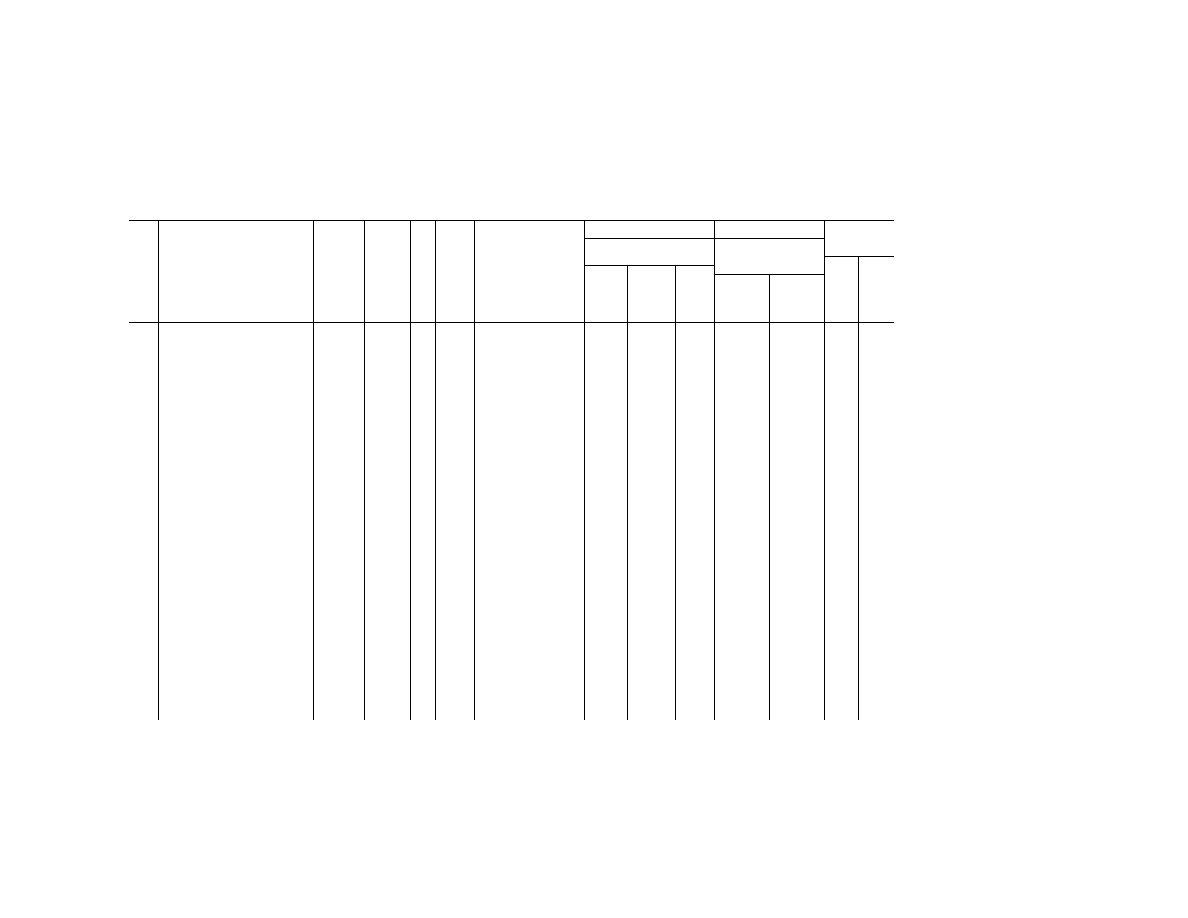
216
49 CFR Ch. I (10–1–23 Edition)
§
172.101
§ 172.101 H
AZARDOUS
M
ATERIALS
T
ABLE
—Continued
Sym-
bols
Hazardous materials descriptions
and proper shipping names
Hazard
class or
Division
Identi-
fication
Numbers
PG
Label
Codes
Special provisions
(§ 172.102)
(8)
(9)
(10)
Vessel
stowage
Packaging
(§ 173.***)
Quantity limitations
(see §§ 173.27 and
175.75)
Loca-
tion
Other
Excep-
tions
Non-bulk
Bulk
Passenger
aircraft/rail
Cargo air-
craft only
(1)
(2)
(3)
(4)
(5)
(6)
(7)
(8A)
(8B)
(8C)
(9A)
(9B)
(10A)
(10B)
Dimethyl ether
2.1 UN1033
2.1
T50 306
304
314,
315
Forbidden
150 kg
B
40
Dimethyl-N-propylamine
3 UN2266
II
3, 8
IB2, T7, TP2, TP13 150
202
243
1 L
5 L
B
40, 52
Dimethyl sulfate
6.1 UN1595
I
6.1, 8
2, B9, B14, B32, B77,
T20, TP2, TP13, TP38,
TP45
None
227
244
Forbidden
Forbidden
D
40, 53,
58
Dimethyl sulfide
3 UN1164
II
3
IB2, IP8, T7, TP2 150
202
242
5 L
60 L
E
40
Dimethyl thiophosphoryl chloride
6.1 UN2267
II
6.1, 8
IB2, T7, TP2 153
202
243
1 L
30 L
B
25, 53,
58
Dimethylamine, anhydrous
2.1 UN1032
......
2.1
N87, T50 None
304
314,
315
Forbidden
150 kg
D
40, 52
Dimethylamine solution
3 UN1160
II
3, 8
IB2, T7, TP1 150
202
243
1 L
5 L
B
52.
2-Dimethylaminoacetonitrile
3 UN2378
II
3, 6.1
IB2, T7, TP1 150
202
243
1 L
60 L
A
40, 52
2-Dimethylaminoethanol
8 UN2051
II
8, 3
B2, IB2, T7, TP2 154
202
243
1 L
30 L
A
52
2-Dimethylaminoethyl acrylate, sta-
bilized
6.1 UN3302
II
6.1
387, IB2, T7, TP2 153
202
243
5 L
60 L
D
25
2-Dimethylaminoethyl methacrylate,
stabilized
6.1 UN2522
II
6.1
387, IB2, T7, TP2 153
202
243
5 L
60 L
B
40
N,N-Dimethylaniline
6.1 UN2253
II
6.1
IB1, T7, TP2 153
202
243
5 L
60 L
A
2,3-Dimethylbutane
3 UN2457
II
3
IB2, T7, TP1 150
202
242
5 L
60 L
E
1, 3-Dimethylbutylamine
3 UN2379
II
3, 8
IB2, T7, TP1 150
202
243
1 L
5 L
B
52.
Dimethylcarbamoyl chloride
8 UN2262
II
8
B2, IB2, T7, TP2 154
202
242
1 L
30 L
A
40, 53,
58
Dimethylcyclohexanes
3 UN2263
II
3
IB2, T4, TP1 150
202
242
5 L
60 L
B
N,N-Dimethylcyclohexylamine
8 UN2264
II
8, 3
B2, IB2, T7, TP2 154
202
243
1 L
30 L
A
40, 52
Dimethyldichlorosilane
3 UN1162
II
3, 8
B77, T10, TP2, TP7,
TP13
None
206
243
Forbidden
Forbidden
B
40
Dimethyldiethoxysilane
3 UN2380
II
3
IB2, T4, TP1 150
202
242
5 L
60 L
B
Dimethyldioxanes
3 UN2707
II
3
IB2, T4, TP1 150
202
242
5 L
60 L
B
III
3
B1, IB3, T2, TP1 150
203
242
60 L
220 L
A
N,N-Dimethylformamide
3 UN2265
III
3
B1, IB3, T2, TP2 150
203
242
60 L
220 L
A
Dimethylhexane dihydroperoxide
(dry)
Forbidden
Dimethylhydrazine, symmetrical
6.1 UN2382
I
6.1, 3
2, B9, B14, B32, B77,
T20, TP2, TP13, TP38,
TP45
None
227
244
Forbidden
Forbidden
D
40, 52,
74.
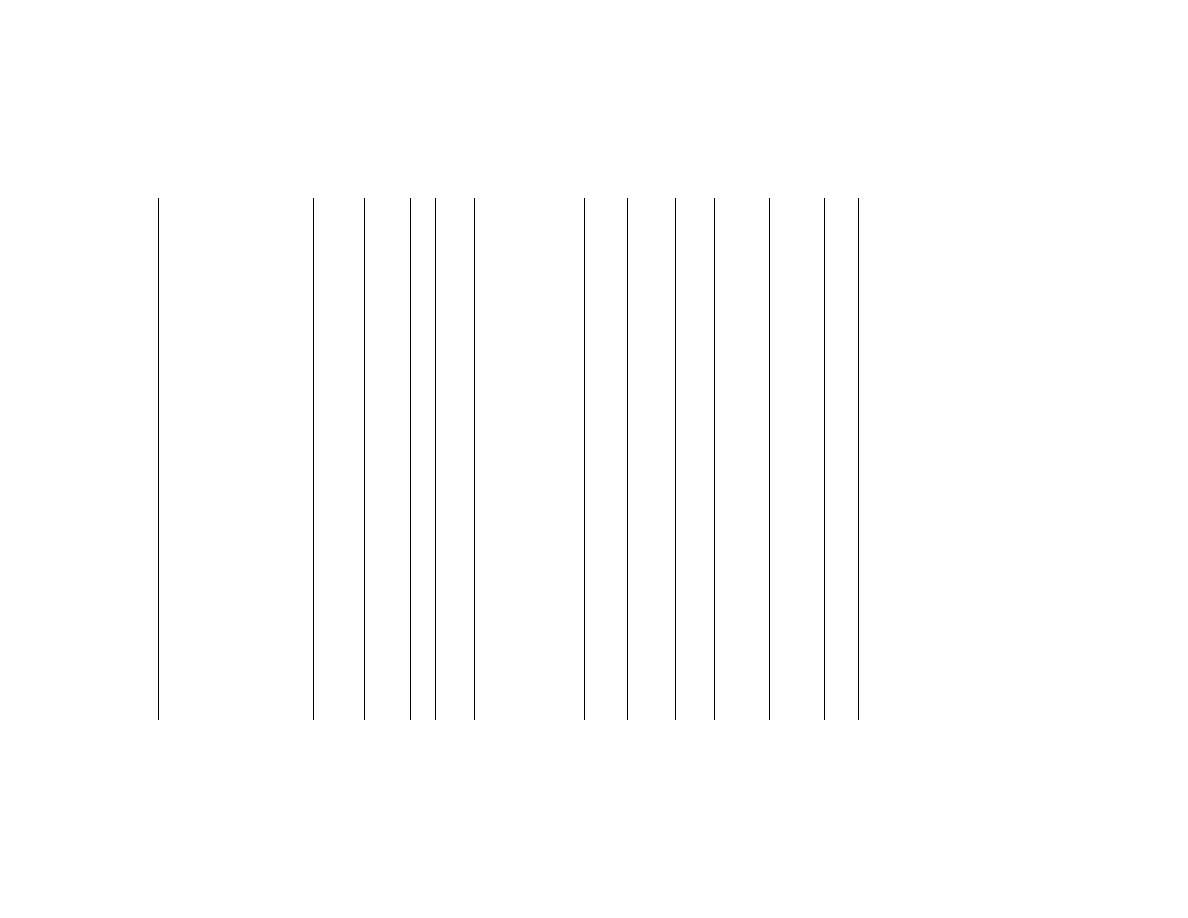
217
Pipeline and Haz. Matls. Safety Admin., DOT
§
172.101
Dimethylhydrazine, unsymmetrical
6.1 UN1163
I
6.1, 3,
8
2, B7, B9, B14, B32,
T20, TP2, TP13, TP38,
TP45
None
227
244
Forbidden
Forbidden
D
21, 38,
40, 52,
100.
2,2-Dimethylpropane
2.1 UN2044
2.1
306
304
314,
315
Forbidden
150 kg
E
40
Dinitro-o-cresol
6.1 UN1598
II
6.1
IB8, IP2, IP4, T3, TP33 153
212
242
25 kg
100 kg
A
1,3-Dinitro-5,5-dimethyl hydantoin
Forbidden
Dinitro-7,8-dimethylglycoluril (dry)
Forbidden
1,3-Dinitro-4,5-dinitrosobenzene
Forbidden
1,4-Dinitro-1,1,4,4-
tetramethylolbutanetetranitrate
(dry)
Forbidden
2,4-Dinitro-1,3,5-trimethylbenzene
Forbidden
Dinitroanilines
6.1 UN1596
II
6.1
IB8, IP2, IP4, T3, TP33 153
212
242
25 kg
100 kg
A
91
Dinitrobenzenes, liquid
6.1 UN1597
II
6.1
11, IB2, T7, TP2 153
202
243
5 L
60 L
A
91
III
6.1
11, IB3, T7, TP2 153
203
241
60 L
220 L
A
91
Dinitrobenzenes, solid
6.1 UN3443
II
6.1
IB8, IP2, IP4, T3, TP33 153
212
242
25 kg
100 kg
A
91
Dinitrochlorobenzene, see
Chlorodinitrobenzene
1,2-Dinitroethane
Forbidden
1,1-Dinitroethane (dry)
Forbidden
Dinitrogen tetroxide
2.3 UN1067
2.3,
5.1,
8
1, B7, B14, B45, B46,
B61, B66, B67, B77,
T50, TP21
None
336
314
Forbidden
Forbidden
D
40, 89,
90
Dinitroglycoluril or Dingu
1.1D UN0489
......
1.1D
........................................
None
62
None
Forbidden
Forbidden
04
25
Dinitromethane
Forbidden
Dinitrophenol, dry or wetted with
less than 15 percent water, by
mass
1.1D UN0076
......
1.1D,
6.1
........................................
None
62
None
Forbidden
Forbidden
04
25, 5E
Dinitrophenol solutions
6.1 UN1599
II
6.1
IB2, T7, TP2 153
202
243
5 L
60 L
A
36
III
6.1
IB3, T4, TP1 153
203
241
60 L
220 L
A
36
Dinitrophenol, wetted with not less
than 15 percent water, by mass
4.1 UN1320
I
4.1,
6.1
23, A8, A19, A20, N41,
W31
None
211
None
1 kg
15 kg
E
28, 36
Dinitrophenolates alkali metals, dry
or wetted with less than 15 per-
cent water, by mass
1.3C UN0077
......
1.3C,
6.1
........................................
None
62
None
Forbidden
Forbidden
04
25, 5E
Dinitrophenolates, wetted with not
less than 15 percent water, by
mass
4.1 UN1321
I
4.1,
6.1
23, A8, A19, A20, N41,
W31
None
211
None
1 kg
15 kg
E
28, 36
Dinitropropylene glycol
Forbidden
Dinitroresorcinol, dry or wetted with
less than 15 percent water, by
mass
1.1D UN0078
......
1.1D
........................................
None
62
None
Forbidden
Forbidden
04
25, 5E
2,4-Dinitroresorcinol (heavy metal
salts of) (dry)
Forbidden
4,6-Dinitroresorcinol (heavy metal
salts of) (dry)
Forbidden
Dinitroresorcinol, wetted with not
less than 15 percent water, by
mass
4.1 UN1322
I
4.1
23, A8, A19, A20, N41,
W31
None
211
None
1 kg
15 kg
E
28, 36

218
49 CFR Ch. I (10–1–23 Edition)
§
172.101
§ 172.101 H
AZARDOUS
M
ATERIALS
T
ABLE
—Continued
Sym-
bols
Hazardous materials descriptions
and proper shipping names
Hazard
class or
Division
Identi-
fication
Numbers
PG
Label
Codes
Special provisions
(§ 172.102)
(8)
(9)
(10)
Vessel
stowage
Packaging
(§ 173.***)
Quantity limitations
(see §§ 173.27 and
175.75)
Loca-
tion
Other
Excep-
tions
Non-bulk
Bulk
Passenger
aircraft/rail
Cargo air-
craft only
(1)
(2)
(3)
(4)
(5)
(6)
(7)
(8A)
(8B)
(8C)
(9A)
(9B)
(10A)
(10B)
3,5-Dinitrosalicylic acid (lead salt)
(dry)
Forbidden
Dinitrosobenzene
1.3C UN0406
......
1.3C
........................................
None
62
None
Forbidden
Forbidden
04
25
Dinitrosobenzylamidine and salts of
(dry)
Forbidden
2,2-Dinitrostilbene
Forbidden
Dinitrotoluenes, liquid
6.1 UN2038
II
6.1
IB2, T7, TP2 153
202
243
5 L
60 L
A
Dinitrotoluenes, molten
6.1 UN1600
II
6.1
T7, TP3 None
202
243
Forbidden
Forbidden
C
Dinitrotoluenes, solid
6.1 UN3454
II
6.1
IB8, IP2, IP4, T3, TP33 153
212
242
25 kg
100 kg
A
1,9-Dinitroxy pentamethylene-2,4,
6,8-tetramine (dry)
Forbidden
Dioxane
3 UN1165
II
3
IB2, T4, TP1 150
202
242
5 L
60 L
B
Dioxolane
3 UN1166
II
3
IB2, T4, TP1 150
202
242
5 L
60 L
B
40
Dipentene
3 UN2052
III
3
B1, IB3, T2, TP1 150
203
242
60 L
220 L
A
Diphenylamine chloroarsine
6.1 UN1698
I
6.1
T6, TP33, W31 None
201
None
Forbidden
Forbidden
D
40
Diphenylchloroarsine, liquid
6.1 UN1699
I
6.1
A8, B14, B32, N33, N34,
T14, TP2, TP13, TP27,
W31
None
201
243
Forbidden
30 L
D
40
Diphenylchloroarsine, solid
6.1 UN3450
I
6.1
IB7, IP1, T6, TP33, W31 None
211
242
5 kg
50 kg
D
40
Diphenyldichlorosilane
8 UN1769
II
8
A7, B2, N34, T10, TP2,
TP7, TP13
None
206
242
Forbidden
30 L
C
40, 53,
58
Diphenylmethyl bromide
8 UN1770
II
8
IB8, IP2, IP4, T3, TP33 154
212
240
15 kg
50 kg
D
40, 53,
58
Dipicryl sulfide, dry or wetted with
less than 10 percent water, by
mass
1.1D UN0401
......
1.1D
........................................
None
62
None
Forbidden
Forbidden
04
25
Dipicryl sulfide, wetted with not less
than 10 percent water, by mass
4.1 UN2852
I
4.1
162, A2, N41, N84, W31 None
211
None
Forbidden
0.5 kg
D
28, 36
Dipicrylamine, see
Hexanitrodiphenylamine
Dipropionyl peroxide, with more
than 28 percent in solution
Forbidden
Di-n-propyl ether
3 UN2384
II
3
IB2, T4, TP1 150
202
242
5 L
60 L
B
Dipropyl ketone
3 UN2710
III
3
B1, IB3, T2, TP1 150
203
242
60 L
220 L
A
Dipropylamine
3 UN2383
II
3, 8
IB2, T7, TP1 150
202
243
1 L
5 L
B
25, 52
G
Disinfectant, liquid, corrosive, n.o.s
8 UN1903
I
8
A7, B10, T14, TP2,
TP27
None
201
243
0.5 L
2.5 L
B
G
Disinfectants, liquid, corrosive n.o.s.
8 UN1903
II
8
B2, IB2, T7, TP2 154
202
242
1 L
30 L
B
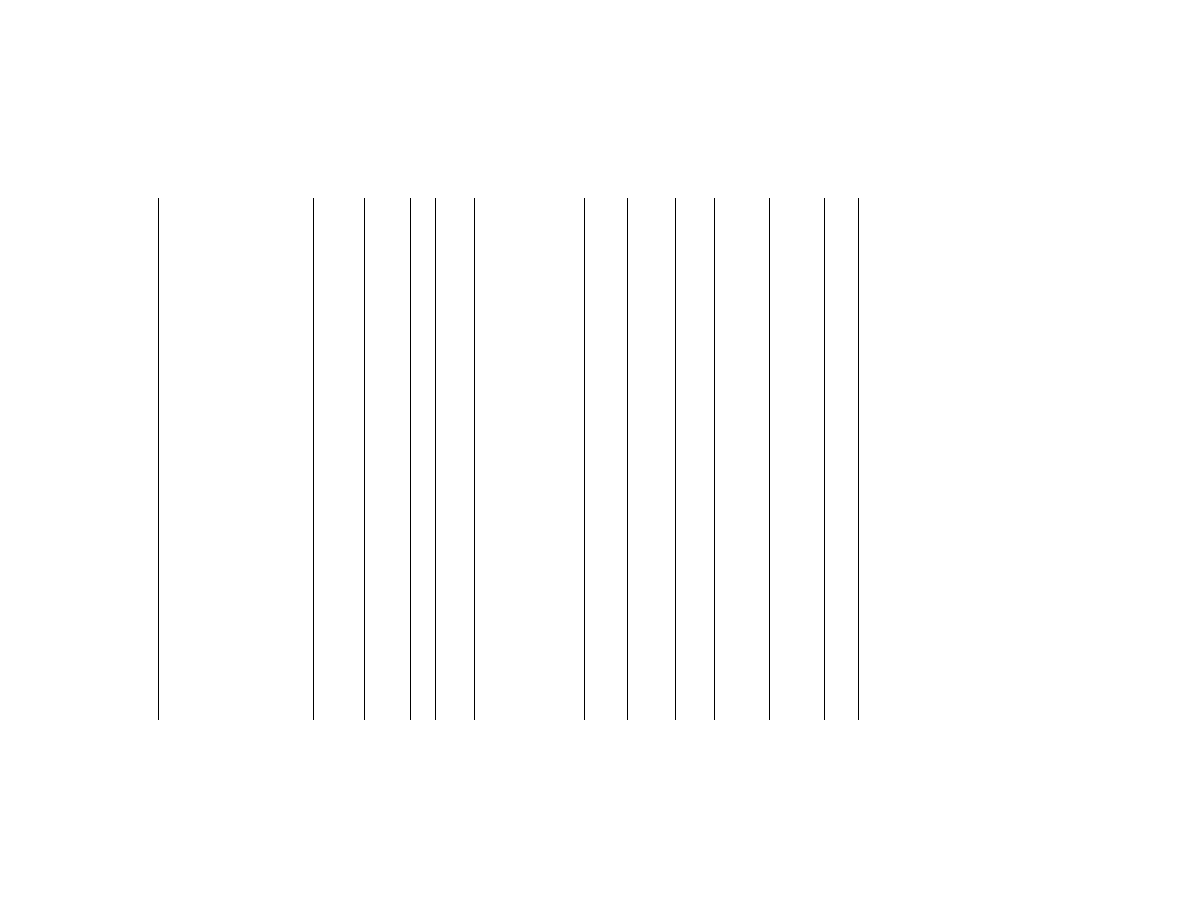
219
Pipeline and Haz. Matls. Safety Admin., DOT
§
172.101
III
8
IB3, T4, TP1 154
203
241
5 L
60 L
A
G
Disinfectants, liquid, toxic, n.o.s.
6.1 UN3142
I
6.1
A4, T14, TP2, TP27 None
201
243
1 L
30 L
A
40
II
6.1
IB2, T11, TP2, TP27 153
202
243
5 L
60 L
A
40
III
6.1
IB3, T7, TP1, TP28 153
203
241
60 L
220 L
A
40
G
Disinfectants, solid, toxic, n.o.s.
6.1 UN1601
I
6.1
IB7, IP1, T6, TP33 None
211
242
5 kg
50 kg
A
40
II
6.1
IB8, IP2, IP4, T3, TP33 153
212
242
25 kg
100 kg
A
40
III
6.1
IB8, IP3, T1, TP33 153
213
240
100 kg
200 kg
A
40
Disodium trioxosilicate
8 UN3253
III
8
IB8, IP3, T1, TP33 154
213
240
25 kg
100 kg
A
52.
G
Dispersant gases, n.o.s. see Refrig-
erant gases, n.o.s.
Divinyl ether, stabilized
3 UN1167
I
3
387, A7, T11, TP2 None
201
243
1 L
30 L
E
25, 40
Dodecyltrichlorosilane
8 UN1771
II
8
A7, B2, B6, N34, T10,
TP2, TP7, TP13
None
206
242
Forbidden
30 L
C
40, 53,
58
Dry ice, see Carbon dioxide, solid
G
Dyes, liquid, corrosive, n.o.s. or
Dye intermediates, liquid, corro-
sive, n.o.s
8 UN2801
I
8
11, B10, T14, TP2,
TP27
None
201
243
0.5 L
2.5 L
A
II
8
11, B2, IB2, T11, TP2,
TP27
154
202
242
1 L
30 L
A
III
8
11, IB3, T7, TP1, TP28 154
203
241
5 L
60 L
A
G
Dyes, liquid, toxic, n.o.s. or Dye
intermediates, liquid, toxic, n.o.s.
6.1 UN1602
I
6.1
None
201
243
1 L
30 L
A
II
6.1
IB2 153
202
243
5 L
60 L
A
III
6.1
IB3 153
203
241
60 L
220 L
A
G
Dyes, solid, corrosive, n.o.s. or Dye
intermediates, solid, corrosive,
n.o.s.
8 UN3147
I
8
IB7, IP1, T6, TP33 None
211
242
1 kg
25 kg
A
II
8
IB8, IP2, IP4, T3, TP33 154
212
240
15 kg
50 kg
A
III
8
IB8, IP3, T1, TP33 154
213
240
25 kg
100 kg
A
G
Dyes, solid, toxic, n.o.s. or Dye
intermediates, solid, toxic, n.o.s.
6.1 UN3143
I
6.1
A5, IB7, IP1, T6, TP33 None
211
242
5 kg
50 kg
A
II
6.1
IB8, IP2, IP4, T3, TP33 153
212
242
25 kg
100 kg
A
III
6.1
IB8, IP3, T1, TP33 153
213
240
100 kg
200 kg
A
Dynamite, see Explosive, blasting,
type A
Electrolyte (acid or alkali) for bat-
teries, see Battery fluid, acid or
Battery fluid, alkali
G
Elevated temperature liquid, flam-
mable, n.o.s., with flash point
above 37.8 C, at or above its
flash point
3 UN3256
III
3
IB1, T3, TP3, TP29 None
None
247
Forbidden
Forbidden
A
G
Elevated temperature liquid, n.o.s.,
at or above 100 C and below its
flash point (including molten met-
als, molten salts, etc.)
9 UN3257
III
9
IB1, T3, TP3, TP29 None
None
247
Forbidden
Forbidden
A
85
G
Elevated temperature solid, n.o.s.,
at or above 240 C, see
§ 173.247(h)(4)
9 UN3258
III
9
247
(h)(4)
None
247
Forbidden
Forbidden
A
85
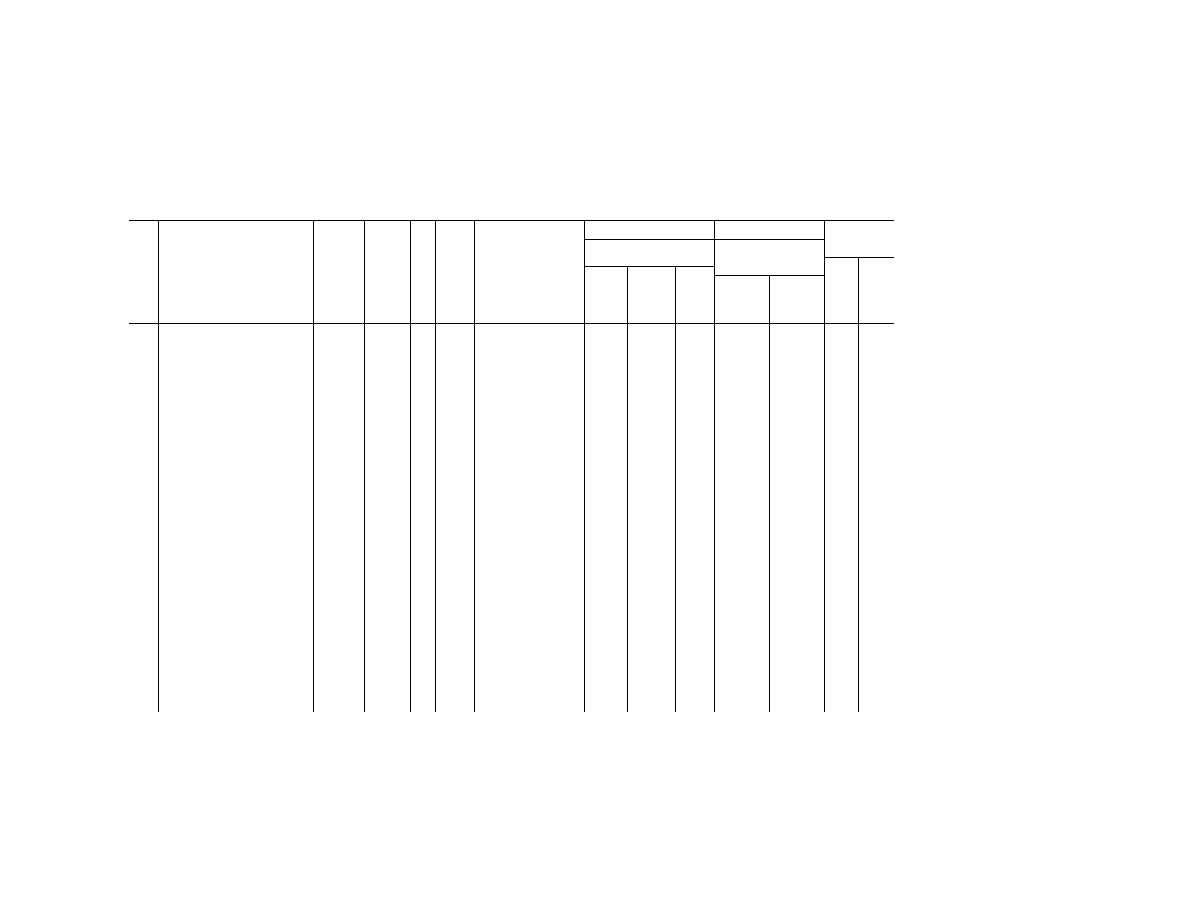
220
49 CFR Ch. I (10–1–23 Edition)
§
172.101
§ 172.101 H
AZARDOUS
M
ATERIALS
T
ABLE
—Continued
Sym-
bols
Hazardous materials descriptions
and proper shipping names
Hazard
class or
Division
Identi-
fication
Numbers
PG
Label
Codes
Special provisions
(§ 172.102)
(8)
(9)
(10)
Vessel
stowage
Packaging
(§ 173.***)
Quantity limitations
(see §§ 173.27 and
175.75)
Loca-
tion
Other
Excep-
tions
Non-bulk
Bulk
Passenger
aircraft/rail
Cargo air-
craft only
(1)
(2)
(3)
(4)
(5)
(6)
(7)
(8A)
(8B)
(8C)
(9A)
(9B)
(10A)
(10B)
Engine, internal combustion, flam-
mable gas powered or Engine,
fuel cell, flammable gas powered
or Machinery, internal combus-
tion, flammable gas powered or
Machinery, fuel cell, flammable
gas powered
2.1 UN3529
......
2.1
135, A200 220
220
220
Forbidden
No limit
E
Engine, internal combustion, flam-
mable liquid powered or Engine,
fuel cell, flammable liquid pow-
ered or Machinery, internal com-
bustion, flammable liquid pow-
ered or Machinery, fuel cell, flam-
mable liquid powered
3 UN3528
......
3
135, A200 220
220
220
No limit
No limit
E
149
Engine, internal combustion or Ma-
chinery, internal combustion
9 UN3530
......
9
135, A200 220
220
220
No limit
No limit
A
G
Environmentally hazardous sub-
stance, liquid, n.o.s.
9 UN3082
III
9
8, 146, 173, 335, 441,
IB3,
T4, TP1, TP29
155
203
241
No limit
No limit
A
............
G
Environmentally hazardous sub-
stance, solid, n.o.s.
9 UN3077
III
9
8, 146, 335, 384, 441,
A112,
B54, B120, IB8, IP3,
N20, N91, T1, TP33
155
213
240
No limit
No limit
A
............
Epibromohydrin
6.1 UN2558
I
6.1, 3
T14, TP2, TP13 None
201
243
Forbidden
Forbidden
D
40
+
Epichlorohydrin
6.1 UN2023
II
6.1, 3
IB2, T7, TP2, TP13 153
202
243
5 L
60 L
A
40
1,2-Epoxy-3-ethoxypropane
3 UN2752
III
3
B1, IB3, T2, TP1 150
203
242
60 L
220 L
A
Esters, n.o.s.
3 UN3272
II
3
IB2, T7, TP1, TP8, TP28 150
202
242
5 L
60 L
B
III
3
B1, IB3, T4, TP1, TP29 150
203
242
60 L
220 L
A
Etching acid, liquid, n.o.s., see
Hydrofluoric acid, etc
Ethane
2.1 UN1035
2.1
306
304
302
Forbidden
150 kg
E
40
D
Ethane-Propane mixture, refrig-
erated liquid
2.1 NA1961
2.1
T75, TP5 None
316
314,
315
Forbidden
Forbidden
D
40
Ethane, refrigerated liquid
2.1 UN1961
2.1
T75, TP5 None
None
315
Forbidden
Forbidden
D
40
Ethanol amine dinitrate
Forbidden
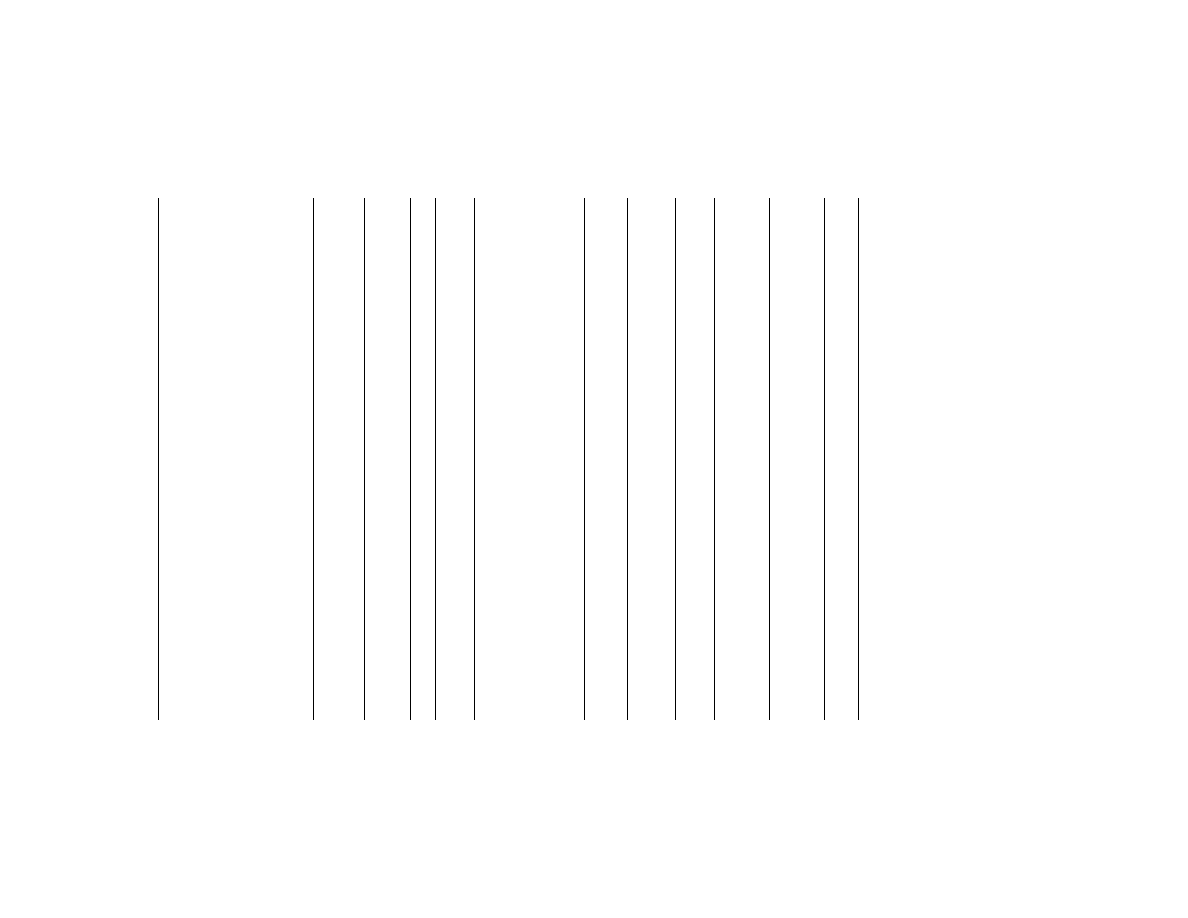
221
Pipeline and Haz. Matls. Safety Admin., DOT
§
172.101
Ethanol and gasoline mixture or
Ethanol and motor spirit mixture
or Ethanol and petrol mixture,
with more than 10% ethanol
3 UN3475
II
3
144, 177, IB2, T4, TP1 150
202
242
5 L
60 L
E
Ethanol or Ethyl alcohol or Ethanol
solutions or Ethyl alcohol solu-
tions
3 UN1170
II
3
24, IB2, T4, TP1 4b, 150
202
242
5 L
60 L
A
III
3
24, B1, IB3, T2, TP1 4b, 150
203
242
60 L
220 L
A
Ethanolamine or Ethanolamine so-
lutions
8 UN2491
III
8
IB3, T4, TP1 154
203
241
5 L
60 L
A
52.
Ether, see Diethyl ether
Ethers, n.o.s.
3 UN3271
II
3
IB2, T7, TP1, TP8, TP28 150
202
242
5 L
60 L
B
III
3
B1, IB3, T4, TP1, TP29 150
203
242
60 L
220 L
A
Ethyl acetate
3 UN1173
II
3
IB2, T4, TP1 150
202
242
5 L
60 L
B
Ethyl acrylate, stabilized
3 UN1917
II
3
387, IB2, T4, TP1, TP13 150
202
242
5 L
60 L
C
25, 40
Ethyl alcohol, see Ethanol
Ethyl aldehyde, see Acetaldehyde
Ethyl amyl ketone
3 UN2271
III
3
B1, IB3, T2, TP1 150
203
242
60 L
220 L
A
N-Ethylbenzyltoluidines, solid
6.1 UN3460
III
6.1
IB8, IP3, T1, TP33 153
213
240
100 kg
200 kg
A
N-Ethyl-N-benzylaniline
6.1 UN2274
III
6.1
IB3, T4, TP1 153
203
241
60 L
220 L
A
Ethyl borate
3 UN1176
II
3
IB2, T4, TP1 150
202
242
5 L
60 L
B
Ethyl bromide
6.1 UN1891
II
6.1
IB2, IP8, T7, TP2, TP13 153
202
243
5 L
60 L
B
40, 85
Ethyl bromoacetate
6.1 UN1603
II
6.1, 3
IB2, T7, TP2 153
202
243
Forbidden
Forbidden
D
40
Ethyl butyl ether
3 UN1179
II
3
B1, IB2, T4, TP1 150
202
242
5 L
60 L
B
Ethyl butyrate
3 UN1180
III
3
B1, IB3, T2, TP1 150
203
242
60 L
220 L
A
Ethyl chloride
2.1 UN1037
2.1
B77, N86, T50 None
322
314,
315
Forbidden
150 kg
B
40
Ethyl chloroacetate
6.1 UN1181
II
6.1, 3
IB2, T7, TP2 153
202
243
5 L
60 L
A
Ethyl chloroformate
6.1 UN1182
I
6.1, 3,
8
2, B9, B14, B32, N34,
T20, TP2, TP13, TP38,
TP45
None
227
244
Forbidden
Forbidden
D
21, 40,
53, 58,
100
Ethyl 2-chloropropionate
3 UN2935
III
3
B1, IB3, T2, TP1 150
203
242
60 L
220 L
A
+
Ethyl chlorothioformate
8 UN2826
II
8, 6.1,
3
2, B9, B14, B32, T20,
TP2, TP38, TP45
None
227
244
Forbidden
Forbidden
A
40, 53,
58
Ethyl crotonate
3 UN1862
II
3
IB2, T4, TP2 150
202
242
5 L
60 L
B
Ethyl ether, see Diethyl ether
Ethyl fluoride or Refrigerant gas
R161
2.1 UN2453
2.1
306
304
314,
315
Forbidden
150 kg
E
40
Ethyl formate
3 UN1190
II
3
IB2, T4, TP1 150
202
242
5 L
60 L
E
Ethyl hydroperoxide
Forbidden
Ethyl isobutyrate
3 UN2385
II
3
IB2, T4, TP1 150
202
242
5 L
60 L
B
+
Ethyl isocyanate
6.1 UN2481
I
6.1, 3
1, B9, B14, B30, T20,
TP2, TP13, TP38, TP44
None
226
244
Forbidden
Forbidden
D
40, 52
Ethyl lactate
3 UN1192
III
3
B1, IB3, T2, TP1 150
203
242
60 L
220 L
A
Ethyl mercaptan
3 UN2363
I
3
T11, TP2, TP13 None
201
243
Forbidden
30 L
E
95, 102
Ethyl methacrylate, stabilized
3 UN2277
II
3
387, IB2, T4, TP1 150
202
242
5 L
60 L
C
25
Ethyl methyl ether
2.1 UN1039
2.1
None
201
314,
315
Forbidden
150 kg
B
40
Ethyl methyl ketone or Methyl ethyl
ketone
3 UN1193
II
3
IB2, T4, TP1 150
202
242
5 L
60 L
B
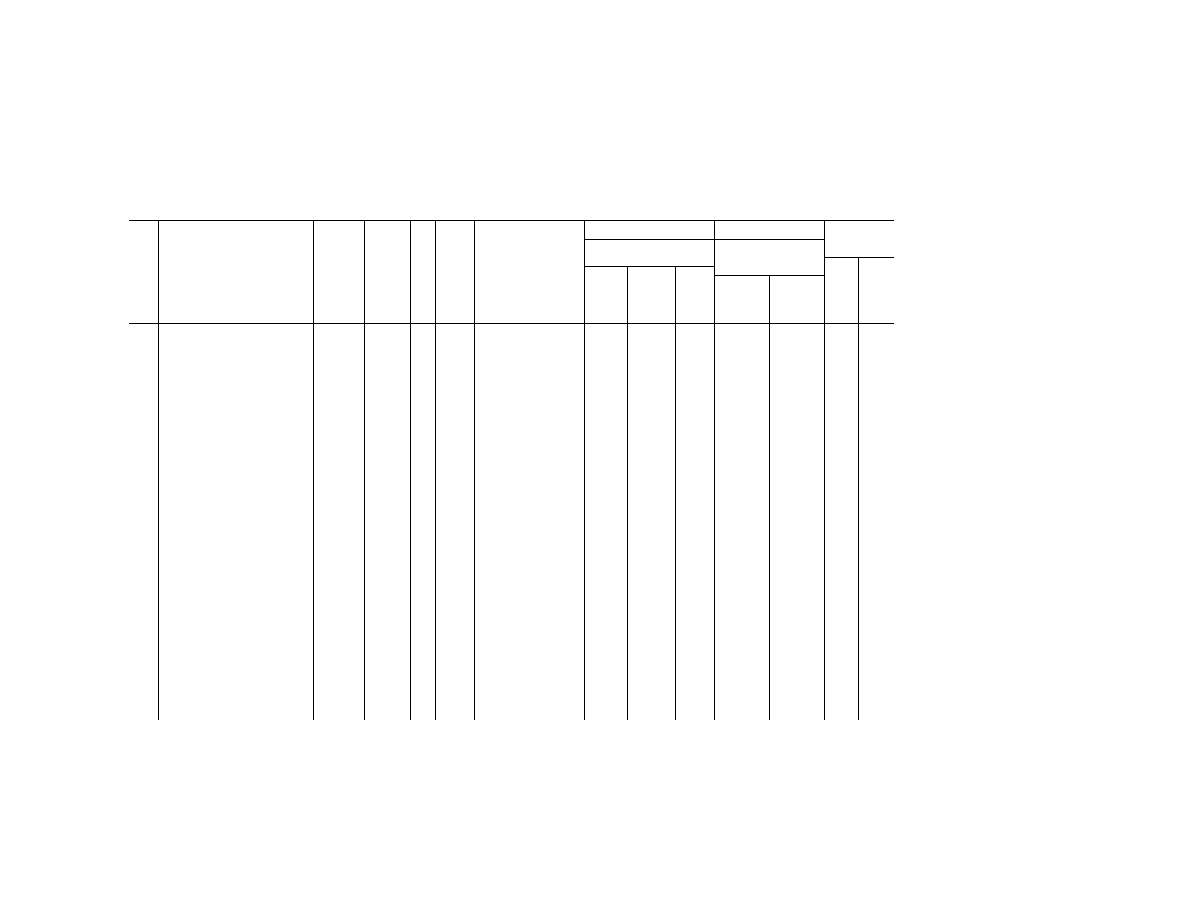
222
49 CFR Ch. I (10–1–23 Edition)
§
172.101
§ 172.101 H
AZARDOUS
M
ATERIALS
T
ABLE
—Continued
Sym-
bols
Hazardous materials descriptions
and proper shipping names
Hazard
class or
Division
Identi-
fication
Numbers
PG
Label
Codes
Special provisions
(§ 172.102)
(8)
(9)
(10)
Vessel
stowage
Packaging
(§ 173.***)
Quantity limitations
(see §§ 173.27 and
175.75)
Loca-
tion
Other
Excep-
tions
Non-bulk
Bulk
Passenger
aircraft/rail
Cargo air-
craft only
(1)
(2)
(3)
(4)
(5)
(6)
(7)
(8A)
(8B)
(8C)
(9A)
(9B)
(10A)
(10B)
Ethyl nitrite solutions
3 UN1194
I
3, 6.1
None
201
None
Forbidden
Forbidden
E
40, 105
Ethyl orthoformate
3 UN2524
III
3
B1, IB3, T2, TP1 150
203
242
60 L
220 L
A
Ethyl oxalate
6.1 UN2525
III
6.1
IB3, T4, TP1 153
203
241
60 L
220 L
A
Ethyl perchlorate
Forbidden
D
Ethyl phosphonothioic dichloride,
anhydrous
6.1 NA2927
I
6.1, 8
2, B9, B14, B32, T20,
TP4, TP12, TP13, TP38,
TP45
None
227
244
Forbidden
Forbidden
D
40
D
Ethyl phosphonous dichloride, an-
hydrous pyrophoric liquid
6.1 NA2845
I
6.1,
4.2
2, B9, B14, B32, T20,
TP4, TP12, TP13, TP38,
TP45
None
227
244
Forbidden
Forbidden
D
18
D
Ethyl phosphorodichloridate
6.1 NA2927
I
6.1, 8
2, B9, B14, B32, T20,
TP4, TP12, TP13, TP38,
TP45
None
227
244
Forbidden
Forbidden
D
40
Ethyl propionate
3 UN1195
II
3
IB2, T4, TP1 150
202
242
5 L
60 L
B
Ethyl propyl ether
3 UN2615
II
3
IB2, T4, TP1 150
202
242
5 L
60 L
E
Ethyl silicate, see Tetraethyl silicate
Ethylacetylene, stabilized
2.1 UN2452
......
2.1
387, N88 None
304
314,
315
Forbidden
150 kg
B
25, 40
Ethylamine
2.1 UN1036
......
2.1
B77, N87, T50 None
321
314,
315
Forbidden
150 kg
D
40, 52
Ethylamine, aqueous solution with
not less than 50 percent but not
more than 70 percent ethylamine
3 UN2270
II
3, 8
IB2, T7, TP1 150
202
243
1 L
5 L
B
40, 52.
N-Ethylaniline
6.1 UN2272
III
6.1
IB3, T4, TP1 153
203
241
60 L
220 L
A
52, 74
2-Ethylaniline
6.1 UN2273
III
6.1
IB3, T4, TP1 153
203
241
60 L
220 L
A
52, 74
Ethylbenzene
3 UN1175
II
3
IB2, T4, TP1 150
202
242
5 L
60 L
B
N-Ethylbenzyltoluidines liquid
6.1 UN2753
III
6.1
IB3, T7, TP1 153
203
241
60 L
220 L
A
2-Ethylbutanol
3 UN2275
III
3
B1, IB3, T2, TP1 150
203
242
60 L
220 L
A
2-Ethylbutyl acetate
3 UN1177
III
3
B1, IB3, T2, TP1 150
203
242
60 L
220 L
A
2-Ethylbutyraldehyde
3 UN1178
II
3
B1, IB2, T4, TP1 150
202
242
5 L
60 L
B
Ethyldichloroarsine
6.1 UN1892
I
6.1
2, B9, B14, B32, T20,
TP2, TP13, TP38, TP45
None
227
244
Forbidden
Forbidden
D
40
Ethyldichlorosilane
4.3 UN1183
I
4.3, 8,
3
A2, A7, N34, T14, TP2,
TP7, TP13, W31
None
201
244
Forbidden
1 L
D
21, 40,
49, 53,
58, 100
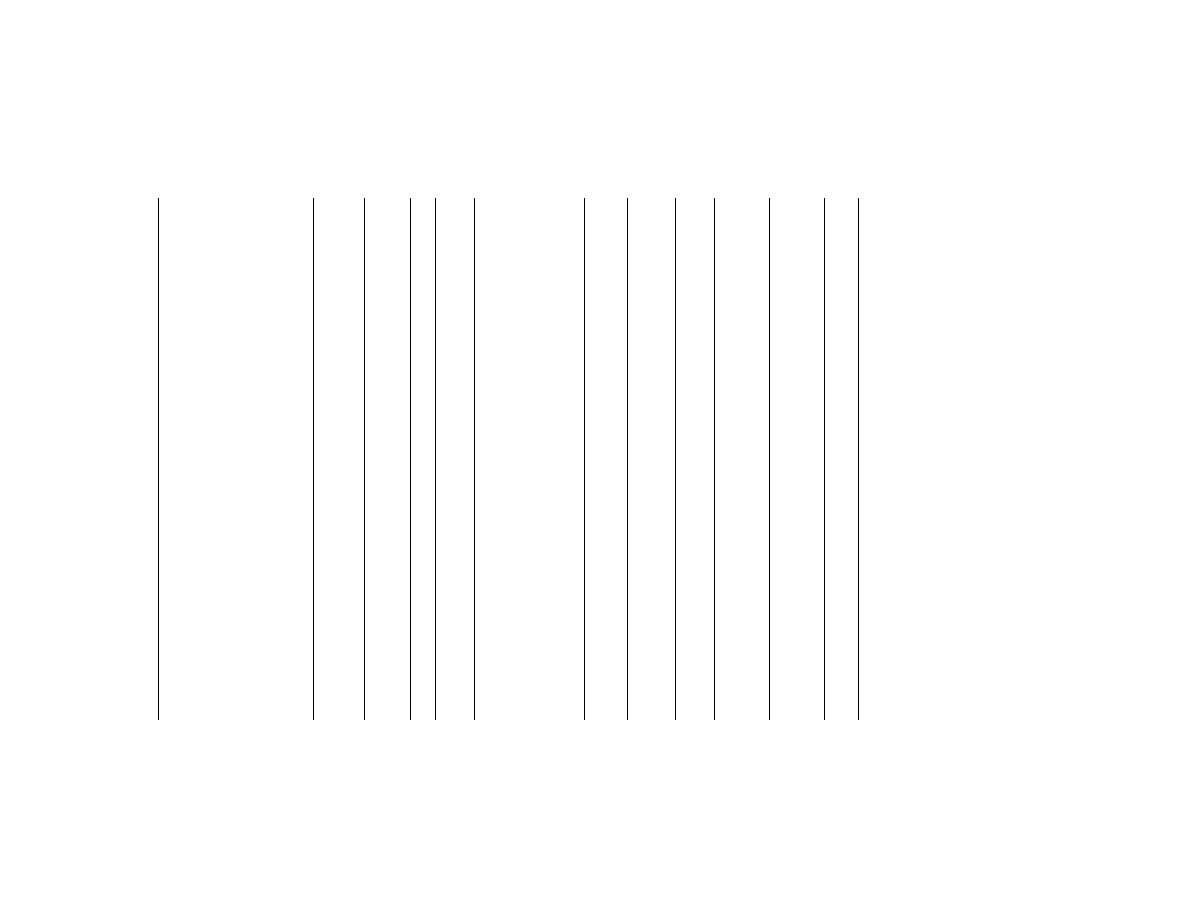
223
Pipeline and Haz. Matls. Safety Admin., DOT
§
172.101
Ethylene, acetylene and propylene
in mixture, refrigerated liquid with
at least 71.5 percent ethylene
with not more than 22.5 percent
acetylene and not more than 6
percent propylene
2.1 UN3138
2.1
T75, TP5 None
304
314,
315
Forbidden
Forbidden
D
40, 57
Ethylene chlorohydrin
6.1 UN1135
I
6.1, 3
2, B9, B14, B32, T20,
TP2, TP13, TP38, TP45
None
227
244
Forbidden
Forbidden
D
40
Ethylene
2.1 UN1962
2.1
306
304
302
Forbidden
150 kg
E
40
Ethylene diamine diperchlorate
Forbidden
Ethylene dibromide
6.1 UN1605
I
6.1
2, B9, B14, B32, B77,
T20, TP2, TP13, TP38,
TP45
None
227
244
Forbidden
Forbidden
D
40
Ethylene dibromide and methyl bro-
mide liquid mixtures, see Methyl
bromide and ethylene dibromide,
liquid mixtures
Ethylene dichloride
3 UN1184
II
3, 6.1
IB2, N36, T7, TP1 150
202
243
1 L
60 L
B
40
Ethylene glycol diethyl ether
3 UN1153
II
3
IB2, T4, TP1 150
202
242
5 L
60 L
A
III
3
B1, IB3, T2, TP1 150
203
242
60 L
220 L
A
Ethylene glycol dinitrate
Forbidden
Ethylene glycol monoethyl ether
3 UN1171
III
3
B1, IB3, T2, TP1 150
203
242
60 L
220 L
A
Ethylene glycol monoethyl ether ac-
etate
3 UN1172
III
3
B1, IB3, T2, TP1 150
203
242
60 L
220 L
A
Ethylene glycol monomethyl ether
3 UN1188
III
3
B1, IB3, T2, TP1 150
203
242
60 L
220 L
A
Ethylene glycol monomethyl ether
acetate
3 UN1189
III
3
B1, IB3, T2, TP1 150
203
242
60 L
220 L
A
Ethylene oxide and carbon dioxide
mixture with more than 87 per-
cent ethylene oxide
2.3 UN3300
2.3,
2.1
4 None
304
314,
315
Forbidden
Forbidden
D
40
Ethylene oxide and carbon dioxide
mixtures with more than 9 per-
cent but not more than 87 per-
cent ethylene oxide
2.1 UN1041
2.1
T50 306
304
314,
315
Forbidden
25 kg
B
40
Ethylene oxide and carbon dioxide
mixtures with not more than 9
percent ethylene oxide
2.2 UN1952
2.2
306
304
314,
315
75 kg
150 kg
A
Ethylene oxide and
chlorotetrafluoroethane mixture
with not more than 8.8 percent
ethylene oxide
2.2 UN3297
2.2
T50 306
304
314,
315
75 kg
150 kg
A
Ethylene oxide and dichlorodifluoro-
methane mixture, with not more
than 12.5 percent ethylene oxide
2.2 UN3070
2.2
T50 306
304
314,
315
75 kg
150 kg
A
Ethylene oxide and
pentafluoroethane mixture with
not more than 7.9 percent ethyl-
ene oxide
2.2 UN3298
2.2
T50 306
304
314,
315
75 kg
150 kg
A
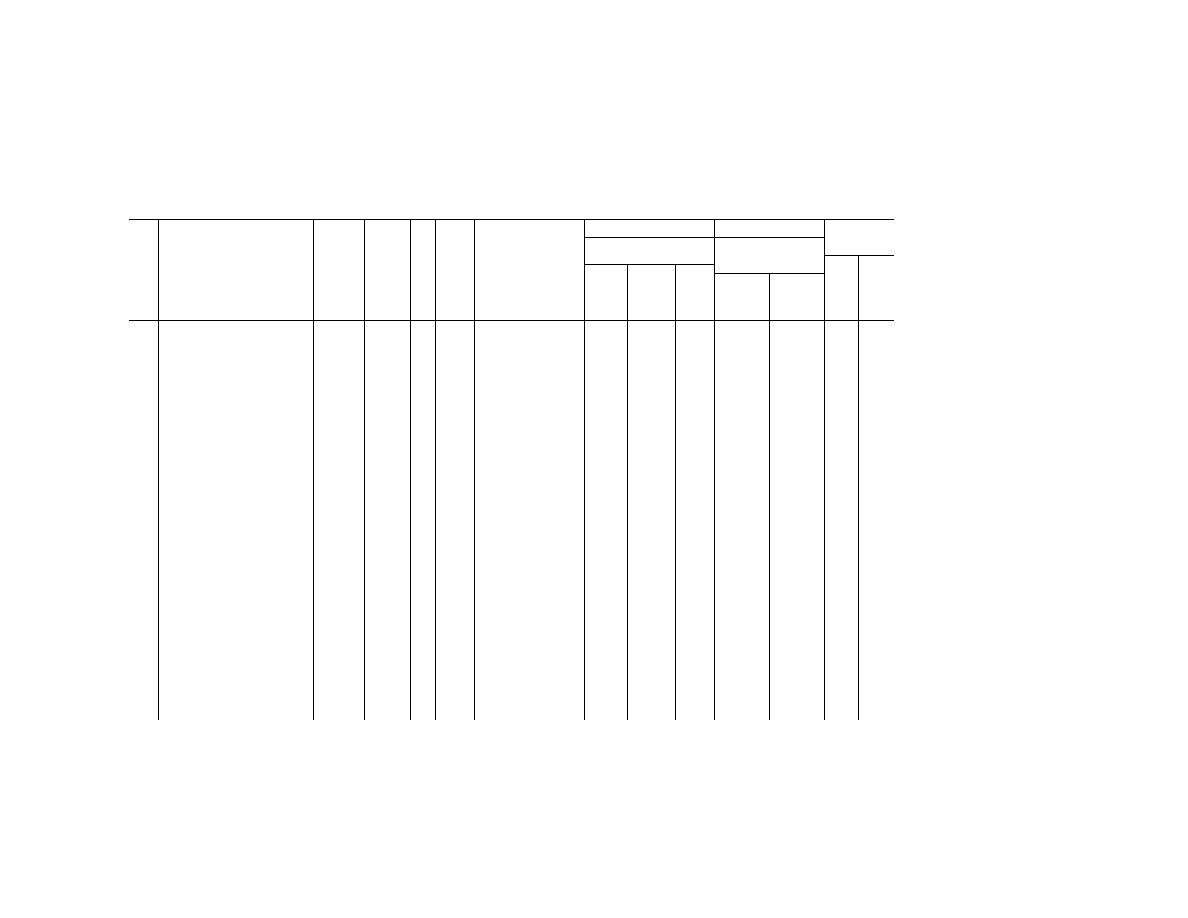
224
49 CFR Ch. I (10–1–23 Edition)
§
172.101
§ 172.101 H
AZARDOUS
M
ATERIALS
T
ABLE
—Continued
Sym-
bols
Hazardous materials descriptions
and proper shipping names
Hazard
class or
Division
Identi-
fication
Numbers
PG
Label
Codes
Special provisions
(§ 172.102)
(8)
(9)
(10)
Vessel
stowage
Packaging
(§ 173.***)
Quantity limitations
(see §§ 173.27 and
175.75)
Loca-
tion
Other
Excep-
tions
Non-bulk
Bulk
Passenger
aircraft/rail
Cargo air-
craft only
(1)
(2)
(3)
(4)
(5)
(6)
(7)
(8A)
(8B)
(8C)
(9A)
(9B)
(10A)
(10B)
Ethylene oxide and propylene oxide
mixtures, with not more than 30
percent ethylene oxide
3 UN2983
I
3, 6.1
5, A11, N4, N34, T14,
TP2, TP7, TP13
None
201
243
Forbidden
30 L
E
40
Ethylene oxide and
tetrafluoroethane mixture with not
more than 5.6 percent ethylene
oxide
2.2 UN3299
2.2
T50 306
304
314,
315
75 kg
150 kg
A
Ethylene oxide or Ethylene oxide
with nitrogen up to a total pres-
sure of 1 MPa (10 bar) at 50 de-
grees C
2.3 UN1040
2.3,
2.1
4, 342, T50, TP20 None
323
323
Forbidden
Forbidden
D
40
Ethylene, refrigerated liquid (cryo-
genic liquid)
2.1 UN1038
2.1
T75, TP5 None
316
318,
319
Forbidden
Forbidden
D
40
Ethylenediamine
8 UN1604
II
8, 3
IB2, T7, TP2 154
202
243
1 L
30 L
A
40, 52.
Ethyleneimine, stabilized
6.1 UN1185
I
6.1, 3
1, 387, B9, B14, B30,
B77, N25, N32, T22,
TP2, TP13, TP38, TP44
None
226
244
Forbidden
Forbidden
D
25, 40
Ethylhexaldehyde, see Octyl
aldehydes etc
2-Ethylhexyl chloroformate
6.1 UN2748
II
6.1, 8
IB2, T7, TP2, TP13 153
202
243
1 L
30 L
A
12, 13,
25, 40,
53, 58
2-Ethylhexylamine
3 UN2276
III
3, 8
B1, IB3, T4, TP1 150
203
242
5 L
60 L
A
40, 52
Ethylphenyldichlorosilane
8 UN2435
II
8
A7, B2, N34, T10, TP2,
TP7, TP13
None
206
242
Forbidden
30 L
C
53, 58
1-Ethylpiperidine
3 UN2386
II
3, 8
IB2, T7, TP1 150
202
243
1 L
5 L
B
52.
N-Ethyltoluidines
6.1 UN2754
II
6.1
IB2, T7, TP2 153
202
243
5 L
60 L
A
Ethyltrichlorosilane
3 UN1196
II
3, 8
A7, N34, T10, TP2, TP7,
TP13
None
206
243
Forbidden
5 L
B
40
Etiologic agent, see Infectious sub-
stances, etc
Explosive articles, see Articles, ex-
plosive , n.o.s. etc
Explosive, blasting, type A
1.1D UN0081
......
1.1D
148 None
62
None
Forbidden
Forbidden
04
25,
19E,
21E
Explosive, blasting, type B
1.1D UN0082
......
1.1D
........................................
None
62
None
Forbidden
Forbidden
04
25,
19E
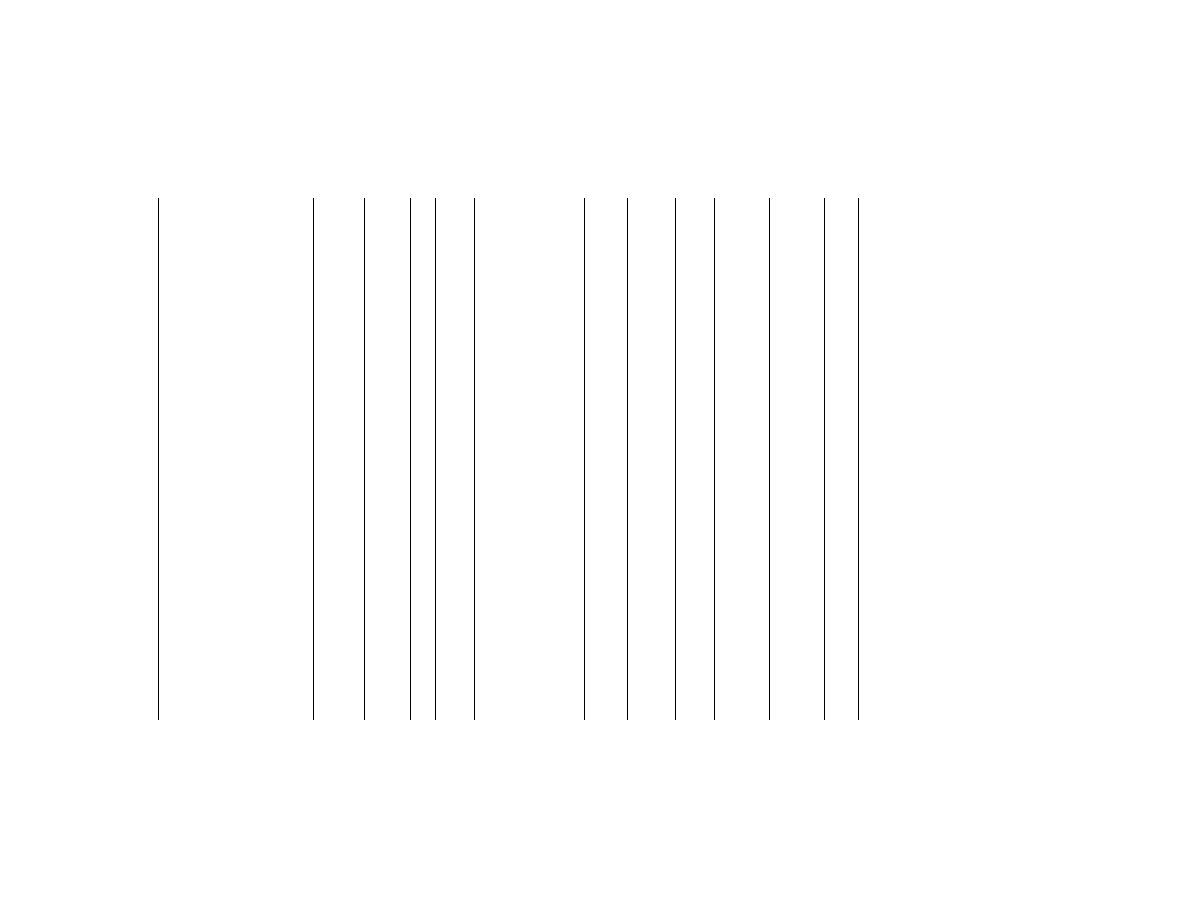
225
Pipeline and Haz. Matls. Safety Admin., DOT
§
172.101
Explosive, blasting, type B or Agent
blasting, Type B
1.5D UN0331
......
1.5D
105, 106, 148 None
62
None
Forbidden
Forbidden
03
25,
19E
Explosive, blasting, type C
1.1D UN0083
......
1.1D
123 None
62
None
Forbidden
Forbidden
04
25,
22E
Explosive, blasting, type D
1.1D UN0084
......
1.1D
........................................
None
62
None
Forbidden
Forbidden
04
25
Explosive, blasting, type E
1.1D UN0241
......
1.1D
148 None
62
None
Forbidden
Forbidden
04
25,
19E
Explosive, blasting, type E or Agent
blasting, Type E
1.5D UN0332
......
1.5D
105, 106, 148 None
62
None
Forbidden
Forbidden
03
25,
19E
Explosive, forbidden. See § 173.54
Forbidden
Explosive substances, see Sub-
stances, explosive, n.o.s. etc
Explosives, slurry, see Explosive,
blasting, type E
Explosives, water gels, see Explo-
sive, blasting, type E
Extracts, aromatic, liquid
3 UN1169
II
3
149, IB2, T4, TP1, TP8 150
202
242
5 L
60 L
B
III
3
B1, IB3, T2, TP1 150
203
242
60 L
220 L
A
Extracts, flavoring, liquid
3 UN1197
II
3
149, IB2, T4, TP1, TP8 150
202
242
5 L
60 L
B
III
3
B1, IB3, T2, TP1 150
203
242
60 L
220 L
A
Fabric with animal or vegetable oil,
see Fibers or fabrics, etc
Ferric arsenate
6.1 UN1606
II
6.1
IB8, IP2, IP4, T3, TP33 153
212
242
25 kg
100 kg
A
Ferric arsenite
6.1 UN1607
II
6.1
IB8, IP2, IP4, T3, TP33 153
212
242
25 kg
100 kg
A
Ferric chloride, anhydrous
8 UN1773
III
8
IB8, IP3, T1, TP33 154
213
240
25 kg
100 kg
A
53, 58
Ferric chloride, solution
8 UN2582
III
8
B15, IB3, T4, TP1 154
203
241
5 L
60 L
A
53, 58
Ferric nitrate
5.1 UN1466
III
5.1
A1, A29, IB8, IP3, T1,
TP33
152
213
240
25 kg
100 kg
A
Ferrocerium
4.1 UN1323
II
4.1
59, A19, IB8, IP2, IP4,
T3, TP33, W100
151
212
240
15 kg
50 kg
A
13,
147,
148
Ferrosilicon with 30 percent or more
but less than 90 percent silicon
4.3 UN1408
III
4.3,
6.1
A1, A19, B6, IB8, IP4,
IP7, T1, TP33, W100
151
213
240
25 kg
100 kg
A
13, 40,
52, 53,
85,
103,
148
Ferrous arsenate
6.1 UN1608
II
6.1
IB8, IP2, IP4, T3, TP33 153
212
242
25 kg
100 kg
A
D
Ferrous chloride, solid
8 NA1759
II
8
IB8, IP2, IP4, T3, TP33 154
212
240
15 kg
50 kg
A
D
Ferrous chloride, solution
8 NA1760
II
8
B3, IB2, T11, TP2, TP27 154
202
242
1 L
30 L
B
40
Ferrous metal borings or Ferrous
metal shavings or Ferrous metal
turnings or Ferrous metal cuttings
in a form liable to self-heating
4.2 UN2793
III
4.2
A1, A19, B134, B136,
IB8, IP3, IP7, IP21,
W100
None
213
241
25 kg
100 kg
A
13, 148
Fertilizer ammoniating solution with
free ammonia
2.2 UN1043
2.2
N87 306
304
314,
315
Forbidden
150 kg
E
40
A I W Fibers, animal or Fibers, vegetable
burnt, wet or damp
4.2 UN1372
III
4.2
151
213
240
Forbidden
Forbidden
A
A, I,
W
Fibers, vegetable, dry
4.1 UN3360
III
4.1
137 151
213
240
Forbidden
Forbidden
A
............
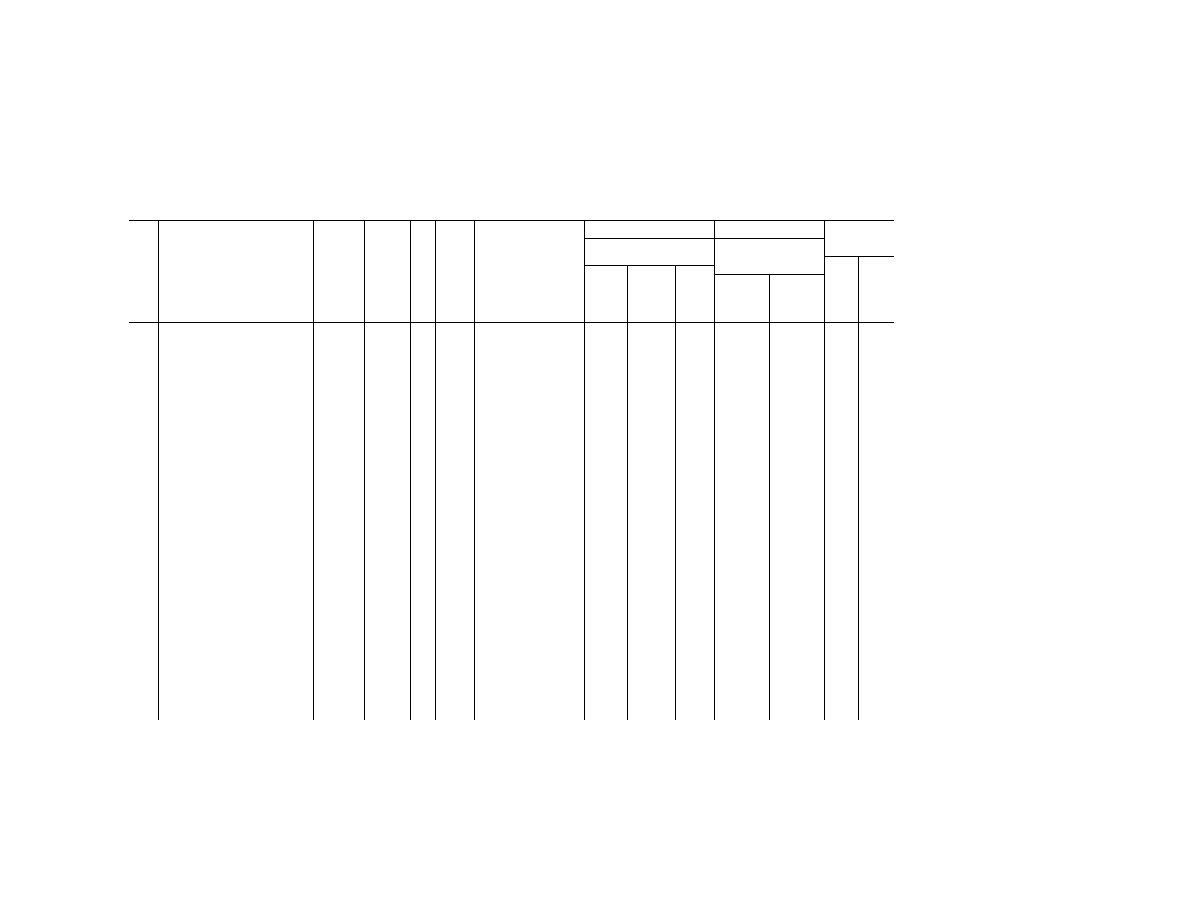
226
49 CFR Ch. I (10–1–23 Edition)
§
172.101
§ 172.101 H
AZARDOUS
M
ATERIALS
T
ABLE
—Continued
Sym-
bols
Hazardous materials descriptions
and proper shipping names
Hazard
class or
Division
Identi-
fication
Numbers
PG
Label
Codes
Special provisions
(§ 172.102)
(8)
(9)
(10)
Vessel
stowage
Packaging
(§ 173.***)
Quantity limitations
(see §§ 173.27 and
175.75)
Loca-
tion
Other
Excep-
tions
Non-bulk
Bulk
Passenger
aircraft/rail
Cargo air-
craft only
(1)
(2)
(3)
(4)
(5)
(6)
(7)
(8A)
(8B)
(8C)
(9A)
(9B)
(10A)
(10B)
A W
Fibers or Fabrics, animal or vege-
table or Synthetic, n.o.s. with ani-
mal or vegetable oil
4.2 UN1373
III
4.2
137, IB8, IP3, T1, TP33,
W31
None
213
241
Forbidden
Forbidden
A
Fibers or Fabrics impregnated with
weakly nitrated nitrocellulose,
n.o.s
4.1 UN1353
III
4.1
A1, IB8, IP3 151
213
240
25 kg
100 kg
D
Films, nitrocellulose base, from
which gelatine has been re-
moved; film scrap, see Celluloid
scrap
Films, nitrocellulose base, gelatine
coated (except scrap)
4.1 UN1324
III
4.1
........................................
151
183
None
25 kg
100 kg
D
28
Fire extinguisher charges, corrosive
liquid
8 UN1774
II
8
N41 154
202
None
1 L
30 L
A
Fire extinguisher charges, expelling,
explosive, see Cartridges, power
device
Fire extinguishers containing com-
pressed or liquefied gas
2.2 UN1044
......
2.2
110 309
309
None
75 kg
150 kg
A
............
Firelighters, solid with flammable
liquid
4.1 UN2623
III
4.1
A1, A19 151
213
None
25 kg
100 kg
A
52
Fireworks
1.1G UN0333
......
1.1G
108 None
62
None
Forbidden
Forbidden
03
25
Fireworks
1.2G UN0334
......
1.2G
108 None
62
None
Forbidden
Forbidden
03
25
Fireworks
1.3G UN0335
......
1.3G
108 None
62
None
Forbidden
Forbidden
03
25
Fireworks
1.4G UN0336
......
1.4G
108, 200 None
62
None
Forbidden
75 kg
02
25
Fireworks
1.4S UN0337
......
1.4S
108 None
62
None
25 kg
100 kg
01
25
First aid kit
9 UN3316
......
9
15 161
161
None
10 kg
10 kg
A
A, W
Fish meal, stabilized or Fish scrap,
stabilized
9 UN2216
III
None
155, B136, IB8, IP3, T1,
TP33
155
218
218
100 kg
200 kg
B
25, 88,
122,
128
Fish meal, unstablized or Fish
scrap, unstabilized
4.2 UN1374
II
4.2
155, A1, A19, IB8, IP2,
IP4, T3, TP33, W31,
W40
None
212
241
Forbidden
Forbidden
B
18, 25,
128
Flammable compressed gas, see
Compressed or Liquefied gas,
flammable, etc
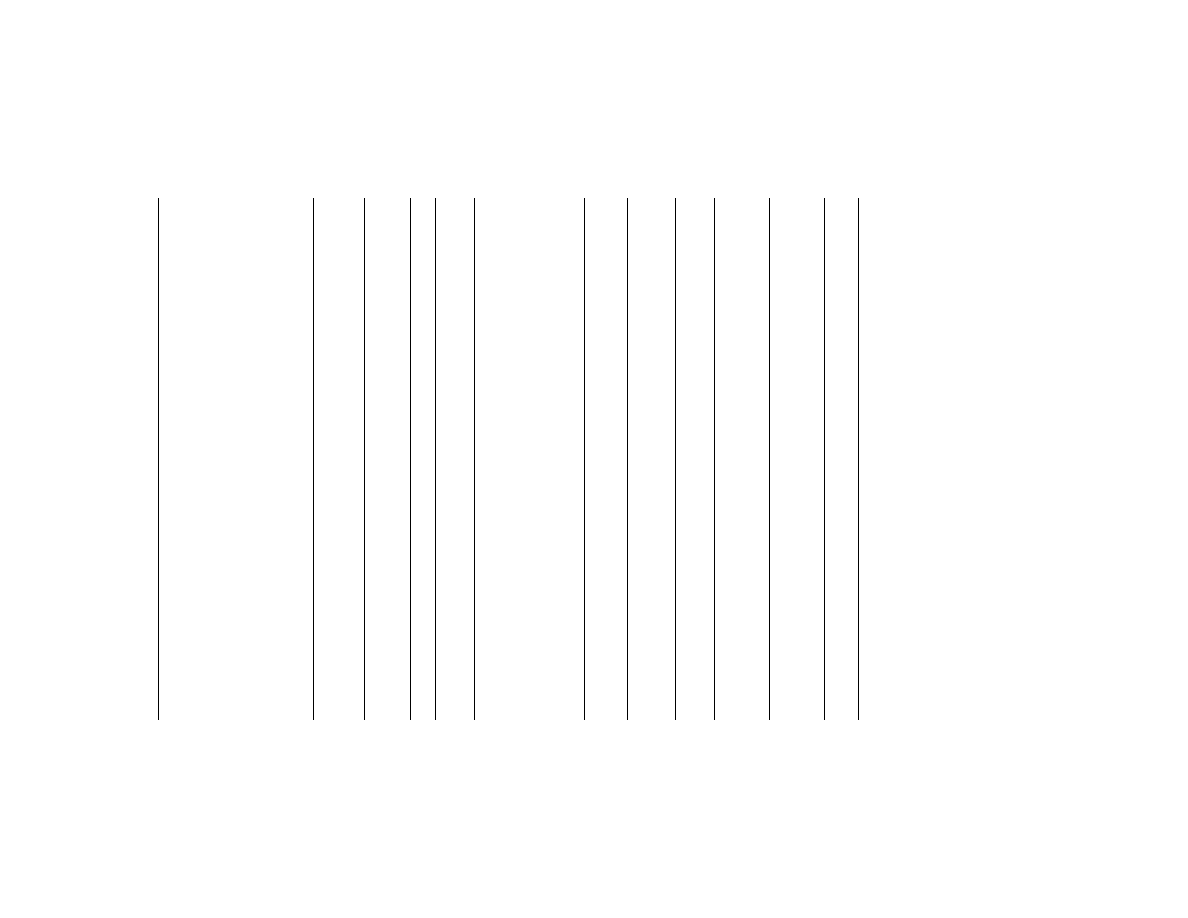
227
Pipeline and Haz. Matls. Safety Admin., DOT
§
172.101
Flammable compressed gas (small
receptacles not fitted with a dis-
persion device, not refillable), see
Receptacles, etc
Flammable gas in lighters, see
Lighters or lighter refills, ciga-
rettes, containing flammable gas
G
Flammable liquid, toxic, corrosive,
n.o.s.
3 UN3286
I
3, 6.1,
8
T14, TP2, TP13, TP27 None
201
243
Forbidden
2.5 L
E
21, 40,
100
II
3, 6.1,
8
IB2, T11, TP2, TP13,
TP27
150
202
243
1 L
5 L
B
21, 40,
100
G
Flammable liquids, corrosive, n.o.s.
3 UN2924
I
3, 8
T14, TP2 None
201
243
0.5 L
2.5 L
E
40
II
3, 8
IB2, T11, TP2, TP27 150
202
243
1 L
5 L
B
40
III
3, 8
B1, IB3, T7, TP1, TP28 150
203
242
5 L
60 L
A
40
G
Flammable liquids, n.o.s.
3 UN1993
I
3
T11, TP1, TP27 150
201
243
1 L
30 L
E
II
3
IB2, T7, TP1, TP8, TP28 150
202
242
5 L
60 L
B
III
3
B1, B52, IB3, T4, TP1,
TP29
150
203
242
60 L
220 L
A
G
Flammable liquids, toxic, n.o.s.
3 UN1992
I
3, 6.1
T14, TP2, TP13, TP27 None
201
243
Forbidden
30 L
E
40
II
3, 6.1
IB2, T7, TP2, TP13 150
202
243
1 L
60 L
B
40
III
3, 6.1
B1, IB3, T7, TP1, TP28 150
203
242
60 L
220 L
A
G
Flammable solid, corrosive, inor-
ganic, n.o.s.
4.1 UN3180
II
4.1, 8
A1, IB6, IP2, T3, TP33 151
212
242
15 kg
50 kg
D
40
III
4.1, 8
A1, IB6, T1, TP33 151
213
242
25 kg
100 kg
D
40
G
Flammable solid, inorganic, n.o.s.
4.1 UN3178
II
4.1
A1, IB8, IP2, IP4, T3,
TP33
151
212
240
15 kg
50 kg
B
III
4.1
A1, IB8, IP3, T1, TP33 151
213
240
25 kg
100 kg
B
G
Flammable solid, organic, molten,
n.o.s.
4.1 UN3176
II
4.1
IB1, T3, TP3, TP26 151
212
240
Forbidden
Forbidden
C
III
4.1
IB1, T1, TP3, TP26 151
213
240
Forbidden
Forbidden
C
G
Flammable solid, oxidizing, n.o.s
4.1 UN3097
II
4.1,
5.1
131 151
214
214
Forbidden
Forbidden
E
40
III
4.1,
5.1
131, T1, TP33 151
214
214
Forbidden
Forbidden
D
40
G
Flammable solid, toxic, inorganic,
n.o.s.
4.1 UN3179
II
4.1,
6.1
A1, IB6, IP2, T3, TP33 151
212
242
15 kg
50 kg
B
40
III
4.1,
6.1
A1, IB6, T1, TP33 151
213
242
25 kg
100 kg
B
40
G
Flammable solids, corrosive, or-
ganic, n.o.s.
4.1 UN2925
II
4.1, 8
A1, IB6, IP2, T3, TP33 151
212
242
15 kg
50 kg
D
40
III
4.1, 8
A1, IB6, T1, TP33 151
213
242
25 kg
100 kg
D
40
G
Flammable solids, organic, n.o.s.
4.1 UN1325
II
4.1
A1, IB8, IP2, IP4, T3,
TP33
151
212
240
15 kg
50 kg
B
III
4.1
A1, IB8, IP3, T1, TP33 151
213
240
25 kg
100 kg
B
G
Flammable solids, toxic, organic,
n.o.s.
4.1 UN2926
II
4.1,
6.1
A1, IB6, IP2, T3, TP33 151
212
242
15 kg
50 kg
B
40
III
4.1,
6.1
A1, IB6, T1, TP33 151
213
242
25 kg
100 kg
B
40
Flares, aerial
1.3G UN0093
......
1.3G
........................................
None
62
None
Forbidden
75 kg
03
25
Flares, aerial
1.4G UN0403
......
1.4G
........................................
None
62
None
Forbidden
75 kg
02
25
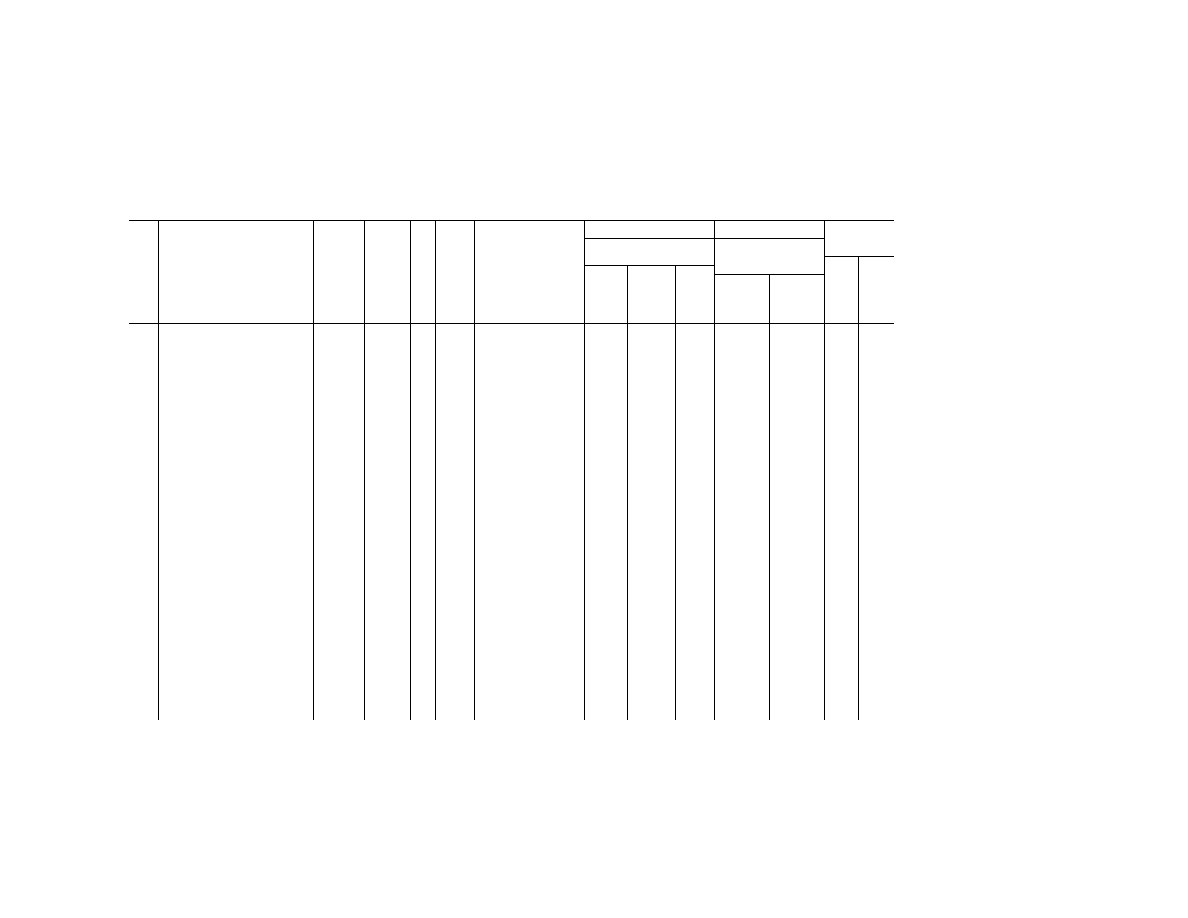
228
49 CFR Ch. I (10–1–23 Edition)
§
172.101
§ 172.101 H
AZARDOUS
M
ATERIALS
T
ABLE
—Continued
Sym-
bols
Hazardous materials descriptions
and proper shipping names
Hazard
class or
Division
Identi-
fication
Numbers
PG
Label
Codes
Special provisions
(§ 172.102)
(8)
(9)
(10)
Vessel
stowage
Packaging
(§ 173.***)
Quantity limitations
(see §§ 173.27 and
175.75)
Loca-
tion
Other
Excep-
tions
Non-bulk
Bulk
Passenger
aircraft/rail
Cargo air-
craft only
(1)
(2)
(3)
(4)
(5)
(6)
(7)
(8A)
(8B)
(8C)
(9A)
(9B)
(10A)
(10B)
Flares, aerial
1.4S UN0404
......
1.4S
........................................
None
62
None
25 kg
100 kg
01
25
Flares, aerial
1.1G UN0420
......
1.1G
........................................
None
62
None
Forbidden
Forbidden
03
25
Flares, aerial
1.2G UN0421
......
1.2G
........................................
None
62
None
Forbidden
Forbidden
03
25
Flares, airplane, see Flares, aerial
Flares, signal, see Cartridges, sig-
nal
Flares, surface
1.3G UN0092
......
1.3G
........................................
None
62
None
Forbidden
75 kg
03
25
Flares, surface
1.1G UN0418
......
1.1G
........................................
None
62
None
Forbidden
Forbidden
03
25
Flares, surface
1.2G UN0419
......
1.2G
........................................
None
62
None
Forbidden
Forbidden
03
25
Flares, water-activated, see Contri-
vances, water-activated, etc
Flash powder
1.1G UN0094
......
1.1G
........................................
None
62
None
Forbidden
Forbidden
03
25
Flash powder
1.3G UN0305
......
1.3G
........................................
None
62
None
Forbidden
Forbidden
03
25
Flue dusts, poisonous, see Arsen-
ical dust
Fluoric acid, see Hydrofluoric acid,
etc
Fluorine, compressed
2.3 UN1045
2.3,
5.1,
8
1, N86 None
302
None
Forbidden
Forbidden
D
40, 89,
90
Fluoroacetic acid
6.1 UN2642
I
6.1
IB7, IP1, T6, TP33 None
211
242
1 kg
15 kg
E
53, 58
Fluoroanilines
6.1 UN2941
III
6.1
IB3, T4, TP1 153
203
241
60 L
220 L
A
Fluorobenzene
3 UN2387
II
3
IB2, T4, TP1 150
202
242
5 L
60 L
B
Fluoroboric acid
8 UN1775
II
8
A7, B2, B15, IB2, N3,
N34, T7, TP2
154
202
242
1 L
30 L
A
53, 58
Fluorophosphoric acid anhydrous
8 UN1776
II
8
A7, B2, IB2, N3, N34,
T8, TP2
154
202
242
1 L
30 L
A
53, 58
G
Fluorosilicates, n.o.s
6.1 UN2856
III
6.1
IB8, IP3, T1, TP33 153
213
240
100 kg
200 kg
A
52
Fluorosilicic acid
8 UN1778
II
8
A7, B2, B15, IB2, N3,
N34, T8, TP2
154
202
242
1 L
30 L
A
53, 58
Fluorosulfonic acid
8 UN1777
I
8
A7, A10, B6, B10, N3,
N36, T10, TP2
None
201
243
0.5 L
2.5 L
D
40, 53,
58
Fluorotoluenes
3 UN2388
II
3
IB2, T4, TP1 150
202
242
5 L
60 L
B
40
Forbidden materials. See § 173.21
Forbidden
Formaldehyde solutions, flammable
3 UN1198
III
3, 8
176, B1, IB3, T4, TP1 150
203
242
5 L
60 L
A
40
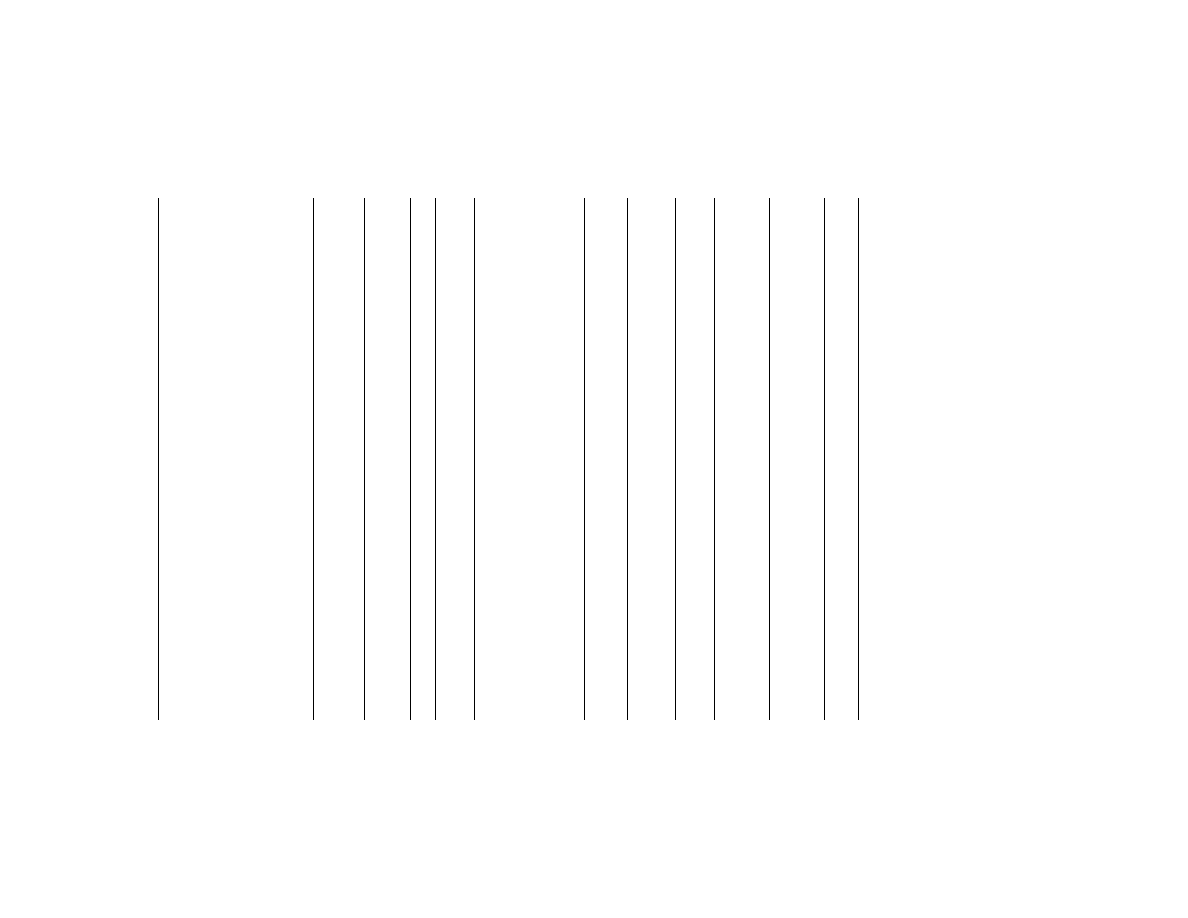
229
Pipeline and Haz. Matls. Safety Admin., DOT
§
172.101
Formaldehyde solutions (with not
less than 10% and less than 25%
formaldehyde), see Aviation regu-
lated liquid, n.o.s. or Other regu-
lated substances, liquid, n.o.s.
Formaldehyde solutions, with not
less than 25 percent formalde-
hyde
8 UN2209
III
8
IB3, T4, TP1 154
203
241
5 L
60 L
............
Formalin, see Formaldehyde, solu-
tions
Formic acid with not less than 10%
but not more than 85% acid by
mass
8 UN3412
II
8
IB2, T7, TP2 154
202
242
1 L
30 L
A
40, 53,
58
Formic acid with not less than 5%
but less than 10% acid by mass
8 UN3412
III
8
IB3, T4, TP1 154
203
241
5 L
60 L
A
40, 53,
58
Formic acid with more than 85%
acid by mass
8 UN1779
II
8, 3
B2, B28, IB2, T7, TP2 154
202
242
1 L
30 L
A
40, 53,
58
Fracturing devices, explosive, with-
out detonators for oil wells
1.1D UN0099
......
1.1D
........................................
None
62
62
Forbidden
Forbidden
03
25
Fuel, aviation, turbine engine
3 UN1863
I
3
144, T11, TP1, TP8,
TP28
150
201
243
1 L
30 L
E
II
3
144, IB2, T4, TP1, TP8 150
202
242
5 L
60 L
B
III
3
144, B1, IB3, T2, TP1 150
203
242
60 L
220 L
A
Fuel cell cartridges or Fuel cell car-
tridges contained in equipment or
Fuel cell cartridges packed with
equipment, containing corrosive
substances
8 UN3477
......
8
328 230
230
230
5 kg
50 kg
A
Fuel cell cartridges or Fuel cell car-
tridges contained in equipment or
Fuel cell cartridges packed with
equipment, containing flammable
liquids
3 UN3473
......
3
328 230
230
230
5 kg
50 kg
A
Fuel cell cartridges or Fuel cell car-
tridges contained in equipment or
Fuel cell cartridges packed with
equipment, containing hydrogen
in metal hydride
2.1 UN3479
......
2.1
328 230
230
230
1 kg
15 kg
B
Fuel cell cartridges or Fuel cell car-
tridges contained in equipment or
Fuel cell cartridges packed with
equipment, containing liquefied
flammable gas
2.1 UN3478
......
2.1
328 230
230
230
1 kg
15 kg
B
Fuel cell cartridges or Fuel cell car-
tridges contained in equipment or
Fuel cell cartridges packed with
equipment, containing water-reac-
tive substances
4.3 UN3476
......
4.3
328 230
230
230
5 kg
50 kg
A
13, 148
D
Fuel oil (No. 1, 2, 4, 5, or 6)
3 NA1993
III
3
144, B1, IB3, T4, TP1,
TP29
150
203
242
60 L
220 L
A
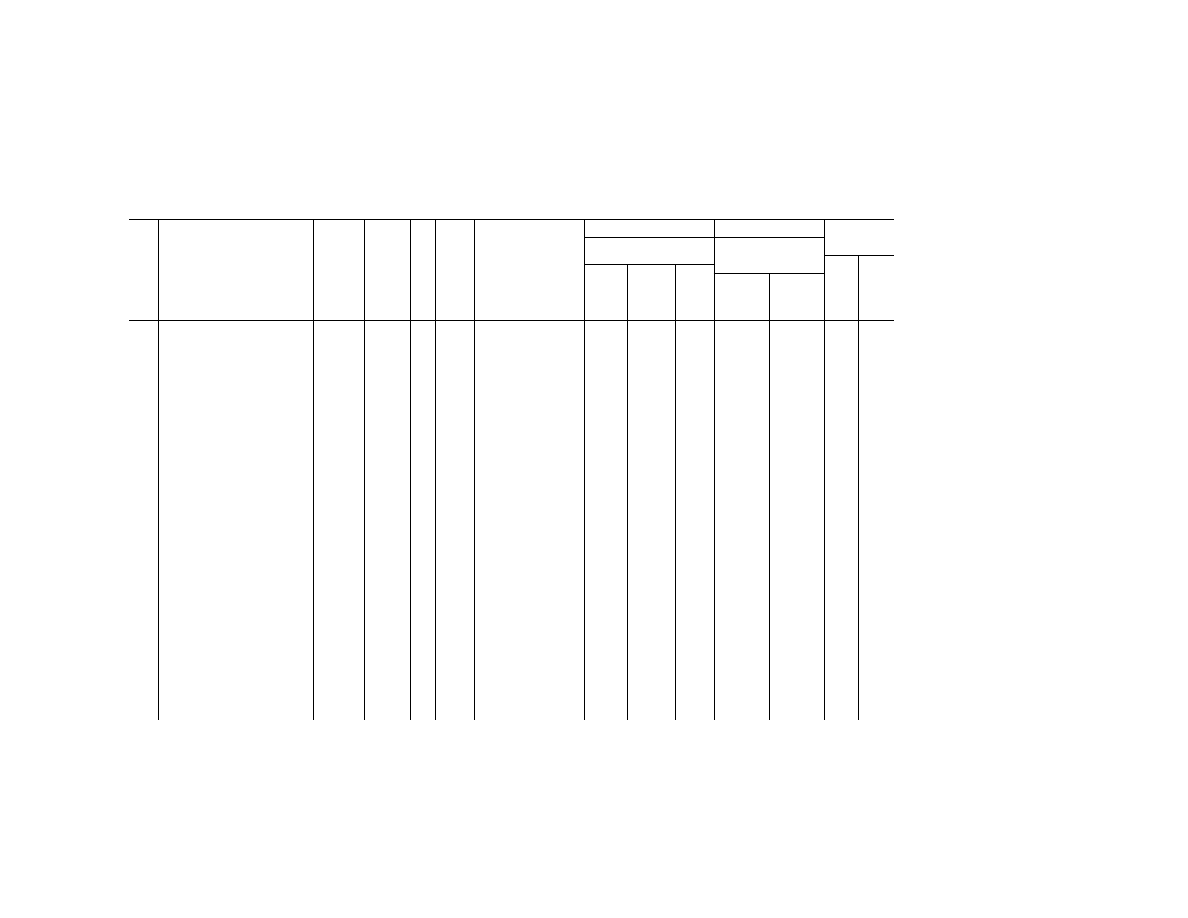
230
49 CFR Ch. I (10–1–23 Edition)
§
172.101
§ 172.101 H
AZARDOUS
M
ATERIALS
T
ABLE
—Continued
Sym-
bols
Hazardous materials descriptions
and proper shipping names
Hazard
class or
Division
Identi-
fication
Numbers
PG
Label
Codes
Special provisions
(§ 172.102)
(8)
(9)
(10)
Vessel
stowage
Packaging
(§ 173.***)
Quantity limitations
(see §§ 173.27 and
175.75)
Loca-
tion
Other
Excep-
tions
Non-bulk
Bulk
Passenger
aircraft/rail
Cargo air-
craft only
(1)
(2)
(3)
(4)
(5)
(6)
(7)
(8A)
(8B)
(8C)
(9A)
(9B)
(10A)
(10B)
Fuel system components (including
fuel control units (FCU), carbu-
retors, fuel lines, fuel pumps) see
Dangerous Goods in Apparatus
or Dangerous Goods in Articles
or Dangerous Goods in Machin-
ery
................
......
........................................
..................
..................
............
Fulminate of mercury (dry)
Forbidden
Fulminate of mercury, wet, see
Mercury fulminate, etc
Fulminating gold
Forbidden
Fulminating mercury
Forbidden
Fulminating platinum
Forbidden
Fulminating silver
Forbidden
Fulminic acid
Forbidden
Fumaryl chloride
8 UN1780
II
8
B2, IB2, T7, TP2 154
202
242
1 L
30 L
C
8, 40,
53, 58
Fumigated lading, see
§§ 172.302(g), 173.9 and
176.76(h)
Fumigated transport vehicle or
freight container see § 173.9
Furaldehydes
6.1 UN1199
II
6.1, 3
IB2, T7, TP2 153
202
243
5 L
60 L
A
Furan
3 UN2389
I
3
T12, TP2, TP13 None
201
243
1 L
30 L
E
40
Furfuryl alcohol
6.1 UN2874
III
6.1
IB3, T4, TP1 153
203
241
60 L
220 L
A
52, 74
Furfurylamine
3 UN2526
III
3, 8
B1, IB3, T4, TP1 150
203
242
5 L
60 L
A
40, 52
Fuse, detonating, metal clad, see
Cord, detonating, metal clad
Fuse, detonating, mild effect, metal
clad, see Cord, detonating, mild
effect, metal clad
Fuse, igniter tubular metal clad
1.4G UN0103
......
1.4G
........................................
None
62
None
Forbidden
75 kg
02
25
Fuse, non-detonating instantaneous
or quickmatch
1.3G UN0101
......
1.3G
........................................
None
62
None
Forbidden
Forbidden
03
25
Fuse, safety
1.4S UN0105
......
1.4S
........................................
None
62
None
25 kg
100 kg
01
25
D
Fusee (railway or highway)
4.1 NA1325
II
4.1
381 None
184
None
15 kg
50 kg
B
Fusel oil
3 UN1201
II
3
IB2, T4, TP1 150
202
242
5 L
60 L
B
III
3
B1, IB3, T2, TP1 150
203
242
60 L
220 L
A
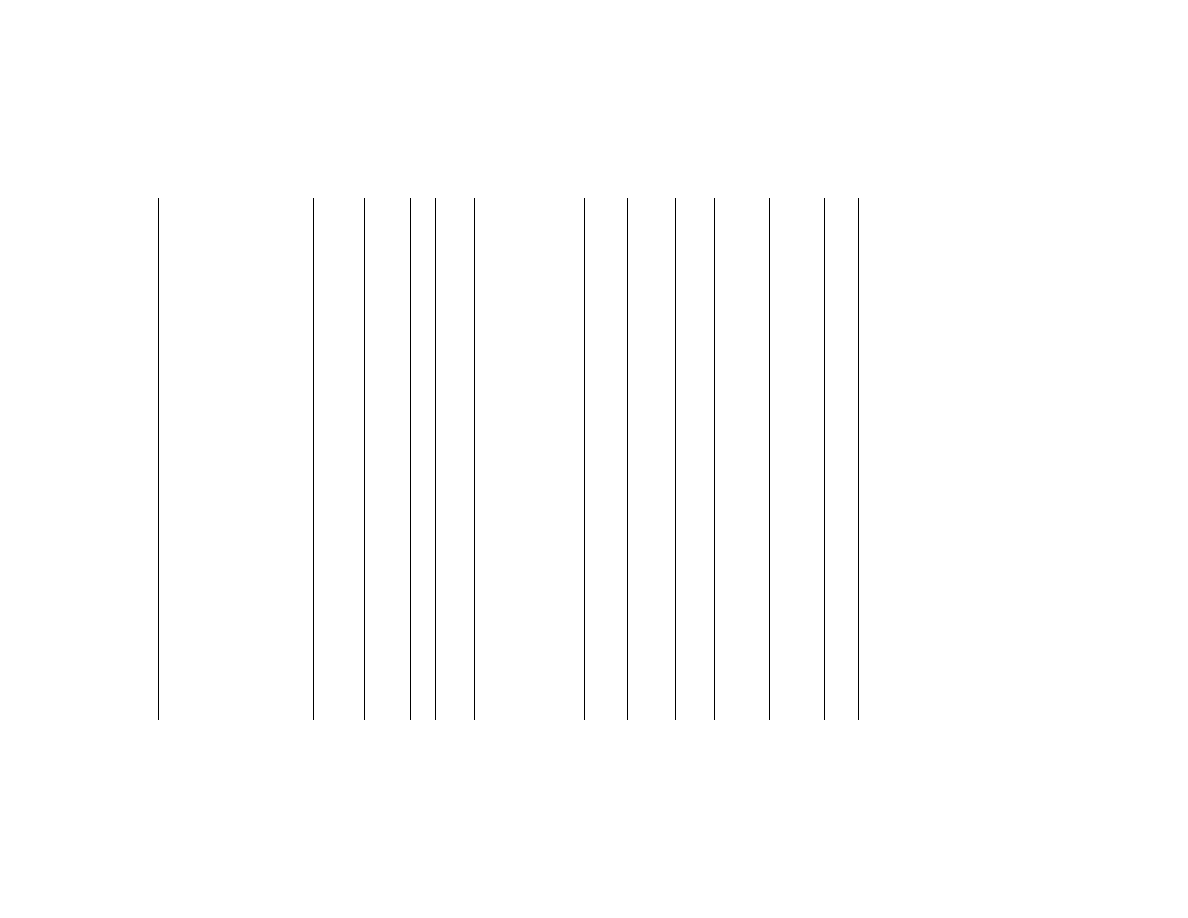
231
Pipeline and Haz. Matls. Safety Admin., DOT
§
172.101
Fuses, tracer, see Tracers for am-
munition
Fuzes, combination, percussion and
time, see Fuzes, detonating
(UN0257, UN0367); Fuzes, ignit-
ing (UN0317, UN0368)
Fuzes, detonating
1.1B UN0106
......
1.1B
........................................
None
62
None
Forbidden
Forbidden
05
25
Fuzes, detonating
1.2B UN0107
......
1.2B
........................................
None
62
None
Forbidden
Forbidden
05
25
Fuzes, detonating
1.4B UN0257
......
1.4B
116 None
62
None
Forbidden
75 kg
05
25
Fuzes, detonating
1.4S UN0367
......
1.4S
116, 347 None
62
None
25 kg
100 kg
01
25
Fuzes, detonating, with protective
features
1.1D UN0408
......
1.1D
........................................
None
62
None
Forbidden
Forbidden
03
25
Fuzes, detonating, with protective
features
1.2D UN0409
......
1.2D
........................................
None
62
None
Forbidden
Forbidden
03
25
Fuzes, detonating, with protective
features
1.4D UN0410
......
1.4D
116 None
62
None
Forbidden
75 kg
02
25
Fuzes, igniting
1.3G UN0316
......
1.3G
........................................
None
62
None
Forbidden
Forbidden
03
25
Fuzes, igniting
1.4G UN0317
......
1.4G
........................................
None
62
None
Forbidden
75 kg
02
25
Fuzes, igniting
1.4S UN0368
......
1.4S
........................................
None
62
None
25 kg
100 kg
01
25
Galactsan trinitrate
Forbidden
Gallium
8 UN2803
III
8
T1, TP33 154
162
240
20 kg
20 kg
B
25
Gas cartridges, (flammable) without
a release device, non-refillable
2.1 UN2037
......
2.1
........................................
306
304
None
1 kg
15 kg
B
40, 157
D
Gas identification set
2.3 NA9035
2.3
6 None
194
None
Forbidden
Forbidden
D
Gas oil
3 UN1202
III
3
144, B1, IB3, T2, TP1 150
203
242
60 L
220 L
A
G
Gas, refrigerated liquid, flammable,
n.o.s. (cryogenic liquid)
2.1 UN3312
2.1
T75, TP5 None
316
318
Forbidden
Forbidden
D
40
G
Gas, refrigerated liquid, n.o.s. (cryo-
genic liquid)
2.2 UN3158
2.2
T75, TP5 320
316
318
50 kg
500 kg
D
G
Gas, refrigerated liquid, oxidizing,
n.o.s. (cryogenic liquid)
2.2 UN3311
2.2,
5.1
T75, TP5, TP22 320
316
318
Forbidden
Forbidden
D
Gas sample, non-pressurized, flam-
mable, n.o.s., not refrigerated liq-
uid
2.1 UN3167
2.1
306
302, 304
None
1 L
5 L
D
Gas sample, non-pressurized, toxic,
flammable, n.o.s., not refrigerated
liquid
2.3 UN3168
2.3,
2.1
6 306
302
None
Forbidden
1 L
D
Gas sample, non-pressurized, toxic,
n.o.s., not refrigerated liquid
2.3 UN3169
......
2.3
6 306
302, 304
None
Forbidden
1 L
D
............
Gasoline includes gasoline mixed
with ethyl alcohol, with not more
than 10% alcohol
3 UN1203
II
3
144, 177, B1, B33, IB2,
T4
150
202
242
5 L
60 L
E
Gasoline, casinghead, see Gasoline
Gelatine, blasting, see Explosive,
blasting, type A
Gelatine dynamites, see Explosive,
blasting, type A
Germane
2.3 UN2192
2.3,
2.1
2 None
302
245
Forbidden
Forbidden
D
40
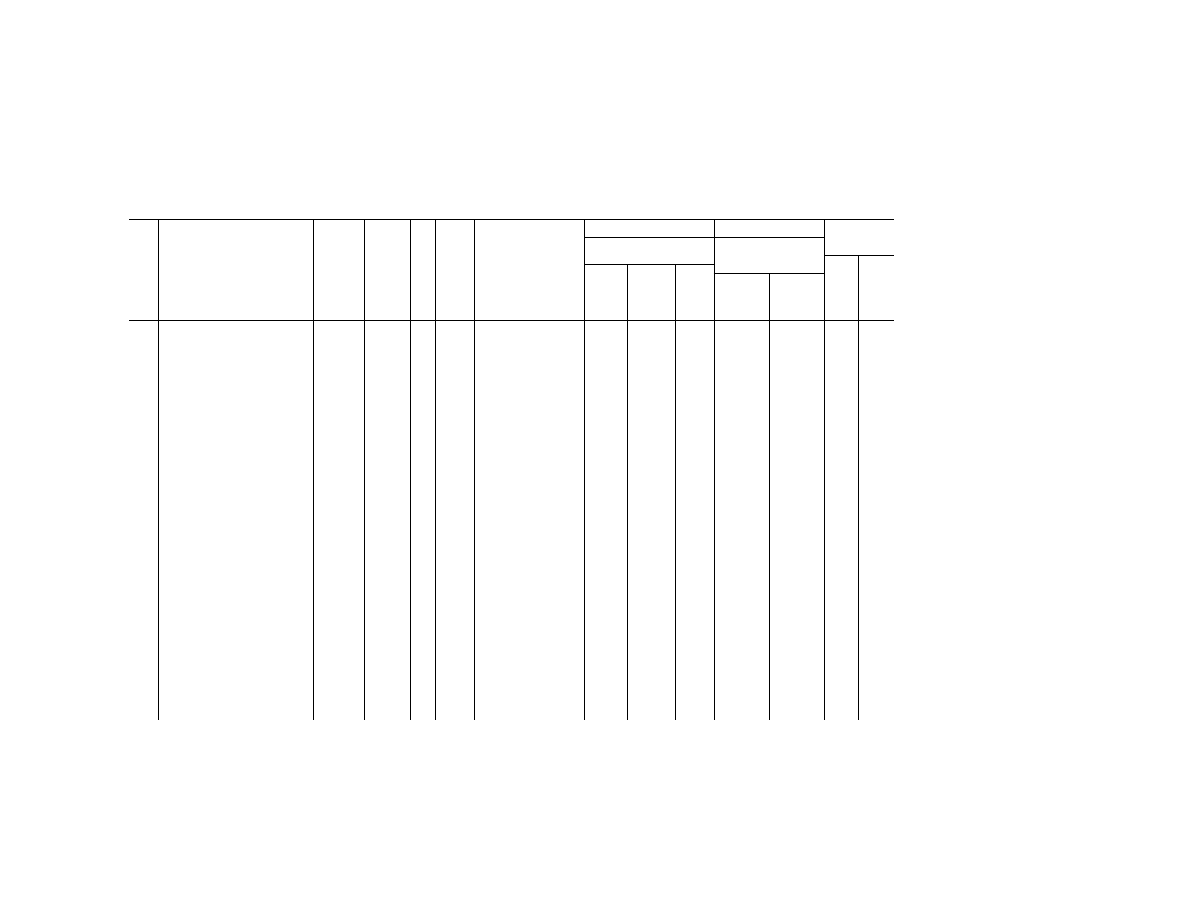
232
49 CFR Ch. I (10–1–23 Edition)
§
172.101
§ 172.101 H
AZARDOUS
M
ATERIALS
T
ABLE
—Continued
Sym-
bols
Hazardous materials descriptions
and proper shipping names
Hazard
class or
Division
Identi-
fication
Numbers
PG
Label
Codes
Special provisions
(§ 172.102)
(8)
(9)
(10)
Vessel
stowage
Packaging
(§ 173.***)
Quantity limitations
(see §§ 173.27 and
175.75)
Loca-
tion
Other
Excep-
tions
Non-bulk
Bulk
Passenger
aircraft/rail
Cargo air-
craft only
(1)
(2)
(3)
(4)
(5)
(6)
(7)
(8A)
(8B)
(8C)
(9A)
(9B)
(10A)
(10B)
Germane, adsorbed
2.3 UN3523
......
2.3,
2.1
2 None
302c
None
Forbidden
Forbidden
D
40
Glycerol-1,3-dinitrate
Forbidden
Glycerol gluconate trinitrate
Forbidden
Glycerol lactate trinitrate
Forbidden
Glycerol alpha-monochlorohydrin
6.1 UN2689
III
6.1
IB3, T4, TP1 153
203
241
60 L
220 L
A
Glyceryl trinitrate, see Nitroglycerin,
etc
Glycidaldehyde
3 UN2622
II
3, 6.1
IB2, IP8, T7, TP1 150
202
243
1 L
60 L
A
40
Grenades, hand or rifle, with burst-
ing charge
1.1D UN0284
......
1.1D
........................................
62
None
Forbidden
Forbidden
03
25
Grenades, hand or rifle, with burst-
ing charge
1.2D UN0285
......
1.2D
........................................
62
None
Forbidden
Forbidden
03
25
Grenades, hand or rifle, with burst-
ing charge
1.1F UN0292
......
1.1F
........................................
62
None
Forbidden
Forbidden
03
25
Grenades, hand or rifle, with burst-
ing charge
1.2F UN0293
......
1.2F
........................................
62
None
Forbidden
Forbidden
03
25
Grenades, illuminating, see Ammu-
nition, illuminating, etc
Grenades, practice, hand or rifle
1.4S UN0110
......
1.4S
........................................
62
None
25 kg
100 kg
01
25
Grenades, practice, hand or rifle
1.3G UN0318
......
1.3G
........................................
62
None
Forbidden
Forbidden
03
25
Grenades, practice, hand or rifle
1.2G UN0372
......
1.2G
........................................
62
None
Forbidden
Forbidden
03
25
Grenades practice, hand or rifle
1.4G UN0452
......
1.4G
........................................
62
None
Forbidden
75 kg
02
25
Grenades, smoke, see Ammunition,
smoke, etc
Guanidine nitrate
5.1 UN1467
III
5.1
A1, IB8, IP3, T1, TP33 152
213
240
25 kg
100 kg
A
73
Guanyl nitrosaminoguanylidene hy-
drazine (dry)
Forbidden
Guanyl nitrosaminoguanylidene hy-
drazine, wetted with not less than
30 percent water, by mass
1.1A UN0113
......
1.1A
111, 117 None
62
None
Forbidden
Forbidden
05
25
Guanyl nitrosaminoguanyltetrazene
(dry)
Forbidden
Guanyl nitrosaminoguanyltetrazene,
wetted or Tetrazene, wetted with
not less than 30 percent water or
mixture of alcohol and water, by
mass
1.1A UN0114
......
1.1A
111, 117 None
62
None
Forbidden
Forbidden
05
25
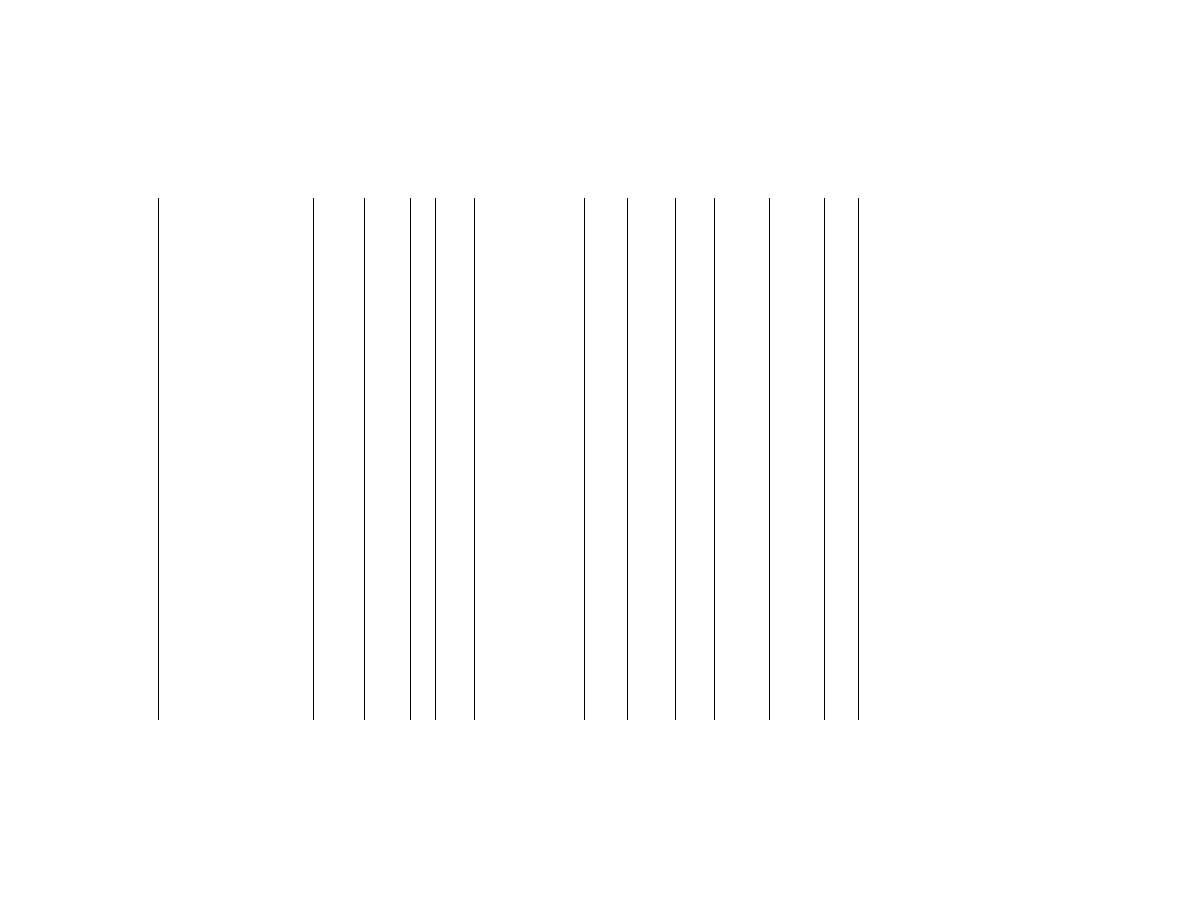
233
Pipeline and Haz. Matls. Safety Admin., DOT
§
172.101
Gunpowder, compressed or Gun-
powder in pellets, see Black pow-
der (UN 0028)
Gunpowder, granular or as a meal,
see Black powder (UN 0027)
Hafnium powder, dry
4.2 UN2545
I
4.2
W31 None
211
242
Forbidden
Forbidden
D
13, 148
II
4.2
A19, A20, IB6, IP2, N34,
T3, TP33, W31
None
212
241
15 kg
50 kg
D
13, 148
III
4.2
B135, IB8, IP21, T1,
TP33, W31
None
213
241
25 kg
100 kg
D
13, 148
Hafnium powder, wetted with not
less than 25 percent water (a
visible excess of water must be
present) (a) mechanically pro-
duced, particle size less than 53
microns; (b) chemically produced,
particle size less than 840 mi-
crons
4.1 UN1326
II
4.1
A6, A19, A20, IB6, IP2,
N34, T3, TP33, W31,
W40
151
212
241
15 kg
50 kg
E
74
Hand signal device, see Signal de-
vices, hand
Hazardous substances, liquid or
solid, n.o.s., see Environmentally
hazardous substances, etc
D G
Hazardous waste, liquid, n.o.s.
9 NA3082
III
9
IB3, T2, TP1 155
203
241
No limit
No limit
A
D G
Hazardous waste, solid, n.o.s.
9 NA3077
III
9
B54, IB8, IP2, T1, TP33 155
213
240
No limit
No limit
A
Heating oil, light
3 UN1202
III
3
B1, IB3, T2, TP1 150
203
242
60 L
220 L
A
Helium, compressed
2.2 UN1046
......
2.2
........................................
306,
307
302
302,
314
75 kg
150 kg
A
85
Helium, refrigerated liquid (cryo-
genic liquid)
2.2 UN1963
2.2
T75, TP5 320
316
318
50 kg
500 kg
D
Heptafluoropropane or Refrigerant
gas R 227
2.2 UN3296
2.2
T50 306
304
314,
315
75 kg
150 kg
A
n-Heptaldehyde
3 UN3056
III
3
B1, IB3, T2, TP1 150
203
242
60 L
220 L
A
Heptanes
3 UN1206
II
3
IB2, T4, TP2 150
202
242
5 L
60 L
B
n-Heptene
3 UN2278
II
3
IB2, T4, TP1 150
202
242
5 L
60 L
B
Hexachloroacetone
6.1 UN2661
III
6.1
IB3, T4, TP1 153
203
241
60 L
220 L
B
12, 40
Hexachlorobenzene
6.1 UN2729
III
6.1
B3, IB8, IP3, T1, TP33 153
203
241
60 L
220 L
A
Hexachlorobutadiene
6.1 UN2279
III
6.1
IB3, T4, TP1 153
203
241
60 L
220 L
A
Hexachlorocyclopentadiene
6.1 UN2646
I
6.1
2, B9, B14, B32, B77,
T20, TP2, TP13, TP38,
TP45
None
227
244
Forbidden
Forbidden
D
25, 40
Hexachlorophene
6.1 UN2875
III
6.1
IB8, IP3, T1, TP33 153
213
240
100 kg
200 kg
A
Hexadecyltrichlorosilane
8 UN1781
II
8
A7, B2, B6, N34, T10,
TP2, TP7, TP13
None
206
242
Forbidden
30 L
C
40, 53,
58
Hexadienes
3 UN2458
II
3
IB2, T4, TP1 150
202
242
5 L
60 L
B
Hexaethyl tetraphosphate and com-
pressed gas mixtures
2.3 UN1612
2.3
3 None
334
None
Forbidden
Forbidden
D
40
Hexaethyl tetraphosphate, liquid
6.1 UN1611
II
6.1
IB2, N76, T7, TP2 153
202
243
5 L
60 L
E
40
Hexaethyl tetraphosphate, solid
6.1 UN1611
II
6.1
IB8, IP2, IP4, N76 153
212
242
25 kg
100 kg
E
40
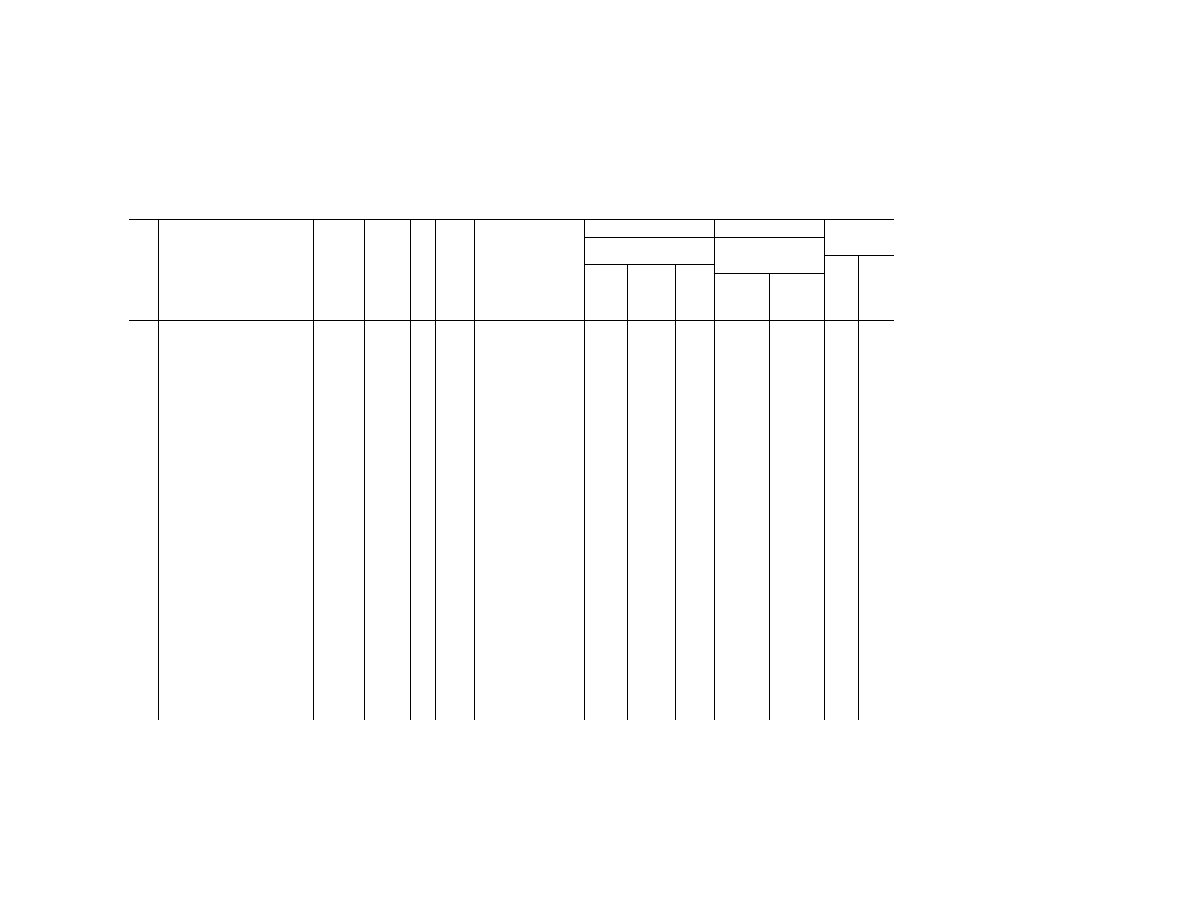
234
49 CFR Ch. I (10–1–23 Edition)
§
172.101
§ 172.101 H
AZARDOUS
M
ATERIALS
T
ABLE
—Continued
Sym-
bols
Hazardous materials descriptions
and proper shipping names
Hazard
class or
Division
Identi-
fication
Numbers
PG
Label
Codes
Special provisions
(§ 172.102)
(8)
(9)
(10)
Vessel
stowage
Packaging
(§ 173.***)
Quantity limitations
(see §§ 173.27 and
175.75)
Loca-
tion
Other
Excep-
tions
Non-bulk
Bulk
Passenger
aircraft/rail
Cargo air-
craft only
(1)
(2)
(3)
(4)
(5)
(6)
(7)
(8A)
(8B)
(8C)
(9A)
(9B)
(10A)
(10B)
Hexafluoroacetone
2.3 UN2420
2.3, 8
2, B9, B14 None
304
314,
315
Forbidden
Forbidden
D
40
Hexafluoroacetone hydrate, liquid
6.1 UN2552
II
6.1
IB2, T7, TP2 153
202
243
5 L
60 L
B
40
Hexafluoroacetone hydrate, solid
6.1 UN3436
II
6.1
IB8, IP2, IP4, T3, TP33 153
212
242
25 kg
100 kg
B
40
Hexafluoroethane, or Refrigerant
gas R 116
2.2 UN2193
2.2
306
304
314,
315
75 kg
150 kg
A
Hexafluorophosphoric acid
8 UN1782
II
8
A7, B2, IB2, N3, N34,
T8, TP2
154
202
242
1 L
30 L
A
53, 58
Hexafluoropropylene compressed or
Refrigerant gas R 1216
2.2 UN1858
2.2
T50 306
304
314,
315
75 kg
150 kg
A
Hexaldehyde
3 UN1207
III
3
B1, IB3, T2, TP1 150
203
242
60 L
220 L
A
Hexamethylene diisocyanate
6.1 UN2281
II
6.1
IB2, T7, TP2, TP13 153
202
243
5 L
60 L
C
13, 40
Hexamethylene triperoxide diamine
(dry)
Forbidden
Hexamethylenediamine, solid
8 UN2280
III
8
IB8, IP3, T1, TP33 154
213
240
25 kg
100 kg
A
12, 25,
52
Hexamethylenediamine solution
8 UN1783
II
8
IB2, T7, TP2 154
202
242
1 L
30 L
A
52
III
8
IB3, T4, TP1 154
203
241
5 L
60 L
A
52
Hexamethyleneimine
3 UN2493
II
3, 8
IB2, T7, TP1 150
202
243
1 L
5 L
B
40
Hexamethylenetetramine
4.1 UN1328
III
4.1
A1, IB8, IP3, T1, TP33 151
213
240
25 kg
100 kg
A
Hexamethylol benzene hexanitrate
Forbidden
Hexanes
3 UN1208
II
3
IB2, T4, TP2 150
202
242
5 L
60 L
E
2,2
′
,4,4
′
,6,6
′
- Hexanitro-3,3
′
-
dihydroxyazobenzene (dry)
Forbidden
Hexanitroazoxy benzene
Forbidden
N,N
′
-(hexanitrodiphenyl) ethylene
dinitramine (dry)
Forbidden
Hexanitrodiphenyl urea
Forbidden
2,2
′
,3
′
,4,4
′
,6-
Hexanitrodiphenylamine
Forbidden
Hexanitrodiphenylamine or
Dipicrylamine or Hexyl
1.1D UN0079
......
1.1D
........................................
None
62
None
Forbidden
Forbidden
04
25
2,3
′
,4,4
′
,6,6
′
-Hexanitrodiphenylether
Forbidden
Hexanitroethane
Forbidden
Hexanitrooxanilide
Forbidden
Hexanitrostilbene
1.1D UN0392
......
1.1D
........................................
None
62
None
Forbidden
Forbidden
04
25
Hexanoic acid, see Corrosive liq-
uids, n.o.s.
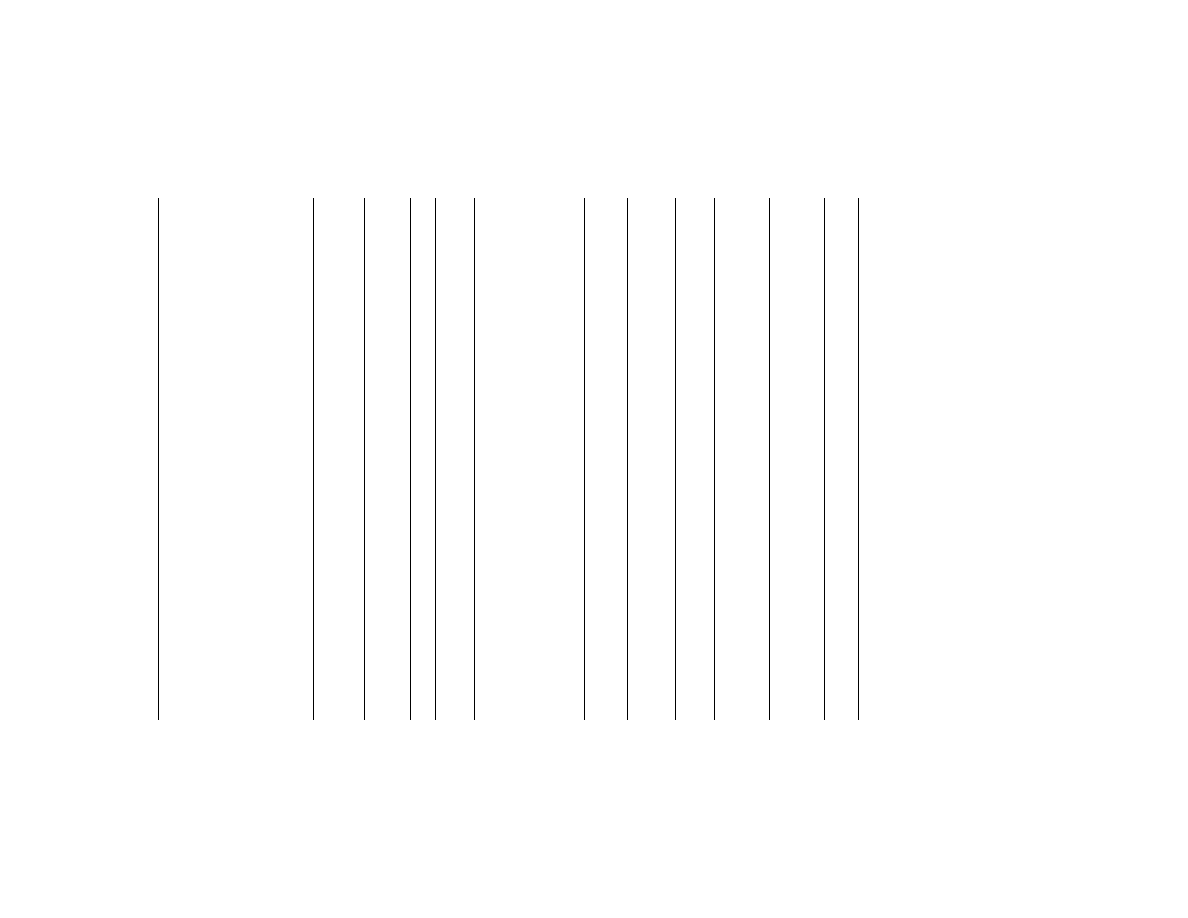
235
Pipeline and Haz. Matls. Safety Admin., DOT
§
172.101
Hexanols
3 UN2282
III
3
B1, IB3, T2, TP1 150
203
242
60 L
220 L
A
74
1-Hexene
3 UN2370
II
3
IB2, T4, TP1 150
202
242
5 L
60 L
E
Hexogen and
cyclotetramethylenetetranitramine
mixtures, wetted or desensitized
see RDX and HMX mixtures,
wetted or desensitized etc
Hexogen and HMX mixtures, wetted
or desensitized see RDX and
HMX mixtures, wetted or desen-
sitized etc
Hexogen and octogen mixtures,
wetted or desensitized see RDX
and HMX mixtures, wetted or de-
sensitized etc
Hexogen, see
Cyclotrimethylenetrinitramine, etc
Hexolite, or Hexotol dry or wetted
with less than 15 percent water,
by mass
1.1D UN0118
......
1.1D
........................................
None
62
None
Forbidden
Forbidden
04
25
Hexotonal
1.1D UN0393
......
1.1D
........................................
None
62
None
Forbidden
Forbidden
04
25
Hexyl, see Hexanitrodiphenylamine
Hexyltrichlorosilane
8 UN1784
II
8
A7, B2, B6, N34, T10,
TP2, TP7, TP13
None
206
242
Forbidden
30 L
C
40, 53,
58
High explosives, see individual ex-
plosives’ entries
HMX, see Cyclotetramethylenete
tranitramine, etc
Hydrazine, anhydrous
8 UN2029
I
8, 3,
6.1
A7, A10, B7, B16, B53 None
201
243
Forbidden
2.5 L
D
40, 52,
125
Hydrazine, aqueous solution, with
not more than 37 percent hydra-
zine, by mass
6.1 UN3293
III
6.1
IB3, T4, TP1 153
203
241
60 L
220 L
A
52.
Hydrazine aqueous solution, flam-
mable with more than 37% hydra-
zine, by mass
8 UN3484
I
8, 3,
6.1
B16, B53, T10, TP2,
TP13
None
201
243
Forbidden
2.5 L
D
40, 52,
125
Hydrazine aqueous solution, with
more than 37% hydrazine, by
mass
8 UN2030
I
8, 6.1
B16, B53, T10, TP2,
TP13
None
201
243
Forbidden
2.5 L
D
40, 52
II
8, 6.1
B16, B53, IB2, T7, TP2,
TP13
154
202
243
Forbidden
30 L
D
40, 52
III
8, 6.1
B16, B53, IB3, T4, TP1 154
203
241
5 L
60 L
D
40, 52
Hydrazine azide
Forbidden
Hydrazine chlorate
Forbidden
Hydrazine dicarbonic acid diazide
Forbidden
Hydrazine perchlorate
Forbidden
Hydrazine selenate
Forbidden
Hydriodic acid, anhydrous, see Hy-
drogen iodide, anhydrous
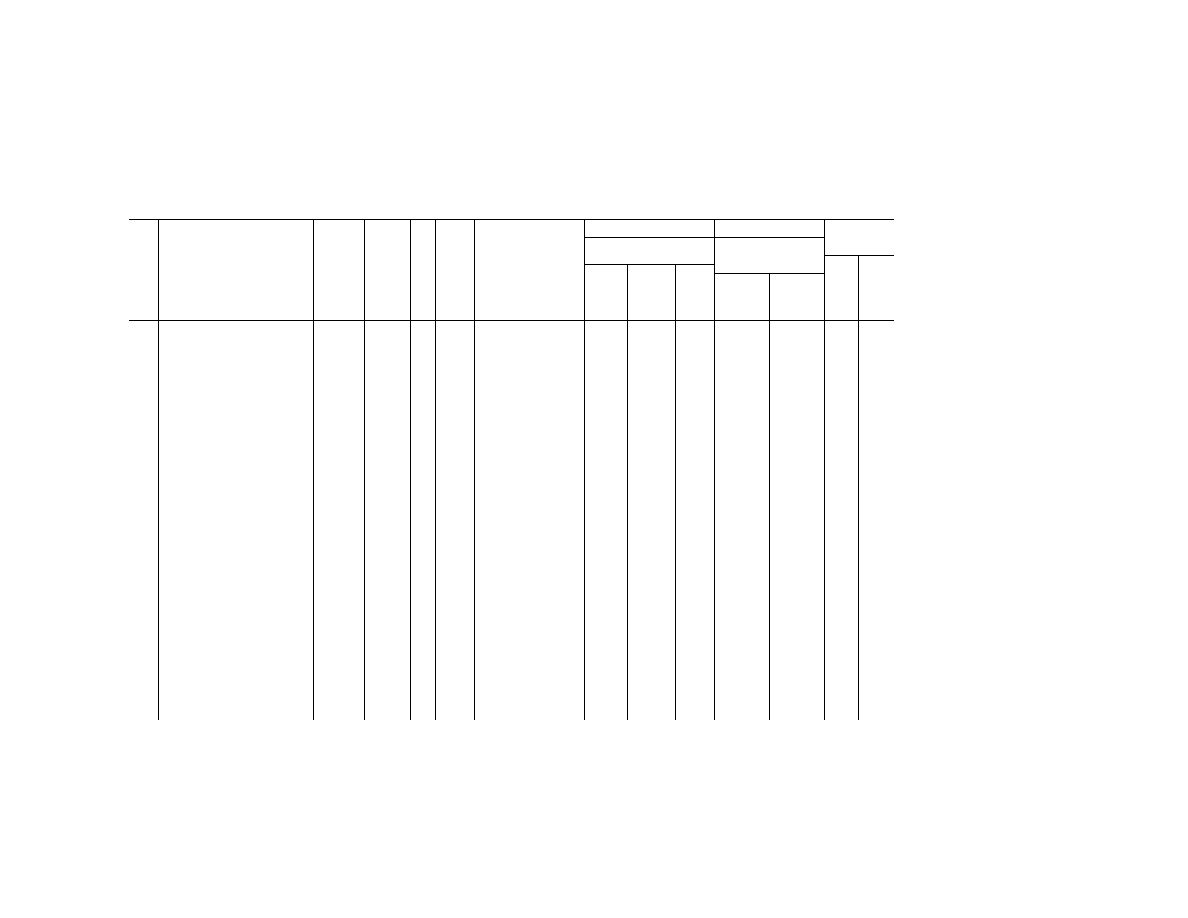
236
49 CFR Ch. I (10–1–23 Edition)
§
172.101
§ 172.101 H
AZARDOUS
M
ATERIALS
T
ABLE
—Continued
Sym-
bols
Hazardous materials descriptions
and proper shipping names
Hazard
class or
Division
Identi-
fication
Numbers
PG
Label
Codes
Special provisions
(§ 172.102)
(8)
(9)
(10)
Vessel
stowage
Packaging
(§ 173.***)
Quantity limitations
(see §§ 173.27 and
175.75)
Loca-
tion
Other
Excep-
tions
Non-bulk
Bulk
Passenger
aircraft/rail
Cargo air-
craft only
(1)
(2)
(3)
(4)
(5)
(6)
(7)
(8A)
(8B)
(8C)
(9A)
(9B)
(10A)
(10B)
Hydriodic acid
8 UN1787
II
8
A3, B2, IB2, N41, T7,
TP2
154
202
242
1 L
30 L
C
III
8
IB3, T4, TP1 154
203
241
5 L
60 L
C
8
Hydrobromic acid, anhydrous, see
Hydrogen bromide, anhydrous
Hydrobromic acid, with more than
49 percent hydrobromic acid
8 UN1788
II
8
B2, B15, IB2, N41, T7,
TP2
154
202
242
Forbidden
Forbidden
C
53, 58
III
8
IB3, T4, TP1 154
203
241
Forbidden
Forbidden
C
8, 53,
58
Hydrobromic acid, with not more
than 49 percent hydrobromic acid
8 UN1788
II
8
A3, B2, B15, IB2, N41,
T7, TP2
154
202
242
1 L
30 L
C
53, 58
III
8
A3, IB3, T4, TP1 154
203
241
5 L
60 L
C
8, 53,
58
Hydrocarbon gas mixture, com-
pressed, n.o.s.
2.1 UN1964
2.1
306
302
314,
315
Forbidden
150 kg
E
40
Hydrocarbon gas mixture, liquefied,
n.o.s.
2.1 UN1965
2.1
T50 306
304
314,
315
Forbidden
150 kg
E
40
Hydrocarbons, liquid, n.o.s.
3 UN3295
I
3
144, T11, TP1, TP8,
TP28
150
201
243
1 L
30 L
E
II
3
144, IB2, T7, TP1, TP8,
TP28
150
202
242
5 L
60 L
B
III
3
144, B1, IB3, T4, TP1,
TP29
150
203
242
60 L
220 L
A
Hydrochloric acid, anhydrous, see
Hydrogen chloride, anhydrous
Hydrochloric acid
8 UN1789
II
8
386, A3, B3, B15, B133,
IB2, N41, T8, TP2
154
202
242
1 L
30 L
C
53, 58
III
8
A3, IB3, T4, TP1 154
203
241
5 L
60 L
C
8, 53,
58
Hydrocyanic acid, anhydrous, see
Hydrogen cyanide etc
Hydrocyanic acid, aqueous solu-
tions or Hydrogen cyanide, aque-
ous solutions with not more than
20 percent hydrogen cyanide
6.1 UN1613
I
6.1
2, B61, B65, B77, B82,
T20, TP2, TP13
None
195
244
Forbidden
Forbidden
D
40
D
Hydrocyanic acid, aqueous solu-
tions with less than 5 percent hy-
drogen cyanide
6.1 NA1613
II
6.1
IB1, T14, TP2, TP13,
TP27
None
195
243
Forbidden
5 L
D
40
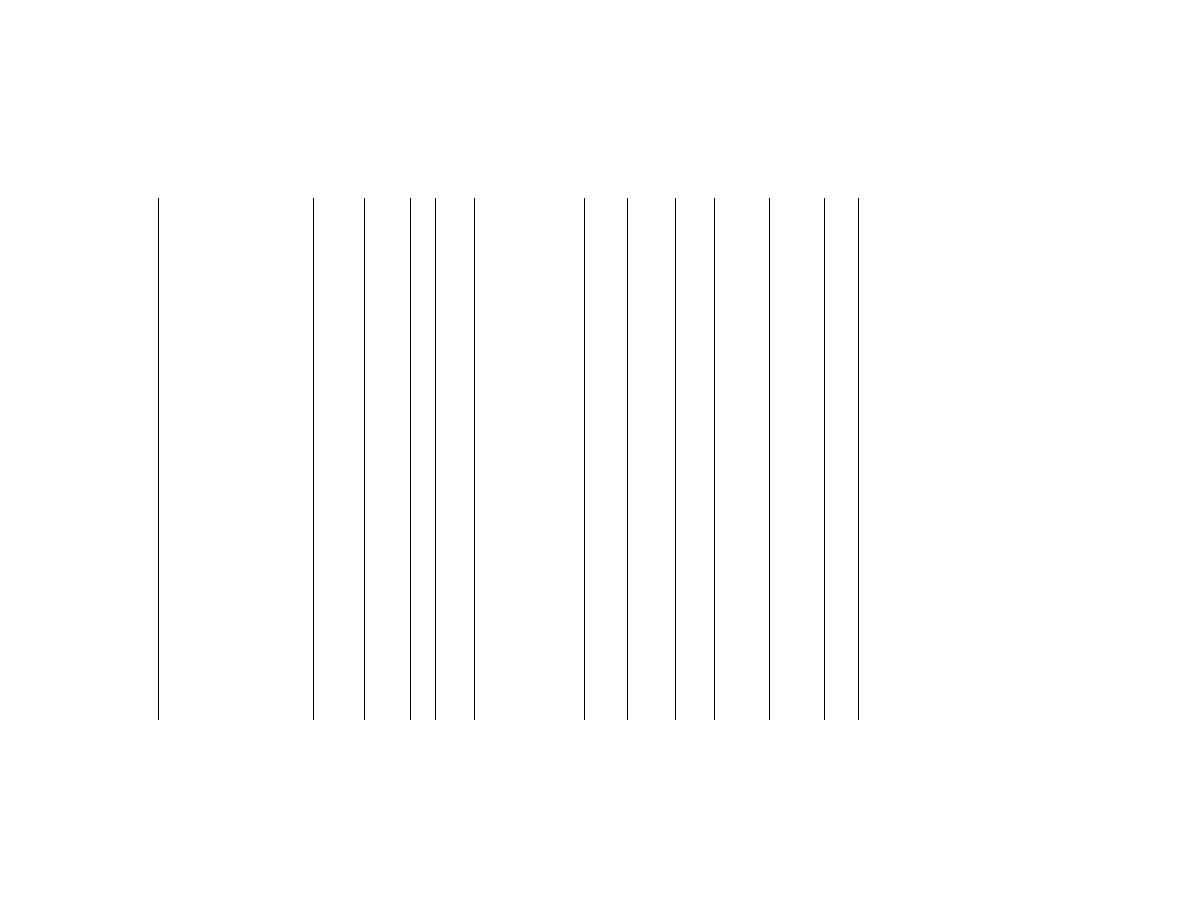
237
Pipeline and Haz. Matls. Safety Admin., DOT
§
172.101
Hydrocyanic acid, liquefied, see Hy-
drogen cyanide, etc
Hydrocyanic acid (prussic),
unstabilized
Forbidden
Hydrofluoric acid and Sulfuric acid
mixtures
8 UN1786
I
8, 6.1
A7, B15, B23, N5, N34,
T10, TP2, TP13
None
201
243
Forbidden
2.5 L
D
40, 53,
58
Hydrofluoric acid, anhydrous, see
Hydrogen fluoride, anhydrous
Hydrofluoric acid, with more than 60
percent strength
8 UN1790
I
8, 6.1
A7, B4, B15, B23, N5,
N34, T10, TP2, TP13
None
201
243
0.5 L
2.5 L
D
12, 25,
40, 53,
58
Hydrofluoric acid, with not more
than 60 percent strength
8 UN1790
II
8, 6.1
A7, B15, IB2, N5, N34,
T8, TP2
154
202
243
1 L
30 L
D
12, 25,
40, 53,
58
Hydrofluoroboric acid, see
Fluoroboric acid
Hydrofluorosilicic acid, see
Fluorosilicic acid
Hydrogen and Methane mixtures,
compressed
2.1 UN2034
2.1
N89 306
302
302,
314,
315
Forbidden
150 kg
E
40, 57
Hydrogen bromide, anhydrous
2.3 UN1048
2.3, 8
3, B14, N86, N89 None
304
314,
315
Forbidden
Forbidden
D
40
Hydrogen chloride, anhydrous
2.3 UN1050
2.3, 8
3, N86, N89 None
304
None
Forbidden
Forbidden
D
40
Hydrogen chloride, refrigerated liq-
uid
2.3 UN2186
2.3, 8
3, B6 None
None
314,
315
Forbidden
Forbidden
B
40
Hydrogen, compressed
2.1 UN1049
2.1
N89 306
302
302,
314
Forbidden
150 kg
E
40, 57
Hydrogen cyanide, solution in alco-
hol with not more than 45 percent
hydrogen cyanide
6.1 UN3294
I
6.1, 3
2, B9, B14, B32, T20,
TP2, TP13, TP38, TP45
None
227
244
Forbidden
Forbidden
D
40
Hydrogen cyanide, stabilized with
less than 3 percent water
6.1 UN1051
I
6.1, 3
1, 387, B35, B61, B65,
B77, B82
None
195
244
Forbidden
Forbidden
D
25, 40
Hydrogen cyanide, stabilized, with
less than 3 percent water and ab-
sorbed in a porous inert material
6.1 UN1614
I
6.1
5, 387 None
195
None
Forbidden
Forbidden
D
25, 40
Hydrogen fluoride, anhydrous
8 UN1052
I
8.6.1
3, B7, B46, B77, N86,
T10, TP2
None
163
244
Forbidden
Forbidden
D
40, 53,
58
Hydrogen in a metal hydride stor-
age system or Hydrogen in a
metal hydride storage system
contained in equipment or Hydro-
gen in a metal hydride storage
system packed with equipment
2.1 UN3468
......
2.1
167 None
311
None
Forbidden
100 kg
D
Hydrogen iodide, anhydrous
2.3 UN2197
2.3, 8
3, B14, N86, N89 None
304
314,
315
Forbidden
Forbidden
D
40
Hydrogen iodide solution, see Hy-
driodic acid
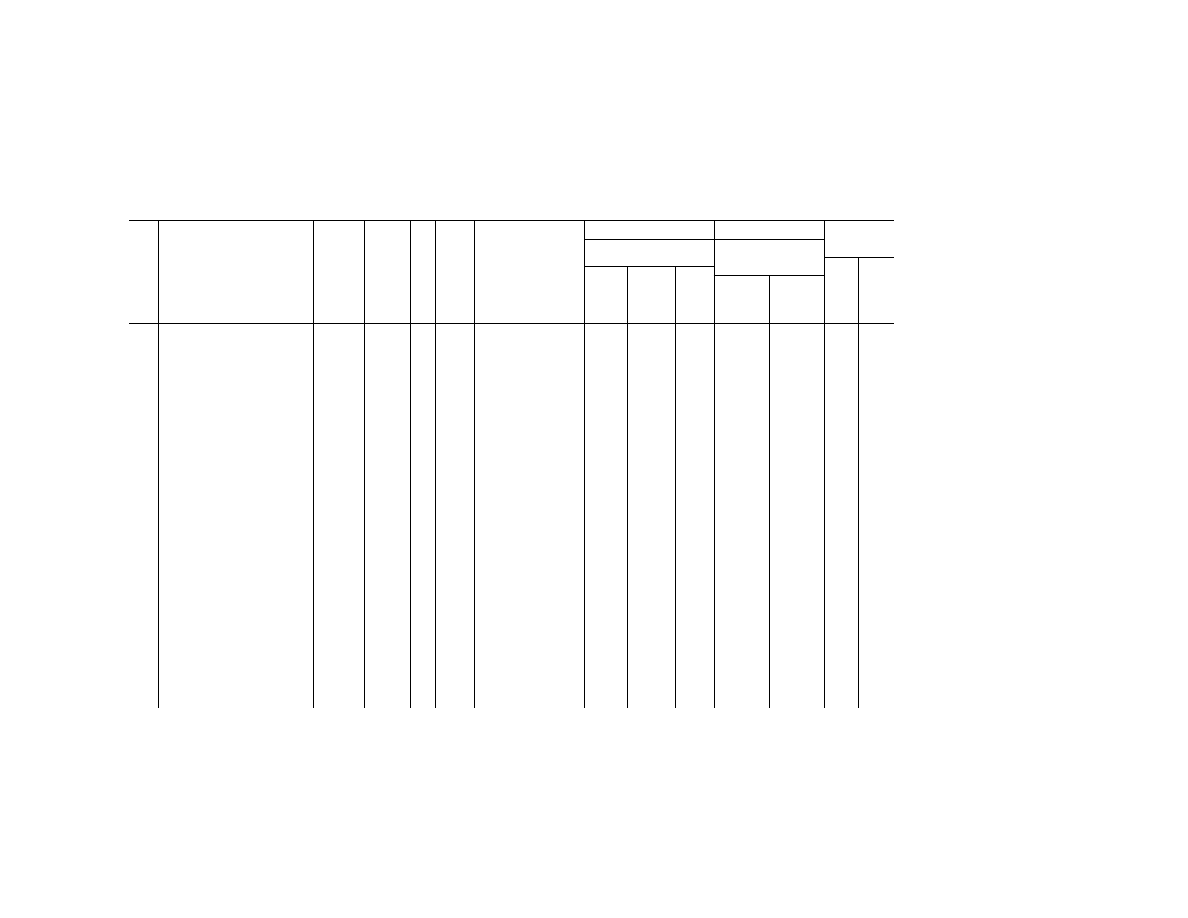
238
49 CFR Ch. I (10–1–23 Edition)
§
172.101
§ 172.101 H
AZARDOUS
M
ATERIALS
T
ABLE
—Continued
Sym-
bols
Hazardous materials descriptions
and proper shipping names
Hazard
class or
Division
Identi-
fication
Numbers
PG
Label
Codes
Special provisions
(§ 172.102)
(8)
(9)
(10)
Vessel
stowage
Packaging
(§ 173.***)
Quantity limitations
(see §§ 173.27 and
175.75)
Loca-
tion
Other
Excep-
tions
Non-bulk
Bulk
Passenger
aircraft/rail
Cargo air-
craft only
(1)
(2)
(3)
(4)
(5)
(6)
(7)
(8A)
(8B)
(8C)
(9A)
(9B)
(10A)
(10B)
Hydrogen peroxide and peroxy-
acetic acid mixtures, stabilized
with acids, water, and not more
than 5 percent peroxyacetic acid
5.1 UN3149
II
5.1, 8
145, A2, A3, B53, IB2,
IP5, T7, TP2, TP6, TP24
152
202
243
1 L
5 L
D
25, 66,
75
Hydrogen peroxide, aqueous solu-
tions with more than 40 percent
but not more than 60 percent hy-
drogen peroxide (stabilized as
necessary)
5.1 UN2014
II
5.1, 8
12, A60, B53, B80, B81,
B85, IB2, IP5, T7, TP2,
TP6, TP24, TP37
152
202
243
Forbidden
Forbidden
D
25, 66,
75
Hydrogen peroxide, aqueous solu-
tions with not less than 20 per-
cent but not more than 40 per-
cent hydrogen peroxide (sta-
bilized as necessary)
5.1 UN2014
II
5.1, 8
A2, A3, B53, IB2, IP5,
T7, TP2, TP6, TP24,
TP37
152
202
243
1 L
5 L
D
25, 66,
75
Hydrogen, peroxide, aqueous solu-
tions with not less than 8 percent
but less than 20 percent hydro-
gen peroxide (stabilized as nec-
essary)
5.1 UN2984
III
5.1
A1, IB2, IP5, T4, TP1,
TP6, TP24, TP37
152
203
241
2.5 L
30 L
B
25, 66,
75
Hydrogen peroxide, stabilized or
Hydrogen peroxide aqueous solu-
tions, stabilized with more than
60 percent hydrogen peroxide
5.1 UN2015
I
5.1, 8
12, B53, B80, B81, B85,
T9, TP2, TP6, TP24,
TP37
None
201
243
Forbidden
Forbidden
D
25, 66,
75.
Hydrogen, refrigerated liquid (cryo-
genic liquid)
2.1 UN1966
......
2.1
T75, TP5 None
316
318,
319
Forbidden
Forbidden
D
40, 57
Hydrogen selenide, adsorbed
2.3 UN3526
......
2.3,
2.1
1 None
302c
None
Forbidden
Forbidden
D
40
Hydrogen selenide, anhydrous
2.3 UN2202
2.3,
2.1
1 None
192
245
Forbidden
Forbidden
D
40
Hydrogen sulfate, see Sulfuric acid
Hydrogen sulfide
2.3 UN1053
2.3,
2.1
2, B9, B14, N89 None
304
314,
315
Forbidden
Forbidden
D
40
Hydrogendifluoride, solid, n.o.s.
8 UN1740
II
8
IB8, IP2, IP4, N3, N34,
T3, TP33
154
212
240
15 kg
50 kg
A
25, 40,
52, 53,
58
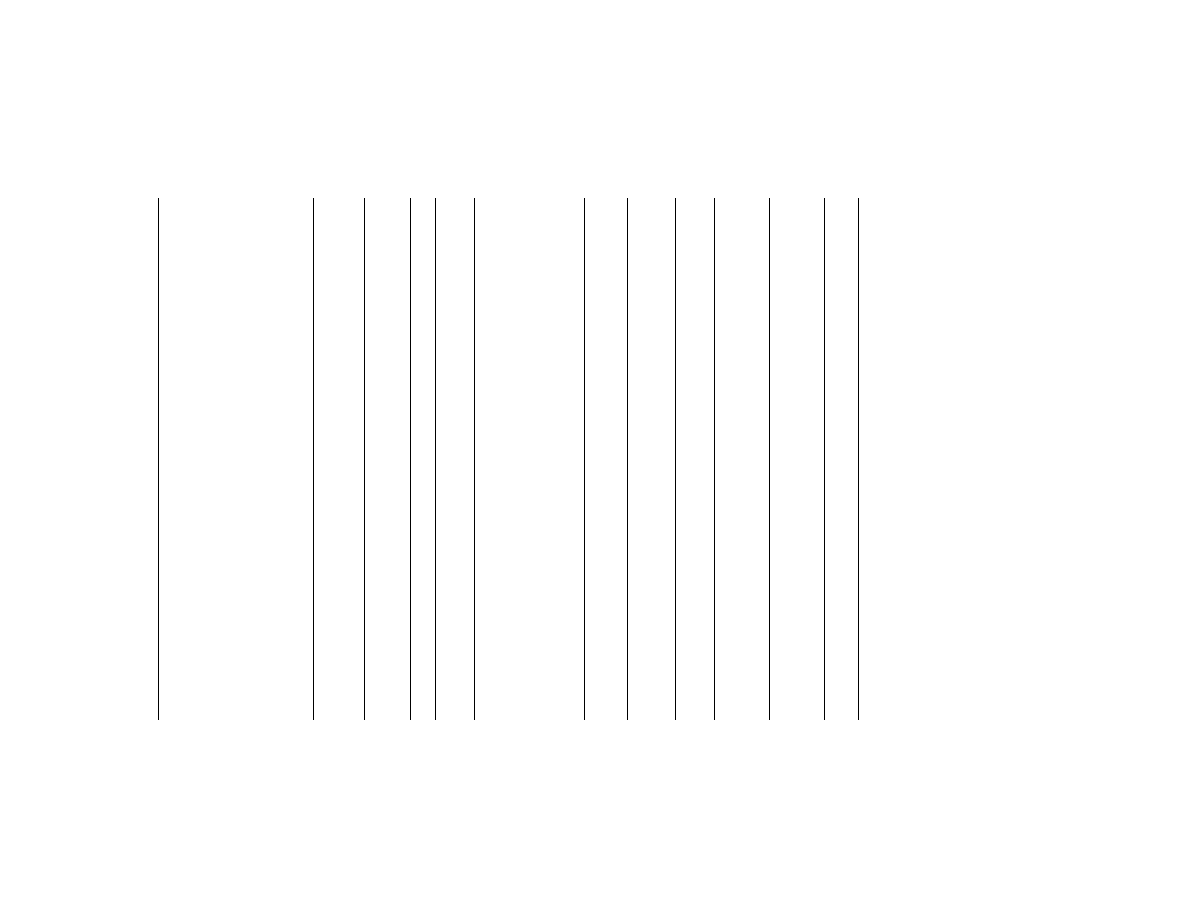
239
Pipeline and Haz. Matls. Safety Admin., DOT
§
172.101
III
8
IB8, IP3, N3, N34, T1,
TP33
154
213
240
25 kg
100 kg
A
25, 40,
52, 53,
58
Hydrogendifluoride solution, n.o.s
8 UN3471
II
8, 6.1
IB2, T7, TP2 154
202
242
1 L
30 L
A
25, 40,
52.
III
8, 6.1
IB3, T4, TP1 154
203
241
5 L
60 L
A
25, 40,
52.
Hydrosilicofluoric acid, see
Fluorosilicic acid
1-Hydroxybenzotriazole, anhydrous,
dry or wetted with less than 20
percent water, by mass
1.3C UN0508
......
1.3C
........................................
None
62
None
Forbidden
Forbidden
04
25
1–Hydroxybenzotriazole,
monohydrate
4.1 UN3474
I
4.1
N90 None
211
None
0.5 kg
0.5 kg
D
28, 36
Hydroxyl amine iodide
Forbidden
Hydroxylamine sulfate
8 UN2865
III
8
IB8, IP3, T1, TP33 154
213
240
25 kg
100 kg
A
52, 53,
58
Hypochlorite solutions
8 UN1791
II
8
148, A7, B2, B15, IB2,
IP5, N34, T7, TP2, TP24
154
202
242
1 L
30 L
B
26, 53,
58
III
8
386, IB3, N34, T4, TP2,
TP24
154
203
241
5 L
60 L
B
26, 53,
58
G
Hypochlorites, inorganic, n.o.s
5.1 UN3212
II
5.1
349, A9, IB8, IP2, IP4,
T3, TP33
152
212
240
5 kg
25 kg
D
4, 25,
52, 56,
58, 69,
116,
118
Hyponitrous acid
Forbidden
Igniter fuse, metal clad, see Fuse,
igniter, tubular, metal clad
Igniters
1.1G UN0121
......
1.1G
........................................
None
62
None
Forbidden
Forbidden
03
25
Igniters
1.2G UN0314
......
1.2G
........................................
None
62
None
Forbidden
Forbidden
03
25
Igniters
1.3G UN0315
......
1.3G
........................................
None
62
None
Forbidden
Forbidden
03
25
Igniters
1.4G UN0325
......
1.4G
........................................
None
62
None
Forbidden
75 kg
02
25
Igniters
1.4S UN0454
......
1.4S
........................................
None
62
None
25 kg
100 kg
01
25
3,3
′
-Iminodipropylamine
8 UN2269
III
8
IB3, T4, TP2 154
203
241
5 L
60 L
A
52
G
Infectious substances, affecting ani-
mals only
6.2 UN2900
......
6.2
A82 134
196
None
50 mL or
50 g
4 L or 4 kg
E
13, 40,
95, 155
G
Infectious substances, affecting hu-
mans
6.2 UN2814
......
6.2
A82 134
196
None
50 mL or
50 g
4 L or 4 kg
E
13, 40,
95, 155
Inflammable, see Flammable
Initiating explosives (dry)
Forbidden
Inositol hexanitrate (dry)
Forbidden
G
Insecticide gases, n.o.s.
2.2 UN1968
2.2
306
304
314,
315
75 kg
150 kg
A
G
Insecticide gases, flammable, n.o.s.
2.1 UN3354
2.1
T50 306
304
314,
315
Forbidden
150 kg
D
40
G
Insecticide gases, toxic, flammable,
n.o.s. Inhalation hazard Zone A
2.3 UN3355
2.3,
2.1
1 None
192
245
Forbidden
Forbidden
D
40
G
Insecticide gases, toxic, flammable,
n.o.s. Inhalation hazard Zone B
2.3 UN3355
2.3,
2.1
2, B9, B14 None
302, 305
314,
315
Forbidden
Forbidden
D
40
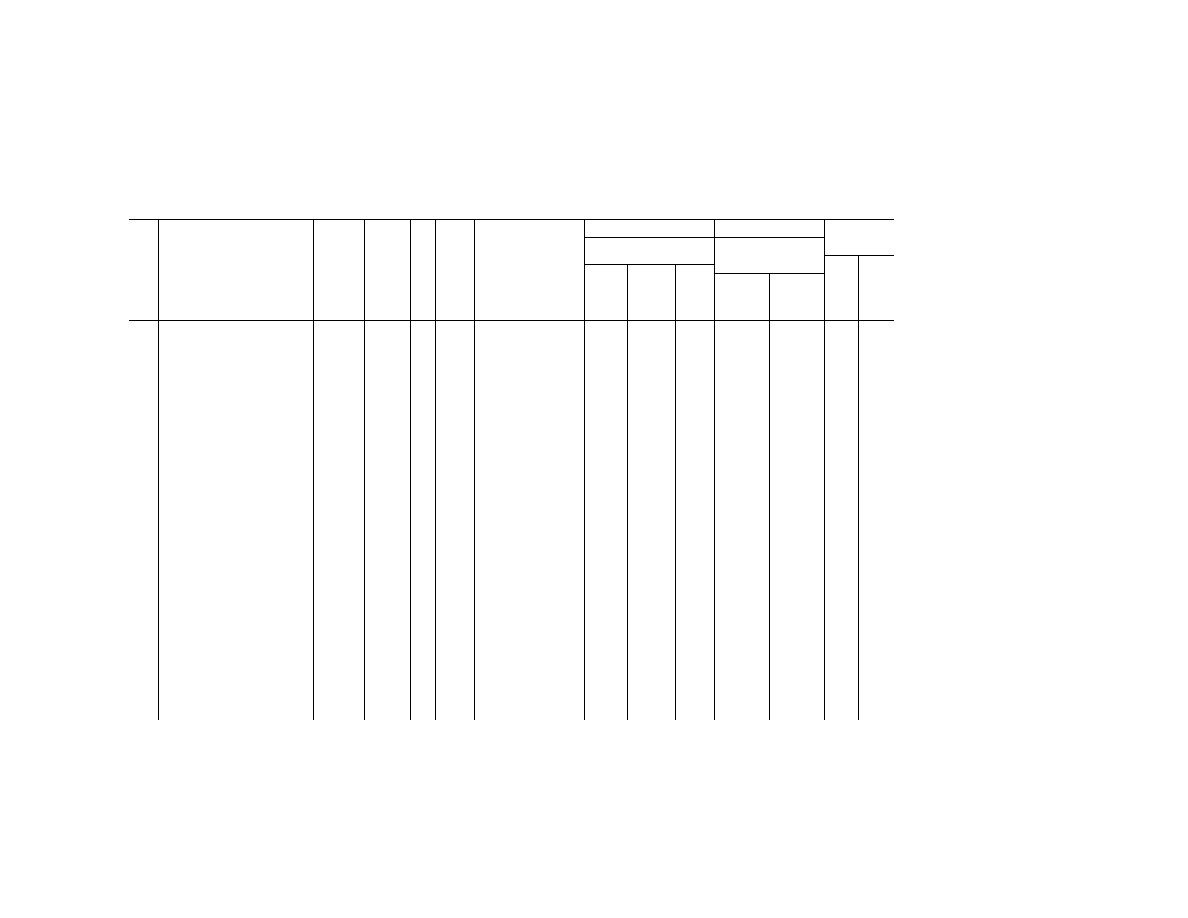
240
49 CFR Ch. I (10–1–23 Edition)
§
172.101
§ 172.101 H
AZARDOUS
M
ATERIALS
T
ABLE
—Continued
Sym-
bols
Hazardous materials descriptions
and proper shipping names
Hazard
class or
Division
Identi-
fication
Numbers
PG
Label
Codes
Special provisions
(§ 172.102)
(8)
(9)
(10)
Vessel
stowage
Packaging
(§ 173.***)
Quantity limitations
(see §§ 173.27 and
175.75)
Loca-
tion
Other
Excep-
tions
Non-bulk
Bulk
Passenger
aircraft/rail
Cargo air-
craft only
(1)
(2)
(3)
(4)
(5)
(6)
(7)
(8A)
(8B)
(8C)
(9A)
(9B)
(10A)
(10B)
G
Insecticide gases, toxic, flammable,
n.o.s. Inhalation hazard Zone C
2.3 UN3355
2.3,
2.1
3, B14 None
302, 305
314,
315
Forbidden
Forbidden
D
G
Insecticide gases, toxic, flammable,
n.o.s. Inhalation hazard Zone D
2.3 UN3355
2.3,
2.1
4 None
302, 305
314,
315
Forbidden
Forbidden
D
G
Insecticide gases, toxic, n.o.s.
2.3 UN1967
2.3
3 None
193, 334
245
Forbidden
Forbidden
D
40
Inulin trinitrate (dry)
Forbidden
+
Iodine
8 UN3495
III
8, 6.1
IB8, IP3, T1, TP33 154
213
240
25 kg
100 kg
B
40, 55
Iodine azide (dry)
Forbidden
Iodine monochloride, liquid
8 UN3498
II
8
IB2, T7, TP2 154
202
242
1 L
30 L
D
40, 53,
58, 66,
74, 89,
90
Iodine monochloride, solid
8 UN1792
II
8
B6, IB8, IP2, IP4, N41,
T7, TP2
154
212
240
Forbidden
50 kg
D
40, 53,
58, 66,
74
Iodine pentafluoride
5.1 UN2495
I
5.1,
6.1,
8
........................................
None
205
243
Forbidden
Forbidden
D
25, 40,
52, 53,
58, 66,
90
2-Iodobutane
3 UN2390
II
3
IB2, T4, TP1 150
202
242
5 L
60 L
B
Iodomethylpropanes
3 UN2391
II
3
IB2, T4, TP1 150
202
242
5 L
60 L
B
Iodopropanes
3 UN2392
III
3
B1, IB3, T2, TP1 150
203
242
60 L
220 L
A
Iodoxy compounds (dry)
Forbidden
Iridium nitratopentamine iridium ni-
trate
Forbidden
Iron chloride, see Ferric chloride
Iron oxide, spent, or Iron sponge,
spent obtained from coal gas pu-
rification
4.2 UN1376
III
4.2
B18, B134, IB8, IP21,
T1, TP33, W100
None
213
240
Forbidden
Forbidden
E
13, 148
Iron pentacarbonyl
6.1 UN1994
I
6.1, 3
1, B9, B14, B30, B77,
T22, TP2, TP13, TP38,
TP44
None
226
244
Forbidden
Forbidden
D
40
Iron sesquichloride, see Ferric chlo-
ride
Irritating material, see Tear gas
substances, etc
Isobutane see also Petroleum
gases, liquefied
2.1 UN1969
2.1
19, T50 306
304
314,
315
Forbidden
150 kg
E
40
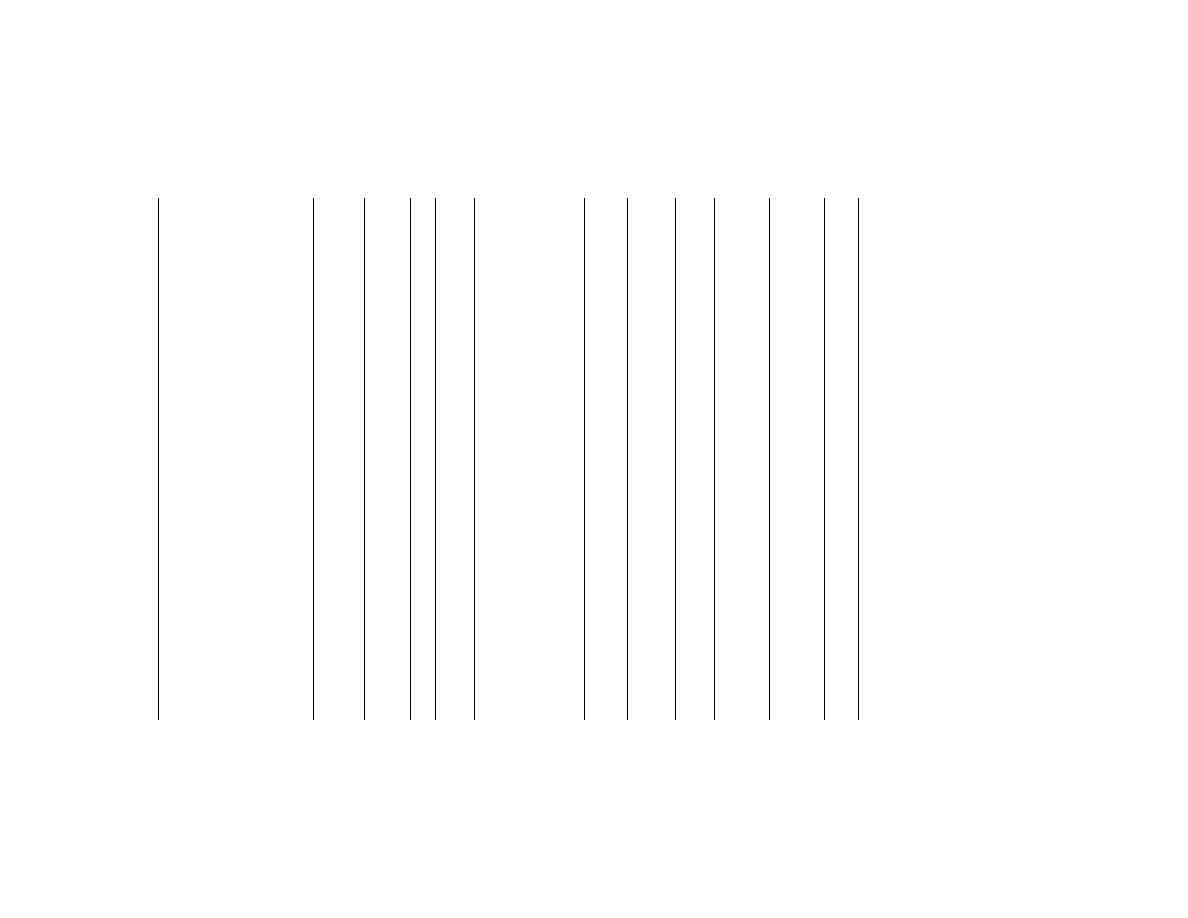
241
Pipeline and Haz. Matls. Safety Admin., DOT
§
172.101
Isobutanol or Isobutyl alcohol
3 UN1212
III
3
B1, IB3, T2, TP1 150
203
242
60 L
220 L
A
Isobutyl acetate
3 UN1213
II
3
IB2, T4, TP1 150
202
242
5 L
60 L
B
Isobutyl acrylate, stabilized
3 UN2527
III
3
387, B1, IB3, T2, TP1 150
203
242
60 L
220 L
C
25
Isobutyl alcohol, see Isobutanol
Isobutyl aldehyde, see
Isobutyraldehyde
Isobutyl formate
3 UN2393
II
3
IB2, T4, TP1 150
202
242
5 L
60 L
B
Isobutyl isobutyrate
3 UN2528
III
3
B1, IB3, T2, TP1 150
203
242
60 L
220 L
A
+
Isobutyl isocyanate
6.1 UN2486
I
6.1, 3
1, B9, B14, B30, T20,
TP2, TP13, TP27
None
226
244
Forbidden
Forbidden
D
40
Isobutyl methacrylate, stabilized
3 UN2283
III
3
387, B1, IB3, T2, TP1 150
203
242
60 L
220 L
C
25
Isobutyl propionate
3 UN2394
III
3
B1, IB3, T2, TP1 150
203
242
60 L
220 L
B
Isobutylamine
3 UN1214
II
3, 8
IB2, T7, TP1 150
202
243
1 L
5 L
B
40, 52
Isobutylene see also Petroleum
gases, liquefied
2.1 UN1055
2.1
19, T50 306
304
314,
315
Forbidden
150 kg
E
40
Isobutyraldehyde or Isobutyl
aldehyde
3 UN2045
II
3
IB2, T4, TP1 150
202
242
5 L
60 L
E
40
Isobutyric acid
3 UN2529
III
3, 8
B1, IB3, T4, TP1 150
203
242
5 L
60 L
A
Isobutyronitrile
3 UN2284
II
3, 6.1
IB2, T7, TP2, TP13 150
202
243
1 L
60 L
E
40
Isobutyryl chloride
3 UN2395
II
3, 8
IB1, T7, TP2 150
202
243
1 L
5 L
C
40, 53,
58
G
Isocyanates, flammable, toxic,
n.o.s. or Isocyanate solutions,
flammable, toxic, n.o.s. flash
point less than 23 degrees C
3 UN2478
II
3, 6.1
5, A3, A7, IB2, T11,
TP2, TP13, TP27, W31
150
202
243
1 L
60 L
D
40
III
3, 6.1
5, A3, A7, IB3, T7, TP1,
TP13, TP28, W31
150
203
242
60 L
220 L
A
G
Isocyanates, toxic, flammable,
n.o.s. or Isocyanate solutions,
toxic, flammable, n.o.s., flash
point not less than 23 degrees C
but not more than 61 degrees C
and boiling point less than 300
degrees C
6.1 UN3080
II
6.1, 3
IB2, T11, TP2, TP13,
TP27
153
202
243
5 L
60 L
B
25, 40
G
Isocyanates, toxic, n.o.s. or
Isocyanate solutions, toxic, n.o.s.,
flash point more than 61 degrees
C and boiling point less than 300
degrees C
6.1 UN2206
II
6.1
IB2, T11, TP2, TP13,
TP27
153
202
243
5 L
60 L
E
25, 40
III
6.1
IB3, T7, TP1, TP13,
TP28
153
203
241
60 L
220 L
E
25, 40
Isocyanatobenzotrifluorides
6.1 UN2285
II
6.1, 3
5, IB2, T7, TP2 153
202
243
5 L
60 L
D
25, 40
Isoheptenes
3 UN2287
II
3
IB2, T4, TP1 150
202
242
5 L
60 L
B
Isohexenes
3 UN2288
II
3
IB2, IP8, T11, TP1 150
202
242
5 L
60 L
E
Isooctane, see Octanes
Isooctenes
3 UN1216
II
3
IB2, T4, TP1 150
202
242
5 L
60 L
B
Isopentane, see Pentane
Isopentanoic acid, see Corrosive
liquids, n.o.s.
Isopentenes
3 UN2371
I
3
T11, TP2 150
201
243
1 L
30 L
E
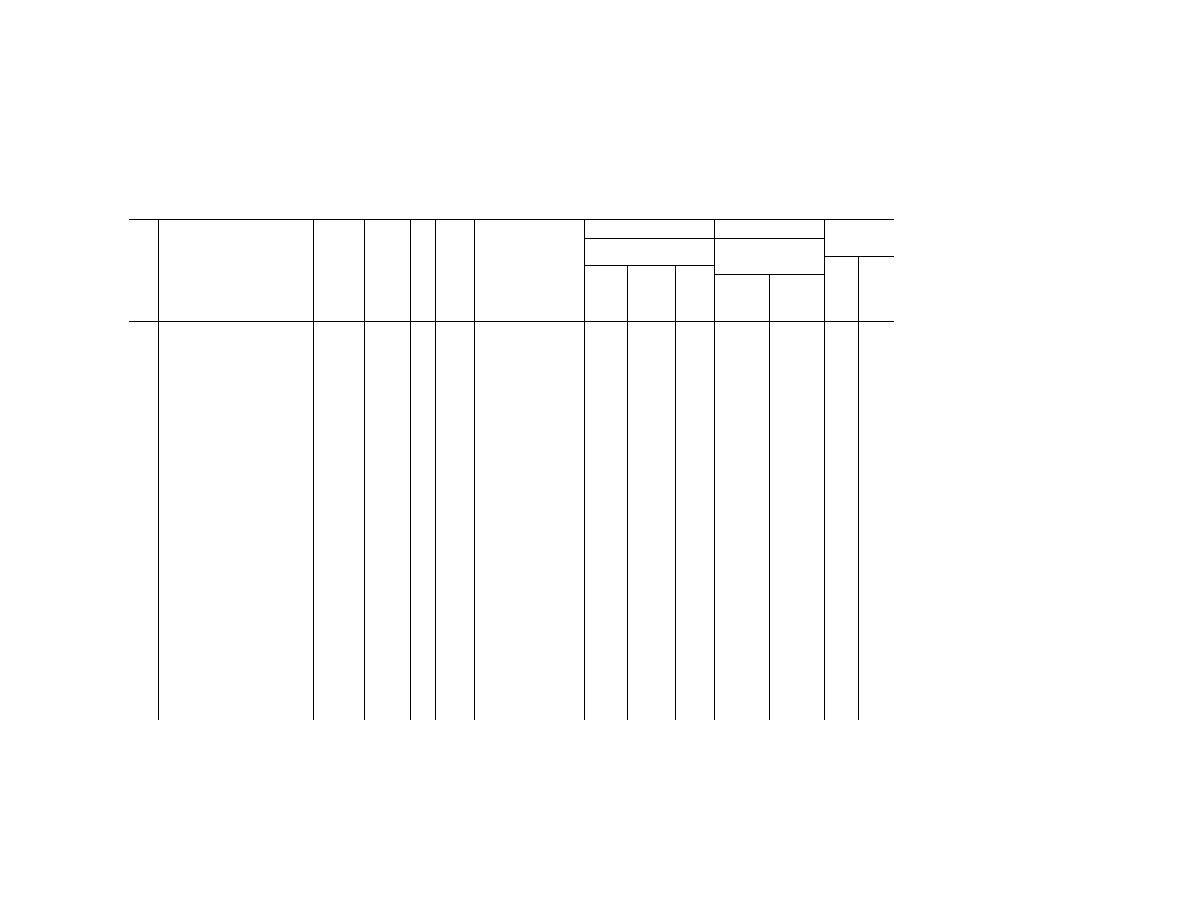
242
49 CFR Ch. I (10–1–23 Edition)
§
172.101
§ 172.101 H
AZARDOUS
M
ATERIALS
T
ABLE
—Continued
Sym-
bols
Hazardous materials descriptions
and proper shipping names
Hazard
class or
Division
Identi-
fication
Numbers
PG
Label
Codes
Special provisions
(§ 172.102)
(8)
(9)
(10)
Vessel
stowage
Packaging
(§ 173.***)
Quantity limitations
(see §§ 173.27 and
175.75)
Loca-
tion
Other
Excep-
tions
Non-bulk
Bulk
Passenger
aircraft/rail
Cargo air-
craft only
(1)
(2)
(3)
(4)
(5)
(6)
(7)
(8A)
(8B)
(8C)
(9A)
(9B)
(10A)
(10B)
Isophorone diisocyanate
6.1 UN2290
III
6.1
IB3, T4, TP2 153
203
241
60 L
220 L
B
40
Isophoronediamine
8 UN2289
III
8
IB3, T4, TP1 154
203
241
5 L
60 L
A
52
Isoprene, stabilized
3 UN1218
I
3
387, T11, TP2 150
201
243
1 L
30 L
D
25
Isopropanol or Isopropyl alcohol
3 UN1219
II
3
IB2, T4, TP1 4b, 150
202
242
5 L
60 L
B
Isopropenyl acetate
3 UN2403
II
3
IB2, T4, TP1 150
202
242
5 L
60 L
B
Isopropenylbenzene
3 UN2303
III
3
B1, IB3, T2, TP1 150
203
242
60 L
220 L
A
Isopropyl acetate
3 UN1220
II
3
IB2, T4, TP1 150
202
242
5 L
60 L
B
Isopropyl acid phosphate
8 UN1793
III
8
IB2, T4, TP1 154
213
240
25 kg
100 kg
A
53, 58
Isopropyl alcohol, see Isopropanol
Isopropyl butyrate
3 UN2405
III
3
B1, IB3, T2, TP1 150
203
242
60 L
220 L
A
Isopropyl chloroacetate
3 UN2947
III
3
B1, IB3, T2, TP1 150
203
242
60 L
220 L
A
Isopropyl chloroformate
6.1 UN2407
I
6.1, 3,
8
2, B9, B14, B32, B77,
T20, TP2, TP13, TP38,
TP44
None
227
244
Forbidden
Forbidden
B
21, 40,
53, 58,
100
Isopropyl 2-chloropropionate
3 UN2934
III
3
B1, IB3, T2, TP1 150
203
242
60 L
220 L
A
Isopropyl isobutyrate
3 UN2406
II
3
IB2, T4, TP1 150
202
242
5 L
60 L
B
+
Isopropyl isocyanate
6.1 UN2483
I
6.1, 3
1, B9, B14, B30, T20,
TP2, TP13, TP38, TP44
None
226
244
Forbidden
Forbidden
D
40
Isopropyl mercaptan, see
Propanethiols
Isopropyl nitrate
3 UN1222
II
3
IB9 150
202
None
5 L
60 L
D
Isopropyl phosphoric acid, see Iso-
propyl acid phosphate
Isopropyl propionate
3 UN2409
II
3
IB2, T4, TP1 150
202
242
5 L
60 L
B
Isopropylamine
3 UN1221
I
3, 8
T11, TP2 None
201
243
0.5 L
2.5 L
E
52
Isopropylbenzene
3 UN1918
III
3
B1, IB3, T2, TP1 150
203
242
60 L
220 L
A
Isopropylcumyl hydroperoxide, with
more than 72 percent in solution
Forbidden
Isosorbide dinitrate mixture with not
less than 60 percent lactose,
mannose, starch or calcium hy-
drogen phosphate
4.1 UN2907
II
4.1
IB6, IP2, N85 None
212
None
15 kg
50 kg
E
28, 36
Isosorbide-5-mononitrate
4.1 UN3251
III
4.1
66, 159, IB8 151
223
240
Forbidden
Forbidden
D
12, 25,
40, 84
Isothiocyanic acid
Forbidden
Jet fuel, see Fuel aviation, turbine
engine
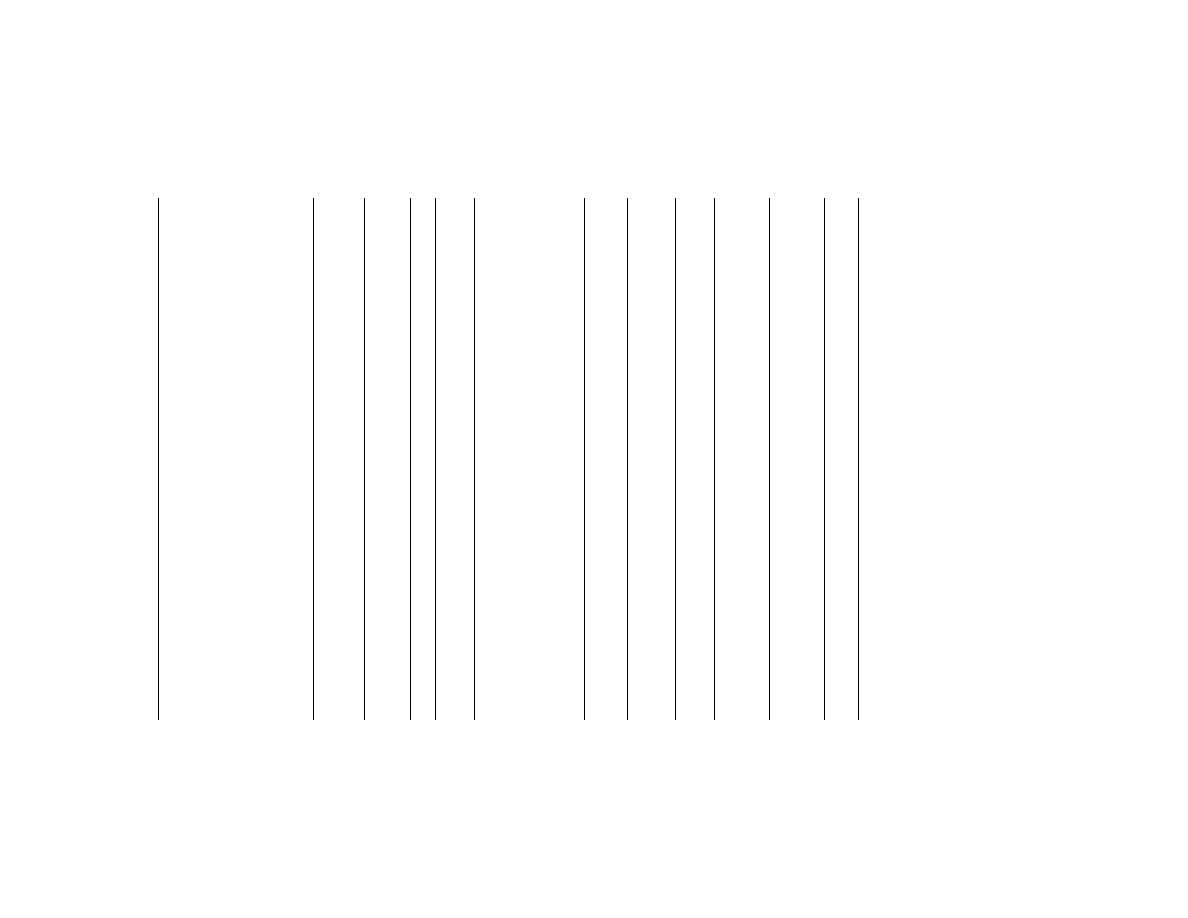
243
Pipeline and Haz. Matls. Safety Admin., DOT
§
172.101
D
Jet perforating guns, charged oil
well with detonator
1.1D NA0124
......
1.1D
55, 56 None
62
None
Forbidden
Forbidden
03
25, 154
D
Jet perforating guns, charged oil
well, with detonator
1.4D NA0494
......
1.4D
55, 56 None
62
None
Forbidden
Forbidden
02
25, 154
Jet perforating guns, charged, oil
well, without detonator
1.4D UN0494
......
1.4D
55, 114 None
62
None
Forbidden
300 kg
02
25, 154
Jet perforating guns, charged oil
well without detonator
1.1D UN0124
......
1.1D
55 None
62
None
Forbidden
Forbidden
03
25, 154
Jet perforators, see Charges,
shaped, etc
Jet tappers, without detonator, see
Charges, shaped, etc
Jet thrust igniters, for rocket motors
or Jato, see Igniters
Jet thrust unit (Jato), see Rocket
motors
Kerosene
3 UN1223
III
3
144, B1, IB3, T2, TP2 150
203
242
60 L
220 L
A
G
Ketones, liquid, n.o.s.
3 UN1224
I
3
T11, TP1, TP8, TP27 None
201
243
1 L
30 L
E
II
3
IB2, T7, TP1, TP8, TP28 150
202
242
5 L
60 L
B
III
3
B1, IB3, T4, TP1, TP29 150
203
242
60 L
220 L
A
Krill meal
4.2 UN3497
II
4.2
155, IB6, IP2, T3, TP33 None
212
242
15 kg
50 kg
B
25, 88,
128
III
4.2
155, IB8, IP3, T1, TP33 None
213
242
25 kg
100 kg
A
128
Krypton, compressed
2.2 UN1056
......
2.2
........................................
306,
307
302
None
75 kg
150 kg
A
............
Krypton, refrigerated liquid (cryo-
genic liquid)
2.2 UN1970
2.2
T75, TP5 320
None
None
50 kg
500 kg
D
Lacquer base or lacquer chips, ni-
trocellulose, dry, see Nitrocellu-
lose, etc. (UN 2557)
Lacquer base or lacquer chips,
plastic, wet with alcohol or sol-
vent, see Nitrocellulose (UN2059,
UN2555, UN2556, UN2557) or
Paint etc.(UN1263)
Lead acetate
6.1 UN1616
III
6.1
IB8, IP3, T1, TP33 153
213
240
100 kg
200 kg
A
Lead arsenates
6.1 UN1617
II
6.1
IB8, IP2, IP4, T3, TP33 153
212
242
25 kg
100 kg
A
Lead arsenites
6.1 UN1618
II
6.1
IB8, IP2, IP4, T3, TP33 153
212
242
25 kg
100 kg
A
Lead azide (dry)
Forbidden
Lead azide, wetted with not less
than 20 percent water or mixture
of alcohol and water, by mass
1.1A UN0129
......
1.1A
111, 117 None
62
None
Forbidden
Forbidden
05
25
G
Lead compounds, soluble, n.o.s
6.1 UN2291
III
6.1
138, IB8, IP3, T1, TP33 153
213
240
100 kg
200 kg
A
Lead cyanide
6.1 UN1620
II
6.1
IB8, IP2, IP4, T3, TP33 153
212
242
25 kg
100 kg
A
52
Lead dioxide
5.1 UN1872
III
5.1
A1, IB8, IP3, T1, TP33 152
213
240
25 kg
100 kg
A
Lead dross, see Lead sulfate, with
more than 3 percent free acid
Lead nitrate
5.1 UN1469
II
5.1,
6.1
IB8, IP2, IP4, T3, TP33 152
212
242
5 kg
25 kg
A
Lead nitroresorcinate (dry)
Forbidden
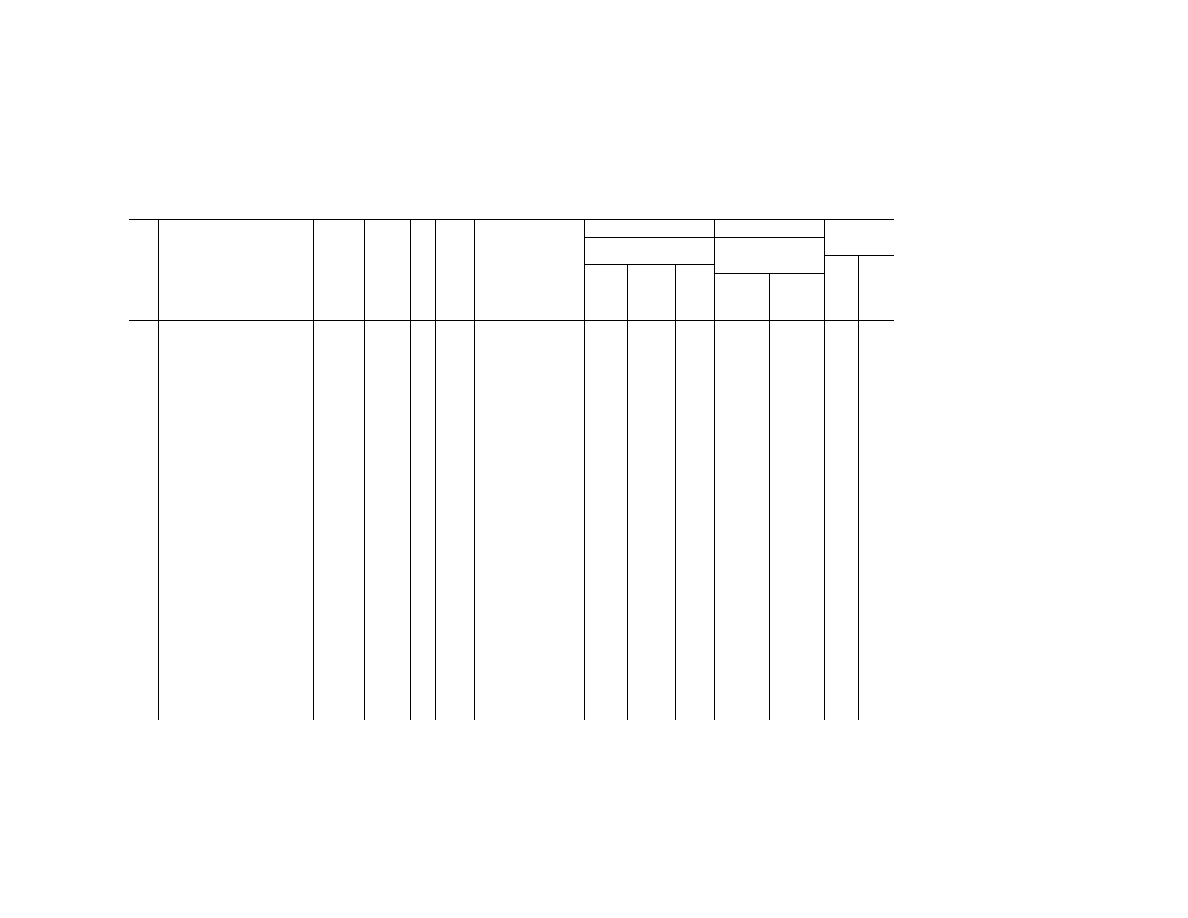
244
49 CFR Ch. I (10–1–23 Edition)
§
172.101
§ 172.101 H
AZARDOUS
M
ATERIALS
T
ABLE
—Continued
Sym-
bols
Hazardous materials descriptions
and proper shipping names
Hazard
class or
Division
Identi-
fication
Numbers
PG
Label
Codes
Special provisions
(§ 172.102)
(8)
(9)
(10)
Vessel
stowage
Packaging
(§ 173.***)
Quantity limitations
(see §§ 173.27 and
175.75)
Loca-
tion
Other
Excep-
tions
Non-bulk
Bulk
Passenger
aircraft/rail
Cargo air-
craft only
(1)
(2)
(3)
(4)
(5)
(6)
(7)
(8A)
(8B)
(8C)
(9A)
(9B)
(10A)
(10B)
Lead perchlorate, solid
5.1 UN1470
II
5.1,
6.1
IB6, IP2, T3, TP33 152
212
242
5 kg
25 kg
A
56, 58
Lead perchlorate, solution
5.1 UN3408
II
5.1,
6.1
IB2, T4, TP1 152
202
243
1 L
5 L
A
56, 58
III
5.1,
6.1
IB2, T4, TP1 152
203
242
2.5 L
30 L
A
56, 58
Lead peroxide, see Lead dioxide
Lead phosphite, dibasic
4.1 UN2989
II
4.1
IB8, IP2, IP4, T3, TP33 151
212
240
15 kg
50 kg
B
34
III
4.1
IB8, IP3, T1, TP33 151
213
240
25 kg
100 kg
B
34
Lead picrate (dry)
Forbidden
Lead styphnate (dry)
Forbidden
Lead styphnate, wetted or Lead
trinitroresorcinate, wetted with not
less than 20 percent water or
mixture of alcohol and water, by
mass
1.1A UN0130
......
1.1A
111, 117 None
62
None
Forbidden
Forbidden
05
25
Lead sulfate with more than 3 per-
cent free acid
8 UN1794
II
8
IB8, IP2, IP4, T3, TP33 154
212
240
15 kg
50 kg
A
53, 58
Lead trinitroresorcinate, see Lead
styphnate, etc
Life-saving appliances, not self in-
flating containing dangerous
goods as equipment
9 UN3072
......
None
182 None
219
None
No limit
No limit
A
122
Life-saving appliances, self inflating
9 UN2990
......
None
338 None
219
None
No limit
No limit
A
122
Lighters containing flammable gas
2.1 UN1057
2.1
168 21,308
21,308
None
1 kg
15 kg
B
40
Lighters, new or empty, purged of
all residual fuel and vapors
168
Lighters, non-pressurized, con-
taining flammable liquid,
3 NA1057
II
3
168 21
None
None
Forbidden
Forbidden
B
40
Lighter refills containing flammable
gas not exceeding 4 fluid ounces
(7.22 cubic inches) and 65 grams
of flammable gas
2.1 UN1057
2.1
169 306
306
None
1 kg
15 kg
B
40
Lighter replacement cartridges con-
taining liquefied petroleum gases
see Lighter refills containing flam-
mable gas. Etc.
Lighters, fuse
1.4S UN0131
......
1.4S
........................................
None
62
None
25 kg
100 kg
01
25
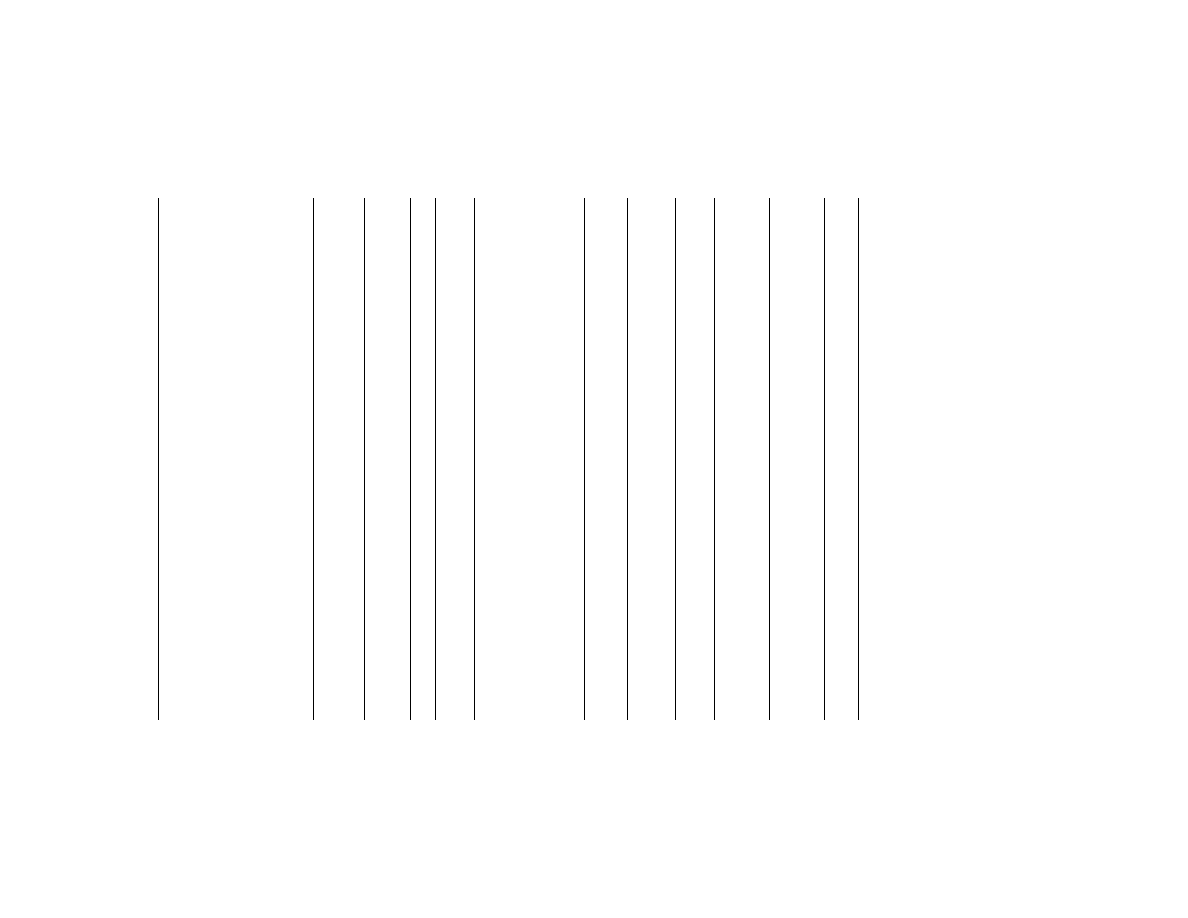
245
Pipeline and Haz. Matls. Safety Admin., DOT
§
172.101
Lime, unslaked, see Calcium oxide
G
Liquefied gas, flammable, n.o.s.
2.1 UN3161
2.1
T50 306
304
314,
315
Forbidden
150 kg
D
40
G
Liquefied gas, n.o.s.
2.2 UN3163
2.2
T50 306
304
314,
315
75 kg
150 kg
A
G
Liquefied gas, oxidizing, n.o.s.
2.2 UN3157
2.2,
5.1
A14 306
304
314,
315
75 kg
150 kg
D
G I
Liquefied gas, toxic, corrosive,
n.o.s. Inhalation Hazard Zone A
2.3 UN3308
2.3, 8
1 None
192
245
Forbidden
Forbidden
D
40
G I
Liquefied gas, toxic, corrosive,
n.o.s. Inhalation Hazard Zone B
2.3 UN3308
2.3, 8
2, B9, B14 None
304
314,
315
Forbidden
Forbidden
D
40
G I
Liquefied gas, toxic, corrosive,
n.o.s. Inhalation Hazard Zone C
2.3 UN3308
2.3, 8
3, B14 None
304
314,
315
Forbidden
Forbidden
D
40
G I
Liquefied gas, toxic, corrosive,
n.o.s. Inhalation Hazard Zone D
2.3 UN3308
2.3, 8
4 None
304
314,
315
Forbidden
Forbidden
D
40
G I
Liquefied gas, toxic, flammable, cor-
rosive, n.o.s. Inhalation Hazard
Zone A
2.3 UN3309
2.3,
2.1,
8
1 None
192
245
Forbidden
Forbidden
D
17, 40
G I
Liquefied gas toxic, flammable, cor-
rosive, n.o.s. Inhalation Hazard
Zone B
2.3 UN3309
2.3,
2.1,
8
2, B9, B14 None
304
314,
315
Forbidden
Forbidden
D
17, 40
G I
Liquefied gas, toxic, flammable, cor-
rosive, n.o.s. Inhalation Hazard
Zone C
2.3 UN3309
2.3,
2.1,
8
3, B14 None
304
314,
315
Forbidden
Forbidden
D
17, 40
G I
Liquefied gas, toxic, flammable, cor-
rosive, n.o.s. Inhalation Hazard
Zone D
2.3 UN3309
2.3,
2.1,
8
4 None
304
314,
315
Forbidden
Forbidden
D
17, 40
G
Liquefied gas, toxic, flammable,
n.o.s. Inhalation Hazard Zone A
2.3 UN3160
2.3,
2.1
1 None
192
245
Forbidden
Forbidden
D
40
G
Liquefied gas, toxic, flammable,
n.o.s. Inhalation Hazard Zone B
2.3 UN3160
2.3,
2.1
2, B9, B14 None
304
314,
315
Forbidden
Forbidden
D
40
G
Liquefied gas, toxic, flammable,
n.o.s. Inhalation Hazard Zone C
2.3 UN3160
2.3,
2.1
3, B14 None
304
314,
315
Forbidden
Forbidden
D
40
G
Liquefied gas, toxic, flammable,
n.o.s. Inhalation Hazard Zone D
2.3 UN3160
2.3,
2.1
4 None
304
314,
315
Forbidden
Forbidden
D
40
G
Liquefied gas, toxic, n.o.s. Inhala-
tion Hazard Zone A
2.3 UN3162
2.3
1 None
192
245
Forbidden
Forbidden
D
40
G
Liquefied gas, toxic, n.o.s. Inhala-
tion Hazard Zone B
2.3 UN3162
2.3
2, B9, B14 None
304
314,
315
Forbidden
Forbidden
D
40
G
Liquefied gas, toxic, n.o.s. Inhala-
tion Hazard Zone C
2.3 UN3162
2.3
3, B14 None
304
314,
315
Forbidden
Forbidden
D
40
G
Liquefied gas, toxic, n.o.s. Inhala-
tion Hazard Zone D
2.3 UN3162
2.3
4 None
304
314,
315
Forbidden
Forbidden
D
40
G I
Liquefied gas, toxic, oxidizing, cor-
rosive, n.o.s. Inhalation Hazard
Zone A
2.3 UN3310
2.3,
5.1,
8
1 None
192
245
Forbidden
Forbidden
D
40, 89,
90
G I
Liquefied gas, toxic, oxidizing, cor-
rosive, n.o.s. Inhalation Hazard
Zone B
2.3 UN3310
2.3,
5.1,
8
2, B9, B14 None
304
314,
315
Forbidden
Forbidden
D
40, 89,
90
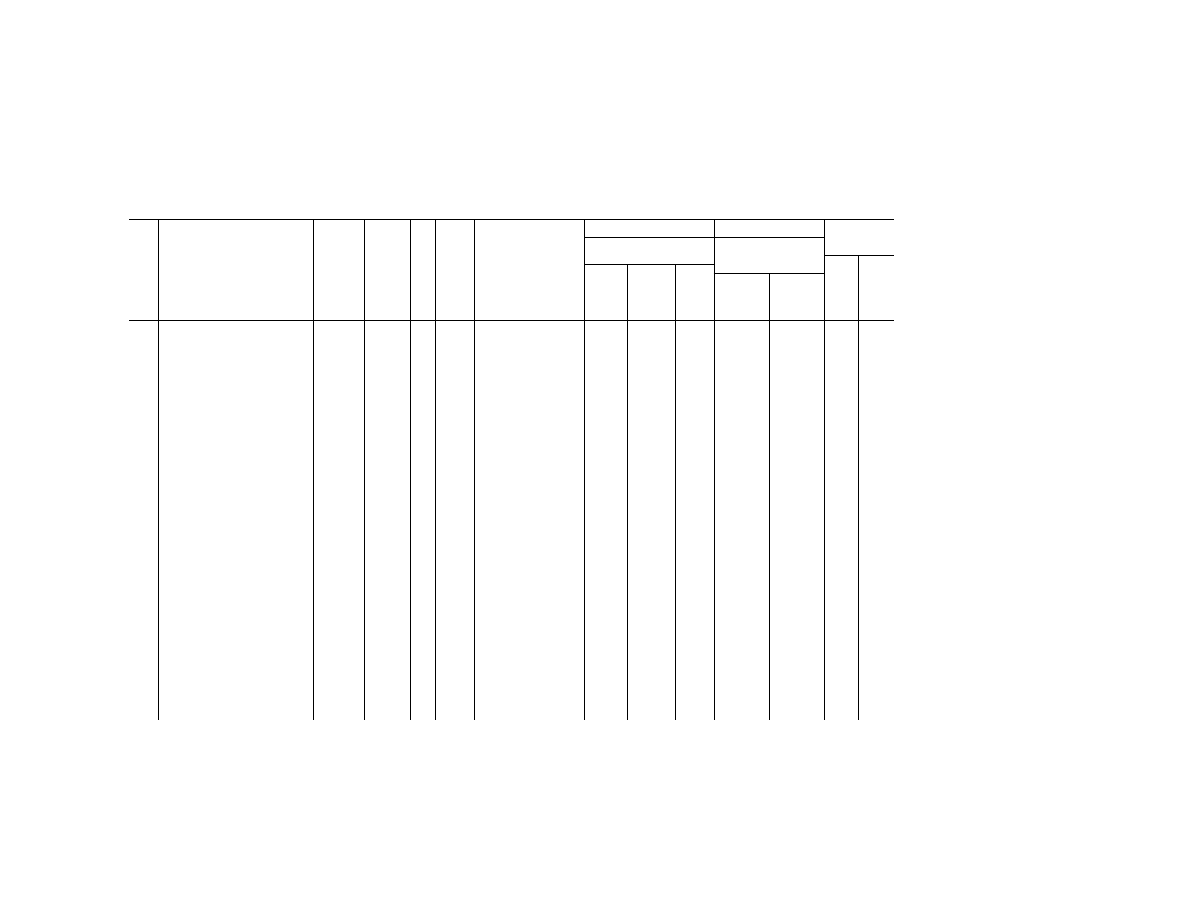
246
49 CFR Ch. I (10–1–23 Edition)
§
172.101
§ 172.101 H
AZARDOUS
M
ATERIALS
T
ABLE
—Continued
Sym-
bols
Hazardous materials descriptions
and proper shipping names
Hazard
class or
Division
Identi-
fication
Numbers
PG
Label
Codes
Special provisions
(§ 172.102)
(8)
(9)
(10)
Vessel
stowage
Packaging
(§ 173.***)
Quantity limitations
(see §§ 173.27 and
175.75)
Loca-
tion
Other
Excep-
tions
Non-bulk
Bulk
Passenger
aircraft/rail
Cargo air-
craft only
(1)
(2)
(3)
(4)
(5)
(6)
(7)
(8A)
(8B)
(8C)
(9A)
(9B)
(10A)
(10B)
G I
Liquefied gas, toxic, oxidizing, cor-
rosive, n.o.s. Inhalation Hazard
Zone C
2.3 UN3310
2.3,
5.1,
8
3, B14 None
304
314,
315
Forbidden
Forbidden
D
40, 89,
90
G I
Liquefied gas, toxic, oxidizing, cor-
rosive, n.o.s. Inhalation Hazard
Zone D
2.3 UN3310
2.3,
5.1,
8
4 None
304
314,
315
Forbidden
Forbidden
D
40, 89,
90
G
Liquefied gas, toxic, oxidizing, n.o.s.
Inhalation Hazard Zone A
2.3 UN3307
2.3,
5.1
1 None
192
245
Forbidden
Forbidden
D
40
G
Liquefied gas, toxic, oxidizing, n.o.s.
Inhalation Hazard Zone B
2.3 UN3307
2.3,
5.1
2, B9, B14 None
304
314,
315
Forbidden
Forbidden
D
40
G
Liquefied gas, toxic, oxidizing, n.o.s.
Inhalation Hazard Zone C
2.3 UN3307
2.3,
5.1
3, B14 None
304
314,
315
Forbidden
Forbidden
D
40
G
Liquefied gas, toxic, oxidizing, n.o.s.
Inhalation Hazard Zone D
2.3 UN3307
2.3,
5.1
4 None
304
314,
315
Forbidden
Forbidden
D
40
Liquefied gases, non-flammable
charged with nitrogen, carbon di-
oxide or air
2.2 UN1058
2.2
306
304
None
75 kg
150 kg
A
Liquefied hydrocarbon gas, see Hy-
drocarbon gas mixture, liquefied,
n.o.s.
Liquefied natural gas, see Methane,
etc. (UN 1972)
Liquefied petroleum gas see Petro-
leum gases, liquefied
Lithium
4.3 UN1415
I
4.3
A7, A19, IB4, IP1, N45,
T9, TP7, TP33, W31
151
211
244
Forbidden
15 kg
D
13, 52,
148
Lithium acetylide ethylenediamine
complex, see Water reactive solid
etc
Lithium aluminum hydride
4.3 UN1410
I
4.3
A19, W31 None
211
242
Forbidden
15 kg
E
13, 52,
148
Lithium aluminum hydride, ethereal
4.3 UN1411
I
4.3, 3
A2, A11, N34 None
201
244
Forbidden
1 L
D
13, 40,
148
Lithium batteries installed in cargo
transport unit lithium ion batteries
or lithium metal batteries
9 UN3536
......
389
Forbidden
Forbidden
A
Lithium borohydride
4.3 UN1413
I
4.3
A19, N40, W31 None
211
242
Forbidden
15 kg
E
13, 52,
148
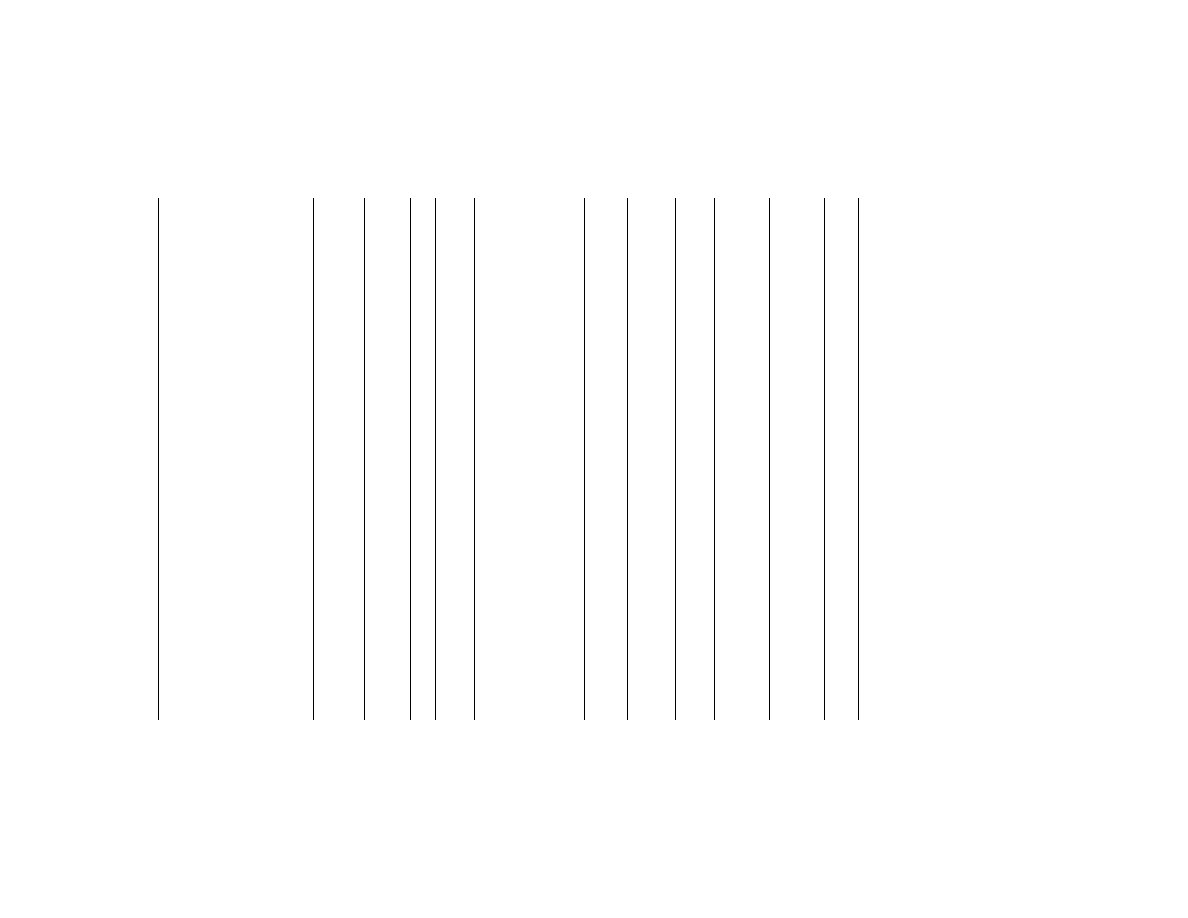
247
Pipeline and Haz. Matls. Safety Admin., DOT
§
172.101
Lithium ferrosilicon
4.3 UN2830
II
4.3
A19, IB7, IP2, IP21, T3,
TP33, W31, W40
151
212
241
15 kg
50 kg
E
13, 40,
85,
103,
148
Lithium hydride
4.3 UN1414
I
4.3
A19, N40, W31 None
211
242
Forbidden
15 kg
E
13, 52,
148
Lithium hydride, fused solid
4.3 UN2805
II
4.3
A8, A19, A20, IB4, T3,
TP33, W31, W40
151
212
241
15 kg
50 kg
E
13, 52,
148
Lithium hydroxide
8 UN2680
II
8
IB8, IP2, IP4, T3, TP33 154
212
240
15 kg
50 kg
A
52.
Lithium hydroxide, solution
8 UN2679
II
8
B2, IB2, T7, TP2 154
202
242
1 L
30 L
A
29, 52.
III
8
IB3, T4, TP2 154
203
241
5 L
60 L
A
29, 52,
96.
Lithium hypochlorite, dry or Lithium
hypochlorite mixture
5.1 UN1471
II
5.1
A9, IB8, IP2, IP4, N34,
T3, TP33
152
212
240
5 kg
25 kg
A
4, 25,
52, 56,
58, 69,
106,
116
III
5.1
IB8, IP3, N34, T1, TP33 152
213
240
25 kg
100 kg
A
4, 25,
52, 56,
58, 69,
106,
116
Lithium in cartridges, see Lithium
Lithium ion batteries including lith-
ium ion polymer batteries
9 UN3480
......
9
388, 422, A54, A100 185
185
185
Forbidden
35 kg
A
156
Lithium ion batteries contained in
equipment including lithium ion
polymer batteries
9 UN3481
......
9
181, 360, 388, 422, A54 185
185
185
5 kg
35 kg
A
156
Lithium ion batteries packed with
equipment including lithium ion
polymer batteries
9 UN3481
......
9
181, 360, 388, 422, A54 185
185
185
5 kg
35 kg
A
156
Lithium metal batteries including
lithium alloy batteries
9 UN3090
......
9
388, 422, A54 185
185
185
Forbidden
35 kg
A
156
Lithium metal batteries contained in
equipment including lithium alloy
batteries
9 UN3091
......
9
181, 360, 388, 422, A54,
A101
185
185
185
5 kg
35 kg
A
156
Lithium metal batteries packed with
equipment including lithium alloy
batteries
9 UN3091
......
9
181, 360, 388, 422, A54 185
185
185
5 kg
35 kg
A
156
Lithium nitrate
5.1 UN2722
III
5.1
A1, IB8, IP3, T1, TP33 152
213
240
25 kg
100 kg
A
Lithium nitride
4.3 UN2806
I
4.3
A19, IB4, IP1, N40, W31 None
211
242
Forbidden
15 kg
E
Lithium peroxide
5.1 UN1472
II
5.1
A9, IB6, IP2, N34, T3,
TP33, W100
152
212
None
5 kg
25 kg
C
13, 52,
66, 75,
148
Lithium silicon
4.3 UN1417
II
4.3
A19, A20, IB7, IP2,
IP21, T3, TP33, W31,
W40
151
212
241
15 kg
50 kg
A
13, 85,
103,
148
LNG, see Methane etc. (UN 1972)
London purple
6.1 UN1621
II
6.1
IB8, IP2, IP4, T3, TP33 153
212
242
25 kg
100 kg
A
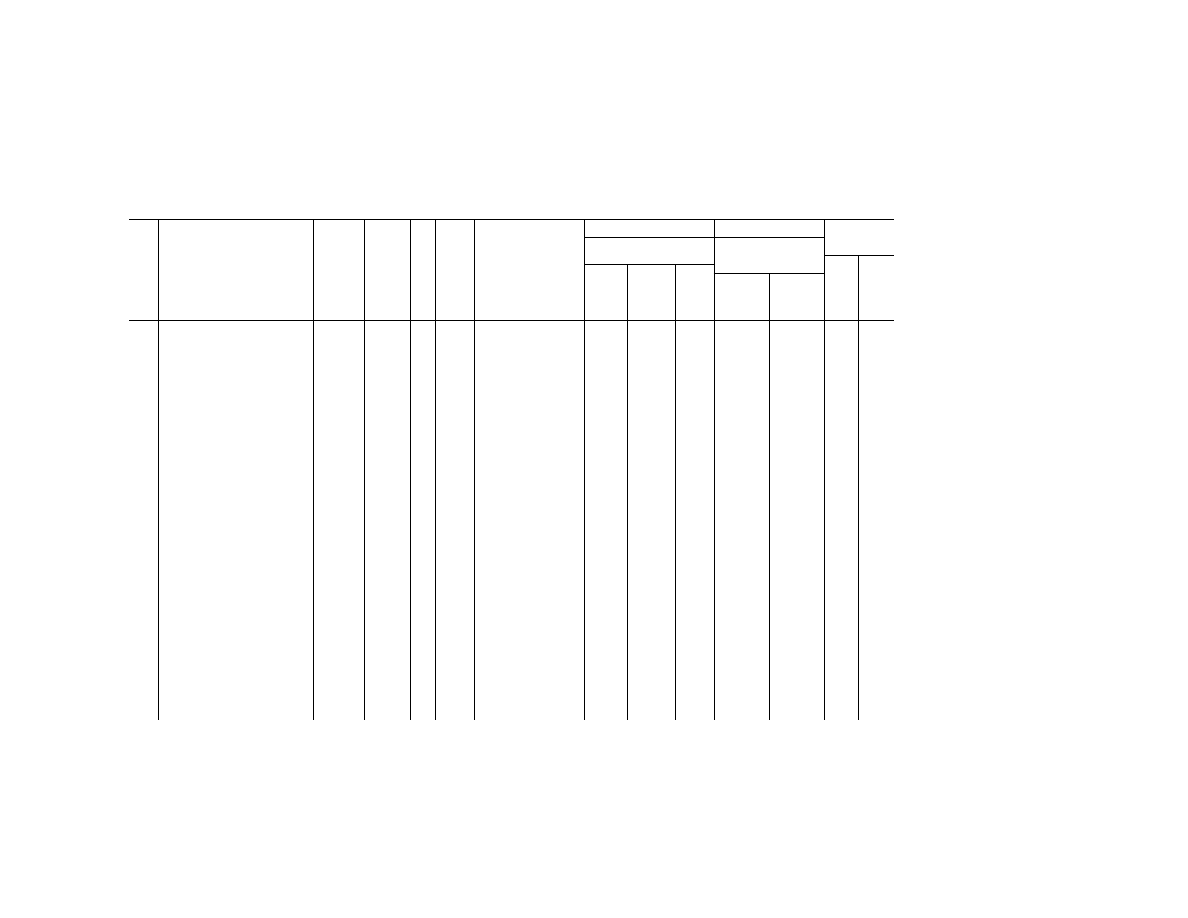
248
49 CFR Ch. I (10–1–23 Edition)
§
172.101
§ 172.101 H
AZARDOUS
M
ATERIALS
T
ABLE
—Continued
Sym-
bols
Hazardous materials descriptions
and proper shipping names
Hazard
class or
Division
Identi-
fication
Numbers
PG
Label
Codes
Special provisions
(§ 172.102)
(8)
(9)
(10)
Vessel
stowage
Packaging
(§ 173.***)
Quantity limitations
(see §§ 173.27 and
175.75)
Loca-
tion
Other
Excep-
tions
Non-bulk
Bulk
Passenger
aircraft/rail
Cargo air-
craft only
(1)
(2)
(3)
(4)
(5)
(6)
(7)
(8A)
(8B)
(8C)
(9A)
(9B)
(10A)
(10B)
LPG, see Petroleum gases, lique-
fied
Lye, see Sodium hydroxide, solu-
tions
Magnesium aluminum phosphide
4.3 UN1419
I
4.3,
6.1
A19, N34, N40, W31 None
211
242
Forbidden
15 kg
E
13, 40,
52, 85,
148
+
Magnesium arsenate
6.1 UN1622
II
6.1
IB8, IP2, IP4, T3, TP33 153
212
242
25 kg
100 kg
A
Magnesium bisulfite solution, see
Bisulfites, aqueous solutions,
n.o.s.
Magnesium bromate
5.1 UN1473
II
5.1
A1, IB8, IP2, IP4, T3,
TP33
152
212
242
5 kg
25 kg
A
56, 58
Magnesium chlorate
5.1 UN2723
II
5.1
IB8, IP2, IP4, T3, TP33 152
212
242
5 kg
25 kg
A
56, 58
Magnesium diamide
4.2 UN2004
II
4.2
A8, A19, A20, IB6, T3,
TP33, W31
None
212
241
15 kg
50 kg
C
13, 148
Magnesium dross, wet or hot
Forbidden
Magnesium fluorosilicate
6.1 UN2853
III
6.1
IB8, IP3, T1, TP33 153
213
240
100 kg
200 kg
A
52
Magnesium granules, coated, par-
ticle size not less than 149 mi-
crons
4.3 UN2950
III
4.3
A1, A19, IB8, IP4, T1,
TP33, W100
151
213
240
25 kg
100 kg
A
13, 52,
148
Magnesium hydride
4.3 UN2010
I
4.3
A19, N40, W31 None
211
242
Forbidden
15 kg
E
13, 52,
148
Magnesium or Magnesium alloys
with more than 50 percent mag-
nesium in pellets, turnings or rib-
bons
4.1 UN1869
III
4.1
A1, B134, IB8, IP21, T1,
TP33, W100
151
213
240
25 kg
100 kg
A
13, 39,
52, 53,
74,
101,
147,
148
Magnesium nitrate
5.1 UN1474
III
5.1
332, A1, B120, IB8, IP3,
T1, TP33
152
213
240
25 kg
100 kg
A
Magnesium perchlorate
5.1 UN1475
II
5.1
IB6, IP2, T3, TP33 152
212
242
5 kg
25 kg
A
56, 58
Magnesium peroxide
5.1 UN1476
II
5.1
IB6, IP2, T3, TP33,
W100
152
212
242
5 kg
25 kg
C
13, 52,
66, 75,
148
Magnesium phosphide
4.3 UN2011
I
4.3,
6.1
A19, N40, W31 None
211
None
Forbidden
15 kg
E
13, 40,
52, 85,
148
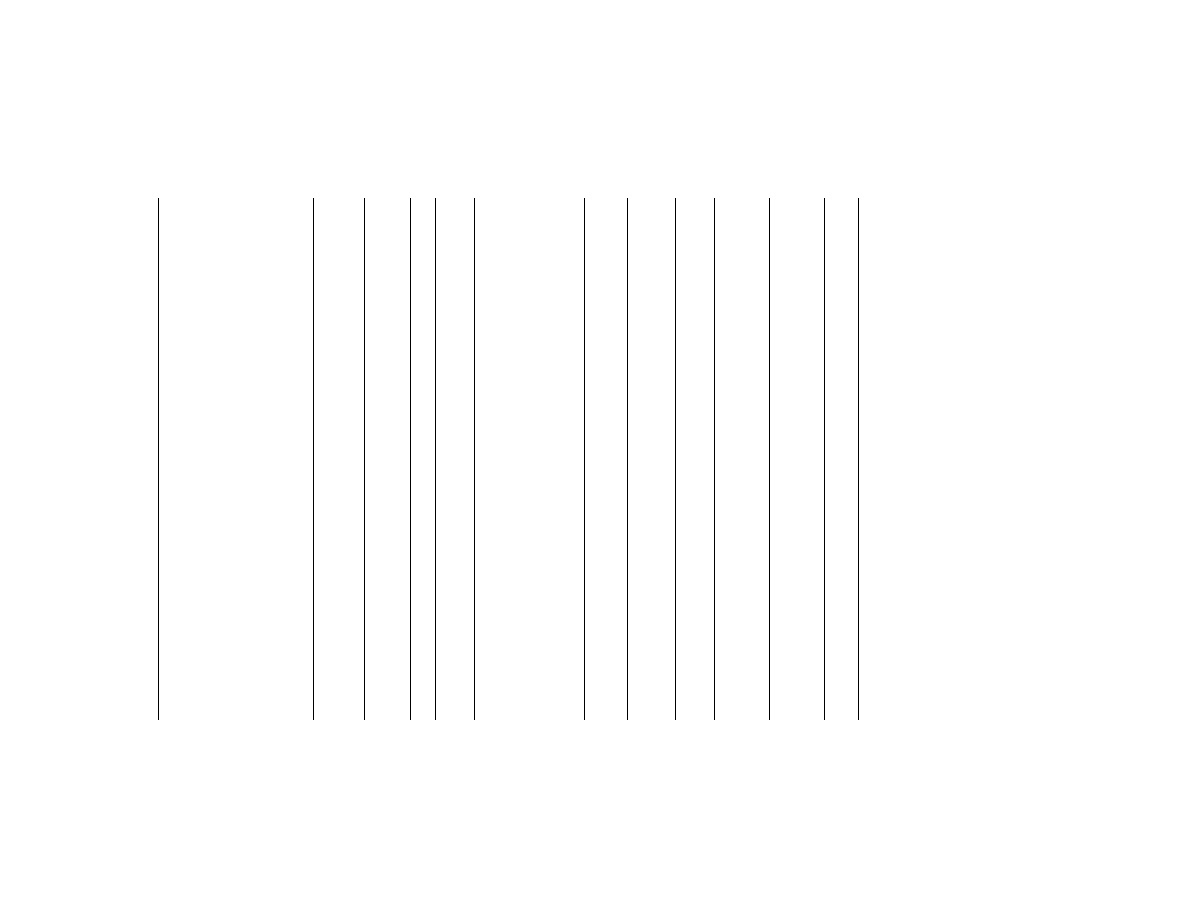
249
Pipeline and Haz. Matls. Safety Admin., DOT
§
172.101
Magnesium, powder or Magnesium
alloys, powder
4.3 UN1418
I
4.3,
4.2
A19, B56, W31 None
211
244
Forbidden
15 kg
A
13, 39,
52, 148
II
4.3,
4.2
A19, B56, IB5, IP2, T3,
TP33, W31, W40
None
212
241
15 kg
50 kg
A
13, 39,
52, 148
III
4.3,
4.2
A19, B56, IB8, IP4, T1,
TP33, W31
None
213
241
25 kg
100 kg
A
13, 39,
52, 148
Magnesium scrap, see Magnesium,
etc. (UN 1869)
Magnesium silicide
4.3 UN2624
II
4.3
A19, A20, IB7, IP2,
IP21, T3, TP33, W31,
W40
151
212
241
15 kg
50 kg
B
13, 85,
103,
148
Magnetized material, see § 173.21
Maleic anhydride
8 UN2215
III
8
IB8, IP3, T1, TP33 154
213
240
25 kg
100 kg
A
53, 58,
95, 102
Maleic anhydride, molten
8 UN2215
III
8
T4, TP3 None
213
240
Forbidden
Forbidden
A
53, 58,
95, 102
Malononitrile
6.1 UN2647
II
6.1
IB8, IP2, IP4, T3, TP33 153
212
242
25 kg
100 kg
A
12, 25
Mancozeb (manganese
ethylenebisdithiocarbamate com-
plex with zinc) see Maneb
Maneb or Maneb preparations with
not less than 60 percent maneb
4.2 UN2210
III
4.2,
4.3
57, A1, A19, IB6, T1,
TP33, W100
None
213
242
25 kg
100 kg
A
13, 34,
148
Maneb stabilized or Maneb prep-
arations, stabilized against self-
heating
4.3 UN2968
III
4.3
54, A1, A19, IB8, IP4,
T1, TP33, W100
151
213
242
25 kg
100 kg
B
13, 34,
52, 148
Manganese nitrate
5.1 UN2724
III
5.1
A1, IB8, IP3, T1, TP33 152
213
240
25 kg
100 kg
A
Manganese resinate
4.1 UN1330
III
4.1
A1, IB6, T1, TP33 151
213
240
25 kg
100 kg
A
Mannitan tetranitrate
Forbidden
Mannitol hexanitrate (dry)
Forbidden
Mannitol hexanitrate, wetted or
Nitromannite, wetted with not less
than 40 percent water, or mixture
of alcohol and water, by mass
1.1D UN0133
......
1.1D
121 None
62
None
Forbidden
Forbidden
04
25
Marine pollutants, liquid or solid,
n.o.s., see Environmentally haz-
ardous substances, liquid or
solid, n.o.s.
Matches, block, see Matches,
’strike anywhere’
Matches, fusee
4.1 UN2254
III
4.1
186
186
None
Forbidden
Forbidden
A
Matches, safety (book, card or
strike on box)
4.1 UN1944
III
4.1
186
186
None
25 kg
100 kg
A
Matches, strike anywhere
4.1 UN1331
III
4.1
186
186
None
Forbidden
Forbidden
B
Matches, wax, Vesta
4.1 UN1945
III
4.1
186
186
None
25 kg
100 kg
B
Matting acid, see Sulfuric acid
Medical waste, category A, affecting
humans, solid or Medical waste,
category A, affecting animals
only, solid
6.2 UN3549
......
6.2
131, 430
..................
..................
............
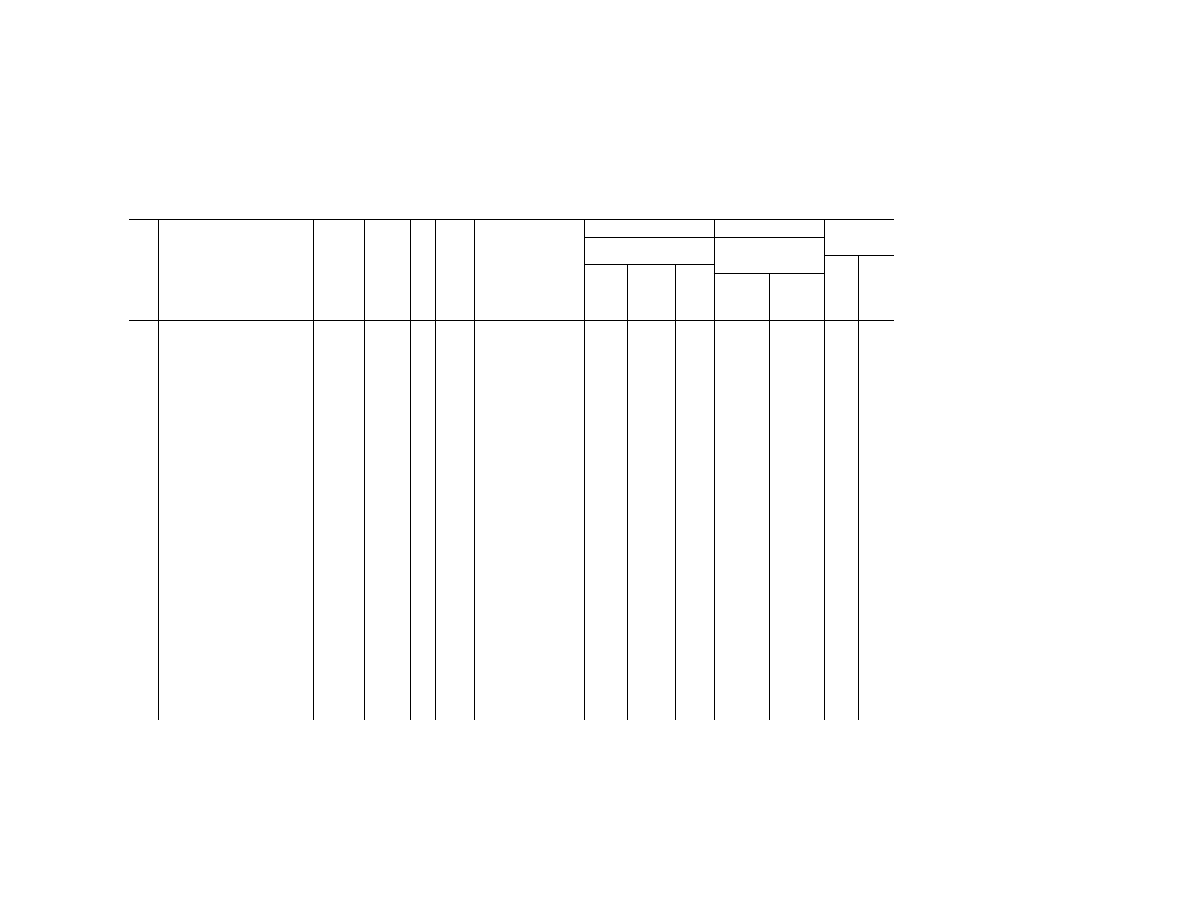
250
49 CFR Ch. I (10–1–23 Edition)
§
172.101
§ 172.101 H
AZARDOUS
M
ATERIALS
T
ABLE
—Continued
Sym-
bols
Hazardous materials descriptions
and proper shipping names
Hazard
class or
Division
Identi-
fication
Numbers
PG
Label
Codes
Special provisions
(§ 172.102)
(8)
(9)
(10)
Vessel
stowage
Packaging
(§ 173.***)
Quantity limitations
(see §§ 173.27 and
175.75)
Loca-
tion
Other
Excep-
tions
Non-bulk
Bulk
Passenger
aircraft/rail
Cargo air-
craft only
(1)
(2)
(3)
(4)
(5)
(6)
(7)
(8A)
(8B)
(8C)
(9A)
(9B)
(10A)
(10B)
Medicine, liquid, flammable, toxic,
n.o.s
3 UN3248
II
3, 6.1
IB2 150
202
243
1 L
60 L
B
40
III
3, 6.1
IB3 150
203
242
60 L
220 L
A
Medicine, liquid, toxic, n.o.s
6.1 UN1851
II
6.1
153
202
243
5 L
60 L
C
40
III
6.1
153
203
241
60 L
220 L
C
40
Medicine, solid, toxic, n.o.s
6.1 UN3249
II
6.1
T3, TP33 153
212
242
25 kg
100 kg
C
40
III
6.1
T3, TP33 153
213
240
100 kg
200 kg
C
40
Memtetrahydrophthalic anhydride,
see Corrosive liquids, n.o.s.
Mercaptans, liquid, flammable,
n.o.s. or Mercaptan mixture, liq-
uid, flammable, n.o.s
3 UN3336
I
3
T11, TP2 150
201
243
1 L
30 L
E
95, 102
II
3
IB2, T7, TP1, TP8, TP28 150
202
242
5 L
60 L
B
95, 102
III
3
B1, B52, IB3, T4, TP1,
TP29
150
203
241
60 L
220 L
B
95, 102
Mercaptans, liquid, flammable,
toxic, n.o.s. or Mercaptan mix-
tures, liquid, flammable, toxic,
n.o.s.
3 UN1228
II
3, 6.1
IB2, T11, TP2, TP27 150
202
243
Forbidden
60 L
B
40, 95,
102
III
3, 6.1
B1, IB3, T7, TP1, TP28 150
203
242
5 L
220 L
A
40, 95,
102
Mercaptans, liquid, toxic, flam-
mable, n.o.s. or Mercaptan mix-
tures, liquid, toxic, flammable,
n.o.s., flash point not less than 23
degrees C
6.1 UN3071
II
6.1, 3
IB2, T11, TP2, TP13,
TP27
153
202
243
5 L
60 L
C
40,
102,
121
5-Mercaptotetrazol-1-acetic acid
1.4C UN0448
......
1.4C
........................................
None
62
None
Forbidden
75 kg
02
25
Mercuric arsenate
6.1 UN1623
II
6.1
IB8, IP2, IP4, T3, TP33 153
212
242
25 kg
100 kg
A
Mercuric chloride
6.1 UN1624
II
6.1
IB8, IP2, IP4, T3, TP33 153
212
242
25 kg
100 kg
A
Mercuric compounds, see Mercury
compounds, etc
Mercuric nitrate
6.1 UN1625
II
6.1
IB8, IP2, IP4, N73, T3,
TP33
153
212
242
25 kg
100 kg
A
+
Mercuric potassium cyanide
6.1 UN1626
I
6.1
IB7, IP1, N74, N75, T6,
TP33, W31
None
211
242
5 kg
50 kg
A
52
Mercuric sulfocyanate, see Mercury
thiocyanate
Mercurol, see Mercury nucleate
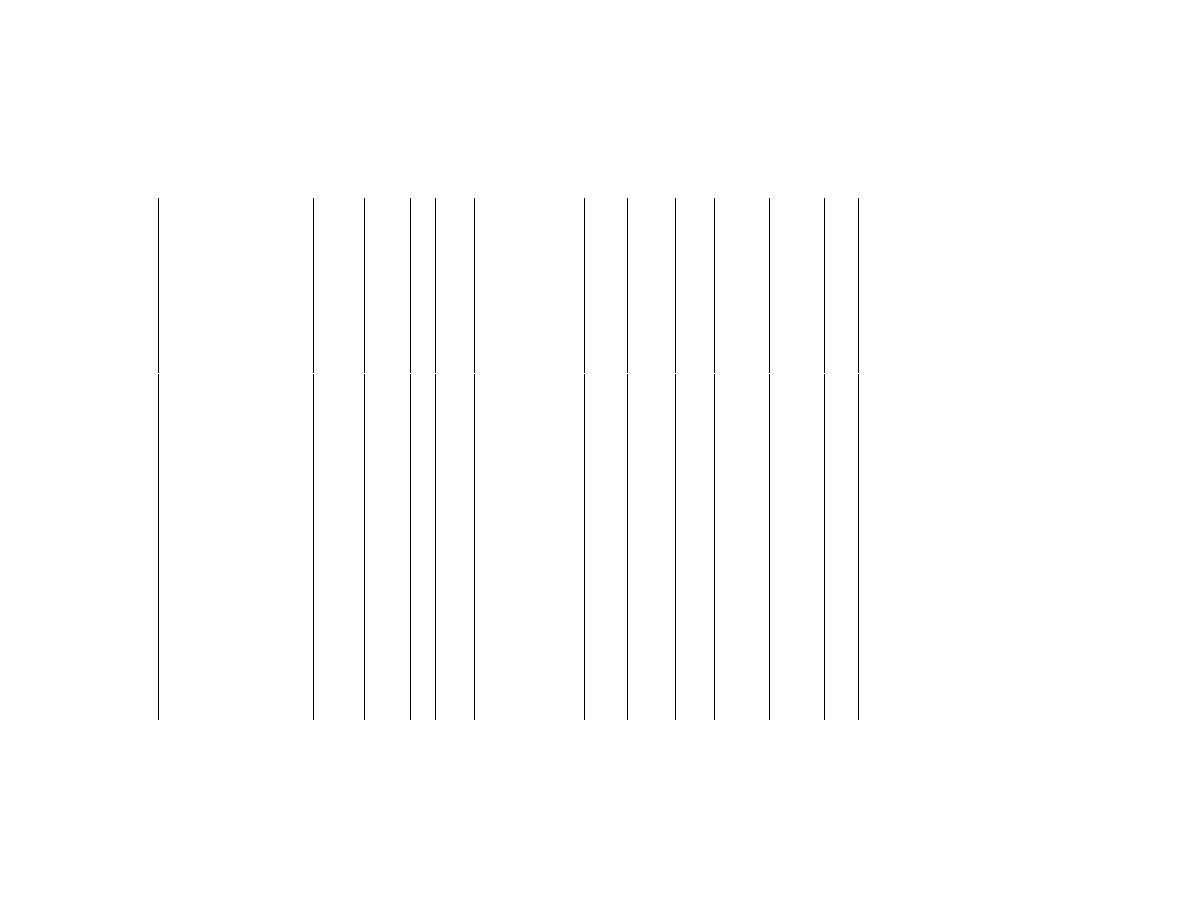
251
Pipeline and Haz. Matls. Safety Admin., DOT
§
172.101
Mercurous azide
Forbidden
Mercurous compounds, see Mer-
cury compounds, etc
Mercurous nitrate
6.1 UN1627
II
6.1
IB8, IP2, IP4, T3, TP33 153
212
242
25 kg
100 kg
A
A W
Mercury
8 UN2809
III
8, 6.1
365 164
164
240
35 kg
35 kg
B
40, 97
Mercury acetate
6.1 UN1629
II
6.1
IB8, IP2, IP4, T3, TP33 153
212
242
25 kg
100 kg
A
Mercury acetylide
Forbidden
Mercury ammonium chloride
6.1 UN1630
II
6.1
IB8, IP2, IP4, T3, TP33 153
212
242
25 kg
100 kg
A
Mercury based pesticides, liquid,
flammable, toxic, flash point less
than 23 degrees C
3 UN2778
I
3, 6.1
T14, TP2, TP13, TP27 None
201
243
Forbidden
30 L
B
40
II
3, 6.1
IB2, T11, TP2, TP13,
TP27
150
202
243
1 L
60 L
B
40
Mercury based pesticides, liquid,
toxic
6.1 UN3012
I
6.1
T14, TP2, TP13, TP27 None
201
243
1 L
30 L
B
40
II
6.1
IB2, T11, TP2, TP13,
TP27
153
202
243
5 L
60 L
B
40
III
6.1
IB3, T7, TP2, TP28 153
203
241
60 L
220 L
A
40
Mercury based pesticides, liquid,
toxic, flammable, flash point not
less than 23 degrees C
6.1 UN3011
I
6.1, 3
T14, TP2, TP13, TP27 None
201
243
1 L
30 L
B
40
II
6.1, 3
IB2, T11, TP2, TP13,
TP27
153
202
243
5 L
60 L
B
40
III
6.1, 3
IB3, T7, TP2, TP28 153
203
242
60 L
220 L
A
40
Mercury based pesticides, solid,
toxic
6.1 UN2777
I
6.1
IB7, IP1, T6, TP33 None
211
242
5 kg
50 kg
A
40
II
6.1
IB8, IP2, IP4, T3, TP33 153
212
242
25 kg
100 kg
A
40
III
6.1
IB8, IP3, T1, TP33 153
213
240
100 kg
200 kg
A
40
Mercury benzoate
6.1 UN1631
II
6.1
IB8, IP2, IP4, T3, TP33 153
212
242
25 kg
100 kg
A
Mercury bromides
6.1 UN1634
II
6.1
IB8, IP2, IP4, T3, TP33 153
212
242
25 kg
100 kg
A
G
Mercury compound, liquid, n.o.s
6.1 UN2024
I
6.1
None
201
243
1 L
30 L
B
40
II
6.1
IB2 153
202
243
5 L
60 L
B
40
III
6.1
IB3 153
203
241
60 L
220 L
B
40
G
Mercury compound, solid, n.o.s
6.1 UN2025
I
6.1
IB7, IP1, T6, TP33 None
211
242
5 kg
50 kg
A
II
6.1
IB8, IP2, IP4, T3, TP33 153
212
242
25 kg
100 kg
A
III
6.1
IB8, IP3, T1, TP33 153
213
240
100 kg
200 kg
A
A W
Mercury contained in manufactured
articles
8 UN3506
......
8, 6.1
A191 164
None
None
No limit
No limit
B
40, 97
Mercury cyanide
6.1 UN1636
II
6.1
IB8, IP2, IP4, N74, N75,
T3, TP33
153
212
242
25 kg
100 kg
A
52
Mercury fulminate, wetted with not
less than 20 percent water, or
mixture of alcohol and water, by
mass
1.1A UN0135
......
1.1A
111, 117 None
62
None
Forbidden
Forbidden
05
25
Mercury gluconate
6.1 UN1637
II
6.1
IB8, IP2, IP4, T3, TP33 153
212
242
25 kg
100 kg
A
Mercury iodide
6.1 UN1638
II
6.1
IB2, IP2, IP4, T3, TP33 153
212
242
25 kg
100 kg
A
Mercury iodide aquabasic
ammonobasic (Iodide of Millon’s
base)
Forbidden
Mercury nitride
Forbidden
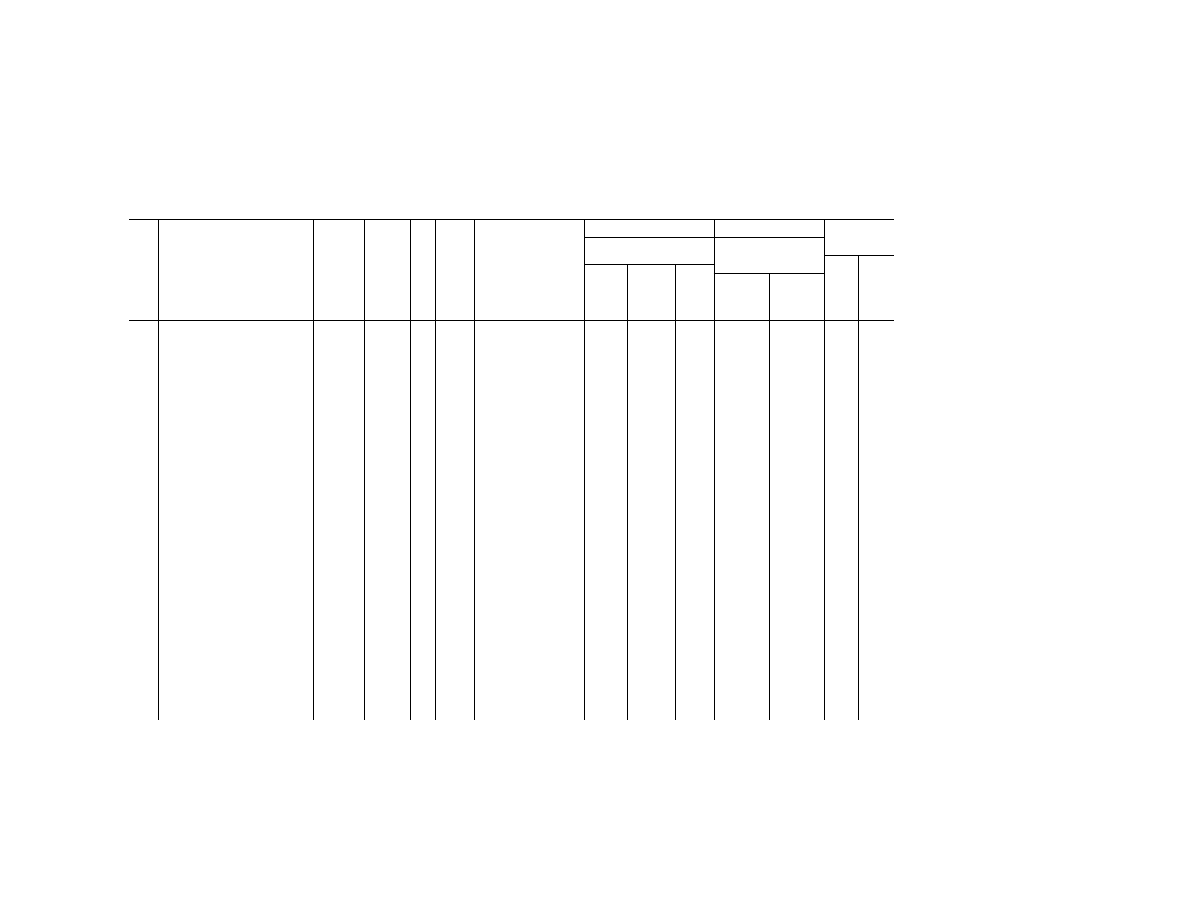
252
49 CFR Ch. I (10–1–23 Edition)
§
172.101
§ 172.101 H
AZARDOUS
M
ATERIALS
T
ABLE
—Continued
Sym-
bols
Hazardous materials descriptions
and proper shipping names
Hazard
class or
Division
Identi-
fication
Numbers
PG
Label
Codes
Special provisions
(§ 172.102)
(8)
(9)
(10)
Vessel
stowage
Packaging
(§ 173.***)
Quantity limitations
(see §§ 173.27 and
175.75)
Loca-
tion
Other
Excep-
tions
Non-bulk
Bulk
Passenger
aircraft/rail
Cargo air-
craft only
(1)
(2)
(3)
(4)
(5)
(6)
(7)
(8A)
(8B)
(8C)
(9A)
(9B)
(10A)
(10B)
Mercury nucleate
6.1 UN1639
II
6.1
IB8, IP2, IP4, T3, TP33 153
212
242
25 kg
100 kg
A
Mercury oleate
6.1 UN1640
II
6.1
IB8, IP2, IP4, T3, TP33 153
212
242
25 kg
100 kg
A
Mercury oxide
6.1 UN1641
II
6.1
IB8, IP2, IP4, T3, TP33 153
212
242
25 kg
100 kg
A
Mercury oxycyanide
Forbidden
Mercury oxycyanide, desensitized
6.1 UN1642
II
6.1
IB8, IP2, IP4, T3, TP33 153
212
242
25 kg
100 kg
A
52, 91
Mercury potassium iodide
6.1 UN1643
II
6.1
IB8, IP2, IP4, T3, TP33 153
212
242
25 kg
100 kg
A
Mercury salicylate
6.1 UN1644
II
6.1
IB8, IP2, IP4, T3, TP33 153
212
242
25 kg
100 kg
A
+
Mercury sulfates
6.1 UN1645
II
6.1
IB8, IP2, IP4, T3, TP33 153
212
242
25 kg
100 kg
A
Mercury thiocyanate
6.1 UN1646
II
6.1
IB8, IP2, IP4, T3, TP33 153
212
242
25 kg
100 kg
A
Mesityl oxide
3 UN1229
III
3
B1, IB3, T2, TP1 150
203
242
60 L
220 L
A
G
Metal carbonyls, liquid, n.o.s.
6.1 UN3281
I
6.1
5, T14, TP2, TP13,
TP27
None
201
243
1 L
30 L
B
40
II
6.1
IB2, T11, TP2, TP27 153
202
243
5 L
60 L
B
40
III
6.1
IB3, T7, TP1, TP28 153
203
241
60 L
220 L
A
40
G
Metal carbonyls, solid, n.o.s.
6.1 UN3466
I
6.1
IB7, IP1, T6, TP33 None
211
242
5 kg
50 kg
D
40
II
6.1
IB8, IP2, IP4, T3, TP33 153
212
242
25 kg
100 kg
B
40
III
6.1
IB8, IP3, T1, TP33 153
213
240
100 kg
200 kg
B
40
G
Metal catalyst, dry
4.2 UN2881
I
4.2
N34, T21, TP7, TP33,
W31
None
187
None
Forbidden
Forbidden
C
13,
147,
148
II
4.2
IB6, IP2, N34, T3, TP33,
W31
None
187
242
Forbidden
50 kg
C
13,
147,
148
III
4.2
B135, IB8, IP21, N34,
T1, TP33, W31
None
187
241
25 kg
100 kg
C
13,
147,
148
G
Metal catalyst, wetted with a visible
excess of liquid
4.2 UN1378
II
4.2
A2, A8, IB1, N34, T3,
TP33, W31, W40
None
212
None
Forbidden
50 kg
C
Metal hydrides, flammable, n.o.s
4.1 UN3182
II
4.1
A1, IB4, T3, TP33, W31,
W40
151
212
240
15 kg
50 kg
E
III
4.1
A1, IB4, T1, TP33, W31 151
213
240
25 kg
100 kg
E
G
Metal hydrides, water reactive, n.o.s
4.3 UN1409
I
4.3
A19, N34, N40, W31 None
211
242
Forbidden
15 kg
D
13, 52,
148
II
4.3
A19, IB4, N34, N40, T3,
TP33, W31, W40
151
212
242
15 kg
50 kg
D
13, 52,
148
Metal powder, self-heating, n.o.s
4.2 UN3189
II
4.2
IB6, IP2, T3, TP33, W31 None
212
241
15 kg
50 kg
C
13, 148
III
4.2
B135, IB8, IP4, T1,
TP33, W31
None
213
241
25 kg
100 kg
C
13, 148
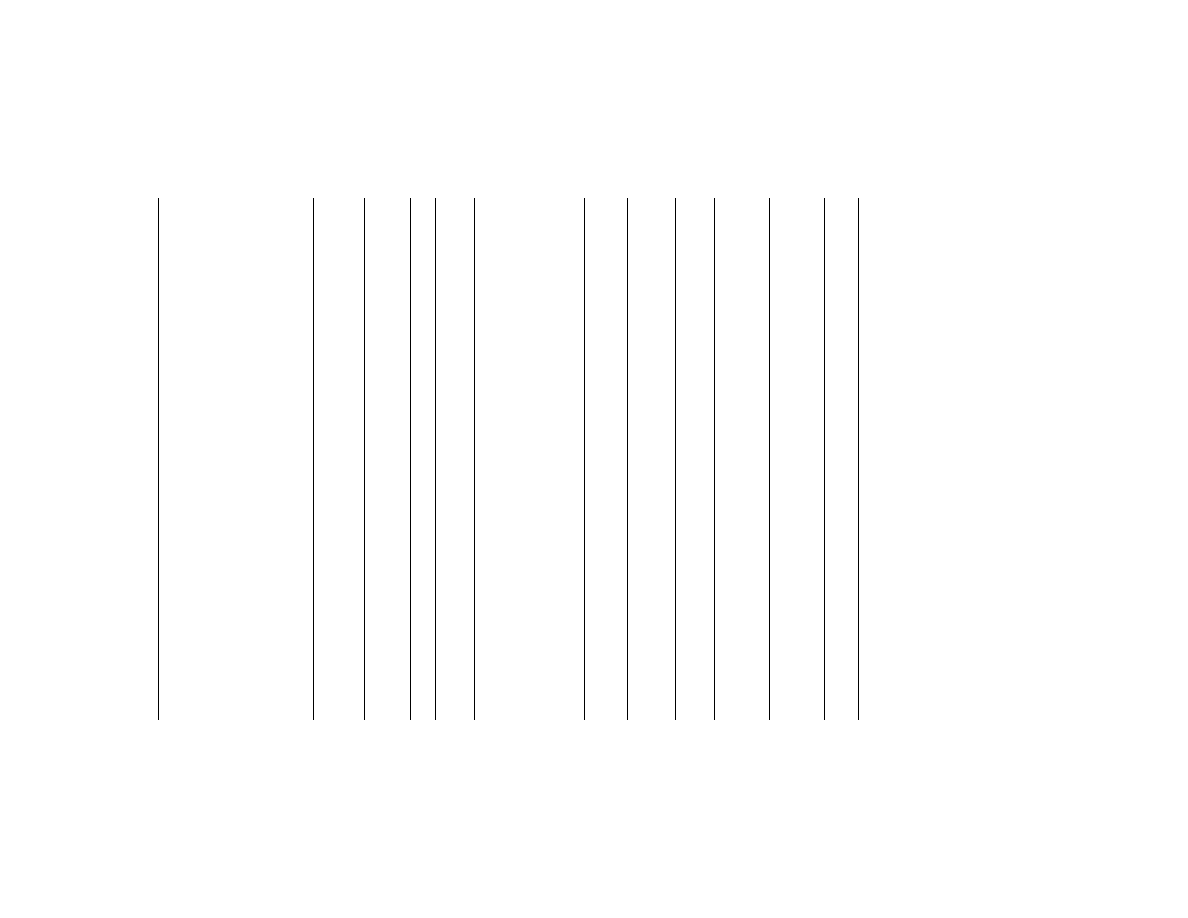
253
Pipeline and Haz. Matls. Safety Admin., DOT
§
172.101
Metal powders, flammable, n.o.s
4.1 UN3089
II
4.1
IB8, IP2, IP4, T3, TP33,
W100
151
212
240
15 kg
50 kg
B
13, 74,
147,
148
III
4.1
IB8, IP2, IP4, T1, TP33,
W100
151
213
240
25 kg
100 kg
B
13, 74,
147,
148
Metal salts of methyl nitramine (dry) Forbidden
G
Metal salts of organic compounds,
flammable, n.o.s
4.1 UN3181
II
4.1
A1, IB8, IP2, IP4, T3,
TP33, W31
151
212
240
15 kg
50 kg
B
40
III
4.1
A1, IB8, IP3, T1, TP33,
W31
151
213
240
25 kg
100 kg
B
40
III
4.1
A1, IB8, IP3, T1, TP33 151
213
240
25 kg
100 kg
B
40
Metaldehyde
4.1 UN1332
III
4.1
A1, IB8, IP3, T1, TP33 151
213
240
25 kg
100 kg
A
G
Metallic substance, water-reactive,
n.o.s
4.3 UN3208
I
4.3
A7, IB4, W31 None
211
242
Forbidden
15 kg
E
13, 40,
148
II
4.3
A7, IB7, IP2, IP21, T3,
TP33, W31, W40
151
212
242
15 kg
50 kg
E
13, 40,
148
III
4.3
A7, IB8, IP21, T1, TP33,
W31
151
213
241
25 kg
100 kg
E
13, 40,
148
G
Metallic substance, water-reactive,
self-heating, n.o.s
4.3 UN3209
I
4.3,
4.2
A7, W31 None
211
242
Forbidden
15 kg
E
13, 40,
148
II
4.3,
4.2
A7, IB5, IP2, T3, TP33,
W31, W40
None
212
242
15 kg
50 kg
E
13, 40,
148
III
4.3,
4.2
A7, IB8, IP4, T1, TP33,
W31
None
213
242
25 kg
100 kg
E
13, 40,
148
Methacrylaldehyde, stabilized
3 UN2396
II
3, 6.1
45, 387, IB2, T7, TP1,
TP13
150
202
243
1 L
60 L
D
25, 40
Methacrylic acid, stabilized
8 UN2531
II
8
41, 387, IB2, T7, TP1,
TP18, TP30
154
202
242
1 L
30 L
C
25, 40,
53, 58
+
Methacrylonitrile, stabilized
6.1 UN3079
I
6.1, 3
2, 387, B9, B14, B32,
T20, TP2, TP13, TP38,
TP45
None
227
244
Forbidden
Forbidden
D
12, 25,
40
Methallyl alcohol
3 UN2614
III
3
B1, IB3, T2, TP1 150
203
242
60 L
220 L
A
Methane and hydrogen, mixtures,
see Hydrogen and methane, mix-
tures, etc
Methane, compressed or Natural
gas, compressed (with high meth-
ane content)
2.1 UN1971
2.1
306
302
302
Forbidden
150 kg
E
40
Methane, refrigerated liquid (cryo-
genic liquid) or Natural gas, re-
frigerated liquid (cryogenic liquid),
with high methane content)
2.1 UN1972
......
2.1
T75, TP5, 440 None
None
318,
319
Forbidden
Forbidden
D
40
Methanesulfonyl chloride
6.1 UN3246
I
6.1, 8
2, B9, B14, B32, T20,
TP2, TP13, TP38, TP45
None
227
244
Forbidden
Forbidden
D
40, 53,
58
+ I
Methanol
3 UN1230
II
3, 6.1
IB2, T7, TP2 150
202
242
1 L
60 L
B
40
D
Methanol
3 UN1230
II
3
IB2, T7, TP2 150
202
242
1 L
60 L
B
40
Methazoic acid
Forbidden
4-Methoxy-4-methylpentan-2-one
3 UN2293
III
3
B1, IB3, T2, TP1 150
203
242
60 L
220 L
A
1-Methoxy-2-propanol
3 UN3092
III
3
B1, IB3, T2, TP1 150
203
242
60 L
220 L
A
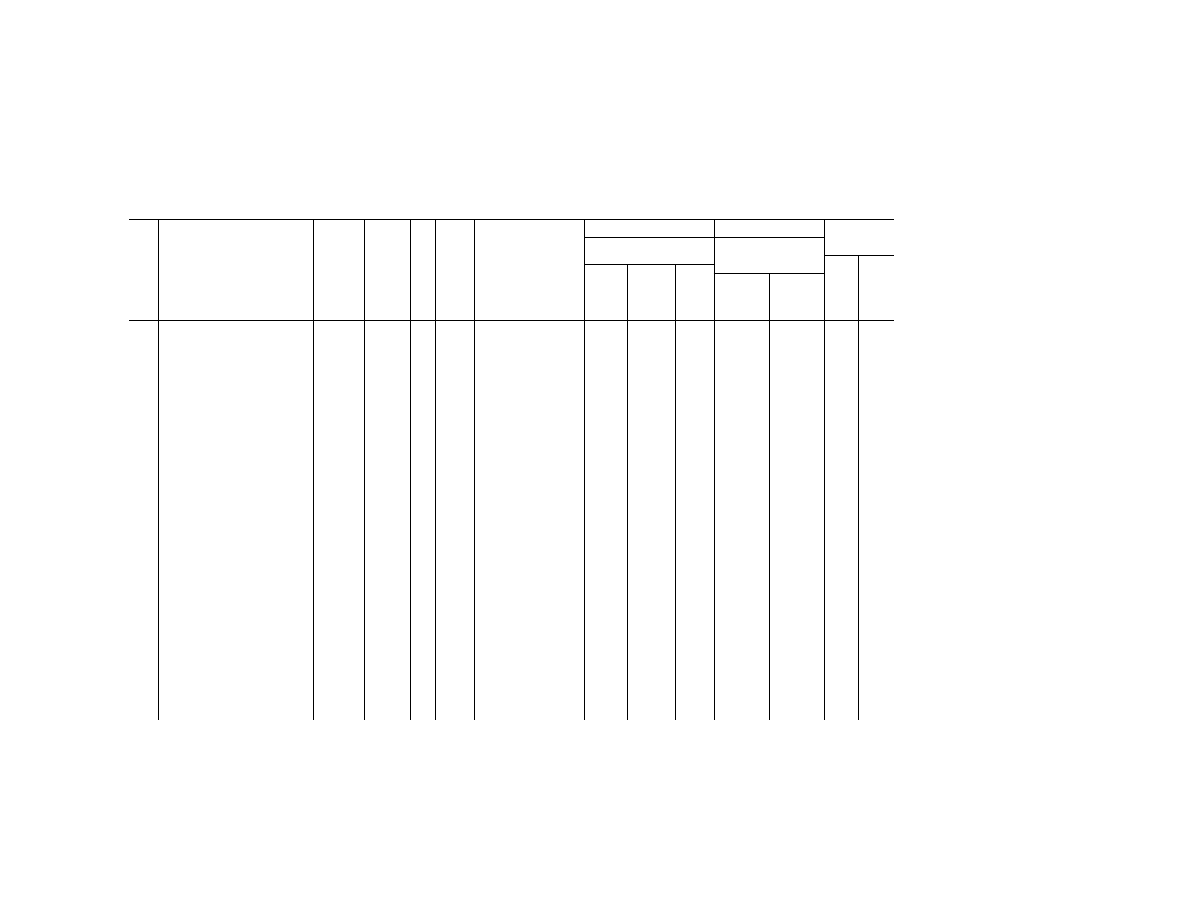
254
49 CFR Ch. I (10–1–23 Edition)
§
172.101
§ 172.101 H
AZARDOUS
M
ATERIALS
T
ABLE
—Continued
Sym-
bols
Hazardous materials descriptions
and proper shipping names
Hazard
class or
Division
Identi-
fication
Numbers
PG
Label
Codes
Special provisions
(§ 172.102)
(8)
(9)
(10)
Vessel
stowage
Packaging
(§ 173.***)
Quantity limitations
(see §§ 173.27 and
175.75)
Loca-
tion
Other
Excep-
tions
Non-bulk
Bulk
Passenger
aircraft/rail
Cargo air-
craft only
(1)
(2)
(3)
(4)
(5)
(6)
(7)
(8A)
(8B)
(8C)
(9A)
(9B)
(10A)
(10B)
+
Methoxymethyl isocyanate
6.1 UN2605
I
6.1, 3
1, B9, B14, B30, T20,
TP2, TP13, TP38, TP44
None
226
244
Forbidden
Forbidden
D
40
Methyl acetate
3 UN1231
II
3
IB2, T4, TP1 150
202
242
5 L
60 L
B
Methyl acetylene and propadiene
mixtures, stabilized
2.1 UN1060
......
2.1
387, N88, T50 306
304
314,
315
Forbidden
150 kg
B
25, 40
Methyl acrylate, stabilized
3 UN1919
II
3
387, IB2, T4, TP1, TP13 150
202
242
5 L
60 L
C
25
Methyl alcohol, see Methanol
Methyl allyl chloride
3 UN2554
II
3
IB2, T4, TP1, TP13 150
202
242
5 L
60 L
E
Methyl amyl ketone, see Amyl
methyl ketone
Methyl bromide
2.3 UN1062
2.3
3, B14, N86, T50 None
193
314,
315
Forbidden
Forbidden
D
40
Methyl bromide and chloropicrin
mixtures with more than 2 per-
cent chloropicrin, see Chloropicrin
and methyl bromide mixtures
Methyl bromide and chloropicrin
mixtures with not more than 2
percent chloropicrin, see Methyl
bromide
Methyl bromide and ethylene
dibromide mixtures, liquid
6.1 UN1647
I
6.1
2, B9, B14, B32, N65,
T20, TP2, TP13, TP38,
TP44
None
227
244
Forbidden
Forbidden
D
40
Methyl bromoacetate
6.1 UN2643
II
6.1
IB2, T7, TP2 153
202
243
5 L
60 L
D
40
2-Methylbutanal
3 UN3371
II
3
IB2, T4, TP1 150
202
242
5 L
60 L
B
2-Methyl-1-butene
3 UN2459
I
3
T11, TP2 None
201
243
1 L
30 L
E
2-Methyl-2-butene
3 UN2460
II
3
IB2, IP8, T7, TP1 150
202
242
5 L
60 L
E
3-Methyl-1-butene
3 UN2561
I
3
T11, TP2 None
201
243
1 L
30 L
E
Methyl tert-butyl ether
3 UN2398
II
3
IB2, T7, TP1 150
202
242
5 L
60 L
E
Methyl butyrate
3 UN1237
II
3
IB2, T4, TP1 150
202
242
5 L
60 L
B
Methyl chloride or Refrigerant gas
R 40
2.1 UN1063
2.1
N86, T50 306
304
314,
315
5 kg
100 kg
D
40
Methyl chloride and chloropicrin
mixtures, see Chloropicrin and
methyl chloride mixtures
Methyl chloride and methylene chlo-
ride mixtures
2.1 UN1912
2.1
N86, T50 306
304
314,
315
Forbidden
150 kg
D
40
Methyl chloroacetate
6.1 UN2295
I
6.1, 3
T14, TP2, TP13 None
201
243
1 L
30 L
D
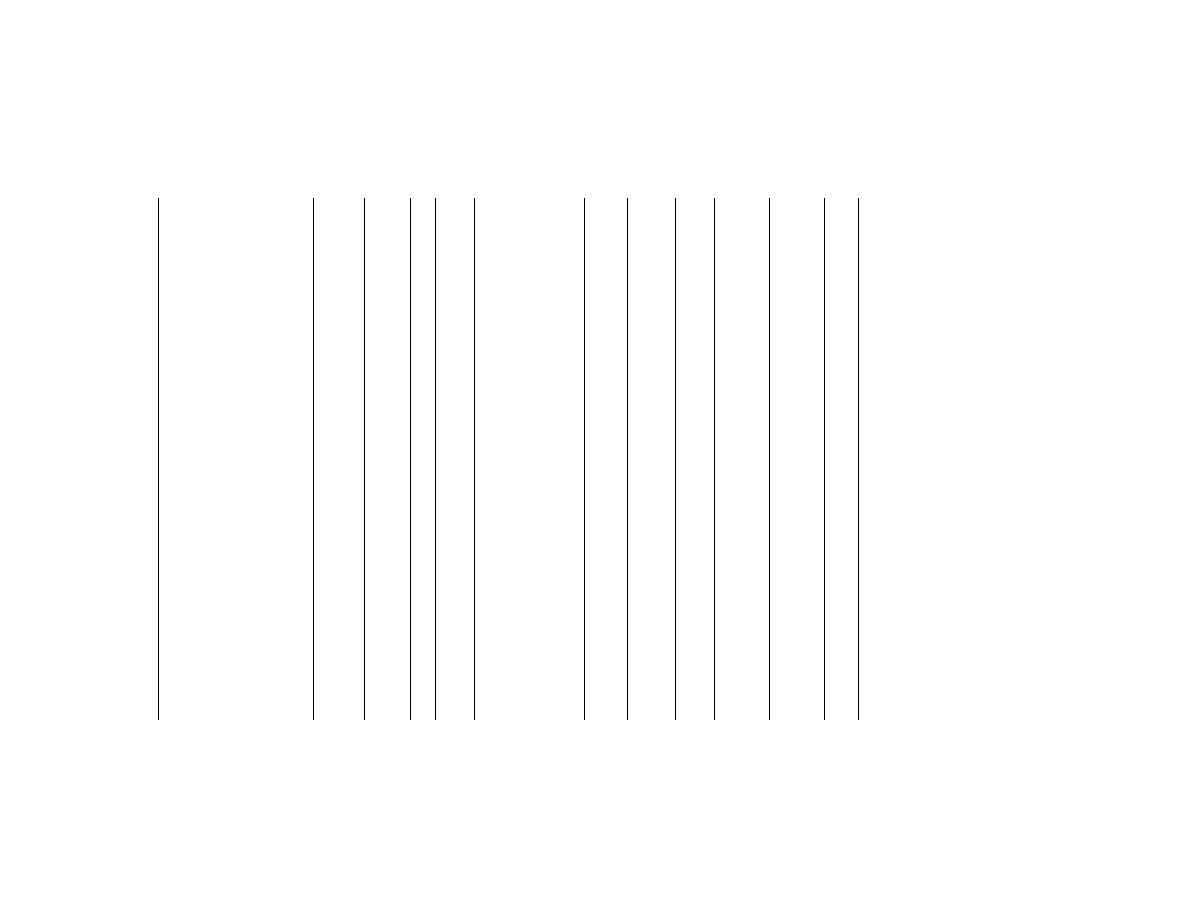
255
Pipeline and Haz. Matls. Safety Admin., DOT
§
172.101
Methyl chlorocarbonate, see Methyl
chloroformate
Methyl chloroform, see 1,1,1-Tri-
chloroethane
Methyl chloroformate
6.1 UN1238
I
6.1, 3,
8
1, B9, B14, B30, N34,
T22, TP2, TP13, TP38,
TP44
None
226
244
Forbidden
Forbidden
D
21, 40,
53, 58,
100
Methyl chloromethyl ether
6.1 UN1239
I
6.1, 3
1, B9, B14, B30, T22,
TP2, TP13, TP38, TP44
None
226
244
Forbidden
Forbidden
D
40
Methyl 2-chloropropionate
3 UN2933
III
3
B1, IB3, T2, TP1 150
203
242
60 L
220 L
A
Methyl dichloroacetate
6.1 UN2299
III
6.1
IB3, T4, TP1 153
203
241
60 L
220 L
A
Methyl ethyl ether, see Ethyl methyl
ether
Methyl ethyl ketone, see Ethyl
methyl ketone
Methyl ethyl ketone peroxide, in so-
lution with more than 9 percent
by mass active oxygen
Forbidden
2-Methyl-5-ethylpyridine
6.1 UN2300
III
6.1
IB3, T4, TP1 153
203
241
60 L
220 L
A
Methyl fluoride, or Refrigerant gas
R 41
2.1 UN2454
2.1
306
304
314,
315
Forbidden
150 kg
E
40
Methyl formate
3 UN1243
I
3
T11, TP2 150
201
243
1 L
30 L
E
2-Methyl-2-heptanethiol
6.1 UN3023
I
6.1, 3
2, B9, B14, B32, T20,
TP2, TP13, TP38, TP45
None
227
244
Forbidden
Forbidden
D
40, 102
Methyl iodide
6.1 UN2644
I
6.1
2, B9, B14, B32, T20,
TP2, TP13, TP38, TP45
None
227
244
Forbidden
Forbidden
D
12, 25,
40
Methyl isobutyl carbinol
3 UN2053
III
3
B1, IB3, T2, TP1 150
203
242
60 L
220 L
A
Methyl isobutyl ketone
3 UN1245
II
3
IB2, T4, TP1 150
202
242
5 L
60 L
B
Methyl isobutyl ketone peroxide, in
solution with more than 9 percent
by mass active oxygen
Forbidden
Methyl isocyanate
6.1 UN2480
I
6.1, 3
1, B9, B14, B30, T22,
TP2, TP13, TP38, TP44
None
226
244
Forbidden
Forbidden
D
40, 52
Methyl isopropenyl ketone, sta-
bilized
3 UN1246
II
3
387, IB2, T4, TP1 150
202
242
5 L
60 L
C
25
Methyl isothiocyanate
6.1 UN2477
I
6.1, 3
2, B9, B14, B32, T20,
TP2, TP13, TP38, TP45
None
227
244
Forbidden
Forbidden
D
40
Methyl isovalerate
3 UN2400
II
3
IB2, T4, TP1 150
202
242
5 L
60 L
B
Methyl magnesium bromide, in ethyl
ether
4.3 UN1928
I
4.3, 3
........................................
None
201
243
Forbidden
1 L
D
13, 148
Methyl mercaptan
2.3 UN1064
2.3,
2.1
3, B7, B9, B14, N89,
T50
None
304
314,
315
Forbidden
Forbidden
D
40
Methyl mercaptopropionaldehyde,
see 4-Thiapentanal
Methyl methacrylate monomer, sta-
bilized
3 UN1247
II
3
387, IB2, T4, TP1 150
202
242
5 L
60 L
C
25, 40
Methyl nitramine (dry)
Forbidden
Methyl nitrate
Forbidden
Methyl nitrite
Forbidden
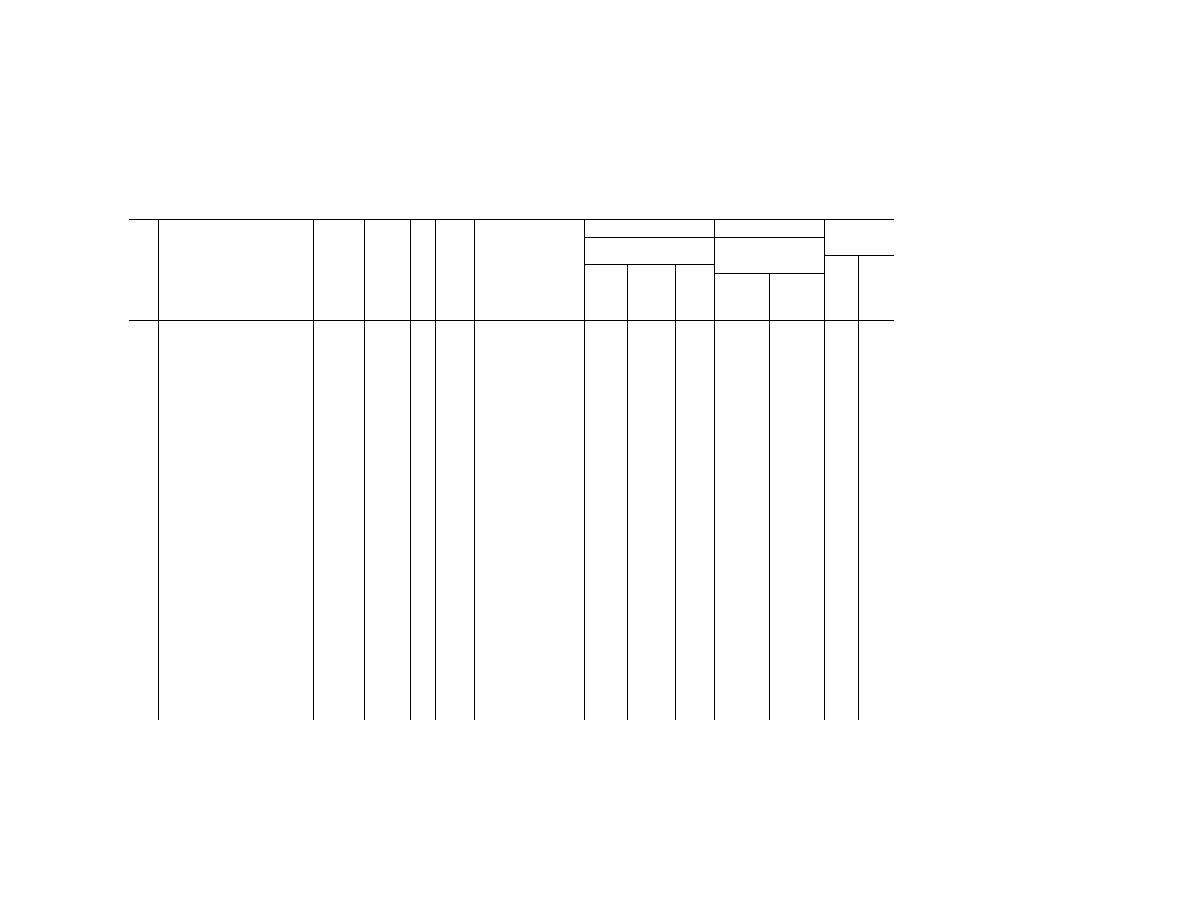
256
49 CFR Ch. I (10–1–23 Edition)
§
172.101
§ 172.101 H
AZARDOUS
M
ATERIALS
T
ABLE
—Continued
Sym-
bols
Hazardous materials descriptions
and proper shipping names
Hazard
class or
Division
Identi-
fication
Numbers
PG
Label
Codes
Special provisions
(§ 172.102)
(8)
(9)
(10)
Vessel
stowage
Packaging
(§ 173.***)
Quantity limitations
(see §§ 173.27 and
175.75)
Loca-
tion
Other
Excep-
tions
Non-bulk
Bulk
Passenger
aircraft/rail
Cargo air-
craft only
(1)
(2)
(3)
(4)
(5)
(6)
(7)
(8A)
(8B)
(8C)
(9A)
(9B)
(10A)
(10B)
Methyl norbornene dicarboxylic an-
hydride, see Corrosive liquids,
n.o.s.
Methyl orthosilicate
6.1 UN2606
I
6.1, 3
2, B9, B14, B32, T20,
TP2, TP13, TP38, TP45
None
227
244
Forbidden
Forbidden
D
40
D
Methyl phosphonic dichloride
6.1 NA9206
I
6.1, 8
2, B9, B14, B32, N34,
N43, T20, TP4, TP13,
TP38, TP45
None
227
244
Forbidden
Forbidden
C
Methyl phosphonothioic dichloride,
anhydrous, see Corrosive liquid,
n.o.s.
D
Methyl phosphonous dichloride,
pyrophoric liquid
6.1 NA2845
I
6.1,
4.2
2, B9, B14, B16, B32,
T20, TP4, TP12, TP13,
TP38, TP45
None
227
244
Forbidden
Forbidden
D
18
Methyl picric acid (heavy metal
salts of)
Forbidden
Methyl propionate
3 UN1248
II
3
IB2, T4, TP1 150
202
242
5 L
60 L
B
Methyl propyl ether
3 UN2612
II
3
IB2, IP8, T7, TP2 150
202
242
5 L
60 L
E
40
Methyl propyl ketone
3 UN1249
II
3
IB2, T4, TP1 150
202
242
5 L
60 L
B
Methyl sulfate, see Dimethyl sulfate
Methyl sulfide, see Dimethyl sulfide
Methyl trichloroacetate
6.1 UN2533
III
6.1
IB3, T4, TP1 153
203
241
60 L
220 L
A
Methyl trimethylol methane trinitrate
Forbidden
Methyl vinyl ketone, stabilized
6.1 UN1251
I
6.1, 3,
8
1, 387, B9, B14, B30,
T22, TP2, TP13, TP38,
TP44
None
226
244
Forbidden
Forbidden
B
21, 25,
40, 100
Methylal
3 UN1234
II
3
IB2, IP8, T7, TP2 150
202
242
5 L
60 L
E
Methylamine, anhydrous
2.1 UN1061
......
2.1
N87, T50 306
304
314,
315
Forbidden
150 kg
B
40, 52
Methylamine, aqueous solution
3 UN1235
II
3, 8
B1, IB2, T7, TP1 150
202
243
1 L
5 L
E
52,
135.
Methylamine dinitramine and dry
salts thereof
Forbidden
Methylamine nitroform
Forbidden
Methylamine perchlorate (dry)
Forbidden
Methylamyl acetate
3 UN1233
III
3
B1, IB3, T2, TP1 150
203
242
60 L
220 L
A
N-Methylaniline
6.1 UN2294
III
6.1
IB3, T4, TP2 153
203
241
60 L
220 L
A
alpha-Methylbenzyl alcohol, liquid
6.1 UN2937
III
6.1
IB3, T4, TP1 153
203
241
60 L
220 L
A
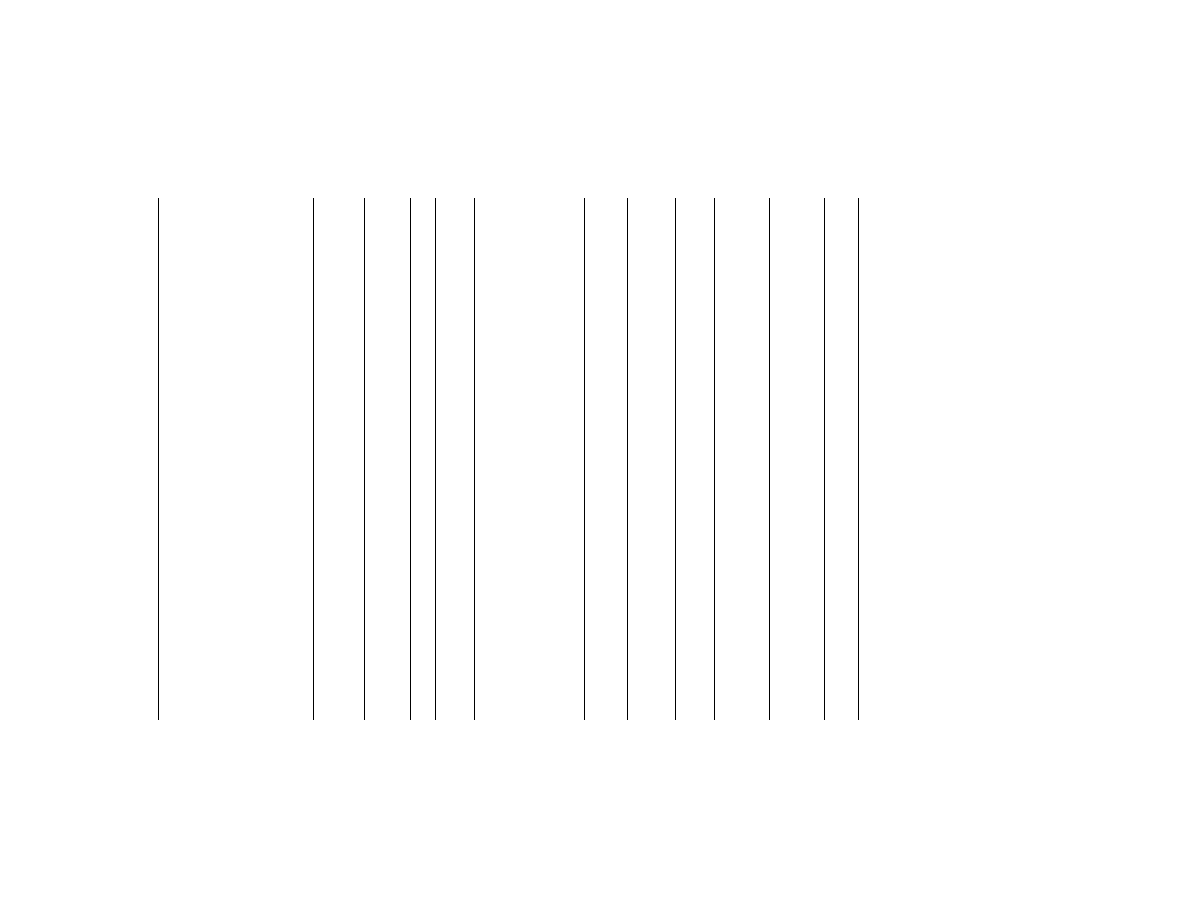
257
Pipeline and Haz. Matls. Safety Admin., DOT
§
172.101
alpha-Methylbenzyl alcohol, solid
6.1 UN3438
III
6.1
IB8, IP3, T1, TP33 153
213
240
100 kg
200 kg
A
3-Methylbutan-2-one
3 UN2397
II
3
IB2, T4, TP1 150
202
242
5 L
60 L
B
N-Methylbutylamine
3 UN2945
II
3, 8
IB2, T7, TP1 150
202
243
1 L
5 L
B
40, 52
Methylchlorosilane
2.3 UN2534
2.3,
2.1,
8
2, B9, B14, N34 None
226
314,
315
Forbidden
Forbidden
D
17, 40
Methylcyclohexane
3 UN2296
II
3
B1, IB2, T4, TP2 150
202
242
5 L
60 L
B
Methylcyclohexanols, flammable
3 UN2617
III
3
B1, IB3, T2, TP1 150
203
242
60 L
220 L
A
Methylcyclohexanone
3 UN2297
III
3
B1, IB3, T2, TP1 150
203
242
60 L
220 L
A
Methylcyclopentane
3 UN2298
II
3
IB2, T4, TP1 150
202
242
5 L
60 L
B
D
Methyldichloroarsine
6.1 NA1556
I
6.1
2, T20, TP4, TP13,
TP38, TP45
None
192
None
Forbidden
Forbidden
D
40
Methyldichlorosilane
4.3 UN1242
I
4.3, 8,
3
A2, A7, B6, B77, N34,
T14, TP2, TP7, TP13,
W31
None
201
243
Forbidden
1 L
D
21, 40,
49, 53,
58, 100
Methylene chloride, see
Dichloromethane
Methylene glycol dinitrate
Forbidden
2-Methylfuran
3 UN2301
II
3
IB2, T4, TP1 150
202
242
5 L
60 L
E
a-Methylglucoside tetranitrate
Forbidden
a-Methylglycerol trinitrate
Forbidden
5-Methylhexan-2-one
3 UN2302
III
3
B1, IB3, T2, TP1 150
203
242
60 L
220 L
A
Methylhydrazine
6.1 UN1244
I
6.1, 3,
8
1, B7, B9, B14, B30,
B77, N34, T22, TP2,
TP13, TP38, TP44
None
226
244
Forbidden
Forbidden
D
21, 40,
49, 52
and
100
4-Methylmorpholine or n-
methylmorpholine
3 UN2535
II
3, 8
B6, IB2, T7, TP1 150
202
243
1 L
5 L
B
40
Methylpentadienes
3 UN2461
II
3
IB2, T4, TP1 150
202
242
5 L
60 L
E
2-Methylpentan-2-ol
3 UN2560
III
3
B1, IB3, T2, TP1 150
203
242
60 L
220 L
A
Methylpentanes, see Hexanes
Methylphenyldichlorosilane
8 UN2437
II
8
T10, TP2, TP7, TP13 None
206
242
Forbidden
30 L
C
40, 53,
58
1-Methylpiperidine
3 UN2399
II
3, 8
IB2, T7, TP1 150
202
243
1 L
5 L
B
52.
Methyltetrahydrofuran
3 UN2536
II
3
IB2, T4, TP1 150
202
242
5 L
60 L
B
Methyltrichlorosilane
3 UN1250
II
3, 8
A7, B6, B77, N34, T10,
TP2, TP7, TP13
None
206
243
Forbidden
5 L
B
40, 53,
58
alpha-Methylvaleraldehyde
3 UN2367
II
3
B1, IB2, T4, TP1 150
202
242
5 L
60 L
B
Mine rescue equipment containing
carbon dioxide, see Carbon diox-
ide
Mines with bursting charge
1.1F UN0136
......
1.1F
........................................
62
None
Forbidden
Forbidden
03
25
Mines with bursting charge
1.1D UN0137
......
1.1D
........................................
62
62
Forbidden
Forbidden
03
25
Mines with bursting charge
1.2D UN0138
......
1.2D
........................................
62
62
Forbidden
Forbidden
03
25
Mines with bursting charge
1.2F UN0294
......
1.2F
........................................
62
None
Forbidden
Forbidden
03
25
Mixed acid, see Nitrating acid, mix-
tures etc
Mobility aids, see Battery powered
equipment or Battery powered
vehicle’
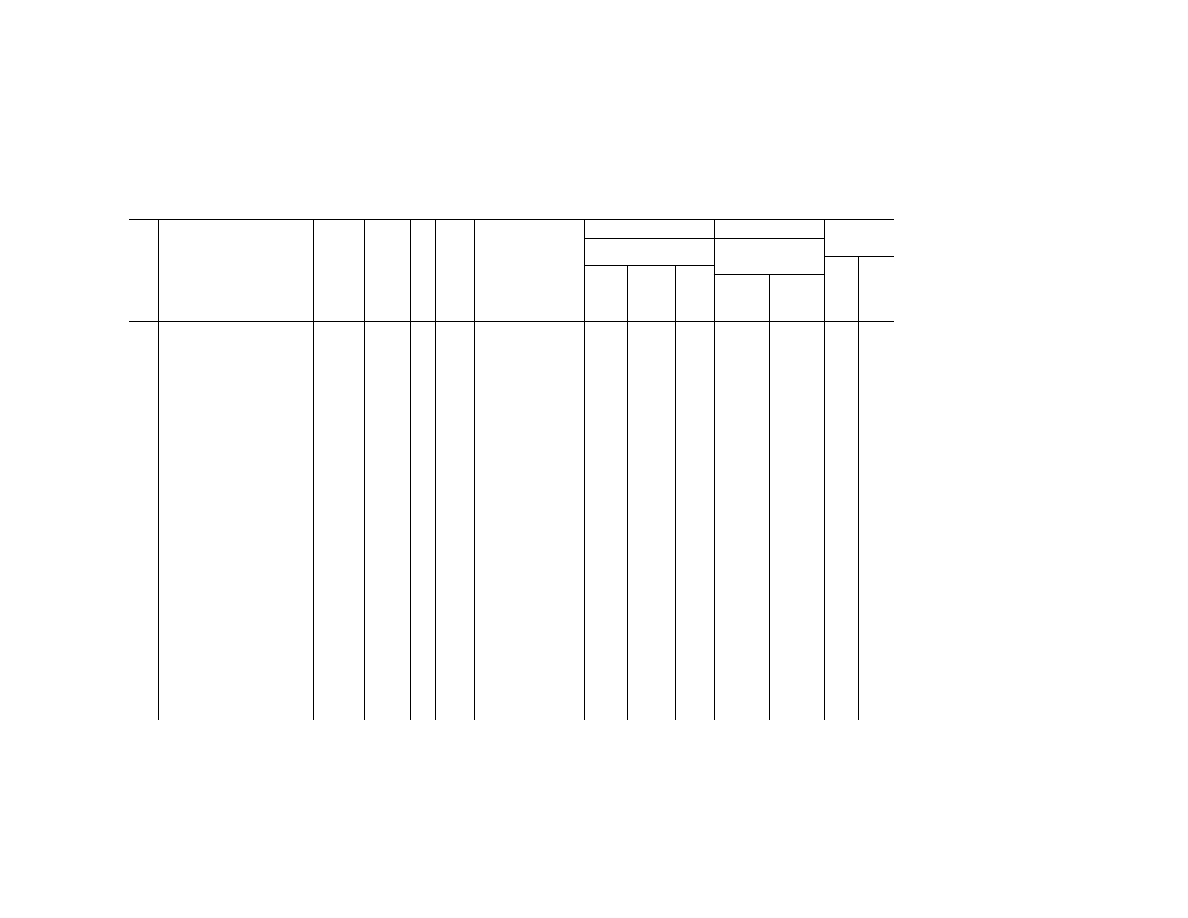
258
49 CFR Ch. I (10–1–23 Edition)
§
172.101
§ 172.101 H
AZARDOUS
M
ATERIALS
T
ABLE
—Continued
Sym-
bols
Hazardous materials descriptions
and proper shipping names
Hazard
class or
Division
Identi-
fication
Numbers
PG
Label
Codes
Special provisions
(§ 172.102)
(8)
(9)
(10)
Vessel
stowage
Packaging
(§ 173.***)
Quantity limitations
(see §§ 173.27 and
175.75)
Loca-
tion
Other
Excep-
tions
Non-bulk
Bulk
Passenger
aircraft/rail
Cargo air-
craft only
(1)
(2)
(3)
(4)
(5)
(6)
(7)
(8A)
(8B)
(8C)
(9A)
(9B)
(10A)
(10B)
D
Model rocket motor
1.4C NA0276
......
1.4C
51 None
62
None
Forbidden
75 kg
02
25
D
Model rocket motor
1.4S NA0323
......
1.4S
51 None
62
None
25 kg
100 kg
01
25
Molybdenum pentachloride
8 UN2508
III
8
IB8, IP3, T1, TP33 154
213
240
25 kg
100 kg
C
40, 53,
58
Monochloroacetone (unstabilized)
Forbidden
Monochloroethylene, see Vinyl chlo-
ride, stabilized
Monoethanolamine, see Ethanol-
amine, solutions
Monoethylamine, see Ethylamine
Morpholine
8 UN2054
I
8, 3
T10, TP2 None
201
243
0.5 L
2.5 L
A
Morpholine, aqueous, mixture, see
Corrosive liquids, n.o.s.
Motor fuel anti-knock compounds
see Motor fuel anti-knock mix-
tures
+
Motor fuel anti-knock mixture, flam-
mable
6.1 UN3483
I
6.1, 3
14, T14, TP2, TP13 None
201
244
Forbidden
Forbidden
D
25, 40
+
Motor fuel anti-knock mixtures
6.1 UN1649
I
6.1
14, B9, B90, T14, TP2,
TP13
None
201
244
Forbidden
30 L
D
25, 40
Motor spirit, see Gasoline
Muriatic acid, see Hydrochloric acid
Musk xylene, see 5-tert-Butyl-2,4,6-
trinitro-m-xylene
Naphtha see Petroleum distillates
n.o.s.
Naphthalene, crude or Naph-
thalene, refined
4.1 UN1334
III
4.1
A1, B120,IB8, IP3, T1,
TP33
151
213
240
25 kg
100 kg
A
Naphthalene diozonide
Forbidden
beta-Naphthylamine, solid
6.1 UN1650
II
6.1
IB8, IP2, IP4, T3, TP33 153
212
242
25 kg
100 kg
A
beta-Naphthylamine solution
6.1 UN3411
II
6.1
IB2, T7, TP2 153
202
243
5 L
60 L
A
III
6.1
IB2, T7, TP2 153
203
241
60 L
220 L
A
alpha-Naphthylamine
6.1 UN2077
III
6.1
IB8, IP3, T1, TP33 153
213
240
100 kg
200 kg
A
Naphthalene, molten
4.1 UN2304
III
4.1
IB1, T1, TP3 151
213
241
Forbidden
Forbidden
C
Naphthylamineperchlorate
Forbidden
Naphthylthiourea
6.1 UN1651
II
6.1
IB8, IP2, IP4, T3, TP33 153
212
242
25 kg
100 kg
A
Naphthylurea
6.1 UN1652
II
6.1
IB8, IP2, IP4, T3, TP33 153
212
242
25 kg
100 kg
A
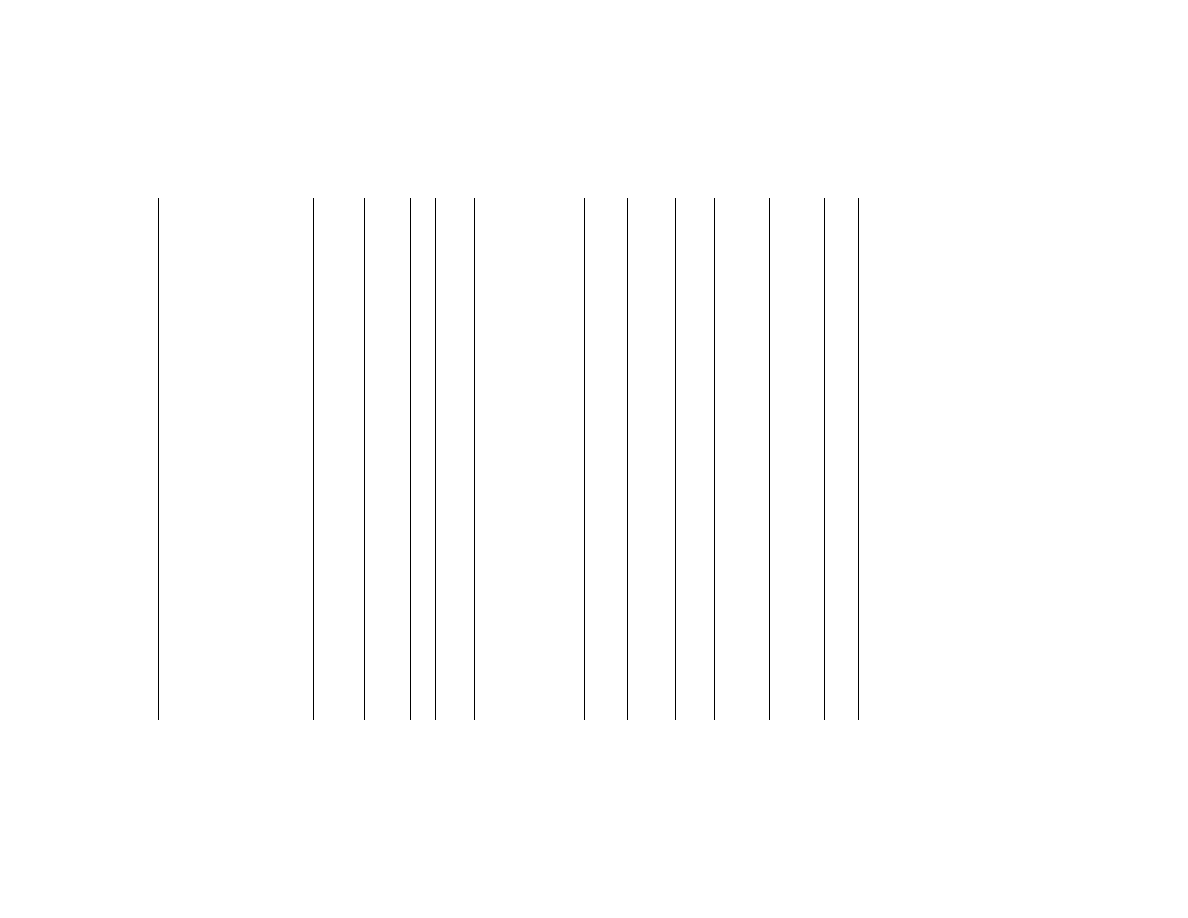
259
Pipeline and Haz. Matls. Safety Admin., DOT
§
172.101
Natural gases (with high methane
content), see Methane, etc. (UN
1971, UN 1972)
Neohexane, see Hexanes
Neon, compressed
2.2 UN1065
......
2.2
........................................
306,
307
302
None
75 kg
150 kg
A
Neon, refrigerated liquid (cryogenic
liquid)
2.2 UN1913
2.2
T75, TP5 320
316
None
50 kg
500 kg
D
New explosive or explosive device,
see §§ 173.51 and 173.56
Nickel carbonyl
6.1 UN1259
I
6.1, 3
1 None
198
None
Forbidden
Forbidden
D
40, 78
Nickel cyanide
6.1 UN1653
II
6.1
IB8, IP2, IP4, N74, N75,
T3, TP33
153
212
242
25 kg
100 kg
A
52
Nickel nitrate
5.1 UN2725
III
5.1
A1, IB8, IP3, T1, TP33 152
213
240
25 kg
100 kg
A
Nickel nitrite
5.1 UN2726
III
5.1
A1, IB8, IP3, T1, TP33 152
213
240
25 kg
100 kg
A
56, 58
Nickel picrate
Forbidden
Nicotine
6.1 UN1654
II
6.1
IB2 153
202
243
5 L
60 L
A
G
Nicotine compounds, liquid, n.o.s.
or Nicotine preparations, liquid,
n.o.s
6.1 UN3144
I
6.1
A4 None
201
243
1 L
30 L
B
40
II
6.1
IB2, T11, TP2, TP27 153
202
243
5 L
60 L
B
40
III
6.1
IB3, T7, TP1, TP28 153
203
241
60 L
220 L
B
40
G
Nicotine compounds, solid, n.o.s. or
Nicotine preparations, solid, n.o.s.
6.1 UN1655
I
6.1
IB7, IP1, T6, TP33 None
211
242
5 kg
50 kg
B
II
6.1
IB8, IP2, IP4, T3, TP33 153
212
242
25 kg
100 kg
A
III
6.1
IB8, IP3, T1, TP33 153
213
240
100 kg
200 kg
A
Nicotine hydrochloride liquid or so-
lution
6.1 UN1656
II
6.1
IB2 153
202
243
5 L
60 L
A
III
6.1
IB3 153
203
241
60 L
220 L
A
Nicotine hydrochloride, solid
6.1 UN3444
II
6.1
IB8, IP2, IP4, T3, TP33 153
212
242
25 kg
100 kg
A
Nicotine salicylate
6.1 UN1657
II
6.1
IB8, IP2, IP4, T3, TP33 153
212
242
25 kg
100 kg
A
Nicotine sulfate solution
6.1 UN1658
II
6.1
IB2, T7, TP2 153
202
243
5 L
60 L
A
III
6.1
IB3, T7, TP2 153
203
241
60 L
220 L
A
Nicotine sulphate, solid
6.1 UN3445
II
6.1
IB8, IP2, IP4, T3, TP33 153
212
242
25 kg
100 kg
A
Nicotine tartrate
6.1 UN1659
II
6.1
IB8, IP2, IP4, T3, TP33 153
212
242
25 kg
100 kg
A
Nitrated paper (unstable)
Forbidden
Nitrates, inorganic, aqueous solu-
tion, n.o.s.
5.1 UN3218
II
5.1
58, IB2, T4, TP1 152
202
242
1 L
5 L
B
56, 58,
133
III
5.1
58, IB2, T4, TP1 152
203
241
2.5 L
30 L
B
56, 58,
133
Nitrates, inorganic, n.o.s.
5.1 UN1477
II
5.1
IB8, IP2, IP4, T3, TP33 152
212
240
5 kg
25 kg
A
56, 58
III
5.1
IB8, IP3, T1, TP33 152
213
240
25 kg
100 kg
A
56, 58
Nitrates of diazonium compounds
Forbidden
Nitrating acid mixtures, spent with
more than 50 percent nitric acid
8 UN1826
I
8, 5.1
A7, T10, TP2, TP13 None
158
243
Forbidden
2.5 L
D
40, 53,
58, 66
Nitrating acid mixtures spent with
not more than 50 percent nitric
acid
8 UN1826
II
8
A7, B2, IB2, T8, TP2 154
158
242
Forbidden
30 L
D
40, 53,
58
Nitrating acid mixtures with more
than 50 percent nitric acid
8 UN1796
I
8, 5.1
A7, T10, TP2, TP13 None
158
243
Forbidden
2.5 L
D
40, 53,
58, 66
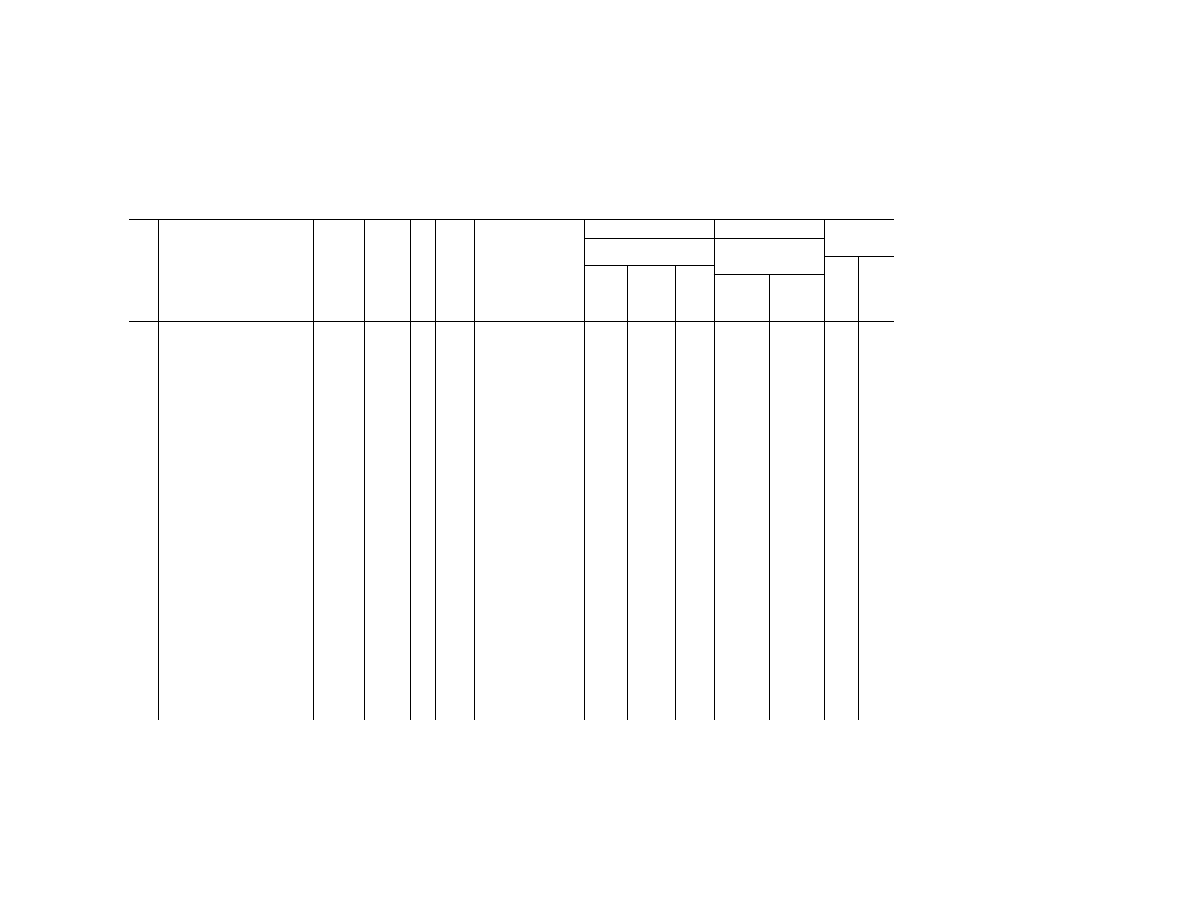
260
49 CFR Ch. I (10–1–23 Edition)
§
172.101
§ 172.101 H
AZARDOUS
M
ATERIALS
T
ABLE
—Continued
Sym-
bols
Hazardous materials descriptions
and proper shipping names
Hazard
class or
Division
Identi-
fication
Numbers
PG
Label
Codes
Special provisions
(§ 172.102)
(8)
(9)
(10)
Vessel
stowage
Packaging
(§ 173.***)
Quantity limitations
(see §§ 173.27 and
175.75)
Loca-
tion
Other
Excep-
tions
Non-bulk
Bulk
Passenger
aircraft/rail
Cargo air-
craft only
(1)
(2)
(3)
(4)
(5)
(6)
(7)
(8A)
(8B)
(8C)
(9A)
(9B)
(10A)
(10B)
Nitrating acid mixtures with not
more than 50 percent nitric acid
8 UN1796
II
8
A7, B2, IB2, T8, TP2,
TP13
154
158
242
Forbidden
30 L
D
40, 53,
58
Nitric acid other than red fuming,
with at least 65 percent, but not
more than 70 percent nitric acid
8 UN2031
II
8, 5.1
B2, B47, B53, IB2, IP15,
T8, TP2
154
158
242
Forbidden
30 L
D
53, 58,
66, 74,
89, 90
Nitric acid other than red fuming,
with more than 20 percent and
less than 65 percent nitric acid
8 UN2031
II
8
A212, B2, B47, B53,
IB2, IP15, T8, TP2
154
158
242
Forbidden
30 L
D
44, 66,
53, 58,
74, 89,
90
Nitric acid other than red fuming
with not more than 20 percent ni-
tric acid
8 UN2031
II
8
B2, B47, B53, IB2, T8,
TP2
154
158
242
1 L
30 L
D
53, 58
+
Nitric acid, red fuming
8 UN2032
I
8, 5.1,
6.1
2, B9, B32, T20, TP2,
TP13, TP38, TP45
None
227
244
Forbidden
Forbidden
D
40, 53,
58, 66,
74, 89,
90
Nitric acid other than red fuming,
with more than 70 percent nitric
acid
8 UN2031
I
8, 5.1
B47, B53, T10, TP2,
TP12, TP13
None
158
243
Forbidden
2.5 L
D
44, 53,
58, 66,
89, 90,
110,
111
Nitric oxide, compressed
2.3 UN1660
2.3,
5.1,
8
1, B77 None
337
None
Forbidden
Forbidden
D
40, 89,
90
Nitric oxide and dinitrogen tetroxide
mixtures or Nitric oxide and nitro-
gen dioxide mixtures
2.3 UN1975
2.3,
5.1,
8
1, B77 None
337
None
Forbidden
Forbidden
D
40, 89,
90
G
Nitriles, flammable, toxic, n.o.s.
3 UN3273
I
3, 6.1
T14, TP2, TP13, TP27 None
201
243
Forbidden
30 L
E
40, 52
II
3, 6.1
IB2, T11, TP2, TP13,
TP27
150
202
243
1 L
60 L
B
40, 52
G
Nitriles, liquid, toxic, n.o.s.
6.1 UN3276
I
6.1
5, T14, TP2, TP13,
TP27
None
201
243
1 L
30 L
B
52
II
6.1
IB2, T11, TP2, TP27 153
202
243
5 L
60 L
B
52
III
6.1
IB3, T7, TP1, TP28 153
203
241
60 L
220 L
A
52
G
Nitriles, solid, toxic, n.o.s.
6.1 UN3439
I
6.1
IB7, IP1, T6, TP33 None
211
242
5 kg
50 kg
D
52
II
6.1
IB8, IP2, IP4, T3, TP33 153
212
242
25 kg
100 kg
B
52
III
6.1
IB8, IP3, T1, TP33 153
213
240
100 kg
200 kg
A
52
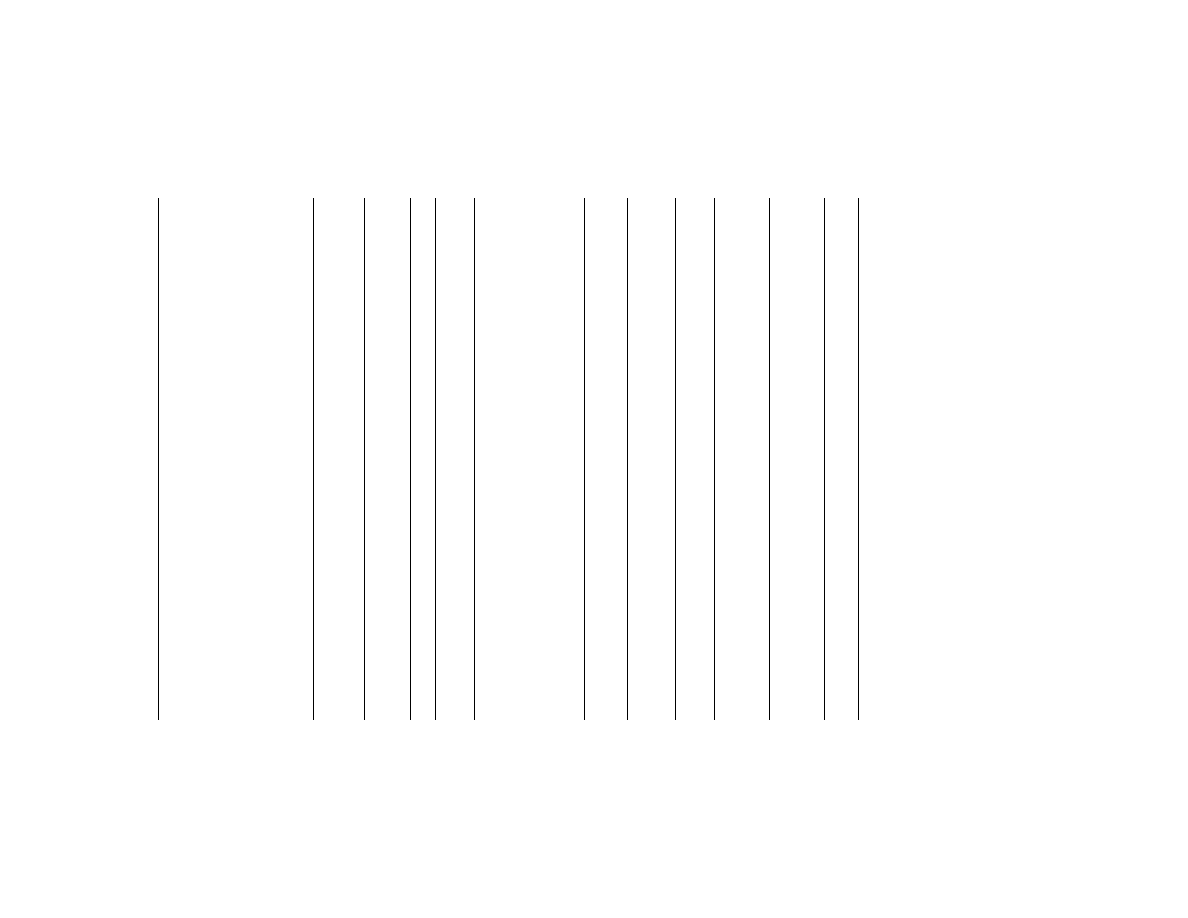
261
Pipeline and Haz. Matls. Safety Admin., DOT
§
172.101
G
Nitriles, toxic, flammable, n.o.s.
6.1 UN3275
I
6.1, 3
5, T14, TP2, TP13,
TP27
None
201
243
1 L
30 L
B
40, 52
II
6.1, 3
IB2, T11, TP2, TP13,
TP27
153
202
243
5 L
60 L
B
40, 52
G
Nitrites, inorganic, aqueous solu-
tion, n.o.s
5.1 UN3219
II
5.1
148, IB1, T4, TP1 152
202
242
1 L
5 L
B
46, 56,
58, 133
III
5.1
IB2, T4, TP1 152
203
241
2.5 L
30 L
B
46, 56,
58, 133
G
Nitrites, inorganic, n.o.s.
5.1 UN2627
II
5.1
33, IB8, IP2, IP4, T3,
TP33
152
212
None
5 kg
25 kg
A
46, 56,
58, 133
3-Nitro-4-chlorobenzotrifluoride
6.1 UN2307
II
6.1
IB2, T7, TP2 153
202
243
5 L
60 L
A
40
6-Nitro-4-diazotoluene-3-sulfonic
acid (dry)
Forbidden
Nitro isobutane triol trinitrate
Forbidden
N-Nitro-N-methylglycolamide nitrate
Forbidden
2-Nitro-2-methylpropanol nitrate
Forbidden
Nitro urea
1.1D UN0147
......
1.1D
........................................
None
62
None
Forbidden
Forbidden
04
25
N-Nitroaniline
Forbidden
+
Nitroanilines (o-; m-; p-;)
6.1 UN1661
II
6.1
IB8, IP2, IP4, T3, TP33 153
212
242
25 kg
100 kg
A
Nitroanisole, liquid
6.1 UN2730
III
6.1
IB3, T4, TP1 153
203
241
60 L
220 L
A
Nitroanisoles, solid
6.1 UN3458
III
6.1
IB8, IP3, T1, TP33 153
213
240
100 kg
200 kg
A
+
Nitrobenzene
6.1 UN1662
II
6.1
IB2, T7, TP2 153
202
243
5 L
60 L
A
40
m-Nitrobenzene diazonium per-
chlorate
Forbidden
Nitrobenzenesulfonic acid
8 UN2305
II
8
B2, B4, IB8, IP2, IP4,
T3, TP33
154
202
242
1 L
30 L
A
53, 58
Nitrobenzol, see Nitrobenzene
5-Nitrobenzotriazol
1.1D UN0385
......
1.1D
........................................
None
62
None
Forbidden
Forbidden
04
25
Nitrobenzotrifluorides, liquid
6.1 UN2306
II
6.1
IB2, T7, TP2 153
202
243
5 L
60 L
A
40
Nitrobenzotrifluorides, solid
6.1 UN3431
II
6.1
IB8, IP2, IP4, T3, TP33 153
212
242
25 kg
100 kg
A
40
Nitrobromobenzenes, liquid
6.1 UN2732
III
6.1
IB3, T4, TP1 153
203
241
60 L
220 L
A
Nitrobromobenzenes, solid
6.1 UN3459
III
6.1
IB8, IP3, T1, TP33 153
213
240
100 kg
200 kg
A
Nitrocellulose, dry or wetted with
less than 25 percent water (or al-
cohol), by mass
1.1D UN0340
......
1.1D
196 None
62
None
Forbidden
Forbidden
04
25,
27E
Nitrocellulose, with not more than
12.6 percent nitrogen, by dry
mass mixture with or without
plasticizer, with or without pig-
ment
4.1 UN2557
II
4.1
44, 197, W31 151
212
None
1 kg
15 kg
D
28, 36
Nitrocellulose membrane filters, with
not more than 12.6% nitrogen, by
dry mass
4.1 UN3270
II
4.1
43, A1 151
212
240
1 kg
15 kg
D
Nitrocellulose, plasticized with not
less than 18 percent plasticizing
substance, by mass
1.3C UN0343
......
1.3C
196 None
62
None
Forbidden
Forbidden
04
25
Nitrocellulose, solution, flammable
with not more than 12.6 percent
nitrogen, by mass, and not more
than 55 percent nitrocellulose
3 UN2059
I
3
198, T11, TP1, TP8,
TP27
None
201
243
1 L
30 L
E
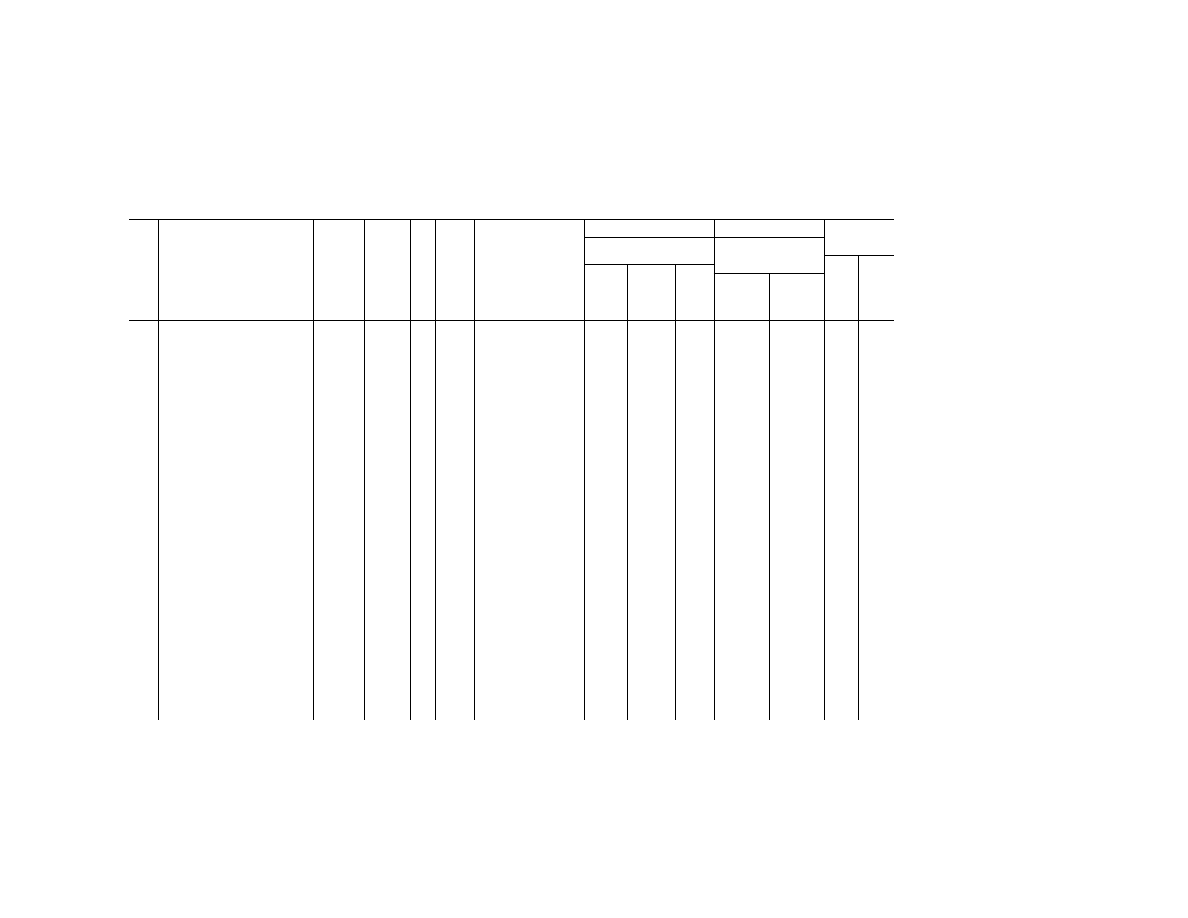
262
49 CFR Ch. I (10–1–23 Edition)
§
172.101
§ 172.101 H
AZARDOUS
M
ATERIALS
T
ABLE
—Continued
Sym-
bols
Hazardous materials descriptions
and proper shipping names
Hazard
class or
Division
Identi-
fication
Numbers
PG
Label
Codes
Special provisions
(§ 172.102)
(8)
(9)
(10)
Vessel
stowage
Packaging
(§ 173.***)
Quantity limitations
(see §§ 173.27 and
175.75)
Loca-
tion
Other
Excep-
tions
Non-bulk
Bulk
Passenger
aircraft/rail
Cargo air-
craft only
(1)
(2)
(3)
(4)
(5)
(6)
(7)
(8A)
(8B)
(8C)
(9A)
(9B)
(10A)
(10B)
II
3
198, IB2, T4, TP1, TP8 150
202
242
5 L
60 L
B
III
3
198, B1, IB3, T2, TP1 150
203
242
60 L
220 L
A
Nitrocellulose, unmodified or plasti-
cized with less than 18 percent
plasticizing substance, by mass
1.1D UN0341
......
1.1D
196 None
62
None
Forbidden
Forbidden
04
25,
27E
Nitrocellulose, wetted with not less
than 25 percent alcohol, by mass
1.3C UN0342
......
1.3C
196 None
62
None
Forbidden
Forbidden
04
25
Nitrocellulose with alcohol with not
less than 25 percent alcohol by
mass, and with not more than
12.6 percent nitrogen, by dry
mass
4.1 UN2556
II
4.1
197, W31 151
212
None
1 kg
15 kg
D
12, 25,
28, 36
Nitrocellulose with water with not
less than 25 percent water, by
mass
4.1 UN2555
II
4.1
197, W31 151
212
None
15 kg
50 kg
E
28, 36
Nitrochlorobenzene, see
Chloronitrobenzenes etc
Nitrocresols, liquid
6.1 UN3434
III
6.1
IB3, T4, TP1 153
203
241
60 L
220 L
A
Nitrocresols, solid
6.1 UN2446
III
6.1
IB8, IP3, T1, TP33 153
213
240
100 kg
200 kg
A
Nitroethane
3 UN2842
III
3
B1, IB3, T2, TP1 150
203
242
60 L
220 L
A
Nitroethyl nitrate
Forbidden
Nitroethylene polymer
Forbidden
Nitrogen, compressed
2.2 UN1066
2.2
306,
307
302
314,
315
75 kg
150 kg
A
Nitrogen dioxide, see Dinitrogen te-
troxide
Nitrogen fertilizer solution, see Fer-
tilizer ammoniating solution etc
Nitrogen peroxide, see Dinitrogen
tetroxide
Nitrogen, refrigerated liquid cryo-
genic liquid
2.2 UN1977
2.2
345, 346, T75, TP5 320
316
318
50 kg
500 kg
D
Nitrogen tetroxide and nitric oxide
mixtures, see Nitric oxide and ni-
trogen tetroxide mixtures
Nitrogen tetroxide, see Dinitrogen
tetroxide
Nitrogen trichloride
Forbidden
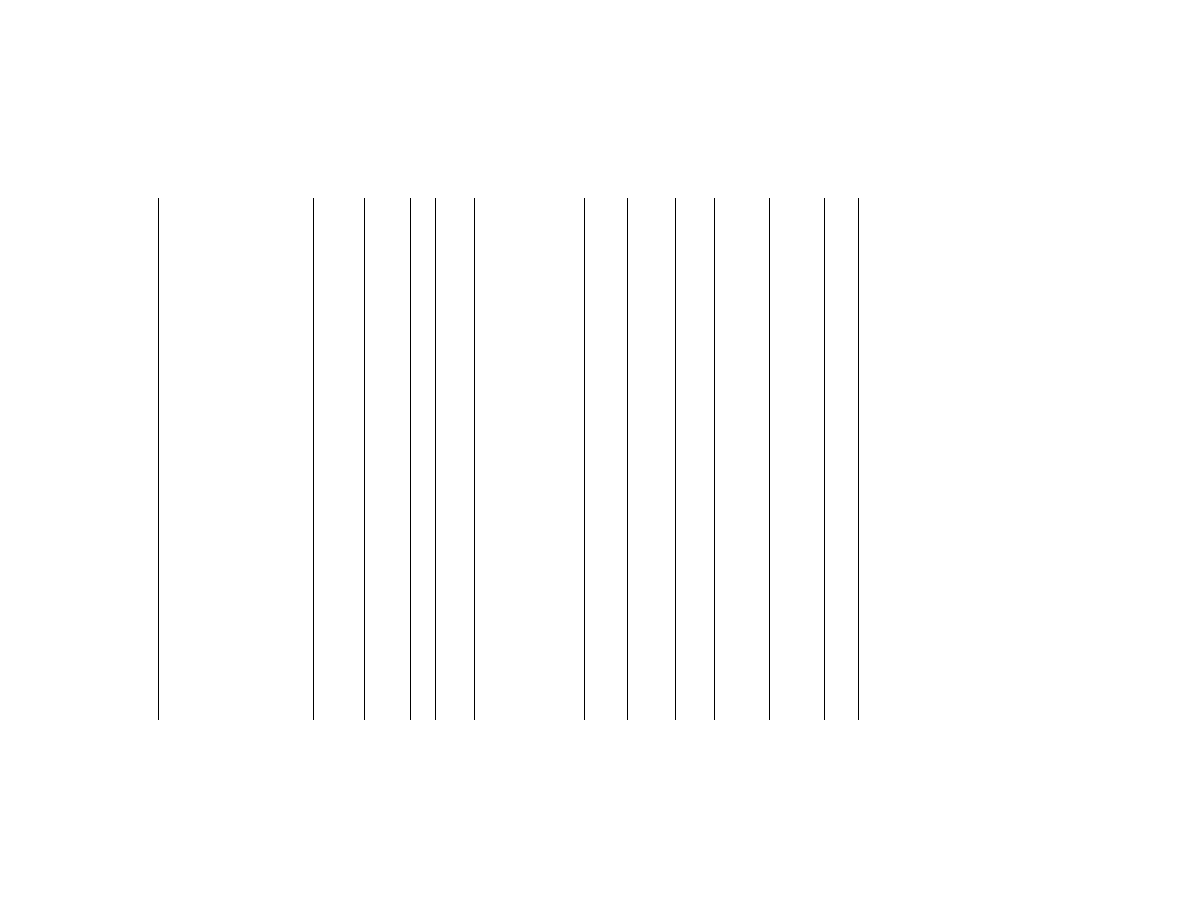
263
Pipeline and Haz. Matls. Safety Admin., DOT
§
172.101
Nitrogen trifluoride
2.2 UN2451
2.2,
5.1
None
302
None
75 kg
150 kg
D
40
Nitrogen triiodide
Forbidden
Nitrogen triiodide monoamine
Forbidden
Nitrogen trioxide
2.3 UN2421
2.3,
5.1,
8
1 None
336
245
Forbidden
Forbidden
D
40, 89,
90
Nitroglycerin, desensitized with not
less than 40 percent non-volatile
water insoluble phlegmatizer, by
mass
1.1D UN0143
......
1.1D,
6.1
125 None
62
None
Forbidden
Forbidden
04
25,
21E
Nitroglycerin, liquid, not desen-
sitized
Forbidden
Nitroglycerin mixture, desensitized,
liquid, flammable, n.o.s. with not
more than 30 percent nitroglyc-
erin, by mass
3 UN3343
3
129 None
214
None
Forbidden
Forbidden
D
Nitroglycerin mixture, desensitized,
liquid, n.o.s. with not more than
30% nitroglycerin, by mass
3 UN3357
II
3
142 None
202
243
5 L
60 L
E
Nitroglycerin mixture, desensitized,
solid, n.o.s. with more than 2 per-
cent but not more than 10 per-
cent nitroglycerin, by mass
4.1 UN3319
II
4.1
118 None
None
None
Forbidden
0.5 kg
E
Nitroglycerin, solution in alcohol,
with more than 1 percent but not
more than 5 percent nitroglycerin
3 UN3064
II
3
N8 None
202
None
Forbidden
5 L
E
Nitroglycerin, solution in alcohol,
with more than 1 percent but not
more than 10 percent nitroglyc-
erin
1.1D UN0144
......
1.1D
........................................
None
62
None
Forbidden
Forbidden
04
25,
21E
Nitroglycerin solution in alcohol with
not more than 1 percent nitroglyc-
erin
3 UN1204
II
3
IB2, N34 150
202
None
5 L
60 L
B
Nitroguanidine nitrate
Forbidden
Nitroguanidine or Picrite, dry or
wetted with less than 20 percent
water, by mass
1.1D UN0282
......
1.1D
........................................
None
62
None
Forbidden
Forbidden
04
25
Nitroguanidine, wetted or Picrite,
wetted with not less than 20 per-
cent water, by mass
4.1 UN1336
I
4.1
23, A8, A19, A20, N41,
W31
None
211
None
1 kg
15 kg
E
28, 36
1-Nitrohydantoin
Forbidden
Nitrohydrochloric acid
8 UN1798
I
8
B10, N41, T10, TP2,
TP13
None
201
243
Forbidden
2.5 L
D
40, 53,
58, 66,
74, 89,
90
Nitromannite (dry)
Forbidden
Nitromannite, wetted, see Mannitol
hexanitrate, etc
Nitromethane
3 UN1261
II
3
150
202
None
Forbidden
60 L
A
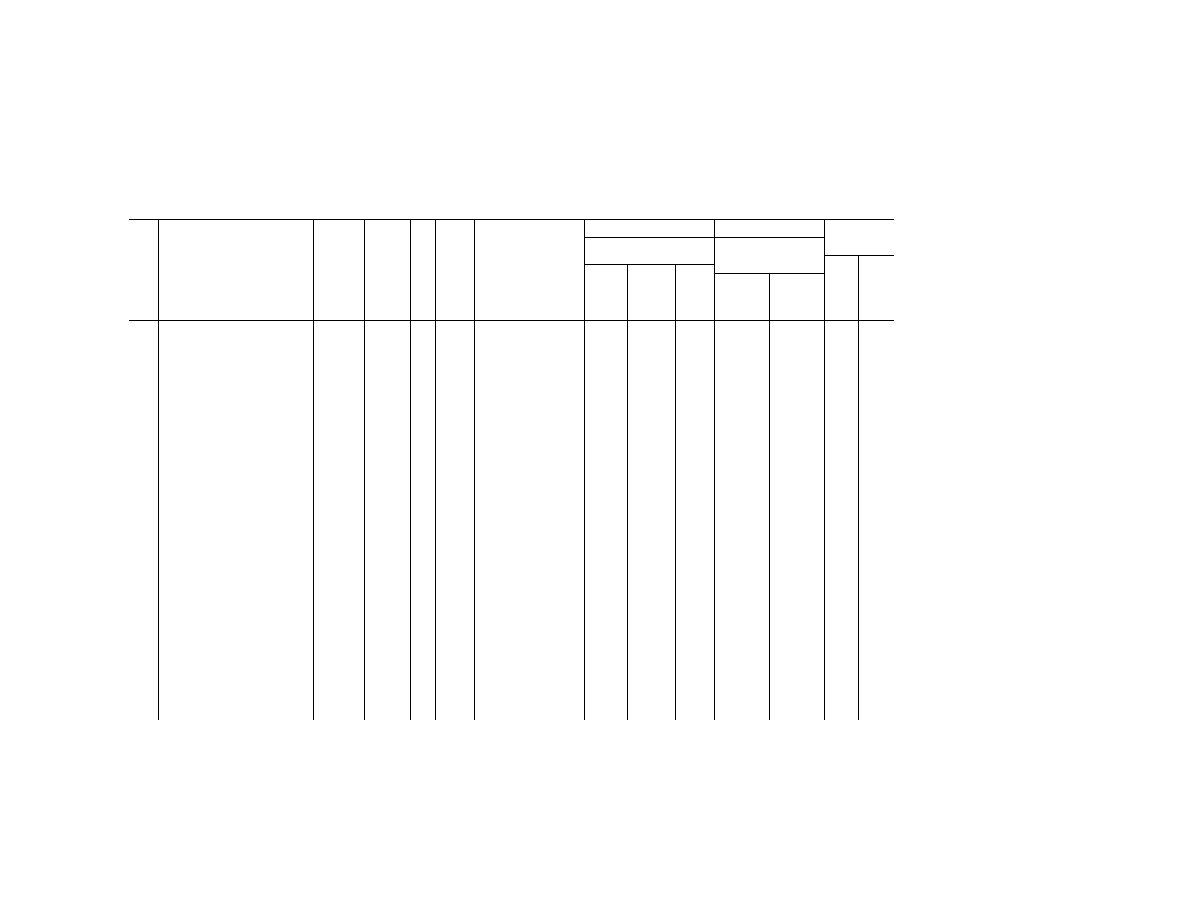
264
49 CFR Ch. I (10–1–23 Edition)
§
172.101
§ 172.101 H
AZARDOUS
M
ATERIALS
T
ABLE
—Continued
Sym-
bols
Hazardous materials descriptions
and proper shipping names
Hazard
class or
Division
Identi-
fication
Numbers
PG
Label
Codes
Special provisions
(§ 172.102)
(8)
(9)
(10)
Vessel
stowage
Packaging
(§ 173.***)
Quantity limitations
(see §§ 173.27 and
175.75)
Loca-
tion
Other
Excep-
tions
Non-bulk
Bulk
Passenger
aircraft/rail
Cargo air-
craft only
(1)
(2)
(3)
(4)
(5)
(6)
(7)
(8A)
(8B)
(8C)
(9A)
(9B)
(10A)
(10B)
Nitromuriatic acid, see
Nitrohydrochloric acid
Nitronaphthalene
4.1 UN2538
III
4.1
A1, IB8, IP3, T1, TP33 151
213
240
25 kg
100 kg
A
+
Nitrophenols (o-; m-; p-;)
6.1 UN1663
III
6.1
IB8, IP3, T1, TP33 153
213
240
100 kg
200 kg
A
m-Nitrophenyldinitro methane
Forbidden
4-Nitrophenylhydrazine, with not
less than 30 percent water, by
mass
4.1 UN3376
I
4.1
162, A8, A19, A20, N41,
W31
None
211
None
Forbidden
15 kg
E
28, 36
Nitropropanes
3 UN2608
III
3
B1, IB3, T2, TP1 150
203
242
60 L
220 L
A
p-Nitrosodimethylaniline
4.2 UN1369
II
4.2
A19, A20, IB6, IP2, N34,
T3, TP33
None
212
241
15 kg
50 kg
D
34
Nitrostarch, dry or wetted with less
than 20 percent water, by mass
1.1D UN0146
......
1.1D
........................................
None
62
None
Forbidden
Forbidden
04
25
Nitrostarch, wetted with not less
than 20 percent water, by mass
4.1 UN1337
I
4.1
23, A8, A19, A20, N41,
W31
None
211
None
1 kg
15 kg
D
28, 36
Nitrosugars (dry)
Forbidden
Nitrosyl chloride
2.3 UN1069
2.3, 8
3, B14 None
304
314,
315
Forbidden
Forbidden
D
40
Nitrosylsulfuric acid, liquid
8 UN2308
II
8
A3, A7, B2, IB2, N34,
T8, TP2
154
202
242
1 L
30 L
D
40, 53,
58, 66,
74, 89,
90
Nitrosylsulphuric acid, solid
8 UN3456
II
8
IB8, IP2, IP4, T3, TP33 154
212
240
15 kg
50 kg
D
40, 53,
58, 66,
74, 89,
90
Nitrotoluenes, liquid
6.1 UN1664
II
6.1
IB2, T7, TP2 153
202
243
5 L
60 L
A
Nitrotoluenes, solid
6.1 UN3446
II
6.1
IB8, IP2, IP4, T3, TP33 153
212
242
25 kg
100 kg
A
Nitrotoluidines (mono)
6.1 UN2660
III
6.1
IB8, IP3, T1, TP33 153
213
240
100 kg
200 kg
A
Nitrotriazolone or NTO
1.1D UN0490
......
1.1D
........................................
None
62
None
Forbidden
Forbidden
04
25
Nitrous oxide
2.2 UN1070
2.2,
5.1
A14 306
304
314,
315
75 kg
150 kg
A
40
Nitrous oxide, refrigerated liquid
2.2 UN2201
2.2,
5.1
B6, T75, TP5, TP22 None
304
314,
315
Forbidden
Forbidden
D
40
Nitroxylenes, liquid
6.1 UN1665
II
6.1
IB2, T7, TP2 153
202
243
5 L
60 L
A
Nitroxylenes, solid
6.1 UN3447
II
6.1
IB8, IP2, IP4, T3, TP33 153
212
242
25 kg
100 kg
A
Nitroxylol, see Nitroxylenes
Nonanes
3 UN1920
III
3
B1, IB3, T2, TP2 150
203
242
60 L
220 L
A

265
Pipeline and Haz. Matls. Safety Admin., DOT
§
172.101
Non-flammable gas, n.o.s., see
Compressed gas, etc. or Lique-
fied gas, etc
Nonliquefied gases, see Com-
pressed gases, etc
Nonliquefied hydrocarbon gas, see
Hydrocarbon gas mixture, com-
pressed, n.o.s.
Nonyltrichlorosilane
8 UN1799
II
8
A7, B2, B6, N34, T10,
TP2, TP7, TP13
None
206
242
Forbidden
30 L
C
40, 53,
Nordhausen acid, see Sulfuric acid,
fuming etc
2,5-Norbornadiene, stabilized, see
Bicyclo [2,2,1] hepta-2,5-diene,
stabilized
Octadecyltrichlorosilane
8 UN1800
II
8
A7, B2, B6, N34, T10,
TP2, TP7, TP13
None
206
242
Forbidden
30 L
C
40, 53,
58
Octadiene
3 UN2309
II
3
B1, IB2, T4, TP1 150
202
242
5 L
60 L
B
1,7-Octadine-3,5-diyne-1,8-
dimethoxy-9-octadecynoic acid
Forbidden
Octafluorobut-2-ene or Refrigerant
gas R 1318
2.2 UN2422
......
2.2
........................................
306
304
314,
315
75 kg
150 kg
A
Octafluorocyclobutane, or Refrig-
erant gas RC 318
2.2 UN1976
......
2.2
T50 306
304
314,
315
75 kg
150 kg
A
Octafluoropropane or Refrigerant
gas R 218
2.2 UN2424
......
2.2
T50 306
304
314,
315
75 kg
150 kg
A
Octanes
3 UN1262
II
3
IB2, T4, TP2 150
202
242
5 L
60 L
B
Octogen, etc. see
Cyclotetramethylene
tetranitramine, etc.
Octolite or Octol, dry or wetted with
less than 15 percent water, by
mass
1.1D UN0266
......
1.1D
........................................
None
62
None
Forbidden
Forbidden
04
25
Octonal
1.1D UN0496
......
1.1D
........................................
None
62
None
Forbidden
Forbidden
04
25
Octyl aldehydes
3 UN1191
III
3
B1, IB3, T2, TP1 150
203
242
60 L
220 L
A
Octyltrichlorosilane
8 UN1801
II
8
A7, B2, B6, N34, T10,
TP2, TP7, TP13
None
206
242
Forbidden
30 L
C
40, 53,
58
Oil gas, compressed
2.3 UN1071
2.3,
2.1
6 None
304
314,
315
Forbidden
25 kg
D
40
Oleum, see Sulfuric acid, fuming
Organic peroxide type A, liquid or
solid
Forbidden
G
Organic peroxide type B, liquid
5.2 UN3101
......
5.2, 1
53 152
225
None
Forbidden
Forbidden
D
12, 25,
52, 53
G
Organic peroxide type B, liquid,
temperature controlled
5.2 UN3111
......
5.2, 1
53 None
225
None
Forbidden
Forbidden
D
2, 25,
52, 53
G
Organic peroxide type B, solid
5.2 UN3102
......
5.2, 1
53 152
225
None
Forbidden
Forbidden
D
12, 25,
52, 53
G
Organic peroxide type B, solid, tem-
perature controlled
5.2 UN3112
......
5.2, 1
53 None
225
None
Forbidden
Forbidden
D
2, 25,
52, 53
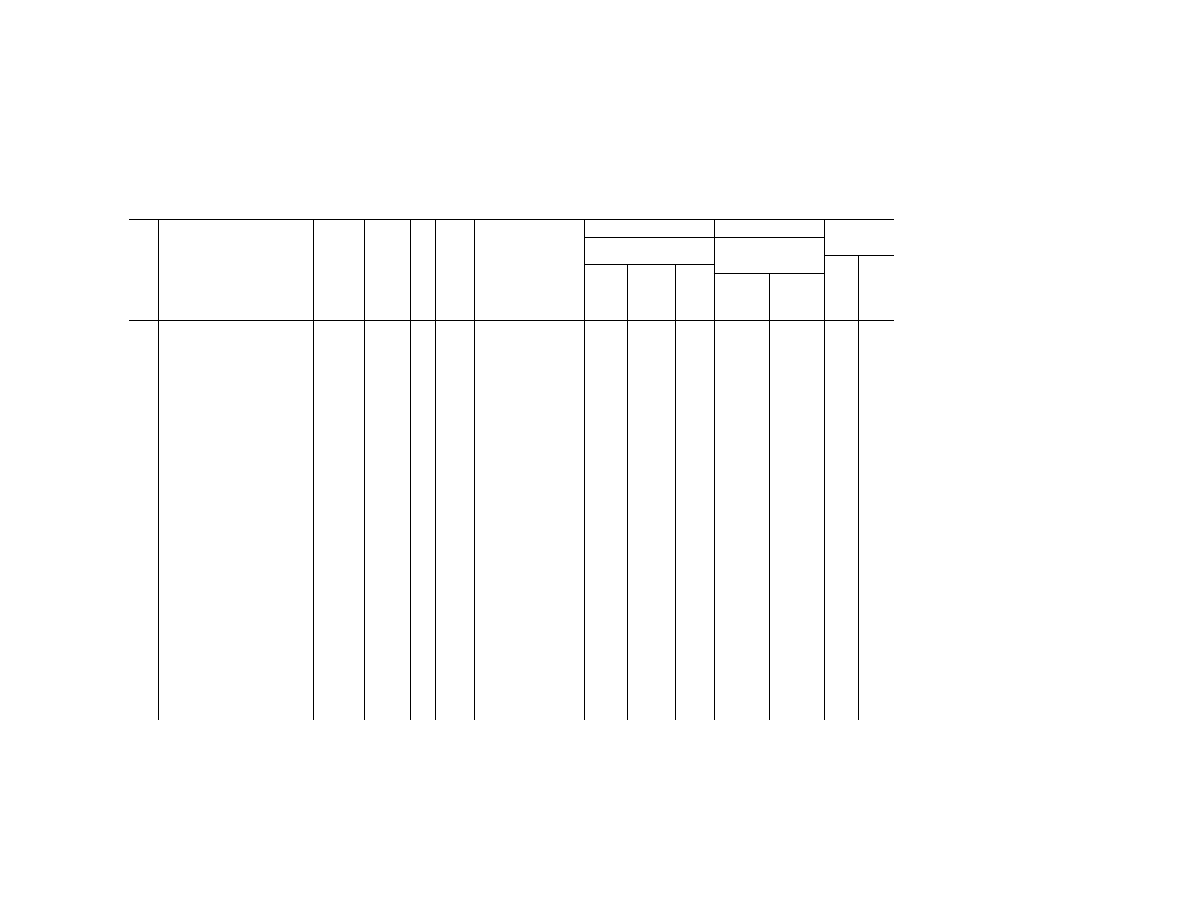
266
49 CFR Ch. I (10–1–23 Edition)
§
172.101
§ 172.101 H
AZARDOUS
M
ATERIALS
T
ABLE
—Continued
Sym-
bols
Hazardous materials descriptions
and proper shipping names
Hazard
class or
Division
Identi-
fication
Numbers
PG
Label
Codes
Special provisions
(§ 172.102)
(8)
(9)
(10)
Vessel
stowage
Packaging
(§ 173.***)
Quantity limitations
(see §§ 173.27 and
175.75)
Loca-
tion
Other
Excep-
tions
Non-bulk
Bulk
Passenger
aircraft/rail
Cargo air-
craft only
(1)
(2)
(3)
(4)
(5)
(6)
(7)
(8A)
(8B)
(8C)
(9A)
(9B)
(10A)
(10B)
G
Organic peroxide type C, liquid
5.2 UN3103
......
5.2
........................................
152
225
None
5 L
10 L
D
12, 25,
52, 53
G
Organic peroxide type C, liquid,
temperature controlled
5.2 UN3113
......
5.2
........................................
None
225
None
Forbidden
Forbidden
D
2, 25,
52, 53
G
Organic peroxide type C, solid
5.2 UN3104
......
5.2
........................................
152
225
None
5 kg
10 kg
D
12, 25,
52, 53
G
Organic peroxide type C, solid, tem-
perature controlled
5.2 UN3114
......
5.2
........................................
None
225
None
Forbidden
Forbidden
D
2, 25,
52, 53
G
Organic peroxide type D, liquid
5.2 UN3105
......
5.2
........................................
152
225
None
5 L
10 L
D
12, 25,
52, 53
G
Organic peroxide type D, liquid,
temperature controlled
5.2 UN3115
......
5.2
........................................
None
225
None
Forbidden
Forbidden
D
2, 25,
52, 53
G
Organic peroxide type D, solid
5.2 UN3106
......
5.2
........................................
152
225
None
5 kg
10 kg
D
12, 25,
52, 53
G
Organic peroxide type D, solid, tem-
perature controlled
5.2 UN3116
......
5.2
........................................
None
225
None
Forbidden
Forbidden
D
2, 25,
52, 53
G
Organic peroxide type E, liquid
5.2 UN3107
......
5.2
A61 152
225
None
10 L
25 L
D
12, 25,
52, 53
G
Organic peroxide type E, liquid,
temperature controlled
5.2 UN3117
......
5.2
........................................
None
225
None
Forbidden
Forbidden
D
2, 25,
52, 53
G
Organic peroxide type E, solid
5.2 UN3108
......
5.2
........................................
152
225
None
10 kg
25 kg
D
12, 25,
52, 53
G
Organic peroxide type E, solid, tem-
perature controlled
5.2 UN3118
......
5.2
........................................
None
225
None
Forbidden
Forbidden
D
2, 25,
52, 53
G
Organic peroxide type F, liquid
5.2 UN3109
......
5.2
A61, IP5 152
225
225
10 L
25 L
D
12, 25,
52, 53
G
Organic peroxide type F, liquid,
temperature controlled
5.2 UN3119
......
5.2
IP5 None
225
225
Forbidden
Forbidden
D
2, 25,
52, 53
G
Organic peroxide type F, solid
5.2 UN3110
......
5.2
TP33 152
225
225
10 kg
25 kg
D
12, 25,
52, 53
G
Organic peroxide type F, solid, tem-
perature controlled
5.2 UN3120
......
5.2
TP33 None
225
225
Forbidden
Forbidden
D
2, 25,
52, 53
D
Organic phosphate, mixed with
compressed gas or Organic
phosphate compound, mixed with
compressed gas or Organic
phosphorus compound, mixed
with compressed gas
2.3 NA1955
2.3
3 None
334
None
Forbidden
Forbidden
D
40
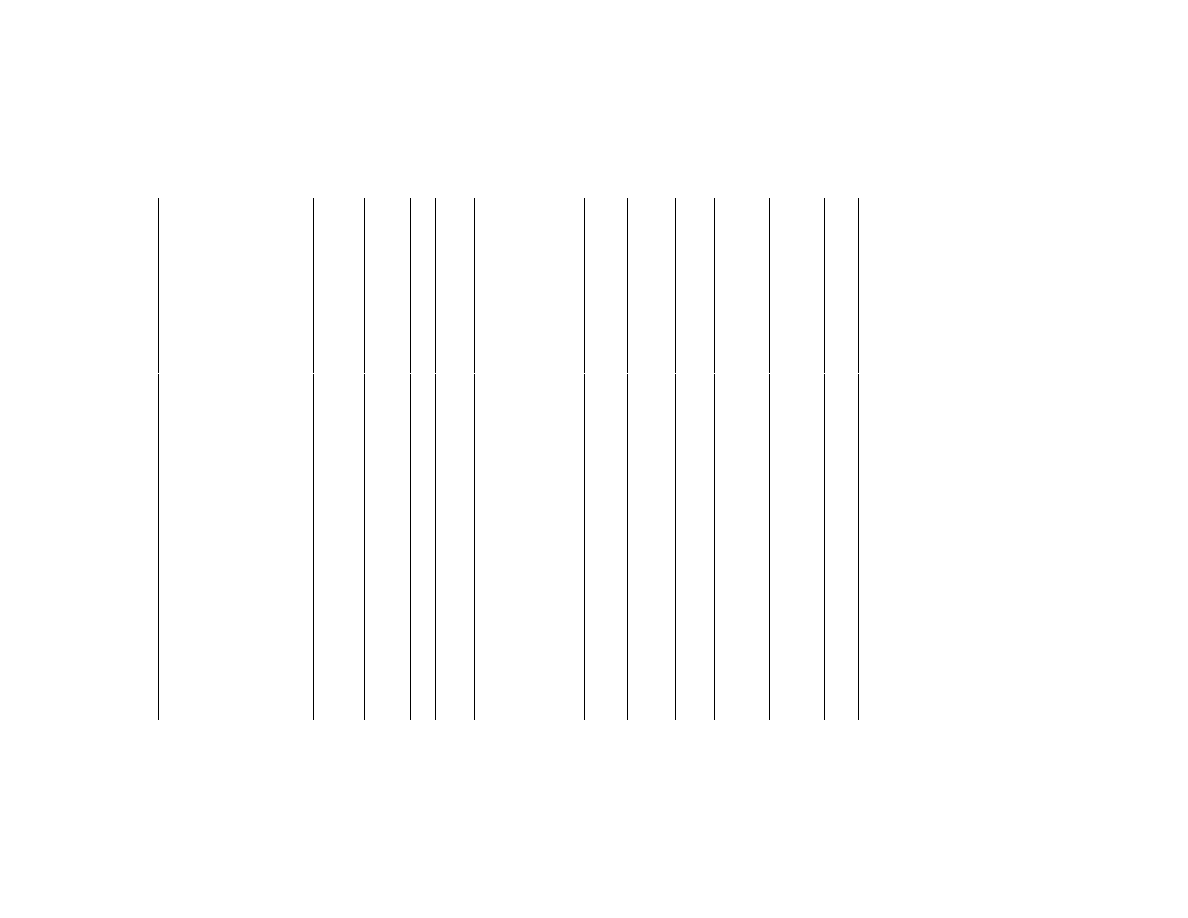
267
Pipeline and Haz. Matls. Safety Admin., DOT
§
172.101
Organic pigments, self-heating
4.2 UN3313
II
4.2
IB8, IP2, IP4, T3, TP33 None
212
241
15 kg
50 kg
C
III
4.2
IB8, IP3, T1, TP33 None
213
241
25 kg
100 kg
C
G
Organoarsenic compound, liquid,
n.o.s.
6.1 UN3280
I
6.1
5, T14, TP2, TP13,
TP27
None
201
242
1 L
30 L
B
II
6.1
IB2, T11, TP2, TP27 153
202
242
5 L
60 L
B
III
6.1
IB3, T7, TP1, TP28 153
203
241
60 L
220 L
A
G
Organoarsenic compound, solid,
n.o.s.
6.1 UN3465
I
6.1
IB7, IP1, T6, TP33 None
211
242
5 kg
50 kg
B
II
6.1
IB8, IP2, IP4, T3, TP33 153
212
242
25 kg
100 kg
B
III
6.1
IB8, IP3, T1, TP33 153
213
240
100 kg
200 kg
A
Organochlorine pesticides liquid,
flammable, toxic, flash point less
than 23 degrees C
3 UN2762
I
3, 6.1
T14, TP2, TP13, TP27 None
201
243
Forbidden
30 L
B
40
II
3, 6.1
IB2, T11, TP2, TP13,
TP27
150
202
243
1 L
60 L
B
40
Organochlorine pesticides, liquid,
toxic
6.1 UN2996
I
6.1
T14, TP2, TP13, TP27 None
201
243
1 L
30 L
B
40
II
6.1
IB2, T11, TP2, TP13,
TP27
153
202
243
5 L
60 L
B
40
III
6.1
IB3, T7, TP2, TP28 153
203
241
60 L
220 L
A
40
Organochlorine pesticides, liquid,
toxic, flammable, flash point not
less than 23 degrees C
6.1 UN2995
I
6.1, 3
T14, TP2, TP13, TP27 None
201
243
1 L
30 L
B
40
II
6.1, 3
IB2, T11, TP2, TP13,
TP27
153
202
243
5 L
60 L
B
40
III
6.1, 3
B1, IB3, T7, TP2, TP28 153
203
242
60 L
220 L
A
40
Organochlorine pesticides, solid,
toxic
6.1 UN2761
I
6.1
IB7, IP1, T6, TP33 None
211
242
5 kg
50 kg
A
40
II
6.1
IB8, IP2, IP4, T3, TP33 153
212
242
25 kg
100 kg
A
40
III
6.1
IB8, IP3, T1, TP33 153
213
240
100 kg
200 kg
A
40
G
Organometallic compound, liquid,
toxic, n.o.s
6.1 UN3282
I
6.1
T14, TP2, TP13, TP27 None
201
242
1 L
30 L
B
II
6.1
IB2, T11, TP2, TP27 153
202
242
5 L
60 L
B
III
6.1
IB3, T7, TP1, TP28 153
203
241
60 L
220 L
A
G
Organometallic compound, solid,
toxic, n.o.s
6.1 UN3467
I
6.1
IB7, IP1, T6, TP33 None
211
242
5 kg
50 kg
B
II
6.1
IB8, IP2, IP4, T3, TP33 153
212
242
25 kg
100 kg
B
III
6.1
IB8, IP3, T1, TP33 153
213
240
100 kg
200 kg
A
G
Organometallic substance, liquid,
pyrophoric
4.2 UN3392
I
4.2
B11, T21, TP2, TP7,
TP36
None
181
244
Forbidden
Forbidden
D
13, 78,
148
G
Organometallic substance, liquid,
pyrophoric, water-reactive
4.2 UN3394
I
4.2,
4.3
B11, T21, TP2, TP7,
TP36, TP47
None
181
244
Forbidden
Forbidden
D
13, 52,
78, 148
G
Organometallic substance, liquid,
water-reactive
4.3 UN3398
I
4.3
T13, TP2, TP7, TP36,
TP47, W31
None
201
244
Forbidden
1 L
D
13, 40,
52, 148
II
4.3
IB1, IP2, T7, TP2, TP7,
TP36, TP47, W31
151
202
243
1 L
5 L
D
13, 40,
52, 148
III
4.3
IB2, IP4, T7, TP2, TP7,
TP36, TP47, W31
151
203
242
5 L
60 L
E
13, 40,
52, 148
G
Organometallic substance, liquid,
water-reactive, flammable
4.3 UN3399
I
4.3, 3
T13, TP2, TP7, TP36,
TP47, W31
None
201
244
Forbidden
1 L
D
13, 40,
52, 148
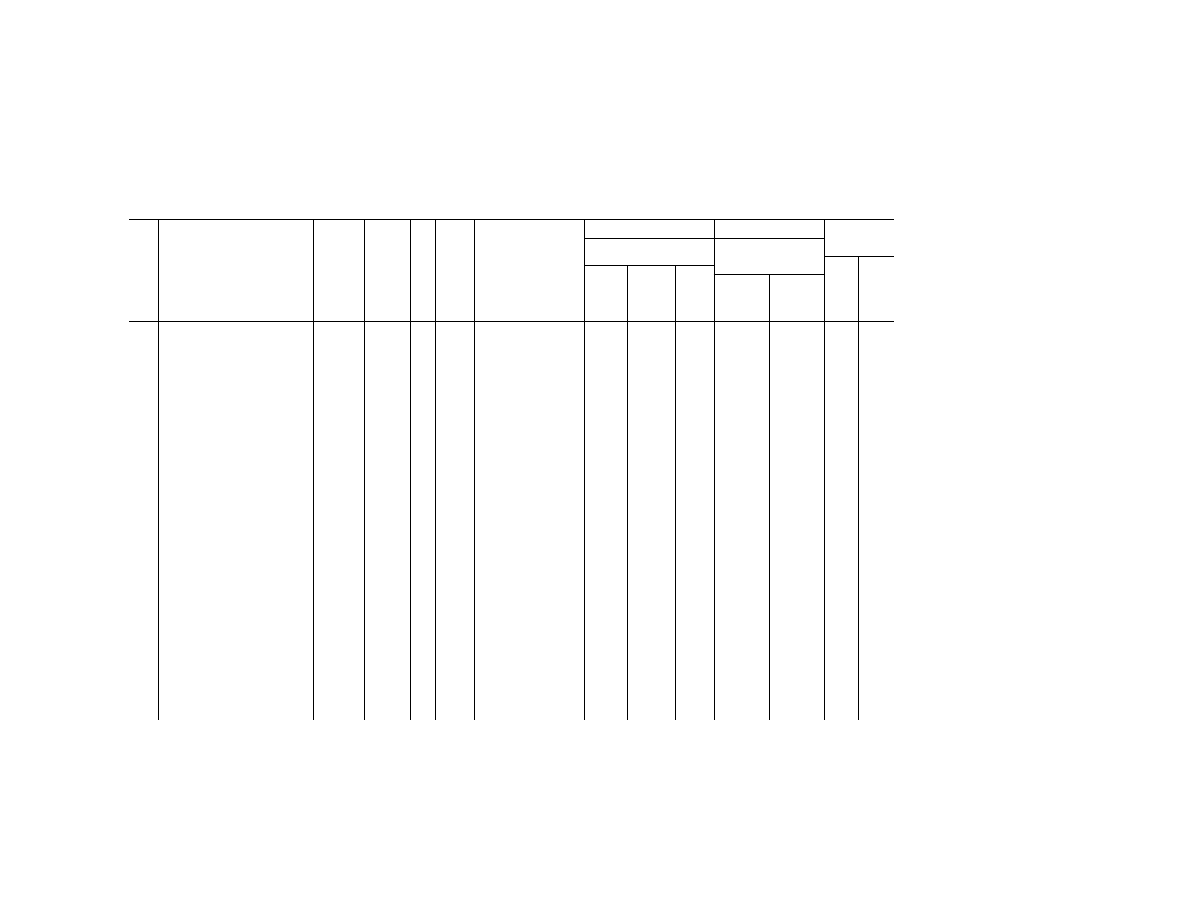
268
49 CFR Ch. I (10–1–23 Edition)
§
172.101
§ 172.101 H
AZARDOUS
M
ATERIALS
T
ABLE
—Continued
Sym-
bols
Hazardous materials descriptions
and proper shipping names
Hazard
class or
Division
Identi-
fication
Numbers
PG
Label
Codes
Special provisions
(§ 172.102)
(8)
(9)
(10)
Vessel
stowage
Packaging
(§ 173.***)
Quantity limitations
(see §§ 173.27 and
175.75)
Loca-
tion
Other
Excep-
tions
Non-bulk
Bulk
Passenger
aircraft/rail
Cargo air-
craft only
(1)
(2)
(3)
(4)
(5)
(6)
(7)
(8A)
(8B)
(8C)
(9A)
(9B)
(10A)
(10B)
II
4.3, 3
IB1, IP2, T7, TP2, TP7,
TP36, TP47, W31
151
202
243
1 L
5 L
D
13, 40,
52, 148
III
4.3, 3
IB2, IP4, T7, TP2, TP7,
TP36, TP47, W31
151
203
242
5 L
60 L
E
13, 40,
52, 148
G
Organometallic substance, solid,
pyrophoric
4.2 UN3391
I
4.2
T21, TP7, TP33, TP36 None
187
244
Forbidden
Forbidden
D
13, 148
G
Organometallic substance, solid,
pyrophoric, water-reactive
4.2 UN3393
I
4.2,
4.3
B11, T21, TP7, TP33,
TP36, TP47
None
187
244
Forbidden
Forbidden
D
13, 52,
148
G
Organometallic substance, solid,
self-heating
4.2 UN3400
II
4.2
IB6, T3, TP33, TP36 None
212
242
15 kg
50 kg
C
III
4.2
IB8, T1, TP33, TP36 None
213
242
25 kg
100 kg
C
G
Organometallic substance, solid,
water-reactive
4.3 UN3395
I
4.3
N40, T9, TP7, TP33,
TP36, TP47, W31
None
211
242
Forbidden
15 kg
E
13, 40,
52, 148
II
4.3
IB4, T3, TP33, TP36,
TP47, W31
151
212
242
15 kg
50 kg
E
13, 40,
52, 148
III
4.3
IB6, T1, TP33, TP36,
TP47, W31
151
213
241
25 kg
100 kg
E
13, 40,
52, 148
G
Organometallic substance, solid,
water-reactive, flammable
4.3 UN3396
I
4.3,
4.1
N40, T9, TP7, TP33,
TP36, TP47, W31
None
211
242
Forbidden
15 kg
E
13, 40,
52, 148
II
4.3,
4.1
IB4, T3, TP33, TP36,
TP47, W31
151
212
242
15 kg
50 kg
E
13, 40,
52, 148
III
4.3,
4.1
IB6, T1, TP33, TP36,
TP47, W31
151
213
241
25 kg
100 kg
E
13, 40,
52, 148
G
Organometallic substance, solid,
water-reactive, self-heating
4.3 UN3397
I
4.3,
4.2
N40, T9, TP7, TP33,
TP36, TP47, W31
None
211
242
Forbidden
15 kg
E
13, 40,
52, 148
II
4.3,
4.2
IB4, T3, TP33, TP36,
TP47, W31
151
212
242
15 kg
50 kg
E
13, 40,
52, 148
III
4.3,
4.2
IB6, T1, TP33, TP36,
TP47, W31
151
213
241
25 kg
100 kg
E
13, 40,
52, 148
Organophosphorus compound,
toxic, flammable, n.o.s.
6.1 UN3279
I
6.1, 3
5, T14, TP2, TP13,
TP27
None
201
243
1 L
30 L
B
40
II
6.1, 3
IB2, T11, TP2, TP13,
TP27
153
202
243
5 L
60 L
B
40
G
Organophosphorus compound, liq-
uid, toxic, n.o.s
6.1 UN3278
I
6.1
5, T14, TP2, TP13,
TP27
None
201
243
1 L
30 L
B
II
6.1
IB2, T11, TP2, TP27 153
202
243
5 L
60 L
B
III
6.1
IB3, T7, TP1, TP28 153
203
241
60 L
220 L
A
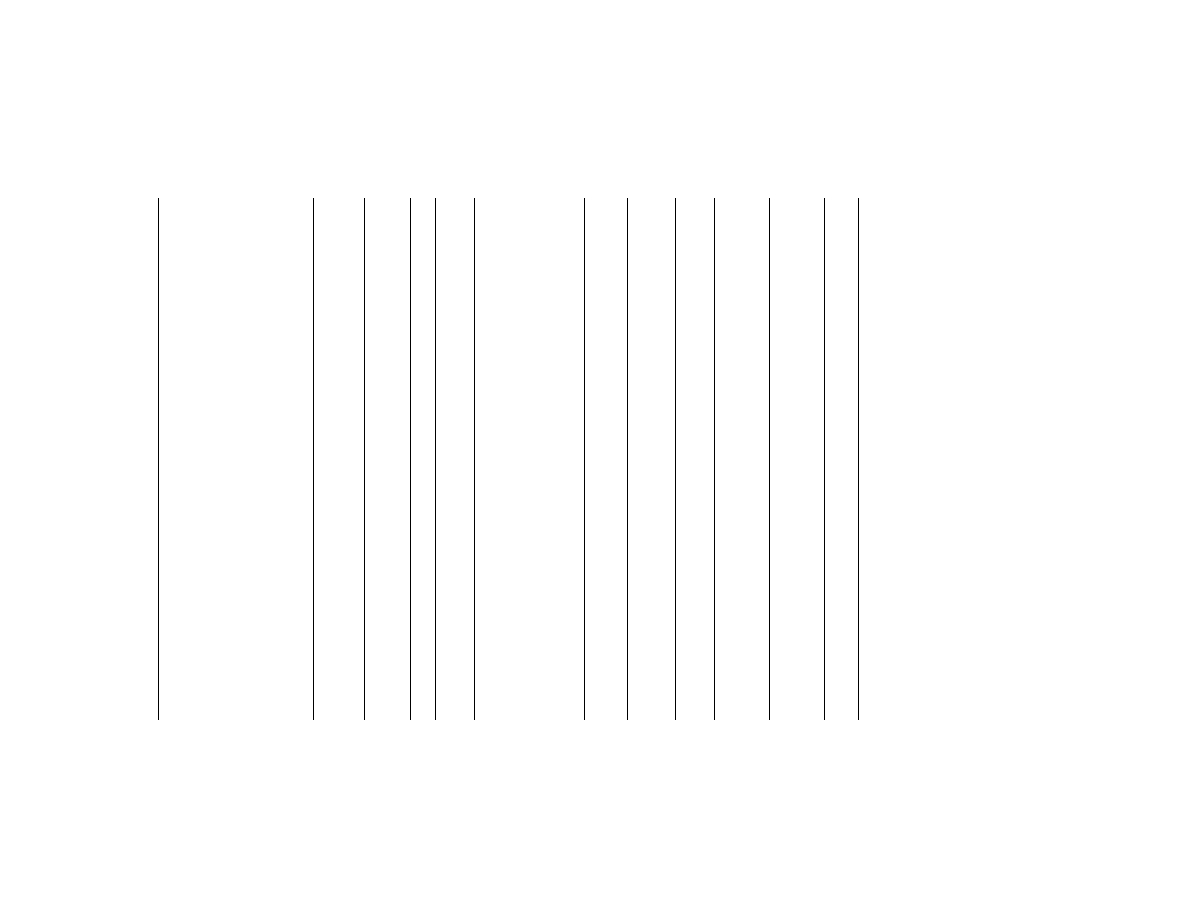
269
Pipeline and Haz. Matls. Safety Admin., DOT
§
172.101
G
Organophosphorus compound,
solid, toxic, n.o.s
6.1 UN3464
I
6.1
IB7, IP1, T6, TP33 None
211
242
5 kg
50 kg
B
II
6.1
IB8, IP2, IP4, T3, TP33 153
212
242
25 kg
100 kg
B
III
6.1
IB8, IP3, T1, TP33 153
213
240
100 kg
200 kg
A
Organophosphorus pesticides, liq-
uid, flammable, toxic, flash point
less than 23 degrees C
3 UN2784
I
3, 6.1
T14, TP2, TP13, TP27 None
201
243
Forbidden
30 L
B
40
II
3, 6.1
IB2, T11, TP2, TP13,
TP27
150
202
243
1 L
60 L
B
40
Organophosphorus pesticides, liq-
uid, toxic
6.1 UN3018
I
6.1
N76, T14, TP2, TP13,
TP27
None
201
243
1 L
30 L
B
40
II
6.1
IB2, N76, T11, TP2,
TP13, TP27
153
202
243
5 L
60 L
B
40
III
6.1
IB3, N76, T7, TP2, TP28 153
203
241
60 L
220 L
A
40
Organophosphorus pesticides, liq-
uid, toxic, flammable, flash point
not less than 23 degrees C
6.1 UN3017
I
6.1, 3
N76, T14, TP2, TP13,
TP27
None
201
243
1 L
30 L
B
40
II
6.1, 3
IB2, N76, T11, TP2,
TP13, TP27
153
202
243
5 L
60 L
B
40
III
6.1, 3
B1, IB3, N76, T7, TP2,
TP28
153
203
242
60 L
220 L
A
40
Organophosphorus pesticides,
solid, toxic
6.1 UN2783
I
6.1
IB7, IP1, N77, T6, TP33 None
211
242
5 kg
50 kg
A
40
II
6.1
IB8, IP2, IP4, N77, T3,
TP33
153
212
242
25 kg
100 kg
A
40
III
6.1
IB8, IP3, N77, T1, TP33 153
213
240
100 kg
200 kg
A
40
Organotin compounds, liquid, n.o.s
6.1 UN2788
I
6.1
N33, N34, T14, TP2,
TP13, TP27
None
201
243
1 L
30 L
B
40
II
6.1
A3, IB2, N33, N34, T11,
TP2, TP13, TP27
153
202
243
5 L
60 L
A
40
III
6.1
IB3, T7, TP2, TP28 153
203
241
60 L
220 L
A
40
Organotin compounds, solid, n.o.s.
6.1 UN3146
I
6.1
A5, IB7, IP1, T6, TP33 None
211
242
5 kg
50 kg
B
40
II
6.1
IB8, IP2, IP4, T3, TP33 153
212
242
25 kg
100 kg
A
40
III
6.1
IB8, IP3, T1, TP33 153
213
240
100 kg
200 kg
A
40
Organotin pesticides, liquid, flam-
mable, toxic, flash point less than
23 degrees C
3 UN2787
I
3, 6.1
T14, TP2, TP13, TP27 None
201
243
Forbidden
30 L
B
40
II
3, 6.1
IB2, T11, TP2, TP13,
TP27
150
202
243
1 L
60 L
B
40
Organotin pesticides, liquid, toxic
6.1 UN3020
I
6.1
T14, TP2, TP13, TP27 None
201
243
1 L
30 L
B
40
II
6.1
IB2, T11, TP2, TP13,
TP27
153
202
243
5 L
60 L
B
40
III
6.1
IB3, T7, TP2, TP28 153
203
241
60 L
220 L
A
40
Organotin pesticides, liquid, toxic,
flammable, flash point not less
than 23 degrees C
6.1 UN3019
I
6.1, 3
T14, TP2, TP13, TP27 None
201
243
1 L
30 L
B
40
II
6.1, 3
IB2, T11, TP2, TP13,
TP27
153
202
243
5 L
60 L
B
40
III
6.1, 3
B1, IB3, T7, TP2, TP28 153
203
242
60 L
220 L
A
40
Organotin pesticides, solid, toxic
6.1 UN2786
I
6.1
IB7, IP1, T6, TP33 None
211
242
5 kg
50 kg
A
40
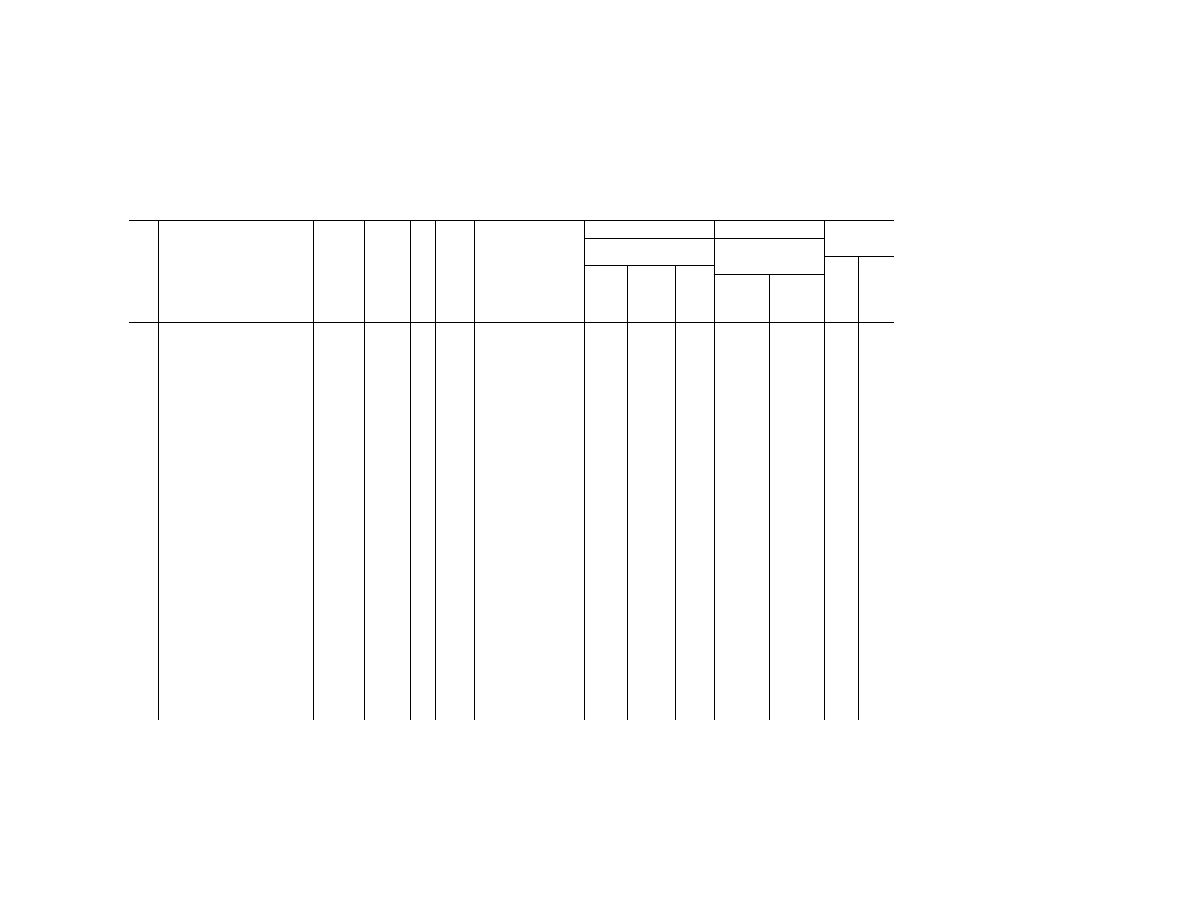
270
49 CFR Ch. I (10–1–23 Edition)
§
172.101
§ 172.101 H
AZARDOUS
M
ATERIALS
T
ABLE
—Continued
Sym-
bols
Hazardous materials descriptions
and proper shipping names
Hazard
class or
Division
Identi-
fication
Numbers
PG
Label
Codes
Special provisions
(§ 172.102)
(8)
(9)
(10)
Vessel
stowage
Packaging
(§ 173.***)
Quantity limitations
(see §§ 173.27 and
175.75)
Loca-
tion
Other
Excep-
tions
Non-bulk
Bulk
Passenger
aircraft/rail
Cargo air-
craft only
(1)
(2)
(3)
(4)
(5)
(6)
(7)
(8A)
(8B)
(8C)
(9A)
(9B)
(10A)
(10B)
II
6.1
IB8, IP2, IP4, T3, TP33 153
212
242
25 kg
100 kg
A
40
III
6.1
IB8, IP3, T1, TP33 153
213
240
100 kg
200 kg
A
40
Orthonitroaniline, see Nitroanilines
etc
Osmium tetroxide
6.1 UN2471
I
6.1
A8, IB7, IP1, N33, N34,
T6, TP33, W31
None
211
242
5 kg
50 kg
B
40
D G
Other regulated substances, liquid,
n.o.s
9 NA3082
III
9
A189, IB3, T2, TP1 155
203
241
No limit
No limit
A
D G
Other regulated substances, solid,
n.o.s
9 NA3077
III
9
384, B54, IB8, IP2, T1,
TP33
155
213
240
No limit
No limit
A
G
Oxidizing liquid, corrosive, n.o.s.
5.1 UN3098
I
5.1, 8
62 None
201
244
Forbidden
2.5 L
D
13, 56,
58, 138
II
5.1, 8
62, IB1 152
202
243
1 L
5 L
B
13, 56,
58, 138
III
5.1, 8
62, IB2 152
203
242
2.5 L
30 L
B
13, 56,
58, 138
G
Oxidizing liquid, n.o.s
5.1 UN3139
I
5.1
62, 127, A2 None
201
243
Forbidden
2.5 L
D
56, 58,
138
II
5.1
62, 127, 148, A2, IB2 152
202
242
1 L
5 L
B
56, 58,
138
III
5.1
62, 127, 148, A2, IB2 152
203
241
2.5 L
30 L
B
56, 58,
138
G
Oxidizing liquid, toxic, n.o.s
5.1 UN3099
I
5.1,
6.1
62 None
201
244
Forbidden
2.5 L
D
56, 58,
138
II
5.1,
6.1
62, IB1 152
202
243
1 L
5 L
B
56, 58,
95, 138
III
5.1,
6.1
62, IB2 152
203
242
2.5 L
30 L
B
56, 58,
95, 138
G
Oxidizing solid, corrosive, n.o.s
5.1 UN3085
I
5.1, 8
62 None
211
242
1 kg
15 kg
D
13, 56,
58, 138
II
5.1, 8
62, IB6, IP2, T3, TP33 152
212
242
5 kg
25 kg
B
13, 34,
56, 58,
138
III
5.1, 8
62, IB8, IP3, T1, TP33 152
213
240
25 kg
100 kg
B
13, 34,
56, 58,
138
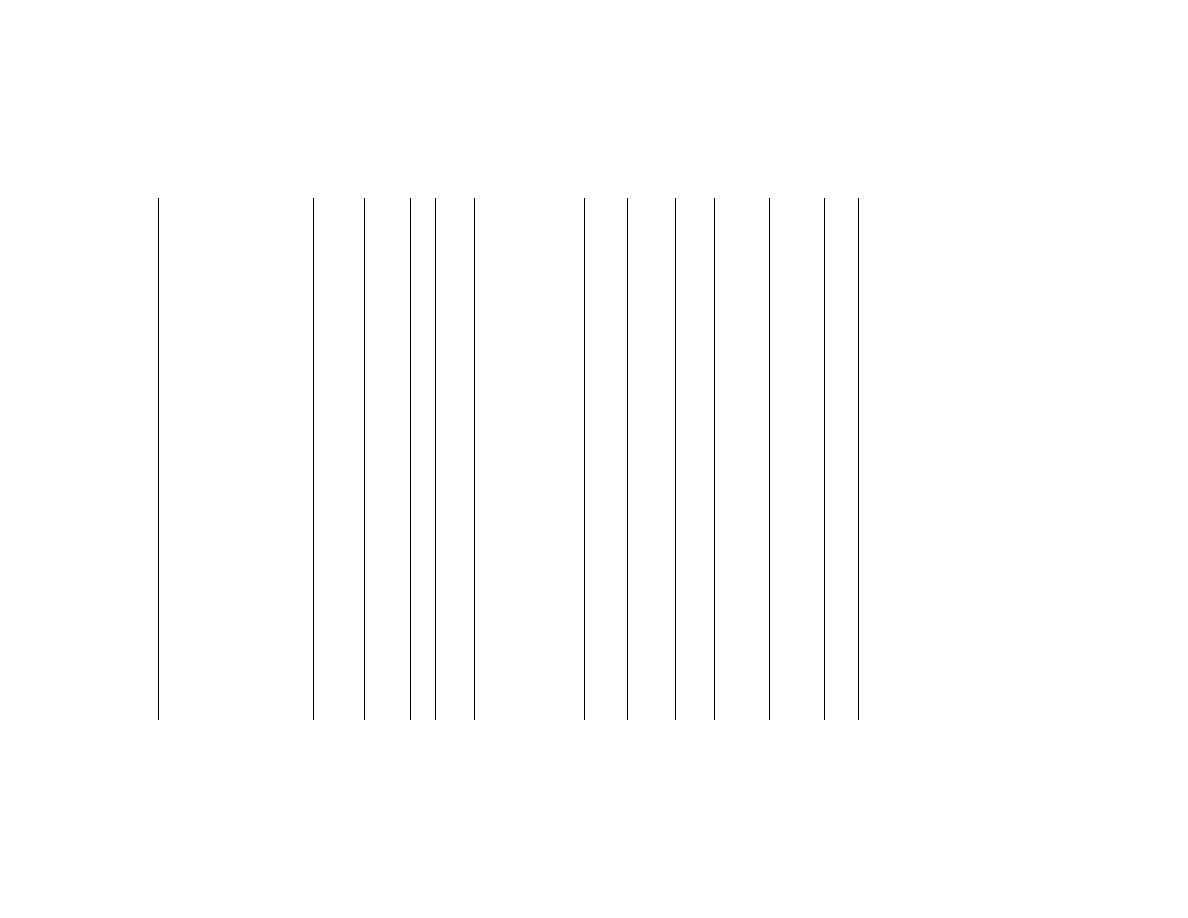
271
Pipeline and Haz. Matls. Safety Admin., DOT
§
172.101
G
Oxidizing solid, flammable, n.o.s
5.1 UN3137
I
5.1,
4.1
62 None
214
214
Forbidden
Forbidden
13,
147,
148
G
Oxidizing solid, n.o.s.
5.1 UN1479
I
5.1
62, IB5, IP1 None
211
242
1 kg
15 kg
D
56, 58,
106,
138
II
5.1
62, IB8, IP2, IP4, T3,
TP33
152
212
240
5 kg
25 kg
B
56, 58,
106,
138
III
5.1
62, 148, IB8, IP3, T1,
TP33
152
213
240
25 kg
100 kg
B
56, 58,
106,
138
G
Oxidizing solid, self-heating, n.o.s.
5.1 UN3100
I
5.1,
4.2
62 None
214
214
Forbidden
Forbidden
II
5.1,
4.2
62 None
214
214
Forbidden
Forbidden
G
Oxidizing solid, toxic, n.o.s.
5.1 UN3087
I
5.1,
6.1
62 None
211
242
1 kg
15 kg
D
56, 58,
138
II
5.1,
6.1
62, IB6, IP2, T3, TP33 152
212
242
5 kg
25 kg
B
56, 58,
138
III
5.1,
6.1
62, IB8, IP3, T1, TP33 152
213
240
25 kg
100 kg
B
56, 58,
138
G
Oxidizing solid, water reactive, n.o.s
5.1 UN3121
I
5.1,
4.3
62 None
214
214
Forbidden
Forbidden
13, 148
II
5.1,
4.3
62 152
214
214
Forbidden
Forbidden
13, 148
Oxygen, compressed
2.2 UN1072
2.2,
5.1
110, A14 306
302
314,
315
75 kg
150 kg
A
Oxygen difluoride, compressed
2.3 UN2190
2.3,
5.1,
8
1, N86 None
304
None
Forbidden
Forbidden
D
13, 40,
89, 90
Oxygen generator, chemical (includ-
ing when contained in associated
equipment, e.g., passenger serv-
ice units (PSUs), portable breath-
ing equipment (PBE), etc)
5.1 UN3356
......
5.1
........................................
None
168
None
Forbidden
25 kg
D
56, 58,
69, 106
+
Oxygen generator, chemical, spent
9 NA3356
III
9
61 None
213
None
Forbidden
Forbidden
A
Oxygen, refrigerated liquid (cryo-
genic liquid)
2.2 UN1073
2.2,
5.1
T75, TP5, TP22 320
316
318
Forbidden
Forbidden
D
Paint (including paint, lacquer,
enamel, stain, shellac solutions,
varnish, polish, liquid filler and liq-
uid lacquer base)
3 UN1263
I
3
367, T11, TP1, TP8,
TP27
150
201
243
1 L
30 L
E
II
3
149, 367, 383, B52,
B131, IB2, T4, TP1,
TP8, TP28
150
173
242
5 L
60 L
B
III
3
367, B1, B52, B131,
IB3, T2, TP1, TP29
150
173
242
60 L
220 L
A
Paint or Paint related material
8 UN3066
II
8
367, B2, IB2, T7, TP2,
TP28
154
173
242
1 L
30 L
A
40
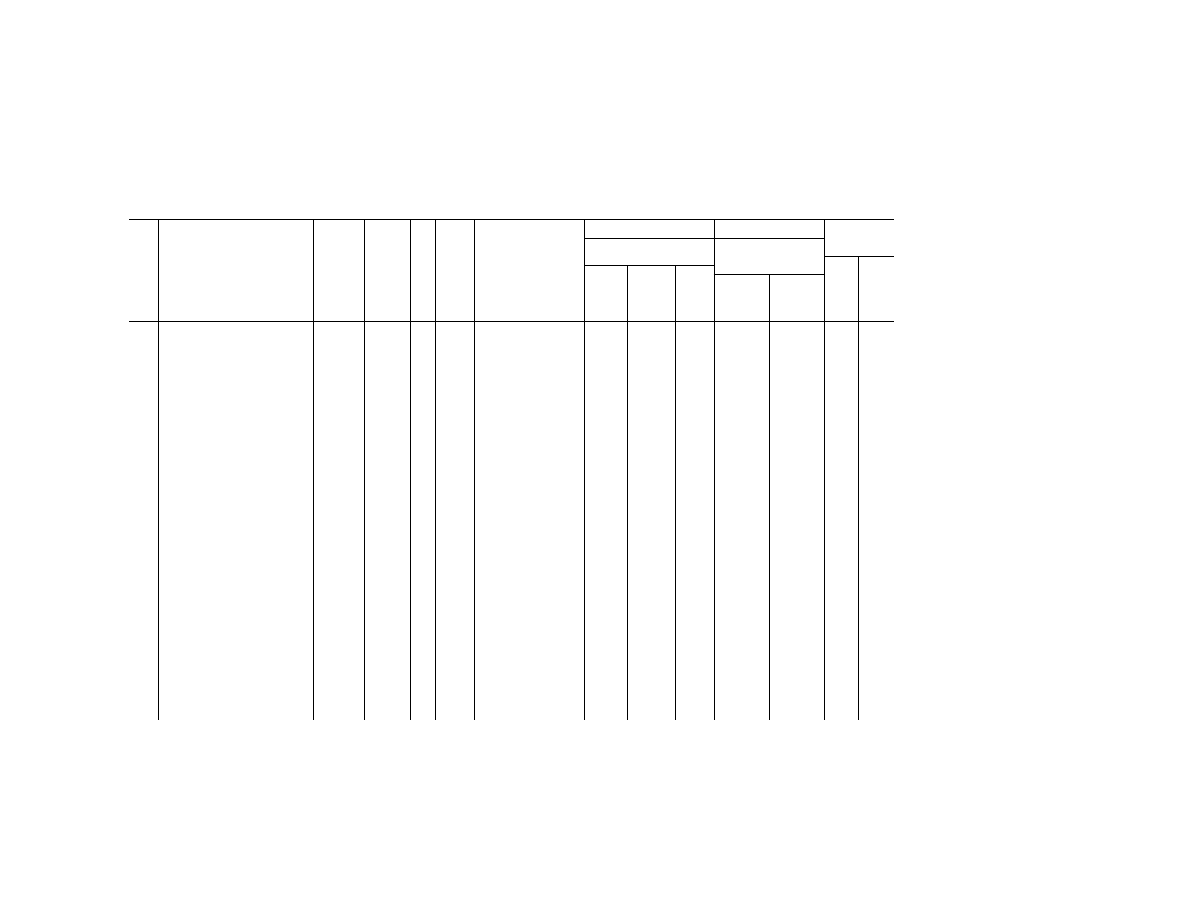
272
49 CFR Ch. I (10–1–23 Edition)
§
172.101
§ 172.101 H
AZARDOUS
M
ATERIALS
T
ABLE
—Continued
Sym-
bols
Hazardous materials descriptions
and proper shipping names
Hazard
class or
Division
Identi-
fication
Numbers
PG
Label
Codes
Special provisions
(§ 172.102)
(8)
(9)
(10)
Vessel
stowage
Packaging
(§ 173.***)
Quantity limitations
(see §§ 173.27 and
175.75)
Loca-
tion
Other
Excep-
tions
Non-bulk
Bulk
Passenger
aircraft/rail
Cargo air-
craft only
(1)
(2)
(3)
(4)
(5)
(6)
(7)
(8A)
(8B)
(8C)
(9A)
(9B)
(10A)
(10B)
III
8
367, B52, IB3, T4, TP1,
TP29
154
173
241
5 L
60 L
A
40
Paint, corrosive, flammable (includ-
ing paint, lacquer, enamel, stain,
shellac, varnish, polish, liquid
filler, and liquid lacquer base)
8 UN3470
II
8, 3
367, IB2, T7, TP2, TP8,
TP28
154
202
243
1 L
30 L
B
40
Paint, flammable, corrosive, (includ-
ing paint , lacquer, enamel, stain,
shellac, varnish, polish, liquid
filler and liquid lacquer base)
3 UN3469
I
3, 8
367, T11, TP2, TP27 None
201
243
0.5 L
2.5 L
E
40
II
3, 8
367, IB2, T7, TP2, TP8,
TP28
150
202
243
1 L
5 L
B
40
III
3, 8
367, IB3, T4, TP1, TP29 150
203
242
5 L
60 L
A
40
Paint related material including
paint thinning, drying, removing,
or reducing compound
3 UN1263
I
3
367, T11, TP1, TP8,
TP27
150
201
243
1 L
30 L
E
II
3
149, 367, B52, B131,
IB2, T4, TP1, TP8, TP28
150
173
242
5 L
60 L
B
III
3
367, B1, B52, B131,
IB3, T2, TP1, TP29
150
173
242
60 L
220 L
A
Paint related material corrosive,
flammable (including paint
thinning or reducing compound)
8 UN3470
II
8, 3
367, IB2, T7, TP2, TP8,
TP28
154
202
243
1 L
30 L
B
40
Paint related material, flammable,
corrosive (including paint thinning
or reducing compound)
3 UN3469
I
3, 8
367, T11, TP2, TP27 None
201
243
0.5 L
2.5 L
E
40
II
3, 8
367, IB2, T7, TP2, TP8,
TP28
150
202
243
1 L
5 L
B
40
III
3, 8
367, IB3, T4, TP1, TP29 150
203
242
5 L
60 L
A
40
Paper, unsaturated oil treated in-
completely dried (including car-
bon paper)
4.2 UN1379
III
4.2
IB8, IP3, W31 None
213
241
Forbidden
Forbidden
A
Paraformaldehyde
4.1 UN2213
III
4.1
A1, B120, IB8, IP3, T1,
TP33
151
213
240
25 kg
100 kg
A
Paraldehyde
3 UN1264
III
3
B1, IB3, T2, TP1 150
203
242
60 L
220 L
A
Paranitroaniline, solid, see
Nitroanilines etc
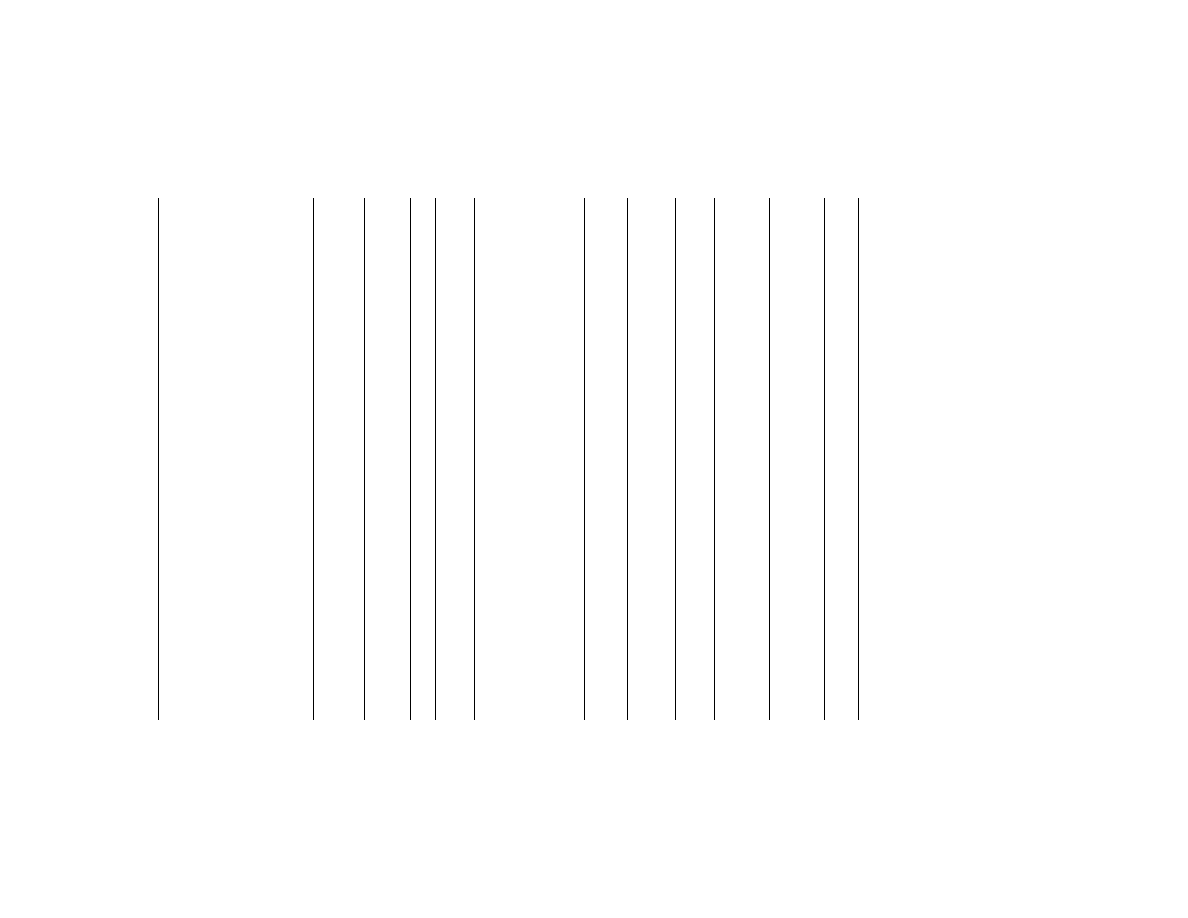
273
Pipeline and Haz. Matls. Safety Admin., DOT
§
172.101
D
Parathion and compressed gas mix-
ture
2.3 NA1967
2.3
3 None
334
245
Forbidden
Forbidden
E
40
Paris green, solid, see Copper
acetoarsenite
PCB, see Polychlorinated biphenyls
+
Pentaborane
4.2 UN1380
I
4.2,
6.1
1 None
205
245
Forbidden
Forbidden
D
13, 148
Pentachloroethane
6.1 UN1669
II
6.1
IB2, T7, TP2 153
202
243
5 L
60 L
A
40
Pentachlorophenol
6.1 UN3155
II
6.1
IB8, IP2, IP4, T3, TP33 153
212
242
25 kg
100 kg
A
Pentaerythrite tetranitrate (dry)
Forbidden
Pentaerythrite tetranitrate mixture,
desensitized, solid, n.o.s. or Pen-
taerythritol tetranitrate mixture,
desensitized, solid, n.o.s. or
PETN mixture, desensitized,
solid, n.o.s., with more than 10
percent but not more than 20 per-
cent PETN, by mass
4.1 UN3344
II
4.1
118, N85 None
214
None
Forbidden
Forbidden
E
Pentaerythrite tetranitrate or Penta-
erythritol tetranitrate or PETN,
with not less than 7 percent wax
by mass
1.1D UN0411
......
1.1D
120 None
62
None
Forbidden
Forbidden
04
25
Pentaerythrite tetranitrate, wetted or
Pentaerythritol tetranitrate,
wetted, or PETN, wetted with not
less than 25 percent water, by
mass, or Pentaerythrite
tetranitrate, or Pentaerythritol
tetranitrate or PETN, desensitized
with not less than 15 percent
phlegmatizer by mass
1.1D UN0150
......
1.1D
121 None
62
None
Forbidden
Forbidden
04
25
Pentaerythritol tetranitrate, see
Pentaerythrite tetranitrate, etc
Pentafluoroethane or Refrigerant
gas R 125
2.2 UN3220
2.2
T50 306
304
314,
315
75 kg
150 kg
A
Pentamethylheptane
3 UN2286
III
3
B1, IB3, T2, TP1 150
203
242
60 L
220 L
A
Pentane-2,4-dione
3 UN2310
III
3, 6.1
B1, IB3, T4, TP1 150
203
242
60 L
220 L
A
Pentanes
3 UN1265
I
3
T11, TP2 150
201
243
1 L
30 L
E
II
3
IB2, IP8, T4, TP1 150
202
242
5 L
60 L
E
Pentanitroaniline (dry)
Forbidden
Pentanols
3 UN1105
II
3
IB2, T4, TP1, TP29 150
202
242
5 L
60 L
B
III
3
B1, B3, IB3, T2, TP1 150
203
242
60 L
220 L
A
1-Pentene (n-amylene)
3 UN1108
I
3
T11, TP2 150
201
243
1 L
30 L
E
1-Pentol
8 UN2705
II
8
B2, IB2, T7, TP2 154
202
242
1 L
30 L
B
26, 27
Pentolite, dry or wetted with less
than 15 percent water, by mass
1.1D UN0151
......
1.1D
........................................
None
62
None
Forbidden
Forbidden
04
25
Pepper spray, see Aerosols, etc. or
Self-defense spray, non-pressur-
ized
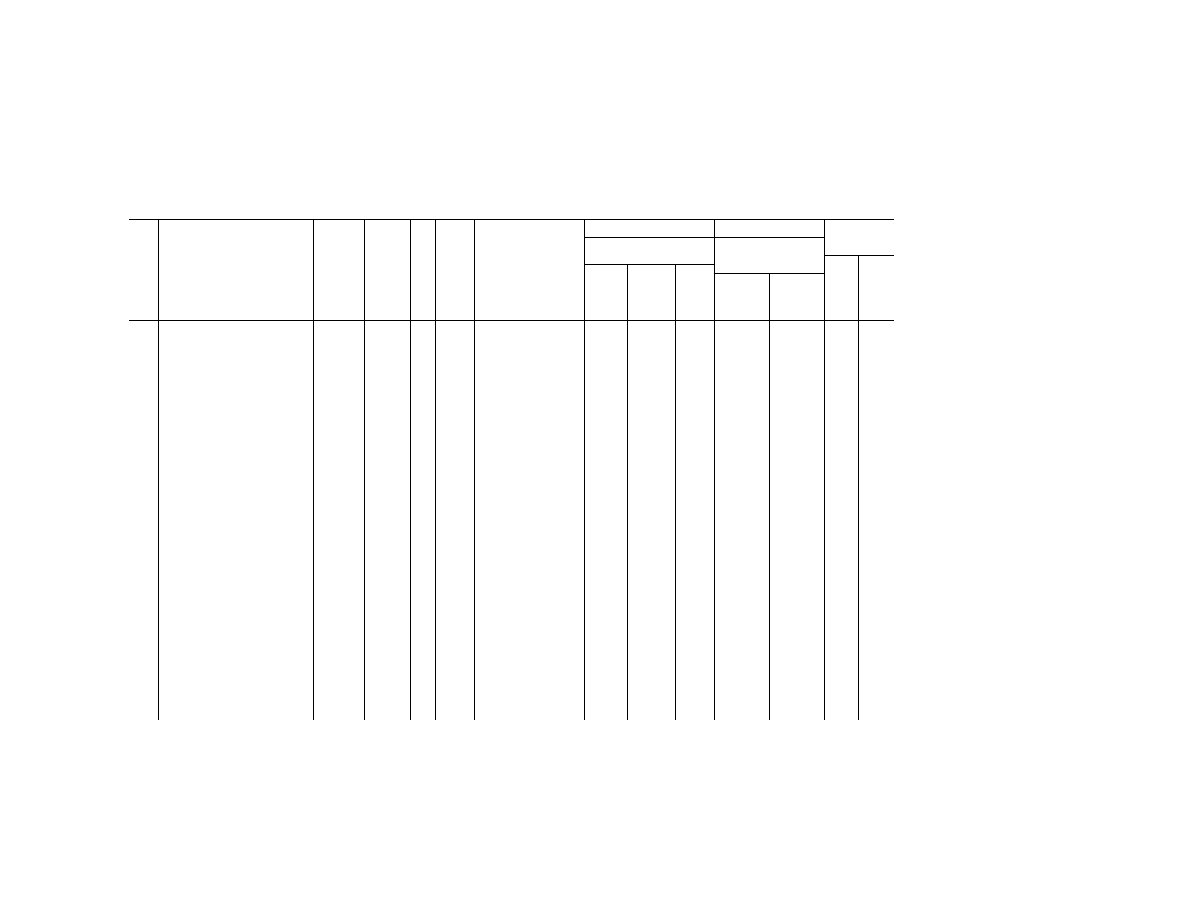
274
49 CFR Ch. I (10–1–23 Edition)
§
172.101
§ 172.101 H
AZARDOUS
M
ATERIALS
T
ABLE
—Continued
Sym-
bols
Hazardous materials descriptions
and proper shipping names
Hazard
class or
Division
Identi-
fication
Numbers
PG
Label
Codes
Special provisions
(§ 172.102)
(8)
(9)
(10)
Vessel
stowage
Packaging
(§ 173.***)
Quantity limitations
(see §§ 173.27 and
175.75)
Loca-
tion
Other
Excep-
tions
Non-bulk
Bulk
Passenger
aircraft/rail
Cargo air-
craft only
(1)
(2)
(3)
(4)
(5)
(6)
(7)
(8A)
(8B)
(8C)
(9A)
(9B)
(10A)
(10B)
Perchlorates, inorganic, aqueous
solution, n.o.s.
5.1 UN3211
II
5.1
IB2, T4, TP1 152
202
242
1 L
5 L
B
56, 58,
133
III
5.1
IB2, T4, TP1 152
202
241
2.5 L
30 L
B
56, 58,
69, 133
Perchlorates, inorganic, n.o.s.
5.1 UN1481
II
5.1
IB6, IP2, T3, TP33 152
212
242
5 kg
25 kg
A
56, 58
III
5.1
IB8, IP3, T1, TP33 152
213
240
25 kg
100 kg
A
56, 58
Perchloric acid, with more than 72
percent acid by mass
Forbidden
Perchloric acid with more than 50
percent but not more than 72 per-
cent acid, by mass
5.1 UN1873
I
5.1, 8
A2, N41, T10, TP1 None
201
243
Forbidden
2.5 L
D
53, 58,
66
Perchloric acid with not more than
50 percent acid by mass
8 UN1802
II
8, 5.1
IB2, N41, T7, TP2 154
202
243
Forbidden
30 L
C
53, 58,
66
Perchloroethylene, see
Tetrachloroethylene
Perchloromethyl mercaptan
6.1 UN1670
I
6.1
2, B9, B14, B32, N34,
T20, TP2, TP13, TP38,
TP45
None
227
244
Forbidden
Forbidden
D
40
Perchloryl fluoride
2.3 UN3083
2.3,
5.1
2, B9, B14 None
302
314,
315
Forbidden
Forbidden
D
40
Percussion caps, see Primers, cap
type
Perfluoro-2-butene, see
Octafluorobut-2-ene
Perfluoro(ethyl vinyl ether)
2.1 UN3154
2.1
306
302, 304,
305
314,
315
Forbidden
150 kg
E
40
Perfluoro(methyl vinyl ether)
2.1 UN3153
2.1
T50 306
302, 304,
305
314,
315
Forbidden
150 kg
E
40
Perfumery products with flammable
solvents
3 UN1266
II
3
149, IB2, T4, TP1, TP8 150
202
242
15 L
60 L
B
III
3
B1, IB3, T2, TP1 150
203
242
60 L
220 L
A
G
Permanganates, inorganic, aqueous
solution, n.o.s
5.1 UN3214
II
5.1
26, 353, IB2, T4, TP1 152
202
242
1 L
5 L
D
56, 58,
133,
138
G
Permanganates, inorganic, n.o.s
5.1 UN1482
II
5.1
26, 353, A30, IB6, IP2,
T3, TP33
152
212
242
5 kg
25 kg
D
56, 58,
138
III
5.1
26, 353, A30, IB8, IP3,
T1, TP33
152
213
240
25 kg
100 kg
D
56, 58,
13
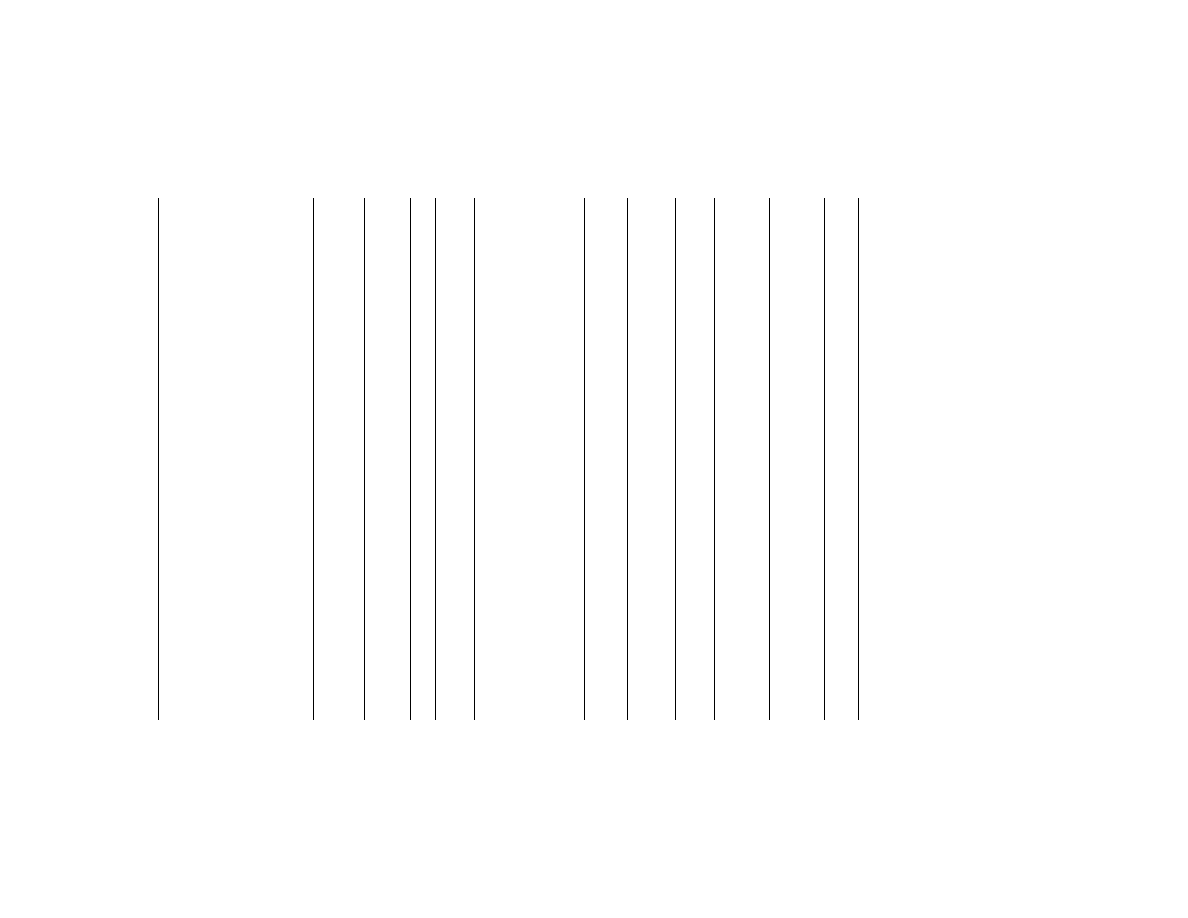
275
Pipeline and Haz. Matls. Safety Admin., DOT
§
172.101
Permeation devices for calibrating
air quality monitoring equipment
See § 173.175
Peroxides, inorganic, n.o.s
5.1 UN1483
II
5.1
A7, A20, IB6, IP2, N34,
T3, TP33, W100
152
212
242
5 kg
25 kg
C
13, 52,
66, 75,
148
III
5.1
A7, A20, B134, IB8,
IP21, N34, T1, TP33,
W100
152
213
240
25 kg
100 kg
C
13, 52,
66, 75,
148
Peroxyacetic acid, with more than
43 percent and with more than 6
percent hydrogen peroxide
Forbidden
Persulfates, inorganic, aqueous so-
lution, n.o.s
5.1 UN3216
III
5.1
IB2, T4, TP1, TP29 152
203
241
2.5 L
30 L
A
56, 58,
133
Persulfates, inorganic, n.o.s.
5.1 UN3215
III
5.1
IB8, IP3, T1, TP33 152
213
240
25 kg
100 kg
A
56, 58
G
Pesticides, liquid, flammable, toxic,
flash point less than 23 degrees
C
3 UN3021
I
3, 6.1
B5, T14, TP2, TP13,
TP27
None
201
243
Forbidden
30 L
B
40
G
Pesticides, liquid, toxic, flammable,
n.o.s. flash point not less than 23
degrees C
6.1 UN2903
I
6.1, 3
T14, TP2, TP13, TP27 None
201
243
1 L
30 L
B
40
II
6.1, 3
IB2, T11, TP2, TP13,
TP27
153
202
243
5 L
60 L
B
40
III
6.1, 3
B1, IB3, T7, TP2 153
203
242
60 L
220 L
A
40
G
Pesticides, liquid, toxic, n.o.s.
6.1 UN2902
I
6.1
T14, TP2, TP13, TP27 None
201
243
1 L
30 L
B
40
II
6.1
IB2, T11, TP2, TP13,
TP27
153
202
243
5 L
60 L
B
40
III
6.1
IB3, T7, TP2, TP28 153
203
241
60 L
220 L
A
40
G
Pesticides, solid, toxic, n.o.s.
6.1 UN2588
I
6.1
IB7, T6, TP33 None
211
242
5 kg
50 kg
A
40
II
6.1
IB8, IP2, IP4, T3, TP33 153
212
242
25 kg
100 kg
A
40
III
6.1
IB8, IP3, T1, TP33 153
213
240
100 kg
200 kg
A
40
PETN, see Pentaerythrite
tetranitrate
PETN/TNT, see Pentolite, etc
Petrol, see Gasoline
Petroleum crude oil
3 UN1267
I
3
144, 357, T11, TP1, TP8 150
201
243
1 L
30 L
E
II
3
144, 357, IB2, T4, TP1,
TP8
150
202
242
5 L
60 L
B
III
3
144, 357, B1, IB3, T2,
TP1
150
203
242
60 L
220 L
A
Petroleum distillates, n.o.s. or Pe-
troleum products, n.o.s.
3 UN1268
I
3
144, T11, TP1, TP8 150
201
243
1 L
30 L
E
II
3
144, IB2, T7, TP1, TP8,
TP28
150
202
242
5 L
60 L
B
III
3
144, B1, IB3, T4, TP1,
TP29
150
203
242
60 L
220 L
A
Petroleum gases, liquefied or Lique-
fied petroleum gas
2.1 UN1075
......
2.1
T50, N95 306
304
314,
315
Forbidden
150 kg
E
40
D
Petroleum oil
3 NA1270
I
3
144, T11, TP1 None
201
243
1 L
30 L
E
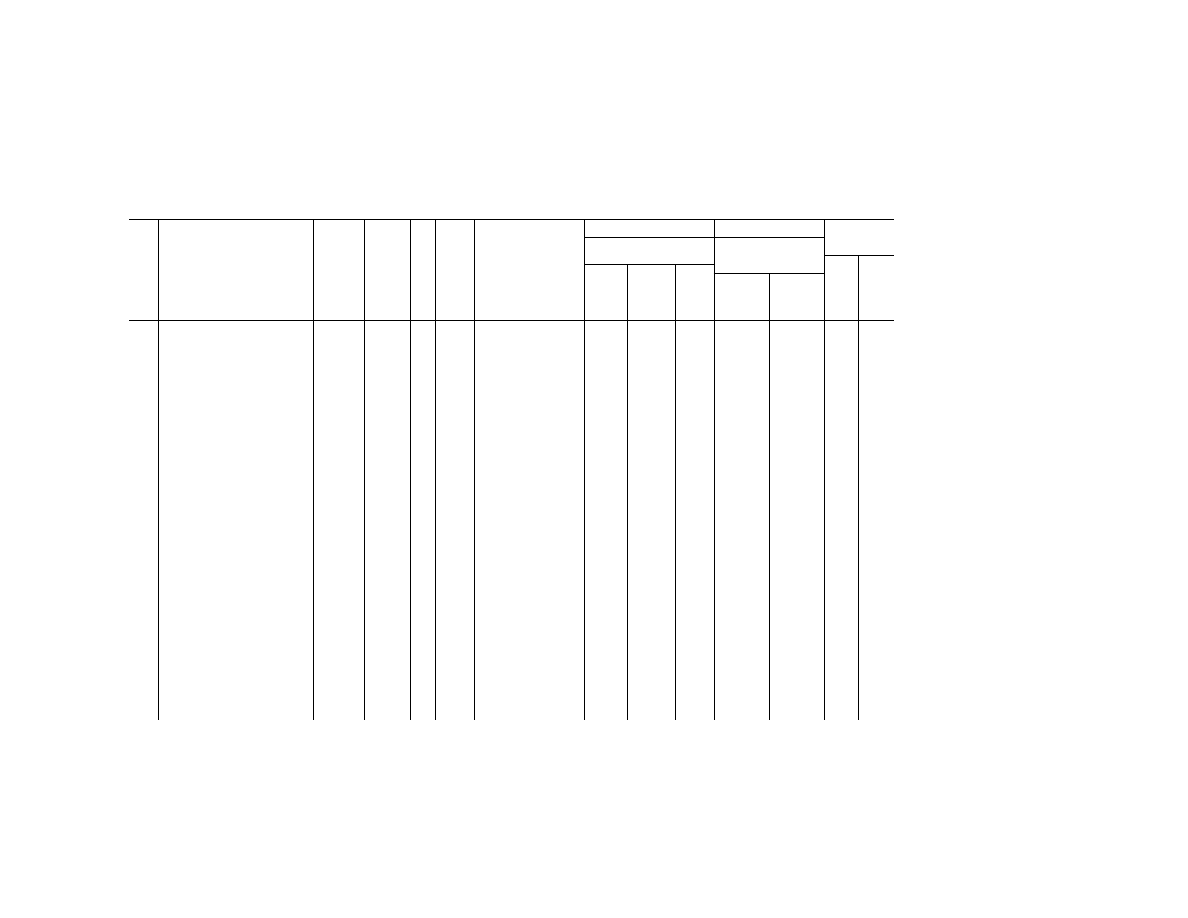
276
49 CFR Ch. I (10–1–23 Edition)
§
172.101
§ 172.101 H
AZARDOUS
M
ATERIALS
T
ABLE
—Continued
Sym-
bols
Hazardous materials descriptions
and proper shipping names
Hazard
class or
Division
Identi-
fication
Numbers
PG
Label
Codes
Special provisions
(§ 172.102)
(8)
(9)
(10)
Vessel
stowage
Packaging
(§ 173.***)
Quantity limitations
(see §§ 173.27 and
175.75)
Loca-
tion
Other
Excep-
tions
Non-bulk
Bulk
Passenger
aircraft/rail
Cargo air-
craft only
(1)
(2)
(3)
(4)
(5)
(6)
(7)
(8A)
(8B)
(8C)
(9A)
(9B)
(10A)
(10B)
II
3
144, IB2, T7, TP1, TP8,
TP28
150
202
242
5 L
60 L
B
III
3
144, B1, IB3, T4, TP1,
TP29
150
203
242
60 L
220 L
A
I
Petroleum sour crude oil, flam-
mable, toxic
3 UN3494
I
3, 6.1
343, T14, TP2, TP13 None
201
243
Forbidden
30 L
D
40
II
3, 6.1
343, IB2, T7, TP2 150
202
243
1 L
60 L
D
40
III
3, 6.1
343, IB3, T4, TP1 150
203
242
60 L
220 L
C
40
Phenacyl bromide
6.1 UN2645
II
6.1
IB8, IP2, IP4, T3, TP33 153
212
242
25 kg
100 kg
B
40
+
Phenetidines
6.1 UN2311
III
6.1
IB3, T4, TP1 153
203
241
60 L
220 L
A
Phenol, molten
6.1 UN2312
II
6.1
B14, T7, TP3 None
202
243
Forbidden
Forbidden
B
40
+
Phenol, solid
6.1 UN1671
II
6.1
IB8, IP2, IP4, N78, T3,
TP33
153
212
242
25 kg
100 kg
A
Phenol solutions
6.1 UN2821
II
6.1
IB2, T7, TP2 153
202
243
5 L
60 L
A
III
6.1
IB3, T4, TP1 153
203
241
60 L
220 L
A
Phenolsulfonic acid, liquid
8 UN1803
II
8
B2, IB2, N41, T7, TP2 154
202
242
1 L
30 L
C
14, 53,
58
Phenoxyacetic acid derivative pes-
ticide, liquid, flammable, toxic
flash point less than 23 degrees
C
3 UN3346
I
3, 6.1
T14, TP2, TP13, TP27 None
201
243
Forbidden
30 L
B
40
II
3, 6.1
IB2, T11, TP2, TP13,
TP27
150
202
243
1 L
60 L
B
40
Phenoxyacetic acid derivative pes-
ticide, liquid, toxic
6.1 UN3348
I
6.1
T14, TP2, TP13, TP27 None
201
243
1 L
30 L
B
40
II
6.1
IB2, T11, TP2, TP27 153
202
243
5 L
60 L
B
40
III
6.1
IB3, T7, TP2, TP28 153
203
241
60 L
220 L
A
40
Phenoxyacetic acid derivative pes-
ticide, liquid, toxic, flammable,
flash point not less than 23 de-
grees C
6.1 UN3347
I
6.1, 3
T14, TP2, TP13, TP27 None
201
243
1 L
30 L
B
40
II
6.1, 3
IB2, T11, TP2, TP13,
TP27
153
202
243
5 L
60 L
B
40
III
6.1, 3
IB3, T7, TP2, TP28 153
203
241
60 L
220 L
A
40
Phenoxyacetic acid derivative pes-
ticide, solid, toxic
6.1 UN3345
I
6.1
IB7, IP1, T6, TP33 None
211
242
5 kg
50 kg
A
40
II
6.1
IB8, IP2, IP4, T3, TP33 153
212
242
25 kg
100 kg
A
40
III
6.1
IB8, IP3, T1, TP33 153
213
240
100 kg
200 kg
A
40
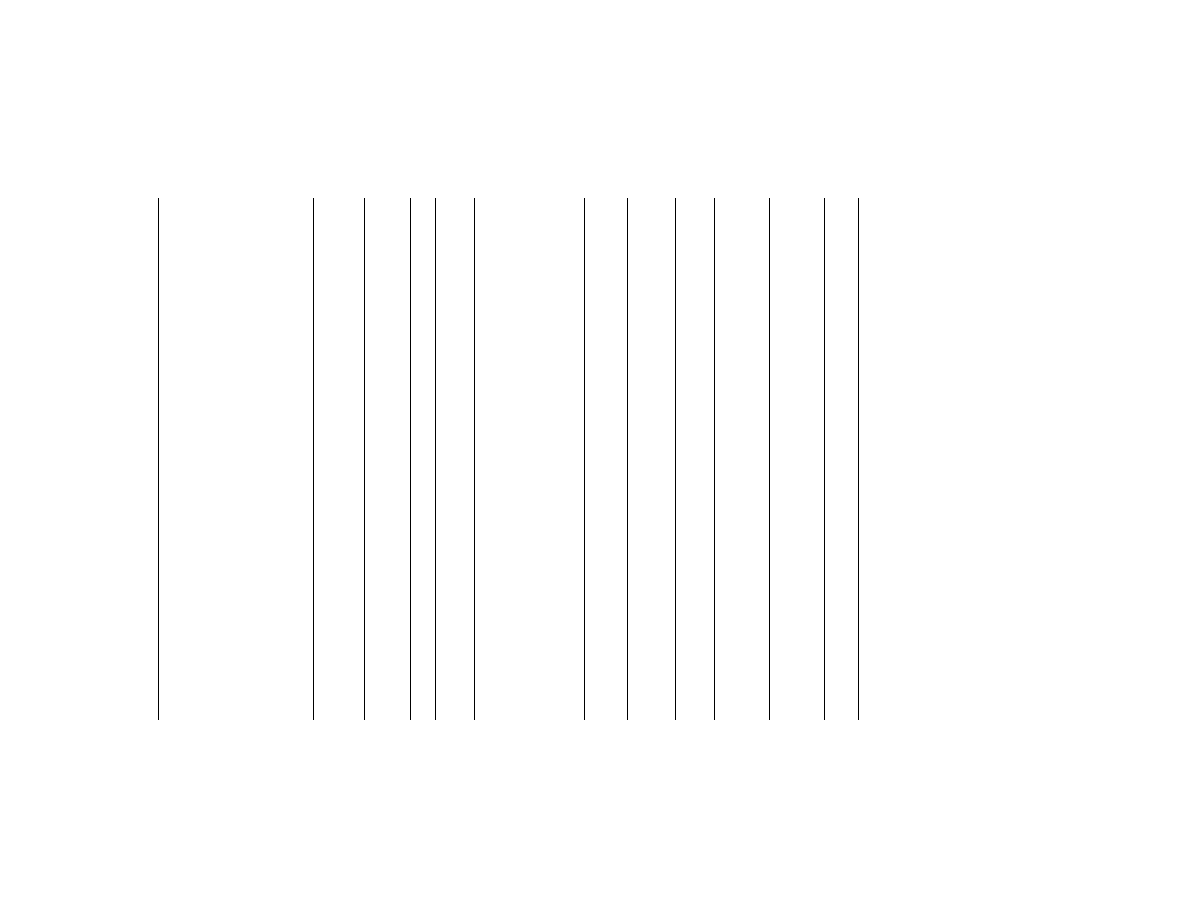
277
Pipeline and Haz. Matls. Safety Admin., DOT
§
172.101
Phenyl chloroformate
6.1 UN2746
II
6.1, 8
IB2, T7, TP2, TP13 153
202
243
1 L
30 L
A
12, 13,
25, 40,
53, 58
Phenyl isocyanate
6.1 UN2487
I
6.1, 3
2, B9, B14, B32, B77,
N33, N34, T20, TP2,
TP13, TP38, TP45
None
227
244
Forbidden
Forbidden
D
40
Phenyl mercaptan
6.1 UN2337
I
6.1, 3
2, B9, B14, B32, B77,
T20, TP2, TP13, TP38,
TP45
None
227
244
Forbidden
Forbidden
D
40, 52
Phenyl phosphorus dichloride
8 UN2798
II
8
B2, B15, IB2, T7, TP2 154
202
242
Forbidden
30 L
B
40, 53,
58
Phenyl phosphorus thiodichloride
8 UN2799
II
8
B2, B15, IB2, T7, TP2 154
202
242
Forbidden
30 L
B
40, 53,
58
Phenyl urea pesticides, liquid, toxic
6.1 UN3002
I
6.1
T14, TP2, TP27 None
201
243
1 L
30 L
B
40
II
6.1
T7, TP2 None
202
243
5 L
60 L
B
40
III
6.1
T4, TP1 153
203
241
60 L
220 L
A
40
Phenylacetonitrile, liquid
6.1 UN2470
III
6.1
IB3, T4, TP1 153
203
241
60 L
220 L
A
52
Phenylacetyl chloride
8 UN2577
II
8
B2, IB2, T7, TP2 154
202
242
1 L
30 L
C
40, 53,
58
Phenylcarbylamine chloride
6.1 UN1672
I
6.1
2, B9, B14, B32, T20,
TP2, TP13, TP38, TP45
None
227
244
Forbidden
Forbidden
D
40
m-Phenylene diaminediperchlorate
(dry)
Forbidden
+
Phenylenediamines (o-; m-; p-;)
6.1 UN1673
III
6.1
IB8, IP3, T1, TP33 153
213
240
100 kg
200 kg
A
Phenylhydrazine
6.1 UN2572
II
6.1
IB2, T7, TP2 153
202
243
5 L
60 L
A
40
Phenylmercuric acetate
6.1 UN1674
II
6.1
IB8, IP2, IP4, T3, TP33 153
212
242
25 kg
100 kg
A
G
Phenylmercuric compounds, n.o.s.
6.1 UN2026
I
6.1
IB7, IP1, T6, TP33 None
211
242
5 kg
50 kg
A
II
6.1
IB8, IP2, IP4, T3, TP33 153
212
242
25 kg
100 kg
A
III
6.1
IB8, IP3, T1, TP33 153
213
240
100 kg
200 kg
A
Phenylmercuric hydroxide
6.1 UN1894
II
6.1
IB8, IP2, IP4, T3, TP33 153
212
242
25 kg
100 kg
A
Phenylmercuric nitrate
6.1 UN1895
II
6.1
IB8, IP2, IP4, T3, TP33 153
212
242
25 kg
100 kg
A
Phenyltrichlorosilane
8 UN1804
II
8
A7, B6, N34, T10, TP2,
TP7, TP13
None
206
242
Forbidden
30 L
C
40, 53,
58
Phosgene
2.3 UN1076
......
2.3, 8
1, B7, B46, N86 None
192
314
Forbidden
Forbidden
D
40
9-Phosphabicyclononanes or
Cyclooctadiene phosphines
4.2 UN2940
II
4.2
A19, IB6, IP2, T3, TP33,
W31
None
212
241
15 kg
50 kg
A
Phosphine
2.3 UN2199
2.3,
2.1
1 None
192
245
Forbidden
Forbidden
D
40
Phosphine, adsorbed
2.3 UN3525
......
2.3,
2.1
1 None
302c
None
Forbidden
Forbidden
D
40
Phosphoric acid solution
8 UN1805
III
8
A7, IB3, N34, T4, TP1 154
203
241
5 L
60 L
A
53, 58
Phosphoric acid, solid
8 UN3453
III
8
IB8, IP3, T1, TP33 154
213
240
25 kg
100 kg
A
53, 58
Phosphoric acid triethyleneimine,
see Tris-(1-aziridiyl)phosphine
oxide, solution
Phosphoric anhydride, see Phos-
phorus pentoxide
Phosphorous acid
8 UN2834
III
8
IB8, IP3, T1, TP33 154
213
240
25 kg
100 kg
A
25, 53,
58
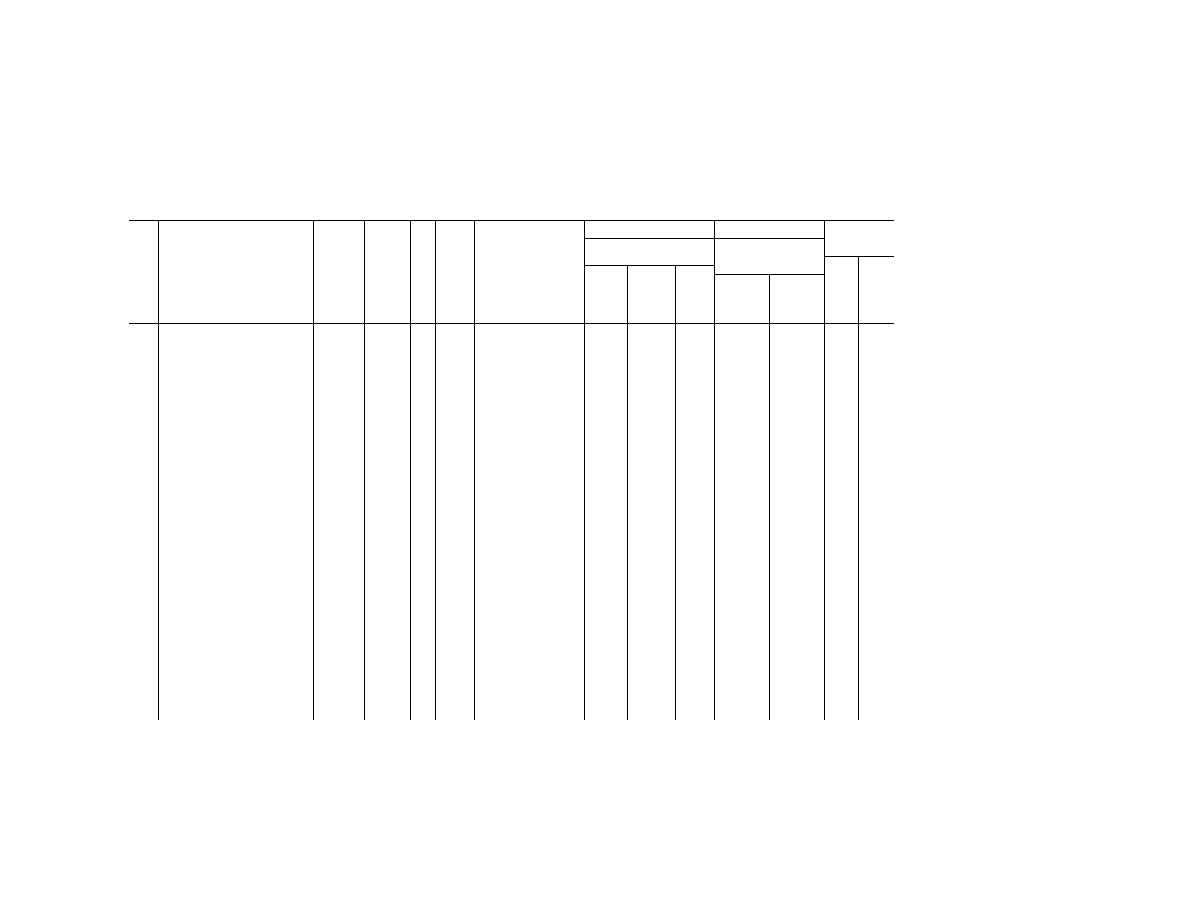
278
49 CFR Ch. I (10–1–23 Edition)
§
172.101
§ 172.101 H
AZARDOUS
M
ATERIALS
T
ABLE
—Continued
Sym-
bols
Hazardous materials descriptions
and proper shipping names
Hazard
class or
Division
Identi-
fication
Numbers
PG
Label
Codes
Special provisions
(§ 172.102)
(8)
(9)
(10)
Vessel
stowage
Packaging
(§ 173.***)
Quantity limitations
(see §§ 173.27 and
175.75)
Loca-
tion
Other
Excep-
tions
Non-bulk
Bulk
Passenger
aircraft/rail
Cargo air-
craft only
(1)
(2)
(3)
(4)
(5)
(6)
(7)
(8A)
(8B)
(8C)
(9A)
(9B)
(10A)
(10B)
Phosphorus, amorphous
4.1 UN1338
III
4.1
A1, A19, B1, B9, B26,
IB8, IP3, T1, TP33
151
213
243
25 kg
100 kg
A
74
Phosphorus bromide, see Phos-
phorus tribromide
Phosphorus chloride, see Phos-
phorus trichloride
Phosphorus heptasulfide, free from
yellow or white phosphorus
4.1 UN1339
II
4.1
A20, IB4, N34, T3,
TP33, W31
151
212
240
15 kg
50 kg
B
13, 74,
147,
148
Phosphorus oxybromide
8 UN1939
II
8
B8, IB8, IP2, IP4, N41,
N43, T3, TP33
154
212
240
Forbidden
50 kg
C
12, 25,
40, 53,
58
Phosphorus oxybromide, molten
8 UN2576
II
8
B2, B8, IB1, N41, N43,
T7, TP3, TP13
None
202
242
Forbidden
Forbidden
C
40, 53,
58
+
Phosphorus oxychloride
6.1 UN1810
I
6.1, 8
2, B9, B14, B32, B77,
N34, T20, TP2, TP13,
TP38, TP45
None
227
244
Forbidden
Forbidden
D
40
Phosphorus pentabromide
8 UN2691
II
8
A7, IB8, IP2, IP4, N34,
T3, TP33
154
212
240
Forbidden
50 kg
B
12, 25,
40, 53,
55, 58
Phosphorus pentachloride
8 UN1806
II
8
A7, IB8, IP2, IP4, N34,
T3, TP33
154
212
240
Forbidden
50 kg
C
40, 44,
53, 58,
89,
100,
141
Phosphorus Pentafluoride
2.3 UN2198
2.3, 8
2, B9, B14 None
302, 304
314,
315
Forbidden
Forbidden
D
40
Phosphorus pentafluoride, adsorbed
2.3 UN3524
......
2.3, 8
2, B9, B14 None
302c
None
Forbidden
Forbidden
D
40
Phosphorus pentasulfide, free from
yellow or white phosphorus
4.3 UN1340
II
4.3,
4.1
A20, B59, IB4, T3,
TP33, W31, W40
151
212
242
15 kg
50 kg
B
13, 74,
148
Phosphorus pentoxide
8 UN1807
II
8
A7, IB8, IP2, IP4, N34,
T3, TP33
154
212
240
15 kg
50 kg
A
53, 58
Phosphorus sesquisulfide, free from
yellow or white phosphorus
4.1 UN1341
II
4.1
A20, IB4, N34, T3,
TP33, W31
151
212
240
15 kg
50 kg
B
74
Phosphorus tribromide
8 UN1808
II
8
A3, A7, B2, B25, IB2,
N34, N43, T7, TP2
154
202
242
Forbidden
30 L
C
40, 53,
58
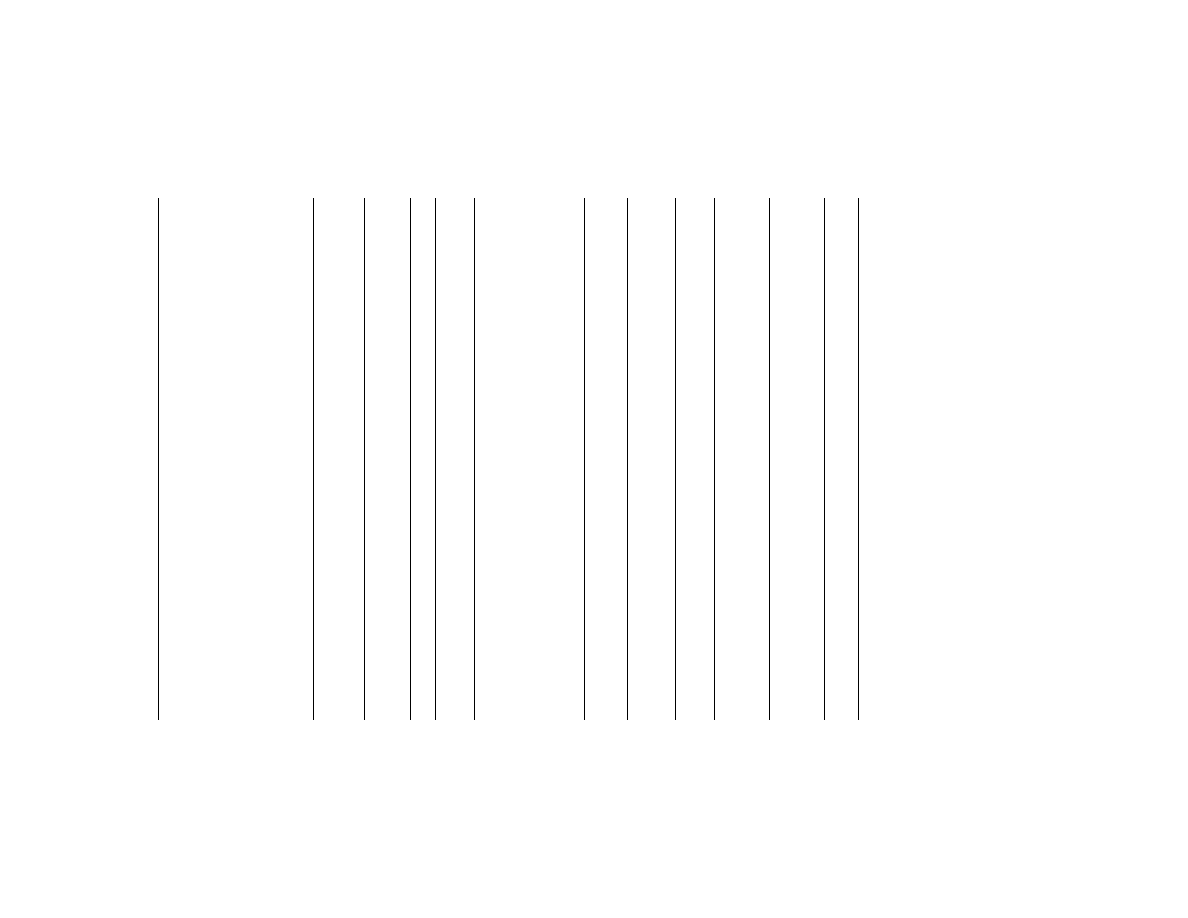
279
Pipeline and Haz. Matls. Safety Admin., DOT
§
172.101
Phosphorus trichloride
6.1 UN1809
I
6.1, 8
2, B9, B14, B15, B32,
B77, N34, T20, TP2,
TP13, TP38, TP45
None
227
244
Forbidden
Forbidden
C
40, 53,
58
Phosphorus trioxide
8 UN2578
III
8
IB8, IP3, T1, TP33 154
213
240
25 kg
100 kg
A
12, 25,
53, 58
Phosphorus trisulfide, free from yel-
low or white phosphorus
4.1 UN1343
II
4.1
A20, IB4, N34, T3,
TP33, W31
151
212
240
15 kg
50 kg
B
13, 74,
147,
148
Phosphorus, white dry or Phos-
phorus, white, under water or
Phosphorus white, in solution or
Phosphorus, yellow dry or Phos-
phorus, yellow, under water or
Phosphorus, yellow, in solution
4.2 UN1381
I
4.2,
6.1
B9, B26, N34, T9, TP3,
TP31, W31
None
188
243
Forbidden
Forbidden
E
Phosphorus white, molten
4.2 UN2447
I
4.2,
6.1
B9, B26, N34, T21, TP3,
TP7, TP26
None
188
243
Forbidden
Forbidden
D
Phosphorus (white or red) and a
chlorate, mixtures of
Forbidden
Phosphoryl chloride, see Phos-
phorus oxychloride
Phthalic anhydride with more than
.05 percent maleic anhydride
8 UN2214
III
8
IB8, IP3, T1, TP33 154
213
240
25 kg
100 kg
A
53, 58
Picolines
3 UN2313
III
3
B1, IB3, T4, TP1 150
203
242
60 L
220 L
A
40
Picric acid, see Trinitrophenol, etc
Picrite, see Nitroguanidine, etc
Picryl chloride, see
Trinitrochlorobenzene
Pine oil
3 UN1272
III
3
B1, IB3, T2, TP2 150
203
242
60 L
220 L
A
alpha-Pinene
3 UN2368
III
3
B1, IB3, T2, TP2 150
203
242
60 L
220 L
A
Piperazine
8 UN2579
III
8
IB8, IP3, T1, TP33 154
213
240
25 kg
100 kg
A
12, 25,
52
Piperidine
8 UN2401
I
8, 3
A10, T10, TP2 None
201
243
0.5 L
2.5 L
B
52
Pivaloyl chloride, see
Trimethylacetyl chloride
Plastic molding compound in
dough, sheet or extruded rope
form evolving flammable vapor
9 UN3314
III
9
32, IB8, IP3, IP7 155
221
221
100 kg
200 kg
E
21, 25,
87, 144
Plastic solvent, n.o.s., see Flam-
mable liquids, n.o.s.
Plastics, nitrocellulose-based, self-
heating, n.o.s.
4.2 UN2006
III
4.2
None
213
None
Forbidden
Forbidden
C
Poisonous gases, n.o.s., see Com-
pressed or liquefied gases, flam-
mable or toxic, n.o.s.
Polyalkylamines, n.o.s., see
Amines, etc
Polyamines, flammable, corrosive,
n.o.s. see Amines, flammable,
corrosive, n.o.s
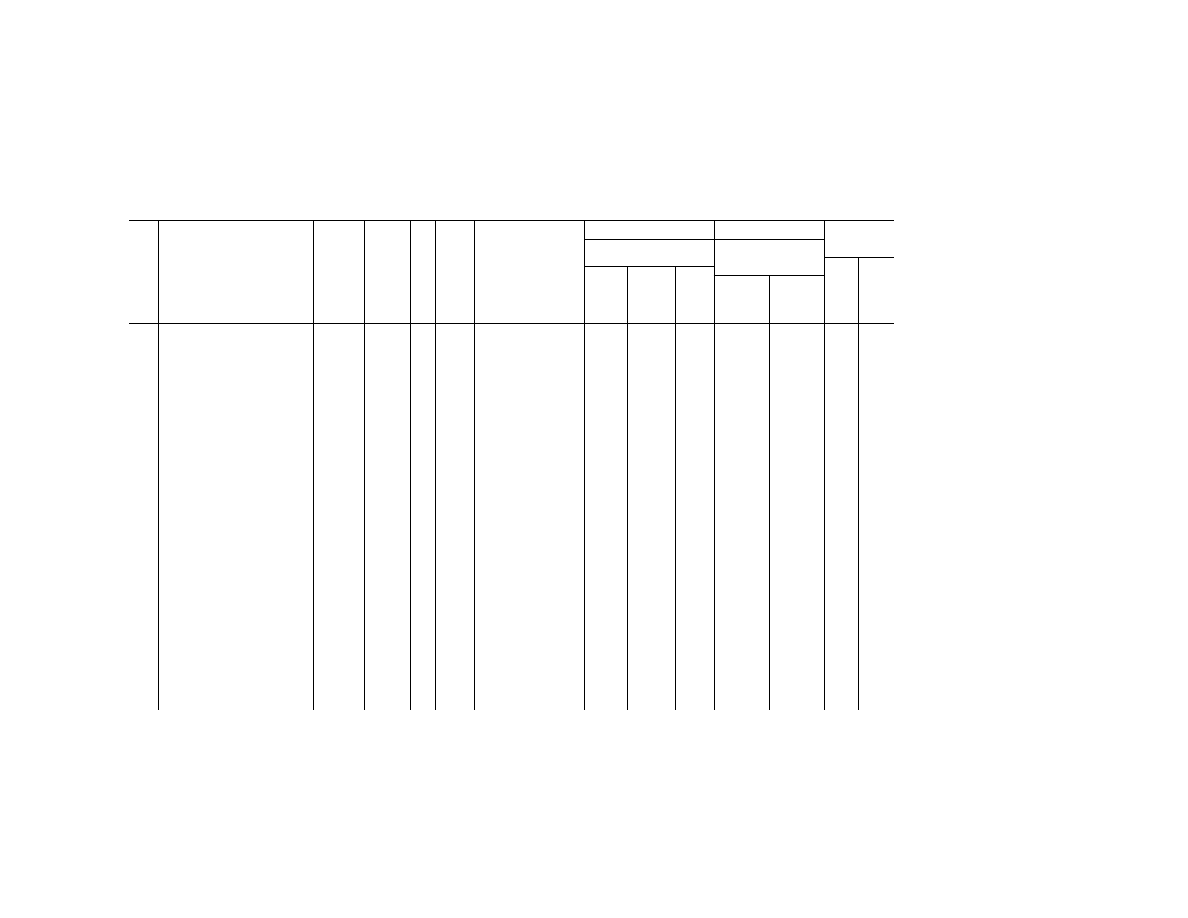
280
49 CFR Ch. I (10–1–23 Edition)
§
172.101
§ 172.101 H
AZARDOUS
M
ATERIALS
T
ABLE
—Continued
Sym-
bols
Hazardous materials descriptions
and proper shipping names
Hazard
class or
Division
Identi-
fication
Numbers
PG
Label
Codes
Special provisions
(§ 172.102)
(8)
(9)
(10)
Vessel
stowage
Packaging
(§ 173.***)
Quantity limitations
(see §§ 173.27 and
175.75)
Loca-
tion
Other
Excep-
tions
Non-bulk
Bulk
Passenger
aircraft/rail
Cargo air-
craft only
(1)
(2)
(3)
(4)
(5)
(6)
(7)
(8A)
(8B)
(8C)
(9A)
(9B)
(10A)
(10B)
Polyamines, liquid, corrosive, n.o.s.
see Amines, liquid, corrosive,
n.o.s
Polyamines, liquid, corrosive, flam-
mable, n.o.s. see Amines, liquid,
corrosive, flammable, n.o.s
Polychlorinated biphenyls, liquid
9 UN2315
II
9
9, 81, 140, IB3, T4, TP1 155
202
241
100 L
220 L
A
95
Polychlorinated biphenyls, solid
9 UN3432
II
9
9, 81,140, IB8, IP2, IP4,
T3, TP33
155
212
240
100 kg
200 kg
A
95
Polyester resin kit, liquid base ma-
terial
3 UN3269
......
3
40, 149 165
165
None
5 kg
5 kg
B
Polyester resin kit, solid base mate-
rial
4.1 UN3527
......
4.1
40, 157 165
165
None
5 kg
5 kg
B
Polyhalogenated biphenyls, liquid or
Halogenated
monomethyldiphenyl-methanes,
liquid or Polyhalogenated
terphenyls, liquid
9 UN3151
II
9
IB2 155
204
241
100 L
220 L
A
95
Polyhalogenated biphenyls, solid or
Halogenated
monomethyldiphenyl-methanes,
solid or Polyhalogenated
terphenyls, solid
9 UN3152
II
9
IB8, IP2, IP4, T3, TP33 155
204
241
100 kg
200 kg
A
95
Polymeric beads expandable, evolv-
ing flammable vapor
9 UN2211
III
9
32, IB8, IP3, IP7, T1,
TP33
155
221
221
100 kg
200 kg
E
21, 25,
87, 144
G
Polymerizing substance, liquid, sta-
bilized, n.o.s
4.1 UN3532
III
4.1
387, 421, IB3, IP19,
N92, T7, TP4, TP6
None
203
241
10 L
25 L
D
25, 52,
53
G
Polymerizing substance, liquid, tem-
perature controlled, n.o.s
4.1 UN3534
III
4.1
387, 421, IB3, IP19,
N92, T7, TP4, TP6
None
203
241
Forbidden
Forbidden
D
2, 25,
52, 53
G
Polymerizing substance, solid, sta-
bilized, n.o.s
4.1 UN3531
III
4.1
387, 421, IB7, IP19,
N92, T7, TP4, TP6,
TP33
None
213
240
10 kg
25 kg
D
25, 52,
53
G
Polymerizing substance, solid, tem-
perature controlled, n.o.s
4.1 UN3533
III
4.1
387, 421, IB7, IP19,
N92, T7, TP4, TP6,
TP33
None
213
240
Forbidden
Forbidden
D
2, 25,
52, 53
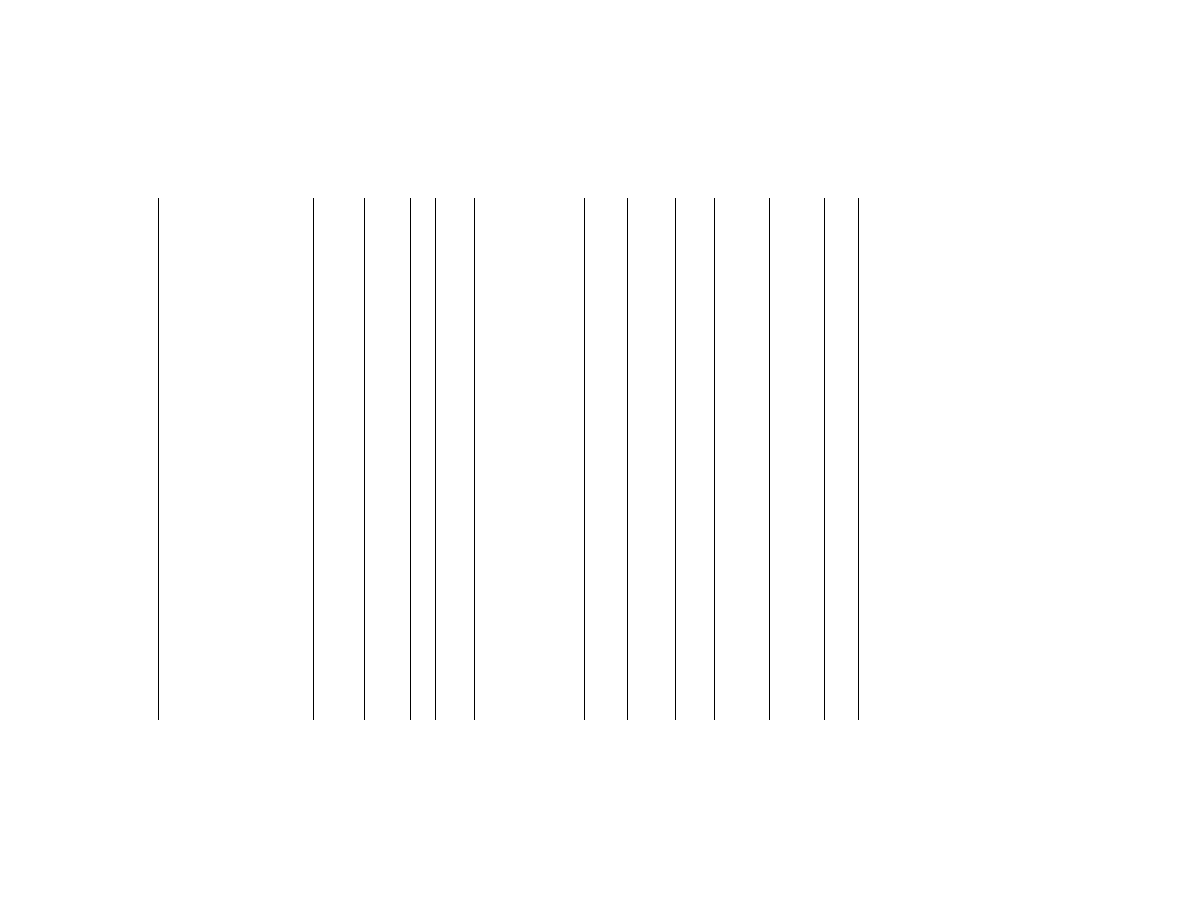
281
Pipeline and Haz. Matls. Safety Admin., DOT
§
172.101
Potassium
4.3 UN2257
I
4.3
A7, A19, A20, B27, IB4,
IP1, N6, N34, T9, TP7,
TP33, W31
151
211
244
Forbidden
15 kg
D
13, 52,
148
Potassium arsenate
6.1 UN1677
II
6.1
IB8, IP2, IP4, T3, TP33 153
212
242
25 kg
100 kg
A
Potassium arsenite
6.1 UN1678
II
6.1
IB8, IP2, IP4, T3, TP33 153
212
242
25 kg
100 kg
A
Potassium bisulfite solution, see
Bisulfites, aqueous solutions,
n.o.s.
Potassium borohydride
4.3 UN1870
I
4.3
A19, N40, W31 None
211
242
Forbidden
15 kg
E
13, 52,
148
Potassium bromate
5.1 UN1484
II
5.1
IB8, IP2, IP4, T3, TP33 152
212
242
5 kg
25 kg
A
56, 58
Potassium carbonyl
Forbidden
Potassium chlorate
5.1 UN1485
II
5.1
A9, IB8, IP2, IP4, N34,
T3, TP33
152
212
242
5 kg
25 kg
A
56, 58
Potassium chlorate, aqueous solu-
tion
5.1 UN2427
II
5.1
A2, IB2, T4, TP1 152
202
241
1 L
5 L
B
56, 58,
133
III
5.1
A2, IB2, T4, TP1 152
203
241
2.5 L
30 L
B
56, 58,
69, 133
Potassium chlorate mixed with min-
eral oil, see Explosive, blasting,
type C
Potassium cuprocyanide
6.1 UN1679
II
6.1
IB8, IP2, IP4, T3, TP33 153
212
242
25 kg
100 kg
A
52
Potassium cyanide, solid
6.1 UN1680
I
6.1
B69, B77, IB7, IP1, N74,
N75, T6, TP33, W31
None
211
242
5 kg
50 kg
B
52
Potassium cyanide solution
6.1 UN3413
I
6.1
B69, B77, N74, N75,
T14, TP2, TP13, W31
None
201
243
1 L
30 L
B
52
II
6.1
B69, B77, IB2, N74,
N75, T11, TP2, TP13,
TP27, W31
153
202
243
5 L
60 L
B
52
III
6.1
B69, B77, IB3, N74,
N75, T7, TP2, TP13,
TP28, W31
153
203
241
60 L
220 L
A
52
Potassium dichloro isocyanurate or
Potassium dichloro-s-
triazinetrione, see
Dichloroisocyanuric acid, dry or
Dichloroisocyanuric acid salts etc
Potassium dithionite or Potassium
hydrosulfite
4.2 UN1929
II
4.2
A8, A19, A20, IB6, IP2,
T3, TP33, W31
None
212
241
15 kg
50 kg
E
13
Potassium fluoride, solid
6.1 UN1812
III
6.1
IB8, IP3, T1, TP33 153
213
240
100 kg
200 kg
A
52
Potassium fluoride solution
6.1 UN3422
III
6.1
IB3, T4, TP1 153
203
241
60 L
220 L
A
52
Potassium fluoroacetate
6.1 UN2628
I
6.1
IB7, IP1, T6, TP33 None
211
242
5 kg
50 kg
E
Potassium fluorosilicate
6.1 UN2655
III
6.1
IB8, IP3, T1, TP33 153
213
240
100 kg
200 kg
A
52
Potassium hydrate, see Potassium
hydroxide, solid
Potassium hydrogen fluoride, see
Potassium hydrogen difluoride
Potassium hydrogen fluoride solu-
tion, see Corrosive liquid, n.o.s.
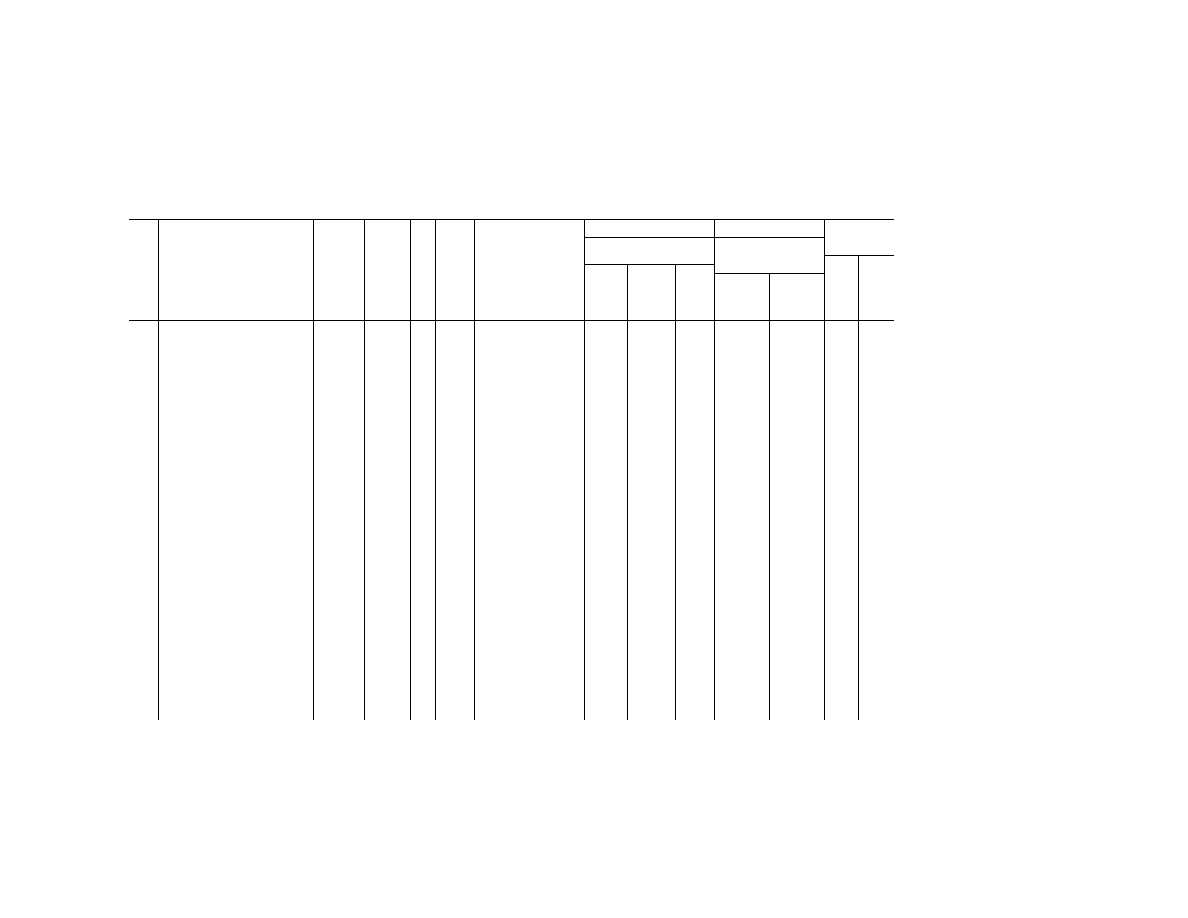
282
49 CFR Ch. I (10–1–23 Edition)
§
172.101
§ 172.101 H
AZARDOUS
M
ATERIALS
T
ABLE
—Continued
Sym-
bols
Hazardous materials descriptions
and proper shipping names
Hazard
class or
Division
Identi-
fication
Numbers
PG
Label
Codes
Special provisions
(§ 172.102)
(8)
(9)
(10)
Vessel
stowage
Packaging
(§ 173.***)
Quantity limitations
(see §§ 173.27 and
175.75)
Loca-
tion
Other
Excep-
tions
Non-bulk
Bulk
Passenger
aircraft/rail
Cargo air-
craft only
(1)
(2)
(3)
(4)
(5)
(6)
(7)
(8A)
(8B)
(8C)
(9A)
(9B)
(10A)
(10B)
Potassium hydrogen sulfate
8 UN2509
II
8
A7, IB8, IP2, IP4, N34,
T3, TP33
154
212
240
15 kg
50 kg
A
53, 58
Potassium hydrogendifluoride solid
8 UN1811
II
8, 6.1
IB8, IP2, IP4, N3, N34,
T3, TP33
154
212
240
15 kg
50 kg
A
25, 40,
52, 53,
58
Potassium hydrogendifluoride solu-
tion
8 UN3421
II
8, 6.1
IB2, N3, N34, T7, TP2 154
202
243
1 L
30 L
A
25, 40,
52, 53,
58
III
8, 6.1
IB3, N3, N34, T4, TP1 154
203
241
5 L
60 L
A
40, 52,
53, 58
Potassium hydrosulfite, see Potas-
sium dithionite
Potassium hydroxide, liquid, see
Potassium hydroxide solution
Potassium hydroxide, solid
8 UN1813
II
8
IB8, IP2, IP4, T3, TP33 154
212
240
15 kg
50 kg
A
52.
Potassium hydroxide, solution
8 UN1814
II
8
B2, IB2, T7, TP2 154
202
242
1 L
30 L
A
52.
III
8
IB3, T4, TP1 154
203
241
5 L
60 L
A
52.
Potassium hypochlorite, solution,
see Hypochlorite solutions, etc
Potassium, metal alloys, liquid
4.3 UN1420
I
4.3
A7, A19, A20, B27, W31 None
201
244
Forbidden
1 L
E
13, 40,
52, 148
Potassium, metal alloys, solid
4.3 UN3403
I
4.3
A19, A20, B27, IB4, IP1,
T9, TP7, TP33, W31
None
211
244
Forbidden
15 kg
D
13, 52,
148
Potassium metavanadate
6.1 UN2864
II
6.1
IB8, IP2, IP4, T3, TP33 153
212
242
25 kg
100 kg
A
Potassium monoxide
8 UN2033
II
8
IB8, IP2, IP4, T3, TP33 154
212
240
15 kg
50 kg
A
29, 52.
Potassium nitrate
5.1 UN1486
III
5.1
A1, A29, B120 IB8, IP3,
T1, TP33, W1
152
213
240
25 kg
100 kg
A
Potassium nitrate and sodium nitrite
mixtures
5.1 UN1487
II
5.1
B78, IB8, IP2, IP4, T3,
TP33
152
212
240
5 kg
25 kg
A
56, 58
Potassium nitrite
5.1 UN1488
II
5.1
IB8, IP2, IP4, T3, TP33 152
212
242
5 kg
25 kg
A
56, 58
Potassium perchlorate
5.1 UN1489
II
5.1
IB6, IP2, T3, TP33 152
212
242
5 kg
25 kg
A
56, 58
Potassium permanganate
5.1 UN1490
II
5.1
IB8, IP2, IP4, T3, TP33 152
212
240
5 kg
25 kg
D
56, 58,
138
Potassium peroxide
5.1 UN1491
I
5.1
A20, IB6, IP1, N34 None
211
None
Forbidden
15 kg
C
13, 52,
66, 75,
148
Potassium persulfate
5.1 UN1492
III
5.1
A1, A29, IB8, IP3, T1,
TP33
152
213
240
25 kg
100 kg
A
58, 145
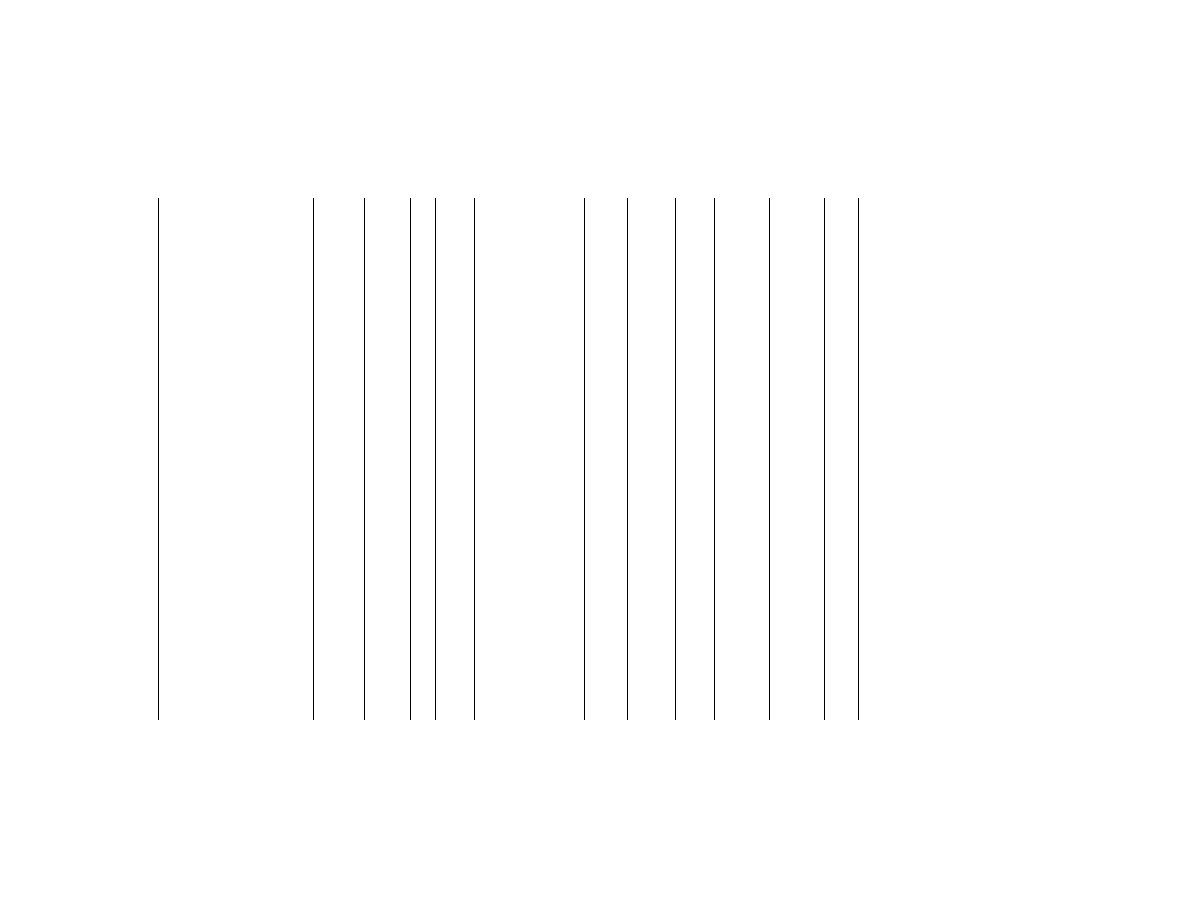
283
Pipeline and Haz. Matls. Safety Admin., DOT
§
172.101
Potassium phosphide
4.3 UN2012
I
4.3,
6.1
A19, N40, W31 None
211
None
Forbidden
15 kg
E
13, 40,
52, 85,
148
Potassium selenate, see Selenates
or Selenites
Potassium selenite, see Selenates
or Selenites
Potassium sodium alloys, liquid
4.3 UN1422
I
4.3
A7, A19, B27, N34, N40,
T9, TP3, TP7, TP31,
W31
None
201
244
Forbidden
1 L
E
13, 40,
52, 148
Potassium sodium alloys, solid
4.3 UN3404
I
4.3
A19, B27, N34, N40, T9,
TP7, TP33, W31
None
211
244
Forbidden
15 kg
D
13, 52,
148
Potassium sulfide, anhydrous or
Potassium sulfide with less than
30 percent water of crystallization
4.2 UN1382
II
4.2
A19, A20, B16, IB6, IP2,
N34, T3, TP33, W31,
W40
None
212
241
15 kg
50 kg
A
52
Potassium sulfide, hydrated with not
less than 30 percent water of
crystallization
8 UN1847
II
8
IB8, IP2, IP4, T3, TP33 154
212
240
15 kg
50 kg
A
52
Potassium superoxide
5.1 UN2466
I
5.1
A20, IB6, IP1 None
211
None
Forbidden
15 kg
D
13, 52,
66, 75,
148
Powder cake, wetted or Powder
paste, wetted with not less than
17 percent alcohol by mass
1.1C UN0433
......
1.1C
........................................
None
62
None
Forbidden
Forbidden
04
25
Powder cake, wetted or Powder
paste, wetted with not less than
25 percent water, by mass
1.3C UN0159
......
1.3C
........................................
None
62
None
Forbidden
Forbidden
04
25
Powder paste, see Powder cake,
etc
Powder, smokeless
1.1C UN0160
......
1.1C
........................................
None
62
None
Forbidden
Forbidden
04
25,
26E
Powder, smokeless
1.3C UN0161
......
1.3C
........................................
None
62
None
Forbidden
Forbidden
04
25,
26E
Powder, smokeless
1.4C UN0509
......
1.4C
16 171
62
None
Forbidden
75 kg
02
25
Power device, explosive, see Car-
tridges, power device
Primers, cap type
1.4S UN0044
......
None
........................................
None
62
None
25 kg
100 kg
01
25
Primers, cap type
1.1B UN0377
......
1.1B
........................................
None
62
None
Forbidden
Forbidden
05
25
Primers, cap type
1.4B UN0378
......
1.4B
........................................
None
62
None
Forbidden
75 kg
05
25
Primers, small arms, see Primers,
cap type
Primers, tubular
1.3G UN0319
......
1.3G
........................................
None
62
None
Forbidden
Forbidden
03
25
Primers, tubular
1.4G UN0320
......
1.4G
........................................
None
62
None
Forbidden
75 kg
02
25
Primers, tubular
1.4S UN0376
......
None
........................................
None
62
None
25 kg
100 kg
01
25
Printing ink, flammable or Printing
ink related material (including
printing ink thinning or reducing
compound), flammable
3 UN1210
I
3
367, T11, TP1, TP8 150
173
243
1 L
30 L
E
II
3
149, 367, IB2, T4, TP1,
TP8
150
173
242
5 L
60 L
B
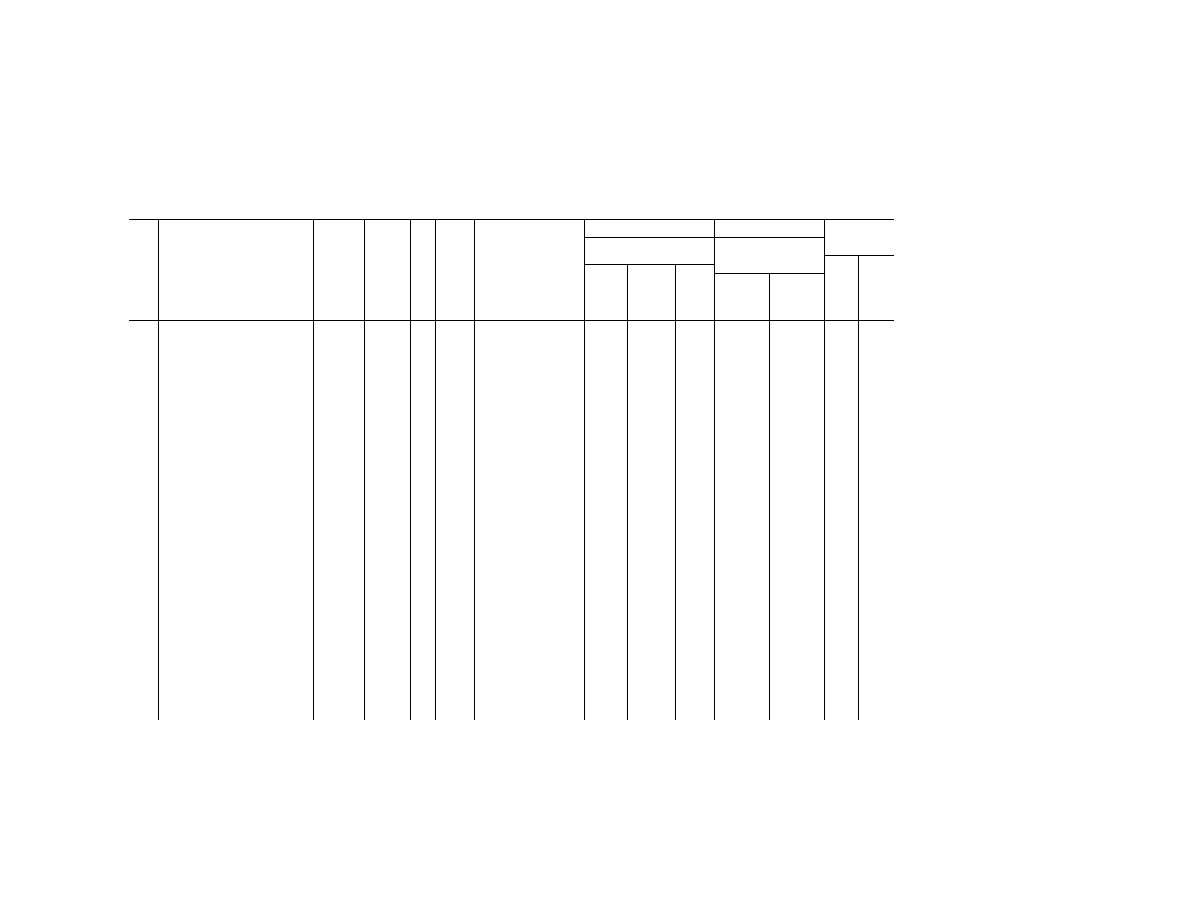
284
49 CFR Ch. I (10–1–23 Edition)
§
172.101
§ 172.101 H
AZARDOUS
M
ATERIALS
T
ABLE
—Continued
Sym-
bols
Hazardous materials descriptions
and proper shipping names
Hazard
class or
Division
Identi-
fication
Numbers
PG
Label
Codes
Special provisions
(§ 172.102)
(8)
(9)
(10)
Vessel
stowage
Packaging
(§ 173.***)
Quantity limitations
(see §§ 173.27 and
175.75)
Loca-
tion
Other
Excep-
tions
Non-bulk
Bulk
Passenger
aircraft/rail
Cargo air-
craft only
(1)
(2)
(3)
(4)
(5)
(6)
(7)
(8A)
(8B)
(8C)
(9A)
(9B)
(10A)
(10B)
III
3
367, B1, IB3, T2, TP1 150
173
242
60 L
220 L
A
Projectiles, illuminating, see Ammu-
nition, illuminating, etc
Projectiles, inert with tracer
1.4S UN0345
......
1.4S
........................................
62
62
25 kg
100 kg
01
25
Projectiles, inert, with tracer
1.3G UN0424
......
1.3G
........................................
62
62
Forbidden
Forbidden
03
25
Projectiles, inert, with tracer
1.4G UN0425
......
1.4G
........................................
62
62
Forbidden
75 kg
02
25
Projectiles, with burster or expelling
charge
1.2D UN0346
......
1.2D
........................................
62
62
Forbidden
Forbidden
03
25
Projectiles, with burster or expelling
charge
1.4D UN0347
......
1.4D
........................................
62
62
Forbidden
75 kg
02
25
Projectiles, with burster or expelling
charge
1.2F UN0426
......
1.2F
........................................
62
None
Forbidden
Forbidden
03
25
Projectiles, with burster or expelling
charge
1.4F UN0427
......
1.4F
........................................
62
None
Forbidden
Forbidden
03
25
Projectiles, with burster or expelling
charge
1.2G UN0434
......
1.2G
........................................
62
62
Forbidden
Forbidden
03
25
Projectiles, with burster or expelling
charge
1.4G UN0435
......
1.4G
........................................
62
62
Forbidden
75 kg
02
25
Projectiles, with bursting charge
1.1F UN0167
......
1.1F
........................................
62
None
Forbidden
Forbidden
03
25
Projectiles, with bursting charge
1.1D UN0168
......
1.1D
........................................
62
62
Forbidden
Forbidden
03
25
Projectiles, with bursting charge
1.2D UN0169
......
1.2D
........................................
62
62
Forbidden
Forbidden
03
25
Projectiles, with bursting charge
1.2F UN0324
......
1.2F
........................................
62
None
Forbidden
Forbidden
03
25
Projectiles, with bursting charge
1.4D UN0344
......
1.4D
........................................
62
62
Forbidden
75 kg
02
25
Propadiene, stabilized
2.1 UN2200
......
2.1
387 None
304
314,
315
Forbidden
150 kg
B
25, 40
Propadiene mixed with methyl acet-
ylene, see Methyl acetylene and
propadiene mixtures, stabilized
Propane, see also Petroleum
gases, liquefied
2.1 UN1978
......
2.1
19, T50, N95 306
304
314,
315
Forbidden
150 kg
E
40
Propanethiols
3 UN2402
II
3
IB2, T4, TP1, TP13 150
202
242
5 L
60 L
E
95, 102
n-Propanol or Propyl alcohol, nor-
mal
3 UN1274
II
3
B1, IB2, T4, TP1 150
202
242
5 L
60 L
B
III
3
B1, IB3, T2, TP1 150
203
242
60 L
220 L
A
Propellant, liquid
1.3C UN0495
......
1.3C
37 None
62
None
Forbidden
Forbidden
04
25
Propellant, liquid
1.1C UN0497
......
1.1C
37 None
62
None
Forbidden
Forbidden
04
25
Propellant, solid
1.1C UN0498
......
1.1C
........................................
None
62
None
Forbidden
Forbidden
04
25,
26E
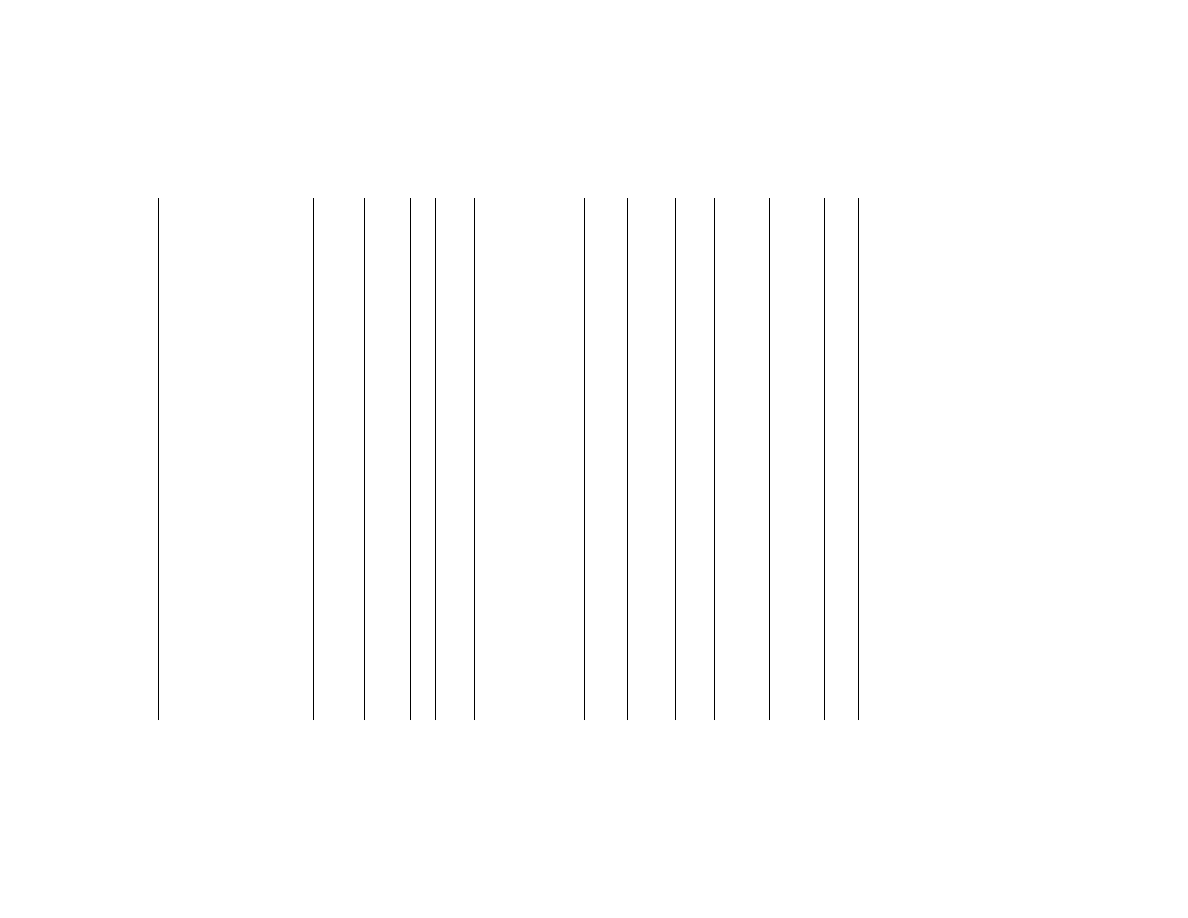
285
Pipeline and Haz. Matls. Safety Admin., DOT
§
172.101
Propellant, solid
1.3C UN0499
......
1.3C
........................................
None
62
None
Forbidden
Forbidden
04
25,
26E
Propellant, solid
1.4C UN0501
......
1.4C
........................................
None
62
None
Forbidden
75 kg
02
25
Propionaldehyde
3 UN1275
II
3
IB2, T7, TP1 150
202
242
5 L
60 L
E
Propionic acid with not less than
90% acid by mass
8 UN3463
II
8, 3
IB2, T7, TP2 154
202
243
1 L
30 L
A
53, 58
Propionic acid with not less than
10% and less than 90% acid by
mass
8 UN1848
III
8
IB3, T4, TP1 154
203
241
5 L
60 L
A
53, 58
Propionic anhydride
8 UN2496
III
8
IB3, T4, TP1 154
203
241
5 L
60 L
A
53, 58
Propionitrile
3 UN2404
II
3, 6.1
IB2, T7, TP1, TP13 150
202
243
Forbidden
60 L
E
40
Propionyl chloride
3 UN1815
II
3, 8
IB1, T7, TP1 150
202
243
1 L
5 L
B
40, 53,
58
n-Propyl acetate
3 UN1276
II
3
IB2, T4, TP1 150
202
242
5 L
60 L
B
Propyl alcohol, see Propanol
n-Propyl benzene
3 UN2364
III
3
B1, IB3, T2, TP1 150
203
242
60 L
220 L
A
n-Propyl chloroformate
6.1 UN2740
I
6.1, 3,
8
2, B9, B14, B32, B77,
N34, T20, TP2, TP13,
TP38, TP44
None
227
244
Forbidden
Forbidden
B
21, 40,
53, 58,
100
Propyl chloride see 1-
Chloropropane
Propyl formates
3 UN1281
II
3
IB2, T4, TP1 150
202
242
5 L
60 L
B
n-Propyl isocyanate
6.1 UN2482
I
6.1, 3
1, B9, B14, B30, T20,
TP2, TP13, TP38, TP44
None
226
244
Forbidden
Forbidden
D
40
Propyl mercaptan, see
Propanethiols
n-Propyl nitrate
3 UN1865
II
3
IB9 150
202
None
5 L
60 L
D
44, 89,
90, 100
Propylamine
3 UN1277
II
3, 8
A7, IB2, N34, T7, TP1 150
202
243
1 L
5 L
E
40, 52
Propylene see also Petroleum
gases, liquefied
2.1 UN1077
2.1
19, T50 306
304
314,
315
Forbidden
150 kg
E
40
Propylene chlorohydrin
6.1 UN2611
II
6.1, 3
IB2, T7, TP2, TP13 153
202
243
5 L
60 L
A
12, 25,
40
Propylene oxide
3 UN1280
I
3
N34, T11, TP2, TP7 None
201
243
1 L
30 L
E
40
Propylene tetramer
3 UN2850
III
3
B1, IB3, T2, TP2 150
203
242
60 L
220 L
A
1,2-Propylenediamine
8 UN2258
II
8, 3
A3, IB2, N34, T7, TP2 154
202
243
1 L
30 L
A
40, 52
Propyleneimine, stabilized
3 UN1921
I
3, 6.1
N34, T14, TP2, TP13 None
201
243
1 L
30 L
D
40
Propyltrichlorosilane
8 UN1816
II
8, 3
A7, B2, B6, N34, T10,
TP2, TP7, TP13
None
206
243
Forbidden
30 L
C
40, 53,
58
Prussic acid, see Hydrogen cyanide
Pyrethroid pesticide, liquid, flam-
mable, toxic, flash point less than
23 degrees C
3 UN3350
I
3, 6.1
T14, TP2, TP13, TP27 None
201
243
Forbidden
30 L
B
40
II
3, 6.1
IB2, T11, TP2, TP13,
TP27
150
202
243
1 L
60 L
B
40
Pyrethroid pesticide, liquid toxic
6.1 UN3352
I
6.1
T14, TP2, TP13, TP27 None
201
243
1 L
30 L
B
40
II
6.1
IB2, T11, TP2, TP27 153
202
243
5 L
60 L
B
40
III
6.1
IB3, T7, TP2, TP28 153
203
241
60 L
220 L
A
40
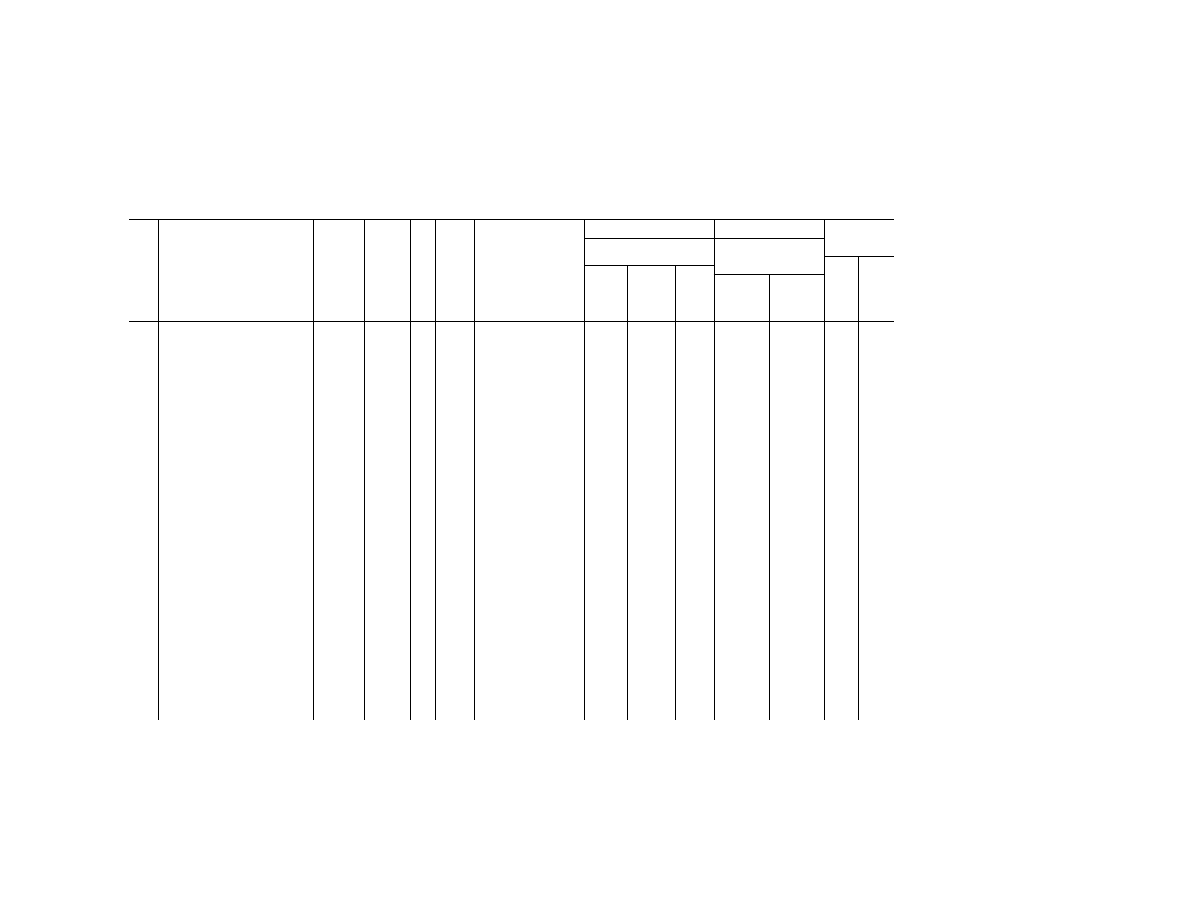
286
49 CFR Ch. I (10–1–23 Edition)
§
172.101
§ 172.101 H
AZARDOUS
M
ATERIALS
T
ABLE
—Continued
Sym-
bols
Hazardous materials descriptions
and proper shipping names
Hazard
class or
Division
Identi-
fication
Numbers
PG
Label
Codes
Special provisions
(§ 172.102)
(8)
(9)
(10)
Vessel
stowage
Packaging
(§ 173.***)
Quantity limitations
(see §§ 173.27 and
175.75)
Loca-
tion
Other
Excep-
tions
Non-bulk
Bulk
Passenger
aircraft/rail
Cargo air-
craft only
(1)
(2)
(3)
(4)
(5)
(6)
(7)
(8A)
(8B)
(8C)
(9A)
(9B)
(10A)
(10B)
Pyrethroid pesticide, liquid, toxic,
flammable, flash point not less
than 23 degrees C
6.1 UN3351
I
6.1, 3
T14, TP2, TP13, TP27 None
201
243
1 L
30 L
B
40
II
6.1, 3
IB2, T11, TP2, TP13,
TP27
153
202
243
5 L
60 L
B
40
III
6.1, 3
IB3, T7, TP2, TP28 153
203
241
60 L
220 L
B
40
Pyrethroid pesticide, solid, toxic
6.1 UN3349
I
6.1
IB7, IP1, T6, TP33 None
211
242
5 kg
50 kg
A
40
II
6.1
IB8, IP2, IP4, T3, TP33 153
212
242
25 kg
100 kg
A
40
III
6.1
IB8, IP3, T1, TP33 153
213
240
100 kg
200 kg
A
40
Pyridine
3 UN1282
II
3
IB2, T4, TP2 150
202
242
5 L
60 L
B
21, 100
Pyridine perchlorate
Forbidden
G
Pyrophoric liquid, inorganic, n.o.s
4.2 UN3194
I
4.2
........................................
None
181
244
Forbidden
Forbidden
D
13, 78,
148
G
Pyrophoric liquids, organic, n.o.s
4.2 UN2845
I
4.2
B11, T22, TP2, TP7,
W31
None
187
244
Forbidden
Forbidden
D
13, 78,
148
G
Pyrophoric metals, n.o.s., or
Pyrophoric alloys, n.o.s
4.2 UN1383
I
4.2
B11, T21, TP7, TP33,
W31
None
187
242
Forbidden
Forbidden
D
13, 148
G
Pyrophoric solid, inorganic, n.o.s
4.2 UN3200
I
4.2
T21, TP7, TP33, W31 None
187
242
Forbidden
Forbidden
D
13, 148
G
Pyrophoric solids, organic, n.o.s
4.2 UN2846
I
4.2
W31 None
187
242
Forbidden
Forbidden
D
13, 148
Pyrosulfuryl chloride
8 UN1817
II
8
B2, IB2, T8, TP2 154
202
242
1 L
30 L
C
40, 53,
58
Pyroxylin solution or solvent, see
Nitrocellulose
Pyrrolidine
3 UN1922
II
3, 8
IB2, T7, TP1 150
202
243
1 L
5 L
B
40, 52
Quebrachitol pentanitrate
Forbidden
Quicklime, see Calcium oxide
Quinoline
6.1 UN2656
III
6.1
IB3, T4, TP1 153
203
241
60 L
220 L
A
12, 25
R 12, see Dichlorodifluoromethane
R 12B1, see
Chlorodifluorobromomethane
R 13, see Chlorotrifluoromethane
R 13B1, see Bromotrifluoromethane
R 14, see Tetrafluoromethane
R 21, see Dichlorofluoromethane
R 22, see Chlorodifluoromethane
R 114, see
Dichlorotetrafluoroethane
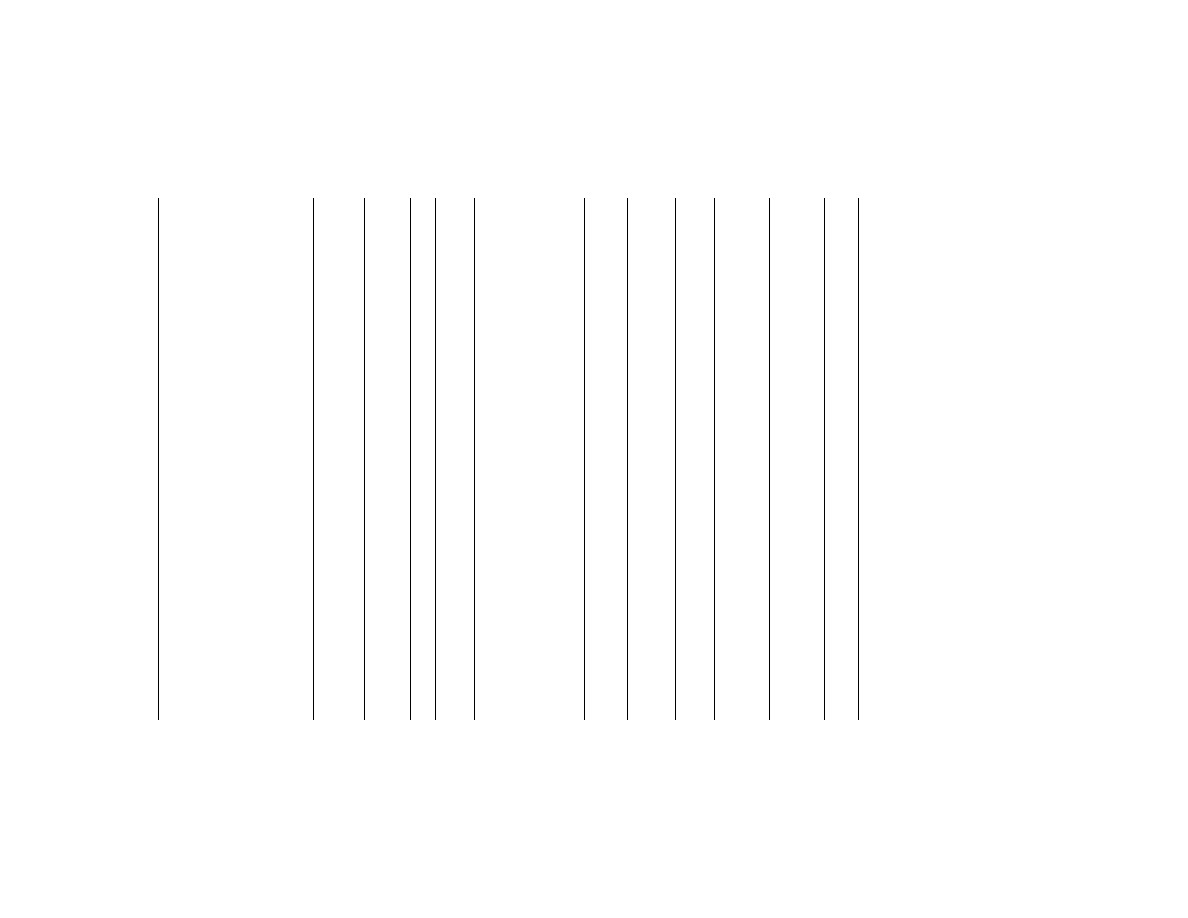
287
Pipeline and Haz. Matls. Safety Admin., DOT
§
172.101
R 115, see
Chloropentafluoroethane
R 116, see Hexafluoroethane
R 124, see Chlorotetrafluoroethane
R 133a, see Chlorotrifluoroethane
R 152a, see Difluoroethane
R 500, see Dichlorodifluoromethane
and difluorethane, etc
R 502, see Chlorodifluoromethane
and chloropentafluoroethane mix-
ture, etc
R 503, see Chlorotrifluoromethane
and trifluoromethane, etc
Radioactive material, excepted
package-articles manufactured
from natural uranium or depleted
uranium or natural thorium
7 UN2909
None
422,
426
422, 426
422,
426
A
Radioactive material, excepted
package-empty packaging
7 UN2908
......
Empty
368 422,
428
422, 428
422,
428
..................
..................
A
Radioactive material, excepted
package-instruments or articles
7 UN2911
None
422,
424
422, 424
A
Radioactive material, excepted
package-limited quantity of mate-
rial
7 UN2910
......
None
368 421,
422
421, 422
421,
422
..................
..................
A
Radioactive material, low specific
activity (LSA–I) non fissile or
fissile-excepted
7 UN2912
......
7
325, A56, T5, TP4, W7 421,
422,
428
427
427
..................
..................
A
95, 129
Radioactive material, low specific
activity (LSA–II) non fissile or
fissile-excepted
7 UN3321
......
7
325, A56, T5, TP4, W7 421,
422,
428
427
427
..................
..................
A
95, 129
Radioactive material, low specific
activity (LSA–III) non fissile or
fissile excepted
7 UN3322
......
7
325, A56, T5, TP4, W7 421,
422,
428
427
427
..................
..................
A
95, 150
Radioactive material, surface con-
taminated objects (SCO–I or
SCO–II) non fissile or fissile-ex-
cepted
7 UN2913
......
7
325, A56 421,
422,
428
427
427
..................
..................
A
95
Radioactive material, transported
under special arrangement, non
fissile or fissile excepted
7 UN2919
......
7
325, A56, 139
..................
..................
A
95, 105
Radioactive material, transported
under special arrangement, fissile
7 UN3331
7
A56, 139
A
95, 105
Radioactive material, Type A pack-
age, fissile non-special form
7 UN3327
7
A56, W7, W8 453
417
417
A
95,
105,
131
Radioactive material, Type A pack-
age non-special form, non fissile
or fissile-excepted
7 UN2915
......
7
325, A56, W7, W8 None
415, 418,
419
415,
418,
419
..................
..................
A
95, 130
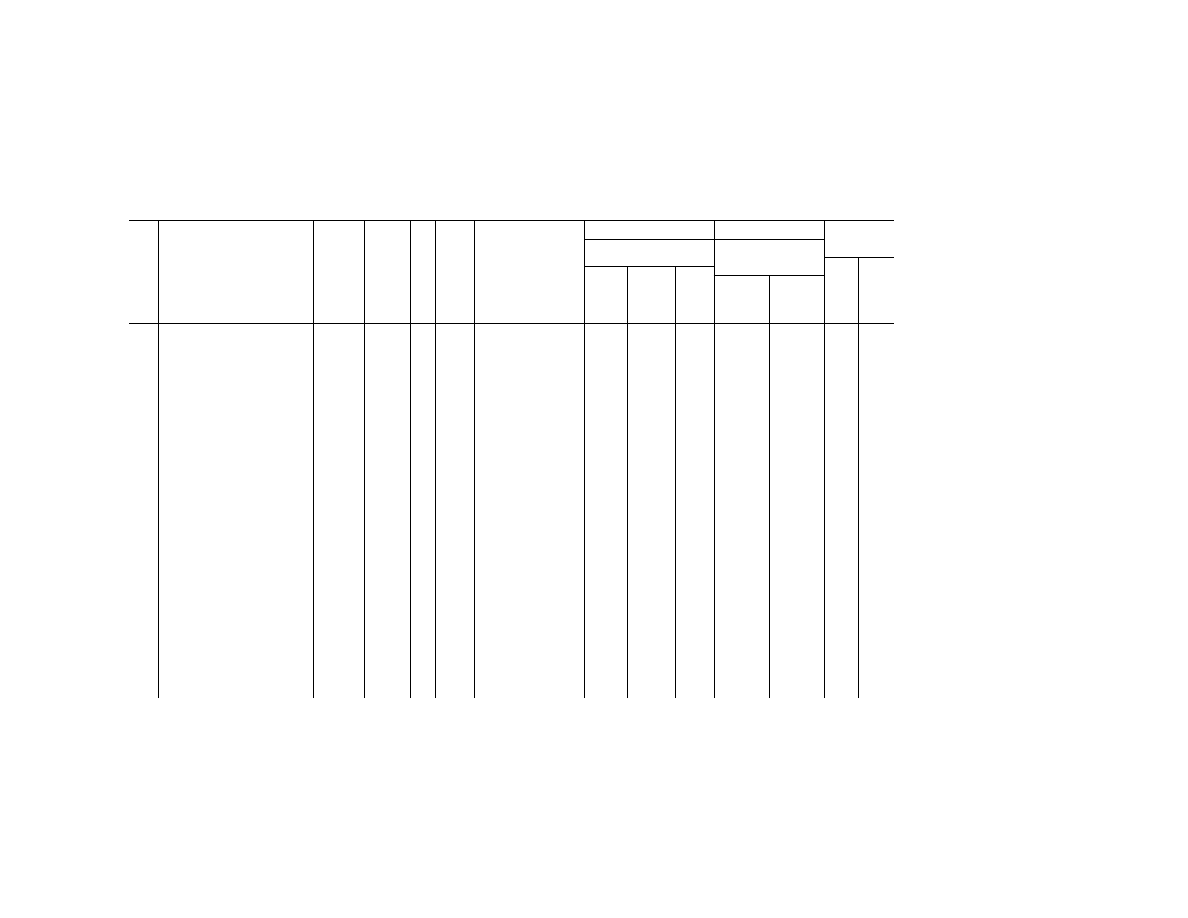
288
49 CFR Ch. I (10–1–23 Edition)
§
172.101
§ 172.101 H
AZARDOUS
M
ATERIALS
T
ABLE
—Continued
Sym-
bols
Hazardous materials descriptions
and proper shipping names
Hazard
class or
Division
Identi-
fication
Numbers
PG
Label
Codes
Special provisions
(§ 172.102)
(8)
(9)
(10)
Vessel
stowage
Packaging
(§ 173.***)
Quantity limitations
(see §§ 173.27 and
175.75)
Loca-
tion
Other
Excep-
tions
Non-bulk
Bulk
Passenger
aircraft/rail
Cargo air-
craft only
(1)
(2)
(3)
(4)
(5)
(6)
(7)
(8A)
(8B)
(8C)
(9A)
(9B)
(10A)
(10B)
Radioactive material, Type A pack-
age, special form non fissile or
fissile-excepted
7 UN3332
7
A56, W7, W8
415, 476
415,
476
A
95
Radioactive material, Type A pack-
age, special form, fissile
7 UN3333
7
A56, W7, W8 453
417, 476
417,
476
A
95, 105
Radioactive material, Type B(M)
package, fissile
7 UN3329
7
A56 453
417
417
A
95, 105
Radioactive material, Type B(M)
package non fissile or fissile-ex-
cepted
7 UN2917
......
7
325, A56
416
416
..................
..................
A
95, 105
Radioactive material, Type B(U)
package, fissile
7 UN3328
7
A56 453
417
417
A
95, 105
Radioactive material, Type B(U)
package non fissile or fissile-ex-
cepted
7 UN2916
......
7
325, A56
416
416
..................
..................
A
95, 105
Radioactive material, uranium
hexafluoride non fissile or fissile-
excepted
7 UN2978
......
7, 6.1,
8
........................................
423
420, 427
420,
427
..................
..................
B
40, 74,
95,
132,
151,
153
Radioactive material, uranium
hexafluoride, fissile
7 UN2977
......
7, 6.1,
8
........................................
453
417, 420
417,
420
..................
..................
B
40, 74,
95,
132,
151,
153
A W
Rags, oily
4.2 UN1856
III
4.2
151
213
240
Forbidden
Forbidden
A
Railway torpedo, see Signals, rail-
way track, explosive
RC 318, see Octafluorocyclobutane
RDX and
cyclotetramethylenetetranitramin-
e, wetted or desensitized see
RDX and HMX mixtures, wetted
or desensitized
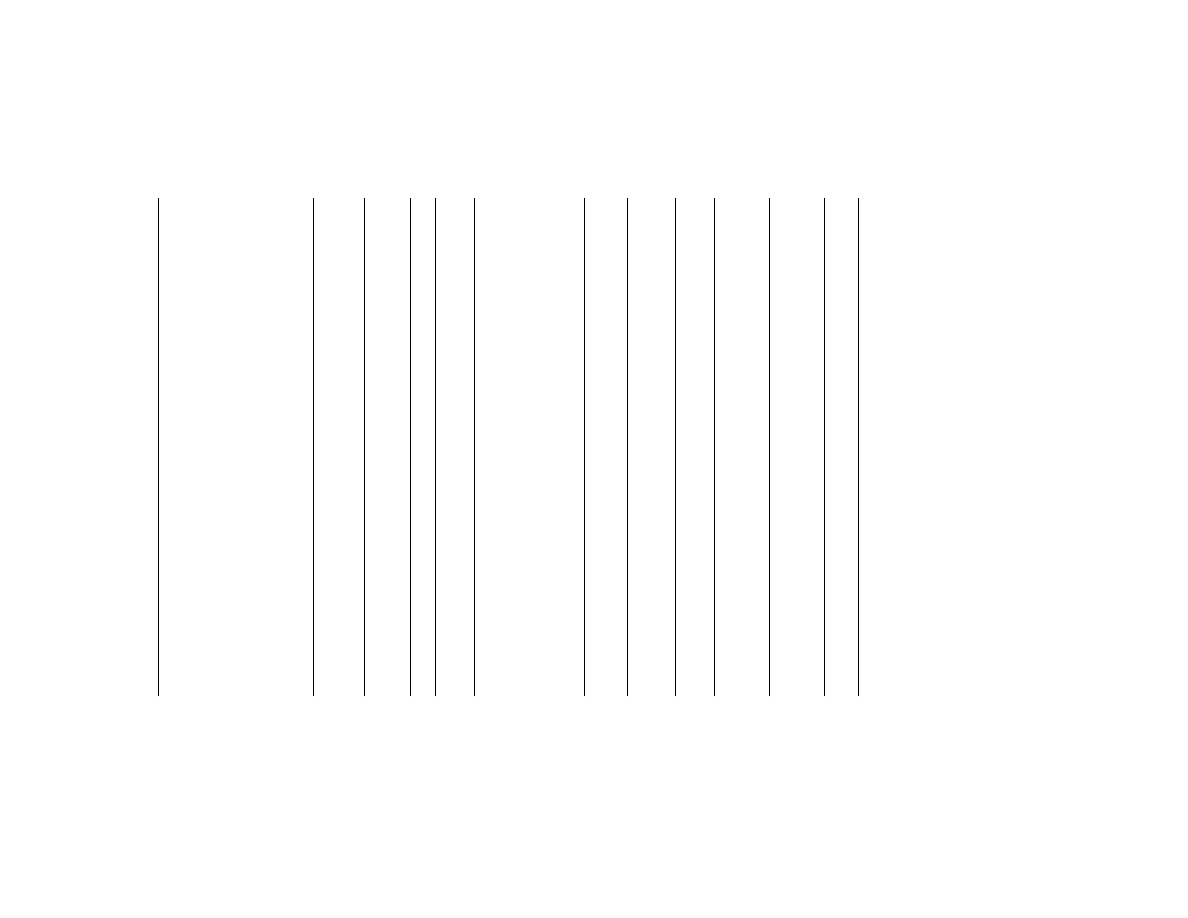
289
Pipeline and Haz. Matls. Safety Admin., DOT
§
172.101
RDX and HMX mixtures, wetted
with not less than 15 percent
water by mass or RDX and HMX
mixtures, desensitized with not
less than 10 percent phlegmatizer
by mass
1.1D UN0391
......
1.1D
........................................
None
62
None
Forbidden
Forbidden
04
25
RDX and Octogen mixtures, wetted
or desensitized see RDX and
HMX mixtures, wetted or desen-
sitized etc
RDX, see Cyclotrimethylene
trinitramine, etc
Receptacles, small, containing gas
or gas cartridges (flammable)
without release device, not refill-
able and not exceeding 1 L ca-
pacity
2.1 UN2037
......
2.1
........................................
306
304
None
1 kg
15 kg
B
40, 157
Receptacles, small, containing gas
or gas cartridges (non-flammable)
without release device, not refill-
able and not exceeding 1 L ca-
pacity
2.2 UN2037
......
2.2
........................................
306
304
None
1 kg
15 kg
B
40, 157
Receptacles, small, containing gas
or gas cartridges (oxidizing), with-
out release device, not refillable
and not exceeding 1 L capacity
2.2 UN2037
......
2.2,
5.1
, A14 306
304
None
1 kg
15 kg
B
40, 157
Red phosphorus, see Phosphorus,
amorphous
Refrigerant gas R 404A
2.2 UN3337
2.2
T50 306
304
314,
315
75 kg
150 kg
A
Refrigerant gas R 407A
2.2 UN3338
2.2
T50 306
304
314,
315
75 kg
150 kg
A
Refrigerant gas R 407B
2.2 UN3339
2.2
T50 306
304
314,
315
75 kg
150 kg
A
Refrigerant gas R 407C
2.2 UN3340
2.2
T50 306
304
314,
315
75 kg
150 kg
A
G
Refrigerant gases, n.o.s.
2.2 UN1078
2.2
T50 306
304
314,
315
75 kg
150 kg
A
D
Refrigerant gases, n.o.s. or Dis-
persant gases, n.o.s.
2.1 NA1954
2.1
T50 306
304
314,
315
Forbidden
150 kg
D
40
Refrigerating machines, containing
flammable, non-toxic, liquefied
gas
2.1 UN3358
2.1
306,
307
306
306
Forbidden
Forbidden
D
40
Refrigerating machines, containing
non-flammable, non-toxic gases,
or ammonia solutions (UN2672)
2.2 UN2857
2.2
A53 306,
307
306
306,
307
450 kg
450 kg
A
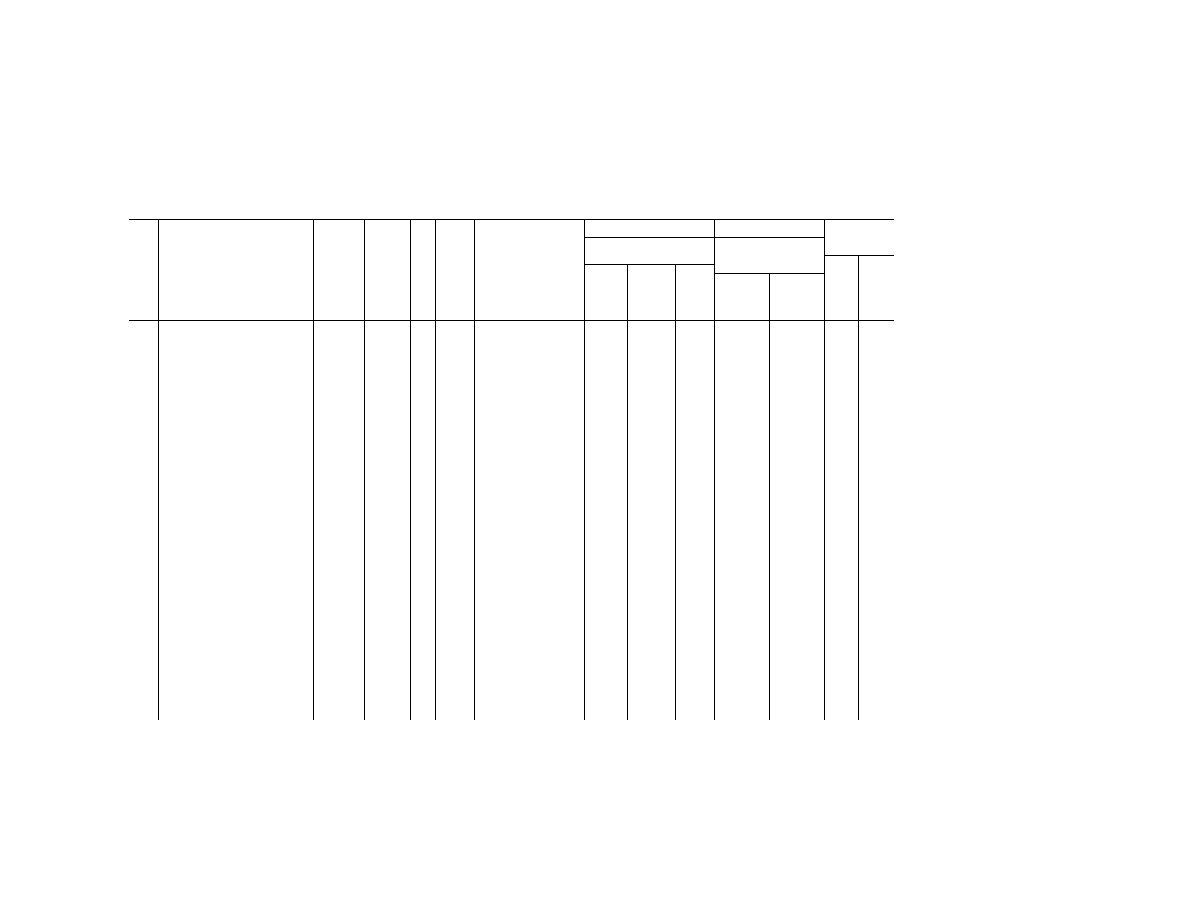
290
49 CFR Ch. I (10–1–23 Edition)
§
172.101
§ 172.101 H
AZARDOUS
M
ATERIALS
T
ABLE
—Continued
Sym-
bols
Hazardous materials descriptions
and proper shipping names
Hazard
class or
Division
Identi-
fication
Numbers
PG
Label
Codes
Special provisions
(§ 172.102)
(8)
(9)
(10)
Vessel
stowage
Packaging
(§ 173.***)
Quantity limitations
(see §§ 173.27 and
175.75)
Loca-
tion
Other
Excep-
tions
Non-bulk
Bulk
Passenger
aircraft/rail
Cargo air-
craft only
(1)
(2)
(3)
(4)
(5)
(6)
(7)
(8A)
(8B)
(8C)
(9A)
(9B)
(10A)
(10B)
Regulated medical waste, n.o.s. or
Clinical waste, unspecified, n.o.s.
or (BIO) Medical waste, n.o.s. or
Biomedical waste, n.o.s., or Med-
ical Waste n.o.s.
6.2 UN3291
......
6.2
41, 337, A13 134
197
197
No limit
No limit
B
40
Release devices, explosive
1.4S UN0173
1.4S
None
62
62
25 kg
100 kg
01
25
Resin Solution, flammable
3 UN1866
I
3
B52, T11, TP1, TP8,
TP28
150
201
243
1 L
30 L
E
II
3
149, B52, IB2, T4, TP1,
TP8
150
173
242
5 L
60 L
B
III
3
B1, B52, IB3, T2, TP1 150
173
242
60 L
220 L
A
Resorcinol
6.1 UN2876
III
6.1
IB8, IP3, T1, TP33 153
213
240
100 kg
200 kg
A
Rifle grenade, see Grenades, hand
or rifle, etc
Rifle powder, see Powder, smoke-
less (UN 0160)
Rivets, explosive
1.4S UN0174
......
1.4S
........................................
None
62
62
25 kg
100 kg
01
25
Road asphalt or tar liquid, see Tars,
liquid, etc
Rocket motors
1.3C UN0186
......
1.3C
109 None
62
62
Forbidden
220 kg
03
25
Rocket motors
1.1C UN0280
......
1.1C
109 None
62
62
Forbidden
Forbidden
03
25
Rocket motors
1.2C UN0281
......
1.2C
109 None
62
62
Forbidden
Forbidden
04
25
Rocket motors
1.4C UN0510
......
1.4C
109 None
62
62
Forbidden
75 kg
02
25
Rocket motors, liquid fueled
1.2J UN0395
......
1.2J
109 None
62
None
Forbidden
Forbidden
05
25,
23E
Rocket motors, liquid fueled
1.3J UN0396
......
1.3J
109 None
62
None
Forbidden
Forbidden
05
25,
23E
Rocket motors with hypergolic liq-
uids with or without an expelling
charge
1.3L UN0250
......
1.3L
109 None
62
None
Forbidden
Forbidden
05
25,
14E,
15E
Rocket motors with hypergolic liq-
uids with or without an expelling
charge
1.2L UN0322
......
1.2L
109 None
62
None
Forbidden
Forbidden
05
25,
14E,
15E
Rockets, line-throwing
1.2G UN0238
......
1.2G
........................................
None
62
None
Forbidden
Forbidden
03
25
Rockets, line-throwing
1.3G UN0240
......
1.3G
........................................
None
62
None
Forbidden
75 kg
03
25
Rockets, line-throwing
1.4G UN0453
......
1.4G
........................................
None
62
None
Forbidden
75 kg
02
25
Rockets, liquid fueled with bursting
charge
1.1J UN0397
......
1.1J
........................................
None
62
None
Forbidden
Forbidden
05
25,
23E
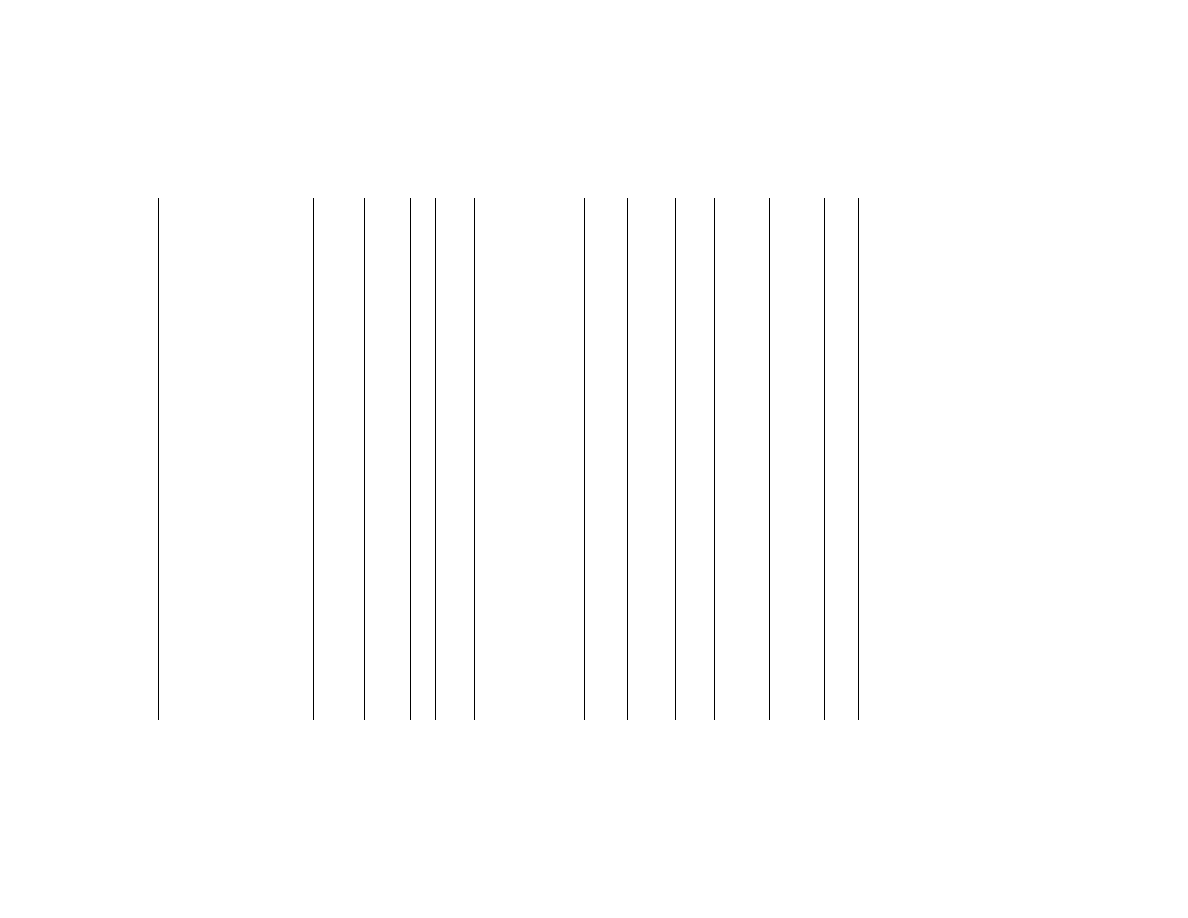
291
Pipeline and Haz. Matls. Safety Admin., DOT
§
172.101
Rockets, liquid fueled with bursting
charge
1.2J UN0398
......
1.2J
........................................
None
62
None
Forbidden
Forbidden
05
25,
23E
Rockets, with bursting charge
1.1F UN0180
......
1.1F
........................................
None
62
None
Forbidden
Forbidden
03
25
Rockets, with bursting charge
1.1E UN0181
......
1.1E
........................................
None
62
62
Forbidden
Forbidden
03
25
Rockets, with bursting charge
1.2E UN0182
......
1.2E
........................................
None
62
62
Forbidden
Forbidden
03
25
Rockets, with bursting charge
1.2F UN0295
......
1.2F
........................................
None
62
None
Forbidden
Forbidden
03
25
Rockets, with expelling charge
1.2C UN0436
......
1.2C
........................................
None
62
62
Forbidden
Forbidden
03
25
Rockets, with expelling charge
1.3C UN0437
......
1.3C
........................................
None
62
62
Forbidden
Forbidden
03
25
Rockets, with expelling charge
1.4C UN0438
......
1.4C
........................................
None
62
62
Forbidden
75 kg
02
25
Rockets, with inert head
1.3C UN0183
......
1.3C
........................................
None
62
62
Forbidden
Forbidden
03
25
Rockets, with inert head
1.2C UN0502
......
1.2C
........................................
None
62
62
Forbidden
Forbidden
03
25, 5E
Rosin oil
3 UN1286
II
3
IB2, T4, TP1 150
202
242
5 L
60 L
B
III
3
B1, IB3, T2, TP1 150
203
242
60 L
220 L
A
Rubber solution
3 UN1287
II
3
149, IB2, T4, TP1, TP8 150
202
242
5 L
60 L
B
III
B1, IB3, T2, TP1 150
203
242
60 L
220 L
A
Rubber scrap or shoddy, powdered
or granulated, not exceeding 840
microns and rubber contend ex-
ceeding 45%
4.1 UN1345
II
4.1
IB8, IP2, IP4, T3, TP33 151
212
240
15 kg
50 kg
A
Rubidium
4.3 UN1423
I
4.3
22, A7, A19, IB4, IP1,
N34, N40, N45, W31
None
211
242
Forbidden
15 kg
D
13, 52,
148
Rubidium hydroxide
8 UN2678
II
8
IB8, IP2, IP4, T3, TP33 154
212
240
15 kg
50 kg
A
29, 52.
Rubidium hydroxide solution
8 UN2677
II
8
B2, IB2, T7, TP2 154
202
242
1 L
30 L
A
29, 52.
III
8
IB3, T4, TP1 154
203
241
5 L
60 L
A
29, 52.
Safety devices, electrically initiated
9 UN3268
......
9
160, A200 166
166
166
25 kg
100 kg
A
Safety devices, pyrotechnic
1.4G UN0503
......
1.4G
A200 None
62
None
Forbidden
75 kg
02
25
Safety fuse, see Fuse, safety
G
Samples, explosive, other than initi-
ating explosives
UN0190
......
113 None
62
None
Forbidden
Forbidden
05
25
Sand acid, see Fluorosilicic acid
Seed cake, containing vegetable oil
solvent extractions and expelled
seeds, with not more than 10 per-
cent of oil and when the amount
of moisture is higher than 11 per-
cent, with not more than 20 per-
cent of oil and moisture combined
4.2 UN1386
III
None
B136, IB8, IP3, IP7, N7 None
213
241
Forbidden
Forbidden
A
13, 25
I
Seed cake with more than 1.5 per-
cent oil and not more than 11
percent moisture
4.2 UN1386
III
None
B136, IB8, IP3, IP7, N7 None
213
241
Forbidden
Forbidden
E
13, 25
I
Seed cake with not more than 1.5
percent oil and not more than 11
percent moisture
4.2 UN2217
III
None
B136, IB8, IP3, IP7, N7 None
213
241
Forbidden
Forbidden
A
13, 25,
120
G
Selenates or Selenites
6.1 UN2630
I
6.1
IB7, IP1, T6, TP33 None
211
242
5 kg
50 kg
E
Selenic acid
8 UN1905
I
8
IB7, IP1, N34, T6, TP33 None
211
242
Forbidden
25 kg
A
53, 58
G
Selenium compound, liquid, n.o.s
6.1 UN3440
I
6.1
T14, TP2, TP27 None
201
243
1 L
30 L
B
II
6.1
IB2, T11, TP2, TP27 153
202
243
5 L
60 L
B
III
6.1
IB3, T7, TP1, TP28 153
203
241
60 L
220 L
A
G
Selenium compound, solid, n.o.s
6.1 UN3283
I
6.1
IB7, IP1, T6, TP33 None
211
242
5 kg
50 kg
B
II
6.1
IB8, IP2, IP4, T3, TP33 153
212
242
25 kg
100 kg
B
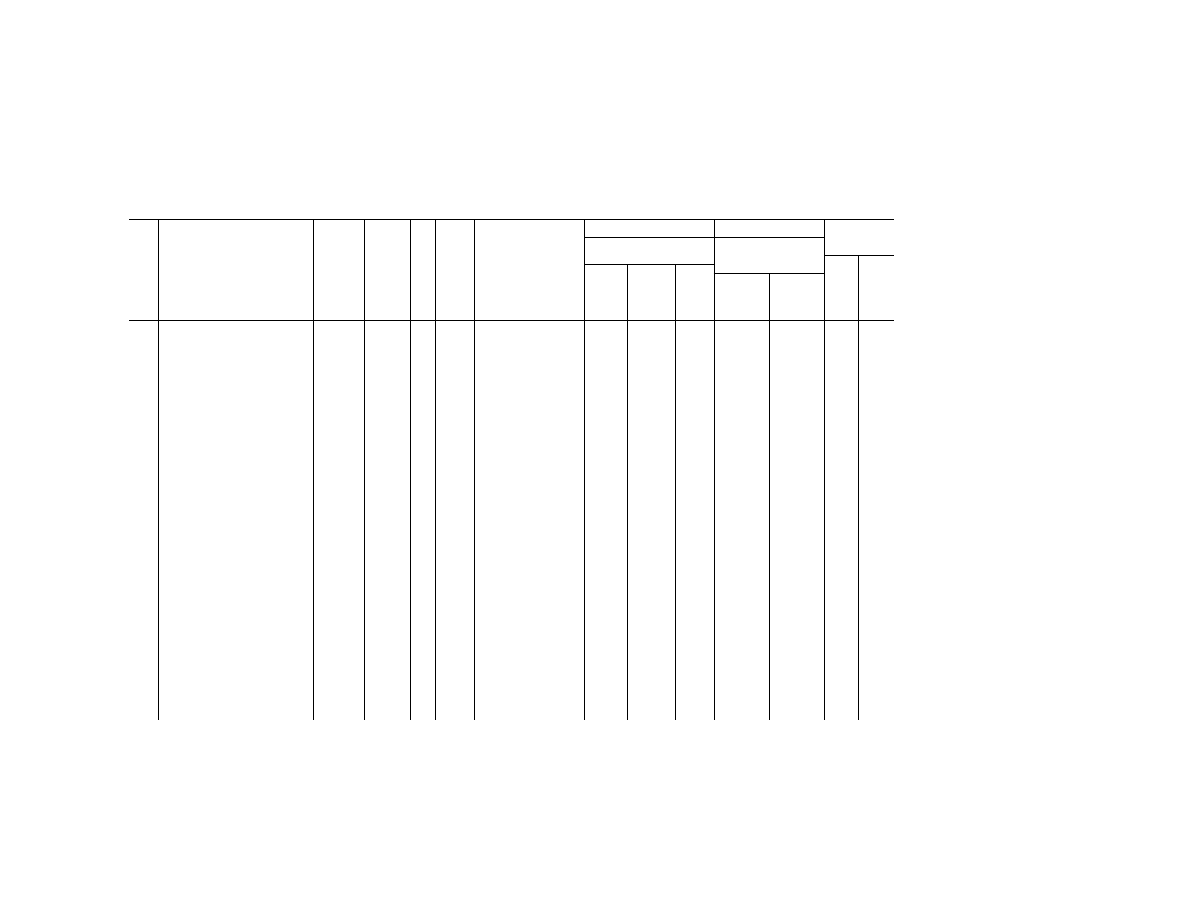
292
49 CFR Ch. I (10–1–23 Edition)
§
172.101
§ 172.101 H
AZARDOUS
M
ATERIALS
T
ABLE
—Continued
Sym-
bols
Hazardous materials descriptions
and proper shipping names
Hazard
class or
Division
Identi-
fication
Numbers
PG
Label
Codes
Special provisions
(§ 172.102)
(8)
(9)
(10)
Vessel
stowage
Packaging
(§ 173.***)
Quantity limitations
(see §§ 173.27 and
175.75)
Loca-
tion
Other
Excep-
tions
Non-bulk
Bulk
Passenger
aircraft/rail
Cargo air-
craft only
(1)
(2)
(3)
(4)
(5)
(6)
(7)
(8A)
(8B)
(8C)
(9A)
(9B)
(10A)
(10B)
III
6.1
IB8, IP3, T1, TP33 153
213
240
100 kg
200 kg
A
Selenium disulfide
6.1 UN2657
II
6.1
IB8, IP2, IP4, T3, TP33 153
212
242
25 kg
100 kg
A
Selenium hexafluoride
2.3 UN2194
2.3, 8
1 None
302
None
Forbidden
Forbidden
D
40
Selenium nitride
Forbidden
Selenium oxychloride
8 UN2879
I
8, 6.1
A7, N34, T10, TP2,
TP13
None
201
243
0.5 L
2.5 L
E
40, 53,
58
Self-defense spray, aerosol, see
Aerosols, etc
+ A D Self-defense spray, non-pressurized
9 NA3334
III
9
A37 155
203
None
No limit
No limit
A
G
Self-heating liquid, corrosive, inor-
ganic, n.o.s
4.2 UN3188
II
4.2, 8
IB2, W31 None
202
243
1 L
5 L
C
III
4.2, 8
IB2, W31 None
203
241
5 L
60 L
C
G
Self-heating liquid, corrosive, or-
ganic, n.o.s
4.2 UN3185
II
4.2, 8
IB2, W31 None
202
243
1 L
5 L
C
III
4.2, 8
IB2, W31 None
203
241
5 L
60 L
C
G
Self-heating liquid, inorganic, n.o.s
4.2 UN3186
II
4.2
IB2, W31 None
202
242
1 L
5 L
C
III
4.2
IB2, W31 None
203
241
5 L
60 L
C
G
Self-heating liquid, organic, n.o.s
4.2 UN3183
II
4.2
IB2, W31 None
202
242
1 L
5 L
C
III
4.2
IB2, W31 None
203
241
5 L
60 L
C
G
Self-heating liquid, toxic, inorganic,
n.o.s
4.2 UN3187
II
4.2,
6.1
IB2, W31 None
202
243
1 L
5 L
C
III
4.2,
6.1
IB2, W31 None
203
241
5 L
60 L
C
G
Self-heating liquid, toxic, organic,
n.o.s
4.2 UN3184
II
4.2,
6.1
IB2, W31 None
202
243
1 L
5 L
C
III
4.2,
6.1
IB2, W31 None
203
241
5 L
60 L
C
G
Self-heating solid, corrosive, inor-
ganic, n.o.s.
4.2 UN3192
II
4.2, 8
IB5, IP2, T3, TP33 None
212
242
15 kg
50 kg
C
III
4.2, 8
IB8, IP3, T1, TP33 None
213
242
25 kg
100 kg
C
G
Self-heating solid, corrosive, or-
ganic, n.o.s
4.2 UN3126
II
4.2, 8
IB5, IP2, T3, TP33 None
212
242
15 kg
50 kg
C
III
4.2, 8
IB8, IP3, T1, TP33 None
213
242
25 kg
100 kg
C
............
G
Self-heating solid, inorganic, n.o.s
4.2 UN3190
II
4.2
IB6, IP2, T3, TP33, W31 None
212
241
15 kg
50 kg
C
III
4.2
IB8, IP3, T1, TP33, W31 None
213
241
25 kg
100 kg
C
G
Self-heating solid, organic, n.o.s
4.2 UN3088
II
4.2
IB6, IP2, T3, TP33, W31 None
212
241
15 kg
50 kg
C
III
4.2
B116, B130, IB8, IP3,
T1, TP33, W31
None
213
241
25 kg
100 kg
C
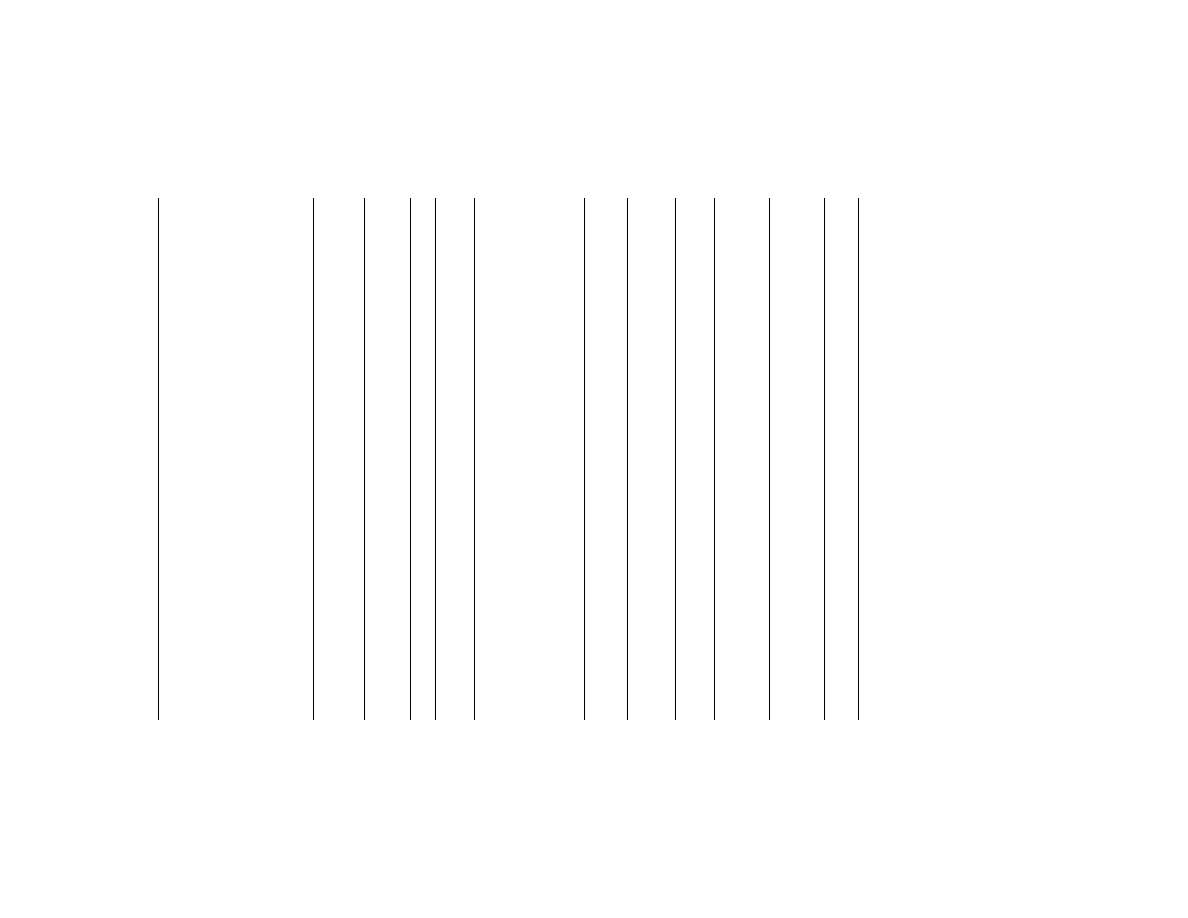
293
Pipeline and Haz. Matls. Safety Admin., DOT
§
172.101
G
Self-heating solid, oxidizing, n.o.s.
4.2 UN3127
4.2,
5.1
None
214
214
Forbidden
Forbidden
G
Self-heating solid, toxic, inorganic,
n.o.s.
4.2 UN3191
II
4.2,
6.1
IB5, IP2, T3, TP33 None
212
242
15 kg
50 kg
C
III
4.2,
6.1
IB8, IP3, T1, TP33 None
213
242
25 kg
100 kg
C
G
Self-heating solid, toxic, organic,
n.o.s
4.2 UN3128
II
4.2,
6.1
IB5, IP2, T3, TP33 None
212
242
15 kg
50 kg
C
III
4.2,
6.1
IB8, IP3, T1, TP33 None
213
242
25 kg
100 kg
C
Self-propelled vehicle, see Engines
or Batteries etc
G
Self-reactive liquid type B
4.1 UN3221
......
4.1
53 151
224
None
Forbidden
Forbidden
D
25, 52,
53, 127
G
Self-reactive liquid type B, tempera-
ture controlled
4.1 UN3231
......
4.1
53 None
224
None
Forbidden
Forbidden
D
2, 25,
52, 53
G
Self-reactive liquid type C
4.1 UN3223
......
4.1
........................................
151
224
None
5 L
10 L
D
25, 52,
53
G
Self-reactive liquid type C, tempera-
ture controlled
4.1 UN3233
......
4.1
........................................
None
224
None
Forbidden
Forbidden
D
2, 25,
52, 53
G
Self-reactive liquid type D
4.1 UN3225
......
4.1
........................................
151
224
None
5 L
10 L
D
25, 52,
53
G
Self-reactive liquid type D, tempera-
ture controlled
4.1 UN3235
......
4.1
........................................
None
224
None
Forbidden
Forbidden
D
2, 25,
52, 53
G
Self-reactive liquid type E
4.1 UN3227
......
4.1
........................................
151
224
None
10 L
25 L
D
25, 52,
53
G
Self-reactive liquid type E, tempera-
ture controlled
4.1 UN3237
......
4.1
........................................
None
224
None
Forbidden
Forbidden
D
2, 25,
52, 53
G
Self-reactive liquid type F
4.1 UN3229
......
4.1
........................................
151
224
None
10 L
25 L
D
25, 52,
53
G
Self-reactive liquid type F, tempera-
ture controlled
4.1 UN3239
......
4.1
........................................
None
224
None
Forbidden
Forbidden
D
2, 25,
52, 53
G
Self-reactive solid type B
4.1 UN3222
......
4.1
53 151
224
None
Forbidden
Forbidden
D
25, 52,
53, 127
G
Self-reactive solid type B, tempera-
ture controlled
4.1 UN3232
......
4.1
53 None
224
None
Forbidden
Forbidden
D
2, 25,
52, 53
G
Self-reactive solid type C
4.1 UN3224
......
4.1
........................................
151
224
None
5 kg
10 kg
D
25, 52,
53
G
Self-reactive solid type C, tempera-
ture controlled
4.1 UN3234
......
4.1
........................................
None
224
None
Forbidden
Forbidden
D
2, 25,
52, 53
G
Self-reactive solid type D
4.1 UN3226
......
4.1
........................................
151
224
None
5 kg
10 kg
D
25, 52,
53
G
Self-reactive solid type D, tempera-
ture controlled
4.1 UN3236
......
4.1
........................................
None
224
None
Forbidden
Forbidden
D
2, 25,
52, 53
G
Self-reactive solid type E
4.1 UN3228
......
4.1
........................................
151
224
None
10 kg
25 kg
D
25, 52,
53
G
Self-reactive solid type E, tempera-
ture controlled
4.1 UN3238
......
4.1
........................................
None
224
None
Forbidden
Forbidden
D
2, 25,
52, 53
G
Self-reactive solid type F
4.1 UN3230
......
4.1
........................................
151
224
None
10 kg
25 kg
D
25, 52,
53
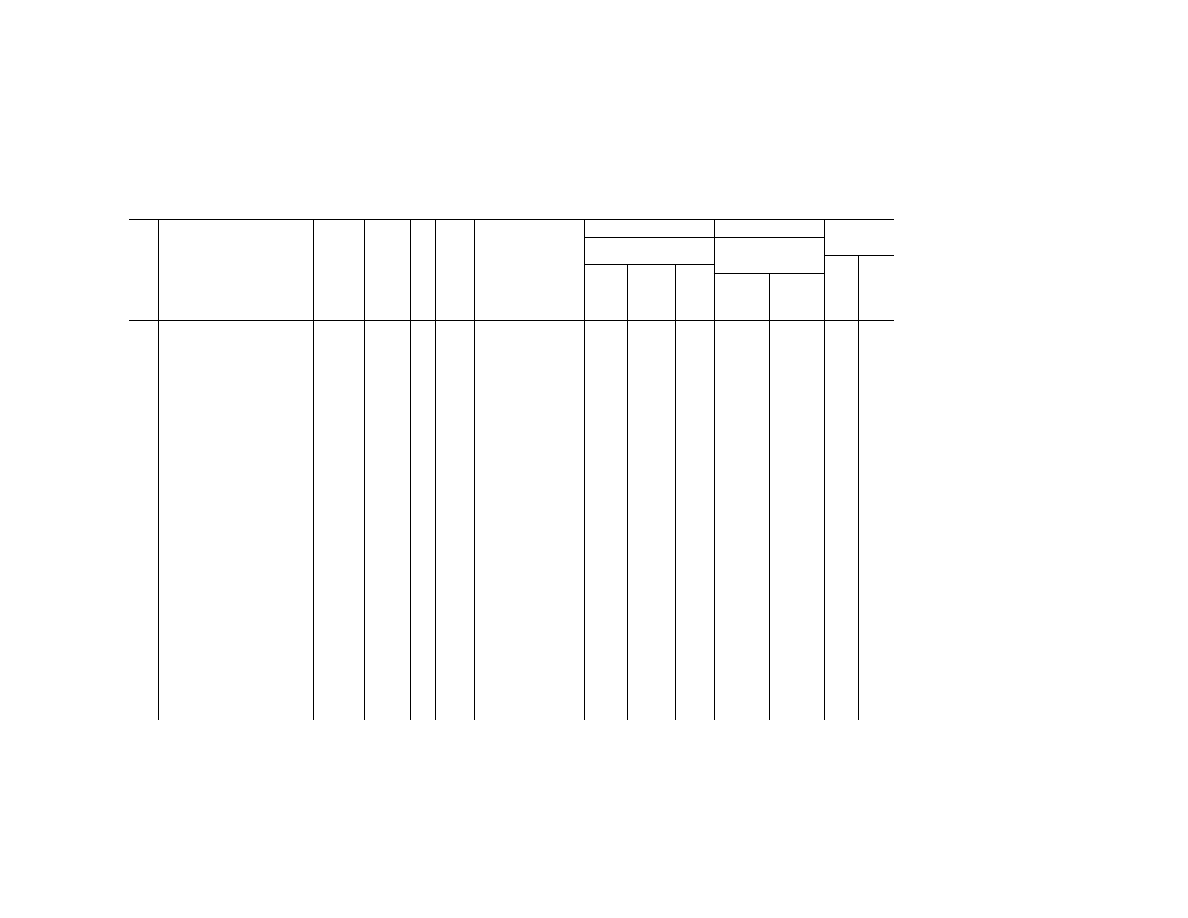
294
49 CFR Ch. I (10–1–23 Edition)
§
172.101
§ 172.101 H
AZARDOUS
M
ATERIALS
T
ABLE
—Continued
Sym-
bols
Hazardous materials descriptions
and proper shipping names
Hazard
class or
Division
Identi-
fication
Numbers
PG
Label
Codes
Special provisions
(§ 172.102)
(8)
(9)
(10)
Vessel
stowage
Packaging
(§ 173.***)
Quantity limitations
(see §§ 173.27 and
175.75)
Loca-
tion
Other
Excep-
tions
Non-bulk
Bulk
Passenger
aircraft/rail
Cargo air-
craft only
(1)
(2)
(3)
(4)
(5)
(6)
(7)
(8A)
(8B)
(8C)
(9A)
(9B)
(10A)
(10B)
G
Self-reactive solid type F, tempera-
ture controlled
4.1 UN3240
......
4.1
........................................
None
224
None
Forbidden
Forbidden
D
2, 25,
52, 53
Shale oil
3 UN1288
I
3
T11, TP1, TP8, TP27 None
201
243
1 L
30 L
B
II
3
IB2, T4, TP1, TP8 150
202
242
5 L
60 L
B
III
3
B1, IB3, T2, TP1 150
203
242
60 L
220 L
A
Shaped charges, see Charges,
shaped, etc
Signal devices, hand
1.4G UN0191
......
1.4G
381 None
62
None
Forbidden
75 kg
02
25
Signal devices, hand
1.4S UN0373
......
1.4S
381 None
62
None
25 kg
100 kg
01
25
Signals, distress, ship
1.1G UN0194
......
1.1G
........................................
None
62
None
Forbidden
Forbidden
03
25
Signals, distress, ship
1.3G UN0195
......
1.3G
........................................
None
62
None
Forbidden
75 kg
03
25
Signals, distress, ship
1.4G UN0505
......
1.4G
........................................
None
62
None
Forbidden
75 kg
02
25
Signals, distress, ship
1.4S UN0506
......
1.4S
........................................
None
62
None
25 kg
100 kg
01
25
Signals, highway, see Signal de-
vices, hand
Signals, railway track, explosive
1.1G UN0192
......
1.1G
........................................
None
62
None
Forbidden
Forbidden
03
25
Signals, railway track, explosive
1.4S UN0193
......
1.4S
381 None
62
None
25 kg
100 kg
01
25
Signals, railway track, explosive
1.3G UN0492
......
1.3G
........................................
None
62
None
Forbidden
Forbidden
03
25
Signals, railway track, explosive
1.4G UN0493
......
1.4G
........................................
None
62
None
Forbidden
75 kg
02
25
Signals, ship distress, water-acti-
vated, see Contrivances, water-
activated, etc
Signals, smoke
1.1G UN0196
......
1.1G
........................................
None
62
None
Forbidden
Forbidden
03
25
Signals, smoke
1.4G UN0197
......
1.4G
........................................
None
62
None
Forbidden
75 kg
02
25
Signals, smoke
1.2G UN0313
......
1.2G
........................................
None
62
None
Forbidden
Forbidden
03
25
Signals, smoke
1.3G UN0487
......
1.3G
........................................
None
62
None
Forbidden
Forbidden
03
25
Signals, smoke
1.4S UN0507
......
1.4S
........................................
None
62
None
25 kg
100 kg
01
25
Silane
2.1 UN2203
2.1
None
302
None
Forbidden
Forbidden
E
40, 57,
104
Silicofluoric acid, see Fluorosilicic
acid
Silicon chloride, see Silicon tetra-
chloride
Silicon powder, amorphous
4.1 UN1346
III
4.1
A1, IB8, IP3, T1, TP33 151
213
240
25 kg
100 kg
A
74
Silicon tetrachloride
8 UN1818
II
8
A3, B2, B6, T10, TP2,
TP7, TP13
None
202
242
Forbidden
30 L
C
40, 53,
58
Silicon tetrafluoride
2.3 UN1859
2.3, 8
2 None
302
None
Forbidden
Forbidden
D
40
Silicon tetrafluoride, adsorbed
2.3 UN3521
......
2.3, 8
2 None
302c
None
Forbidden
Forbidden
D
40
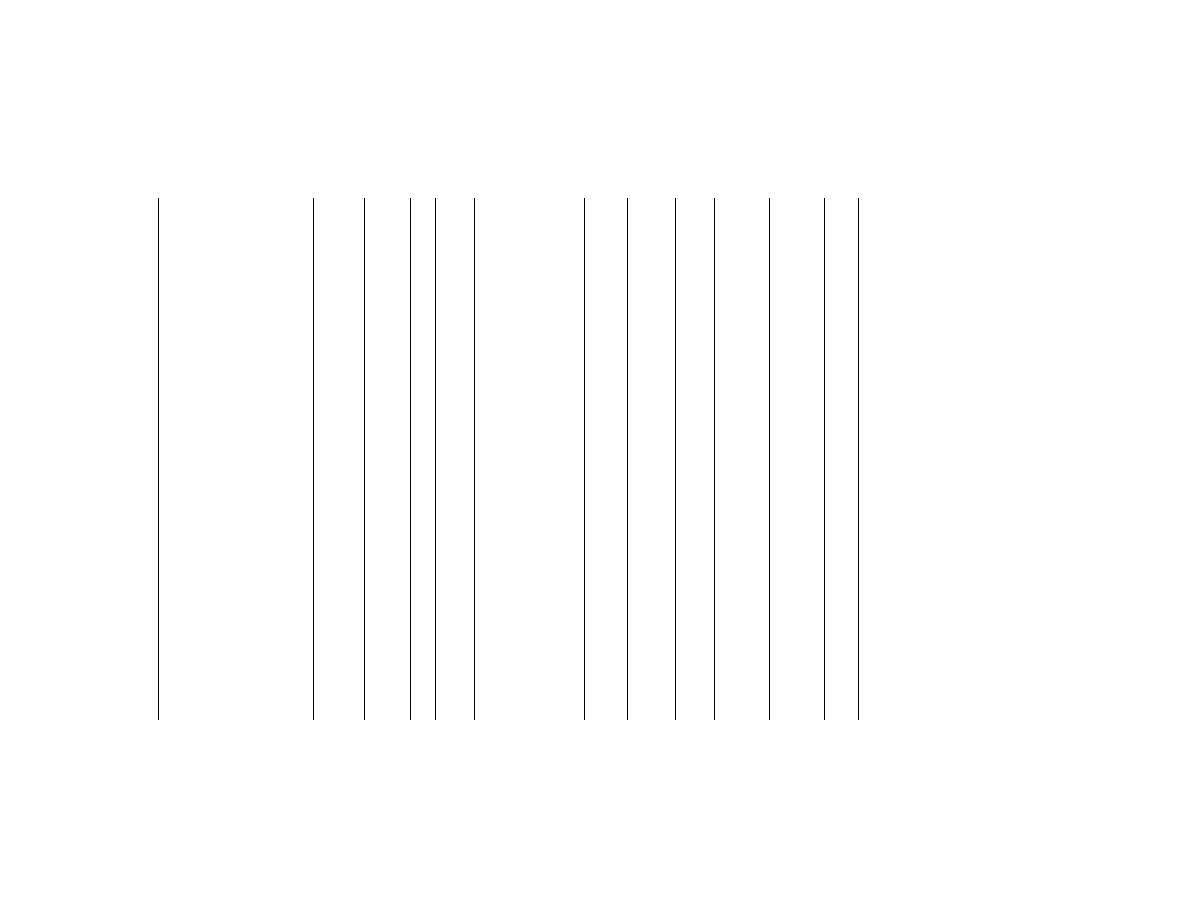
295
Pipeline and Haz. Matls. Safety Admin., DOT
§
172.101
Silver acetylide (dry)
Forbidden
Silver arsenite
6.1 UN1683
II
6.1
IB8, IP2, IP4, T3, TP33 153
212
242
25 kg
100 kg
A
Silver azide (dry)
Forbidden
Silver chlorite (dry)
Forbidden
Silver cyanide
6.1 UN1684
II
6.1
IB8, IP2, IP4, T3, TP33 153
212
242
25 kg
100 kg
A
40, 52
Silver fulminate (dry)
Forbidden
Silver nitrate
5.1 UN1493
II
5.1
IB8, IP2, IP4, T3, TP33 152
212
242
5 kg
25 kg
A
Silver oxalate (dry)
Forbidden
Silver picrate (dry)
Forbidden
Silver picrate, wetted with not less
than 30 percent water, by mass
4.1 UN1347
I
4.1
23, W31 None
211
None
Forbidden
Forbidden
D
28, 36
Sludge, acid
8 UN1906
II
8
A3, A7, B2, IB2, N34,
T8, TP2, TP28
154
202
242
Forbidden
30 L
C
14, 53,
58
D
Smokeless powder for small arms
(100 pounds or less)
4.1 NA3178
I
4.1
16 None
171
None
Forbidden
7.3 kg
A
Soda lime with more than 4 percent
sodium hydroxide
8 UN1907
III
8
IB8, IP3, T1, TP33 154
213
240
25 kg
100 kg
A
52.
Sodium
4.3 UN1428
I
4.3
A7, A8, A19, A20, B9,
B48, B68, IB4, IP1, N34,
T9, TP7, TP33, TP46,
W31
151
211
244
Forbidden
15 kg
D
13, 52,
148
A
Sodium aluminate, solid
8 UN2812
III
8
IB8, IP3, T1, TP33 154
213
240
25 kg
100 kg
A
Sodium aluminate, solution
8 UN1819
II
8
B2, IB2, T7, TP2 154
202
242
1 L
30 L
A
52.
III
8
IB3, T4, TP1 154
203
241
5 L
60 L
A
52.
Sodium aluminum hydride
4.3 UN2835
II
4.3
A8, A19, A20, IB4, T3,
TP33, W31, W40
151
212
242
Forbidden
50 kg
E
13, 52,
148
Sodium ammonium vanadate
6.1 UN2863
II
6.1
IB8, IP2, IP4, T3, TP33 153
212
242
25 kg
100 kg
A
Sodium arsanilate
6.1 UN2473
III
6.1
IB8, IP3, T1, TP33 153
213
240
100 kg
200 kg
A
Sodium arsenate
6.1 UN1685
II
6.1
IB8, IP2, IP4, T3, TP33 153
212
242
25 kg
100 kg
A
Sodium arsenite, aqueous solutions
6.1 UN1686
II
6.1
IB2, T7, TP2 153
202
243
5 L
60 L
A
III
6.1
IB3, T4, TP2 153
203
241
60 L
220 L
A
Sodium arsenite, solid
6.1 UN2027
II
6.1
IB8, IP2, IP4, T3, TP33 153
212
242
25 kg
100 kg
A
Sodium azide
6.1 UN1687
II
6.1
IB8, IP2, IP4 153
212
242
25 kg
100 kg
A
36, 52,
91
Sodium bifluoride, see Sodium
hydrogendifluoride
Sodium bisulfite, solution, see
Bisulfites, aqueous solutions,
n.o.s.
Sodium borohydride
4.3 UN1426
I
4.3
N40, W31 None
211
242
Forbidden
15 kg
E
13, 52,
148
Sodium borohydride and sodium
hydroxide solution, with not more
than 12 percent sodium boro-
hydride and not more than 40
percent sodium hydroxide by
mass
8 UN3320
II
8
B2, IB2, N34, T7, TP2 154
202
242
1 L
30 L
A
52
III
8
B2, IB3, N34, T4, TP2 154
203
241
5 L
60 L
A
52
Sodium bromate
5.1 UN1494
II
5.1
IB8, IP2, IP4, T3, TP33 152
212
242
5 kg
25 kg
A
56, 58
Sodium cacodylate
6.1 UN1688
II
6.1
IB8, IP2, IP4, T3, TP33 153
212
242
25 kg
100 kg
A
52
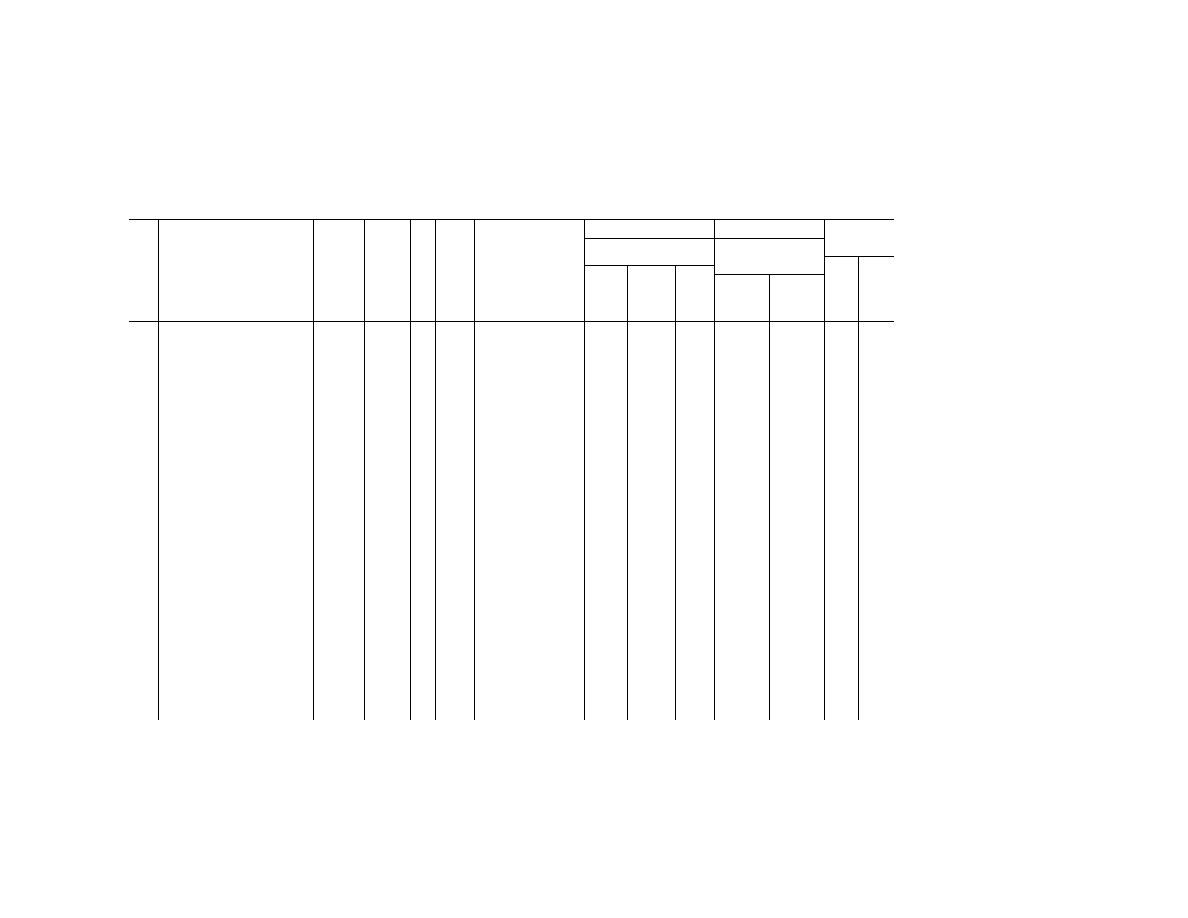
296
49 CFR Ch. I (10–1–23 Edition)
§
172.101
§ 172.101 H
AZARDOUS
M
ATERIALS
T
ABLE
—Continued
Sym-
bols
Hazardous materials descriptions
and proper shipping names
Hazard
class or
Division
Identi-
fication
Numbers
PG
Label
Codes
Special provisions
(§ 172.102)
(8)
(9)
(10)
Vessel
stowage
Packaging
(§ 173.***)
Quantity limitations
(see §§ 173.27 and
175.75)
Loca-
tion
Other
Excep-
tions
Non-bulk
Bulk
Passenger
aircraft/rail
Cargo air-
craft only
(1)
(2)
(3)
(4)
(5)
(6)
(7)
(8A)
(8B)
(8C)
(9A)
(9B)
(10A)
(10B)
Sodium carbonate peroxyhydrate
5.1 UN3378
II
5.1
B120, IB8, IP2, IP4, T3,
TP33
152
212
240
5 kg
25 kg
A
13, 25,
75
III
5.1
B120, IB8, IP3, T1,
TP33
152
213
240
25 kg
100 kg
A
13, 25,
75
Sodium chlorate
5.1 UN1495
II
5.1
A9, IB8, IP2, IP4, N34,
T3, TP33
152
212
240
5 kg
25 kg
A
56, 58
Sodium chlorate, aqueous solution
5.1 UN2428
II
5.1
A2, IB2, T4, TP1 152
202
241
1 L
5 L
B
56, 58,
133
III
5.1
A2, IB2, T4, TP1 152
203
241
2.5 L
30 L
B
56, 58,
69, 133
Sodium chlorate mixed with dinitro-
toluene, see Explosive blasting,
type C
Sodium chlorite
5.1 UN1496
II
5.1
A9, IB8, IP2, IP4, N34,
T3, TP33
152
212
242
5 kg
25 kg
A
56, 58
Sodium chloroacetate
6.1 UN2659
III
6.1
IB8, IP3, T1, TP33 153
213
240
100 kg
200 kg
A
Sodium cuprocyanide, solid
6.1 UN2316
I
6.1
IB7, IP1, T6, TP33 None
211
242
5 kg
50 kg
A
52
Sodium cuprocyanide, solution
6.1 UN2317
I
6.1
T14, TP2, TP13 None
201
243
1 L
30 L
B
40, 52
Sodium cyanide, solid
6.1 UN1689
I
6.1
B69, B77, IB7, N74,
N75, T6, TP33, W31
None
211
242
5 kg
50 kg
B
52
Sodium cyanide solution
6.1 UN3414
I
6.1
B69, B77, N74, N75,
T14, TP2, TP13, W31
None
201
243
1 L
30 L
B
52
II
6.1
B69, B77, IB2, N74,
N75, T11, TP2, TP13,
TP27, W31
153
202
243
5 L
60 L
B
52
III
6.1
B69, B77, IB3, N74,
N75, T7, TP2, TP13,
TP28, W31
153
203
241
60 L
220 L
A
52
Sodium dichloroisocyanurate or So-
dium dichloro-s-triazinetrione, see
Dichloroisocyanuric acid etc
Sodium dinitro-o-cresolate, dry or
wetted with less than 15 percent
water, by mass
1.3C UN0234
......
1.3C
........................................
None
62
None
Forbidden
Forbidden
04
25, 5E
Sodium dinitro-o-cresolate, wetted
with not less than 10% water, by
mass
4.1 UN3369
I
4.1
162, A8, A19, N41, N84,
W31
None
211
None
0.5 kg
0.5 kg
E
28, 36
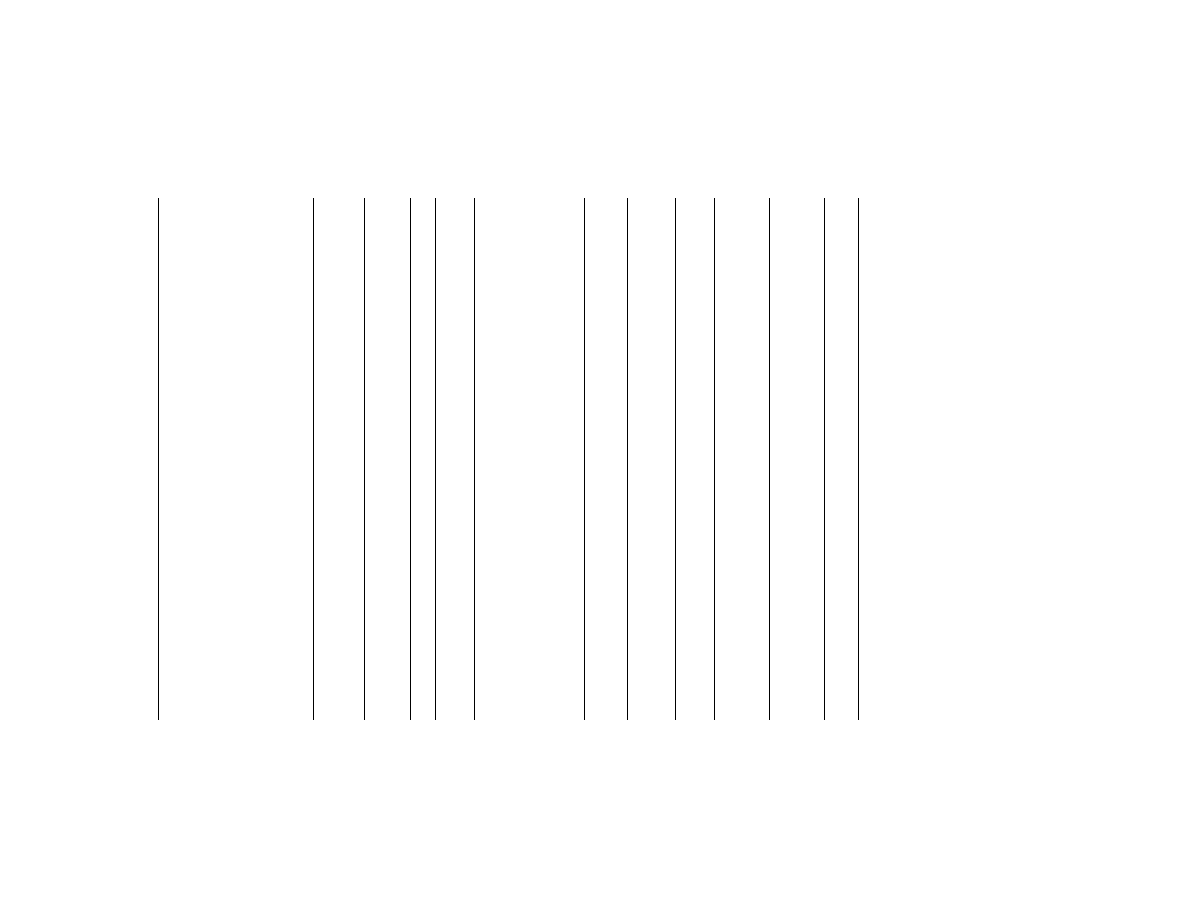
297
Pipeline and Haz. Matls. Safety Admin., DOT
§
172.101
Sodium dinitro-o-cresolate, wetted
with not less than 15 percent
water, by mass
4.1 UN1348
I
4.1,
6.1
23, A8, A19, A20, N41,
W31
None
211
None
1 kg
15 kg
E
28, 36
Sodium dithionite or Sodium hydro-
sulfite
4.2 UN1384
II
4.2
A19, A20, IB6, IP2, T3,
TP33, W31
None
212
241
15 kg
50 kg
E
13
Sodium fluoride, solid
6.1 UN1690
III
6.1
IB8, IP3, T1, TP33 153
213
240
100 kg
200 kg
A
52
Sodium fluoride solution
6.1 UN3415
III
6.1
IB3, T4, TP1 153
203
241
60 L
220 L
A
52
Sodium fluoroacetate
6.1 UN2629
I
6.1
IB7, IP1, T6, TP33 None
211
242
5 kg
50 kg
E
Sodium fluorosilicate
6.1 UN2674
III
6.1
IB8, IP3, T1, TP33 153
213
240
100 kg
200 kg
A
52
Sodium hydrate, see Sodium hy-
droxide, solid
Sodium hydride
4.3 UN1427
I
4.3
A19, N40, W31 None
211
242
Forbidden
15 kg
E
13, 52,
148
Sodium hydrogendifluoride
8 UN2439
II
8
IB8, IP2, IP4, N3, N34,
T3, TP33
154
212
240
15 kg
50 kg
A
12, 25,
40, 52,
53, 58
Sodium hydrosulfide, with less than
25 percent water of crystallization
4.2 UN2318
II
4.2
A7, A19, A20, IB6, IP2,
T3, TP33, W31
None
212
241
15 kg
50 kg
A
52
Sodium hydrosulfide with not less
than 25 percent water of crys-
tallization
8 UN2949
II
8
A7, IB8, IP2, IP4, T7,
TP2
154
212
240
15 kg
50 kg
A
52
Sodium hydrosulfite, see Sodium
dithionite
Sodium hydroxide, solid
8 UN1823
II
8
IB8, IP2, IP4, T3, TP33 154
212
240
15 kg
50 kg
A
52.
Sodium hydroxide solution
8 UN1824
II
8
B2, IB2, N34, T7, TP2 154
202
242
1 L
30 L
A
52.
III
8
IB3, N34, T4, TP1 154
203
241
5 L
60 L
A
52.
Sodium hypochlorite, solution, see
Hypochlorite solutions etc
Sodium metal, liquid alloy, see Al-
kali metal alloys, liquid, n.o.s.
Sodium methylate
4.2 UN1431
II
4.2, 8
A7, A19, IB5, IP2, T3,
TP33, W31
None
212
242
15 kg
50 kg
B
52
Sodium methylate solutions in alco-
hol
3 UN1289
II
3, 8
IB2, T7, TP1, TP8 150
202
243
1 L
5 L
B
52
................
III
3, 8
B1, IB3, T4, TP1 150
203
242
5 L
60 L
A
52
Sodium monoxide
8 UN1825
II
8
IB8, IP2, IP4, T3, TP33 154
212
240
15 kg
50 kg
A
52.
Sodium nitrate
5.1 UN1498
III
5.1
A1, A29, B120, IB8, IP3,
T1, TP33, W1
152
213
240
25 kg
100 kg
A
Sodium nitrate and potassium ni-
trate mixtures
5.1 UN1499
III
5.1
A1, A29, B120, IB8, IP3,
T1, TP33, W1
152
213
240
25 kg
100 kg
A
Sodium nitrite
5.1 UN1500
III
5.1,
6.1
A1, A29, IB8, IP3, T1,
TP33
152
213
240
25 kg
100 kg
A
56, 58
Sodium pentachlorophenate
6.1 UN2567
II
6.1
IB8, IP2, IP4, T3, TP33 153
212
242
25 kg
100 kg
A
Sodium perborate monohydrate
5.1 UN3377
III
5.1
B120, IB8, IP3, T1,
TP33
152
213
240
25 kg
100 kg
A
13, 25,
75
Sodium perchlorate
5.1 UN1502
II
5.1
IB6, IP2, T3, TP33 152
212
242
5 kg
25 kg
A
56, 58
Sodium permanganate
5.1 UN1503
II
5.1
IB6, IP2, T3, TP33 152
212
242
5 kg
25 kg
D
56, 58,
138
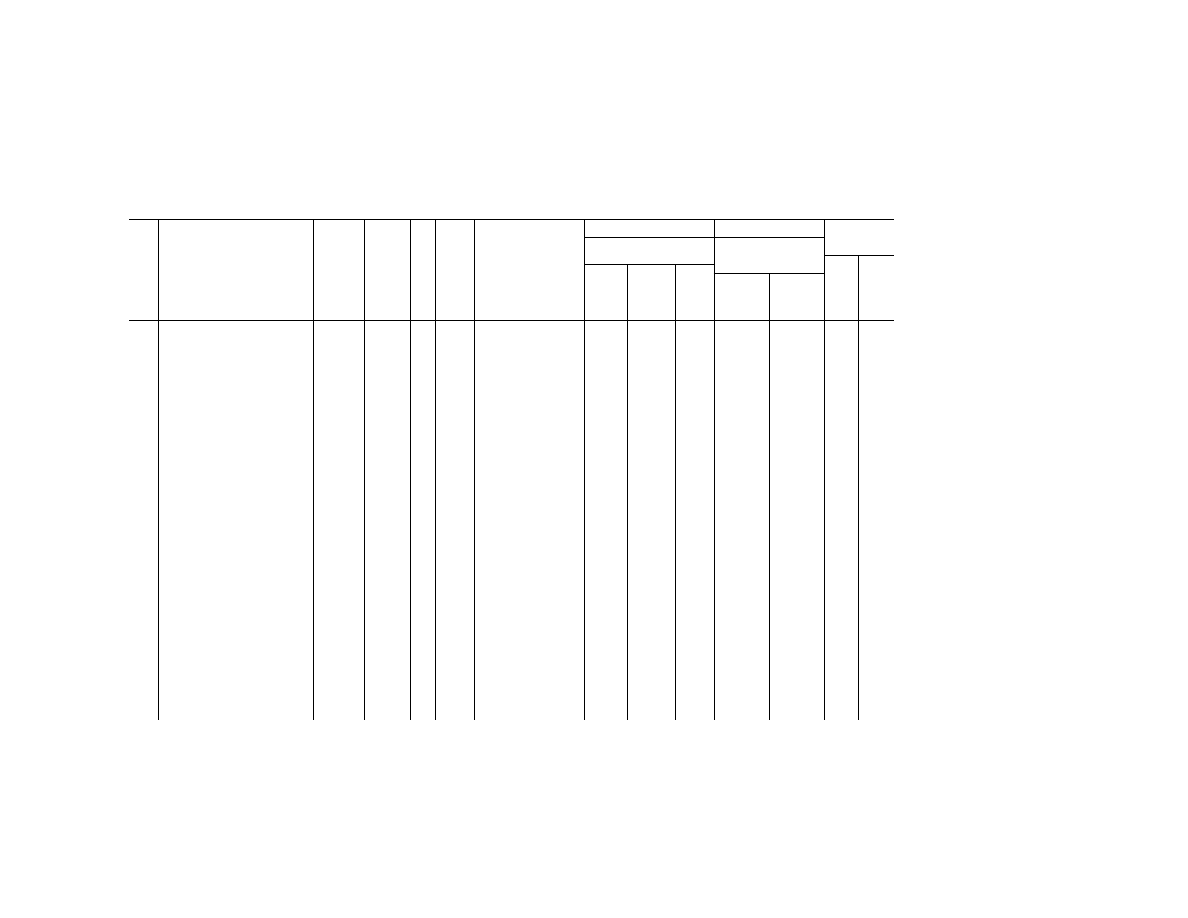
298
49 CFR Ch. I (10–1–23 Edition)
§
172.101
§ 172.101 H
AZARDOUS
M
ATERIALS
T
ABLE
—Continued
Sym-
bols
Hazardous materials descriptions
and proper shipping names
Hazard
class or
Division
Identi-
fication
Numbers
PG
Label
Codes
Special provisions
(§ 172.102)
(8)
(9)
(10)
Vessel
stowage
Packaging
(§ 173.***)
Quantity limitations
(see §§ 173.27 and
175.75)
Loca-
tion
Other
Excep-
tions
Non-bulk
Bulk
Passenger
aircraft/rail
Cargo air-
craft only
(1)
(2)
(3)
(4)
(5)
(6)
(7)
(8A)
(8B)
(8C)
(9A)
(9B)
(10A)
(10B)
Sodium peroxide
5.1 UN1504
I
5.1
A20, IB5, IP1, N34 None
211
None
Forbidden
15 kg
C
13, 52,
66, 75,
148
Sodium peroxoborate, anhydrous
5.1 UN3247
II
5.1
IB8, IP2, IP4, T3, TP33 152
212
240
5 kg
25 kg
A
13, 25
Sodium persulfate
5.1 UN1505
III
5.1
A1, IB8, IP3, T1, TP33 152
213
240
25 kg
100 kg
A
58, 145
Sodium phosphide
4.3 UN1432
I
4.3,
6.1
A19, N40, W31 None
211
None
Forbidden
15 kg
E
13, 40,
52, 85,
148
Sodium picramate, dry or wetted
with less than 20 percent water,
by mass
1.3C UN0235
......
1.3C
........................................
None
62
None
Forbidden
Forbidden
04
25, 5E
Sodium picramate, wetted with not
less than 20 percent water, by
mass
4.1 UN1349
I
4.1
23, A8, A19, N41, W31 None
211
None
Forbidden
15 kg
E
28, 36
Sodium picryl peroxide
Forbidden
Sodium potassium alloys, see Po-
tassium sodium alloys
Sodium selenate, see Selenates or
Selenites
Sodium sulfide, anhydrous or So-
dium sulfide with less than 30
percent water of crystallization
4.2 UN1385
II
4.2
A19, A20, IB6, IP2, N34,
T3, TP33, W31, W40
None
212
241
15 kg
50 kg
A
52
Sodium sulfide, hydrated with not
less than 30 percent water
8 UN1849
II
8
IB8, IP2, IP4, T3, TP33 154
212
240
15 kg
50 kg
A
52.
Sodium superoxide
5.1 UN2547
I
5.1
A20, IB6, IP1, N34 None
211
None
Forbidden
15 kg
D
13, 52,
66, 75,
148
Sodium tetranitride
Forbidden
G
Solids containing corrosive liquid,
n.o.s.
8 UN3244
II
8
49, IB5, T3, TP33 154
212
240
15 kg
50 kg
B
40
G
Solids containing flammable liquid,
n.o.s.
4.1 UN3175
II
4.1
47, IB6, IP2, T3, TP33 151
212
240
15 kg
50 kg
B
G
Solids containing toxic liquid, n.o.s.
6.1 UN3243
II
6.1
48, IB2, T2, TP33 153
212
240
25 kg
100 kg
B
40
Sounding devices, explosive
1.2F UN0204
......
1.2F
........................................
None
62
62
Forbidden
Forbidden
03
25
Sounding devices, explosive
1.1F UN0296
......
1.1F
........................................
None
62
62
Forbidden
Forbidden
03
25
Sounding devices, explosive
1.1D UN0374
......
1.1D
........................................
None
62
62
Forbidden
Forbidden
03
25
Sounding devices, explosive
1.2D UN0375
......
1.2D
........................................
None
62
62
Forbidden
Forbidden
03
25
Spirits of salt, see Hydrochloric acid
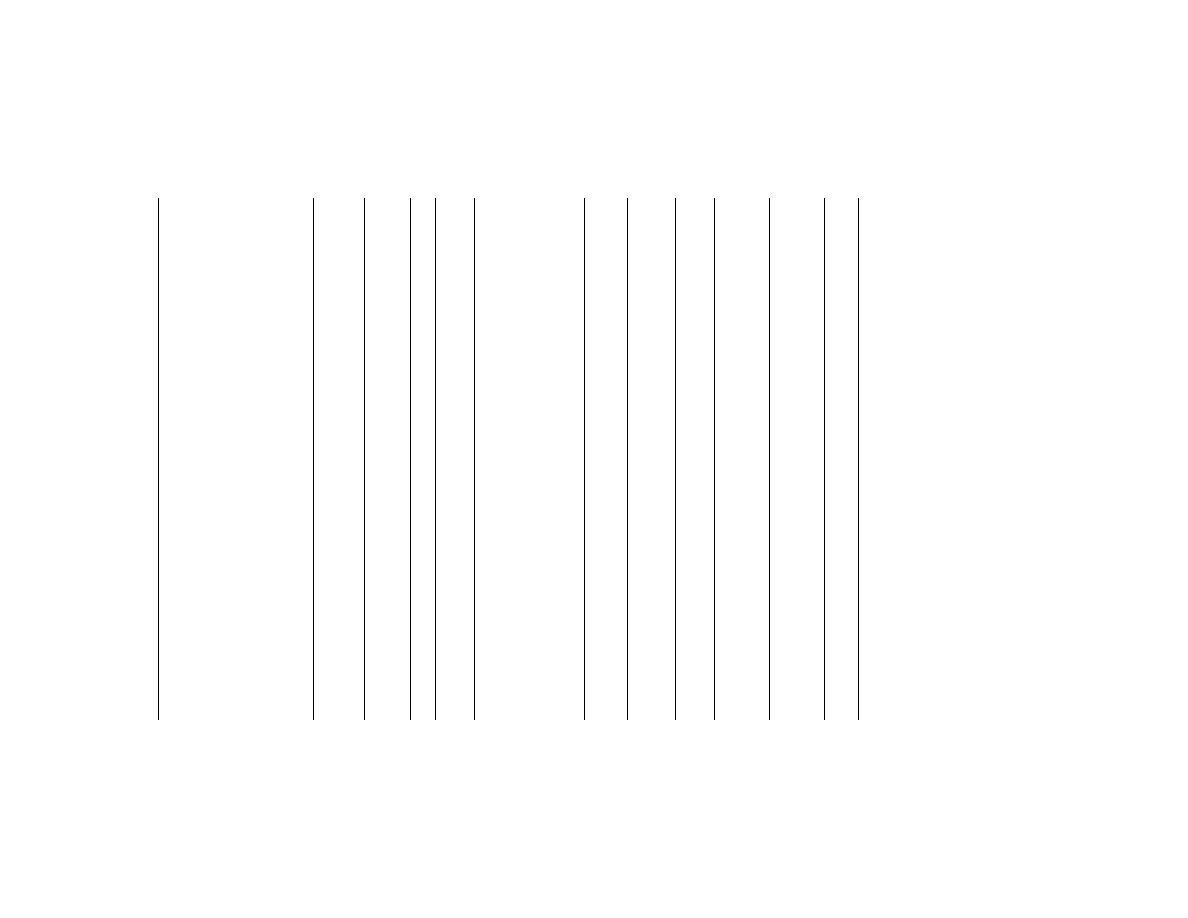
299
Pipeline and Haz. Matls. Safety Admin., DOT
§
172.101
Squibs, see Igniters etc
Stannic chloride, anhydrous
8 UN1827
II
8
B2, IB2, T7, TP2 154
202
242
1 L
30 L
C
53, 58
Stannic chloride pentahydrate
8 UN2440
III
8
IB8, IP3, T1, TP33 154
213
240
25 kg
100 kg
A
53, 58
Stannic phosphide
4.3 UN1433
I
4.3,
6.1
A19, N40, W31 None
211
242
Forbidden
15 kg
E
13, 40,
52, 85,
148
Steel swarf, see Ferrous metal bor-
ings, etc
Stibine
2.3 UN2676
2.3,
2.1
1 None
304
None
Forbidden
Forbidden
D
40
Storage batteries, wet, see Bat-
teries, wet etc
Strontium arsenite
6.1 UN1691
II
6.1
IB8, IP2, IP4, T3, TP33 153
212
242
25 kg
100 kg
A
Strontium chlorate
5.1 UN1506
II
5.1
A1, A9, IB8, IP2, IP4,
N34, T3, TP33
152
212
242
5 kg
25 kg
A
56, 58
Strontium nitrate
5.1 UN1507
III
5.1
A1, A29, IB8, IP3, T1,
TP33
152
213
240
25 kg
100 kg
A
Strontium perchlorate
5.1 UN1508
II
5.1
IB6, IP2, T3, TP33 152
212
242
5 kg
25 kg
A
56, 58
Strontium peroxide
5.1 UN1509
II
5.1
IB6, IP2, T3, TP33,
W100
152
212
242
5 kg
25 kg
C
13, 52,
66, 75,
148
Strontium phosphide
4.3 UN2013
I
4.3,
6.1
A19, N40, W31 None
211
None
Forbidden
15 kg
E
13, 40,
52, 85,
148
Strychnine or Strychnine salts
6.1 UN1692
I
6.1
IB7, IP1, T6, TP33 None
211
242
5 kg
50 kg
A
40
Styphnic acid, see
Trinitroresorcinol, etc
Styrene monomer, stabilized
3 UN2055
III
3
387, B1, IB3, T2, TP1 150
203
242
60 L
220 L
C
25
G
Substances, explosive, n.o.s.
1.1L UN0357
......
1.1L
101 None
62
None
Forbidden
Forbidden
05
25,
14E,
15E
G
Substances, explosive, n.o.s.
1.2L UN0358
......
1.2L
101 None
62
None
Forbidden
Forbidden
05
25,
14E,
15E
G
Substances, explosive, n.o.s.
1.3L UN0359
......
1.3L
101 None
62
None
Forbidden
Forbidden
05
25,
14E,
15E
G
Substances, explosive, n.o.s.
1.1A UN0473
......
1.1A
101, 111 None
62
None
Forbidden
Forbidden
05
25
G
Substances, explosive, n.o.s.
1.1C UN0474
......
1.1C
101 None
62
None
Forbidden
Forbidden
04
25
G
Substances, explosive, n.o.s.
1.1D UN0475
......
1.1D
101 None
62
None
Forbidden
Forbidden
04
25
G
Substances, explosive, n.o.s.
1.1G UN0476
......
1.1G
101 None
62
None
Forbidden
Forbidden
03
25
G
Substances, explosive, n.o.s.
1.3C UN0477
......
1.3C
101 None
62
None
Forbidden
Forbidden
04
25
G
Substances, explosive, n.o.s.
1.3G UN0478
......
1.3G
101 None
62
None
Forbidden
Forbidden
03
25
G
Substances, explosive, n.o.s.
1.4C UN0479
......
1.4C
101 None
62
None
Forbidden
75 kg
02
25
G
Substances, explosive, n.o.s.
1.4D UN0480
......
1.4D
101 None
62
None
Forbidden
75 kg
02
25
G
Substances, explosive, n.o.s
1.4S UN0481
......
1.4S
101, 347 None
62
None
25 kg
75 kg
01
25
G
Substances, explosive, n.o.s.
1.4G UN0485
......
1.4G
101 None
62
None
Forbidden
75 kg
02
25
G
Substances, explosive, very insen-
sitive, n.o.s. or Substances, EVI,
n.o.s.
1.5D UN0482
......
1.5D
101 None
62
None
Forbidden
Forbidden
03
25
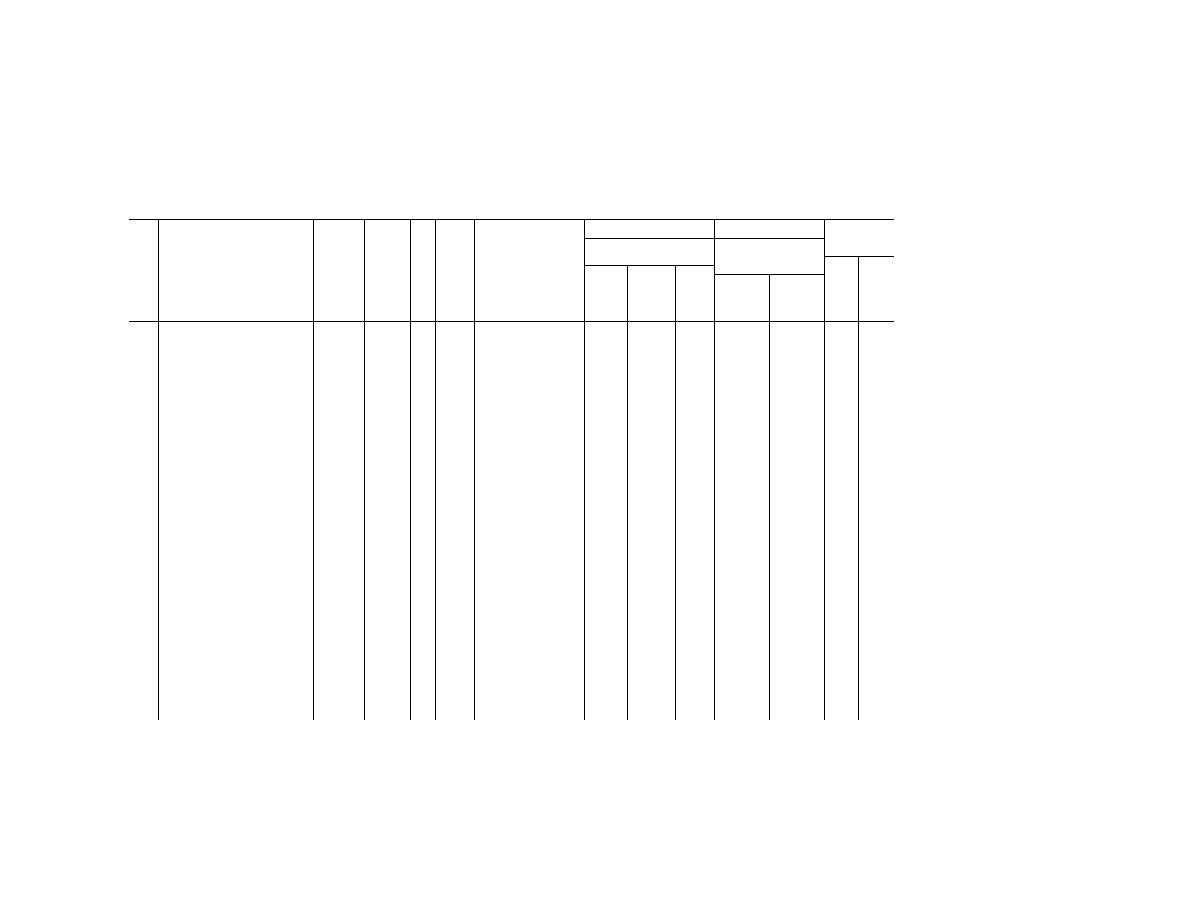
300
49 CFR Ch. I (10–1–23 Edition)
§
172.101
§ 172.101 H
AZARDOUS
M
ATERIALS
T
ABLE
—Continued
Sym-
bols
Hazardous materials descriptions
and proper shipping names
Hazard
class or
Division
Identi-
fication
Numbers
PG
Label
Codes
Special provisions
(§ 172.102)
(8)
(9)
(10)
Vessel
stowage
Packaging
(§ 173.***)
Quantity limitations
(see §§ 173.27 and
175.75)
Loca-
tion
Other
Excep-
tions
Non-bulk
Bulk
Passenger
aircraft/rail
Cargo air-
craft only
(1)
(2)
(3)
(4)
(5)
(6)
(7)
(8A)
(8B)
(8C)
(9A)
(9B)
(10A)
(10B)
Substituted nitrophenol pesticides,
liquid, flammable, toxic, flash
point less than 23 degrees C
3 UN2780
I
3, 6.1
T14, TP2, TP13, TP27 None
201
243
Forbidden
30 L
B
40
II
3, 6.1
IB2, T11, TP2, TP13,
TP27
150
202
243
1 L
60 L
B
40
Substituted nitrophenol pesticides,
liquid, toxic
6.1 UN3014
I
6.1
T14, TP2, TP13, TP27 None
201
243
1 L
30 L
B
40
II
6.1
IB2, T11, TP2, TP13,
TP27
153
202
243
5 L
60 L
B
40
III
6.1
IB3, T7, TP2, TP28 153
203
241
60 L
220 L
A
40
Substituted nitrophenol pesticides,
liquid, toxic, flammable, flash
point not less than 23 degrees C
6.1 UN3013
I
6.1, 3
T14, TP2, TP13, TP27 None
201
243
1 L
30 L
B
40
II
6.1, 3
IB2, T11, TP2, TP13,
TP27
153
202
243
5 L
60 L
B
40
III
6.1, 3
B1, IB3, T7, TP2, TP28 153
203
242
60 L
220 L
A
40
Substituted nitrophenol pesticides,
solid, toxic
6.1 UN2779
I
6.1
IB7, IP1, T6, TP33 None
211
242
5 kg
50 kg
A
40
II
6.1
IB8, IP2, IP4, T3, TP33 153
212
242
25 kg
100 kg
A
40
III
6.1
IB8, IP3, T1, TP33 153
213
240
100 kg
200 kg
A
40
Sucrose octanitrate (dry)
Forbidden
Sulfamic acid
8 UN2967
III
8
IB8, IP3, T1, TP33 154
213
240
25 kg
100 kg
A
53, 58
D
Sulfur
9 NA1350
III
9
30, B120, IB8, IP2 None
None
240
No Limit
No Limit
A
25, 74
I
Sulfur
4.1 UN1350
III
4.1
30, B120, IB8, IP3, T1,
TP33
151
None
240
25 kg
100 kg
A
25, 74
Sulfur and chlorate, loose mixtures
of
Forbidden
Sulfur chlorides
8 UN1828
I
8
5, A7, A10, B10, B77,
N34, T20, TP2
None
201
243
Forbidden
2.5 L
C
40, 53,
58
Sulfur dichloride, see Sulfur
chlorides
Sulfur dioxide
2.3 UN1079
2.3, 8
3, B14, T50, TP19 None
304
314,
315
Forbidden
Forbidden
D
40
Sulfur dioxide solution, see Sulfu-
rous acid
Sulfur hexafluoride
2.2 UN1080
2.2
306
304
314,
315
75 kg
150 kg
A
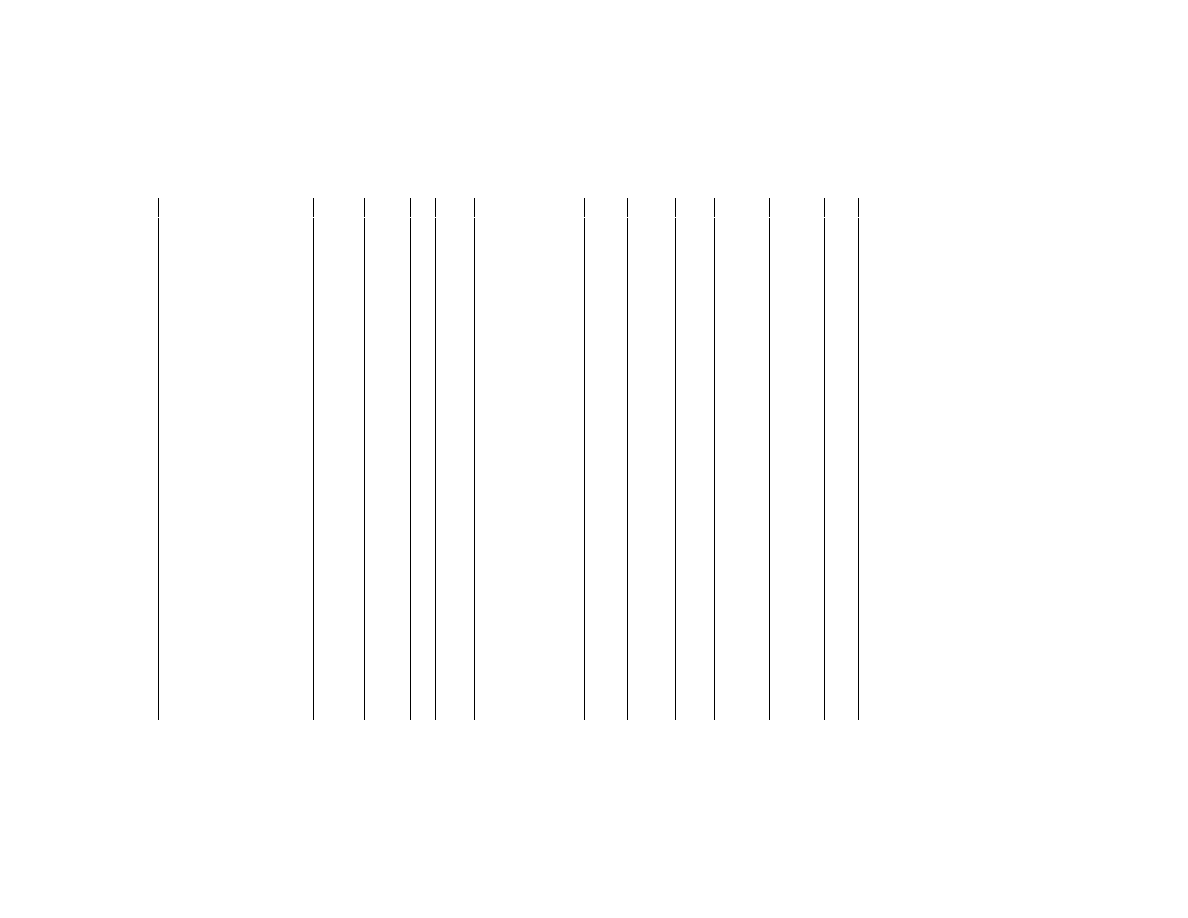
301
Pipeline and Haz. Matls. Safety Admin., DOT
§
172.101
D
Sulfur, molten
9 NA2448
III
9
30,B13, IB3, R1, T1,
TP3
None
213
247
Forbidden
Forbidden
C
61
I
Sulfur, molten
4.1 UN2448
III
4.1
30, B13, IB1, R1, T1,
TP3
None
213
247
Forbidden
Forbidden
C
74
Sulfur tetrafluoride
2.3 UN2418
2.3, 8
1 None
302
245
Forbidden
Forbidden
D
40, 52
+
Sulfur trioxide, stabilized
8 UN1829
I
8, 6.1
2, 387, B9, B14, B32,
B49, B77, N34, T20,
TP4, TP13, TP25, TP26,
TP38, TP45
None
227
244
Forbidden
Forbidden
A
25, 40,
53, 58
Sulfuretted hydrogen, see Hydrogen
sulfide
Sulfuric acid, fuming with less than
30 percent free sulfur trioxide
8 UN1831
I
8
A7, N34, T20, TP2,TP13 None
201
243
Forbidden
2.5 L
C
14, 40,
53, 58
Sulfuric acid, fuming with 30 per-
cent or more free sulfur trioxide
8 UN1831
I
8, 6.1
2, B9, B14, B32, B77,
B84, N34, T20, TP2,
TP12, TP13
None
227
244
Forbidden
Forbidden
C
53, 58
Sulfuric acid, spent
8 UN1832
II
8
A3, A7, B2, B83, B84,
IB2, N34, T8, TP2
154
202
242
Forbidden
30 L
C
14, 53,
58
Sulfuric acid with more than 51 per-
cent acid
8 UN1830
II
8
A3, A7, B3, B83, B84,
IB2, N34, T8, TP2
154
202
242
1 L
30 L
C
14, 53,
58
Sulfuric acid with not more than
51% acid
8 UN2796
II
8
386, A3, A7, B2, B15,
IB2, N6, N34, T8, TP2
154
202
242
1 L
30 L
B
53, 58
Sulfuric and hydrofluoric acid mix-
tures, see Hydrofluoric and sul-
furic acid mixtures
Sulfuric anhydride, see Sulfur tri-
oxide, stabilized
Sulfurous acid
8 UN1833
II
8
B3, IB2, T7, TP2 154
202
242
1 L
30 L
B
40, 53,
58
+
Sulfuryl chloride
6.1 UN1834
I
6.1, 8
1, B6, B9, B10, B14,
B30, B77, N34, T22,
TP2, TP13, TP38, TP44
None
226
244
Forbidden
Forbidden
D
40, 53,
58
Sulfuryl fluoride
2.3 UN2191
2.3
4 None
304
314,
315
Forbidden
Forbidden
D
40
Tars, liquid including road oils and
cutback bitumens
3 UN1999
II
3
149, B13, IB2, T3, TP3,
TP29
150
202
242
5 L
60 L
B
III
3
B1, B13, IB3, T1, TP3 150
203
242
60 L
220 L
A
Tear gas candles
6.1 UN1700
......
6.1,
4.1
........................................
None
340
None
Forbidden
50 kg
D
40
Tear gas cartridges, see Ammuni-
tion, tear-producing, etc
D
Tear gas devices with more than 2
percent tear gas substances, by
mass
6.1 NA1693
I
6.1
None
340
None
Forbidden
Forbidden
D
40
II
6.1
None
340
None
Forbidden
Forbidden
D
40
Tear gas devices, with not more
than 2 percent tear gas sub-
stances, by mass, see Aerosols,
etc
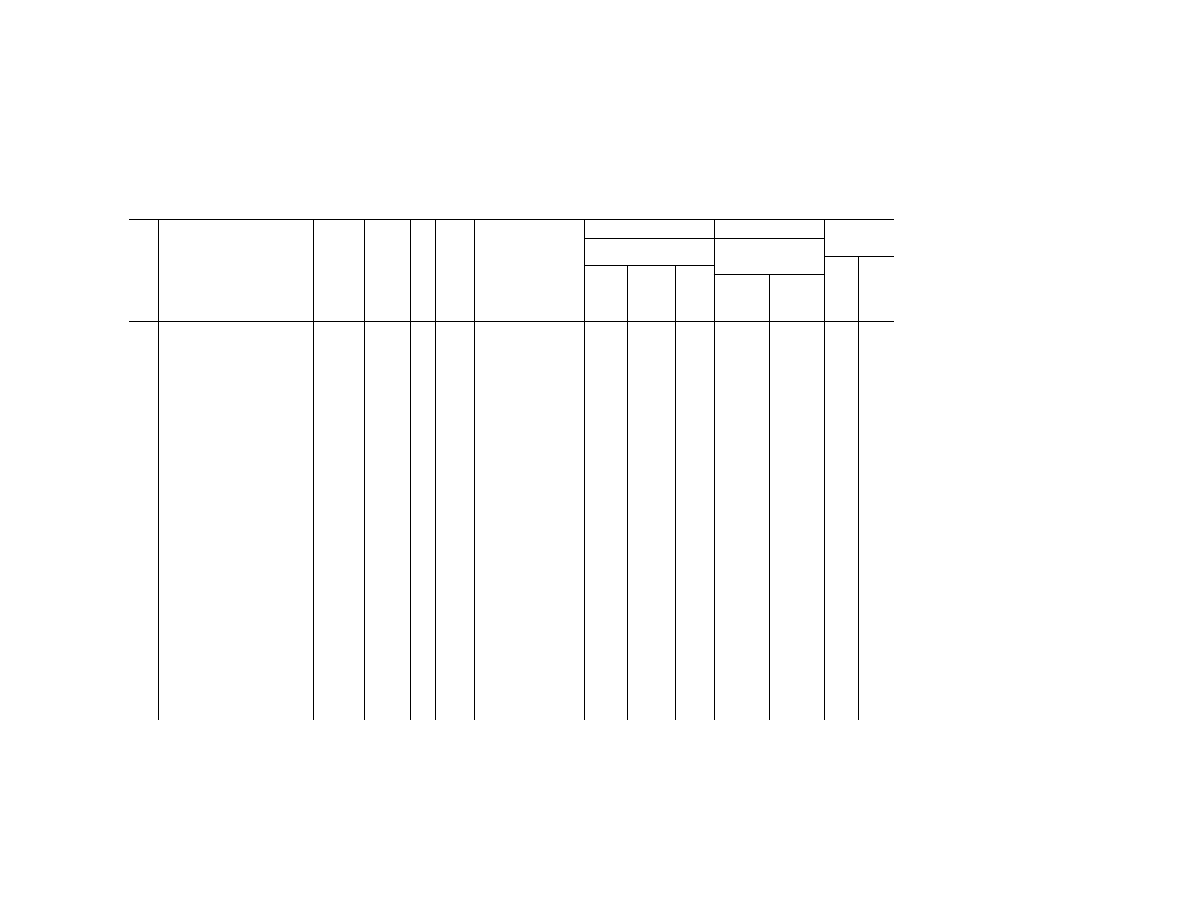
302
49 CFR Ch. I (10–1–23 Edition)
§
172.101
§ 172.101 H
AZARDOUS
M
ATERIALS
T
ABLE
—Continued
Sym-
bols
Hazardous materials descriptions
and proper shipping names
Hazard
class or
Division
Identi-
fication
Numbers
PG
Label
Codes
Special provisions
(§ 172.102)
(8)
(9)
(10)
Vessel
stowage
Packaging
(§ 173.***)
Quantity limitations
(see §§ 173.27 and
175.75)
Loca-
tion
Other
Excep-
tions
Non-bulk
Bulk
Passenger
aircraft/rail
Cargo air-
craft only
(1)
(2)
(3)
(4)
(5)
(6)
(7)
(8A)
(8B)
(8C)
(9A)
(9B)
(10A)
(10B)
Tear gas grenades, see Tear gas
candles
G
Tear gas substances, liquid, n.o.s
6.1 UN1693
I
6.1
W31 None
201
None
Forbidden
Forbidden
D
40
II
6.1
IB2, W31 None
202
None
Forbidden
5 L
D
40
G
Tear gas substance, solid, n.o.s
6.1 UN3448
I
6.1
T6, TP33, W31 None
211
242
Forbidden
Forbidden
D
40
II
6.1
IB8, IP2, IP4, T3, TP33,
W31
None
212
242
Forbidden
25 kg
D
40
G
Tellurium compound, n.o.s
6.1 UN3284
I
6.1
IB7, IP1, T6, TP33 None
211
242
5 kg
50 kg
B
II
6.1
IB8, IP2, IP4, T3, TP33 153
212
242
25 kg
100 kg
B
III
6.1
IB8, IP3, T1, TP33 153
213
240
100 kg
200 kg
A
Tellurium hexafluoride
2.3 UN2195
2.3, 8
1 None
302
None
Forbidden
Forbidden
D
40
Terpene hydrocarbons, n.o.s.
3 UN2319
III
3
B1, IB3, T4, TP1, TP29 150
203
242
60 L
220 L
A
Terpinolene
3 UN2541
III
3
B1, IB3, T2, TP1 150
203
242
60 L
220 L
A
Tetraazido benzene quinone
Forbidden
Tetrabromoethane
6.1 UN2504
III
6.1
IB3, T4, TP1 153
203
241
60 L
220 L
A
1,1,2,2-Tetrachloroethane
6.1 UN1702
II
6.1
IB2, N36, T7, TP2 153
202
243
5 L
60 L
A
40
Tetrachloroethylene
6.1 UN1897
III
6.1
IB3, N36, T4, TP1 153
203
241
60 L
220 L
A
40
Tetraethyl dithiopyrophosphate
6.1 UN1704
II
6.1
IB2, T7, TP2 153
212
242
25 kg
100 kg
D
40
Tetraethyl silicate
3 UN1292
III
3
B1, IB3, T2, TP1 150
203
242
60 L
220 L
A
Tetraethylammonium perchlorate
(dry)
Forbidden
Tetraethylenepentamine
8 UN2320
III
8
IB3, T4, TP1 154
203
241
5 L
60 L
A
52.
1,1,1,2-Tetrafluoroethane or Refrig-
erant gas R 134a
2.2 UN3159
2.2
T50 306
304
314,
315
75 kg
150 kg
A
Tetrafluoroethylene, stabilized
2.1 UN1081
......
2.1
387 306
304
None
Forbidden
150 kg
E
25, 40
Tetrafluoromethane or Refrigerant
gas R 14
2.2 UN1982
......
2.2
........................................
306
302
None
75 kg
150 kg
A
1,2,3,6-Tetrahydrobenzaldehyde
3 UN2498
III
3
B1, IB3, T2, TP1 150
203
242
60 L
220 L
A
Tetrahydrofuran
3 UN2056
II
3
IB2, T4, TP1 150
202
242
5 L
60 L
B
Tetrahydrofurfurylamine
3 UN2943
III
3
B1, IB3, T2, TP1 150
203
242
60 L
220 L
A
Tetrahydrophthalic anhydrides with
more than 0.05 percent of maleic
anhydride
8 UN2698
III
8
IB8, IP3, T1, TP33 154
213
240
25 kg
100 kg
A
53, 58
1,2,3,6-Tetrahydropyridine
3 UN2410
II
3
IB2, T4, TP1 150
202
242
5 L
60 L
B
Tetrahydrothiophene
3 UN2412
II
3
IB2, T4, TP1 150
202
242
5 L
60 L
B
Tetramethylammonium hydroxide,
solid
8 UN3423
II
8
B2, IB8, IP2, IP4, T3,
TP33
154
213
240
15 kg
50 kg
A
52
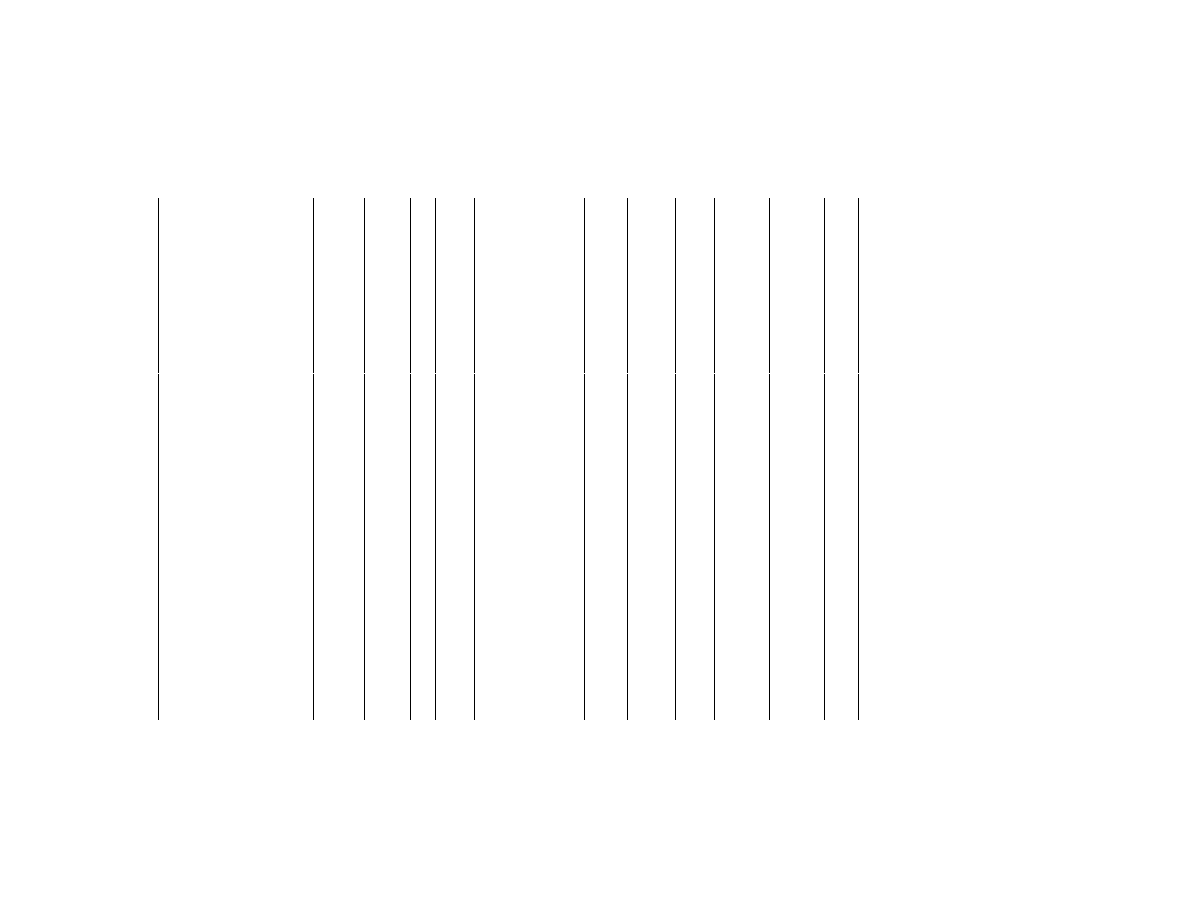
303
Pipeline and Haz. Matls. Safety Admin., DOT
§
172.101
Tetramethylammonium hydroxide
solution
8 UN1835
II
8
B2, IB2, T7, TP2 154
202
242
1 L
30 L
A
52
III
8
B2, IB3, T7, TP2 154
203
241
5 L
60 L
A
52
Tetramethylene diperoxide
dicarbamide
Forbidden
Tetramethylsilane
3 UN2749
I
3
A7, T14, TP2 None
201
243
Forbidden
30 L
D
Tetranitro diglycerin
Forbidden
Tetranitroaniline
1.1D UN0207
......
1.1D
........................................
None
62
None
Forbidden
Forbidden
04
25
+
Tetranitromethane
6.1 UN1510
I
6.1,
5.1
2, B32, T20, TP2, TP13,
TP38, TP44
None
227
None
Forbidden
Forbidden
D
40, 66
2,3,4,6-Tetranitrophenol
Forbidden
2,3,4,6-Tetranitrophenyl methyl ni-
tramine
Forbidden
2,3,4,6-Tetranitrophenylnitramine
Forbidden
Tetranitroresorcinol (dry)
Forbidden
2,3,5,6-Tetranitroso-1,4-
dinitrobenzene
Forbidden
2,3,5,6-Tetranitroso nitrobenzene
(dry)
Forbidden
Tetrapropylorthotitanate
3 UN2413
III
3
B1, IB3, T4, TP1 150
203
242
60 L
220 L
A
Tetrazene, see Guanyl
nitrosaminoguanyltetrazene
Tetrazine (dry)
Forbidden
Tetrazol-1-acetic acid
1.4C UN0407
......
1.4C
........................................
None
62
None
Forbidden
75 kg
02
25
1H-Tetrazole
1.1D UN0504
......
1.1D
........................................
None
62
None
Forbidden
Forbidden
04
25, 5E
Tetrazolyl azide (dry)
Forbidden
Tetryl, see
Trinitrophenylmethylnitramine
A I W Textile waste, wet
4.2 UN1857
III
4.2
151
213
240
Forbidden
Forbidden
A
Thallium chlorate
5.1 UN2573
II
5.1,
6.1
IB6, IP2, T3, TP33 152
212
242
5 kg
25 kg
A
56, 58
G
Thallium compounds, n.o.s
6.1 UN1707
II
6.1
IB8, IP2, IP4, T3, TP33 153
212
242
25 kg
100 kg
A
Thallium nitrate
6.1 UN2727
II
6.1,
5.1
IB6, IP2, T3, TP33 153
212
242
5 kg
25 kg
A
4-Thiapentanal
6.1 UN2785
III
6.1
IB3, T4, TP1, W31 153
203
241
60 L
220 L
D
25, 49
Thioacetic acid
3 UN2436
II
3
IB2, T4, TP1 150
202
242
5 L
60 L
B
Thiocarbamate pesticide, liquid,
flammable, toxic, flash point less
than 23 degrees C
3 UN2772
I
3, 6.1
T14, TP2, TP13, TP27 None
201
243
Forbidden
30 L
B
40
II
3, 6.1
IB2, T11, TP13, TP27 150
202
243
1 L
60 L
B
40
Thiocarbamate pesticide, liquid,
toxic, flammable, flash point not
less than 23 degrees C
6.1 UN3005
I
6.1, 3
T14, TP2, TP13 None
201
243
1 L
30 L
B
40
II
6.1, 3
IB2, T11, TP2, TP13,
TP27
153
202
243
5 L
60 L
B
40
III
6.1, 3
IB3, T7, TP2, TP28 153
203
242
60 L
220 L
A
40
Thiocarbamate pesticide, liquid,
toxic
6.1 UN3006
I
6.1
T14, TP2, TP13 None
201
243
1 L
30 L
B
40
II
6.1
IB2, T11, TP2, TP13,
TP27
153
202
243
5 L
60 L
B
40
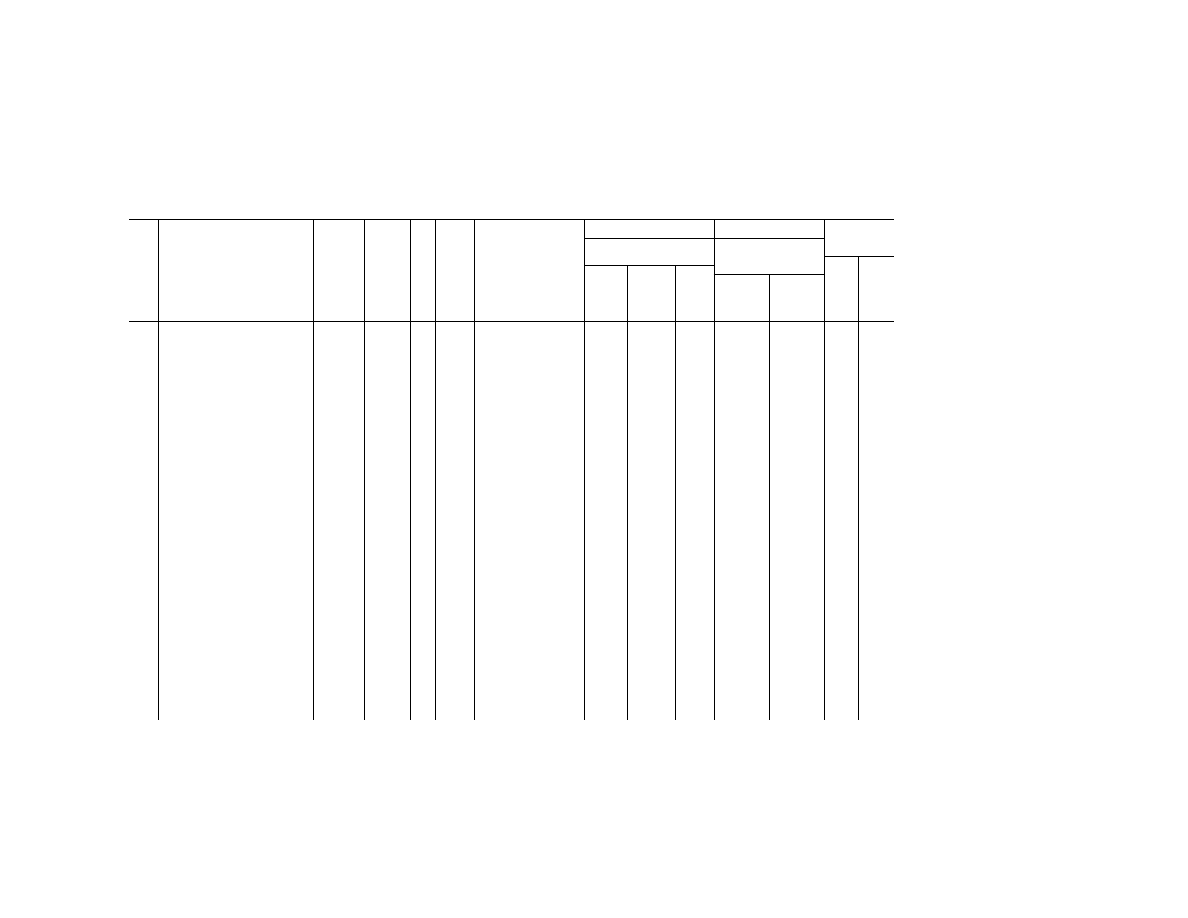
304
49 CFR Ch. I (10–1–23 Edition)
§
172.101
§ 172.101 H
AZARDOUS
M
ATERIALS
T
ABLE
—Continued
Sym-
bols
Hazardous materials descriptions
and proper shipping names
Hazard
class or
Division
Identi-
fication
Numbers
PG
Label
Codes
Special provisions
(§ 172.102)
(8)
(9)
(10)
Vessel
stowage
Packaging
(§ 173.***)
Quantity limitations
(see §§ 173.27 and
175.75)
Loca-
tion
Other
Excep-
tions
Non-bulk
Bulk
Passenger
aircraft/rail
Cargo air-
craft only
(1)
(2)
(3)
(4)
(5)
(6)
(7)
(8A)
(8B)
(8C)
(9A)
(9B)
(10A)
(10B)
III
6.1
IB3, T7, TP2, TP28 153
203
241
60 L
220 L
A
40
Thiocarbamate pesticides, solid,
toxic
6.1 UN2771
I
6.1
IB7, IP1, T6, TP33 None
211
242
5 kg
50 kg
A
40
II
6.1
IB8, IP2, IP4, T3, TP33 153
212
242
25 kg
100 kg
A
40
III
6.1
IB8, IP3, T1, TP33 153
213
240
100 kg
200 kg
A
40
Thiocarbonylchloride, see
Thiophosgene
Thioglycol
6.1 UN2966
II
6.1
IB2, T7, TP2 153
202
243
5 L
60 L
A
Thioglycolic acid
8 UN1940
II
8
A7, B2, IB2, N34, T7,
TP2
154
202
242
1 L
30 L
A
53, 58
Thiolactic acid
6.1 UN2936
II
6.1
IB2, T7, TP2 153
202
243
5 L
60 L
A
Thionyl chloride
8 UN1836
I
8
B6, B10, N34, T10, TP2,
TP13
None
201
243
Forbidden
Forbidden
C
40, 53,
58
Thiophene
3 UN2414
II
3
IB2, T4, TP1 150
202
242
5 L
60 L
B
40
+
Thiophosgene
6.1 UN2474
I
6.1
2, B9, B14, B32, N33,
N34, T20, TP2, TP13,
TP38, TP45
None
227
244
Forbidden
Forbidden
D
40, 52
Thiophosphoryl chloride
8 UN1837
II
8
A3, A7, B2, B8, B25,
IB2, N34, T7, TP2
154
202
242
Forbidden
30 L
C
40, 53,
58
Thiourea dioxide
4.2 UN3341
II
4.2
IB6, IP2, T3, TP33, W31 None
212
241
15 kg
50 kg
D
III
4.2
IB8, IP3, T1, TP33, W31 None
213
241
25 kg
100 kg
D
Tin chloride, fuming, see Stannic
chloride, anhydrous
Tin perchloride or Tin tetrachloride,
see Stannic chloride, anhydrous
Tinctures, medicinal
3 UN1293
II
3
IB2, T4, TP1, TP8 150
202
242
5 L
60 L
B
III
3
B1, IB3, T2, TP1 150
203
242
60 L
220 L
A
Tinning flux, see Zinc chloride
Tires and tire assemblies, see Air,
compressed or Nitrogen, com-
pressed
Titanium disulphide
4.2 UN3174
III
4.2
IB8, IP3, T1, TP33, W31 None
213
241
25 kg
100 kg
A
Titanium hydride
4.1 UN1871
II
4.1
A19, A20, IB4, N34, T3,
TP33, W31, W40
151
212
241
15 kg
50 kg
E
Titanium powder, dry
4.2 UN2546
I
4.2
W31 None
211
242
Forbidden
Forbidden
D
13, 148
II
4.2
A19, A20, IB6, IP2, N5,
N34, T3, TP33, W31
None
212
241
15 kg
50 kg
D
13, 148
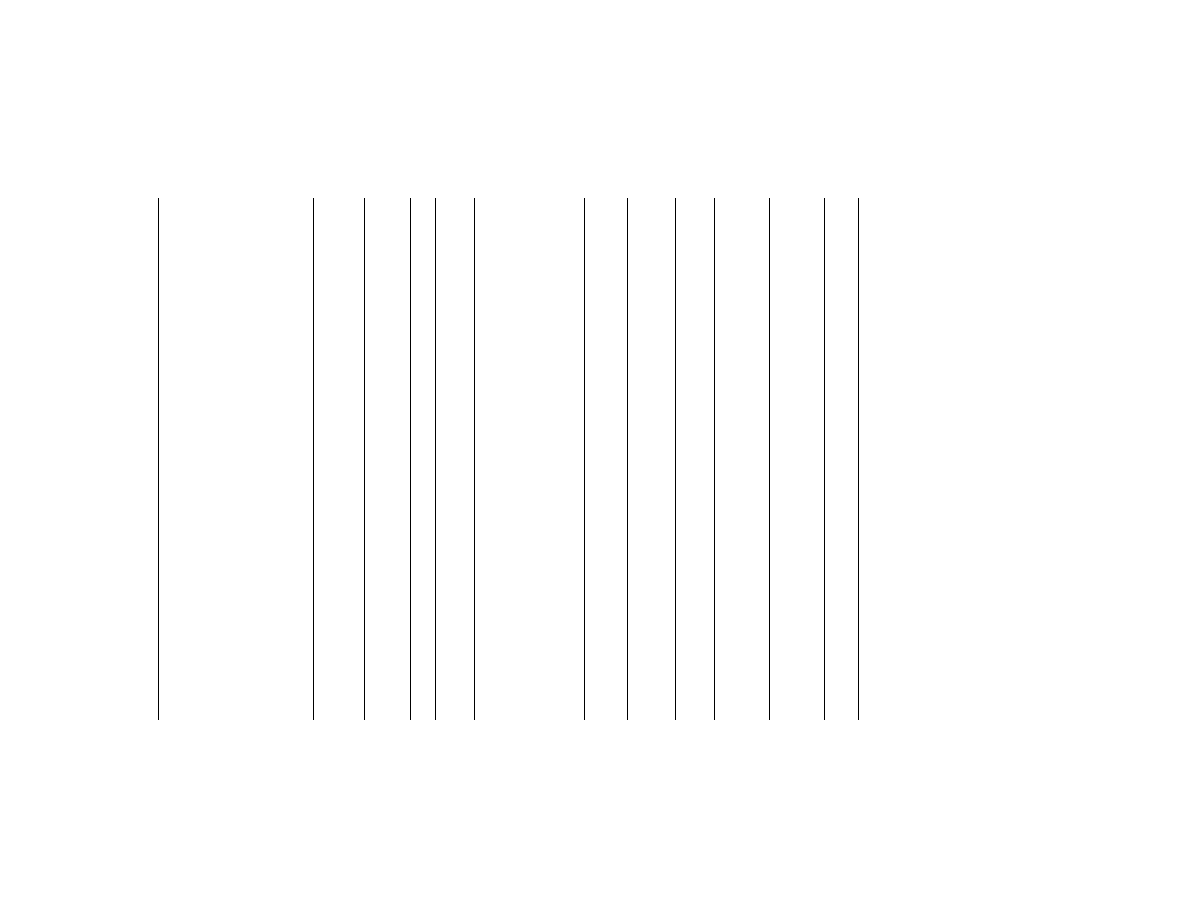
305
Pipeline and Haz. Matls. Safety Admin., DOT
§
172.101
III
4.2
B135, IB8, IP21, T1,
TP33, W31
None
213
241
25 kg
100 kg
D
13, 148
Titanium powder, wetted with not
less than 25 percent water (a
visible excess of water must be
present) (a) mechanically pro-
duced, particle size less than 53
microns; (b) chemically produced,
particle size less than 840 mi-
crons
4.1 UN1352
II
4.1
A19, A20, IB6, IP2, N34,
T3, TP33, W31, W40
151
212
240
15 kg
50 kg
E
74
Titanium sponge granules or Tita-
nium sponge powders
4.1 UN2878
III
4.1
A1, B134, IB8, IP21, T1,
TP33, W100
151
213
240
25 kg
100 kg
D
13, 74,
147,
148
+
Titanium tetrachloride
6.1 UN1838
I
6.1, 8
2, B7, B9, B14, B32,
B77, T20, TP2, TP13,
TP38, TP45
None
227
244
Forbidden
Forbidden
D
40, 53,
58
Titanium trichloride mixtures
8 UN2869
II
8
A7, IB8, IP2, IP4, N34,
T3, TP33
154
212
240
15 kg
50 kg
A
40, 53,
58
III
8
A7, IB8, IP3, N34, T1,
TP33
154
213
240
25 kg
100 kg
A
40, 53,
58
Titanium trichloride, pyrophoric or
Titanium trichloride mixtures,
pyrophoric
4.2 UN2441
I
4.2, 8
N34, W31 None
181
244
Forbidden
Forbidden
D
13, 40,
148
TNT mixed with aluminum, see
Tritonal
TNT, see Trinitrotoluene, etc
Toluene
3 UN1294
II
3
IB2, T4, TP1 150
202
242
5 L
60 L
B
+
Toluene diisocyanate
6.1 UN2078
II
6.1
IB2, T7, TP2, TP13 153
202
243
5 L
60 L
D
25, 40
Toluene sulfonic acid, see Alkyl, or
Aryl sulfonic acid etc
+
Toluidines, liquid
6.1 UN1708
II
6.1
IB2, T7, TP2 153
202
243
5 L
60 L
A
Toluidines, solid
6.1 UN3451
II
6.1
IB8, IP2, IP4, T3, TP33 153
212
242
25 kg
100 kg
A
2,4-Toluylenediamine, solid or 2,4-
Toluenediamine, solid
6.1 UN1709
III
6.1
IB8, IP3, T1, TP33 153
213
240
100 kg
200 kg
A
2,4-Toluylenediamine solution or
2,4-Toluenediamine solution
6.1 UN3418
III
6.1
IB3, T4, TP1 153
203
241
60 L
220 L
A
Torpedoes, liquid fueled, with inert
head
1.3J UN0450
......
1.3J
........................................
62
None
Forbidden
Forbidden
05
25,
23E
Torpedoes, liquid fueled, with or
without bursting charge
1.1J UN0449
......
1.1J
........................................
62
None
Forbidden
Forbidden
05
25,
23E
Torpedoes with bursting charge
1.1E UN0329
......
1.1E
........................................
62
62
Forbidden
Forbidden
03
25
Torpedoes with bursting charge
1.1F UN0330
......
1.1F
........................................
62
None
Forbidden
Forbidden
03
25
Torpedoes with bursting charge
1.1D UN0451
......
1.1D
........................................
62
62
Forbidden
Forbidden
03
25
G
Toxic by inhalation liquid, flam-
mable, corrosive, n.o.s. with an
LC50 lower than or equal to 200
ml/m3 and saturated vapor con-
centration greater than or equal
to 500 LC50
6.1 UN3488
I
6.1, 3,
8
1, B9, B14, B30, T22,
TP2, TP13, TP27, TP38,
TP44
None
226
244
Forbidden
Forbidden
D
40, 125
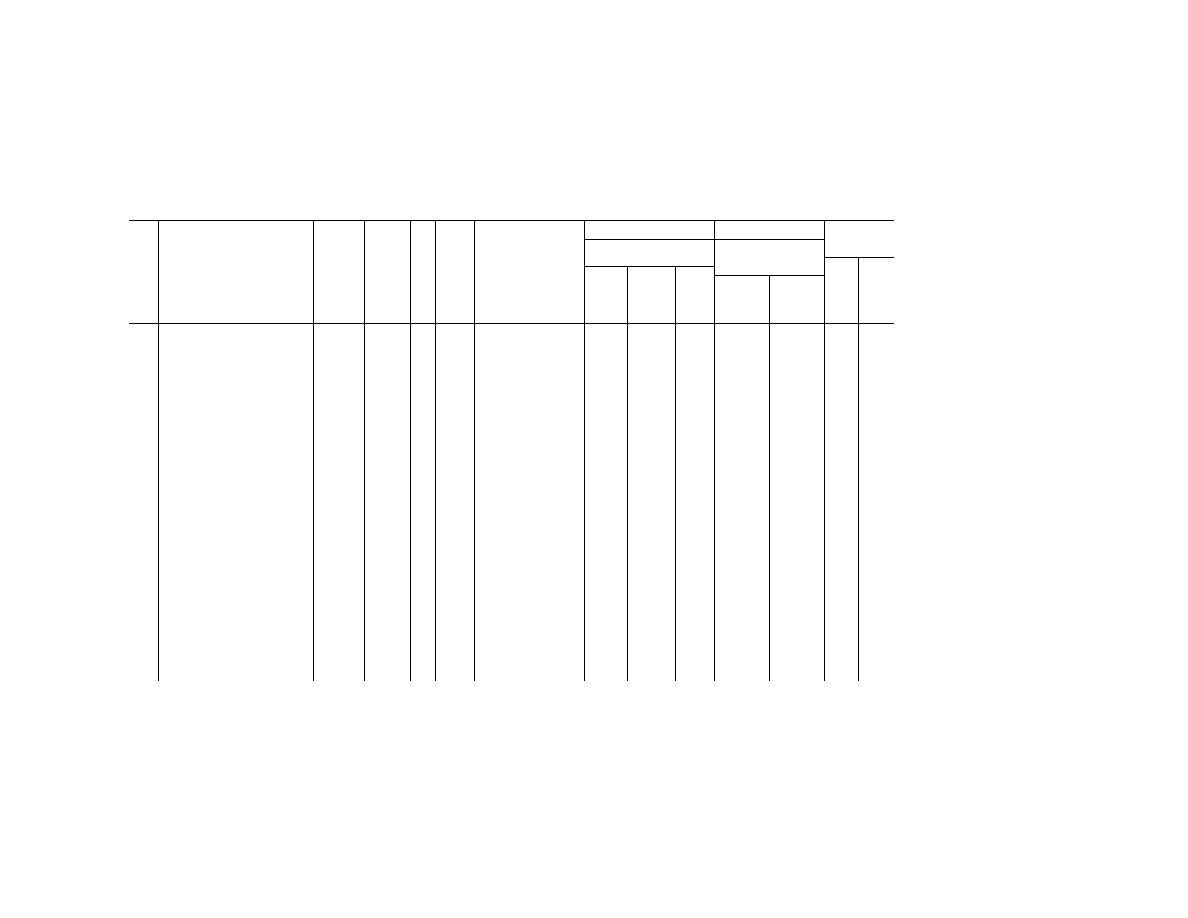
306
49 CFR Ch. I (10–1–23 Edition)
§
172.101
§ 172.101 H
AZARDOUS
M
ATERIALS
T
ABLE
—Continued
Sym-
bols
Hazardous materials descriptions
and proper shipping names
Hazard
class or
Division
Identi-
fication
Numbers
PG
Label
Codes
Special provisions
(§ 172.102)
(8)
(9)
(10)
Vessel
stowage
Packaging
(§ 173.***)
Quantity limitations
(see §§ 173.27 and
175.75)
Loca-
tion
Other
Excep-
tions
Non-bulk
Bulk
Passenger
aircraft/rail
Cargo air-
craft only
(1)
(2)
(3)
(4)
(5)
(6)
(7)
(8A)
(8B)
(8C)
(9A)
(9B)
(10A)
(10B)
G
Toxic by inhalation liquid, flam-
mable, corrosive, n.o.s. with an
LC50 lower than or equal to 1000
ml/m3 and saturated vapor con-
centration greater than or equal
to 10 LC50
6.1 UN3489
I
6.1, 3,
8
2, B9, B14, B32, T20,
TP2, TP13, TP27, TP38,
TP45
None
227
244
Forbidden
Forbidden
D
40, 125
G
Toxic by inhalation liquid, n.o.s. with
an LC50 lower than or equal to
200 ml/m
3
and saturated vapor
concentration greater than or
equal to 500 LC50
6.1 UN3381
I
6.1
1, B9, B14, B30, T22,
TP2, TP13, TP27, TP38,
TP44
None
226
244
Forbidden
Forbidden
D
40
G
Toxic by inhalation liquid, n.o.s. with
an LC50 lower than or equal to
1000 ml/m
3
and saturated vapor
concentration greater than or
equal to 10 LC50
6.1 UN3382
I
6.1
2, B9, B14, B32, T20,
TP2, TP13, TP27, TP38,
TP45
None
227
244
Forbidden
Forbidden
D
40
G
Toxic by inhalation liquid, flam-
mable, n.o.s. with an LC50 lower
than or equal to 200 ml/m
3
and
saturated vapor concentration
greater than or equal to 500
LC50
6.1 UN3383
I
6.1, 3
1, B9, B14, B30, T22,
TP2, TP13, TP27, TP38,
TP44
None
226
244
Forbidden
Forbidden
D
40
G
Toxic by inhalation liquid, flam-
mable, n.o.s. with an LC50 lower
than or equal to 1000 ml/m
3
and
saturated vapor concentration
greater than or equal to 10 LC50
6.1 UN3384
I
6.1, 3
2, B9, B14, B32, T20,
TP2, TP13, TP27, TP38,
TP45
None
227
244
Forbidden
Forbidden
D
40
G
Toxic by inhalation liquid, water-re-
active, n.o.s. with an LC50 lower
than or equal to 200 ml/m
3
and
saturated vapor concentration
greater than or equal to 500
LC50
6.1 UN3385
I
6.1,
4.3
1, B9, B14, B30, T22,
TP2, TP13, TP38, TP44
None
226
244
Forbidden
Forbidden
D
13, 40,
148
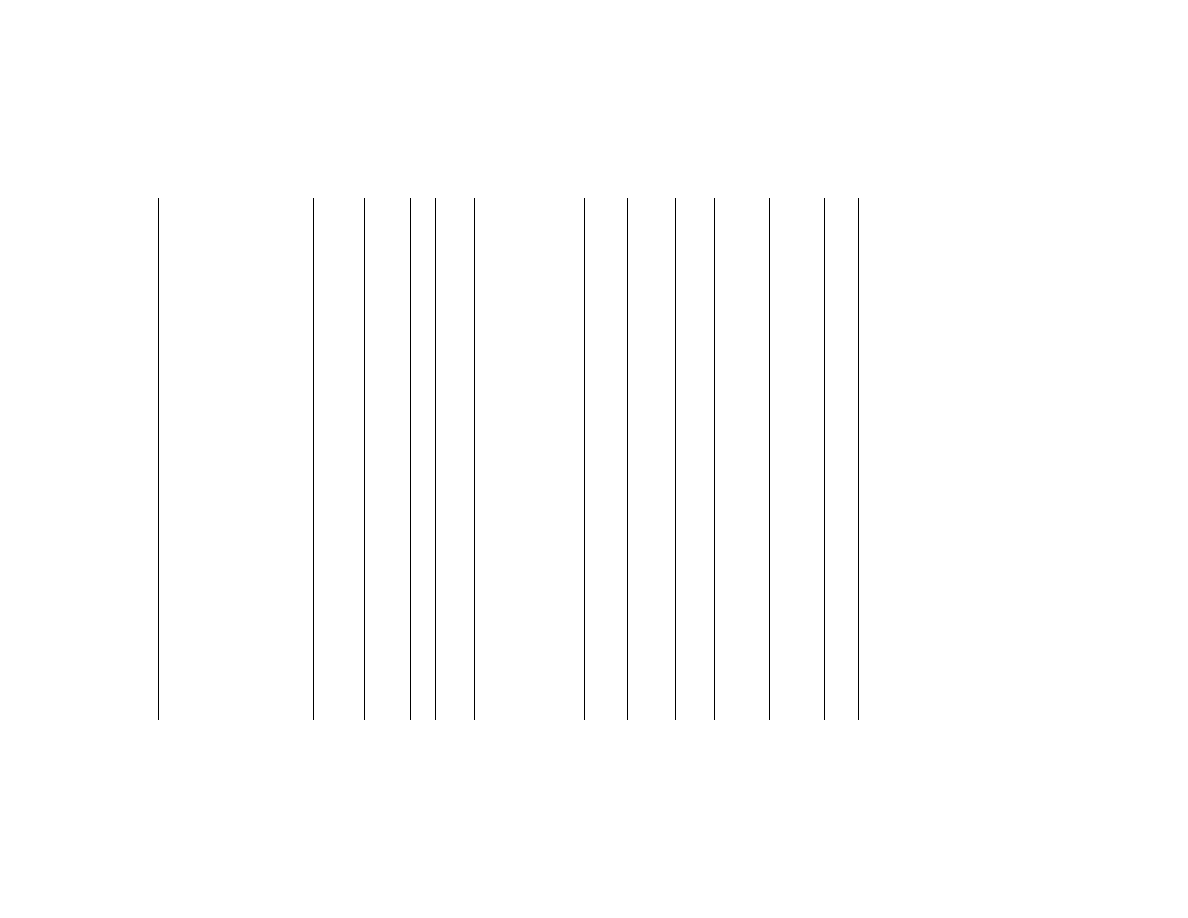
307
Pipeline and Haz. Matls. Safety Admin., DOT
§
172.101
G
Toxic by inhalation liquid, water-re-
active, n.o.s. with an LC50 lower
than or equal to 1000 ml/m
3
and
saturated vapor concentration
greater than or equal to 10 LC50
6.1 UN3386
I
6.1,
4.3
2, B9, B14, B32, T20,
TP2, TP13, TP38, TP44
None
227
244
Forbidden
Forbidden
D
13, 40,
148
G
Toxic by inhalation liquid, water-re-
active, flammable, n.o.s. with an
LC50 lower than or equal to 200
ml/m3 and saturated vapor con-
centration greater than or equal
to 500 LC50
6.1 UN3490
I
6.1,
4.3,
3
1, B9, B14, B30, T22,
TP2, TP13, TP27, TP38,
TP44
None
226
244
Forbidden
Forbidden
D
13, 21,
40, 49,
148
G
Toxic by inhalation liquid, water-re-
active, flammable, n.o.s. with an
LC50 lower or equal to 1000 ml/
m3 and saturated vapor con-
centration greater than or equal
to 10 LC50
6.1 UN3491
I
6.1,
4.3,
3
2, B9, B14, B32, T20,
TP2, TP13, TP27, TP38,
TP45
None
227
244
Forbidden
Forbidden
D
13, 21,
28, 40,
49, 148
G
Toxic by inhalation liquid, oxidizing,
n.o.s. with an LC50 lower than or
equal to 200 ml/m
3
and saturated
vapor concentration greater than
or equal to 500 LC50
6.1 UN3387
I
6.1,
5.1
1, B9, B14, B30, T22,
TP2, TP13, TP38, TP44
None
226
244
Forbidden
Forbidden
D
40
G
Toxic by inhalation liquid, oxidizing,
n.o.s. with an LC50 lower than or
equal to 1000 ml/m
3
and satu-
rated vapor concentration greater
than or equal to 10 LC50
6.1 UN3388
I
6.1,
5.1
2, B9, B14, B32, T20,
TP2, TP13, TP38, TP44
None
227
244
Forbidden
Forbidden
D
40
G
Toxic by inhalation liquid, corrosive,
n.o.s. with an LC50 lower than or
equal to 200 ml/m
3
and saturated
vapor concentration greater than
or equal to 500 LC50
6.1 UN3389
I
6.1, 8
1, B9, B14, B30, T22,
TP2, TP13, TP27, TP38,
TP44
None
226
244
Forbidden
Forbidden
D
40
G
Toxic by inhalation liquid, corrosive,
n.o.s. with an LC50 lower than or
equal to 1000 ml/m
3
and satu-
rated vapor concentration greater
than or equal to 10 LC50
6.1 UN3390
I
6.1, 8
2, B9, B14, B32, T20,
TP2, TP13, TP27, TP38,
TP45
None
227
244
Forbidden
Forbidden
D
40
G
Toxic liquid, corrosive, inorganic,
n.o.s
6.1 UN3289
I
6.1, 8
T14, TP2, TP13, TP27 None
201
243
0.5 L
2.5 L
A
40
II
6.1, 8
IB2, T11, TP2, TP27 153
202
243
1 L
30 L
A
40
G
Toxic liquid, inorganic, n.o.s
6.1 UN3287
I
6.1
T14, TP2, TP13, TP27 None
201
243
1 L
30 L
A
40
II
6.1
IB2, T11, TP2, TP27 153
202
243
5 L
60 L
A
40
III
6.1
IB3, T7, TP1, TP28 153
203
241
60 L
220 L
A
40
G
Toxic liquids, corrosive, organic,
n.o.s.
6.1 UN2927
I
6.1, 8
T14, TP2, TP13, TP27 None
201
243
0.5 L
2.5 L
B
40
II
6.1, 8
IB2, T11, TP2, TP27 153
202
243
1 L
30 L
B
40
G
Toxic liquids, flammable, organic,
n.o.s.
6.1 UN2929
I
6.1, 3
T14, TP2, TP13, TP27 None
201
243
1 L
30 L
B
40
II
6.1, 3
IB2, T11, TP2, TP13,
TP27
153
202
243
5 L
60 L
B
40
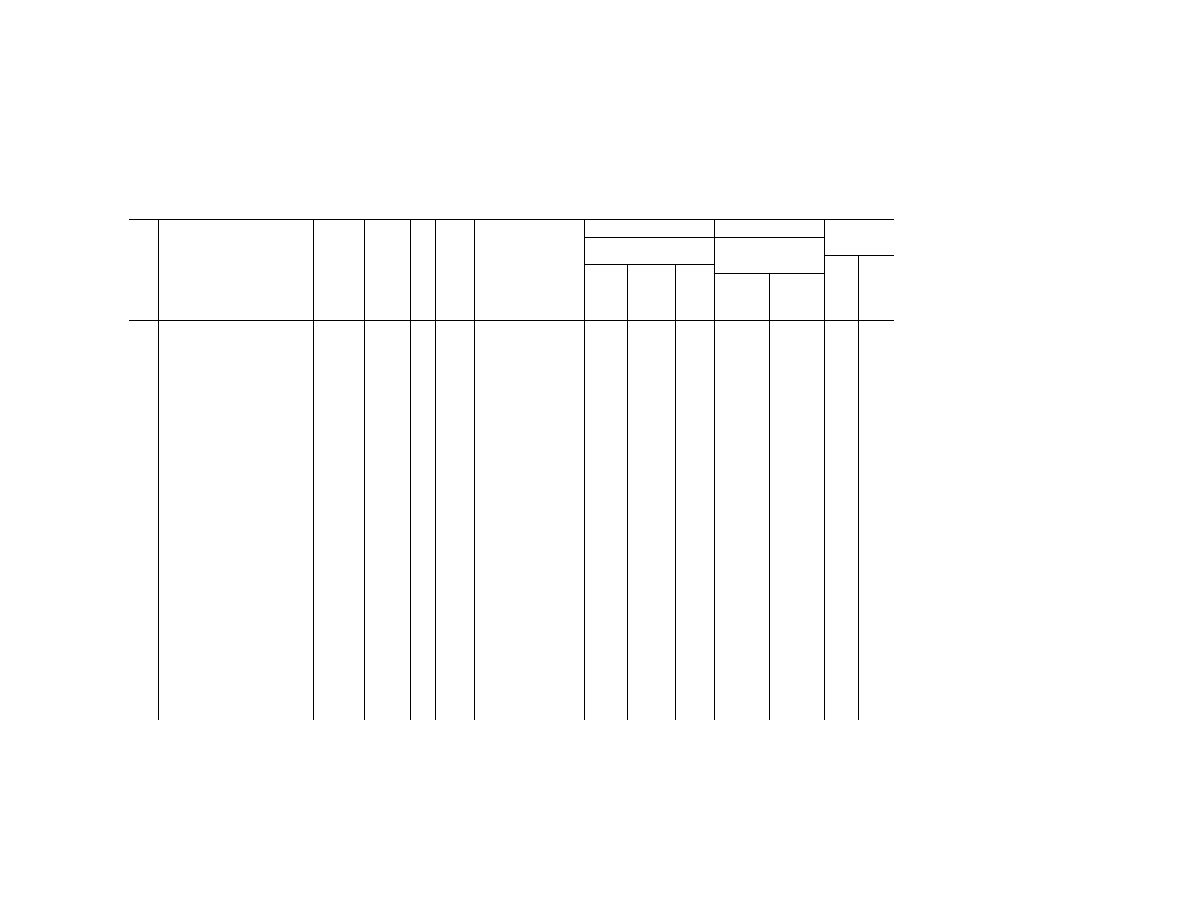
308
49 CFR Ch. I (10–1–23 Edition)
§
172.101
§ 172.101 H
AZARDOUS
M
ATERIALS
T
ABLE
—Continued
Sym-
bols
Hazardous materials descriptions
and proper shipping names
Hazard
class or
Division
Identi-
fication
Numbers
PG
Label
Codes
Special provisions
(§ 172.102)
(8)
(9)
(10)
Vessel
stowage
Packaging
(§ 173.***)
Quantity limitations
(see §§ 173.27 and
175.75)
Loca-
tion
Other
Excep-
tions
Non-bulk
Bulk
Passenger
aircraft/rail
Cargo air-
craft only
(1)
(2)
(3)
(4)
(5)
(6)
(7)
(8A)
(8B)
(8C)
(9A)
(9B)
(10A)
(10B)
G
Toxic, liquids, organic, n.o.s.
6.1 UN2810
I
6.1
T14, TP2, TP13, TP27 None
201
243
1 L
30 L
B
40
II
6.1
IB2, T11, TP2, TP13,
TP27
153
202
243
5 L
60 L
B
40
III
6.1
IB3, T7, TP1, TP28 153
203
241
60 L
220 L
A
40
G
Toxic liquids, oxidizing, n.o.s.
6.1 UN3122
I
6.1,
5.1
A4 None
201
243
Forbidden
2.5 L
C
II
6.1,
5.1
IB2 153
202
243
1 L
5 L
C
G
Toxic liquids, water-reactive, n.o.s
6.1 UN3123
I
6.1,
4.3
A4 None
201
243
Forbidden
1 L
E
13, 40,
148
II
6.1,
4.3
IB2 153
202
243
1 L
5 L
E
13, 40,
148
G
Toxic solid, corrosive, inorganic,
n.o.s
6.1 UN3290
I
6.1, 8
IB7, T6, TP33 None
211
242
1 kg
25 kg
A
40
II
6.1, 8
IB6, IP2, T3, TP33 153
212
242
15 kg
50 kg
A
40
G
Toxic solid, flammable, inorganic,
n.o.s
6.1 UN3535
I
6.1.
4.1
IB6, T6, TP33 None
211
242
1 kg
15 kg
B
II
6.1,
4.1
IB8, IP2, IP4, T3, TP33 153
212
242
15 kg
50 kg
B
G
Toxic solid, inorganic, n.o.s.
6.1 UN3288
I
6.1
IB7, T6, TP33 None
211
242
5 kg
50 kg
A
40
II
6.1
IB8, IP2, IP4, T3, TP33 153
212
242
25 kg
100 kg
A
40
III
6.1
IB8, IP3, T1, TP33 153
213
240
100 kg
200 kg
A
40
G
Toxic solids, corrosive, organic,
n.o.s.
6.1 UN2928
I
6.1, 8
IB7, T6, TP33 None
211
242
1 kg
25 kg
B
40
II
6.1, 8
IB6, IP2, T3, TP33 153
212
242
15 kg
50 kg
B
40
G
Toxic solids, flammable, organic,
n.o.s.
6.1 UN2930
I
6.1,
4.1
IB6, T6, TP33 None
211
242
1 kg
15 kg
B
II
6.1,
4.1
IB8, IP2, IP4, T3, TP33 153
212
242
15 kg
50 kg
B
G
Toxic solids, organic, n.o.s.
6.1 UN2811
I
6.1
IB7, T6, TP33 None
211
242
5 kg
50 kg
B
II
6.1
IB8, IP2, IP4, T3, TP33 153
212
242
25 kg
100 kg
B
III
6.1
IB8, IP3, T1, TP33 153
213
240
100 kg
200 kg
A
G
Toxic solids, oxidizing, n.o.s.
6.1 UN3086
I
6.1,
5.1
T6, TP33 None
211
242
1 kg
15 kg
C
II
6.1,
5.1
IB6, IP2, T3, TP33 153
212
242
15 kg
50 kg
C
G
Toxic solids, self-heating, n.o.s.
6.1 UN3124
I
6.1,
4.2
A5, T6, TP33 None
211
242
5 kg
15 kg
D
40
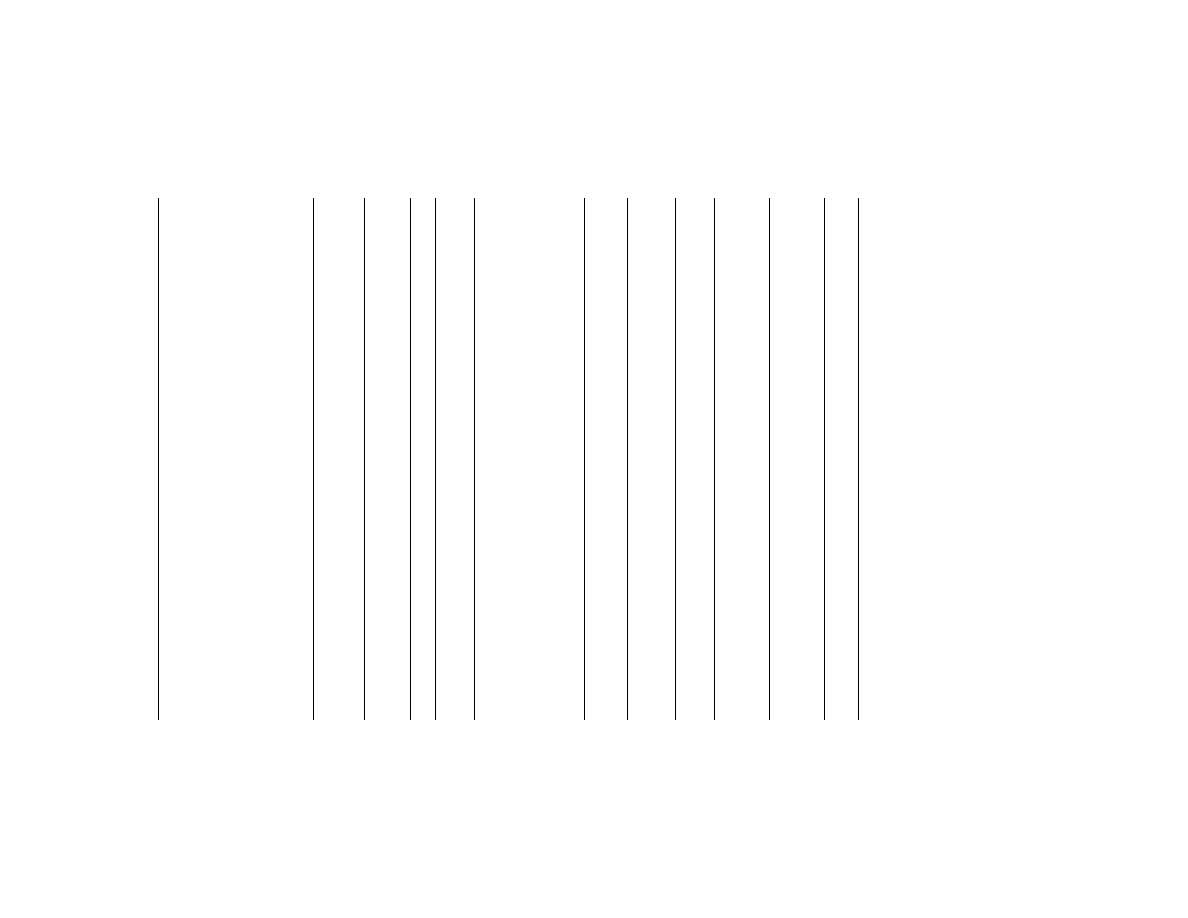
309
Pipeline and Haz. Matls. Safety Admin., DOT
§
172.101
II
6.1,
4.2
IB6, IP2, T3, TP33 None
212
242
15 kg
50 kg
D
40
G
Toxic solids, water-reactive, n.o.s
6.1 UN3125
I
6.1,
4.3
A5, T6, TP33, W100 None
211
242
5 kg
15 kg
D
13, 40,
148
G
Toxins, extracted from living
sources, liquid, n.o.s
6.1 UN3172
I
6.1
141 None
201
243
1 L
30 L
B
40
II
6.1
141, IB2 153
202
243
5 L
60 L
B
40
III
6.1
141, IB3 153
203
241
60 L
220 L
B
40
G
Toxins, extracted from living
sources, solid, n.o.s
6.1 UN3462
I
6.1
141, IB7, IP1, T6, TP33 None
211
243
5 kg
50 kg
B
II
6.1
141, IB8, IP2, IP4, T3
TP33
153
212
243
25 kg
100 kg
B
III
6.1
141, IB8, IP3, T1 TP33 153
213
241
100 kg
200 kg
A
D
Toy Caps
1.4S NA0337
......
1.4S
382 None
62
None
25 kg
100 kg
01
25
Tracers for ammunition
1.3G UN0212
......
1.3G
........................................
None
62
None
Forbidden
Forbidden
03
25
Tracers for ammunition
1.4G UN0306
......
1.4G
........................................
None
62
None
Forbidden
75 kg
02
25
Tractors, see Vehicle, etc
Tri-(b-nitroxyethyl) ammonium ni-
trate
Forbidden
Triallyl borate
6.1 UN2609
III
6.1
IB3 153
203
241
60 L
220 L
A
13
Triallylamine
3 UN2610
III
3, 8
B1, IB3, T4, TP1 150
203
242
5 L
60 L
A
40, 52
Triazine pesticides, liquid, flam-
mable, toxic, flash point less than
23 degrees C
3 UN2764
I
3, 6.1
T14, TP2, TP13, TP27 None
201
243
Forbidden
30 L
B
40
II
3, 6.1
IB2, T11, TP2, TP13,
TP27
150
202
243
1 L
60 L
B
40
Triazine pesticides, liquid, toxic
6.1 UN2998
I
6.1
T14, TP2, TP13, TP27 None
201
243
1 L
30 L
B
40
II
6.1
IB2, T11, TP2, TP13,
TP27
153
202
243
5 L
60 L
B
40
III
6.1
IB3, T7, TP2, TP28 153
203
241
60 L
220 L
A
40
Triazine pesticides, liquid, toxic,
flammable, flash point not less
than 23 degrees C
6.1 UN2997
I
6.1, 3
T14, TP2, TP13, TP27 None
201
243
1 L
30 L
B
40
II
6.1, 3
IB2, T11, TP2, TP13,
TP27
153
202
243
5 L
60 L
B
40
III
6.1, 3
IB3, T7, TP2, TP28 153
203
242
60 L
220 L
A
40
Triazine pesticides, solid, toxic
6.1 UN2763
I
6.1
IB7, IP1, T6, TP33 None
211
242
5 kg
50 kg
A
40
II
6.1
IB8, IP2, IP4, T3, TP33 153
212
242
25 kg
100 kg
A
40
III
6.1
IB8, IP3, T1, TP33 153
213
240
100 kg
200 kg
A
40
Tributylamine
6.1 UN2542
II
6.1
IB2, T7, TP2 153
202
243
5 L
60 L
A
Tributylphosphane
4.2 UN3254
I
4.2
T21, TP7, TP33 None
211
242
Forbidden
Forbidden
D
136
Trichloro-s-triazinetrione dry, with
more than 39 percent available
chlorine, see Trichloroisocyanuric
acid, dry
Trichloroacetic acid
8 UN1839
II
8
A7, IB8, IP2, IP4, N34,
T3, TP33
154
212
240
15 kg
50 kg
A
53, 58
Trichloroacetic acid, solution
8 UN2564
II
8
A3, A7, B2, IB2, N34,
T7, TP2
154
202
242
1 L
30 L
B
53, 58
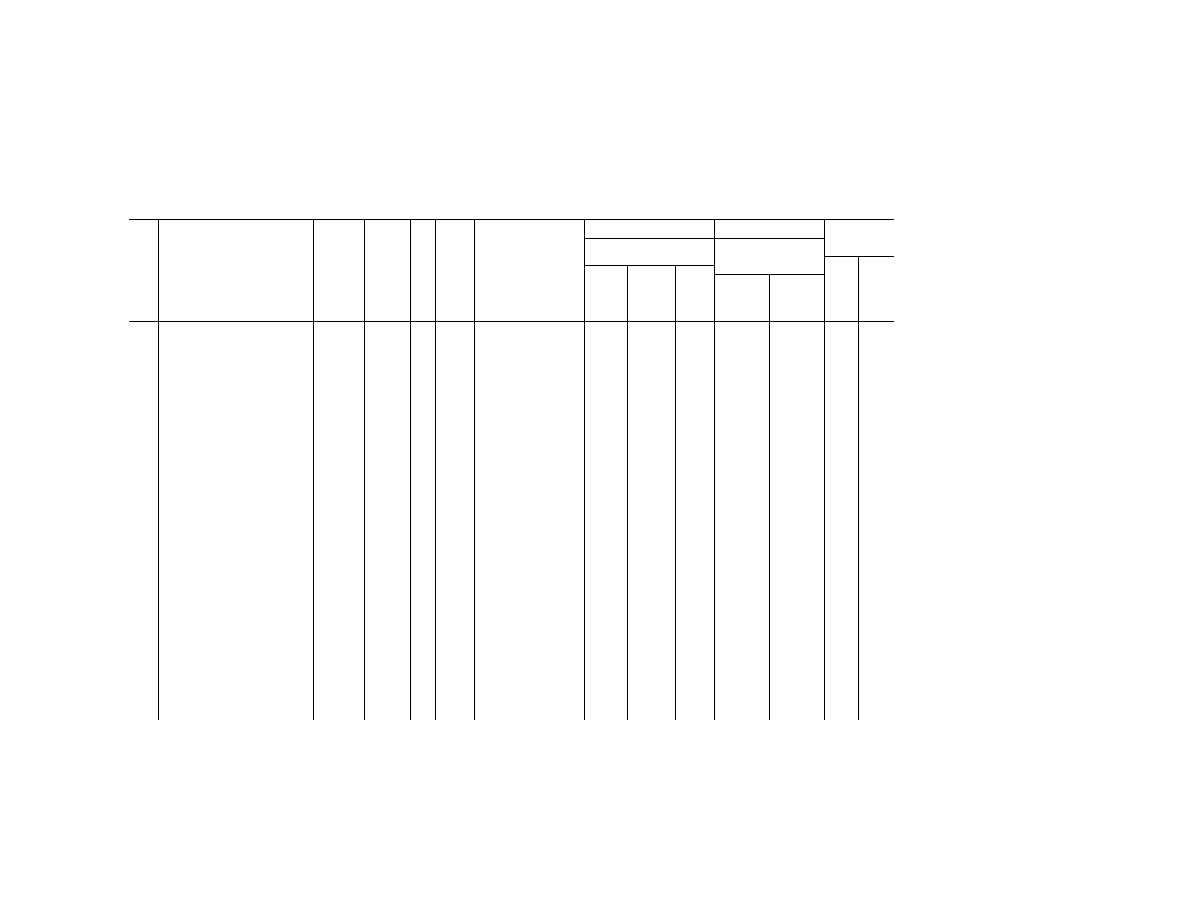
310
49 CFR Ch. I (10–1–23 Edition)
§
172.101
§ 172.101 H
AZARDOUS
M
ATERIALS
T
ABLE
—Continued
Sym-
bols
Hazardous materials descriptions
and proper shipping names
Hazard
class or
Division
Identi-
fication
Numbers
PG
Label
Codes
Special provisions
(§ 172.102)
(8)
(9)
(10)
Vessel
stowage
Packaging
(§ 173.***)
Quantity limitations
(see §§ 173.27 and
175.75)
Loca-
tion
Other
Excep-
tions
Non-bulk
Bulk
Passenger
aircraft/rail
Cargo air-
craft only
(1)
(2)
(3)
(4)
(5)
(6)
(7)
(8A)
(8B)
(8C)
(9A)
(9B)
(10A)
(10B)
................
III
8
A3, A7, IB3, N34, T4,
TP1
154
203
241
5 L
60 L
B
8, 53,
58
+
Trichloroacetyl chloride
8 UN2442
II
8, 6.1
2, B9, B14, B32, N34,
T20, TP2, TP38, TP45
None
227
244
Forbidden
Forbidden
D
40, 53,
58
Trichlorobenzenes, liquid
6.1 UN2321
III
6.1
IB3, T4, TP1 153
203
241
60 L
220 L
A
Trichlorobutene
6.1 UN2322
II
6.1
IB2, T7, TP2 153
202
243
5 L
60 L
A
25, 40
1,1,1-Trichloroethane
6.1 UN2831
III
6.1
IB3, N36, T4, TP1 153
203
241
60 L
220 L
A
40
Trichloroethylene
6.1 UN1710
III
6.1
IB3, N36, T4, TP1 153
203
241
60 L
220 L
A
40
Trichloroisocyanuric acid, dry
5.1 UN2468
II
5.1
IB8, IP2, IP4, T3, TP33 152
212
240
5 kg
25 kg
A
13
Trichloromethyl perchlorate
Forbidden
Trichlorosilane
4.3 UN1295
I
4.3, 3,
8
N34, T14, TP2, TP7,
TP13, W31
None
201
244
Forbidden
Forbidden
D
21, 40,
49, 53,
58, 100
Tricresyl phosphate with more than
3 percent ortho isomer
6.1 UN2574
II
6.1
A3, IB2, N33, N34, T7,
TP2
153
202
243
5 L
60 L
A
Triethyl phosphite
3 UN2323
III
3
B1, IB3, T2, TP1 150
203
242
60 L
220 L
A
Triethylamine
3 UN1296
II
3, 8
IB2, T7, TP1 150
202
243
1 L
5 L
B
40
Triethylenetetramine
8 UN2259
II
8
B2, IB2, T7, TP2 154
202
242
1 L
30 L
B
40, 52
Trifluoroacetic acid
8 UN2699
I
8
A7, B4, N3, N34, N36,
T10, TP2
None
201
243
0.5 L
2.5 L
B
12, 25,
40, 53,
58
Trifluoroacetyl chloride
2.3 UN3057
2.3, 8
2, B7, B9, B14, T50,
TP21
None
304
314,
315
Forbidden
Forbidden
D
40
Trifluorochloroethylene, stabilized or
Refrigerant gas R 1113
2.3 UN1082
......
2.3,
2.1
3, 387, B14, T50 None
304
314,
315
Forbidden
Forbidden
D
25, 40
Trifluoromethane or Refrigerant gas
R 23
2.2 UN1984
2.2
306
304
314,
315
75 kg
150 kg
A
Trifluoromethane, refrigerated liquid
2.2 UN3136
2.2
T75, TP5 306
None
314,
315
50 kg
500 kg
D
1,1,1-Trifluoroethane or Refrigerant
gas, R 143a
2.1 UN2035
2.1
T50 306
304
314,
315
Forbidden
150 kg
B
40
2-Trifluoromethylaniline
6.1 UN2942
III
6.1
IB3 153
203
241
60 L
220 L
A
3-Trifluoromethylaniline
6.1 UN2948
II
6.1
IB2, T7, TP2 153
202
243
5 L
60 L
A
40
Triformoxime trinitrate
Forbidden
Triisobutylene
3 UN2324
III
3
B1, IB3, T4, TP1 150
203
242
60 L
220 L
A
Triisopropyl borate
3 UN2616
II
3
IB2, T4, TP1 150
202
242
5 L
60 L
A
III
3
B1, IB3, T2, TP1 150
203
242
60 L
220 L
A
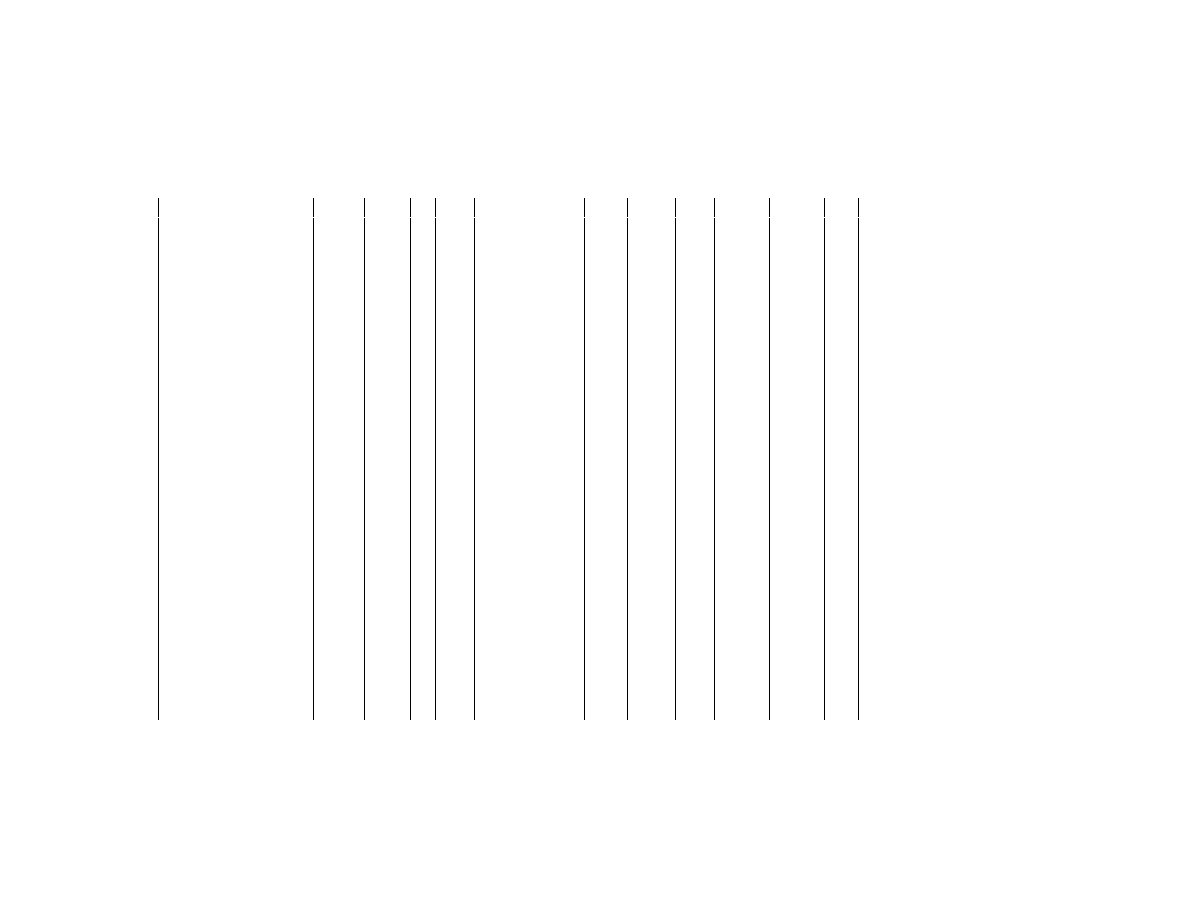
311
Pipeline and Haz. Matls. Safety Admin., DOT
§
172.101
D
Trimethoxysilane
6.1 NA9269
I
6.1, 3
2, B9, B14, B32, T20,
TP4, TP13, TP38, TP45
None
227
244
Forbidden
Forbidden
E
40
Trimethyl borate
3 UN2416
II
3
IB2, T7, TP1 150
202
242
5 L
60 L
B
Trimethyl phosphite
3 UN2329
III
3
B1, IB3, T2, TP1 150
203
242
60 L
220 L
A
1,3,5-Trimethyl-2,4,6-trinitrobenzene Forbidden
Trimethylacetyl chloride
6.1 UN2438
I
6.1, 8,
3
2, B3, B9, B14, B32,
N34, T20, TP2, TP13,
TP38, TP45
None
227
244
Forbidden
Forbidden
D
21, 25,
40, 53,
58, 100
Trimethylamine, anhydrous
2.1 UN1083
......
2.1
N87, T50 306
304
314,
315
Forbidden
150 kg
B
40, 52
Trimethylamine, aqueous solutions
with not more than 50 percent
trimethylamine by mass
3 UN1297
I
3, 8
T11, TP1 None
201
243
0.5 L
2.5 L
D
40, 52,
135
II
3, 8
B1, IB2, T7, TP1 150
202
243
1 L
5 L
B
40, 41,
52
III
3, 8
B1, IB3, T7, TP1 150
203
242
5 L
60 L
A
40, 41,
52
1,3,5-Trimethylbenzene
3 UN2325
III
3
B1, IB3, T2, TP2 150
203
242
60 L
220 L
A
Trimethylchlorosilane
3 UN1298
II
3, 8
A3, A7, B77, N34, T10,
TP2, TP7, TP13
None
206
243
Forbidden
5 L
E
40, 53,
58
Trimethylcyclohexylamine
8 UN2326
III
8
IB3, T4, TP1 154
203
241
5 L
60 L
A
52
Trimethylene glycol diperchlorate
Forbidden
Trimethylhexamethylene
diisocyanate
6.1 UN2328
III
6.1
IB3, T4, TP2, TP13 153
203
241
60 L
220 L
B
Trimethylhexamethylenediamines
8 UN2327
III
8
IB3, T4, TP1 154
203
241
5 L
60 L
A
52
Trimethylol nitromethane trinitrate
Forbidden
Trinitro-m-cresol
1.1D UN0216
......
1.1D
........................................
None
62
None
Forbidden
Forbidden
04
25, 5E
2,4,6-Trinitro-1,3-diazobenzene
Forbidden
2,4,6-Trinitro-1,3,5-triazido benzene
(dry)
Forbidden
Trinitroacetic acid
Forbidden
Trinitroacetonitrile
Forbidden
Trinitroamine cobalt
Forbidden
Trinitroaniline or Picramide
1.1D UN0153
......
1.1D
........................................
None
62
None
Forbidden
Forbidden
04
25
Trinitroanisole
1.1D UN0213
......
1.1D
........................................
None
62
None
Forbidden
Forbidden
04
25
Trinitrobenzene, dry or wetted with
less than 30 percent water, by
mass
1.1D UN0214
......
1.1D
........................................
None
62
None
Forbidden
Forbidden
04
25
Trinitrobenzene, wetted, with not
less than 10% water, by mass
4.1 UN3367
I
4.1
162, A8, A19, N41, N84,
W31
None
211
None
0.5 kg
0.5 kg
E
28, 36
Trinitrobenzene, wetted with not
less than 30 percent water, by
mass
4.1 UN1354
I
4.1
23, A2, A8, A19, N41,
W31
None
211
None
0.5 kg
0.5 kg
E
28, 36
Trinitrobenzenesulfonic acid
1.1D UN0386
......
1.1D
........................................
None
62
None
Forbidden
Forbidden
04
25, 5E
Trinitrobenzoic acid, dry or wetted
with less than 30 percent water,
by mass
1.1D UN0215
......
1.1D
........................................
None
62
None
Forbidden
Forbidden
04
25
Trinitrobenzoic acid, wetted with not
less than 10% water by mass
4.1 UN3368
I
4.1
162, A8, A19, N41, N84,
W31
None
211
None
0.5 kg
0.5 kg
E
28, 36
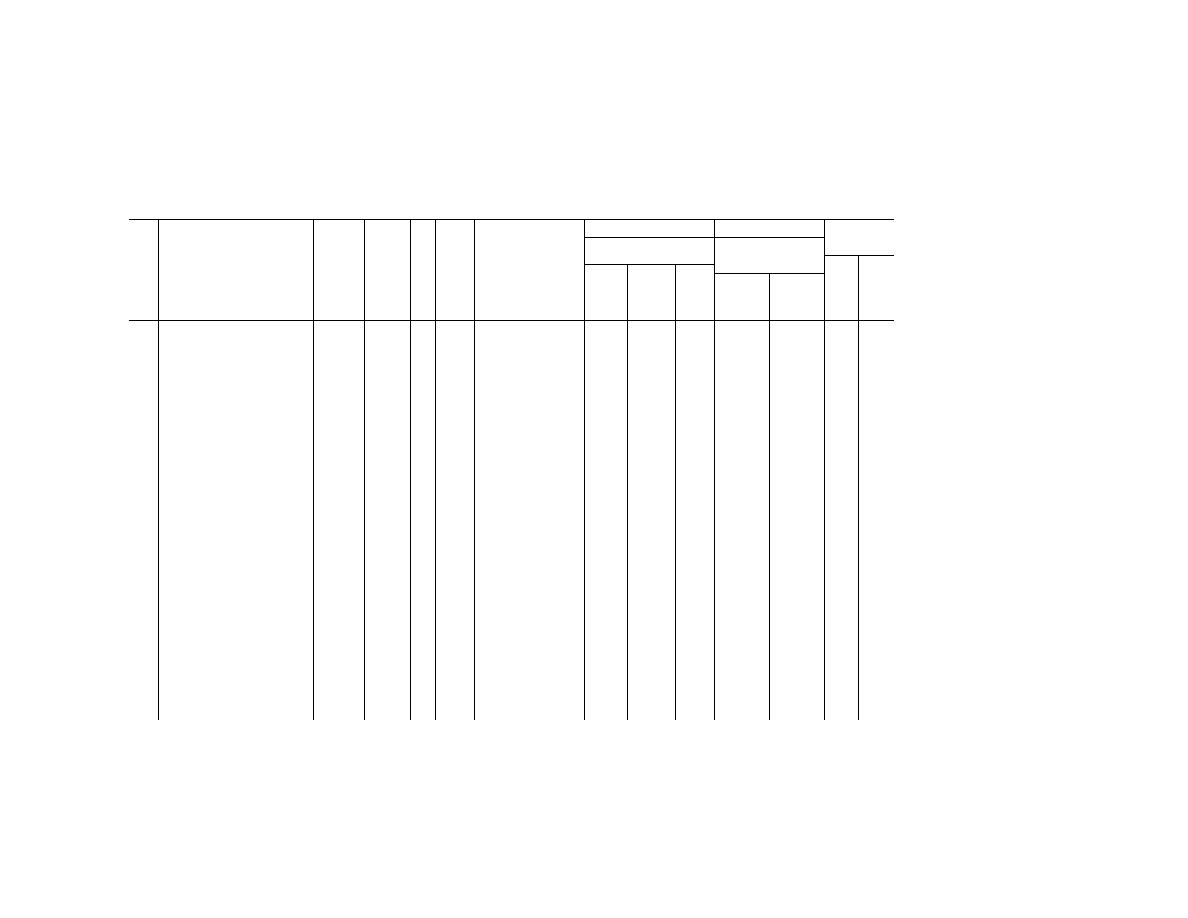
312
49 CFR Ch. I (10–1–23 Edition)
§
172.101
§ 172.101 H
AZARDOUS
M
ATERIALS
T
ABLE
—Continued
Sym-
bols
Hazardous materials descriptions
and proper shipping names
Hazard
class or
Division
Identi-
fication
Numbers
PG
Label
Codes
Special provisions
(§ 172.102)
(8)
(9)
(10)
Vessel
stowage
Packaging
(§ 173.***)
Quantity limitations
(see §§ 173.27 and
175.75)
Loca-
tion
Other
Excep-
tions
Non-bulk
Bulk
Passenger
aircraft/rail
Cargo air-
craft only
(1)
(2)
(3)
(4)
(5)
(6)
(7)
(8A)
(8B)
(8C)
(9A)
(9B)
(10A)
(10B)
Trinitrobenzoic acid, wetted with not
less than 30 percent water, by
mass
4.1 UN1355
I
4.1
23, A2, A8, A19, N41,
W31
None
211
None
0.5 kg
0.5 kg
E
28, 36
Trinitrochlorobenzene or Picryl chlo-
ride
1.1D UN0155
......
1.1D
........................................
None
62
None
Forbidden
Forbidden
04
25
Trinitrochlorobenzene (picryl chlo-
ride), wetted, with not less than
10% water by mass
4.1 UN3365
I
4.1
162, A8, A19, N41, N84,
W31
None
211
None
0.5 kg
0.5 kg
E
28, 36
Trinitroethanol
Forbidden
Trinitroethylnitrate
Forbidden
Trinitrofluorenone
1.1D UN0387
......
1.1D
........................................
None
62
None
Forbidden
Forbidden
04
25
Trinitromethane
Forbidden
1,3,5-Trinitronaphthalene
Forbidden
Trinitronaphthalene
1.1D UN0217
......
1.1D
........................................
None
62
None
Forbidden
Forbidden
04
25
Trinitrophenetole
1.1D UN0218
......
1.1D
........................................
None
62
None
Forbidden
Forbidden
04
25
Trinitrophenol (picric acid), wetted,
with not less than 10 percent
water by mass
4.1 UN3364
I
4.1
23, A8, A19, N41, N84,
W31
None
211
None
0.5 kg
0.5 kg
E
28, 36
Trinitrophenol or Picric acid, dry or
wetted with less than 30 percent
water, by mass
1.1D UN0154
......
1.1D
........................................
None
62
None
Forbidden
Forbidden
04
25, 5E
Trinitrophenol, wetted with not less
than 30 percent water, by mass
4.1 UN1344
I
4.1
162, A8, A19, N41, W31 None
211
None
1 kg
15 kg
E
28, 36
2,4,6-Trinitrophenyl guanidine (dry)
Forbidden
2,4,6-Trinitrophenyl nitramine
Forbidden
2,4,6-Trinitrophenyl trimethylol
methyl nitramine trinitrate (dry)
Forbidden
Trinitrophenylmethylnitramine or
Tetryl
1.1D UN0208
......
1.1D
........................................
None
62
None
Forbidden
Forbidden
04
25
Trinitroresorcinol or Styphnic acid,
dry or wetted with less than 20
percent water, or mixture of alco-
hol and water, by mass
1.1D UN0219
......
1.1D
........................................
None
62
None
Forbidden
Forbidden
04
25, 5E
Trinitroresorcinol, wetted or
Styphnic acid, wetted with not
less than 20 percent water, or
mixture of alcohol and water by
mass
1.1D UN0394
......
1.1D
385 None
62
None
Forbidden
Forbidden
04
25, 5E
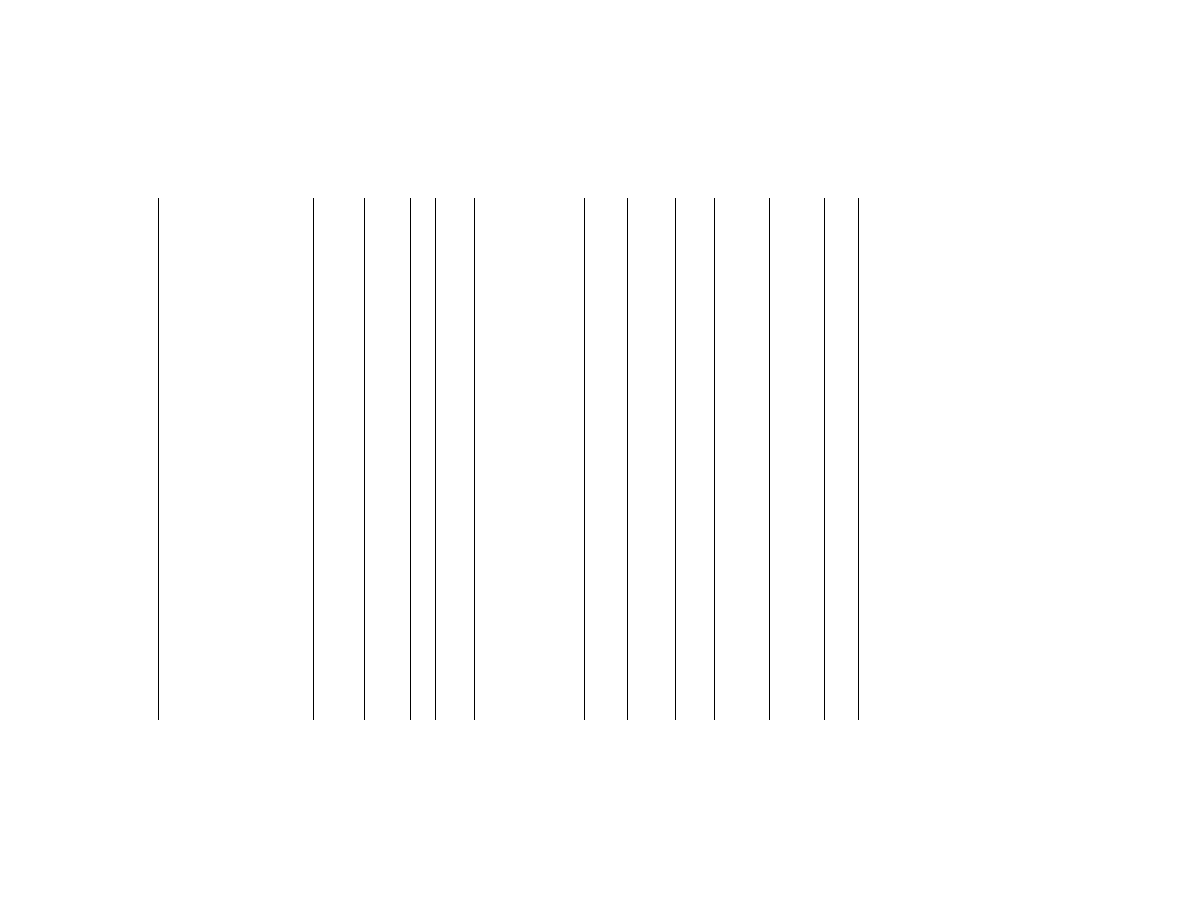
313
Pipeline and Haz. Matls. Safety Admin., DOT
§
172.101
2,4,6-Trinitroso-3-methyl
nitraminoanisole
Forbidden
Trinitrotetramine cobalt nitrate
Forbidden
Trinitrotoluene and Trinitrobenzene
mixtures or TNT and
trinitrobenzene mixtures or TNT
and hexanitrostilbene mixtures or
Trinitrotoluene and
hexanitrostilnene mixtures
1.1D UN0388
......
1.1D
........................................
None
62
None
Forbidden
Forbidden
04
25
Trinitrotoluene mixtures containing
Trinitrobenzene and
Hexanitrostilbene or TNT mix-
tures containing trinitrobenzene
and hexanitrostilbene
1.1D UN0389
......
1.1D
........................................
None
62
None
Forbidden
Forbidden
04
25
Trinitrotoluene or TNT, dry or
wetted with less than 30 percent
water, by mass
1.1D UN0209
......
1.1D
........................................
None
62
None
Forbidden
Forbidden
04
25
Trinitrotoluene (TNT), wetted, with
not less than 10 percent water by
mass
4.1 UN3366
I
4.1
162, A8, A19, N41, N84,
W31
None
211
None
0.5 kg
0.5 kg
E
28, 36
Trinitrotoluene, wetted or TNT,
wetted, with not less than 30 per-
cent water by mass
4.1 UN1356
I
4.1
23, A2, A8, A19, N41,
W31
None
211
None
0.5 kg
0.5 kg
E
28, 36
Tripropylamine
3 UN2260
III
3, 8
B1, IB3, T4, TP1 150
203
242
5 L
60 L
A
40, 52
Tripropylene
3 UN2057
II
3
IB2, T4, TP2 150
202
242
5 L
60 L
B
III
3
B1, IB3, T2, TP2 150
203
242
60 L
220 L
A
Tris-(1-aziridinyl)phosphine oxide,
solution
6.1 UN2501
II
6.1
IB2, T7, TP2 153
202
243
5 L
60 L
A
III
6.1
IB3, T4, TP1 153
203
241
60 L
220 L
A
Tris, bis-bifluoroamino diethoxy pro-
pane (TVOPA)
Forbidden
Tritonal
1.1D UN0390
......
1.1D
........................................
None
62
None
Forbidden
Forbidden
04
25
Tungsten hexafluoride
2.3 UN2196
2.3, 8
2, N86 None
338
None
Forbidden
Forbidden
D
40
Turpentine
3 UN1299
III
3
B1, IB3, T2, TP2 150
203
242
60 L
220 L
A
Turpentine substitute
3 UN1300
I
3
T11, TP1, TP8, TP27 None
201
243
1 L
30 L
B
II
3
IB2, T4, TP1 150
202
242
5 L
60 L
B
III
3
B1, IB3, T2, TP1 150
203
242
60 L
220 L
A
Undecane
3 UN2330
III
3
B1, IB3, T2, TP1 150
203
242
60 L
220 L
A
Uranium hexafluoride, radioactive
material, excepted package, less
than 0.1 kg per package, non-
fissile or fissile-excepted
6.1 UN3507
I
6.1, 7,
8
369 420
None
None
Less than
.1 kg
Less than
.1 kg
A
132,
152
Urea hydrogen peroxide
5.1 UN1511
III
5.1, 8
A1, A7, A29, IB8, IP3,
T1, TP33
152
213
240
25 kg
100 kg
A
13
Urea nitrate, dry or wetted with less
than 20 percent water, by mass
1.1D UN0220
......
1.1D
119 None
62
None
Forbidden
Forbidden
04
25
Urea nitrate, wetted, with not less
than 10 percent water by mass
4.1 UN3370
I
4.1
162, A8, A19, N41, N84,
W31
None
211
None
0.5 kg
0.5 kg
E
28, 36
Urea nitrate, wetted with not less
than 20 percent water, by mass
4.1 UN1357
I
4.1
23, 39, A8, A19, N41,
W31
None
211
None
1 kg
15 kg
E
28, 36
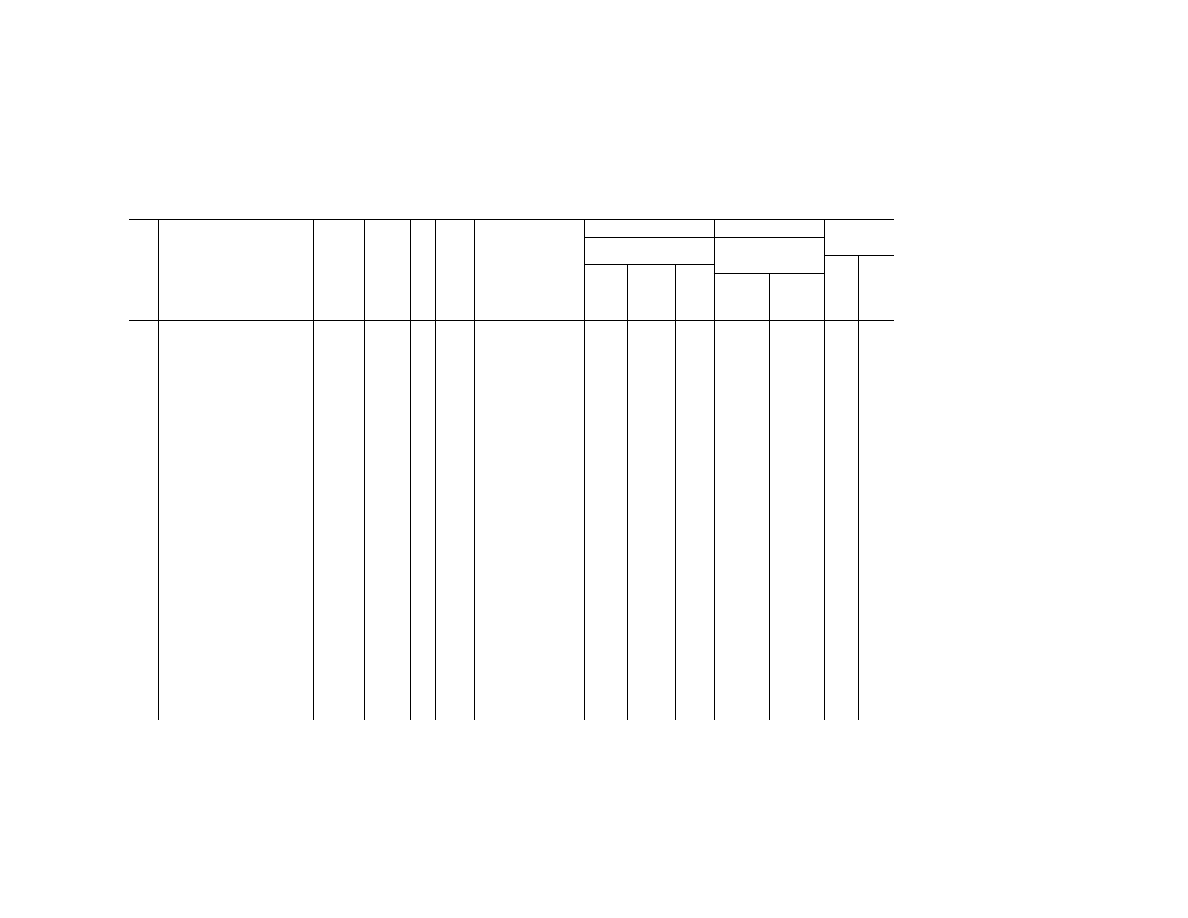
314
49 CFR Ch. I (10–1–23 Edition)
§
172.101
§ 172.101 H
AZARDOUS
M
ATERIALS
T
ABLE
—Continued
Sym-
bols
Hazardous materials descriptions
and proper shipping names
Hazard
class or
Division
Identi-
fication
Numbers
PG
Label
Codes
Special provisions
(§ 172.102)
(8)
(9)
(10)
Vessel
stowage
Packaging
(§ 173.***)
Quantity limitations
(see §§ 173.27 and
175.75)
Loca-
tion
Other
Excep-
tions
Non-bulk
Bulk
Passenger
aircraft/rail
Cargo air-
craft only
(1)
(2)
(3)
(4)
(5)
(6)
(7)
(8A)
(8B)
(8C)
(9A)
(9B)
(10A)
(10B)
Urea peroxide, see Urea hydrogen
peroxide
Valeraldehyde
3 UN2058
II
3
IB2, T4, TP1 150
202
242
5 L
60 L
B
Valeric acid, see Corrosive liquids,
n.o.s.
Valeryl chloride
8 UN2502
II
8, 3
A3, A7, B2, IB2, N34,
T7, TP2
154
202
243
1 L
30 L
C
40, 53,
58
G
Vanadium compound, n.o.s
6.1 UN3285
I
6.1
IB7, IP1, T6, TP33 None
211
242
5 kg
50 kg
B
II
6.1
IB8, IP2, IP4, T3, TP33 153
212
242
25 kg
100 kg
B
III
6.1
IB8, IP3, T1, TP33 153
213
240
100 kg
200 kg
Vanadium oxytrichloride
8 UN2443
II
8
A3, A7, B2, B16, IB2,
N34, T7, TP2
154
202
242
Forbidden
30 L
C
40, 53,
58
Vanadium pentoxide, non-fused
form
6.1 UN2862
III
6.1
IB8, IP3, T1, TP33 153
213
240
100 kg
200 kg
A
40
Vanadium tetrachloride
8 UN2444
I
8
A7, B4, N34, T10, TP2 None
201
243
Forbidden
2.5 L
C
40, 53,
58
Vanadium trichloride
8 UN2475
III
8
IB8, IP3, T1, TP33 154
213
240
25 kg
100 kg
A
40, 53,
58
Vanadyl sulfate
6.1 UN2931
II
6.1
IB8, IP2, IP4, T3, TP33 153
212
242
25 kg
100 kg
A
Vehicle, flammable gas powered or
Vehicle, fuel cell, flammable gas
powered
9 UN3166
......
9
135, A200 220
220
220
Forbidden
No limit
A
Vehicle, flammable liquid powered
or Vehicle, fuel cell, flammable
liquid powered
9 UN3166
......
9
135, A200 220
220
220
No limit
No limit
A
Very signal cartridge, see Car-
tridges, signal
Vinyl acetate, stabilized
3 UN1301
II
3
387, IB2, T4, TP1 150
202
242
5 L
60 L
C
25
Vinyl bromide, stabilized
2.1 UN1085
......
2.1
387, N86, T50 306
304
314,
315
Forbidden
150 kg
B
25, 40
Vinyl butyrate, stabilized
3 UN2838
II
3
387, IB2, T4, TP1 150
202
242
5 L
60 L
C
25
Vinyl chloride, stabilized
2.1 UN1086
......
2.1
21, 387, B44, N86, T50 306
304
314,
315
Forbidden
150 kg
B
25, 40
Vinyl chloroacetate
6.1 UN2589
II
6.1, 3
IB2, T7, TP2 153
202
243
5 L
60 L
A
Vinyl ethyl ether, stabilized
3 UN1302
I
3
387, T11, TP2 None
201
243
1 L
30 L
D
Vinyl fluoride, stabilized
2.1 UN1860
......
2.1
387, N86 306
304
314,
315
Forbidden
150 kg
E
25, 40
Vinyl isobutyl ether, stabilized
3 UN1304
II
3
387, IB2, T4, TP1 150
202
242
5 L
60 L
C
25

315
Pipeline and Haz. Matls. Safety Admin., DOT
§
172.101
Vinyl methyl ether, stabilized
2.1 UN1087
......
2.1
387, B44, T50 306
304
314,
315
Forbidden
150 kg
B
25, 40
Vinyl nitrate polymer
Forbidden
Vinylidene chloride, stabilized
3 UN1303
I
3
387, T12, TP2, TP7 150
201
243
1 L
30 L
D
25, 40
Vinylpyridines, stabilized
6.1 UN3073
II
6.1, 3,
8
387, IB1, T7, TP2, TP13 153
202
243
1 L
30 L
B
21, 25,
40, 52,
100
Vinyltoluenes, stabilized
3 UN2618
III
3
387, B1, IB3, T2, TP1 150
203
242
60 L
220 L
C
25
Vinyltrichlorosilane
3 UN1305
II
3, 8
A3, A7, B6, N34, T10,
TP2, TP7, TP13
None
206
243
Forbidden
5 L
B
40, 53,
58
Warheads, rocket with burster or
expelling charge
1.4D UN0370
......
1.4D
........................................
None
62
62
Forbidden
75 kg
02
25
Warheads, rocket with burster or
expelling charge
1.4F UN0371
......
1.4F
........................................
None
62
None
Forbidden
Forbidden
03
25
Warheads, rocket with bursting
charge
1.1D UN0286
......
1.1D
........................................
None
62
62
Forbidden
Forbidden
03
25
Warheads, rocket with bursting
charge
1.2D UN0287
......
1.2D
........................................
None
62
62
Forbidden
Forbidden
03
25
Warheads, rocket with bursting
charge
1.1F UN0369
......
1.1F
........................................
None
62
None
Forbidden
Forbidden
03
25
Warheads, torpedo with bursting
charge
1.1D UN0221
......
1.1D
........................................
None
62
62
Forbidden
Forbidden
03
25
G
Water-reactive liquid, corrosive,
n.o.s.
4.3 UN3129
I
4.3, 8
T14, TP2, TP7, TP13 None
201
243
Forbidden
1 L
D
13,148
................
II
4.3, 8
IB1, T11, TP2, TP7 None
202
243
1 L
5 L
E
13, 85,
148
................
III
4.3, 8
IB2, T7, TP2, TP7 None
203
242
5 L
60 L
E
13, 85,
148
G
Water-reactive liquid, n.o.s.
4.3 UN3148
I
4.3
T13, TP2, TP7, W31 None
201
244
Forbidden
1 L
E
13, 40,
148
................
II
4.3
IB1, T7, TP2, TP7, W31 None
202
243
1 L
5 L
E
13, 40,
148
Water-reactive liquid, n.o.s.
................
III
4.3
IB2, T7, TP2, TP7, W31 None
203
242
5 L
60 L
E
13, 40,
148
G
Water-reactive liquid, toxic, n.o.s
4.3 UN3130
I
4.3,
6.1
A4 None
201
243
Forbidden
1 L
D
13, 148
II
4.3,
6.1
IB1 151
202
243
1 L
5 L
E
13, 85,
148
III
4.3,
6.1
IB2 151
203
242
5 L
60 L
E
13, 85,
148
G
Water-reactive solid, corrosive,
n.o.s
4.3 UN3131
I
4.3, 8
IB4, IP1, N40, T9, TP7,
TP33, W31
None
211
242
Forbidden
15 kg
D
13, 148
II
4.3, 8
IB6, IP2, T3, TP33,
W31, W40
151
212
242
15 kg
50 kg
E
13, 85,
148
III
4.3, 8
IB8, IP4, T1, TP33, W31 151
213
241
25 kg
100 kg
E
13, 85,
148
G
Water-reactive solid, flammable,
n.o.s.
4.3 UN3132
I
4.3,
4.1
IB4, N40, W31 None
211
242
Forbidden
15 kg
D
13, 148
\
................
II
4.3,
4.1
IB4, T3, TP33, W31,
W40
151
212
242
15 kg
50 kg
E
13, 85,
148
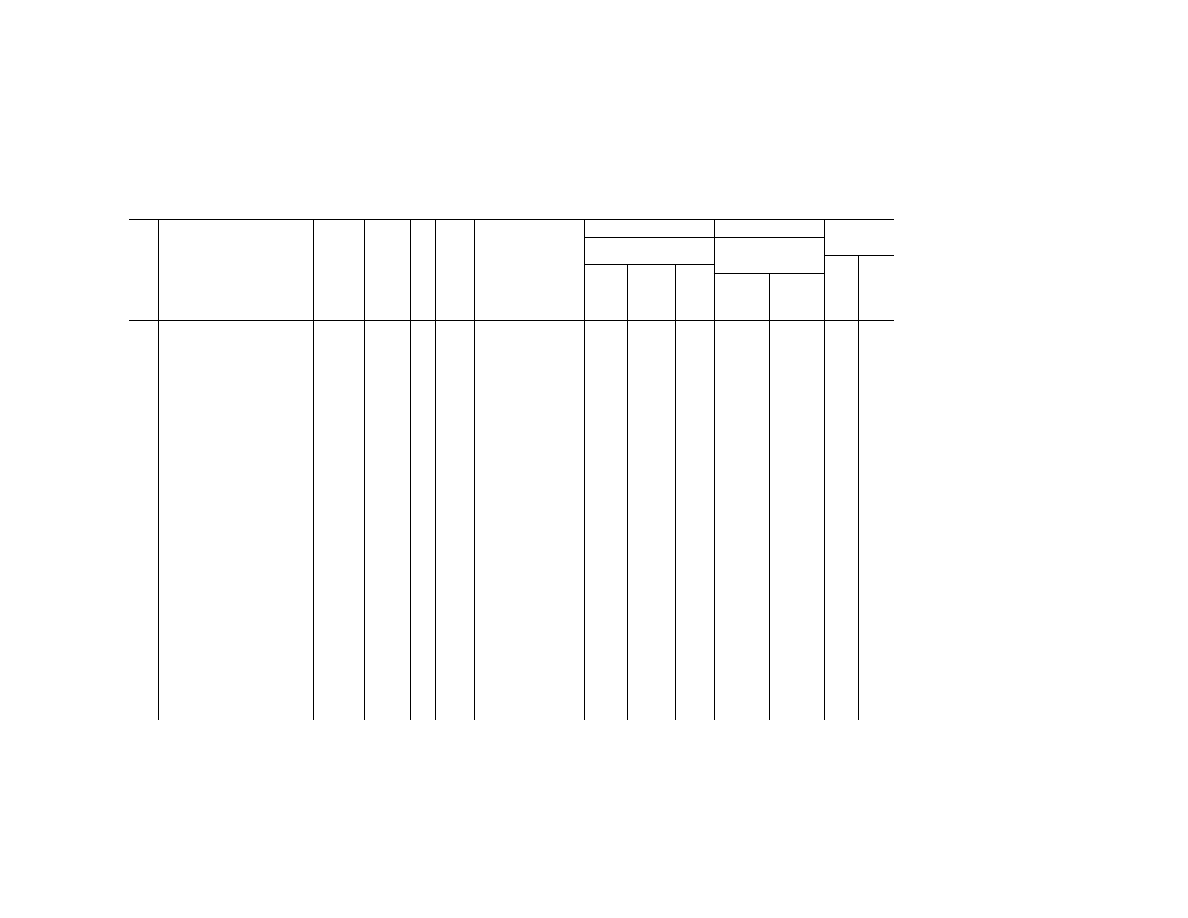
316
49 CFR Ch. I (10–1–23 Edition)
§
172.101
§ 172.101 H
AZARDOUS
M
ATERIALS
T
ABLE
—Continued
Sym-
bols
Hazardous materials descriptions
and proper shipping names
Hazard
class or
Division
Identi-
fication
Numbers
PG
Label
Codes
Special provisions
(§ 172.102)
(8)
(9)
(10)
Vessel
stowage
Packaging
(§ 173.***)
Quantity limitations
(see §§ 173.27 and
175.75)
Loca-
tion
Other
Excep-
tions
Non-bulk
Bulk
Passenger
aircraft/rail
Cargo air-
craft only
(1)
(2)
(3)
(4)
(5)
(6)
(7)
(8A)
(8B)
(8C)
(9A)
(9B)
(10A)
(10B)
................
III
4.3,
4.1
IB6, T1, TP33, W31 151
213
241
25 kg
100 kg
E
13, 85,
148
G
Water-reactive solid, n.o.s
4.3 UN2813
I
4.3
IB4, N40, T9, TP7,
TP33, W31
None
211
242
Forbidden
15 kg
E
13, 40,
148
II
4.3
B132, IB7, IP2, IP21,
T3, TP33, W31, W40
151
212
242
15 kg
50 kg
E
13, 40,
148
III
4.3
B132, IB8, IP21, T1,
TP33, W31
151
213
241
25 kg
100 kg
E
13, 40,
148
G
Water-reactive, solid, oxidizing,
n.o.s
4.3 UN3133
II
4.3,
5.1
........................................
151
214
214
Forbidden
Forbidden
E
13, 40,
148
III
4.3,
5.1
........................................
151
214
214
Forbidden
Forbidden
E
13, 40,
148
G
Water-reactive solid, self-heating,
n.o.s.
4.3 UN3135
I
4.3,
4.2
N40, W31 None
211
242
Forbidden
15 kg
D
13, 148
................
II
4.3,
4.2
IB5, IP2, T3, TP33,
W31, W40
None
212
242
15 kg
50 kg
E
13, 85,
148
................
III
4.3,
4.2
IB8, IP4, T1, TP33, W31 None
213
241
25 kg
100 kg
E
13, 85,
148
G
Water-reactive solid, toxic, n.o.s
4.3 UN3134
I
4.3,
6.1
A8, IB4, IP1, N40, W31 None
211
242
Forbidden
15 kg
D
13, 148
II
4.3,
6.1
IB5, IP2, T3, TP33,
W31, W40
151
212
242
15 kg
50 kg
E
13, 85,
148
III
4.3,
6.1
IB8, IP4, T1, TP33, W31 151
213
241
25 kg
100 kg
E
13, 85,
148
Wheelchair, electric, see Battery
powered vehicle or Battery pow-
ered equipment
White acid, see Hydrofluoric acid
Wood preservatives, liquid
3 UN1306
II
3
149, IB2, T4, TP1, TP8 150
202
242
5 L
60 L
B
III
3
B1, IB3, T2, TP1 150
203
242
60 L
220 L
A
40
A I W Wool waste, wet
4.2 UN1387
III
4.2
151
213
240
Forbidden
Forbidden
A
Xanthates
4.2 UN3342
II
4.2
IB6, IP2, T3, TP33, W31 None
212
241
15 kg
50 kg
D
40
III
4.2
IB8, IP3, T1, TP33, W31 None
213
241
25 kg
100 kg
D
40
Xenon, compressed
2.2 UN2036
2.2
306,
307
302
None
75 kg
150 kg
A
Xenon, refrigerated liquid (cryogenic
liquids)
2.2 UN2591
2.2
T75, TP5 320
None
None
50 kg
500 kg
D
Xylenes
3 UN1307
II
3
IB2, T4, TP1 150
202
242
5 L
60 L
B
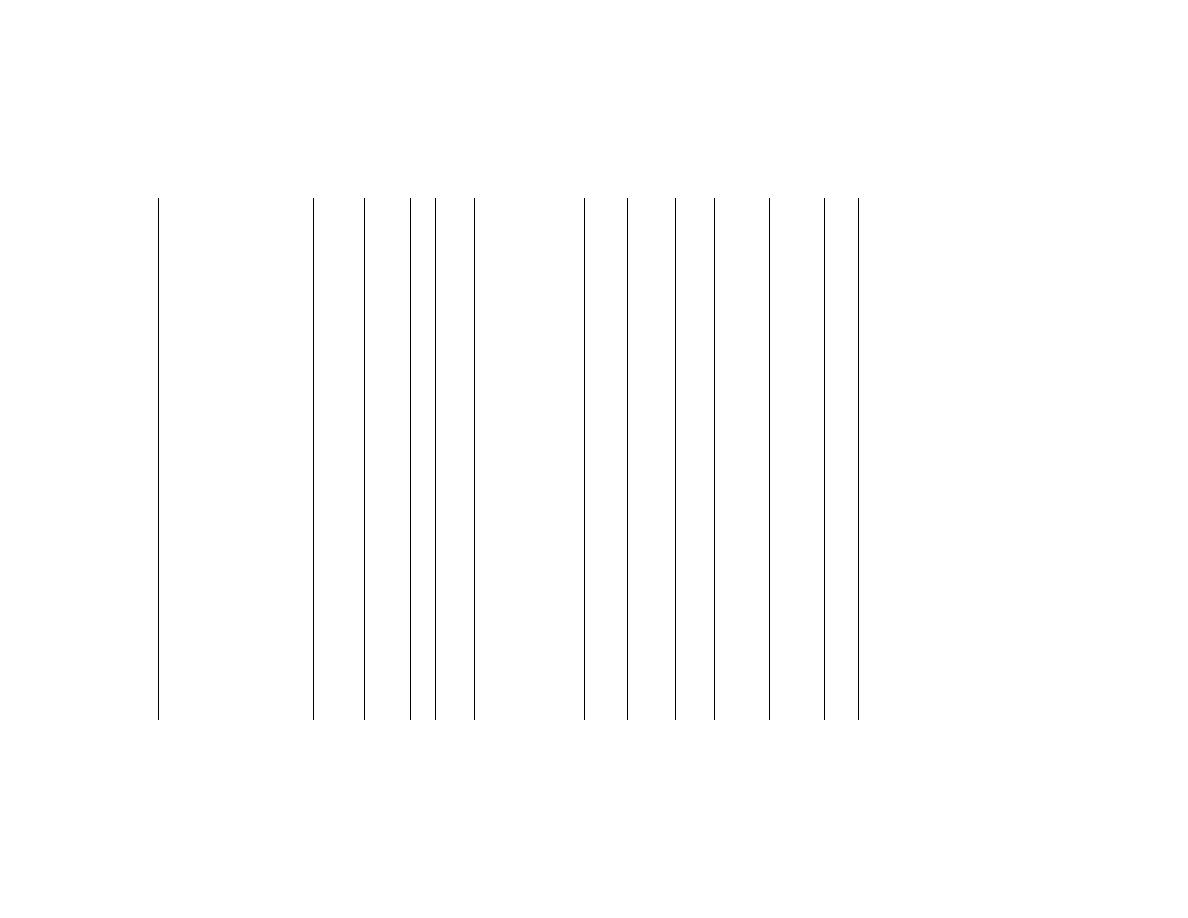
317
Pipeline and Haz. Matls. Safety Admin., DOT
§
172.101
III
3
B1, IB3, T2, TP1 150
203
242
60 L
220 L
A
Xylenols, solid
6.1 UN2261
II
6.1
IB8, IP2, IP4, T3, TP33 153
212
242
25 kg
100 kg
A
Xylenols, liquid
6.1 UN3430
II
6.1
IB2, T7, TP2 153
202
243
5 L
60 L
A
Xylidines, liquid
6.1 UN1711
II
6.1
IB2, T7, TP2 153
202
243
5 L
60 L
A
Xylidines, solid
6.1 UN3452
II
6.1
IB8, IP2, IP4, T3, TP33 153
212
242
25 kg
100 kg
A
Xylyl bromide, liquid
6.1 UN1701
II
6.1
A3, A7, IB2, N33, T7,
TP2, TP13, W31
None
340
None
Forbidden
60 L
D
40
Xylyl bromide, solid
6.1 UN3417
II
6.1
A3, A6, A7, IB8, IP2,
IP4, N33, T3, TP33
None
340
None
25 kg
100 kg
B
40
p-Xylyl diazide
Forbidden
Zinc ammonium nitrite
5.1 UN1512
II
5.1
IB8, IP4, T3, TP33 152
212
242
5 kg
25 kg
E
Zinc arsenate or Zinc arsenite or
Zinc arsenate and zinc arsenite
mixtures
6.1 UN1712
II
6.1
IB8, IP2, IP4, T3, TP33 153
212
242
25 kg
100 kg
A
Zinc ashes
4.3 UN1435
III
4.3
A1, A19, B136, IB8, IP4,
T1, TP33, W100
151
213
241
25 kg
100 kg
A
13, 148
Zinc bisulfite solution, see Bisulfites,
aqueous solutions, n.o.s.
Zinc bromate
5.1 UN2469
III
5.1
A1, A29, IB8, IP3, T1,
TP33
152
213
240
25 kg
100 kg
A
56, 58
Zinc chlorate
5.1 UN1513
II
5.1
A9, IB8, IP2, IP4, N34,
T3, TP33
152
212
242
5 kg
25 kg
A
56, 58
Zinc chloride, anhydrous
8 UN2331
III
8
IB8, IP3, T1, TP33 154
213
240
25 kg
100 kg
A
53, 58
Zinc chloride, solution
8 UN1840
III
8
IB3, T4, TP2 154
203
241
5 L
60 L
A
53, 58
Zinc cyanide
6.1 UN1713
I
6.1
IB7, IP1, T6, TP33 None
211
242
5 kg
50 kg
A
52
Zinc dithionite or Zinc hydrosulfite
9 UN1931
III
None
IB8, IP3, T1, TP33 155
204
240
100 kg
200 kg
A
13, 26,
123
Zinc fluorosilicate
6.1 UN2855
III
6.1
IB8, IP3, T1, TP33 153
213
240
100 kg
200 kg
A
52
Zinc hydrosulfite, see Zinc dithionite
Zinc muriate solution, see Zinc
chloride, solution
Zinc nitrate
5.1 UN1514
II
5.1
IB8, IP2, IP4, T3, TP33 152
212
240
5 kg
25 kg
A
Zinc permanganate
5.1 UN1515
II
5.1
IB6, IP2, T3, TP33 152
212
242
5 kg
25 kg
D
56, 58,
138
Zinc peroxide
5.1 UN1516
II
5.1
IB6, IP2, T3, TP33,
W100
152
212
242
5 kg
25 kg
C
13, 52,
66, 75,
148
Zinc phosphide
4.3 UN1714
I
4.3,
6.1
A19, N40, W31 None
211
None
Forbidden
15 kg
E
13, 40,
52, 85,
148
Zinc powder or Zinc dust
4.3 UN1436
I
4.3,
4.2
A19, IB4, IP1, N40, W31 None
211
242
Forbidden
15 kg
A
13, 52,
53, 148
II
4.3,
4.2
A19, IB7, IP2, T3, TP33,
W31, W40
None
212
242
15 kg
50 kg
A
13, 52,
53, 148
III
4.3,
4.2
IB8, IP4, T1, TP33, W31 None
213
242
25 kg
100 kg
A
13, 52,
53, 148
Zinc resinate
4.1 UN2714
III
4.1
A1, IB6, T1, TP33 151
213
240
25 kg
100 kg
A
Zinc selenate, see Selenates or
Selenites

318
49 CFR Ch. I (10–1–23 Edition)
§
172.101
§ 172.101 H
AZARDOUS
M
ATERIALS
T
ABLE
—Continued
Sym-
bols
Hazardous materials descriptions
and proper shipping names
Hazard
class or
Division
Identi-
fication
Numbers
PG
Label
Codes
Special provisions
(§ 172.102)
(8)
(9)
(10)
Vessel
stowage
Packaging
(§ 173.***)
Quantity limitations
(see §§ 173.27 and
175.75)
Loca-
tion
Other
Excep-
tions
Non-bulk
Bulk
Passenger
aircraft/rail
Cargo air-
craft only
(1)
(2)
(3)
(4)
(5)
(6)
(7)
(8A)
(8B)
(8C)
(9A)
(9B)
(10A)
(10B)
Zinc selenite, see Selenates or
Selenites
Zinc silicofluoride, see Zinc
fluorosilicate
Zirconium, dry, coiled wire, finished
metal sheets, strip (thinner than
254 microns but not thinner than
18 microns)
4.1 UN2858
III
4.1
A1, W100 151
213
240
25 kg
100 kg
A
13,
147,
148
Zirconium, dry, finished sheets, strip
or coiled wire
4.2 UN2009
III
4.2
A1, A19, W31 None
213
240
25 kg
100 kg
D
13, 148
Zirconium hydride
4.1 UN1437
II
4.1
A19, A20, IB4, N34, T3,
TP33, W31, W40
151
212
240
15 kg
50 kg
E
Zirconium nitrate
5.1 UN2728
III
5.1
A1, A29, IB8, IP3, T1,
TP33
152
213
240
25 kg
100 kg
A
Zirconium picramate, dry or wetted
with less than 20 percent water,
by mass
1.3C UN0236
......
1.3C
........................................
None
62
None
Forbidden
Forbidden
04
25, 5E
Zirconium picramate, wetted with
not less than 20 percent water,
by mass
4.1 UN1517
I
4.1
23, N41, W31 None
211
None
1 kg
15 kg
D
28, 36
Zirconium powder, dry
4.2 UN2008
I
4.2
T21, TP7, TP33, W31 None
211
242
Forbidden
Forbidden
D
13, 148
II
4.2
A19, A20, IB6, IP2, N5,
N34, T3, TP33, W31
None
212
241
15 kg
50 kg
D
13, 148
III
4.2
B135, IB8, IP4, T1,
TP33, W31
None
213
241
25 kg
100 kg
D
13, 148
Zirconium powder, wetted with not
less than 25 percent water (a
visible excess of water must be
present) (a) mechanically pro-
duced, particle size less than 53
microns; (b) chemically produced,
particle size less than 840 mi-
crons
4.1 UN1358
II
4.1
A19, A20, IB6, IP2, N34,
T3, TP33, W31, W40
151
212
241
15 kg
50 kg
E
13, 74,
147,
148
Zirconium scrap
4.2 UN1932
III
4.2
B135, IB8, IP21, N34,
T1, TP33, W31
None
213
240
Forbidden
Forbidden
D
13, 148
Zirconium suspended in a liquid
3 UN1308
I
3
........................................
None
201
243
Forbidden
Forbidden
B
II
3
IB2 150
202
242
5 L
60 L
B
III
3
B1, IB2 150
203
242
60 L
220 L
B
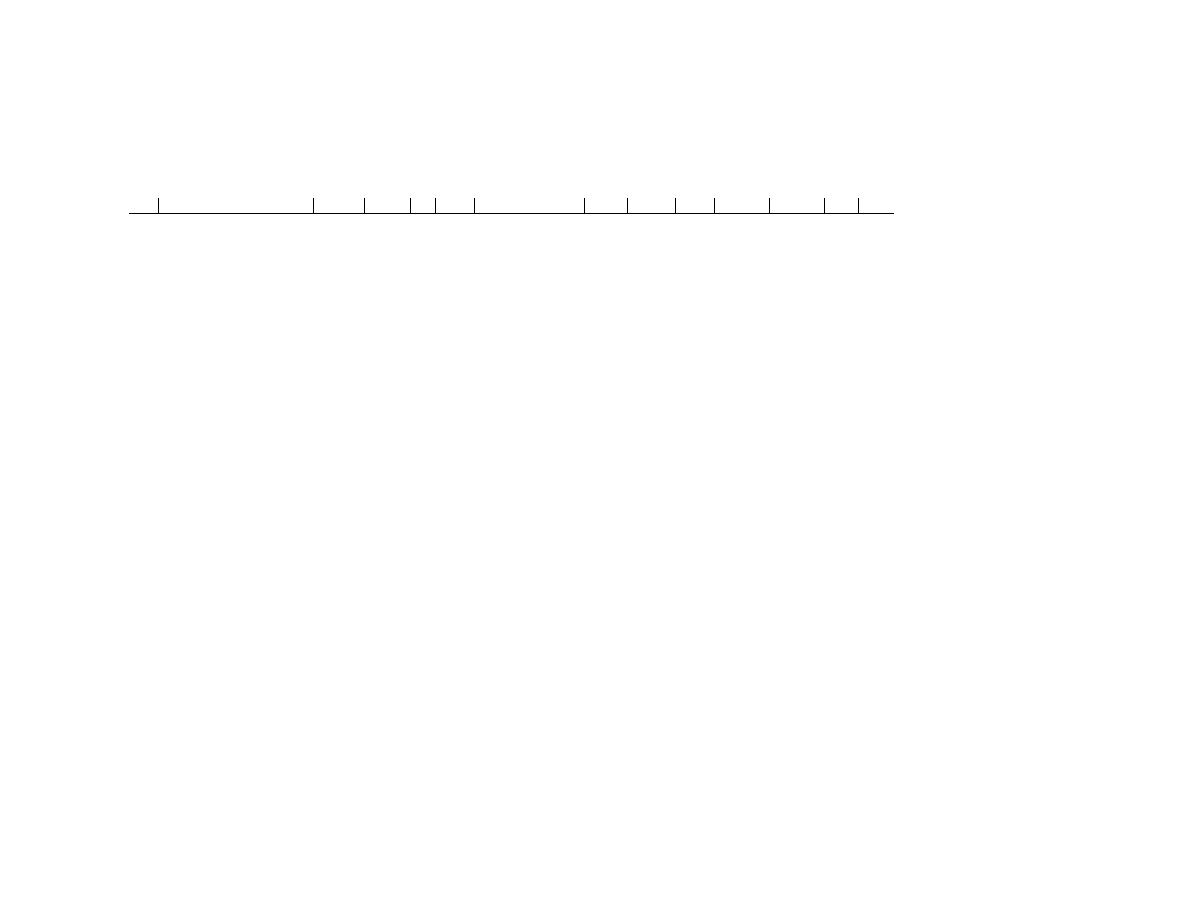
319
Pipeline and Haz. Matls. Safety Admin., DOT
§
172.101
Zirconium tetrachloride
8 UN2503
III
8
IB8, IP3, T1, TP33 154
213
240
25 kg
100 kg
A
53, 58
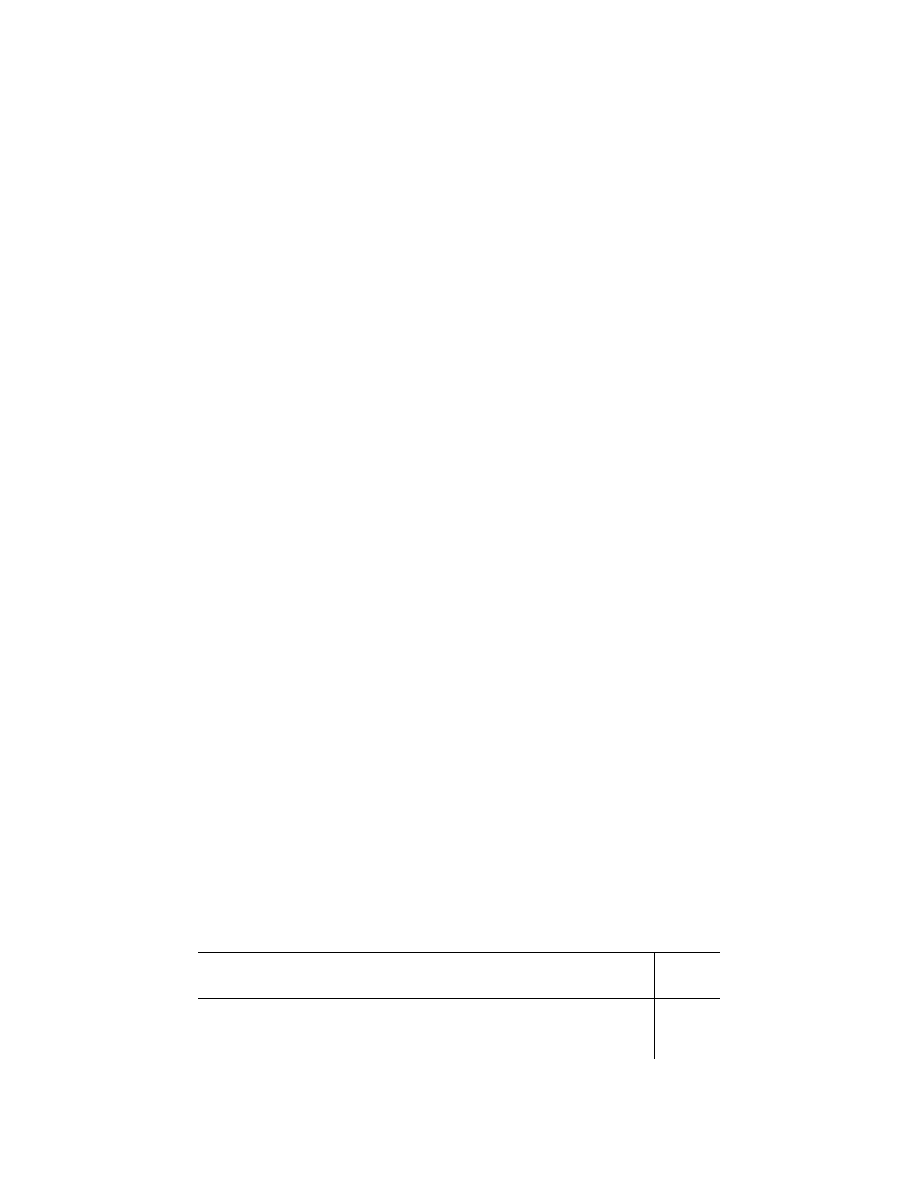
320
49 CFR Ch. I (10–1–23 Edition)
§ 172.101
A
PPENDIX
A
TO
§ 172.101—L
IST OF
H
AZARDOUS
S
UBSTANCES AND
R
EPORTABLE
Q
UANTITIES
1. This appendix lists materials and their
corresponding reportable quantities (RQ’s)
that are listed or designated as ‘‘hazardous
substances’’ under section 101(14) of the Com-
prehensive Environmental Response, Com-
pensation, and Liability Act, 42 U.S.C.
9601(14) (CERCLA; 42 U.S.C. 9601
et seq
). This
listing fulfills the requirement of CERCLA,
42 U.S.C. 9656(a), that all ‘‘hazardous sub-
stances,’’ as defined in 42 U.S.C. 9601(14), be
listed and regulated as hazardous materials
under 49 U.S.C. 5101–5127. That definition in-
cludes substances listed under sections
311(b)(2)(A) and 307(a) of the Federal Water
Pollution Control Act, 33 U.S.C. 1321(b)(2)(A)
and 1317(a), section 3001 of the Solid Waste
Disposal Act, 42 U.S.C. 6921, and section 112
of the Clean Air Act, 42 U.S.C. 7412. In addi-
tion, this list contains materials that the
Administrator of the Environmental Protec-
tion Agency has determined to be hazardous
substances in accordance with section 102 of
CERCLA, 42 U.S.C. 9602. It should be noted
that 42 U.S.C. 9656(b) provides that common
and contract carriers may be held liable
under laws other than CERCLA for the re-
lease of a hazardous substance as defined in
that Act, during transportation that com-
menced before the effective date of the list-
ing and regulating of that substance as a
hazardous material under 49 U.S.C. 5101–5127.
2. This appendix is divided into two TA-
BLES which are entitled ‘‘TABLE 1—HAZ-
ARDOUS SUBSTANCES OTHER THAN
RADIONUCLIDES’’ and ‘‘TABLE 2—RADIO-
NUCLIDES.’’ A material listed in this appen-
dix is regulated as a hazardous material and
a hazardous substance under this subchapter
if it meets the definition of a hazardous sub-
stance in § 171.8 of this subchapter.
3. The procedure for selecting a proper
shipping name for a hazardous substance is
set forth in § 172.101(c).
4. Column 1 of TABLE 1, entitled
‘‘Haz-
ardous substance’’,
contains the names of
those elements and compounds that are haz-
ardous substances. Following the listing of
elements and compounds is a listing of waste
streams. These waste streams appear on the
list in numerical sequence and are referenced
by the appropriate ‘‘D’’, ‘‘F’’, or ‘‘K’’ num-
bers. Column 2 of TABLE 1, entitled
‘‘Re-
portable quantity (RQ)’’,
contains the report-
able quantity (RQ), in pounds and kilograms,
for each hazardous substance listed in Col-
umn 1 of TABLE 1.
5. A series of notes is used throughout
TABLE 1 and TABLE 2 to provide additional
information concerning certain hazardous
substances. These notes are explained at the
end of each TABLE.
6. TABLE 2 lists radionuclides that are
hazardous substances and their cor-
responding RQ’s. The RQ’s in table 2 for
radionuclides are expressed in units of curies
and terabecquerels, whereas those in table 1
are expressed in units of pounds and kilo-
grams. If a material is listed in both table 1
and table 2, the lower RQ shall apply. Radio-
nuclides are listed in alphabetical order. The
RQ’s for radionuclides are given in the radio-
logical unit of measure of curie, abbreviated
‘‘Ci’’, followed, in parentheses, by an equiva-
lent unit measured in terabecquerels, abbre-
viated ‘‘TBq’’.
7. For mixtures of radionuclides, the fol-
lowing requirements shall be used in deter-
mining if a package contains an RQ of a haz-
ardous substance: (i) if the identity and
quantity (in curies or terabecquerels) of each
radionuclide in a mixture or solution is
known, the ratio between the quantity per
package (in curies or terabecquerels) and the
RQ for the radionuclide must be determined
for each radionuclide. A package contains an
RQ of a hazardous substance when the sum of
the ratios for the radionuclides in the mix-
ture or solution is equal to or greater than
one; (ii) if the identity of each radionuclide
in a mixture or solution is known but the
quantity per package (in curies or
terabecquerels) of one or more of the radio-
nuclides is unknown, an RQ of a hazardous
substance is present in a package when the
total quantity (in curies or terabecquerels)
of the mixture or solution is equal to or
greater than the lowest RQ of any individual
radionuclide in the mixture or solution; and
(iii) if the identity of one or more radio-
nuclides in a mixture or solution is unknown
(or if the identity of a radionuclide by itself
is unknown), an RQ of a hazardous substance
is present when the total quantity (in curies
or terabecquerels) in a package is equal to or
greater than either one curie or the lowest
RQ of any known individual radionuclide in
the mixture or solution, whichever is lower.
T
ABLE
1
TO
A
PPENDIX
A—H
AZARDOUS
S
UBSTANCES
O
THER
T
HAN
R
ADIONUCLIDES
Hazardous substance
Reportable
quantity (RQ)
pounds
(kilograms)
A2213 ........................................................................................................................................................................
5000 (2270)
Acenaphthene ...........................................................................................................................................................
100 (45.4)
Acenaphthylene .........................................................................................................................................................
5000 (2270)
Acetaldehyde .............................................................................................................................................................
1000 (454)
Acetaldehyde, chloro- ................................................................................................................................................
1000 (454)
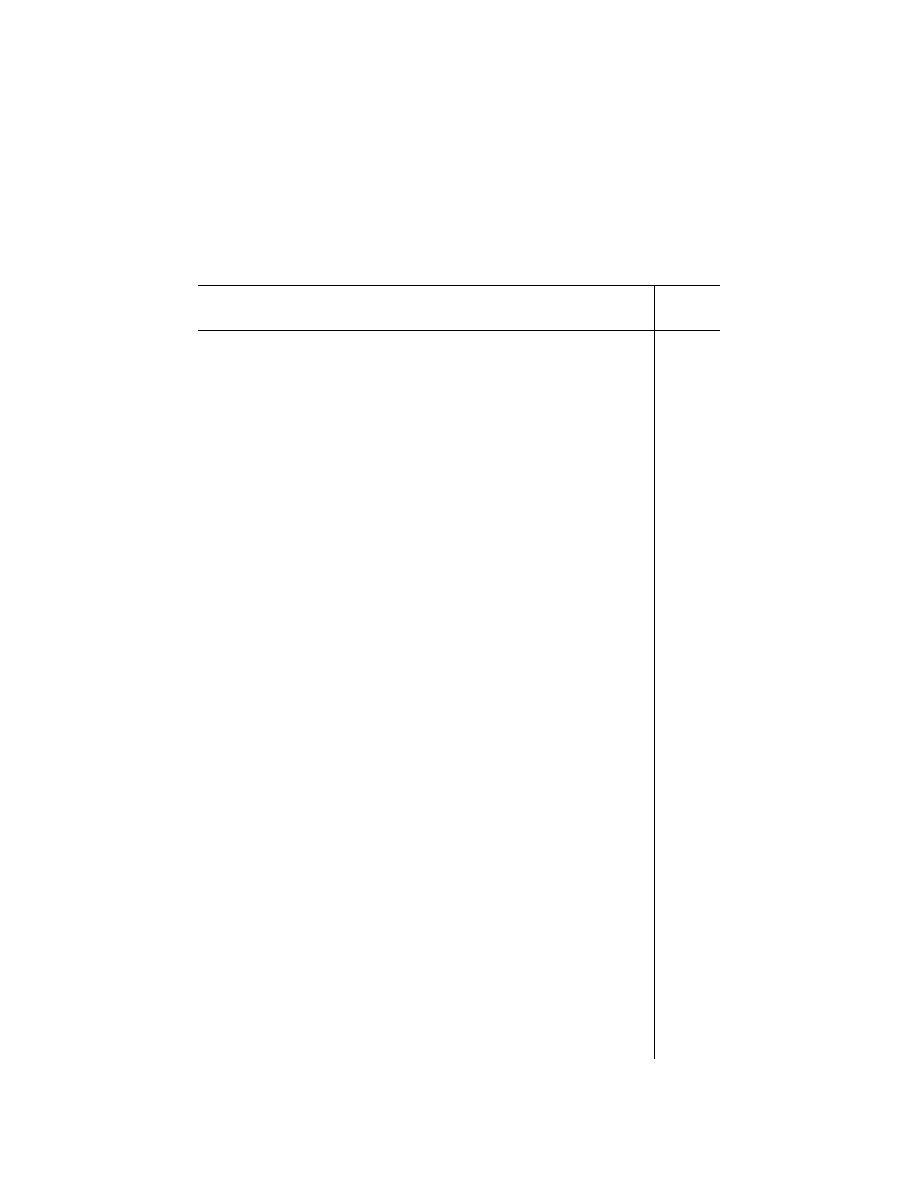
321
Pipeline and Haz. Matls. Safety Admin., DOT
§ 172.101
T
ABLE
1
TO
A
PPENDIX
A—H
AZARDOUS
S
UBSTANCES
O
THER
T
HAN
R
ADIONUCLIDES
—Continued
Hazardous substance
Reportable
quantity (RQ)
pounds
(kilograms)
Acetaldehyde, trichloro- .............................................................................................................................................
5000 (2270)
Acetamide ..................................................................................................................................................................
100 (45.4)
Acetamide, N-(aminothioxomethyl)- ..........................................................................................................................
1000 (454)
Acetamide, N-(4-ethoxyphenyl)- ................................................................................................................................
100 (45.4)
Acetamide, N-9H-fluoren-2-yl- ...................................................................................................................................
1 (0.454)
Acetamide, 2-fluoro- ..................................................................................................................................................
100 (45.4)
Acetic acid .................................................................................................................................................................
5000 (2270)
Acetic acid, (2,4-dichlorophenoxy)-, salts & esters ...................................................................................................
100 (45.4)
Acetic acid, ethyl ester ..............................................................................................................................................
5000 (2270)
Acetic acid, fluoro-, sodium salt ................................................................................................................................
10 (4.54)
Acetic acid, lead(2 + ) salt ........................................................................................................................................
10 (4.54)
Acetic acid, thallium(1 + ) salt ...................................................................................................................................
100 (45.4)
Acetic acid, (2,4,5-trichlorophenoxy)- ........................................................................................................................
1000 (454)
Acetic anhydride ........................................................................................................................................................
5000 (2270)
Acetone .....................................................................................................................................................................
5000 (2270)
Acetone cyanohydrin .................................................................................................................................................
10 (4.54)
Acetonitrile .................................................................................................................................................................
5000 (2270)
Acetophenone ...........................................................................................................................................................
5000 (2270)
2-Acetylaminofluorene ...............................................................................................................................................
1 (0.454)
Acetyl bromide ...........................................................................................................................................................
5000 (2270)
Acetyl chloride ...........................................................................................................................................................
5000 (2270)
1-Acetyl-2-thiourea ....................................................................................................................................................
1000 (454)
Acrolein ......................................................................................................................................................................
1 (0.454)
Acrylamide .................................................................................................................................................................
5000 (2270)
Acrylic acid ................................................................................................................................................................
5000 (2270)
Acrylonitrile ................................................................................................................................................................
100 (45.4)
Adipic acid .................................................................................................................................................................
5000 (2270)
Aldicarb ......................................................................................................................................................................
1 (0.454)
Aldicarb sulfone .........................................................................................................................................................
100 (45.4)
Aldrin .........................................................................................................................................................................
1 (0.454)
Allyl alcohol ...............................................................................................................................................................
100 (45.4)
Allyl chloride ..............................................................................................................................................................
1000 (454)
Aluminum phosphide .................................................................................................................................................
100 (45.4)
Aluminum sulfate .......................................................................................................................................................
5000 (2270)
4-Aminobiphenyl ........................................................................................................................................................
1 (0.454)
5-(Aminomethyl)-3-isoxazolol ....................................................................................................................................
1000 (454)
4-Aminopyridine .........................................................................................................................................................
1000 (454)
Amitrole .....................................................................................................................................................................
10 (4.54)
Ammonia ...................................................................................................................................................................
100 (45.4)
Ammonium acetate ...................................................................................................................................................
5000 (2270)
Ammonium benzoate ................................................................................................................................................
5000 (2270)
Ammonium bicarbonate ............................................................................................................................................
5000 (2270)
Ammonium bichromate .............................................................................................................................................
10 (4.54)
Ammonium bifluoride .................................................................................................................................................
100 (45.4)
Ammonium bisulfite ...................................................................................................................................................
5000 (2270)
Ammonium carbamate ..............................................................................................................................................
5000 (2270)
Ammonium carbonate ...............................................................................................................................................
5000 (2270)
Ammonium chloride ...................................................................................................................................................
5000 (2270)
Ammonium chromate ................................................................................................................................................
10 (4.54)
Ammonium citrate, dibasic ........................................................................................................................................
5000 (2270)
Ammonium dichromate
@
..........................................................................................................................................
10 (4.54)
Ammonium fluoborate ...............................................................................................................................................
5000 (2270)
Ammonium fluoride ...................................................................................................................................................
100 (45.4)
Ammonium hydroxide ................................................................................................................................................
1000 (454)
Ammonium oxalate ....................................................................................................................................................
5000 (2270)
Ammonium picrate ....................................................................................................................................................
10 (4.54)
Ammonium silicofluoride ...........................................................................................................................................
1000 (454)
Ammonium sulfamate ................................................................................................................................................
5000 (2270)
Ammonium sulfide .....................................................................................................................................................
100 (45.4)
Ammonium sulfite ......................................................................................................................................................
5000 (2270)
Ammonium tartrate ....................................................................................................................................................
5000 (2270)
Ammonium thiocyanate .............................................................................................................................................
5000 (2270)
Ammonium vanadate ................................................................................................................................................
1000 (454)
Amyl acetate ..............................................................................................................................................................
5000 (2270)
iso-Amyl acetate.
sec-Amyl acetate.
tert-Amyl acetate.
Aniline ........................................................................................................................................................................
5000 (2270)
o-Anisidine .................................................................................................................................................................
100 (45.4)
Anthracene ................................................................................................................................................................
5000 (2270)
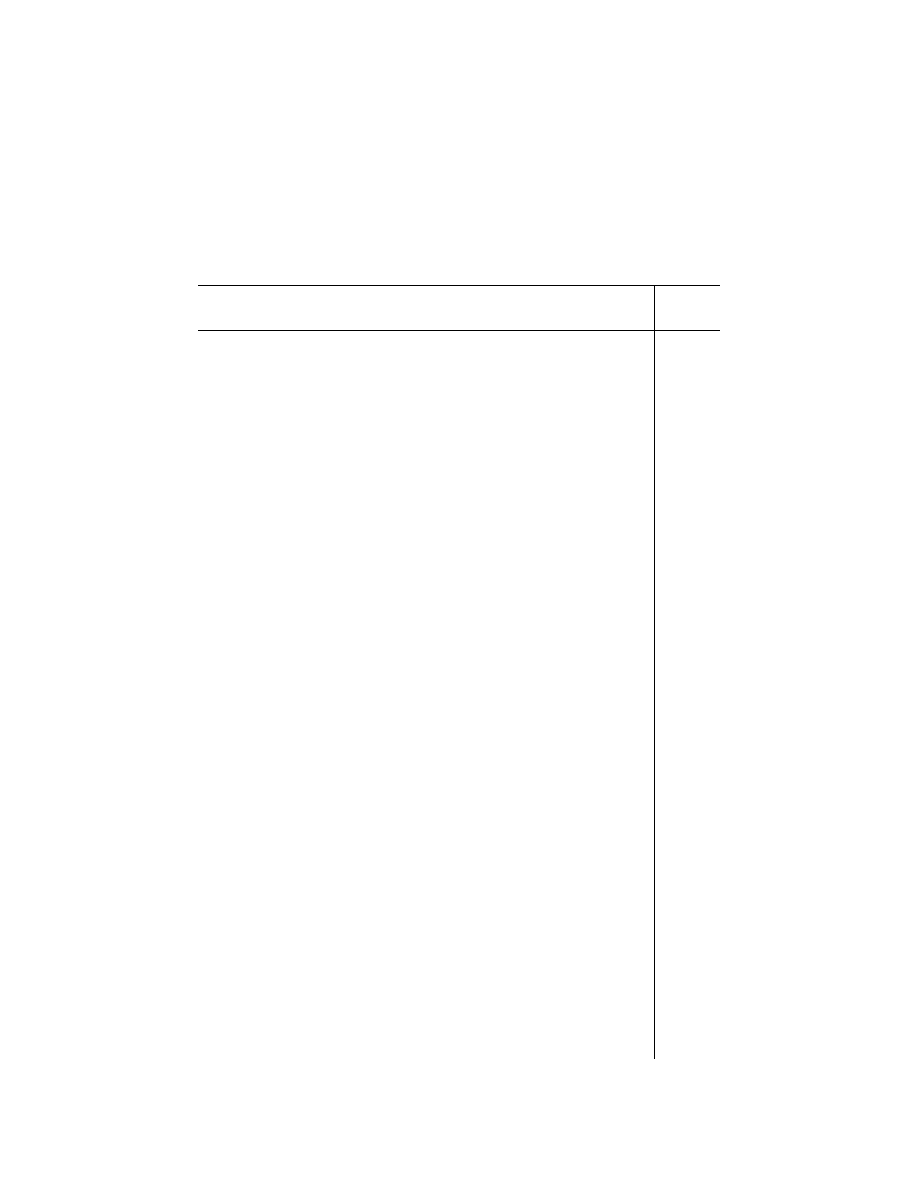
322
49 CFR Ch. I (10–1–23 Edition)
§ 172.101
T
ABLE
1
TO
A
PPENDIX
A—H
AZARDOUS
S
UBSTANCES
O
THER
T
HAN
R
ADIONUCLIDES
—Continued
Hazardous substance
Reportable
quantity (RQ)
pounds
(kilograms)
Antimony
¢
.................................................................................................................................................................
5000 (2270)
Antimony pentachloride .............................................................................................................................................
1000 (454)
Antimony potassium tartrate .....................................................................................................................................
100 (45.4)
Antimony tribromide ..................................................................................................................................................
1000 (454)
Antimony trichloride ...................................................................................................................................................
1000 (454)
Antimony trifluoride ....................................................................................................................................................
1000 (454)
Antimony trioxide .......................................................................................................................................................
1000 (454)
Argentate(1-), bis(cyano-C)-, potassium ...................................................................................................................
1 (0.454)
Aroclor 1016 ..............................................................................................................................................................
1 (0.454)
Aroclor 1221 ..............................................................................................................................................................
1 (0.454)
Aroclor 1232 ..............................................................................................................................................................
1 (0.454)
Aroclor 1242 ..............................................................................................................................................................
1 (0.454)
Aroclor 1248 ..............................................................................................................................................................
1 (0.454)
Aroclor 1254 ..............................................................................................................................................................
1 (0.454)
Aroclor 1260 ..............................................................................................................................................................
1 (0.454)
Aroclors .....................................................................................................................................................................
1 (0.454)
Arsenic
¢
....................................................................................................................................................................
1 (0.454)
Arsenic acid H
3
AsO
4
.................................................................................................................................................
1 (0.454)
Arsenic disulfide ........................................................................................................................................................
1 (0.454)
Arsenic oxide As
2
O
3
..................................................................................................................................................
1 (0.454)
Arsenic oxide As
2
O
5
..................................................................................................................................................
1 (0.454)
Arsenic pentoxide ......................................................................................................................................................
1 (0.454)
Arsenic trichloride ......................................................................................................................................................
1 (0.454)
Arsenic trioxide ..........................................................................................................................................................
1 (0.454)
Arsenic trisulfide ........................................................................................................................................................
1 (0.454)
Arsine, diethyl- ...........................................................................................................................................................
1 (0.454)
Arsinic acid, dimethyl- ...............................................................................................................................................
1 (0.454)
Arsonous dichloride, phenyl- .....................................................................................................................................
1 (0.454)
Asbestos
¢¢
...............................................................................................................................................................
1 (0.454)
Auramine ...................................................................................................................................................................
100 (45.4)
Azaserine ...................................................................................................................................................................
1 (0.454)
Aziridine .....................................................................................................................................................................
1 (0.454)
Aziridine, 2-methyl- ....................................................................................................................................................
1 (0.454)
Azirino[2
′
,3
′
:3,4]pyrrolo[1,2-a]indole-4,7-dione, 6-amino-8-[[(aminocarbonyl)oxy]methyl]-1,1a,2,8,8a,8b-
hexahydro-8a-methoxy-5-methyl-, [1aS-(1aalpha,8beta,8aalpha, 8balpha)]- .......................................................
10 (4.54)
Barban .......................................................................................................................................................................
10 (4.54)
Barium cyanide ..........................................................................................................................................................
10 (4.54)
Bendiocarb ................................................................................................................................................................
100 (45.4)
Bendiocarb phenol ....................................................................................................................................................
1000 (454)
Benomyl .....................................................................................................................................................................
10 (4.54)
Benz[j]aceanthrylene, 1,2-dihydro-3-methyl- .............................................................................................................
10 (4.54)
Benz[c]acridine ..........................................................................................................................................................
100 (45.4)
Benzal chloride ..........................................................................................................................................................
5000 (2270)
Benzamide, 3,5-dichloro-N-(1,1-dimethyl-2-propynyl)- ..............................................................................................
5000 (2270)
Benz[a]anthracene ....................................................................................................................................................
10 (4.54)
1,2-Benzanthracene ..................................................................................................................................................
10 (4.54)
Benz[a]anthracene, 7,12-dimethyl- ...........................................................................................................................
1 (0.454)
Benzenamine .............................................................................................................................................................
5000 (2270)
Benzenamine, 4,4
′
-carbonimidoylbis (N,N dimethyl- ................................................................................................
100 (45.4)
Benzenamine, 4-chloro- ............................................................................................................................................
1000 (454)
Benzenamine, 4-chloro-2-methyl-, hydrochloride .....................................................................................................
100 (45.4)
Benzenamine, N,N-dimethyl-4-(phenylazo)- .............................................................................................................
10 (4.54)
Benzenamine, 2-methyl- ...........................................................................................................................................
100 (45.4)
Benzenamine, 4-methyl- ...........................................................................................................................................
100 (45.4)
Benzenamine, 4,4
′
-methylenebis[2-chloro- ...............................................................................................................
10 (4.54)
Benzenamine, 2-methyl-, hydrochloride ....................................................................................................................
100 (45.4)
Benzenamine, 2-methyl-5-nitro- ................................................................................................................................
100 (45.4)
Benzenamine, 4-nitro- ...............................................................................................................................................
5000 (2270)
Benzene ....................................................................................................................................................................
10 (4.54)
Benzeneacetic acid, 4-chloro-
a
-(4-chlorophenyl)-
a
-hydroxy-, ethyl ester ................................................................
10 (4.54)
Benzene, 1-bromo-4-phenoxy- ..................................................................................................................................
100 (45.4)
Benzenebutanoic acid, 4-[bis(2-chloroethyl)amino]- .................................................................................................
10 (4.54)
Benzene, chloro- .......................................................................................................................................................
100 (45.4)
Benzene, (chloromethyl)- ..........................................................................................................................................
100 (45.4)
Benzenediamine, ar-methyl- .....................................................................................................................................
10 (4.54)
1,2-Benzenedicarboxylic acid, bis(2-ethylhexyl) ester ..............................................................................................
100 (45.4)
1,2-Benzenedicarboxylic acid, dibutyl ester ..............................................................................................................
10 (4.54)
1,2-Benzenedicarboxylic acid, diethyl ester ..............................................................................................................
1000 (454)
1,2-Benzenedicarboxylic acid, dimethyl ester ...........................................................................................................
5000 (2270)
1,2-Benzenedicarboxylic acid, dioctyl ester ..............................................................................................................
5000 (2270)
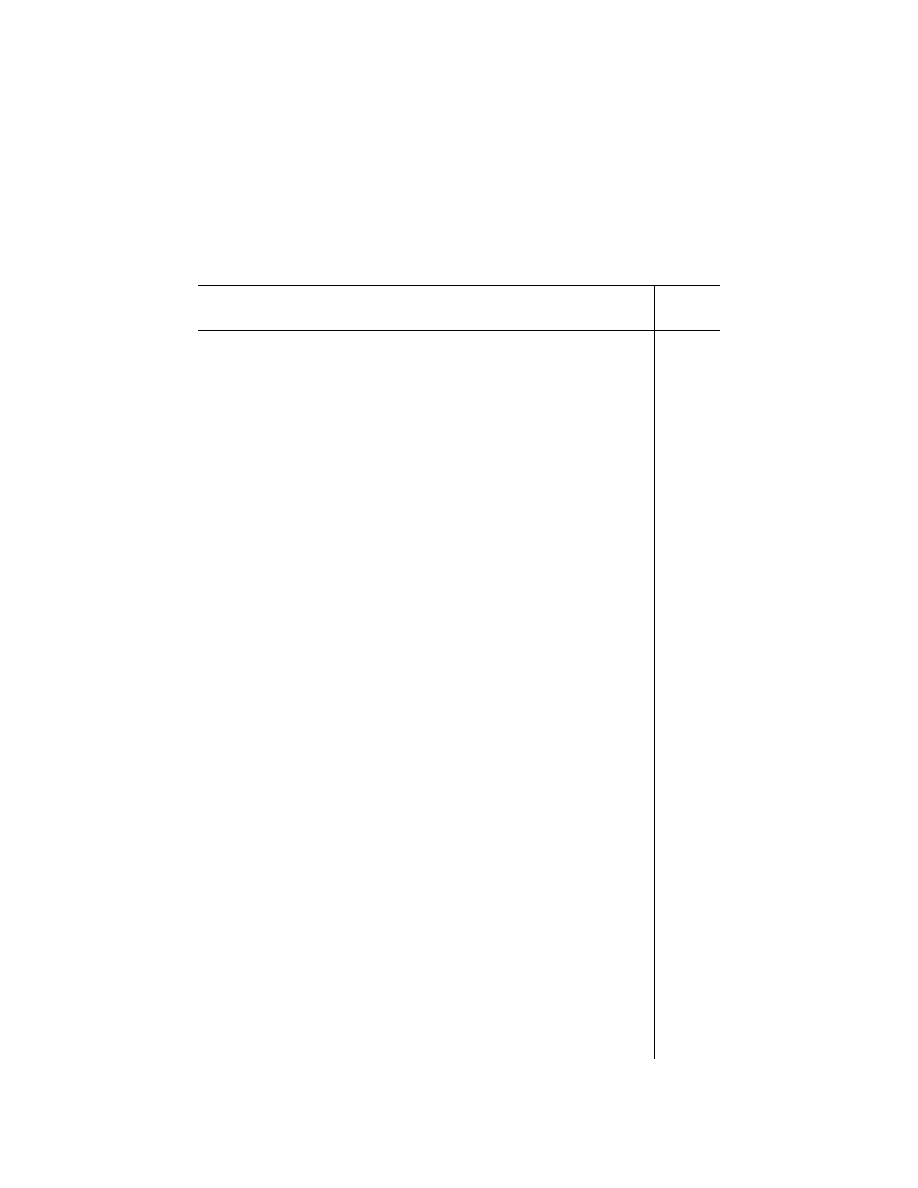
323
Pipeline and Haz. Matls. Safety Admin., DOT
§ 172.101
T
ABLE
1
TO
A
PPENDIX
A—H
AZARDOUS
S
UBSTANCES
O
THER
T
HAN
R
ADIONUCLIDES
—Continued
Hazardous substance
Reportable
quantity (RQ)
pounds
(kilograms)
Benzene, 1,2-dichloro- ..............................................................................................................................................
100 (45.4)
Benzene, 1,3-dichloro- ..............................................................................................................................................
100 (45.4)
Benzene, 1,4-dichloro- ..............................................................................................................................................
100 (45.4)
Benzene, 1,1
′
-(2,2-dichloroethylidene) bis[4-chloro- .................................................................................................
1 (0.454)
Benzene, (dichloromethyl)- .......................................................................................................................................
5000 (2270)
Benzene, 1,3-diisocyanatomethyl- ............................................................................................................................
100 (45.4)
Benzene, dimethyl- ....................................................................................................................................................
100 (45.4)
1,3-Benzenediol .........................................................................................................................................................
5000 (2270)
1,2-Benzenediol,4-[1-hydroxy-2-(methylamino) ethyl]- ..............................................................................................
1000 (454)
Benzeneethanamine, alpha,alpha-dimethyl- .............................................................................................................
5000 (2270)
Benzene, hexachloro- ...............................................................................................................................................
10 (4.54)
Benzene, hexahydro- ................................................................................................................................................
1000 (454)
Benzene, methyl- ......................................................................................................................................................
1000 (454)
Benzene, 1-methyl-2,4-dinitro- ..................................................................................................................................
10 (4.54)
Benzene, 2-methyl-1,3-dinitro- ..................................................................................................................................
100 (45.4)
Benzene, (1-methylethyl)- .........................................................................................................................................
5000 (2270)
Benzene, nitro- ..........................................................................................................................................................
1000 (454)
Benzene, pentachloro- ..............................................................................................................................................
10 (4.54)
Benzene, pentachloronitro- .......................................................................................................................................
100 (45.4)
Benzenesulfonic acid chloride ...................................................................................................................................
100 (45.4)
Benzenesulfonyl chloride ..........................................................................................................................................
100 (45.4)
Benzene,1,2,4,5-tetrachloro- .....................................................................................................................................
5000 (2270)
Benzenethiol ..............................................................................................................................................................
100 (45.4)
Benzene,1,1
′
-(2,2,2-trichloroethylidene) bis[4-chloro- ...............................................................................................
1 (0.454)
Benzene,1,1
′
-(2,2,2-trichloroethylidene) bis[4-methoxy- ...........................................................................................
1 (0.454)
Benzene, (trichloromethyl)- .......................................................................................................................................
10 (4.54)
Benzene, 1,3,5-trinitro- ..............................................................................................................................................
10 (4.54)
Benzidine ...................................................................................................................................................................
1 (0.454)
Benzo[a]anthracene ..................................................................................................................................................
10 (4.54)
1,3-Benzodioxole, 5-(1-propenyl)-1 ...........................................................................................................................
100 (45.4)
1,3-Benzodioxole, 5-(2-propenyl)- .............................................................................................................................
100 (45.4)
1,3-Benzodioxole, 5-propyl- ......................................................................................................................................
10 (4.54)
1,3-Benzodioxol-4-ol, 2,2-dimethyl- ...........................................................................................................................
1000 (454)
1,3-Benzodioxol-4-ol, 2,2-dimethyl-, methyl carbamate ............................................................................................
100 (45.4)
Benzo[b]fluoranthene ................................................................................................................................................
1 (0.454)
Benzo(k)fluoranthene ................................................................................................................................................
5000 (2270)
7-Benzofuranol, 2,3-dihydro-2,2-dimethyl- ................................................................................................................
10 (4.54)
7-Benzofuranol, 2,3-dihydro-2,2-dimethyl-, methylcarbamate ..................................................................................
10 (4.54)
Benzoic acid ..............................................................................................................................................................
5000 (2270)
Benzoic acid, 2-hydroxy-, compd. with (3aS-cis)-1,2,3,3a,8,8a-hexahydro-1,3a,8-trimethylpyrrolo [2,3-b]indol-5-yl
methylcarbamate ester (1:1) ..................................................................................................................................
100 (45.4)
Benzonitrile ................................................................................................................................................................
5000 (2270)
Benzo[rst]pentaphene ...............................................................................................................................................
10 (4.54)
Benzo[ghi]perylene ....................................................................................................................................................
5000 (2270)
2H-1-Benzopyran-2-one, 4-hydroxy-3-(3-oxo-1-phenylbutyl)-, & salts .....................................................................
100 (45.4)
Benzo[a]pyrene .........................................................................................................................................................
1 (0.454)
3,4-Benzopyrene .......................................................................................................................................................
1 (0.454)
p-Benzoquinone ........................................................................................................................................................
10 (4.54)
Benzotrichloride .........................................................................................................................................................
10 (4.54)
Benzoyl chloride ........................................................................................................................................................
1000 (454)
Benzyl chloride ..........................................................................................................................................................
100 (45.4)
Beryllium
¢
.................................................................................................................................................................
10 (4.54)
Beryllium chloride ......................................................................................................................................................
1 (0.454)
Beryllium fluoride .......................................................................................................................................................
1 (0.454)
Beryllium nitrate .........................................................................................................................................................
1 (0.454)
Beryllium powder
¢
....................................................................................................................................................
10 (4.54)
alpha-BHC .................................................................................................................................................................
10 (4.54)
beta-BHC ...................................................................................................................................................................
1 (0.454)
delta-BHC ..................................................................................................................................................................
1 (0.454)
gamma-BHC ..............................................................................................................................................................
1 (0.454)
2,2
′
-Bioxirane .............................................................................................................................................................
10 (4.54)
Biphenyl .....................................................................................................................................................................
100 (45.4)
[1,1
′
-Biphenyl]-4,4
′
-diamine .......................................................................................................................................
1 (0.454)
[1,1
′
-Biphenyl]-4,4
′
-diamine,3,3
′
-dichloro- .................................................................................................................
1 (0.454)
[1,1
′
-Biphenyl]-4,4
′
-diamine,3,3
′
-dimethoxy- .............................................................................................................
100 (45.4)
[1,1
′
-Biphenyl]-4,4
′
-diamine,3,3
′
-dimethyl- ................................................................................................................
10 (4.54)
Bis(2-chloroethoxy) methane ....................................................................................................................................
1000 (454)
Bis(2-chloroethyl) ether .............................................................................................................................................
10 (4.54)
Bis(chloromethyl) ether .............................................................................................................................................
10 (4.54)
Bis(2-ethylhexyl) phthalate ........................................................................................................................................
100 (45.4)
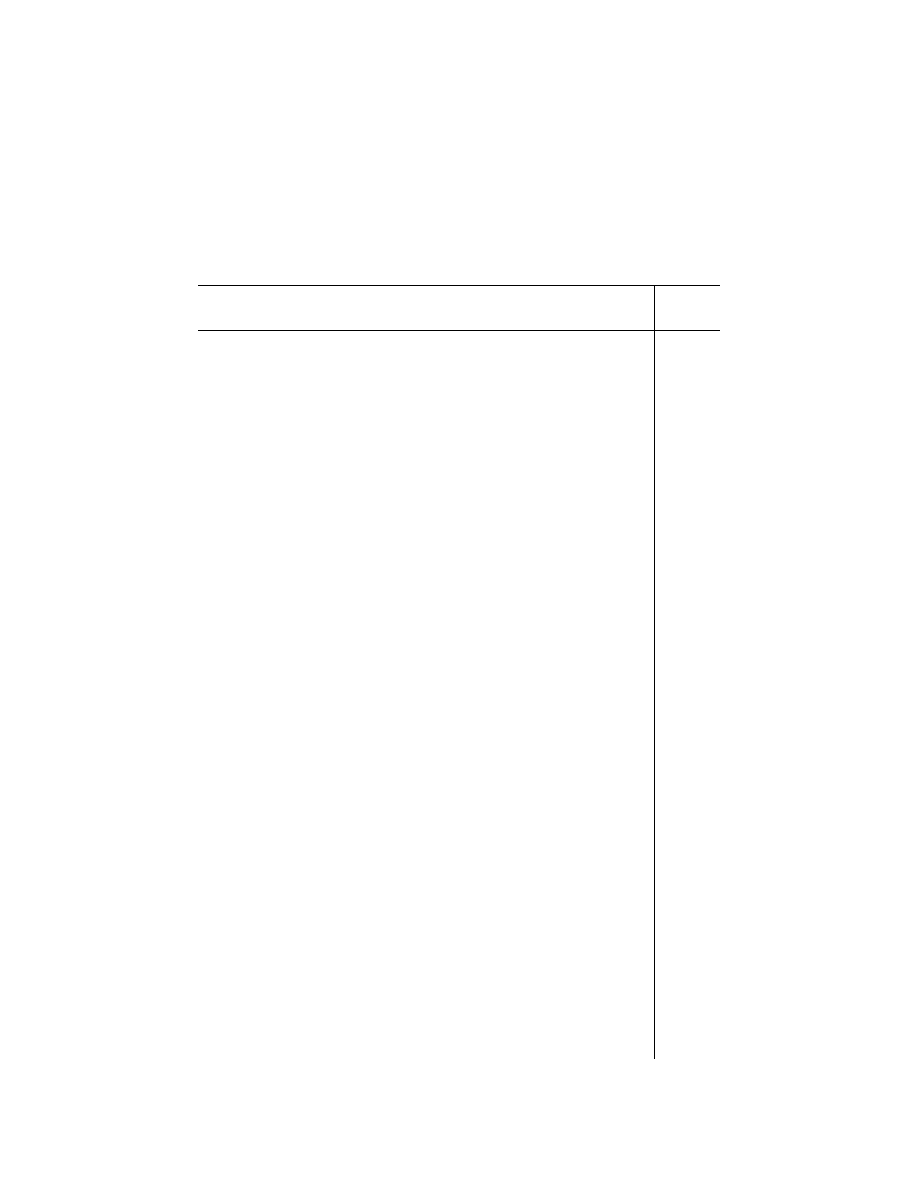
324
49 CFR Ch. I (10–1–23 Edition)
§ 172.101
T
ABLE
1
TO
A
PPENDIX
A—H
AZARDOUS
S
UBSTANCES
O
THER
T
HAN
R
ADIONUCLIDES
—Continued
Hazardous substance
Reportable
quantity (RQ)
pounds
(kilograms)
Bromoacetone ...........................................................................................................................................................
1000 (454)
Bromoform .................................................................................................................................................................
100 (45.4)
Bromomethane ..........................................................................................................................................................
1000 (454)
4-Bromophenyl phenyl ether .....................................................................................................................................
100 (45.4)
Brucine ......................................................................................................................................................................
100 (45.4)
1,3-Butadiene ............................................................................................................................................................
10 (4.54)
1,3-Butadiene, 1,1,2,3,4,4-hexachloro- .....................................................................................................................
1 (0.454)
1-Butanamine, N-butyl-N-nitroso- ..............................................................................................................................
10 (4.54)
1-Butanol ...................................................................................................................................................................
5000 (2270)
2-Butanone ................................................................................................................................................................
5000 (2270)
2-Butanone, 3,3-dimethyl-1(methylthio)-, O [(methylamino) carbonyl] oxime ...........................................................
100 (45.4)
2-Butanone peroxide .................................................................................................................................................
10 (4.54)
2-Butenal ...................................................................................................................................................................
100 (45.4)
2-Butene, 1,4-dichloro- ..............................................................................................................................................
1 (0.454)
2-Butenoic acid, 2-methyl-, 7-[[2,3-dihydroxy-2-(1-methoxyethyl)-3-methyl-1-oxobutoxy] methyl]-2,3,5,7a-
tetrahydro-1H-pyrrolizin-1-yl ester, [1S-[1alpha(Z), 7(2S*,3R*),7aalpha]]- ............................................................
10 (4.54)
Butyl acetate ..............................................................................................................................................................
5000 (2270)
iso-Butyl acetate.
sec-Butyl acetate.
tert-Butyl acetate.
n-Butyl alcohol ...........................................................................................................................................................
5000 (2270)
Butylamine .................................................................................................................................................................
1000 (454)
iso-Butylamine.
sec-Butylamine.
tert-Butylamine.
Butyl benzyl phthalate ...............................................................................................................................................
100 (45.4)
n-Butyl phthalate .......................................................................................................................................................
10 (4.54)
Butyric acid ................................................................................................................................................................
5000 (2270)
iso-Butyric acid.
Cacodylic acid ...........................................................................................................................................................
1 (0.454)
Cadmium
¢
.................................................................................................................................................................
10 (4.54)
Cadmium acetate ......................................................................................................................................................
10 (4.54)
Cadmium bromide .....................................................................................................................................................
10 (4.54)
Cadmium chloride .....................................................................................................................................................
10 (4.54)
Calcium arsenate ......................................................................................................................................................
1 (0.454)
Calcium arsenite ........................................................................................................................................................
1 (0.454)
Calcium carbide .........................................................................................................................................................
10 (4.54)
Calcium chromate .....................................................................................................................................................
10 (4.54)
Calcium cyanamide ...................................................................................................................................................
1000 (454)
Calcium cyanide Ca(CN)
2
.........................................................................................................................................
10 (4.54)
Calcium dodecylbenzenesulfonate ............................................................................................................................
1000 (454)
Calcium hypochlorite .................................................................................................................................................
10 (4.54)
Captan .......................................................................................................................................................................
10 (4.54)
Carbamic acid, 1H-benzimidazol-2-yl, methyl ester ..................................................................................................
10 (4.54)
Carbamic acid, [1-[(butylamino)carbonyl]-1H-benzimidazol-2-yl]-, methyl ester .......................................................
10 (4.54)
Carbamic acid, (3-chlorophenyl)-, 4-chloro-2-butynyl ester ......................................................................................
10 (4.54)
Carbamic acid, [(dibutylamino)-thio]methyl-, 2,3-dihydro-2,2-dimethyl-7-benzofuranyl ester ...................................
1000 (454)
Carbamic acid, dimethyl-,1-[(dimethyl-amino)carbonyl]-5-methyl-1H-pyrazol-3-yl ester ..........................................
1 (0.454)
Carbamic acid, dimethyl-, 3-methyl-1-(1-methylethyl)-1H-pyrazol-5-yl ester ............................................................
100 (45.4)
Carbamic acid, ethyl ester ........................................................................................................................................
100 (45.4)
Carbamic acid, methyl-, 3-methylphenyl ester ..........................................................................................................
1000 (454)
Carbamic acid, methylnitroso-, ethyl ester ................................................................................................................
1 (0.454)
Carbamic acid, [1,2-phenylenebis(iminocarbonothioyl)] bis-, dimethyl ester ............................................................
10 (4.54)
Carbamic acid, phenyl-, 1-methylethyl ester .............................................................................................................
1000 (454)
Carbamic chloride, dimethyl- .....................................................................................................................................
1 (0.454)
Carbamodithioic acid, 1,2-ethanediylbis-, salts & esters ..........................................................................................
5000 (2270)
Carbamothioic acid, bis(1-methylethyl)-, S-(2,3-dichloro-2-propenyl) ester ..............................................................
100 (45.4)
Carbamothioic acid, bis(1-methylethyl)-, S-(2,3,3-trichloro-2-propenyl) ester ..........................................................
100 (45.4)
Carbamothioic acid, dipropyl-, S-(phenylmethyl) ester .............................................................................................
5000 (2270)
Carbaryl .....................................................................................................................................................................
100 (45.4)
Carbendazim .............................................................................................................................................................
10 (4.54)
Carbofuran .................................................................................................................................................................
10 (4.54)
Carbofuran phenol .....................................................................................................................................................
10 (4.54)
Carbon disulfide ........................................................................................................................................................
100 (45.4)
Carbonic acid, dithallium(1 + ) salt ...........................................................................................................................
100 (45.4)
Carbonic dichloride ....................................................................................................................................................
10 (4.54)
Carbonic difluoride ....................................................................................................................................................
1000 (454)
Carbonochloridic acid, methyl ester ..........................................................................................................................
1000 (454)
Carbon oxyfluoride ....................................................................................................................................................
1000 (454)
Carbon tetrachloride ..................................................................................................................................................
10 (4.54)
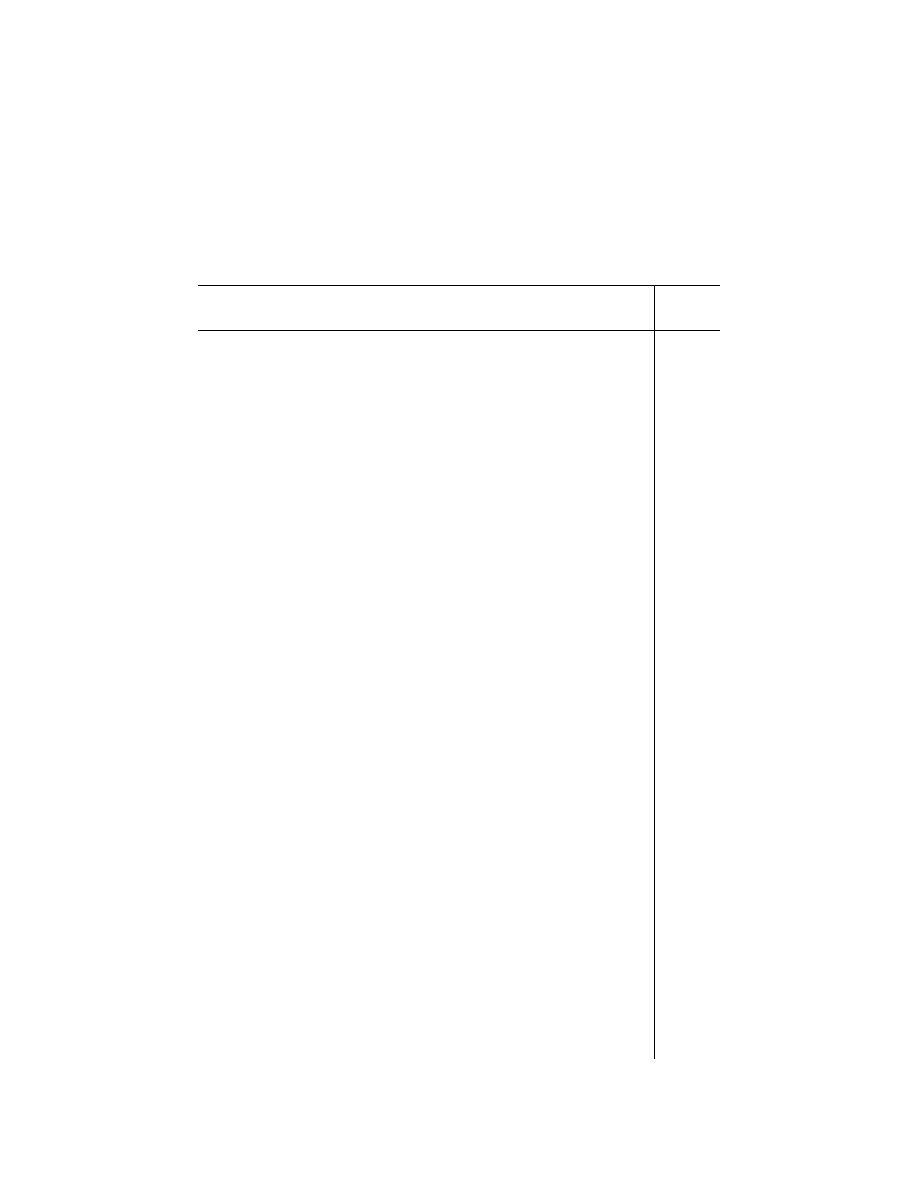
325
Pipeline and Haz. Matls. Safety Admin., DOT
§ 172.101
T
ABLE
1
TO
A
PPENDIX
A—H
AZARDOUS
S
UBSTANCES
O
THER
T
HAN
R
ADIONUCLIDES
—Continued
Hazardous substance
Reportable
quantity (RQ)
pounds
(kilograms)
Carbonyl sulfide .........................................................................................................................................................
100 (45.4)
Carbosulfan ...............................................................................................................................................................
1000 (454)
Catechol ....................................................................................................................................................................
100 (45.4)
Chloral .......................................................................................................................................................................
5000 (2270)
Chloramben ...............................................................................................................................................................
100 (45.4)
Chlorambucil ..............................................................................................................................................................
10 (4.54)
Chlordane ..................................................................................................................................................................
1 (0.454)
Chlordane, alpha & gamma isomers ........................................................................................................................
1 (0.454)
CHLORDANE (TECHNICAL MIXTURE AND METABOLITES) ................................................................................
1 (0.454)
Chlorinated camphene ..............................................................................................................................................
1 (0.454)
Chlorine .....................................................................................................................................................................
10 (4.54)
Chlornaphazine .........................................................................................................................................................
100 (45.4)
Chloroacetaldehyde ...................................................................................................................................................
1000 (454)
Chloroacetic acid .......................................................................................................................................................
100 (45.4)
2-Chloroacetophenone ..............................................................................................................................................
100 (45.4)
p-Chloroaniline ..........................................................................................................................................................
1000 (454)
Chlorobenzene ..........................................................................................................................................................
100 (45.4)
Chlorobenzilate ..........................................................................................................................................................
10 (4.54)
p-Chloro-m-cresol ......................................................................................................................................................
5000 (2270)
Chlorodibromomethane .............................................................................................................................................
100 (45.4)
1-Chloro-2,3-epoxypropane .......................................................................................................................................
100 (45.4)
Chloroethane .............................................................................................................................................................
100 (45.4)
2-Chloroethyl vinyl ether ...........................................................................................................................................
1000 (454)
Chloroform .................................................................................................................................................................
10 (4.54)
Chloromethane ..........................................................................................................................................................
100 (45.4)
Chloromethyl methyl ether ........................................................................................................................................
10 (4.54)
beta-Chloronaphthalene ............................................................................................................................................
5000 (2270)
2-Chloronaphthalene .................................................................................................................................................
5000 (2270)
2-Chlorophenol ..........................................................................................................................................................
100 (45.4)
o-Chlorophenol ..........................................................................................................................................................
100 (45.4)
4-Chlorophenyl phenyl ether .....................................................................................................................................
5000 (2270)
1-(o-Chlorophenyl)thiourea ........................................................................................................................................
100 (45.4)
Chloroprene ...............................................................................................................................................................
100 (45.4)
3-Chloropropionitrile ..................................................................................................................................................
1000 (454)
Chlorosulfonic acid ....................................................................................................................................................
1000 (454)
4-Chloro-o-toluidine, hydrochloride ...........................................................................................................................
100 (45.4)
Chlorpyrifos ...............................................................................................................................................................
1 (0.454)
Chromic acetate ........................................................................................................................................................
1000 (454)
Chromic acid .............................................................................................................................................................
10 (4.54)
Chromic acid H
2
CrO
4
, calcium salt ...........................................................................................................................
10 (4.54)
Chromic sulfate .........................................................................................................................................................
1000 (454)
Chromium
¢
...............................................................................................................................................................
5000 (2270)
Chromous chloride ....................................................................................................................................................
1000 (454)
Chrysene ...................................................................................................................................................................
100 (45.4)
Cobaltous bromide ....................................................................................................................................................
1000 (454)
Cobaltous formate .....................................................................................................................................................
1000 (454)
Cobaltous sulfamate ..................................................................................................................................................
1000 (454)
Coke Oven Emissions ...............................................................................................................................................
1 (0.454)
Copper
¢
....................................................................................................................................................................
5000 (2270)
Copper chloride
@
.....................................................................................................................................................
10 (4.54)
Copper cyanide Cu(CN) ............................................................................................................................................
10 (4.54)
Coumaphos ...............................................................................................................................................................
10 (4.54)
Creosote ....................................................................................................................................................................
1 (0.454)
Cresol (cresylic acid) .................................................................................................................................................
100 (45.4)
m-Cresol ....................................................................................................................................................................
100 (45.4)
o-Cresol .....................................................................................................................................................................
100 (45.4)
p-Cresol .....................................................................................................................................................................
100 (45.4)
Cresols (isomers and mixture) ..................................................................................................................................
100 (45.4)
Cresylic acid (isomers and mixture) ..........................................................................................................................
100 (45.4)
Crotonaldehyde .........................................................................................................................................................
100 (45.4)
Cumene .....................................................................................................................................................................
5000 (2270)
m-Cumenyl methylcarbamate ...................................................................................................................................
10 (4.54)
Cupric acetate ...........................................................................................................................................................
100 (45.4)
Cupric acetoarsenite .................................................................................................................................................
1 (0.454)
Cupric chloride ..........................................................................................................................................................
10 (4.54)
Cupric nitrate .............................................................................................................................................................
100 (45.4)
Cupric oxalate ...........................................................................................................................................................
100 (45.4)
Cupric sulfate ............................................................................................................................................................
10 (4.54)
Cupric sulfate, ammoniated ......................................................................................................................................
100 (45.4)
Cupric tartrate ............................................................................................................................................................
100 (45.4)
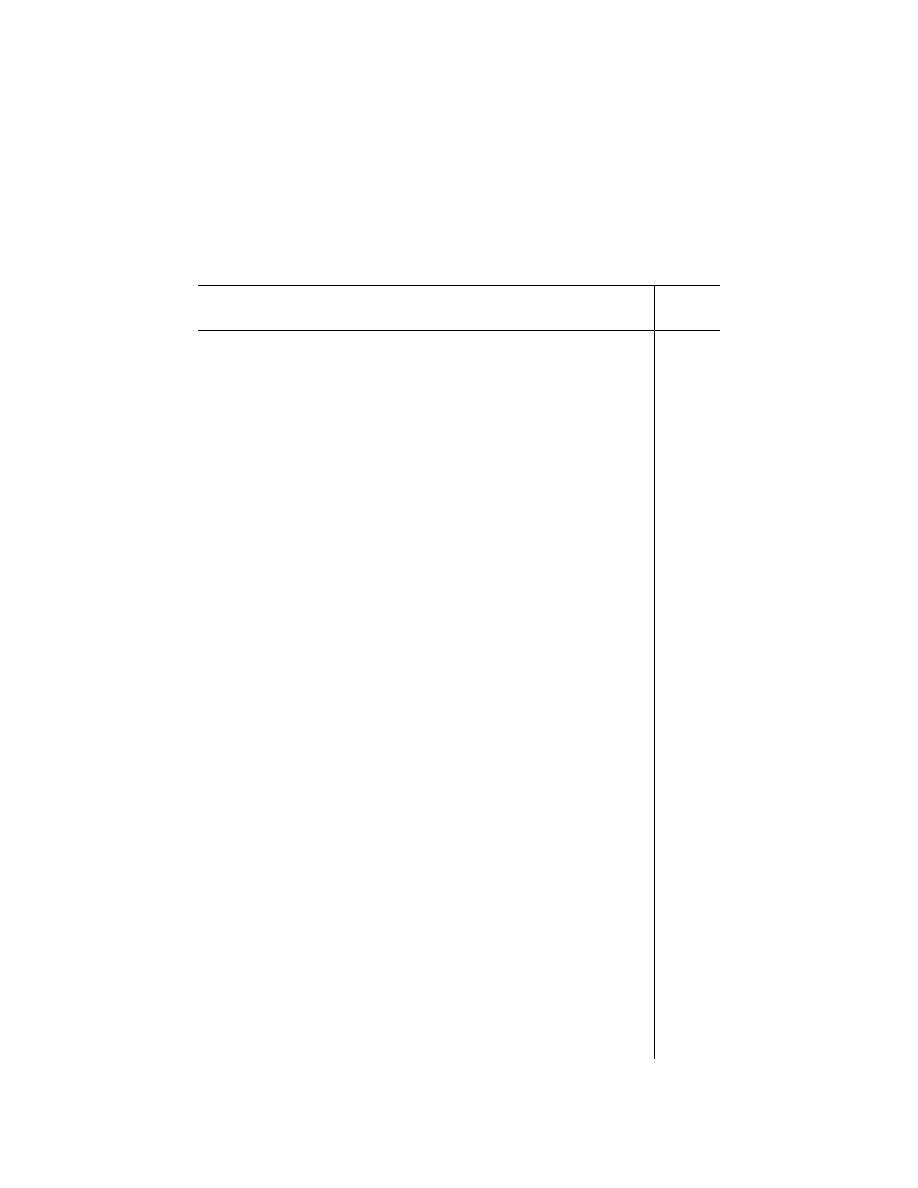
326
49 CFR Ch. I (10–1–23 Edition)
§ 172.101
T
ABLE
1
TO
A
PPENDIX
A—H
AZARDOUS
S
UBSTANCES
O
THER
T
HAN
R
ADIONUCLIDES
—Continued
Hazardous substance
Reportable
quantity (RQ)
pounds
(kilograms)
Cyanides (soluble salts and complexes) not otherwise specified ............................................................................
10 (4.54)
Cyanogen ..................................................................................................................................................................
100 (45.4)
Cyanogen bromide (CN)Br ........................................................................................................................................
1000 (454)
Cyanogen chloride (CN)Cl ........................................................................................................................................
10 (4.54)
2,5-Cyclohexadiene-1,4-dione ...................................................................................................................................
10 (4.54)
Cyclohexane ..............................................................................................................................................................
1000 (454)
Cyclohexane, 1,2,3,4,5,6-hexachloro-, (1
a
, 2
a
, 3
b
-, 4
a
, 5
a
, 6
b
) .............................................................................
1 (0.454)
Cyclohexanone ..........................................................................................................................................................
5000 (2270)
2-Cyclohexyl-4,6-dinitrophenol ..................................................................................................................................
100 (45.4)
1,3-Cyclopentadiene, 1,2,3,4,5,5-hexachloro- ..........................................................................................................
10 (4.54)
Cyclophosphamide ....................................................................................................................................................
10 (4.54)
2,4-D Acid ..................................................................................................................................................................
100 (45.4)
2,4-D Ester ................................................................................................................................................................
100 (45.4)
2,4-D, salts and esters ..............................................................................................................................................
100 (45.4)
Daunomycin ...............................................................................................................................................................
10 (4.54)
DDD ...........................................................................................................................................................................
1 (0.454)
4,4
′
-DDD ....................................................................................................................................................................
1 (0.454)
DDE (72-55-9)
#
.........................................................................................................................................................
1 (0.454)
DDE (3547-04-4)
#
.....................................................................................................................................................
5000 (2270)
4,4
′
-DDE ....................................................................................................................................................................
1 (0.454)
DDT ...........................................................................................................................................................................
1 (0.454)
4,4
′
-DDT ....................................................................................................................................................................
1 (0.454)
DEHP .........................................................................................................................................................................
100 (45.4)
Diallate .......................................................................................................................................................................
100 (45.4)
Diazinon .....................................................................................................................................................................
1 (0.454)
Diazomethane ...........................................................................................................................................................
100 (45.4)
Dibenz[a,h]anthracene ..............................................................................................................................................
1 (0.454)
1,2:5,6-Dibenzanthracene .........................................................................................................................................
1 (0.454)
Dibenzo[a,h]anthracene ............................................................................................................................................
1 (0.454)
Dibenzofuran .............................................................................................................................................................
100 (45.4)
Dibenzo[a,i]pyrene .....................................................................................................................................................
10 (4.54)
1,2-Dibromo-3-chloropropane ...................................................................................................................................
1 (0.454)
Dibromoethane ..........................................................................................................................................................
1 (0.454)
Dibutyl phthalate ........................................................................................................................................................
10 (4.54)
Di-n-butyl phthalate ...................................................................................................................................................
10 (4.54)
Dicamba ....................................................................................................................................................................
1000 (454)
Dichlobenil .................................................................................................................................................................
100 (45.4)
Dichlone .....................................................................................................................................................................
1 (0.454)
Dichlorobenzene ........................................................................................................................................................
100 (45.4)
1,2-Dichlorobenzene .................................................................................................................................................
100 (45.4)
1,3-Dichlorobenzene .................................................................................................................................................
100 (45.4)
1,4-Dichlorobenzene .................................................................................................................................................
100 (45.4)
m-Dichlorobenzene ...................................................................................................................................................
100 (45.4)
o-Dichlorobenzene ....................................................................................................................................................
100 (45.4)
p-Dichlorobenzene ....................................................................................................................................................
100 (45.4)
3,3
′
-Dichlorobenzidine ...............................................................................................................................................
1 (0.454)
Dichlorobromomethane .............................................................................................................................................
5000 (2270)
1,4-Dichloro-2-butene ................................................................................................................................................
1 (0.454)
Dichlorodifluoromethane ............................................................................................................................................
5000 (2270)
1,1-Dichloroethane ....................................................................................................................................................
1000 (454)
1,2-Dichloroethane ....................................................................................................................................................
100 (45.4)
1,1-Dichloroethylene ..................................................................................................................................................
100 (45.4)
1,2-Dichloroethylene ..................................................................................................................................................
1000 (454)
Dichloroethyl ether ....................................................................................................................................................
10 (4.54)
Dichloroisopropyl ether ..............................................................................................................................................
1000 (454)
Dichloromethane .......................................................................................................................................................
1000 (454)
Dichloromethoxyethane .............................................................................................................................................
1000 (454)
Dichloromethyl ether .................................................................................................................................................
10 (4.54)
2,4-Dichlorophenol ....................................................................................................................................................
100 (45.4)
2,6-Dichlorophenol ....................................................................................................................................................
100 (45.4)
Dichlorophenylarsine .................................................................................................................................................
1 (0.454)
Dichloropropane ........................................................................................................................................................
1000 (454)
1,1-Dichloropropane.
1,3-Dichloropropane.
1,2-Dichloropropane ..................................................................................................................................................
1000 (454)
Dichloropropane-Dichloropropene (mixture) .............................................................................................................
100 (45.4)
Dichloropropene ........................................................................................................................................................
100 (45.4)
2,3-Dichloropropene.
1,3-Dichloropropene ..................................................................................................................................................
100 (45.4)
2,2-Dichloropropionic acid .........................................................................................................................................
5000 (2270)
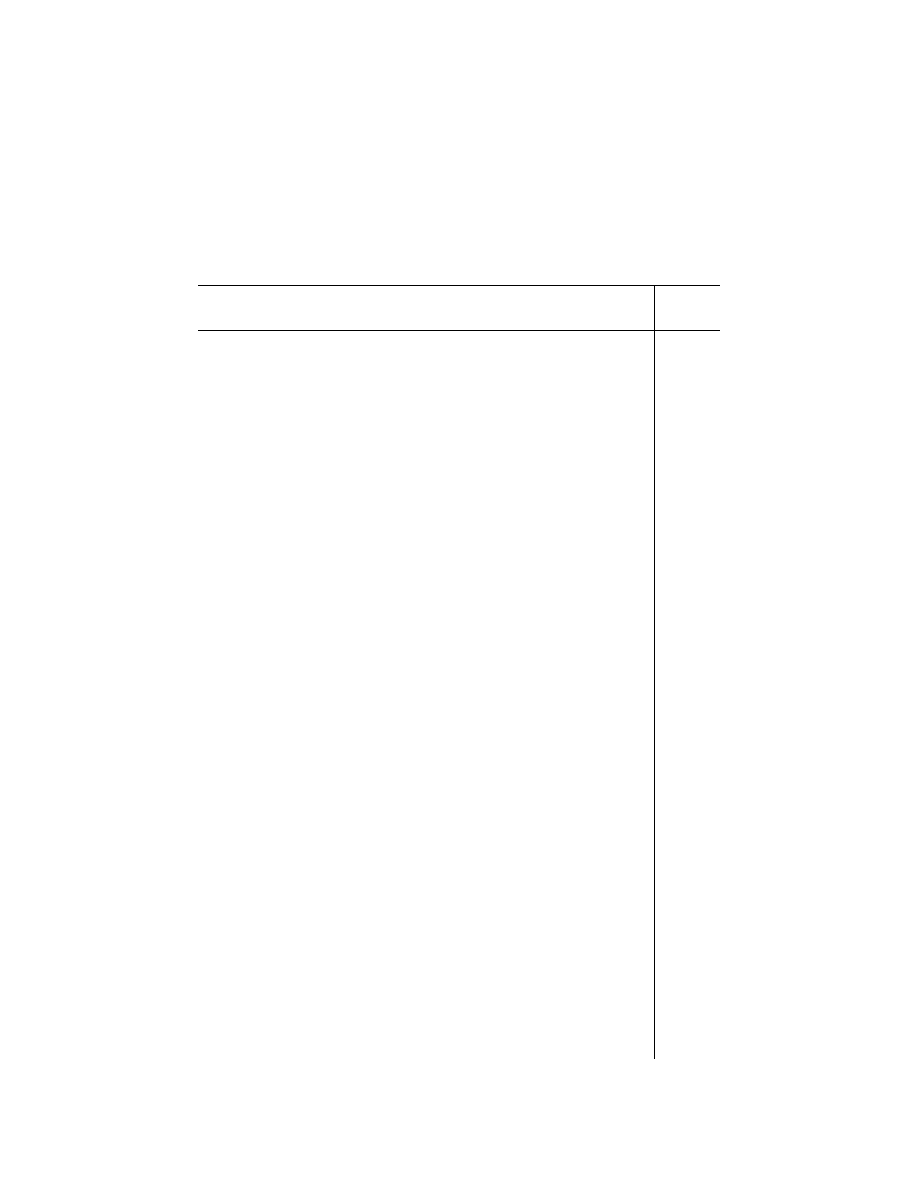
327
Pipeline and Haz. Matls. Safety Admin., DOT
§ 172.101
T
ABLE
1
TO
A
PPENDIX
A—H
AZARDOUS
S
UBSTANCES
O
THER
T
HAN
R
ADIONUCLIDES
—Continued
Hazardous substance
Reportable
quantity (RQ)
pounds
(kilograms)
Dichlorvos ..................................................................................................................................................................
10 (4.54)
Dicofol ........................................................................................................................................................................
10 (4.54)
Dieldrin ......................................................................................................................................................................
1 (0.454)
1,2:3,4-Diepoxybutane ..............................................................................................................................................
10 (4.54)
Diethanolamine ..........................................................................................................................................................
100 (45.4)
Diethylamine ..............................................................................................................................................................
100 (45.4)
N,N-Diethylaniline ......................................................................................................................................................
1000 (454)
Diethylarsine ..............................................................................................................................................................
1 (0.454)
Diethylene glycol, dicarbamate .................................................................................................................................
5000 (2270)
1,4-Diethyleneoxide ...................................................................................................................................................
100 (45.4)
Diethylhexyl phthalate ...............................................................................................................................................
100 (45.4)
N,N
′
-Diethylhydrazine ................................................................................................................................................
10 (4.54)
O,O-Diethyl S-methyl dithiophosphate ......................................................................................................................
5000 (2270)
Diethyl-p-nitrophenyl phosphate ................................................................................................................................
100 (45.4)
Diethyl phthalate ........................................................................................................................................................
1000 (454)
O,O-Diethyl O-pyrazinyl phosphorothioate ...............................................................................................................
100 (45.4)
Diethylstilbestrol ........................................................................................................................................................
1 (0.454)
Diethyl sulfate ............................................................................................................................................................
10 (4.54)
Dihydrosafrole ...........................................................................................................................................................
10 (4.54)
Diisopropylfluorophosphate (DFP) ............................................................................................................................
100 (45.4)
1,4:5,8-Dimethanonaphthalene, 1,2,3,4,10,10-hexachloro-1,4,4a,5,8,8a-hexahydro-, (1alpha, 4alpha, 4abeta,
5alpha, 8alpha, 8abeta)- ........................................................................................................................................
1 (0.454)
1,4:5,8-Dimethanonaphthalene, 1,2,3,4,10,10-hexachloro-1,4,4a,5,8,8a-hexahydro-, (1alpha, 4alpha, 4abeta,
5beta, 8beta, 8abeta)-1 (0.454).
2,7:3,6-Dimethanonaphth[2,3-b]oxirene,3,4,5,6,9,9-hexachloro-1a,2,2a,3,6,6a,7,7a-octahydro-, (1aalpha, 2beta,
2aalpha, 3beta, 6beta, 6aalpha, 7beta, 7aalpha)- ................................................................................................
1 (0.454)
2,7:3,6-Dimethanonaphth[2, 3-b]oxirene,3,4,5,6,9,9-hexachloro-1a,2,2a,3,6,6a,7,7a-octahydro-, (1aalpha, 2beta,
2abeta, 3alpha, 6alpha, 6abeta, 7beta, 7aalpha)-, & metabolites ........................................................................
1 (0.454)
Dimethoate ................................................................................................................................................................
10 (4.54)
3,3
′
-Dimethoxybenzidine ...........................................................................................................................................
100 (45.4)
Dimethylamine ...........................................................................................................................................................
1000 (454)
Dimethyl aminoazobenzene ......................................................................................................................................
10 (4.54)
p-Dimethylaminoazobenzene ....................................................................................................................................
10 (4.54)
N,N-Dimethylaniline ...................................................................................................................................................
100 (45.4)
7,12-Dimethylbenz[a]anthracene ...............................................................................................................................
1 (0.454)
3,3
′
-Dimethylbenzidine ..............................................................................................................................................
10 (4.54)
alpha,alpha-Dimethylbenzylhydroperoxide ................................................................................................................
10 (4.54)
Dimethylcarbamoyl chloride ......................................................................................................................................
1 (0.454)
Dimethylformamide ....................................................................................................................................................
100 (45.4)
1,1-Dimethylhydrazine ...............................................................................................................................................
10 (4.54)
1,2-Dimethylhydrazine ...............................................................................................................................................
1 (0.454)
Dimethylhydrazine, unsymmetrical
@
.........................................................................................................................
10 (4.54)
alpha,alpha-Dimethylphenethylamine .......................................................................................................................
5000 (2270)
2,4-Dimethylphenol ....................................................................................................................................................
100 (45.4)
Dimethyl phthalate .....................................................................................................................................................
5000 (2270)
Dimethyl sulfate .........................................................................................................................................................
100 (45.4)
Dimetilan ....................................................................................................................................................................
1 (0.454)
Dinitrobenzene (mixed) .............................................................................................................................................
100 (45.4)
m-Dinitrobenzene.
o-Dinitrobenzene.
p-Dinitrobenzene.
4,6-Dinitro-o-cresol, and salts ...................................................................................................................................
10 (4.54)
Dinitrogen tetroxide
@
................................................................................................................................................
10 (4.54)
Dinitrophenol .............................................................................................................................................................
10 (4.54)
2,5-Dinitrophenol.
2,6-Dinitrophenol.
2,4-Dinitrophenol .......................................................................................................................................................
10 (4.54)
Dinitrotoluene ............................................................................................................................................................
10 (4.54)
3,4-Dinitrotoluene.
2,4-Dinitrotoluene ......................................................................................................................................................
10 (4.54)
2,6-Dinitrotoluene ......................................................................................................................................................
100 (45.4)
Dinoseb .....................................................................................................................................................................
1000 (454)
Di-n-octyl phthalate ...................................................................................................................................................
5000 (2270)
1,4-Dioxane ...............................................................................................................................................................
100 (45.4)
1,2-Diphenylhydrazine ...............................................................................................................................................
10 (4.54)
Diphosphoramide, octamethyl- ..................................................................................................................................
100 (45.4)
Diphosphoric acid, tetraethyl ester ............................................................................................................................
10 (4.54)
Dipropylamine ............................................................................................................................................................
5000 (2270)
Di-n-propylnitrosamine ..............................................................................................................................................
10 (4.54)
Diquat ........................................................................................................................................................................
1000 (454)
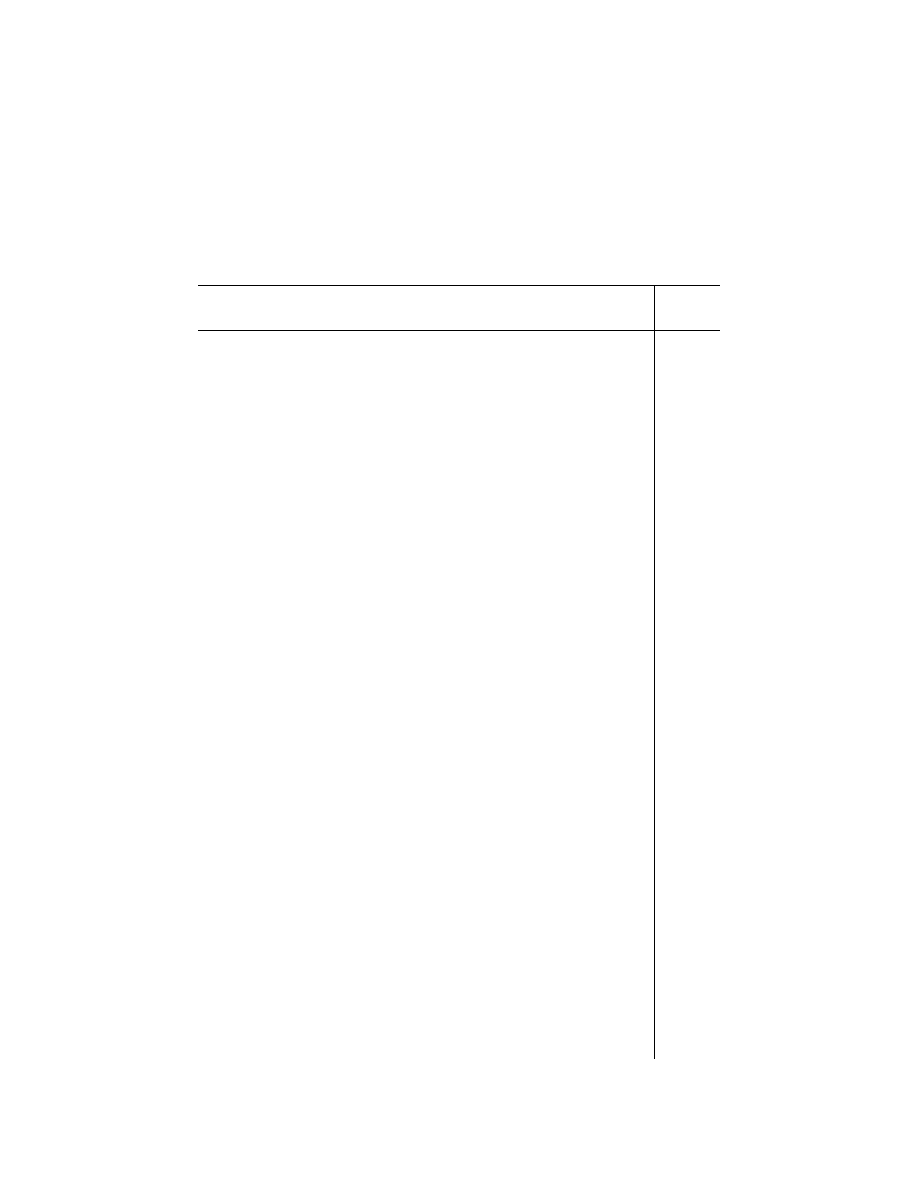
328
49 CFR Ch. I (10–1–23 Edition)
§ 172.101
T
ABLE
1
TO
A
PPENDIX
A—H
AZARDOUS
S
UBSTANCES
O
THER
T
HAN
R
ADIONUCLIDES
—Continued
Hazardous substance
Reportable
quantity (RQ)
pounds
(kilograms)
Disulfoton ...................................................................................................................................................................
1 (0.454)
Dithiobiuret ................................................................................................................................................................
100 (45.4)
1,3-Dithiolane-2-carboxaldehyde, 2,4-dimethyl-, O-[(methylamino)-carbonyl]oxime ................................................
100 (45.4)
Diuron ........................................................................................................................................................................
100 (45.4)
Dodecylbenzenesulfonic acid ....................................................................................................................................
1000 (454)
Endosulfan .................................................................................................................................................................
1 (0.454)
alpha-Endosulfan .......................................................................................................................................................
1 (0.454)
beta-Endosulfan ........................................................................................................................................................
1 (0.454)
Endosulfan sulfate .....................................................................................................................................................
1 (0.454)
Endothall ....................................................................................................................................................................
1000 (454)
Endrin ........................................................................................................................................................................
1 (0.454)
Endrin aldehyde ........................................................................................................................................................
1 (0.454)
Endrin, & metabolites ................................................................................................................................................
1 (0.454)
Epichlorohydrin ..........................................................................................................................................................
100 (45.4)
Epinephrine ...............................................................................................................................................................
1000 (454)
1,2-Epoxybutane .......................................................................................................................................................
100 (45.4)
Ethanal ......................................................................................................................................................................
1000 (454)
Ethanamine, N,N-diethyl- ..........................................................................................................................................
5000 (2270)
Ethanamine, N-ethyl-N-nitroso- .................................................................................................................................
1 (0.454)
1,2-Ethanediamine, N,N-dimethyl-N
′
-2-pyridinyl-N
′
-(2-thienylmethyl)- ......................................................................
5000 (2270)
Ethane, 1,2-dibromo- .................................................................................................................................................
1 (0.454)
Ethane, 1,1-dichloro- .................................................................................................................................................
1000 (454)
Ethane, 1,2-dichloro- .................................................................................................................................................
100 (45.4)
Ethanedinitrile ............................................................................................................................................................
100 (45.4)
Ethane, hexachloro- ..................................................................................................................................................
100 (45.4)
Ethane, 1,1
′
-[methylenebis(oxy)]bis[2-chloro- ...........................................................................................................
1000 (454)
Ethane, 1,1
′
-oxybis- ...................................................................................................................................................
100 (45.4)
Ethane, 1,1
′
-oxybis[2-chloro- .....................................................................................................................................
10 (4.54)
Ethane, pentachloro- .................................................................................................................................................
10 (4.54)
Ethane, 1,1,1,2-tetrachloro- .......................................................................................................................................
100 (45.4)
Ethane, 1,1,2,2-tetrachloro- .......................................................................................................................................
100 (45.4)
Ethanethioamide ........................................................................................................................................................
10 (4.54)
Ethane, 1,1,1-trichloro- ..............................................................................................................................................
1000 (454)
Ethane, 1,1,2-trichloro- ..............................................................................................................................................
100 (45.4)
Ethanimidothioic acid, 2-(dimethylamino)-N-hydroxy-2-oxo-, methyl ester ...............................................................
5000 (2270)
Ethanimidothioic acid, 2-(dimethylamino)-N-[[(methylamino) carbonyl]oxy]-2-oxo-, methyl ester ............................
100 (45.4)
Ethanimidothioic acid, N-[[(methylamino) carbonyl]oxy]-, methyl ester ....................................................................
100 (45.4)
Ethanimidothioic acid, N,N
′
[thiobis[(methylimino)carbonyloxy]] bis-, dimethyl ester ................................................
100 (45.4)
Ethanol, 2-ethoxy- .....................................................................................................................................................
1000 (454)
Ethanol, 2,2
′
-(nitrosoimino)bis- ..................................................................................................................................
1 (0.454)
Ethanol, 2,2
′
-oxybis-, dicarbamate ............................................................................................................................
5000 (2270)
Ethanone, 1-phenyl- ..................................................................................................................................................
5000 (2270)
Ethene, chloro- ..........................................................................................................................................................
1 (0.454)
Ethene, (2-chloroethoxy)- ..........................................................................................................................................
1000 (454)
Ethene, 1,1-dichloro- .................................................................................................................................................
100 (45.4)
Ethene, 1,2-dichloro-(E) ............................................................................................................................................
1000 (454)
Ethene, tetrachloro- ...................................................................................................................................................
100 (45.4)
Ethene, trichloro- .......................................................................................................................................................
100 (45.4)
Ethion ........................................................................................................................................................................
10 (4.54)
Ethyl acetate ..............................................................................................................................................................
5000 (2270)
Ethyl acrylate .............................................................................................................................................................
1000 (454)
Ethylbenzene .............................................................................................................................................................
1000 (454)
Ethyl carbamate ........................................................................................................................................................
100 (45.4)
Ethyl chloride .............................................................................................................................................................
100 (45.4)
Ethyl cyanide .............................................................................................................................................................
10 (4.54)
Ethylenebisdithiocarbamic acid, salts & esters .........................................................................................................
5000 (2270)
Ethylenediamine ........................................................................................................................................................
5000 (2270)
Ethylenediamine-tetraacetic acid (EDTA) .................................................................................................................
5000 (2270)
Ethylene dibromide ....................................................................................................................................................
1 (0.454)
Ethylene dichloride ....................................................................................................................................................
100 (45.4)
Ethylene glycol ..........................................................................................................................................................
5000 (2270)
Ethylene glycol monoethyl ether ...............................................................................................................................
1000 (454)
Ethylene oxide ...........................................................................................................................................................
10 (4.54)
Ethylenethiourea ........................................................................................................................................................
10 (4.54)
Ethylenimine ..............................................................................................................................................................
1 (0.454)
Ethyl ether .................................................................................................................................................................
100 (45.4)
Ethylidene dichloride .................................................................................................................................................
1000 (454)
Ethyl methacrylate .....................................................................................................................................................
1000 (454)
Ethyl methanesulfonate .............................................................................................................................................
1 (0.454)
Ethyl methyl ketone
@
................................................................................................................................................
5000 (2270)

329
Pipeline and Haz. Matls. Safety Admin., DOT
§ 172.101
T
ABLE
1
TO
A
PPENDIX
A—H
AZARDOUS
S
UBSTANCES
O
THER
T
HAN
R
ADIONUCLIDES
—Continued
Hazardous substance
Reportable
quantity (RQ)
pounds
(kilograms)
Famphur ....................................................................................................................................................................
1000 (454)
Ferric ammonium citrate ...........................................................................................................................................
1000 (454)
Ferric ammonium oxalate ..........................................................................................................................................
1000 (454)
Ferric chloride ............................................................................................................................................................
1000 (454)
Ferric fluoride ............................................................................................................................................................
100 (45.4)
Ferric nitrate ..............................................................................................................................................................
1000 (454)
Ferric sulfate ..............................................................................................................................................................
1000 (454)
Ferrous ammonium sulfate .......................................................................................................................................
1000 (454)
Ferrous chloride ........................................................................................................................................................
100 (45.4)
Ferrous sulfate ..........................................................................................................................................................
1000 (454)
Fluoranthene .............................................................................................................................................................
100 (45.4)
Fluorene ....................................................................................................................................................................
5000 (2270)
Fluorine ......................................................................................................................................................................
10 (4.54)
Fluoroacetamide ........................................................................................................................................................
100 (45.4)
Fluoroacetic acid, sodium salt ...................................................................................................................................
10 (4.54)
Formaldehyde ............................................................................................................................................................
100 (45.4)
Formetanate hydrochloride .......................................................................................................................................
100 (45.4)
Formic acid ................................................................................................................................................................
5000 (2270)
Formparanate ............................................................................................................................................................
100 (45.4)
Fulminic acid, mercury(2 + )salt ................................................................................................................................
10 (4.54)
Fumaric acid ..............................................................................................................................................................
5000 (2270)
Furan .........................................................................................................................................................................
100 (45.4)
2-Furancarboxyaldehyde ...........................................................................................................................................
5000 (2270)
2,5-Furandione ..........................................................................................................................................................
5000 (2270)
Furan, tetrahydro- ......................................................................................................................................................
1000 (454)
Furfural ......................................................................................................................................................................
5000 (2270)
Furfuran .....................................................................................................................................................................
100 (45.4)
Glucopyranose, 2-deoxy-2-(3-methyl-3-nitrosoureido)-, D- .......................................................................................
1 (0.454)
D-Glucose, 2-deoxy-2-[[(methylnitrosoamino)-carbonyl]amino]- ...............................................................................
1 (0.454)
Glycidylaldehyde .......................................................................................................................................................
10 (4.54)
Guanidine, N-methyl-N
′
-nitro-N-nitroso- ....................................................................................................................
10 (4.54)
Guthion ......................................................................................................................................................................
1 (0.454)
Heptachlor .................................................................................................................................................................
1 (0.454)
Heptachlor epoxide ...................................................................................................................................................
1 (0.454)
Hexachlorobenzene ...................................................................................................................................................
10 (4.54)
Hexachlorobutadiene .................................................................................................................................................
1 (0.454)
Hexachlorocyclopentadiene ......................................................................................................................................
10 (4.54)
Hexachloroethane .....................................................................................................................................................
100 (45.4)
Hexachlorophene ......................................................................................................................................................
100 (45.4)
Hexachloropropene ...................................................................................................................................................
1000 (454)
Hexaethyl tetraphosphate .........................................................................................................................................
100 (45.4)
Hexamethylene-1,6-diisocyanate ..............................................................................................................................
100 (45.4)
Hexamethylphosphoramide .......................................................................................................................................
1 (0.454)
Hexane ......................................................................................................................................................................
5000 (2270)
Hexone ......................................................................................................................................................................
5000 (2270)
Hydrazine ..................................................................................................................................................................
1 (0.454)
Hydrazinecarbothioamide ..........................................................................................................................................
100 (45.4)
Hydrazine, 1,2-diethyl- ..............................................................................................................................................
10 (4.54)
Hydrazine, 1,1-dimethyl- ...........................................................................................................................................
10 (4.54)
Hydrazine, 1,2-dimethyl- ...........................................................................................................................................
1 (0.454)
Hydrazine, 1,2-diphenyl- ...........................................................................................................................................
10 (4.54)
Hydrazine, methyl- ....................................................................................................................................................
10 (4.54)
Hydrochloric acid .......................................................................................................................................................
5000 (2270)
Hydrocyanic acid .......................................................................................................................................................
10 (4.54)
Hydrofluoric acid ........................................................................................................................................................
100 (45.4)
Hydrogen chloride .....................................................................................................................................................
5000 (2270)
Hydrogen cyanide .....................................................................................................................................................
10 (4.54)
Hydrogen fluoride ......................................................................................................................................................
100 (45.4)
Hydrogen phosphide .................................................................................................................................................
100 (45.4)
Hydrogen sulfide H2S ...............................................................................................................................................
100 (45.4)
Hydroperoxide, 1-methyl-1-phenylethyl- ....................................................................................................................
10 (4.54)
Hydroquinone ............................................................................................................................................................
100 (45.4)
2-Imidazolidinethione .................................................................................................................................................
10 (4.54)
Indeno(1,2,3-cd)pyrene .............................................................................................................................................
100 (45.4)
Iodomethane ..............................................................................................................................................................
100 (45.4)
1,3-Isobenzofurandione .............................................................................................................................................
5000 (2270)
Isobutyl alcohol ..........................................................................................................................................................
5000 (2270)
Isodrin ........................................................................................................................................................................
1 (0.454)
Isolan .........................................................................................................................................................................
100 (45.4)
Isophorone .................................................................................................................................................................
5000 (2270)
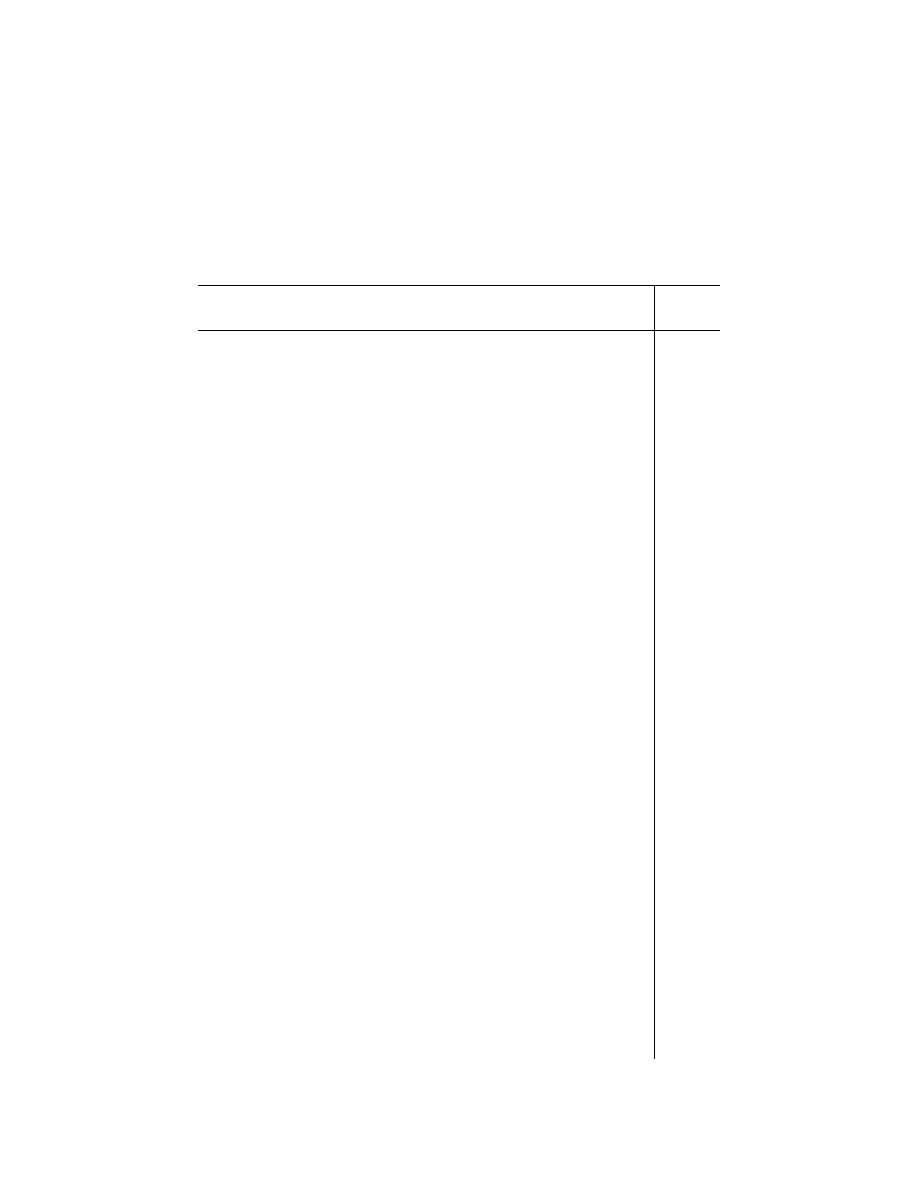
330
49 CFR Ch. I (10–1–23 Edition)
§ 172.101
T
ABLE
1
TO
A
PPENDIX
A—H
AZARDOUS
S
UBSTANCES
O
THER
T
HAN
R
ADIONUCLIDES
—Continued
Hazardous substance
Reportable
quantity (RQ)
pounds
(kilograms)
Isoprene .....................................................................................................................................................................
100 (45.4)
Isopropanolamine dodecylbenzenesulfonate ............................................................................................................
1000 (454)
3-Isopropylphenyl N-methylcarbamate ......................................................................................................................
10 (4.54)
Isosafrole ...................................................................................................................................................................
100 (45.4)
3(2H)-Isoxazolone, 5-(aminomethyl)- ........................................................................................................................
1000 (454)
Kepone ......................................................................................................................................................................
1 (0.454)
Lasiocarpine ..............................................................................................................................................................
10 (4.54)
Lead
¢
........................................................................................................................................................................
10 (4.54)
Lead acetate ..............................................................................................................................................................
10 (4.54)
Lead arsenate ...........................................................................................................................................................
1 (0.454)
Lead, bis(acetato-O)tetrahydroxytri- ..........................................................................................................................
10 (4.54)
Lead chloride .............................................................................................................................................................
10 (4.54)
Lead fluoborate .........................................................................................................................................................
10 (4.54)
Lead fluoride ..............................................................................................................................................................
10 (4.54)
Lead iodide ................................................................................................................................................................
10 (4.54)
Lead nitrate ...............................................................................................................................................................
10 (4.54)
Lead phosphate .........................................................................................................................................................
10 (4.54)
Lead stearate ............................................................................................................................................................
10 (4.54)
Lead subacetate ........................................................................................................................................................
10 (4.54)
Lead sulfate ...............................................................................................................................................................
10 (4.54)
Lead sulfide ...............................................................................................................................................................
10 (4.54)
Lead thiocyanate .......................................................................................................................................................
10 (4.54)
Lindane ......................................................................................................................................................................
1 (0.454)
Lindane (all isomers) .................................................................................................................................................
1 (0.454)
Lithium chromate .......................................................................................................................................................
10 (4.54)
Malathion ...................................................................................................................................................................
100 (45.4)
Maleic acid ................................................................................................................................................................
5000 (2270)
Maleic anhydride .......................................................................................................................................................
5000 (2270)
Maleic hydrazide .......................................................................................................................................................
5000 (2270)
Malononitrile ..............................................................................................................................................................
1000 (454)
Manganese, bis(dimethylcarbamodithioato-S,S
′
)- .....................................................................................................
10 (4.54)
Manganese dimethyldithiocarbamate ........................................................................................................................
10 (4.54)
MDI ............................................................................................................................................................................
5000 (2270)
MEK ...........................................................................................................................................................................
5000 (2270)
Melphalan ..................................................................................................................................................................
1 (0.454)
Mercaptodimethur ......................................................................................................................................................
10 (4.54)
Mercuric cyanide .......................................................................................................................................................
1 (0.454)
Mercuric nitrate ..........................................................................................................................................................
10 (4.54)
Mercuric sulfate .........................................................................................................................................................
10 (4.54)
Mercuric thiocyanate .................................................................................................................................................
10 (4.54)
Mercurous nitrate ......................................................................................................................................................
10 (4.54)
Mercury ......................................................................................................................................................................
1 (0.454)
Mercury, (acetato-O)phenyl- .....................................................................................................................................
100 (45.4)
Mercury fulminate ......................................................................................................................................................
10 (4.54)
Methacrylonitrile ........................................................................................................................................................
1000 (454)
Methanamine, N-methyl- ...........................................................................................................................................
1000 (454)
Methanamine, N-methyl-N-nitroso- ...........................................................................................................................
10 (4.54)
Methane, bromo- .......................................................................................................................................................
1000 (454)
Methane, chloro- .......................................................................................................................................................
100 (45.4)
Methane, chloromethoxy- ..........................................................................................................................................
10 (4.54)
Methane, dibromo- ....................................................................................................................................................
1000 (454)
Methane, dichloro- .....................................................................................................................................................
1000 (454)
Methane, dichlorodifluoro- .........................................................................................................................................
5000 (2270)
Methane, iodo- ..........................................................................................................................................................
100 (45.4)
Methane, isocyanato- ................................................................................................................................................
10 (4.54)
Methane, oxybis(chloro- ............................................................................................................................................
10 (4.54)
Methanesulfenyl chloride, trichloro- ..........................................................................................................................
100 (45.4)
Methanesulfonic acid, ethyl ester ..............................................................................................................................
1 (0.454)
Methane, tetrachloro- ................................................................................................................................................
10 (4.54)
Methane, tetranitro- ...................................................................................................................................................
10 (4.54)
Methanethiol ..............................................................................................................................................................
100 (45.4)
Methane, tribromo- ....................................................................................................................................................
100 (45.4)
Methane, trichloro- ....................................................................................................................................................
10 (4.54)
Methane, trichlorofluoro- ...........................................................................................................................................
5000 (2270)
Methanimidamide, N,N-dimethyl-N
′
-[3-[[(methylamino) carbonyl] oxy] .....................................................................
phenyl]-, monohydrochloride .....................................................................................................................................
100 (45.4)
Methanimidamide, N,N-dimethyl-N
′
-[2-methyl-4-[[(methylamino)carbonyl] oxy]phenyl]- ..........................................
100 (45.4)
6,9-Methano-2,4,3-benzodioxathiepin,6,7,8,9,10,10-hexachloro-1,5,5a,6,9,9a-hexahydro-, 3-oxide .......................
1 (0.454)
4,7-Methano-1H-indene, 1,4,5,6,7,8,8-heptachloro-3a,4,7,7a-tetrahydro- ................................................................
1 (0.454)
4,7-Methano-1H-indene, 1,2,4,5,6,7,8,8-octachloro-2,3,3a,4,7,7a-hexahydro- ........................................................
1 (0.454)
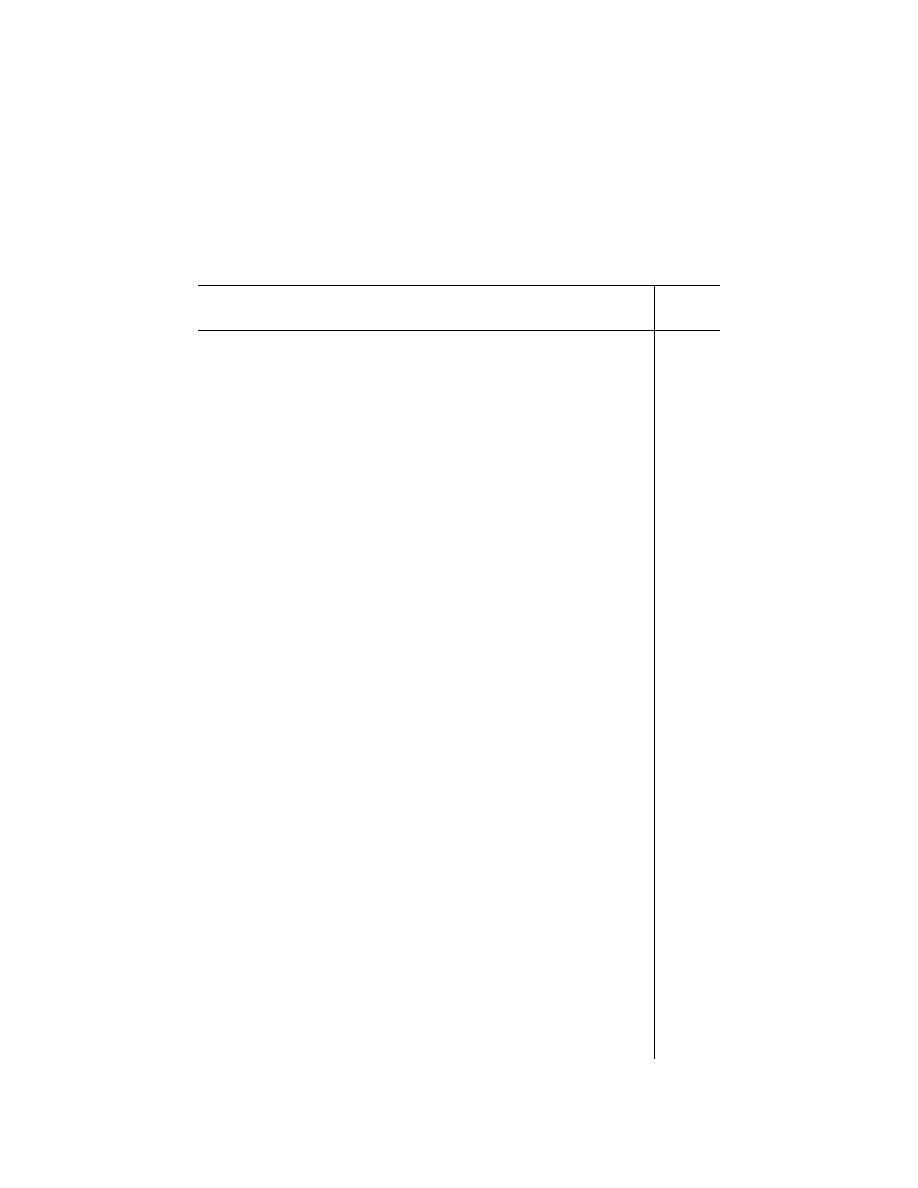
331
Pipeline and Haz. Matls. Safety Admin., DOT
§ 172.101
T
ABLE
1
TO
A
PPENDIX
A—H
AZARDOUS
S
UBSTANCES
O
THER
T
HAN
R
ADIONUCLIDES
—Continued
Hazardous substance
Reportable
quantity (RQ)
pounds
(kilograms)
Methanol ....................................................................................................................................................................
5000 (2270)
Methapyrilene ............................................................................................................................................................
5000 (2270)
1,3,4-Metheno-2H-cyclobuta[cd]pentalen-2-one, 1,1a,3,3a,4,5,5,5a,5b,6-decachlorooctahydro- ............................
1 (0.454)
Methiocarb .................................................................................................................................................................
10 (4.54)
Methomyl ...................................................................................................................................................................
100 (45.4)
Methoxychlor .............................................................................................................................................................
1 (0.454)
Methyl alcohol ...........................................................................................................................................................
5000 (2270)
Methylamine
@
..........................................................................................................................................................
100 (45.4)
2-Methyl aziridine ......................................................................................................................................................
1 (0.454)
Methyl bromide ..........................................................................................................................................................
1000 (454)
1-Methylbutadiene .....................................................................................................................................................
100 (45.4)
Methyl chloride ..........................................................................................................................................................
100 (45.4)
Methyl chlorocarbonate .............................................................................................................................................
1000 (454)
Methyl chloroform ......................................................................................................................................................
1000 (454)
Methyl chloroformate
@
.............................................................................................................................................
1000 (454)
Methyl chloromethyl ether
@
.....................................................................................................................................
10 (4.54)
3-Methylcholanthrene ................................................................................................................................................
10 (4.54)
4,4
′
-Methylenebis(2-chloroaniline) .............................................................................................................................
10 (4.54)
Methylene bromide ....................................................................................................................................................
1000 (454)
Methylene chloride ....................................................................................................................................................
1000 (454)
4,4
′
-Methylenedianiline ..............................................................................................................................................
10 (4.54)
Methylene diphenyl diisocyanate ..............................................................................................................................
5000 (2270)
Methyl ethyl ketone ...................................................................................................................................................
5000 (2270)
Methyl ethyl ketone peroxide ....................................................................................................................................
10 (4.54)
Methyl hydrazine .......................................................................................................................................................
10 (4.54)
Methyl iodide .............................................................................................................................................................
100 (45.4)
Methyl isobutyl ketone ...............................................................................................................................................
5000 (2270)
Methyl isocyanate ......................................................................................................................................................
10 (4.54)
2-Methyllactonitrile .....................................................................................................................................................
10 (4.54)
Methyl mercaptan ......................................................................................................................................................
100 (45.4)
Methyl methacrylate ..................................................................................................................................................
1000 (454)
Methyl parathion ........................................................................................................................................................
100 (45.4)
4-Methyl-2-pentanone ...............................................................................................................................................
5000 (2270)
Methyl tert-butyl ether ...............................................................................................................................................
1000 (454)
Methylthiouracil ..........................................................................................................................................................
10 (4.54)
Metolcarb ...................................................................................................................................................................
1000 (454)
Mevinphos .................................................................................................................................................................
10 (4.54)
Mexacarbate ..............................................................................................................................................................
1000 (454)
Mitomycin C ...............................................................................................................................................................
10 (4.54)
MNNG ........................................................................................................................................................................
10 (4.54)
Monoethylamine ........................................................................................................................................................
100 (45.4)
Monomethylamine .....................................................................................................................................................
100 (45.4)
Naled .........................................................................................................................................................................
10 (4.54)
5,12-Naphthacenedione, 8-acetyl-10-[(3-amino-2,3,6-trideoxy-alpha-L-lyxo-hexopyranosyl)oxy]-7,8,9,10-
tetrahydro-6,8,11-trihydroxy-1-methoxy-, (8S-cis)- ................................................................................................
10 (4.54)
1-Naphthalenamine ...................................................................................................................................................
100 (45.4)
2-Naphthalenamine ...................................................................................................................................................
10 (4.54)
Naphthalenamine, N,N
′
-bis(2-chloroethyl)- ...............................................................................................................
100 (45.4)
Naphthalene ..............................................................................................................................................................
100 (45.4)
Naphthalene, 2-chloro- ..............................................................................................................................................
5000 (2270)
1,4-Naphthalenedione ...............................................................................................................................................
5000 (2270)
2,7-Naphthalenedisulfonic acid, 3,3
′
-[(3,3
′
-dimethyl-(1,1
′
-biphenyl)-4,4
′
-diyl)-bis(azo)]bis(5-amino-4-hydroxy)-
tetrasodium salt .....................................................................................................................................................
10 (4.54)
1-Naphthalenol, methylcarbamate ............................................................................................................................
100 (45.4)
Naphthenic acid .........................................................................................................................................................
100 (45.4)
1,4-Naphthoquinone ..................................................................................................................................................
5000 (2270)
alpha-Naphthylamine .................................................................................................................................................
100 (45.4)
beta-Naphthylamine ..................................................................................................................................................
10 (4.54)
alpha-Naphthylthiourea .............................................................................................................................................
100 (45.4)
Nickel
¢
......................................................................................................................................................................
100 (45.4)
Nickel ammonium sulfate ..........................................................................................................................................
100 (45.4)
Nickel carbonyl Ni(CO)4, (T-4)- ................................................................................................................................
10 (4.54)
Nickel chloride ...........................................................................................................................................................
100 (45.4)
Nickel cyanide Ni(CN)
2
..............................................................................................................................................
10 (4.54)
Nickel hydroxide ........................................................................................................................................................
10 (4.54)
Nickel nitrate ..............................................................................................................................................................
100 (45.4)
Nickel sulfate .............................................................................................................................................................
100 (45.4)
Nicotine, & salts ........................................................................................................................................................
100 (45.4)
Nitric acid ...................................................................................................................................................................
1000 (454)
Nitric acid, thallium (1 + ) salt ...................................................................................................................................
100 (45.4)
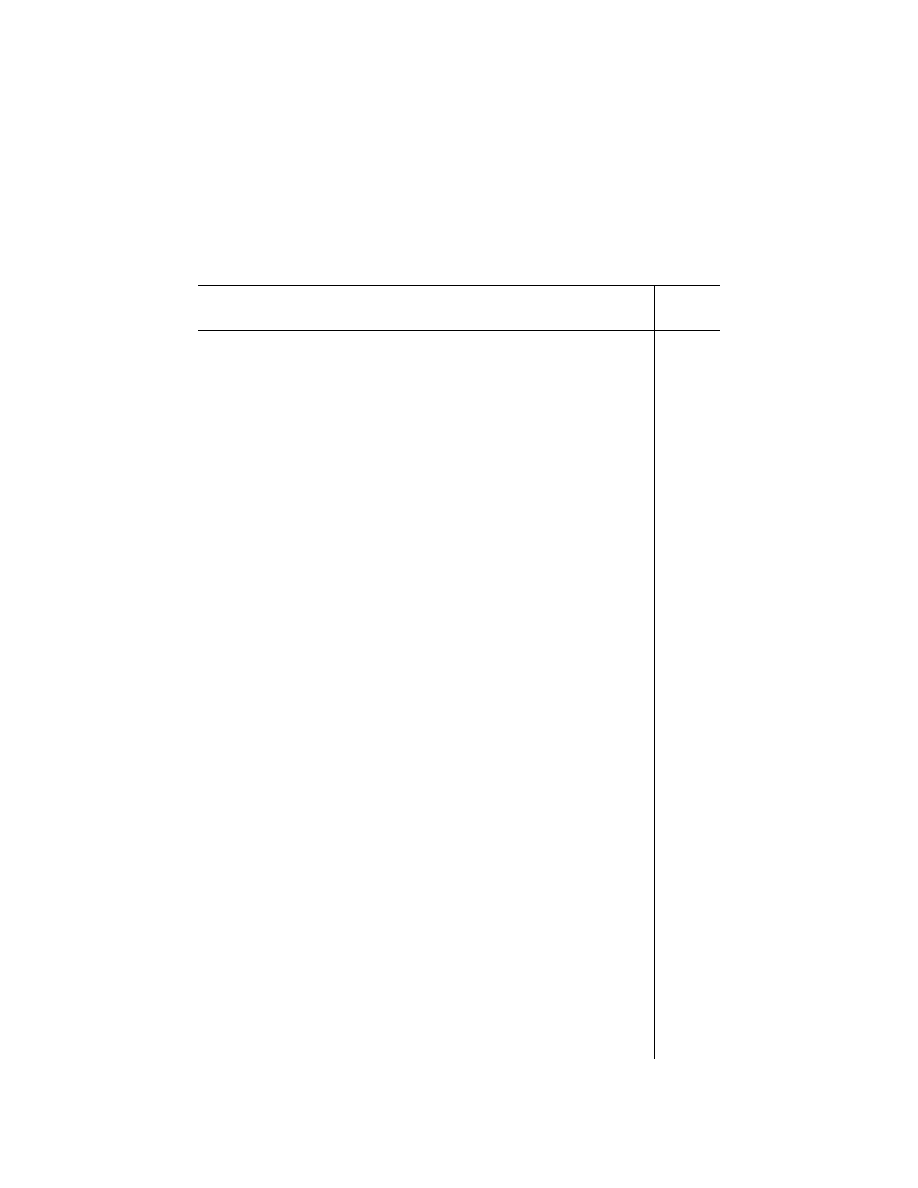
332
49 CFR Ch. I (10–1–23 Edition)
§ 172.101
T
ABLE
1
TO
A
PPENDIX
A—H
AZARDOUS
S
UBSTANCES
O
THER
T
HAN
R
ADIONUCLIDES
—Continued
Hazardous substance
Reportable
quantity (RQ)
pounds
(kilograms)
Nitric oxide .................................................................................................................................................................
10 (4.54)
p-Nitroaniline .............................................................................................................................................................
5000 (2270)
Nitrobenzene .............................................................................................................................................................
1000 (454)
4-Nitrobiphenyl ..........................................................................................................................................................
10 (4.54)
Nitrogen dioxide ........................................................................................................................................................
10 (4.54)
Nitrogen oxide NO .....................................................................................................................................................
10 (4.54)
Nitrogen oxide NO
2
...................................................................................................................................................
10 (4.54)
Nitroglycerine .............................................................................................................................................................
10 (4.54)
Nitrophenol (mixed) ...................................................................................................................................................
100 (45.4)
m-Nitrophenol.
o-Nitrophenol .............................................................................................................................................................
100 (45.4)
p-Nitrophenol .............................................................................................................................................................
100 (45.4)
2-Nitrophenol .............................................................................................................................................................
100 (45.4)
4-Nitrophenol .............................................................................................................................................................
100 (45.4)
2-Nitropropane ...........................................................................................................................................................
10 (4.54)
N-Nitrosodi-n-butylamine ...........................................................................................................................................
10 (4.54)
N-Nitrosodiethanolamine ...........................................................................................................................................
1 (0.454)
N-Nitrosodiethylamine ...............................................................................................................................................
1 (0.454)
N-Nitrosodimethylamine ............................................................................................................................................
10 (4.54)
N-Nitrosodiphenylamine ............................................................................................................................................
100 (45.4)
N-Nitroso-N-ethylurea ................................................................................................................................................
1 (0.454)
N-Nitroso-N-methylurea .............................................................................................................................................
1 (0.454)
N-Nitroso-N-methylurethane ......................................................................................................................................
1 (0.454)
N-Nitrosomethylvinylamine ........................................................................................................................................
10 (4.54)
N-Nitrosomorpholine ..................................................................................................................................................
1 (0.454)
N-Nitrosopiperidine ....................................................................................................................................................
10 (4.54)
N-Nitrosopyrrolidine ...................................................................................................................................................
1 (0.454)
Nitrotoluene ...............................................................................................................................................................
1000 (454)
m-Nitrotoluene.
o-Nitrotoluene.
p-Nitrotoluene.
5-Nitro-o-toluidine ......................................................................................................................................................
100 (45.4)
Octamethylpyrophosphoramide .................................................................................................................................
100 (45.4)
Osmium oxide OsO
4
, (T-4)- ......................................................................................................................................
1000 (454)
Osmium tetroxide ......................................................................................................................................................
1000 (454)
7-Oxabicyclo[2.2.1]heptane-2,3-dicarboxylic acid .....................................................................................................
1000 (454)
Oxamyl ......................................................................................................................................................................
100 (45.4)
1,2-Oxathiolane, 2,2-dioxide .....................................................................................................................................
10 (4.54)
2H-1,3,2-Oxazaphosphorin-2-amine, N,N-bis(2-chloroethyl) tetrahydro-, 2-oxide ....................................................
10 (4.54)
Oxirane ......................................................................................................................................................................
10 (4.54)
Oxiranecarboxyaldehyde ...........................................................................................................................................
10 (4.54)
Oxirane, (chloromethyl)- ............................................................................................................................................
100 (45.4)
Paraformaldehyde .....................................................................................................................................................
1000 (454)
Paraldehyde ..............................................................................................................................................................
1000 (454)
Parathion ...................................................................................................................................................................
10 (4.54)
PCBs .........................................................................................................................................................................
1 (0.454)
PCNB .........................................................................................................................................................................
100 (45.4)
Pentachlorobenzene ..................................................................................................................................................
10 (4.54)
Pentachloroethane ....................................................................................................................................................
10 (4.54)
Pentachloronitrobenzene ...........................................................................................................................................
100 (45.4)
Pentachlorophenol .....................................................................................................................................................
10 (4.54)
1,3-Pentadiene ..........................................................................................................................................................
100 (45.4)
Perchloroethylene ......................................................................................................................................................
100 (45.4)
Perchloromethyl mercaptan
@
...................................................................................................................................
100 (45.4)
Phenacetin .................................................................................................................................................................
100 (45.4)
Phenanthrene ............................................................................................................................................................
5000 (2270)
Phenol .......................................................................................................................................................................
1000 (454)
Phenol, 2-chloro- .......................................................................................................................................................
100 (45.4)
Phenol, 4-chloro-3-methyl- ........................................................................................................................................
5000 (2270)
Phenol, 2-cyclohexyl-4,6-dinitro- ...............................................................................................................................
100 (45.4)
Phenol, 2,4-dichloro- .................................................................................................................................................
100 (45.4)
Phenol, 2,6-dichloro- .................................................................................................................................................
100 (45.4)
Phenol, 4,4
′
-(1,2-diethyl-1,2-ethenediyl)bis-, (E) .......................................................................................................
1 (0.454)
Phenol, 2,4-dimethyl- ................................................................................................................................................
100 (45.4)
Phenol, 4-(dimethylamino)-3,5-dimethyl-, methylcarbamate (ester) .........................................................................
1000 (454)
Phenol, (3,5-dimethyl-4-(methylthio)-, methylcarbamate ..........................................................................................
10 (4.54)
Phenol, 2,4-dinitro- ....................................................................................................................................................
10 (4.54)
Phenol, methyl- .........................................................................................................................................................
100 (45.4)
Phenol, 2-methyl-4,6-dinitro-, & salts ........................................................................................................................
10 (4.54)
Phenol, 2,2
′
-methylenebis[3,4,6-trichloro- .................................................................................................................
100 (45.4)
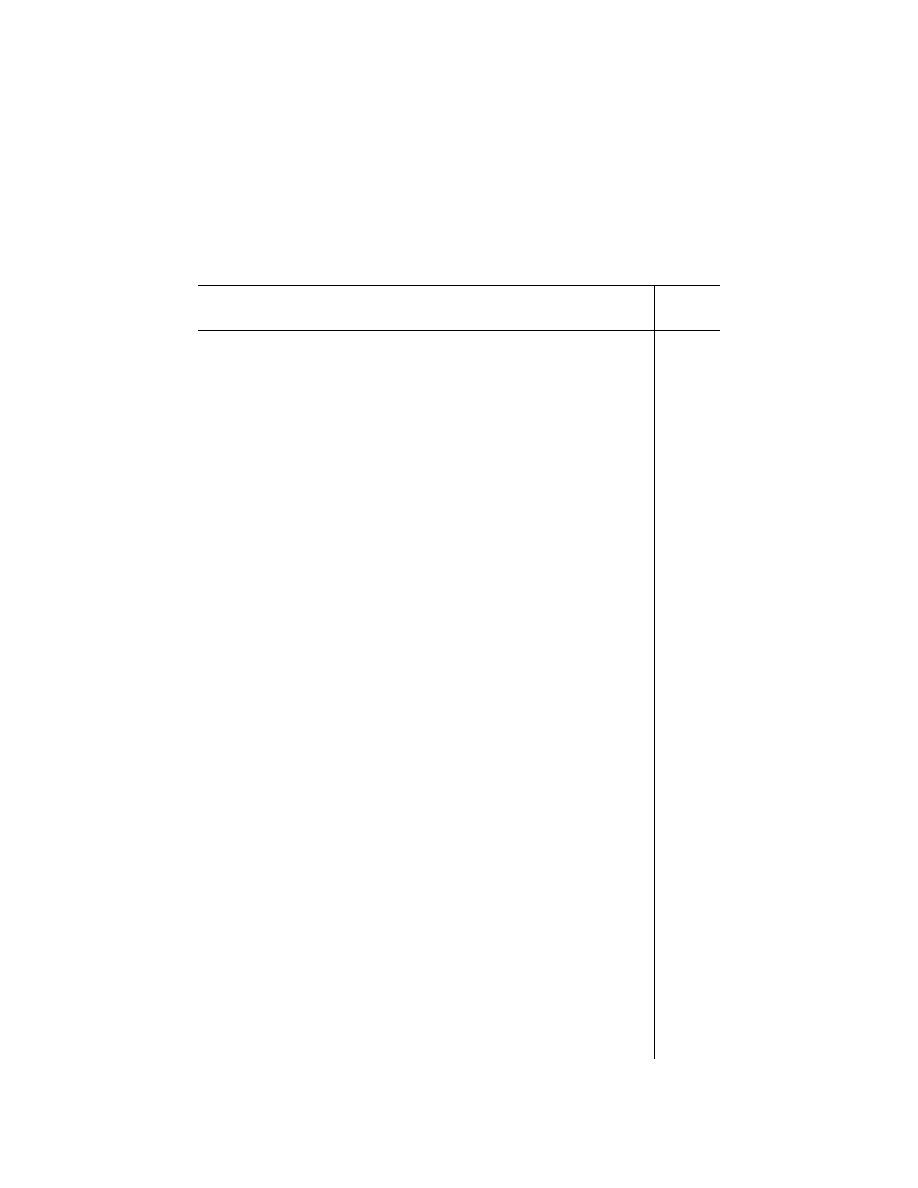
333
Pipeline and Haz. Matls. Safety Admin., DOT
§ 172.101
T
ABLE
1
TO
A
PPENDIX
A—H
AZARDOUS
S
UBSTANCES
O
THER
T
HAN
R
ADIONUCLIDES
—Continued
Hazardous substance
Reportable
quantity (RQ)
pounds
(kilograms)
Phenol, 2-(1-methylethoxy)-, methylcarbamate ........................................................................................................
100 (45.4)
Phenol, 3-(1-methylethyl)-, methyl carbamate ..........................................................................................................
10 (4.54)
Phenol, 3-methyl-5-(1-methylethyl)-, methyl carbamate ...........................................................................................
1000 (454)
Phenol, 2-(1-methylpropyl)-4,6-dinitro- ......................................................................................................................
1000 (454)
Phenol, 4-nitro- ..........................................................................................................................................................
100 (45.4)
Phenol, pentachloro- .................................................................................................................................................
10 (4.54)
Phenol, 2,3,4,6-tetrachloro- .......................................................................................................................................
10 (4.54)
Phenol, 2,4,5-trichloro- ..............................................................................................................................................
10 (4.54)
Phenol, 2,4,6-trichloro- ..............................................................................................................................................
10 (4.54)
Phenol, 2,4,6-trinitro-, ammonium salt ......................................................................................................................
10 (4.54)
L-Phenylalanine, 4-[bis(2-chloroethyl)amino]- ...........................................................................................................
1 (0.454)
p-Phenylenediamine ..................................................................................................................................................
5000 (2270)
Phenyl mercaptan
@
..................................................................................................................................................
100 (45.4)
Phenylmercury acetate ..............................................................................................................................................
100 (45.4)
Phenylthiourea ...........................................................................................................................................................
100 (45.4)
Phorate ......................................................................................................................................................................
10 (4.54)
Phosgene ..................................................................................................................................................................
10 (4.54)
Phosphine ..................................................................................................................................................................
100 (45.4)
Phosphoric acid .........................................................................................................................................................
5000 (2270)
Phosphoric acid, diethyl 4-nitrophenyl ester .............................................................................................................
100 (45.4)
Phosphoric acid, lead(2 + ) salt (2:3) ........................................................................................................................
10 (4.54)
Phosphorodithioic acid, O,O-diethyl S-[2-(ethylthio)ethyl] ester ...............................................................................
1 (0.454)
Phosphorodithioic acid, O,O-diethyl S-[(ethylthio)methyl] ester ................................................................................
10 (4.54)
Phosphorodithioic acid, O,O-diethyl S-methyl ester .................................................................................................
5000 (2270)
Phosphorodithioic acid, O,O-dimethyl S-[2-(methylamino)-2-oxoethyl] ester ...........................................................
10 (4.54)
Phosphorofluoridic acid, bis(1-methylethyl) ester .....................................................................................................
100 (45.4)
Phosphorothioic acid, O,O-diethyl O-(4-nitrophenyl) ester .......................................................................................
10 (4.54)
Phosphorothioic acid, O,O-diethyl O-pyrazinyl ester ................................................................................................
100 (45.4)
Phosphorothioic acid, O-[4-[(dimethylamino) sulfonyl]phenyl] O,O-dimethyl ester ...................................................
1000 (454)
Phosphorothioic acid, O,O-dimethyl O-(4-nitrophenyl) ester ....................................................................................
100 (45.4)
Phosphorus ...............................................................................................................................................................
1 (0.454)
Phosphorus oxychloride ............................................................................................................................................
1000 (454)
Phosphorus pentasulfide ...........................................................................................................................................
100 (45.4)
Phosphorus sulfide ....................................................................................................................................................
100 (45.4)
Phosphorus trichloride ...............................................................................................................................................
1000 (454)
Phthalic anhydride .....................................................................................................................................................
5000 (2270)
Physostigmine ...........................................................................................................................................................
100 (45.4)
Physostigmine salicylate ...........................................................................................................................................
100 (45.4)
2-Picoline ...................................................................................................................................................................
5000 (2270)
Piperidine, 1-nitroso- .................................................................................................................................................
10 (4.54)
Plumbane, tetraethyl- ................................................................................................................................................
10 (4.54)
POLYCHLORINATED BIPHENYLS ..........................................................................................................................
1 (0.454)
Potassium arsenate ...................................................................................................................................................
1 (0.454)
Potassium arsenite ....................................................................................................................................................
1 (0.454)
Potassium bichromate ...............................................................................................................................................
10 (4.54)
Potassium chromate ..................................................................................................................................................
10 (4.54)
Potassium cyanide K(CN) .........................................................................................................................................
10 (4.54)
Potassium hydroxide .................................................................................................................................................
1000 (454)
Potassium permanganate .........................................................................................................................................
100 (45.4)
Potassium silver cyanide ...........................................................................................................................................
1 (0.454)
Promecarb .................................................................................................................................................................
1000 (454)
Pronamide .................................................................................................................................................................
5000 (2270)
Propanal, 2-methyl-2-(methyl-sulfonyl)-, O-[(methylamino)carbonyl] oxime .............................................................
100 (45.4)
Propanal, 2-methyl-2-(methylthio)-, O-[(methylamino)carbonyl] oxime .....................................................................
1 (0.454)
1-Propanamine ..........................................................................................................................................................
5000 (2270)
1-Propanamine, N-propyl- .........................................................................................................................................
5000 (2270)
1-Propanamine, N-nitroso-N-propyl- .........................................................................................................................
10 (4.54)
Propane, 1,2-dibromo-3-chloro- ................................................................................................................................
1 (0.454)
Propane, 1,2-dichloro- ...............................................................................................................................................
1000 (454)
Propanedinitrile ..........................................................................................................................................................
1000 (454)
Propanenitrile ............................................................................................................................................................
10 (4.54)
Propanenitrile, 3-chloro- ............................................................................................................................................
1000 (454)
Propanenitrile, 2-hydroxy-2-methyl- ..........................................................................................................................
10 (4.54)
Propane, 2-nitro- .......................................................................................................................................................
10 (4.54)
Propane, 2,2
′
-oxybis[2-chloro- ..................................................................................................................................
1000 (454)
1,3-Propane sultone ..................................................................................................................................................
10 (4.54)
1,2,3-Propanetriol, trinitrate .......................................................................................................................................
10 (4.54)
Propanoic acid, 2-(2,4,5-trichlorophenoxy)- ..............................................................................................................
100 (45.4)
1-Propanol, 2,3-dibromo-, phosphate (3:1) ...............................................................................................................
10 (4.54)
1-Propanol, 2-methyl- ................................................................................................................................................
5000 (2270)
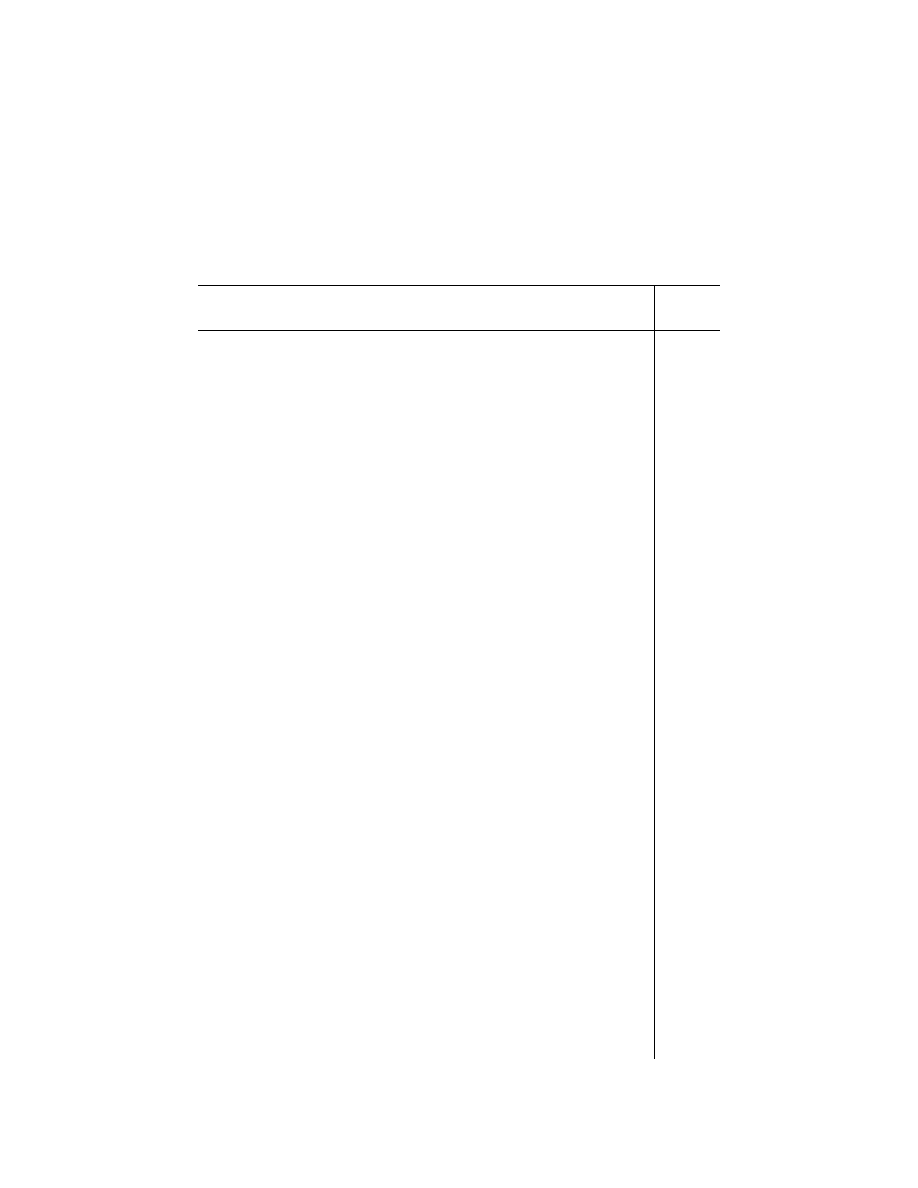
334
49 CFR Ch. I (10–1–23 Edition)
§ 172.101
T
ABLE
1
TO
A
PPENDIX
A—H
AZARDOUS
S
UBSTANCES
O
THER
T
HAN
R
ADIONUCLIDES
—Continued
Hazardous substance
Reportable
quantity (RQ)
pounds
(kilograms)
2-Propanone ..............................................................................................................................................................
5000 (2270)
2-Propanone, 1-bromo- .............................................................................................................................................
1000 (454)
Propargite ..................................................................................................................................................................
10 (4.54)
Propargyl alcohol .......................................................................................................................................................
1000 (454)
2-Propenal .................................................................................................................................................................
1 (0.454)
2-Propenamide ..........................................................................................................................................................
5000 (2270)
1-Propene, 1,3-dichloro- ............................................................................................................................................
100 (45.4)
1-Propene, 1,1,2,3,3,3-hexachloro- ...........................................................................................................................
1000 (454)
2-Propenenitrile .........................................................................................................................................................
100 (45.4)
2-Propenenitrile, 2-methyl- ........................................................................................................................................
1000 (454)
2-Propenoic acid .......................................................................................................................................................
5000 (2270)
2-Propenoic acid, ethyl ester ....................................................................................................................................
1000 (454)
2-Propenoic acid, 2-methyl-, ethyl ester ...................................................................................................................
1000 (454)
2-Propenoic acid, 2-methyl-, methyl ester ................................................................................................................
1000 (454)
2-Propen-1-ol .............................................................................................................................................................
100 (45.4)
Propham ....................................................................................................................................................................
1000 (454)
beta-Propiolactone ....................................................................................................................................................
10 (4.54)
Propionaldehyde ........................................................................................................................................................
1000 (454)
Propionic acid ............................................................................................................................................................
5000 (2270)
Propionic anhydride ...................................................................................................................................................
5000 (2270)
Propoxur (Baygon) ....................................................................................................................................................
100 (45.4)
n-Propylamine ...........................................................................................................................................................
5000 (2270)
Propylene dichloride ..................................................................................................................................................
1000 (454)
Propylene oxide .........................................................................................................................................................
100 (45.4)
1,2-Propylenimine ......................................................................................................................................................
1 (0.454)
2-Propyn-1-ol .............................................................................................................................................................
1000 (454)
Prosulfocarb ..............................................................................................................................................................
5000 (2270)
Pyrene .......................................................................................................................................................................
5000 (2270)
Pyrethrins ..................................................................................................................................................................
1 (0.454)
3,6-Pyridazinedione, 1,2-dihydro- .............................................................................................................................
5000 (2270)
4-Pyridinamine ...........................................................................................................................................................
1000 (454)
Pyridine ......................................................................................................................................................................
1000 (454)
Pyridine, 2-methyl- ....................................................................................................................................................
5000 (2270)
Pyridine, 3-(1-methyl-2-pyrrolidinyl)-, (S)-, & salts ....................................................................................................
100 (45.4)
2,4-(1H,3H)-Pyrimidinedione, 5-[bis(2-chloroethyl)amino]- .......................................................................................
10 (4.54)
4(1H)-Pyrimidinone, 2,3-dihydro-6-methyl-2-thioxo- .................................................................................................
10 (4.54)
Pyrrolidine, 1-nitroso- ................................................................................................................................................
1 (0.454)
Pyrrolo[2,3-b] indol-5-ol,1,2,3,3a,8,8a-hexahydro-1,3a,8-trimethyl-, methylcarbamate (ester), (3aS-cis)- ...............
100 (45.4)
Quinoline ...................................................................................................................................................................
5000 (2270)
Quinone .....................................................................................................................................................................
10 (4.54)
Quintobenzene ..........................................................................................................................................................
100 (45.4)
RADIONUCLIDES .....................................................................................................................................................
See Table 2
Reserpine ..................................................................................................................................................................
5000 (2270)
Resorcinol ..................................................................................................................................................................
5000 (2270)
Safrole .......................................................................................................................................................................
100 (45.4)
Selenious acid ...........................................................................................................................................................
10 (4.54)
Selenious acid, dithallium (1 + ) salt .........................................................................................................................
1000 (454)
Selenium
¢
.................................................................................................................................................................
100 (45.4)
Selenium dioxide .......................................................................................................................................................
10 (4.54)
Selenium oxide ..........................................................................................................................................................
10 (4.54)
Selenium sulfide SeS2 ..............................................................................................................................................
10 (4.54)
Selenourea ................................................................................................................................................................
1000 (454)
L-Serine, diazoacetate (ester) ...................................................................................................................................
1 (0.454)
Silver
¢
.......................................................................................................................................................................
1000 (454)
Silver cyanide Ag(CN) ...............................................................................................................................................
1 (0.454)
Silver nitrate ..............................................................................................................................................................
1 (0.454)
Silvex (2,4,5-TP) ........................................................................................................................................................
100 (45.4)
Sodium ......................................................................................................................................................................
10 (4.54)
Sodium arsenate .......................................................................................................................................................
1 (0.454)
Sodium arsenite ........................................................................................................................................................
1 (0.454)
Sodium azide .............................................................................................................................................................
1000 (454)
Sodium bichromate ...................................................................................................................................................
10 (4.54)
Sodium bifluoride .......................................................................................................................................................
100 (45.4)
Sodium bisulfite .........................................................................................................................................................
5000 (2270)
Sodium chromate ......................................................................................................................................................
10 (4.54)
Sodium cyanide Na(CN) ...........................................................................................................................................
10 (4.54)
Sodium dodecylbenzenesulfonate ............................................................................................................................
1000 (454)
Sodium fluoride .........................................................................................................................................................
1000 (454)
Sodium hydrosulfide ..................................................................................................................................................
5000 (2270)
Sodium hydroxide ......................................................................................................................................................
1000 (454)
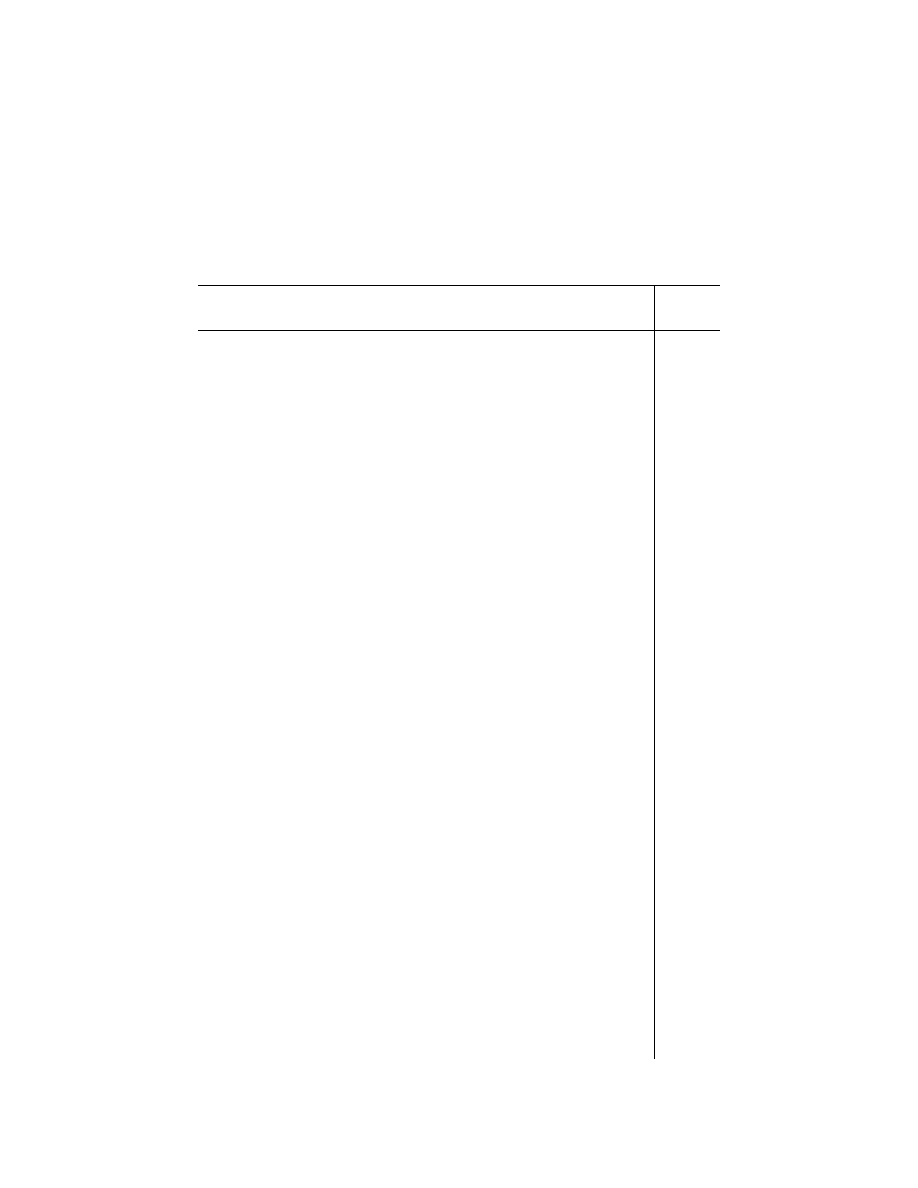
335
Pipeline and Haz. Matls. Safety Admin., DOT
§ 172.101
T
ABLE
1
TO
A
PPENDIX
A—H
AZARDOUS
S
UBSTANCES
O
THER
T
HAN
R
ADIONUCLIDES
—Continued
Hazardous substance
Reportable
quantity (RQ)
pounds
(kilograms)
Sodium hypochlorite ..................................................................................................................................................
100 (45.4)
Sodium methylate ......................................................................................................................................................
1000 (454)
Sodium nitrite ............................................................................................................................................................
100 (45.4)
Sodium phosphate, dibasic .......................................................................................................................................
5000 (2270)
Sodium phosphate, tribasic .......................................................................................................................................
5000 (2270)
Sodium selenite .........................................................................................................................................................
100 (45.4)
Streptozotocin ............................................................................................................................................................
1 (0.454)
Strontium chromate ...................................................................................................................................................
10 (4.54)
Strychnidin-10-one, & salts .......................................................................................................................................
10 (4.54)
Strychnidin-10-one, 2,3-dimethoxy- ..........................................................................................................................
100 (45.4)
Strychnine, & salts ....................................................................................................................................................
10 (4.54)
Styrene ......................................................................................................................................................................
1000 (454)
Styrene oxide ............................................................................................................................................................
100 (45.4)
Sulfur chlorides
@
......................................................................................................................................................
1000 (454)
Sulfuric acid ...............................................................................................................................................................
1000 (454)
Sulfuric acid, dimethyl ester ......................................................................................................................................
100 (45.4)
Sulfuric acid, dithallium (1 + ) salt .............................................................................................................................
100 (45.4)
Sulfur monochloride ..................................................................................................................................................
1000 (454)
Sulfur phosphide .......................................................................................................................................................
100 (45.4)
2,4,5-T .......................................................................................................................................................................
1000 (454)
2,4,5-T acid ...............................................................................................................................................................
1000 (454)
2,4,5-T amines ..........................................................................................................................................................
5000 (2270)
2,4,5-T esters ............................................................................................................................................................
1000 (454)
2,4,5-T salts ...............................................................................................................................................................
1000 (454)
TCDD .........................................................................................................................................................................
1 (0.454)
TDE ...........................................................................................................................................................................
1 (0.454)
1,2,4,5-Tetrachlorobenzene ......................................................................................................................................
5000 (2270)
2,3,7,8-Tetrachlorodibenzo-p-dioxin ..........................................................................................................................
1 (0.454)
1,1,1,2-Tetrachloroethane .........................................................................................................................................
100 (45.4)
1,1,2,2-Tetrachloroethane .........................................................................................................................................
100 (45.4)
Tetrachloroethylene ...................................................................................................................................................
100 (45.4)
2,3,4,6-Tetrachlorophenol .........................................................................................................................................
10 (4.54)
Tetraethyl pyrophosphate ..........................................................................................................................................
10 (4.54)
Tetraethyl lead ...........................................................................................................................................................
10 (4.54)
Tetraethyldithiopyrophosphate ..................................................................................................................................
100 (45.4)
Tetrahydrofuran .........................................................................................................................................................
1000 (454)
Tetranitromethane .....................................................................................................................................................
10 (4.54)
Tetraphosphoric acid, hexaethyl ester ......................................................................................................................
100 (45.4)
Thallic oxide ..............................................................................................................................................................
100 (45.4)
Thallium
¢
..................................................................................................................................................................
1000 (454)
Thallium (I) acetate ...................................................................................................................................................
100 (45.4)
Thallium (I) carbonate ...............................................................................................................................................
100 (45.4)
Thallium chloride TlCl ................................................................................................................................................
100 (45.4)
Thallium (I) nitrate .....................................................................................................................................................
100 (45.4)
Thallium oxide Tl
2
O
3
.................................................................................................................................................
100 (45.4)
Thallium (I) selenite ...................................................................................................................................................
1000 (454)
Thallium (I) sulfate .....................................................................................................................................................
100 (45.4)
Thioacetamide ...........................................................................................................................................................
10 (4.54)
Thiodicarb ..................................................................................................................................................................
100 (45.4)
Thiodiphosphoric acid, tetraethyl ester .....................................................................................................................
100 (45.4)
Thiofanox ...................................................................................................................................................................
100 (45.4)
Thioimidodicarbonic diamide [(H
2
N)C(S)]
2
NH ...........................................................................................................
100 (45.4)
Thiomethanol .............................................................................................................................................................
100 (45.4)
Thioperoxydicarbonic diamide [(H
2
N)C(S)]
2
S
2
, tetramethyl- .....................................................................................
10 (4.54)
Thiophanate-methyl ...................................................................................................................................................
10 (4.54)
Thiophenol .................................................................................................................................................................
100 (45.4)
Thiosemicarbazide ....................................................................................................................................................
100 (45.4)
Thiourea ....................................................................................................................................................................
10 (4.54)
Thiourea, (2-chlorophenyl)- .......................................................................................................................................
100 (45.4)
Thiourea, 1-naphthalenyl- .........................................................................................................................................
100 (45.4)
Thiourea, phenyl- ......................................................................................................................................................
100 (45.4)
Thiram .......................................................................................................................................................................
10 (4.54)
Tirpate .......................................................................................................................................................................
100 (45.4)
Titanium tetrachloride ................................................................................................................................................
1000 (454)
Toluene ......................................................................................................................................................................
1000 (454)
Toluenediamine .........................................................................................................................................................
10 (4.54)
2,4-Toluene diamine ..................................................................................................................................................
10 (4.54)
Toluene diisocyanate ................................................................................................................................................
100 (45.4)
2,4-Toluene diisocyanate ..........................................................................................................................................
100 (45.4)
o-Toluidine .................................................................................................................................................................
100 (45.4)
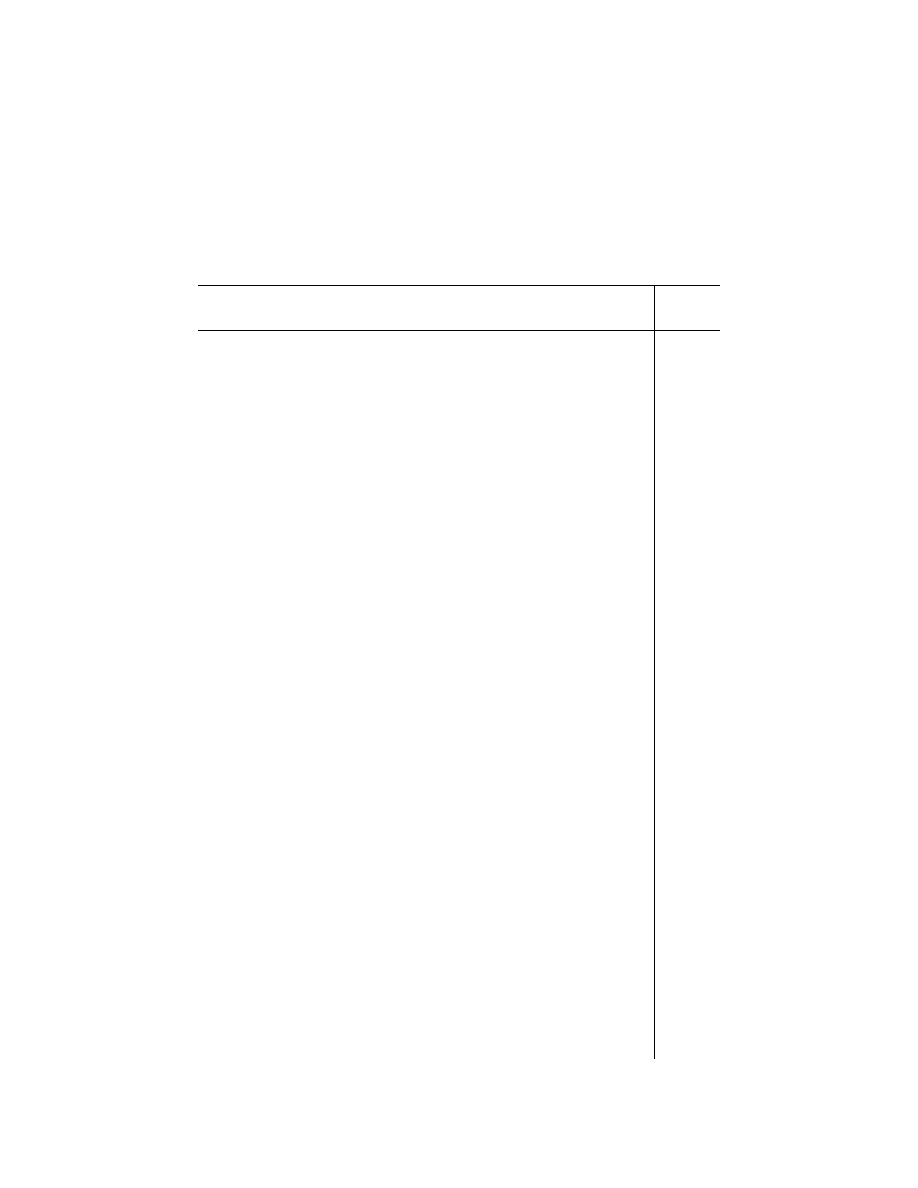
336
49 CFR Ch. I (10–1–23 Edition)
§ 172.101
T
ABLE
1
TO
A
PPENDIX
A—H
AZARDOUS
S
UBSTANCES
O
THER
T
HAN
R
ADIONUCLIDES
—Continued
Hazardous substance
Reportable
quantity (RQ)
pounds
(kilograms)
p-Toluidine .................................................................................................................................................................
100 (45.4)
o-Toluidine hydrochloride ..........................................................................................................................................
100 (45.4)
Toxaphene .................................................................................................................................................................
1 (0.454)
2,4,5-TP acid .............................................................................................................................................................
100 (45.4)
2,4,5-TP esters ..........................................................................................................................................................
100 (45.4)
Triallate ......................................................................................................................................................................
100 (45.4)
1H-1,2,4-Triazol-3-amine ...........................................................................................................................................
10 (4.54)
Trichlorfon ..................................................................................................................................................................
100 (45.4)
1,2,4-Trichlorobenzene ..............................................................................................................................................
100 (45.4)
1,1,1-Trichloroethane ................................................................................................................................................
1000 (454)
1,1,2-Trichloroethane ................................................................................................................................................
100 (45.4)
Trichloroethylene .......................................................................................................................................................
100 (45.4)
Trichloromethanesulfenyl chloride .............................................................................................................................
100 (45.4)
Trichloromonofluoromethane .....................................................................................................................................
5000 (2270)
Trichlorophenol ..........................................................................................................................................................
10 (4.54)
2,3,4-Trichlorophenol.
2,3,5-Trichlorophenol.
2,3,6-Trichlorophenol.
3,4,5-Trichlorophenol.
2,4,5-Trichlorophenol .................................................................................................................................................
10 (4.54)
2,4,6-Trichlorophenol .................................................................................................................................................
10 (4.54)
Triethanolamine dodecylbenzenesulfonate ...............................................................................................................
1000 (454)
Triethylamine .............................................................................................................................................................
5000 (2270)
Trifluralin ....................................................................................................................................................................
10 (4.54)
Trimethylamine ..........................................................................................................................................................
100 (45.4)
2,2,4-Trimethylpentane ..............................................................................................................................................
1000 (454)
1,3,5-Trinitrobenzene ................................................................................................................................................
10 (4.54)
1,3,5-Trioxane, 2,4,6-trimethyl- .................................................................................................................................
1000 (454)
Tris(2,3-dibromopropyl) phosphate ...........................................................................................................................
10 (4.54)
Trypan blue ...............................................................................................................................................................
10 (4.54)
D002 Unlisted Hazardous Wastes Characteristic of Corrosivity ..............................................................................
100 (45.4)
D001 Unlisted Hazardous Wastes Characteristic of Ignitability ...............................................................................
100 (45.4)
D003 Unlisted Hazardous Wastes Characteristic of Reactivity ................................................................................
100 (45.4)
D004–D043 Unlisted Hazardous Wastes Characteristic of Toxicity:
Arsenic (D004) ............................................................................................................................................
1 (0.454)
Barium (D005) .............................................................................................................................................
1000 (454)
Benzene (D018) ..........................................................................................................................................
10 (4.54)
Cadmium (D006) .........................................................................................................................................
10 (4.54)
Carbon tetrachloride (D019) .......................................................................................................................
10 (4.54)
Chlordane (D020) .......................................................................................................................................
1 (0.454)
Chlorobenzene (D021) ................................................................................................................................
100 (45.4)
Chloroform (D022) ......................................................................................................................................
10 (4.54)
Chromium (D007) ........................................................................................................................................
10 (4.54)
o-Cresol (D023) ..........................................................................................................................................
100 (45.4)
m-Cresol (D024) ..........................................................................................................................................
100 (45.4)
p-Cresol (D025) ..........................................................................................................................................
100 (45.4)
Cresol (D026) ..............................................................................................................................................
100 (45.4)
2,4-D (D016) ...............................................................................................................................................
100 (45.4)
1,4-Dichlorobenzene (D027) .......................................................................................................................
100 (45.4)
1,2-Dichloroethane (D028) ..........................................................................................................................
100 (45.4)
1,1-Dichloroethylene (D029) .......................................................................................................................
100 (45.4)
2,4-Dinitrotoluene (D030) ............................................................................................................................
10 (4.54)
Endrin (D012) ..............................................................................................................................................
1 (0.454)
Heptachlor (and epoxide) (D031) ...............................................................................................................
1 (0.454)
Hexachlorobenzene (D032) ........................................................................................................................
10 (4.54)
Hexachlorobutadiene (D033) ......................................................................................................................
1 (0.454)
Hexachloroethane (D034) ...........................................................................................................................
100 (45.4)
Lead (D008) ................................................................................................................................................
10 (4.54)
Lindane (D013) ...........................................................................................................................................
1 (0.454)
Mercury (D009) ...........................................................................................................................................
1 (0.454)
Methoxychlor (D014) ...................................................................................................................................
1 (0.454)
Methyl ethyl ketone (D035) .........................................................................................................................
5000 (2270)
Nitrobenzene (D036) ...................................................................................................................................
1000 (454)
Pentachlorophenol (D037) ..........................................................................................................................
10 (4.54)
Pyridine (D038) ...........................................................................................................................................
1000 (454)
Selenium (D010) .........................................................................................................................................
10 (4.54)
Silver (D011) ...............................................................................................................................................
1 (0.454)
Tetrachloroethylene (D039) ........................................................................................................................
100 (45.4)
Toxaphene (D015) ......................................................................................................................................
1 (0.454)
Trichloroethylene (D040) .............................................................................................................................
100 (45.4)
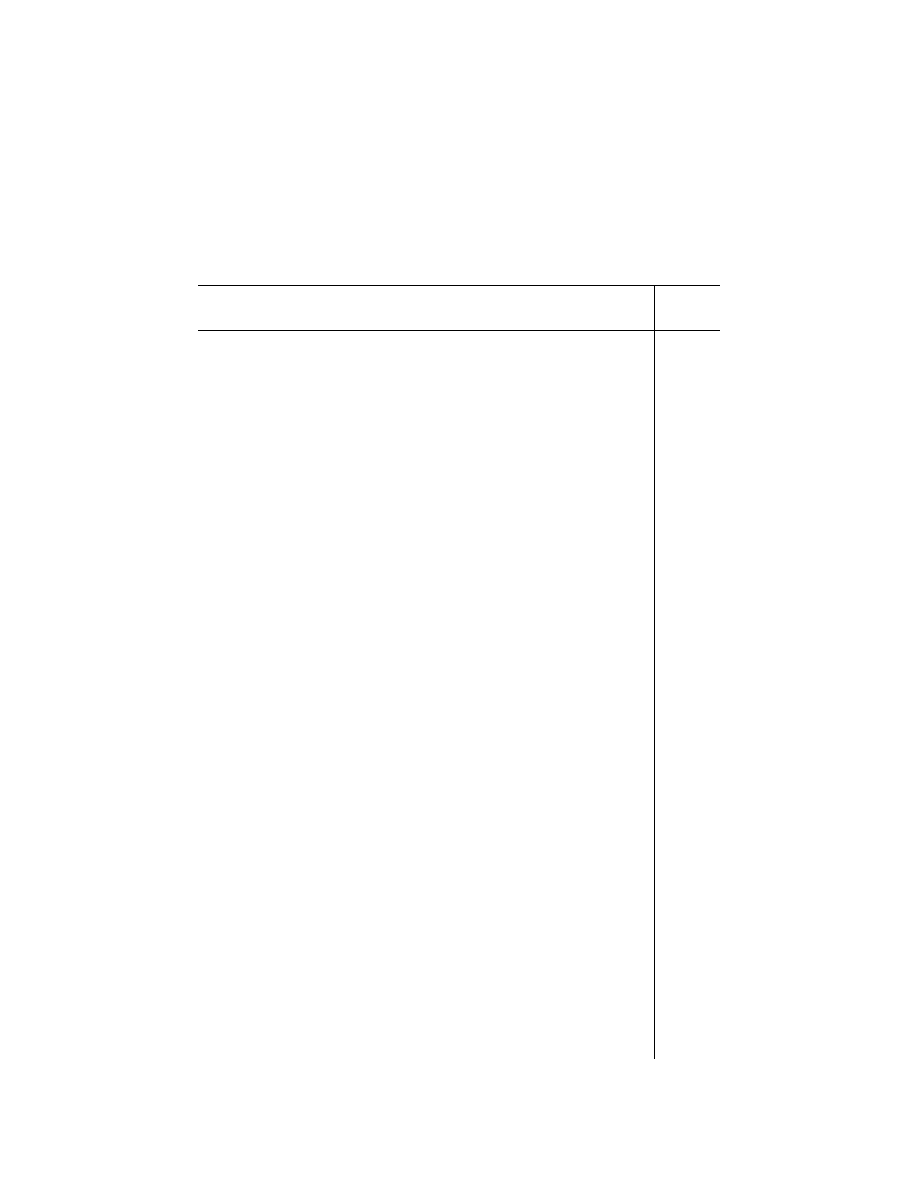
337
Pipeline and Haz. Matls. Safety Admin., DOT
§ 172.101
T
ABLE
1
TO
A
PPENDIX
A—H
AZARDOUS
S
UBSTANCES
O
THER
T
HAN
R
ADIONUCLIDES
—Continued
Hazardous substance
Reportable
quantity (RQ)
pounds
(kilograms)
2,4,5-Trichlorophenol (D041) ......................................................................................................................
10 (4.54)
2,4,6-Trichlorophenol (D042) ......................................................................................................................
10 (4.54)
2,4,5-TP (D017) ..........................................................................................................................................
100 (45.4)
Vinyl chloride (D043) ..................................................................................................................................
1 (0.454)
Uracil mustard ...........................................................................................................................................................
10 (4.54)
Uranyl acetate ...........................................................................................................................................................
100 (45.4)
Uranyl nitrate .............................................................................................................................................................
100 (45.4)
Urea, N-ethyl-N-nitroso- ............................................................................................................................................
1 (0.454)
Urea, N-methyl-N-nitroso- .........................................................................................................................................
1 (0.454)
Urethane ....................................................................................................................................................................
100 (45.4)
Vanadic acid, ammonium salt ...................................................................................................................................
1000 (454)
Vanadium oxide V
2
O
5
...............................................................................................................................................
1000 (454)
Vanadium pentoxide ..................................................................................................................................................
1000 (454)
Vanadyl sulfate ..........................................................................................................................................................
1000 (454)
Vinyl acetate ..............................................................................................................................................................
5000 (2270)
Vinyl acetate monomer .............................................................................................................................................
5000 (2270)
Vinylamine, N-methyl-N-nitroso- ................................................................................................................................
10 (4.54)
Vinyl bromide .............................................................................................................................................................
100 (45.4)
Vinyl chloride .............................................................................................................................................................
1 (0.454)
Vinylidene chloride ....................................................................................................................................................
100 (45.4)
Warfarin, & salts ........................................................................................................................................................
100 (45.4)
Xylene ........................................................................................................................................................................
100 (45.4)
m-Xylene ...................................................................................................................................................................
1000 (454)
o-Xylene ....................................................................................................................................................................
1000 (454)
p-Xylene ....................................................................................................................................................................
100 (45.4)
Xylene (mixed) ..........................................................................................................................................................
100 (45.4)
Xylenes (isomers and mixture) .................................................................................................................................
100 (45.4)
Xylenol .......................................................................................................................................................................
1000 (454)
Yohimban-16-carboxylic acid,11,17-dimethoxy-18-[(3,4,5-trimethoxybenzoyl)
oxy]-, methyl ester (3beta,16beta,17alpha,18beta, 20alpha) ...................................................................................
5000 (2270)
Zinc
¢
.........................................................................................................................................................................
1000 (454)
Zinc acetate ...............................................................................................................................................................
1000 (454)
Zinc ammonium chloride ...........................................................................................................................................
1000 (454)
Zinc, bis(dimethylcarbamodithioato-S,S
′
)- .................................................................................................................
10 (4.54)
Zinc borate ................................................................................................................................................................
1000 (454)
Zinc bromide ..............................................................................................................................................................
1000 (454)
Zinc carbonate ...........................................................................................................................................................
1000 (454)
Zinc chloride ..............................................................................................................................................................
1000 (454)
Zinc cyanide Zn(CN)
2
................................................................................................................................................
10 (4.54)
Zinc fluoride ...............................................................................................................................................................
1000 (454)
Zinc formate ..............................................................................................................................................................
1000 (454)
Zinc hydrosulfite ........................................................................................................................................................
1000 (454)
Zinc nitrate .................................................................................................................................................................
1000 (454)
Zinc phenolsulfonate .................................................................................................................................................
5000 (2270)
Zinc phosphide Zn
3
P
2
...............................................................................................................................................
100 (45.4)
Zinc silicofluoride .......................................................................................................................................................
5000 (2270)
Zinc sulfate ................................................................................................................................................................
1000 (454)
Ziram .........................................................................................................................................................................
10 (4.54)
Zirconium nitrate ........................................................................................................................................................
5000 (2270)
Zirconium potassium fluoride ....................................................................................................................................
1000 (454)
Zirconium sulfate .......................................................................................................................................................
5000 (2270)
Zirconium tetrachloride ..............................................................................................................................................
5000 (2270)
F001 ..........................................................................................................................................................................
10 (4.54)
(a) Tetrachloroethylene ...............................................................................................................................
100 (45.4)
(b) Trichloroethylene ...................................................................................................................................
100 (45.4)
(c) Methylene chloride ................................................................................................................................
1000 (454)
(d) 1,1,1-Trichloroethane ............................................................................................................................
1000 (454)
(e) Carbon tetrachloride ..............................................................................................................................
10 (4.54)
(f) Chlorinated fluorocarbons ......................................................................................................................
5000 (2270)
F002 ..........................................................................................................................................................................
10 (4.54)
(a) Tetrachloroethylene ...............................................................................................................................
100 (45.4)
(b) Methylene chloride ................................................................................................................................
1000 (454)
(c) Trichloroethylene ...................................................................................................................................
100 (45.4)
(d) 1,1,1-Trichloroethane ............................................................................................................................
1000 (454)
(e) Chlorobenzene ......................................................................................................................................
100 (45.4)
(f) 1,1,2-Trichloro-1,2,2-trifluoroethane .......................................................................................................
5000 (2270)
(g) o-Dichlorobenzene ................................................................................................................................
100 (45.4)
(h) Trichlorofluoromethane ..........................................................................................................................
5000 (2270)
(i) 1,1,2-Trichloroethane ..............................................................................................................................
100 (45.4)
F003 ..........................................................................................................................................................................
100 (45.4)
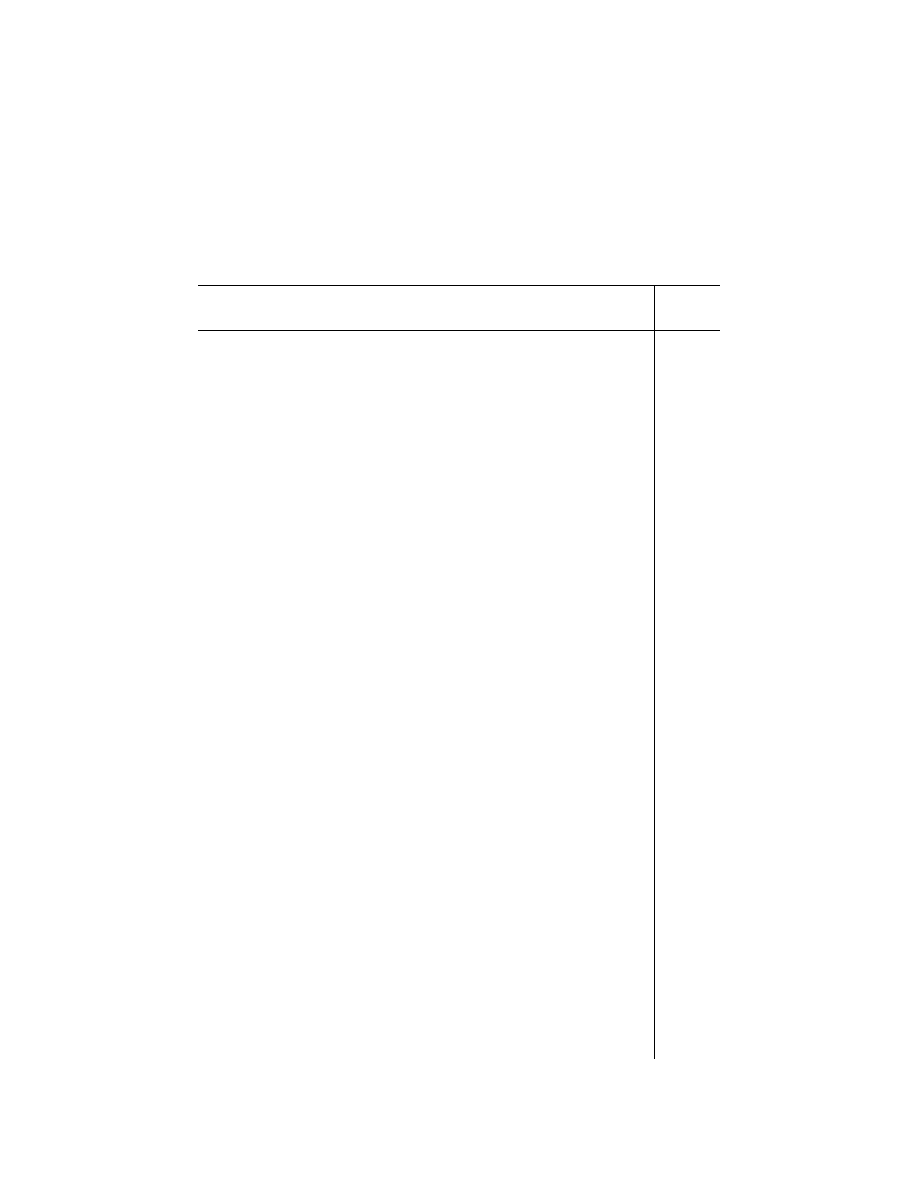
338
49 CFR Ch. I (10–1–23 Edition)
§ 172.101
T
ABLE
1
TO
A
PPENDIX
A—H
AZARDOUS
S
UBSTANCES
O
THER
T
HAN
R
ADIONUCLIDES
—Continued
Hazardous substance
Reportable
quantity (RQ)
pounds
(kilograms)
(a) Xylene ....................................................................................................................................................
1000 (454)
(b) Acetone .................................................................................................................................................
5000 (2270)
(c) Ethyl acetate ..........................................................................................................................................
5000 (2270)
(d) Ethylbenzene .........................................................................................................................................
1000 (454)
(e) Ethyl ether .............................................................................................................................................
100 (45.4)
(f) Methyl isobutyl ketone ............................................................................................................................
5000 (2270)
(g) n-Butyl alcohol .......................................................................................................................................
5000 (2270)
(h) Cyclohexanone ......................................................................................................................................
5000 (2270)
(i) Methanol .................................................................................................................................................
5000 (2270)
F004 ..........................................................................................................................................................................
100 (45.4)
(a) Cresols/Cresylic acid .............................................................................................................................
100 (45.4)
(b) Nitrobenzene .........................................................................................................................................
1000 (454)
F005 ..........................................................................................................................................................................
100 (45.4)
(a) Toluene ..................................................................................................................................................
1000 (454)
(b) Methyl ethyl ketone ...............................................................................................................................
5000 (2270)
(c) Carbon disulfide .....................................................................................................................................
100 (45.4)
(d) Isobutanol ..............................................................................................................................................
5000 (2270)
(e) Pyridine ..................................................................................................................................................
1000 (454)
F006 ..........................................................................................................................................................................
10 (4.54)
F007 ..........................................................................................................................................................................
10 (4.54)
F008 ..........................................................................................................................................................................
10 (4.54)
F009 ..........................................................................................................................................................................
10 (4.54)
F010 ..........................................................................................................................................................................
10 (4.54)
F011 ..........................................................................................................................................................................
10 (4.54)
F012 ..........................................................................................................................................................................
10 (4.54)
F019 ..........................................................................................................................................................................
10 (4.54)
F020 ..........................................................................................................................................................................
1 (0.454)
F021 ..........................................................................................................................................................................
1 (0.454)
F022 ..........................................................................................................................................................................
1 (0.454)
F023 ..........................................................................................................................................................................
1 (0.454)
F024 ..........................................................................................................................................................................
1 (0.454)
F025 ..........................................................................................................................................................................
1 (0.454)
F026 ..........................................................................................................................................................................
1 (0.454)
F027 ..........................................................................................................................................................................
1 (0.454)
F028 ..........................................................................................................................................................................
1 (0.454)
F032 ..........................................................................................................................................................................
1 (0.454)
F034 ..........................................................................................................................................................................
1 (0.454)
F035 ..........................................................................................................................................................................
1 (0.454)
F037 ..........................................................................................................................................................................
1 (0.454)
F038 ..........................................................................................................................................................................
1 (0.454)
F039 ..........................................................................................................................................................................
1 (0.454)
K001 ..........................................................................................................................................................................
1 (0.454)
K002 ..........................................................................................................................................................................
10 (4.54)
K003 ..........................................................................................................................................................................
10 (4.54)
K004 ..........................................................................................................................................................................
10 (4.54)
K005 ..........................................................................................................................................................................
10 (4.54)
K006 ..........................................................................................................................................................................
10 (4.54)
K007 ..........................................................................................................................................................................
10 (4.54)
K008 ..........................................................................................................................................................................
10 (4.54)
K009 ..........................................................................................................................................................................
10 (4.54)
K010 ..........................................................................................................................................................................
10 (4.54)
K011 ..........................................................................................................................................................................
10 (4.54)
K013 ..........................................................................................................................................................................
10 (4.54)
K014 ..........................................................................................................................................................................
5000 (2270)
K015 ..........................................................................................................................................................................
10 (4.54)
K016 ..........................................................................................................................................................................
1 (0.454)
K017 ..........................................................................................................................................................................
10 (4.54)
K018 ..........................................................................................................................................................................
1 (0.454)
K019 ..........................................................................................................................................................................
1 (0.454)
K020 ..........................................................................................................................................................................
1 (0.454)
K021 ..........................................................................................................................................................................
10 (4.54)
K022 ..........................................................................................................................................................................
1 (0.454)
K023 ..........................................................................................................................................................................
5000 (2270)
K024 ..........................................................................................................................................................................
5000 (2270)
K025 ..........................................................................................................................................................................
10 (4.54)
K026 ..........................................................................................................................................................................
1000 (454)
K027 ..........................................................................................................................................................................
10 (4.54)
K028 ..........................................................................................................................................................................
1 (0.454)
K029 ..........................................................................................................................................................................
1 (0.454)
K030 ..........................................................................................................................................................................
1 (0.454)
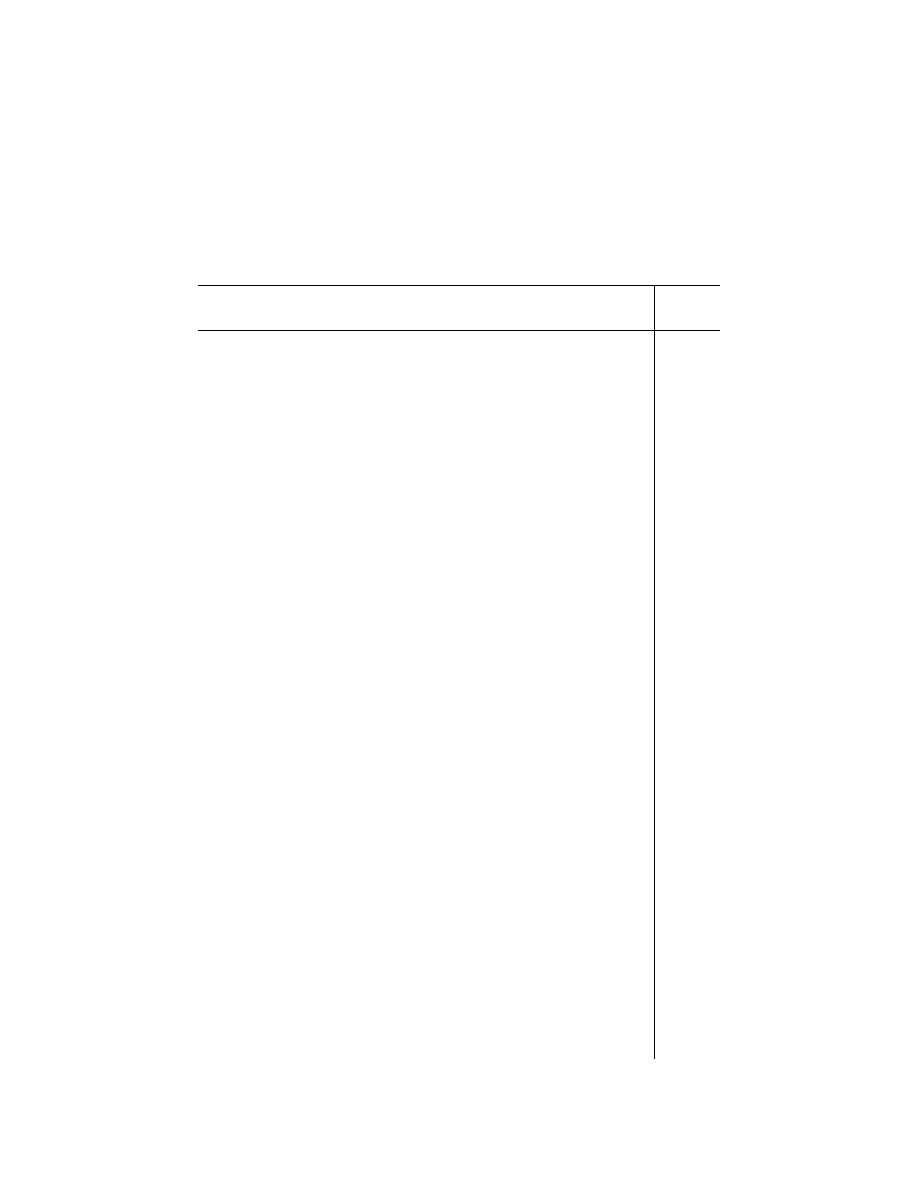
339
Pipeline and Haz. Matls. Safety Admin., DOT
§ 172.101
T
ABLE
1
TO
A
PPENDIX
A—H
AZARDOUS
S
UBSTANCES
O
THER
T
HAN
R
ADIONUCLIDES
—Continued
Hazardous substance
Reportable
quantity (RQ)
pounds
(kilograms)
K031 ..........................................................................................................................................................................
1 (0.454)
K032 ..........................................................................................................................................................................
10 (4.54)
K033 ..........................................................................................................................................................................
10 (4.54)
K034 ..........................................................................................................................................................................
10 (4.54)
K035 ..........................................................................................................................................................................
1 (0.454)
K036 ..........................................................................................................................................................................
1 (0.454)
K037 ..........................................................................................................................................................................
1 (0.454)
K038 ..........................................................................................................................................................................
10 (4.54)
K039 ..........................................................................................................................................................................
10 (4.54)
K040 ..........................................................................................................................................................................
10 (4.54)
K041 ..........................................................................................................................................................................
1 (0.454)
K042 ..........................................................................................................................................................................
10 (4.54)
K043 ..........................................................................................................................................................................
10 (4.54)
K044 ..........................................................................................................................................................................
10 (4.54)
K045 ..........................................................................................................................................................................
10 (4.54)
K046 ..........................................................................................................................................................................
10 (4.54)
K047 ..........................................................................................................................................................................
10 (4.54)
K048 ..........................................................................................................................................................................
10 (4.54)
K049 ..........................................................................................................................................................................
10 (4.54)
K050 ..........................................................................................................................................................................
10 (4.54)
K051 ..........................................................................................................................................................................
10 (4.54)
K052 ..........................................................................................................................................................................
10 (4.54)
K060 ..........................................................................................................................................................................
1 (0.454)
K061 ..........................................................................................................................................................................
10 (4.54)
K062 ..........................................................................................................................................................................
10 (4.54)
K064 ..........................................................................................................................................................................
10 (4.54)
K065 ..........................................................................................................................................................................
10 (4.54)
K066 ..........................................................................................................................................................................
10 (4.54)
K069 ..........................................................................................................................................................................
10 (4.54)
K071 ..........................................................................................................................................................................
1 (0.454)
K073 ..........................................................................................................................................................................
10 (4.54)
K083 ..........................................................................................................................................................................
100 (45.4)
K084 ..........................................................................................................................................................................
1 (0.454)
K085 ..........................................................................................................................................................................
10 (4.54)
K086 ..........................................................................................................................................................................
10 (4.54)
K087 ..........................................................................................................................................................................
100 (45.4)
K088 ..........................................................................................................................................................................
10 (4.54)
K090 ..........................................................................................................................................................................
10 (4.54)
K091 ..........................................................................................................................................................................
10 (4.54)
K093 ..........................................................................................................................................................................
5000 (2270)
K094 ..........................................................................................................................................................................
5000 (2270)
K095 ..........................................................................................................................................................................
100 (45.4)
K096 ..........................................................................................................................................................................
100 (45.4)
K097 ..........................................................................................................................................................................
1 (0.454)
K098 ..........................................................................................................................................................................
1 (0.454)
K099 ..........................................................................................................................................................................
10 (4.54)
K100 ..........................................................................................................................................................................
10 (4.54)
K101 ..........................................................................................................................................................................
1 (0.454)
K102 ..........................................................................................................................................................................
1 (0.454)
K103 ..........................................................................................................................................................................
100 (45.4)
K104 ..........................................................................................................................................................................
10 (4.54)
K105 ..........................................................................................................................................................................
10 (4.54)
K106 ..........................................................................................................................................................................
1 (0.454)
K107 ..........................................................................................................................................................................
10 (4.54)
K108 ..........................................................................................................................................................................
10 (4.54)
K109 ..........................................................................................................................................................................
10 (4.54)
K110 ..........................................................................................................................................................................
10 (4.54)
K111 ..........................................................................................................................................................................
10 (4.54)
K112 ..........................................................................................................................................................................
10 (4.54)
K113 ..........................................................................................................................................................................
10 (4.54)
K114 ..........................................................................................................................................................................
10 (4.54)
K115 ..........................................................................................................................................................................
10 (4.54)
K116 ..........................................................................................................................................................................
10 (4.54)
K117 ..........................................................................................................................................................................
1 (0.454)
K118 ..........................................................................................................................................................................
1 (0.454)
K123 ..........................................................................................................................................................................
10 (4.54)
K124 ..........................................................................................................................................................................
10 (4.54)
K125 ..........................................................................................................................................................................
10 (4.54)
K126 ..........................................................................................................................................................................
10 (4.54)
K131 ..........................................................................................................................................................................
100 (45.4)
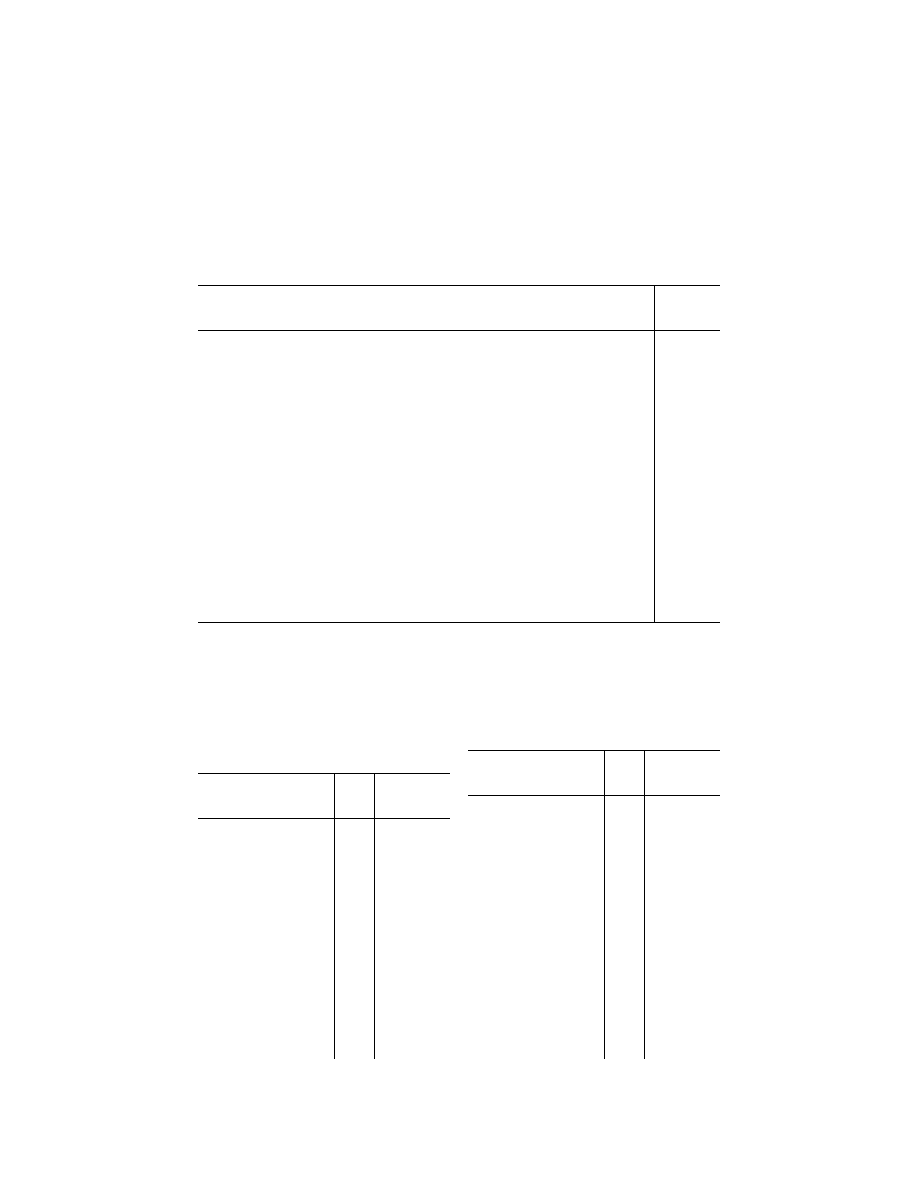
340
49 CFR Ch. I (10–1–23 Edition)
§ 172.101
T
ABLE
1
TO
A
PPENDIX
A—H
AZARDOUS
S
UBSTANCES
O
THER
T
HAN
R
ADIONUCLIDES
—Continued
Hazardous substance
Reportable
quantity (RQ)
pounds
(kilograms)
K132 ..........................................................................................................................................................................
1000 (454)
K136 ..........................................................................................................................................................................
1 (0.454)
K141 ..........................................................................................................................................................................
1 (0.454)
K142 ..........................................................................................................................................................................
1 (0.454)
K143 ..........................................................................................................................................................................
1 (0.454)
K144 ..........................................................................................................................................................................
1 (0.454)
K145 ..........................................................................................................................................................................
1 (0.454)
K147 ..........................................................................................................................................................................
1 (0.454)
K148 ..........................................................................................................................................................................
1 (0.454)
K149 ..........................................................................................................................................................................
10 (4.54)
K150 ..........................................................................................................................................................................
10 (4.54)
K151 ..........................................................................................................................................................................
10 (4.54)
K156 ..........................................................................................................................................................................
10 (4.54)
K157 ..........................................................................................................................................................................
10 (4.54)
K158 ..........................................................................................................................................................................
10 (4.54)
K159 ..........................................................................................................................................................................
10 (4.54)
K161 ..........................................................................................................................................................................
1 (0.454)
K169 ..........................................................................................................................................................................
10 (4.54)
K170 ..........................................................................................................................................................................
1 (0.454)
K171 ..........................................................................................................................................................................
1 (0.454)
K172 ..........................................................................................................................................................................
1 (0.454)
K174 ..........................................................................................................................................................................
1 (0.454)
K175 ..........................................................................................................................................................................
1 (0.454)
K176 ..........................................................................................................................................................................
1 (0.454)
K177 ..........................................................................................................................................................................
5000 (2270)
K178 ..........................................................................................................................................................................
1000 (454)
K181 ..........................................................................................................................................................................
1 (0.454)
¢
The RQ for these hazardous substances is limited to those pieces of the metal having a diameter smaller than 100 microm-
eters (0.004 inches).
¢
The RQ for asbestos is limited to friable forms only.
@
Indicates that the name was added by PHMSA because (1) the name is a synonym for a specific hazardous substance and
(2) the name appears in the Hazardous Materials Table as a proper shipping name.
#
To provide consistency with EPA regulations, two entries with different CAS numbers are provided. Refer to the EPA Table
302.4—List of Hazardous Substances and Reportable Quantities for an explanation of the two entries.
L
IST OF
H
AZARDOUS
S
UBSTANCES AND
R
EPORTABLE
Q
UANTITIES
T
ABLE
2
TO
A
PPENDIX
A—R
ADIONUCLIDES
(1)—Radionuclide
(2)—
Atomic
Num-
ber
(3)—Reportable
Quantity (RQ)
Ci (TBq)
Actinium-224
............................
89
100 (3.7)
Actinium-225
............................
89
1 (.037)
Actinium-226
............................
89
10 (.37)
Actinium-227
............................
89
0.001 (.000037)
Actinium-228
............................
89
10 (.37)
Aluminum-26 ............................
13
10 (.37)
Americium-237 .........................
95
1000 (37)
Americium-238 .........................
95
100 (3.7)
Americium-239 .........................
95
100 (3.7)
Americium-240 .........................
95
10 (.37)
Americium-241 .........................
95
0.01 (.00037)
Americium-242 .........................
95
100 (3.7)
Americium-242m ......................
95
0.01 (.00037)
Americium-243 .........................
95
0.01 (.00037)
Americium-244 .........................
95
10 (.37)
Americium-244m ......................
95
1000 (37)
Americium-245 .........................
95
1000 (37)
Americium-246 .........................
95
1000 (37)
Americium-246m ......................
95
1000 (37)
Antimony-115
..........................
51
1000 (37)
Antimony-116
..........................
51
1000 (37)
Antimony-116m
.......................
51
100 (3.7)
Antimony-117
..........................
51
1000 (37)
T
ABLE
2
TO
A
PPENDIX
A—R
ADIONUCLIDES
—
Continued
(1)—Radionuclide
(2)—
Atomic
Num-
ber
(3)—Reportable
Quantity (RQ)
Ci (TBq)
Antimony-118m
.......................
51
10 (.37)
Antimony-119
..........................
51
1000 (37)
Antimony-120 (16 min)
............
51
1000 (37)
Antimony-120 (5.76 day)
.........
51
10 (.37)
Antimony-122
..........................
51
10 (.37)
Antimony-124
..........................
51
10 (.37)
Antimony-124m
.......................
51
1000 (37)
Antimony-125
..........................
51
10 (.37)
Antimony-126
..........................
51
10 (.37)
Antimony-126m
.......................
51
1000 (37)
Antimony-127
..........................
51
10 (.37)
Antimony-128 (10.4 min)
.........
51
1000 (37)
Antimony-128 (9.01 hr)
...........
51
10 (.37)
Antimony-129
..........................
51
100 (3.7)
Antimony-130
..........................
51
100 (3.7)
Antimony-131
..........................
51
1000 (37)
Argon-39
..................................
18
1000 (37)
Argon-41
..................................
18
10 (.37)
Arsenic-69
...............................
33
1000 (37)
Arsenic-70
...............................
33
100 (3.7)
Arsenic-71
...............................
33
100 (3.7)
Arsenic-72
...............................
33
10 (.37)
Arsenic-73
...............................
33
100 (3.7)
Arsenic-74
...............................
33
10 (.37)
Arsenic-76
...............................
33
100 (3.7)
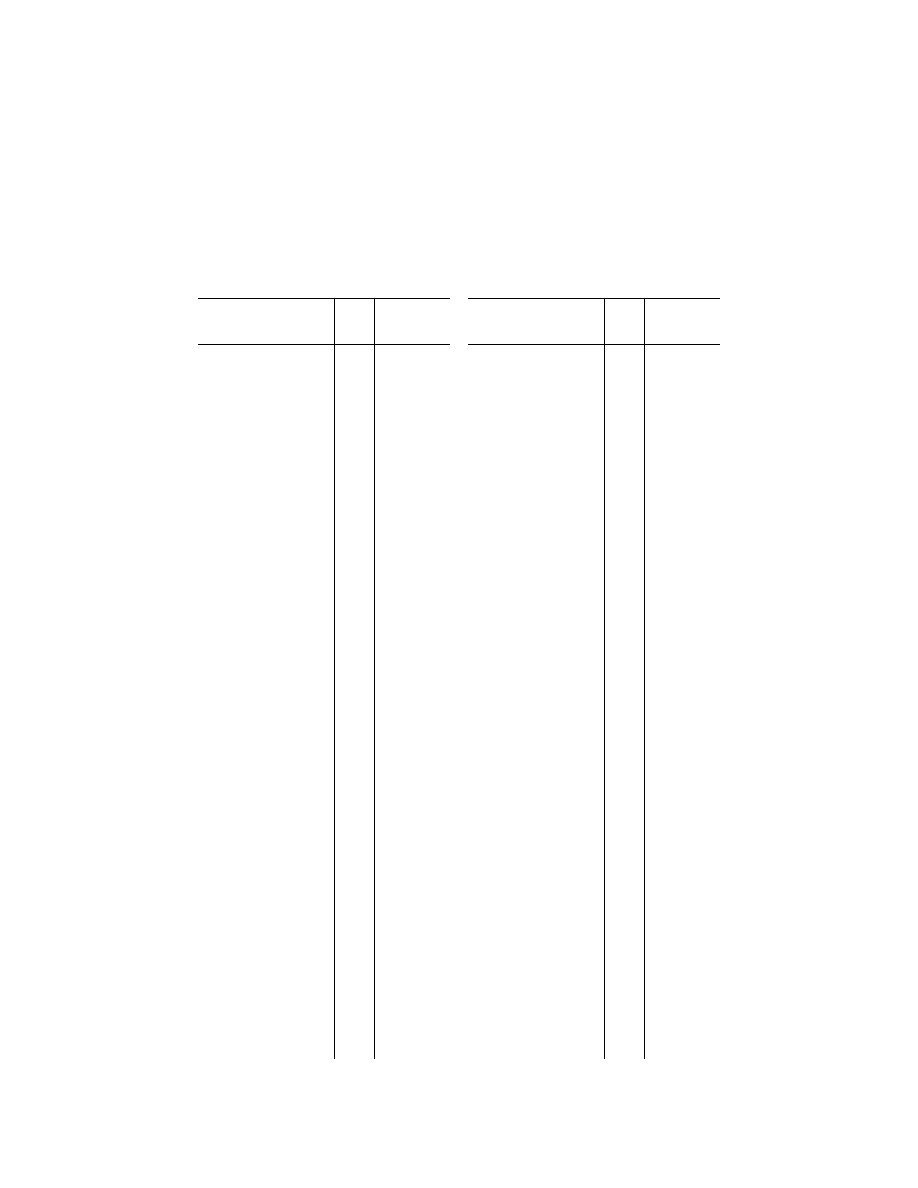
341
Pipeline and Haz. Matls. Safety Admin., DOT
§ 172.101
T
ABLE
2
TO
A
PPENDIX
A—R
ADIONUCLIDES
—
Continued
(1)—Radionuclide
(2)—
Atomic
Num-
ber
(3)—Reportable
Quantity (RQ)
Ci (TBq)
Arsenic-77
...............................
33
1000 (37)
Arsenic-78
...............................
33
100 (3.7)
Astatine-207
............................
85
100 (3.7)
Astatine-211
............................
85
100 (3.7)
Barium-126
..............................
56
1000 (37)
Barium-128
..............................
56
10 (.37)
Barium-131
..............................
56
10 (.37)
Barium-131m
...........................
56
1000 (37)
Barium-133
..............................
56
10 (.37)
Barium-133m
...........................
56
100 (3.7)
Barium-135m
...........................
56
1000 (37)
Barium-139
..............................
56
1000 (37)
Barium-140
..............................
56
10 (.37)
Barium-141
..............................
56
1000 (37)
Barium-142
..............................
56
1000 (37)
Berkelium-245 ..........................
97
100 (3.7)
Berkelium-246 ..........................
97
10 (.37)
Berkelium-247 ..........................
97
0.01 (.00037)
Berkelium-249 ..........................
97
1 (.037)
Berkelium-250 ..........................
97
100 (3.7)
Beryllium-10
.............................
4
1 (.037)
Beryllium-7
...............................
4
100 (3.7)
Bismuth-200
............................
83
100 (3.7)
Bismuth-201
............................
83
100 (3.7)
Bismuth-202
............................
83
1000 (37)
Bismuth-203
............................
83
10 (.37)
Bismuth-205
............................
83
10 (.37)
Bismuth-206
............................
83
10 (.37)
Bismuth-207
............................
83
10 (.37)
Bismuth-210
............................
83
10 (.37)
Bismuth-210m ..........................
83
0.1 (.0037)
Bismuth-212
............................
83
100 (3.7)
Bismuth-213
............................
83
100 (3.7)
Bismuth-214
............................
83
100 (3.7)
Bromine-74
..............................
35
100 (3.7)
Bromine-74m
...........................
35
100 (3.7)
Bromine-75
..............................
35
100 (3.7)
Bromine-76
..............................
35
10 (.37)
Bromine-77
..............................
35
100 (3.7)
Bromine-80
..............................
35
1000 (37)
Bromine-80m
...........................
35
1000 (37)
Bromine-82
..............................
35
10 (.37)
Bromine-83
..............................
35
1000 (37)
Bromine-84
..............................
35
100 (3.7)
Cadmium-104
..........................
48
1000 (37)
Cadmium-107
..........................
48
1000 (37)
Cadmium-109
..........................
48
1 (.037)
Cadmium-113
..........................
48
0.1 (.0037)
Cadmium-113m
.......................
48
0.1 (.0037)
Cadmium-115
..........................
48
100 (3.7)
Cadmium-115m
.......................
48
10 (.37)
Cadmium-117
..........................
48
100 (3.7)
Cadmium-117m
.......................
48
10 (.37)
Calcium-41 ...............................
20
10 (.37)
Calcium-45 ...............................
20
10 (.37)
Calcium-47 ...............................
20
10 (.37)
Californium-244
.......................
98
1000 (37)
Californium-246
.......................
98
10 (.37)
Californium-248
.......................
98
0.1 (.0037)
Californium-249
.......................
98
0.01 (.00037)
Californium-250
.......................
98
0.01 (.00037)
Californium-251
.......................
98
0.01 (.00037)
Californium-252
.......................
98
0.1 (.0037)
Californium-253
.......................
98
10 (.37)
Californium-254
.......................
98
0.1 (.0037)
Carbon-11
................................
6
1000 (37)
Carbon-14
................................
6
10 (.37)
Cerium-134
..............................
58
10 (.37)
T
ABLE
2
TO
A
PPENDIX
A—R
ADIONUCLIDES
—
Continued
(1)—Radionuclide
(2)—
Atomic
Num-
ber
(3)—Reportable
Quantity (RQ)
Ci (TBq)
Cerium-135
..............................
58
10 (.37)
Cerium-137
..............................
58
1000 (37)
Cerium-137m
...........................
58
100 (3.7)
Cerium-139
..............................
58
100 (3.7)
Cerium-141
..............................
58
10 (.37)
Cerium-143
..............................
58
100 (3.7)
Cerium-144
..............................
58
1 (.037)
Cesium-125
.............................
55
1000 (37)
Cesium-127
.............................
55
100 (3.7)
Cesium-129
.............................
55
100 (3.7)
Cesium-130
.............................
55
1000 (37)
Cesium-131
.............................
55
1000 (37)
Cesium-132
.............................
55
10 (.37)
Cesium-134
.............................
55
1 (.037)
Cesium-134m
..........................
55
1000 (37)
Cesium-135
.............................
55
10 (.37)
Cesium-135m
..........................
55
100 (3.7)
Cesium-136
.............................
55
10 (.37)
Cesium-137
.............................
55
1 (.037)
Cesium-138
.............................
55
100 (3.7)
Chlorine-36
..............................
17
10 (.37)
Chlorine-38
..............................
17
100 (3.7)
Chlorine-39
..............................
17
100 (3.7)
Chromium-48
...........................
24
100 (3.7)
Chromium-49
...........................
24
1000 (37)
Chromium-51
...........................
24
1000 (37)
Cobalt-55
.................................
27
10 (.37)
Cobalt-56
.................................
27
10 (.37)
Cobalt-57
.................................
27
100 (3.7)
Cobalt-58
.................................
27
10 (.37)
Cobalt-58m
..............................
27
1000 (37)
Cobalt-60
.................................
27
10 (.37)
Cobalt-60m
..............................
27
1000 (37)
Cobalt-61
.................................
27
1000 (37)
Cobalt-62m
..............................
27
1000 (37)
Copper-60
................................
29
100 (3.7)
Copper-61
................................
29
100 (3.7)
Copper-64
................................
29
1000 (37)
Copper-67
................................
29
100 (3.7)
Curium-238
..............................
96
1000 (37)
Curium-240
..............................
96
1 (.037)
Curium-241
..............................
96
10 (.37)
Curium-242
..............................
96
1 (.037)
Curium-243
..............................
96
0.01 (.00037)
Curium-244
..............................
96
0.01 (.00037)
Curium-245
..............................
96
0.01 (.00037)
Curium-246
..............................
96
0.01 (.00037)
Curium-247
..............................
96
0.01 (.00037)
Curium-248
..............................
96
0.001 (.000037)
Curium-249
..............................
96
1000 (37)
Dysprosium-155 .......................
66
100 (3.7)
Dysprosium-157 .......................
66
100 (3.7)
Dysprosium-159 .......................
66
100 (3.7)
Dysprosium-165 .......................
66
1000 (37)
Dysprosium-166 .......................
66
10 (.37)
Einsteinium-250
.......................
99
10 (.37)
Einsteinium-251
.......................
99
1000 (37)
Einsteinium-253
.......................
99
10 (.37)
Einsteinium-254
.......................
99
0.1 (.0037)
Einsteinium-254m
....................
99
1 (.037)
Erbium-161
..............................
68
100 (3.7)
Erbium-165
..............................
68
1000 (37)
Erbium-169
..............................
68
100 (3.7)
Erbium-171
..............................
68
100 (3.7)
Erbium-172
..............................
68
10 (.37)
Europium-145
..........................
63
10 (.37)
Europium-146
..........................
63
10 (.37)
Europium-147
..........................
63
10 (.37)
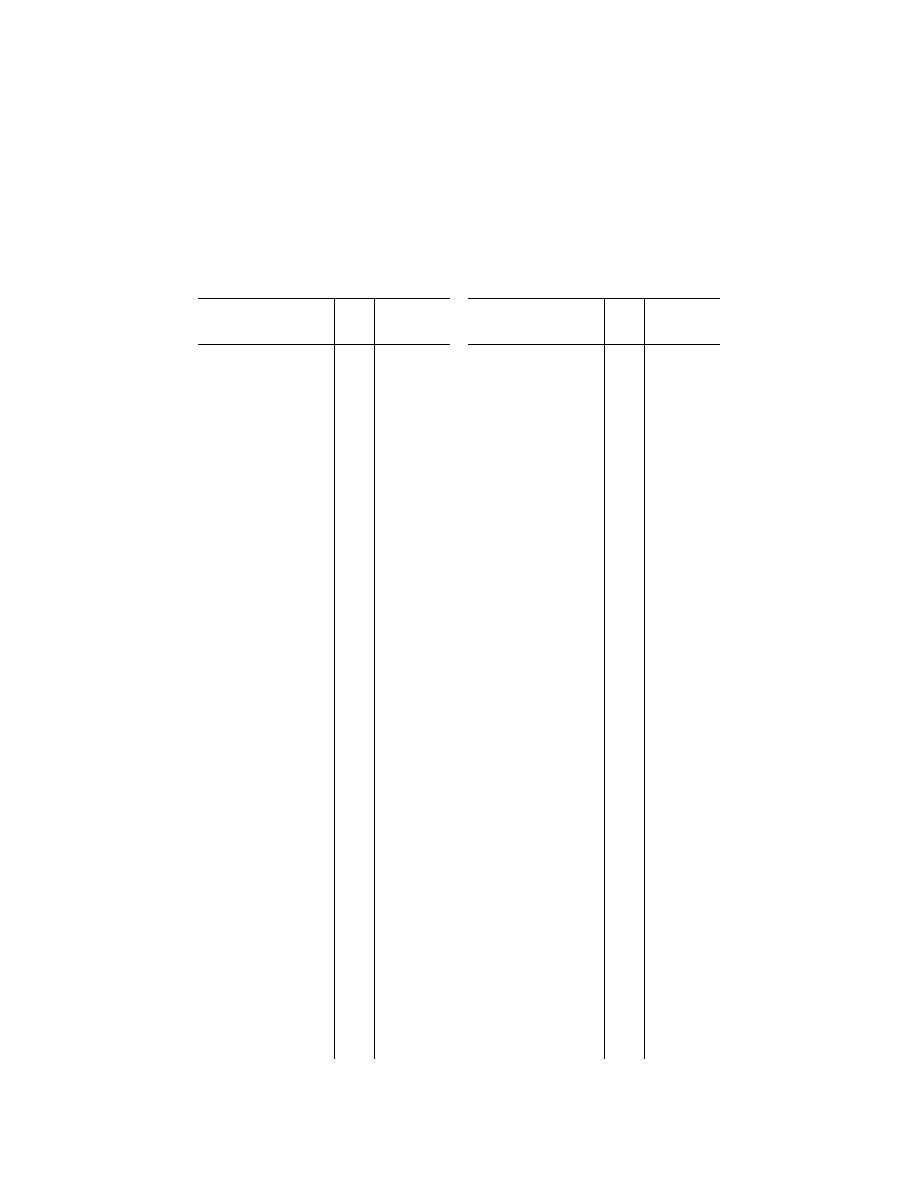
342
49 CFR Ch. I (10–1–23 Edition)
§ 172.101
T
ABLE
2
TO
A
PPENDIX
A—R
ADIONUCLIDES
—
Continued
(1)—Radionuclide
(2)—
Atomic
Num-
ber
(3)—Reportable
Quantity (RQ)
Ci (TBq)
Europium-148
..........................
63
10 (.37)
Europium-149
..........................
63
100 (3.7)
Europium-150 (12.6 hr)
...........
63
1000 (37)
Europium-150 (34.2 yr)
...........
63
10 (.37)
Europium-152
..........................
63
10 (.37)
Europium-152m
.......................
63
100 (3.7)
Europium-154
..........................
63
10 (.37)
Europium-155
..........................
63
10 (.37)
Europium-156
..........................
63
10 (.37)
Europium-157
..........................
63
10 (.37)
Europium-158
..........................
63
1000 (37)
Fermium-252
...........................
100
10 (.37)
Fermium-253
...........................
100
10 (.37)
Fermium-254
...........................
100
100 (3.7)
Fermium-255
...........................
100
100 (3.7)
Fermium-257
...........................
100
1 (.037)
Fluorine-18 ...............................
9
1000 (37)
Francium-222
..........................
87
100 (3.7)
Francium-223
..........................
87
100 (3.7)
Gadolinium-145
.......................
64
100 (3.7)
Gadolinium-146
.......................
64
10 (.37)
Gadolinium-147
.......................
64
10 (.37)
Gadolinium-148
.......................
64
0.001 (.000037)
Gadolinium-149
.......................
64
100 (3.7)
Gadolinium-151
.......................
64
100 (3.7)
Gadolinium-152
.......................
64
0.001 (.000037)
Gadolinium-153
.......................
64
10 (.37)
Gadolinium-159
.......................
64
1000 (37)
Gallium-65
...............................
31
1000 (37)
Gallium-66
...............................
31
10 (.37)
Gallium-67
...............................
31
100 (3.7)
Gallium-68
...............................
31
1000 (37)
Gallium-70
...............................
31
1000 (37)
Gallium-72
...............................
31
10 (.37)
Gallium-73
...............................
31
100 (3.7)
Germanium-66
.........................
32
100 (3.7)
Germanium-67
.........................
32
1000 (37)
Germanium-68
.........................
32
10 (.37)
Germanium-69
.........................
32
10 (.37)
Germanium-71
.........................
32
1000 (37)
Germanium-75
.........................
32
1000 (37)
Germanium-77
.........................
32
10 (.37)
Germanium-78
.........................
32
1000 (37)
Gold-193
..................................
79
100 (3.7)
Gold-194
..................................
79
10 (.37)
Gold-195
..................................
79
100 (3.7)
Gold-198
..................................
79
100 (3.7)
Gold-198m
...............................
79
10 (.37)
Gold-199
..................................
79
100 (3.7)
Gold-200
..................................
79
1000 (37)
Gold-200m
...............................
79
10 (.37)
Gold-201
..................................
79
1000 (37)
Hafnium-170
............................
72
100 (3.7)
Hafnium-172
............................
72
1 (.037)
Hafnium-173
............................
72
100 (3.7)
Hafnium-175
............................
72
100 (3.7)
Hafnium-177m
.........................
72
1000 (37)
Hafnium-178m
.........................
72
0.1 (.0037)
Hafnium-179m
.........................
72
100 (3.7)
Hafnium-180m
.........................
72
100 (3.7)
Hafnium-181
............................
72
10 (.37)
Hafnium-182
............................
72
0.1 (.0037)
Hafnium-182m
.........................
72
100 (3.7)
Hafnium-183
............................
72
100 (3.7)
Hafnium-184
............................
72
100 (3.7)
Holmium-155
...........................
67
1000 (37)
Holmium-157
...........................
67
1000 (37)
Holmium-159
...........................
67
1000 (37)
T
ABLE
2
TO
A
PPENDIX
A—R
ADIONUCLIDES
—
Continued
(1)—Radionuclide
(2)—
Atomic
Num-
ber
(3)—Reportable
Quantity (RQ)
Ci (TBq)
Holmium-161
...........................
67
1000 (37)
Holmium-162
...........................
67
1000 (37)
Holmium-162m
........................
67
1000 (37)
Holmium-164
...........................
67
1000 (37)
Holmium-164m
........................
67
1000 (37)
Holmium-166
...........................
67
100 (3.7)
Holmium-166m
........................
67
1 (.037)
Holmium-167
...........................
67
100 (3.7)
Hydrogen-3
..............................
1
100 (3.7)
Indium-109
...............................
49
100 (3.7)
Indium-110 (4.9 hr)
..................
49
10 (.37)
Indium-110 (69.1 min)
.............
49
100 (3.7)
Indium-111
...............................
49
100 (3.7)
Indium-112
...............................
49
1000 (37)
Indium-113m
............................
49
1000 (37)
Indium-114m
............................
49
10 (.37)
Indium-115
...............................
49
0.1 (.0037)
Indium-115m
............................
49
100 (3.7)
Indium-116m
............................
49
100 (3.7)
Indium-117
...............................
49
1000 (37)
Indium-117m
............................
49
100 (3.7)
Indium-119m
............................
49
1000 (37)
Iodine-120
................................
53
10 (.37)
Iodine-120m
.............................
53
100 (3.7)
Iodine-121
................................
53
100 (3.7)
Iodine-123
................................
53
10 (.37)
Iodine-124
................................
53
0.1 (.0037)
Iodine-125
................................
53
0.01 (.00037)
Iodine-126
................................
53
0.01 (.00037)
Iodine-128
................................
53
1000 (37)
Iodine-129
................................
53
0.001 (.000037)
Iodine-130
................................
53
1 (.037)
Iodine-131
................................
53
0.01 (.00037)
Iodine-132
................................
53
10 (.37)
Iodine-132m
.............................
53
10 (.37)
Iodine-133
................................
53
0.1 (.0037)
Iodine-134
................................
53
100 (3.7)
Iodine-135
................................
53
10 (.37)
Iridium-182
...............................
77
1000 (37)
Iridium-184
...............................
77
100 (3.7)
Iridium-185
...............................
77
100 (3.7)
Iridium-186
...............................
77
10 (.37)
Iridium-187
...............................
77
100 (3.7)
Iridium-188
...............................
77
10 (.37)
Iridium-189
...............................
77
100 (3.7)
Iridium-190
...............................
77
10 (.37)
Iridium-190m
............................
77
1000 (37)
Iridium-192
...............................
77
10 (.37)
Iridium-192m
............................
77
100 (3.7)
Iridium-194
...............................
77
100 (3.7)
Iridium-194m
............................
77
10 (.37)
Iridium-195
...............................
77
1000 (37)
Iridium-195m
............................
77
100 (3.7)
Iron-52
.....................................
26
100 (3.7)
Iron-55
.....................................
26
100 (3.7)
Iron-59
.....................................
26
10 (.37)
Iron-60
.....................................
26
0.1 (.0037)
Krypton-74
...............................
36
10 (.37)
Krypton-76
...............................
36
10 (.37)
Krypton-77
...............................
36
10 (.37)
Krypton-79
...............................
36
100 (3.7)
Krypton-81
...............................
36
1000 (37)
Krypton-83m
............................
36
1000 (37)
Krypton-85
...............................
36
1000 (37)
Krypton-85m
............................
36
100 (3.7)
Krypton-87
...............................
36
10 (.37)
Krypton-88
...............................
36
10 (.37)
Lanthanum-131
.......................
57
1000 (37)
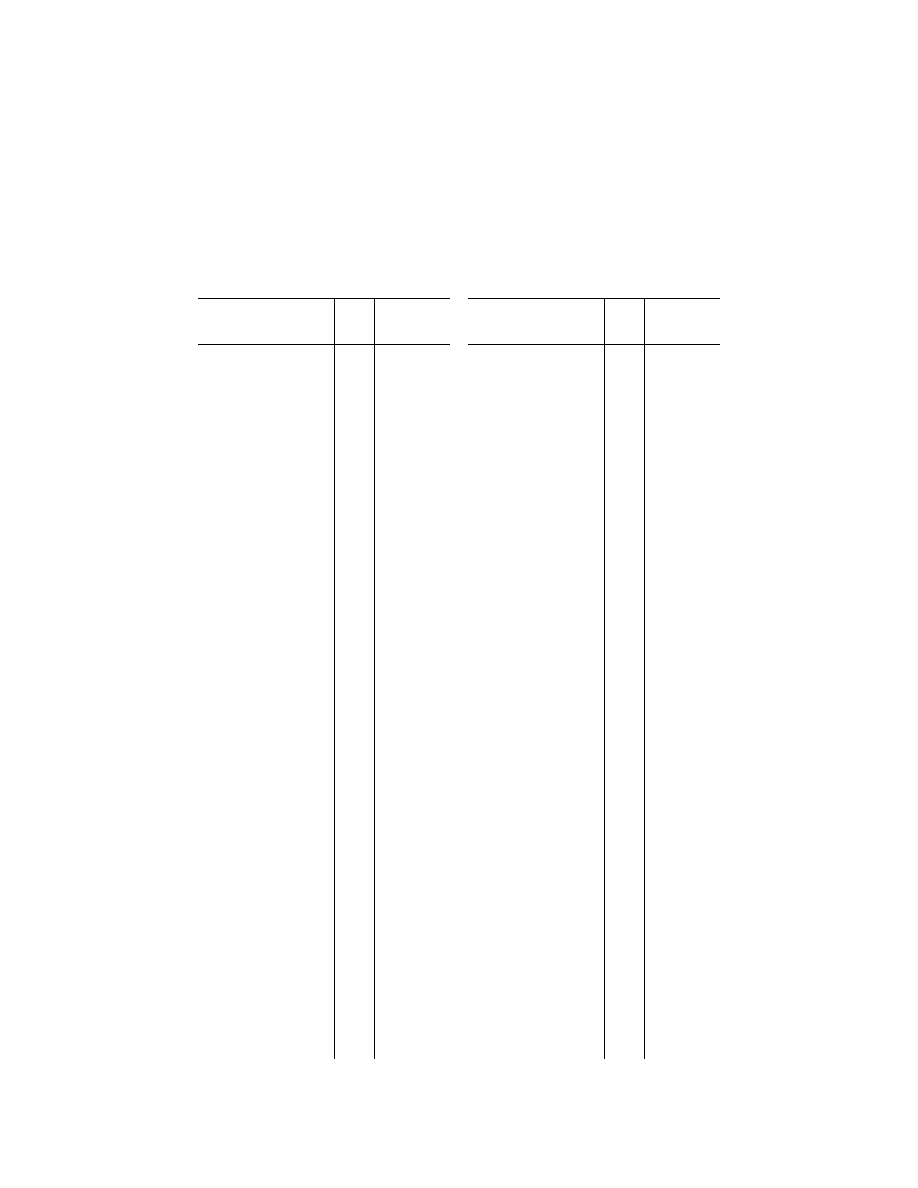
343
Pipeline and Haz. Matls. Safety Admin., DOT
§ 172.101
T
ABLE
2
TO
A
PPENDIX
A—R
ADIONUCLIDES
—
Continued
(1)—Radionuclide
(2)—
Atomic
Num-
ber
(3)—Reportable
Quantity (RQ)
Ci (TBq)
Lanthanum-132
.......................
57
100 (3.7)
Lanthanum-135
.......................
57
1000 (37)
Lanthanum-137
.......................
57
10 (.37)
Lanthanum-138
.......................
57
1 (.037)
Lanthanum-140
.......................
57
10 (.37)
Lanthanum-141
.......................
57
1000 (37)
Lanthanum-142
.......................
57
100 (3.7)
Lanthanum-143
.......................
57
1000 (37)
Lead-195m
..............................
82
1000 (37)
Lead-198
.................................
82
100 (3.7)
Lead-199
.................................
82
100 (3.7)
Lead-200
.................................
82
100 (3.7)
Lead-201
.................................
82
100 (3.7)
Lead-202
.................................
82
1 (.037)
Lead-202m
..............................
82
10 (.37)
Lead-203
.................................
82
100 (3.7)
Lead-205
.................................
82
100 (3.7)
Lead-209
.................................
82
1000 (37)
Lead-210
.................................
82
0.01 (.00037)
Lead-211
.................................
82
100 (3.7)
Lead-212
.................................
82
10 (.37)
Lead-214
.................................
82
100 (3.7)
Lutetium-169
............................
71
10 (.37)
Lutetium-170
............................
71
10 (.37)
Lutetium-171
............................
71
10 (.37)
Lutetium-172
............................
71
10 (.37)
Lutetium-173
............................
71
100 (3.7)
Lutetium-174
............................
71
10 (.37)
Lutetium-174m
.........................
71
10 (.37)
Lutetium-176
............................
71
1 (.037)
Lutetium-176m
.........................
71
1000 (37)
Lutetium-177
............................
71
100 (3.7)
Lutetium-177m
.........................
71
10 (.37)
Lutetium-178
............................
71
1000 (37)
Lutetium-178m
.........................
71
1000 (37)
Lutetium-179
............................
71
1000 (37)
Magnesium-28
.........................
12
10 (.37)
Manganese-51
.........................
25
1000 (37)
Manganese-52
.........................
25
10 (.37)
Manganese-52m
......................
25
1000 (37)
Manganese-53
.........................
25
1000 (37)
Manganese-54
.........................
25
10 (.37)
Manganese-56
.........................
25
100 (3.7)
Mendelevium-257
....................
101
100 (3.7)
Mendelevium-258
....................
101
1 (.037)
Mercury-193
............................
80
100 (3.7)
Mercury-193m ..........................
80
10 (.37)
Mercury-194
............................
80
0.1 (.0037)
Mercury-195
............................
80
100 (3.7)
Mercury-195m ..........................
80
100 (3.7)
Mercury-197
............................
80
1000 (37)
Mercury-197m ..........................
80
1000 (37)
Mercury-199m ..........................
80
1000 (37)
Mercury-203
............................
80
10 (.37)
Molybdenum-101
.....................
42
1000 (37)
Molybdenum-90
.......................
42
100 (3.7)
Molybdenum-93
.......................
42
100 (3.7)
Molybdenum-93m
....................
42
10 (.37)
Molybdenum-99
.......................
42
100 (3.7)
Neodymium-136
......................
60
1000 (37)
Neodymium-138
......................
60
1000 (37)
Neodymium-139
......................
60
1000 (37)
Neodymium-139m
...................
60
100 (3.7)
Neodymium-141
......................
60
1000 (37)
Neodymium-147
......................
60
10 (.37)
Neodymium-149
......................
60
100 (3.7)
Neodymium-151
......................
60
1000 (37)
Neptunium-232
........................
93
1000 (37)
T
ABLE
2
TO
A
PPENDIX
A—R
ADIONUCLIDES
—
Continued
(1)—Radionuclide
(2)—
Atomic
Num-
ber
(3)—Reportable
Quantity (RQ)
Ci (TBq)
Neptunium-233
........................
93
1000 (37)
Neptunium-234
........................
93
10 (.37)
Neptunium-235
........................
93
1000 (37)
Neptunium-236 (1.2 E 5 yr)
....
93
0.1 (.0037)
Neptunium-236 (22.5 hr)
.........
93
100 (3.7)
Neptunium-237
........................
93
0.01 (.00037)
Neptunium-238
........................
93
10 (.37)
Neptunium-239
........................
93
100 (3.7)
Neptunium-240
........................
93
100 (3.7)
Nickel-56
..................................
28
10 (.37)
Nickel-57
..................................
28
10 (.37)
Nickel-59
..................................
28
100 (3.7)
Nickel-63
..................................
28
100 (3.7)
Nickel-65
..................................
28
100 (3.7)
Nickel-66
..................................
28
10 (.37)
Niobium-88
..............................
41
100 (3.7)
Niobium-89 (122 min)
..............
41
100 (3.7)
Niobium-89 (66 min)
................
41
100 (3.7)
Niobium-90
..............................
41
10 (.37)
Niobium-93m
...........................
41
100 (3.7)
Niobium-94
..............................
41
10 (.37)
Niobium-95
..............................
41
10 (.37)
Niobium-95m
...........................
41
100 (3.7)
Niobium-96
..............................
41
10 (.37)
Niobium-97
..............................
41
100 (3.7)
Niobium-98
..............................
41
1000 (37)
Osmium-180
............................
76
1000 (37)
Osmium-181
............................
76
100 (3.7)
Osmium-182
............................
76
100 (3.7)
Osmium-185
............................
76
10 (.37)
Osmium-189m
.........................
76
1000 (37)
Osmium-191
............................
76
100 (3.7)
Osmium-191m
.........................
76
1000 (37)
Osmium-193
............................
76
100 (3.7)
Osmium-194
............................
76
1 (.037)
Palladium-100
..........................
46
100 (3.7)
Palladium-101
..........................
46
100 (3.7)
Palladium-103
..........................
46
100 (3.7)
Palladium-107
..........................
46
100 (3.7)
Palladium-109
..........................
46
1000 (37)
Phosphorus-32
........................
15
0.1 (.0037)
Phosphorus-33
........................
15
1 (.037)
Platinum-186
...........................
78
100 (3.7)
Platinum-188
...........................
78
100 (3.7)
Platinum-189
...........................
78
100 (3.7)
Platinum-191
...........................
78
100 (3.7)
Platinum-193
...........................
78
1000 (37)
Platinum-193m
........................
78
100 (3.7)
Platinum-195m
........................
78
100 (3.7)
Platinum-197
...........................
78
1000 (37)
Platinum-197m
........................
78
1000 (37)
Platinum-199
...........................
78
1000 (37)
Platinum-200
...........................
78
100 (3.7)
Plutonium-234 ..........................
94
1000 (37)
Plutonium-235 ..........................
94
1000 (37)
Plutonium-236 ..........................
94
0.1 (.0037)
Plutonium-237 ..........................
94
1000 (37)
Plutonium-238 ..........................
94
0.01 (.00037)
Plutonium-239 ..........................
94
0.01 (.00037)
Plutonium-240 ..........................
94
0.01 (.00037)
Plutonium-241 ..........................
94
1 (.037)
Plutonium-242 ..........................
94
0.01 (.00037)
Plutonium-243 ..........................
94
1000 (37)
Plutonium-244 ..........................
94
0.01 (.00037)
Plutonium-245 ..........................
94
100 (3.7)
Polonium-203
..........................
84
100 (3.7)
Polonium-205
..........................
84
100 (3.7)
Polonium-207
..........................
84
10 (.37)
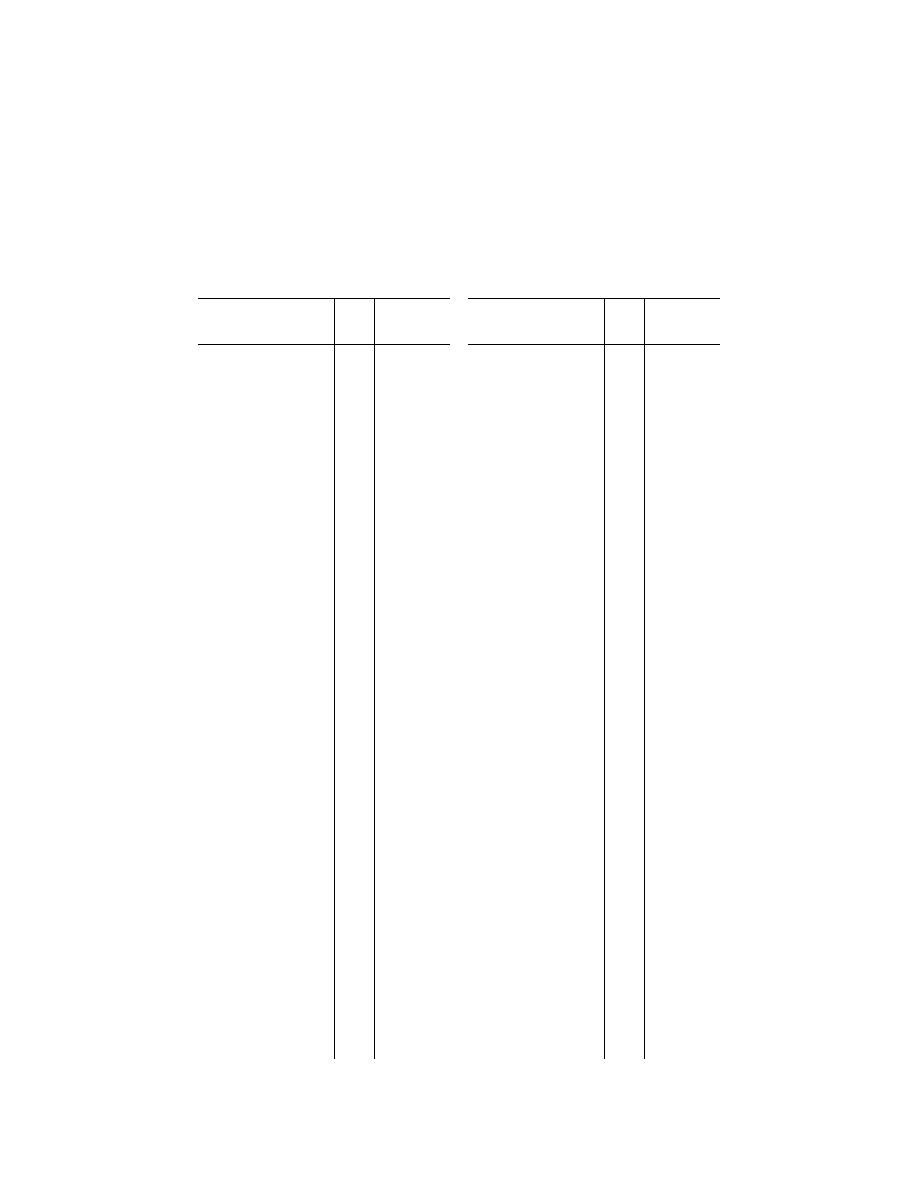
344
49 CFR Ch. I (10–1–23 Edition)
§ 172.101
T
ABLE
2
TO
A
PPENDIX
A—R
ADIONUCLIDES
—
Continued
(1)—Radionuclide
(2)—
Atomic
Num-
ber
(3)—Reportable
Quantity (RQ)
Ci (TBq)
Polonium-210
..........................
84
0.01 (.00037)
Potassium-40
...........................
19
1 (.037)
Potassium-42
...........................
19
100 (3.7)
Potassium-43
...........................
19
10 (.37)
Potassium-44
...........................
19
100 (3.7)
Potassium-45
...........................
19
1000 (37)
Praseodymium-136 ..................
59
1000 (37)
Praseodymium-137 ..................
59
1000 (37)
Praseodymium-138m ...............
59
100 (3.7)
Praseodymium-139 ..................
59
1000 (37)
Praseodymium-142 ..................
59
100 (3.7)
Praseodymium-142m ...............
59
1000 (37)
Praseodymium-143 ..................
59
10 (.37)
Praseodymium-144 ..................
59
1000 (37)
Praseodymium-145 ..................
59
1000 (37)
Praseodymium-147 ..................
59
1000 (37)
Promethium-141
......................
61
1000 (37)
Promethium-143
......................
61
100 (3.7)
Promethium-144
......................
61
10 (.37)
Promethium-145
......................
61
100 (3.7)
Promethium-146
......................
61
10 (.37)
Promethium-147
......................
61
10 (.37)
Promethium-148
......................
61
10 (.37)
Promethium-148m
...................
61
10 (.37)
Promethium-149
......................
61
100 (3.7)
Promethium-150
......................
61
100 (3.7)
Promethium-151
......................
61
100 (3.7)
Protactinium-227
.....................
91
100 (3.7)
Protactinium-228
.....................
91
10 (.37)
Protactinium-230
.....................
91
10 (.37)
Protactinium-231
.....................
91
0.01 (.00037)
Protactinium-232
.....................
91
10 (.37)
Protactinium-233
.....................
91
100 (3.7)
Protactinium-234
.....................
91
10 (.37)
RADIONUCLIDES $†
..............
1 (.037)
Radium-223
.............................
88
1 (.037)
Radium-224
.............................
88
10 (.37)
Radium-225
.............................
88
1 (.037)
Radium-226 **
.........................
88
0.1 (.0037)
Radium-227
.............................
88
1000 (37)
Radium-228
.............................
88
0.1 (.0037)
Radon-220
...............................
86
0.1 (.0037)
Radon-222
...............................
86
0.1 (.0037)
Rhenium-177
...........................
75
1000 (37)
Rhenium-178
...........................
75
1000 (37)
Rhenium-181
...........................
75
100 (3.7)
Rhenium-182 (12.7 hr)
............
75
10 (.37)
Rhenium-182 (64.0 hr)
............
75
10 (.37)
Rhenium-184
...........................
75
10 (.37)
Rhenium-184m
........................
75
10 (.37)
Rhenium-186
...........................
75
100 (3.7)
Rhenium-186m
........................
75
10 (.37)
Rhenium-187
...........................
75
1000 (37)
Rhenium-188
...........................
75
1000 (37)
Rhenium-188m
........................
75
1000 (37)
Rhenium-189
...........................
75
1000 (37)
Rhodium-100
...........................
45
10 (.37)
Rhodium-101
...........................
45
10 (.37)
Rhodium-101m
........................
45
100 (3.7)
Rhodium-102
...........................
45
10 (.37)
Rhodium-102m
........................
45
10 (.37)
Rhodium-103m
........................
45
1000 (37)
Rhodium-105
...........................
45
100 (3.7)
Rhodium-106m
........................
45
10 (.37)
Rhodium-107
...........................
45
1000 (37)
Rhodium-99
.............................
45
10 (.37)
Rhodium-99m
..........................
45
100 (3.7)
Rubidium-79
............................
37
1000 (37)
T
ABLE
2
TO
A
PPENDIX
A—R
ADIONUCLIDES
—
Continued
(1)—Radionuclide
(2)—
Atomic
Num-
ber
(3)—Reportable
Quantity (RQ)
Ci (TBq)
Rubidium-81
............................
37
100 (3.7)
Rubidium-81m
.........................
37
1000 (37)
Rubidium-82m
.........................
37
10 (.37)
Rubidium-83
............................
37
10 (.37)
Rubidium-84
............................
37
10 (.37)
Rubidium-86
............................
37
10 (.37)
Rubidium-87
............................
37
10 (.37)
Rubidium-88
............................
37
1000 (37)
Rubidium-89
............................
37
1000 (37)
Ruthenium-103
........................
44
10 (.37)
Ruthenium-105
........................
44
100 (3.7)
Ruthenium-106
........................
44
1 (.037)
Ruthenium-94
..........................
44
1000 (37)
Ruthenium-97
..........................
44
100 (3.7)
Samarium-141
.........................
62
1000 (37)
Samarium-141m
......................
62
1000 (37)
Samarium-142
.........................
62
1000 (37)
Samarium-145
.........................
62
100 (3.7)
Samarium-146
.........................
62
0.01 (.00037)
Samarium-147
.........................
62
0.01 (.00037)
Samarium-151
.........................
62
10 (.37)
Samarium-153
.........................
62
100 (3.7)
Samarium-155
.........................
62
1000 (37)
Samarium-156
.........................
62
100 (3.7)
Scandium-43
...........................
21
1000 (37)
Scandium-44
...........................
21
100 (3.7)
Scandium-44m
........................
21
10 (.37)
Scandium-46
...........................
21
10 (.37)
Scandium-47
...........................
21
100 (3.7)
Scandium-48
...........................
21
10 (.37)
Scandium-49
...........................
21
1000 (37)
Selenium-70
............................
34
1000 (37)
Selenium-73
............................
34
10 (.37)
Selenium-73m ..........................
34
100 (3.7)
Selenium-75
............................
34
10 (.37)
Selenium-79
............................
34
10 (.37)
Selenium-81
............................
34
1000 (37)
Selenium-81m ..........................
34
1000 (37)
Selenium-83
............................
34
1000 (37)
Silicon-31
.................................
14
1000 (37)
Silicon-32
.................................
14
1 (.037)
Silver-102
................................
47
100 (3.7)
Silver-103
................................
47
1000 (37)
Silver-104
................................
47
1000 (37)
Silver-104m
.............................
47
1000 (37)
Silver-105
................................
47
10 (.37)
Silver-106
................................
47
1000 (37)
Silver-106m
.............................
47
10 (.37)
Silver-108m
.............................
47
10 (.37)
Silver-110m
.............................
47
10 (.37)
Silver-111
................................
47
10 (.37)
Silver-112
................................
47
100 (3.7)
Silver-115
................................
47
1000 (37)
Sodium-22
...............................
11
10 (.37)
Sodium-24
...............................
11
10 (.37)
Strontium-80
............................
38
100 (3.7)
Strontium-81
............................
38
1000 (37)
Strontium-83
............................
38
100 (3.7)
Strontium-85
............................
38
10 (.37)
Strontium-85m
.........................
38
1000 (37)
Strontium-87m
.........................
38
100 (3.7)
Strontium-89
............................
38
10 (.37)
Strontium-90
............................
38
0.1 (.0037)
Strontium-91
............................
38
10 (.37)
Strontium-92
............................
38
100 (3.7)
Sulfur-35
..................................
16
1 (.037)
Tantalum-172
..........................
73
100 (3.7)
Tantalum-173
..........................
73
100 (3.7)
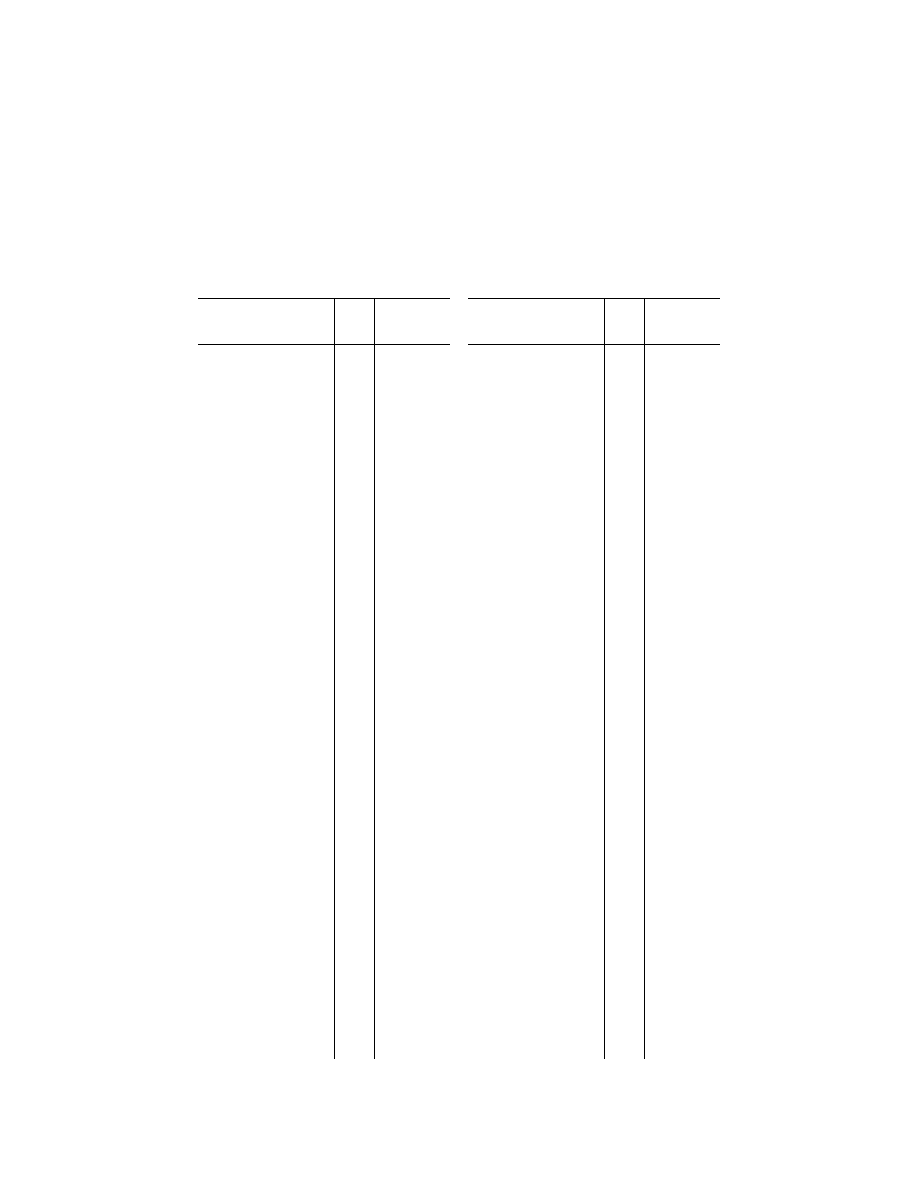
345
Pipeline and Haz. Matls. Safety Admin., DOT
§ 172.101
T
ABLE
2
TO
A
PPENDIX
A—R
ADIONUCLIDES
—
Continued
(1)—Radionuclide
(2)—
Atomic
Num-
ber
(3)—Reportable
Quantity (RQ)
Ci (TBq)
Tantalum-174
..........................
73
100 (3.7)
Tantalum-175
..........................
73
100 (3.7)
Tantalum-176
..........................
73
10 (.37)
Tantalum-177
..........................
73
1000 (37)
Tantalum-178
..........................
73
1000 (37)
Tantalum-179
..........................
73
1000 (37)
Tantalum-180
..........................
73
100 (3.7)
Tantalum-180m
.......................
73
1000 (37)
Tantalum-182
..........................
73
10 (.37)
Tantalum-182m
.......................
73
1000 (37)
Tantalum-183
..........................
73
100 (3.7)
Tantalum-184
..........................
73
10 (.37)
Tantalum-185
..........................
73
1000 (37)
Tantalum-186
..........................
73
1000 (37)
Technetium-101
.......................
43
1000 (37)
Technetium-104
.......................
43
1000 (37)
Technetium-93
.........................
43
100 (3.7)
Technetium-93m
......................
43
1000 (37)
Technetium-94
.........................
43
10 (.37)
Technetium-94m
......................
43
100 (3.7)
Technetium-96
.........................
43
10 (.37)
Technetium-96m
......................
43
1000 (37)
Technetium-97
.........................
43
100 (3.7)
Technetium-97m
......................
43
100 (3.7)
Technetium-98
.........................
43
10 (.37)
Technetium-99
.........................
43
10 (.37)
Technetium-99m
......................
43
100 (3.7)
Tellurium-116
...........................
52
1000 (37)
Tellurium-121
...........................
52
10 (.37)
Tellurium-121m
........................
52
10 (.37)
Tellurium-123
...........................
52
10 (.37)
Tellurium-123m
........................
52
10 (.37)
Tellurium-125m
........................
52
10 (.37)
Tellurium-127
...........................
52
1000 (37)
Tellurium-127m
........................
52
10 (.37)
Tellurium-129
...........................
52
1000 (37)
Tellurium-129m
........................
52
10 (.37)
Tellurium-131
...........................
52
1000 (37)
Tellurium-131m
........................
52
10 (.37)
Tellurium-132
...........................
52
10 (.37)
Tellurium-133
...........................
52
1000 (37)
Tellurium-133m
........................
52
1000 (37)
Tellurium-134
...........................
52
1000 (37)
Terbium-147
............................
65
100 (3.7)
Terbium-149
............................
65
100 (3.7)
Terbium-150
............................
65
100 (3.7)
Terbium-151
............................
65
10 (.37)
Terbium-153
............................
65
100 (3.7)
Terbium-154
............................
65
10 (.37)
Terbium-155
............................
65
100 (3.7)
Terbium-156
............................
65
10 (.37)
Terbium-156m (24.4 hr)
..........
65
1000 (37)
Terbium-156m (5.0 hr)
............
65
1000 (37)
Terbium-157
............................
65
100 (3.7)
Terbium-158
............................
65
10 (.37)
Terbium-160
............................
65
10 (.37)
Terbium-161
............................
65
100 (3.7)
Thallium-194
............................
81
1000 (37)
Thallium-194m
.........................
81
100 (3.7)
Thallium-195
............................
81
100 (3.7)
Thallium-197
............................
81
100 (3.7)
Thallium-198
............................
81
10 (.37)
Thallium-198m
.........................
81
100 (3.7)
Thallium-199
............................
81
100 (3.7)
Thallium-200
............................
81
10 (.37)
Thallium-201
............................
81
1000 (37)
Thallium-202
............................
81
10 (.37)
Thallium-204
............................
81
10 (.37)
T
ABLE
2
TO
A
PPENDIX
A—R
ADIONUCLIDES
—
Continued
(1)—Radionuclide
(2)—
Atomic
Num-
ber
(3)—Reportable
Quantity (RQ)
Ci (TBq)
Thorium (Irradiated)
.................
90
***
Thorium (Natural)
....................
90
**
Thorium-226
............................
90
100 (3.7)
Thorium-227
............................
90
1 (.037)
Thorium-228
............................
90
0.01 (.00037)
Thorium-229
............................
90
0.001 (.000037)
Thorium-230
............................
90
0.01 (.00037)
Thorium-231
............................
90
100 (3.7)
Thorium-232 **
........................
90
0.001 (.000037)
Thorium-234
............................
90
100 (3.7)
Thulium-162
.............................
69
1000 (37)
Thulium-166
.............................
69
10 (.37)
Thulium-167
.............................
69
100 (3.7)
Thulium-170
.............................
69
10 (.37)
Thulium-171
.............................
69
100 (3.7)
Thulium-172
.............................
69
100 (3.7)
Thulium-173
.............................
69
100 (3.7)
Thulium-175
.............................
69
1000 (37)
Tin-110
....................................
50
100 (3.7)
Tin-111
....................................
50
1000 (37)
Tin-113
....................................
50
10 (.37)
Tin-117m
.................................
50
100 (3.7)
Tin-119m
.................................
50
10 (.37)
Tin-121
....................................
50
1000 (37)
Tin-121m
.................................
50
10 (.37)
Tin-123
....................................
50
10 (.37)
Tin-123m
.................................
50
1000 (37)
Tin-125
....................................
50
10 (.37)
Tin-126
....................................
50
1 (.037)
Tin-127
....................................
50
100 (3.7)
Tin-128
....................................
50
1000 (37)
Titanium-44
..............................
22
1 (.037)
Titanium-45
..............................
22
1000 (37)
Tungsten-176
..........................
74
1000 (37)
Tungsten-177
..........................
74
100 (3.7)
Tungsten-178
..........................
74
100 (3.7)
Tungsten-179
..........................
74
1000 (37)
Tungsten-181
..........................
74
100 (3.7)
Tungsten-185
..........................
74
10 (.37)
Tungsten-187
..........................
74
100 (3.7)
Tungsten-188
..........................
74
10 (.37)
Uranium (Depleted)
.................
92
***
Uranium (Irradiated)
................
92
***
Uranium (Natural)
....................
92
**
Uranium Enriched 20% or great-
er
..........................................
92
***
Uranium Enriched less than
20%
......................................
92
***
Uranium-230
............................
92
1 (.037)
Uranium-231
............................
92
1000 (37)
Uranium-232
............................
92
0.01 (.00037)
Uranium-233
............................
92
0.1 (.0037)
Uranium-234 **
........................
92
0.1 (.0037)
Uranium-235 **
........................
92
0.1 (.0037)
Uranium-236
............................
92
0.1 (.0037)
Uranium-237
............................
92
100 (3.7)
Uranium-238 **
........................
92
0.1 (.0037)
Uranium-239
............................
92
1000 (37)
Uranium-240
............................
92
1000 (37)
Vanadium-47
...........................
23
1000 (37)
Vanadium-48
...........................
23
10 (.37)
Vanadium-49
...........................
23
1000 (37)
Xenon-120
...............................
54
100 (3.7)
Xenon-121
...............................
54
10 (.37)
Xenon-122
...............................
54
100 (3.7)
Xenon-123
...............................
54
10 (.37)
Xenon-125
...............................
54
100 (3.7)
Xenon-127
...............................
54
100 (3.7)
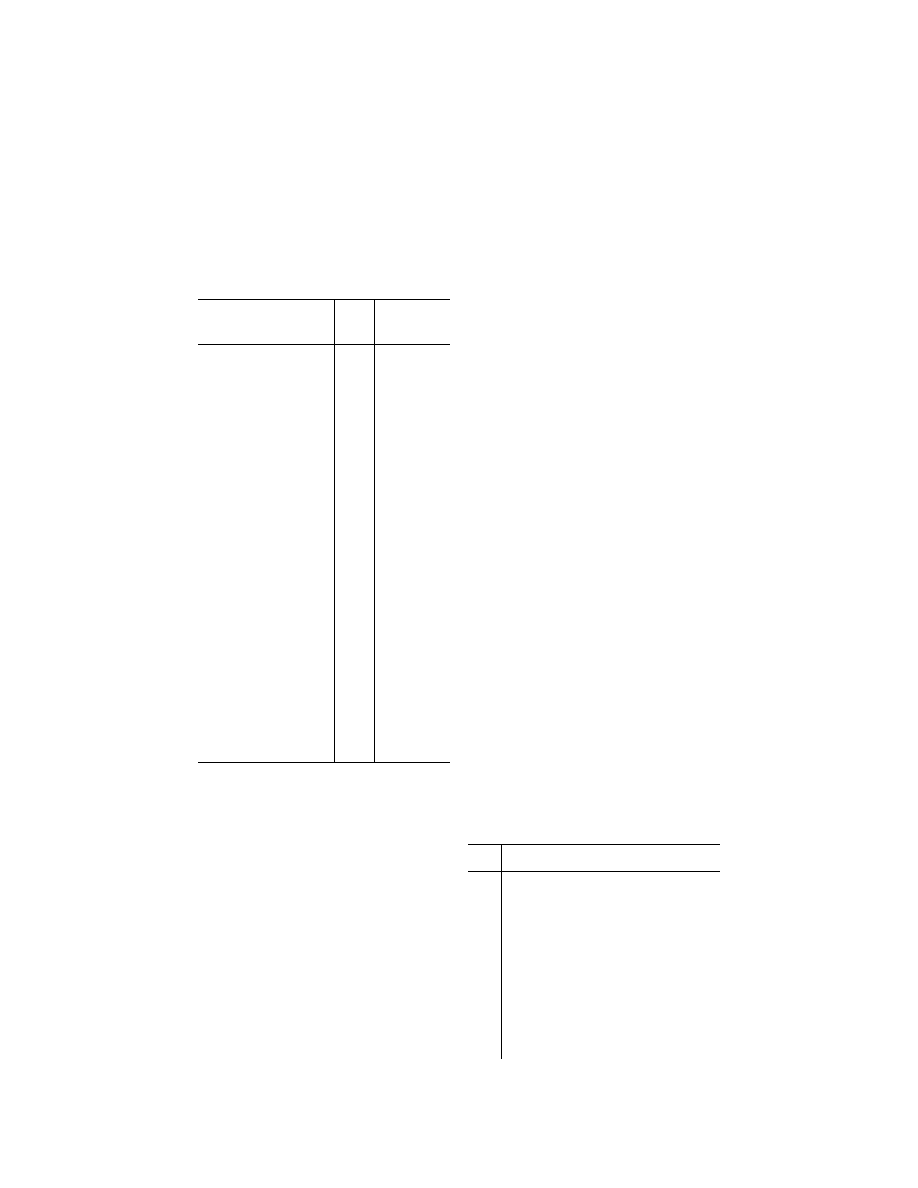
346
49 CFR Ch. I (10–1–23 Edition)
§ 172.101
T
ABLE
2
TO
A
PPENDIX
A—R
ADIONUCLIDES
—
Continued
(1)—Radionuclide
(2)—
Atomic
Num-
ber
(3)—Reportable
Quantity (RQ)
Ci (TBq)
Xenon-129m
............................
54
1000 (37)
Xenon-131m
............................
54
1000 (37)
Xenon-133
...............................
54
1000 (37)
Xenon-133m
............................
54
1000 (37)
Xenon-135
...............................
54
100 (3.7)
Xenon-135m
............................
54
10 (.37)
Xenon-138
...............................
54
10 (.37)
Ytterbium-162
..........................
70
1000 (37)
Ytterbium-166
..........................
70
10 (.37)
Ytterbium-167
..........................
70
1000 (37)
Ytterbium-169
..........................
70
10 (.37)
Ytterbium-175
..........................
70
100 (3.7)
Ytterbium-177
..........................
70
1000 (37)
Ytterbium-178
..........................
70
1000 (37)
Yttrium-86
................................
39
10 (.37)
Yttrium-86m
.............................
39
1000 (37)
Yttrium-87
................................
39
10 (.37)
Yttrium-88
................................
39
10 (.37)
Yttrium-90
................................
39
10 (.37)
Yttrium-90m
.............................
39
100 (3.7)
Yttrium-91
................................
39
10 (.37)
Yttrium-91m
.............................
39
1000 (37)
Yttrium-92
................................
39
100 (3.7)
Yttrium-93
................................
39
100 (3.7)
Yttrium-94
................................
39
1000 (37)
Yttrium-95
................................
39
1000 (37)
Zinc-62
.....................................
30
100 (3.7)
Zinc-63
.....................................
30
1000 (37)
Zinc-65
.....................................
30
10 (.37)
Zinc-69
.....................................
30
1000 (37)
Zinc-69m
..................................
30
100 (3.7)
Zinc-71m
..................................
30
100 (3.7)
Zinc-72
.....................................
30
100 (3.7)
Zirconium-86
............................
40
100 (3.7)
Zirconium-88
............................
40
10 (.37)
Zirconium-89
............................
40
100 (3.7)
Zirconium-93
............................
40
1 (.037)
Zirconium-95
............................
40
10 (.37)
Zirconium-97
............................
40
10 (.37)
$ The RQs for all radionuclides apply to chemical com-
pounds containing the radionuclides and elemental forms re-
gardless of the diameter of pieces of solid material.
† The RQ of one curie applies to all radionuclides not oth-
erwise listed. Whenever the RQs in TABLE 1—HAZARDOUS
SUBSTANCES OTHER THAN RADIONUCLIDES and this
table conflict, the lowest RQ shall apply. For example, uranyl
acetate and uranyl nitrate have RQs shown in TABLE 1 of
100 pounds, equivalent to about one-tenth the RQ level for
uranium-238 in this table.
** The method to determine the RQs for mixtures or solu-
tions of radionuclides can be found in paragraph 7 of the note
preceding TABLE 1 of this appendix. RQs for the following
four common radionuclide mixtures are provided: radium-226
in secular equilibrium with its daughters (0.053 curie); natural
uranium (0.1 curie); natural uranium in secular equilibrium
with its daughters (0.052 curie); and natural thorium in secular
equilibrium with its daughters (0.011 curie).
*** Indicates that the name was added by PHMSA because
it appears in the list of radionuclides in 49 CFR 173.435. The
reportable quantity (RQ), if not specifically listed elsewhere in
this appendix, shall be determined in accordance with the pro-
cedures in paragraph 7 of this appendix.
A
PPENDIX
B
TO
§ 172.101—L
IST OF
M
ARINE
P
OLLUTANTS
1. See § 171.4 of this subchapter for applica-
bility to marine pollutants. This appendix
lists potential marine pollutants as defined
in § 171.8 of this subchapter.
2. Marine pollutants listed in this appendix
are not necessarily listed by name in the
§ 172.101 Table. If a marine pollutant not list-
ed by name or by synonym in the § 172.101
Table meets the definition of any hazard
Class 1 through 8, then you must determine
the class and division of the material in ac-
cordance with § 173.2a of this subchapter. You
must also select the most appropriate haz-
ardous material description and proper ship-
ping name. If a marine pollutant not listed
by name or by synonym in the § 172.101 Table
does not meet the definition of any Class 1
through 8, then you must offer it for trans-
portation under the most appropriate of the
following two Class 9 entries: ‘‘Environ-
mentally hazardous substances, liquid,
n.o.s.,’’ UN3082, or ‘‘Environmentally haz-
ardous substances, solid, n.o.s.’’ UN3077.
3. This appendix contains two columns.
The first column, entitled ‘‘S.M.P.’’ (for se-
vere marine pollutants), identifies whether a
material is a severe marine pollutant. If the
letters ‘‘PP’’ appear in this column for a ma-
terial, the material is a severe marine pol-
lutant, otherwise it is not. The second col-
umn, entitled ‘‘Marine Pollutant’’ , lists the
marine pollutants.
4. If a material is not listed in this appen-
dix and meets the criteria for a marine pol-
lutant as provided in Chapter 2.9 of the
IMDG Code, (incorporated by reference; see
§ 171.7 of this subchapter), the material may
be transported as a marine pollutant in ac-
cordance with the applicable requirements of
this subchapter.
5. If a material or a solution meeting the
definition of a marine pollutant in § 171.8 of
this subchapter does not meet the criteria
for a marine pollutant as provided in section
2.9.3.3 and 2.9.3.4 of the IMDG Code, (incor-
porated by reference; see § 171.7 of this sub-
chapter), it may be excepted from the re-
quirements of this subchapter as a marine
pollutant if that exception is approved by
the Associate Administrator.
L
IST OF
M
ARINE
P
OLLUTANTS
S.M.P.
(1)
Marine pollutant
(2)
Acetone cyanohydrin, stabilized
Acetylene tetrabromide
Acetylene tetrachloride
Acraldehyde, inhibited
Acroleic acid, stabilized
Acrolein, inhibited
Acrolein, stabilized
Acrylic acid, stabilized
Acrylic aldehyde, inhibited
Alcohol C-12 - C-16 poly(1-6) ethoxylate
Alcohol C-6 - C-17 (secondary)poly(3-6) ethoxylate
Aldicarb
PP
Aldrin
Alkyl (c12-c14) dimethylamine
Alkyl (c7-c9) nitrates
Alkybenzenesulphonates, branched and straight
chain (excluding C11–C13 straight chain or
branched chain homologues)
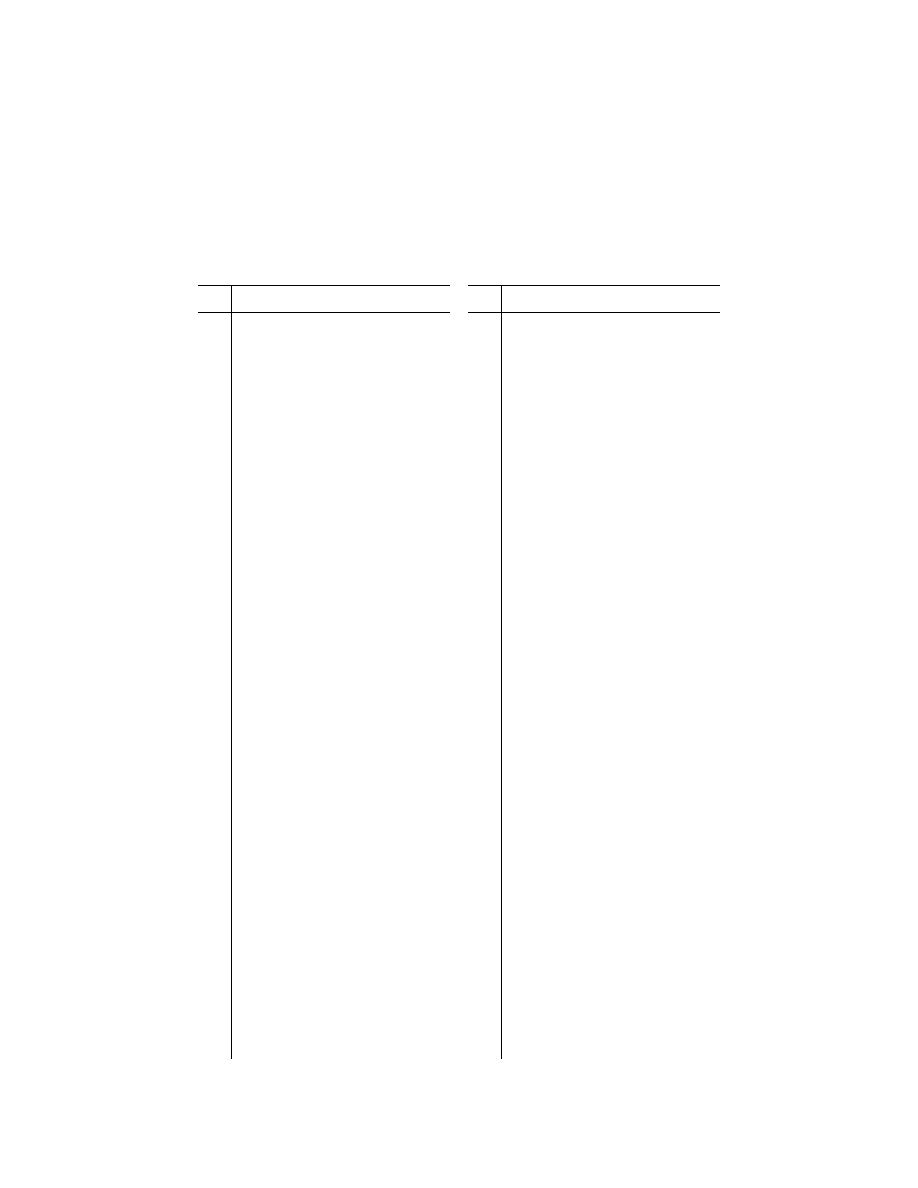
347
Pipeline and Haz. Matls. Safety Admin., DOT
§ 172.101
L
IST OF
M
ARINE
P
OLLUTANTS
—Continued
S.M.P.
(1)
Marine pollutant
(2)
Allyl alcohol
Allyl bromide
ortho-Aminoanisole
Aminobenzene
Aminocarb
Ammonia, anhydrous (I)
Ammonia solution, relative density less than 0.880 at
15 degrees C in water, with more than 50 percent
ammonia
Ammonia solution relative density less than 0.880 at
15 degrees C in water, with more than 35% but
not more than 50% ammonia
Ammonia solution, relative density between 0.880
and 0.957 at 15 degrees C in water, with more
than 10 percent but not more than 35 percent am-
monia, by mass
Ammonium dinitro-o-cresolate
n-Amylbenzene
Aniline
Aniline oil
PP
Azinphos-ethyl
PP
Azinphos-methyl
Barium cyanide
Bendiocarb
Benomyl
Benquinox
Benzyl chlorocarbonate
Benzyl chloroformate
PP
Binapacryl
N,N-Bis (2-hydroxyethyl) oleamide (LOA)
Bleaching powder
PP
Brodifacoum
Bromine cyanide
Bromoacetone
Bromoallylene
Bromobenzene
ortho-Bromobenzyl cyanide
Bromocyane
Bromoform
PP
Bromophos-ethyl
3-Bromopropene
Bromoxynil
Butanedione
2-Butenal, stabilized
Butyl benzyl phthalate
Butylbenzenes
N-tert-butyl-N-cyclopropyl-6-methylthio-1,3,5-triazine-
2,4-diamine
2,4-Di-tert-butylphenol
PP
2, 6-Di-tert-Butylphenol
para-tertiary-butyltoluene
PP
Cadmium compounds
Cadmium sulphide
Calcium arsenate
Calcium arsenate and calcium arsenite, mixtures,
solid
Calcium cyanide
Calcium hypochlorite, dry with more than 39% avail-
able chlorine (8.8% available oxygen)
Calcium hypochlorite mixture, dry with more than
10% but not more than 39% available chlorine
Calcium hypochlorite mixture, dry with more than
39% available chlorine (8.8% available oxygen)
Calcium hypochlorite mixture, dry, corrosive with
more than 10% but not more than 39% available
chlorine
Calcium hypochlorite mixture, dry, corrosive with
more than 39% available chlorine (8.8% available
oxygen)
Calcium hypochlorite, hydrated with not less than
5.5% but not more than 16% water
L
IST OF
M
ARINE
P
OLLUTANTS
—Continued
S.M.P.
(1)
Marine pollutant
(2)
Calcium hypochlorite, hydrated, corrosive with not
less than 5.5% but not more than 16% water
Calcium hypochlorite, hydrated mixture with not less
than 5.5% but not more than 16% water
Calcium hypochlorite, hydrated mixture, corrosive
with not less than 5.5% but not more than 16%
water
PP
Camphechlor
Carbaryl
Carbendazim
Carbofuran
Carbon tetrabromide
Carbon tetrachloride
PP
Carbophenothion
Cartap hydrochloride
PP
Chlordane
Chlorfenvinphos
PP
Chlorinated paraffins (C-10 - C-13)
PP
Chlorinated paraffins (C14–C17), with more than 1%
shorter chain length
Chlorine
Chlorine cyanide, inhibited
Chlormephos
Chloroacetone, stabilized
1-Chloro-2,3-Epoxypropane
2-Chloro-6-nitrotoluene
4-Chloro-2-nitrotoluene
Chloro-ortho-nitrotoluene
2-Chloro-5-trifluoromethylnitrobenzene
para-Chlorobenzyl chloride, liquid or solid
Chlorodinitrobenzenes, liquid or solid
1-Chloroheptane
1-Chlorohexane
Chloronitroanilines
Chloronitrotoluenes, liquid
Chloronitrotoluenes, solid
1-Chlorooctane
PP
Chlorophenolates, liquid
PP
Chlorophenolates, solid
Chlorophenyltrichlorosilane
Chloropicrin
alpha-Chloropropylene
ortho-Chlorotoluene
PP
Chlorpyriphos
PP
Chlorthiophos
Cocculus
Coconitrile
Copper acetoarsenite
Copper arsenite
PP
Copper chloride
PP
Copper chloride solution
PP
Copper cyanide
PP
Copper metal powder
PP
Copper sulphate, anhydrous, hydrates
Coumachlor
PP
Coumaphos
Creosote salts
PP
Cresyl diphenyl phosphate
Crotonaldehyde, stabilized
Crotonic aldehyde, stabilized
Crotoxyphos
Cupric arsenite
PP
Cupric chloride
PP
Cupric cyanide
PP
Cupric sulfate
Cupriethylenediamine solution
PP
Cuprous chloride
Cyanide mixtures
Cyanide solutions
Cyanides, inorganic, n.o.s.
Cyanogen bromide
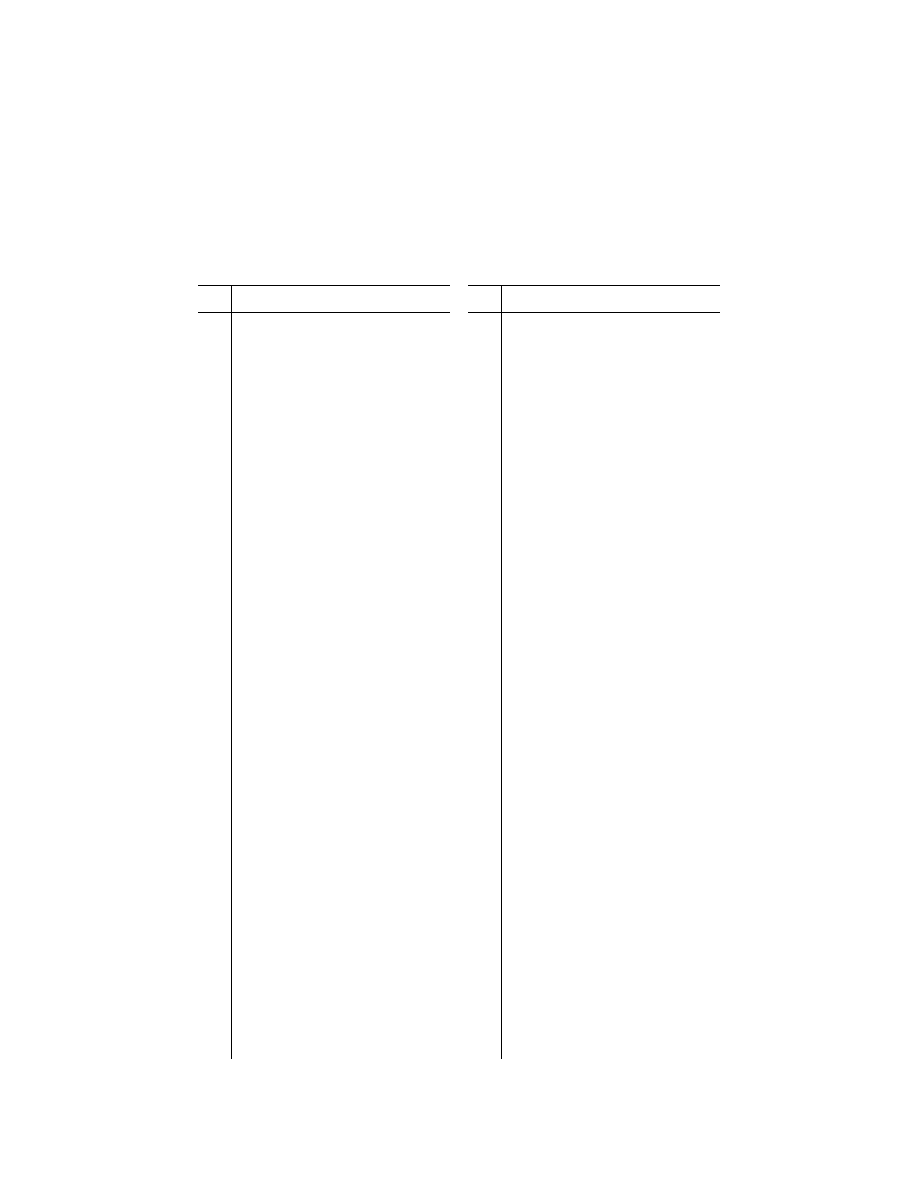
348
49 CFR Ch. I (10–1–23 Edition)
§ 172.101
L
IST OF
M
ARINE
P
OLLUTANTS
—Continued
S.M.P.
(1)
Marine pollutant
(2)
Cyanogen chloride, inhibited
Cyanogen chloride, stabilized
Cyanophos
PP
1,5,9-Cyclododecatriene
Cycloheptane
PP
Cyhexatin
PP
Cymenes (o-;m-;p-)
PP
Cypermethrin
Decyl acrylate
PP
DDT
Decycloxytetrahydrothiophene dioxide
DEF
Desmedipham
Di-allate
Di-n-Butyl phthalate
PP
Dialifos
4,4
′
-Diaminodiphenylmethane
PP
Diazinon
1,3-Dibromobenzene
PP
Dichlofenthion
Dichloroanilines
1,3-Dichlorobenzene
1,4-Dichlorobenzene
Dichlorobenzene (meta-; para-)
2,2-Dichlorodiethyl ether
Dichlorodimethyl ether, symmetrical
Di-(2-chloroethyl) ether
1,1-Dichloroethylene, inhibited
1,6-Dichlorohexane
2,4-Dichlorophenol
Dichlorophenyltrichlorosilane
1,3-Dichloropropene
PP
Dichlorvos
PP
Diclofop-methyl
Dicrotophos
PP
Dieldrin
Diisopropylbenzenes
Diisopropylnaphthalenes, mixed isomers
PP
Dimethoate
Dimethyl disulphide
PP
N,N-Dimethyldodecylamine
Dimethylhydrazine, symmetrical
Dimethylhydrazine, unsymmetrical
Dinitro-o-cresol, solid
Dinitro-o-cresol, solution
Dinitrochlorobenzenes, liquid or solid
Dinitrophenol, dry or wetted with less than 15 per
cent water, by mass
Dinitrophenol solutions
Dinitrophenol, wetted with not less than 15 per cent
water, by mass
Dinitrophenolates alkali metals, dry or wetted with
less than 15 per cent water, by mass
Dinitrophenolates, wetted with not less than 15 per
cent water, by mass
Dinitrotoluenes, liquid
Dinitrotoluenes, molton
Dintrotoluenes, solid
Dinobuton
Dinoseb
Dinoseb acetate
Dioxacarb
Dioxathion
Dipentene
Diphacinone
Diphenyl
PP
Diphenylamine chloroarsine
PP
Diphenylchloroarsine, solid or liquid
Disulfoton
1,4-Di-tert-butylbenzene
DNOC
L
IST OF
M
ARINE
P
OLLUTANTS
—Continued
S.M.P.
(1)
Marine pollutant
(2)
DNOC (pesticide)
Dodecene (except 1-dodecene)
Dodecyl diphenyl oxide disulphonate
PP
Dodecyl hydroxypropyl sulfide
1-Dodecylamine
PP
Dodecylphenol
Drazoxolon
Edifenphos
PP
Endosulfan
PP
Endrin
Epibromohydrin
Epichlorohydrin
PP
EPN
PP
Esfenvalerate
PP
Ethion
Ethoprophos
Ethyl fluid
Ethyl mercaptan
2-Ethylhexyl nitrate
2-Ethyl-3-propylacrolein
Ethyl tetraphosphate
Ethyldichloroarsine
Ethylene dibromide and methyl bromide mixtures,
liquid
2-Ethylhexaldehyde
Fenamiphos
PP
Fenbutatin oxide
PP
Fenchlorazole-ethyl
PP
Fenitrothion
PP
Fenoxapro-ethyl
PP
Fenoxaprop-P-ethyl
PP
Fenpropathrin
Fensulfothion
PP
Fenthion
PP
Fentin acetate
PP
Fentin hydroxide
Ferric arsenate
Ferric arsenite
Ferrous arsenate
PP
Fonofos
Formetanate
PP
Furathiocarb (ISO)
PP
gamma-BHC
Gasoline, leaded
PP
Heptachlor
Heptanes
Heptenophos
n-Heptaldehyde
n-Heptylbenzene
normal-Heptyl chloride
PP
Hexachlorobutadiene
PP
1,3-Hexachlorobutadiene
Hexaethyl tetraphosphate liquid
Hexaethyl tetraphosphate, solid
Hexane
normal-Hexyl chloride
n-Hexylbenzene
Hydrocyanic acid, anhydrous, stabilized, containing
less than 3% water
Hydrocyanic acid, anhydrous, stabilized, containing
less than 3% water and absorbed in a porous inert
material
Hydrocyanic acid, aqueous solutions not more than
20% hydrocyanic acid
Hydrogen cyanide solution in alcohol, with not more
than 45% hydrogen cyanide
Hydrogen cyanide, stabilized with less than 3%
water
Hydrogen cyanide, stabilized with less than 3%
water and absorbed in a porous inert material
Hydroxydimethylbenzenes, liquid or solid
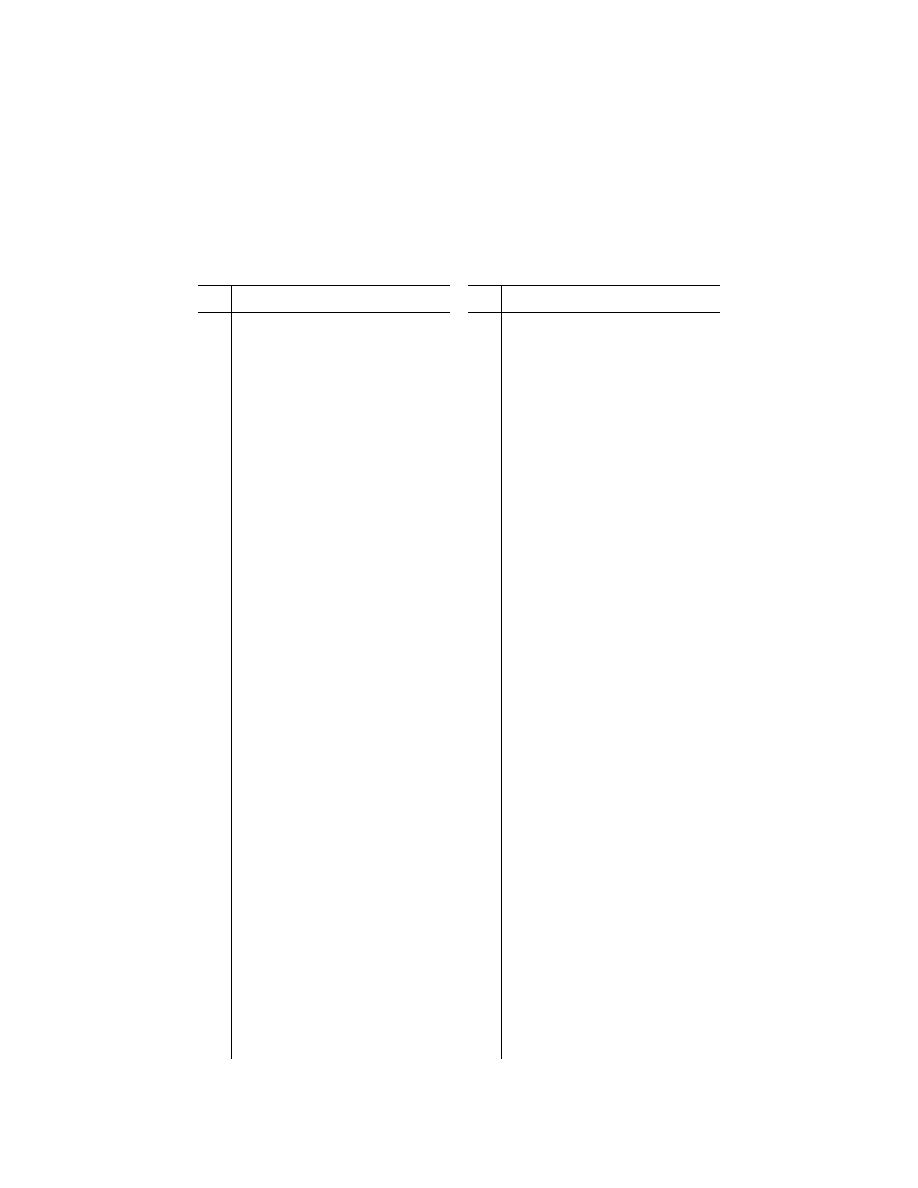
349
Pipeline and Haz. Matls. Safety Admin., DOT
§ 172.101
L
IST OF
M
ARINE
P
OLLUTANTS
—Continued
S.M.P.
(1)
Marine pollutant
(2)
Hypochlorite solutions
Ioxynil
Isobenzan
Isobutyl butyrate
Isobutylbenzene
Isodecyl acrylate
Isodecyl diphenyl phosphate
Isofenphos
Isooctane
Isooctyl nitrate
Isoprene, stabilized
Isoprocarb
Isotetramethylbenzene
PP
Isoxathion
Lead acetate
Lead arsenates
Lead arsenites
Lead compounds, soluble, n.o.s.
Lead cyanide
Lead nitrate
Lead perchlorate, solid or solution
Lead tetraethyl
Lead tetramethyl
PP
Lindane
Linuron
London Purple
Magnesium arsenate
Malathion
Mancozeb (ISO)
Maneb
Maneb preparations with not less than 60% maneb
Maneb preparation, stabilized against self-heating
Maneb stabilized or Maneb preparations, stabilized
against self-heating
Manganese ethylene-1,2-bis dithiocarbamate
Manganese ethylene-1,2-bis-dithiocarbamate, sta-
bilized against self-heating
Mecarbam
Mephosfolan
Mercaptodimethur
PP
Mercuric acetate
PP
Mercuric ammonium chloride
PP
Mercuric arsenate
PP
Mercuric benzoate
PP
Mercuric bisulphate
PP
Mercuric bromide
PP
Mercuric chloride
PP
Mercuric cyanide
PP
Mercuric gluconate
Mercuric iodide
PP
Mercuric nitrate
PP
Mercuric oleate
PP
Mercuric oxide
PP
Mercuric oxycyanide, desensitized
PP
Mercuric potassium cyanide
PP
Mercuric Sulphate
PP
Mercuric thiocyanate
PP
Mercurol
PP
Mercurous acetate
PP
Mercurous bisulphate
PP
Mercurous bromide
PP
Mercurous chloride
PP
Mercurous nitrate
PP
Mercurous salicylate
PP
Mercurous sulphate
PP
Mercury acetates
PP
Mercury ammonium chloride
PP
Mercury based pesticide, liquid, flammable, toxic
PP
Mercury based pesticides, liquid, toxic, flammable
PP
Mercury based pesticides, liquid, toxic
PP
Mercury based pesticides, solid, toxic
L
IST OF
M
ARINE
P
OLLUTANTS
—Continued
S.M.P.
(1)
Marine pollutant
(2)
PP
Mercury benzoate
PP
Mercury bichloride
PP
Mercury bisulphates
PP
Mercury bromides
PP
Mercury compounds, liquid, n.o.s.
PP
Mercury compounds, solid, n.o.s.
PP
Mercury cyanide
PP
Mercury gluconate
PP
Mercury (I) (mercurous) compounds (pesticides)
PP
Mercury (II) (mercuric) compounds (pesticides)
Mercury iodide
PP
Mercury nucleate
PP
Mercury oleate
PP
Mercury oxide
PP
Mercury oxycyanide, desensitized
PP
Mercury potassium cyanide
PP
Mercury potassium iodide
PP
Mercury salicylate
PP
Mercury sulfates
PP
Mercury thiocyanate
Mesitylene
Metam-sodium
Methamidophos
Methanethiol
Methidathion
Methomyl
ortho-Methoxyaniline
Methyl bromide and ethylene dibromide mixtures, liq-
uid
Methyl disulphide
Methyl mercaptan
2-Methyl-2-phenylpropane
3-Methylacroleine, stabilized
N-Methylaniline
Methylchlorobenzenes
Methylcyclohexane
Methyldinitrobenzenes, liquid
Methyldinitrobenzenes, molten
Methyldinitrobenzenes, solid
Methyldithiomethane
2-Methylheptane
Methylnitrophenols
2-Methylpentane
3-Methylpyradine
Methyltrithion
Methylvinylbenzenes, inhibited
PP
Mevinphos
Mexacarbate
Mirex
Monocrotophos
Motor fuel anti-knock mixtures
Motor fuel anti-knock mixtures or compounds
Nabam
Naled
Naphthalene, crude or Naphthalene, refined
Napthalene, molten
PP
Nickel carbonyl
PP
Nickel cyanide
PP
Nickel tetracarbonyl
3-Nitro-4-chlorobenzotrifluoride
Nitrobenzene
Nitrobenzotrifluorides, liquid or solid
Nonanes
Nonylphenol
normal-Octaldehyde
Octanes
Oleylamine
PP
Organotin compounds, liquid, n.o.s.
PP
Organotin compounds (pesticides)
PP
Organotin compounds, solid, n.o.s.
PP
Organotin pesticides, liquid, flammable, toxic, n.o.s.,
flash point less than 23deg C
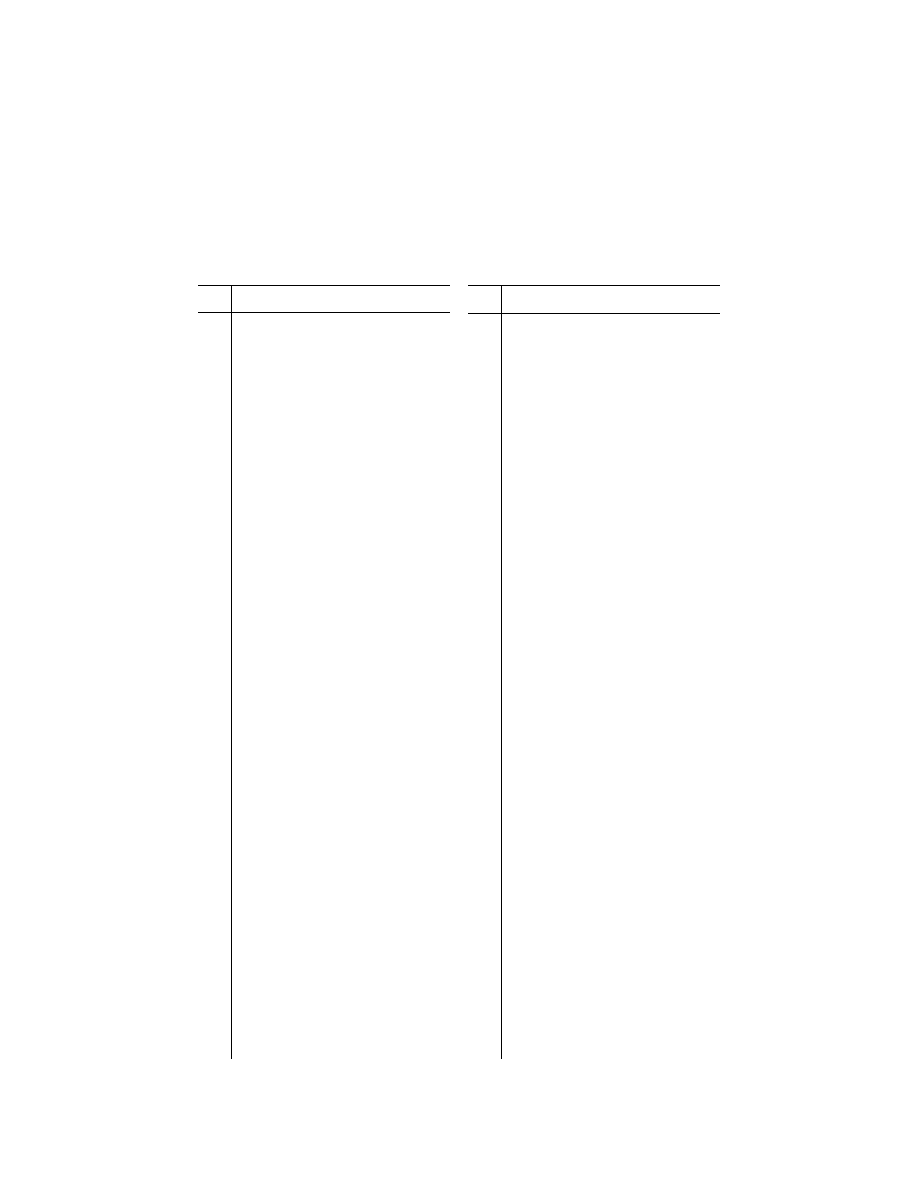
350
49 CFR Ch. I (10–1–23 Edition)
§ 172.101
L
IST OF
M
ARINE
P
OLLUTANTS
—Continued
S.M.P.
(1)
Marine pollutant
(2)
PP
Organotin pesticides, liquid, toxic, flammable, n.o.s.
PP
Organotin pesticides, liquid, toxic, n.o.s.
PP
Organotin pesticides, solid, toxic, n.o.s.
Orthoarsenic acid
PP
Osmium tetroxide
Oxamyl
Oxydisulfoton
Paraoxon
PP
Parathion
PP
Parathion-methyl
PP
PCBs.
Pentachloroethane
PP
Pentachlorophenol
Pentalin
n-Pentylbenzene
Perchloroethylene
Perchloromethylmercaptan
Petrol, leaded
PP
Phenarsazine chloride
d-Phenothrin
PP
Phenthoate
Phenylamine
1-Phenylbutane
2-Phenylbutane
Phenylcyclohexane
PP
Phenylmercuric acetate
PP
Phenylmercuric compounds, n.o.s.
PP
Phenylmercuric hydroxide
PP
Phenylmercuric nitrate
PP
Phorate
PP
Phosalone
Phosmet
PP
Phosphamidon
PP
Phosphorus, white, molten
PP
Phosphorus, white or yellow dry or under water or in
solution
PP
Phosphorus white, or yellow, molten
PP
Phosphorus, yellow, molten
Pindone (and salts of)
Pine Oil
alpha-Pinene
Pirimicarb
PP
Pirimiphos-ethyl
PP
Polychlorinated biphenyls
PP
Polyhalogenated biphenyls, liquid or Terphenyls liq-
uid
PP
Polyhalogenated biphenyls, solid or Terphenyls,
solid
PP
Potassium cuprocyanide
Potassium cyanide, solid
Potassium cyanide, solution
PP
Potassium cyanocuprate (I)
PP
Potassium cyanomercurate
PP
Potassium mercuric iodide
Promecarb
Propachlor
Propaphos
Propenal, inhibited
Propenoic acid, stabilized
Propenyl alcohol
Propoxur
Propylene tetramer
Prothoate
Prussic acid, anhydrous, stabilized
Prussic acid, anhydrous, stabilized, absorbed in a
porous inert material
PP
Pyrazophos
Quinalphos
PP
Quizalofop
PP
Quizalofop-p-ethyl
Rotenone
L
IST OF
M
ARINE
P
OLLUTANTS
—Continued
S.M.P.
(1)
Marine pollutant
(2)
Salithion
PP
Silafluofen
Silver arsenite
Silver cyanide
Silver orthoarsenite
PP
Sodium copper cyanide, solid
PP
Sodium copper cyanide solution
PP
Sodium cuprocyanide, solid
PP
Sodium cuprocyanide, solution
Sodium cyanide, solid
Sodium cyanide, solution
Sodium dinitro-o-cresolate, dry or wetted with less
than 15 per cent water, by mass
Sodium dinitro-ortho-cresolate, wetted with not less
than 15 per cent water, by mass
Sodium hypochlorite solution
PP
Sodium pentachlorophenate
Strychnine or Strychnine salts
Sulfotep
PP
Sulprophos
Tallow nitrile
Temephos
TEPP
PP
Terbufos
Tetrabromoethane
Tetrabromomethane
1,1,2,2-Tetrachloroethane
Tetrachloroethylene
Tetrachloromethane
Tetraethyl dithiopyrophosphate
PP
Tetraethyl lead, liquid
Tetramethrin
Tetramethyllead
Tetrapropylene
Thallium chlorate
Thallium compounds, n.o.s.
Thallium compounds (pesticides)
Thallium nitrate
Thallium sulfate
Thallous chlorate
Thiocarbonyl tetrachloride
Toluidines, liquid
Toluidines, solid
Triaryl phosphates, isopropylated
PP
Triaryl phosphates, n.o.s.
Triazophos
Tribromomethane
PP
Tributyltin compounds
Trichlorfon
PP
1,2,3—Trichlorobenzene
Trichlorobenzenes, liquid
Trichlorobutene
Trichlorobutylene
Trichloromethane sulphuryl chloride
Trichloromethyl sulphochloride
Trichloronat
Tricresyl phosphate (less than 1% ortho-isomer)
PP
Tricresyl phosphate, not less than 1% ortho-isomer
but not more than 3% orthoisomer
PP
Tricresyl phosphate with more than 3 per cent ortho
isomer
Triethylbenzene
Triisopropylated phenyl phosphates
1,3,5-Trimethylbenzene
Trimethylene dichloride
2,2,4-Trimethylpentane
PP
Triphenylphosphate
Triphenyl phosphate/tert-butylated triphenyl
phosphates mixtures containing 5% to 10%
triphenyl phosphates
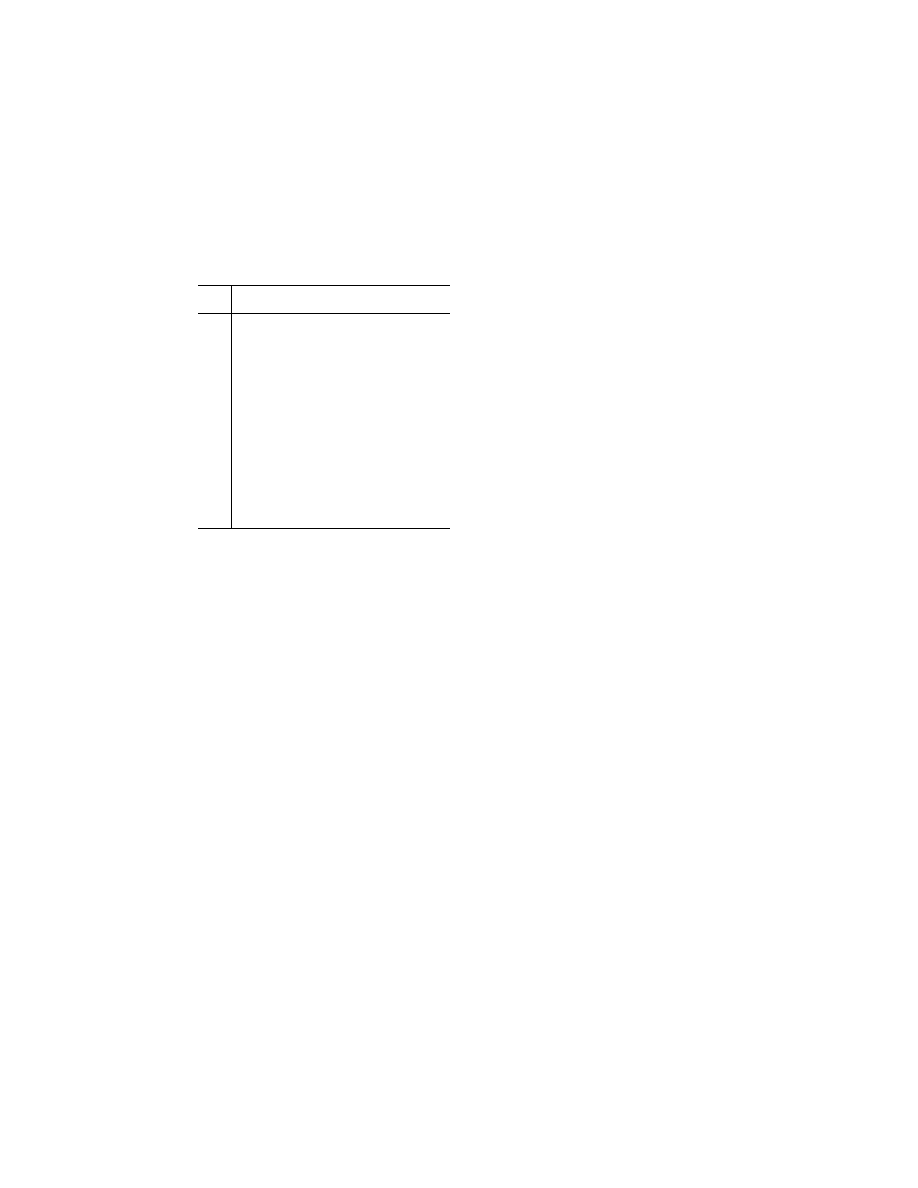
351
Pipeline and Haz. Matls. Safety Admin., DOT
§ 172.101, Nt.
L
IST OF
M
ARINE
P
OLLUTANTS
—Continued
S.M.P.
(1)
Marine pollutant
(2)
PP
Triphenyl phosphate/tert-butylated triphenyl
phosphates mixtures containing 10% to 48%
triphenyl phosphates
PP
Triphenyltin compounds
Tripropylene
Tritolyl phosphate (less than 1% ortho-isomer)
PP
Tritolyl phosphate (not less than 1% ortho-isomer)
Trixylenyl phosphate
Turpentine
Vinylidene chloride, stabilized
Warfarin (and salts of)
PP
White phosphorus, dry
PP
White phosphorus, wet
White spirit, low (15-20%) aromatic
PP
Yellow phosphorus, dry
PP
Yellow phosphorus, wet
Zinc bromide
Zinc chloride, anhydrous
Zinc chloride solution
Zinc cyanide
[Amdt. 172–173, 55 FR 52474, Dec. 21, 1990]
E
DITORIAL
N
OTE
: For F
EDERAL
R
EGISTER
ci-
tations affecting § 172.101, see the List of CFR
Sections Affected, which appears in the
Finding Aids section of the printed volume
and at
www.govinfo.gov.
E
FFECTIVE
D
ATE
N
OTE
: At 88 FR 60373,
Sept. 1, 2023, the Hazardous Materials Table
in § 172.101 was amended by revising the
entry for ‘‘Methane, refrigerated liquid
(cryo-
genic liquid) or
Natural gas, refrigerated liq-
uid
(cryogenic liquid), with high methane con-
tent)
’’, effective Oct. 31, 2023. For the conven-
ience of the user, the revised text is set forth
as follows:
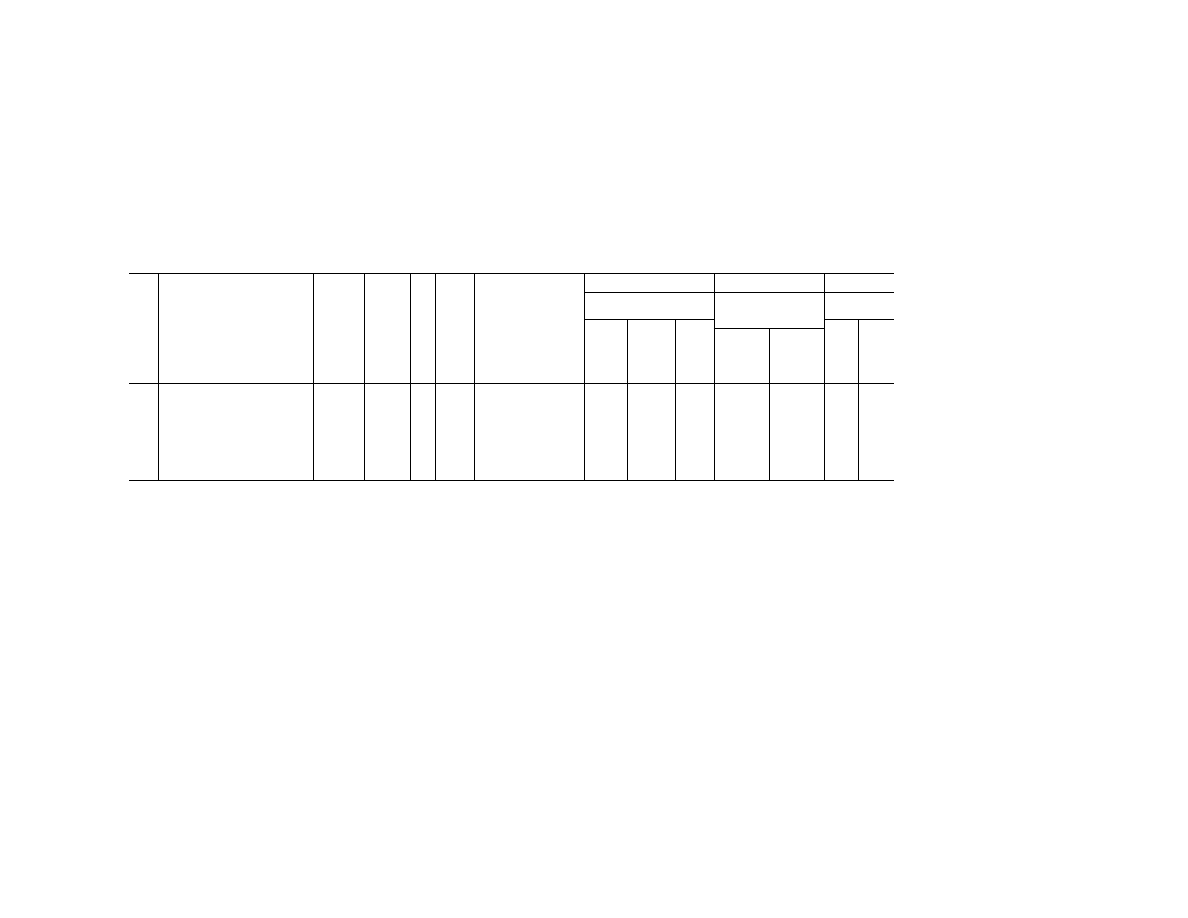
352
49 CFR Ch. I (10–1–23 Edition)
§
172.101, Nt.
§ 172.101
Purpose and use of the hazardous materials table.
* * * * *
§ 172.101
H
AZARDOUS
M
ATERIALS
T
ABLE
Sym-
bols
Hazardous materials descriptions
and proper shipping names
Hazard
class or
division
Identi-
fication
Nos.
PG
Label
codes
Special provisions
(§ 172.102)
(8)
(9)
(10)
Packaging
(§ 173.***)
Quantity limitations
(see §§ 173.27 and
175.75)
Vessel stow-
age
Excep-
tions
Non-bulk
Bulk
Passenger
aircraft/rail
Cargo
aircraft
only
Loca-
tion
Other
(1)
(2)
(3)
(4)
(5)
(6)
(7)
(8A)
(8B)
(8C)
(9A)
(9B)
(10A)
(10B)
*
*
*
*
*
*
*
Methane, refrigerated liquid (cryo-
genic liquid) or Natural gas, re-
frigerated liquid (cryogenic liquid,
with high methane content)
2.1 UN1972
......
2.1
T75, TP5, 439, 440 None
None
318,
319
Forbidden
Forbidden
D
40
*
*
*
*
*
*
*
* * * * *

353
Pipeline and Haz. Matls. Safety Admin., DOT
§ 172.102
§ 172.102
Special provisions.
(a)
General.
When column 7 of the
§ 172.101 table refers to a special provi-
sion for a hazardous material, the
meaning and requirements of that pro-
vision are as set forth in this section.
When a special provision specifies
packaging or packaging require-
ments—
(1) The special provision is in addi-
tion to the standard requirements for
all packagings prescribed in § 173.24 of
this subchapter and any other applica-
ble packaging requirements in subparts
A and B of part 173 of this subchapter;
and
(2) To the extent a special provision
imposes limitations or additional re-
quirements on the packaging provi-
sions set forth in column 8 of the
§ 172.101 table, packagings must con-
form to the requirements of the special
provision.
(b)
Description of codes for special pro-
visions.
Special provisions contain
packaging provisions, prohibitions, ex-
ceptions from requirements for par-
ticular quantities or forms of materials
and requirements or prohibitions appli-
cable to specific modes of transpor-
tation, as follows:
(1) A code consisting only of numbers
(for example, ‘‘11’’) is multi-modal in
application and may apply to bulk and
non-bulk packagings.
(2) A code containing the letter ‘‘A’’
refers to a special provision which ap-
plies only to transportation by air-
craft.
(3) A code containing the letter ‘‘B’’
refers to a special provision that ap-
plies only to bulk packaging require-
ments. Unless otherwise provided in
this subchapter, these special provi-
sions do not apply to UN, IM Specifica-
tion portable tanks or IBCs.
(4) A code containing the letters ‘‘IB’’
or ‘‘IP’’ refers to a special provision
that applies only to transportation in
IBCs.
(5) A code containing the letter ‘‘N’’
refers to a special provision which ap-
plies only to non-bulk packaging re-
quirements.
(6) A code containing the letter ‘‘R’’
refers to a special provision which ap-
plies only to transportation by rail.
(7) A code containing the letter ‘‘T’’
refers to a special provision which ap-
plies only to transportation in UN or
IM Specification portable tanks.
(8) A code containing the letters
‘‘TP’’ refers to a portable tank special
provision for UN or IM Specification
portable tanks that is in addition to
those provided by the portable tank in-
structions or the requirements in part
178 of this subchapter.
(9) A code containing the letter ‘‘W’’
refers to a special provision that ap-
plies only to transportation by water.
(c)
Tables of special provisions.
The fol-
lowing tables list, and set forth the re-
quirements of, the special provisions
referred to in column 7 of the § 172.101
table.
(1)
Numeric provisions.
These provi-
sions are multi-modal and apply to
bulk and non-bulk packagings:
Code/Special Provisions
1
This material is poisonous by inhalation
(see § 171.8 of this subchapter) in Hazard
Zone A (see § 173.116(a) or § 173.133(a) of this
subchapter), and must be described as an
inhalation hazard under the provisions of
this subchapter.
2
This material is poisonous by inhalation
(see § 171.8 of this subchapter) in Hazard
Zone B (see § 173.116(a) or § 173.133(a) of this
subchapter), and must be described as an
inhalation hazard under the provisions of
this subchapter.
3
This material is poisonous by inhalation
(see § 171.8 of this subchapter) in Hazard
Zone C (see § 173.116(a) of this subchapter),
and must be described as an inhalation
hazard under the provisions of this sub-
chapter.
4
This material is poisonous by inhalation
(see § 171.8 of this subchapter) in Hazard
Zone D (see § 173.116(a) of this subchapter),
and must be described as an inhalation
hazard under the provisions of this sub-
chapter.
5
If this material meets the definition for a
material poisonous by inhalation (see
§ 171.8 of this subchapter), a shipping name
must be selected which identifies the inha-
lation hazard, in Division 2.3 or Division
6.1, as appropriate.
6
This material is poisonous-by-inhalation
and must be described as an inhalation
hazard under the provisions of this sub-
chapter.
8
A hazardous substance that is not a haz-
ardous waste may be shipped under the
shipping description ‘‘Other regulated sub-
stances, liquid
or
solid, n.o.s.’’, as appro-
priate. In addition, for solid materials, spe-
cial provision B54 applies.

354
49 CFR Ch. I (10–1–23 Edition)
§ 172.102
9
Packaging for certain PCBs for disposal
and storage is prescribed by EPA in 40 CFR
761.60 and 761.65.
11
The hazardous material must be pack-
aged as either a liquid or a solid, as appro-
priate, depending on its physical form at 55
°
C (131
°
F) at atmospheric pressure.
12
In concentrations greater than 40 per-
cent, this material has strong oxidizing
properties and is capable of starting fires
in contact with combustible materials. If
appropriate, a package containing this ma-
terial must conform to the additional la-
beling requirements of § 172.402 of this sub-
chapter.
13
The words ‘‘Inhalation Hazard’’ shall be
entered on each shipping paper in associa-
tion with the shipping description, shall be
marked on each non-bulk package in asso-
ciation with the proper shipping name and
identification number, and shall be marked
on two opposing sides of each bulk pack-
age. Size of marking on bulk package must
conform to § 172.302(b) of this subchapter.
The requirements of §§ 172.203(m) and
172.505 of this subchapter do not apply.
14
Motor fuel antiknock mixtures are:
a. Mixtures of one or more organic lead
mixtures (such as tetraethyl lead,
triethylmethyl lead, diethyldimethyl
lead, ethyltrimethyl lead, and
tetramethyl lead) with one or more halo-
gen compounds (such as ethylene
dibromide and ethylene dichloride), hy-
drocarbon solvents or other equally effi-
cient stabilizers; or
b. tetraethyl lead.
15
This entry applies to ‘‘Chemical kits’’
and ‘‘First aid kits’’ containing one or
more compatible items of hazardous mate-
rials in boxes, cases,
etc.
that, for example,
are used for medical, analytical, diag-
nostic, testing, or repair purposes. Kits
that are carried on board transport vehi-
cles for first aid or operating purposes are
not subject to the requirements of this
subchapter.
16
This description applies to smokeless
powder and other solid propellants that are
used as powder for small arms and have
been classed as Division 1.3C, 1.4C and Divi-
sion 4.1 in accordance with § 173.56 of this
subchapter.
19
For domestic transportation only, the
identification number ‘‘UN1075’’ may be
used in place of the identification number
specified in column (4) of the § 172.101 table.
The identification number used must be
consistent on package markings, shipping
papers and emergency response informa-
tion.
21
This material must be stabilized by ap-
propriate means (e.g., addition of chemical
inhibitor, purging to remove oxygen) to
prevent dangerous polymerization (see
§ 173.21(f) of this subchapter).
22
If the hazardous material is in dispersion
in organic liquid, the organic liquid must
have a flash point above 50
°
C (122
°
F).
23
This material may be transported under
the provisions of Division 4.1 only if it is so
packed that the percentage of diluent will
not fall below that stated in the shipping
description at any time during transport.
Quantities of not more than 500 g per pack-
age with not less than 10 percent water by
mass may also be classed in Division 4.1,
provided a negative test result is obtained
when tested in accordance with test series
6(c) of the UN Manual of Tests and Criteria
(IBR, see § 171.7 of this subchapter).
24
Alcoholic beverages containing more
than 70 percent alcohol by volume must be
transported as materials in Packing Group
II. Alcoholic beverages containing more
than 24 percent but not more than 70 per-
cent alcohol by volume must be trans-
ported as materials in Packing Group III.
26
This entry does not include ammonium
permanganate, the transport of which is
prohibited except when approved by the
Associate Administrator.
28 The dihydrated sodium salt of
dichloroisocyanuric acid does not meet the
criteria for inclusion in Division 5.1 (Oxi-
dizer) and is not subject to the require-
ments of this subchapter unless meeting
the criteria for inclusion in another class
or division.
30
Sulfur is not subject to the requirements
of this subchapter if transported in a non-
bulk packaging or if formed to a specific
shape (for example, prills, granules, pel-
lets, pastilles, or flakes). A bulk packaging
containing sulfur is not subject to the
placarding requirements of subpart F of
this part, if it is marked with the appro-
priate identification number as required by
subpart D of this part. Molten sulfur must
be marked as required by § 172.325 of this
subchapter.
31
Materials which have undergone suffi-
cient heat treatment to render them non-
hazardous are not subject to the require-
ments of this subchapter.
32
Polymeric beads and molding compounds
may be made from polystyrene,
poly(methyl methacrylate) or other poly-
meric material.
33
Ammonium nitrites and mixtures of an
inorganic nitrite with an ammonium salt
are prohibited.
34
The commercial grade of calcium nitrate
fertilizer, when consisting mainly of a dou-
ble salt (calcium nitrate and ammonium
nitrate) containing not more than 10 per-
cent ammonium nitrate and at least 12 per-
cent water of crystallization, is not subject
to the requirements of this subchapter.
35
Antimony sulphides and oxides which do
not contain more than 0.5 percent of ar-
senic calculated on the total mass do not
meet the definition of Division 6.1.

355
Pipeline and Haz. Matls. Safety Admin., DOT
§ 172.102
37
Unless it can be demonstrated by testing
that the sensitivity of the substance in its
frozen state is no greater than in its liquid
state, the substance must remain liquid
during normal transport conditions. It
must not freeze at temperatures above
¥
15
°
C (5
°
F).
38
If this material shows a violent effect in
laboratory tests involving heating under
confinement, the labeling requirements of
Special Provision 53 apply, and the mate-
rial must be packaged in accordance with
packing method OP6 in § 173.225 of this sub-
chapter. If the SADT of the technically
pure substance is higher than 75
°
C, the
technically pure substance and formula-
tions derived from it are not self-reactive
materials and, if not meeting any other
hazard class, are not subject to the re-
quirements of this subchapter.
39
This substance may be carried under pro-
visions other than those of Class 1 only if
it is so packed that the percentage of
water will not fall below that stated at any
time during transport. When phlegmatized
with water and inorganic inert material,
the content of urea nitrate must not ex-
ceed 75 percent by mass and the mixture
should not be capable of being detonated
by test 1(a)(i) or test 1(a)(ii) in the UN
Manual of Tests and Criteria (IBR, see
§ 171.7 of this subchapter).
40
Polyester resin kits consist of two com-
ponents: A base material (either Class 3 or
Division 4.1, Packing Group II or III) and
an activator (organic peroxide), each sepa-
rately packed in an inner packaging. The
organic peroxide must be type D, E, or F,
not requiring temperature control. The
components may be placed in the same
outer packaging provided they will not
interact dangerously in the event of leak-
age. The Packing Group assigned will be II
or III, according to the classification cri-
teria for either Class 3 or Division 4.1, as
appropriate, applied to the base material.
Additionally, unless otherwise excepted in
this subchapter, polyester resin kits must
be packaged in specification combination
packagings based on the performance level
of the base material contained within the
kit.
41
This material at the Packing Group II
hazard criteria level may be transported in
Large Packagings.
43
The membrane filters, including paper
separators and coating or backing mate-
rials, that are present in transport, must
not be able to propagate a detonation as
tested by one of the tests described in the
UN Manual of Tests and Criteria, Part I,
Test series 1(a) (IBR, see § 171.7 of this sub-
chapter). On the basis of the results of
suitable burning rate tests, and taking
into account the standard tests in the UN
Manual of Tests and Criteria, Part III, sub-
section 33.2.1 (IBR, see § 171.7 of this sub-
chapter), nitrocellulose membrane filters
in the form in which they are to be trans-
ported that do not meet the criteria for a
Division 4.1 material are not subject to the
requirements of this subchapter. Pack-
agings must be so constructed that explo-
sion is not possible by reason of increased
internal pressure. Nitrocellulose mem-
brane filters covered by this entry, each
with a mass not exceeding 0.5 g, are not
subject to the requirements of this sub-
chapter when contained individually in an
article or a sealed packet.
44
The formulation must be prepared so
that it remains homogenous and does not
separate during transport. Formulations
with low nitrocellulose contents and nei-
ther showing dangerous properties when
tested for their ability to detonate,
deflagrate or explode when heated under
defined confinement by the appropriate
test methods and criteria in the UN Man-
ual of Tests and Criteria (IBR, see § 171.7 of
this subchapter), nor classed as a Division
4.1 (flammable solid) when tested in ac-
cordance with the procedures specified in
§ 173.124 of this subchapter (chips, if nec-
essary, crushed and sieved to a particle
size of less than 1.25 mm), are not subject
to the requirements of this subchapter.
45
Temperature should be maintained be-
tween 18
°
C (64.4
°
F) and 40
°
C (104
°
F).
Tanks containing solidified methacrylic
acid must not be reheated during trans-
port.
46
This material must be packed in accord-
ance with packing method OP6 (see § 173.225
of this subchapter). During transport, it
must be protected from direct sunshine
and stored (or kept) in a cool and well-ven-
tilated place, away from all sources of
heat.
47
Mixtures of solids that are not subject to
this subchapter and flammable liquids may
be transported under this entry without
first applying the classification criteria of
Division 4.1, provided there is no free liquid
visible at the time the material is loaded
or at the time the packaging or transport
unit is closed. Except when the liquids are
fully absorbed in solid material contained
in sealed bags, for single packagings, each
packaging must correspond to a design
type that has passed a leakproofness test
at the Packing Group II level. Sealed pack-
ets and articles containing less than 10 mL
of a Class 3 liquid in Packing Group II or
III absorbed onto a solid material are not
subject to this subchapter provided there is
no free liquid in the packet or article.
48
Mixtures of solids that are not subject to
this subchapter and toxic liquids may be
transported under this entry without first
applying the classification criteria of Divi-
sion 6.1, provided there is no free liquid
visible at the time the material is loaded
or at the time the packaging or transport

356
49 CFR Ch. I (10–1–23 Edition)
§ 172.102
unit is closed. For single packagings, each
packaging must correspond to a design
type that has passed a leakproofness test
at the Packing Group II level. This entry
may not be used for solids containing a
Packing Group I liquid.
49
Mixtures of solids that are not subject to
this subchapter and corrosive liquids may
be transported under this entry without
first applying the classification criteria of
Class 8, provided there is no free liquid
visible at the time the material is loaded
or at the time the packaging or transport
unit is closed. For single packagings, each
packaging must correspond to a design
type that has passed a leakproofness test
at the Packing Group II level.
50
Cases, cartridge, empty with primer
which are made of metallic or plastic cas-
ings and meeting the classification criteria
of Division 1.4 are not regulated for domes-
tic transportation.
51
This description applies to items pre-
viously described as ‘‘Toy propellant de-
vices, Class C’’ and includes reloadable
kits. Model rocket motors containing 30
grams or less propellant are classed as Di-
vision 1.4S and items containing more than
30 grams of propellant but not more than
62.5 grams of propellant are classed as Di-
vision 1.4C.
52 This entry may only be used for sub-
stances that are too insensitive for accept-
ance into Class 1 (explosive) when tested in
accordance with Test Series 2 in the UN
Manual of Tests and Criteria, Part I (incor-
porated by reference; see § 171.7 of this sub-
chapter).
53
Packages of these materials must bear
the subsidiary risk label, ‘‘EXPLOSIVE’’,
and the subsidiary hazard class/division
must be entered in parentheses imme-
diately following the primary hazard class
in the shipping description, unless other-
wise provided in this subchapter or
through an approval issued by the Asso-
ciate Administrator, or the competent au-
thority of the country of origin. A copy of
the approval shall accompany the shipping
papers.
54
Maneb or maneb preparations not meet-
ing the definition of Division 4.3 or any
other hazard class are not subject to the
requirements of this subchapter when
transported by motor vehicle, rail car, or
aircraft.
55
This device must be approved in accord-
ance with § 173.56 of this subchapter by the
Associate Administrator.
56
A means to interrupt and prevent deto-
nation of the detonator from initiating the
detonating cord must be installed between
each electric detonator and the detonating
cord ends of the jet perforating guns before
the charged jet perforating guns are of-
fered for transportation.
57
Maneb
or
Maneb preparations stabilized
against self-heating need not be classified
in Division 4.2 when it can be dem-
onstrated by testing that a volume of 1 m
3
of substance does not self-ignite and that
the temperature at the center of the sam-
ple does not exceed 200
°
C, when the sample
is maintained at a temperature of not less
than 75
°
C
±
2
°
C for a period of 24 hours, in
accordance with procedures set forth for
testing self-heating materials in the UN
Manual of Tests and Criteria (IBR, see
§ 171.7 of this subchapter).
58
Aqueous solutions of Division 5.1 inor-
ganic solid nitrate substances are consid-
ered as not meeting the criteria of Division
5.1 if the concentration of the substances
in solution at the minimum temperature
encountered in transport is not greater
than 80% of the saturation limit.
59
Ferrocerium, stabilized against corro-
sion, with a minimum iron content of 10
percent is not subject to the requirements
of this subchapter.
61
A chemical oxygen generator is spent if
its means of ignition and all or a part of its
chemical contents have been expended.
62
Oxygen generators (see § 171.8 of this sub-
chapter) are not authorized for transpor-
tation under this entry.
64
The group of alkali metals includes lith-
ium, sodium, potassium, rubidium, and
caesium.
65
The group of alkaline earth metals in-
cludes magnesium, calcium, strontium,
and barium.
66
Formulations of these substances con-
taining not less than 30 percent non-vola-
tile, non-flammable phlegmatizer are not
subject to this subchapter.
70
Black powder that has been classed in ac-
cordance with the requirements of § 173.56
of this subchapter may be reclassed and of-
fered for domestic transportation as a Di-
vision 4.1 material if it is offered for trans-
portation and transported in accordance
with the limitations and packaging re-
quirements of § 173.170 of this subchapter.
74
During transport, this material must be
protected from direct sunshine and stored
or kept in a cool and well-ventilated place,
away from all sources of heat.
78
This entry may not be used to describe
compressed air which contains more than
23.5 percent oxygen. Compressed air con-
taining greater than 23.5 percent oxygen
must be shipped using the description
‘‘Compressed gas, oxidizing, n.o.s.,
UN3156.’’
79
This entry may not be used for mixtures
that meet the definition for oxidizing gas.
81
Polychlorinated biphenyl items, as de-
fined in 40 CFR 761.3, for which specifica-
tion packagings are impractical, may be
packaged in non-specification packagings
meeting the general packaging require-
ments of subparts A and B of part 173 of

357
Pipeline and Haz. Matls. Safety Admin., DOT
§ 172.102
this subchapter. Alternatively, the item
itself may be used as a packaging if it
meets the general packaging requirements
of subparts A and B of part 173 of this sub-
chapter.
101
The name of the particular substance or
article must be specified.
102
The ends of the detonating cord must be
tied fast so that the explosive cannot es-
cape. The articles may be transported as in
Division 1.4 Compatibility Group D (1.4D) if
all of the conditions specified in § 173.63(a)
of this subchapter are met.
105
The word ‘‘Agents’’ may be used instead
of ‘‘Explosives’’ when approved by the As-
sociate Administrator.
106
The recognized name of the particular
explosive may be specified in addition to
the type.
107
The classification of the substance is ex-
pected to vary especially with the particle
size and packaging but the border lines
have not been experimentally determined;
appropriate classifications should be
verified following the test procedures in
§§ 173.57 and 173.58 of this subchapter.
108
Fireworks must be so constructed and
packaged that loose pyrotechnic composi-
tion will not be present in packages during
transportation.
109
Rocket motors must be nonpropulsive
in transportation unless approved in ac-
cordance with § 173.56 of this subchapter. A
rocket motor to be considered ‘‘nonpropul-
sive’’ must be capable of unrestrained
burning and must not appreciably move in
any direction when ignited by any means.
110
Fire extinguishers transported under
UN1044 and oxygen cylinders transported
for emergency use under UN1072 may in-
clude installed actuating cartridges (car-
tridges, power device of Division 1.4C or
1.4S), without changing the classification
of Division 2.2, provided the aggregate
quantity of deflagrating (propellant) explo-
sives does not exceed 3.2 grams per cyl-
inder. Oxygen cylinders with installed ac-
tuating cartridges as prepared for trans-
portation must have an effective means of
preventing inadvertent activation.
111
Explosive substances of Division 1.1
Compatibility Group A (1.1A) are forbidden
for transportation if dry or not desen-
sitized, unless incorporated in a device.
113
The sample must be given a tentative
approval by an agency or laboratory in ac-
cordance with § 173.56 of this subchapter.
114
Jet perforating guns, charged, oil well,
without detonator may be reclassed to Di-
vision 1.4 Compatibility Group D (1.4D) if
the following conditions are met:
a. The total weight of the explosive con-
tents of the shaped charges assembled in
the guns does not exceed 90.5 kg (200
pounds) per vehicle; and
b. The guns are packaged in accordance
with Packing Method US 1 as specified in
§ 173.62 of this subchapter.
115
Boosters with detonator, detonator as-
semblies and boosters with detonators in
which the total explosive charge per unit
does not exceed 25 g, and which will not
mass detonate and undergo only limited
propagation in the shipping package may
be assigned to 1.4B classification code.
Mass detonate means more than 90 percent
of the devices tested in a package explode
practically simultaneously. Limited propa-
gation means that if one booster near the
center of the package is exploded, the ag-
gregate weight of explosives, excluding ig-
nition and delay charges, in this and all
additional boosters in the outside pack-
aging that explode may not exceed 25 g.
116
Fuzes, detonating may be classed in Di-
vision 1.4 if the fuzes do not contain more
than 25 g of explosive per fuze and are
made and packaged so that they will not
cause functioning of other fuzes, explosives
or other explosive devices if one of the
fuzes detonates in a shipping packaging or
in adjacent packages.
117
If shipment of the explosive substance is
to take place at a time that freezing
weather is anticipated, the water con-
tained in the explosive substance must be
mixed with denatured alcohol so that
freezing will not occur.
118
This substance may not be transported
under the provisions of Division 4.1 unless
specifically authorized by the Associate
Administrator (see UN0143 or UN0150 as ap-
propriate).
119
This substance, when in quantities of
not more than 11.5 kg (25.3 pounds), with
not less than 10 percent water, by mass,
also may be classed as Division 4.1, pro-
vided a negative test result is obtained
when tested in accordance with test series
6(c) of the UN Manual of Tests and Criteria
(IBR, see § 171.7 of this subchapter).
120
The phlegmatized substance must be
significantly less sensitive than dry PETN.
121
This substance, when containing less al-
cohol, water or phlegmatizer than speci-
fied, may not be transported unless ap-
proved by the Associate Administrator.
123
Any explosives, blasting, type C con-
taining chlorates must be segregated from
explosives containing ammonium nitrate
or other ammonium salts.
125
Lactose or glucose or similar materials
may be used as a phlegmatizer provided
that the substance contains not less than
90%, by mass, of phlegmatizer. These mix-
tures may be classified in Division 4.1 when
tested in accordance with test series 6(c) of
the UN Manual of Tests and Criteria (IBR,
see § 171.7 of this subchapter) and approved
by the Associate Administrator. Testing
must be conducted on at least three pack-
ages as prepared for transport. Mixtures

358
49 CFR Ch. I (10–1–23 Edition)
§ 172.102
containing at least 98%, by mass, of
phlegmatizer are not subject to the re-
quirements of this subchapter. Packages
containing mixtures with not less than 90%
by mass, of phlegmatizer need not bear a
POISON subsidiary risk label.
127
Mixtures containing oxidizing and or-
ganic materials transported under this
entry may not meet the definition and cri-
teria of a Class 1 material. (See § 173.50 of
this subchapter.)
128
Regardless of the provisions of
§ 172.101(c)(12), aluminum smelting by-prod-
ucts and aluminum remelting by-products
described under this entry, meeting the
definition of Class 8, Packing Group II and
III may be classed as a Division 4.3 mate-
rial and transported under this entry. The
presence of a Class 8 hazard must be com-
municated as required by this part for sub-
sidiary hazards.
129
These materials may not be classified
and transported unless authorized by the
Associate Administrator on the basis of re-
sults from Series 2 Test and a Series 6(c)
Test from the UN Manual of Tests and Cri-
teria (IBR, see § 171.7 of this subchapter) on
packages as prepared for transport. The
packing group assignment and packaging
must be approved by the Associate Admin-
istrator for Hazardous Materials Safety on
the basis of the criteria in § 173.21 of this
subchapter and the package type used for
the Series 6(c) test.
130
‘‘Batteries, dry, sealed, n.o.s.,’’ com-
monly referred to as dry batteries, are her-
metically sealed and generally utilize met-
als (other than lead) and/or carbon as elec-
trodes. These batteries are typically used
for portable power applications. The re-
chargeable (and some non-rechargeable)
types have gelled alkaline electrolytes
(rather than acidic) making it difficult for
them to generate hydrogen or oxygen when
overcharged and therefore, differentiating
them from non-spillable batteries. Dry bat-
teries specifically covered by another
entry in the § 172.101 Table must be trans-
ported in accordance with the require-
ments applicable to that entry. For exam-
ple, nickel-metal hydride batteries trans-
ported by vessel in certain quantities are
covered by another entry (
see
Batteries,
nickel-metal hydride, UN3496). Dry bat-
teries not specifically covered by another
entry in the § 172.101 Table are covered by
this entry (
i.e.,
Batteries, dry, sealed,
n.o.s.) and are not subject to requirements
of this subchapter except for the following:
(a)
Incident reporting.
For transportation
by aircraft, a telephone report in accord-
ance with § 171.15(a) is required if a fire,
violent rupture, explosion or dangerous
evolution of heat (
i.e.,
an amount of heat
sufficient to be dangerous to packaging
or personal safety to include charring of
packaging, melting of packaging, scorch-
ing of packaging, or other evidence) oc-
curs as a direct result of a dry battery.
For all modes of transportation, a writ-
ten report submitted, retained, and up-
dated in accordance with § 171.16 is re-
quired if a fire, violent rupture, explosion
or dangerous evolution of heat occurs as
a direct result of a dry battery or bat-
tery-powered device.
(b)
Preparation for transport.
Batteries and
battery-powered device(s) containing
batteries must be prepared and packaged
for transport in a manner to prevent:
(1) A dangerous evolution of heat;
(2) Short circuits, including but not lim-
ited to the following methods:
(i) Packaging each battery or each battery-
powered device when practicable, in fully
enclosed inner packagings made of non-
conductive material;
(ii) Separating or packaging batteries in a
manner to prevent contact with other
batteries, devices or conductive mate-
rials (
e.g.,
metal) in the packagings; or
(iii) Ensuring exposed terminals or connec-
tors are protected with non-conductive
caps, non-conductive tape, or by other
appropriate means; and
(3) Damage to terminals. If not impact re-
sistant, the outer packaging should not
be used as the sole means of protecting
the battery terminals from damage or
short circuiting. Batteries must be se-
curely cushioned and packed to prevent
shifting which could loosen terminal
caps or reorient the terminals to produce
short circuits. Batteries contained in de-
vices must be securely installed. Ter-
minal protection methods include but
are not limited to the following:
(i) Securely attaching covers of sufficient
strength to protect the terminals;
(ii) Packaging the battery in a rigid plastic
packaging; or
(iii) Constructing the battery with termi-
nals that are recessed or otherwise pro-
tected so that the terminals will not be
subjected to damage if the package is
dropped.
(c)
Additional air transport requirements.
For
a battery whose voltage (electrical po-
tential) exceeds 9 volts—
(1) When contained in a device, the device
must be packaged in a manner that pre-
vents unintentional activation or must
have an independent means of preventing
unintentional activation (
e.g.,
packaging
restricts access to activation switch,
switch caps or locks, recessed switches,
trigger locks, temperature sensitive cir-
cuit breakers,
etc.
); and
(2) An indication of compliance with this
special provision must be provided by
marking each package with the words
‘‘not restricted’’ or by including the
words ‘‘not restricted’’ on a transport

359
Pipeline and Haz. Matls. Safety Admin., DOT
§ 172.102
document such as an air waybill accom-
panying the shipment.
(d)
Used or spent battery exception.
Used or
spent dry batteries of both non-recharge-
able and rechargeable designs, with a
marked rating up to 9-volt that are com-
bined in the same package and trans-
ported by highway or rail for recycling,
reconditioning, or disposal are not sub-
ject to this special provision or any other
requirement of the HMR. Note that bat-
teries utilizing different chemistries (
i.e.,
those battery chemistries specifically
covered by another entry in the § 172.101
Table) as well as dry batteries with a
marked rating greater than 9-volt may
not be combined with used or spent bat-
teries in the same package. Note also
that this exception does not apply to bat-
teries that have been reconditioned for
reuse.
131
This material may not be offered for
transportation unless approved by the As-
sociate Administrator.
132
This description may only be used for
ammonium nitrate-based compound fer-
tilizers. They must be classified in accord-
ance with the procedure as set out in the
Manual of Tests and Criteria, part III, sec-
tion 39 (IBR,
see
§ 171.7 of this subchapter).
Fertilizers meeting the criteria for this
identification number are only subject to
the requirements of this subchapter when
offered for transportation and transported
by air or vessel.
134
This entry applies only to vehicles pow-
ered by wet batteries, sodium batteries,
lithium metal batteries or lithium ion bat-
teries, and equipment powered by wet bat-
teries or sodium batteries that are trans-
ported with these batteries installed. Lith-
ium batteries installed in a cargo trans-
port unit, designed only to provide power
external to the transport unit must use the
proper shipping name ‘‘Lithium batteries
installed in cargo transport unit’’ found in
the § 172.101 Hazardous Materials Table.
a. For the purpose of this special provision,
vehicles are self-propelled apparatus de-
signed to carry one or more persons or
goods. Examples of such vehicles are
electrically-powered cars, motorcycles,
scooters, three- and four-wheeled vehi-
cles or motorcycles, trucks, locomotives,
bicycles (pedal cycles with an electric
motor) and other vehicles of this type
(
e.g.,
self-balancing vehicles or vehicles
not equipped with at least one seating
position), lawn tractors, self-propelled
farming and construction equipment,
boats, aircraft, wheelchairs and other
mobility aids. This includes vehicles
transported in a packaging. In this case,
some parts of the vehicle may be de-
tached from its frame to fit into the
packaging.
b. Examples of equipment are lawnmowers,
cleaning machines, or model boats and
model aircraft. Equipment powered by
lithium metal batteries or lithium ion
batteries must be described using the en-
tries ‘‘Lithium metal batteries contained
in equipment’’ or ‘‘Lithium metal bat-
teries packed with equipment’’ or ‘‘Lith-
ium ion batteries contained in equip-
ment’’ or ‘‘Lithium ion batteries packed
with equipment,’’ as appropriate.
c. Self-propelled vehicles or equipment
that also contain an internal combustion
engine must be described using the en-
tries ‘‘Engine, internal combustion,
flammable gas powered’’ or ‘‘Engine, in-
ternal combustion, flammable liquid
powered’’ or ‘‘Vehicle, flammable gas
powered’’ or ‘‘Vehicle, flammable liquid
powered,’’ as appropriate. These entries
include hybrid electric vehicles powered
by both an internal combustion engine
and batteries. Additionally, self-pro-
pelled vehicles or equipment that con-
tain a fuel cell engine must be described
using the entries ‘‘Engine, fuel cell, flam-
mable gas powered’’ or ‘‘Engine, fuel cell,
flammable liquid powered’’ or ‘‘Vehicle,
fuel cell, flammable gas powered’’ or
‘‘Vehicle, fuel cell, flammable liquid
powered,’’ as appropriate. These entries
include hybrid electric vehicles powered
by a fuel cell engine, an internal combus-
tion engine, and batteries.
135
Internal combustion engines installed in
a vehicle must be described using ‘‘Vehicle,
flammable gas powered’’ or ‘‘Vehicle, flam-
mable liquid powered,’’ as appropriate. If a
vehicle is powered by a flammable liquid
and a flammable gas internal combustion
engine, it must be described using ‘‘Vehi-
cle, flammable gas powered.’’ This includes
hybrid electric vehicles powered by both an
internal combustion engine and wet, so-
dium or lithium batteries installed. If a
fuel cell engine is installed in a vehicle,
the vehicle must be described using ‘‘Vehi-
cle, fuel cell, flammable gas powered’’ or
‘‘Vehicle, fuel cell, flammable liquid pow-
ered,’’ as appropriate. This includes hybrid
electric vehicles powered by a fuel cell, an
internal combustion engine, and wet, so-
dium or lithium batteries installed. For
the purpose of this special provision, vehi-
cles are self-propelled apparatus designed
to carry one or more persons or goods. Ex-
amples of such vehicles are cars, motor-
cycles, trucks, locomotives, scooters,
three- and four-wheeled vehicles or motor-
cycles, lawn tractors, self-propelled farm-
ing and construction equipment, boats, and
aircraft. Furthermore, lithium batteries
installed in a cargo transport unit, de-
signed only to provide power external to
the transport unit must be described using
the proper shipping name ‘‘Lithium bat-
teries installed in cargo transport unit’’

360
49 CFR Ch. I (10–1–23 Edition)
§ 172.102
found in the § 172.101 Hazardous Materials
Table.
136
This entry applies only to articles, ma-
chinery, and apparatus containing haz-
ardous materials as an integral element of
the article, machinery, or apparatus. It
may not be used to describe articles, ma-
chinery, or apparatus for which a proper
shipping name exists in the § 172.101 Table.
Except when approved by the Associate
Administrator, these items may only con-
tain hazardous materials for which excep-
tions are referenced in Column (8) of the
§ 172.101 Table and are provided in part 173,
subparts D and G, of this subchapter. Haz-
ardous materials shipped under this entry
are excepted from the labeling require-
ments of this subchapter unless offered for
transportation or transported by aircraft
and are not subject to the placarding re-
quirements of subpart F of this part. Ori-
entation markings as described in
§ 172.312(a)(2) are required when liquid haz-
ardous materials may escape due to incor-
rect orientation. The article, machinery,
or apparatus, if unpackaged, or the pack-
aging in which it is contained shall be
marked ‘‘Dangerous goods in articles’’ or
‘‘Dangerous goods in machinery’’ or ‘‘Dan-
gerous goods in apparatus’’ as appropriate,
with the identification number UN3363. For
transportation by aircraft, articles, ma-
chinery, or apparatus, may not contain
any material forbidden for transportation
by passenger or cargo aircraft. The Asso-
ciate Administrator may except from the
requirements of this subchapter articles,
machinery, and apparatus provided:
a. It is shown that it does not pose a sig-
nificant risk in transportation;
b. The quantities of hazardous materials do
not exceed those specified in § 173.4a of
this subchapter; and
c. The equipment, and machinery or appa-
ratus articles conforms with § 173.222 of
this subchapter.
137
Cotton, dry; flax, dry; sisal, dry; and
tampico fiber, dry are not subject to the
requirements of this subchapter when they
are baled in accordance with ISO 8115,
‘‘Cotton Bales—Dimensions and Density’’
(IBR, see § 171.7 of this subchapter) to a
density of not less than 360 kg/m
3
(22.1 lb/
ft
3
) for cotton, 400 kg/m
3
(24.97 lb/ft
3
) for
flax, 620 kg/m
3
(38.71 lb/ft
3
) for sisal and 360
kg/m
3
(22.1 lb/ft
3
) for tampico fiber and
transported in a freight container or closed
transport vehicle.
138
This entry applies to lead compounds
which, when mixed in a ratio of 1:1,000 with
0.07 M (Molar concentration) hydrochloric
acid and stirred for one hour at a tempera-
ture of 23
°
C
±
2
°
C, exhibit a solubility of
more than 5%. Lead compounds which,
when mixed in a ratio of 1:1,000 with 0.07 M
(Molar concentration) hydrochloric acid
and stirred for one hour at a temperature
of 23
°
C
±
2
°
C, exhibit a solubility of 5% or
less are not subject to the requirements of
this subchapter unless they meet criteria
as another hazard class or division. Lead
compounds that have a solubility of 5% or
less in accordance with this special provi-
sion are not subject to the requirements of
this subchapter that pertain to Marine
Pollutants.
139
Use of the ‘‘special arrangement’’ proper
shipping names for international ship-
ments must be made under an IAEA Cer-
tificate of Competent Authority issued by
the Associate Administrator in accordance
with the requirements in § 173.471, § 173.472,
or § 173.473 of this subchapter. Use of these
proper shipping names for domestic ship-
ments may be made only under a DOT spe-
cial permit, as defined in, and in accord-
ance with the requirements of subpart B of
part 107 of this subchapter.
140
This material is regulated only when it
meets the defining criteria for a hazardous
substance or a marine pollutant. In addi-
tion, the column 5 reference is modified to
read ‘‘III’’ on those occasions when this
material is offered for transportation or
transported by highway or rail.
141
A toxin obtained from a plant, animal,
or bacterial source containing an infec-
tious substance, or a toxin contained in an
infectious substance, must be classed as
Division 6.2, described as an infectious sub-
stance, and assigned to UN 2814 or UN 2900,
as appropriate.
142
These hazardous materials may not be
classified and transported unless author-
ized by the Associate Administrator. The
Associate Administrator will base the au-
thorization on results from Series 2 tests
and a Series 6(c) test from the UN Manual
of Tests and Criteria (IBR, see § 171.7 of
this subchapter) on packages as prepared
for transport in accordance with the re-
quirements of this subchapter.
144
If transported as a residue in an under-
ground storage tank (UST), as defined in 40
CFR 280.12, that has been cleaned and
purged or rendered inert according to the
American Petroleum Institute (API)
Standard 1604 (IBR, see § 171.7 of this sub-
chapter), then the tank and this material
are not subject to any other requirements
of this subchapter. However, sediments re-
maining in the tank that meet the defini-
tion for a hazardous material are subject
to the applicable regulations of this sub-
chapter.
145
This entry applies to formulations that
neither detonate in the cavitated state nor
deflagrate in laboratory testing, show no
effect when heated under confinement, ex-
hibit no explosive power, and are ther-
mally stable (self-accelerating decomposi-
tion temperature (SADT) at 60
°
C (140
°
F)
or higher for a 50 kg (110.2 lbs.) package).
Formulations not meeting these criteria

361
Pipeline and Haz. Matls. Safety Admin., DOT
§ 172.102
must be transported under the provisions
applicable to the appropriate entry in the
Organic Peroxide Table in § 173.225 of this
subchapter.
146
This description may be used for a ma-
terial that poses a hazard to the environ-
ment but does not meet the definition for
a hazardous waste or a hazardous sub-
stance, as defined in § 171.8 of this sub-
chapter, or any hazard class, as defined in
part 173 of this subchapter, if it is des-
ignated as environmentally hazardous by
another Competent Authority. This provi-
sion may be used for both domestic and
international shipments.
147
This entry applies to non-sensitized
emulsions, suspensions, and gels consisting
primarily of a mixture of ammonium ni-
trate and fuel, intended to produce a Type
E blasting explosive only after further
processing prior to use. The mixture for
emulsions typically has the following com-
position: 60–85% ammonium nitrate; 5–30%
water; 2–8% fuel; 0.5–4% emulsifier or
thickening agent; 0–10% soluble flame sup-
pressants; and trace additives. Other inor-
ganic nitrate salts may replace part of the
ammonium nitrate. The mixture for sus-
pensions and gels typically has the fol-
lowing composition: 60–85% ammonium ni-
trate; 0–5% sodium or potassium per-
chlorate; 0–17% hexamine nitrate or
monomethylamine nitrate; 5–30% water; 2–
15% fuel; 0.5–4% thickening agent; 0–10%
soluble flame suppressants; and trace addi-
tives. Other inorganic nitrate salts may re-
place part of the ammonium nitrate. These
substances must satisfy the criteria for
classification as an ammonium nitrate
emulsion of Test Series 8 of the UN Manual
of Tests and Criteria, Part I, Section 18
(IBR,
see
§ 171.7 of this subchapter), and
may not be classified and transported un-
less approved by the Associate Adminis-
trator.
148
For domestic transportation, this entry
directs to § 173.66 for:
a. The standards for transporting a single
bulk hazardous material for blasting by
cargo tank motor vehicles (CTMV); and
b. The standards for CTMVs capable of
transporting multiple hazardous mate-
rials for blasting in bulk and non-bulk
packagings (
i.e.,
a multipurpose bulk
truck (MBT)).
149
When transported as a limited quantity
or a consumer commodity, the maximum
net capacity specified in § 173.150(b)(2) of
this subchapter for inner packagings may
be increased to 5 L (1.3 gallons).
150
This description may only be used for
ammonium nitrate-based fertilizers. They
must be classified in accordance with the
procedure as set out in the Manual of Tests
and Criteria, part III, section 39 (IBR,
see
§ 171.7 of this subchapter).
151
If this material meets the definition of
a flammable liquid in § 173.120 of this sub-
chapter, a FLAMMABLE LIQUID label is
also required and the basic description on
the shipping paper must indicate the Class
3 subsidiary hazard.
155
Fish meal, fish scrap and krill meal may
not be transported if the temperature at
the time of loading either exceeds 35
°
C (95
°
F), or exceeds 5
°
C (41
°
F) above the ambi-
ent temperature, whichever is higher.
156
Asbestos that is immersed or fixed in a
natural or artificial binder material, such
as cement, plastic, asphalt, resins or min-
eral ore, or contained in manufactured
products is not subject to the requirements
of this subchapter.
157
When transported as a limited quantity
or a consumer commodity, the maximum
net capacity specified in § 173.151(b)(1)(i) of
this subchapter for inner packagings may
be increased to 5 kg (11 pounds).
159
This material must be protected from
direct sunshine and kept in a cool, well-
ventilated place away from sources of heat.
160
This entry applies to safety devices for
vehicles, vessels or aircraft,
e.g.
air bag in-
flators, air bag modules, seat-belt
pretensioners, and pyromechanical devices
containing Class 1 (explosive) materials or
materials of other hazard classes. These ar-
ticles must be tested in accordance with
Test series 6(c) of Part I of the UN Manual
of Tests and Criteria (incorporated by ref-
erence; see § 171.7 of this subchapter), with
no explosion of the device, no fragmenta-
tion of device casing or pressure vessel,
and no projection hazard or thermal effect
that would significantly hinder fire-fight-
ing or other emergency response efforts in
the immediate vicinity. If the air bag in-
flator unit satisfactorily passes the series
6(c) test, it is not necessary to repeat the
test on the air bag module. This entry does
not apply to life saving appliances de-
scribed in § 173.219 (UN2990 and UN3072).
162
This material may be transported under
the provisions of Division 4.1 only if it is
packed so that at no time during transport
will the percentage of diluent fall below
the percentage that is stated in the ship-
ping description.
163
Substances must satisfactorily pass
Test Series 8 of the UN Manual of Tests
and Criteria, Part I, Section 18 (IBR, see
§ 171.7 of this subchapter).
164
Substances must not be transported
under this entry unless approved by the
Associate Administrator on the basis of
the results of appropriate tests according
to Part I of the UN Manual of Tests and
Criteria (IBR, see § 171.7 of this sub-
chapter). The material must be packaged
so that the percentage of diluent does not
fall below that stated in the approval at
any time during transportation.

362
49 CFR Ch. I (10–1–23 Edition)
§ 172.102
165
These substances are susceptible to
exothermic decomposition at elevated tem-
peratures. Decomposition can be initiated
by heat, moisture or by impurities (e.g.,
powdered metals (iron, manganese, cobalt,
magnesium)). During the course of trans-
portation, these substances must be shaded
from direct sunlight and all sources of heat
and be placed in adequately ventilated
areas.
166
When transported in non-friable tablet
form, calcium hypochlorite, dry, may be
transported as a Packing Group III mate-
rial.
167
These storage systems must always be
considered as containing hydrogen. A
metal hydride storage system installed in
or intended to be installed in a vehicle or
equipment or in vehicle or equipment com-
ponents must be approved for transport by
the Associate Administrator. A copy of the
approval must accompany each shipment.
168
For lighters containing a Division 2.1
gas (
see
§ 171.8 of this subchapter), rep-
resentative samples of each new lighter de-
sign must be examined and successfully
tested as specified in § 173.308(b)(3). For cri-
teria in determining what is a new lighter
design,
see
§ 173.308(b)(1). For transpor-
tation of new lighter design samples for ex-
amination and testing,
see
§ 173.308(b)(2).
The examination and testing of each light-
er design must be performed by a person
authorized by the Associate Administrator
under the provisions of subpart E of part
107 of this chapter, as specified in
§ 173.308(a)(4). For continued use of approv-
als dated prior to January 1, 2012,
see
§ 173.308(b)(5).
For non-pressurized lighters containing a
Class 3 (flammable liquid) material, its
design, description, and packaging must
be approved by the Associate Adminis-
trator prior to being offered for transpor-
tation or transported in commerce. In
addition, a lighter design intended to
contain a non-pressurized Class 3 mate-
rial is excepted from the examination
and testing criteria specified in
§ 173.308(b)(3). An unused lighter or a
lighter that is cleaned of residue and
purged of vapors is not subject to the re-
quirements of this subchapter.
169
This entry applies to lighter refills (
see
§ 171.8 of this subchapter) that contain a
Division 2.1 (flammable) gas but do not
contain an ignition device. Lighter refills
offered for transportation under this entry
may not exceed 4 fluid ounces capacity
(7.22 cubic inches) or contain more than 65
grams of fuel. A lighter refill exceeding 4
fluid ounces capacity (7.22 cubic inches) or
containing more than 65 grams of fuel
must be classed as a Division 2.1 material,
described with the proper shipping name
appropriate for the material, and packaged
in the packaging specified in part 173 of
this subchapter for the flammable gas con-
tained therein. In addition, a container ex-
ceeding 4 fluid ounces volumetric capacity
(7.22 cubic inches) or containing more than
65 grams of fuel may not be connected or
manifolded to a lighter or similar device
and must also be described and packaged
according to the fuel contained therein.
For transportation by passenger-carrying
aircraft, the net mass of lighter refills may
not exceed 1 kg per package, and, for
cargo-only aircraft, the net mass of lighter
refills may not exceed 15 kg per package.
See § 173.306(h) of this subchapter.
170
Air must be eliminated from the vapor
space by nitrogen or other means.
171
This entry may only be used when the
material is transported in non-friable tab-
let form or for granular or powered mix-
tures that have been shown to meet the PG
III criteria in § 173.127.
172
This entry includes alcohol mixtures
containing up to 5% petroleum products.
173
For adhesives, printing inks, printing
ink-related materials, paints, paint-related
materials, and resin solutions which are
assigned to UN3082, and do not meet the
definition of another hazard class, metal or
plastic packaging for substances of pack-
ing groups II and III in quantities of 5 L
(1.3 gallons) or less per packaging are not
required to meet the UN performance
package testing when transported:
a. Except for transportation by aircraft, in
palletized loads, a pallet box or unit load
device (
e.g.
individual packaging placed
or stacked and secured by strapping,
shrink or stretch-wrapping or other suit-
able means to a pallet). For vessel trans-
port, the palletized loads, pallet boxes or
unit load devices must be firmly packed
and secured in closed cargo transport
units; or
b. Except for transportation by aircraft, as
an inner packaging of a combination
packaging with a maximum net mass of
40 kg (88 pounds). For transportation by
aircraft, as an inner packaging of a com-
bination packaging with a maximum
gross mass of 30 kg when packaged as a
limited quantity in accordance with
§ 173.27(f).
175
This substance must be stabilized when
in concentrations of not more than 99%.
176
This entry must be used for formalde-
hyde solutions containing methanol as a
stabilizer. Formaldehyde solutions not
containing methanol and not meeting the
Class 3 flammable liquid criteria must be
described using a different proper shipping
name.
177
Gasoline, or, ethanol and gasoline mix-
tures, for use in internal combustion en-
gines (
e.g.
, in automobiles, stationary en-
gines and other engines) must be assigned
to Packing Group II regardless of vari-
ations in volatility.

363
Pipeline and Haz. Matls. Safety Admin., DOT
§ 172.102
181
When a package contains a combination
of lithium batteries contained in equip-
ment and lithium batteries packed with
equipment, the following requirements
apply:
a. The shipper must ensure that all appli-
cable requirements of § 173.185 of this sub-
chapter are met. The total mass of lith-
ium batteries contained in any package
must not exceed the quantity limits in
columns (9A) and (9B) for passenger air-
craft or cargo aircraft, as applicable;
b. Except as provided in § 173.185(c)(3) of
this subchapter, the package must be
marked ‘‘UN 3091 Lithium metal bat-
teries packed with equipment’’, or ‘‘UN
3481 Lithium ion batteries packed with
equipment,’’ as appropriate. If a package
contains both lithium metal batteries
and lithium ion batteries packed with
and contained in equipment, the package
must be marked as required for both bat-
tery types. However, button cell bat-
teries installed in equipment (including
circuit boards) need not be considered;
and
c. The shipping paper must indicate ‘‘UN
3091 Lithium metal batteries packed with
equipment’’ or ‘‘UN 3481 Lithium ion bat-
teries packed with equipment,’’ as appro-
priate. If a package contains both lith-
ium metal batteries and lithium ion bat-
teries packed with and contained in
equipment, then the shipping paper must
indicate both ‘‘UN 3091 Lithium metal
batteries packed with equipment’’ and
‘‘UN 3481 Lithium ion batteries packed
with equipment.’’
182
Equipment containing only lithium bat-
teries must be classified as either UN 3091
or UN 3481.
196
The nitrocellulose must meet the cri-
teria of the Bergmann-Junk test or methyl
violet paper test in the UN Manual of Tests
and Criteria, Appendix 10 (IBR,
see
§ 171.7 of
this subchapter). Test of type 3(c) is not re-
quired.
197
The nitrocellulose must meet the cri-
teria of the Bergmann-Junk test or methyl
violet paper test in the UN Manual of Tests
and Criteria, Appendix 10 (IBR,
see
§ 171.7 of
this subchapter).
198
Nitrocellulose solutions containing not
more than 20% nitrocellulose may be
transported as paint, perfumery products,
or printing ink, as applicable, provided the
nitrocellulose contains no more 12.6% ni-
trogen (by dry mass).
See
UN1210, UN1263,
UN1266, UN3066, UN3469, and UN3470.
200
Division 1.4G consumer fireworks may
be certified for transportation by a DOT-
approved Fireworks Certification Agency
in accordance with the provisions of § 173.65
of this subchapter.
237
‘‘Batteries, dry, containing potassium
hydroxide solid,
electric storage’’
must be
prepared and packaged in accordance with
the requirements of § 173.159(a) and (c). For
transportation by aircraft, the provisions
of § 173.159(b)(2) apply. This entry may only
be used for the transport of non-activated
batteries that contain dry potassium hy-
droxide and that are intended to be acti-
vated prior to use by the addition of an ap-
propriate amount of water to the indi-
vidual cells.
238
Neutron radiation detectors: Neutron
radiation detectors containing non-pres-
surized boron trifluoride gas in excess of 1
gram (0.035 ounces) and radiation detection
systems containing such neutron radiation
detectors as components may be trans-
ported by highway, rail, vessel, or cargo
aircraft in accordance with the following:
a. Each radiation detector must meet the
following conditions:
(1) The pressure in each neutron radiation
detector must not exceed 105 kPa abso-
lute at 20
°
C (68
°
F);
(2) The amount of gas must not exceed 13
grams (0.45 ounces) per detector; and
(3) Each neutron radiation detector must
be of welded metal construction with
brazed metal to ceramic feed through as-
semblies. These detectors must have a
minimum burst pressure of 1800 kPa as
demonstrated by design type qualifica-
tion testing; and
(4) Each detector must be tested to a 1
×
10
¥
10
cm
3
/s leaktightness standard before
filling.
b. Radiation detectors transported as indi-
vidual components must be transported
as follows:
(1) They must be packed in a sealed inter-
mediate plastic liner with sufficient ab-
sorbent or adsorbent material to absorb
or adsorb the entire gas contents.
(2) They must be packed in strong outer
packagings and the completed package
must be capable of withstanding a 1.8
meter (5.9 feet) drop without leakage of
gas contents from detectors.
(3) The total amount of gas from all detec-
tors per outer packaging must not exceed
52 grams (1.83 ounces).
c. Completed neutron radiation detection
systems containing detectors meeting
the conditions of paragraph a of this spe-
cial provision must be transported as fol-
lows:
(1) The detectors must be contained in a
strong sealed outer casing;
(2) The casing must contain include suffi-
cient absorbent or adsorbent material to
absorb or adsorb the entire gas contents;
(3) The completed system must be packed
in strong outer packagings capable of
withstanding a 1.8 meter (5.9 feet) drop
test without leakage unless a system’s
outer casing affords equivalent protec-
tion.

364
49 CFR Ch. I (10–1–23 Edition)
§ 172.102
d. Except for transportation by aircraft,
neutron radiation detectors and radi-
ation detection systems containing such
detectors transported in accordance with
paragraph a of this special provision are
not subject to the labeling and
placarding requirements of part 172 of
this subchapter.
e. When transported by highway, rail, ves-
sel, or as cargo on an aircraft, neutron
radiation detectors containing not more
than 1 gram of boron trifluoride, includ-
ing those with solder glass joints are not
subject to any other requirements of this
subchapter provided they meet the re-
quirements in paragraph a of this special
provision and are packed in accordance
with paragraph b of this special provi-
sion. Radiation detection systems con-
taining such detectors are not subject to
any other requirements of this sub-
chapter provided they are packed in ac-
cordance with paragraph c of this special
provision.
325
In the case of non-fissile or fissile-ex-
cepted uranium hexafluoride, the material
must be classified under UN 2978.
328
When lithium metal or lithium ion bat-
teries are contained in the fuel cell system,
the item must be described under this
entry and the appropriate entries for
‘‘Lithium metal batteries contained in
equipment’’ or ‘‘Lithium ion batteries con-
tained in equipment’’.
332
Magnesium nitrate hexahydrate is not
subject to the requirements of this sub-
chapter.
335
Mixtures of solids that are not subject
to this subchapter and environmentally
hazardous liquids or solids may be classi-
fied as ‘‘Environmentally hazardous sub-
stances, solid, n.o.s,’’ UN3077 and may be
transported under this entry, provided
there is no free liquid visible at the time
the material is loaded or at the time the
packaging or transport unit is closed. Each
transport unit must be leakproof when
used as bulk packaging.
336
The use of UN1H1 drums, UN3H1
jerricans, and UN6HA1 composite pack-
agings which meet the requirements of
part 178 of the HMR at the Packing Group
I or II performance level. These packagings
are not required to: (1.) meet the venting
requirements in § 173.24(g) or (2.) be marked
with the hydrostatic pressure test marking
specified in § 173.24a(b)(4). Shipment of
packages under this special provision must
be made by private or contract motor car-
rier. Transportation of these packages also
requires the door of each van trailer to be
marked with ‘‘Warning trailer may contain
chemical vapor. Do not enter until vapors
have dissipated.’’ The driver of the trans-
port vehicle and the consignee(s) must be
trained not to enter the transport vehicle
until the ammonia vapors have dissipated,
and the emergency response information
on the shipping paper must indicate that
the vehicle contains ammonia vapors. This
training must be documented in training
records required by § 172.704(d). Transport
vehicles must be vented to prevent accu-
mulation of vapors at a poisonous or flam-
mable concentration.
337
Authorizes the use of regulated waste
containers manufactured prior to October
1, 2006 to be marked with the alternative
shipping name of Regulated medical waste,
UN3291 and arrows that deviate as pre-
scribed in § 172.312(a)(2) in that they may be
black or white.
338
Life Saving appliances, self-inflating
transported by motor vehicle only between
an U.S. Coast Guard approved inflatable
life raft servicing facility and a vessel are
only subject to the following requirements:
a. Prior to repacking into the life-saving
appliance, an installed inflation cylinder
must successfully meet and pass all in-
spection and test criteria and standards
of the raft manufacturer and the vessel
Flag State requirements for cylinders in-
stalled as part of life-saving appliances,
self-inflating (UN2990) used on marine
vessels. Additionally, each cylinder must
be visually inspected in accordance with
CGA pamphlet, CGA C–6 (incorporated by
reference, see § 171.7). A current copy of
CGA pamphlet, CGA C–6 must be avail-
able at the facility servicing the life-sav-
ing appliance.
b. An installed inflation cylinder that re-
quires recharging must be filled in ac-
cordance with § 173.301(l).
c. Every installed inflation cylinder, as as-
sociated equipment of the life-saving ap-
pliance, must be packed within the pro-
tective packaging of the life raft and the
life raft itself must otherwise be in com-
pliance with § 173.219.
d. The serial number for each cylinder
must be recorded as part of the life-sav-
ing appliance service record by the U.S.
Coast Guard-approved servicing facility.
340
This entry applies only to the vessel
transportation of nickel-metal hydride
batteries as cargo. Nickel-metal hydride
button cells or nickel-metal hydride cells
or batteries packed with or contained in
battery-powered devices transported by
vessel are not subject to the requirements
of this special provision.
See
‘‘Batteries,
dry, sealed, n.o.s.’’ in the § 172.101 Haz-
ardous Materials Table (HMT) of this part
for transportation requirements for nickel-
metal hydride batteries transported by
other modes and for nickel-metal hydride
button cells or nickel-metal hydride cells
or batteries packed with or contained in
battery-powered devices transported by
vessel. Nickel-metal hydride batteries sub-
ject to this special provision are subject
only to the following requirements: (1) The

365
Pipeline and Haz. Matls. Safety Admin., DOT
§ 172.102
batteries must be prepared and packaged
for transport in a manner to prevent a dan-
gerous evolution of heat, short circuits,
and damage to terminals; and are subject
to the incident reporting in accordance
with § 171.16 of this subchapter if a fire, vio-
lent rupture, explosion or dangerous evo-
lution of heat (
i.e.,
an amount of heat suffi-
cient to be dangerous to packaging or per-
sonal safety to include charring of pack-
aging, melting of packaging, scorching of
packaging, or other evidence) occurs as a
direct result of a nickel metal hydride bat-
tery; and (2) when loaded in a cargo trans-
port unit in a total quantity of 100 kg gross
mass or more, the shipping paper require-
ments of Subpart C of this part, the mani-
fest requirements of § 176.30 of this sub-
chapter, and the vessel stowage require-
ments assigned to this entry in Column
(10) of the § 172.101 Hazardous Materials
Table.
342 Glass inner packagings (such as ampoules
or capsules) intended only for use in steri-
lization devices, when containing less than
30 mL of ethylene oxide per inner pack-
aging with not more than 300 mL per outer
packaging, may be transported in accord-
ance with § 173.4a of this subchapter, irre-
spective of the restriction of § 173.4a(b) and
the indication of ‘‘forbidden’’ in columns
(9A) and (9B) of the § 172.101 table provided
that:
a. After filling, each glass inner packaging
must be determined to be leak-tight by
placing the glass inner packaging in a
hot water bath at a temperature and for
a period of time sufficient to ensure that
an internal pressure equal to the vapor
pressure of ethylene oxide at 55
°
C is
achieved. Any glass inner packaging
showing evidence of leakage, distortion
or other defect under this test must not
be transported under the terms of this
special provision;
b. In addition to the packaging required in
§ 173.4a, each glass inner packaging must
be placed in a sealed plastic bag compat-
ible with ethylene oxide and capable of
containing the contents in the event of
breakage or leakage of the glass inner
packaging; and
c. Each glass inner packaging is protected
by a means of preventing puncture of the
plastic bag (
e.g.,
sleeves or cushioning) in
the event of damage to the packaging
(
e.g.,
by crushing).
343
A bulk packaging that emits hydrogen
sulfide in sufficient concentration that va-
pors evolved from the sour crude oil can
present an inhalation hazard must be
marked as specified in § 172.327.
345
‘‘Nitrogen, refrigerated liquid (
cryogenic
liquid
), UN1977’’ transported in open cryo-
genic receptacles with a maximum capac-
ity of 1 L are not subject to the require-
ments of this subchapter. The receptacles
must be constructed with glass double
walls having the space between the walls
vacuum insulated and each receptacle
must be transported in an outer packaging
with sufficient cushioning and absorbent
materials to protect the receptacle from
damage.
346
‘‘Nitrogen, refrigerated liquid (
cryogenic
liquid
), UN1977’’ transported in accordance
with the requirements for open cryogenic
receptacles in § 173.320 and this special pro-
vision are not subject to any other require-
ments of this subchapter. The receptacle
must contain no hazardous materials other
than the liquid nitrogen which must be
fully absorbed in a porous material in the
receptacle.
347
Effective July 1, 2011, for transportation
by aircraft, this entry may only be used if
the results of Test series 6(d) of Part I of
the UN Manual of Tests and Criteria (IBR,
see
§ 171.7 of this subchapter) have dem-
onstrated that any hazardous effects from
accidental functioning are confined to
within the package. Effective January 1,
2012, for transportation by vessel, this
entry may only be used if the results of
Test Series 6(d) of Part I of the UN Manual
of Tests and Criteria (IBR,
see
§ 171.7 of this
subchapter) have demonstrated that any
hazardous effects from accidental func-
tioning are confined to within the package.
Effective January 1, 2014, for transpor-
tation domestically by highway or rail,
this entry may only be used if the results
of Test Series 6(d) of Part I of the UN Man-
ual of Tests and Criteria (IBR,
see
§ 171.7 of
this subchapter) have demonstrated that
any hazardous effects from accidental
functioning are confined to within the
package. Testing must be performed or
witnessed by a person who is approved by
the Associate Administrator (
see
§ 173.56(b)
of this subchapter). All successfully con-
ducted tests or reassignment to another
compatibility group require the issuance of
a new or revised approval by the Associate
Administrator prior to transportation on
or after the dates specified for each author-
ized mode of transport in this special pro-
vision.
349
Mixtures of hypochlorite with an ammo-
nium salt are forbidden for transport. A
hypochlorite solution, UN1791, is a Class 8
corrosive material.
350
Ammonium bromate, ammonium bro-
mate aqueous solutions, and mixtures of a
bromate with an ammonium salt are for-
bidden for transport.
351
Ammonium chlorate, ammonium chlo-
rate aqueous solutions, and mixtures of a
chlorate with an ammonium salt are for-
bidden for transport.
352
Ammonium chlorite, ammonium chlo-
rite aqueous solutions, and mixtures of a
chlorite with an ammonium salt are for-
bidden for transport.

366
49 CFR Ch. I (10–1–23 Edition)
§ 172.102
353
Ammonium permanganate, ammonium
permanganate aqueous solutions, and mix-
tures of a permanganate with an ammo-
nium salt are forbidden for transport.
357
A bulk packaging that emits hydrogen
sulfide in sufficient concentration that va-
pors evolved from the crude oil can present
an inhalation hazard must be marked as
specified in § 172.327 of this part.
360
Vehicles powered only by lithium bat-
teries must be described using ‘‘UN3171,
Battery-powered vehicle.’’ Lithium bat-
teries installed in a cargo transport unit,
designed only to provide power external to
the transport unit, must be described using
‘‘UN3536, Lithium batteries installed in a
cargo transport unit.’’
361
Capacitors with an energy storage ca-
pacity of 0.3 Wh or less are not subject to
the requirements of this subchapter. En-
ergy storage capacity means the energy
held by a capacitor, as calculated using the
nominal voltage and capacitance. This
entry does not apply to capacitors that by
design maintain a terminal voltage (e.g.,
asymmetrical capacitors.)
362
This entry applies to liquids, pastes or
powders, pressurized with a propellant that
meets the definition of a gas in § 173.115. A
chemical under pressure packaged in an
aerosol dispenser must be transported
under UN1950. The chemical under pressure
must be classed based on the hazard char-
acteristics of the components in the pro-
pellant; the liquid; or the solid. The fol-
lowing provisions also apply:
a. If one of the components, which can be
a pure substance or a mixture, is classed
as flammable, the chemical under pres-
sure must be classed as flammable in Di-
vision 2.1. Flammable components are
flammable liquids and liquid mixtures,
flammable solids and solid mixtures or
flammable gases and gas mixtures meet-
ing the following criteria:
(1) A flammable liquid is a liquid having a
flashpoint of not more than 93
°
C (200
°
F);
(2) A flammable solid is a solid that meets
the criteria in § 173.124 of this subchapter;
or
(3) A flammable gas is a gas that meets the
criteria in § 173.115 of this subchapter.
b. Gases of Division 2.3 and gases with a
subsidiary risk of 5.1 must not be used as
a propellant in a chemical under pres-
sure.
c. Where the liquid or solid components are
classed as Division 6.1, Packing Group II
or III, or Class 8, Packing Group II or III,
the chemical under pressure must be as-
signed a subsidiary risk of Division 6.1 or
Class 8 and the appropriate identification
number must be assigned. Components
classed as Division 6.1, Packing Group I,
or Class 8, Packing Group I, must not be
offered for transportation and trans-
ported under this description.
d. A chemical under pressure with compo-
nents meeting the properties of: Class 1
(explosives); Class 3 (liquid desensitized
explosives); Division 4.1 (self-reactive
substances and solid desensitized explo-
sives); Division 4.2 (substances liable to
spontaneous combustion); Division 4.3
(substances which, in contact with
water, emit flammable gases or toxic
gases); Division 5.1 (oxidizing sub-
stances); Division 5.2 (organic peroxides);
Division 6.2 (Infectious substances); or,
Class 7 (Radioactive material), must not
be offered for transportation under this
description.
e. A description to which special provision
170 or TP7 is assigned in Column 7 of the
§ 172.101 Hazardous Materials Table, and
therefore requires air to be eliminated
from the package vapor space by nitro-
gen or other means, must not be offered
for transportation under this description.
f. Chemicals under pressure containing
components forbidden for transport on
both passenger and cargo aircraft in Col-
umns (9A) and (9B) of the § 172.101 Haz-
ardous Materials Table must not be
transported by air.
365
For manufactured instruments and arti-
cles containing mercury, see UN3506.
367
For the purposes of documentation and
package marking:
a. The proper shipping name ‘‘Paint re-
lated material’’ may be used for consign-
ments of packages containing ‘‘Paint’’
and ‘‘Paint related material’’ in the same
package;
b. The proper shipping name ‘‘Paint re-
lated material, corrosive, flammable’’
may be used for consignments of pack-
ages containing ‘‘Paint, corrosive, flam-
mable’’ and ‘‘Paint related material, cor-
rosive, flammable’’ in the same package;
c. The proper shipping name ‘‘Paint related
material, flammable, corrosive’’ may be
used for consignments of packages con-
taining ‘‘Paint, flammable, corrosive’’
and ‘‘Paint related material, flammable,
corrosive’’ in the same package; and
d. The proper shipping name ‘‘Printing ink
related material’’ may be used for con-
signments of packages containing
‘‘Printing ink’’ and ‘‘Printing ink related
material’’ in the same package.
368
In the case of non-fissile or fissile-ex-
cepted uranium hexafluoride, the material
must be classified under UN3507 or UN2978.
369
In the case of non-fissile or fissile-ex-
cepted uranium hexafluoride, the material
must be classified under UN 2978. Uranium
hexafluoride may be classified under this
entry only if the conditions of
§§ 173.420(a)(4) and (6) and (d) and 173.421(b)
and (d) of this subchapter, and, for fissile-
excepted material, the conditions of
§ 173.453 of this subchapter are met. In addi-
tion to the provisions applicable to the

367
Pipeline and Haz. Matls. Safety Admin., DOT
§ 172.102
transport of Division 6.1 substances, the
provisions of §§ 173.421(c) and 173.443(a) of
this subchapter apply. In addition, pack-
ages shall be legibly and durably marked
with an identification of the consignor, the
consignee, or both. No Class 7 label is re-
quired to be displayed. The consignor shall
be in possession of a copy of each applica-
ble certificate when packages include
fissile material excepted by competent au-
thority approval. When a consignment is
undeliverable, the consignment shall be
placed in a safe location and the appro-
priate competent authority shall be in-
formed as soon as possible and a request
made for instructions on further action. If
it is evident that a package of radioactive
material, or conveyance carrying
unpackaged radioactive material, is leak-
ing, or if it is suspected that the package,
or conveyance carrying unpackaged mate-
rial, may have leaked, the requirements of
§ 173.443(e) of this subchapter apply.
370
This entry also applies to ammonium
nitrate with not more than 0.2% combus-
tible substances, including any organic
substance calculated as carbon, to the ex-
clusion of any added substance, that gives
a positive result when tested in accordance
with Test Series 2 of the UN Manual of
Tests and Criteria, Part I (IBR; see § 171.7
of this subchapter).
See also
UN1942 in the
§ 172.101 Hazardous Materials Table. This
entry may not be used for ammonium ni-
trate for which a proper shipping name al-
ready exists in the § 172.101 Hazardous Ma-
terials Table, including ammonium nitrate
mixed with fuel oil or any other commer-
cial grade of ammonium nitrate (
e.g.,
am-
monium nitrate fertilizer).
371
a. This entry also applies to articles not
conforming to the requirements of
§§ 173.302, 173.304, or 173.306 of this sub-
chapter, containing a small pressure recep-
tacle with a release device. Such articles
must comply with the following require-
ments:
(1) The water capacity of the pressure re-
ceptacle must not exceed 0.5 L and the
working pressure must not exceed 25 bar
at 15
°
C (59
°
F);
(2) The minimum burst pressure of the
pressure receptacle must be at least four
times the pressure of the gas at 15
°
C (59
°
F);
(3) Each article must be manufactured in
such a way that unintentional firing or
release is avoided under normal condi-
tions of handling, packing, transport and
use. This may be fulfilled by an addi-
tional locking device linked to the acti-
vator;
(4) Each article must be manufactured in
such a way as to prevent hazardous pro-
jections of the pressure receptacle or
parts of the pressure receptacle;
(5) Each pressure receptacle must be manu-
factured from material which will not
fragment upon rupture;
(6) The design type of the article must be
subjected to a fire test. For this test, the
provisions of paragraphs 16.6.1.2 except
letter g, 16.6.1.3.1 to 16.6.1.3.6, 16.6.1.3.7(b)
and 16.6.1.3.8 of the UN Manual of Tests
and Criteria must be applied. It must be
demonstrated that the article relieves its
pressure by means of a fire degradable
seal or other pressure relief device, in
such a way that the pressure receptacle
will not fragment and that the article or
fragments of the article do not rocket
more than 10 meters; and
(7) The design type of the article must be
subjected to the following test. A stimu-
lating mechanism must be used to ini-
tiate one article in the middle of the
packaging. There must be no hazardous
effects outside the package such as dis-
ruption of the package, metal fragments
or a receptacle which passes through the
packaging.
b. The manufacturer must produce tech-
nical documentation of the design type,
manufacture as well as the tests and
their results. The manufacturer must
apply procedures to ensure that articles
produced in series are made of good qual-
ity, conform to the design type and are
able to meet the requirements in (a). The
manufacturer must provide such infor-
mation to a representative of the Depart-
ment upon request.
372
This entry applies to asymmetric ca-
pacitors with an energy storage capacity
greater than 0.3 Wh. Capacitors with an en-
ergy storage capacity of 0.3 Wh or less are
not subject to the requirements of this
subchapter.
Energy storage capacity means the energy
stored in a capacitor, as calculated ac-
cording to the following equation,
Wh = 1/2C
N
(U
R
2
¥
U
L
2
)
×
(1/3600)
Using the nominal capacitance (C
N
), rated
voltage (U
R
) and the rated lower limit
voltage (U
L
).
Nickel-carbon asymmetric capacitors con-
taining Class 8 alkaline electrolytes
must be transported as UN2795, Bat-
teries, wet, filled with alkali, electric
storage.
379
When offered for transport by highway,
rail, or cargo vessel, anhydrous ammonia
adsorbed or absorbed on a solid contained
in ammonia dispensing systems or recep-
tacles intended to form part of such sys-
tems is not subject to the requirements of
this subchapter if the following conditions
in this provision are met. In addition to
meeting the conditions in this provision,
transport on cargo aircraft only may be
authorized with prior approval of the Asso-
ciate Administrator.

368
49 CFR Ch. I (10–1–23 Edition)
§ 172.102
a. The adsorption or absorption presents
the following properties:
(1) The pressure at a temperature of 20
°
C
(68
°
F) in the receptacle is less than 0.6
bar (60 kPa);
(2) The pressure at a temperature of 35
°
C
(95
°
F) in the receptacle is less than 1 bar
(100 kPa);
(3) The pressure at a temperature of 85
°
C
(185
°
F) in the receptacle is less than 12
bar (1200 kPa).
b. The adsorbent or absorbent material
shall not meet the definition or criteria
for inclusion in Classes 1 to 8;
c. The maximum contents of a receptacle
shall be 10 kg of ammonia; and
d. Receptacles containing adsorbed or ab-
sorbed ammonia shall meet the following
conditions:
(1) Receptacles shall be made of a material
compatible with ammonia as specified in
ISO 11114–1:2012(E) and ISO 11114–1:2012/
Amd 1:2017(E) (IBR,
see
§ 171.7 of this sub-
chapter);
(2) Receptacles and their means of closure
shall be hermetically sealed and able to
contain the generated ammonia;
(3) Each receptacle shall be able to with-
stand the pressure generated at 85
°
C (185
°
F) with a volumetric expansion no
greater than 0.1%;
(4) Each receptacle shall be fitted with a
device that allows for gas evacuation
once pressure exceeds 15 bar (1500 kPa)
without violent rupture, explosion or
projection; and
(5) Each receptacle shall be able to with-
stand a pressure of 20 bar (2000 kPa) with-
out leakage when the pressure relief de-
vice is deactivated.
e. When offered for transport in an ammo-
nia dispenser, the receptacles shall be
connected to the dispenser in such a way
that the assembly is guaranteed to have
the same strength as a single receptacle.
f. The properties of mechanical strength
mentioned in this special provision shall
be tested using a prototype of a recep-
tacle and/or dispenser filled to nominal
capacity, by increasing the temperature
until the specified pressures are reached.
g. The test results shall be documented,
shall be traceable, and shall be made
available to a representative of the De-
partment upon request.
380
For transportation by private carrier in
a motor carrier only, this material is not
subject to the segregation requirements of
§ 177.848(d) of this subchapter under the fol-
lowing conditions:
a. The material is packaged in a DOT Spec-
ification 4BW240 cylinder, or in a DOT–51
portable tank.
b. The material may only be loaded with
Class 3, Class 8, and Division 4.1 mate-
rials in Packing Group II or III.
c. The motor carrier must maintain a sat-
isfactory safety rating as prescribed in 49
CFR part 385.
381
For railroad flagging kits, see § 173.184
(c) of this subchapter.
382
Packages containing toy plastic or
paper caps for toy pistols described as
‘‘UN0349, Articles, explosive, n.o.s. (Toy
caps), 1.4S’’ or ‘‘NA0337, Toy caps, 1.4S’’ are
not subject to the subpart E (labeling) re-
quirements of this part when offered for
transportation by motor vehicle, rail
freight, cargo vessel, and cargo aircraft
and, notwithstanding the packing method
assigned in § 173.62 of this subchapter, in
conformance with the following condi-
tions:
a. The toy plastic or paper caps must be in
the form of sheets, strips, rolls, or indi-
vidual caps;
b. The caps must not contain more than an
average of twenty-five hundredths of a
grain of explosive composition per cap;
c. The caps must be packed inside pack-
agings constructed of cardboard not less
than 0.013-inch in thickness, metal not
less than 0.008-inch in thickness, non-
combustible plastic not less than 0.015-
inch in thickness, or a composite blister
package consisting of cardboard not less
than 0.013-inch in thickness and non-
combustible plastic not less than 0.005-
inch in thickness that completely en-
closes the caps;
d. The minimum dimensions of each side
and each end of the cardboard packaging
must be 1/8th inch in height or more;
e. The number of caps inside each pack-
aging must be limited so that not more
than 10 grains of explosives composition
may be packed into one cubic inch of
space, and not more than 17.5 grains of
the explosive composition of toy caps
may be packed in any inner packaging;
f. Inner packagings must be packed in
outer packagings meeting PG II perform-
ance criteria;
g. Toy caps may be packed with non-explo-
sive or non-flammable articles provided
the outer packagings are marked as pre-
scribed in this paragraph;
h. Toy paper caps of any kind must not be
packed in the same packaging with fire-
works;
i. The outside of each package must be
plainly marked ‘‘ARTICLES, EXPLO-
SIVES, N.O.S. (TOY CAPS)—HANDLE
CAREFULLY’’ OR ‘‘TOY CAPS—HAN-
DLE CAREFULLY’’; and
j. Explosives shipped in conformance with
this paragraph must have been examined
in accordance with § 173.56 of this sub-
chapter and approved by the Associate
Administrator.
383
For transportation by motor vehicle,
substances meeting the conditions for high
viscosity flammable liquids as prescribed

369
Pipeline and Haz. Matls. Safety Admin., DOT
§ 172.102
in § 173.121(b)(1)(i), (b)(1)(ii), and (b)(1)(iv) of
this subchapter, may be reassigned to
Packing Group III under the following con-
ditions:
a. Packaging must be UN standard metal
drums attached with heavy duty steel
strapping to a pallet; and
b. The capacity of each drum must not ex-
ceed 220 L (58 gallons).
384
For green graphite electrodes and
shapes that are large single component
solid objects not subject to shifting, trans-
port in open rail flat cars, open bed motor
vehicles, and intermodal containers is also
authorized. The objects must be secured to
the flat car, motor vehicle, intermodal
container, or unitized by steel banding to
wooden runners or pallets and the units se-
cured to the flat car, motor vehicle, or
freight container to prevent shifting, in-
cluding relative motion between the ob-
jects, under conditions normally incident
to transportation. Stacking is permitted
two or more levels high to achieve max-
imum allowable utilization of the des-
ignated vehicle, rail car weight, or inter-
modal freight container weight or vessel
hold volume.
385
Notwithstanding the provisions of
§ 177.834(l) of this subchapter, cargo heaters
may be used when weather conditions are
such that the freezing of a wetted explosive
material is likely. Shipments must be
made by private, leased or contract carrier
vehicles under exclusive use of the offeror.
Cargo heaters must be reverse refrigera-
tion (heat pump) units. Shipments made in
accordance with this Special provision are
excepted from the requirements of
§ 173.60(b)(4) of this subchapter.
386
When transported by private motor car-
rier only, the following corrosive liquids
may be packaged in polyethylene bottles
with a capacity no greater than 3.785 L
(one gallon), further packed inside an
open-top, heavy wall, high density poly-
ethylene box (
i.e.,
crate) in a manner that
the polyethylene bottles are not subjected
to any superimposed weight, and the boxes
must be reasonably secured against shift-
ing within the transport vehicle and loaded
so as to minimize the possibility of coming
in contact with other lading:
Compounds, cleaning liquid, NA1760, PG II
or III;
Corrosive liquid, acidic, inorganic, n.o.s.,
UN3264, PG II;
Corrosive liquid, acidic, organic, n.o.s.,
UN3265, PG III;
Corrosive liquid, basic, inorganic, n.o.s.,
UN3266, PG II;
Hypochlorite solutions, UN1791, PG III;
Hydrochloric acid solution, UN1789, PG II;
and
Sulfuric acid, UN2796, PG II.
a. No more than four bottles, securely
closed with threaded caps, may be
packed in each box.
b. Each empty bottle must have a min-
imum weight of not less than 140 grams
and a minimum wall thickness of not
less than 0.020 inch (0.508 mm).
c. The completed package must meet the
Packing Group II performance level, as
applicable for combination packagings
with a plastic box outer packaging, in ac-
cordance with subpart M of part 178 of
this subchapter.
(i) Tests must be performed on each type
and size of bottle, for each manufac-
turing location. Samples taken at ran-
dom must withstand the prescribed tests
without breakage or leakage.
(ii) One bottle for every two hours of pro-
duction, or for every 2,500 bottles pro-
duced, must be tested by dropping a bot-
tle filled to 98 percent capacity with
water from a height of 1.2 meters (3.9
feet) onto solid concrete directly on the
closure.
(iii) A copy of the test results must be kept
on file at each facility where packagings
are offered for transportation, and must
be made available to a representative of
the Department upon request.
(iv) The name or symbol of the bottle pro-
ducer, and the month and year of manu-
facture, must be marked by embossing,
ink-jet printing of permanent ink, or
other permanent means on the face or
bottom of each bottle, in letters and
numbers at least 6 mm (0.2 inch) high.
Symbols, if used, must be registered with
the Associate Administrator.
(v) The box must be constructed from high-
density polyethylene in the density
range 0.950–0.962, and be capable of hold-
ing liquid when in the upright position.
387
When materials are stabilized by tem-
perature control, the provisions of
§ 173.21(f) of this subchapter apply. When
chemical stabilization is employed, the
person offering the material for transport
shall ensure that the level of stabilization
is sufficient to prevent the material as
packaged from dangerous polymerization
at 50
°
C(122
°
F). If chemical stabilization
becomes ineffective at lower temperatures
within the anticipated duration of trans-
port, temperature control is required and
is forbidden by aircraft. In making this de-
termination factors to be taken into con-
sideration include, but are not limited to,
the capacity and geometry of the pack-
aging and the effect of any insulation
present, the temperature of the material
when offered for transport, the duration of
the journey, and the ambient temperature
conditions typically encountered in the
journey (considering also the season of

370
49 CFR Ch. I (10–1–23 Edition)
§ 172.102
year), the effectiveness and other prop-
erties of the stabilizer employed, applica-
ble operational controls imposed by regu-
lation (
e.g.,
requirements to protect from
sources of heat, including other cargo car-
ried at a temperature above ambient) and
any other relevant factors. The provisions
of this special provision will be effective
until January 2, 2023, unless we terminate
them earlier or extend them beyond that
date by notice of a final rule in the F
ED
-
ERAL
R
EGISTER
.
388
a. Lithium batteries containing both
primary lithium metal cells and recharge-
able lithium ion cells that are not designed
to be externally charged, must meet the
following conditions:
i. The rechargeable lithium ion cells can
only be charged from the primary lith-
ium metal cells;
ii. Overcharge of the rechargeable lithium
ion cells is precluded by design;
iii. The battery has been tested as a pri-
mary lithium battery; and
iv. Component cells of the battery must be
of a type proved to meet the respective
testing requirements of the Manual of
Tests and Criteria, part III, subsection
38.3 (IBR, see § 171.7 of this subchapter).
b. Lithium batteries conforming to para-
graph a. of this special provision must be
assigned to UN Nos. 3090 or 3091, as ap-
propriate. When such batteries are trans-
ported in accordance with § 173.185(c), the
total lithium content of all lithium
metal cells contained in the battery
must not exceed 1.5 g and the total ca-
pacity of all lithium ion cells contained
in the battery must not exceed 10 Wh.
389
This entry only applies to lithium ion
batteries or lithium metal batteries in-
stalled in a cargo transport unit and de-
signed only to provide power external to
the cargo transport unit. The lithium bat-
teries must meet the requirements of
§ 173.185(a) and contain the necessary sys-
tems to prevent overcharge and over dis-
charge between the batteries. The bat-
teries must be securely attached to the in-
terior structure of the cargo transport unit
(
e.g.,
by means of placement in racks, cabi-
nets, etc.) in such a manner as to prevent
short circuits, accidental operation, and
significant movement relative to the cargo
transport unit under the shocks, loadings,
and vibrations normally incident to trans-
port. Hazardous materials necessary for
the safe and proper operation of the cargo
transport unit (
e.g.,
fire extinguishing sys-
tems and air conditioning systems), must
be properly secured to or installed in the
cargo transport unit and are not otherwise
subject to this subchapter. Hazardous ma-
terials not necessary for the safe and prop-
er operation of the cargo transport unit
must not be transported within the cargo
transport unit. The batteries inside the
cargo transport unit are not subject to
marking or labelling requirements of part
172 subparts D and E of this subchapter.
The cargo transport unit shall display the
UN number in a manner in accordance
with § 172.332 of this subchapter and be
placarded on two opposing sides. For trans-
portation by aircraft, cargo transport
units may only be offered for transpor-
tation and transported under conditions
approved by the Associate Administrator.
391
Except for articles being transported by
motor vehicle as a material of trade in ac-
cordance with § 173.6 of this subchapter, ar-
ticles containing hazardous materials of
Division 2.3, or Division 4.2, or Division 4.3,
or Division 5.1, or Division 5.2, or Division
6.1 (substances with an inhalation toxicity
of Packing Group I) and articles con-
taining more than one of the following haz-
ards: (1) Gases of Class 2; (2) Liquid desen-
sitized explosives of Class 3; or (3) Self-re-
active substances and solid desensitized ex-
plosives of Division 4.1, may only be of-
fered for transportation and transported
under conditions approved by the Asso-
ciate Administrator.
420
This entry does not apply to manufac-
tured articles (such as table tennis balls).
421
This entry will no longer be effective on
January 2, 2023, unless we terminate it ear-
lier or extend it beyond that date by notice
of a final rule in the F
EDERAL
R
EGISTER
.
422
When labelling is required, the label to
be used must be the label shown in § 172.447.
When a placard is displayed, the placard
must be the placard shown in § 172.560.
430
This entry shall only be used for solid
medical waste of Category A transported
for disposal.
440
When this material is transported by
tank car, the offeror must ensure each
tank car is remotely monitored for pres-
sure and location. Additionally, the offeror
must notify the carrier if the tank pres-
sure rise exceeds 3 psig over any 24-hour
period.
441
For marine pollutants transported
under ‘‘UN3077, Environmentally haz-
ardous substance, solid, n.o.s.’’ or ‘‘UN3082,
Environmentally hazardous substance, liq-
uid, n.o.s.’’ and for purposes of shipping
paper and package marking requirements,
the technical name used in association
with the basic description may be a proper
shipping name listed in the § 172.101 Haz-
ardous Material Table; provided that the
name chosen is not also an entry that in-
cludes ‘‘n.o.s.’’ as a part of the name or one
that has a ‘‘G’’ in column (1) of the table.
(2)
‘‘A’’ codes.
These provisions apply
only to transportation by aircraft:
Code/Special Provisions
A1
Single packagings are not permitted on
passenger aircraft.

371
Pipeline and Haz. Matls. Safety Admin., DOT
§ 172.102
A2
Single packagings are not permitted on
aircraft.
A3
For combination packagings, if glass
inner packagings (including ampoules) are
used, they must be packed with absorbent
material in tightly closed rigid and leak-
proof receptacles before packing in outer
packagings.
A4
Liquids having an inhalation toxicity of
Packing Group I are not permitted on air-
craft.
A5
Solids having an inhalation toxicity of
Packing Group I are not permitted on pas-
senger aircraft and may not exceed a max-
imum net quantity per package of 15 kg (33
pounds) on cargo aircraft.
A6
For combination packagings, if plastic
inner packagings are used, they must be
packed in tightly closed metal receptacles
before packing in outer packagings.
A7
Steel packagings must be corrosion-re-
sistant or have protection against corro-
sion.
A8
For combination packagings, if glass
inner packagings (including ampoules) are
used, they must be packed with cushioning
material in tightly closed metal recep-
tacles before packing in outer packagings.
A9
For combination packagings, if plastic
bags are used, they must be packed in
tightly closed metal receptacles before
packing in outer packagings.
A10
When aluminum or aluminum alloy
construction materials are used, they must
be resistant to corrosion.
A11
For combination packagings, when
metal inner packagings are permitted,
only specification cylinders constructed of
metals which are compatible with the haz-
ardous material may be used.
A13
Bulk packagings are not authorized for
transportation by aircraft.
A14
This material is not authorized to be
transported as a limited quantity or con-
sumer commodity in accordance with
§ 173.306 of this subchapter when trans-
ported aboard an aircraft.
A19
Combination packagings consisting of
outer fiber drums or plywood drums, with
inner plastic packagings, are not author-
ized for transportation by aircraft.
A20
Plastic bags as inner receptacles of
combination packagings are not authorized
for transportation by aircraft.
A29
Combination packagings consisting of
outer expanded plastic boxes with inner
plastic bags are not authorized for trans-
portation by aircraft.
A30
Ammonium permanganate is not au-
thorized for transportation on aircraft.
A34
Aerosols containing a corrosive liquid
in Packing Group II charged with a gas are
not permitted for transportation by air-
craft.
A35
This includes any material which is not
covered by any of the other classes but
which has an anesthetic, narcotic, noxious
or other similar properties such that, in
the event of spillage or leakage on an air-
craft, extreme annoyance or discomfort
could be caused to crew members so as to
prevent the correct performance of as-
signed duties.
A37
This entry applies only to a material
meeting the definition in § 171.8 of this sub-
chapter for self-defense spray.
A51
For aircraft batteries, irrespective of
the quantity limitations specified in Col-
umn (9A) of the § 172.101 Table or § 175.75(c),
wet cell batteries, UN2794 or UN2795, up to
a limit of 100 kg net mass per package may
be transported aboard passenger aircraft.
Transport in accordance with this special
provision must be noted on the shipping
paper.
A53
Refrigerating machines and refrig-
erating machine components are not sub-
ject to the requirements of this subchapter
when containing less than 12 kg (26.4
pounds) of a non-flammable gas or when
containing 12 L (3 gallons) or less of ammo-
nia solution (UN2672) (see § 173.307 of this
subchapter).
A54
Irrespective of the quantity limits in
Column 9B of the § 172.101 table, a lithium
battery, including a lithium battery
packed with, or contained in, equipment
that otherwise meets the applicable re-
quirements of § 173.185, may have a mass
exceeding 35 kg if approved by the Asso-
ciate Administrator prior to shipment.
A56
Radioactive material with a subsidiary
hazard of Division 4.2, Packing Group I,
must be transported in Type B packages
when offered for transportation by air-
craft. Where the subsidiary hazard mate-
rial is ‘‘Forbidden’’ in column (9A) or (9B)
of the § 172.101 Table, the radioactive mate-
rial may only be offered for transportation
and transported by aircraft under condi-
tions approved by the Associate Adminis-
trator.
A60
Sterilization devices, when containing
less than 30 mL per inner packaging with
not more than 150 mL per outer packaging,
may be transported in accordance with the
provisions in § 173.4a, irrespective of
§ 173.4a(b), provided such packagings were
first subjected to comparative fire testing.
Comparative fire testing between a pack-
age as prepared for transport (including
the substance to be transported) and an
identical package filled with water must
show that the maximum temperature
measured inside the packages during test-
ing does not differ by more than 200
°
C (392
°
F). Packagings may include a vent to per-
mit the slow escape of gas (
i.e.
not more
than 0.1 mL/hour per 30 mL inner pack-
aging at 20
°
C (68
°
F) produced from grad-
ual decomposition. The requirements of
§§ 173.24(g)(1) and 173.27(c) do not apply.
A61 a. When used for purposes such as steri-
lization, inner packagings of peroxyacetic

372
49 CFR Ch. I (10–1–23 Edition)
§ 172.102
acid, stabilized, classified as UN 3107 Or-
ganic peroxide type E, liquid or UN 3109 Or-
ganic peroxide type F, liquid may be fitted
with a vent consisting of hydrophobic
membrane, provided:
(1) Each inner packaging contains not
more than 70 mL;
(2) The inner packaging is designed so that
the vent is not immersed in liquid in any
orientation;
(3) Each inner packaging is enclosed in an
intermediate rigid plastic packaging
with a small opening to permit release of
gas and contains a buffer that neutral-
izes the contents of the inner packaging
in the event of leakage;
(4) Intermediate packagings are packed in
a fiberboard box (4G) outer packaging;
(5) Each outer packaging contains not
more than 1.4 L of liquid; and
(6) The rate of oxygen release from the
outer packaging does not exceed 15 mL
per hour.
b. Such packages must be transported on
cargo aircraft only. The requirements of
§§ 173.24(g)(1) and 173.27(c) do not apply.
A82
The quantity limits in columns (9A)
and (9B) do not apply to human or animal
body parts, whole organs or whole bodies
known to contain or suspected of con-
taining an infectious substance.
A100
Lithium ion cells and batteries must
be offered for transport at a state of charge
not exceeding 30 percent of their rated ca-
pacity. Lithium ion cells and batteries at a
state of charge greater than 30 percent of
their rated capacity may only be trans-
ported under conditions approved by the
Associate Administrator in accordance
with the requirements in 49 CFR part 107,
subpart H. Guidance and methodology for
determining the rated capacity can be
found in sub-section 38.3.2.3 of the UN Man-
ual of Tests and Criteria (IBR,
see
§ 171.7 of
this subchapter).
A101
In addition to the applicable require-
ments of § 173.185, the quantity of lithium
metal in the batteries contained in any
piece of equipment must not exceed 12 g
per cell and 500 g per battery.
A105
a. This entry applies to machinery or
apparatus containing hazardous materials
as a residue or as an integral element of
the machinery or apparatus. It must not be
used for machinery or apparatus for which
a proper shipping name already exists in
the § 172.101 Table.
b. Where the quantity of hazardous mate-
rials contained as an integral element in
machinery or apparatus exceeds the lim-
its permitted by § 173.222(c)(2), and the
hazardous materials meet the provisions
of § 173.222(c), the machinery or appa-
ratus may be transported by aircraft
only with the prior approval of the Asso-
ciate Administrator.
A112
Notwithstanding the quantity limits
shown in Column (9A) and (9B) for this
entry, the following IBCs are authorized
for transportation aboard passenger and
cargo-only aircraft. Each IBC may not ex-
ceed a maximum net quantity of 1,000 kg:
a. Metal: 11A, 11B, 11N, 21A, 21B and 21N
b. Rigid plastics: 11H1, 11H2, 21H1 and 21H2
c. Composite with plastic inner receptacle:
11HZ1, 11HZ2, 21HZ1 and 21HZ2
d. Fiberboard: 11G
e. Wooden: 11C, 11D and 11F (with inner lin-
ers)
f. Flexible: 13H2, 13H3, 13H4, 13H5, 13L2,
13L3, 13L4, 13M1 and 13M2 (flexible IBCs
must be sift-proof and water resistant or
must be fitted with a sift-proof and water
resistant liner).
A189
Except where the defining criteria of
another class or division are met, con-
centrations of formaldehyde solution:
a. With less than 25 percent but not less
than 10 percent formaldehyde, must be
described as UN3334, Aviation regulated
liquid, n.o.s.; and
b. With less than 10 percent formaldehyde,
are not subject to this subchapter.
A191
Notwithstanding the Division 6.1 sub-
sidiary risk for this description, the toxic
subsidiary risk label and the requirement
to indicate the subsidiary risk on the ship-
ping paper are not required for manufac-
tured articles containing less than 5 kg (11
pounds) of mercury.
A200
These articles must be transported as
cargo and may not be carried aboard an
aircraft by passengers or crewmembers in
carry-on baggage, checked baggage, or on
their person unless specifically authorized
in § 175.10.
A210
This substance is forbidden for trans-
port by air. It may be transported on cargo
aircraft only with the prior approval of the
Associate Administrator.
A212
‘‘UN 2031, Nitric acid
, other than red
fuming, with more than 20% and less than
65% nitric acid’’
intended for use in steri-
lization devices only, may be transported
on passenger aircraft irrespective of the in-
dication of ‘‘forbidden’’ in columns (9A) of
the § 172.101 table provided that:
a. Each inner packaging contains not more
than 30 mL;
b. Each inner packaging is contained in a
sealed leak-proof intermediate packaging
with sufficient absorbent material capa-
ble of containing the contents of the
inner packaging;
c. Intermediate packagings are securely
packed in an outer packaging of a type
permitted by § 173.158(g) of this sub-
chapter which meet the requirements of
part 178 of this subchapter at the Pack-
ing Group I performance level;
d. The maximum quantity of nitric acid in
the package does not exceed 300 mL; and

373
Pipeline and Haz. Matls. Safety Admin., DOT
§ 172.102
e. Transport in accordance with this spe-
cial provision must be noted on the ship-
ping paper.
(3)
‘‘B’’ codes.
These provisions apply
only to bulk packagings. Except as
otherwise provided in this subchapter,
these special provisions do not apply to
UN portable tanks or IBCs:
Code/Special Provisions
B1
If the material has a flash point at or
above 38
°
C (100
°
F) and below 93
°
C (200
°
F),
then the bulk packaging requirements of
§ 173.241 of this subchapter are applicable.
If the material has a flash point of less
than 38
°
C (100
°
F), then the bulk packaging
requirements of § 173.242 of this subchapter
are applicable.
B2
MC 300, MC 301, MC 302, MC 303, MC 305,
and MC 306 and DOT 406 cargo tanks are
not authorized.
B3
MC 300, MC 301, MC 302, MC 303, MC 305,
and MC 306 and DOT 406 cargo tanks and
DOT 57 portable tanks are not authorized.
B4
MC 300, MC 301, MC 302, MC 303, MC 305,
and MC 306 and DOT 406 cargo tanks are
not authorized.
B5
Only ammonium nitrate solutions with
35 percent or less water that will remain
completely in solution under all conditions
of transport at a maximum lading tem-
perature of 116
°
C (240
°
F) are authorized
for transport in the following bulk pack-
agings: MC 307, MC 312, DOT 407 and DOT
412 cargo tanks with at least 172 kPa (25
psig) design pressure. The packaging shall
be designed for a working temperature of
at least 121
°
C (250
°
F). Only Specifications
MC 304, MC 307 or DOT 407 cargo tank
motor vehicles are authorized for transpor-
tation by vessel.
B6
Packagings shall be made of steel.
B7
Safety relief devices are not authorized
on multi-unit tank car tanks. Openings for
safety relief devices on multi-unit tank car
tanks shall be plugged or blank flanged.
B8
Packagings shall be made of nickel,
stainless steel, or steel with nickel, stain-
less steel, lead or other suitable corrosion
resistant metallic lining.
B9
Bottom outlets are not authorized.
B10
MC 300, MC 301, MC 302, MC 303, MC 305,
and MC 306 and DOT 406 cargo tanks, and
DOT 57 portable tanks are not authorized.
B11
Tank car tanks must have a test pres-
sure of at least 2,068.5 kPa (300 psig). Cargo
and portable tanks must have a design
pressure of at least 1,207 kPa (175 psig).
B13
A nonspecification cargo tank motor
vehicle authorized in § 173.247 of this sub-
chapter must be at least equivalent in de-
sign and in construction to a DOT 406
cargo tank or MC 306 cargo tank (if con-
structed before August 31, 1995), except as
follows:
a. Packagings equivalent to MC 306 cargo
tanks are excepted from the certifi-
cation, venting, and emergency flow re-
quirements of the MC 306 specification.
b. Packagings equivalent to DOT 406 cargo
tanks are excepted from §§ 178.345–7(d)(5),
circumferential reinforcements; 178.345–
10, pressure relief; 178.345–11, outlets;
178.345–14, marking, and 178.345–15, cer-
tification.
c. Packagings are excepted from the design
stress limits at elevated temperatures, as
described in Section VIII of the ASME
Code (IBR, see § 171.7 of this subchapter).
However, the design stress limits may
not exceed 25 percent of the stress for 0
temper at the maximum design tempera-
ture of the cargo tank, as specified in the
Aluminum Association’s ‘‘Aluminum
Standards and Data’’ (IBR, see § 171.7 of
this subchapter).
B14
Each bulk packaging, except a tank car
or a multi-unit-tank car tank, must be in-
sulated with an insulating material so that
the overall thermal conductance at 15.5
°
C
(60
°
F) is no more than 1.5333 kilojoules per
hour per square meter per degree Celsius
(0.075 Btu per hour per square foot per de-
gree Fahrenheit) temperature differential.
Insulating materials must not promote
corrosion to steel when wet.
B15
Packagings must be protected with
non-metallic linings impervious to the lad-
ing or have a suitable corrosion allowance.
B16
The lading must be completely covered
with nitrogen, inert gas or other inert ma-
terials.
B18
Open steel hoppers or bins are author-
ized.
B23
Tanks must be made of steel that is
rubber lined or unlined. Unlined tanks
must be passivated before being placed in
service. If unlined tanks are washed out
with water, they must be repassivated
prior to return to service. Lading in un-
lined tanks must be inhibited so that the
corrosive effect on steel is not greater than
that of hydrofluoric acid of 65 percent con-
centration.
B25
Packagings must be made from monel
or nickel or monel-lined or nickel-lined
steel.
B26
Tanks must be insulated. Insulation
must be at least 100 mm (3.9 inches) except
that the insulation thickness may be re-
duced to 51 mm (2 inches) over the exterior
heater coils. Interior heating coils are not
authorized. The packaging may not be
loaded with a material outside of the pack-
aging’s design temperature range. In addi-
tion, the material also must be covered
with an inert gas or the container must be
filled with water to the tank’s capacity.
After unloading, the residual material also
must be covered with an inert gas or the
container must be filled with water to the
tank’s capacity.
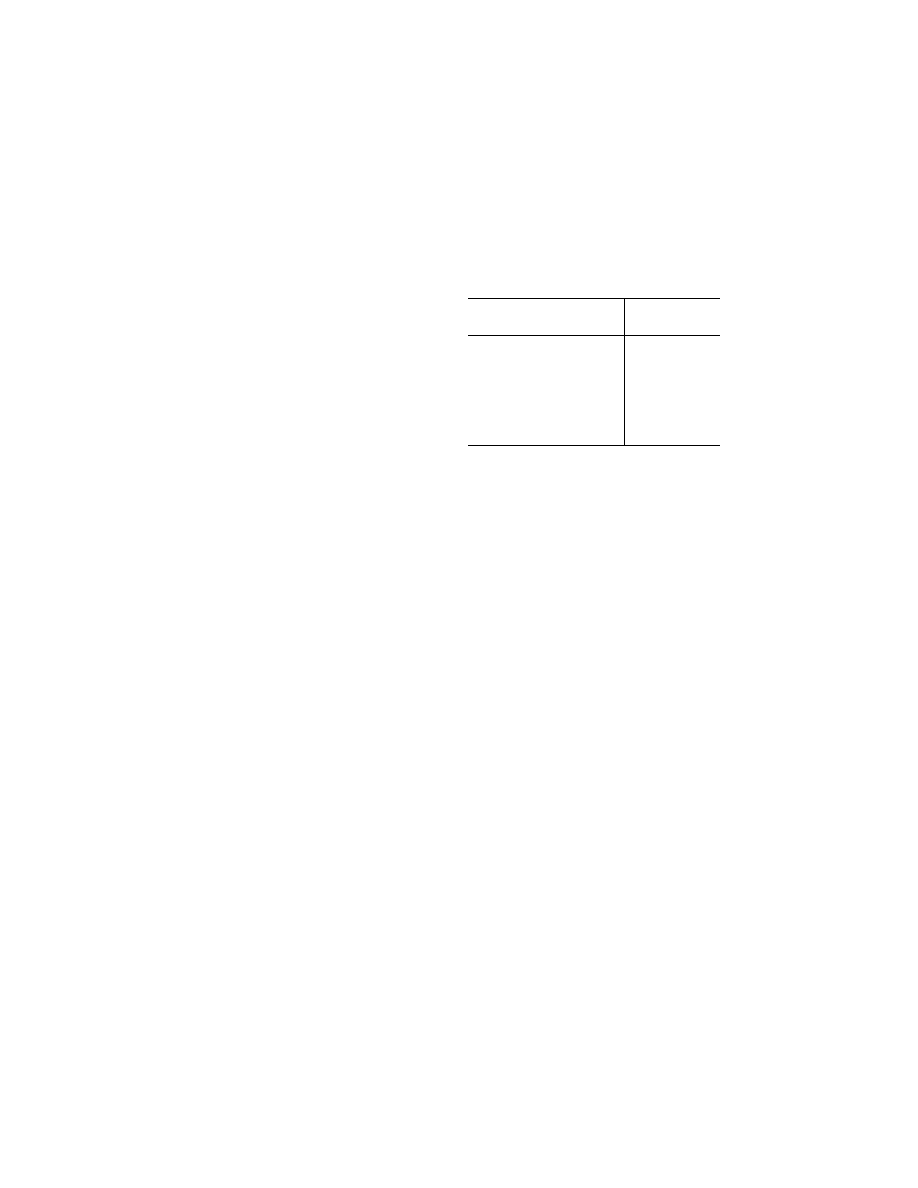
374
49 CFR Ch. I (10–1–23 Edition)
§ 172.102
B27
Tanks must have a service pressure of
1,034 kPa (150 psig). Tank car tanks must
have a test pressure rating of 1,379 kPa (200
psig). Lading must be blanketed at all
times with a dry inert gas at a pressure not
to exceed 103 kPa (15 psig).
B28
Packagings must be made of stainless
steel.
B30
MC 312, MC 330, MC 331 and DOT 412
cargo tanks and DOT 51 portable tanks
must be made of stainless steel, except
that steel other than stainless steel may
be used in accordance with the provisions
of § 173.24b(b) of this subchapter. Thickness
of stainless steel for tank shell and heads
for cargo tanks and portable tanks must be
the greater of 7.62 mm (0.300 inch) or the
thickness required for a tank with a design
pressure at least equal to 1.5 times the
vapor pressure of the lading at 46
°
C (115
°
F). In addition, MC 312 and DOT 412 cargo
tank motor vehicles must:
a. Be ASME Code (U) stamped for 100% ra-
diography of all pressure-retaining welds;
b. Have accident damage protection which
conforms with § 178.345–8 of this sub-
chapter;
c. Have a MAWP or design pressure of at
least 87 psig: and
d. Have a bolted manway cover.
B32
MC 312, MC 330, MC 331, DOT 412 cargo
tanks and DOT 51 portable tanks must be
made of stainless steel, except that steel
other than stainless steel may be used in
accordance with the provisions of
§ 173.24b(b) of this subchapter. Thickness of
stainless steel for tank shell and heads for
cargo tanks and portable tanks must be
the greater of 6.35 mm (0.250 inch) or the
thickness required for a tank with a design
pressure at least equal to 1.3 times the
vapor pressure of the lading at 46
°
C (115
°
F). In addition, MC 312 and DOT 412 cargo
tank motor vehicles must:
a. Be ASME Code (U) stamped for 100% radi-
ography of all pressure-retaining welds;
b. Have accident damage protection which
conforms with § 178.345–8 of this sub-
chapter;
c. Have a MAWP or design pressure of at
least 87 psig; and
d. Have a bolted manway cover.
B33
MC 300, MC 301, MC 302, MC 303, MC 305,
MC 306, and DOT 406 cargo tanks equipped
with a 1 psig normal vent used to transport
gasoline must conform to Table I of this
Special Provision. Based on the volatility
class determined by using ASTM D 439 and
the Reid vapor pressure (RVP) of the par-
ticular gasoline, the maximum lading pres-
sure and maximum ambient temperature
permitted during the loading of gasoline
may not exceed that listed in Table I.
T
ABLE
I—M
AXIMUM
A
MBIENT
T
EMPERATURE
—
G
ASOLINE
ASTM D439 volatility class
Maximum lading and
ambient temperature
(see note 1)
A ........................................................
131
°
F
(RVP
≤
9.0 psia)
B ........................................................
124
°
F
(RVP
≤
10.0 psia)
C ........................................................
116
°
F
(RVP
≤
11.5 psia)
D ........................................................
107
°
F
(RVP
≤
13.5 psia)
E ........................................................
100
°
F
(RVP
≤
15.0 psia)
N
OTE
1: Based on maximum lading pressure of 1 psig at
top of cargo tank.
B35
Tank cars containing hydrogen cyanide
may be alternatively marked
‘‘Hydrocyanic acid, liquefied’’ if otherwise
conforming to marking requirements in
subpart D of this part. Tank cars marked
‘‘HYDROCYANIC ACID’’ prior to October
1, 1991 do not need to be remarked.
B42
Tank cars constructed before March 16,
2009, must have a test pressure of 34.47 Bar
(500 psig) or greater and conform to Class
105J. Each tank car must have a reclosing
pressure relief device having a start-to-dis-
charge pressure of 10.34 Bar (150 psig). The
tank car specification may be marked to
indicate a test pressure of 13.79 Bar (200
psig).
B44
All parts of valves and safety relief de-
vices in contact with lading must be of a
material which will not cause formation of
acetylides.
B45
Each tank must have a reclosing com-
bination pressure relief device equipped
with stainless steel or platinum rupture
discs approved by the AAR Tank Car Com-
mittee.
B46
The detachable protective housing for
the loading and unloading valves of multi-
unit tank car tanks must withstand tank
test pressure and must be approved by the
Associate Administrator.
B47
Each tank may have a reclosing pres-
sure relief device having a start-to-dis-
charge pressure setting of 310 kPa (45 psig).
B48
Portable tanks in sodium metal service
may be visually inspected at least once
every 5 years instead of being retested
hydrostatically. Date of the visual inspec-
tion must be stenciled on the tank near
the other required markings.
B49
Tanks equipped with interior heater
coils are not authorized. Single unit tank
car tanks must have a reclosing pressure
relief device having a start-to-discharge
pressure set at no more than 1551 kPa (225
psig).
B52
Notwithstanding the provisions of
§ 173.24b of this subchapter, non-reclosing
pressure relief devices are authorized on
DOT 57 portable tanks.

375
Pipeline and Haz. Matls. Safety Admin., DOT
§ 172.102
B53
Packagings must be made of either alu-
minum or steel.
B54
Open-top, sift-proof rail cars are also
authorized.
B55
Water-tight, sift-proof, closed-top,
metal-covered hopper cars, equipped with a
venting arrangement (including flame ar-
restors) approved by the Associate Admin-
istrator are also authorized.
B56
Water-tight, sift-proof, closed-top,
metal-covered hopper cars are also author-
ized if the particle size of the hazardous
material is not less than 149 microns.
B57
Class 115A tank car tanks used to trans-
port chloroprene must be equipped with a
non-reclosing pressure relief device of a di-
ameter not less than 305 mm (12 inches)
with a maximum rupture disc pressure of
310 kPa (45 psig).
B59
Water-tight, sift-proof, closed-top,
metal-covered hopper cars are also author-
ized provided that the lading is covered
with a nitrogen blanket.
B61
Written procedures covering details of
tank car appurtenances, dome fittings,
safety devices, and marking, loading, han-
dling, inspection, and testing practices
must be approved by the Associate Admin-
istrator before any single unit tank car
tank is offered for transportation.
B65
Tank cars constructed before March 16,
2009, must have a test pressure of 34.47 Bar
(500 psig) or greater and conform to Class
105A. Each tank car must have a reclosing
pressure relief device having a start-to-dis-
charge pressure of 15.51 Bar (225 psig). The
tank car specification may be marked to
indicate a test pressure of 20.68 Bar (300
psig).
B66
Each tank must be equipped with gas
tight valve protection caps. Outage must
be sufficient to prevent tanks from becom-
ing liquid full at 55
°
C (130
°
F). Specifica-
tion 110A500W tanks must be stainless
steel.
B67
All valves and fittings must be pro-
tected by a securely attached cover made
of metal not subject to deterioration by
the lading, and all valve openings, except
safety valve, must be fitted with screw
plugs or caps to prevent leakage in the
event of valve failure.
B68
Sodium must be in a molten condition
when loaded and allowed to solidify before
shipment. Outage must be at least 5 per-
cent at 98
°
C (208
°
F). Bulk packagings
must have exterior heating coils fusion
welded to the tank shell which have been
properly stress relieved. The only tank car
tanks authorized are Class DOT 105 tank
cars having a test pressure of 2,069 kPa (300
psig) or greater.
B69
Dry sodium cyanide or potassium cya-
nide may be shipped in the following sift-
proof and weather-resistant packagings:
metal covered hopper cars, covered motor
vehicles, portable tanks, or non-specifica-
tion bins.
B70
If DOT 103ANW tank car tank is used:
All cast metal in contact with the lading
must have 96.7 percent nickel content; and
the lading must be anhydrous and free
from any impurities.
B76
Tank cars constructed before March 16,
2009, must have a test pressure of 20.68 Bar
(300 psig) or greater and conform to Class
105S, 112J, 114J or 120S. Each tank car
must have a reclosing pressure relief de-
vice having a start-to-discharge pressure of
10.34 Bar (150 psig). The tank car specifica-
tion may be marked to indicate a test pres-
sure of 13.79 Bar (200 psig).
B77
Other packaging are authorized when
approved by the Associate Administrator.
B78
Tank cars must have a test pressure of
4.14 Bar (60 psig) or greater and conform to
Class 103, 104, 105, 109, 111, 112, 114 or 120.
Heater pipes must be of welded construc-
tion designed for a test pressure of 500 psig.
A 25 mm (1 inch) woven lining of asbestos
or other approved material must be placed
between the bolster slabbing and the bot-
tom of the tank. If a tank car tank is
equipped with a non-reclosing pressure re-
lief device, the rupture disc must be per-
forated with a 3.2 mm (0.13 inch) diameter
hole. If a tank car tank is equipped with a
reclosing pressure relief valve, the tank
must also be equipped with a vacuum relief
valve.
B80
Each cargo tank must have a minimum
design pressure of 276 kPa (40 psig).
B81
Venting and pressure relief devices for
tank car tanks and cargo tanks must be
approved by the Associate Administrator.
B82
Cargo tanks and portable tanks are not
authorized.
B83
Bottom outlets are prohibited on tank
car tanks transporting sulfuric acid in con-
centrations over 65.25 percent.
B84
Packagings must be protected with
non-metallic linings impervious to the lad-
ing or have a suitable corrosion allowance
for sulfuric acid or spent sulfuric acid in
concentration up to 65.25 percent.
B85
Cargo tanks must be marked with the
name of the lading in accordance with the
requirements of § 172.302(b).
B90
Steel tanks conforming or equivalent
to ASME specifications which contain
solid or semisolid residual motor fuel anti-
knock mixture (including rust, scale, or
other contaminants) may be shipped by
rail freight or highway. The tank must
have been designed and constructed to be
capable of withstanding full vacuum. All
openings must be closed with gasketed
blank flanges or vapor tight threaded clo-
sures.
B115
Rail cars, highway trailers, roll-on/
roll-off bins, or other non-specification
bulk packagings are authorized. Pack-
agings must be sift-proof, prevent liquid

376
49 CFR Ch. I (10–1–23 Edition)
§ 172.102
water from reaching the hazardous mate-
rial, and be provided with sufficient vent-
ing to preclude dangerous accumulation of
flammable, corrosive, or toxic gaseous
emissions such as methane, hydrogen, and
ammonia. The material must be loaded
dry.
B116
The use of non specification, sift-proof
dump or hopper type vehicles, and sift-
proof roll-on/roll-off bulk bins, which must
be covered by a tarpaulin, metal cover, or
equivalent means is authorized for the
transportation of spent bleaching earth by
motor vehicle. The material is also be sub-
ject to operational controls which include
not exceeding a temperature of 55C (130F)
at the time it is offered or during transpor-
tation, not exceeding a transportation
time of 24 hours, and drivers transporting
spent bleaching earth must be trained in
the properties and hazards of the spent
bleaching earth. This training must be doc-
umented in training records required by
§ 172.704(d).
B120
The use of flexible bulk containers
conforming to the requirements in subpart
R and subpart S of part 178 of this sub-
chapter is permitted.
B130
When transported by motor vehicle,
used diatomaceous earth filter material is
not subject to any other requirements of
this subchapter except for the shipping
paper requirements of subpart C of part 172
of this subchapter; emergency response in-
formation as required by § 172.602(a)(2)
through (a)(7) of this subchapter; and the
marking requirements of § 172.302 of this
subchapter, if the following requirements
are met:
a. Packagings are non-DOT specification
sift-proof motor vehicles or sift-proof
roll-on/roll-off bulk bins, which are cov-
ered by a tarpaulin or other equivalent
means.
b. The temperature of the material at the
time it is offered for transport and dur-
ing transportation may not exceed 55
°
C
(130
°
F).
c. The time between offering the material
for transportation at the point of origin,
and unloading the material at the des-
tination does not exceed 48 hours.
d. In addition to the training requirements
prescribed in §§ 172.700 through 172.704,
each driver must be trained regarding
the properties and hazards of diatoma-
ceous earth filter material, precautions
to ensure safe transport of the material,
and actions to be taken in the event of
an emergency during transportation, or a
substantial delay in transit.
B131
When transported by highway, rail, or
cargo vessel, waste Paint and Paint related
material (UN1263; PG II and PG III), when
in plastic or metal inner packagings of not
more than 26.5 L (7 gallons), are excepted
from the marking requirements in
§ 172.301(a) and (c) and the labeling require-
ments in § 172.400(a), when further packed
in the following specification and non-
specification bulk outer packagings and
under the following conditions:
a. Primary receptacles must conform to
the general packaging requirements of
subpart B of part 173 of this subchapter
and may not leak. If they do leak, they
must be overpacked in packagings con-
forming to the specification require-
ments of part 178 of this subchapter or in
salvage packagings conforming to the re-
quirements in § 173.12 of this subchapter.
b. Primary receptacles must be further
packed in non-specification bulk outer
packagings such as cubic yard boxes,
plastic rigid-wall bulk containers, dump
trailers, and roll-off containers. Bulk
outer packagings must be liquid tight
through design or by the use of lining
materials.
c. Primary receptacles may also be further
packed in specification bulk outer pack-
agings. Authorized specification bulk
outer packagings are UN11G fiberboard
intermediate bulk containers (IBC) and
UN13H4 woven plastic, coated and with
liner flexible intermediate bulk con-
tainers (FIBCs) meeting the Packing
Group II performance level and lined
with a plastic liner of at least 6 mil
thickness.
d. All inner packagings placed inside bulk
outer packagings must be blocked and
braced to prevent shifting during trans-
portation that could cause the container
to open or fall over. Specification IBCs
and FIBCs are to be secured to a pallet.
B132
Except for transportation by aircraft,
UN2813, Water reactive solid, n.o.s. (con-
tains magnesium, magnesium nitrides) in
PG II or III may be packaged in sift-proof
bulk packagings that prevent liquid from
reaching the hazardous material with suffi-
cient venting to preclude dangerous accu-
mulation of flammable, corrosive or toxic
gaseous emissions such as methane, hydro-
gen and ammonia.
B133
Hydrochloric acid concentration not
exceeding 38%, in Packing Group II, is au-
thorized to be packaged in UN31H1 or
UN31HH1 intermediate bulk containers
when loaded in accordance with the re-
quirements of § 173.35(h) of this subchapter.
B134
For Large Packagings offered for
transport by vessel, flexible or fibre inner
packagings shall be sift-proof and water-
resistant or shall be fitted with a sift-proof
and water-resistant liner.
B135
For Large Packagings offered for
transport by vessel, flexible or fibre inner
packagings shall be hermetically sealed.
B136
Non-specification closed bulk bins are
authorized.
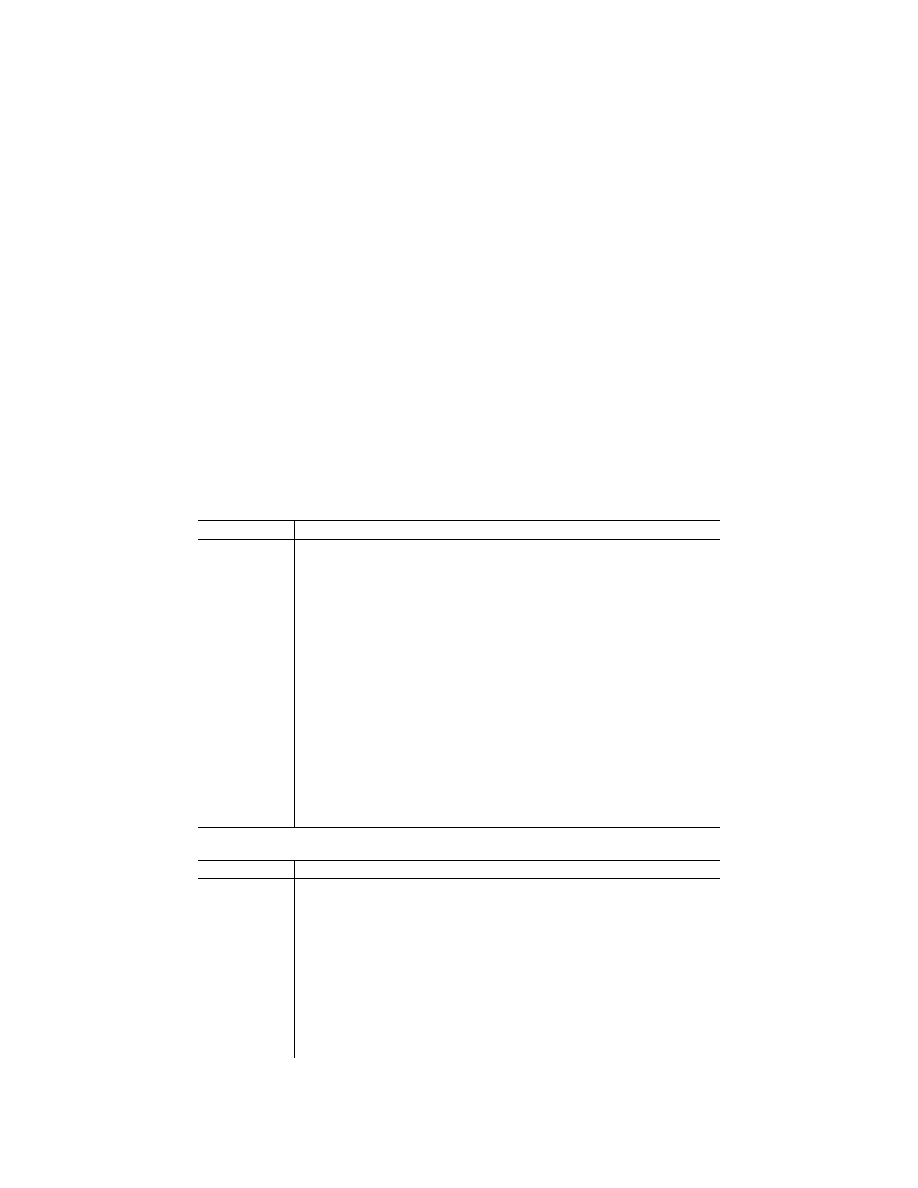
377
Pipeline and Haz. Matls. Safety Admin., DOT
§ 172.102
(4)
IB Codes and IP Codes.
These pro-
visions apply only to transportation in
IBCs and Large Packagings. Table 1 au-
thorizes IBCs for specific proper ship-
ping names through the use of IB Codes
assigned in the § 172.101 table of this
subchapter. Table 2 defines IP Codes on
the use of IBCs that are assigned to
specific commodities in the § 172.101
Table of this subchapter. Table 3 au-
thorizes Large Packagings for specific
proper shipping names through the use
of IB Codes assigned in the § 172.101
table of this subchapter. Large Pack-
agings are authorized for the Packing
Group III entries of specific proper
shipping names when either special
provision IB3 or IB8 is assigned to that
entry in the § 172.101 Table. When no IB
code is assigned in the § 172.101 Table
for a specific proper shipping name, or
in § 173.185 or § 173.225(e) Organic Per-
oxide Table for Type F organic perox-
ides, use of an IBC or Large Packaging
for the material may be authorized
when approved by the Associate Ad-
ministrator. The letter ‘‘Z’’ shown in
the marking code for composite IBCs
must be replaced with a capital code
letter designation found in
§ 178.702(a)(2) of this subchapter to
specify the material used for the other
packaging. Tables 1, 2, and 3 follow:
T
ABLE
1—IB C
ODES
(IBC C
ODES
)
IBC code
Authorized IBCs
IB1 .............................
Authorized IBCs: Metal (31A, 31B and 31N).
Additional Requirement: Only liquids with a vapor pressure less than or equal to 110 kPa at 50
°
C (1.1
bar at 122
°
F), or 130 kPa at 55
°
C (1.3 bar at 131
°
F) are authorized.
IB2 .............................
Authorized IBCs: Metal (31A, 31B and 31N); Rigid plastics (31H1 and 31H2); Composite (31HZ1).
Additional Requirement: Only liquids with a vapor pressure less than or equal to 110 kPa at 50
°
C (1.1
bar at 122
°
F), or 130 kPa at 55
°
C (1.3 bar at 131
°
F) are authorized.
IB3 .............................
Authorized IBCs: Metal (31A, 31B and 31N); Rigid plastics (31H1 and 31H2); Composite (31HZ1 and
31HA2, 31HB2, 31HN2, 31HD2 and 31HH2).
Additional Requirement: Only liquids with a vapor pressure less than or equal to 110 kPa at 50
°
C (1.1
bar at 122
°
F), or 130 kPa at 55
°
C (1.3 bar at 131
°
F) are authorized, except for UN2672 (also see
special provision IP8 in Table 2 for UN2672).
IB4 .............................
Authorized IBCs: Metal (11A, 11B, 11N, 21A, 21B, 21N, 31A, 31B and 31N).
IB5 .............................
Authorized IBCs: Metal (11A, 11B, 11N, 21A, 21B, 21N, 31A, 31B and 31N); Rigid plastics (11H1,
11H2, 21H1, 21H2, 31H1 and 31H2); Composite (11HZ1, 21HZ1 and 31HZ1).
IB6 .............................
Authorized IBCs: Metal (11A, 11B, 11N, 21A, 21B, 21N, 31A, 31B and 31N); Rigid plastics (11H1,
11H2, 21H1, 21H2, 31H1 and 31H2); Composite (11HZ1, 11HZ2, 21HZ1, 21HZ2 and 31HZ1).
Additional Requirement: Composite IBCs 11HZ2 and 21HZ2 may not be used when the hazardous ma-
terials being transported may become liquid during transport.
IB7 .............................
Authorized IBCs: Metal (11A, 11B, 11N, 21A, 21B, 21N, 31A, 31B and 31N); Rigid plastics (11H1,
11H2, 21H1, 21H2, 31H1 and 31H2); Composite (11HZ1, 11HZ2, 21HZ1, 21HZ2 and 31HZ1); Wood-
en (11C, 11D and 11F).
Additional Requirement: Liners of wooden IBCs must be sift-proof.
IB8 .............................
Authorized IBCs: Metal (11A, 11B, 11N, 21A, 21B, 21N, 31A, 31B and 31N); Rigid plastics (11H1,
11H2, 21H1, 21H2, 31H1 and 31H2 ); Composite (11HZ1, 11HZ2, 21HZ1, 21HZ2 and 31HZ1); Fiber-
board (11G); Wooden (11C, 11D and 11F); Flexible (13H1, 13H2, 13H3, 13H4, 13H5, 13L1, 13L2,
13L3, 13L4, 13M1 or 13M2).
IB9 .............................
IBCs are only authorized if approved by the Associate Administrator.
T
ABLE
2—IP C
ODES
IP code
IP1 .............................
IBCs must be packed in closed freight containers or a closed transport vehicle.
IP2 .............................
When IBCs other than metal or rigid plastics IBCs are used, they must be offered for transportation in a
closed freight container or a closed transport vehicle.
IP3 .............................
Flexible IBCs must be sift-proof and water-resistant or must be fitted with a sift-proof and water-resist-
ant liner.
IP4 .............................
Flexible, fiberboard or wooden IBCs must be sift-proof and water-resistant or be fitted with a sift-proof
and water-resistant liner.
IP5 .............................
IBCs must have a device to allow venting. The inlet to the venting device must be located in the vapor
space of the IBC under maximum filling conditions.
IP6 .............................
Non-specification bulk bins are authorized.
IP7 .............................
For UN identification numbers 1327, 1363, 1364, 1365, 1386, 1408, 1841, 2211, 2217, 2793 and 3314,
IBCs are not required to meet the IBC performance tests specified in part 178, subpart N, of this sub-
chapter.
IP8 .............................
Ammonia solutions may be transported in rigid or composite plastic IBCs (31H1, 31H2 and 31HZ1) that
have successfully passed, without leakage or permanent deformation, the hydrostatic test specified in
§ 178.814 of this subchapter at a test pressure that is not less than 1.5 times the vapor pressure of
the contents at 55
°
C (131
°
F).
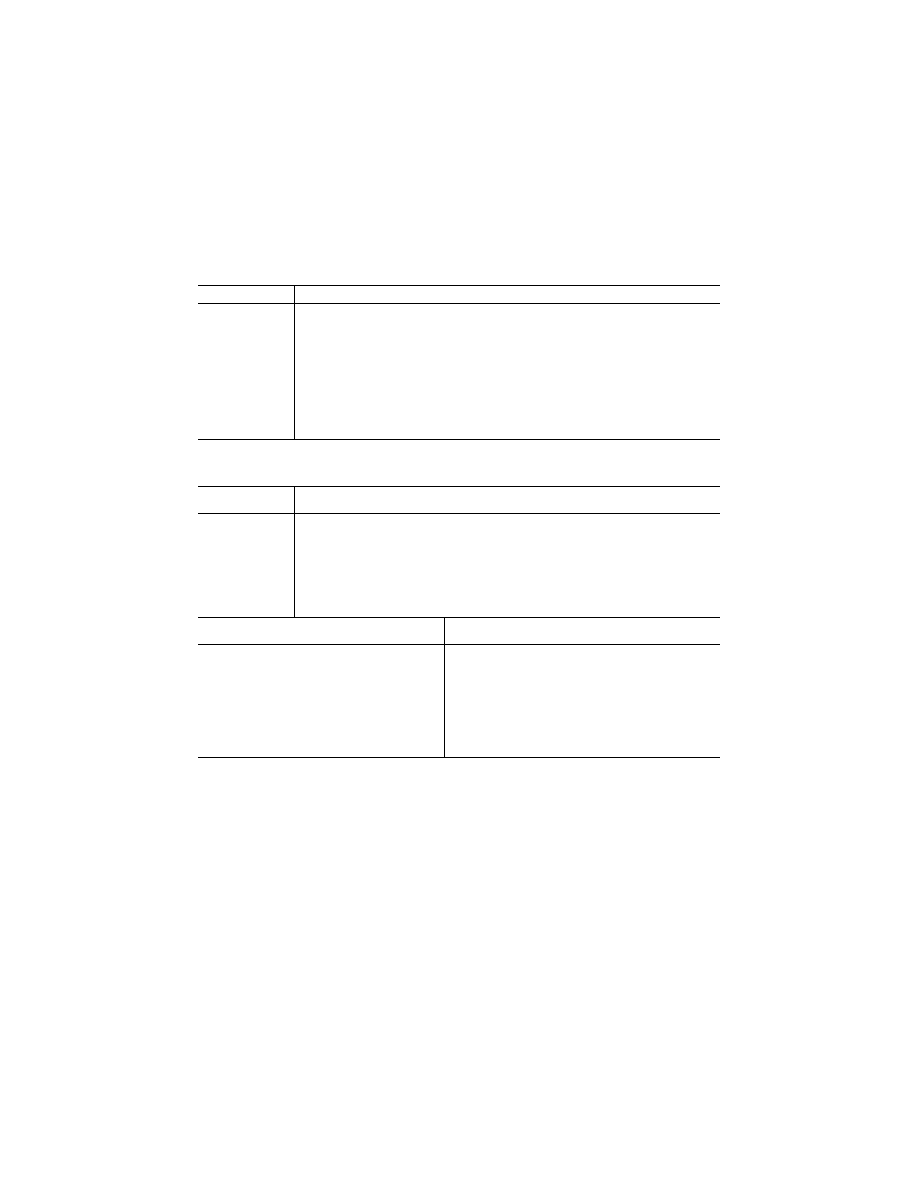
378
49 CFR Ch. I (10–1–23 Edition)
§ 172.102
T
ABLE
2—IP C
ODES
—Continued
IP code
IP13 ...........................
Transportation by vessel in IBCs is prohibited.
IP14 ...........................
Air must be eliminated from the vapor space by nitrogen or other means.
IP15 ...........................
For UN2031 with more than 55% nitric acid, rigid plastic IBCs and composite IBCs with a rigid plastic
inner receptacle are authorized for two years from the date of IBC manufacture.
IP16 ...........................
IBCs of type 31A and 31N are only authorized if approved by the Associate Administrator.
IP19 ...........................
For UN identification numbers 3531, 3532, 3533, and 3534, IBCs must be designed and constructed to
permit the release of gas or vapor to prevent a build-up of pressure that could rupture the IBCs in the
event of loss of stabilization.
IP20 ...........................
Dry sodium cyanide or potassium cyanide is also permitted in siftproof, water-resistant, fiberboard IBCs
when transported in closed freight containers or transport vehicles.
IP21 ...........................
When transported by vessel, flexible, fiberboard or wooden IBCs must be sift-proof and water-resistant
or be fitted with a sift-proof and water-resistant liner.
T
ABLE
3—IB C
ODES
[Large packaging authorizations]
IB3
Authorized Large Packagings (LIQUIDS)
(PG III materials only)
2
Inner packagings:
Large outer packagings:
Glass
10 liter ....
steel (50A).
Plastics
30 liter
aluminum (50B).
Metal
40 liter ....
metal other than steel or aluminum (50N).
rigid plastics (50H).
natural wood (50C).
plywood (50D).
reconstituted wood (50F).
rigid fiberboard (50G).
IB8
Authorized Large Packagings (SOLIDS)
(PG III materials only)
2
Inner packagings:
Large outer packagings:
Glass
10 kg ...........................................................
steel (50A).
Plastics
50 kg .......................................................
aluminum (50B).
Metal
50 kg ...........................................................
metal other than steel or aluminum (50N).
Paper
50 kg ..........................................................
flexible plastics (51H).
1
Fiber
50 kg ............................................................
rigid plastics (50H).
natural wood (50C).
plywood (50D).
reconstituted wood (50F).
rigid fiberboard (50G).
1
Flexible plastic (51H) Large Packagings are only authorized for use with flexible inner packagings.
2
Except when authorized under Special Provision 41.
(5)
‘‘N’’ codes.
These provisions apply
only to non-bulk packagings:
Code/Special Provisions
N3
Glass inner packagings are permitted in
combination or composite packagings only
if the hazardous material is free from
hydrofluoric acid.
N4
For combination or composite pack-
agings, glass inner packagings, other than
ampoules, are not permitted.
N5
Glass materials of construction are not
authorized for any part of a packaging
which is normally in contact with the haz-
ardous material.
N6
Battery fluid packaged with electric
storage batteries, wet or dry, must con-
form to the packaging provisions of
§ 173.159 (g) or (h) of this subchapter.
N7
The hazard class or division number of
the material must be marked on the pack-
age in accordance with § 172.302 of this sub-
chapter. However, the hazard label cor-
responding to the hazard class or division
may be substituted for the marking.
N8
Nitroglycerin solution in alcohol may be
transported under this entry only when the
solution is packed in metal cans of not
more than 1 L capacity each, overpacked
in a wooden box containing not more than
5 L. Metal cans must be completely sur-
rounded with absorbent cushioning mate-
rial. Wooden boxes must be completely
lined with a suitable material impervious
to water and nitroglycerin.
N11
This material is excepted for the speci-
fication packaging requirements of this
subchapter if the material is packaged in
strong, tight non-bulk packaging meeting
the requirements of subparts A and B of
part 173 of this subchapter.
N12
Plastic packagings are not authorized.

379
Pipeline and Haz. Matls. Safety Admin., DOT
§ 172.102
N20
A 5M1 multi-wall paper bag is author-
ized if transported in a closed transport ve-
hicle.
N25
Steel single packagings are not author-
ized.
N32
Aluminum materials of construction
are not authorized for single packagings.
N33
Aluminum drums are not authorized.
N34
Aluminum construction materials are
not authorized for any part of a packaging
which is normally in contact with the haz-
ardous material.
N36
Aluminum or aluminum alloy construc-
tion materials are permitted only for halo-
genated hydrocarbons that will not react
with aluminum.
N37
This material may be shipped in an in-
tegrally-lined fiber drum (1G) which meets
the general packaging requirements of sub-
part B of part 173 of this subchapter, the
requirements of part 178 of this subchapter
at the packing group assigned for the ma-
terial and to any other special provisions
of column 7 of the § 172.101 table.
N40
This material is not authorized in the
following packagings:
a. A combination packaging consisting of a
4G fiberboard box with inner receptacles
of glass or earthenware;
b. A single packaging of a 4C2 sift-proof,
natural wood box; or
c. A composite packaging 6PG2 (glass, por-
celain or stoneware receptacles within a
fiberboard box).
N41
Metal construction materials are not
authorized for any part of a packaging
which is normally in contact with the haz-
ardous material.
N42
1A1 drums made of carbon steel with
thickness of body and heads of not less
than 1.3 mm (0.050 inch) and with a corro-
sion-resistant phenolic lining are author-
ized for stabilized benzyl chloride if tested
and certified to the Packing Group I per-
formance level at a specific gravity of not
less than 1.8.
N43
Metal drums are permitted as single
packagings only if constructed of nickel or
monel.
N45
Copper cartridges are authorized as
inner packagings if the hazardous material
is not in dispersion.
N65
Outage must be sufficient to prevent
cylinders or spheres from becoming liquid
full at 55
°
C (130
°
F). The vacant space (out-
age) may be charged with a nonflammable
nonliquefied compressed gas if the pressure
in the cylinder or sphere at 55
°
C (130
°
F)
does not exceed 125 percent of the marked
service pressure.
N73
Packagings consisting of outer wooden
or fiberboard boxes with inner glass, metal
or other strong containers; metal or fiber
drums; kegs or barrels; or strong metal
cans are authorized and need not conform
to the requirements of part 178 of this sub-
chapter.
N74
Packages consisting of tightly closed
inner containers of glass, earthenware,
metal or polyethylene, capacity not over
0.5 kg (1.1 pounds) securely cushioned and
packed in outer wooden barrels or wooden
or fiberboard boxes, not over 15 kg (33
pounds) net weight, are authorized and
need not conform to the requirements of
part 178 of this subchapter.
N75
Packages consisting of tightly closed
inner packagings of glass, earthenware or
metal, securely cushioned and packed in
outer wooden barrels or wooden or fiber-
board boxes, capacity not over 2.5 kg (5.5
pounds) net weight, are authorized and
need not conform to the requirements of
part 178 of this subchapter.
N76
For materials of not more than 25 per-
cent active ingredient by weight, packages
consisting of inner metal packagings not
greater than 250 mL (8 ounces) capacity
each, packed in strong outer packagings
together with sufficient absorbent mate-
rial to completely absorb the liquid con-
tents are authorized and need not conform
to the requirements of part 178 of this sub-
chapter.
N77
For materials of not more than two
percent active ingredients by weight, pack-
agings need not conform to the require-
ments of part 178 of this subchapter, if liq-
uid contents are absorbed in an inert mate-
rial.
N78
Packages consisting of inner glass,
earthenware, or polyethylene or other non-
fragile plastic bottles or jars not over 0.5
kg (1.1 pounds) capacity each, or metal
cans not over five pounds capacity each,
packed in outer wooden boxes, barrels or
kegs, or fiberboard boxes are authorized
and need not conform to the requirements
of part 178 of this subchapter. Net weight
of contents in fiberboard boxes may not ex-
ceed 29 kg (64 pounds). Net weight of con-
tents in wooden boxes, barrels or kegs may
not exceed 45 kg (99 pounds).
N79
Packages consisting of tightly closed
metal inner packagings not over 0.5 kg (1.1
pounds) capacity each, packed in outer
wooden or fiberboard boxes, or wooden bar-
rels, are authorized and need not conform
to the requirements of part 178 of this sub-
chapter. Net weight of contents may not
exceed 15 kg (33 pounds).
N80
Packages consisting of one inner metal
can, not over 2.5 kg (5.5 pounds) capacity,
packed in an outer wooden or fiberboard
box, or a wooden barrel, are authorized and
need not conform to the requirements of
part 178 of this subchapter.
N82
See § 173.115 of this subchapter for clas-
sification criteria for flammable aerosols.
N83
This material may not be transported
in quantities of more than 11.5 kg (25.4 lbs)
per package.
N84
The maximum quantity per package is
500 g (1.1 lbs.).

380
49 CFR Ch. I (10–1–23 Edition)
§ 172.102
N85
Packagings certified at the Packing
Group I performance level may not be
used.
N86
UN pressure receptacles made of alu-
minum alloy are not authorized.
N87
The use of copper valves on UN pressure
receptacles is prohibited.
N88
Any metal part of a UN pressure recep-
tacle in contact with the contents may not
contain more than 65% copper, with a tol-
erance of 1%.
N89
When steel UN pressure receptacles are
used, only those bearing the ‘‘H’’ mark are
authorized.
N90
Metal packagings are not authorized.
Packagings of other material with a small
amount of metal, for example metal clo-
sures or other metal fittings such as those
mentioned in part 178 of this subchapter,
are not considered metal packagings.
Packagings of other material constructed
with a small amount of metal must be de-
signed such that the hazardous material
does not contact the metal.
N91
The use of a non specification sift-
proof, non-bulk, metal can with or without
lid, or a non specification sift-proof, non-
bulk fiber drum, with or without lid is au-
thorized when transporting coal tar pitch
compounds by motor vehicle or rail
freight. The fiber drum must to be fab-
ricated with a three ply wall, as a min-
imum. The coal tar pitch compound must
be in a solid mass during transportation.
N92
Notwithstanding the provisions of
§ 173.24(g) of this subchapter, packagings
shall be designed and constructed to per-
mit the release of gas or vapor to prevent
a build-up of pressure that could rupture
the packagings in the event of loss of sta-
bilization.
N95
UN1075, Liquefied petroleum gas and
UN1978, Propane authorized for transport
in DOT 4BA240 cylinders is not subject to
the UN identification number and proper
shipping name marking or the label re-
quirements of this part subject to the fol-
lowing conditions:
a. The cylinder must be transported in a
closed motor vehicle displaying FLAM-
MABLE GAS placards in accordance with
subpart F of part 172 of this subchapter.
b. Shipping papers at all times must reflect
a correct current accounting of all cyl-
inders both full and expended.
c. The cylinders are collected and trans-
ported by a private or a contract carrier
for reconditioning, reuse or disposal.
(6)
‘‘R’’ codes.
These provisions apply
only to transportation by rail.
R1
A person who offers for transpor-
tation tank cars containing sulfur,
molten or residue of sulfur, molten
may reference the Sulfur Institute’s,
‘‘Molten Sulphur Rail Tank Car Guid-
ance document’’ (see § 171.7 of this sub-
chapter) to identify tank cars that may
pose a risk in transportation due to the
accumulation of formed, solid sulfur on
the outside of the tank.
(7)
‘‘T’’ codes.
(i) These provisions
apply to the transportation of haz-
ardous materials in UN portable tanks.
Portable tank instructions specify the
requirements applicable to a portable
tank when used for the transportation
of a specific hazardous material. These
requirements must be met in addition
to the design and construction speci-
fications in part 178 of this subchapter.
Portable tank instructions T1 through
T22 specify the applicable minimum
test pressure, the minimum shell
thickness (in reference steel), bottom
opening requirements and pressure re-
lief requirements. Liquefied com-
pressed gases are assigned to portable
tank instruction T50. Refrigerated liq-
uefied gases that are authorized to be
transported in portable tanks are spec-
ified in tank instruction T75.
(ii) The following table specifies the
portable tank requirements applicable
to ‘‘T’’ Codes T1 through T22. Column 1
specifies the ‘‘T’’ Code. Column 2 speci-
fies the minimum test pressure, in bar
(1 bar = 14.5 psig), at which the periodic
hydrostatic testing required by § 180.605
of this subchapter must be conducted.
Column 3 specifies the section ref-
erence for minimum shell thickness or,
alternatively, the minimum shell
thickness value. Column 4 specifies the
applicability of § 178.275(g)(3) of this
subchapter for the pressure relief de-
vices. When the word ‘‘Normal’’ is indi-
cated, § 178.275(g)(3) of this subchapter
does not apply. Column 5 references ap-
plicable requirements for bottom open-
ings in part 178 of this subchapter.
‘‘Prohibited’’ means bottom openings
are prohibited, and ‘‘Prohibited for liq-
uids’’ means bottom openings are au-
thorized for solid material only. The
table follows:
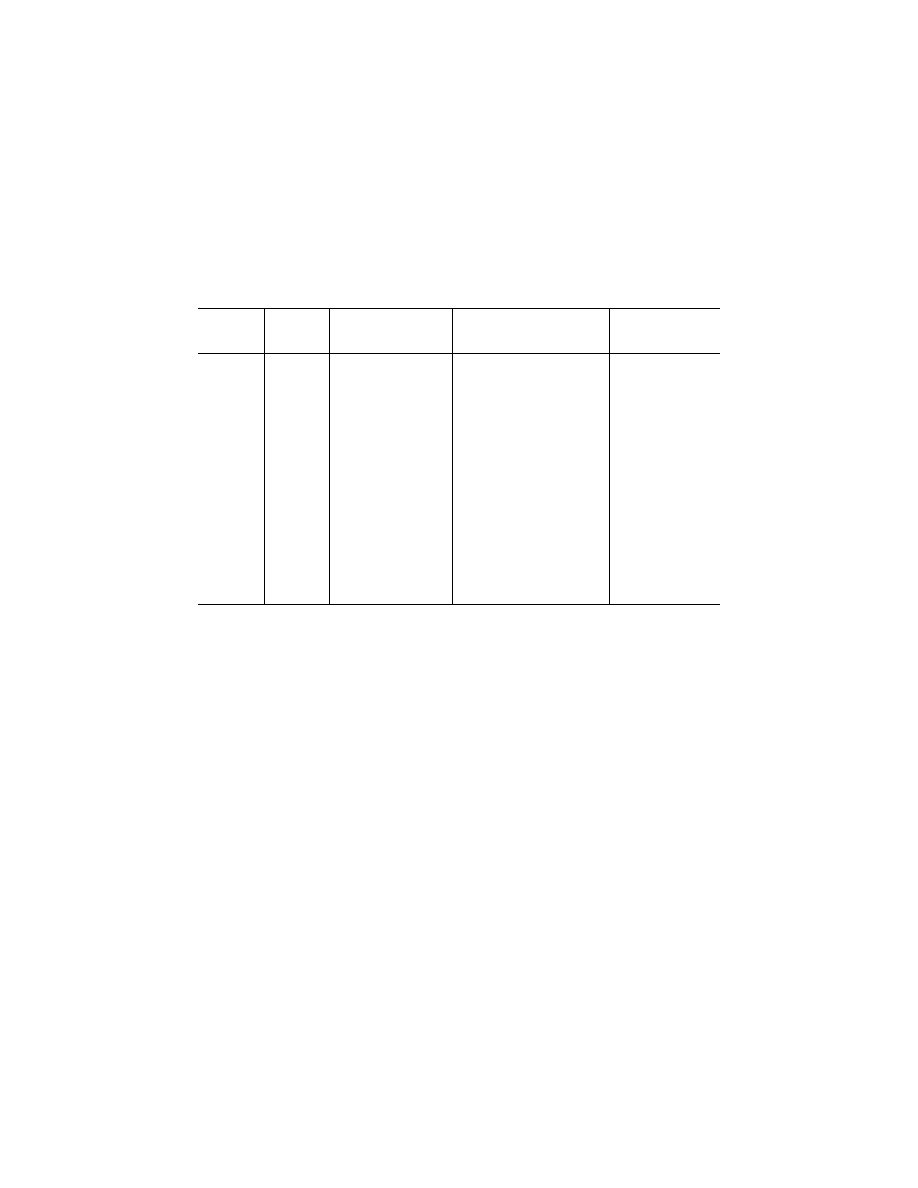
381
Pipeline and Haz. Matls. Safety Admin., DOT
§ 172.102
T
ABLE OF
P
ORTABLE
T
ANK
T C
ODES
T1–T22
[Portable tank codes T1–T22 apply to liquid and solid hazardous materials of Classes 3 through 9 which are transported in
portable tanks.]
Portable tank
instruction
(1)
Minimum test
pressure
(bar)
(2)
Minimum shell thickness
(in mm-reference steel)
(See § 178.274(d))
(3)
Pressure-relief requirements
(See § 178.275(g))
(4)
Bottom opening
requirements
(See § 178.275(d))
(5)
T1 ..................
1 .5
§ 178.274(d)(2)
Normal ..............................................
§ 178.275(d)(2)
T2 ..................
1 .5
§ 178.274(d)(2)
Normal ..............................................
§ 178.275(d)(3)
T3 ..................
2 .65 § 178.274(d)(2)
Normal ..............................................
§ 178.275(d)(2)
T4 ..................
2 .65 § 178.274(d)(2)
Normal ..............................................
§ 178.275(d)(3)
T5 ..................
2 .65 § 178.274(d)(2)
§ 178.275(g)(3) .................................
Prohibited
T6 ..................
4
§ 178.274(d)(2)
Normal ..............................................
§ 178.275(d)(2)
T7 ..................
4
§ 178.274(d)(2)
Normal ..............................................
§ 178.275(d)(3)
T8 ..................
4
§ 178.274(d)(2)
Normal ..............................................
Prohibited
T9 ..................
4
6 mm
Normal ..............................................
Prohibited for liquids.
T10 ................
4
6 mm
§ 178.275(g)(3) .................................
Prohibited
T11 ................
6
§ 178.274(d)(2)
Normal ..............................................
§ 178.275(d)(3)
T12 ................
6
§ 178.274(d)(2)
§ 178.275(g)(3) .................................
§ 178.275(d)(3)
T13 ................
6
6 mm
Normal ..............................................
Prohibited
T14 ................
6
6 mm
§ 178.275(g)(3) .................................
Prohibited
T15 ................
10
§ 178.274(d)(2)
Normal ..............................................
§ 178.275(d)(3)
T16 ................
10
§ 178.274(d)(2)
§ 178.275(g)(3) .................................
§ 178.275(d)(3)
T17 ................
10
6 mm
Normal ..............................................
§ 178.275(d)(3)
T18 ................
10
6 mm
§ 178.275(g)(3) .................................
§ 178.275(d)(3)
T19 ................
10
6 mm
§ 178.275(g)(3) .................................
Prohibited
T20 ................
10
8 mm
§ 178.275(g)(3) .................................
Prohibited
T21 ................
10
10 mm
Normal ..............................................
Prohibited for liquids.
§ 178.275(d)(2).
T22 ................
10
10 mm
§ 178.275(g)(3) .................................
Prohibited
(iii) T50
When portable tank in-
struction T50 is indicated in Column (7)
of the § 172.101 Hazardous Materials
Table, the applicable liquefied com-
pressed gas and chemical under pres-
sure descriptions are authorized to be
transported in portable tanks in ac-
cordance with the requirements of
§ 173.313 of this subchapter.
(iv)
T75.
When portable tank instruc-
tion T75 is referenced in Column (7) of
the § 172.101 Table, the applicable re-
frigerated liquefied gases are author-
ized to be transported in portable
tanks in accordance with the require-
ments of § 178.277 of this subchapter.
(v)
UN and IM portable tank codes/spe-
cial provisions.
When a specific portable
tank instruction is specified by a ‘‘T’’
Code in Column (7) of the § 172.101 Table
for a specific hazardous material, a
specification portable tank conforming
to an alternative tank instruction may
be used if:
(A) The alternative portable tank has
a higher or equivalent test pressure
(for example, 4 bar when 2.65 bar is
specified);
(B) The alternative portable tank has
greater or equivalent wall thickness
(for example, 10 mm when 6 mm is
specified);
(C) The alternative portable tank has
a pressure relief device as specified in
the ‘‘T’’ Code. If a frangible disc is re-
quired in series with the reclosing pres-
sure relief device for the specified port-
able tank, the alternative portable
tank must be fitted with a frangible
disc in series with the reclosing pres-
sure relief device; and
(D) With regard to bottom openings—
(
1
) When two effective means are
specified, the alternative portable tank
is fitted with bottom openings having
two or three effective means of closure
or no bottom openings; or
(
2
) When three effective means are
specified, the portable tank has no bot-
tom openings or three effective means
of closure; or
(
3
) When no bottom openings are au-
thorized, the alternative portable tank
must not have bottom openings.
(vi) Except when an organic peroxide
is authorized under § 173.225(g), if a haz-
ardous material is not assigned a port-
able tank ‘‘T’’ Code, the hazardous ma-
terial may not be transported in a
portable tank unless approved by the
Associate Administrator.

382
49 CFR Ch. I (10–1–23 Edition)
§ 172.102
(8)
‘‘TP’’ codes.
(i) These provisions
apply to the transportation of haz-
ardous materials in IM and UN Speci-
fication portable tanks. Portable tank
special provisions are assigned to cer-
tain hazardous materials to specify re-
quirements that are in addition to
those provided by the portable tank in-
structions or the requirements in part
178 of this subchapter. Portable tank
special provisions are designated with
the abbreviation TP (tank provision)
and are assigned to specific hazardous
materials in Column (7) of the § 172.101
Table.
(ii) The following is a list of the port-
able tank special provisions:
Code/Special Provisions
TP1
The maximum degree of filling must
not exceed the degree of filling determined
by the following:
Degree of filling
=
+
−
(
)
97
1
α
t
t
r
f
.
Where:
t
r
is the maximum mean bulk temperature
during transport, and t
f
is the tempera-
ture in degrees celsius of the liquid dur-
ing filling.
TP2
a. The maximum degree of filling
must not exceed the degree of filling deter-
mined by the following:
Degree of filling
=
+
−
(
)
95
1
α
t
t
r
f
.
Where:
t
r
is the maximum mean bulk temperature
during transport,
t
f
is the temperature in degrees celsius of the
liquid during filling, and
a
is the mean coefficient of cubical expan-
sion of the liquid between the mean tem-
perature of the liquid during filling (t
f
)
and the maximum mean bulk tempera-
ture during transportation (t
r
) both in
degrees celsius.
b. For liquids transported under ambient
conditions
a
may be calculated using the for-
mula:
α =
−
d
d
d
15
50
50
35
Where:
d
15
and d
50
are the densities (in units of mass
per unit volume) of the liquid at 15
°
C (59
°
F) and 50
°
C (122
°
F), respectively.
TP3
The maximum degree of filling (in %)
for solids transported above their melting
points and for elevated temperature liquids
shall be determined by the following:
Degree of filling = 95
d
d
r
f
.
Where: d
f
and d
r
are the mean densities of the
liquid at the mean temperature of the liquid
during filling and the maximum mean bulk
temperature during transport respectively.
TP4
The maximum degree of filling for
portable tanks must not exceed 90%.
TP5
For a portable tank used for the
transport of flammable refrigerated liquefied
gases or refrigerated liquefied oxygen, the
maximum rate at which the portable tank
may be filled must not exceed the liquid flow
capacity of the primary pressure relief sys-
tem rated at a pressure not exceeding 120
percent of the portable tank’s design pres-
sure. For portable tanks used for the trans-
port of refrigerated liquefied helium and re-
frigerated liquefied atmospheric gas (except
oxygen), the maximum rate at which the
tank is filled must not exceed the liquid flow
capacity of the pressure relief device rated
at 130 percent of the portable tank’s design
pressure. Except for a portable tank con-
taining refrigerated liquefied helium, a port-
able tank shall have an outage of at least
two percent below the inlet of the pressure
relief device or pressure control valve, under
conditions of incipient opening, with the
portable tank in a level attitude. No outage
is required for helium.
TP6
The tank must be equipped with a
pressure release device which prevent a tank
from bursting under fire engulfment condi-
tions (the conditions prescribed in CGA pam-
phlet S–1.2 (see § 171.7 of this subchapter) or
alternative conditions approved by the Asso-
ciate Administrator may be used to consider
the fire engulfment condition), taking into
account the properties of the hazardous ma-
terial to be transported.
TP7
The vapor space must be purged of
air by nitrogen or other means.
TP8
A portable tank having a minimum
test pressure of 1.5 bar (150 kPa) may be used
when the flash point of the hazardous mate-
rial transported is greater than 0
°
C (32
°
F).
TP9
A hazardous material assigned to
special provision TP9 in Column (7) of the
§ 172.101 Table may only be transported in a
portable tank if approved by the Associate
Administrator.
TP10
A lead lining, not less than 5 mm
thick, which shall be tested annually, or an-
other suitable lining material approved by
the competent authority, is required. A port-
able tank may be offered for transport after
the date of expiry of the last lining inspec-
tion for a period not to exceed three months
for purposes of performing the next required

383
Pipeline and Haz. Matls. Safety Admin., DOT
§ 172.102
test or inspection, after emptying but before
cleaning.
TP12
This material is considered highly
corrosive to steel.
TP13
Self-contained breathing apparatus
must be provided when this hazardous mate-
rial is transported by sea.
TP16
The portable tank must be pro-
tected against over and under pressurization
which may be experienced during transpor-
tation. The means of protection must be ap-
proved by the approval agency designated to
approve the portable tank in accordance
with the procedures in part 107, subpart E, of
this subchapter. The pressure relief device
must be preceded by a frangible disk in ac-
cordance with the requirements in
§ 178.275(g)(3) of this subchapter to prevent
crystallization of the product in the pressure
relief device.
TP17
Only inorganic non-combustible ma-
terials may be used for thermal insulation of
the tank.
TP18
The temperature of this material
must be maintained between 18
°
C (64.4
°
F)
and 40
°
C (104
°
F) while in transportation.
Portable tanks containing solidified meth-
acrylic acid must not be reheated during
transportation.
TP19
The calculated wall thickness must
be increased by 3 mm at the time of con-
struction. Wall thickness must be verified
ultrasonically at intervals midway between
periodic hydraulic tests (every 2.5 years).
The portable tank must not be used if the
wall thickness is less than that prescribed by
the applicable T code in Column (7) of the
Table for this material.
TP20
This hazardous material must only
be transported in insulated tanks under a ni-
trogen blanket.
TP21
The wall thickness must not be less
than 8 mm. Portable tanks must be hydrau-
lically tested and internally inspected at in-
tervals not exceeding 2.5 years.
TP22
Lubricants for portable tank fit-
tings (for example, gaskets, shut-off valves,
flanges) must be oxygen compatible.
TP24
The portable tank may be fitted
with a device to prevent the build up of ex-
cess pressure due to the slow decomposition
of the hazardous material being transported.
The device must be in the vapor space when
the tank is filled under maximum filling
conditions. This device must also prevent an
unacceptable amount of leakage of liquid in
the case of overturning.
TP25
Sulphur trioxide 99.95% pure and
above may be transported in tanks without
an inhibitor provided that it is maintained
at a temperature equal to or above 32.5
°
C
(90.5
°
F).
TP26
The heating device must be exterior
to the shell. For UN 3176, this requirement
only applies when the hazardous material re-
acts dangerously with water.
TP27
A portable tank having a minimum
test pressure of 4 bar (400 kPa) may be used
provided the calculated test pressure is 4 bar
or less based on the MAWP of the hazardous
material, as defined in § 178.275 of this sub-
chapter, where the test pressure is 1.5 times
the MAWP.
TP28
A portable tank having a minimum
test pressure of 2.65 bar (265 kPa) may be
used provided the calculated test pressure is
2.65 bar or less based on the MAWP of the
hazardous material, as defined in § 178.275 of
this subchapter, where the test pressure is
1.5 times the MAWP.
TP29
A portable tank having a minimum
test pressure of 1.5 bar (150.0 kPa) may be
used provided the calculated test pressure is
1.5 bar or less based on the MAWP of the haz-
ardous materials, as defined in § 178.275 of
this subchapter, where the test pressure is
1.5 times the MAWP.
TP30
This hazardous material may only
be transported in insulated tanks.
TP31
This hazardous material may only
be transported in tanks in the solid state.
TP32
Portable tanks may be used subject
to the following conditions:
a. Each portable tank constructed of metal
must be fitted with a pressure-relief device
consisting of a reclosing spring loaded type,
a frangible disc or a fusible element. The set
to discharge for the spring loaded pressure
relief device and the burst pressure for the
frangible disc, as applicable, must not be
greater than 2.65 bar for portable tanks with
minimum test pressures greater than 4 bar;
b. The suitability for transport in tanks
must be demonstrated using test 8(d) in Test
Series 8 (see UN Manual of Tests and Cri-
teria, Part 1, Sub-section 18.7) (IBR, see
§ 171.7 of this subchapter) or an alternative
means approved by the Associate Adminis-
trator.
TP33
The portable tank instruction as-
signed for this substance applies for granular
and powdered solids and for solids which are
filled and discharged at temperatures above
their melting point which are cooled and
transported as a solid mass. Solid substances
transported or offered for transport above
their melting point are authorized for trans-
portation in portable tanks conforming to
the provisions of portable tank instruction
T4 for solid substances of packing group III
or T7 for solid substances of packing group
II, unless a tank with more stringent re-
quirements for minimum shell thickness,
maximum allowable working pressure, pres-
sure-relief devices or bottom outlets are as-
signed in which case the more stringent tank
instruction and special provisions shall
apply. Filling limits must be in accordance
with portable tank special provision TP3.
Solids meeting the definition of an elevated
temperature material must be transported in
accordance with the applicable requirements
of this subchapter.
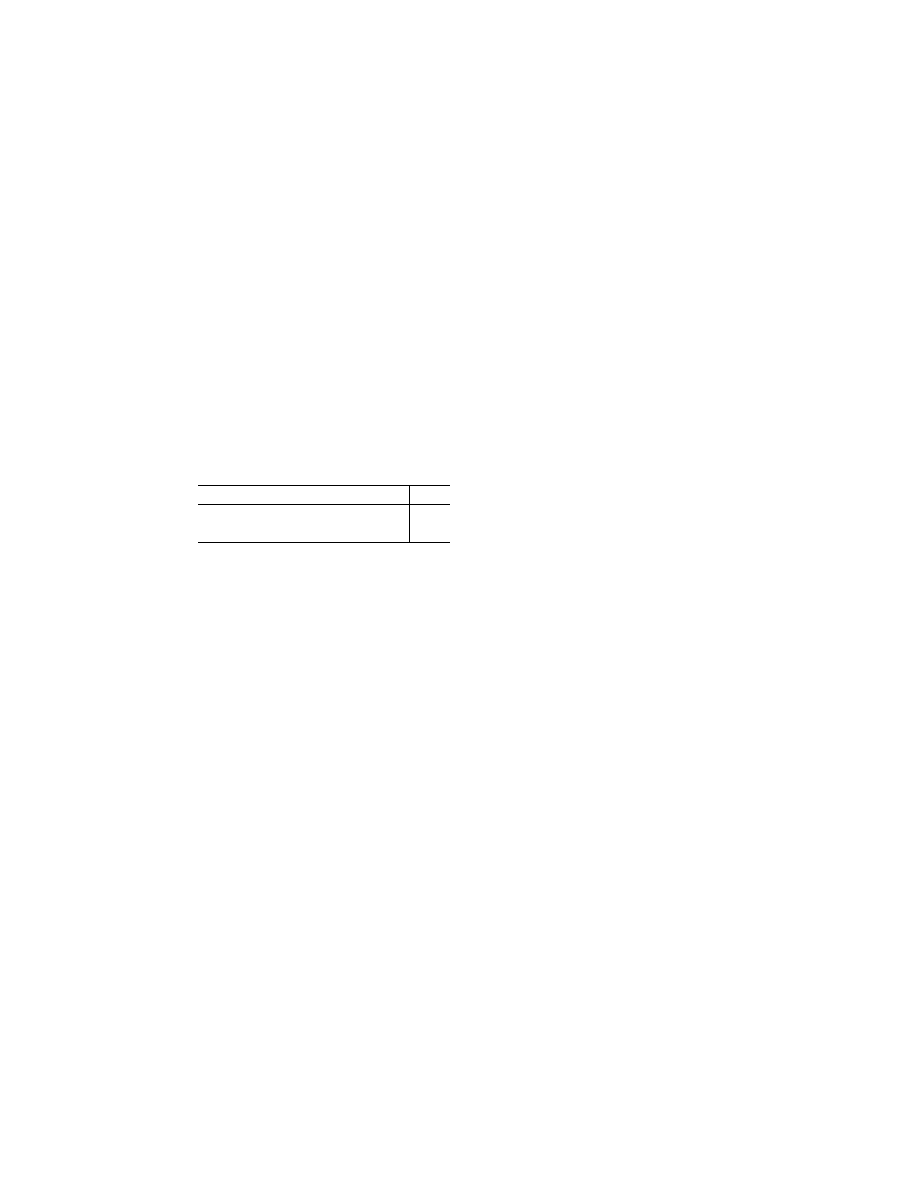
384
49 CFR Ch. I (10–1–23 Edition)
§ 172.102, Nt.
TP36
For material assigned this portable
tank special provision, portable tanks used
to transport such material may be equipped
with fusible elements in the vapor space of
the portable tank.
TP37
IM portable tanks are only author-
ized for the shipment of hydrogen peroxide
solutions in water containing 72% or less hy-
drogen peroxide by weight. Pressure relief
devices shall be designed to prevent the
entry of foreign matter, the leakage of liquid
and the development of any dangerous excess
pressure. In addition, the portable tank must
be designed so that internal surfaces may be
effectively cleaned and passivated. Each
tank must be equipped with pressure relief
devices conforming to the following require-
ments:
Concentration of hydrogen per peroxide solution
Total
1
52% or less ..............................................................
11
Over 52%, but not greater than 60% ......................
22
Over 60%, but not greater than 72% ......................
32
1
Total venting capacity in standard cubic feet hour
(S.C.F.H.) per pound of hydrogen peroxide solution.
TP38
Each portable tank must be insu-
lated with an insulating material so that the
overall thermal conductance at 15.5
°
C (60
°
F)
is no more than 1.5333 kilojoules per hour per
square meter per degree Celsius (0.075 Btu
per hour per square foot per degree Fahr-
enheit) temperature differential. Insulating
materials may not promote corrosion to
steel when wet.
TP39
[Reserved]
TP40
The portable tank must not be
transported when connected with spray ap-
plication equipment.
TP41
[Reserved]
TP44
Each portable tank must be made of
stainless steel, except that steel other than
stainless steel may be used in accordance
with the provisions of § 173.24b(b) of this sub-
chapter. Thickness of stainless steel for tank
shell and heads must be the greater of 7.62
mm (0.300 inch) or the thickness required for
a portable tank with a design pressure at
least equal to 1.5 times the vapor pressure of
the hazardous material at 46
°
C (115
°
F).
TP45
Each portable tank must be made of
stainless steel, except that steel other than
stainless steel may be used in accordance
with the provisions of 173.24b(b) of this sub-
chapter. Thickness of stainless steel for port-
able tank shells and heads must be the great-
er of 6.35 mm (0.250 inch) or the thickness re-
quired for a portable tank with a design pres-
sure at least equal to 1.3 times the vapor
pressure of the hazardous material at 46
°
C
(115
°
F).
TP46
Portable tanks in sodium metal
service are not required to be
hydrostatically retested.
TP47
The 2.5 year internal examination
may be waived or substituted by other test
methods or inspection procedures specified
by the competent authority or its authorized
body, provided that the portable tank is
dedicated to the transport of the
organometallic substances to which this
tank special provision is assigned. However
this examination is required when the condi-
tions of § 180.605(f) are met.
(9)
‘‘W’’ codes.
These provisions apply
only to transportation by water:
Code/Special Provisions
W1 This substance in a non friable prill or
granule form is not subject to the require-
ments of this subchapter when tested in
accordance with the UN Manual of Test
and Criteria (IBR,
see
§ 171.7 of this sub-
chapter) and is found to not meet the defi-
nition or criteria for inclusion in Division
5.1.
W7
Vessel stowage category for uranyl ni-
trate hexahydrate solution is ‘‘D’’ as de-
fined in § 172.101(k)(4).
W8
Vessel stowage category for pyrophoric
thorium metal or pyrophoric uranium
metal is ‘‘D’’ as defined in § 172.101(k)(4).
W9
When offered for transportation by
water, the following Specification pack-
agings are not authorized unless approved
by the Associate Administrator: woven
plastic bags, plastic film bags, textile bags,
paper bags, IBCs and bulk packagings.
W10
When offered for transportation by ves-
sel, the use of Large Packagings (see § 171.8
of this subchapter) is prohibited.
W31
Non-bulk packagings must be hermeti-
cally sealed.
W40
Non-bulk bags are not allowed.
W41
When offered for transportation by
water, this material must be packaged in
bales and be securely and tightly bound
with rope, wire or similar means.
W100
Non-bulk flexible, fibreboard or wood-
en packagings must be sift-proof and
water-resistant or must be fitted with a
sift-proof and water-resistant liner.
[Amdt. 172–123, 55 FR 52582, Dec. 21, 1990]
E
DITORIAL
N
OTE
: For F
EDERAL
R
EGISTER
ci-
tations affecting § 172.102, see the List of CFR
Sections Affected, which appears in the
Finding Aids section of the printed volume
and at
www.govinfo.gov.
E
FFECTIVE
D
ATE
N
OTE
: At 88 FR 60375,
Sept. 1, 2023, in § 172.102, paragraph (c)(1) was
amended by adding special provision 439, ef-
fective Oct. 31, 2023. For the convenience of
the user, the added text is set forth as fol-
lows:
§ 172.102
Special provisions.
* * * * *
(c) * * *
(1) * * *

385
Pipeline and Haz. Matls. Safety Admin., DOT
§ 172.201
439 UN1972 is not authorized for transpor-
tation by rail tank car until either issuance
of a final rule concluding the rulemaking ac-
tion proceeding under RIN 2137–AF54, or
June 30, 2025, whichever occurs first. For in-
formation and the status of RIN 2137–AF54,
please refer to the Office of Management and
Budget’s Office of Information and Regu-
latory Affairs at
www.reginfo.gov.
* * * * *
Subpart C—Shipping Papers
§ 172.200
Applicability.
(a)
Description of hazardous materials
required.
Except as otherwise provided
in this subpart, each person who offers
a hazardous material for transpor-
tation shall describe the hazardous ma-
terial on the shipping paper in the
manner required by this subpart.
(b) This subpart does not apply to
any material, other than a hazardous
substance, hazardous waste or marine
pollutant, that is—
(1) Identified by the letter ‘‘A’’ in col-
umn 1 of the § 172.101 table, except
when the material is offered or in-
tended for transportation by air; or
(2) Identified by the letter ‘‘W’’ in
column 1 of the § 172.101 table, except
when the material is offered or in-
tended for transportation by water; or
(3) A limited quantity package unless
the material is offered for transpor-
tation by aircraft or vessel.
(4) Category B infectious substances
prepared in accordance with § 173.199.
[Amdt. 172–29A, 41 FR 40677, Sept. 20, 1976, as
amended by Amdt. 172–58, 45 FR 34697, May
22, 1980; Amdt. 172–74, 47 FR 43065, Sept. 30,
1982; Amdt. 172–112, 53 FR 17160, May 13, 1988;
Amdt. 172–127, 57 FR 52938, Nov. 5, 1992; 71 FR
32258, June 2, 2006; 76 FR 3365, Jan. 19, 2011; 78
FR 1112, Jan. 7, 2013; 87 FR 79772, Dec. 27,
2022]
§ 172.201
Preparation and retention of
shipping papers.
(a)
Contents.
When a description of
hazardous material is required to be in-
cluded on a shipping paper, that de-
scription must conform to the fol-
lowing requirements:
(1) When a hazardous material and a
material not subject to the require-
ments of this subchapter are described
on the same shipping paper, the haz-
ardous material description entries re-
quired by § 172.202 and those additional
entries that may be required by
§ 172.203:
(i) Must be entered first, or
(ii) Must be entered in a color that
clearly contrasts with any description
on the shipping paper of a material not
subject to the requirements of this sub-
chapter, except that a description on a
reproduction of a shipping paper may
be highlighted, rather than printed, in
a contrasting color (the provisions of
this paragraph apply only to the basic
description required by § 172.202(a)(1),
(2), (3), and (4)), or
(iii) Must be identified by the entry
of an ‘‘X’’ placed before the basic ship-
ping description required by § 172.202 in
a column captioned ‘‘HM.’’ (The ‘‘X’’
may be replaced by ‘‘RQ,’’ if appro-
priate.)
(2) The required shipping description
on a shipping paper and all copies of
the shipping paper used for transpor-
tation purposes must be legible and
printed (manually or mechanically) in
English.
(3) Unless it is specifically authorized
or required in this subchapter, the re-
quired shipping description may not
contain any code or abbreviation.
(4) A shipping paper may contain ad-
ditional information concerning the
material provided the information is
not inconsistent with the required de-
scription. Unless otherwise permitted
or required by this subpart, additional
information must be placed after the
basic description required by
§ 172.202(a).
(5)
Electronic shipping papers.
For
transportation by rail, a rail carrier
may accept shipping paper information
either telephonically (i.e., voice com-
munications and facsimiles) or elec-
tronically (EDI) from an offeror of a
hazardous materials shipment in ac-
cordance with the provisions in para-
graphs (a)(5)(i)–(a)(5)(iv) of this section.
See § 171.8 for the EDI definition.
(i) When the information applicable
to the consignment is provided under
this requirement the information must
be available to the offeror and carrier
at all times during transport, and the
carrier must have and maintain a
printed copy of this information until
delivery of the hazardous materials on
the shipping paper is complete. When a

386
49 CFR Ch. I (10–1–23 Edition)
§ 172.202
paper document is produced, the data
must be presented as required by this
subpart.
(ii) The offeror must forward the
shipping paper (record) for a loaded
movement to the carrier prior to ship-
ment unless the carrier prepares the
shipping paper on behalf of the offeror.
The offeror is only relieved of the duty
to forward the shipping paper once the
offeror has received a copy of the ship-
ping paper from the carrier;
(iii) A carrier that generates a res-
idue shipping paper using information
from the previous loaded movement of
a hazardous materials packaging must
ensure the description of the hazardous
material that accompanies the ship-
ment complies with the offeror’s re-
quest; and
(iv)
Verification.
The carrier and the
offeror must have a procedure by which
the offeror can verify accuracy of the
transmitted hazard communication in-
formation that will accompany the
shipment.
(b) [Reserved]
(c)
Continuation page.
A shipping
paper may consist of more than one
page, if each page is consecutively
numbered and the first page bears a no-
tation specifying the total number of
pages included in the shipping paper.
For example, ‘‘Page 1 of 4 pages.’’
(d)
Emergency response telephone num-
ber.
Except as provided in § 172.604(d), a
shipping paper must contain an emer-
gency response telephone number and,
if utilizing an emergency response in-
formation telephone number service
provider, identify the person (by name
or contract number) who has a contrac-
tual agreement with the service pro-
vider, as prescribed in subpart G of this
part.
(e)
Retention and Recordkeeping.
Each
person who provides a shipping paper
must retain a copy of the shipping
paper required by § 172.200(a), or an
electronic image thereof, that is acces-
sible at or through its principal place
of business and must make the ship-
ping paper available, upon request, to
an authorized official of a Federal,
State, or local government agency at
reasonable times and locations. For a
hazardous waste, the shipping paper
copy must be retained for three years
after the material is accepted by the
initial carrier. For all other hazardous
materials, the shipping paper must be
retained for two years after the mate-
rial is accepted by the initial carrier.
Each shipping paper copy must include
the date of acceptance by the initial
carrier, except that, for rail, vessel, or
air shipments, the date on the ship-
ment waybill, airbill, or bill of lading
may be used in place of the date of ac-
ceptance by the initial carrier. A
motor carrier (as defined in § 390.5 of
subchapter B of chapter III of subtitle
B) using a shipping paper without
change for multiple shipments of one
or more hazardous materials having
the same shipping name and identifica-
tion number may retain a single copy
of the shipping paper, instead of a copy
for each shipment made, if the carrier
also retains a record of each shipment
made, to include shipping name, identi-
fication number, quantity transported,
and date of shipment.
[Amdt. 172–29A, 41 FR 40677, Sept. 20, 1976]
E
DITORIAL
N
OTE
: For F
EDERAL
R
EGISTER
ci-
tations affecting § 172.201, see the List of CFR
Sections Affected, which appears in the
Finding Aids section of the printed volume
and at
www.govinfo.gov.
§ 172.202
Description of hazardous ma-
terial on shipping papers.
(a) The shipping description of a haz-
ardous material on the shipping paper
must include:
(1) The identification number pre-
scribed for the material as shown in
Column (4) of the § 172.101 table;
(2) The proper shipping name pre-
scribed for the material in Column (2)
of the § 172.101 table;
(3) The hazard class or division num-
ber prescribed for the material, as
shown in Column (3) of the § 172.101
table. The subsidiary hazard class or
division number is not required to be
entered when a corresponding sub-
sidiary hazard label is not required. Ex-
cept for combustible liquids, the sub-
sidiary hazard class(es) or subsidiary
division number(s) must be entered in
parentheses immediately following the
primary hazard class or division num-
ber. In addition—
(i) The words ‘‘Class’’ or ‘‘Division’’
may be included preceding the primary
and subsidiary hazard class or division
numbers.

387
Pipeline and Haz. Matls. Safety Admin., DOT
§ 172.202
(ii) The hazard class need not be in-
cluded for the entry ‘‘Combustible liq-
uid, n.o.s.’’
(iii) For domestic shipments, pri-
mary and subsidiary hazard class or di-
vision names may be entered following
the numerical hazard class or division,
or following the basic description.
(4) The packing group in Roman nu-
merals, as designated for the hazardous
material in Column (5) of the § 172.101
table. Class 1 (explosives) materials;
self-reactive substances; Division 5.2
materials; and entries that are not as-
signed a packing group (
e.g.,
Class 7)
are excepted from this requirement.
The packing group may be preceded by
the letters ‘‘PG’’ (for example, ‘‘PG
II’’); and
(5) Except for transportation by air-
craft, the total quantity of hazardous
materials covered by the description
must be indicated (by mass or volume,
or by activity for Class 7 materials)
and must include an indication of the
applicable unit of measurement, for ex-
ample, ‘‘200 kg’’ (440 pounds) or ‘‘50 L’’
(13 gallons). The following provisions
also apply:
(i) For Class 1 materials, the quan-
tity must be the net explosive mass.
For an explosive that is an article,
such as Cartridges, small arms, the net
explosive mass may be expressed in
terms of the net mass of either the ar-
ticle or the explosive materials con-
tained in the article.
(ii) For hazardous materials in sal-
vage packaging, an estimate of the
total quantity is acceptable.
(iii) The following are excepted from
the requirements of paragraph (a)(5) of
this section:
(A) Bulk packages, provided some in-
dication of the total quantity is shown,
for example, ‘‘1 cargo tank’’ or ‘‘2
IBCs.’’
(B) Cylinders, provided some indica-
tion of the total quantity is shown, for
example, ‘‘10 cylinders.’’
(C) Packages containing only residue.
(6) For transportation by aircraft,
the total net mass per package, must
be shown unless a gross mass is indi-
cated in Columns (9A) or (9B) of the
§ 172.101 table in which case the total
gross mass per package must be shown;
or, for Class 7 materials, the quantity
of radioactive material must be shown
by activity. The following provisions
also apply:
(i) For empty uncleaned packaging,
only the number and type of packaging
must be shown;
(ii) For chemical kits and first aid
kits, the total net mass of hazardous
materials must be shown. Where the
kits contain only liquids, or solids and
liquids, the net mass of liquids within
the kits is to be calculated on a 1 to 1
basis, i.e., 1 L (0.3 gallons) equals 1 kg
(2.2 pounds);
(iii) For dangerous goods in machin-
ery or apparatus, the individual total
quantities or an estimate of the indi-
vidual total quantities of dangerous
goods in solid, liquid or gaseous state,
contained in the article must be shown;
(iv) For dangerous goods transported
in a salvage packaging, an estimate of
the quantity of dangerous goods per
package must be shown;
(v) For cylinders, total quantity may
be indicated by the number of cyl-
inders, for example, ‘‘10 cylinders;’’
(vi) For items where ‘‘No Limit’’ is
shown in Column (9A) or (9B) of the
§ 172.101 table, the quantity shown must
be the net mass or volume of the mate-
rial. For articles (
e.g.
, UN2800 and
UN3166) the quantity must be the gross
mass, followed by the letter ‘‘G’’; and
(vii) For hazardous materials in lim-
ited quantities, the total net quantity
per package must be shown unless a
gross mass is indicated in Column 4 of
§ 173.27 Table 3, in which case the total
gross mass per package must be shown.
Where different hazardous materials in
limited quantities are packed together
in the same outer packaging, when a
gross mass is indicated Column 4 of
§ 173.27 Table 3, the net quantity of
each hazardous material must be
shown in addition to the gross mass of
the completed package.
(viii) For authorized consumer com-
modities, the information provided
may be either the gross mass of each
package or the average gross mass of
the packages.
(7) The number and type of packages
must be indicated. The type of pack-
ages must be indicated by description
of the package (for example, ‘‘12
drums’’). Indication of the packaging
specification number (‘‘1H1’’) may be

388
49 CFR Ch. I (10–1–23 Edition)
§ 172.203
included in the description of the pack-
age (for example, ‘‘12 1H1 drums’’ or ‘‘12
drums (UN 1A1)’’). Abbreviations may
be used for indicating packaging types
(for example, ‘‘cyl.’’ for ‘‘cylinder’’)
provided the abbreviations are com-
monly accepted and recognizable.
(b) Except as provided in this sub-
part, the basic description specified in
paragraphs (a)(1), (2), (3), and (4) of this
section must be shown in sequence
with no additional information inter-
spersed. For example, ‘‘UN2744,
Cyclobutyl chloroformate, 6.1, (8, 3),
PG II.’’ Shipping descriptions for haz-
ardous materials offered or intended
for transportation by rail that contain
all the information required in this
subpart and that are formatted and or-
dered in accordance with recognized
electronic data interchange standards
and, to the extent possible, in the order
and manner required by this subpart
are deemed to comply with this para-
graph.
(c)(1) The total quantity of the mate-
rial covered by one description must
appear before or after, or both before
and after, the description required and
authorized by this subpart. The type of
packaging and destination marks may
be entered in any appropriate manner
before or after the basic description.
Abbreviations may be used to express
units of measurement and types of
packagings.
(2) Hazardous materials and haz-
ardous substances transported by high-
way considered ‘‘household wastes’’ as
defined in 40 CFR 261.4, and not subject
to the Environmental Protection Agen-
cy’s hazardous waste regulations in 40
CFR parts 262 and 263, are excepted
from the requirements of this para-
graph.
(d) Technical and chemical group
names may be entered in parentheses
between the proper shipping name and
hazard class or following the basic de-
scription. An appropriate modifier,
such as ‘‘contains’’ or ‘‘containing,’’
and/or the percentage of the technical
constituent may also be used. For ex-
ample: ‘‘UN 1993, Flammable liquids,
n.o.s. (contains Xylene and Benzene), 3,
II’’.
(e) Except for those materials in the
UN Recommendations, the ICAO Tech-
nical Instructions, or the IMDG Code
(IBR, see § 171.7 of this subchapter), a
material that is not a hazardous mate-
rial according to this subchapter may
not be offered for transportation or
transported when its description on a
shipping paper includes a hazard class
or an identification number specified
in the § 172.101 Table.
[Amdt. 172–101, 45 FR 74665, Nov. 10, 1980]
E
DITORIAL
N
OTE
: For F
EDERAL
R
EGISTER
ci-
tations affecting § 172.202, see the List of CFR
Sections Affected, which appears in the
Finding Aids section of the printed volume
and at
www.govinfo.gov.
§ 172.203
Additional description re-
quirements.
(a)
Special permits.
Except as provided
in § 173.23 of this subchapter, each ship-
ping paper issued in connection with a
shipment made under a special permit
must bear the notation ‘‘DOT–SP’’ fol-
lowed by the special permit number as-
signed and located so that the notation
is clearly associated with the descrip-
tion to which the special permit ap-
plies. Each shipping paper issued in
connection with a shipment made
under an exemption or special permit
issued prior to October 1, 2007, may
bear the notation ‘‘DOT–E’’ followed by
the number assigned and so located
that the notation is clearly associated
with the description to which it ap-
plies.
(b)
Limited quantities.
When a ship-
ping paper is required by this sub-
chapter, the description for a material
offered for transportation as ‘‘limited
quantity,’’ as authorized by this sub-
chapter, must include the words ‘‘Lim-
ited Quantity’’ or ‘‘Ltd Qty’’ following
the basic description.
(c)
Hazardous substances.
(1) Except
for Class 7 (radioactive) materials de-
scribed in accordance with paragraph
(d) of this section, if the proper ship-
ping name for a material that is a haz-
ardous substance does not identify the
hazardous substance by name, the
name of the hazardous substance must
be entered in parentheses in associa-
tion with the basic description. If the
material contains two or more haz-
ardous substances, at least two haz-
ardous substances, including the two
with the lowest reportable quantities
(RQs), must be identified. For a haz-
ardous waste, the waste code (e.g.,

389
Pipeline and Haz. Matls. Safety Admin., DOT
§ 172.203
D001), if appropriate, may be used to
identify the hazardous substance.
(2) The letters ‘‘RQ’’ must be entered
on the shipping paper either before or
after the basic description required by
§ 172.202 for each hazardous substance
(see definition in § 171.8 of this sub-
chapter). For example: ‘‘RQ, UN 1098,
Allyl alcohol, 6.1, I, Toxic-inhalation
hazard, Zone B’’; or ‘‘UN 3077, Environ-
mentally hazardous substances, solid,
n.o.s., 9, III, RQ (Adipic acid)’’.
(d)
Radioactive material.
The descrip-
tion for a shipment of a Class 7 (radio-
active) material must include the fol-
lowing additional entries as appro-
priate:
(1) The name of each radionuclide in
the Class 7 (radioactive) material that
is listed in § 173.435 of this subchapter.
For mixtures of radionuclides, the
radionuclides required to be shown
must be determined in accordance with
§ 173.433(g) of this subchapter. Abbre-
viations,
e.g.
, ‘‘
99
Mo,’’ are authorized.
(2) A description of the physical and
chemical form of the material:
(i) For special form materials, the
words ‘‘special form’’ unless the words
‘‘special form’’ already appear in the
proper shipping name; or
(ii) If the material is not in special
form, a description of the physical and
chemical form of the material (generic
chemical descriptions are permitted).
(3) The maximum activity of the ra-
dioactive contents contained in each
package during transport in terms of
the appropriate SI units (
e.g.,
Becquerels (Bq), Terabecquerels (TBq)).
The activity may also be stated in ap-
propriate customary units (
e.g.,
Curies
(Ci), milliCuries (mCi), microCuries
(uCi)) in parentheses following the SI
units. Abbreviations are authorized.
Except for plutonium-239 and pluto-
nium-241, the weight in grams or kilo-
grams of fissile radionuclides (or the
mass of each fissile nuclide for mix-
tures when appropriate) may be in-
serted instead of activity units. For
plutonium-239 and plutonium-241, the
weight in grams of fissile radionuclides
(or the mass of each fissile nuclide for
mixtures when appropriate) may be in-
serted in addition to the activity units.
(4) The category of label applied to
each package in the shipment. For ex-
ample: ‘‘RADIOACTIVE WHITE–I,’’ or
‘‘WHITE–I.’’
(5) The transport index assigned to
each package in the shipment bearing
RADIOACTIVE YELLOW-II or RADIO-
ACTIVE YELLOW-III labels.
(6) For a package containing fissile
Class 7 (radioactive) material:
(i) The words ‘‘Fissile Excepted’’ if
the package is excepted pursuant to
§ 173.453 of this subchapter; or other-
wise
(ii) The criticality safety index for
that package.
(7) For a package approved by the
U.S. Department of Energy (DOE) or
U.S. Nuclear Regulatory Commission
(NRC), a notation of the package iden-
tification marking as prescribed in the
applicable DOE or NRC approval (see
§ 173.471 of the subchapter).
(8) For an export shipment or a ship-
ment in a foreign made package, a no-
tation of the package identification
marking as prescribed in the applicable
International Atomic Energy Agency
(IAEA) Certificate of Competent Au-
thority which has been issued for the
package (see § 173.473 of the sub-
chapter).
(9) For a shipment required by this
subchapter to be consigned as exclusive
use:
(i) An indication that the shipment is
consigned as exclusive use; or
(ii) If all the descriptions on the ship-
ping paper are consigned as exclusive
use, then the statement ‘‘Exclusive Use
Shipment’’ may be entered only once
on the shipping paper in a clearly visi-
ble location.
(10) For the shipment of a package
containing a highway route controlled
quantity of Class 7 (radioactive) mate-
rials (see § 173.403 of this subchapter)
the words ‘‘Highway route controlled
quantity’’ or ‘‘HRCQ’’ must be entered
in association with the basic descrip-
tion.
(e)
Empty packagings.
(1) The descrip-
tion on the shipping paper for a pack-
aging containing the residue of a haz-
ardous material may include the words
‘‘RESIDUE: Last Contained * * *’’ im-
mediately before or after the basic
shipping description on the shipping
paper.

390
49 CFR Ch. I (10–1–23 Edition)
§ 172.203
(2) The description on the shipping
paper for a tank car containing the res-
idue of a hazardous material must in-
clude the phrase, ‘‘RESIDUE: Last
Contained * * *’’ immediately before or
after the basic shipping description or
immediately preceding the proper ship-
ping name of the material on the ship-
ping paper.
(f)
Transportation by air.
A statement
indicating that the shipment is within
the limitations prescribed for either
passenger and cargo aircraft or cargo
aircraft only must be entered on the
shipping paper.
(g)
Transportation by rail.
(1) A ship-
ping paper prepared by a rail carrier
for a rail car, freight container, trans-
port vehicle or portable tank that con-
tains hazardous materials must include
the reporting mark and number when
displayed on the rail car, freight con-
tainer, transport vehicle or portable
tank.
(2) The shipping paper for each DOT-
113 tank car containing a Division 2.1
material or its residue must contain an
appropriate notation, such as ‘‘DOT
113’’, and the statement ‘‘Do not hump
or cut off car while in motion.’’
(3) When shipments of elevated tem-
perature materials are transported
under the exception permitted in
§ 173.247(h)(3) of this subchapter, the
shipping paper must contain an appro-
priate notation, such as ‘‘Maximum op-
erating speed 15 mph.’’.
(h)
Transportation by highway.
Fol-
lowing the basic description for a haz-
ardous material in a Specification MC
330 or MC 331 cargo tank, there must be
entered for—
(1)
Anhydrous ammonia.
(i) The words
‘‘0.2 PERCENT WATER’’ to indicate
the suitability for shipping anhydrous
ammonia in a cargo tank made of
quenched and tempered steel as author-
ized by § 173.315(a), Note 14 of this sub-
chapter, or
(ii) The words ‘‘NOT FOR Q and T
TANKS’’ when the anhydrous ammonia
does not contain 0.2 percent or more
water by weight.
(2)
Liquefied petroleum gas.
(i) The
word ‘‘NONCORROSIVE’’ or
‘‘NONCOR’’ to indicate the suitability
for shipping ‘‘Noncorrosive’’ liquefied
petroleum gas in a cargo tank made of
quenched and tempered steel as author-
ized by § 173.315(a), Note 15 of this sub-
chapter, or
(ii) The words ‘‘NOT FOR Q and T
TANKS’’ for grades of liquefied petro-
leum gas other than ‘‘Noncorrosive’’.
(i)
Transportation by water.
Each ship-
ment by water must have the following
additional shipping paper entries:
(1) The name of the shipper.
(2) A minimum flashpoint, if 60
°
C
(140
°
F) or below (in
°
C closed cup
(c.c.)), in association with the basic de-
scription, for Class 3 flammable liquid
materials (as a primary or subsidiary
hazard). For lab packs packaged in con-
formance with § 173.12(b) of this sub-
chapter, an indication that the lowest
flashpoint of all hazardous materials
contained in the lab pack is below 23
°
C
or that the flash point is not less than
23
°
C but not more than 60
°
C must be
identified on the shipping paper in lieu
of the minimum flashpoint.
(3) For a hazardous material con-
signed under an ‘‘n.o.s.’’ entry not in-
cluded in the segregation groups listed
in section 3.1.4 of the IMDG Code (IBR
see § 171.7 of this subchapter) but be-
longing, in the opinion of the con-
signor, to one of these groups, the ap-
propriate segregation group must be
shown in association with the basic de-
scription (for example, IMDG Code seg-
regation group—1 Acids). When no seg-
regation group is applicable, there is
no requirement to indicate that condi-
tion.
(4) For lithium cells or batteries
transported in accordance with
§ 173.185(f), ‘‘DAMAGED/DEFECTIVE’’;
and for lithium cells or batteries trans-
ported for purposes of disposal or recy-
cling, ‘‘LITHIUM BATTERIES FOR
DISPOSAL’’ or ‘‘LITHIUM BAT-
TERIES FOR RECYCLING’’, as appro-
priate.
(j) [Reserved]
(k)
Technical names for ‘‘n.o.s.’’ and
other generic descriptions.
Unless other-
wise excepted, if a material is de-
scribed on a shipping paper by one of
the proper shipping names identified by
the letter ‘‘G’’ in column (1) of the
§ 172.101 Table, the technical name of
the hazardous material must be en-
tered in parentheses in association
with the basic description. For example
‘‘UN 1760, Corrosive liquid, n.o.s., (Oc-
tanoyl chloride), 8, II’’, or ‘‘UN 1760,

391
Pipeline and Haz. Matls. Safety Admin., DOT
§ 172.203
Corrosive liquid, n.o.s., 8, II (contains
Octanoyl chloride)’’. The word ‘‘con-
tains’’ may be used in association with
the technical name, if appropriate. For
organic peroxides which may qualify
for more than one generic listing de-
pending on concentration, the tech-
nical name must include the actual
concentration being shipped or the con-
centration range for the appropriate
generic listing. For example, ‘‘UN 3102,
Organic peroxide type B, solid, 5.2,
(dibenzoyl peroxide, 52–100%)’’ or ‘‘UN
3108, Organic peroxide type E, solid, 5.2,
(dibenzoyl peroxide, paste, <52%)’’.
Shipping descriptions for toxic mate-
rials that meet the criteria of Division
6.1, PG I or II (as specified in § 173.132(a)
of this subchapter) or Division 2.3 (as
specified in § 173.115(c) of this sub-
chapter) and are identified by the let-
ter ‘‘G’’ in column (1) of the § 172.101
Table, must have the technical name of
the toxic constituent entered in paren-
theses in association with the basic de-
scription. A material classed as Divi-
sion 6.2 and assigned identification
number UN 2814 or UN 2900 that is sus-
pected to contain an unknown Cat-
egory A infectious substance must
have the words ‘‘suspected Category A
infectious substance’’ entered in paren-
theses in place of the technical name
as part of the proper shipping descrip-
tion. For additional technical name op-
tions, see the definition for ‘‘Technical
name’’ in § 171.8. A technical name
should not be marked on the outer
package of a Division 6.2 material (see
§ 172.301(b)).
(1) If a hazardous material is a mix-
ture or solution of two or more haz-
ardous materials, the technical names
of at least two components most pre-
dominately contributing to the hazards
of the mixture or solution must be en-
tered on the shipping paper as required
by paragraph (k) of this section. For
example, ‘‘UN 2924, Flammable liquid,
corrosive, n.o.s., 3 (8), II (contains
Methanol, Potassium hydroxide)’’.
(2) The provisions of this paragraph
do not apply—
(i) To a material that is a hazardous
waste and described using the proper
shipping name ‘‘Hazardous waste, liq-
uid
or
solid, n.o.s.’’, classed as a mis-
cellaneous Class 9, provided the EPA
hazardous waste number is included on
the shipping paper in association with
the basic description, or provided the
material is described in accordance
with the provisions of § 172.203(c) of this
part.
(ii) To a material for which the haz-
ard class is to be determined by testing
under the criteria in § 172.101(c)(11).
(iii) If the n.o.s. description for the
material (other than a mixture of haz-
ardous materials of different classes
meeting the definitions of more than
one hazard class) contains the name of
the chemical element or group which is
primarily responsible for the material
being included in the hazard class indi-
cated.
(iv) If the n.o.s. description for the
material (which is a mixture of haz-
ardous materials of different classes
meeting the definition of more than
one hazard class) contains the name of
the chemical element or group respon-
sible for the material meeting the defi-
nition of one of these classes. In such
cases, only the technical name of the
component that is not appropriately
identified in the n.o.s. description shall
be entered in parentheses.
(l)
Marine pollutants.
(1) For a proper
shipping name used to describe a haz-
ardous material that is a marine pol-
lutant, either assigned the letter ‘‘G’’
in column (1) of the § 172.101 hazardous
materials table, or that contains the
text ‘‘n.o.s.’’, the name of the compo-
nent that makes the material a marine
pollutant must appear in parentheses
in association with the basic descrip-
tion. Where two or more components
that make the material a marine pol-
lutant are present, the names of at
least two of the components most pre-
dominantly contributing to the marine
pollutant designation must appear in
parentheses in association with the
basic description. For material de-
scribed using ‘‘UN3077, Environ-
mentally hazardous substance, solid,
n.o.s.’’ and ‘‘UN3082, Environmentally
hazardous substance, liquid, n.o.s.,’’
see
§ 172.102(c)(1), special provision 441 for
additional provisions.
(2) The words ‘‘Marine Pollutant’’
shall be entered in association with the
basic description for a material which
is a marine pollutant.
(3) Except for transportation by ves-
sel, marine pollutants subject to the

392
49 CFR Ch. I (10–1–23 Edition)
§ 172.204
provisions of 49 CFR 130.11 are excepted
from the requirements of paragraph (l)
of this section if a phrase indicating
the material is an oil is placed in asso-
ciation with the basic description.
(4) Except when all or part of trans-
portation is by vessel, marine pollut-
ants in non-bulk packagings are not
subject to the requirements of para-
graphs (l)(1) and (l)(2) of this section
(see § 171.4 of this subchapter).
(m)
Poisonous Materials.
Notwith-
standing the hazard class to which a
material is assigned, for materials that
are poisonous by inhalation (see § 171.8
of this subchapter), the words ‘‘Poison-
Inhalation Hazard’’ or ‘‘Toxic-Inhala-
tion Hazard’’ and the words ‘‘Zone A’’,
‘‘Zone B’’, ‘‘Zone C’’, or ‘‘Zone D’’ for
gases or ‘‘Zone A’’ or ‘‘Zone B’’ for liq-
uids, as appropriate, shall be entered
on the shipping paper immediately fol-
lowing the shipping description. The
word ‘‘Poison’’ or ‘‘Toxic’’ need not be
repeated if it otherwise appears in the
shipping description.
(n)
Elevated temperature materials.
If a
liquid material in a package meets the
definition of an elevated temperature
material in § 171.8 of this subchapter,
and the fact that it is an elevated tem-
perature material is not disclosed in
the proper shipping name (for example,
when the words ‘‘Molten’’ or ‘‘Elevated
temperature’’ are part of the proper
shipping name), the word ‘‘HOT’’ must
immediately precede the proper ship-
ping name of the material on the ship-
ping paper.
(o)
Organic peroxides, polymerizing sub-
stances, and self-reactive materials.
The
description on a shipping paper for a
Division 4.1 (polymerizing substance
and self-reactive) material or a Divi-
sion 5.2 (organic peroxide) material
must include the following additional
information, as appropriate:
(1) If notification or competent au-
thority approval is required, the ship-
ping paper must contain a statement of
approval of the classification and con-
ditions of transport.
(2) For Division 4.1 (polymerizing
substance and self-reactive) and Divi-
sion 5.2 (organic peroxide) materials
that require temperature control dur-
ing transport, the words ‘‘TEMPERA-
TURE CONTROLLED’’ must be added
as part of the proper shipping name,
unless already part of the proper ship-
ping name. The control and emergency
temperature must be included on the
shipping paper.
(3) The word ‘‘SAMPLE’’ must be in-
cluded in association with the basic de-
scription when a sample of a Division
4.1 (self-reactive) material (see
§ 173.224(c)(3) of this subchapter) or Di-
vision 5.2 (organic peroxide) material
(see § 173.225(b)(2) of this subchapter) is
offered for transportation.
(p)
Liquefied petroleum gas (LPG).
The
word ‘‘non-odorized’’ or ‘‘not-odorized’’
must be included in association with
the proper shipping description on a
shipping paper when non-odorized liq-
uefied petroleum gas is offered for
transportation.
(q)
Holding time.
The date at which
the actual holding time ends, as cal-
culated in accordance with § 178.338–9,
must be provided on the shipping paper
in association with the basic descrip-
tion for refrigerated liquefied gases
transported in a portable tank.
[Amdt. 172–29A, 41 FR 40677, Sept. 20, 1976]
E
DITORIAL
N
OTE
: For F
EDERAL
R
EGISTER
ci-
tations affecting § 172.203, see the List of CFR
Sections Affected, which appears in the
Finding Aids section of the printed volume
and at
www.govinfo.gov.
§ 172.204
Shipper’s certification.
(a)
General.
Except as provided in
paragraphs (b) and (c) of this section,
each person who offers a hazardous ma-
terial for transportation shall certify
that the material is offered for trans-
portation in accordance with this sub-
chapter by printing (manually or me-
chanically) on the shipping paper con-
taining the required shipping descrip-
tion the certification contained in
paragraph (a)(1) of this section or the
certification (declaration) containing
the language contained in paragraph
(a)(2) of this section. For transpor-
tation by rail only, the certification
may be received verbally or with an
electronic signature in conformance
with paragraphs (a)(3)(i) and (a)(3)(ii) of
this section.
(1) ‘‘This is to certify that the above-
named materials are properly classi-
fied, described, packaged, marked and
labeled, and are in proper condition for

393
Pipeline and Haz. Matls. Safety Admin., DOT
§ 172.204
transportation according to the appli-
cable regulations of the Department of
Transportation.’’
N
OTE
: In line one of the certification the
words ‘‘herein-named’’ may be substituted
for the words ‘‘above-named’’.
(2) ‘‘I hereby declare that the con-
tents of this consignment are fully and
accurately described above by the prop-
er shipping name, and are classified,
packaged, marked and labeled/plac-
arded, and are in all respects in proper
condition for transport according to
applicable international and national
governmental regulations.’’
N
OTE TO PARAGRAPH
(a)(2): In the certifi-
cation the word ‘‘above’’ may be substituted
for the word ‘‘below’’ as appropriate.
(3)
Rail only certifications.
For trans-
portation by rail, the shipping paper
certification may also be accomplished
by one of the following methods:
(i)
Verbal Certification.
When received
telephonically, by the carrier reading
the complete shipping description that
will accompany the shipment back to
the offeror and receiving verbal ac-
knowledgment that the description is
as required. This verbal acknowledge-
ment must be recorded, either on the
shipping document or in a separate
record, e.g., the waybill, in accordance
with § 174.24, and must include the date
and name of the person who provided
this information; or
(ii)
Electronic certification.
When
transmitted electronically, by com-
pleting the field designated for the
shipper’s signature with the name of
the principal person, partner, officer,
or employee of the offeror or their
agent, the shipper is also certifying its
compliance with the certification spec-
ified in this paragraph (a).
(b)
Exceptions.
(1) Except for a haz-
ardous waste, no certification is re-
quired for a hazardous material offered
for transportation by motor vehicle
and transported:
(i) In a cargo tank supplied by the
carrier, or
(ii) By the shipper as a private car-
rier except for a hazardous material
that is to be reshipped or transferred
from one carrier to another.
(2) No certification is required for the
return of an empty tank car which pre-
viously contained a hazardous material
and which has not been cleaned or
purged.
(c)
Transportation by air
—(1)
General.
Certification containing the following
language may be used in place of the
certification required by paragraph (a)
of this section:
I hereby certify that the contents of this
consignment are fully and accurately de-
scribed above by proper shipping name and
are classified, packaged, marked and labeled,
and in proper condition for carriage by air
according to applicable national govern-
mental regulations.
N
OTE TO PARAGRAPH
(c)(1): In the certifi-
cation, the word ‘‘packed’’ may be used in-
stead of the word ‘‘packaged’’ until October
1, 2010.
(2)
Certificate in duplicate.
Each per-
son who offers a hazardous material to
an aircraft operator for transportation
by air shall provide two copies of the
certification required in this section.
(See § 175.30 of this subchapter.)
(3)
Additional certification require-
ments.
Effective October 1, 2006, each
person who offers a hazardous material
for transportation by air must add to
the certification required in this sec-
tion the following statement:
‘‘I declare that all of the applicable
air transport requirements have been
met.’’
(i) Each person who offers any pack-
age or overpack of hazardous materials
for transport by air must ensure that:
(A) The articles or substances are not
prohibited for transport by air (see the
§ 172.101 Table);
(B) The articles or substances are
properly classed, marked and labeled
and otherwise in a condition for trans-
port as required by this subchapter;
(C) The articles or substances are
packaged in accordance with all the
applicable air transport requirements,
including appropriate types of pack-
aging that conform to the packing re-
quirements and the ‘‘A’’ Special Provi-
sions in § 172.102; inner packaging and
maximum quantity per package limits;
the compatibility requirements (see,
for example, § 173.24 of this subchapter);
and requirements for closure for both
inner and outer packagings, absorbent
materials, and pressure differential in

394
49 CFR Ch. I (10–1–23 Edition)
§ 172.205
§ 173.27 of this subchapter. Other re-
quirements may also apply. For exam-
ple, single packagings may be prohib-
ited, inner packaging may need to be
packed in intermediate packagings,
and certain materials may be required
to be transported in packagings meet-
ing a more stringent performance
level.
(ii) [Reserved]
(4)
Radioactive material.
Each person
who offers any radioactive material for
transportation aboard a passenger-car-
rying aircraft shall sign (mechanically
or manually) a printed certificate stat-
ing that the shipment contains radio-
active material intended for use in, or
incident to, research, or medical diag-
nosis or treatment.
(d)
Signature.
The certifications re-
quired by paragraph (a) or (c) of this
section:
(1) Must be legibly signed by a prin-
cipal, officer, partner, or employee of
the shipper or his agent; and
(2) May be legibly signed manually,
by typewriter, or by other mechanical
means.
(3) For transportation by rail, when
transmitted by telephone or electroni-
cally, the signature must be in one of
the following forms: The name of the
principal person, partner, officer, or
employee of the offeror or his agent in
a computer field defined for that pur-
pose.
[Amdt. 172–29A, 41 FR 40677, Sept. 20, 1976]
E
DITORIAL
N
OTE
: For F
EDERAL
R
EGISTER
ci-
tations affecting § 172.204, see the List of CFR
Sections Affected, which appears in the
Finding Aids section of the printed volume
and at
www.govinfo.gov.
§ 172.205
Hazardous waste manifest.
(a) No person may offer, transport,
transfer, or deliver a hazardous waste
(waste) unless an EPA Form 8700–22
and 8700–22A (when necessary) haz-
ardous waste manifest (manifest) is
prepared in accordance with 40 CFR
262.20 and is signed, carried, and given
as required of that person by this sec-
tion.
(b) The shipper (generator) shall pre-
pare the manifest in accordance with 40
CFR part 262.
(c) The original copy of the manifest
must be dated by, and bear the hand-
written signature of, the person rep-
resenting:
(1) The shipper (generator) of the
waste at the time it is offered for
transportation, and
(2) The initial carrier accepting the
waste for transportation.
(d) A copy of the manifest must be
dated by, and bear the handwritten sig-
nature of the person representing:
(1) Each subsequent carrier accepting
the waste for transportation, at the
time of acceptance, and
(2) The designated facility receiving
the waste, upon receipt.
(e) A copy of the manifest bearing all
required dates and signatures must be:
(1) Given to a person representing
each carrier accepting the waste for
transportation,
(2) Carried during transportation in
the same manner as required by this
subchapter for shipping papers,
(3) Given to a person representing the
designated facility receiving the waste,
(4) Returned to the shipper (gener-
ator) by the carrier that transported
the waste from the United States to a
foreign destination with a notation of
the date of departure from the United
States, and
(5) Retained by the shipper (gener-
ator) and by the initial and each subse-
quent carrier for three years from the
date the waste was accepted by the ini-
tial carrier. Each retained copy must
bear all required signatures and dates
up to and including those entered by
the next person who received the
waste.
(f)
Transportation by rail.
Notwith-
standing the requirements of para-
graphs (d) and (e) of this section, the
following requirements apply:
(1) When accepting hazardous waste
from a non-rail transporter, the initial
rail transporter must:
(i) Sign and date the manifest ac-
knowledging acceptance of the haz-
ardous waste;
(ii) Return a signed copy of the mani-
fest to the non-rail transporter;
(iii) Forward at least three copies of
the manifest to:
(A) The next non-rail transporter, if
any;
(B) The designated facility, if the
shipment is delivered to that facility
by rail; or

395
Pipeline and Haz. Matls. Safety Admin., DOT
§ 172.300
(C) The last rail transporter des-
ignated to handle the waste in the
United States; and
(iv) Retain one copy of the manifest
and rail shipping paper in accordance
with 40 CFR 263.22.
(2) Rail transporters must ensure
that a shipping paper containing all
the information required on the mani-
fest (excluding the EPA identification
numbers, generator certification and
signatures) and, for exports, an EPA
Acknowledgment of Consent accom-
panies the hazardous waste at all
times. Intermediate rail transporters
are not required to sign either the
manifest or shipping paper.
(3) When delivering hazardous waste
to the designated facility, a rail trans-
porter must:
(i) Obtain the date of delivery and
handwritten signature of the owner or
operator of the designated facility on
the manifest or the shipping paper (if
the manifest has not been received by
the facility); and
(ii) Retain a copy of the manifest or
signed shipping paper in accordance
with 40 CFR 263.22.
(4) When delivering hazardous waste
to a non-rail transporter, a rail trans-
porter must:
(i) Obtain the date of delivery and
the handwritten signature of the next
non-rail transporter on the manifest;
and
(ii) Retain a copy of the manifest in
accordance with 40 CFR 263.22.
(5) Before accepting hazardous waste
from a rail transporter, a non-rail
transporter must sign and date the
manifest and provide a copy to the rail
transporter.
(g) The person delivering a hazardous
waste to an initial rail carrier shall
send a copy of the manifest, dated and
signed by a representative of the rail
carrier, to the person representing the
designated facility.
(h) A hazardous waste manifest re-
quired by 40 CFR part 262, containing
all of the information required by this
subpart, may be used as the shipping
paper required by this subpart.
(i) The shipping description for a haz-
ardous waste must be modified as re-
quired by § 172.101(c)(9).
(j) Electronic manifests that are ob-
tained, completed, and transmitted in
accordance with 40 CFR262.20(a)(3), and
used in accordance with 40 CFR 262.24
in lieu of EPA Forms 8700–22 and 8700–
22A are the legal equivalent of paper
manifest forms bearing handwritten
signatures, and satisfy for all purposes
any requirements in these regulations
to obtain, complete, sign, provide, use,
or retain a manifest. Electronic signa-
tures in conformance with 40 CFR
262.25 are therefore acceptable in lieu
of handwritten signatures required by
paragraphs (c) and (d) of this section
provided one printed copy of the elec-
tronic manifest bearing the electronic
signature is provided to the initial
transporter as required by 40 CFR
262.24(d). A copy of the electronic mani-
fest would satisfy the 3-year retention
requirement for maintaining a copy of
the manifest.
[Amdt. 172–58, 45 FR 34698, May 22, 1980, as
amended by Amdt. 172–90, 49 FR 10510, Mar.
20, 1984; 49 FR 11184, Mar. 26, 1984; Amdt. 172–
248, 61 FR 28675, June 5, 1996; 70 FR 34075,
June 13, 2005; 83 FR 55806, Nov. 7, 2018]
Subpart D—Marking
§ 172.300
Applicability.
(a) Each person who offers a haz-
ardous material for transportation
shall mark each package, freight con-
tainer, and transport vehicle con-
taining the hazardous material in the
manner required by this subpart.
(b) When assigned the function by
this subpart, each carrier that trans-
ports a hazardous material shall mark
each package, freight container, and
transport vehicle containing the haz-
ardous material in the manner required
by this subpart.
(c) Unless otherwise provided in a
specific rule, stocks of preprinted pack-
agings marked in accordance with this
subpart prior to the effective date of a
final rule may be continued in use, in
the manner previously authorized,
until depleted or for a one-year period
subsequent to the compliance date of
the marking amendment, whichever is
less.
[Amdt. 172–101, 45 FR 74666, Nov. 10, 1980, as
amended at 76 FR 3365, Jan. 19, 2011]

396
49 CFR Ch. I (10–1–23 Edition)
§ 172.301
§ 172.301
General marking require-
ments for non-bulk packagings.
(a)
Proper shipping name and identi-
fication number.
(1) Except as otherwise
provided by this subchapter, each per-
son who offers a hazardous material for
transportation in a non-bulk packaging
must mark the package with the prop-
er shipping name and identification
number (preceded by ‘‘UN’’, ‘‘NA’’ or
‘‘ID,’’ as appropriate), as shown in the
§ 172.101 Hazardous Materials Table.
The identification number marking
preceded by ‘‘UN’’, ‘‘NA’’, or ‘‘ID’’ as
appropriate must be marked in char-
acters at least 12 mm (0.47 inches) high.
Packages with a maximum capacity of
30 liters (8 gallons) or less, 30 kg (66
pounds) maximum net mass, or cyl-
inders with a water capacity of 60 liters
(16 gallons) or less must be marked
with characters at least 6 mm (0.24
inches) high. Packages with a max-
imum capacity of 5 liters (1.32 gallons)
or less or 5 kg maximum net mass (11
pounds) or less must be marked in a
size appropriate for the size of the
package.
(i)
Transitional exception.
For domes-
tic transportation, until January 1,
2017, the identification number mark-
ings are not subject to the minimum
size requirements specified in this
paragraph (a)(1).
(ii) Exception for permanently
marked packagings. For domestic
transportation, a packaging manufac-
tured prior to January 1, 2017 and per-
manently marked (e.g., by embossing
or through a heat stamp process) with
the appropriate identification number
marking may continue in service until
the end of its useful life regardless of
whether the identification number
markings meet the minimum size re-
quirements specified in this paragraph
(a)(1).
(2) The proper shipping name for a
hazardous waste (as defined in § 171.8 of
this subchapter) is not required to in-
clude the word ‘‘waste’’ if the package
bears the EPA marking prescribed by
40 CFR 262.32.
(3)
Large quantities of a single haz-
ardous material in non-bulk packages.
A
transport vehicle or freight container
containing only a single hazardous ma-
terial in non-bulk packages must be
marked, on each side and each end as
specified in the § 172.332 or § 172.336,
with the identification number speci-
fied for the hazardous material in the
§ 172.101 Table, subject to the following
provisions and limitations:
(i) Each package is marked with the
same proper shipping name and identi-
fication number;
(ii) The aggregate gross weight of the
hazardous material is 4,000 kg (8,820
pounds) or more;
(iii) All of the hazardous material is
loaded at one loading facility;
(iv) The transport vehicle or freight
container contains no other material,
hazardous or otherwise; and
(v) The identification number mark-
ing requirement of this paragraph (a)(3)
does not apply to Class 1, Class 7, or to
non-bulk packagings for which identi-
fication numbers are not required.
(b)
Technical names.
In addition to the
marking required by paragraph (a) of
this section, each non-bulk packaging
containing a hazardous material sub-
ject to the provisions of § 172.203(k) of
this part, except for a Division 6.2 ma-
terial, must be marked with the tech-
nical name in parentheses in associa-
tion with the proper shipping name in
accordance with the requirements and
exceptions specified for display of tech-
nical descriptions on shipping papers in
§ 172.203(k) of this part. A technical
name should not be marked on the
outer package of a Division 6.2 mate-
rial.
(c)
Special permit packagings.
Except
as provided in § 173.23 of this sub-
chapter, the outside of each package
authorized by a special permit must be
plainly and durably marked ‘‘DOT–SP’’
followed by the special permit number
assigned. Packages authorized by an
exemption issued prior to October 1,
2007, may be plainly and durably
marked ‘‘DOT–E’’ in lieu of ‘‘DOT–SP’’
followed by the number assigned as
specified in the most recent version of
that exemption.
(d)
Consignee’s or consignor’s name and
address.
Each person who offers for
transportation a hazardous material in
a non-bulk package shall mark that
package with the name and address of
the consignor or consignee except when
the package is—

397
Pipeline and Haz. Matls. Safety Admin., DOT
§ 172.302
(1) Transported by highway only and
will not be transferred from one motor
carrier to another; or
(2) Part of a carload lot, truckload
lot or freight container load, and the
entire contents of the rail car, truck or
freight container are shipped from one
consignor to one consignee.
(e)
Previously marked packagings.
A
package which has been previously
marked as required for the material it
contains and on which the marking re-
mains legible, need not be remarked.
(For empty packagings, see § 173.29 of
this subchapter.)
(f)
NON-ODORIZED marking on cyl-
inders containing LPG.
No person may
offer for transportation or transport a
specification cylinder, except a Speci-
fication 2P or 2Q container or a Speci-
fication 39 cylinder, containing
unodorized liquefied petroleum gas
(LPG) unless it is legibly marked NON-
ODORIZED or NOT ODORIZED in let-
ters not less than 6.3 mm (0.25 inches)
in height near the marked proper ship-
ping name required by paragraph (a) of
this section. The NON-ODORIZED or
NOT ODORIZED marking may appear
on a cylinder used for both unodorized
and odorized LPG.
[Amdt. 172–123, 55 FR 52590, Dec. 21, 1990, as
amended by Amdt. 172–151, 62 FR 1227, Jan. 8,
1997; 62 FR 39404, July 22, 1997; 63 FR 16075,
Apr. 1, 1998; 66 FR 45182, Aug. 28, 2001; 68 FR
45030, July 31, 2003; 69 FR 64471, Nov. 4, 2004;
70 FR 73164, Dec. 9, 2005; 71 FR 32258, June 2,
2006; 76 FR 3365, Jan. 19, 2011; 76 FR 56314,
Sept. 13, 2011; 78 FR 1072, Jan. 7, 2013; 78 FR
65478, Oct. 31, 2013; 81 FR 35540, June 2, 2016;
87 FR 44990, July 26, 2022]
§ 172.302
General marking require-
ments for bulk packagings.
(a)
Identification numbers.
Except as
otherwise provided in this subpart, no
person may offer for transportation or
transport a hazardous material in a
bulk packaging unless the packaging is
marked as required by § 172.332 with the
identification number specified for the
material in the § 172.101 table—
(1) On each side and each end, if the
packaging has a capacity of 3,785 L
(1,000 gallons) or more;
(2) On two opposing sides, if the pack-
aging has a capacity of less than 3,785
L (1,000 gallons); or
(3) For cylinders permanently in-
stalled on a tube trailer motor vehicle,
on each side and each end of the motor
vehicle.
(b)
Size of markings.
Except as other-
wise provided, markings required by
this subpart on bulk packagings
must—
(1) Have a width of at least 6.0 mm
(0.24 inch) and a height of at least 100
mm (3.9 inches) for rail cars;
(2) Have a width of at least 4.0 mm
(0.16 inch) and a height of at least 12
mm (0.47 inch) for portable tanks with
capacities of less than 3,785 L (1,000 gal-
lons) and a width of at least 4.0 mm
(0.16 inch) and a height of 25 mm (one
inch) for IBCs; and
(3) Have a width of at least 6.0 mm
(0.24 inch) and a height of at least 50
mm (2.0 inches) for cargo tanks and
other bulk packagings.
(c)
Special permit packagings.
Except
as provided in § 173.23 of this sub-
chapter, the outside of each package
used under the terms of a special per-
mit must be plainly and durably
marked ‘‘DOT–SP’’ followed by the spe-
cial permit number assigned. Packages
authorized by an exemption issued
prior to October 1, 2007 may be plainly
and durably marked ‘‘DOT–E’’ in lieu
of ‘‘DOT–SP’’ followed by the number
assigned as specified in the most recent
version of that exemption.
(d) Each bulk packaging marked with
a proper shipping name, common name
or identification number as required by
this subpart must remain marked when
it is emptied unless it is—
(1) Sufficiently cleaned of residue and
purged of vapors to remove any poten-
tial hazard; or
(2) Refilled, with a material requiring
different markings or no markings, to
such an extent that any residue re-
maining in the packaging is no longer
hazardous.
(e) Additional requirements for
marking portable tanks, cargo tanks,
tank cars, multi-unit tank car tanks,
and other bulk packagings are pre-
scribed in §§ 172.326, 172.328, 172.330, and
172.331, respectively, of this subpart.
(f) A bulk packaging marked prior to
October 1, 1991, in conformance to the
regulations of this subchapter in effect
on September 30, 1991, need not be re-
marked if the key words of the proper
shipping name are identical to those
currently specified in the § 172.101

398
49 CFR Ch. I (10–1–23 Edition)
§ 172.303
table. For example, a tank car marked
‘‘NITRIC OXIDE’’ need not be re-
marked ‘‘NITRIC OXIDE, COM-
PRESSED’’.
(g) A rail car, freight container,
truck body or trailer in which the lad-
ing has been fumigated with any haz-
ardous material, or is undergoing fumi-
gation, must be marked as specified in
§ 173.9 of this subchapter.
[Amdt. 172–123, 55 FR 52591, Dec. 21, 1990, as
amended at 56 FR 66254, Dec. 20, 1991; Amdt.
172–150, 61 FR 50624, Sept. 26, 1996; Amdt. 172–
151, 62 FR 1228, Jan. 8, 1997; 62 FR 39398, July
22, 1997; 66 FR 45379, Aug. 28, 2001; 70 FR 73164,
Dec. 9, 2005; 72 FR 55692, Oct. 1, 2007; 85 FR
75712, Nov. 25, 2020]
§ 172.303
Prohibited marking.
(a) No person may offer for transpor-
tation or transport a package which is
marked with the proper shipping name,
the identification number of a haz-
ardous material or any other markings
indicating that the material is haz-
ardous (e.g., RQ, INHALATION HAZ-
ARD) unless the package contains the
identified hazardous material or its
residue.
(b) This section does not apply to—
(1) Transportation of a package in a
transport vehicle or freight container
if the package is not visible during
transportation and is loaded by the
shipper and unloaded by the shipper or
consignee.
(2) Markings on a package which are
securely covered in transportation.
(3) The marking of a shipping name
on a package when the name describes
a material not regulated under this
subchapter.
[Amdt. 172–123, 55 FR 52591, Dec. 21, 1990, as
amended at 56 FR 66254, Dec. 20, 1991; 72 FR
55692, Oct. 1, 2007]
§ 172.304
Marking requirements.
(a) The marking required in this sub-
part—
(1) Must be durable, in English and
printed on or affixed to the surface of a
package or on a label, tag, or sign.
(2) Must be displayed on a back-
ground of sharply contrasting color;
(3) Must be unobscured by labels or
attachments; and
(4) Must be located away from any
other marking (such as advertising)
that could substantially reduce its ef-
fectiveness.
(b) [Reserved]
[Amdt. 172–29, 41 FR 15996, Apr. 15, 1976, as
amended by Amdt. 172–29B, 41 FR 57067, Dec.
30, 1976]
§ 172.306
[Reserved]
§ 172.308
Authorized abbreviations.
(a) Abbreviations may not be used in
a proper shipping name marking except
as authorized in this section.
(b) The abbreviation ‘‘ORM’’ may be
used in place of the words ‘‘Other Reg-
ulated Material.’’
(c) Abbreviations which appear as au-
thorized descriptions in column 2 of the
§ 172.101 table (e.g., ‘‘TNT’’ and ‘‘PCB’’)
are authorized.
[Amdt. 172–123, 55 FR 52591, Dec. 21, 1990, as
amended by Amdt. 172–145, 60 FR 49110, Sept.
21, 1995]
§ 172.310
Class 7 (radioactive) mate-
rials.
In addition to any other markings re-
quired by this subpart, each package
containing Class 7 (radioactive) mate-
rials must be marked as follows:
(a) Each package with a gross mass
greater than 50 kg (110 lb) must have
its gross mass including the unit of
measurement (which may be abbre-
viated) marked on the outside of the
package.
(b) Each industrial, Type A, Type
B(U), or Type B(M) package must be
legibly and durably marked on the out-
side of the packaging, in letters at
least 12 mm (0.47 in) high, with the
words ‘‘TYPE IP–1,’’ ‘‘TYPE IP–2,’’
‘‘TYPE IP–3,’’ ‘‘TYPE A,’’ ‘‘TYPE
B(U)’’ or ‘‘TYPE B(M),’’ as appropriate.
A package which does not conform to
Type IP–1, Type IP–2, Type IP–3, Type
A, Type B(U) or Type B(M) require-
ments may not be so marked.
(c) Each package which conforms to
an IP–1, IP–2, IP–3 or a Type A package
design must be legibly and durably
marked on the outside of the pack-
aging with the international vehicle
registration code of the country of ori-
gin of the design. The international ve-
hicle registration code for packages de-
signed by a United States company or
agency is the symbol ‘‘USA.’’
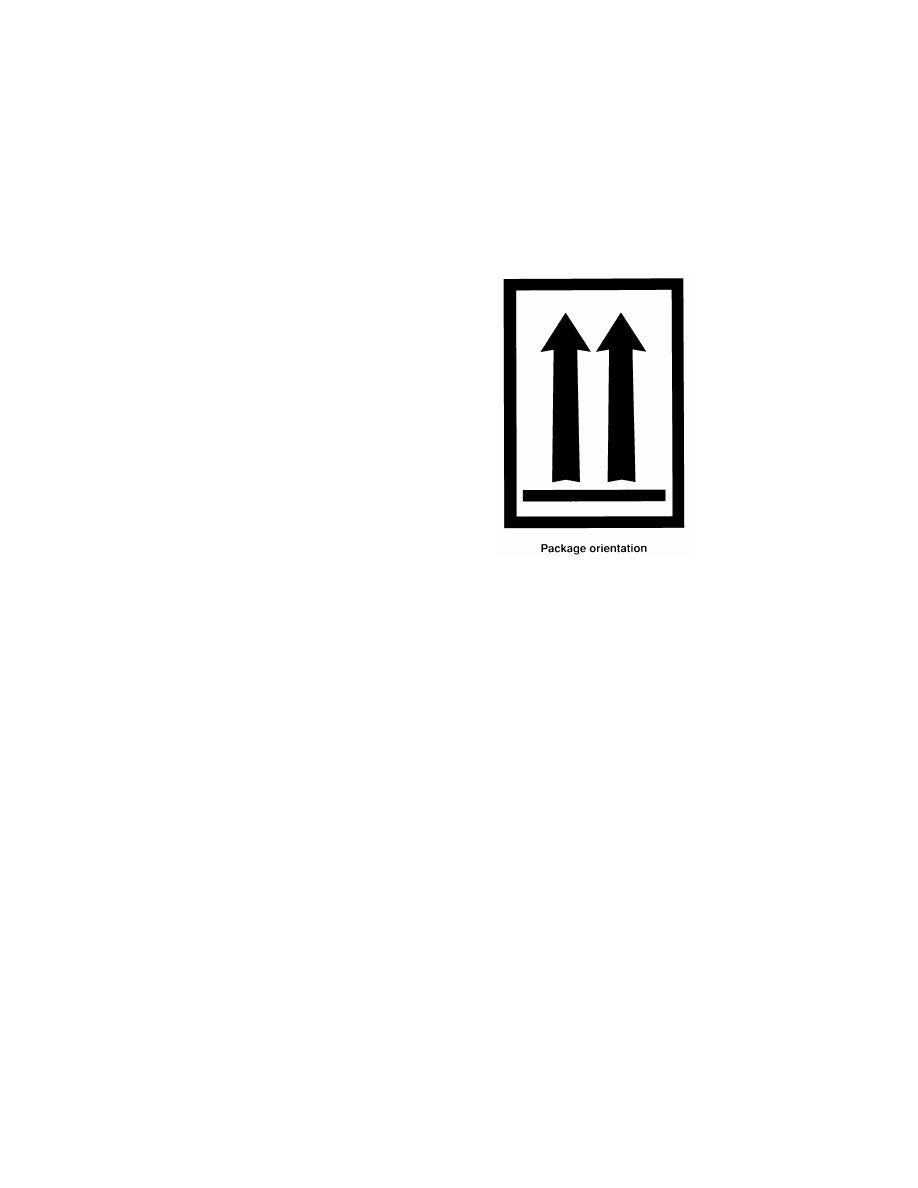
399
Pipeline and Haz. Matls. Safety Admin., DOT
§ 172.312
(d) Each package which conforms to
a Type B(U) or Type B(M) package de-
sign must have the outside of the out-
ermost receptacle, which is resistant to
the effects of fire and water, plainly
marked by embossing, stamping or
other means resistant to the effects of
fire and water with a radiation symbol
that conforms to the requirements of
appendix B of this part.
(e) Each Type B(U), Type B(M) or
fissile material package destined for
export shipment must also be marked
‘‘USA’’ in conjunction with the speci-
fication marking, or other package cer-
tificate identification. (See §§ 173.471,
173.472, and 173.473 of this subchapter.)
[Doc. No. RSPA–99–6283 (HM–230), 69 FR 3668,
Jan. 26, 2004, as amended at 79 FR 40609, July
11, 2014]
§ 172.312
Liquid hazardous materials
in non-bulk packagings.
(a) Except as provided in this section,
each non-bulk combination package
having inner packagings containing
liquid hazardous materials, single
packaging fitted with vents, or open
cryogenic receptacle intended for the
transport of refrigerated liquefied
gases must be:
(1) Packed with closures upward, and
(2) Legibly marked with package ori-
entation markings that are similar to
the illustration shown in this para-
graph, on two opposite vertical sides of
the package with the arrows pointing
in the correct upright direction. The
arrows must be either black or red on
white or other suitable contrasting
background and commensurate with
the size of the package. Depicting a
rectangular border around the arrows
is optional.
(b) Arrows for purposes other than
indicating proper package orientation
may not be displayed on a package con-
taining a liquid hazardous material.
(c) The requirements of paragraph (a)
of this section do not apply to—
(1) A non-bulk package with inner
packagings which are cylinders.
(2) Except when offered or intended
for transportation by aircraft, pack-
ages containing flammable liquids in
inner packagings of 1 L or less prepared
in accordance with § 173.150 (b) or (c) of
this subchapter.
(3) When offered or intended for
transportation by aircraft, packages
containing liquid hazardous materials
in inner packagings of 120 mL (4 fluid
oz.) or less when packed with sufficient
absorption material between the inner
and outer packagings to completely ab-
sorb the liquid contents.
(4) Liquids contained in manufac-
tured articles (e.g., alcohol or mercury
in thermometers) which are leak-tight
in all orientations.
(5) A non-bulk package with hermeti-
cally sealed inner packagings not ex-
ceeding 500 mL each.
(6) Packages containing liquid infec-
tious substances in primary receptacles
not exceeding 50 mL (1.7 oz.).

400
49 CFR Ch. I (10–1–23 Edition)
§ 172.313
(7) Class 7 radioactive material in
Type A, IP–2, IP–3, Type B(U), or Type
B(M) packages.
[Amdt. 172–123, 55 FR 52591, Dec. 21, 1990, as
amended at 56 FR 66254, Dec. 20, 1991; 57 FR
45458, Oct. 1, 1992; 64 FR 51918, Sept. 27, 1999;
66 FR 45379, Aug. 28, 2001; 68 FR 45030, July 31,
2003; 71 FR 54395, Sept. 14, 2006; 71 FR 78627,
Dec. 29, 2006; 76 FR 3365, Jan. 19, 2011; 78 FR
1073, Jan. 7, 2013]
§ 172.313
Poisonous hazardous mate-
rials.
In addition to any other markings re-
quired by this subpart:
(a) A material poisonous by inhala-
tion (see § 171.8 of this subchapter) shall
be marked ‘‘Inhalation Hazard’’ in as-
sociation with the required labels or
placards, as appropriate, and shipping
name when required. The marking
must be on two opposing sides of a bulk
packaging. (See § 172.302(b) of this sub-
part for size of markings on bulk pack-
ages.) When the words ‘‘Inhalation Haz-
ard’’ appear on the label, as prescribed
in §§ 172.416 and 172.429, or placard, as
prescribed in §§ 172.540 and 172.555, the
‘‘Inhalation Hazard’’ marking is not re-
quired on the package.
(b) Each non-bulk plastic outer pack-
aging used as a single or composite
packaging for materials meeting the
definition of Division 6.1 (in § 173.132 of
this subchapter) shall be permanently
marked, by embossment or other dura-
ble means, with the word ‘‘POISON’’ in
letters at least 6.3 mm (0.25 inch) in
height. Additional text or symbols re-
lated to hazard warning may be in-
cluded in the marking. The marking
shall be located within 150 mm (6
inches) of the closure of the packaging.
(c) A transport vehicle or freight con-
tainer containing a material poisonous
by inhalation in non-bulk packages
shall be marked, on each side and each
end as specified in § 172.332 or § 172.336,
with the identification number speci-
fied for the hazardous material in the
§ 172.101 table, subject to the following
provisions and limitations:
(1) The material is in Hazard Zone A
or B;
(2) The transport vehicle or freight
container is loaded at one facility with
1,000 kg (2,205 pounds) or more aggre-
gate gross weight of the material in
non-bulk packages marked with the
same proper shipping name and identi-
fication number; and
(3) If the transport vehicle or freight
container contains more than one ma-
terial meeting the provisions of this
paragraph (c), it shall be marked with
the identification number for one ma-
terial, determined as follows:
(i) For different materials in the
same hazard zone, with the identifica-
tion number of the material having the
greatest aggregate gross weight; and
(ii) For different materials in both
Hazard Zones A and B, with the identi-
fication number for the Hazard Zone A
material.
(d) For a packaging containing a Di-
vision 6.1 PG III material, ‘‘PG III’’
may be marked adjacent to the POI-
SON label. (See § 172.405(c).)
[Amdt. 172–123, 55 FR 52592, Dec. 21, 1990, as
amended at 57 FR 46624, Oct. 9, 1992; Amdt.
172–151, 62 FR 1228, Jan. 8, 1997; 62 FR 39398,
39405, July 22, 1997; 63 FR 16075, Apr. 1, 1998;
64 FR 10776, Mar. 5, 1999]
§ 172.315
Limited quantities.
(a)
Modes other than air transport.
Ex-
cept for an article or substance of Class
7 prepared in accordance with subpart I
of part 173, a package prepared in ac-
cordance with applicable limited quan-
tity requirements in part 173 of this
subchapter and offered for transpor-
tation by a mode other than air must
display the limited quantity marking
shown in paragraph (a)(1) of this sec-
tion. A package displaying this mark is
not subject to the marking require-
ments of § 172.301 of this subpart unless
the limited quantity package also con-
tains a hazardous substance or a haz-
ardous waste. Required markings need
not be duplicated if already marked as
prescribed elsewhere in this subpart.
As an alternative, a packaging may
display the limited quantity ‘‘Y’’ mark
shown in paragraph (b) of this section
if the package conforms to authorized
substance and article provisions and
the inner and outer package quantity
limits in § 173.27(f) of this subchapter.
(1)
Marking description.
The top and
bottom portions of the square-on-point
and the border forming the square-on-
point must be black and the center
white or of a suitable contrasting back-
ground as follows:
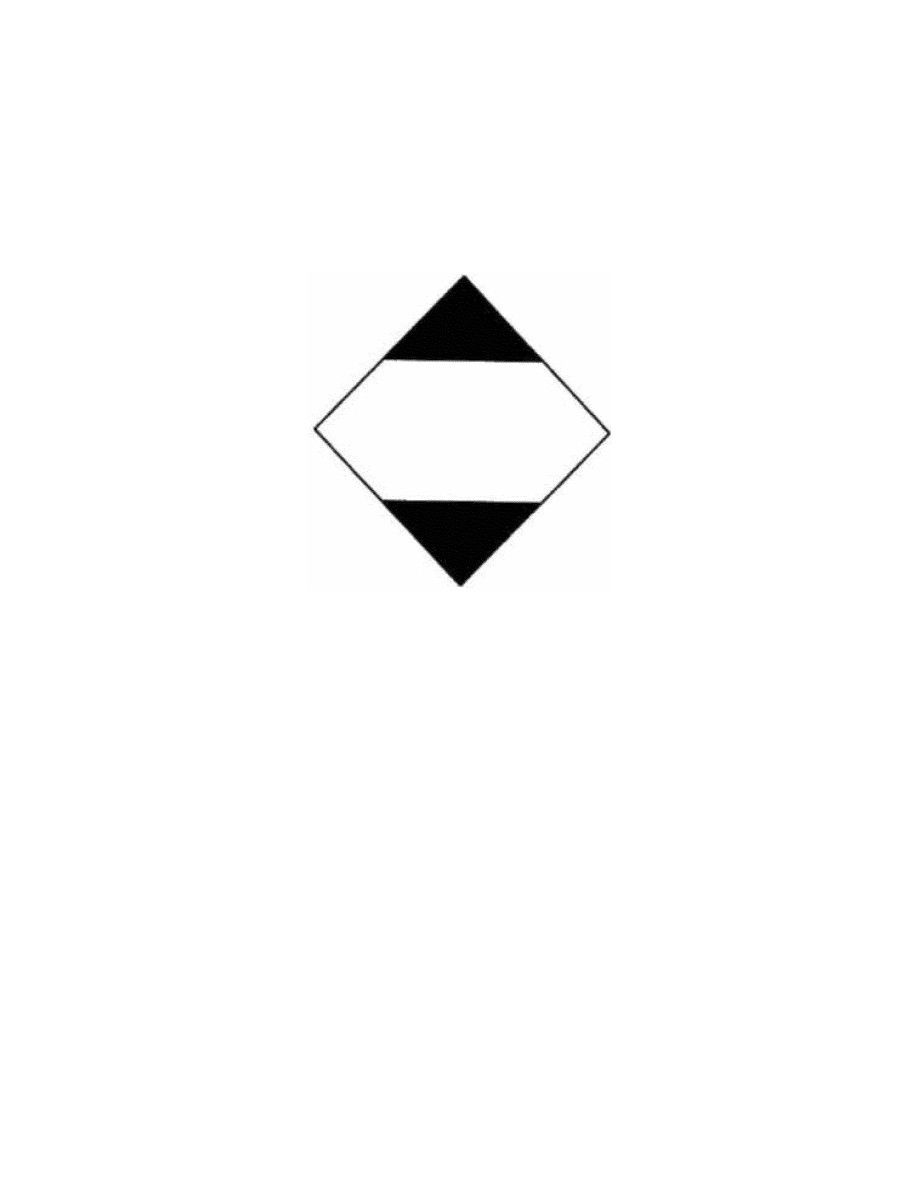
401
Pipeline and Haz. Matls. Safety Admin., DOT
§ 172.315
(2) The square-on-point must be dura-
ble, legible and of a size relative to the
packaging, readily visible, and must be
applied on at least one side or one end
of the outer packaging. The width of
the border forming the square-on-point
must be at least 2 mm and the min-
imum dimension of each side, as meas-
ured from the outside of the lines form-
ing the border, must be 100 mm unless
the packaging size requires a reduced
size marking that must be no less than
50 mm on each side and the width of
the border forming the square on point
may be reduced to a minimum of 1 mm.
Where dimensions are not specified, all
features shall be in approximate pro-
portion to those shown. When intended
for transportation by vessel, a cargo
transport unit (see § 176.2 of this sub-
chapter) containing packages of haz-
ardous materials in only limited quan-
tities must be marked once on each
side and once on each end of the exte-
rior of the unit with an identical mark
which must have minimum dimensions
of 250 mm on each side.
(i)
Transitional exception.
A marking
in conformance with the requirements
of this paragraph in effect on December
31, 2014, may continue to be used until
December 31, 2016.
(ii) For domestic transportation, a
packaging marked prior to January 1,
2017 and in conformance with the re-
quirements of this paragraph in effect
on December 31, 2014, may continue in
service until the end of its useful life.
(3) Except for Class 1 and 7, and Divi-
sion 6.1 and 6.2 materials, for highway
transportation by private motor car-
rier, the limited quantity marking is
not required to be displayed on a pack-
age containing materials assigned to
Packing Group II and III prepared in
accordance with the limited quantity
requirements in subpart B of part 173 of
this subchapter provided:
(i) Inner packagings for liquid haz-
ardous materials do not exceed 1.0 L
(0.3 gallons) net capacity each;
(ii) Inner packagings for solid haz-
ardous materials do not exceed 1.0 kg
(2.2 pounds) net capacity each;
(iii) No more than 2 L (0.6 gallons) or
2 kg (4.4 pounds) aggregate net quan-
tity of any one hazardous material is
transported per vehicle;
(iv) The total gross weight of all the
limited quantity packages per vehicle
does not exceed 60 kg (132 pounds); and
(v) Each package is marked with the
name and address of the offeror, a 24-
hour emergency response telephone
number and the statement ‘‘Contains
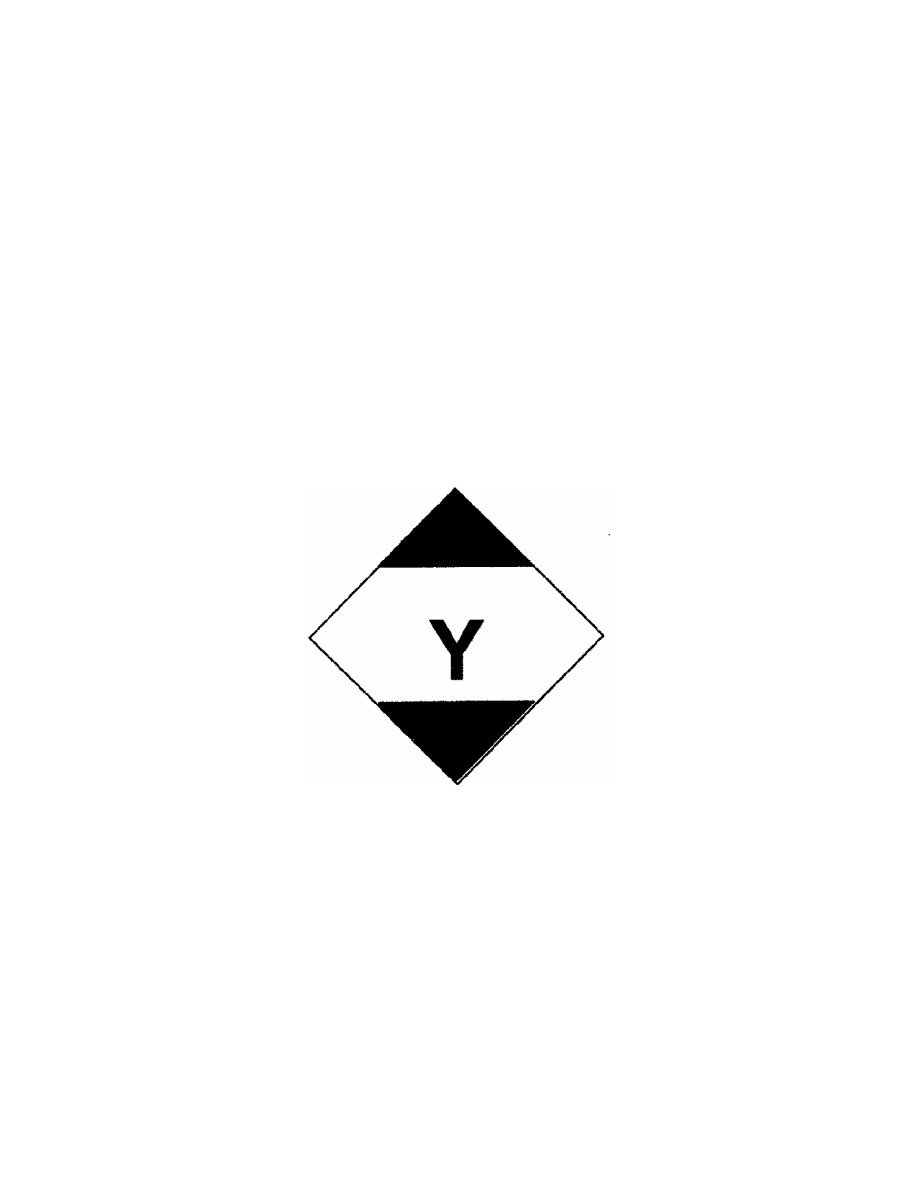
402
49 CFR Ch. I (10–1–23 Edition)
§ 172.315
Chemicals’’ in letters at least 25 mm
(one-inch) high on a contrasting back-
ground.
(b)
Air transport.
Except for an article
or substance of Class 7 prepared in ac-
cordance with subpart I of part 173, a
package prepared in accordance with
air-specific limited quantity require-
ments prescribed in § 173.27 of this sub-
chapter and intended for transpor-
tation by air must display the limited
quantity mark prescribed in paragraph
(b)(1) of this section in addition to
other markings required by this sub-
part (
e.g.,
‘‘RQ’’, proper shipping name,
identification number, as appropriate).
Required markings need not be dupli-
cated if already marked as prescribed
elsewhere in this subpart.
(1)
Marking Description.
The top and
bottom portions of the square-on-point
and the border forming the square-on-
point must be black and the center
white or of a suitable contrasting back-
ground and the symbol ‘‘Y’’ must be
black and located in the center of the
square-on-point and be clearly visible
as follows:
(2) The square-on-point must be dura-
ble, legible and of a size relative to the
package as to be readily visible. The
square-on-point must be applied on at
least one side or one end of the outer
packaging. The width of the border
forming the square-on-point must be at
least 2 mm and the minimum dimen-
sion of each side, as measured from the
outside of the lines forming the border,
must be 100 mm unless the package size
requires a reduced size marking that
must be no less than 50 mm on each
side and the width of the border form-
ing the square on point may be reduced
to a minimum of 1 mm. Where dimen-
sions are not specified, all features
shall be in approximate proportion to
those shown.
(i)
Transitional exception.
A marking
in conformance with the requirements
of this paragraph in effect on December
31, 2014, may continue to be used until
December 31, 2016.
(ii) For domestic transportation, a
packaging marked prior to January 1,
2017 and in conformance with the re-
quirements of this paragraph in effect
on December 31, 2014, may continue in
service until the end of its useful life.
(3) For transportation by aircraft,
the entire mark must appear on one
side of the package.
(c) Limited quantity markings pre-
scribed in paragraphs (a) and (b) of this

403
Pipeline and Haz. Matls. Safety Admin., DOT
§ 172.317
section may use the packaging itself as
the contrasting background for the
center portion of the marking if the
color sufficiently contrasts so that the
black border, top and bottom portions
of the square-on-point, and the ‘‘Y’’
symbol, if applicable, are clearly rec-
ognizable.
(d) [Reserved]
[76 FR 82174, Dec. 30, 2011, as amended at 78
FR 1073, Jan. 7, 2013; 78 FR 65478, Oct. 31, 2013;
80 FR 1149, Jan. 8, 2015; 81 FR 3671, Jan. 21,
2016; 87 FR 44990, July 26, 2022; 87 FR 79772,
Dec. 27, 2022]
§ 172.316
[Reserved]
§ 172.317
KEEP AWAY FROM HEAT
handling mark.
(a)
General.
For transportation by
aircraft, each package containing self-
reactive substances of Division 4.1 or
organic peroxides of Division 5.2 must
be marked with the KEEP AWAY
FROM HEAT handling mark specified
in this section.
(b)
Location and design.
The marking
must be a rectangle measuring at least
105 mm (4.1 inches) in height by 74 mm
(2.9 inches) in width as measured from
the outside of the lines forming the
border. Markings with not less than
half this dimension are permissible
where the dimensions of the package
can only bear a smaller mark.
(1)
Transitional exception.
A marking
in conformance with the requirements
of this paragraph in effect on December
31, 2014, may continue to be used until
December 31, 2016.
(2) For domestic transportation, a
packaging marked prior to January 1,
2017 and in conformance with the re-
quirements of this paragraph in effect
on December 31, 2014, may continue in
service until the end of its useful life.
(c)
KEEP AWAY FROM HEAT han-
dling mark.
The KEEP AWAY FROM
HEAT handling mark must conform to
the following:
(1) Except for size, the KEEP AWAY
FROM HEAT handling mark must ap-
pear as follows:
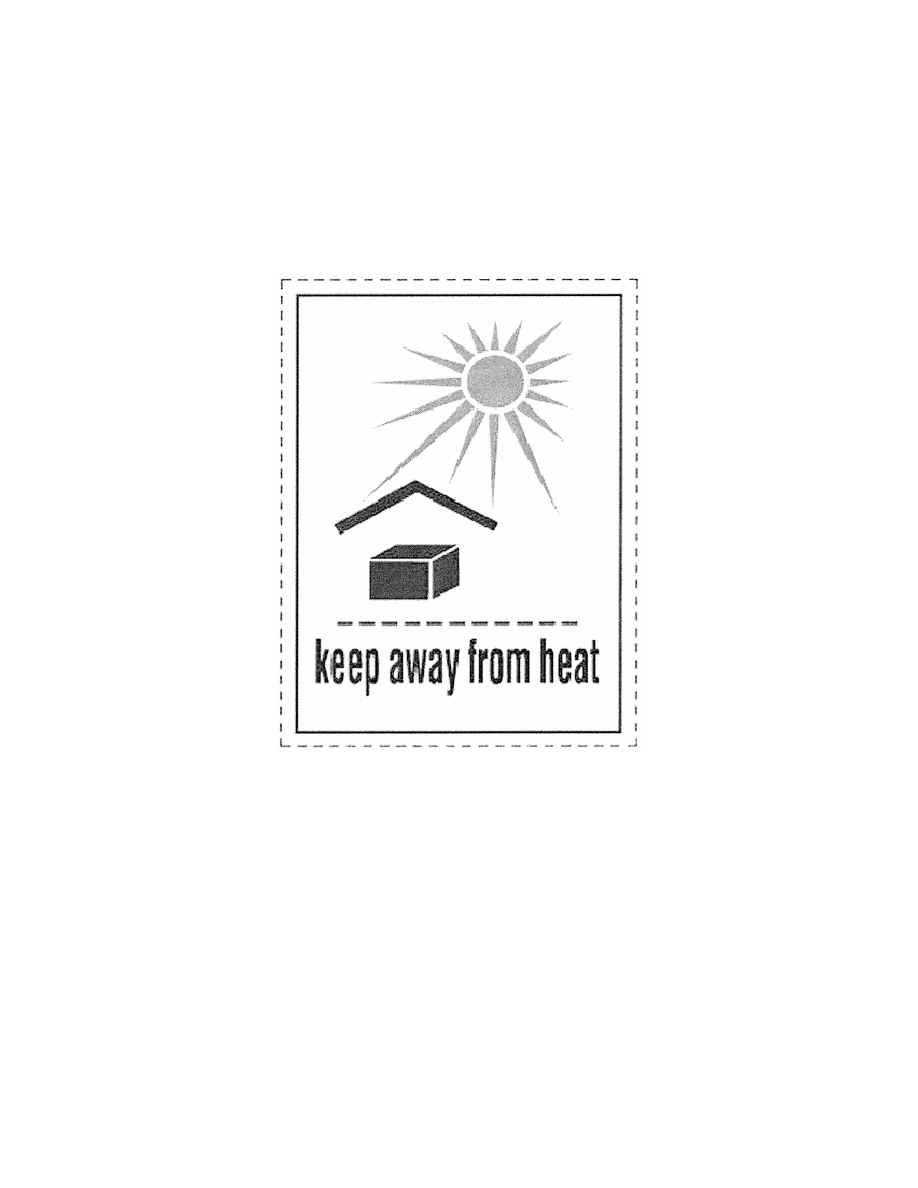
404
49 CFR Ch. I (10–1–23 Edition)
§ 172.320
(2) The symbol, letters and border
must be black and the background
white, except for the starburst which
must be red.
(3) The KEEP AWAY FROM HEAT
handling marking required by para-
graph (a) of this section must be dura-
ble, legible and displayed on a back-
ground of contrasting color.
[69 FR 76153, Dec. 20, 2004, as amended at 80
FR 1150, Jan. 8, 2015]
§ 172.320
Explosive hazardous mate-
rials.
(a) Except as otherwise provided in
paragraphs (b), (c), (d) and (e) of this
section, each package containing a
Class 1 material must be marked with
the EX-number for each substance, ar-
ticle or device contained therein.
(b) Except for fireworks approved in
accordance with § 173.64 of this sub-
chapter, a package of Class 1 materials
may be marked as follows, in lieu of
the EX number required by paragraph
(a) of this section:
(1) With a national stock number
issued by the Department of Defense or
identifying information, such as a
product code required by regulations
for commercial explosives specified in
27 CFR part 555, if the national stock
number or identifying information can
be specifically associated with the EX
number assigned; or
(2) For Division 1.4G consumer fire-
works reviewed by a Fireworks Certifi-
cation Agency approved in accordance
with 49 CFR part 107 subpart E and cer-
tified in accordance with § 173.65, with

405
Pipeline and Haz. Matls. Safety Admin., DOT
§ 172.322
the FC number assigned by a DOT-ap-
proved Fireworks Certification Agen-
cy.
(c) When more than five different
Class 1 materials are packed in the
same package, the package may be
marked with only five of the EX-num-
bers, national stock numbers, product
codes, or combination thereof.
(d) The requirements of this section
do not apply if the EX number, FC
number, product code or national stock
number of each explosive item de-
scribed under a proper shipping de-
scription is shown in association with
the shipping description required by
§ 172.202(a). Product codes and national
stock numbers must be traceable to
the specific EX number assigned by the
Associate Administrator or FC number
assigned by a DOT-approved Fireworks
Certification Agency.
(e) The requirements of this section
do not apply to the following Class 1
materials:
(1) Those being shipped to a testing
agency in accordance with § 173.56(d) of
this subchapter;
(2) Those being shipped in accordance
with § 173.56(e) of this subchapter, for
the purposes of developmental testing;
(3) Those which meet the require-
ments of § 173.56(h) of this subchapter
and therefore are not subject to the ap-
proval process of § 173.56 of this sub-
chapter;
(4) [Reserved];
(5) Those that are transported in ac-
cordance with § 173.56(c)(2) of this sub-
chapter and, therefore, are covered by
a national security classification cur-
rently in effect.
[Amdt. 172–123, 56 FR 66254, Dec. 20, 1991, as
amended by Amdt. 172–139, 59 FR 67487, Dec.
29, 1994; 66 FR 45379, Aug. 28, 2001; 74 FR 53188,
Oct. 16, 2009; 78 FR 42477, July 16, 2013]
§ 172.322
Marine pollutants.
(a) For vessel transportation of each
non-bulk packaging that contains a
marine pollutant—
(1) For a proper shipping name used
to describe a hazardous material that
is a marine pollutant and assigned the
letter ‘‘G’’ in column (1) of the § 172.101
hazardous materials table or that con-
tains the text ‘‘n.o.s.,’’ the name of the
component which makes the material a
marine pollutant must be marked on
the package in parentheses in associa-
tion with the marked proper shipping
name unless the proper shipping name
identifies by name the component
which makes the material a marine
pollutant. Where two or more compo-
nents that make a material a marine
pollutant are present, the names of at
least two of the components most pre-
dominantly contributing to the marine
pollutant designation must appear in
parentheses in association with the
marked proper shipping name. For ma-
terials described using ‘‘UN3077, Envi-
ronmentally hazardous substance,
solid, n.o.s.’’ and ‘‘UN3082, Environ-
mentally hazardous substance, liquid,
n.o.s.,’’
see
§ 172.102(c)(1), special provi-
sion 441 for additional provisions; and
(2) Except as otherwise provided in
this subchapter, the MARINE POL-
LUTANT mark shall be placed in asso-
ciation with the hazard warning labels
required by subpart E of this part or, in
the absence of any labels, in associa-
tion with the marked proper shipping
name.
(b) Except as otherwise provided in
this subchapter, a bulk packaging that
contains a marine pollutant must—
(1) Be marked with the MARINE
POLLUTANT mark on at least two op-
posing sides or two ends other than the
bottom if the packaging has a capacity
of less than 3,785 L (1,000 gallons). The
mark must be visible from the direc-
tion it faces. The mark may be dis-
played in black lettering on a square-
on-point configuration having the same
outside dimensions as a placard; or
(2) Be marked on each end and each
side with the MARINE POLLUTANT
mark if the packaging has a capacity
of 3,785 L (1,000 gallons) or more. The
mark must be visible from the direc-
tion it faces. The mark may be dis-
played in black lettering on a square-
on-point configuration having the same
outside dimensions as a placard.
(c) A transport vehicle or freight con-
tainer that contains a package subject
to the marking requirements of para-
graph (a) or (b) of this section must be
marked with the MARINE POLLUT-
ANT mark. The mark must appear on
each side and each end of the transport
vehicle or freight container, and must
be visible from the direction it faces.
This requirement may be met by the
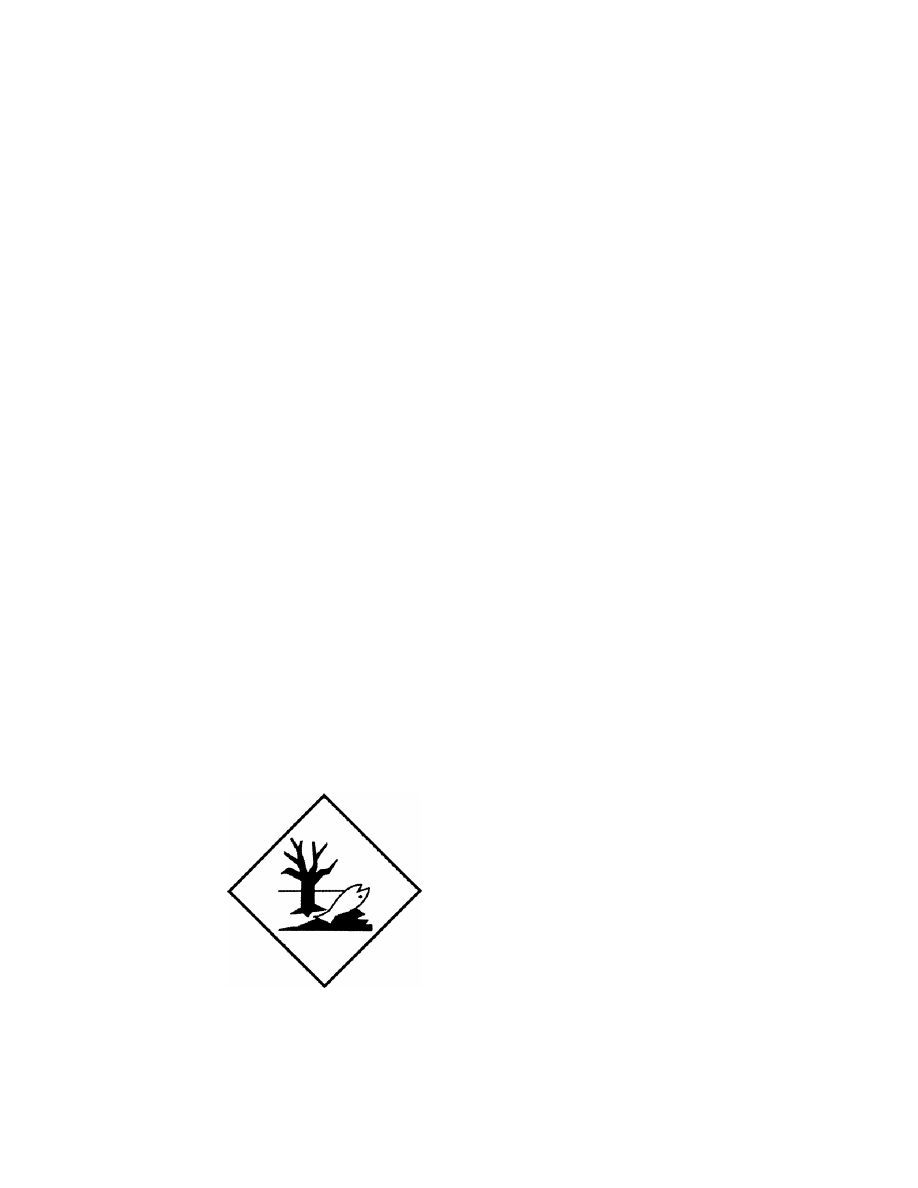
406
49 CFR Ch. I (10–1–23 Edition)
§ 172.323
marking displayed on a freight con-
tainer or portable tank loaded on a
motor vehicle or rail car. This mark
may be displayed in black lettering on
a white square-on-point configuration
having the same outside dimensions as
a placard.
(d) The MARINE POLLUTANT mark
is not required—
(1) On single packagings or combina-
tion packagings where each single
package or each inner packaging of
combination packagings has:
(i) A net quantity of 5 L (1.3 gallons)
or less for liquids; or
(ii) A net mass of 5 kg (11 pounds) or
less for solids
(2) On a combination packaging con-
taining a marine pollutant, other than
a severe marine pollutant, in inner
packagings each of which contains:
(i) 5 L (1.3 gallons) or less net capac-
ity for liquids; or
(ii) 5 kg (11 pounds) or less net capac-
ity for solids.
(3) Except for transportation by ves-
sel, on a bulk packaging, freight con-
tainer or transport vehicle that bears a
label or placard specified in subparts E
or F of this part.
(4) On a package of limited quantity
material marked in accordance with
§ 172.315 of this part.
(e)
MARINE POLLUTANT mark.
The
MARINE POLLUTANT mark must
conform to the following:
(1) Except for size, the MARINE POL-
LUTANT mark must appear as follows:
Symbol (fish and tree): Black on white
or suitable contrasting background.
(2) The marking must be in the form
of a square-on-point. The symbol and
border must be black on a white or
suitable contrasting background. The
width of the border forming the square-
on-point marking must be at least 2
mm. Each side of the mark must be—
(i) At least 100 mm (3.9 inches) as
measured from the outside of the lines
forming the border for marks applied
to:
(A) Non-bulk packages, except in the
case of packages which, because of
their size, can only bear smaller
marks. If the size of the package so re-
quires, the dimensions/line thickness
may be reduced, provided the marking
remains clearly visible. Where dimen-
sions are not specified, all features
shall be in approximate proportion to
those shown.
(B) Bulk packages with a capacity of
less than 3,785 L (1,000 gallons); or
(ii) At least 250 mm (9.8 inches) for
marks applied to all other bulk pack-
ages.
(3)
Transitional exception.
A marking
in conformance with the requirements
of this paragraph in effect on December
31, 2014, may continue to be used until
December 31, 2016.
(4) For domestic transportation, a
packaging marked prior to January 1,
2017 and in conformance with the re-
quirements of this paragraph in effect
on December 31, 2014, may continue in
service until the end of its useful life.
(f)
Exceptions.
See § 171.4(c).
[Amdt. 172–127, 57 FR 52938, Nov. 5, 1992, as
amended by Amdt. 172–136, 59 FR 38064, July
26, 1994; Amdt. 172–145, 60 FR 49110, Sept. 21,
1995; 66 FR 45379, Aug. 28, 2001; 70 FR 56098,
Sept. 23, 2005; 74 FR 2252, Jan. 14, 2009; 76 FR
3367, Jan. 19, 2011; 80 FR 1150, Jan. 8, 2015; 85
FR 83380, Dec. 21, 2020; 87 FR 44990, July 26,
2022]
§ 172.323
Infectious substances.
(a) In addition to other requirements
of this subpart, a bulk packaging con-
taining a regulated medical waste, as
defined in § 173.134(a)(5) of this sub-
chapter, must be marked with a BIO-
HAZARD marking conforming to 29
CFR 1910.1030(g)(1)(i)—
(1) On two opposing sides or two ends
other than the bottom if the packaging
has a capacity of less than 3,785 L (1,000
gallons). The BIOHAZARD marking
must measure at least 152.4 mm (6
inches) on each side and must be visi-
ble from the direction it faces.
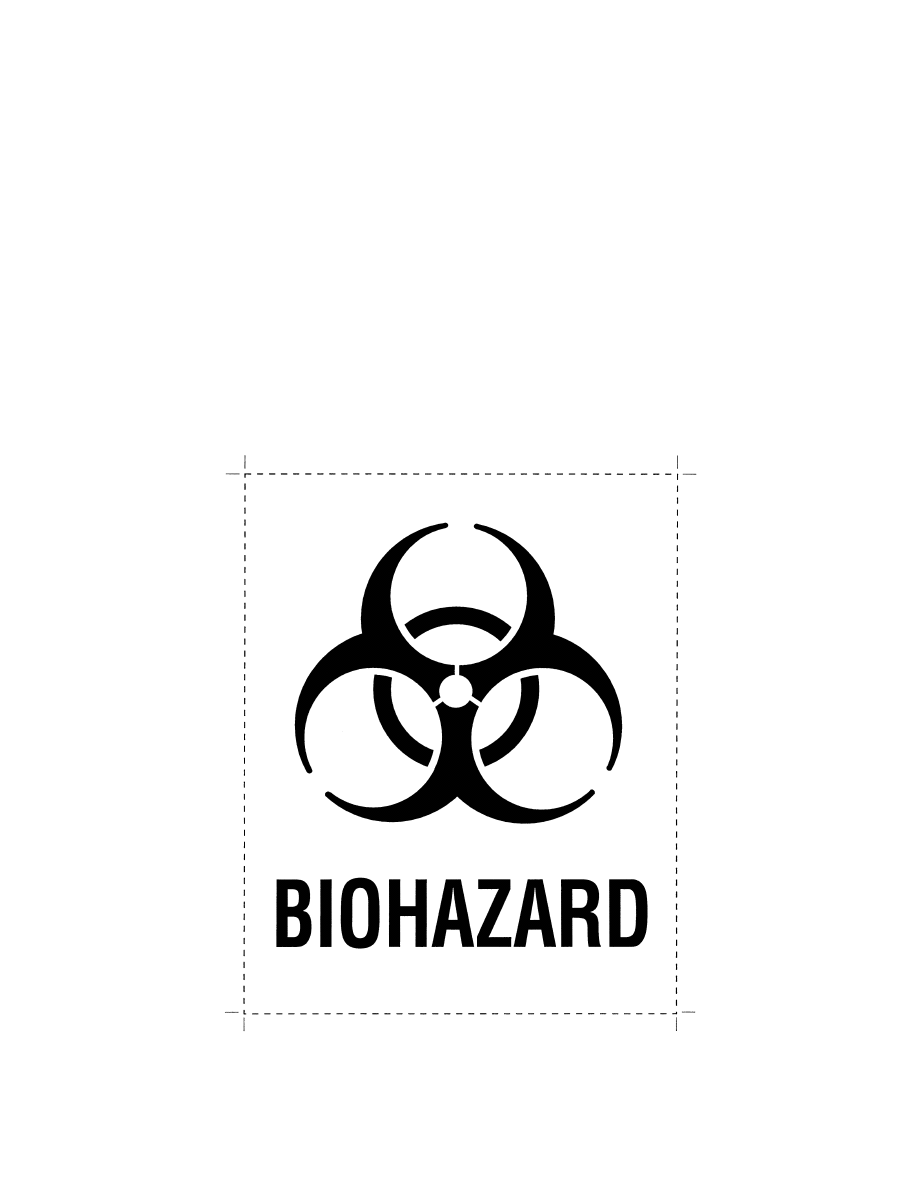
407
Pipeline and Haz. Matls. Safety Admin., DOT
§ 172.323
(2) On each end and each side if the
packaging has a capacity of 3,785 L
(1,000 gallons) or more. The BIO-
HAZARD marking must measure at
least 152.4 mm (6 inches) on each side
and must be visible from the direction
it faces.
(b) For a bulk packaging contained in
or on a transport vehicle or freight
container, if the BIOHAZARD marking
on the bulk packaging is not visible,
the transport vehicle or freight con-
tainer must be marked as required by
paragraph (a) of this section on each
side and each end.
(c) The background color for the BIO-
HAZARD marking required by para-
graph (a) of this section must be or-
ange and the symbol and letters must
be black. Except for size the BIO-
HAZARD marking must appear as fol-
lows:

408
49 CFR Ch. I (10–1–23 Edition)
§ 172.324
(d) The BIOHAZARD marking re-
quired by paragraph (a) of this section
must be displayed on a background of
contrasting color. It may be displayed
on a plain white square-on-point con-
figuration having the same outside di-
mensions as a placard, as specified in
§ 172.519(c) of this part.
[67 FR 53135, Aug. 14, 2002, as amended at 76
FR 56314, Sept. 13, 2011]
§ 172.324
Hazardous substances in
non-bulk packagings.
For each non-bulk package that con-
tains a hazardous substance—
(a) Except for packages of radio-
active material labeled in accordance
with § 172.403, if the proper shipping
name of a material that is a hazardous
substance does not identify the haz-
ardous substance by name, the name of
the hazardous substance must be
marked on the package, in parentheses,
in association with the proper shipping
name. If the material contains two or
more hazardous substances, at least
two hazardous substances, including
the two with the lowest reportable
quantities (RQs), must be identified.
For a hazardous waste, the waste code
(e.g., D001), if appropriate, may be used
to identify the hazardous substance.
(b) The letters ‘‘RQ’’ must be marked
on the package in association with the
proper shipping name.
(c) A package of limited quantity
material marked in accordance with
§ 172.315 must also be marked in accord-
ance with the applicable requirements
of this section.
[73 FR 4716, Jan. 28, 2008, as amended at 76
FR 3367, Jan. 19, 2011]
§ 172.325
Elevated temperature mate-
rials.
(a) Except as provided in paragraph
(b) of this section, a bulk packaging
containing an elevated temperature
material must be marked on two op-
posing sides with the word ‘‘HOT’’ in
black or white Gothic lettering on a
contrasting background. The marking
must be displayed on the packaging
itself or in black lettering on a plain
white square-on-point configuration
having the same outside dimensions as
a placard. (See § 172.302(b) for size of
markings on bulk packagings.)
(b) Bulk packagings containing mol-
ten aluminum or molten sulfur must be
marked ‘‘MOLTEN ALUMINUM’’ or
‘‘MOLTEN SULFUR’’, respectively, in
the same manner as prescribed in para-
graph (a) of this section.
(c) If the identification number is
displayed on a white-square-on-point
display configuration, as prescribed in
§ 172.336(b), the word ‘‘HOT’’ may be
displayed in the upper corner of the
same white-square-on-point display
configuration. The word ‘‘HOT’’ must
be in black letters having a height of
at least 50 mm (2.0 inches). Except for
size, these markings shall be as illus-
trated for an Elevated temperature ma-
terial, liquid, n.o.s.:

409
Pipeline and Haz. Matls. Safety Admin., DOT
§ 172.326
[Amdt. 172–125, 58 FR 3348, Jan. 8, 1993, as amended by Amdt. 172–139, 59 FR 67487, Dec. 29, 1994]
§ 172.326
Portable tanks.
(a)
Shipping name.
No person may
offer for transportation or transport a
portable tank containing a hazardous
material unless it is legibly marked on
two opposing sides with the proper
shipping name specified for the mate-
rial in the § 172.101 table. For transpor-
tation by vessel, the minimum height
for a proper shipping name marked on
a portable tank is 65 mm (2.5 inches);
except that portable tanks with a ca-
pacity of less than 3,000 L (792.52 gal-
lons) may reduce the marking size to
not less than 12 mm (0.47 inches).
(b)
Owner’s name.
The name of the
owner or of the lessee, if applicable,
must be displayed on a portable tank
that contains a hazardous material.
(c)
Identification numbers.
(1) If the
identification number markings re-
quired by § 172.302(a) are not visible, a
transport vehicle or freight container
used to transport a portable tank con-
taining a hazardous material must be
marked on each side and each end as
required by § 172.332 with the identifica-
tion number specified for the material
in the § 172.101 table.
(2) Each person who offers a portable
tank containing a hazardous material
to a motor carrier, for transportation
in a transport vehicle or freight con-
tainer, shall provide the motor carrier

410
49 CFR Ch. I (10–1–23 Edition)
§ 172.327
with the required identification num-
bers on placards, orange panels, or the
white square-on-point configuration, as
appropriate, for each side and each end
of the transport vehicle or freight con-
tainer from which identification num-
bers on the portable tank are not visi-
ble.
(d)
NON-ODORIZED marking on port-
able tanks containing LPG.
No person
may offer for transportation or trans-
port a portable tank containing
unodorized liquefied petroleum gas
(LPG) as authorized in § 173.315(b)(1) of
this subchapter unless it is legibly
marked NON-ODORIZED or NOT
ODORIZED on two opposing sides near
the marked proper shipping name re-
quired by paragraph (a) of this section,
or near the placards. The NON-ODOR-
IZED or NOT ODORIZED marking may
appear on a portable tank used for both
unodorized and odorized LPG.
[Amdt. 172–123, 55 FR 52592, Dec. 21, 1990, as
amended at 56 FR 66255, Dec. 20, 1991; 69 FR
64471, Nov. 4, 2004; 76 FR 3367, Jan. 19, 2011; 80
FR 1150, Jan. 8, 2015; 81 FR 35540, June 2, 2016]
§ 172.327
Petroleum sour crude oil in
bulk packaging.
A Bulk packaging used to transport
petroleum crude oil containing hydro-
gen sulfide (
i.e.,
sour crude oil) in suffi-
cient concentration that vapors
evolved from the crude oil may present
an inhalation hazard must include a
marking, label, tag, or sign to warn of
the toxic hazard as follows:
(a) The marking must be durable,
legible and of a size relative to the
package as to be readily visible and
similar to the illustration shown in
this paragraph with the minimum di-
mension of each side of the marking at
least 100 mm (3.9 inches) as measured
from the outside of the lines forming
the border. The width of the border
forming the square-on-point marking
must be at least 5 mm. The marking
must be displayed at each location
(
e.g.
, manhole, loading head) where ex-
posure to hydrogen sulfide vapors may
occur.
(1)
Transitional exception
—A marking
in conformance with the requirements
of this paragraph in effect on December
31, 2014, may continue to be used until
December 31, 2016.
(2) For domestic transportation, a
packaging marked prior to January 1,
2017 and in conformance with the re-
quirements of this paragraph in effect
on December 31, 2014, may continue in
service until the end of its useful life.
(b) The border of the square-on-point
must be black or red on a white or
other suitable contrasting background.
The symbol must be black and located
in the center of the square-on-point
and be clearly visible as follows:
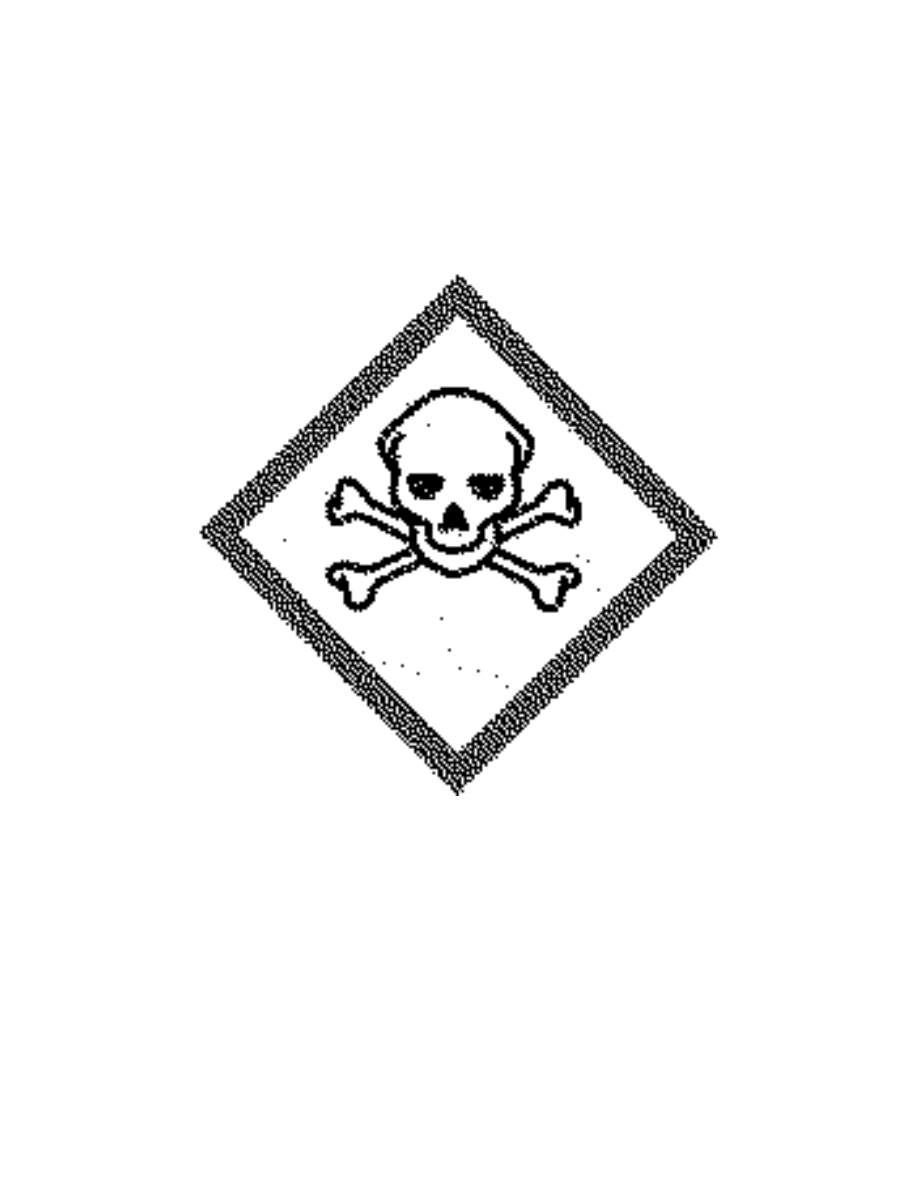
411
Pipeline and Haz. Matls. Safety Admin., DOT
§ 172.328
(c) As an alternative to the marking
required in (a) and (b) of this section, a
label, tag, or sign may be displayed at
each location (
e.g.,
manhole, loading
head) where exposure to hydrogen sul-
fide vapors may occur. The label, tag,
or sign must be durable, in English,
and printed legibly and of a size rel-
ative to the package with a warning
statement such as ‘‘Danger, Possible
Hydrogen Sulfide Inhalation Hazard’’
to communicate the possible risk of ex-
posure to harmful concentrations of
hydrogen sulfide gas.
[76 FR 3367, Jan. 19, 2011, as amended at 80
FR 1150, Jan. 8, 2015]
§ 172.328
Cargo tanks.
(a)
Providing and affixing identification
numbers.
Unless a cargo tank is already
marked with the identification num-
bers required by this subpart, the iden-
tification numbers must be provided or
affixed as follows:
(1) A person who offers a hazardous
material to a motor carrier for trans-
portation in a cargo tank shall provide
the motor carrier the identification
numbers on placards or shall affix or-
ange panels containing the required
identification numbers, prior to or at
the time the material is offered for
transportation.

412
49 CFR Ch. I (10–1–23 Edition)
§ 172.330
(2) A person who offers a cargo tank
containing a hazardous material for
transportation shall affix the required
identification numbers on panels or
placards prior to or at the time the
cargo tank is offered for transpor-
tation.
(3) For a cargo tank transported on
or in a transport vehicle or freight con-
tainer, if the identification number
marking on the cargo tank required by
§ 172.302(a) would not normally be visi-
ble during transportation—
(i) The transport vehicle or freight
container must be marked as required
by § 172.332 on each side and each end
with the identification number speci-
fied for the material in the § 172.101
table; and
(ii) When the cargo tank is perma-
nently installed within an enclosed
cargo body of the transport vehicle or
freight container, the identification
number marking required by § 172.302(a)
need only be displayed on each side and
end of a cargo tank that is visible when
the cargo tank is accessed.
(b)
Required markings: Gases.
Except
for certain nurse tanks which must be
marked as specified in § 173.315(m) of
this subchapter, each cargo tank trans-
porting a Class 2 material subject to
this subchapter must be marked, in let-
tering no less than 50 mm (2.0 inches),
on each side and each end with—
(1) The proper shipping name speci-
fied for the gas in the § 172.101 table; or
(2) An appropriate common name for
the material (e.g., ‘‘Refrigerant Gas’’).
(c)
QT/NQT markings.
Each MC 330
and MC 331 cargo tank must be marked
near the specification plate, in letters
no less than 50 mm (2.0 inches) in
height, with—
(1) ‘‘QT’’, if the cargo tank is con-
structed of quenched and tempered
steel; or
(2) ‘‘NQT’’, if the cargo tank is con-
structed of other than quenched and
tempered steel.
(d) After October 3, 2005, each on-ve-
hicle manually-activated remote shut-
off device for closure of the internal
self-closing stop valve must be identi-
fied by marking ‘‘Emergency Shutoff’’
in letters at least 0.75 inches in height,
in a color that contrasts with its back-
ground, and located in an area imme-
diately adjacent to the means of clo-
sure.
(e)
NON-ODORIZED marking on cargo
tanks containing LPG.
No person may
offer for transportation or transport a
cargo tank containing unodorized liq-
uefied petroleum gas (LPG) as author-
ized in § 173.315(b)(1) of this subchapter
unless it is legibly marked NON-ODOR-
IZED or NOT ODORIZED on two oppos-
ing sides near the marked proper ship-
ping name as specified in paragraph
(b)(1) of this section, or near the plac-
ards. The NON-ODORIZED or NOT
ODORIZED marking may appear on a
cargo tank used for both unodorized
and odorized LPG.
[Amdt. 172–123, 55 FR 52592, Dec. 21, 1990, as
amended at 56 FR 66255, Dec. 20, 1991; Amdt.
172–151, 62 FR 1228, Jan. 8, 1997; 62 FR 39045,
July 22, 1997; 68 FR 19277, Apr. 18, 2003; 69 FR
64471, Nov. 4, 2004; 81 FR 35540, June 2, 2016]
§ 172.330
Tank cars and multi-unit
tank car tanks.
(a)
Shipping name and identification
number.
No person may offer for trans-
portation or transport a hazardous ma-
terial—
(1) In a tank car unless the following
conditions are met:
(i) The tank car must be marked on
each side and each end as required by
§ 172.302 with the identification number
specified for the material in the
§ 172.101 table; and
(ii) A tank car containing any of the
following materials must be marked on
each side with the key words of the
proper shipping name specified for the
material in the § 172.101 table, or with a
common name authorized for the mate-
rial in this subchapter (
e.g.,
‘‘Refrig-
erant Gas’’):
Acrolein, stabilized
Ammonia, anhydrous
Ammonia solutions (more than 50% ammo-
nia)
Bromine
or
Bromine solutions
Bromine chloride
Chloroprene, stabilized
Dispersant gas
or
Refrigerant gas (as defined
in § 173.115 of this subchapter)
Division 2.1 materials
Division 2.2 materials (in Class DOT 107 tank
cars only)
Division 2.3 materials
Formic acid
Hydrocyanic acid, aqueous solutions
Hydrofluoric acid, solution

413
Pipeline and Haz. Matls. Safety Admin., DOT
§ 172.332
Hydrogen cyanide, stabilized (less than 3%
water)
Hydrogen fluoride, anhydrous
Hydrogen peroxide, aqueous solutions (great-
er than 20% hydrogen peroxide)
Hydrogen peroxide, stabilized
Hydrogen peroxide and peroxyacetic acid
mixtures
Nitric acid (other than red fuming)
Phosphorus, amorphous
Phosphorus, white dry
or
Phosphorus, white,
under water
or
Phosphorus white, in solu-
tion,
or
Phosphorus, yellow dry
or
Phos-
phorus, yellow, under water
or
Phosphorus,
yellow, in solution
Phosphorus white, molten
Potassium nitrate and sodium nitrate mix-
tures
Potassium permanganate
Sulfur trioxide, stabilized
Sulfur trioxide, uninhibited
(2) In a multi-unit tank car tank, un-
less the tank is marked on two oppos-
ing sides, in letters and numerals no
less than 50 mm (2.0 inches) high—
(i) With the proper shipping name
specified for the material in the
§ 172.101 table or with a common name
authorized for the material in this sub-
chapter (e.g., ‘‘Refrigerant Gas’’); and
(ii) With the identification number
specified for the material in the
§ 172.101 table, unless marked in accord-
ance with §§ 172.302(a) and 172.332 of this
subpart.
(b) A motor vehicle or rail car used
to transport a multi-unit tank car
tank containing a hazardous material
must be marked on each side and each
end, as required by § 172.332, with the
identification number specified for the
material in the § 172.101 table.
(c) No person may offer for transpor-
tation or transport a tank car or
multi-unit tank car tank containing
unodorized liquefied petroleum gas
(LPG) unless it is legibly marked NON-
ODORIZED or NOT ODORIZED on two
opposing sides near the marked proper
shipping name required by paragraphs
(a)(1) and (2) of this section, or near the
placards. The NON-ODORIZED or NOT
ODORIZED marking may appear on a
tank car or multi-unit tank car tank
used for both unodorized and odorized
LPG.
[Amdt. 172–123, 55 FR 52593, Dec. 21, 1990, as
amended at 56 FR 66255, Dec. 20, 1991; 57 FR
45458, Oct. 1, 1992; Amdt. 172–148, 61 FR 28676,
June 5, 1996; Amdt. 172–148, 61 FR 50254, Sept.
25, 1996; 66 FR 33425, June 21, 2001; 69 FR
64471, Nov. 4, 2004; 81 FR 35540, June 2, 2016;
85 FR 83380, Dec. 21, 2020]
§ 172.331
Bulk packagings other than
portable tanks, cargo tanks, tank
cars and multi-unit tank car tanks.
(a) Each person who offers a haz-
ardous material to a motor carrier for
transportation in a bulk packaging
shall provide the motor carrier with
the required identification numbers on
placards or plain white square-on-point
display configurations, as authorized,
or shall affix orange panels containing
the required identification numbers to
the packaging prior to or at the time
the material is offered for transpor-
tation, unless the packaging is already
marked with the identification number
as required by this subchapter.
(b) Each person who offers a bulk
packaging containing a hazardous ma-
terial for transportation shall affix to
the packaging the required identifica-
tion numbers on orange panels, square-
on-point configurations or placards, as
appropriate, prior to, or at the time
the packaging is offered for transpor-
tation unless it is already marked with
identification numbers as required by
this subchapter.
(c) For a bulk packaging contained in
or on a transport vehicle or freight
container, if the identification number
marking on the bulk packaging (e.g.,
an IBC) required by § 172.302(a) is not
visible, the transport vehicle or freight
container must be marked as required
by § 172.332 on each side and each end
with the identification number speci-
fied for the material in the § 172.101
table.
[Amdt. 172–123, 55 FR 52593, Dec. 21, 1994, as
amended by Amdt. 172–151, 62 FR 1228, Jan. 8,
1997; 62 FR 39398, July 22, 1997]
§ 172.332
Identification number mark-
ings.
(a)
General.
When required by
§ 172.301, § 172.302, § 172.313, § 172.326,
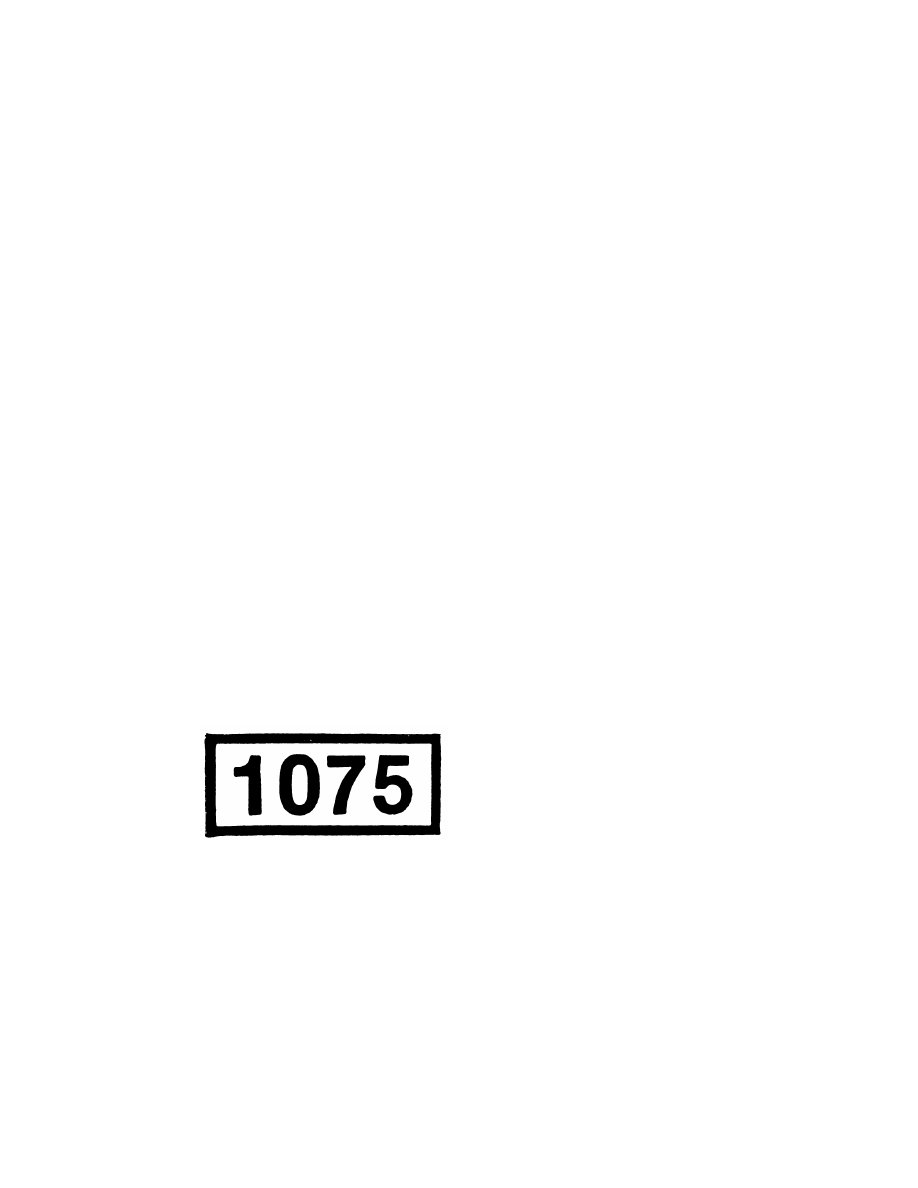
414
49 CFR Ch. I (10–1–23 Edition)
§ 172.332
§ 172.328, § 172.330, or § 172.331, identifica-
tion number markings must be dis-
played on orange panels or placards as
specified in this section, or on white
square-on-point configurations as pre-
scribed in § 172.336(b).
(b)
Orange panels.
Display of an iden-
tification number on an orange panel
shall be in conformance with the fol-
lowing:
(1) The orange panel must be 160 mm
(6.3 inches) high by 400 mm (15.7 inches)
wide with a 15 mm (0.6 inches) black
outer border. The identification num-
ber shall be displayed in 100 mm (3.9
inches) black Helvetica Medium nu-
merals on the orange panel. Measure-
ments may vary from those specified
plus or minus 5 mm (0.2 inches).
(2) The orange panel may be made of
any durable material prescribed for
placards in § 172.519, and shall be of the
orange color specified for labels or
placards in appendix A to this part.
(3) The name and hazard class of a
material may be shown in the upper
left border of the orange panel in let-
ters not more than 18 points (0.25 in.)
high.
(4) Except for size and color, the or-
ange panel and identification numbers
shall be as illustrated for Liquefied pe-
troleum gas:
(c)
Placards.
Display of an identifica-
tion number on a hazard warning
placard shall be in conformance with
the following:
(1) The identification number shall
be displayed across the center area of
the placard in 88 mm (3.5 inches) black
Alpine Gothic or Alternate Gothic No.
3 numerals on a white background 100
mm (3.9 inches) high and approxi-
mately 215 mm (8.5 inches) wide and
may be outlined with a solid or dotted
line border.
(2) The top of the 100 mm (3.9 inches)
high white background shall be ap-
proximately 40 mm (1.6 inches) above
the placard horizontal center line.
(3) An identification number may be
displayed only on a placard cor-
responding to the primary hazard class
of the hazardous material.
(4) For a COMBUSTIBLE placard
used to display an identification num-
ber, the entire background below the
white background for the identifica-
tion number must be white during
transportation by rail and may be
white during transportation by high-
way.
(5) The name of the hazardous mate-
rial and the hazard class may be shown
in letters not more than 18 points high
immediately within the upper border of
the space on the placard bearing the
identification number of the material.
(6) If an identification number is
placed over the word(s) on a placard,
the word(s) should be substantially
covered to maximize the effectiveness
of the identification number.
(d)
Example.
Except for size and color,
the display of an identification number
on a placard shall be as illustrated for
Acetone:
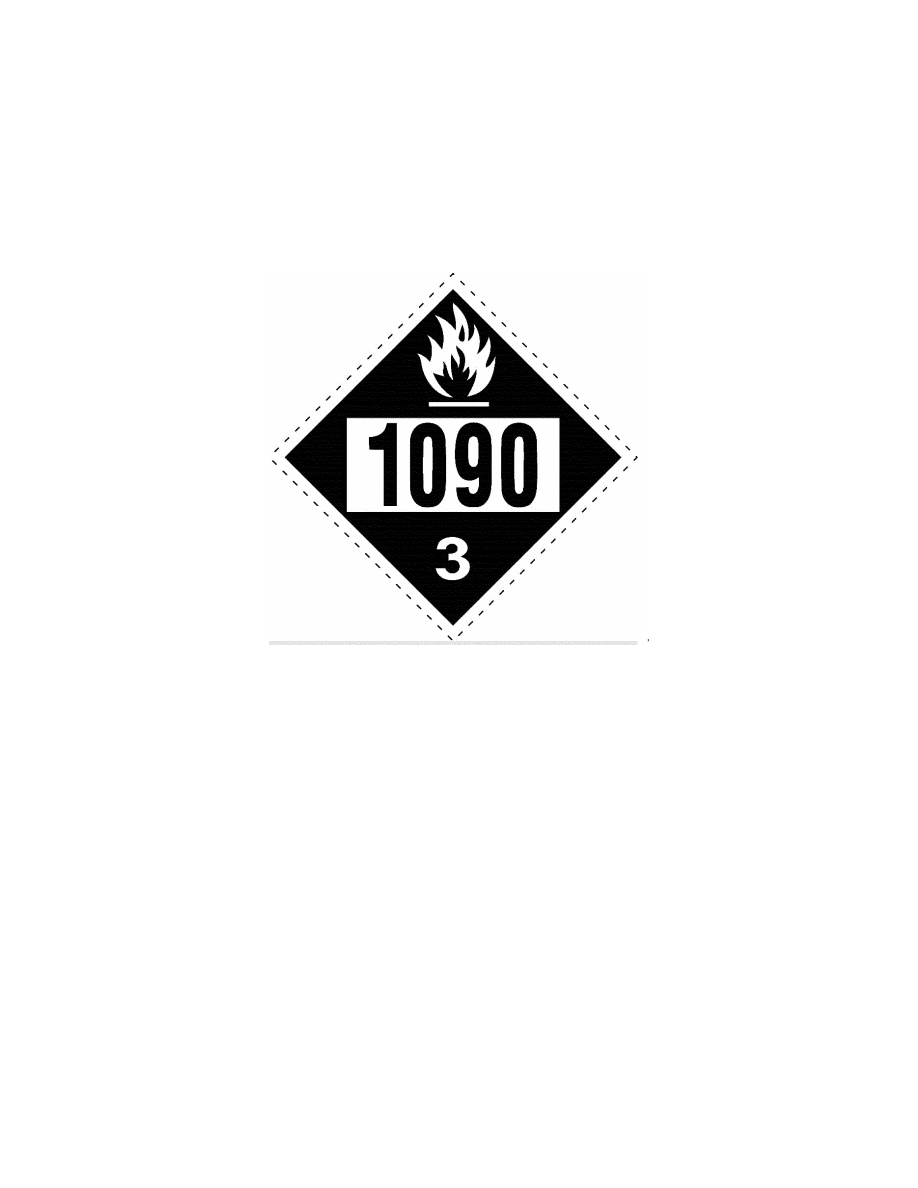
415
Pipeline and Haz. Matls. Safety Admin., DOT
§ 172.334
[Amdt. 172–101, 45 FR 74667, Nov. 10, 1980, as
amended by Amdt. 172–81, 48 FR 28099, June
20, 1983; Amdt. 172–110, 52 FR 29527, Aug. 10,
1987; Amdt. 172–123, 55 FR 52593, Dec. 21, 1990;
56 FR 66255, Dec. 20, 1991; Amdt. 172–151, 62
FR 1228, Jan. 8, 1997; 65 FR 50459, Aug. 18,
2000; 68 FR 57632, Oct. 6, 2003; 87 FR 79772,
Dec. 27, 2022]
§ 172.334
Identification numbers; pro-
hibited display.
(a) No person may display an identi-
fication number on a RADIOACTIVE,
EXPLOSIVES 1.1, 1.2, 1.3, 1.4, 1.5 or 1.6,
DANGEROUS, or subsidiary hazard
placard.
(b) No person may display an identi-
fication number on a placard, orange
panel or white square-on-point display
configuration unless—
(1) The identification number is spec-
ified for the material in § 172.101;
(2) The identification number is dis-
played on the placard, orange panel or
white square-on-point configuration
authorized by § 172.332 or § 172.336(b), as
appropriate, and any placard used for
display of the identification number
corresponds to the hazard class of the
material specified in § 172.504;
(3) Except as provided under § 172.336
(c)(4) or (c)(5), the package, freight con-
tainer, or transport vehicle on which
the number is displayed contains the
hazardous material associated with
that identification number in § 172.101.
(c) Except as required by
§ 172.332(c)(4) for a combustible liquid,
the identification number of a material
may be displayed only on the placards
required by the tables in § 172.504.
(d) Except as provided in § 172.336, a
placard bearing an identification num-
ber may not be used to meet the re-
quirements of subpart F of this part
unless it is the correct identification
number for all hazardous materials of
the same class in the transport vehicle
or freight container on which it is dis-
played.
(e) Except as specified in § 172.338, an
identification number may not be dis-
played on an orange panel on a cargo
tank unless affixed to the cargo tank
by the person offering the hazardous
material for transportation in the
cargo tank.
(f) If a placard is required by § 172.504,
an identification number may not be
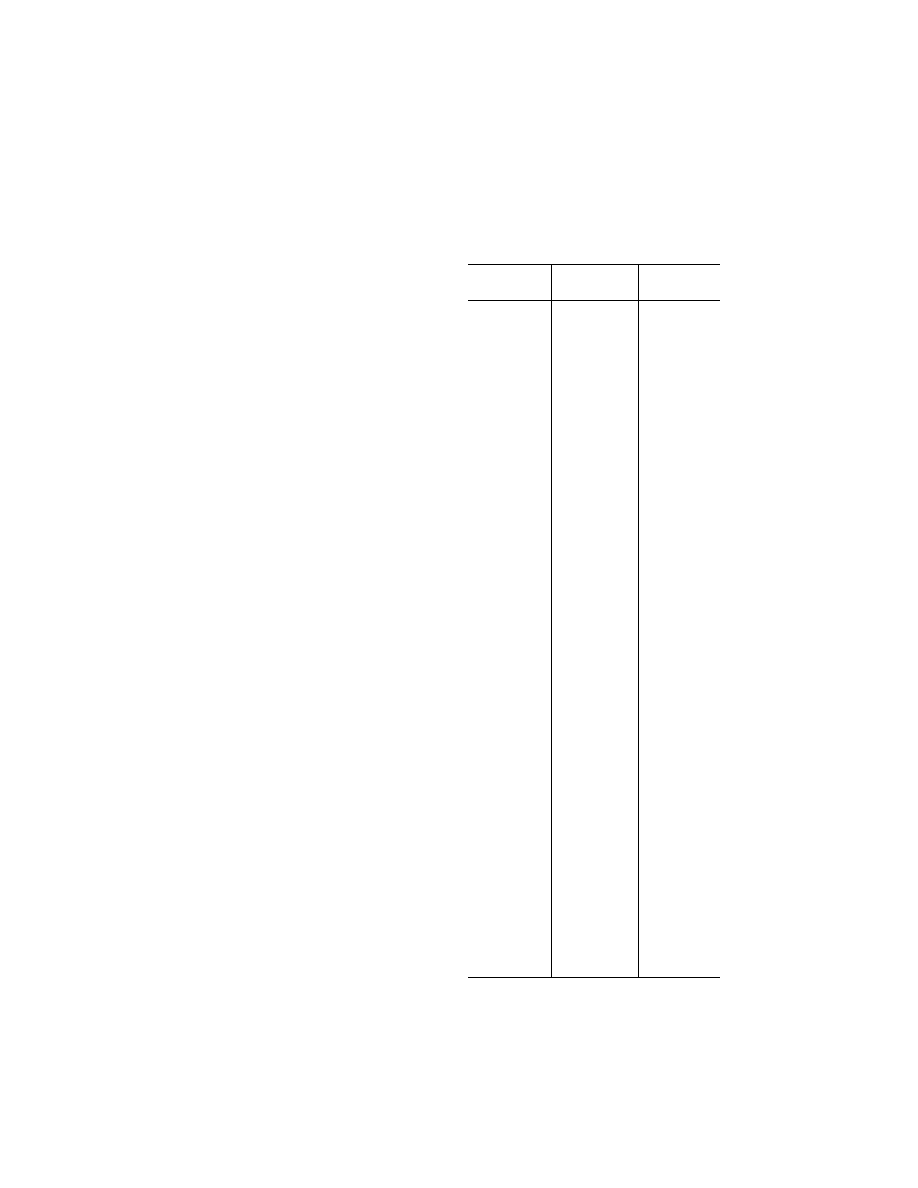
416
49 CFR Ch. I (10–1–23 Edition)
§ 172.336
displayed on an orange panel unless it
is displayed in proximity to the
placard.
(g) No person shall add any color,
number, letter, symbol, or word other
than as specified in this subchapter, to
any identification number marking
display which is required or authorized
by this subchapter.
[Amdt. 172–101, 45 FR 74667, Nov. 10, 1980, as
amended by Amdt. 172–104, 51 FR 23078, June
25, 1986; Amdt. 172–110, 52 FR 29528, Aug. 10,
1987; Amdt. 172–123, 55 FR 52593, Dec. 21, 1990;
56 FR 66255, Dec. 20, 1991; Amdt. 172–127, 59
FR 49133, Sept. 26, 1994]
§ 172.336
Identification numbers; spe-
cial provisions.
(a) When not required or prohibited
by this subpart, identification numbers
may be displayed on a transport vehi-
cle or a freight container in the man-
ner prescribed by this subpart.
(b) Identification numbers, when re-
quired, must be displayed on either or-
ange panels (see § 172.332(b)) or on a
plain white square-on-point display
configuration having the same outside
dimensions as a placard. In addition,
for materials in hazard classes for
which placards are specified and identi-
fication number displays are required,
but for which identification numbers
may not be displayed on the placards
authorized for the material (see
§ 172.334(a)), identification numbers
must be displayed on orange panels or
on the plain white square-on-point dis-
play configuration in association with
the required placards. An identifica-
tion number displayed on a white
square-on-point display configuration
is not considered to be a placard.
(1) The 100 mm (3.9 inch) by 215 mm
(8.5 inches) area containing the identi-
fication number shall be located as pre-
scribed by § 172.332 (c)(1) and (c)(2) and
may be outlined with a solid or dotted
line border.
(2) [Reserved]
(c) Identification Numbers are not re-
quired:
Packaging:
When:
Then the alter-
native marking re-
quirement is:
On the ends of
portable tanks,
cargo tanks, or
tank cars.
They have more
than one com-
partment and
hazardous mate-
rials with dif-
ferent identifica-
tion numbers
are being trans-
ported therein.
The identification
numbers on the
sides of the tank
are displayed in
the same se-
quence as the
compartments
containing the
materials they
identify.
On cargo tanks .....
They contain only
gasoline.
The tank is
marked ‘‘Gaso-
line’’ on each
side and rear in
letters no less
than 50 mm (2
inches) high, or
is placarded in
accordance with
§ 172.542(c).
On cargo tanks .....
They contain only
fuel oil.
The cargo tank is
marked ‘‘Fuel
Oil’’ on each
side and rear in
letters no less
than 50 mm (2
inches) high, or
is placarded in
accordance with
§ 172.544(c).
On one end of
nurse tanks if
that end con-
tains valves, fit-
tings, regulators
or gauges when
those appur-
tenances pre-
vent the mark-
ings and placard
from being prop-
erly placed and
visible.
They meet the
provisions of
§ 173.315(m) of
this subchapter.
N/A.
On cargo tanks, in-
cluding compart-
mented cargo
tanks, or tank
cars.
They contain more
than one petro-
leum distillate
fuel.
The identification
number for the
liquid petroleum
distillate fuel
having the low-
est flash point is
displayed. If the
cargo tank also
contains gaso-
line and alcohol
fuel blends con-
sisting of more
than 10% eth-
anol the identi-
fication number
‘‘3475’’ or
‘‘1987,’’ as ap-
propriate, must
also be dis-
played.
(d) When a bulk packaging is labeled
instead of placarded in accordance with
§ 172.514(c) of this subchapter, identi-
fication number markings may be dis-
played on the package in accordance
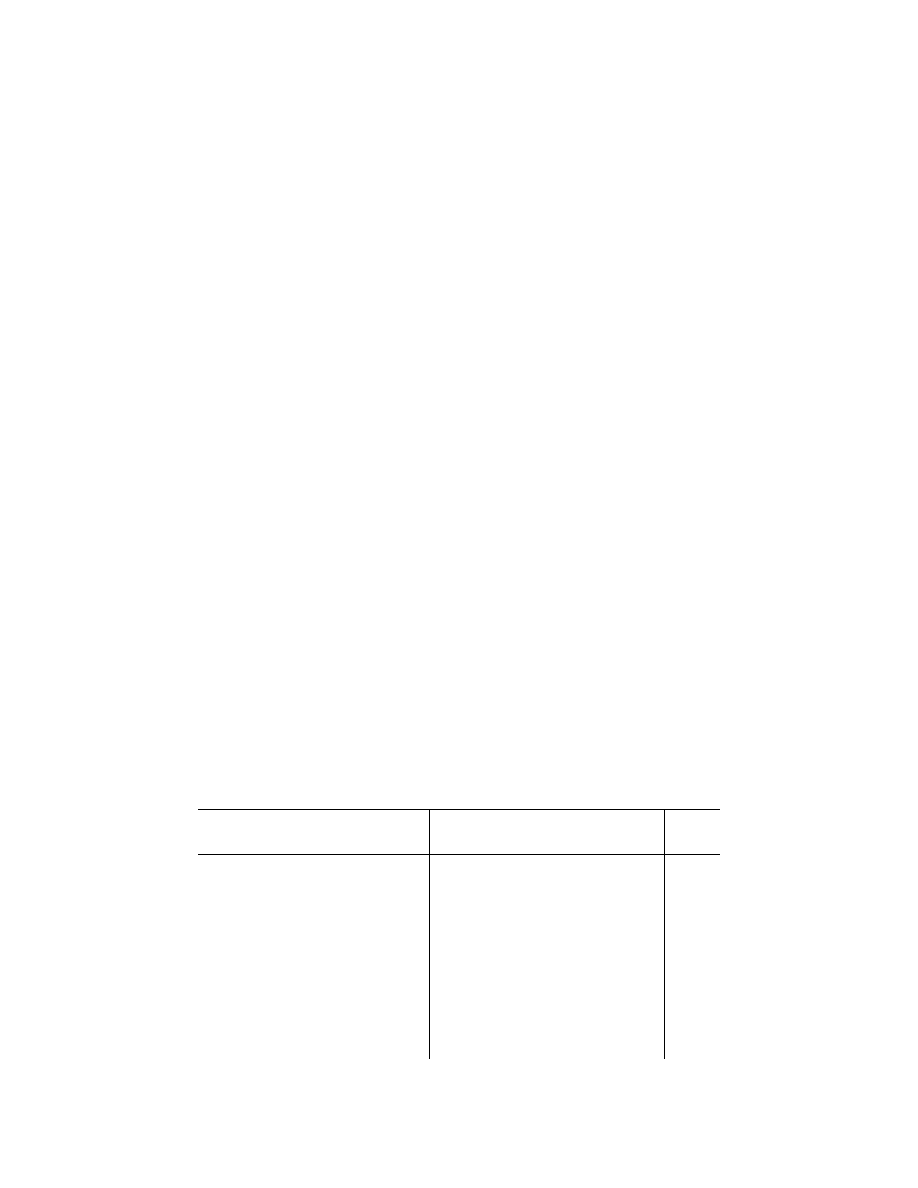
417
Pipeline and Haz. Matls. Safety Admin., DOT
§ 172.400
with the marking requirements of
§ 172.301(a)(1) of this subchapter.
[Amdt. 172–101, 45 FR 74667, Nov. 10, 1980, as
amended by Amdt. 172–74, 47 FR 40365, Sept.
30, 1982; Amdt. 172–109, 52 FR 13038, Apr. 20,
1987; Amdt. 172–110, 52 FR 29528, Aug. 10, 1987;
Amdt. 172–123, 55 FR 52593, Dec. 21, 1990; 56
FR 66255, Dec. 20, 1991; 65 FR 50459, Aug. 18,
2000; 73 FR 4716, Jan. 28, 2008; 76 FR 43527,
July 20, 2011; 78 FR 14714, Mar. 7, 2013; 78 FR
65478, Oct. 31, 2013]
§ 172.338
Replacement of identification
numbers.
If more than one of the identification
number markings on placards, orange
panels, or white square-on-point dis-
play configurations that are required
to be displayed are lost, damaged or de-
stroyed during transportation, the car-
rier shall replace all the missing or
damaged identification numbers as
soon as practicable. However, in such a
case, the numbers may be entered by
hand on the appropriate placard, or-
ange panel or white square-on-point
display configuration providing the
correct identification numbers are en-
tered legibly using an indelible mark-
ing material. When entered by hand,
the identification numbers must be lo-
cated in the white display area speci-
fied in § 172.332. This section does not
preclude required compliance with the
placarding requirements of subpart F
of this subchapter.
[Amdt. 172–110, 52 FR 29528, Aug. 10, 1987]
Subpart E—Labeling
§ 172.400
General labeling require-
ments.
(a) Except as specified in § 172.400a,
each person who offers for transpor-
tation or transports a hazardous mate-
rial in any of the following packages or
containment devices, shall label the
package or containment device with la-
bels specified for the material in the
§ 172.101 table and in this subpart:
(1) A non-bulk package;
(2) A bulk packaging, other than a
cargo tank, portable tank, or tank car,
with a volumetric capacity of less than
18 m
3
(640 cubic feet), unless placarded
in accordance with subpart F of this
part;
(3) A portable tank of less than 3785 L
(1000 gallons) capacity, unless plac-
arded in accordance with subpart F of
this part;
(4) A DOT Specification 106 or 110
multi-unit tank car tank, unless plac-
arded in accordance with subpart F of
this part; and
(5) An overpack, freight container or
unit load device, of less than 18 m
3
(640
cubic feet), which contains a package
for which labels are required, unless
placarded or marked in accordance
with § 172.512 of this part.
(b) Labeling is required for a haz-
ardous material which meets one or
more hazard class definitions, in ac-
cordance with column 6 of the § 172.101
table and the following table:
T
ABLE
1
TO
P
ARAGRAPH
(b)
Hazard class or division
Label name
Label de-
sign
or section
reference
1.1 ....................................................................................
EXPLOSIVES 1.1 ............................................................
172.411
1.2 ....................................................................................
EXPLOSIVES 1.2 ............................................................
172.411
1.3 ....................................................................................
EXPLOSIVES 1.3 ............................................................
172.411
1.4 ....................................................................................
EXPLOSIVES 1.4 ............................................................
172.411
1.5 ....................................................................................
EXPLOSIVES 1.5 ............................................................
172.411
1.6 ....................................................................................
EXPLOSIVES 1.6 ............................................................
172.411
2.1 ....................................................................................
FLAMMABLE GAS ..........................................................
172.417
2.2 ....................................................................................
NON–FLAMMABLE GAS ................................................
172.415
2.3 ....................................................................................
POISON GAS ..................................................................
172.416
3 Flammable Liquid (Combustible liquid) ........................
FLAMMABLE LIQUID (none) ..........................................
172.419
4.1 ....................................................................................
FLAMMABLE SOLID .......................................................
172.420
4.2 ....................................................................................
SPONTANEOUSLY COMBUSTIBLE ..............................
172.422
4.3 ....................................................................................
DANGEROUS WHEN WET ............................................
172.423
5.1 ....................................................................................
OXIDIZER ........................................................................
172.426
5.2 ....................................................................................
ORGANIC PEROXIDE ....................................................
172.427
6.1 (material poisonous by inhalation (see § 171.8 of
this subchapter)).
POISON INHALATION HAZARD ....................................
172.429
6.1 (other than a material poisonous by inhalation) .......
POISON ...........................................................................
172.430
6.1 (inhalation hazard, Zone A or B) ..............................
POISON INHALATION HAZARD ....................................
172.429
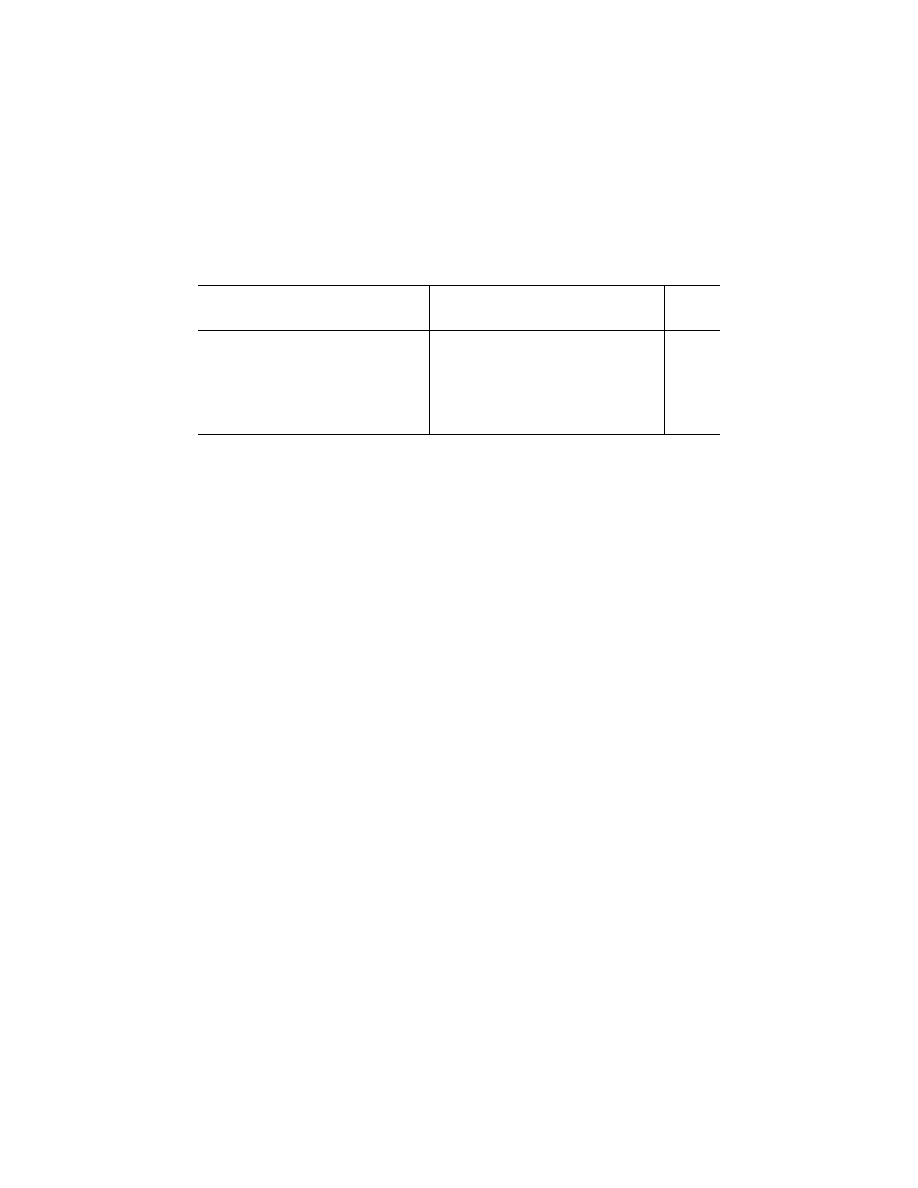
418
49 CFR Ch. I (10–1–23 Edition)
§ 172.400a
T
ABLE
1
TO
P
ARAGRAPH
(b)—Continued
Hazard class or division
Label name
Label de-
sign
or section
reference
6.1 (other than inhalation hazard, Zone A or B) .............
POISON ...........................................................................
172.430
6.2 ....................................................................................
INFECTIOUS SUBSTANCE ............................................
172.432
7 (see § 172.403) ............................................................
RADIOACTIVE WHITE–I ................................................
172.436
7 .......................................................................................
RADIOACTIVE YELLOW–II ............................................
172.438
7 .......................................................................................
RADIOACTIVE YELLOW–III ...........................................
172.440
7 (fissile radioactive material; see § 172.402) .................
FISSILE ...........................................................................
172.441
7 (empty packages, see § 173.428 of this subchapter) ..
EMPTY ............................................................................
172.450
8 .......................................................................................
CORROSIVE ...................................................................
172.442
9 .......................................................................................
CLASS 9 ..........................................................................
172.446
[Amdt. 172–123, 55 FR 52593, Dec. 21, 1990, as amended at 56 FR 66255, Dec. 20, 1991; Amdt. 172–
151, 62 FR 1228, Jan. 8, 1997; 64 FR 10776, Mar. 5, 1999; 64 FR 51918, Sept. 27, 1999; 69 FR 3668,
Jan. 26, 2004; 69 FR 64471, Nov. 4, 2004; 78 FR 60753, Oct. 2, 2013; 85 FR 83381, Dec. 21, 2020; 87
FR 79773, Dec. 27, 2022]
§ 172.400a
Exceptions from labeling.
(a) Notwithstanding the provisions of
§ 172.400, a label is not required on—
(1) A Dewar flask meeting the re-
quirements in § 173.320 of this sub-
chapter or a cylinder containing a Di-
vision 2.1, 2.2, or 2.3 material that is
durably and legibly marked in accord-
ance with CGA C–7, Appendix A (IBR;
see § 171.7 of this subchapter). Notwith-
standing this exception, overpacks
must be labeled (see § 173.25 of this sub-
chapter).
(2) A package or unit of military ex-
plosives (including ammunition)
shipped by or on behalf of the DOD
when in—
(i) Freight containerload, carload or
truckload shipments, if loaded and un-
loaded by the shipper or DOD; or
(ii) Unitized or palletized break-bulk
shipments by cargo vessel under char-
ter to DOD if at least one required
label is displayed on each unitized or
palletized load.
(3) A package containing a hazardous
material other than ammunition that
is—
(i) Loaded and unloaded under the su-
pervision of DOD personnel, and
(ii) Escorted by DOD personnel in a
separate vehicle.
(4) A compressed gas cylinder perma-
nently mounted in or on a transport
vehicle.
(5) A freight container, aircraft unit
load device or portable tank, which—
(i) Is placarded in accordance with
subpart F of this part, or
(ii) Conforms to paragraph (a)(3) or
(b)(3) of § 172.512.
(6) An overpack or unit load device in
or on which labels representative of
each hazardous material in the over-
pack or unit load device are visible.
(7) A package of low specific activity
radioactive material and surface con-
taminated objects, when transported
under § 173.427(a)(6)(vi) of this sub-
chapter.
(8) Packages containing toy plastic
or paper caps for toy pistols described
as ‘‘UN0349, Articles, explosive, n.o.s.
(Toy caps), 1.4S’’ or ‘‘NA0337, Toy caps,
1.4S’’ when offered in conformance with
the conditions of § 172.102(c)(1), Special
provision 382.
(b) Certain exceptions to labeling re-
quirements are provided for small
quantities and limited quantities in ap-
plicable sections in part 173 of this sub-
chapter.
(c) Notwithstanding the provisions of
§ 172.402(a), a Division 6.1 subsidiary
hazard label is not required on a pack-
age containing a Class 8 (corrosive)
material which has a subsidiary hazard
of Division 6.1 (poisonous) if the tox-
icity of the material is based solely on
the corrosive destruction of tissue
rather than systemic poisoning. In ad-
dition, a Division 4.1 subsidiary hazard
label is not required on a package bear-
ing a Division 4.2 label.
(d) A package containing a material
poisonous by inhalation (see § 171.8 of
this subchapter) in a closed transport
vehicle or freight container may be ex-
cepted from the POISON INHALATION

419
Pipeline and Haz. Matls. Safety Admin., DOT
§ 172.402
HAZARD or POISON GAS label or
placard, under the conditions set forth
in § 171.23(b)(10) of this subchapter.
[Amdt. 172–123, 55 FR 52594, Dec. 21, 1990]
E
DITORIAL
N
OTE
: For F
EDERAL
R
EGISTER
ci-
tations affecting § 172.400a, see the List of
CFR Sections Affected, which appears in the
Finding Aids section of the printed volume
and at
www.govinfo.gov.
§ 172.401
Prohibited labeling.
(a) Except as otherwise provided in
this section, no person may offer for
transportation and no carrier may
transport a package bearing a label
specified in this subpart unless:
(1) The package contains a material
that is a hazardous material, and
(2) The label represents a hazard of
the hazardous material in the package.
(b) No person may offer for transpor-
tation and no carrier may transport a
package bearing any marking or label
which by its color, design, or shape
could be confused with or conflict with
a label prescribed by this part.
(c) The restrictions in paragraphs (a)
and (b) of this section, do not apply to
packages labeled in conformance with:
(1) The UN Recommendations (IBR,
see § 171.7 of this subchapter);
(2) The IMDG Code (IBR, see § 171.7 of
this subchapter);
(3) The ICAO Technical Instructions
(IBR, see § 171.7 of this subchapter);
(4) The TDG Regulations (IBR, see
§ 171.7 of this subchapter).
(5) The Globally Harmonized System
of Classification and Labelling of
Chemicals (GHS) (IBR, see § 171.7 of
this subchapter).
(d) The provisions of paragraph (a) of
this section do not apply to a pack-
aging bearing a label if that packaging
is:
(1) Unused or cleaned and purged of
all residue;
(2) Transported in a transport vehicle
or freight container in such a manner
that the packaging is not visible dur-
ing transportation; and
(3) Loaded by the shipper and un-
loaded by the shipper or consignee.
[Amdt. 172–9, 41 FR 15996, Apr. 15, 1976, as
amended by Amdt. 172–75, 47 FR 44471, Oct. 7,
1982; Amdt. 172–77, 47 FR 54822, Dec. 6, 1982;
Amdt. 172–94, 49 FR 38134, Sept. 27, 1984;
Amdt. 172–100, 50 FR 41521, Oct. 11, 1985;
Amdt. 172–123, 55 FR 52594, Dec. 21, 1990;
Amdt. 172–132, 58 FR 50501, Sept. 27, 1993; 66
FR 8647, Feb. 1, 2001; 66 FR 45379, Aug. 28,
2001; 68 FR 75741, 75742, Dec. 31, 2003; 74 FR
2252, Jan. 14, 2009]
§ 172.402
Additional labeling require-
ments.
(a)
Subsidiary hazard labels.
Each
package containing a hazardous mate-
rial—
(1) Shall be labeled with primary and
subsidiary hazard labels as specified in
column 6 of the § 172.101 table (unless
excepted in paragraph (a)(2) of this sec-
tion); and
(2)For other than Class 1 or Class 2
materials (for subsidiary labeling re-
quirements for Class 1 or Class 2 mate-
rials see paragraph (e) or paragraphs (f)
and (g), respectively, of this section), if
not already labeled under paragraph
(a)(1) of this section, shall be labeled
with subsidiary hazard labels in ac-
cordance with the following table:
S
UBSIDIARY
H
AZARD
L
ABELS
Subsidiary hazard
level (packing
group)
Subsidiary Hazard (Class or Division)
3
4.1
4.2
4.3
5.1
6.1
8
I ...........................
X
***
***
X
X
X
X
II ..........................
X
X
X
X
X
X
X
III .........................
*
X
X
X
X
X
X
X—Required for all modes.
*—Required for all modes, except for a material with a flash
point at or above 38
°
C (100
°
F) transported by rail or high-
way.
**—Reserved
***—Impossible as subsidiary hazard.
(b)
Display of hazard class on labels.
The appropriate hazard class or divi-
sion number must be displayed in the
lower corner of a primary hazard label
and a subsidiary hazard label.
(c)
Cargo Aircraft Only label.
Each per-
son who offers for transportation or
transports by aircraft a package con-
taining a hazardous material which is
authorized on cargo aircraft only shall
label the package with a CARGO AIR-
CRAFT ONLY label specified in
§ 172.448 of this subpart.
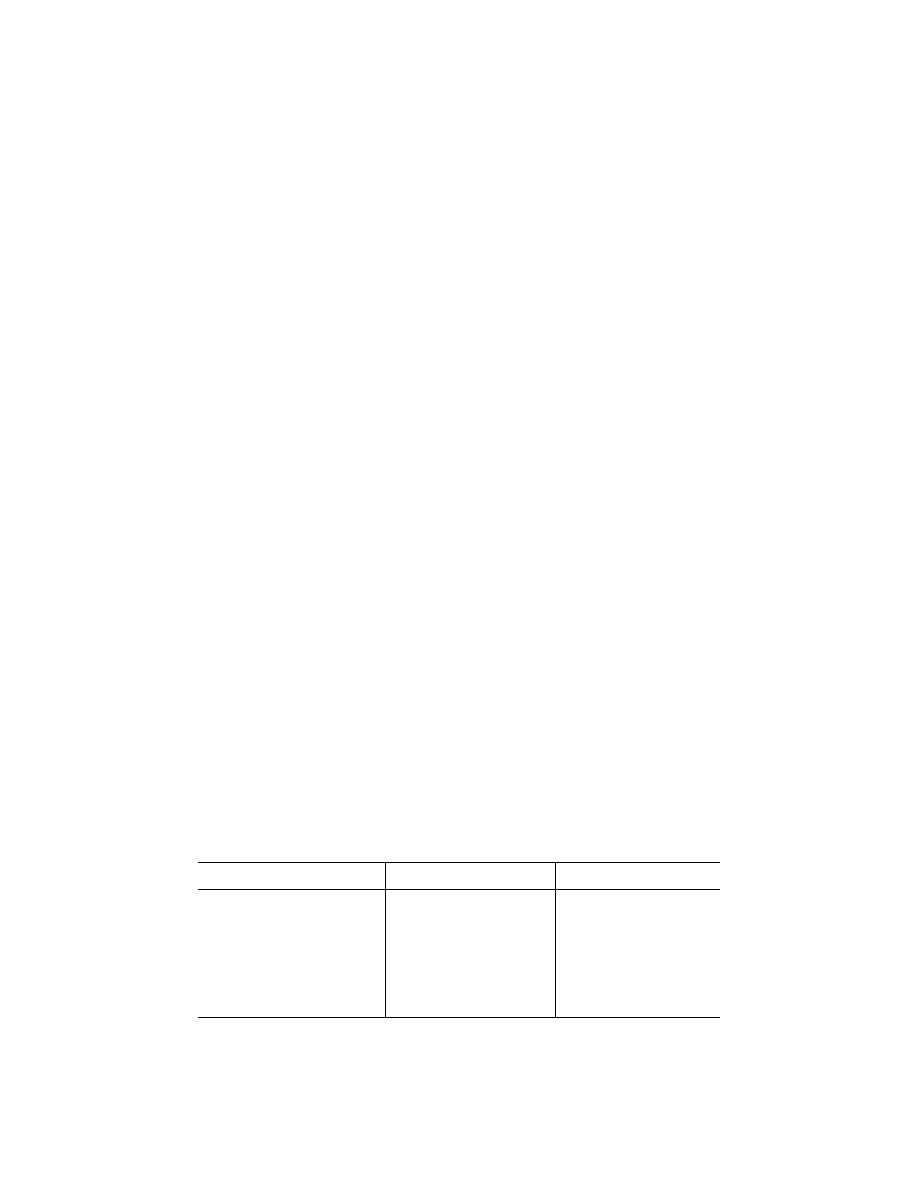
420
49 CFR Ch. I (10–1–23 Edition)
§ 172.403
(d)
Class 7 (Radioactive) Materials.
Ex-
cept as otherwise provided in this para-
graph, each package containing a Class
7 material that also meets the defini-
tion of one or more additional hazard
classes must be labeled as a Class 7 ma-
terial as required by § 172.403 and for
each additional hazard.
(1) A subsidiary label is not required
for a package containing material that
satisfies all of the criteria in § 173.4,
§ 173.4a, or § 173.4b applicable to the sub-
sidiary hazard class.
(2) Each package or overpack con-
taining fissile material, other than
fissile-excepted material (see § 173.453
of this subchapter) must bear two
FISSILE labels, affixed to opposite
sides of the package or overpack, which
conforms to the figure shown in
§ 172.441; such labels, where applicable,
must be affixed adjacent to the labels
for radioactive materials.
(e)
Class 1 (explosive) Materials.
In ad-
dition to the label specified in column
6 of the § 172.101 table, each package of
Class 1 material that also meets the
definition for:
(1) Division 6.1, Packing Groups I or
II, shall be labeled POISON or POISON
INHALATION HAZARD, as appro-
priate.
(2) Class 7, shall be labeled in accord-
ance with § 172.403 of this subpart.
(f)
Division 2.2 materials.
In addition
to the label specified in column 6 of the
§ 172.101 table, each package of Division
2.2 material that also meets the defini-
tion for an oxidizing gas (see § 171.8 of
this subchapter) must be labeled OXI-
DIZER.
(g)
Division 2.3 materials.
In addition
to the label specified in column 6 of the
§ 172.101 table, each package of Division
2.3 material that also meets the defini-
tion for:
(1) Division 2.1, must be labeled
Flammable Gas;
(2) Division 5.1, must be labeled Oxi-
dizer; and
(3) Class 8, must be labeled Corrosive.
[Amdt. 172–123, 55 FR 52594, Dec. 21, 1990, as
amended at 56 FR 66255, Dec. 20, 1991; Amdt.
172–139, 59 FR 67490, Dec. 29, 1994; Amdt. 172–
140, 60 FR 26805, May 18, 1995; Amdt. 172–149,
61 FR 27173, May 30, 1996; 62 FR 39405, July 22,
1997; 66 FR 33425, June 21, 2001; 69 FR 3668,
Jan. 26, 2004; 74 FR 2252, Jan. 14, 2009; 76 FR
56314, Sept. 13, 2011; 79 FR 40609, July 11, 2014]
§ 172.403
Class 7 (radioactive) mate-
rial.
(a) Unless excepted from labeling by
§§ 173.421 through 173.427 of this sub-
chapter, each package of radioactive
material must be labeled as provided in
this section.
(b) The proper label to affix to a
package of Class 7 (radioactive) mate-
rial is based on the radiation level at
the surface of the package and the
transport index. The proper category of
label must be determined in accord-
ance with paragraph (c) of this section.
The label to be applied must be the
highest category required for any of
the two determining conditions for the
package. RADIOACTIVE WHITE-I is
the lowest category and RADIO-
ACTIVE YELLOW-III is the highest.
For example, a package with a trans-
port index of 0.8 and a maximum sur-
face radiation level of 0.6 millisievert
(60 millirems) per hour must bear a
RADIOACTIVE YELLOW-III label.
(c) Category of label to be applied to
Class 7 (radioactive) materials pack-
ages:
Transport index
Maximum radiation level at any point
on the external surface
Label category
1
0
2
....................................................................
Less than or equal to 0.005 mSv/h (0.5
mrem/h).
WHITE-I.
More than 0 but not more than 1 ..................
Greater than 0.005 mSv/h (0.5 mrem/h)
but less than or equal to 0.5 mSv/h
(50 mrem/h).
YELLOW-II.
More than 1 but not more than 10 ................
Greater than 0.5 mSv/h (50 mrem/h)
but less than or equal to 2 mSv/h
(200 mrem/h).
YELLOW-III.
More than 10 ..................................................
Greater than 2 mSv/h (200 mrem/h)
but less than or equal to 10 mSv/h
(1,000 mrem/h).
YELLOW-III (Must be shipped under
exclusive use provisions; see
173.441(b) of this subchapter).
1
Any package containing a ‘‘highway route controlled quantity’’ (§ 173.403 of this subchapter) must be labelled as RADIO-
ACTIVE YELLOW-III.
2
If the measured TI is not greater than 0.05, the value may be considered to be zero.

421
Pipeline and Haz. Matls. Safety Admin., DOT
§ 172.403
(d)
EMPTY label.
See § 173.428(e) of
this subchapter for EMPTY labeling re-
quirements.
(e)
FISSILE label.
For packages re-
quired in § 172.402 to bear a FISSILE
label, each such label must be com-
pleted with the criticality safety index
(CSI) assigned in the NRC or DOE
package design approval, or in the cer-
tificate of approval for special arrange-
ment or the certificate of approval for
the package design issued by the Com-
petent Authority for import and export
shipments. For overpacks and freight
containers required in § 172.402 to bear
a FISSILE label, the CSI on the label
must be the sum of the CSIs for all of
the packages contained in the over-
pack or freight container.
(f) Each package required by this sec-
tion to be labeled with a RADIO-
ACTIVE label must have two of these
labels, affixed to opposite sides of the
package. (See § 172.406(e)(3) for freight
container label requirements).
(g) The following applicable items of
information must be entered in the
blank spaces on the RADIOACTIVE
label by legible printing (manual or
mechanical), using a durable weather
resistant means of marking:
(1)
Contents.
Except for LSA-1 mate-
rial, the names of the radionuclides as
taken from the listing of radionuclides
in § 173.435 of this subchapter (symbols
which conform to established radiation
protection terminology are authorized,
i.e.
,
99
Mo,
60
Co, etc.). For mixtures of
radionuclides, with consideration of
space available on the label, the radio-
nuclides that must be shown must be
determined in accordance with
§ 173.433(g) of this subchapter. For LSA-
I material, the term ‘‘LSA-I’’ may be
used in place of the names of the radio-
nuclides.
(2)
Activity.
The maximum activity of
the radioactive contents in the pack-
age during transport must be expressed
in appropriate SI units (
e.g.,
Becquerels
(Bq), Terabecquerels (TBq)). The activ-
ity may also be stated in appropriate
customary units (
e.g.,
Curies (Ci),
milliCuries (mCi), microCuries (uCi))
in parentheses following the SI units.
Abbreviations are authorized. Except
for plutonium-239 and plutonium-241,
the weight in grams or kilograms of
fissile radionuclides (or the mass of
each fissile nuclide for mixtures when
appropriate) may be inserted instead of
activity units. For plutonium-239 and
plutonium-241, the weight in grams of
fissile radionuclides (or the mass of
each fissile nuclide for mixtures when
appropriate) may be inserted in addi-
tion to the activity units.
(3)
Transport index.
(see § 173.403 of
this subchapter.)
(h) When one or more packages of
Class 7 (radioactive) material are
placed within an overpack, the over-
pack must be labeled as prescribed in
this section, except as follows:
(1) The ‘‘contents’’ entry on the label
may state ‘‘mixed’’ in place of the
names of the radionuclides unless each
inside package contains the same
radionuclide(s).
(2) The ‘‘activity’’ entry on the label
must be determined by adding together
the number of becquerels of the Class 7
(radioactive) materials packages con-
tained therein.
(3) For an overpack, the transport
index (TI) must be determined by add-
ing together the transport indices of
the Class 7 (radioactive) materials
packages contained therein, except
that for a rigid overpack, the transport
index (TI) may alternatively be deter-
mined by direct measurement as pre-
scribed in § 173.403 of this subchapter
under the definition for ‘‘transport
index,’’ taken by the person initially
offering the packages contained within
the overpack for shipment.
(4) The category of Class 7 label for
the overpack must be determined from
the table in § 172.403(c) using the TI de-
rived according to paragraph (h)(3) of
this section, and the maximum radi-
ation level on the surface of the over-
pack.
(5) The category of the Class 7 label
of the overpack, and not that of any of
the packages contained therein, must
be used in accordance with Table 1 of
§ 172.504(e) to determine when the
transport vehicle must be placarded.
(6) For fissile material, the criti-
cality safety index which must be en-
tered on the overpack FISSILE label is
the sum of the criticality safety indi-
ces of the individual packages in the
overpack, as stated in the certificate of
approval for the package design issued

422
49 CFR Ch. I (10–1–23 Edition)
§ 172.404
by the NRC or the U.S. Competent Au-
thority.
[Amdt. 172–29, 41 FR 15996, Apr. 15, 1976]
E
DITORIAL
N
OTE
: For F
EDERAL
R
EGISTER
ci-
tations affecting § 172.403, see the List of CFR
Sections Affected, which appears in the
Finding Aids section of the printed volume
and at
www.govinfo.gov.
§ 172.404
Labels for mixed and consoli-
dated packaging.
(a)
Mixed packaging.
When compatible
hazardous materials having different
hazard classes are packed within the
same packaging, or within the same
outside container or overpack as de-
scribed in § 173.25, the packaging, out-
side container or overpack must be la-
beled as required for each class of haz-
ardous material contained therein.
(b)
Consolidated packaging.
When two
or more packages containing compat-
ible hazardous materials are placed
within the same outside container or
overpack, the outside container or
overpack must be labeled as required
for each class of hazardous material
contained therein, unless labels rep-
resentative of each hazardous material
in the outside container or overpack
are visible.
(c)
Consolidation bins used by a single
motor carrier.
Notwithstanding the pro-
visions of paragraph (b) of this section,
labeling of a consolidation bin is not
required under the following condi-
tions:
(1) The consolidation bin must be re-
usable, made of materials such as plas-
tic, wood, or metal and must have a ca-
pacity of 64 cubic feet or less;
(2) Hazardous material packages
placed in the consolidation bin must be
properly labeled in accordance with
this subpart;
(3) Packages must be compatible as
specified in § 177.848 of this subchapter;
(4) Packages may only be placed
within the consolidation bin and the
bin be loaded on a motor vehicle by an
employee of a single motor carrier;
(5) Packages must be secured within
the consolidation bin by other pack-
ages or by other suitable means in such
a manner as to prevent shifting of, or
significant relative motion between,
the packages that would likely com-
promise the integrity of any package;
(6) The consolidation bin must be
clearly and legibly marked on a tag or
fixed display device with an indication
of each hazard class or division con-
tained within the bin;
(7) The consolidation bin must be
properly blocked and braced within the
transport vehicle; and
(8) Consolidation bins may only be
transported by a single motor carrier,
or on railcars transporting such vehi-
cles.
[76 FR 43527, July 20, 2011]
§ 172.405
Authorized label modifica-
tions.
(a) For Classes 1, 2, 3, 4, 5, 6, and 8,
text indicating a hazard (for example
FLAMMABLE LIQUID) is not required
on a primary or subsidiary label.
(b) For a package containing Oxygen,
compressed, or Oxygen, refrigerated
liquid, the OXIDIZER label specified in
§ 172.426 of this subpart, modified to dis-
play the word ‘‘OXYGEN’’ instead of
‘‘OXIDIZER’’, and the class number
‘‘2’’ instead of ‘‘5.1’’, may be used in
place of the NON-FLAMMABLE GAS
and OXIDIZER labels. Notwithstanding
the provisions of paragraph (a) of this
section, the word ‘‘OXYGEN’’ must ap-
pear on the label.
(c) For a package containing a Divi-
sion 6.1, Packing Group III material,
the POISON label specified in § 172.430
may be modified to display the text
‘‘PG III’’ instead of ‘‘POISON’’ or
‘‘TOXIC’’ below the mid line of the
label. Also see § 172.313(d).
[Amdt. 172–123, 55 FR 52594, Dec. 21, 1990, as
amended at 56 FR 66255, Dec. 20, 1991; 57 FR
45458, Oct. 1, 1992; 64 FR 10776, Mar. 5, 1999; 66
FR 33425, June 21, 2001]
§ 172.406
Placement of labels.
(a)
General.
(1) Except as provided in
paragraphs (b) and (e) of this section,
each label required by this subpart
must—
(i) Be printed on or affixed to a sur-
face (other than the bottom) of the
package or containment device con-
taining the hazardous material;
(ii) Be located on the same surface of
the package and near the proper ship-
ping name marking, if the package di-
mensions are adequate; and
(iii) For transportation by aircraft,
the entire label(s) must appear on one

423
Pipeline and Haz. Matls. Safety Admin., DOT
§ 172.407
side of the package. For cylindrical
packages, the label must be of such di-
mensions that it will not overlap itself.
In the case of cylindrical packages con-
taining radioactive materials, which
require two identical labels, these la-
bels must be centered on opposite
points of the circumference and must
not overlap each other. If the dimen-
sions of the package are such that two
identical labels cannot be affixed with-
out overlapping each other, one label is
acceptable provided it does not overlap
itself.
(2) Except as provided in paragraph
(e) of this section, duplicate labeling is
not required on a package or contain-
ment device (such as to satisfy redun-
dant labeling requirements).
(b)
Exceptions.
A label may be printed
on or placed on a securely affixed tag,
or may be affixed by other suitable
means to:
(1) A package that contains no radio-
active material and which has dimen-
sions less than those of the required
label;
(2) A cylinder; and
(3) A package which has such an ir-
regular surface that a label cannot be
satisfactorily affixed.
(c)
Placement of multiple labels.
When
primary and subsidiary hazard labels
are required, they must be displayed
next to each other. Placement con-
forms to this requirement if labels are
within 150 mm (6 inches) of one an-
other.
(d)
Contrast with background.
Each
label must be printed on or affixed to a
background color contrasting to the
color specification of the label as re-
quired by § 172.407(d)(1), or must have a
dotted or solid line outer border, to en-
hance the visibility of the label. How-
ever, the dotted or solid line outer bor-
der may also be used for backgrounds
of contrasting color.
(e)
Duplicate labeling.
Generally, only
one of each different required label
must be displayed on a package. How-
ever, duplicate labels must be dis-
played on at least two sides or two
ends (other than the bottom) of—
(1) Each package or overpack having
a volume of 1.8 m
3
(64 cubic feet) or
more;
(2) Each non-bulk package containing
a radioactive material;
(3) Each DOT 106 or 110 multi-unit
tank car tank. Labels must be dis-
played on each end;
(4) Each portable tank of less than
3,785 L (1000 gallons) capacity;
(5) Each freight container or aircraft
unit load device having a volume of 1.8
m
3
(64 cubic feet) or more, but less than
18 m
3
(640 cubic feet). One of each re-
quired label must be displayed on or
near the closure; and
(6) An IBC having a volume of 1.8 m
3
(64 cubic feet) or more.
(f)
Visibility.
A label must be clearly
visible and may not be obscured by
markings or attachments.
[Amdt. 172–123, 55 FR 52594, Dec. 21, 1990, as
amended at 56 FR 66255, Dec. 20, 1991; Amdt.
172–130, 58 FR 51531, Oct. 1, 1993; 73 FR 4716,
Jan. 28, 2008; 81 FR 35540, June 2, 2016; 87 FR
44991, July 26, 2022]
§ 172.407
Label specifications.
(a)
Durability.
Each label, whether
printed on or affixed to a package,
must be durable and weather resistant.
A label on a package must be able to
withstand, without deterioration or a
substantial change in color, a 30-day
exposure to conditions incident to
transportation that reasonably could
be expected to be encountered by the
labeled package.
(b)
Design.
(1) Except for size and
color, the printing, inner border, and
symbol on each label must be as shown
in §§ 172.411 through 172.448 of this sub-
part, as appropriate.
(2) The dotted line border shown on
each label is not part of the label speci-
fication, except when used as an alter-
native for the solid line outer border to
meet the requirements of § 172.406(d) of
this subpart.
(c)
Size.
(1) Each diamond (square-on-
point) label prescribed in this subpart
must be at least 100 mm (3.9 inches) on
each side with each side having a solid
line inner border approximately 5 mm
(.2 inches) inside and parallel to the
edge. The 5 mm (.2 inches) measure-
ment is from the outside edge of the
label to the outside of the solid line
forming the inner border.
(i) If the size of the package so re-
quires, the dimensions of the label and

424
49 CFR Ch. I (10–1–23 Edition)
§ 172.407
its features may be reduced proportion-
ally provided the symbol and other ele-
ments of the label remain clearly visi-
ble.
(ii) Where dimensions are not speci-
fied, all features shall be in approxi-
mate proportion to those shown in
§§ 172.411 through 172.448 of this sub-
part, as appropriate.
(iii) [Reserved]
(iv) For domestic transportation, a
packaging labeled prior to January 1,
2017, and in conformance with the re-
quirements of this paragraph in effect
on December 31, 2014, may continue in
service until the end of its useful life.
(2) The CARGO AIRCRAFT ONLY
label must be a rectangle measuring at
least 110 mm (4.3 inches) in height by
120 mm (4.7 inches) in width. The words
‘‘CARGO AIRCRAFT ONLY’’ must be
shown in letters measuring at least 6.3
mm (0.25 inches) in height.
(3) Except as otherwise provided in
this subpart, the hazard class number,
or division number, as appropriate,
must be at least 6.3 mm (0.25 inches)
and not greater than 12.7 mm (0.5
inches).
(4) When text indicating a hazard is
displayed on a label, the label name
must be shown in letters measuring at
least 7.6 mm (0.3 inches) in height. For
SPONTANEOUSLY COMBUSTIBLE or
DANGEROUS WHEN WET labels, the
words ‘‘Spontaneously’’ and ‘‘When
Wet’’ must be shown in letters meas-
uring at least 5.1 mm (0.2 inches) in
height.
(5) The symbol on each label must be
proportionate in size to that shown in
the appropriate section of this subpart.
(d)
Color.
(1) The background color on
each label must be as prescribed in
§§ 172.411 through 172.448 of this sub-
part, as appropriate.
(2) The symbol, text, numbers, and
border must be shown in black on a
label except that—
(i) White may be used on a label with
a one color background of green, red or
blue.
(ii) White must be used for the text
and class number for the CORROSIVE
label.
(iii) White may be used for the sym-
bol for the ORGANIC PEROXIDE label.
(A) If white is used for the symbol for
the ORGANIC PEROXIDE label then
the solid line forming the inner border
on the upper half of the label must also
be white.
(B)
Transitional exception.
A label in
conformance with the requirements of
this paragraph in effect on December
31, 2014, may continue to be used until
December 31, 2016.
(C) For domestic transportation, a
packaging labeled prior to January 1,
2017 and in conformance with the re-
quirements of this paragraph in effect
on December 31, 2014, may continue in
service until the end of its useful life.
(iv) The FLAMMABLE GAS label dis-
played on cylinders and gas cartridges
for liquefied petroleum gases may be
shown in the background color of the
receptacle if adequate contrast is pro-
vided.
(3) Black and any color on a label
must be able to withstand, without
substantial change, a 72-hour
fadeometer test (for a description of
equipment designed for this purpose,
see ASTM G 23–69 (1975) or ASTM G 26–
70).
(4)(i) A color on a label, upon visual
examination, must fall within the color
tolerances—
(A) Displayed on color charts con-
forming to the technical specifications
for charts set forth in table 1 or 2 in ap-
pendix A to this part; or
(B) For labels printed on packaging
surfaces, specified in table 3 in appen-
dix A to this part.
(ii) Color charts conforming to ap-
pendix A to this part are on display at
the Standards and Rulemaking Divi-
sion, Pipeline and Hazardous Materials
Safety Administration, U.S. Depart-
ment of Transportation, East Building,
2nd Floor, 1200 New Jersey Avenue SE.,
Washington, DC 20590–0001.
(5) The following color standards in
the PANTONE
formula guide coated/
uncoated (see § 171.7(b) of this sub-
chapter) may be used to achieve the re-
quired colors on markings and hazard
warning labels and placards:
(i) For Red—Use PANTONE
186 U
(ii) For Orange—Use PANTONE
151
U
(iii) For Yellow—Use PANTONE
109
U
(iv) For Green—Use PANTONE
335
U
(v) For Blue—Use PANTONE
285 U
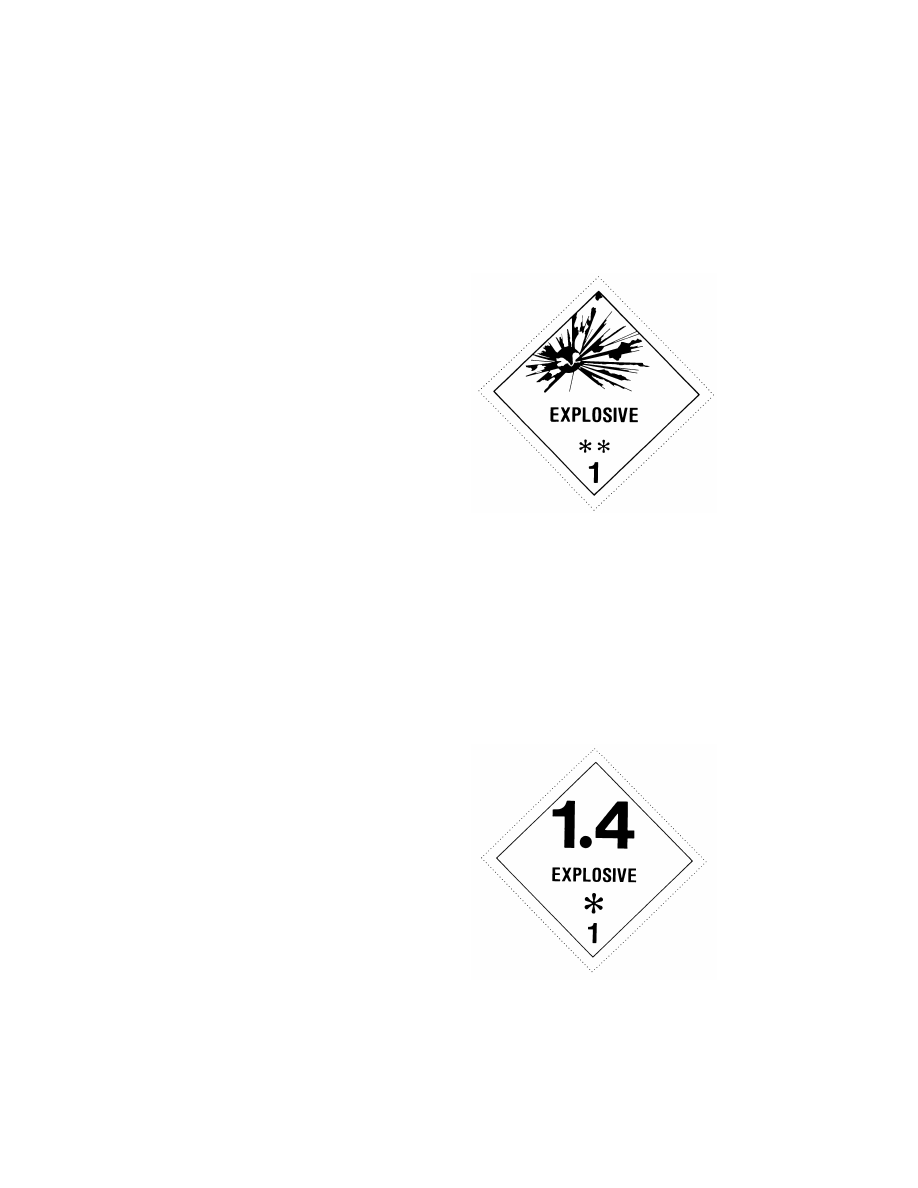
425
Pipeline and Haz. Matls. Safety Admin., DOT
§ 172.411
(vi) For Purple—Use PANTONE
259
U
(6) Where specific colors from the
PANTONE MATCHING SYSTEM
are
applied as opaque coatings, such as
paint, enamel, or plastic, or where la-
bels are printed directly on the surface
of a packaging, a spectrophotometer or
other instrumentation must be used to
ensure a proper match with the color
standards in the PANTONE
formula
guide coated/uncoated for colors pre-
scribed in paragraph (d)(5) of this sec-
tion. PANTONE
is the property of
Pantone, Inc.
(7) The specified label color must ex-
tend to the edge of the label in the area
designated on each label, except for the
CORROSIVE, RADIOACTIVE YEL-
LOW–II, and RADIOACTIVE YELLOW–
III labels on which the color must ex-
tend only to the inner border.
(e)
Form identification.
A label may
contain form identification informa-
tion, including the name of its maker,
provided that information is printed
outside the solid line inner border in no
larger than 10-point type.
(f)
Exceptions.
Except for materials
poisonous by inhalation (see § 171.8 of
this subchapter), a label conforming to
specifications in the UN Recommenda-
tions, the ICAO Technical Instructions,
the IMDG Code, or the Transport Can-
ada TDG Regulations (IBR, see § 171.7
of this subchapter) may be used in
place of a corresponding label that con-
forms to the requirements of this sub-
part.
(g)
Trefoil symbol.
The trefoil symbol
on the RADIOACTIVE WHITE-I, RA-
DIOACTIVE YELLOW-II, and RADIO-
ACTIVE YELLOW-III labels must meet
the appropriate specifications in ap-
pendix B of this part.
[Amdt. 172–123, 55 FR 52595, Dec. 21, 1990]
E
DITORIAL
N
OTE
: For F
EDERAL
R
EGISTER
ci-
tations affecting § 172.407, see the List of CFR
Sections Affected, which appears in the
Finding Aids section of the printed volume
and at www.govinfo.gov.
§ 172.411
EXPLOSIVE 1.1, 1.2, 1.3, 1.4,
1.5 and 1.6 labels, and EXPLOSIVE
Subsidiary label.
(a) Except for size and color, the EX-
PLOSIVE 1.1, EXPLOSIVE 1.2 and EX-
PLOSIVE 1.3 labels must be as follows:
(b) In addition to complying with
§ 172.407, the background color on the
EXPLOSIVE 1.1, EXPLOSIVE 1.2 and
EXPLOSIVE 1.3 labels must be orange.
The ‘‘**’’ must be replaced with the ap-
propriate division number and compat-
ibility group letter. The compatibility
group letter must be the same size as
the division number and must be shown
as a capitalized Roman letter.
(c) Except for size and color, the EX-
PLOSIVE 1.4, EXPLOSIVE 1.5 and EX-
PLOSIVE 1.6 labels must be as follows:
EXPLOSIVE 1.4:
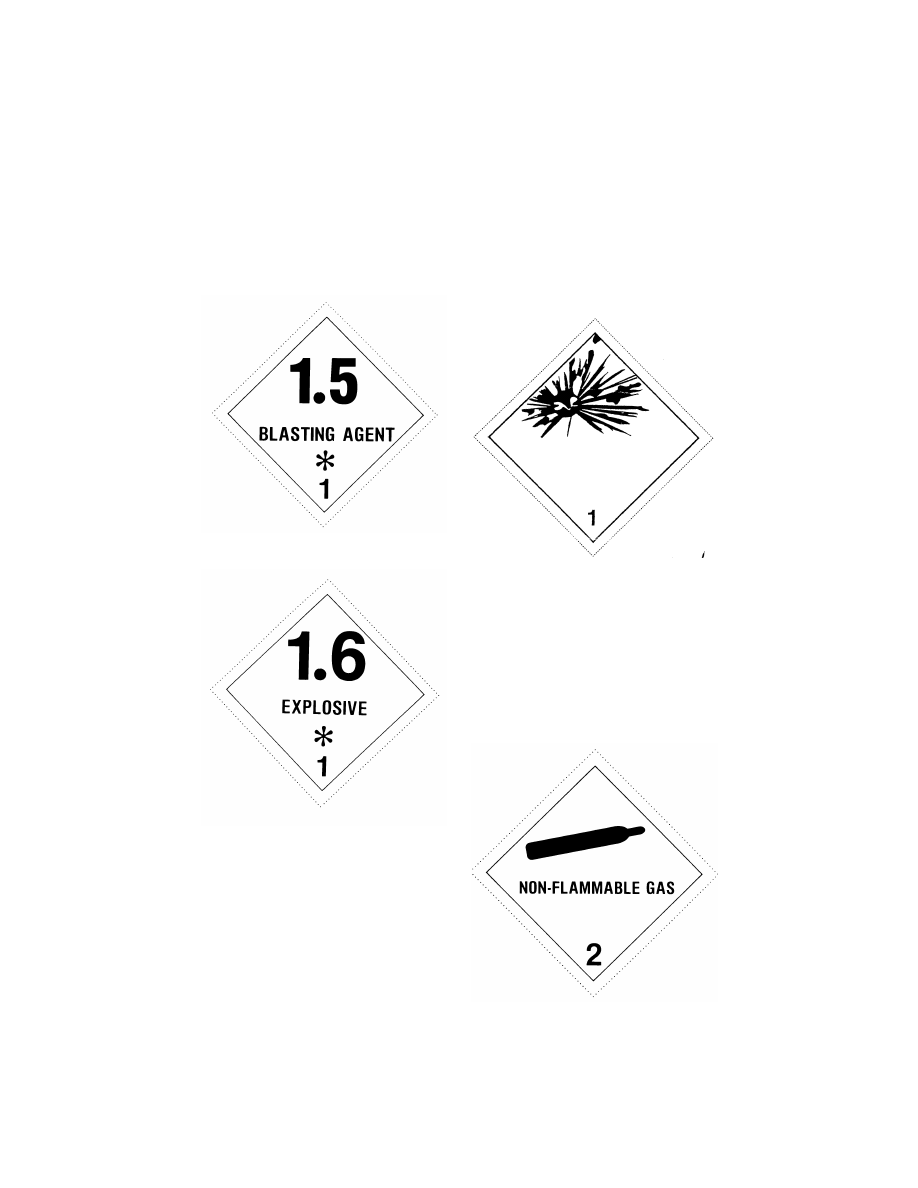
426
49 CFR Ch. I (10–1–23 Edition)
§ 172.415
EXPLOSIVE 1.5:
EXPLOSIVE 1.6:
(d) In addition to complying with
§ 172.407, the background color on the
EXPLOSIVE 1.4, EXPLOSIVE 1.5 and
EXPLOSIVE 1.6 label must be orange.
The ‘‘*’’ must be replaced with the ap-
propriate compatibility group. The
compatibility group letter must be
shown as a capitalized Roman letter.
Division numbers must measure at
least 30 mm (1.2 inches) in height and
at least 5 mm (0.2 inches) in width.
(e) An EXPLOSIVE subsidiary label
is required for materials identified in
Column (6) of the HMT as having an ex-
plosive subsidiary hazard. The division
number or compability group letter
may be displayed on the subsidiary
hazard label. Except for size and color,
the EXPLOSIVE subsidiary label must
be as follows:
(f) The EXPLOSIVE subsidiary label
must comply with § 172.407.
[Amdt. 172–123, 56 FR 66256, Dec. 20, 1991, as
amended by Amdt. 172–139, 59 FR 67490, Dec.
29, 1994; 66 FR 33425, June 21, 2001; 68 FR
45031, July 31, 2003]
§ 172.415
NON-FLAMMABLE GAS
label.
(a) Except for size and color, the
NON-FLAMMABLE GAS label must be
as follows:
(b) In addition to complying with
§ 172.407, the background color on the
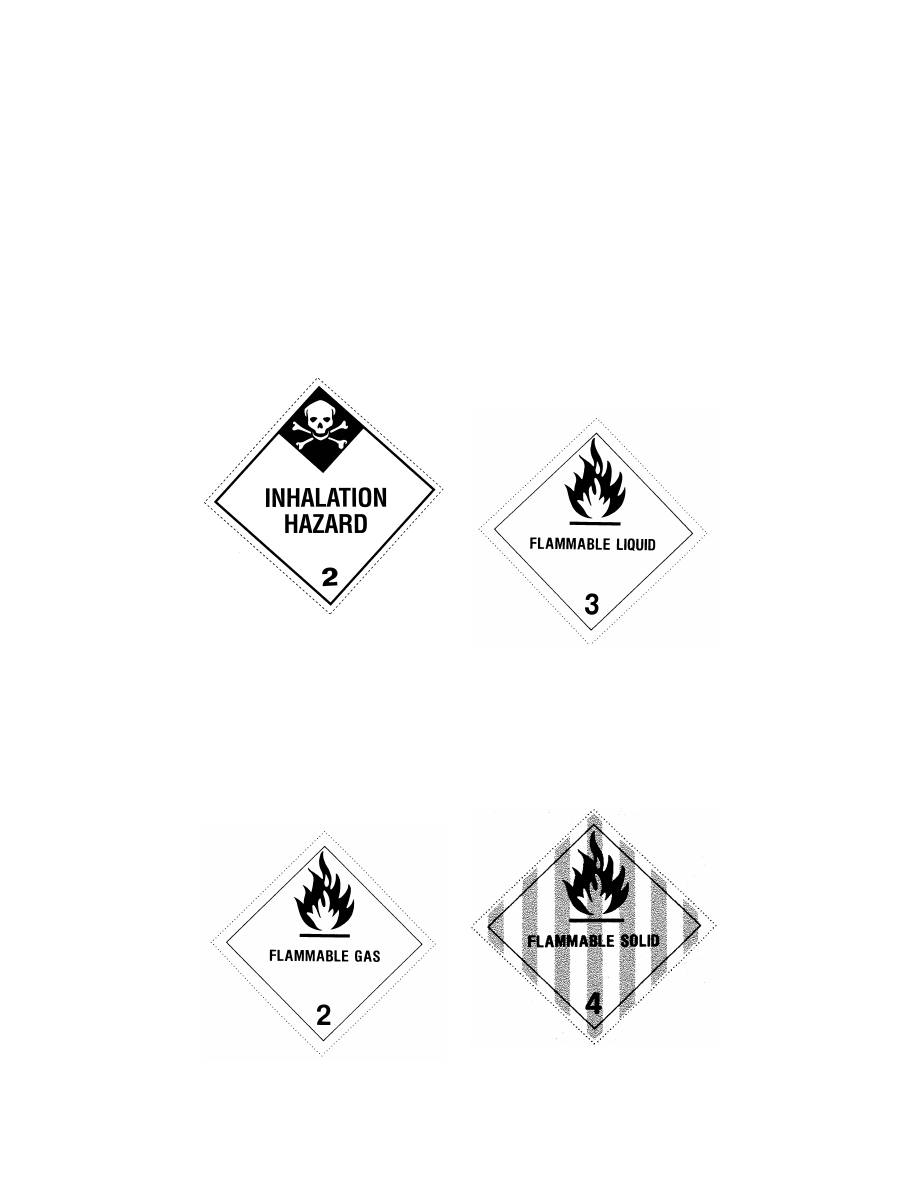
427
Pipeline and Haz. Matls. Safety Admin., DOT
§ 172.420
NON-FLAMMABLE GAS label must be
green.
[Amdt. 172–123, 56 FR 66256, Dec. 20, 1991]
§ 172.416
POISON GAS label.
(a) Except for size and color, the POI-
SON GAS label must be as follows:
(b) In addition to complying with
§ 172.407, the background on the POI-
SON GAS label and the symbol must be
white. The background of the upper di-
amond must be black and the lower
point of the upper diamond must be 14
mm (0.54 inches) above the horizontal
center line.
[62 FR 39405, July 22, 1997]
§ 172.417
FLAMMABLE GAS label.
(a) Except for size and color, the
FLAMMABLE GAS label must be as
follows:
(b) In addition to complying with
§ 172.407, the background color on the
FLAMMABLE GAS label must be red.
[Amdt. 172–123, 56 FR 66257, Dec. 20, 1991]
§ 172.419
FLAMMABLE LIQUID label.
(a) Except for size and color the
FLAMMABLE LIQUID label must be as
follows:
(b) In addition to complying with
§ 172.407, the background color on the
FLAMMABLE LIQUID label must be
red.
[Amdt. 172–123, 56 FR 66257, Dec. 20, 1991]
§ 172.420
FLAMMABLE SOLID label.
(a) Except for size and color, the
FLAMMABLE SOLID label must be as
follows:
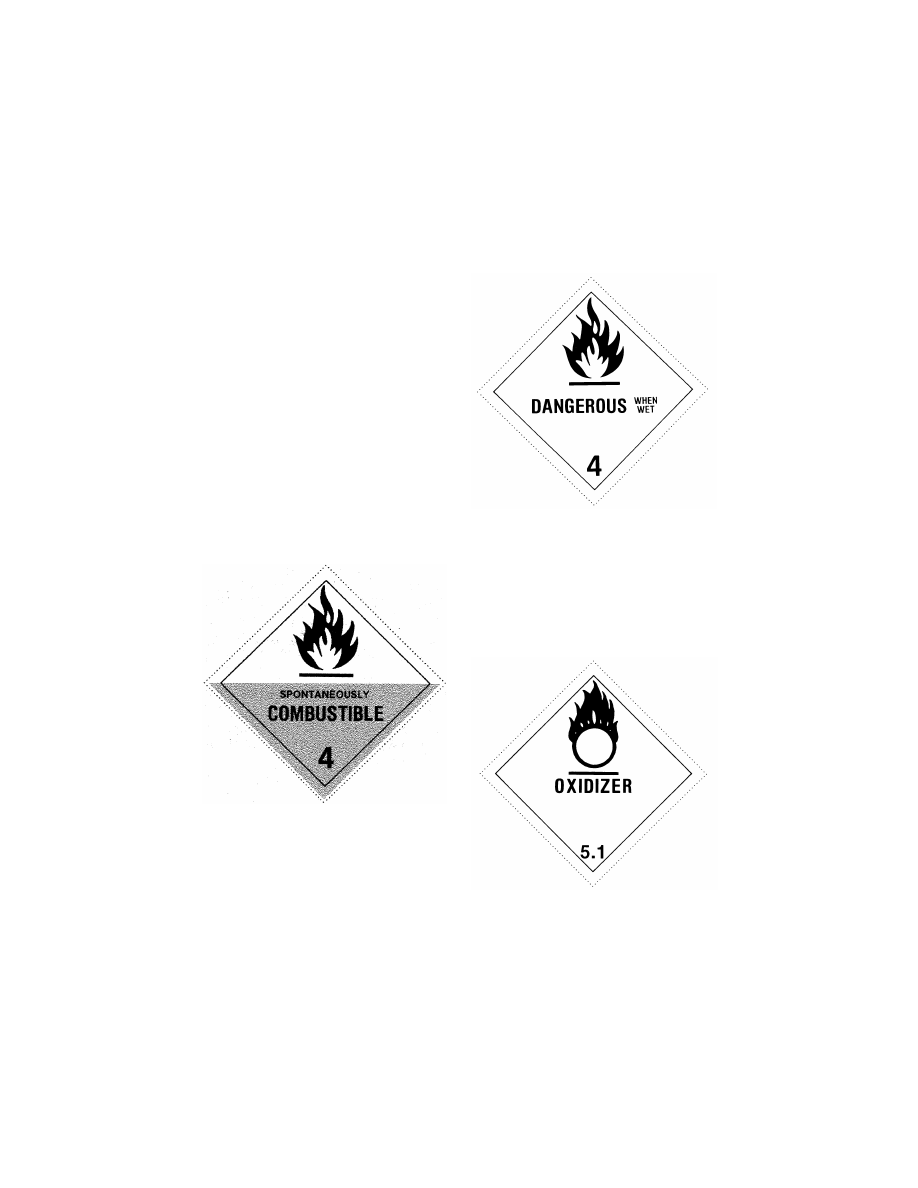
428
49 CFR Ch. I (10–1–23 Edition)
§ 172.422
(b) In addition to complying with
§ 172.407, the background on the FLAM-
MABLE SOLID label must be white
with vertical red stripes equally spaced
on each side of a red stripe placed in
the center of the label. The red vertical
stripes must be spaced so that, vis-
ually, they appear equal in width to
the white spaces between them. The
symbol (flame) and text (when used)
must be overprinted. The text ‘‘FLAM-
MABLE SOLID’’ may be placed in a
white rectangle.
[Amdt. 172–123, 56 FR 66257, Dec. 20, 1991]
§ 172.422
SPONTANEOUSLY COMBUS-
TIBLE label.
(a) Except for size and color, the
SPONTANEOUSLY COMBUSTIBLE
label must be as follows:
(b) In addition to complying with
§ 172.407, the background color on the
lower half of the SPONTANEOUSLY
COMBUSTIBLE label must be red and
the upper half must be white.
[Amdt. 172–123, 56 FR 66257, Dec. 20, 1991, as
amended at 57 FR 45458, Oct. 1, 1992]
§ 172.423
DANGEROUS WHEN WET
label.
(a) Except for size and color, the
DANGEROUS WHEN WET label must
be as follows:
(b) In addition to complying with
§ 172.407, the background color on the
DANGEROUS WHEN WET label must
be blue.
[Amdt. 172–123, 56 FR 66257, Dec. 20, 1991]
§ 172.426
OXIDIZER label.
(a) Except for size and color, the OXI-
DIZER label must be as follows:
(b) In addition to complying with
§ 172.407, the background color on the
OXIDIZER label must be yellow.
[Amdt. 172–123, 56 FR 66257, Dec. 20, 1991]
§ 172.427
ORGANIC PEROXIDE label.
(a) Except for size and color, the OR-
GANIC PEROXIDE label must be as
follows:
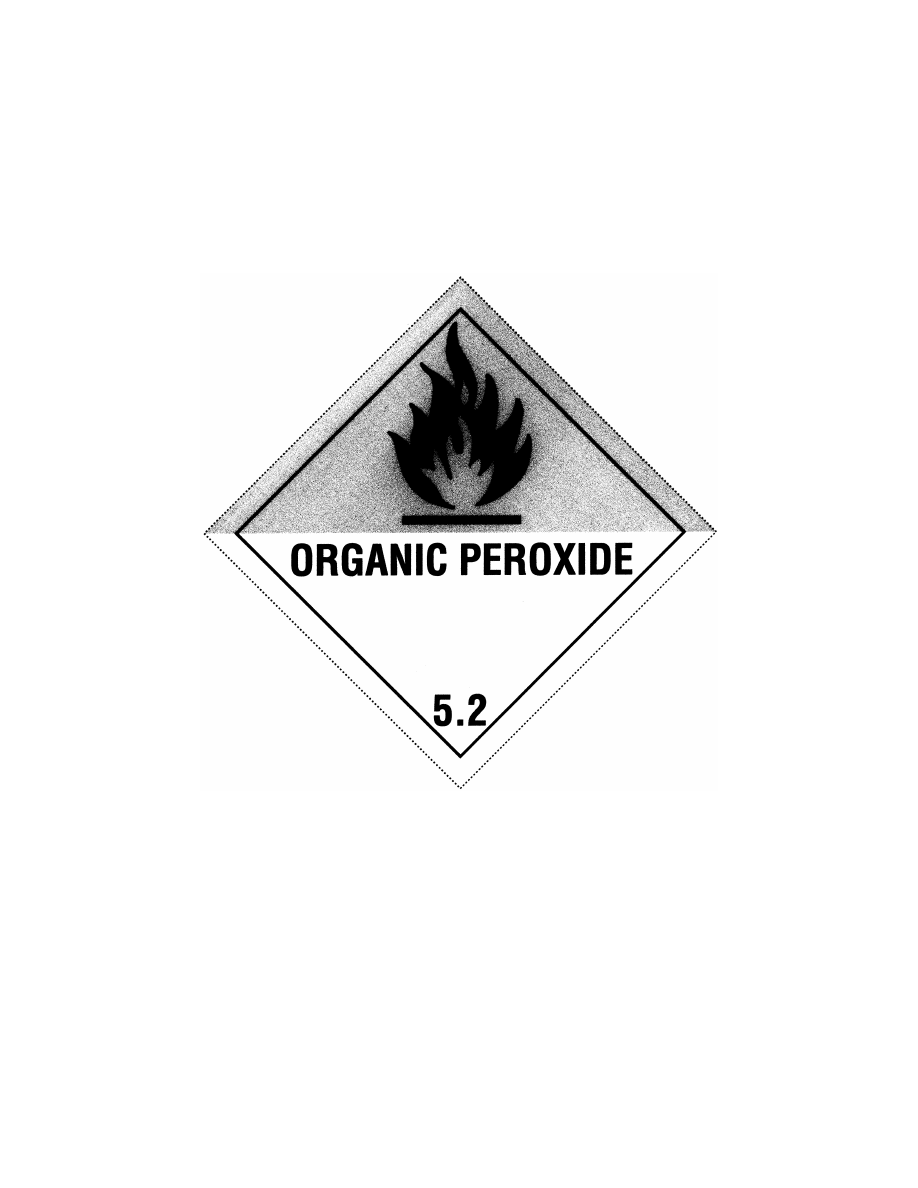
429
Pipeline and Haz. Matls. Safety Admin., DOT
§ 172.427
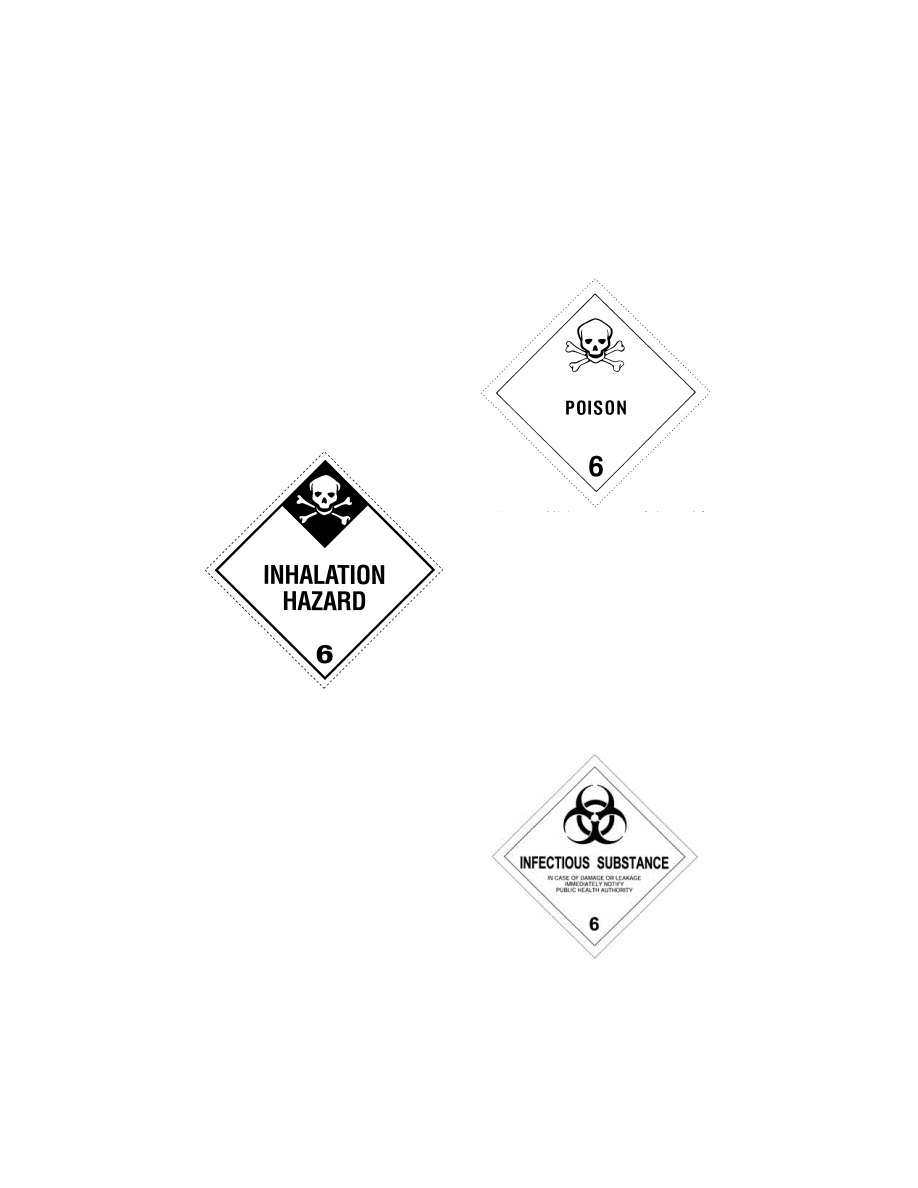
430
49 CFR Ch. I (10–1–23 Edition)
§ 172.429
(b) In addition to complying with
§ 172.407, the background on the OR-
GANIC PEROXIDE label must be red in
the top half and yellow in the lower
half.
[71 FR 78627, Dec. 29, 2006]
§ 172.429
POISON INHALATION HAZ-
ARD label.
(a) Except for size and color, the POI-
SON INHALATION HAZARD label
must be as follows:
(b) In addition to complying with
§ 172.407, the background on the POI-
SON INHALATION HAZARD label and
the symbol must be white. The back-
ground of the upper diamond must be
black and the lower point of the upper
diamond must be 14 mm (0.54 inches)
above the horizontal center line.
[62 FR 39406, July 22, 1997]
§ 172.430
POISON label.
(a) Except for size and color, the POI-
SON label must be as follows:
(b) In addition to complying with
§ 172.407, the background on the POI-
SON label must be white. The word
‘‘TOXIC’’ may be used in lieu of the
word ‘‘POISON’’.
[Amdt. 172–123, 56 FR 66258, Dec. 20, 1991, as
amended by Amdt. 172–139, 59 FR 67490, Dec.
29, 1994]
§ 172.431
[Reserved]
§ 172.432
INFECTIOUS SUBSTANCE
label.
(a) Except for size and color, the IN-
FECTIOUS SUBSTANCE label must be
as follows:
(b) In addition to complying with
§ 172.407, the background on the INFEC-
TIOUS SUBSTANCE label must be
white.
(c) Labels conforming to require-
ments in place on August 18, 2011 may
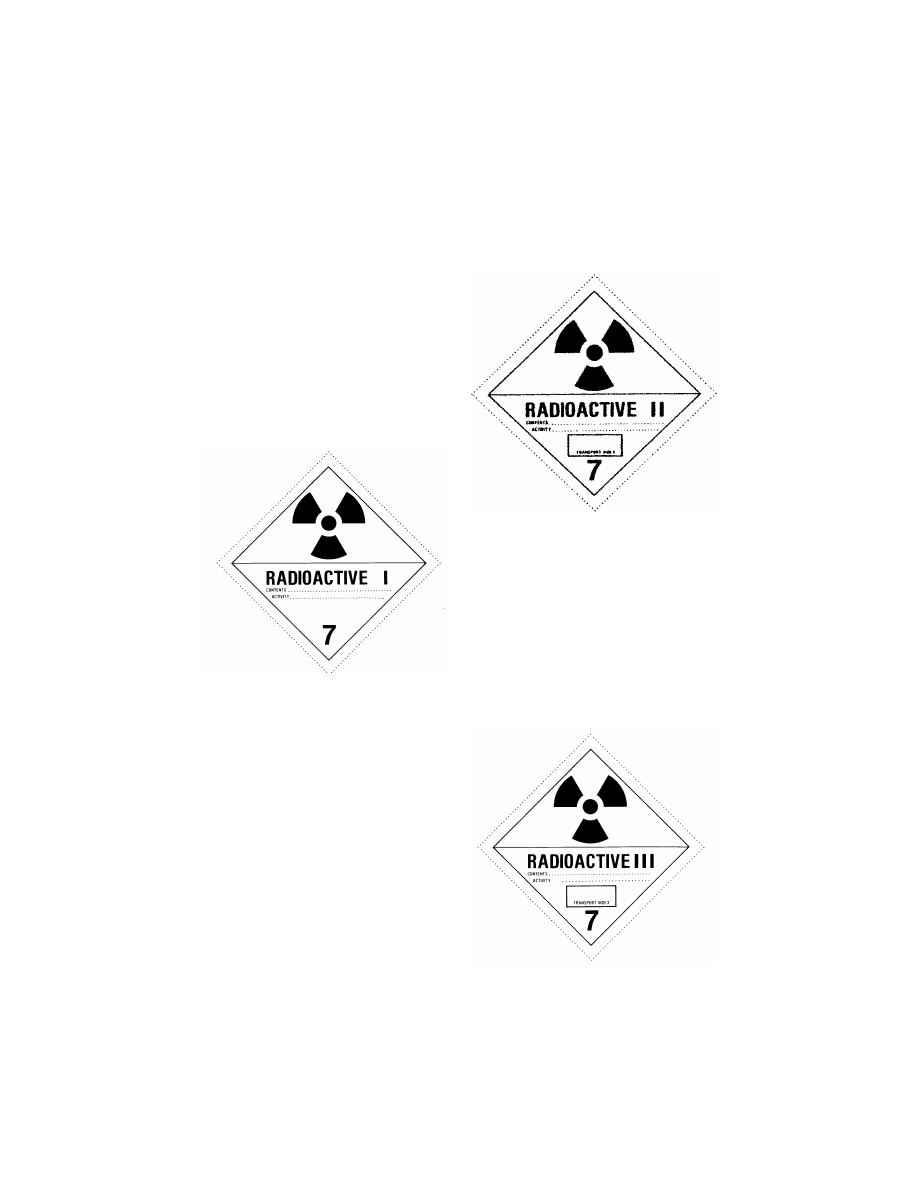
431
Pipeline and Haz. Matls. Safety Admin., DOT
§ 172.440
continue to be used until October 1,
2014.
[Amdt. 172–123, 56 FR 66258, Dec. 20, 1991, as
amended at 67 FR 53136, Aug. 14, 2002; 76 FR
43527, July 20, 2011; 76 FR 56314, Sept. 13, 2011;
76 FR 81400, Dec. 28, 2011]
§ 172.436
RADIOACTIVE WHITE-I
label.
(a) Except for size and color, the RA-
DIOACTIVE WHITE-I label must be as
follows:
(b) In addition to complying with
§ 172.407, the background on the RADIO-
ACTIVE WHITE-I label must be white.
The printing and symbol must be
black, except for the ‘‘I’’ which must be
red.
[Amdt. 172–123, 56 FR 66259, Dec. 20, 1991]
§ 172.438
RADIOACTIVE YELLOW-II
label.
(a) Except for size and color, the RA-
DIOACTIVE YELLOW-II must be as
follows:
(b) In addition to complying with
§ 172.407, the background color on the
RADIOACTIVE YELLOW-II label must
be yellow in the top half and white in
the lower half. The printing and sym-
bol must be black, except for the ‘‘II’’
which must be red.
[Amdt. 172–123, 56 FR 66259, Dec. 20, 1991]
§ 172.440
RADIOACTIVE YELLOW-III
label.
(a) Except for size and color, the RA-
DIOACTIVE YELLOW-III label must be
as follows:
(b) In addition to complying with
§ 172.407, the background color on the
RADIOACTIVE YELLOW-III label
must be yellow in the top half and
white in the lower half. The printing
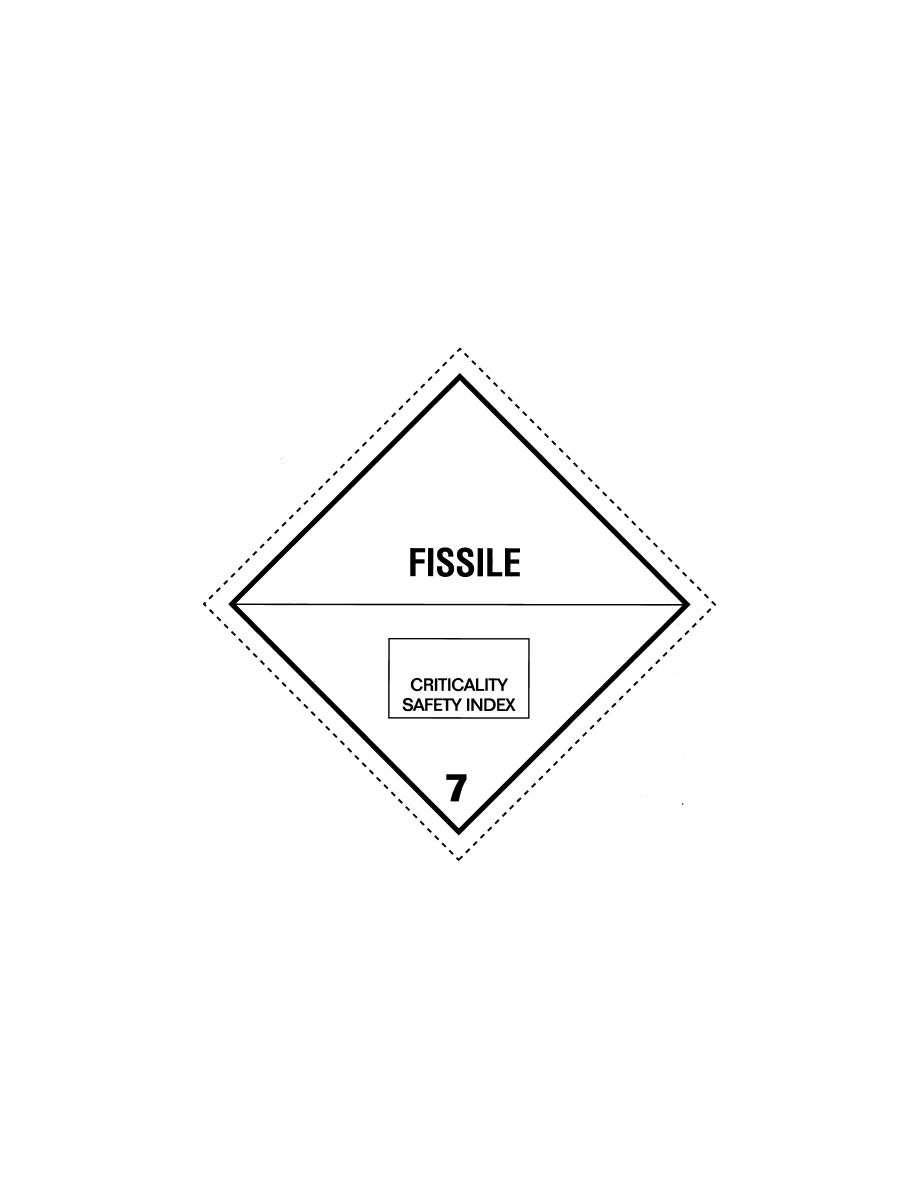
432
49 CFR Ch. I (10–1–23 Edition)
§ 172.441
and symbol must be black, except for
the ‘‘III’’ which must be red.
[Amdt. 172–123, 56 FR 66259, Dec. 20, 1991]
§ 172.441
FISSILE label.
(a) Except for size and color, the
FISSILE label must be as follows:
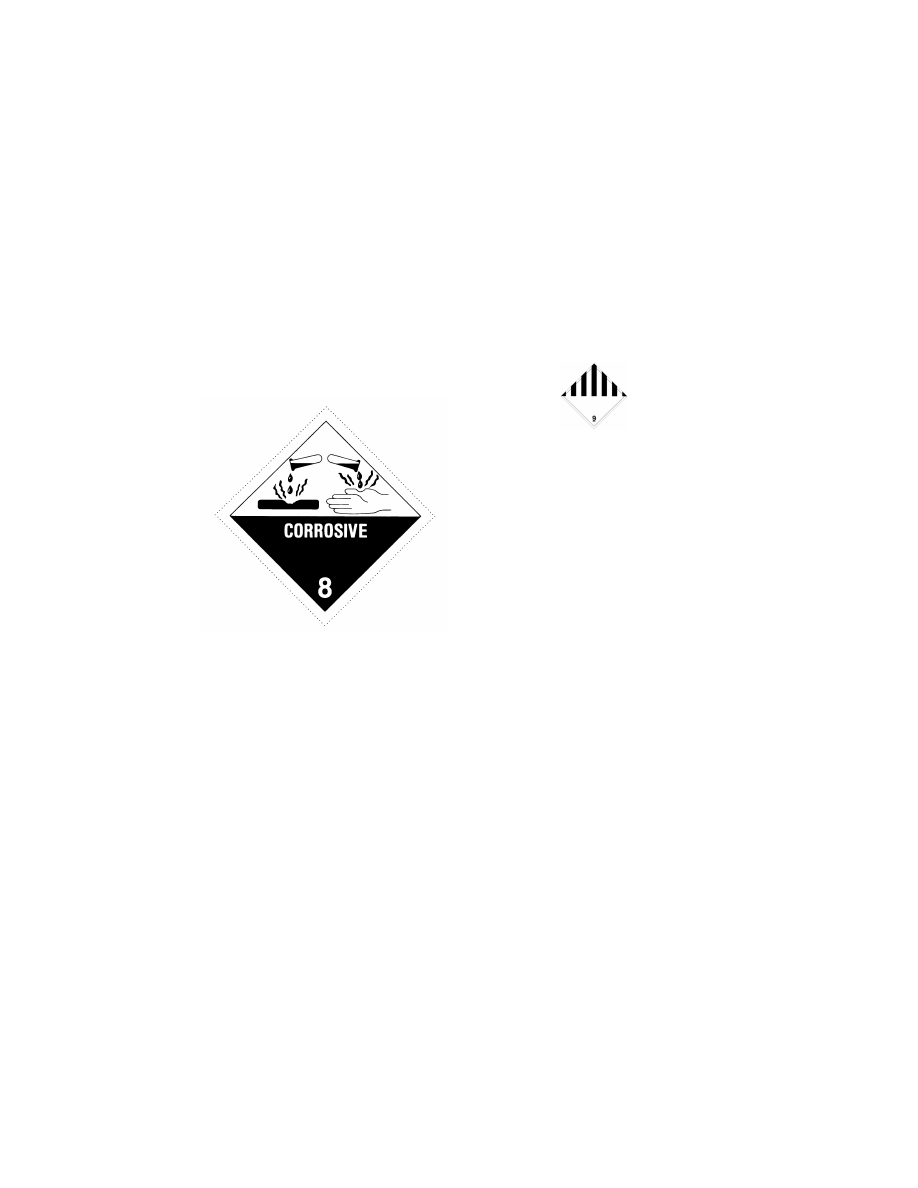
433
Pipeline and Haz. Matls. Safety Admin., DOT
§ 172.447
(b) In addition to complying with
§ 172.407, the background color on the
FISSILE label must be white.
[69 FR 3669, Jan. 26, 2004]
§ 172.442
CORROSIVE label.
(a) Except for size and color, the
CORROSIVE label must be as follows:
(b) In addition to complying with
§ 172.407, the background on the COR-
ROSIVE label must be white in the top
half and black in the lower half.
[Amdt. 172–123, 56 FR 66259, Dec. 20, 1991]
§ 172.444
[Reserved]
§ 172.446
CLASS 9 label.
(a) Except for size and color, the
‘‘CLASS 9’’ (miscellaneous hazardous
materials) label must be as follows:
(b) In addition to complying with
§ 172.407, the background on the CLASS
9 label must be white with seven black
vertical stripes on the top half. The
black vertical stripes must be spaced,
so that, visually, they appear equal in
width to the six white spaces between
them. The lower half of the label must
be white with the class number ‘‘9’’ un-
derlined and centered at the bottom.
[Amdt. 172–123, 56 FR 66259, Dec. 20, 1991, as
amended at 74 FR 2252, Jan. 14, 2009; 76 FR
43528, July 20, 2011; 76 FR 56314, Sept. 13, 2011;
76 FR 81400, Dec. 28, 2011; 85 FR 83381, Dec. 21,
2020]
§ 172.447
LITHIUM BATTERY label.
(a) Except for size and color, the
LITHIUM BATTERY label must be as
follows:
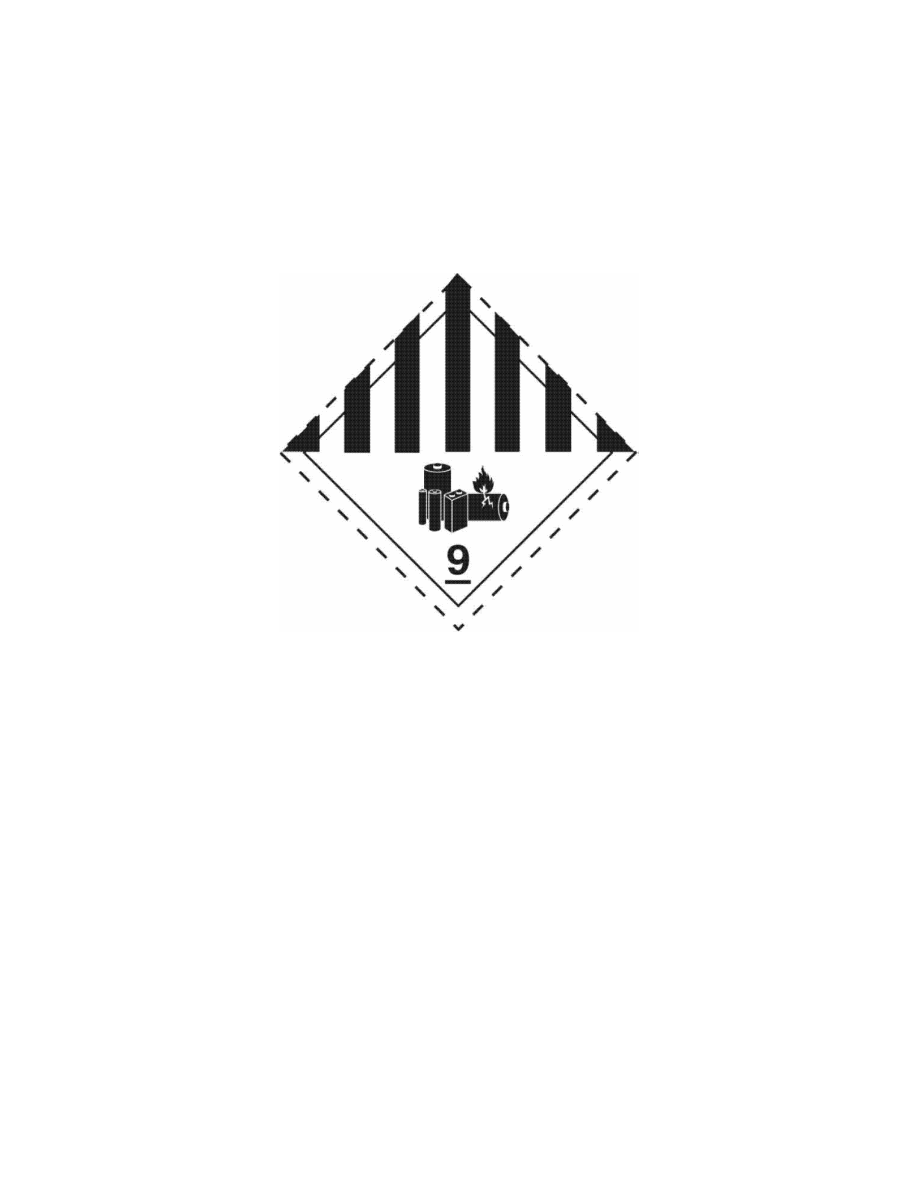
434
49 CFR Ch. I (10–1–23 Edition)
§ 172.448
(b) In addition to complying with
§ 172.407, the background on the LITH-
IUM BATTERY label must be white
with seven black vertical stripes on the
top half. The black vertical stripes
must be spaced, so that, visually, they
appear equal in width to the six white
spaces between them. The lower half of
the label must be white with the sym-
bol (battery group, one broken and
emitting flame) and class number ‘‘9’’
underlined and centered at the bottom
in black.
[82 FR 15873, Mar. 30, 2017, as amended at 87
FR 44991, July 26, 2022]
§ 172.448
CARGO AIRCRAFT ONLY
label.
(a) Except for size and color, the
CARGO AIRCRAFT ONLY label must
be as follows:
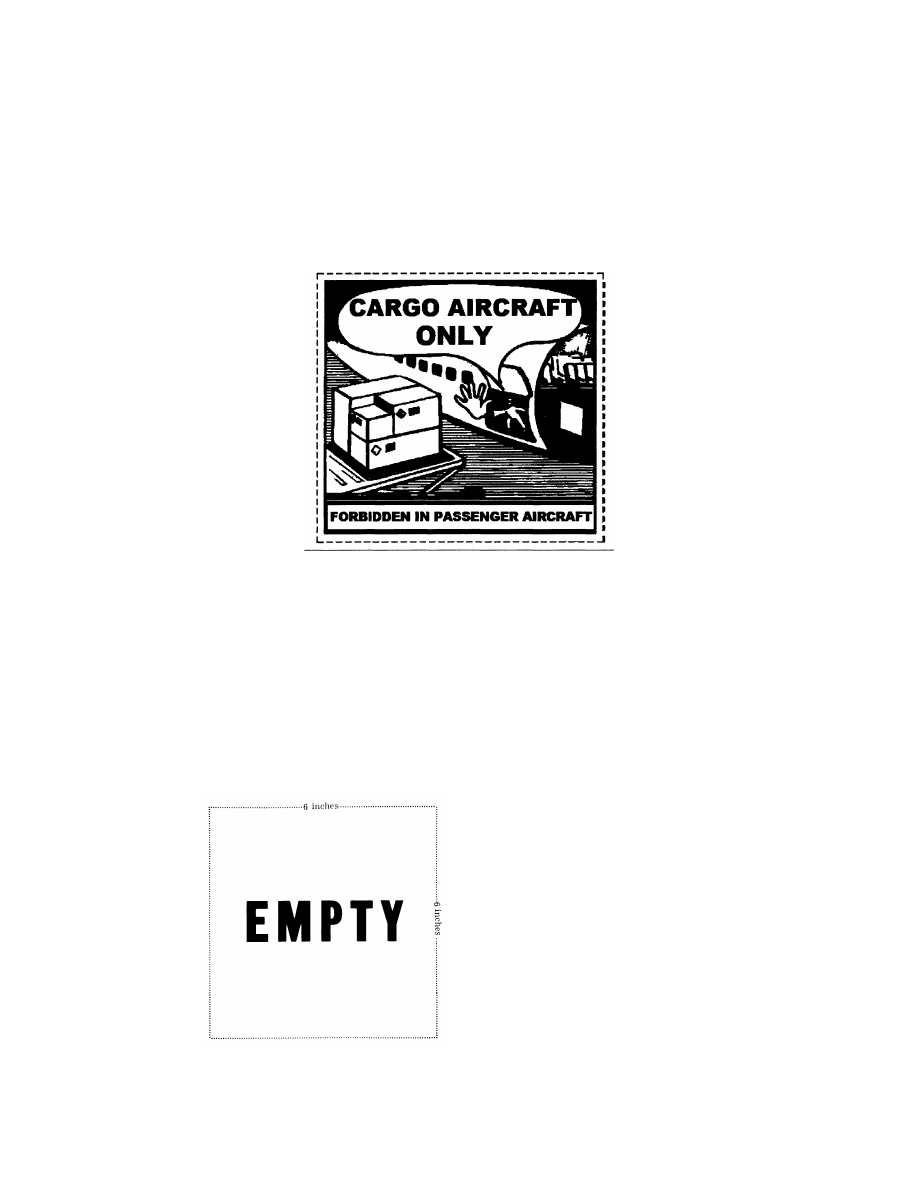
435
Pipeline and Haz. Matls. Safety Admin., DOT
§ 172.500
(b) The CARGO AIRCRAFT ONLY
label must be black on an orange back-
ground.
(c) A CARGO AIRCRAFT ONLY label
conforming to the specifications in this
section and in § 172.407(c)(2) in effect on
October 1, 2008, may be used until Jan-
uary 1, 2013.
[74 FR 2252, Jan. 14, 2009, as amended at 75
FR 72, Jan. 4, 2010]
§ 172.450
EMPTY label.
(a) Each EMPTY label, except for
size, must be as follows:
(1) Each side must be at least 6
inches (152 mm.) with each letter at
least 1 inch (25.4 mm.) in height.
(2) The label must be white with
black printing.
(b) [Reserved]
Subpart F—Placarding
§ 172.500
Applicability of placarding
requirements.
(a) Each person who offers for trans-
portation or transports any hazardous
material subject to this subchapter
shall comply with the applicable
placarding requirements of this sub-
part.
(b) This subpart does not apply to—
(1) Infectious substances;
(2) Hazardous materials authorized
by this subchapter to be offered for
transportation as a limited quantity
when identified as such on a shipping
paper in accordance with § 172.203(b) or
when marked as such in accordance
with § 172.315.
(3) Hazardous materials prepared in
accordance with § 173.13 of this sub-
chapter;
(4) Hazardous materials which are
packaged as small quantities under the
provisions of §§ 173.4, 173.4a, 173.4b of
this subchapter; and

436
49 CFR Ch. I (10–1–23 Edition)
§ 172.502
(5) Combustible liquids in non-bulk
packagings.
[Amdt. 172–123, 55 FR 52599, Dec. 21, 1990, as
amended by Amdt. 172–149, 61 FR 27173, May
30, 1996; 74 FR 2253, Jan. 14, 2009; 76 FR 3367,
Jan. 19, 2011; 87 FR 79773, Dec. 27, 2022]
§ 172.502
Prohibited and permissive
placarding.
(a)
Prohibited placarding.
Except as
provided in paragraph (b) of this sec-
tion, no person may affix or display on
a packaging, freight container, unit
load device, motor vehicle or rail car—
(1) Any placard described in this sub-
part unless—
(i) The material being offered or
transported is a hazardous material;
(ii) The placard represents a hazard
of the hazardous material being offered
or transported; and
(iii) Any placarding conforms to the
requirements of this subpart.
(2) Any sign, advertisement, slogan
(such as ‘‘Drive Safely’’), or device
that, by its color, design, shape or con-
tent, could be confused with any
placard prescribed in this subpart.
(b)
Exceptions.
(1) The restrictions in
paragraph (a) of this section do not
apply to a bulk packaging, freight con-
tainer, unit load device, transport vehi-
cle or rail car which is placarded in
conformance with TDG Regulations,
the IMDG Code or the UN Rec-
ommendations (IBR, see § 171.7 of this
subchapter).
(2) The restrictions of paragraph (a)
of this section do not apply to the dis-
play of a BIOHAZARD marking, a
‘‘HOT’’ marking, a sour crude oil haz-
ard marking, or an identification num-
ber on a white square-on-point configu-
ration in accordance with § 172.323(c),
§ 172.325(c), § 172.327(a), or § 172.336(b) of
this part, respectively.
(c)
Permissive placarding.
Placards
may be displayed for a hazardous mate-
rial, even when not required, if the
placarding otherwise conforms to the
requirements of this subpart.
[Amdt. 172–123, 55 FR 52599, Dec. 21, 1990, as
amended at 56 FR 66259, Dec. 20, 1991; Amdt.
172–151, 62 FR 1230, Jan. 8, 1997; 62 FR 39389,
39407, July 22, 1997; 66 FR 8647, Feb. 1, 2001; 66
FR 33426, June 21, 2001; 67 FR 53137, Aug. 14,
2002; 68 FR 75741, Dec. 31, 2003; 76 FR 3367,
Jan. 19, 2011; 80 FR 72923, Nov. 23, 2015]
§ 172.503
Identification number dis-
play on placards.
For procedures and limitations per-
taining to the display of identification
numbers on placards, see § 172.334.
[Amdt. 172–58, 45 FR 34701, May 22, 1980]
§ 172.504
General placarding require-
ments.
(a)
General.
Except as otherwise pro-
vided in this subchapter, each bulk
packaging, freight container, unit load
device, transport vehicle or rail car
containing any quantity of a hazardous
material must be placarded on each
side and each end with the type of plac-
ards specified in tables 1 and 2 of this
section and in accordance with other
placarding requirements of this sub-
part, including the specifications for
the placards named in the tables and
described in detail in §§ 172.519 through
172.560.
(b)
DANGEROUS placard.
A freight
container, unit load device, transport
vehicle, or rail car which contains non-
bulk packages with two or more cat-
egories of hazardous materials that re-
quire different placards specified in
table 2 of paragraph (e) of this section
may be placarded with a DANGEROUS
placard instead of the separate
placarding specified for each of the ma-
terials in table 2 of paragraph (e) of
this section. However, when 1,000 kg
(2,205 pounds) aggregate gross weight
or more of one category of material is
loaded therein at one loading facility
on a freight container, unit load de-
vice, transport vehicle, or rail car, the
placard specified in table 2 of para-
graph (e) of this section for that cat-
egory must be applied.
(c)
Exception for less than 454 kg (1,001
pounds).
Except for bulk packagings
and hazardous materials subject to
§ 172.505, when hazardous materials cov-
ered by table 2 of this section are
transported by highway or rail, plac-
ards are not required on—
(1) A transport vehicle or freight con-
tainer which contains less than 454 kg
(1001 pounds) aggregate gross weight of
hazardous materials covered by table 2
of paragraph (e) of this section; or
(2) A rail car loaded with transport
vehicles or freight containers, none of
which is required to be placarded.
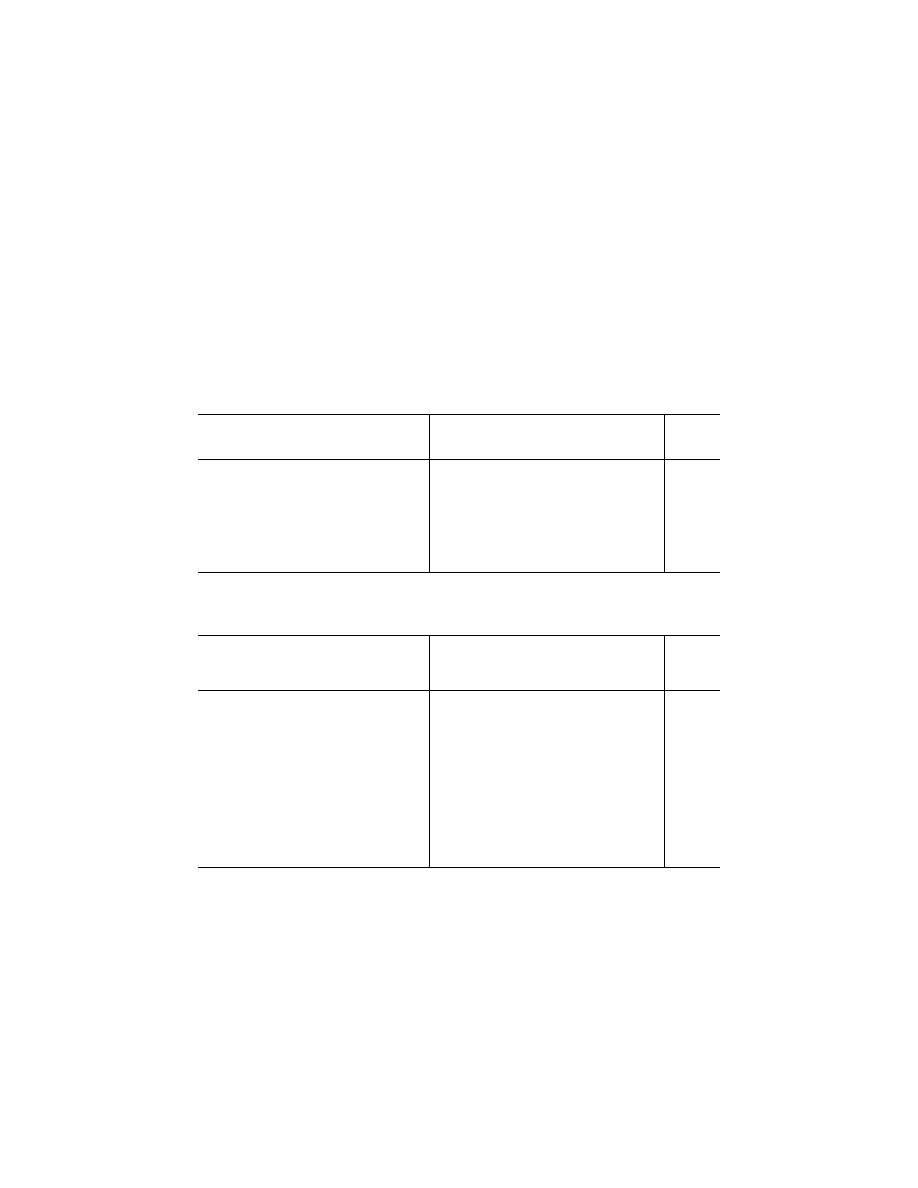
437
Pipeline and Haz. Matls. Safety Admin., DOT
§ 172.504
The exceptions provided in paragraph
(c) of this section do not prohibit the
display of placards in the manner pre-
scribed in this subpart, if not otherwise
prohibited (see § 172.502), on transport
vehicles or freight containers which
are not required to be placarded.
(d)
Exception for empty non-bulk pack-
ages.
Except for hazardous materials
subject to § 172.505, a non-bulk pack-
aging that contains only the residue of
a hazardous material covered by Table
2 of paragraph (e) of this section need
not be included in determining
placarding requirements.
(e)
Placarding tables.
Placards are
specified for hazardous materials in ac-
cordance with the following tables:
T
ABLE
1
TO
P
ARAGRAPH
(e)
Category of material (Hazard class or division number
and additional description, as appropriate)
Placard name
Placard de-
sign section
reference
(§ )
1.1 ....................................................................................
EXPLOSIVES 1.1 ............................................................
172.522
1.2 ....................................................................................
EXPLOSIVES 1.2 ............................................................
172.522
1.3 ....................................................................................
EXPLOSIVES 1.3 ............................................................
172.522
2.3 ....................................................................................
POISON GAS ..................................................................
172.540
4.3 ....................................................................................
DANGEROUS WHEN WET ............................................
172.548
5.2 (Organic peroxide, Type B, liquid or solid, tempera-
ture controlled).
ORGANIC PEROXIDE ....................................................
172.552
6.1
(material poisonous by inhalation (see § 171.8 of
this subchapter)).
POISON INHALATION HAZARD ....................................
172.555
7 (Radioactive Yellow III label only) ................................
RADIOACTIVE
1
..............................................................
172.556
1
RADIOACTIVE placards are also required for: All shipments of unpackaged LSA–I material or SCO–I; all shipments required
by §§ 173.427, 173.441, and 173.457 of this subchapter to be operated under exclusive use; and all closed vehicles used in ac-
cordance with § 173.443(d).
T
ABLE
2
TO
P
ARAGRAPH
(e)
Category of material
(hazard class or division number and additional descrip-
tion, as appropriate)
Placard name
Placard
design
section
reference
(§ )
1.4 ....................................................................................
EXPLOSIVES 1.4 ............................................................
172.523
1.5 ....................................................................................
EXPLOSIVES 1.5 ............................................................
172.524
1.6 ....................................................................................
EXPLOSIVES 1.6 ............................................................
172.525
2.1 ....................................................................................
FLAMMABLE GAS ..........................................................
172.532
2.2 ....................................................................................
NON–FLAMMABLE GAS ................................................
172.528
3 .......................................................................................
FLAMMABLE ...................................................................
172.542
Combustible liquid ...........................................................
COMBUSTIBLE ...............................................................
172.544
4.1 ....................................................................................
FLAMMABLE SOLID .......................................................
172.546
4.2 ....................................................................................
SPONTANEOUSLY COMBUSTIBLE ..............................
172.547
5.1 ....................................................................................
OXIDIZER ........................................................................
172.550
5.2 (Other than organic peroxide, Type B, liquid or
solid, temperature controlled).
ORGANIC PEROXIDE ....................................................
172.552
6.1 (other than material poisonous by inhalation) ..........
POISON ...........................................................................
172.554
6.2 ....................................................................................
NONE.
8 .......................................................................................
CORROSIVE ...................................................................
172.558
9 .......................................................................................
CLASS 9 (see § 172.504(f)(9)) ........................................
172.560
(f)
Additional placarding exceptions.
(1)
When more than one division placard is
required for Class 1 materials on a
transport vehicle, rail car, freight con-
tainer or unit load device, only the
placard representing the lowest divi-
sion number must be displayed.
(2) A FLAMMABLE placard may be
used in place of a COMBUSTIBLE
placard on—
(i) A cargo tank or portable tank.
(ii) A compartmented tank car which
contains both flammable and combus-
tible liquids.
(3) A NON-FLAMMABLE GAS
placard is not required on a transport
vehicle which contains non-flammable
gas if the transport vehicle also con-
tains flammable gas or oxygen and it is
placarded with FLAMMABLE GAS or
OXYGEN placards, as required.
(4) OXIDIZER placards are not re-
quired for Division 5.1 materials on

438
49 CFR Ch. I (10–1–23 Edition)
§ 172.505
freight containers, unit load devices,
transport vehicles or rail cars which
also contain Division 1.1 or 1.2 mate-
rials and which are placarded with EX-
PLOSIVES 1.1 or 1.2 placards, as re-
quired.
(5) For transportation by transport
vehicle or rail car only, an OXIDIZER
placard is not required for Division 5.1
materials on a transport vehicle, rail
car or freight container which also con-
tains Division 1.5 explosives and is
placarded with EXPLOSIVES 1.5 plac-
ards, as required.
(6) The EXPLOSIVE 1.4 placard is not
required for those Division 1.4 Compat-
ibility Group S (1.4S) materials that
are not required to be labeled 1.4S.
(7) For domestic transportation of
oxygen, compressed or oxygen, refrig-
erated liquid, the OXYGEN placard in
§ 172.530 of this subpart may be used in
place of a NON-FLAMMABLE GAS
placard.
(8) For domestic transportation, a
POISON INHALATION HAZARD
placard is not required on a transport
vehicle or freight container that is al-
ready placarded with the POISON GAS
placard.
(9) For Class 9, a CLASS 9 placard is
not required for domestic transpor-
tation, including that portion of inter-
national transportation, defined in
§ 171.8 of this subchapter, which occurs
within the United States. However, a
bulk packaging must be marked with
the appropriate identification number
on a CLASS 9 placard, an orange panel,
or a white square-on-point display con-
figuration as required by subpart D of
this part.
(10) For Division 6.1, PG III mate-
rials, a POISON placard may be modi-
fied to display the text ‘‘PG III’’ below
the mid line of the placard.
(11) For domestic transportation, a
POISON placard is not required on a
transport vehicle or freight container
required to display a POISON INHALA-
TION HAZARD or POISON GAS
placard.
(g) For shipments of Class 1 (explo-
sive materials) by aircraft or vessel,
the applicable compatibility group let-
ter must be displayed on the placards,
or labels when applicable, required by
this section. When more than one com-
patibility group placard is required for
Class 1 materials, only one placard is
required to be displayed, as provided in
paragraphs (g)(1) through (g)(4) of this
section. For the purposes of paragraphs
(g)(1) through (g)(4), there is a distinc-
tion between the phrases
explosive arti-
cles
and
explosive substances. Explosive
article
means an article containing an
explosive substance; examples include
a detonator, flare, primer or fuse.
Ex-
plosive substance
means a substance
contained in a packaging that is not
contained in an article; examples in-
clude black powder and smokeless pow-
der.
(1) Explosive articles of compat-
ibility groups C, D or E may be plac-
arded displaying compatibility group
E.
(2) Explosive articles of compat-
ibility groups C, D, or E, when trans-
ported with those in compatibility
group N, may be placarded displaying
compatibility group D.
(3) Explosive substances of compat-
ibility groups C and D may be plac-
arded displaying compatibility group
D.
(4) Explosive articles of compat-
ibility groups C, D, E or G, except for
fireworks, may be placarded displaying
compatibility group E.
[Amdt. 172–123, 55 FR 52600, Dec. 21, 1990]
E
DITORIAL
N
OTE
: For F
EDERAL
R
EGISTER
ci-
tations affecting § 172.504, see the List of CFR
Sections Affected, which appears in the
Finding Aids section of the printed volume
and at
www.govinfo.gov.
§ 172.505
Placarding for subsidiary
hazards.
(a) Each transport vehicle, freight
container, portable tank, unit load de-
vice, or rail car that contains a poi-
sonous material subject to the ‘‘Poison
Inhalation Hazard’’ shipping descrip-
tion of § 172.203(m) must be placarded
with a POISON INHALATION HAZARD
or POISON GAS placard, as appro-
priate, on each side and each end, in
addition to any other placard required
for that material in § 172.504. Duplica-
tion of the POISON INHALATION
HAZARD or POISON GAS placard is
not required.
(b) In addition to the RADIOACTIVE
placard which may be required by
§ 172.504(e), each transport vehicle,
portable tank or freight container that

439
Pipeline and Haz. Matls. Safety Admin., DOT
§ 172.510
contains 454 kg (1,001 pounds) or more
gross weight of non-fissile, fissile-ex-
cepted, or fissile uranium hexafluoride
must be placarded with a CORROSIVE
placard and a POISON placard on each
side and each end.
(c) Each transport vehicle, portable
tank, freight container or unit load de-
vice that contains a material which
has a subsidiary hazard of being dan-
gerous when wet, as defined in § 173.124
of this subchapter, shall be placarded
with DANGEROUS WHEN WET plac-
ards, on each side and each end, in ad-
dition to the placards required by
§ 172.504.
(d) Hazardous materials that possess
secondary hazards may exhibit sub-
sidiary placards that correspond to the
placards described in this part, even
when not required by this part (see also
§ 172.519(b) (4) of this subpart).
[Amdt. 172–123, 55 FR 52601, Dec. 21, 1990, as
amended at 56 FR 66260, Dec. 20, 1991; 57 FR
45460, Oct. 1, 1992; Amdt. 172–127, 59 FR 49133,
Sept. 26, 1994; Amdt. 172–151, 62 FR 1231, Jan.
8, 1997; 62 FR 39398, July 22, 1997; 65 FR 58626,
Sept. 29, 2000; 72 FR 55692, Oct. 1, 2007; 79 FR
40610, July 11, 2014; 82 FR 15874, Mar. 30, 2017]
§ 172.506
Providing and affixing plac-
ards: Highway.
(a) Each person offering a motor car-
rier a hazardous material for transpor-
tation by highway shall provide to the
motor carrier the required placards for
the material being offered prior to or
at the same time the material is of-
fered for transportation, unless the
carrier’s motor vehicle is already plac-
arded for the material as required by
this subpart.
(1) No motor carrier may transport a
hazardous material in a motor vehicle,
unless the placards required for the
hazardous material are affixed thereto
as required by this subpart.
(2) [Reserved]
(b) [Reserved]
[Amdt. 172–29, 41 FR 15996, Apr. 15, 1976, as
amended by Amdt. 172–29A, 41 FR 40679, Sept.
20, 1976]
§ 172.507
Special placarding provi-
sions: Highway.
(a) Each motor vehicle used to trans-
port a package of highway route con-
trolled quantity Class 7 (radioactive)
materials (see § 173.403 of this sub-
chapter) must have the required RA-
DIOACTIVE warning placard placed on
a square background as described in
§ 172.527.
(b) A nurse tank, meeting the provi-
sions of § 173.315(m) of this subchapter,
is not required to be placarded on an
end containing valves, fittings, regu-
lators or gauges when those appur-
tenances prevent the markings and
placard from being properly placed and
visible.
[Amdt. 172–103, 51 FR 5971, Feb. 18, 1986, as
amended by Amdt. 172–143, 60 FR 50305, Sept.
28, 1995]
§ 172.508
Placarding and affixing plac-
ards: Rail.
(a) Each person offering a hazardous
material for transportation by rail
shall affix to the rail car containing
the material, the placards specified by
this subpart. Placards displayed on
motor vehicles, transport containers,
or portable tanks may be used to sat-
isfy this requirement, if the placards
otherwise conform to the provisions of
this subpart.
(b) No rail carrier may accept a rail
car containing a hazardous material
for transportation unless the placards
for the hazardous material are affixed
thereto as required by this subpart.
[Amdt. 172–29, 41 FR 15996, Apr. 15, 1976, as
amended by Amdt. 172–123, 55 FR 52601, Dec.
21, 1990]
§ 172.510
Special placarding provi-
sions: Rail.
(a)
White square background.
The fol-
lowing must have the specified plac-
ards placed on a white square back-
ground, as described in § 172.527:
(1) Division 1.1 and 1.2 (explosive) ma-
terials which require EXPLOSIVES 1.1
or EXPLOSIVES 1.2 placards affixed to
the rail car;
(2) Materials classed in Division 2.3
Hazard Zone A or 6.1 Packing Group I
Hazard Zone A which require POISON
GAS or POISON placards affixed to the
rail car, including tank cars containing
only a residue of the material; and
(3) Class DOT 113 tank cars used to
transport a Division 2.1 (flammable
gas) material, including tank cars con-
taining only a residue of the material.

440
49 CFR Ch. I (10–1–23 Edition)
§ 172.512
(b)
Chemical ammunition.
Each rail
car containing Division 1.1 or 1.2 (ex-
plosive) ammunition which also meets
the definition of a material poisonous
by inhalation (see § 171.8 of this sub-
chapter) must be placarded EXPLO-
SIVES 1.1 or EXPLOSIVES 1.2 and
POISON GAS or POISON INHALATION
HAZARD.
[Amdt. 172–29, 41 FR 15996, Apr. 15, 1976, as
amended by Amdt. 172–103, 51 FR 5971, Feb.
18, 1986; Amdt. 172–110, 52 FR 29528, Aug. 10,
1987; Amdt. 172–111, 52 FR 36671, Sept. 30, 1987;
Amdt. 172–123, 55 FR 52601, Dec. 21, 1990; 56
FR 66260, Dec. 20, 1991; 57 FR 45460, Oct. 1,
1992; Amdt. 172–248, 61 FR 28676, June 5, 1996;
Amdt. 172–151, 62 FR 1231, Jan. 8, 1997; 62 FR
39398, July 22, 1997]
§ 172.512
Freight containers and air-
craft unit load devices.
(a)
Capacity of 640 cubic feet or more.
Each person who offers for transpor-
tation, and each person who loads and
transports, a hazardous material in a
freight container or aircraft unit load
device having a capacity of 640 cubic
feet or more shall affix to the freight
container or aircraft unit load device
the placards specified for the material
in accordance with § 172.504. However:
(1) The placarding exception provided
in § 172.504(c) applies to motor vehicles
transporting freight containers and
aircraft unit load devices,
(2) The placarding exception provided
in § 172.504(c) applies to each freight
container and aircraft unit load device
being transported for delivery to a con-
signee immediately following an air or
water shipment, and,
(3) Placarding is not required on a
freight container or aircraft unit load
device if it is only transported by air
and is identified as containing a haz-
ardous material in the manner pro-
vided in part 7, chapter 2, section 2.8, of
the ICAO Technical Instructions (IBR,
see § 171.7 of this subchapter).
(b)
Capacity less than 18 m 3 (640 cubic
feet).
(1) Each person who offers for
transportation by air, and each person
who loads and transports by air, a haz-
ardous material in a freight container
or aircraft unit load device having a
capacity of less than 18 m
3
(640 cubic
feet) shall affix one placard of the type
specified by paragraph (a) of this sec-
tion unless the freight container or air-
craft unit load device:
(i) Is labeled in accordance with sub-
part E of this part, including
§ 172.406(e);
(ii) Contains radioactive materials
requiring the Radioactive Yellow III
label and is placarded with one Radio-
active placard and is labeled in accord-
ance with subpart E of this part, in-
cluding § 172.406(e); or,
(iii) Is identified as containing a haz-
ardous material in the manner pro-
vided in part 7; chapter 2, section 2.8, of
the ICAO Technical Instructions (IBR,
see § 171.7 of this subchapter).
(2) When hazardous materials are of-
fered for transportation, not involving
air transportation, in a freight con-
tainer having a capacity of less than
640 cubic feet the freight container
need not be placarded. However, if not
placarded, it must be labeled in accord-
ance with subpart E of this part.
(c) Notwithstanding paragraphs (a)
and (b) of this section, packages con-
taining hazardous materials offered for
transportation by air in freight con-
tainers are subject to the inspection re-
quirements of § 175.30 of this chapter.
[Amdt. 172–29, 41 FR 15996, Apr. 15, 1976]
E
DITORIAL
N
OTE
: For F
EDERAL
R
EGISTER
ci-
tations affecting § 172.513, see the List of CFR
Sections Affected, which appears in the
Finding Aids section of the printed volume
and at
www.govinfo.gov.
§ 172.514
Bulk packagings.
(a) Except as provided in paragraphs
(c) and (d) of this section, each person
who offers for transportation a bulk
packaging which contains a hazardous
material, shall affix the placards speci-
fied for the material in §§ 172.504 and
172.505.
(b) Each bulk packaging that is re-
quired to be placarded when it contains
a hazardous material, must remain
placarded when it is emptied, unless
it—
(1) Is sufficiently cleaned of residue
and purged of vapors to remove any po-
tential hazard;
(2) Is refilled, with a material requir-
ing different placards or no placards, to
such an extent that any residue re-
maining in the packaging is no longer
hazardous; or
(3) Contains the residue of a haz-
ardous substance in Class 9 in a quan-
tity less than the reportable quantity,

441
Pipeline and Haz. Matls. Safety Admin., DOT
§ 172.519
and conforms to § 173.29(b)(1) of this
subchapter.
(c)
Exceptions.
The following pack-
agings may be placarded on only two
opposite sides or, alternatively, may be
labeled instead of placarded in accord-
ance with subpart E of this part:
(1) A portable tank having a capacity
of less than 3,785 L (1000 gallons);
(2) A DOT 106 or 110 multi-unit tank
car tank;
(3) A bulk packaging other than a
portable tank, cargo tank, flexible
bulk container, or tank car (
e.g.,
a bulk
bag or box) with a volumetric capacity
of less than 18 cubic meters (640 cubic
feet);
(4)
An IBC.
For an IBC labeled in ac-
cordance with subpart E of this part,
the IBC may display the proper ship-
ping name and UN identification num-
ber markings in accordance with
§ 172.301(a)(1) in place of the UN number
on an orange panel, placard or white
square-on-point configuration as pre-
scribed in § 172.336(d); and
(5) A Large Packaging as defined in
§ 171.8 of this subchapter.
(d) A flexible bulk container may be
placarded in two opposing positions.
[Amdt. 172–136, 59 FR 38064, July 26, 1994;
Amdt. 172–148, 61 FR 50255, Sept. 25, 1996, as
amended by 66 FR 45379, Aug. 28, 2001; 69 FR
64473, Nov. 4, 2004; 75 FR 5392, Feb. 2, 2010; 76
FR 43528, July 20, 2011; 77 FR 60942, Oct. 5,
2012; 81 FR 35540, June 2, 2016; 85 FR 27878,
May 11, 2020]
§ 172.516
Visibility and display of plac-
ards.
(a) Each placard on a motor vehicle
and each placard on a rail car must be
clearly visible from the direction it
faces, except from the direction of an-
other transport vehicle or rail car to
which the motor vehicle or rail car is
coupled. This requirement may be met
by the placards displayed on the
freight containers or portable tanks
loaded on a motor vehicle or rail car.
(b) The required placarding of the
front of a motor vehicle may be on the
front of a truck-tractor instead of or in
addition to the placarding on the front
of the cargo body to which a truck-
tractor is attached.
(c) Each placard on a transport vehi-
cle, bulk packaging, freight container
or aircraft unit load device must—
(1) Be securely attached or affixed
thereto or placed in a holder thereon.
(See appendix C to this part.);
(2) Be located clear of appurtenances
and devices such as ladders, pipes,
doors, and tarpaulins;
(3) So far as practicable, be located so
that dirt or water is not directed to it
from the wheels of the transport vehi-
cle;
(4) Be located away from any mark-
ing (such as advertising) that could
substantially reduce its effectiveness,
and in any case at least 3 inches (76.0
mm.) away from such marking;
(5) Have the words or identification
number (when authorized) printed on it
displayed horizontally, reading from
left to right;
(6) Be maintained by the carrier in a
condition so that the format, leg-
ibility, color, and visibility of the
placard will not be substantially re-
duced due to damage, deterioration, or
obscurement by dirt or other matter;
(7) Be affixed to a background of con-
trasting color, or must have a dotted
or solid line outer border which con-
trasts with the background color.
(d) Recommended specifications for a
placard holder are set forth in appendix
C of this part. Except for a placard
holder similar to that contained in ap-
pendix C to this part, the means used
to attach a placard may not obscure
any part of its surface other than the
borders.
(e) A placard or placard holder may
be hinged provided the required format,
color, and legibility of the placard are
maintained.
[Amdt. 172–29, 41 FR 15996, Apr. 15, 1976, as
amended by Amdt. 172–101, 45 FR 74668, Nov.
10, 1980; Amdt. 172–123, 55 FR 52601, Dec. 21,
1990; 65 FR 50460, Aug. 18, 2000]
§ 172.519
General specifications for
placards.
(a)
Strength and durability.
Placards
must conform to the following:
(1) A placard may be made of any
plastic, metal or other material capa-
ble of withstanding, without deteriora-
tion or a substantial reduction in effec-
tiveness, a 30-day exposure to open
weather conditions.
(2) A placard made of tagboard must
be at least equal to that designated

442
49 CFR Ch. I (10–1–23 Edition)
§ 172.519
commercially as white tagboard. Tag-
board must have a weight of at least 80
kg (176 pounds) per ream of 610 by 910
mm (24 by 36-inch) sheets, water-
proofing materials included. In addi-
tion, each placard made of tagboard
must be able to pass a 414 kPa (60 p.s.i.)
Mullen test.
(3) Reflective or retroreflective mate-
rials may be used on a placard if the
prescribed colors, strength and dura-
bility are maintained.
(b)
Design.
(1) Except as provided in
§ 172.332 of this part, each placard must
be as described in this subpart, and ex-
cept for size and color, the printing,
inner border and symbol must be as
shown in §§ 172.521 through 172.560 of
this subpart, as appropriate.
(2) The dotted line border shown on
each placard is not part of the placard
specification. However, a dotted or
solid line outer border may be used
when needed to indicate the full size of
a placard that is part of a larger for-
mat or is on a background of a non-
contrasting color.
(3) For other than Class 7 or the
DANGEROUS placard, text indicating
a hazard (for example, ‘‘FLAM-
MABLE’’) is not required. Text may be
omitted from the OXYGEN placard
only if the specific identification num-
ber is displayed on the placard.
(4) For a placard corresponding to the
primary or subsidiary hazard class of a
material, the hazard class or division
number must be displayed in the lower
corner of the placard. However, a per-
manently affixed subsidiary placard
meeting the specifications of this sec-
tion which were in effect on October 1,
2001, (such as, a placard without the
hazard class or division number dis-
played in the lower corner of the
placard) and which was installed prior
to September 30, 2001, may continue to
be used as a subsidiary placard in do-
mestic transportation by rail or high-
way, provided the color tolerances are
maintained and are in accordance with
the display requirements in this sub-
chapter.
(c)
Size.
(1) Each diamond (square-on-
point) placard prescribed in this sub-
part must measure at least 250 mm
(9.84 inches) on each side and must
have a solid line inner border approxi-
mately 12.5 mm inside and parallel to
the edge. The 12.5 mm measurement is
from the outside edge of the placard to
the outside of the solid line forming
the inner border. For domestic trans-
portation, a placard manufactured
prior to January 1, 2017, in conform-
ance with the requirements of this
paragraph in effect on December 31,
2014, may continue in service until the
end of its useful life provided the color
tolerances are maintained and are in
accordance with the display require-
ments of this subchapter.
(2) Except as otherwise provided in
this subpart, the hazard class or divi-
sion number, as appropriate, must be
shown in numerals measuring at least
41 mm (1.6 inches) in height.
(3) Except as otherwise provided in
this subpart, when text indicating a
hazard is displayed on a placard, the
printing must be in letters measuring
at least 41 mm (1.6 inches) in height.
(d)
Color.
(1) The background color,
symbol, text, numerals and inner bor-
der on a placard must be as specified in
§§ 172.521 through 172.560 of this sub-
part, as appropriate.
(2) Black and any color on a placard
must be able to withstand, without
substantial change—
(i) A 72-hour fadeometer test (for a
description of equipment designed for
this purpose, see ASTM G 23–69 or
ASTM G 26–70); and
(ii) A 30-day exposure to open weath-
er.
(3) Upon visual examination, a color
on a placard must fall within the color
tolerances displayed on the appropriate
Hazardous Materials Label and Placard
Color Tolerance Chart (see
§ 172.407(d)(4)). As an alternative, the
PANTONE
formula guide coated/
uncoated as specified for colors in
§ 172.407(d)(5) may be used.
(4) The placard color must extend to
the inner border and may extend to the
edge of the placard in the area des-
ignated on each placard except the
color on the CORROSIVE and RADIO-
ACTIVE placards (black and yellow, re-
spectively) must extend only to the
inner border.
(e)
Form identification.
A placard may
contain form identification informa-
tion, including the name of its maker,
provided that information is printed
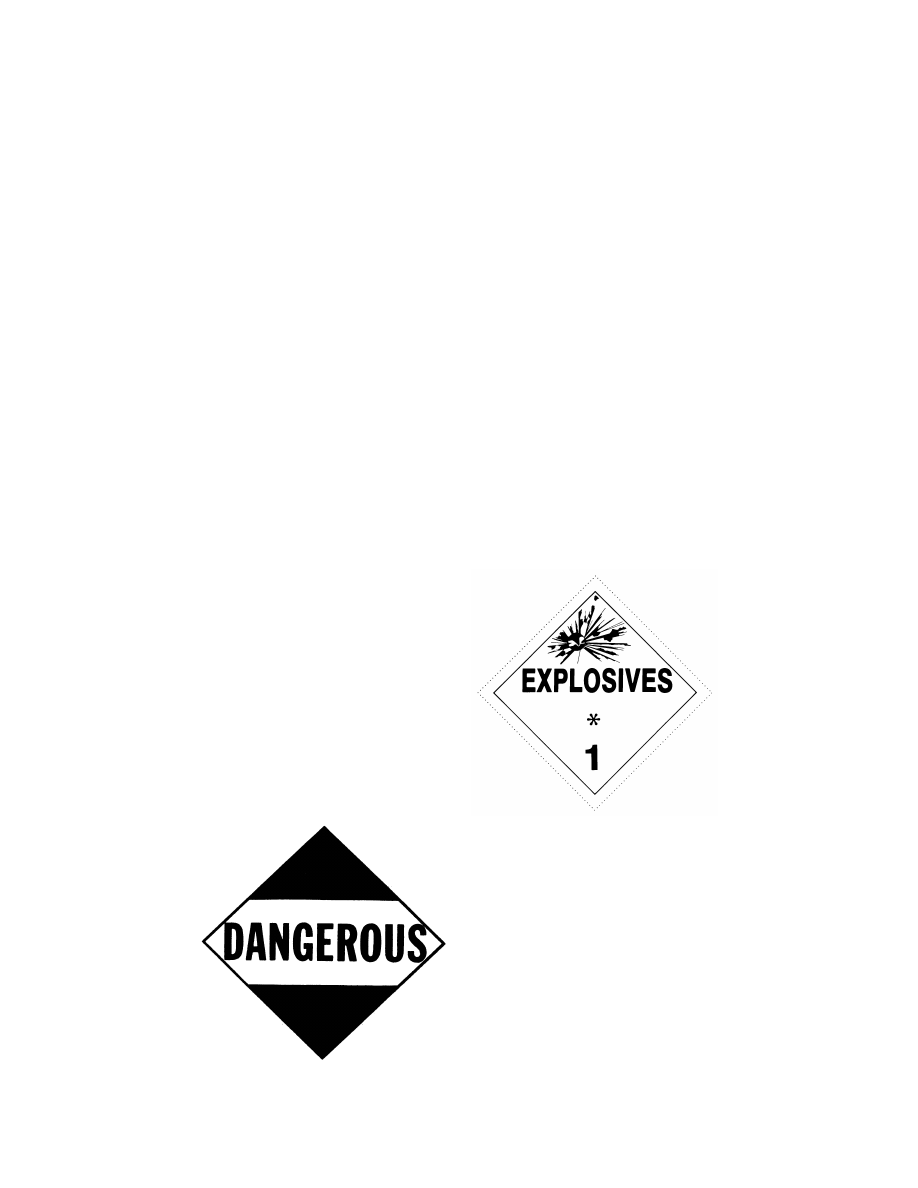
443
Pipeline and Haz. Matls. Safety Admin., DOT
§ 172.523
outside of the solid line inner border in
no larger than 10-point type.
(f)
Exceptions.
When hazardous mate-
rials are offered for transportation or
transported under the provisions of
subpart C of part 171 of this subchapter,
a placard conforming to the specifica-
tions in the UN Recommendations, the
ICAO Technical Instructions, the
IMDG Code, or the Transport Canada
TDG Regulations (IBR, see § 171.7 of
this subchapter) may be used in place
of a corresponding placard conforming
to the requirements of this subpart.
However, a bulk packaging, transport
vehicle, or freight container containing
a material poisonous by inhalation (see
§ 171.8 of this subchapter) must be plac-
arded in accordance with this subpart
(see § 171.23(b)(10) of this subchapter).
(g)
Trefoil symbol.
The trefoil symbol
on the RADIOACTIVE placard must
meet the appropriate specification in
appendix B of this part.
[Amdt. 172–123, 55 FR 52601, Dec. 21, 1990, as
amended at 56 FR 66260, Dec. 20, 1991; 57 FR
45460, Oct. 1, 1992; Amdt. 172–143, 60 FR 50305,
Sept. 28, 1995; 65 FR 50460, Aug. 18, 2000; 66 FR
33426, June 21, 2001; 66 FR 44255, Aug. 22, 2001;
67 FR 15743, Apr. 3, 2002; 70 FR 34075, June 13,
2005; 69 FR 64473, Nov. 4, 2004; 72 FR 25176,
May 3, 2007; 76 FR 43528, July 20, 2011; 76 FR
56314, Sept. 13, 2011; 80 FR 1151, Jan. 8, 2015;
83 FR 55807, Nov. 7, 2018; 87 FR 79774, Dec. 27,
2022]
§ 172.521
DANGEROUS placard.
(a) Except for size and color, the
DANGEROUS placard must be as fol-
lows:
(b) In addition to meeting the re-
quirements of § 172.519, and appendix B
to this part, the DANGEROUS placard
must have a red upper and lower tri-
angle. The placard center area and
1
⁄
2
-
inch (12.7 mm.) border must be white.
The inscription must be black with the
1
⁄
8
-inch (3.2 mm.) border marker in the
white area at each end of the inscrip-
tion red.
[Amdt. 172–29, 41 FR 15996, Apr. 15, 1976, as
amended by Amdt. 172–29A, 41 FR 40680, Sept.
20, 1976]
§ 172.522
EXPLOSIVES 1.1, EXPLO-
SIVES 1.2 and EXPLOSIVES 1.3
placards.
(a) Except for size and color, the EX-
PLOSIVES 1.1, EXPLOSIVES 1.2 and
EXPLOSIVES 1.3 placards must be as
follows:
(b) In addition to complying with
§ 172.519 of this subpart, the background
color on the EXPLOSIVES 1.1, EXPLO-
SIVES 1.2, and EXPLOSIVES 1.3 plac-
ards must be orange. The ‘‘*’’ shall be
replaced with the appropriate division
number and, when required, appro-
priate compatibility group letter. The
symbol, text, numerals and inner bor-
der must be black.
[Amdt. 172–123, 55 FR 52602, Dec. 21, 1990, as
amended at 56 FR 66260, Dec. 20, 1991]
§ 172.523
EXPLOSIVES 1.4 placard.
(a) Except for size and color, the EX-
PLOSIVES 1.4 placard must be as fol-
lows:
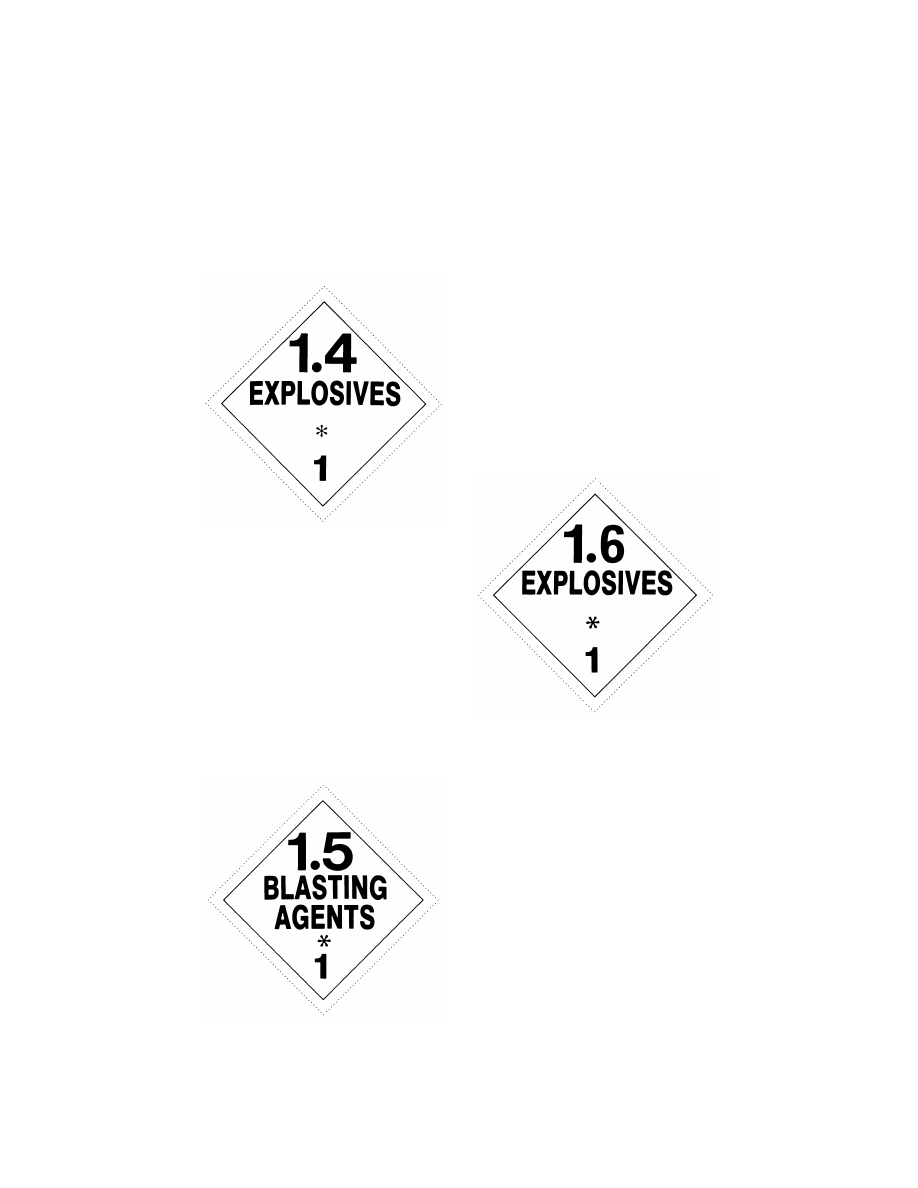
444
49 CFR Ch. I (10–1–23 Edition)
§ 172.524
(b) In addition to complying with
§ 172.519 of this subpart, the background
color on the EXPLOSIVES 1.4 placard
must be orange. The ‘‘*’’ shall be re-
placed, when required, with the appro-
priate compatibility group letter. The
division numeral, 1.4, must measure at
least 64 mm (2.5 inches) in height. The
text, numerals and inner border must
be black.
[Amdt. 172–123, 55 FR 52602, Dec. 21, 1990, as
amended at 56 FR 66261, Dec. 20, 1991]
§ 172.524
EXPLOSIVES 1.5 placard.
(a) Except for size and color, the EX-
PLOSIVES 1.5 placard must be as fol-
lows:
(b) In addition to complying with the
§ 172.519 of this subpart, the background
color on EXPLOSIVES 1.5 placard
must be orange. The ‘‘*’’ shall be re-
placed, when required, with the appro-
priate compatibility group letter. The
division numeral, 1.5, must measure at
least 64 mm (2.5 inches) in height. The
text, numerals and inner border must
be black.
[Amdt. 172–123, 55 FR 52602, Dec. 21, 1990, as
amended at 56 FR 66261, Dec. 20, 1991]
§ 172.525
EXPLOSIVES 1.6 placard.
(a) Except for size and color the EX-
PLOSIVES 1.6 placard must be as fol-
lows:
(b) In addition to complying with
§ 172.519 of this subpart, the background
color on the EXPLOSIVES 1.6 placard
must be orange. The ‘‘*’’ shall be re-
placed, when required, with the appro-
priate compatibility group letter. The
division numeral, 1.6, must measure at
least 64 mm (2.5 inches) in height. The
text, numerals and inner border must
be black.
[Amdt. 172–123, 55 FR 52603, Dec. 21, 1990, as
amended at 56 FR 66261, Dec. 20, 1991; Amdt.
172–130, 58 FR 51531, Oct. 1, 1993]
§ 172.526
[Reserved]
§ 172.527
Background requirements for
certain placards.
(a) Except for size and color, the
square background required by
§ 172.510(a) for certain placards on rail
cars, and § 172.507 for placards on motor
vehicles containing a package of high-
way route controlled quantity radio-
active materials, must be as follows:
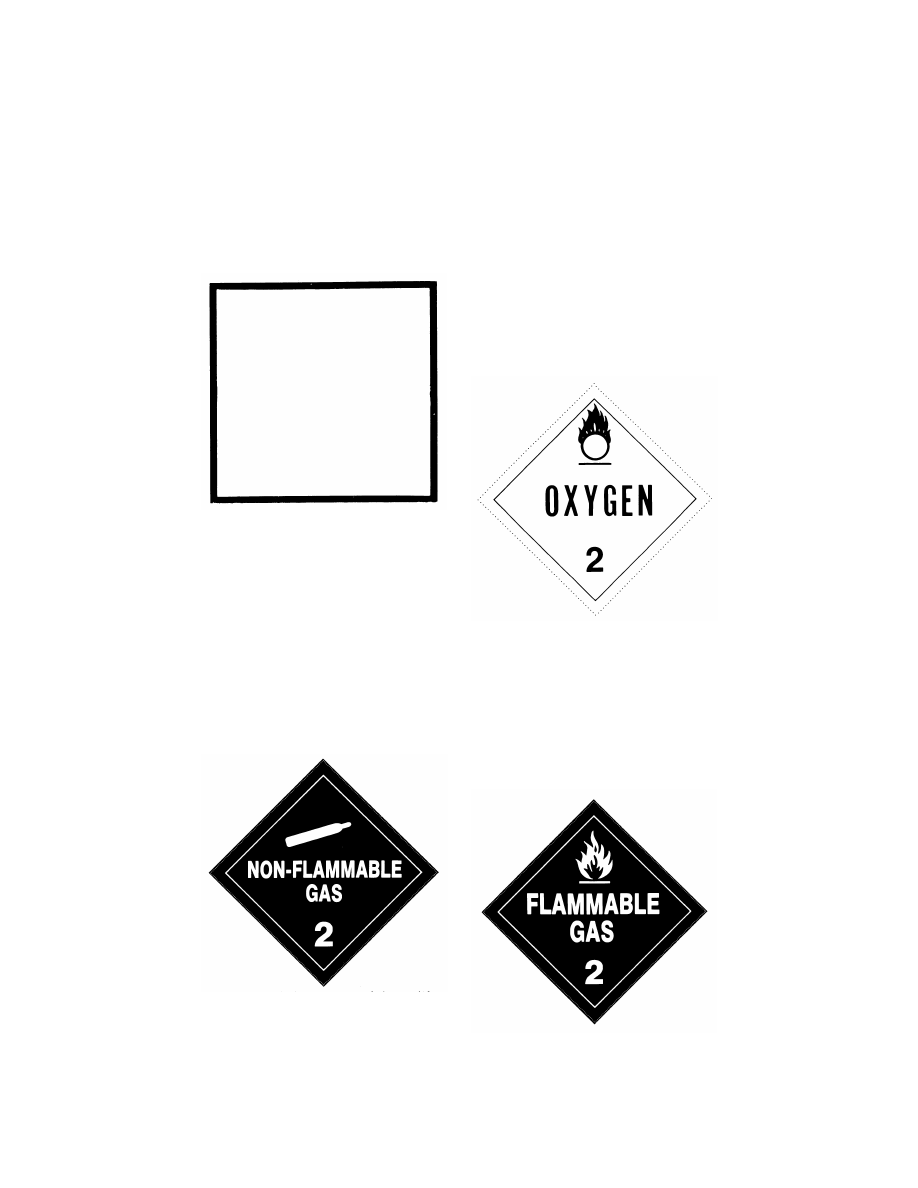
445
Pipeline and Haz. Matls. Safety Admin., DOT
§ 172.532
(b) In addition to meeting the re-
quirements of § 172.519 for minimum du-
rability and strength, the square back-
ground must consist of a white square
measuring 14
1
⁄
4
inches (362.0 mm.) on
each side surrounded by a black border
extending to 15
1
⁄
4
inches (387.0 mm.) on
each side.
[Amdt. 172–29, 41 FR 15996, Apr. 15, 1976, as
amended by Amdt. 172–64, 46 FR 5316, Jan. 19,
1981; Amdt. 172–78, 48 FR 10226, Mar. 10, 1983]
§ 172.528
NON-FLAMMABLE GAS
placard.
(a) Except for size and color, the
NON-FLAMMABLE GAS placard must
be as follows:
(b) In addition to complying with
§ 172.519, the background color on the
NON-FLAMMABLE GAS placard must
be green. The letters in both words
must be at least 38 mm (1.5 inches)
high. The symbol, text, class number
and inner border must be white.
[Amdt. 172–123, 56 FR 66261, Dec. 20, 1991]
§ 172.530
OXYGEN placard.
(a) Except for size and color, the OX-
YGEN placard must be as follows:
(b) In addition to complying with
§ 172.519 of this subpart, the background
color on the OXYGEN placard must be
yellow. The symbol, text, class number
and inner border must be black.
[Amdt. 172–123, 56 FR 66262, Dec. 20, 1991]
§ 172.532
FLAMMABLE GAS placard.
(a) Except for size and color, the
FLAMMABLE GAS placard must be as
follows:
(b) In addition to complying with
§ 172.519, the background color on the
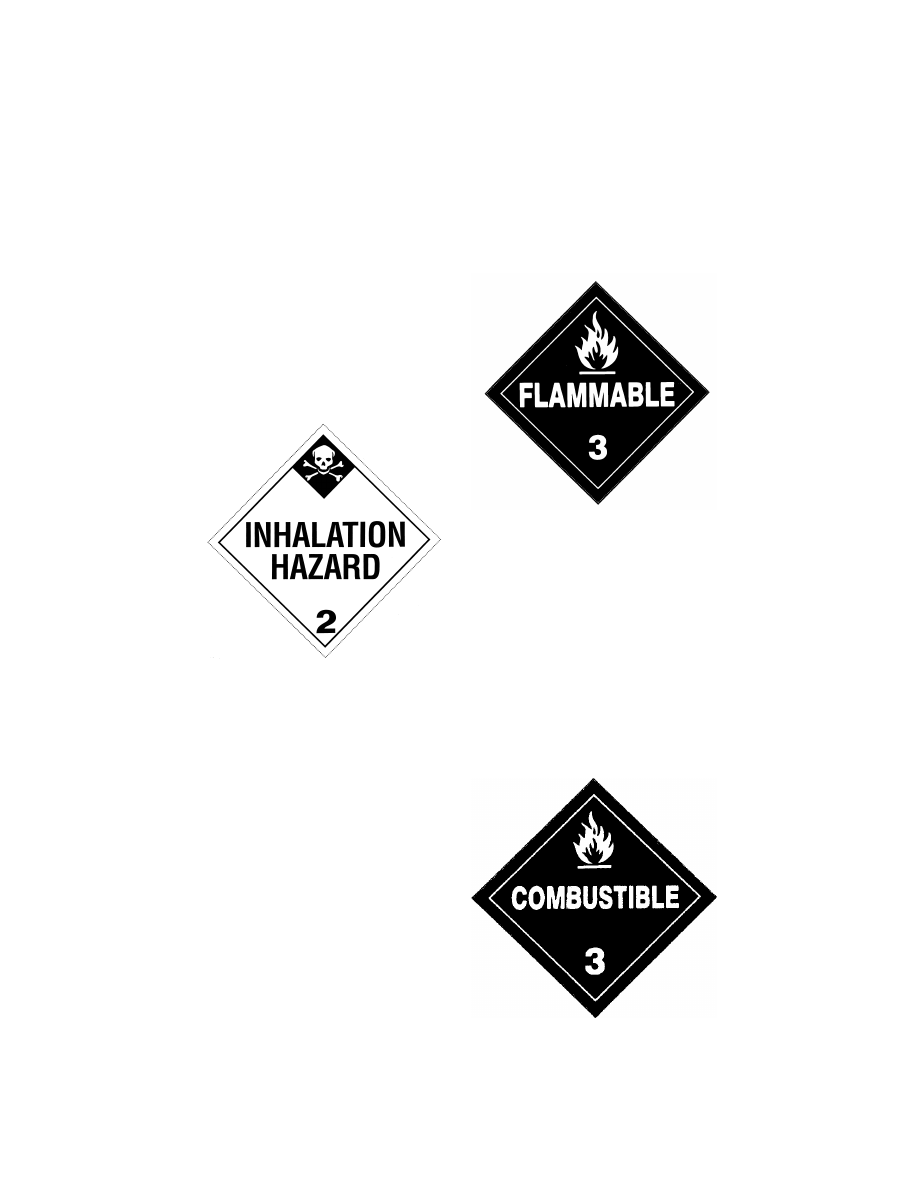
446
49 CFR Ch. I (10–1–23 Edition)
§ 172.536
FLAMMABLE GAS placard must be
red. The symbol, text, class number
and inner border must be white.
[Amdt. 172–123, 56 FR 66262, Dec. 20, 1991]
§ 172.536
[Reserved]
§ 172.540
POISON GAS placard.
(a) Except for size and color, the POI-
SON GAS placard must be as follows:
(b) In addition to complying with
§ 172.519, the background on the POI-
SON GAS placard and the symbol must
be white. The background of the upper
diamond must be black and the lower
point of the upper diamond must be 65
mm (2
5
⁄
8
inches) above the horizontal
center line. The text, class number,
and inner border must be black.
[62 FR 39408, July 22, 1997]
§ 172.542
FLAMMABLE placard.
(a) Except for size and color, the
FLAMMABLE placard must be as fol-
lows:
(b) In addition to complying with
§ 172.519, the background color on the
FLAMMABLE placard must be red.
The symbol, text, class number and
inner border must be white.
(c) The word ‘‘GASOLINE’’ may be
used in place of the word ‘‘FLAM-
MABLE’’ on a placard that is displayed
on a cargo tank or a portable tank
being used to transport gasoline by
highway. The word ‘‘GASOLINE’’ must
be shown in white.
[Amdt. 172–123, 56 FR 66262, Dec. 20, 1991]
§ 172.544
COMBUSTIBLE placard.
(a) Except for size and color, the
COMBUSTIBLE placard must be as fol-
lows:
(b) In addition to complying with
§ 172.519, the background color on the
COMBUSTIBLE placard must be red.
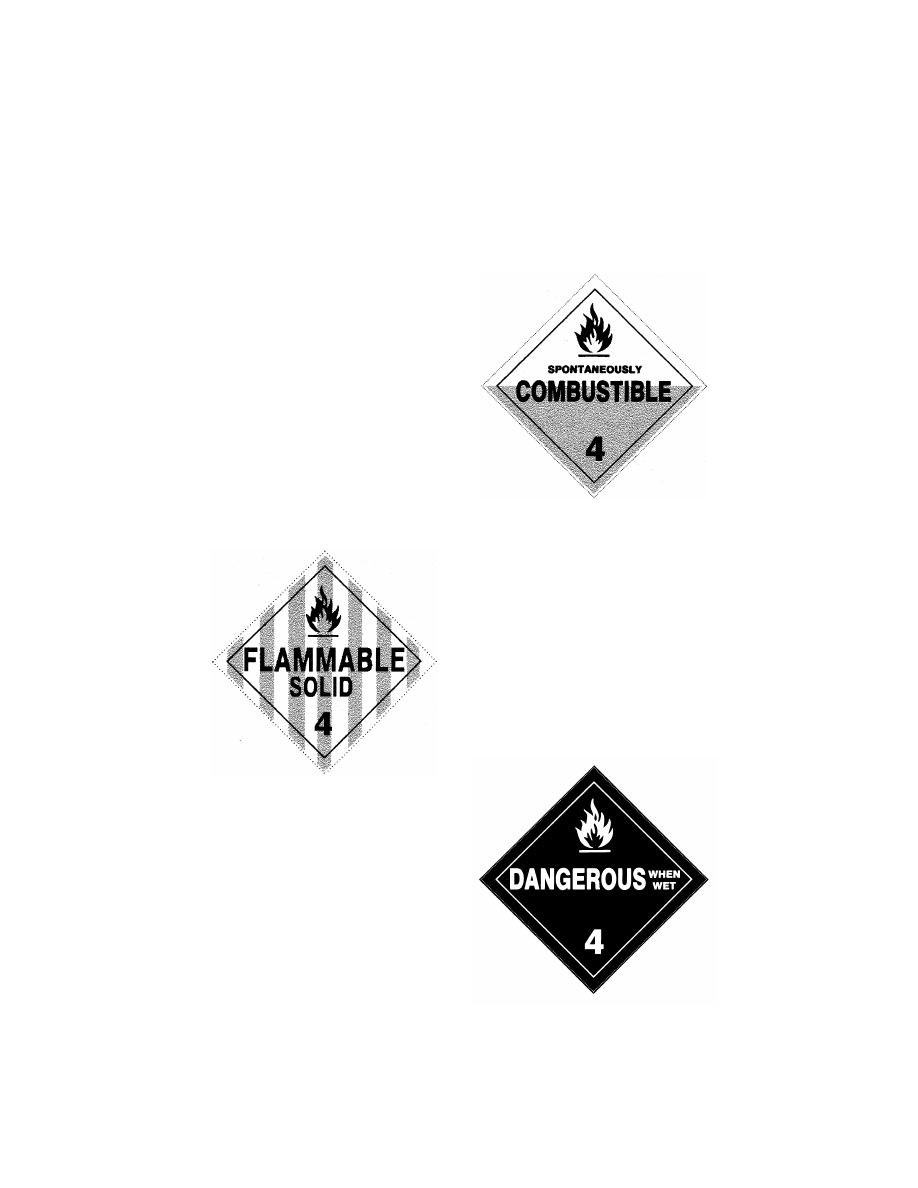
447
Pipeline and Haz. Matls. Safety Admin., DOT
§ 172.548
The symbol, text, class number and
inner border must be white. On a COM-
BUSTIBLE placard with a white bot-
tom as prescribed by § 172.332(c)(4), the
class number must be red or black.
(c) The words ‘‘FUEL OIL’’ may be
used in place of the word ‘‘COMBUS-
TIBLE’’ on a placard that is displayed
on a cargo tank or portable tank being
used to transport by highway fuel oil
that is not classed as a flammable liq-
uid. The words ‘‘FUEL OIL’’ must be
white.
[Amdt. 172–123, 56 FR 66262, Dec. 20, 1991]
§ 172.546
FLAMMABLE SOLID placard.
(a) Except for size and color, the
FLAMMABLE SOLID placard must be
as follows:
(b) In addition to complying with
§ 172.519, the background on the FLAM-
MABLE SOLID placard must be white
with seven vertical red stripes. The
stripes must be equally spaced, with
one red stripe placed in the center of
the label. Each red stripe and each
white space between two red stripes
must be 25 mm (1.0 inches) wide. The
letters in the word ‘‘SOLID’’ must be
at least 38.1 mm (1.5 inches) high. The
symbol, text, class number and inner
border must be black.
[Amdt. 172–123, 56 FR 66263, Dec. 20, 1991]
§ 172.547
SPONTANEOUSLY COMBUS-
TIBLE placard.
(a) Except for size and color, the
SPONTANEOUSLY COMBUSTIBLE
placard must be as follows:
(b) In addition to complying with
§ 172.519, the background color on the
SPONTANEOUSLY COMBUSTIBLE
placard must be red in the lower half
and white in upper half. The letters in
the word ‘‘SPONTANEOUSLY’’ must
be at least 12 mm (0.5 inch) high. The
symbol, text, class number and inner
border must be black.
[Amdt. 172–123, 56 FR 66263, Dec. 20, 1991, as
amended by Amdt. 172–139, 59 FR 67490, Dec.
29, 1994]
§ 172.548
DANGEROUS WHEN WET
placard.
(a) Except for size and color, the
DANGEROUS WHEN WET placard
must be as follows:
(b) In addition to complying with
§ 172.519, the background color on the
DANGEROUS WHEN WET placard
must be blue. The letters in the words
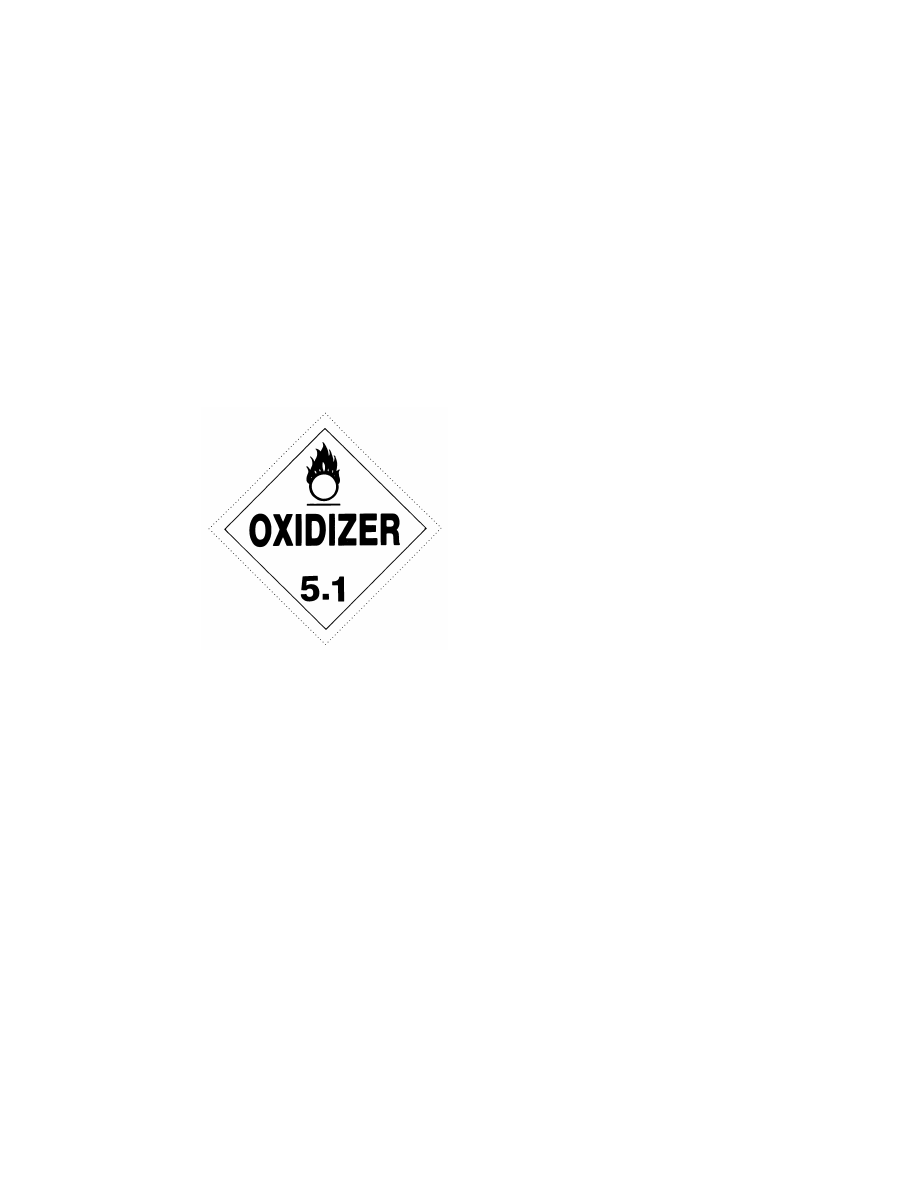
448
49 CFR Ch. I (10–1–23 Edition)
§ 172.550
‘‘WHEN WET’’ must be at least 25 mm
(1.0 inches) high. The symbol, text,
class number and inner border must be
white.
[Amdt. 172–123, 56 FR 66263, Dec. 20, 1991]
§ 172.550
OXIDIZER placard.
(a) Except for size and color, the OXI-
DIZER placard must be as follows:
(b) In addition to complying with
§ 172.519, the background color on the
OXIDIZER placard must be yellow. The
symbol, text, division number and
inner border must be black.
[Amdt. 172–123, 56 FR 66263, Dec. 20, 1991]
§ 172.552
ORGANIC PEROXIDE
placard.
(a) Except for size and color, the OR-
GANIC PEROXIDE placard must be as
follows:
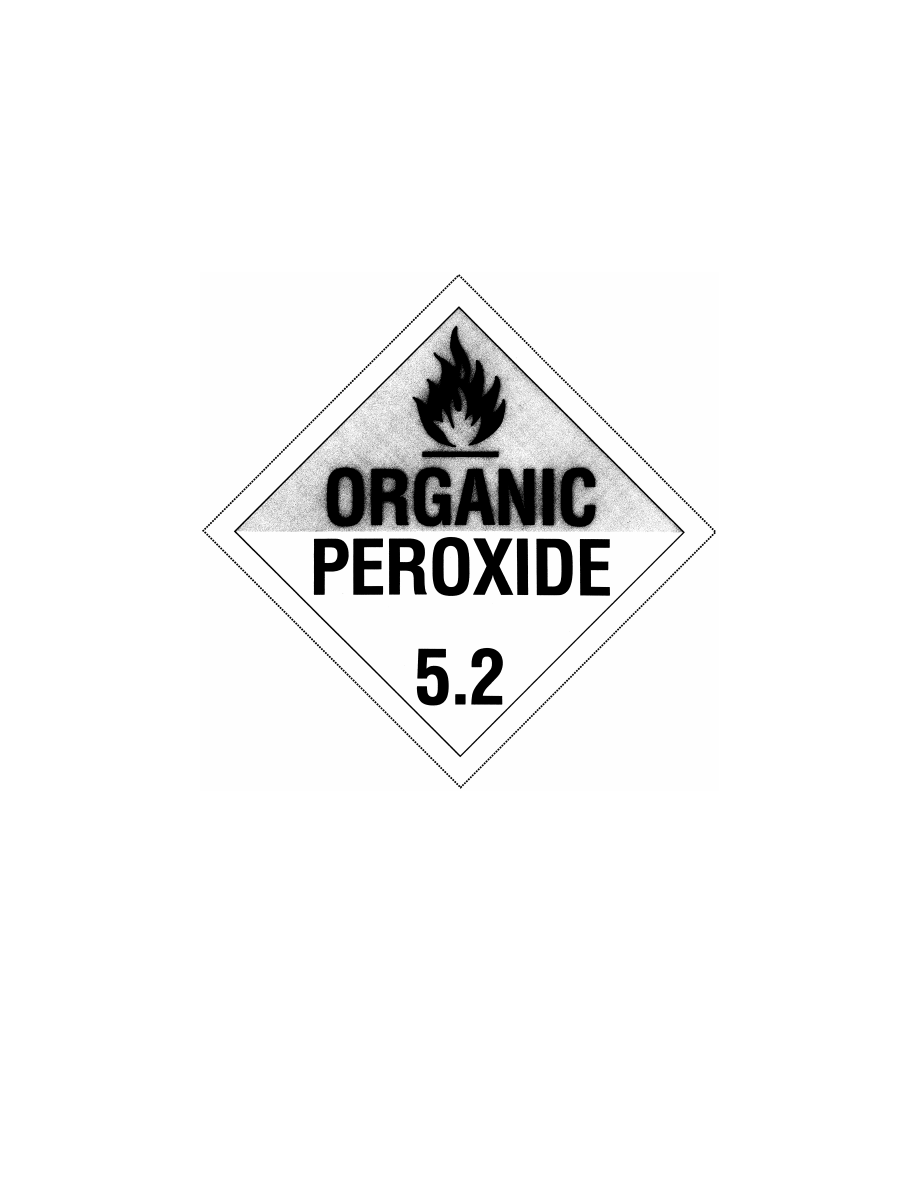
449
Pipeline and Haz. Matls. Safety Admin., DOT
§ 172.554
(b) In addition to complying with
§ 172.519, the background on the OR-
GANIC PEROXIDE placard must be red
in the top half and yellow in the lower
half. The text, division number and
inner border must be black; the symbol
may be either black or white.
(c) For transportation by highway, a
Division 5.2 placard conforming to the
specifications in this section in effect
on December 31, 2006 may continue to
be used until January 1, 2014.
[71 FR 78628, Dec. 29, 2006, as amended at 76
FR 43528, July 20, 2011]
§ 172.553
[Reserved]
§ 172.554
POISON placard.
(a) Except for size and color, the POI-
SON placard must be as follows:
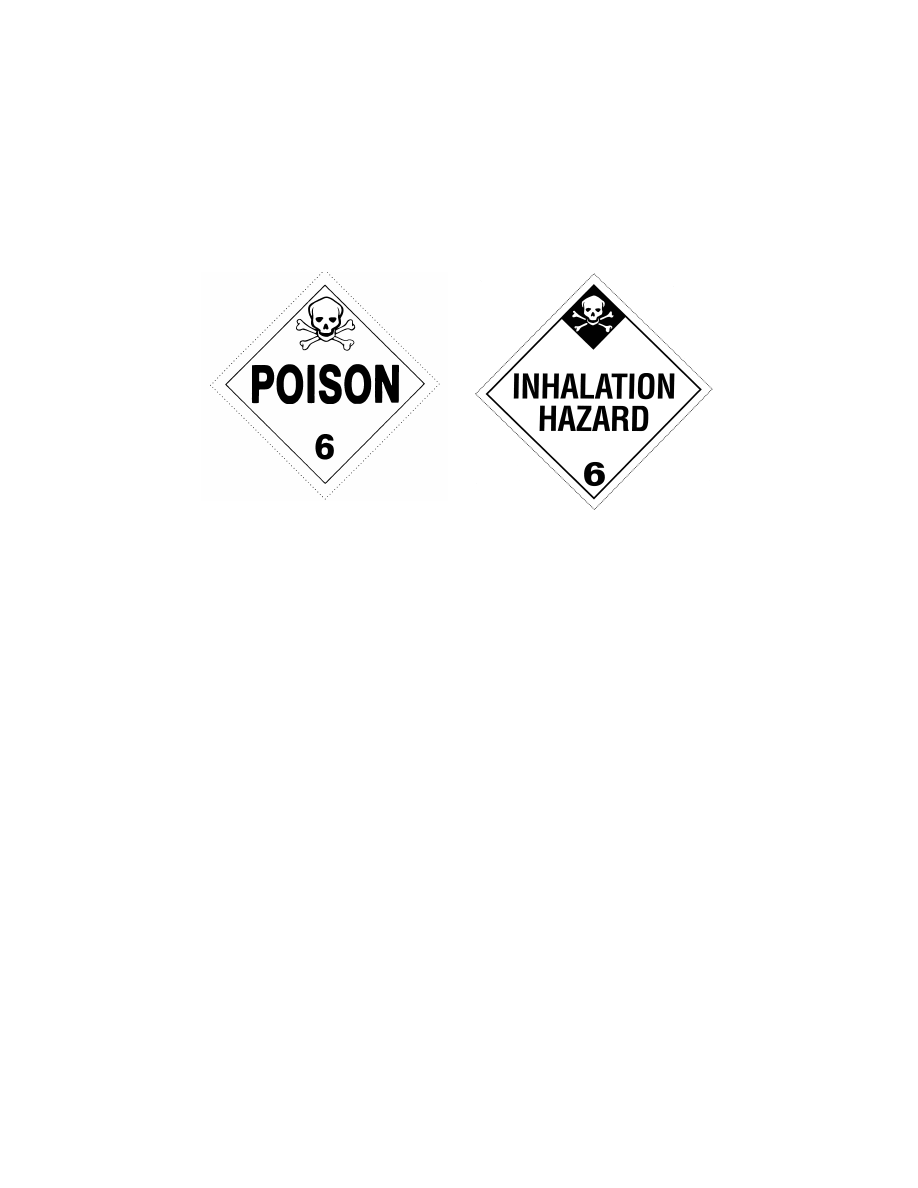
450
49 CFR Ch. I (10–1–23 Edition)
§ 172.555
(b) In addition to complying with
§ 172.519, the background on the POI-
SON placard must be white. The sym-
bol, text, class number and inner bor-
der must be black. The word ‘‘TOXIC’’
may be used in lieu of the word ‘‘POI-
SON’’.
[Amdt. 172–123, 56 FR 66264, Dec. 20, 1991, as
amended by Amdt. 172–139, 59 FR 67490, Dec.
29, 1994]
§ 172.555
POISON INHALATION HAZ-
ARD placard.
(a) Except for size and color, the POI-
SON INHALATION HAZARD placard
must be as follows:
(b) In addition to complying with
§ 172.519, the background on the POI-
SON INHALATION HAZARD placard
and the symbol must be white. The
background of the upper diamond must
be black and the lower point of the
upper diamond must be 65 mm (2
5
⁄
8
inches) above the horizontal center
line. The text, class number, and inner
border must be black.
[62 FR 39409, July 22, 1997]
§ 172.556
RADIOACTIVE placard.
(a) Except for size and color, the RA-
DIOACTIVE placard must be as fol-
lows:
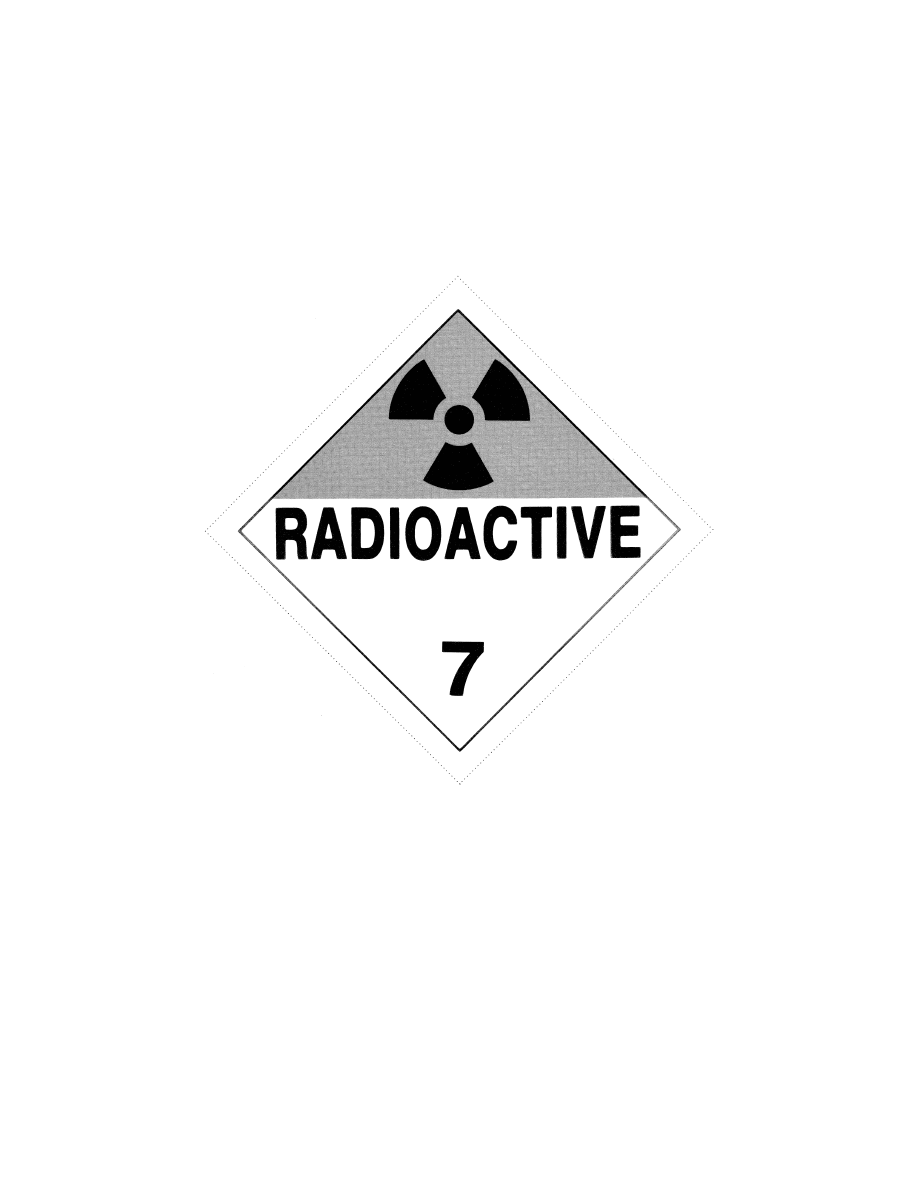
451
Pipeline and Haz. Matls. Safety Admin., DOT
§ 172.558
(b) In addition to complying with
§ 172.519, the background color on the
RADIOACTIVE placard must be white
in the lower portion with a yellow tri-
angle in the upper portion. The base of
the yellow triangle must be 29 mm
±
5
mm (1.1 inches
±
0.2 inches) above the
placard horizontal center line. The
symbol, text, class number and inner
border must be black.
[Amdt. 172–123, 56 FR 66264, Dec. 20, 1991;
Amdt. 172–130, 58 FR 51531, Oct. 1, 1993; 65 FR
58627, Sept. 29, 2000]
§ 172.558
CORROSIVE placard.
(a) Except for size and color, the
CORROSIVE placard must be as fol-
lows:
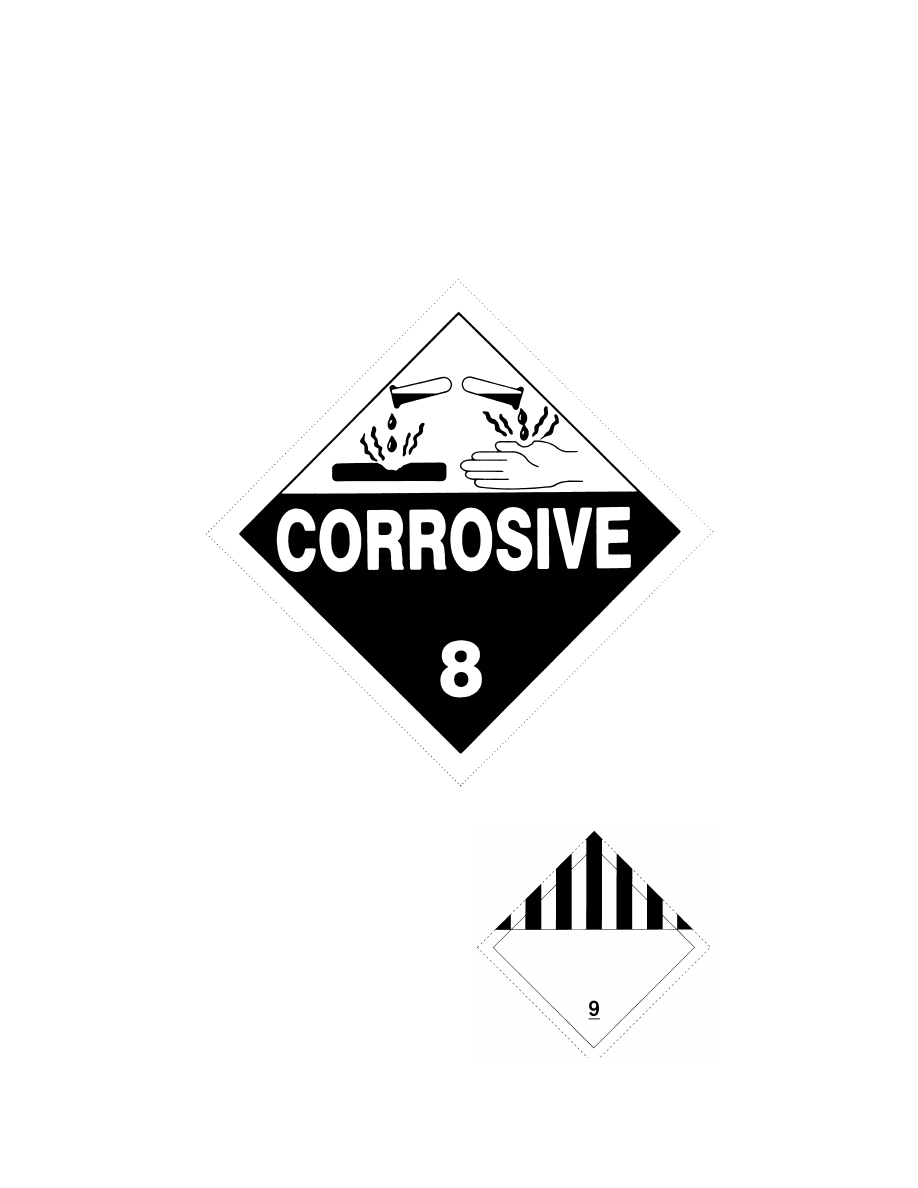
452
49 CFR Ch. I (10–1–23 Edition)
§ 172.560
(b) In addition to complying with
§ 172.519, the background color on the
CORROSIVE placard must be black in
the lower portion with a white triangle
in the upper portion. The base of the
white triangle must be 38 mm
±
5 mm
(1.5 inches
±
0.2 inches) above the
placard horizontal center line. The text
and class number must be white. The
symbol and inner border must be black.
[Amdt. 172–123, 56 FR 66264, Dec. 20, 1991, as
amended at 65 FR 58627, Sept. 29, 2000]
§ 172.560
CLASS 9 placard.
(a) Except for size and color the
CLASS 9 (miscellaneous hazardous ma-
terials) placard must be as follows:

453
Pipeline and Haz. Matls. Safety Admin., DOT
§ 172.602
(b) In addition to conformance with
§ 172.519, the background on the CLASS
9 placard must be white with seven
black vertical stripes on the top half
extending from the top of the placard
to one inch above the horizontal cen-
terline. The black vertical stripes must
be spaced so that, visually, they appear
equal in width to the six white spaces
between them. The space below the
vertical lines must be white with the
class number 9 underlined and centered
at the bottom.
[Amdt. 172–123, 56 FR 66264, Dec. 20, 1991, as
amended at 57 FR 45460, Oct. 1, 1992]
Subpart G—Emergency Response
Information
§ 172.600
Applicability and general re-
quirements.
(a)
Scope.
Except as provided in para-
graph (d) of this section, this subpart
prescribes requirements for providing
and maintaining emergency response
information during transportation and
at facilities where hazardous materials
are loaded for transportation, stored
incidental to transportation or other-
wise handled during any phase of trans-
portation.
(b)
Applicability.
This subpart applies
to persons who offer for transportation,
accept for transportation, transfer or
otherwise handle hazardous materials
during transportation.
(c)
General requirements.
No person to
whom this subpart applies may offer
for transportation, accept for transpor-
tation, transfer, store or otherwise
handle during transportation a haz-
ardous material unless:
(1) Emergency response information
conforming to this subpart is imme-
diately available for use at all times
the hazardous material is present; and
(2) Emergency response information,
including the emergency response tele-
phone number, required by this subpart
is immediately available to any person
who, as a representative of a Federal,
State or local government agency, re-
sponds to an incident involving a haz-
ardous material, or is conducting an
investigation which involves a haz-
ardous material.
(d)
Exceptions.
The requirements of
this subpart do not apply to hazardous
material which is excepted from the
shipping paper requirements of this
subchapter.
[Amdt. 172–116, 54 FR 27145, June 27, 1989; 54
FR 28750, July 5, 1989, as amended at 55 FR
33712, Aug. 17, 1990; Amdt. 172–127, 59 FR
49133, Sept. 26, 1994; Amdt. 172–149, 61 FR
27173, May 30, 1996; 87 FR 79774, Dec. 27, 2022]
§ 172.602
Emergency response infor-
mation.
(a)
Information required.
For purposes
of this subpart, the term ‘‘emergency
response information’’ means informa-
tion that can be used in the mitigation
of an incident involving hazardous ma-
terials and, as a minimum, must con-
tain the following information:
(1) The basic description and tech-
nical name of the hazardous material
as required by §§ 172.202 and 172.203(k),
the ICAO Technical Instructions, the
IMDG Code, or the TDG Regulations,
as appropriate (IBR, see § 171.7 of this
subchapter);
(2) Immediate hazards to health;
(3) Risks of fire or explosion;
(4) Immediate precautions to be
taken in the event of an accident or in-
cident;
(5) Immediate methods for handling
fires;
(6) Initial methods for handling spills
or leaks in the absence of fire; and
(7) Preliminary first aid measures.
(b)
Form of information.
The informa-
tion required for a hazardous material
by paragraph (a) of this section must
be:
(1) Printed legibly in English;
(2) Available for use away from the
package containing the hazardous ma-
terial; and
(3) Presented—
(i) On a shipping paper;
(ii) In a document, other than a ship-
ping paper, that includes both the basic
description and technical name of the
hazardous material as required by
§§ 172.202 and 172.203(k), the ICAO Tech-
nical Instructions, the IMDG Code, or
the TDG Regulations, as appropriate,
and the emergency response informa-
tion required by this subpart (e.g., a
material safety data sheet); or
(iii) Related to the information on a
shipping paper, a written notification
to pilot-in-command, or a dangerous
cargo manifest, in a separate document
(e.g., an emergency response guidance

454
49 CFR Ch. I (10–1–23 Edition)
§ 172.604
document), in a manner that cross-ref-
erences the description of the haz-
ardous material on the shipping paper
with the emergency response informa-
tion contained in the document.
Aboard aircraft, the ICAO ‘‘Emergency
Response Guidance for Aircraft Inci-
dents Involving Dangerous Goods’’ and,
aboard vessels, the IMO ‘‘Emergency
Procedures for Ships Carrying Dan-
gerous Goods’’, or equivalent docu-
ments, may be used to satisfy the re-
quirements of this section for a sepa-
rate document.
(c)
Maintenance of information.
Emer-
gency response information shall be
maintained as follows:
(1)
Carriers.
Each carrier who trans-
ports a hazardous material shall main-
tain the information specified in para-
graph (a) of this section and § 172.606 of
this part in the same manner as pre-
scribed for shipping papers, except that
the information must be maintained in
the same manner aboard aircraft as the
notification of pilot-in-command, and
aboard vessels in the same manner as
the dangerous cargo manifest. This in-
formation must be immediately acces-
sible to train crew personnel, drivers of
motor vehicles, flight crew members,
and bridge personnel on vessels for use
in the event of incidents involving haz-
ardous materials.
(2)
Facility operators.
Each operator of
a facility where a hazardous material
is received, stored or handled during
transportation, shall maintain the in-
formation required by paragraph (a) of
this section whenever the hazardous
material is present. This information
must be in a location that is imme-
diately accessible to facility personnel
in the event of an incident involving
the hazardous material.
[Amdt. 172–116, 54 FR 27146, June 27, 1989; 54
FR 28750, July 5, 1989, as amended by Amdt.
172–116, 55 FR 875, Jan. 10, 1990; Amdt. 172–151,
62 FR 1234, Jan. 8, 1997; 66 FR 45379, Aug. 28,
2001; 68 FR 75741, Dec. 31, 2003]
§ 172.604
Emergency response tele-
phone number.
(a) A person who offers a hazardous
material for transportation must pro-
vide a numeric emergency response
telephone number, including the area
code, for use in an emergency involving
the hazardous material. For telephone
numbers outside the United States, the
international access code or the ‘‘+’’
(plus) sign, country code, and city
code, as appropriate, that are needed to
complete the call must be included.
The telephone number must be—
(1) Monitored at all times the haz-
ardous material is in transportation,
including storage incidental to trans-
portation;
(2) The telephone number of a person
who is either knowledgeable of the haz-
ardous material being shipped and has
comprehensive emergency response and
incident mitigation information for
that material, or has immediate access
to a person who possesses such knowl-
edge and information. A telephone
number that requires a call back (such
as an answering service, answering ma-
chine, or beeper device) does not meet
the requirements of paragraph (a) of
this section; and
(3) Entered on a shipping paper, as
follows:
(i) Immediately following the de-
scription of the hazardous material re-
quired by subpart C of this part; or
(ii) Entered once on the shipping
paper in the manner prescribed in para-
graph (b) of this section in a promi-
nent, readily identifiable, and clearly
visible manner that allows the infor-
mation to be easily and quickly found,
such as by highlighting, use of a larger
font or a font that is a different color
from other text and information, or
otherwise setting the information
apart to provide for quick and easy rec-
ognition. The offeror may use one of
the methods prescribed in this para-
graph only if the telephone number ap-
plies to each hazardous material en-
tered on the shipping paper, and if it is
indicated that the telephone number is
for emergency response information
(for example: ‘‘EMERGENCY CON-
TACT: * * *’’).
(b) The telephone number required by
paragraph (a) of this section must be –
(1) The number of the person offering
the hazardous material for transpor-
tation when that person is also the
emergency response information pro-
vider (ERI provider). The name of the
person, or contract number or other
unique identifier assigned by an ERI
provider, identified with the emer-
gency response telephone number must

455
Pipeline and Haz. Matls. Safety Admin., DOT
§ 172.606
be entered on the shipping paper imme-
diately before, after, above, or below
the emergency response telephone
number unless the name is entered
elsewhere on the shipping paper in a
prominent, readily identifiable, and
clearly visible manner that allows the
information to be easily and quickly
found; or
(2) The number of an agency or orga-
nization capable of, and accepting re-
sponsibility for, providing the detailed
information required by paragraph
(a)(2) of this section. The person who is
registered with the ERI provider must
ensure that the agency or organization
has received current information on
the material before it is offered for
transportation. The person who is reg-
istered with the ERI provider must be
identified by name, or contract number
or other unique identifier assigned by
the ERI provider, on the shipping paper
immediately before, after, above, or
below the emergency response tele-
phone number in a prominent, readily
identifiable, and clearly visible manner
that allows the information to be eas-
ily and quickly found, unless the name
or identifier is entered elsewhere in a
prominent manner as provided in para-
graph (b)(1) of this section.
(c) A person preparing shipping pa-
pers for continued transportation in
commerce must include the informa-
tion required by this section. If the
person preparing shipping papers for
continued transportation in commerce
elects to assume responsibility for pro-
viding the emergency response tele-
phone number required by this section,
the person must ensure that all the re-
quirements of this section are met.
(d) The requirements of this section
do not apply to—
(1) Hazardous materials that are of-
fered for transportation under the pro-
visions applicable to limited quantities
or excepted quantities; or
(2) Materials properly described
under the following shipping names:
(i) Battery powered equipment.
(ii) Battery powered vehicle.
(iii) Carbon dioxide, solid.
(iv) Castor bean.
(v) Castor flake.
(vi) Castor meal.
(vii) Castor pomace.
(viii) Consumer commodity.
(ix) Dry ice.
(x) Engine, fuel cell, flammable gas
powered.
(xi) Engine, fuel cell, flammable liq-
uid powered.
(xii) Engine, internal combustion.
(xiii) Engine, internal combustion,
flammable gas powered.
(xiv) Engine, internal combustion,
flammable liquid powered.
(xv) Fish meal, stabilized.
(xvi) Fish scrap, stabilized.
(xvii) Krill Meal, PG III.
(xviii) Machinery, internal combus-
tion.
(xix) Machinery, fuel cell, flammable
gas powered.
(xx) Machinery, fuel cell, flammable
liquid powered.
(xxi) Machinery, internal combus-
tion, flammable gas powered.
(xxii) Machinery, internal combus-
tion, flammable liquid powered.
(xxiii) Refrigerating machine.
(xxiv) Vehicle, flammable gas pow-
ered.
(xxv) Vehicle, flammable liquid pow-
ered.
(xxvi) Wheelchair, electric.
(3) Transportation vehicles or freight
containers containing lading that has
been fumigated and displaying the FU-
MIGANT marking (see § 172.302(g)) as
required by § 173.9 of this subchapter,
unless other hazardous materials are
present in the cargo transport unit.
[74 FR 53422, Oct. 19, 2009, as amended at 75
FR 53596, Sept. 1, 2010; 77 FR 37984, June 25,
2012; 78 FR 1073, Jan. 7, 2013; 78 FR 60753, Oct.
1, 2013; 81 FR 35541, June 2, 2016; 83 FR 55807,
Nov. 7, 2018; 85 FR 27878, May 11, 2020]
§ 172.606
Carrier information contact.
(a) Each carrier who transports or ac-
cepts for transportation a hazardous
material for which a shipping paper is
required shall instruct the operator of
a motor vehicle, train, aircraft, or ves-
sel to contact the carrier (e.g., by tele-
phone or mobile radio) in the event of
an incident involving the hazardous
material.
(b) For transportation by highway, if
a transport vehicle, (e.g., a semi-trailer
or freight container-on-chassis) con-
tains hazardous material for which a
shipping paper is required and the vehi-
cle is separated from its motive power
and parked at a location other than a

456
49 CFR Ch. I (10–1–23 Edition)
§ 172.700
facility operated by the consignor or
consignee or a facility (e.g., a carrier’s
terminal or a marine terminal) subject
to the provisions of § 172.602(c)(2), the
carrier shall—
(1) Mark the transport vehicle with
the telephone number of the motor car-
rier on the front exterior near the
brake hose and electrical connections
or on a label, tag, or sign attached to
the vehicle at the brake hose or elec-
trical connection; or
(2) Have the shipping paper and emer-
gency response information readily
available on the transport vehicle.
(c) The requirements specified in
paragraph (b) of this section do not
apply to an unattended motor vehicle
separated from its motive power when
the motor vehicle is marked on an or-
ange panel, a placard, or a plain white
square-on-point configuration with the
identification number of each haz-
ardous material loaded therein, and the
marking or placard is visible on the
outside of the motor vehicle.
[Amdt. 172–151, 62 FR 1234, Jan. 8, 1997, as
amended at 62 FR 39398, 39409, July 22, 1997;
63 FR 16076, Apr. 1, 1998]
Subpart H—Training
S
OURCE
: Amdt. 172–126, 57 FR 20952, May 15,
1992, unless otherwise noted.
§ 172.700
Purpose and scope.
(a)
Purpose.
This subpart prescribes
requirements for training hazmat em-
ployees.
(b)
Scope.
Training as used in this
subpart means a systematic program
that ensures a hazmat employee has fa-
miliarity with the general provisions of
this subchapter, is able to recognize
and identify hazardous materials, has
knowledge of specific requirements of
this subchapter applicable to functions
performed by the employee, and has
knowledge of emergency response in-
formation, self-protection measures
and accident prevention methods and
procedures (see § 172.704).
(c)
Modal-specific training require-
ments.
Additional training require-
ments for the individual modes of
transportation are prescribed in parts
174, 175, 176, and 177 of this subchapter.
§ 172.701
Federal-State relationship.
This subpart and the parts referenced
in § 172.700(c) prescribe minimum train-
ing requirements for the transpor-
tation of hazardous materials. For
motor vehicle drivers, however, a State
may impose more stringent training
requirements only if those require-
ments—
(a) Do not conflict with the training
requirements in this subpart and in
part 177 of this subchapter; and
(b) Apply only to drivers domiciled in
that State.
§ 172.702
Applicability and responsi-
bility for training and testing.
(a) A hazmat employer shall ensure
that each of its hazmat employees is
trained in accordance with the require-
ments prescribed in this subpart.
(b) Except as provided in
§ 172.704(c)(1), a hazmat employee who
performs any function subject to the
requirements of this subchapter may
not perform that function unless in-
structed in the requirements of this
subchapter that apply to that function.
It is the duty of each hazmat employer
to comply with the applicable require-
ments of this subchapter and to thor-
oughly instruct each hazmat employee
in relation thereto.
(c) Training may be provided by the
hazmat employer or other public or
private sources.
(d) A hazmat employer shall ensure
that each of its hazmat employees is
tested by appropriate means on the
training subjects covered in § 172.704.
[Amdt. 172–126, 57 FR 20952, May 15, 1992; 57
FR 22182, May 27, 1992, as amended by Amdt.
172–149, 61 FR 27173, May 30, 1996]
§ 172.704
Training requirements.
(a) Hazmat employee training must
include the following:
(1)
General awareness/familiarization
training.
Each hazmat employee shall
be provided general awareness/famil-
iarization training designed to provide
familiarity with the requirements of
this subchapter, and to enable the em-
ployee to recognize and identify haz-
ardous materials consistent with the
hazard communication standards of
this subchapter.

457
Pipeline and Haz. Matls. Safety Admin., DOT
§ 172.704
(2)
Function-specific training.
(i) Each
hazmat employee must be provided
function-specific training concerning
requirements of this subchapter, or ex-
emptions or special permits issued
under subchapter A of this chapter,
that are specifically applicable to the
functions the employee performs.
(ii) As an alternative to function-spe-
cific training on the requirements of
this subchapter, training relating to
the requirements of the ICAO Tech-
nical Instructions and the IMDG Code
may be provided to the extent such
training addresses functions authorized
by subpart C of part 171 of this sub-
chapter.
(3)
Safety training.
Each hazmat em-
ployee shall receive safety training
concerning—
(i) Emergency response information
required by subpart G of part 172;
(ii) Measures to protect the employee
from the hazards associated with haz-
ardous materials to which they may be
exposed in the work place, including
specific measures the hazmat employer
has implemented to protect employees
from exposure; and
(iii) Methods and procedures for
avoiding accidents, such as the proper
procedures for handling packages con-
taining hazardous materials.
(4)
Security awareness training.
Each
hazmat employee must receive train-
ing that provides an awareness of secu-
rity risks associated with hazardous
materials transportation and methods
designed to enhance transportation se-
curity. This training must also include
a component covering how to recognize
and respond to possible security
threats. New hazmat employees must
receive the security awareness training
required by this paragraph within 90
days after employment.
(5)
In-depth security training.
Each
hazmat employee of a person required
to have a security plan in accordance
with subpart I of this part who handles
hazardous materials covered by the
plan, performs a regulated function re-
lated to the hazardous materials cov-
ered by the plan, or is responsible for
implementing the plan must be trained
concerning the security plan and its
implementation. Security training
must include company security objec-
tives, organizational security struc-
ture, specific security procedures, spe-
cific security duties and responsibil-
ities for each employee, and specific
actions to be taken by each employee
in the event of a security breach.
(b)
OSHA, EPA, and other training.
Training conducted by employers to
comply with the hazard communica-
tion programs required by the Occupa-
tional Safety and Health Administra-
tion of the Department of Labor (29
CFR 1910.120 or 1910.1200) or the Envi-
ronmental Protection Agency (40 CFR
311.1), or training conducted by em-
ployers to comply with security train-
ing programs required by other Federal
or international agencies, may be used
to satisfy the training requirements in
paragraph (a) of this section to the ex-
tent that such training addresses the
training components specified in para-
graph (a) of this section.
(c)
Initial and recurrent training
—(1)
Initial training.
A new hazmat em-
ployee, or a hazmat employee who
changes job functions may perform
those functions prior to the completion
of training provided—
(i) The employee performs those
functions under the direct supervision
of a properly trained and knowledge-
able hazmat employee; and
(ii) The training is completed within
90 days after employment or a change
in job function.
(2)
Recurrent training.
A hazmat em-
ployee must receive the training re-
quired by this subpart at least once
every three years. For in-depth secu-
rity training required under paragraph
(a)(5) of this section, a hazmat em-
ployee must be trained at least once
every three years or, if the security
plan for which training is required is
revised during the three-year recurrent
training cycle, within 90 days of imple-
mentation of the revised plan.
(3)
Relevant Training.
Relevant train-
ing received from a previous employer
or other source may be used to satisfy
the requirements of this subpart pro-
vided a current record of training is ob-
tained from hazmat employees’ pre-
vious employer.
(4)
Compliance.
Each hazmat em-
ployer is responsible for compliance
with the requirements of this sub-
chapter regardless of whether the

458
49 CFR Ch. I (10–1–23 Edition)
§ 172.800
training required by this subpart has
been completed.
(d)
Recordkeeping.
Each hazmat em-
ployer must create and retain a record
of current training of each hazmat em-
ployee, inclusive of the preceding three
years, in accordance with this section
for as long as that employee is em-
ployed by that employer as a hazmat
employee and for 90 days thereafter. A
hazmat employer must make a hazmat
employee’s record of current training
available upon request, at a reasonable
time and location, to an authorized of-
ficial of the Department of Transpor-
tation or of an entity explicitly grant-
ed authority to enforce the HMR. The
record must include:
(1) The hazmat employee’s name;
(2) The most recent training comple-
tion date of the hazmat employee’s
training;
(3) A description, copy, or the loca-
tion of the training materials used to
meet the requirements in paragraph (a)
of this section;
(4) The name and address of the per-
son providing the training; and
(5) Certification that the hazmat em-
ployee has been trained and tested, as
required by this subpart.
(e)
Limitations.
The following limita-
tions apply:
(1) A hazmat employee who repairs,
modifies, reconditions, or tests pack-
agings, as qualified for use in the
transportation of hazardous materials,
and who does not perform any other
function subject to the requirements of
this subchapter, is not subject to the
training requirement of paragraph
(a)(3) of this section.
(2) A railroad maintenance-of-way
employee or railroad signalman, who
does not perform any function subject
to the requirements of this subchapter,
is not subject to the training require-
ments of paragraphs (a)(2), (a)(4), or
(a)(5) of this section.
[Amdt. 172–126, 57 FR 20952, May 15, 1992, as
amended by Amdt. 172–126, 58 FR 5851, Jan.
22, 1993; Amdt. 172–145, 60 FR 49110, Sept. 21,
1995; Amdt. 172–149, 61 FR 27173, May 30, 1996;
65 FR 50460, Aug. 18, 2000; 68 FR 14521, Mar.
25, 2003; 70 FR 73164, Dec. 9, 2005; 73 FR 4716,
Jan. 28, 2008; 73 FR 57005, Oct. 1, 2008; 75 FR
10988, Mar. 9, 2010; 76 FR 56314, Sept. 13, 2011;
78 FR 15326, Mar. 11, 2013; 80 FR 72923, Nov.
23, 2015]
Subpart I—Safety and Security
Plans
S
OURCE
: 68 FR 14521, Mar. 25, 2003, unless
otherwise noted.
§ 172.800
Purpose and applicability.
(a)
Purpose.
This subpart prescribes
requirements for development and im-
plementation of plans to address secu-
rity risks related to the transportation
of hazardous materials in commerce.
(b)
Applicability.
Each person who of-
fers for transportation in commerce or
transports in commerce one or more of
the following hazardous materials
must develop and adhere to a transpor-
tation security plan for hazardous ma-
terials that conforms to the require-
ments of this subpart. As used in this
section, ‘‘large bulk quantity’’ refers to
a quantity greater than 3,000 kg (6,614
pounds) for solids or 3,000 liters (792
gallons) for liquids and gases in a sin-
gle packaging such as a cargo tank
motor vehicle, portable tank, tank car,
or other bulk container.
(1) Any quantity of a Division 1.1, 1.2,
or 1.3 material.
(2) A quantity of a Division 1.4, 1.5, or
1.6 material requiring placarding in ac-
cordance with subpart F of this part.
(3) A large bulk quantity of Division
2.1 material.
(4) A large bulk quantity of Division
2.2 material with a subsidiary hazard of
5.1.
(5) Any quantity of a material poi-
sonous by inhalation, as defined in
§ 171.8 of this subchapter.
(6) A large bulk quantity of a Class 3
material meeting the criteria for Pack-
ing Group I or II.
(7) A quantity of desensitized explo-
sives meeting the definition of Division
4.1 or Class 3 material requiring
placarding in accordance with subpart
F of this part.
(8) A large bulk quantity of a Divi-
sion 4.2 material meeting the criteria
for Packing Group I or II.
(9) A quantity of a Division 4.3 mate-
rial requiring placarding in accordance
with subpart F of this part.
(10) A large bulk quantity of a Divi-
sion 5.1 material in Packing Groups I
and II; perchlorates; or ammonium ni-
trate, ammonium nitrate fertilizers, or

459
Pipeline and Haz. Matls. Safety Admin., DOT
§ 172.802
ammonium nitrate emulsions, suspen-
sions, or gels.
(11) Any quantity of organic per-
oxide, Type B, liquid or solid, tempera-
ture controlled.
(12) A large bulk quantity of Division
6.1 material (for a material poisonous
by inhalation see paragraph (5) above).
(13) A select agent or toxin regulated
by the Centers for Disease Control and
Prevention under 42 CFR part 73 or the
U.S. Department of Agriculture under 9
CFR part 121.
(14) A quantity of uranium
hexafluoride requiring placarding
under § 172.505(b).
(15) International Atomic Energy
Agency Code of Conduct (IBR, see
§ 171.7) Category 1 and 2 materials, Nu-
clear Regulatory Commission, Cat-
egory 1 and Category 2 radioactive ma-
terials as listed in Table 1, appendix A
to 10 CFR part 37, and Highway Route
Controlled quantities as defined in 49
CFR 173.403.
(16) A large bulk quantity of Class 8
material meeting the criteria for Pack-
ing Group I.
(c)
Exceptions.
Transportation activi-
ties of a farmer, who generates less
than $500,000 annually in gross receipts
from the sale of agricultural commod-
ities or products, are not subject to
this subpart if such activities are:
(1) Conducted by highway or rail;
(2) In direct support of their farming
operations; and
(3) Conducted within a 150-mile ra-
dius of those operations.
[68 FR 14521, Mar. 25, 2003, as amended at 70
FR 73164, Dec. 9, 2005; 71 FR 32258, June 2,
2006; 75 FR 10988, Mar. 9, 2010; 75 FR 53597,
Sept. 1, 2010; 76 FR 56314, Sept. 13, 2011; 85 FR
27878, May 11, 2020; 85 FR 83381, Dec. 21, 2020]
§ 172.802
Components of a security
plan.
(a) The security plan must include an
assessment of transportation security
risks for shipments of the hazardous
materials listed in § 172.800, including
site-specific or location-specific risks
associated with facilities at which the
hazardous materials listed in § 172.800
are prepared for transportation, stored,
or unloaded incidental to movement,
and appropriate measures to address
the assessed risks. Specific measures
put into place by the plan may vary
commensurate with the level of threat
at a particular time. At a minimum, a
security plan must include the fol-
lowing elements:
(1)
Personnel security.
Measures to
confirm information provided by job
applicants hired for positions that in-
volve access to and handling of the haz-
ardous materials covered by the secu-
rity plan. Such confirmation system
must be consistent with applicable
Federal and State laws and require-
ments concerning employment prac-
tices and individual privacy.
(2)
Unauthorized access.
Measures to
address the assessed risk that unau-
thorized persons may gain access to
the hazardous materials covered by the
security plan or transport conveyances
being prepared for transportation of
the hazardous materials covered by the
security plan.
(3)
En route security.
Measures to ad-
dress the assessed security risks of
shipments of hazardous materials cov-
ered by the security plan en route from
origin to destination, including ship-
ments stored incidental to movement.
(b) The security plan must also in-
clude the following:
(1) Identification by job title of the
senior management official responsible
for overall development and implemen-
tation of the security plan;
(2) Security duties for each position
or department that is responsible for
implementing the plan or a portion of
the plan and the process of notifying
employees when specific elements of
the security plan must be imple-
mented; and
(3) A plan for training hazmat em-
ployees in accordance with § 172.704
(a)(4) and (a)(5) of this part.
(c) The security plan, including the
transportation security risk assess-
ment developed in accordance with
paragraph (a) of this section, must be
in writing and must be retained for as
long as it remains in effect. The secu-
rity plan must be reviewed at least an-
nually and revised and/or updated as
necessary to reflect changing cir-
cumstances. The most recent version of
the security plan, or portions thereof,
must be available to the employees
who are responsible for implementing
it, consistent with personnel security
clearance or background investigation

460
49 CFR Ch. I (10–1–23 Edition)
§ 172.804
restrictions and a demonstrated need
to know. When the security plan is up-
dated or revised, all employees respon-
sible for implementing it must be noti-
fied and all copies of the plan must be
maintained as of the date of the most
recent revision.
(d) Each person required to develop
and implement a security plan in ac-
cordance with this subpart must main-
tain a copy of the security plan (or an
electronic file thereof) that is acces-
sible at, or through, its principal place
of business and must make the security
plan available upon request, at a rea-
sonable time and location, to an au-
thorized official of the Department of
Transportation or the Department of
Homeland Security.
[68 FR 14521, Mar. 25, 2003, as amended at 75
FR 10989, Mar. 9, 2010]
§ 172.804
Relationship to other Federal
requirements.
To avoid unnecessary duplication of
security requirements, security plans
that conform to regulations, standards,
protocols, or guidelines issued by other
Federal agencies, international organi-
zations, or industry organizations may
be used to satisfy the requirements in
this subpart, provided such security
plans address the requirements speci-
fied in this subpart.
§ 172.820
Additional planning require-
ments for transportation by rail.
(a)
General.
Each rail carrier trans-
porting in commerce one or more of
the following materials is subject to
the additional safety and security plan-
ning requirements of this section:
(1) More than 2,268 kg (5,000 lbs.) in a
single carload of a Division 1.1, 1.2 or
1.3 explosive;
(2) A quantity of a material poi-
sonous by inhalation in a single bulk
packaging;
(3) A highway route-controlled quan-
tity of a Class 7 (radioactive) material,
as defined in § 173.403 of this sub-
chapter;
(4) A high-hazard flammable train
(HHFT) as defined in § 171.8 of this sub-
chapter; or
(5) A quantity of UN1972 (Methane,
refrigerated liquid or Natural gas, re-
frigerated liquid) when transported in a
rail tank car.
(b) Not later than 90 days after the
end of each calendar year, a rail carrier
must compile commodity data for the
previous calendar year for the mate-
rials listed in paragraph (a) of this sec-
tion. The following stipulations apply
to data collected:
(1) Commodity data must be col-
lected by route, a line segment or se-
ries of line segments as aggregated by
the rail carrier. Within the rail carrier
selected route, the commodity data
must identify the geographic location
of the route and the total number of
shipments by UN identification number
for the materials specified in para-
graph (a) of this section.
(i) A rail carrier subject to additional
planning requirements of this section
based on paragraph (a)(5) of this sec-
tion that has yet to transport UN 1972,
must factor in planned shipments of
UN 1972 to the commodity data for use
in the paragraph (c) route analysis
prior to initial transport of the mate-
rial.
(ii) [Reserved]
(2) A carrier may compile commodity
data, by UN number, for all Class 7 ma-
terials transported (instead of only
highway route controlled quantities of
Class 7 materials) and for all Division
6.1 materials transported (instead of
only Division 6.1 poison inhalation haz-
ard materials).
(c)
Rail transportation route analysis.
For each calendar year, a rail carrier
must analyze the safety and security
risks for the transportation route(s),
identified in the commodity data col-
lected as required by paragraph (b) of
this section. The route analysis must
be in writing and include the factors
contained in appendix D to this part, as
applicable.
(1) The safety and security risks
present must be analyzed for the route
and railroad facilities along the route.
For purposes of this section, railroad
facilities are railroad property includ-
ing, but not limited to, classification
and switching yards, storage facilities,
and non-private sidings. This term does
not include an offeror’s facility, pri-
vate track, private siding, or con-
signee’s facility.
(2) In performing the analysis re-
quired by this paragraph, the rail car-
rier must seek relevant information

461
Pipeline and Haz. Matls. Safety Admin., DOT
§ 172.820
from state, local, and tribal officials,
as appropriate, regarding security risks
to high-consequence targets along or in
proximity to the route(s) utilized. If a
rail carrier is unable to acquire rel-
evant information from state, local, or
tribal officials, then it must document
that in its analysis. For purposes of
this section, a high-consequence target
means a property, natural resource, lo-
cation, area, or other target designated
by the Secretary of Homeland Security
that is a viable terrorist target of na-
tional significance, the attack of which
by railroad could result in catastrophic
loss of life, significant damage to na-
tional security or defense capabilities,
or national economic harm.
(d)
Alternative route analysis.
(1) For
each calendar year, a rail carrier must
identify practicable alternative routes
over which it has authority to operate,
if an alternative exists, as an alter-
native route for each of the transpor-
tation routes analyzed in accordance
with paragraph (c) of this section. The
carrier must perform a safety and secu-
rity risk assessment of the alternative
routes for comparison to the route
analysis prescribed in paragraph (c) of
this section. The alternative route
analysis must be in writing and include
the criteria in appendix D of this part.
When determining practicable alter-
native routes, the rail carrier must
consider the use of interchange agree-
ments with other rail carriers. The
written alternative route analysis
must also consider:
(i) Safety and security risks pre-
sented by use of the alternative
route(s);
(ii) Comparison of the safety and se-
curity risks of the alternative(s) to the
primary rail transportation route, in-
cluding the risk of a catastrophic re-
lease from a shipment traveling along
each route;
(iii) Any remediation or mitigation
measures implemented on the primary
or alternative route(s); and
(iv) Potential economic effects of
using the alternative route(s), includ-
ing but not limited to the economics of
the commodity, route, and customer
relationship.
(2) In performing the analysis re-
quired by this paragraph, the rail car-
rier should seek relevant information
from state, local, and tribal officials,
as appropriate, regarding security risks
to high-consequence targets along or in
proximity to the alternative routes. If
a rail carrier determines that it is not
appropriate to seek such relevant in-
formation, then it must explain its rea-
soning for that determination in its
analysis.
(e)
Route Selection.
A carrier must use
the analysis performed as required by
paragraphs (c) and (d) of this section to
select the route to be used in moving
the materials covered by paragraph (a)
of this section. The carrier must con-
sider any remediation measures imple-
mented on a route. Using this process,
the carrier must at least annually re-
view and select the practicable route
posing the least overall safety and se-
curity risk. The rail carrier must re-
tain in writing all route review and se-
lection decision documentation and re-
strict the distribution, disclosure, and
availability of information contained
in the route analysis to covered per-
sons with a need-to-know, as described
in parts 15 and 1520 of this title. This
documentation should include, but is
not limited to, comparative analyses,
charts, graphics or rail system maps.
(f)
Completion of route analysis.
(1) The
rail transportation route analysis, al-
ternative route analysis, and route se-
lection process required under para-
graphs (c), (d), and (e) of this section
must be completed no later than the
end of the calendar year following the
year to which the analyses apply.
(2) The initial analysis and route se-
lection determinations required under
paragraphs (c), (d), and (e) of this sec-
tion must include a comprehensive re-
view of the entire system. Subsequent
analyses and route selection deter-
minations required under paragraphs
(c), (d), and (e) of this section must in-
clude a comprehensive, system-wide re-
view of all operational changes, infra-
structure modifications, traffic adjust-
ments, changes in the nature of high-
consequence targets located along, or
in proximity to, the route, and any
other changes affecting the safety or
security of the movements of the mate-
rials specified in paragraph (a) of this
section that were implemented during
the calendar year.

462
49 CFR Ch. I (10–1–23 Edition)
§ 172.822
(3) A rail carrier need not perform a
rail transportation route analysis, al-
ternative route analysis, or route se-
lection process for any hazardous ma-
terial other than the materials speci-
fied in paragraph (a) of this section.
(g)
Rail carrier point of contact on rout-
ing issues.
Each rail carrier must iden-
tify a point of contact (including the
name, title, phone number and e-mail
address) on routing issues involving
the movement of materials covered by
this section in its security plan and
provide this information to:
(1) State and/or regional Fusion Cen-
ters that have been established to co-
ordinate with state, local and tribal of-
ficials on security issues and which are
located within the area encompassed
by the rail carrier’s rail system; and
(2) State, local, and tribal officials in
jurisdictions that may be affected by a
rail carrier’s routing decisions and who
directly contact the railroad to discuss
routing decisions.
(h)
Storage, delays in transit, and noti-
fication.
With respect to the materials
specified in paragraph (a) of this sec-
tion, each rail carrier must ensure the
safety and security plan it develops
and implements under this subpart in-
cludes all of the following:
(1) A procedure under which the rail
carrier must consult with offerors and
consignees in order to develop meas-
ures for minimizing, to the extent
practicable, the duration of any stor-
age of the material incidental to move-
ment (see § 171.8 of this subchapter).
(2) Measures to prevent unauthorized
access to the materials during storage
or delays in transit.
(3) Measures to mitigate risk to pop-
ulation centers associated with in-
transit storage.
(4) Measures to be taken in the event
of an escalating threat level for mate-
rials stored in transit.
(5) Procedures for notifying the con-
signee in the event of a significant
delay during transportation; such noti-
fication must be completed within 48
hours after the carrier has identified
the delay and must include a revised
delivery schedule. A significant delay
is one that compromises the safety or
security of the hazardous material or
delays the shipment beyond its normal
expected or planned shipping time. No-
tification should be made by a method
acceptable to both the rail carrier and
consignee.
(i)
Recordkeeping.
(1) Each rail carrier
must maintain a copy of the informa-
tion specified in paragraphs (b), (c), (d),
(e), and (f) of this section (or an elec-
tronic image thereof) that is accessible
at, or through, its principal place of
business and must make the record
available upon request, at a reasonable
time and location, to an authorized of-
ficial of the Department of Transpor-
tation or the Department of Homeland
Security. Records must be retained for
a minimum of two years.
(2) Each rail carrier must restrict the
distribution, disclosure, and avail-
ability of information collected or de-
veloped in accordance with paragraphs
(c), (d), (e), and (f) of this section to
covered persons with a need-to-know,
as described in parts 15 and 1520 of this
title.
(j)
Compliance and enforcement.
If the
carrier’s route selection documenta-
tion and underlying analyses are found
to be deficient, the carrier may be re-
quired to revise the analyses or make
changes in route selection. If DOT finds
that a chosen route is not the safest
and most secure practicable route
available, the FRA Associate Adminis-
trator for Safety, in consultation with
TSA, may require the use of an alter-
native route. Prior to making such a
determination, FRA and TSA will con-
sult with the Surface Transportation
Board (STB) regarding whether the
contemplated alternative route(s)
would be economically practicable.
[73 FR 20771, Apr. 16, 2008, as amended at 73
FR 72193, Dec. 26, 2008; 76 FR 56314, Sept. 13,
2011; 80 FR 26746, May 8, 2015; 85 FR 45029,
July 24, 2020]
§ 172.822
Limitation on actions by
states, local governments, and In-
dian tribes.
A law, order, or other directive of a
state, political subdivision of a state,
or an Indian tribe that designates, lim-
its, or prohibits the use of a rail line
(other than a rail line owned by a
state, political subdivision of a state,
or an Indian tribe) for the transpor-
tation of hazardous materials, includ-
ing, but not limited to, the materials
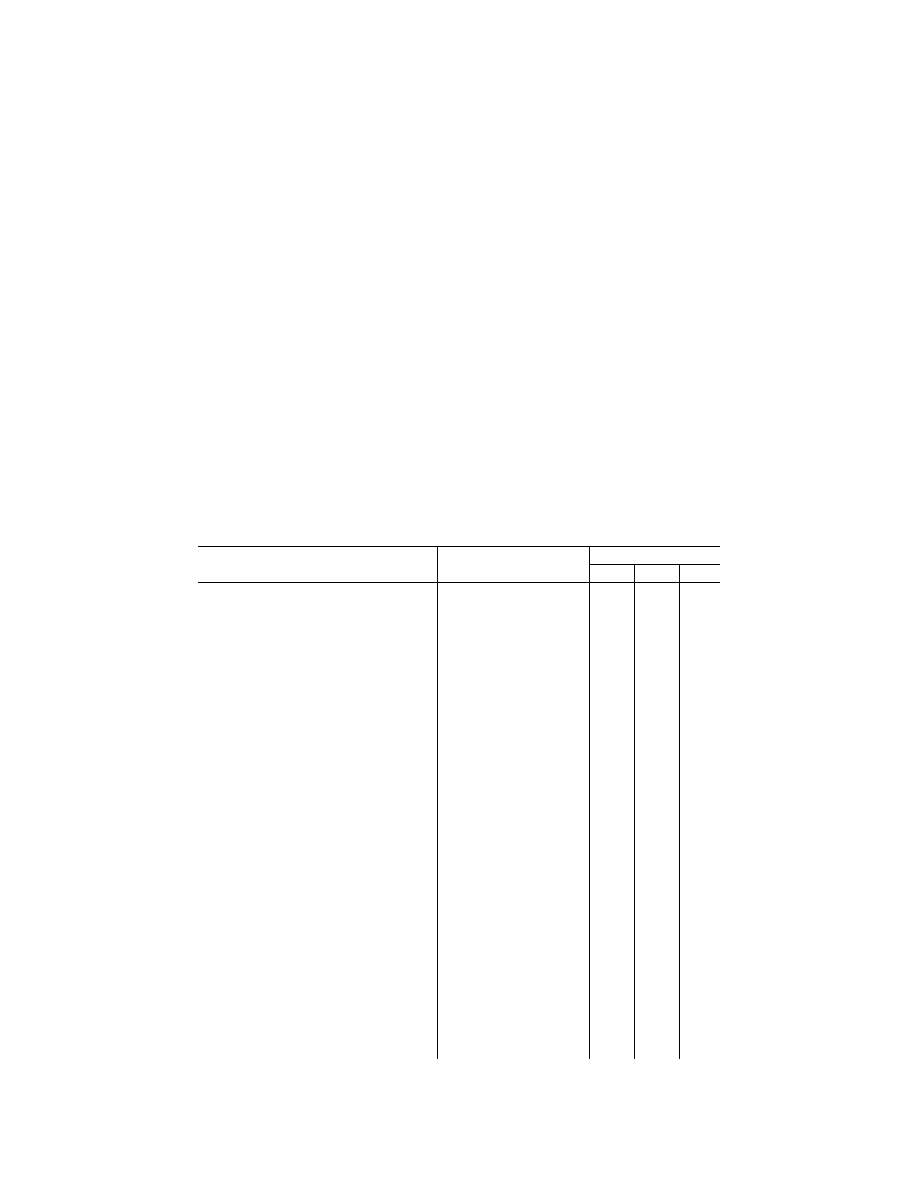
463
Pipeline and Haz. Matls. Safety Admin., DOT
Pt. 172, App. A
specified in § 172.820(a), is preempted. 49
U.S.C. 5125, 20106.
[73 FR 20772, Apr. 16, 2008]
A
PPENDIX
A
TO
P
ART
172—O
FFICE OF
H
AZARDOUS
M
ATERIALS
T
RANSPOR
-
TATION
C
OLOR
T
OLERANCE
C
HARTS
AND
T
ABLES
The following are Munsell notations and
Commission Internationale de L’Eclairage
(CIE) coordinates which describe the Office
of Hazardous Materials Transportation Label
and Placard Color Tolerance Charts in tables
1 and 2, and the CIE coordinates for the color
tolerances specified in table 3. Central colors
and tolerances described in table 2 approxi-
mate those described in table 1 while allow-
ing for differences in production methods
and materials used to manufacture labels
and placards surfaced with printing inks.
Primarily, the color charts based on table 1
are for label or placard colors applied as
opaque coatings such as paint, enamel or
plastic, whereas color charts based on table
2 are intended for use with labels and plac-
ards surfaced only with inks.
For labels printed directly on packaging
surfaces, table 3 may be used, although com-
pliance with either table 1 or table 2 is suffi-
cient. However, if visual reference indicates
that the colors of labels printed directly on
package surfaces are outside the table 1 or 2
tolerances, a spectrophotometer or other in-
strumentation may be required to insure
compliance with table 3.
T
ABLE
1—S
PECIFICATIONS FOR
C
OLOR
T
OLERANCE
C
HARTS FOR
U
SE
W
ITH
L
ABELS AND
P
LACARDS
S
URFACED
W
ITH
P
AINT
, L
ACQUER
, E
NAMEL
, P
LASTIC
, O
THER
O
PAQUE
C
OATINGS
,
OR
I
NK
1
Color
Munsell notations
CIE data for source C
Y
x
y
Red:
Central color ................................................................
7.5R 4.0/14 ....................................
12.00
.5959
.3269
Orange .........................................................................
8.5R 4.0/14 ....................................
12.00
.6037
.3389
Purple and vivid ...........................................................
6.5R 4.0/14 ....................................
12.00
.5869
.3184
Grayish ........................................................................
7.5R 4.0/12 ....................................
12.00
.5603
.3321
Vivid .............................................................................
7.5R 4.0/16 ....................................
12.00
.6260
.3192
Light .............................................................................
7.5R 4.5/14 ....................................
15.57
.5775
.3320
Dark .............................................................................
7. 5R 3.5/14 ...................................
09.00
.6226
.3141
Orange:
Central color ................................................................
5.OYR 6.0/15 .................................
30.05
.5510
.4214
Yellow and Grayish .....................................................
6.25YR 6.0/15 ................................
30.05
.5452
.4329
Red and vivid ..............................................................
3.75YR 6.0/15 ................................
30.05
.5552
.4091
Grayish ........................................................................
5.OYR 6.0/13 .................................
30.05
.5311
.4154
Vivid .............................................................................
5.OYR 6.0/16 .................................
30.05
.5597
.4239
Light .............................................................................
5.OYR 6.5/15 .................................
36.20
.5427
.4206
Dark .............................................................................
5.OYR 5.5/15 .................................
24.58
.5606
.4218
Yellow:
Central color ................................................................
5.OY 8.0/12 ....................................
59.10
.4562
.4788
Green ...........................................................................
6.5Y 8.0/12 .....................................
59.10
.4498
.4865
Orange and vivid .........................................................
3.5Y 8.0/12 .....................................
59.10
.4632
.4669
Grayish ........................................................................
5.OY 8.0/10 ....................................
59.10
.4376
.4601
Vivid .............................................................................
5.OY 8.0/14 ....................................
59.10
.4699
.4920
Light .............................................................................
5.OY 8.5/12 ....................................
68.40
.4508
.4754
Dark .............................................................................
5.OY 7.5/12 ....................................
50.68
.4620
.4823
Green:
Central color ................................................................
7.5G 4.0/9 ......................................
12.00
.2111
.4121
Bluish ...........................................................................
0.5BG 4.0/9 ....................................
12.00
.1974
.3809
Green-yellow ...............................................................
5.0G 4.0/9 ......................................
12.00
.2237
.4399
Grayish A .....................................................................
7.5G 4.0/7 ......................................
12.00
.2350
.3922
Grayish B
2
...................................................................
7.5G 4.0/6 ......................................
12.00
.2467
.3822
Vivid .............................................................................
7.5G 4.0/11 ....................................
12.00
.1848
.4319
Light .............................................................................
7.5G 4.5/9 ......................................
15.57
.2204
.4060
Dark .............................................................................
7.5G 3.5/9 ......................................
09.00
.2027
.4163
Blue:
Central color ................................................................
2.5PB 3.5/10 ..................................
09.00
.1691
.1744
Purple ..........................................................................
4.5PB 3.5/10 ..................................
09.00
.1796
.1711
Green and vivid ...........................................................
10.0B 3.5/10 ...................................
09.00
.1557
.1815
Grayish ........................................................................
2.5PB 3.5/8 ....................................
09.00
.1888
.1964
Vivid .............................................................................
2.5PB 3.5/12 ..................................
09.00
.1516
.1547
Light .............................................................................
2.5PB 4.0/10 ..................................
12.00
.1805
.1888
Dark .............................................................................
2.5PB 3.0/10 ..................................
06.55
.1576
.1600
Purple:
Central color ................................................................
10.0P 4.5/10 ...................................
15.57
.3307
.2245
Reddish purple ............................................................
2.5RP 4.5/10 ..................................
15.57
.3584
.2377
Blue purple ..................................................................
7.5P 4.5/10 .....................................
15.57
.3068
.2145
Reddish gray ...............................................................
10.0P 4.5/8 .....................................
15.57
.3280
.2391
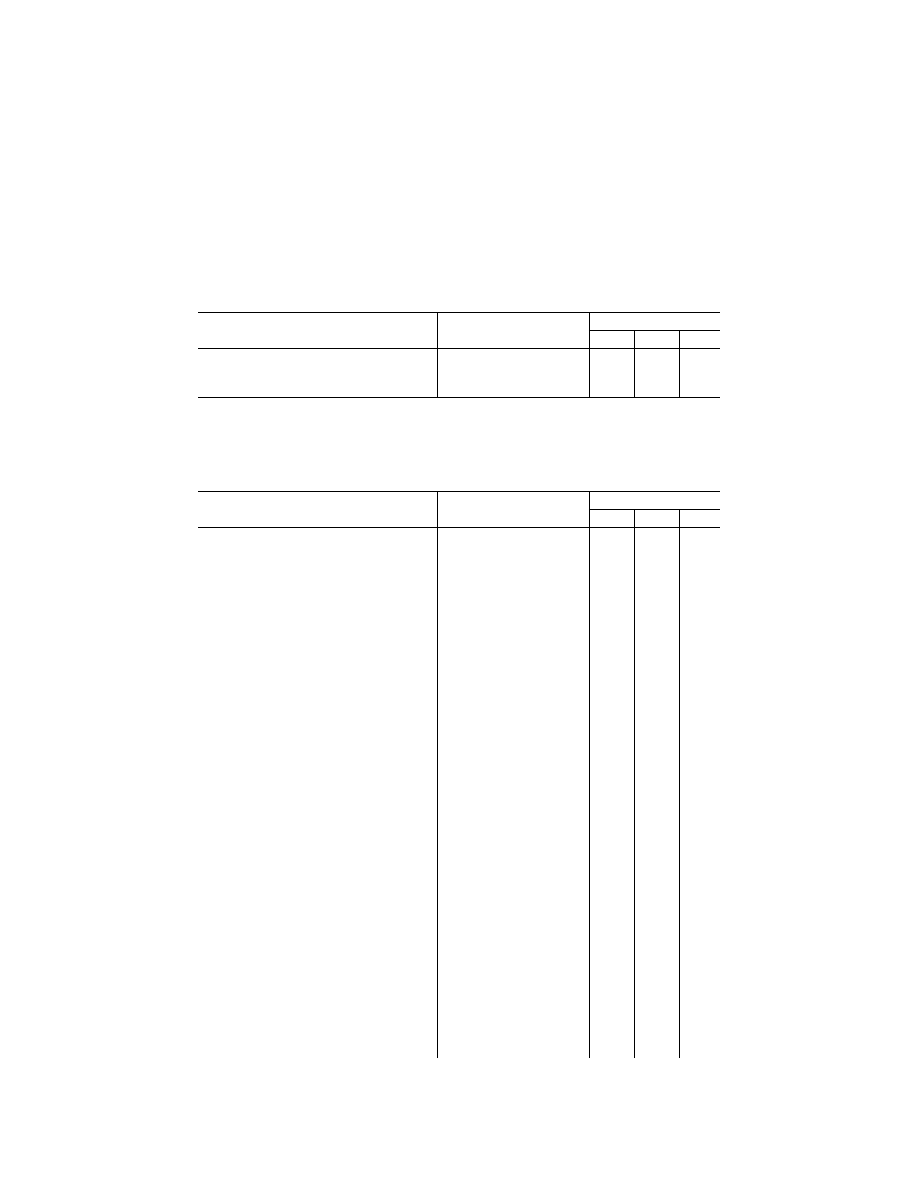
464
49 CFR Ch. I (10–1–23 Edition)
Pt. 172, App. A
T
ABLE
1—S
PECIFICATIONS FOR
C
OLOR
T
OLERANCE
C
HARTS FOR
U
SE
W
ITH
L
ABELS AND
P
LACARDS
S
URFACED
W
ITH
P
AINT
, L
ACQUER
, E
NAMEL
, P
LASTIC
, O
THER
O
PAQUE
C
OATINGS
,
OR
I
NK
1
—Con-
tinued
Color
Munsell notations
CIE data for source C
Y
x
y
Gray
2
...........................................................................
10.0P 4.5/6.5 ..................................
15.57
.3254
.2519
Vivid .............................................................................
10.0P 4.5/12 ...................................
15.57
.3333
.2101
Light .............................................................................
10.0P 5.0/10 ...................................
19.77
.3308
.2328
Dark .............................................................................
10.0P 4.0/10 ...................................
12.00
.3306
.2162
1
Maximum chroma is not limited.
2
For the colors green and purple, the minimum saturation (chroma) limits for porcelain enamel on metal are lower than for
most other surface coatings. Therefore, the minimum chroma limits of these two colors as displayed on the Charts for compari-
son to porcelain enamel on metal is low, as shown for green (grayish B) and purple (gray).
N
OTE
: CIE = Commission Internationale de L’Eclairage.
T
ABLE
2—S
PECIFICATIONS FOR
C
OLOR
T
OLERANCE
C
HARTS FOR
U
SE
W
ITH
L
ABELS AND
P
LACARDS
S
URFACED
W
ITH
I
NK
Color/series
Munsell notation
CIE data for source C
Y
x
y
Red:
Central series:
Central color ................................................................
6.8R 4.47/12.8 ...............................
15.34
.5510
.3286
Grayish ........................................................................
7.2R 4.72/12.2 ...............................
17.37
.5368
.3348
Purple ..........................................................................
6.4R 4.49/12.7 ...............................
15.52
.5442
.3258
Purple and vivid ...........................................................
6.1R 4.33/13.1 ...............................
14.25
.5529
.3209
Vivid .............................................................................
6.7R 4.29/13.2 ...............................
13.99
.5617
.3253
Orange .........................................................................
7.3R 4.47/12.8 ...............................
15.34
.5572
.3331
Orange and grayish .....................................................
7.65R 4.70/12.4 .............................
17.20
.5438
.3382
Light series:
Light .............................................................................
7.0R 4.72/13.2 ...............................
17.32
.5511
.3322
Light and orange .........................................................
7.4R 4.96/12.6 ...............................
19.38
.5365
.3382
Light and purple ..........................................................
6.6R 4.79/12.9 ...............................
17.94
.5397
.3289
Dark series:
Dark A .........................................................................
6.7R 4.19/12.5 ...............................
13.30
.5566
.3265
Dark B .........................................................................
7.0R 4.25/12.35 .............................
13.72
.5522
.3294
Dark and purple ...........................................................
7.5R 4.23/12.4 ...............................
13.58
.5577
.3329
Orange:
Central series:
Central color .........................................................
5.0YR 6.10/12.15 ...........................
31.27
.5193
.4117
Yellow and grayish A ...........................................
5.8YR 6.22/11.7 .............................
32.69
.5114
.4155
Yellow and grayish B ...........................................
6.1YR 6.26/11.85 ...........................
33.20
.5109
.4190
Vivid ......................................................................
5.1YR 6.07/12.3 .............................
30.86
.5226
.4134
Red and vivid A ....................................................
3.9YR 5.87/12.75 ...........................
28.53
.5318
.4038
Red and vivid B ....................................................
3.6YR 5.91/12.6 .............................
29.05
.5291
.4021
Grayish .................................................................
4.9YR 6.10/11.9 .............................
31.22
.5170
.4089
Light series:
Light and vivid A ..........................................................
5.8YR 6.78/12.7 .............................
39.94
.5120
.4177
Light and yellow ..........................................................
6.0YR 6.80/12.8 .............................
40.20
.5135
.4198
Light and vivid B ..........................................................
4.9YR 6.60/12.9 .............................
37.47
.5216
.4126
Dark series:
Dark and yellow ...........................................................
5.8YR 5.98/11.0 .............................
29.87
.5052
.4132
Dark A .........................................................................
5.1YR 5.80/11.1 .............................
27.80
.5127
.4094
Dark B .........................................................................
5.0YR 5.80/11.0 .............................
27.67
.5109
.4068
Yellow:
Central series:
Central color .........................................................
4.3Y 7.87/10.3 ................................
56.81
.4445
.4589
Vivid A ..................................................................
4.5Y 7.82/10.8 ................................
55.92
.4503
.4658
Vivid B ..................................................................
3.3Y 7.72/11.35 ..............................
54.24
.4612
.4624
Vivid and orange ..................................................
3.2Y 7.72/10.8 ................................
54.25
.4576
.4572
Grayish A .............................................................
4.1Y 7.95/9.7 ..................................
58.18
.4380
.4516
Grayish B .............................................................
5.1Y 8.06/9.05 ................................
60.12
.4272
.4508
Green-yellow ........................................................
5.2Y 7.97/9.9 ..................................
58.53
.4356
.4605
Light series:
Light .............................................................................
5.4Y 8.59/10.5 ................................
70.19
.4351
.4628
Light and green-yellow ................................................
5.4Y 8.56/11.2 ................................
69.59
.4414
.4692
Light and vivid .............................................................
4.4Y 8.45/11.4 ................................
67.42
.4490
.4662
Dark series:
Dark and green-yellow ................................................
4.4Y 7.57/9.7 ..................................
51.82
.4423
.4562
Dark and orange A ......................................................
3.4Y 7.39/10.4 ................................
48.86
.4584
.4590
Dark and orange B ......................................................
3.5Y 7.41/10.0 ................................
49.20
.4517
.4544

465
Pipeline and Haz. Matls. Safety Admin., DOT
Pt. 172, App. A
T
ABLE
2—S
PECIFICATIONS FOR
C
OLOR
T
OLERANCE
C
HARTS FOR
U
SE
W
ITH
L
ABELS AND
P
LACARDS
S
URFACED
W
ITH
I
NK
—Continued
Color/series
Munsell notation
CIE data for source C
Y
x
y
Green:
Central series:
Central color .........................................................
9.75G 4.26/7.75 .............................
13.80
.2214
.3791
Grayish .................................................................
10G 4.46/7.5 ..................................
15.25
.2263
.3742
Blue A ...................................................................
1.4BG 4.20/7.4 ...............................
13.36
.2151
.3625
Blue B ...................................................................
1.0BG 4.09/7.75 .............................
12.60
.2109
.3685
Vivid ......................................................................
8.4G 4.09/8.05 ...............................
12.59
.2183
.3954
Vivid green-yellow ................................................
7.0G 4.23/8.0 .................................
13.54
.2292
.4045
Green-yellow ........................................................
7.85G 4.46/7.7 ...............................
15.23
.2313
.3914
Light series:
Light and vivid .............................................................
9.5G 4.45/8.8 .................................
15.21
.2141
.3863
Light and blue ..............................................................
0.2BG 4.31/8.8 ...............................
14.12
.2069
.3814
Light and green-yellow ................................................
8.3G 4.29/9.05 ...............................
14.01
.2119
.4006
Dark series:
Dark and green-yellow ................................................
7.1G 4.08/7.1 .................................
12.55
.2354
.3972
Dark and grayish .........................................................
9.5G 4.11/6.9 .................................
12.70
.2282
.3764
Dark .............................................................................
8.5G 3.97/7.2 .................................
11.78
.2269
.3874
Blue:
Central series:
Central color .........................................................
3.5PB 3.94/9.7 ...............................
11.58
.1885
.1911
Green and grayish A ............................................
2.0PB 4.35/8.7 ...............................
14.41
.1962
.2099
Green and grayish B ............................................
1.7PB 4.22/9.0 ...............................
13.50
.1898
.2053
Vivid ......................................................................
2.9PB 3.81/9.7 ...............................
10.78
.1814
.1852
Purple and vivid A ................................................
4.7PB 3.53/10.0 .............................
9.15
.1817
.1727
Purple and vivid B ................................................
5.0PB 3.71/9.9 ...............................
10.20
.1888
.1788
Grayish .................................................................
3.75PB 4.03/9.1 .............................
12.17
.1943
.1961
Light series:
Light and green A ........................................................
1.7PB 4.32/9.2 ...............................
14.22
.1904
.2056
Light and green B ........................................................
1.5PB 4.11/9.6 ...............................
12.72
.1815
.1971
Light and vivid .............................................................
3.2PB 3.95/10.05 ...........................
11.70
.1831
.1868
Dark series:
Dark and grayish .........................................................
3.9PB 4.01/8.7 ...............................
12.04
.1982
.1992
Dark and purple A .......................................................
4.8PB 3.67/9.3 ...............................
9.95
.1918
.1831
Dark and purple B .......................................................
5.2PB 3.80/9.05 .............................
10.76
.1985
.1885
Purple:
Central series:
Central color .........................................................
9.5P 4.71/11.3 ................................
17.25
.3274
.2165
Red .......................................................................
1.0RP 5.31/10.8 .............................
22.70
.3404
.2354
Red and vivid A ....................................................
1.4RP 5.00/11.9 .............................
19.78
.3500
.2274
Red and vivid B ....................................................
0.2RP 4.39/12.5 .............................
14.70
.3365
.2059
Vivid ......................................................................
8.0P 4.04/12.0 ................................
12.23
.3098
.1916
Blue ......................................................................
7.0P 4.39/10.8 ................................
14.71
.3007
.2037
Grayish .................................................................
8.8P 5.00/10.3 ................................
19.73
.3191
.2251
Light series:
Light and red A ............................................................
0.85RP 5.56/11.1 ...........................
25.18
.3387
.2356
Light and red B ............................................................
1.1RP 5.27/12.3 .............................
22.27
.3460
.2276
Light and vivid .............................................................
9.2P 4.94/11.95 ..............................
19.24
.3247
.2163
Dark series:
Dark and grayish .........................................................
9.6P 4.70/10.9 ................................
17.19
.3283
.2204
Dark and vivid .............................................................
8.4P 4.05/11.6 ................................
12.35
.3144
.1970
Dark and blue ..............................................................
7.5P 4.32/10.5 ................................
14.19
.3059
.2078
T
ABLE
3—S
PECIFICATION FOR
C
OLORS FOR
U
SE
W
ITH
L
ABELS
P
RINTED ON
P
ACKAGINGS
S
URFACES
CIE data for source C
Red
Orange
Yellow
Green
Blue
Purple
x .................................................................................................
.424
.460
.417
.228
.200
.377
y .................................................................................................
.306
.370
.392
.354
.175
.205
x .................................................................................................
.571
.543
.490
.310
.255
.377
y .................................................................................................
.306
.400
.442
.354
.250
.284
x .................................................................................................
.424
.445
.390
.228
.177
.342
y .................................................................................................
.350
.395
.430
.403
.194
.205
x .................................................................................................
.571
.504
.440
.310
.230
.342
y .................................................................................................
.350
.430
.492
.403
.267
.284
Y (high) ......................................................................................
23.0
41.6
72.6
20.6
15.9
21.2
Y (low) .......................................................................................
7.7
19.5
29.1
7.4
6.5
8.2
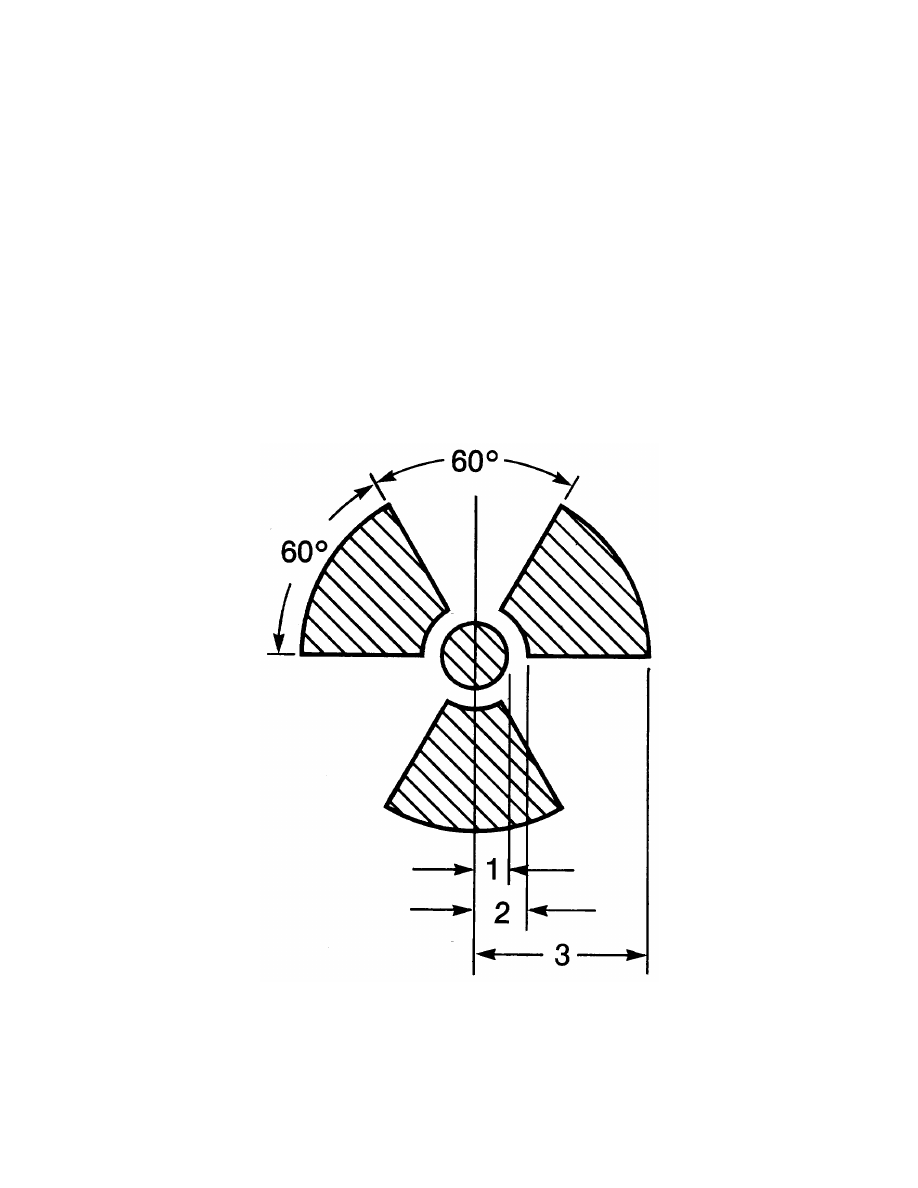
466
49 CFR Ch. I (10–1–23 Edition)
Pt. 172, App. B
[Amdt. 172–50, 44 FR 9757, Feb. 15, 1979; Amdt. 172–50, 44 FR 10984, Feb. 26, 1979, as amended
by Amdt. 172–50, 44 FR 22467, Apr. 16, 1979; 50 FR 45731, Nov. 1, 1985; Amdt. 172–127, 59 FR 49133,
Sept. 26, 1994]
A
PPENDIX
B
TO
P
ART
172—T
REFOIL
S
YMBOL
1. Except as provided in paragraph 2 of this
appendix, the trefoil symbol required for RA-
DIOACTIVE labels and placards and required
to be marked on certain packages of Class 7
materials must conform to the design and
size requirements of this appendix.
2. RADIOACTIVE labels and placards that
were printed prior to April 1, 1996, in con-
formance with the requirements of this sub-
chapter in effect on March 30, 1996, may con-
tinue to be used.
1 = Radius of Circle—
Minimum dimensions
4 mm (0.16 inch) for markings and labels
12.5 mm (0.5 inch) for placards
2 = 1
1
⁄
2
Radii
3 = 5 radii for markings and labels
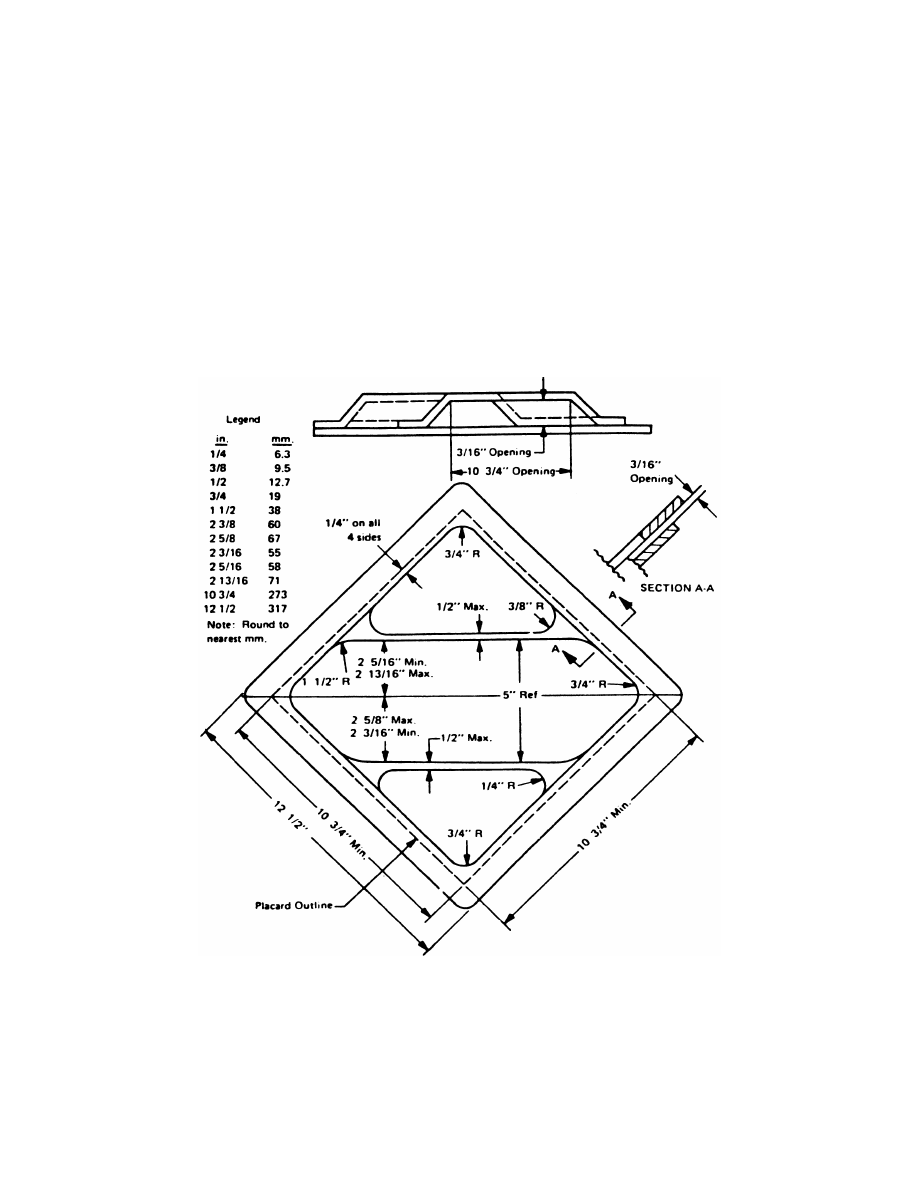
467
Pipeline and Haz. Matls. Safety Admin., DOT
Pt. 172, App. D
4
1
⁄
2
radii for placards.
[60 FR 50306, Sept. 28, 1995, as amended by
Amdt. 172–143, 61 FR 20750, May 8, 1996]
A
PPENDIX
C
TO
P
ART
172—D
IMENSIONAL
S
PECIFICATIONS FOR
R
ECOMMENDED
P
LACARD
H
OLDER
A
PPENDIX
D
TO
P
ART
172—R
AIL
R
ISK
A
NALYSIS
F
ACTORS
A. This appendix sets forth the minimum
criteria that must be considered by rail car-
riers when performing the safety and secu-
rity risk analyses required by § 172.820. The
risk analysis to be performed may be quan-
titative, qualitative, or a combination of
both. In addition to clearly identifying the
hazardous material(s) and route(s) being ana-
lyzed, the analysis must provide a thorough

468
49 CFR Ch. I (10–1–23 Edition)
Pt. 173
description of the threats, identified
vulnerabilities, and mitigation measures im-
plemented to address identified
vulnerabilities.
B. In evaluating the safety and security of
hazardous materials transport, selection of
the route for transportation is critical. For
the purpose of rail transportation route
analysis, as specified in § 172.820(c) and (d), a
route may include the point where the car-
rier takes possession of the material and all
track and railroad facilities up to the point
where the material is relinquished to an-
other entity. Railroad facilities are railroad
property including, but not limited to, clas-
sification and switching yards, storage fa-
cilities, and non-private sidings; however,
they do not include an offeror’s facility, pri-
vate track, private siding, or consignee’s fa-
cility. Each rail carrier must use best efforts
to communicate with its shippers, con-
signees, and interlining partners to ensure
the safety and security of shipments during
all stages of transportation.
C. Because of the varying operating envi-
ronments and interconnected nature of the
rail system, each carrier must select and
document the analysis method/model used
and identify the routes to be analyzed.
D. The safety and security risk analysis
must consider current data and information
as well as changes that may reasonably be
anticipated to occur during the analysis
year. Factors to be considered in the per-
formance of this safety and security risk
analysis include:
1. Volume of hazardous material trans-
ported;
2. Rail traffic density;
3. Trip length for route;
4. Presence and characteristics of railroad
facilities;
5. Track type, class, and maintenance
schedule;
6. Track grade and curvature;
7. Presence or absence of signals and train
control systems along the route (‘‘dark’’
versus signaled territory);
8. Presence or absence of wayside hazard
detectors;
9. Number and types of grade crossings;
10. Single versus double track territory;
11. Frequency and location of track turn-
outs;
12. Proximity to iconic targets;
13. Environmentally sensitive or signifi-
cant areas;
14. Population density along the route;
15. Venues along the route (stations,
events, places of congregation);
16. Emergency response capability along
the route;
17. Areas of high consequence along the
route, including high consequence targets as
defined in § 172.820(c);
18. Presence of passenger traffic along
route (shared track);
19. Speed of train operations;
20. Proximity to en-route storage or repair
facilities;
21. Known threats, including any non-pub-
lic threat scenarios provided by the Depart-
ment of Homeland Security or the Depart-
ment of Transportation for carrier use in the
development of the route assessment;
22. Measures in place to address apparent
safety and security risks;
23. Availability of practicable alternative
routes;
24. Past incidents;
25. Overall times in transit;
26. Training and skill level of crews; and
27. Impact on rail network traffic and con-
gestion.
[73 FR 20772, Apr. 16, 2008]
PART 173—SHIPPERS—GENERAL RE-
QUIREMENTS FOR SHIPMENTS
AND PACKAGINGS
Subpart A—General
Sec.
173.1
Purpose and scope.
173.2
Hazardous material classes and index
to hazard class definitions.
173.2a
Classification of a material having
more than one hazard.
173.3
Packaging and exceptions.
173.4
Small quantity exceptions.
173.4a
Excepted quantities.
173.5
Agricultural operations.
173.5a
Oilfield service vehicles, mechanical
displacement meter provers, and road-
way striping vehicles exceptions.
173.5b
Portable and mobile refrigeration
systems.
173.6
Materials of trade exceptions.
173.7
Government operations and materials.
173.8
Exceptions for non-specification pack-
agings used in intrastate transportation.
173.9
Transport vehicles or freight con-
tainers containing lading which has been
fumigated.
173.10
Tank car shipments.
173.11
Exceptions for shipment of light
bulbs containing hazardous materials.
173.12
Exceptions for shipment of waste ma-
terials.
173.13
Exceptions for Class 3, Divisions 4.1,
4.2, 4.3, 5.1, 6.1, and Classes 8 and 9 mate-
rials.
173.14
Hazardous materials in equipment in
use or intended for use during transport.
Subpart B—Preparation of Hazardous
Materials for Transportation
173.21
Forbidden materials and packages.
173.22
Shipper’s responsibility.
173.22a
Use of packagings authorized under
special permits.





























































































































































































































































































































